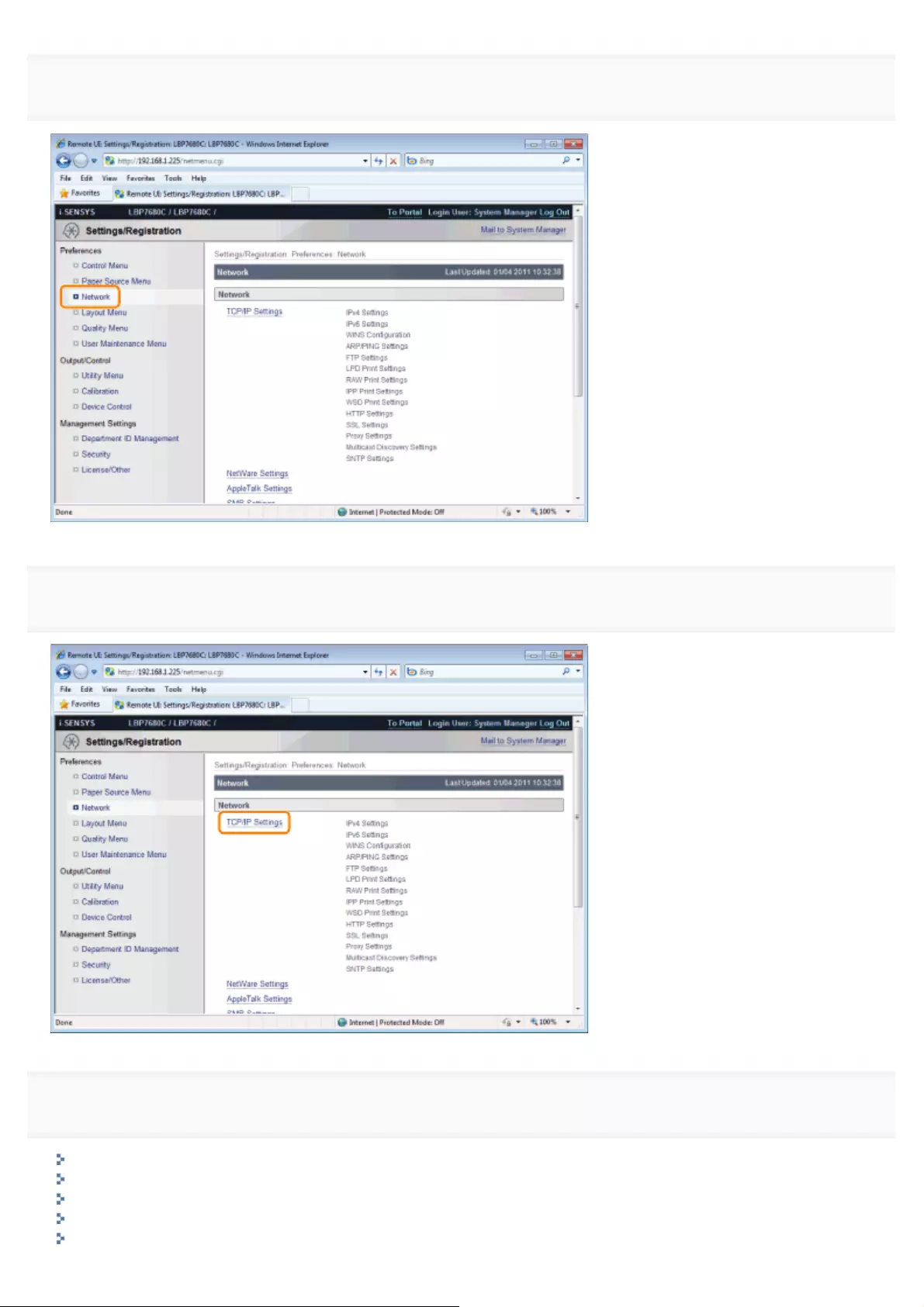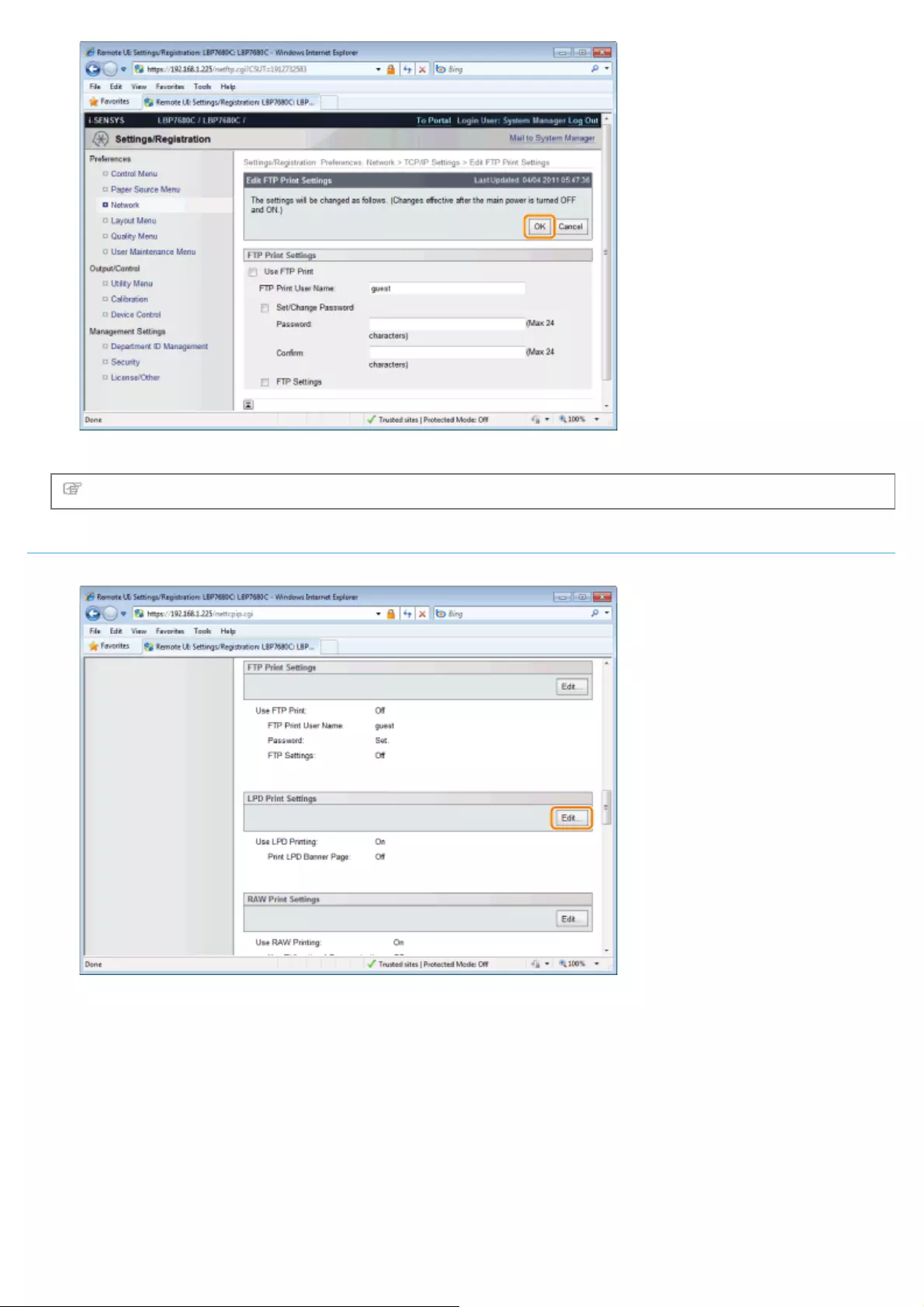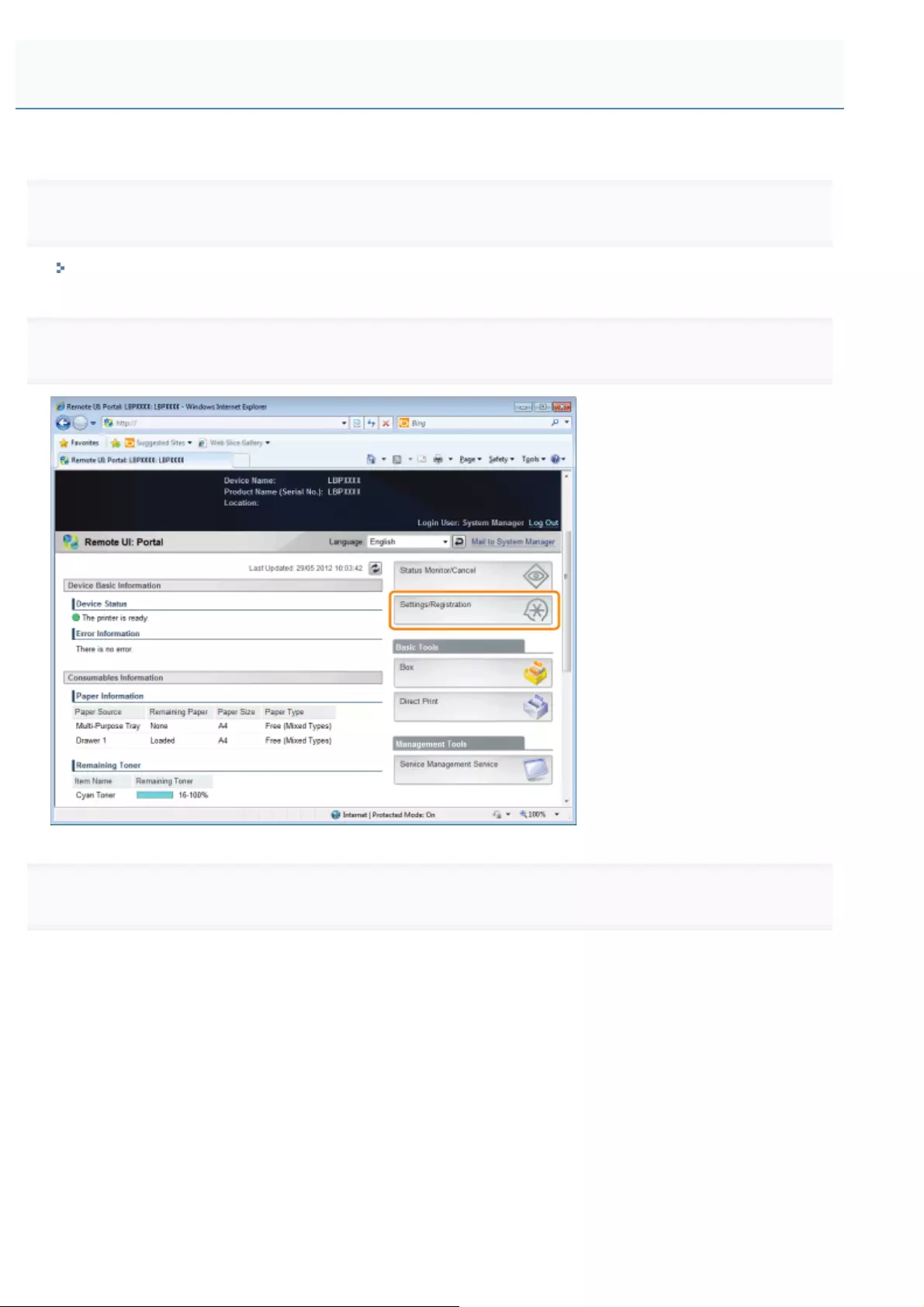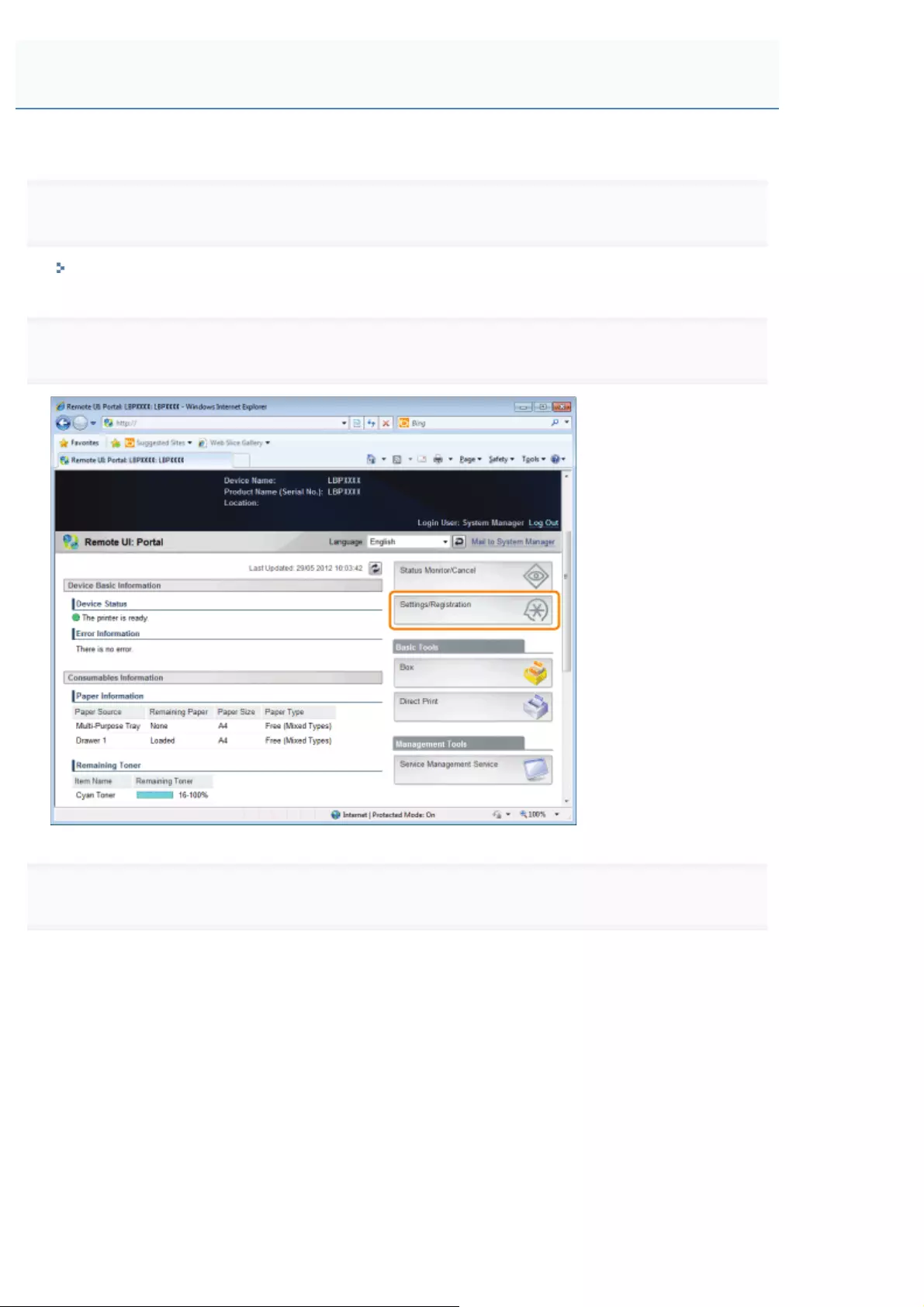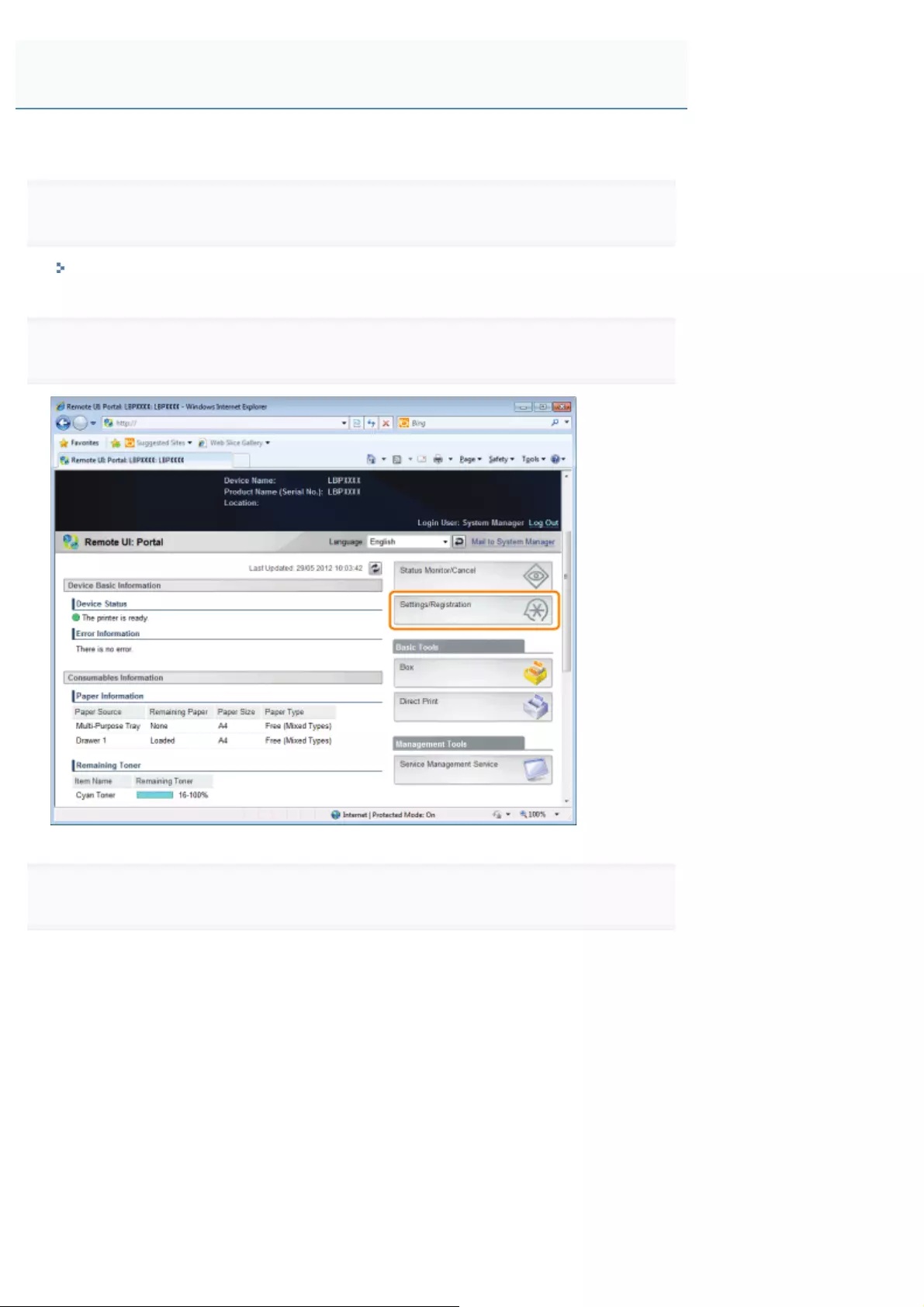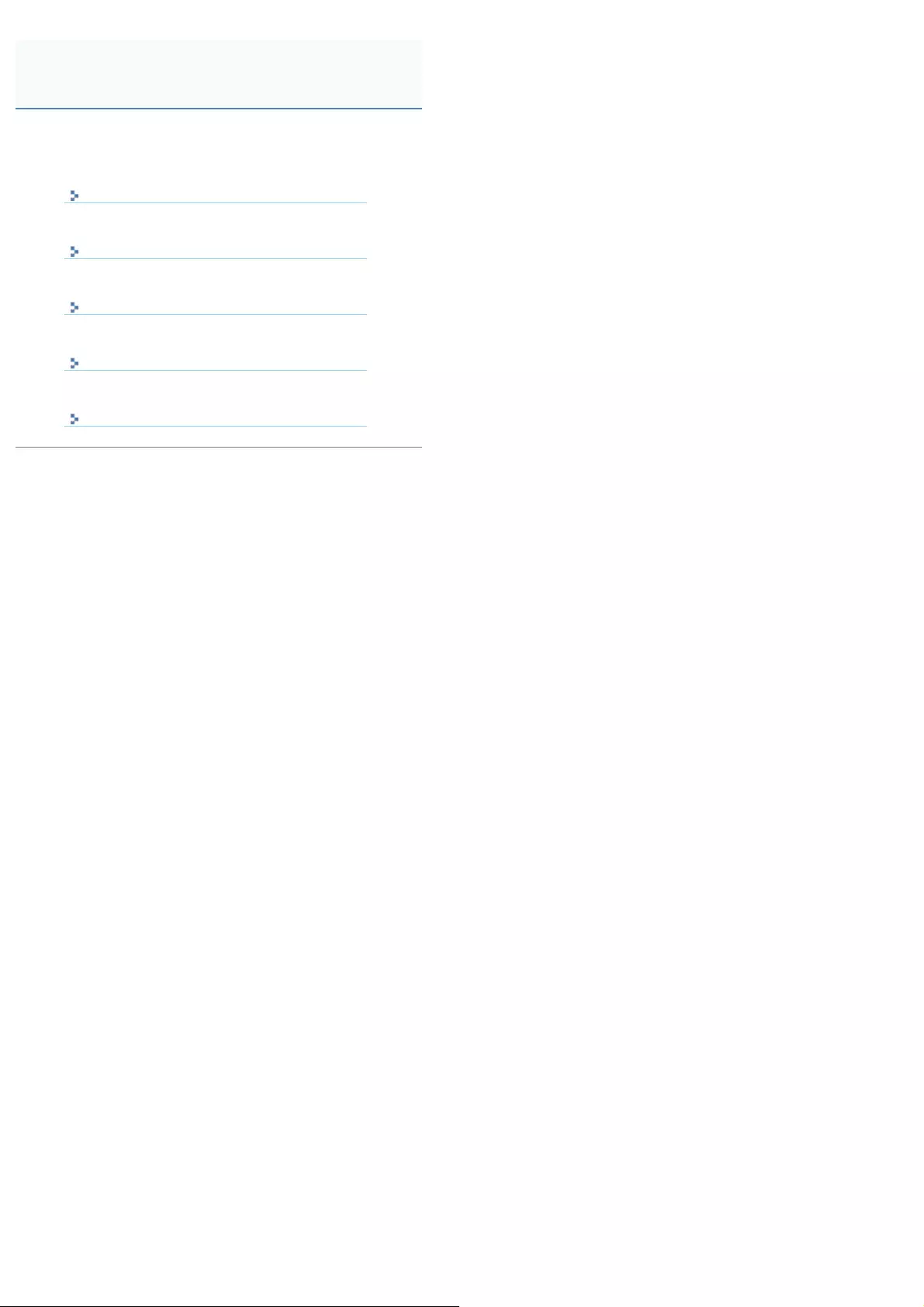Table of Contents
- LBP7680Cx/LBP7660Cdn
- Before You Start
- Important Safety Instructions
- About This Printer
- Maintenance
- Printer Installation
- Installing the Software
- Basic Printer Operations
- Printing on Various Types of Paper
- Useful Printing Functions
- Printing from a Computer (Windows)
- Printing Fundamentals
- Printing Functions
- Scaling Documents
- Printing Multiple Pages on One Sheet
- 1-sided Printing and 2-sided Printing
- Booklet Printing
- Poster Printing
- Watermark Printing
- Setting the Color Mode for Printing
- Combining and Printing Multiple Files
- Selecting a Profile for Printing
- Registering a Profile for Printing
- Printing from a Computer (Macintosh)
- Setting Priority (When Specifying the Same Item Using Multiple Methods)
- Functions Which Can Be Specified from the Control Panel
- Printing without the Printer Driver (Direct Print)
- Printing Files Directly from USB Memory Devices (USB Direct Print) (LBP7680Cx Only)
- Receiving E-mail Data on the Mail Server and Printing (E-mail Print)
- Printing Files from the Printer Using FTP Client
- Specifying a Password for a Document and Printing (Secured Print) (LBP7680Cx Only)
- Saving a Document in the SD Card in the Printer (Stored Job Print) (LBP7680Cx Only)
- Giving Priority to a Print Job (Interrupt Printing) (LBP7680Cx Only)
- Printing from a Computer (Windows)
- Configuring the Network Settings (Sharing the Printer)
- Checking Your Network Environment
- Network Settings for the Printer (Common to Each Protocol)
- Changing the Network Transmission Speed or Transfer Mode
- Setting the Spooling Function (LBP7680Cx Only)
- Specifying the Setting for Startup Waiting Time
- Restricting the Users Who Can Monitor/Change the Settings Using the SNMP Protocol
- Setting IEEE802.1X Authentication
- Network Setting Items
- Initializing the Network Settings
- Checking the MAC Address
- Network Settings for the Printer (TCP/IP)
- Network Settings for the Printer (NetWare) (LBP7680Cx Only)
- Network Settings for the Printer (SMB) (LBP7680Cx Only)
- Network Settings for the Printer (AppleTalk)
- Managing the Printer
- Software That Can Be Used for Managing the Printer
- Managing Print Jobs
- Control Panel Setting
- Setting Items
- [Setup] Menu ([Control Menu] Options)
- [Setup] Menu ([Paper Source] Options)
- [Setup] Menu ([Network] Options)
- [Setup] Menu ([Layout] Options)
- [Setup] Menu ([Quality] Options)
- [Setup] Menu ([Interface] Options)
- [Setup] Menu ([User Maintenance] Options)
- [Setup] Menu ([Print Mode] Options)
- [Setup] Menu ([PCL] Options)
- [Setup] Menu ([UFR II] Options)
- [Setup] Menu ([Imaging] Options)
- [Setup] Menu ([XPS] Options) (LBP7680Cx Only)
- [Setup] Menu ([PDF] Options)
- [Setup] Menu ([PS] Options)
- [Setup] Menu ([MEAP Settings] Options) (LBP7680Cx Only)
- [Setup] Menu ([Check Counter] Options)
- [Utility Menu] Menu
- [Job] Menu
- [Reset] Menu
- [Select Feeder] Menu
- Checking the Number of the Printed Pages
- Importing and Exporting Settings
- Initializing the Settings
- Checking the Printer Settings
- Setting the Administrator Password
- Specifying the Device Name or Administrator Information
- Sleep Mode
- Auto Shutdown
- Specifying an ID for Each Department (LBP7680Cx Only)
- Register/Update Software Function (LBP7680Cx Only)
- Security Settings
- Restricting the Users Who Can Print or Perform the Printer Settings
- Restricting the Users Who Can Access
- Setting Restrictions for Print Jobs (LBP7680Cx Only)
- Specifying the Job Operation Permission for End-Users
- Locking the Keys on the Control Panel (Key Lock Function)
- Setting Restrictions for USB Direct Print (LBP7680Cx Only)
- Setting Keys and Certificates
- Setting CA Certificates
- Setting the SSL Encryption Communication Function
- Setting the IPSec Encryption Communication Function (LBP7680Cx Only)
- Specifying the Setting for Job Log Display
- MEAP (LBP7680Cx Only)
- Available Functions
- Launching and Closing SMS
- MEAP Application Settings
- System Settings
- List of Error Messages (MEAP)
- Errors Relating to the [Login] Page
- Errors Relating to the [MEAP Application Management] Page
- Errors Relating to the [Install MEAP Application] Page
- Errors Relating to the [Authentication Information Settings] Page
- Errors Relating to the [License Management] Page
- Errors Relating to the [Enhanced System Application Management] Page
- Errors Relating to the [Check License] and [Change Password] Pages
- Errors Relating to the [MEAP Application Setting Information Management] Page
- Errors Relating to the [MEAP Application Log Management] Page
- Other Errors
- Troubleshooting
- Printing Cannot Be Performed
- The Printer Takes a Long Time to Start the Print Job
- You Cannot Turn the Printer ON
- All the Indicators on the Network Interface Are Off
- You Cannot Install the Printer Driver
- You Cannot Uninstall the Printer Driver
- The Printer Driver Settings Cannot Be Changed
- "Profiles" Cannot Be Selected or Edited
- The Status of the Paper Feeder Cannot Be Obtained Automatically
- Paper Jams
- The Message Indicator Is On
- A Message Appears in the Control Panel
- Poor Printout Results
- Paper Curls
- Paper Creases
- White Streaks (Lines) Appear
- Printing Is Uneven
- Printed Pages Have White Specks
- Colors Are Uneven or Not Printed Smoothly
- The Toner Does Not Fix onto the Paper Well
- The Printed Paper Has Smudge Marks
- Smudge Marks of Spattering Toner Appear around the Text or Patterns
- The Back of the Printed Paper Has Smudge Marks
- The Overall Print Result Is Dark
- Residual Images Appear on Non-printed Areas
- White Dust Is Attached to the Printed Transparencies
- The Overall Print Result Is Faint
- Thin Lines Are Faded or Halftone Images Are Faint
- Colored Lines and Text Appear Faded
- Colored Text Appears Blurred
- Data Is Not Printed in the Correct Color (Specified Color) Due to Color Mismatch
- Thin Lines or Fill Patterns Are Not Printed with the Specified Colors or Do Not Appear At All
- Shaded Patterns Are Not Printed in the Correct Color (Specified Color)
- Photographs and so on Are Printed in Different Colors from Those Displayed on the Monitor
- Fill Patterns and Borders Are Not Printed in the Correct Color (Specified Color) Even When the Same Color Is Specified for Them
- Square Areas That Cannot Be Seen on the Display Appear around Lines or Text and Are Printed in a Different Color from the Other Areas
- Superimposed Diagrams Are Not Printed in the Correct Color
- The Printing Position Is Skewed
- Data Is Printed Diagonally
- A Portion of the Page Is Not Printed
- Data Is Reduced and Printed
- The Next Page Is Printed from Halfway across the Previous Page
- Printed Data Lies outside Paper
- Blank Paper Is Output (Nothing Is Printed on the Paper)
- The Overall Surface of the Paper Is Printed in a Particular Color
- The Last Page Cannot Be Printed
- Unreadable Characters Are Printed
- The Printout Is Different from What Is Displayed on Screen (Windows 2000, XP, and Server 2003)
- The Flap of the Printed Envelope Sticks
- Multiple Sheets of Paper Are Fed at a Time
- Other Problems
- The Printer Pauses during Printing, and then Printing Repeatedly Starts and Stops
- The Keys on the Control Panel Do Not Function
- The SD Card Cannot Be Used
- Jobs Cannot Be Saved
- SSL Cannot Be Enabled
- When SSL Is Enabled, the Remote UI Does Not Start, or the IPP Printing Cannot Be Performed
- The Printer Cannot Be Accessed from the Remote UI or Network Related Utility Software
- Restricting the Users Is Not Possible
- Appendix
Canon LBP7680Cx User Manual
Displayed below is the user manual for LBP7680Cx by Canon which is a product in the Laser Printers category. This manual has pages.
Related Manuals

㻝㻌㻛㻌㻥㻥㻤

Before You Start 12
Legal Notices 13
Legal Limitations on the Usage of Your Product and the Use of Images 15
Using the e-Manual 16
How to Use the e-Manual 17
Operating Environment 18
Installing the e-Manual 19
Uninstalling the e-Manual 22
Screen Layout of the e-Manual 23
Top Page 24
Topic Page 26
Contents Page 27
Search Method 28
Viewing the e-Manual 29
Disclaimer 31
Copyright 32
Trademarks 33
Third Party Software 34
Important Safety Instructions 35
Installation 36
Power Supply 38
Handling 39
Maintenance and Inspections 41
Consumables 43
About This Printer 44
Printer Specifications 45
Introduction of the Optional Accessories 48
Names and Dimensions of Each Part 50
Control Panel 54
Introduction of the Utilities 57
Energy-saving Mode 59
Cautions for Handling the Printer 60
Consumables 61
Maintenance 62
Toner Cartridge Replacement 63
Attention (Toner Cartridge) 65
Replacing Toner Cartridges 67
Storing Toner Cartridges 70
Adjusting the Printing Position 71
Adjusting the Printing Position for All the Jobs 72
Adjusting the Printing Position for Each Paper Source 74
Moving the Printer 79
Cleaning and Maintaining the Printer 82
Adjusting the Color or Color Mismatch (Calibration) 83
Specifying Times and Performing Automatic Calibration 86
Automatically Performing Calibration Immediately after the Printer Is Turned ON 88
If You Want to Adjust Color Balance 90
Cleaning the Inside of the Printer 92
Cleaning the Fixing Roller of the Printer 93
㻞㻌㻛㻌㻥㻥㻤

Cleaning the Transfer Belt 95
Cleaning the Outside of the Printer 97
Attention (Cleaning) 99
Location of the Serial Number 100
Printer Installation 101
Attention (Printer Installation) 103
Confirming the Supplied Accessories and Checking the Installation Site 105
Removing the Packing Materials 107
Installing the Paper Feeder 111
Installing the Printer 116
Installing ROM 119
Installing ROM 120
Checking the ROM Installation 124
Removing ROM 126
Installing SD Card (LBP7680Cx Only) 127
Installing SD Card 128
Checking the SD Card Installation 132
Removing SD Card 134
Specifying the Printer's Initial Settings 135
Turning the Power On and Specifying a Language and Time 136
Specifying a Type of Printer Driver 138
Connecting to a Computer 140
Installing the Software 144
For Windows 145
Selecting the Appropriate Printer Driver 146
Installation 147
Other Software Programs 148
For Macintosh 149
Installation 150
Basic Printer Operations 151
Usable Paper 152
Precautions for Paper 156
Printable Area 158
Paper Loading and Output 160
Loading Paper in the Drawer 161
Attention (Drawer) 164
Loading Envelopes and Custom Paper Sizes 165
Loading Paper in the Multi-purpose Tray 168
Attention (Multi-purpose Tray) 171
Registering the Paper Size and Type 172
Configuring the Printer Driver and Printing 174
Attention (Printer Driver Configuration) 179
Turning the Printer ON/OFF 180
Attention (Turning the Printer ON/OFF) 183
Online and Offline 184
Canceling a Job 186
Operations from the Computer 187
Cancelling from the Printer Control Panel 189
Outputting Data (Forced Output) 191
㻟㻌㻛㻌㻥㻥㻤

Canceling the Process Currently Being Performed (Soft Reset) 193
Canceling All the Jobs (Hard Reset) 194
Checking the Printer Status 196
Printing on Various Types of Paper 197
Printing on Plain Paper, Heavy Paper, or Index Card 198
Printing on Transparencies (B&W Printing Only) 199
Printing on Labels 200
Printing Coated Paper 201
Printing on Envelopes 202
Printing on Custom Size Paper 204
Paper Loading Orientation 205
Useful Printing Functions 207
Printing from a Computer (Windows) 209
Printing Fundamentals 210
Printing with the Printer Driver 211
Configuring the Print Settings Beforehand 213
Setting the Printer Options 215
Viewing the Online Help 217
Printing Functions 218
Common Functions 219
[Page Setup] Sheet 220
[Finishing] Sheet 221
[Paper Source] Sheet 222
[Quality] Sheet 223
[Device Settings] Sheet 224
Scaling Documents 225
Printing Multiple Pages on One Sheet 228
1-sided Printing and 2-sided Printing 230
Attention (1-sided Printing and 2-sided Printing) 233
Booklet Printing 234
Poster Printing 236
Watermark Printing 238
Setting the Color Mode for Printing 240
Combining and Printing Multiple Files 242
Selecting a Profile for Printing 245
Registering a Profile for Printing 246
Printing from a Computer (Macintosh) 248
Printing Fundamentals 249
Printing with the Printer Driver 250
Configuring the Page Settings Beforehand 253
Setting the Printer Options 255
Viewing the Online Help 258
Viewing the Driver Guide 260
Printing Functions 261
Common Functions 262
[Layout] Preferences Pane 263
[Finishing] Preferences Pane 264
[Paper Source] Preferences Pane 265
[Quality] Preferences Pane 266
㻠㻌㻛㻌㻥㻥㻤

[Special Features] Preferences Pane 267
Scaling Documents 268
Printing Multiple Pages on One Sheet 270
2-sided Printing 272
Setting the Color Mode for Printing 275
Using [Presets] for Printing 276
Setting Priority (When Specifying the Same Item Using Multiple Methods) 278
Functions Which Can Be Specified from the Control Panel 279
Printing without the Printer Driver (Direct Print) 280
Printing the PDF File Using the Direct Print Function 282
Printing the PS/EPS File Using the Direct Print Function 292
Printing the TIFF/JPEG File Using the Direct Print Function 296
Printing the XPS File Using the Direct Print Function (LBP7680Cx Only) 303
Direct Printing from Command Prompt 312
Printing Files Directly from USB Memory Devices (USB Direct Print) (LBP7680Cx Only) 313
Printing Directly from USB Memory Device 314
Print Setting Menu List 317
Changing the Default Print Settings and File Sorting Criteria 320
Remove the USB Memory Device 321
Receiving E-mail Data on the Mail Server and Printing (E-mail Print) 323
Printing a Fax Document Transferred from a Multi-function Machine 326
How to Specify the Settings for E-mail Print 327
Attention (How to Specify the Settings for E-mail Print) 330
Receiving and Printing E-mails Manually 332
Printing the E-mail Receive Log List 334
Attention (Printing E-mail Sending/Receiving History) 336
When E-mail Print Fails 337
Printing Files from the Printer Using FTP Client 340
Specifying a Password for a Document and Printing (Secured Print) (LBP7680Cx Only) 342
Attention (Specifying a Password for a Document and Printing (Secured Print)) 344
Saving a Document in the SD Card in the Printer (Stored Job Print) (LBP7680Cx Only) 345
Performing a Stored Job Print Using the Control Panel of the Printer 346
Displaying or Operating the Jobs Stored in a Box (Resume/Delete) 348
Automatically Deleting Files Stored in a Box 352
Changing the Box Settings 355
Giving Priority to a Print Job (Interrupt Printing) (LBP7680Cx Only) 359
Configuring the Network Settings (Sharing the Printer) 360
Checking Your Network Environment 361
Example of a Windows Network 362
Example of a Macintosh Network 364
Example of a UNIX Network 365
Example of a Network Using a Variety of Computers 366
Network Settings for the Printer (Common to Each Protocol) 367
Changing the Network Transmission Speed or Transfer Mode 368
Performing the Configuration Using the Printer's Control Panel (When You First Set it Up) 369
Changing the Settings Using Web Browser (Remote UI) 371
Setting the Spooling Function (LBP7680Cx Only) 375
Performing the Configuration Using the Printer's Control Panel (the Settings to Be Performed First) 376
Changing the Settings Using Web Browser (Remote UI) 378
㻡㻌㻛㻌㻥㻥㻤

Specifying the Setting for Startup Waiting Time 382
Performing the Configuration Using the Printer's Control Panel 383
Changing the Settings Using Web Browser (Remote UI) 385
Restricting the Users Who Can Monitor/Change the Settings Using the SNMP Protocol 389
Setting IEEE802.1X Authentication 401
Setting TLS Authentication Information 402
Setting TTLS/PEAP Authentication Information 408
Network Setting Items 414
Initializing the Network Settings 427
Initializing the Network Settings Using the Printer's Control Panel 428
Checking the MAC Address 429
Network Settings for the Printer (TCP/IP) 433
Setting the IP Address (IP v. 4) 434
Setting the IP Address Using the Printer's Control Panel 435
Setting the IP Address Using the ARP/PING Commands 438
Setting the IP Address Using NetSpot Device Installer 440
Configuring the Protocol Settings 441
Attention (Protocol Settings) 465
Setting IP v. 6 467
Configuring a Computer that Performs Printing 475
Features of LPD 476
Features of RAW 477
Features of IPP/IPPS 478
Features of WSD 479
Connecting the Printer (LPD/RAW) 480
Values for Setting a Port 487
Connecting the Printer (IPP/IPPS) 488
Obtaining the Public Key for This Printer When Using SSL Encrypted Communication 494
Connecting the Printer (WSD) 496
Network Settings for the Printer (NetWare) (LBP7680Cx Only) 497
Attention (NetWare Network Settings) 498
Configuring NetWare 499
Configuring the Protocol Settings 503
Network Settings for the Printer (SMB) (LBP7680Cx Only) 509
Attention (SMB Network Settings) 510
Configuring the Protocol Settings 511
Configuring a Computer that Performs Printing 520
Network Settings for the Printer (AppleTalk) 524
Macintosh Network Settings 525
Configuring the Protocol Settings 527
FTP Client (Macintosh) 533
Configuring a Computer that Performs Printing 535
Managing the Printer 536
Software That Can Be Used for Managing the Printer 537
Remote UI 538
Starting the Remote UI 539
Attention (Remote UI) 541
Enabling the Remote UI 542
Screen Layout of the Remote UI (Details on Each Setting Page) 544
㻢㻌㻛㻌㻥㻥㻤

Display/Change Message Board Messages and Support Links 565
FTP Client 568
NetSpot Device Installer 571
Managing Print Jobs 572
Attention (Job Manager) 575
Control Panel Setting 576
Attention (Control Panel Setting) 578
Setting Items 579
[Setup] Menu ([Control Menu] Options) 580
[Setup] Menu ([Paper Source] Options) 584
[Setup] Menu ([Network] Options) 586
[Setup] Menu ([Layout] Options) 590
[Setup] Menu ([Quality] Options) 592
[Setup] Menu ([Interface] Options) 595
[Setup] Menu ([User Maintenance] Options) 596
[Setup] Menu ([Print Mode] Options) 599
[Setup] Menu ([PCL] Options) 600
[Setup] Menu ([UFR II] Options) 602
[Setup] Menu ([Imaging] Options) 603
[Setup] Menu ([XPS] Options) (LBP7680Cx Only) 606
[Setup] Menu ([PDF] Options) 609
[Setup] Menu ([PS] Options) 613
[Setup] Menu ([MEAP Settings] Options) (LBP7680Cx Only) 617
[Setup] Menu ([Check Counter] Options) 618
[Utility Menu] Menu 619
[Job] Menu 621
[Reset] Menu 622
[Select Feeder] Menu 623
Checking the Number of the Printed Pages 625
Importing and Exporting Settings 628
Initializing the Settings 632
Initializing the [Setup] Menu Using the Printer's Control Panel 633
Checking the Printer Settings 635
Setting the Administrator Password 637
Specifying the Device Name or Administrator Information 640
Sleep Mode 644
Auto Shutdown 647
Specifying an ID for Each Department (LBP7680Cx Only) 651
Register/Update Software Function (LBP7680Cx Only) 653
Available Functions 654
Installing the System Options/MEAP Applications 655
Installing by Connecting This Printer to an Outside Network (Delivery) 656
Installing by Not Connecting This Printer to an Outside Network (Manual) 659
Downloading the Manuals and Related Software 665
Updating the Firmware 666
Managing the Register/Update Software Function 676
Security Settings 679
Restricting the Users Who Can Print or Perform the Printer Settings 680
Restricting the Users Who Can Access 691
㻣㻌㻛㻌㻥㻥㻤

Setting Restrictions for Print Jobs (LBP7680Cx Only) 696
Specifying the Job Operation Permission for End-Users 700
Locking the Keys on the Control Panel (Key Lock Function) 704
Setting Restrictions for USB Direct Print (LBP7680Cx Only) 708
Setting Keys and Certificates 712
Displaying the [Key and Certificate Settings] Page in the Remote UI 713
Newly Creating a Key and Its Certificate 715
Installing a Key/Certificate File on the Printer 721
Registering a Key and Its Certificate in the Printer 724
Checking a Certificate 727
Deleting a Key and Its Certificate 729
Setting CA Certificates 730
Displaying the [CA Certificate Settings] Page in the Remote UI 731
Installing CA Certificate Files on the Printer 733
Registering CA Certificates in the Printer 735
Checking CA Certificates 736
Deleting CA Certificates 737
Setting the SSL Encryption Communication Function 738
Selecting Keys and Certificates 739
Changing the Remote UI Settings 742
Setting the IPSec Encryption Communication Function (LBP7680Cx Only) 746
Displaying the [IPSec Settings] Page on the Remote UI 747
Adding a New Security Policy 749
Editing Security Policies 757
Enabling IPSec Encryption Communication 759
Specifying the Setting for Job Log Display 761
MEAP (LBP7680Cx Only) 765
Available Functions 766
Launching and Closing SMS 768
Before Launching SMS (Preparation) 769
Setting Up HTTP Communication 770
Launching SMS (Log in) 772
Attention (Launching SMS (Log in)) 776
Closing SMS (Logging Out) 777
MEAP Application Settings 778
Installing MEAP Applications 781
Attention (Installing MEAP Applications) 784
Uninstalling MEAP Applications 785
Starting/Stopping MEAP Applications 787
Starting MEAP Applications 788
Stopping MEAP Applications 789
Checking the Details of MEAP Applications 791
MEAP Application License Settings 793
Adding License Files 794
Disabling License Files 797
Downloading Disabled License Files 800
Deleting Disabled License Files 803
Setting Authentication Information for MEAP Applications 806
System Settings 809
㻤㻌㻛㻌㻥㻥㻤

Changing the MEAP Applet Display Order 810
Checking Login Services 812
Setting Enhanced System Applications 814
Starting/Stopping Enhanced System Applications 815
Starting Enhanced System Applications 816
Stopping Enhanced System Applications 817
Installing Enhanced System Applications 818
Uninstalling Enhanced System Applications 821
Checking Information 823
Checking System Information 824
Checking Application Information 826
Checking License Files 827
Changing the SMS Password 828
Deleting the MEAP Application Setting Information 830
Managing MEAP Application Log Data 832
Downloading Log Data 833
Deleting Log Data 835
List of Error Messages (MEAP) 837
Errors Relating to the [Login] Page 838
Errors Relating to the [MEAP Application Management] Page 840
Errors Relating to the [Install MEAP Application] Page 842
Errors Relating to the [Authentication Information Settings] Page 847
Errors Relating to the [License Management] Page 848
Errors Relating to the [Enhanced System Application Management] Page 850
Errors Relating to the [Check License] and [Change Password] Pages 855
Errors Relating to the [MEAP Application Setting Information Management] Page 857
Errors Relating to the [MEAP Application Log Management] Page 858
Other Errors 859
Troubleshooting 860
Printing Cannot Be Performed 861
Printing Cannot Be Performed (USB Connection) 862
Printing Cannot Be Performed (LAN Connection) 866
Printing Cannot Be Performed (via the Print Server) 872
The Print Server for Connection Cannot Be Found 876
The Shared Printer Cannot Be Accessed 877
The Printer Takes a Long Time to Start the Print Job 878
You Cannot Turn the Printer ON 879
All the Indicators on the Network Interface Are Off 880
You Cannot Install the Printer Driver 881
The Printer Is Not Recognized Automatically 882
The Printer Cannot Be Searched for 883
You Cannot Uninstall the Printer Driver 884
The Printer Driver Settings Cannot Be Changed 885
"Profiles" Cannot Be Selected or Edited 887
The Status of the Paper Feeder Cannot Be Obtained Automatically 889
Paper Jams 891
Attention (Paper Jams) 892
Clearing Paper Jams (Multi-purpose Tray) 893
Clearing Paper Jams (Paper Drawer) 897
㻥㻌㻛㻌㻥㻥㻤

Clearing Paper Jams (Back Cover) 899
Clearing Paper Jams (Output Area) 902
The Message Indicator Is On 904
A Message Appears in the Control Panel 908
Poor Printout Results 925
Paper Curls 927
Paper Creases 929
White Streaks (Lines) Appear 931
Printing Is Uneven 932
Printed Pages Have White Specks 933
Colors Are Uneven or Not Printed Smoothly 934
The Toner Does Not Fix onto the Paper Well 936
The Printed Paper Has Smudge Marks 938
Smudge Marks of Spattering Toner Appear around the Text or Patterns 939
The Back of the Printed Paper Has Smudge Marks 940
The Overall Print Result Is Dark 941
Residual Images Appear on Non-printed Areas 942
White Dust Is Attached to the Printed Transparencies 943
The Overall Print Result Is Faint 944
Thin Lines Are Faded or Halftone Images Are Faint 945
Colored Lines and Text Appear Faded 946
Colored Text Appears Blurred 947
Data Is Not Printed in the Correct Color (Specified Color) Due to Color Mismatch 948
Thin Lines or Fill Patterns Are Not Printed with the Specified Colors or Do Not Appear At All 949
Shaded Patterns Are Not Printed in the Correct Color (Specified Color) 950
Photographs and so on Are Printed in Different Colors from Those Displayed on the Monitor 951
Fill Patterns and Borders Are Not Printed in the Correct Color (Specified Color) Even When the
Same Color Is Specified for Them 952
Square Areas That Cannot Be Seen on the Display Appear around Lines or Text and Are Printed in
a Different Color from the Other Areas 953
Superimposed Diagrams Are Not Printed in the Correct Color 954
The Printing Position Is Skewed 955
Data Is Printed Diagonally 956
A Portion of the Page Is Not Printed 957
Data Is Reduced and Printed 958
The Next Page Is Printed from Halfway across the Previous Page 959
Printed Data Lies outside Paper 960
Blank Paper Is Output (Nothing Is Printed on the Paper) 961
The Overall Surface of the Paper Is Printed in a Particular Color 962
The Last Page Cannot Be Printed 963
Unreadable Characters Are Printed 964
The Printout Is Different from What Is Displayed on Screen (Windows 2000, XP, and Server 2003) 965
The Flap of the Printed Envelope Sticks 966
Multiple Sheets of Paper Are Fed at a Time 967
Other Problems 968
The Printer Pauses during Printing, and then Printing Repeatedly Starts and Stops 969
The Keys on the Control Panel Do Not Function 970
The SD Card Cannot Be Used 971
Jobs Cannot Be Saved 972
SSL Cannot Be Enabled 973
㻝㻜㻌㻛㻌㻥㻥㻤

When SSL Is Enabled, the Remote UI Does Not Start, or the IPP Printing Cannot Be Performed 974
The Printer Cannot Be Accessed from the Remote UI or Network Related Utility Software 975
Restricting the Users Is Not Possible 976
Appendix 977
Basic Operations/Various Information for Windows 978
For Windows 8/Server 2012 Users 987
The Lists Common to All the Settings in the Print Mode 988
The Lists Common to Certain Settings in the Print Mode 990
Font Samples 992
Office Locations 998
㻝㻝㻌㻛㻌㻥㻥㻤

0258-001
Product Name
Safety regulations require the product's name to be registered.
In some regions where this product is sold, the following name(s) in parentheses ( ) may be registered instead.
LBP7680Cx (F159800)/LBP7660Cdn (F159800)
EMC requirements of EC Directive
This equipment conforms with the essential EMC requirements of EC Directive. We declare that this product conforms with
the EMC requirements of EC Directive at nominal mains input 230 V, 50 Hz although the rated input of the product is 220
to 240 V, 50/60 Hz. Use of shielded cable is necessary to comply with the technical EMC requirements of EC Directive.
Laser Safety
This product is certified as a Class 1 laser product under IEC60825-1:2007 and EN60825-1:2007. This means that the
product does not produce hazardous laser radiation.
Since radiation emitted inside the product is completely confined within protective housings and external covers, the laser
beam cannot escape from the machine during any phase of user operation. Do not remove protective housings or external
covers, except as directed by the equipment's manuals.
The label shown below is attached to the laser scanner unit inside the machine.
CLASS 1 LASER PRODUCT
LASER KLASSE 1
APPAREIL À LASER DE CLASSE 1
APPARECCHIO LASER DI CLASSE 1
PRODUCTO LÁSER DE CLASE 1
APARELHO A LASER DE CLASSE 1
LUOKAN 1 LASER-TUOTE
LASERPRODUKT KLASS 1
CAUTION
Use of controls, adjustments, or performance of procedures other than those specified in this manual may result in
hazardous radiation exposure.
Legal Notices
㻝㻟㻌㻛㻌㻥㻥㻤

International ENERGY STAR Program
As an ENERGY STAR® Partner, Canon Inc. has determined that this product meets the ENERGY STAR
Program for energy efficiency.
The International ENERGY STAR Office Equipment Program is an international program that promotes
energy saving through the use of computers and other office equipment.
The program backs the development and dissemination of products with functions that effectively reduce
energy consumption. It is an open system in which business proprietors can participate voluntarily.
The targeted products are office equipment, such as computers, displays, printers, facsimiles, and
copiers. The standards and logos are uniform among participating nations.
WEEE Directive
Only for European Union and EEA (Norway, Iceland and Liechtenstein)
These symbols indicate that this product is not to be disposed of with your household waste, according to the WEEE
Directive (2012/19/EU), the Battery Directive (2006/66/EC) and/or national legislation implementing those Directives.
If a chemical symbol is printed beneath the symbol shown above, in accordance with the Battery Directive, this indicates
that a heavy metal (Hg = Mercury, Cd = Cadmium, Pb = Lead) is present in this battery or accumulator at a concentration
above an applicable threshold specified in the Battery Directive.
This product should be handed over to a designated collection point, e.g., on an authorized one-for-one basis when you
buy a new similar product or to an authorized collection site for recycling waste electrical and electronic equipment (EEE)
and batteries and accumulators. Improper handling of this type of waste could have a possible impact on the environment
and human health due to potentially hazardous substances that are generally associated with EEE. Your cooperation in the
correct disposal of this product will contribute to the effective usage of natural resources.
For more information about the recycling of this product, please contact your local city office, waste authority, approved
scheme or your household waste disposal service or visit www.canon-europe.com/weee, or www.canon-
europe.com/battery.
License Notice
This product contains the Universal Font Scaling Technology or UFST ® under license from Monotype Imaging, Inc.
UFST: Copyright © (2013) Monotype Imaging, Inc.
IPv6 Ready Logo
The protocol stack included in this machine has obtained the IPv6 Ready Logo Phase-1 established by
the IPv6 Forum.
㻝㻠㻌㻛㻌㻥㻥㻤

0258-002
Using your product to scan, print or otherwise reproduce certain documents, and the use of such images as scanned,
printed or otherwise reproduced by your product, may be prohibited by law and may result in criminal and/or civil liability. A
non-exhaustive list of these documents is set forth below. This list is intended to be a guide only. If you are uncertain about
the legality of using your product to scan, print or otherwise reproduce any particular document, and/or of the use of the
images scanned, printed or otherwise reproduced, you should consult in advance with your legal advisor for guidance.
Paper Money
Travelers Checks
Money Orders
Food Stamps
Certificates of Deposit
Passports
Postage Stamps (canceled or uncanceled)
Immigration Papers
Identifying Badges or Insignias
Internal Revenue Stamps (canceled or uncanceled)
Selective Service or Draft Papers
Bonds or Other Certificates of Indebtedness
Checks or Drafts Issued by Governmental Agencies
Stock Certificates
Motor Vehicle Licenses and Certificates of Title
Copyrighted Works/Works of Art without Permission of Copyright Owner
Legal Limitations on the Usage of Your Product and the Use of Images
㻝㻡㻌㻛㻌㻥㻥㻤

0258-003
Even if you do not have the supplied CD-ROM at hand, you can view the e-Manual any time if you install it on your
computer beforehand.
For the efficient use of the e-Manual, you can use several search tools to find the desired content.
How to Use the e-Manual
Operating Environment
Installing the e-Manual
Uninstalling the e-Manual
Screen Layout of the e-Manual
Top Page
Topic Page
Contents Page
Search Method
Viewing the e-Manual
<To find the desired content>
Selecting between the category icons
From the top page, select a category icon you want.
"Top Page"
Searching from the list of contents
On the list of contents, you can view the list of whole sections of the e-Manual sorted by category. You can directly
display sections in a category.
"Contents Page"
Whole text search function
You can search by keyword in the e-Manual. You can display the desired description from the search results by
entering a keyword you want to search. This function supports AND search.
"Search Method"
Using the e-Manual
㻝㻢㻌㻛㻌㻥㻥㻤

0258-005
You need a Web browser to use the e-Manual. Operation of the following Web browsers is guaranteed.
Windows
Internet Explorer 6.0/7.0/8.0/9.0
Firefox 2.x/3.x/4.x/5.x/6.x/7.x/8.x
Macintosh
Safari 2.x/3.x/4.x/5.0/5.1
Firefox 2.x/3.x/4.x/5.x/6.x/7.x/8.x
NOTE
Enabling the script function
Enable the script function for a Web browser before using the e-Manual.
Operating Environment
㻝㻤㻌㻛㻌㻥㻥㻤

0258-006
Install the e-Manual included in the supplied User Manual CD-ROM on your computer using the following procedure.
For Windows
1
Insert the supplied User Manual CD-ROM in the CD-ROM drive of your computer.
2
Perform the following procedure.
(1) Select your language.
(2) Click [Next].
If the above screen does not appear
"Basic Operations/Various Information for Windows"
If the [AutoPlay] dialog box appears
Click [Run Maninst.exe].
If the [User Account Control] dialog box appears
Click [Yes] or [Continue].
3
Follow the on-screen instructions to install the e-Manual.
Installing the e-Manual
㻝㻥㻌㻛㻌㻥㻥㻤

Displaying the e-Manual
Double-click [LBP7660C_LBP7680C Manual_eng] created on the desktop.
When a security protection message appears
Perform the following procedure.
1. Click the information bar, and then select [Allow Blocked Content] from the pop-up menu.
2. Click [Yes].
NOTE
Displaying the e-Manual directly from the CD-ROM
You can also display the e-Manual directly from the CD-ROM without installing it in the computer you are using.
1. Insert the supplied User Manual CD-ROM in the CD-ROM drive of your computer.
2. Select your language.
3. &OLFN>'LVSOD\0DQXDO@ĺ>'LVSOD\@
Depending on the operating system you are using, a security protection message is displayed.
Allow the contents to be displayed.
For Macintosh
1
Insert the supplied User Manual CD-ROM in the CD-ROM drive of your computer.
2
Drag and drop the [LBP7660C_LBP7680C Manual_eng] folder into a location where you want to save
it.
㻞㻜㻌㻛㻌㻥㻥㻤

NOTE
Displaying the e-Manual directly from the CD-ROM
You can also display the e-Manual directly from the CD-ROM without installing it in the computer you are using.
1. Insert the supplied User Manual CD-ROM in the CD-ROM drive of your computer.
2. Double-click the [LBP7660C_LBP7680C Manual_eng] folder.
3. Double-click [index.html].
㻞㻝㻌㻛㻌㻥㻥㻤

0258-007
The process of removing the e-Manual to restore the computer to the same state as before the e-Manual was installed is
referred to as uninstallation. To uninstall the e-Manual, perform the following procedure.
For Windows
Delete the files in the following locations manually.
Manual folder
The following is the file location path in the case where the standard installation location has been selected. If you
have selected a different location for e-Manual installation, find it by folder/file name search and delete the files.
The "LBP7660C_LBP7680C Manual_eng" folder in "C:\Documents and Settings\(user name)\My
Documents\Canon\Manuals"
The "LBP7660C_LBP7680C Manual_eng" folder in "C:\Users\(user name)\Documents\Canon\Manuals"
The "LBP7660C_LBP7680C Manual_eng" shortcut icon on the desktop
For Macintosh
Delete the [LBP7660C_LBP7680C Manual_eng] folder manually which is copied during the installation.
Uninstalling the e-Manual
㻞㻞㻌㻛㻌㻥㻥㻤

0258-008
This section describes the screen layout of the e-Manual.
The page displayed right after the e-Manual starts is called "Top Page" and the manual description is called "Topic Page"
in this section.
The "Contents Page" is displayed from [Contents] which is located on the upper right of the e-Manual and the search
dialog box is displayed from each page in another window.
The screen layout is different for each page, so click the following links to see the instruction.
Top Page
Topic Page
Contents Page
Search Method
Screen Layout of the e-Manual
㻞㻟㻌㻛㻌㻥㻥㻤

0258-009
(1) Handling the Printer
This section describes the precautions and maintenance methods for handling the printer, and so on.
(2) Printing
This section describes a variety of printing methods, such as basic printing and advanced one that uses the various
printing functions.
How to load paper is also described here.
(3) Configuring and Managing the Printer
This section describes how to specify the network settings, how to manage the printer, and so on.
(4) Frequently Asked Questions
Frequently asked questions are featured.
For details on the solutions for the other problems, see [Troubleshooting].
(5) Installation
This section described how to install this printer, how to install the printer driver, and so on.
(6) [Top]
The top page of the e-Manual is displayed.
(7) [Contents]
The entire contents of the e-Manual are displayed.
(8) [Help]
How to use the e-Manual is displayed.
(9) [Enter keyword(s) here]
The search dialog box is displayed by entering a keyword and clicking [ ].
For details, see "Search Method."
(10) [Disclaimer]
The disclaimers are displayed.
(11) [Copyright]
The information of copyrights is displayed.
(12) [Trademarks]
The trademarks are displayed.
(13) [Third Party Software]
Top Page
㻞㻠㻌㻛㻌㻥㻥㻤

The information about the third party software is displayed.
(14) [Office Locations]
Inquiries for this printer are displayed.
㻞㻡㻌㻛㻌㻥㻥㻤

0258-00A
(1) Category contents
This is the list of the contents in the category. Clicking each item displays the description in the topic page.
Clicking [ ] opens the menu and clicking [ ] closes the menu.
(2) Topic page
The descriptions of each item are displayed.
(3) [Category] menu
You can select a different category from the pull-down menu.
(4) [ ]
Click to move to the previous or next category.
(5) [Print]
Prints the e-Manual.
Select either of the following when printing.
[This category] Prints all the contents in a category.
[This topic] Prints only the topic page currently displayed.
Topic Page
㻞㻢㻌㻛㻌㻥㻥㻤

0258-0S3
(1) Categories
Shows the categories of the e-Manual. Click a category to view the detailed list of the category.
(2) Whole contents
Shows the all categories and sections of the e-Manual. Click an item to view the contents.
Contents Page
㻞㻣㻌㻛㻌㻥㻥㻤

0258-00C
(1) [Enter keyword(s) here]
Enter a keyword in the entry field which is located on the upper right of the "Top page" or "Topic page", and then
click [ ]. The search dialog box is displayed.
You can also search by entering a keyword in the displayed dialog box.
Also, the AND search is available in the e-Manual so you can refine the search results by entering two or more
keywords. When entering keywords, enter a space between the keywords.
Example: "Toner Replacement" (if you want to display pages which include words, "Toner" and
"Replacement")
(2) Search result
The search results for a keyword are displayed.
If the search results are more than 10 results, you can see the other results by clicking [<< Prev], [Next >>], or the
number which is located below the result.
(3) [Show search scope]
If you want to specify a search scope, click here, and then select the check box for the category which you want to
search.
Search Method
㻞㻤㻌㻛㻌㻥㻥㻤

0258-00E
Symbols Used in the e-Manual
The following are descriptions of warnings and cautions used in the e-Manual to explain handling restrictions, precautions,
and instructions that should be observed for your safety.
WARNING
Indicates a warning concerning operations that may lead to death or injury to persons if not performed correctly. To use
the machine safely, always pay attention to these warnings.
CAUTION
Indicates a caution concerning operations that may lead to injury to persons if not performed correctly. To use the
machine safely, always pay attention to these cautions.
IMPORTANT
Indicates operational requirements and restrictions. Be sure to read these items carefully to operate the machine
correctly, and avoid damage to the machine or property.
NOTE
Indicates a clarification of an operation, or contains additional explanations for a procedure. Reading these notes is highly
recommended.
Indicates an operation that must not be performed. Read these items carefully, and make sure not to perform the
described operations.
Keys and Buttons Used in This Manual
The following are examples of how control panel keys and on-screen buttons are depicted in the e-Manual.
Type Depiction in the e-Manual Example
Control panel keys [Key icon] + (Key name)[ ] ( : Job Status/Cancel)
Buttons on
computer operation
screen and so on
[Button name and so on] [OK]
Screenshots Used in the e-Manual
The contents of the screenshots used in the e-Manual are the default settings.
Depending on the system configuration, the contents of the screenshots may partly differ.
The functions of the printer driver may be changed due to upgrade.
Illustrations Used in the e-Manual
Although the power cord used in this manual is as the one in the following illustration, the form of the power cord may
differ depending on the country or region.
Viewing the e-Manual
㻞㻥㻌㻛㻌㻥㻥㻤

Abbreviations Used in the e-Manual
Abbreviations of Operating Systems
In the e-Manual, operating systems are abbreviated as follows.
Microsoft Windows 2000 operating system Windows 2000
Microsoft Windows XP operating system Windows XP
Microsoft Windows Vista operating system Windows Vista
Microsoft Windows 7 operating system Windows 7
Microsoft Windows Server 2003 operating system Windows Server 2003
Microsoft Windows Server 2008 operating system Windows Server 2008
Microsoft Windows operating system Windows
㻟㻜㻌㻛㻌㻥㻥㻤

0258-00F
The information in this manual is subject to change without notice.
CANON INC. MAKES NO WARRANTY OF ANY KIND WITH REGARD TO THIS MATERIAL, EITHER EXPRESS OR
IMPLIED, EXCEPT AS PROVIDED HEREIN, INCLUDING WITHOUT LIMITATION, THEREOF, WARRANTIES AS TO
MARKETABILITY, MERCHANTABILITY, FITNESS FOR A PARTICULAR PURPOSE OF USE OR AGAINST
INFRINGEMENT OF ANY PATENT. CANON INC. SHALL NOT BE LIABLE FOR ANY DIRECT, INCIDENTAL, OR
CONSEQUENTIAL DAMAGES OF ANY NATURE, OR LOSSES OR EXPENSES RESULTING FROM THE USE OF THIS
MATERIAL.
Disclaimer
㻟㻝㻌㻛㻌㻥㻥㻤

0258-00H
Copyright CANON INC. 2013
No part of this publication may be reproduced or transmitted in any form or by any means, electronic or mechanical,
including photocopying and recording, or by any information storage or retrieval system without the prior written permission
of Canon Inc.
Copyright
㻟㻞㻌㻛㻌㻥㻥㻤

0258-00J
"MEAP" is a trademark of CANON Inc., referring to an "application platform" for Canon multifunction and single function
printers.
Adobe, Adobe Acrobat, and Adobe Reader are trademarks of Adobe Systems Incorporated.
Apple, AppleTalk, Mac, Mac OS, Macintosh, and TrueType are trademarks of Apple Inc., registered in the U.S. and
other countries.
EtherTalk and LocalTalk are trademarks of Apple Inc.
Microsoft, Windows, Windows Vista, Windows Server and Internet Explorer are either registered trademarks or
trademarks of Microsoft Corporation in the United States and/or other countries.
Ethernet is a trademark of Xerox Corporation.
This product contains the Universal Font Scaling Technology or UFST® under license from Monotype Imaging, Inc.
UFST® is a trademark of Monotype Imaging, Inc. registered in the United States Patent and Trademark Office and may
be registered in certain jurisdictions.
UFST: Copyright© 1989 - 1996, 1997, 2003, 2004, 2008, all rights reserved, by Monotype Imaging Inc.
Copyright© Unpublished Work of Novell, Inc. All Rights Reserved.
Java and all Java based trademarks and logos are trademarks or registered trademarks of Oracle and/or its affiliates.
Adobe, PostScript, and the PostScript logo are either registered trademarks or trademarks of Adobe Systems
Incorporated in the United States and/or other countries.
Copyright© 2007 -08 Adobe Systems Incorporated. All rights reserved.
Protected by U.S. Patents 5,737,599; 5,781,785; 5,819,301; 5,929,866; 5,943,063; 6,073,148; 6,515,763; 6,639,593;
6,754,382; 7,046,403; 7,213,269; 7,242,415; Patents pending in the U.S. and other countries.
All instances of the name PostScript in the text are references to the PostScript language as defined by Adobe Systems
Incorporated unless otherwise stated. The name PostScript also is used as a product trademark for Adobe Systems'
implementation of the PostScript language interpreter.
Except as otherwise stated, any reference to a "PostScript printing device," "PostScript display device," or similar item
refers to a printing device, display device or item (respectively) that contains PostScript technology created or licensed
by Adobe Systems Incorporated and not to devices or items that purport to be merely compatible with the PostScript
language.
Adobe, the Adobe logo, PostScript, the PostScript logo, and PostScript 3 are either registered trademarks or
trademarks of Adobe Systems Incorporated in the United States and/or other countries.
Linux is a registered trademark of Linus Torvalds. Microsoft and Windows are either registered trademarks or
trademarks of Microsoft Corporation in the United States and/or other countries.
All other trademarks are the property of their respective owners.
Other product and company names herein may be the trademarks of their respective owners.
Trademarks
㻟㻟㻌㻛㻌㻥㻥㻤

0258-00K
A. This product includes third-party software modules. Use and distribution of this software modules, including any updates
of such software modules (collectively, the "SOFTWARE") are subject to conditions (1) through (9) below.
(1) You agree that you will comply with any applicable export control laws, restrictions or regulations of the countries
involved in the event that this product including the SOFTWARE is shipped, transferred or exported into any country.
(2) Rights holders of the SOFTWARE retain in all respects the title, ownership and intellectual property rights in and to
the SOFTWARE. Except as expressly provided herein, no license or right, expressed or implied, is hereby conveyed
or granted by rights holders of the SOFTWARE to you for any intellectual property of rights holders of the
SOFTWARE.
(3) You may use the SOFTWARE solely for use with the Canon product you purchased (the "PRODUCT").
(4) You may not assign, sublicense, market, distribute, or transfer the SOFTWARE to any third party without prior
written consent of rights holders of the SOFTWARE.
(5) Notwithstanding the foregoing, you may transfer the SOFTWARE only when (a) you assign all of your rights to the
PRODUCT and all rights and obligations under the conditions to transferee and (b) such transferee agrees to be
bound by all these conditions.
(6) You may not decompile, reverse engineer, disassemble or otherwise reduce the code of the SOFTWARE to human
readable form.
(7) You may not modify, adapt, translate, rent, lease or loan the SOFTWARE or create derivative works based on the
SOFTWARE.
(8) You are not entitled to remove or make separate copies of the SOFTWARE from the PRODUCT.
(9) The human-readable portion (the source code) of the SOFTWARE is not licensed to you.
Third Party Software
㻟㻠㻌㻛㻌㻥㻥㻤

0258-00L
Read these "Important Safety Instructions" thoroughly before operating the printer.
As these instructions are intended to prevent injury to the user and other persons or destruction of property, always pay
attention to these instructions.
Also, as it may result in unexpected accidents or injuries, do not perform any operation unless otherwise specified in the
manual. Improper operation or use of this machine could result in personal injury and/or damage requiring extensive repair
that may not be covered under your Limited Warranty.
Installation
Power Supply
Handling
Maintenance and Inspections
Consumables
Important Safety Instructions
㻟㻡㻌㻛㻌㻥㻥㻤

0258-00R
WARNING
Do not install the printer in a location near alcohol, paint thinner, or other flammable substances. If flammable
substances come into contact with electrical parts inside the printer, this may result in a fire or electrical shock.
Do not place the following items on the printer.
Necklaces and other metal objects
Cups, vases, flowerpots, and other containers filled with water or liquids
If these items come into contact with a high-voltage area inside the printer, this may result in a fire or electrical shock.
If these items are dropped or spilled inside the printer, immediately turn OFF the power switch (1) and disconnect the
interface cables if they are connected (2). Then, unplug the power plug from the AC power outlet (3) and contact your
local authorized Canon dealer.
When installing or removing the optional accessories, be sure to turn the printer OFF, unplug the power plug, and
then disconnect all the interface cables and power cord from the printer. Otherwise, the power cord or interface
cables may be damaged, resulting in a fire or electrical shock.
CAUTION
Do not install the printer in unstable locations, such as on unsteady platforms or inclined floors, or in locations
subject to excessive vibrations, as this may cause the printer to fall or tip over, resulting in personal injury.
The ventilation slots are provided for proper ventilation of working parts inside the printer. Never place the printer on
a soft surface, such as a bed, sofa, or rug. Blocking the slots can cause the printer to overheat, resulting in a fire.
Do not install the printer in the following locations, as this may result in a fire or electrical shock.
A damp or dusty location
A location exposed to smoke and steam, such as near a cookery or humidifier
A location exposed to rain or snow
A location near a water faucet or water
A location exposed to direct sunlight
A location subject to high temperatures
A location near open flames
When installing the printer, gently lower the printer to the installation site so as not to catch your hands between the
printer and the floor or between the printer and other equipment, as this may result in personal injury.
When connecting the interface cable, connect it properly by following the instructions in the e-Manual. If not
connected properly, this may result in malfunction or electrical shock.
Be careful when handling the main board or the ROM. Touching the main board or the sharp parts such as the
edges of the ROM may result in personal injury.
When moving the printer, follow the instructions in the e-Manual to hold it correctly. Failure to do so may cause you
to drop the printer, resulting in personal injury.
"Moving the Printer"
IMPORTANT
Installation
㻟㻢㻌㻛㻌㻥㻥㻤

At high altitudes of about 3,000 meters above sea level, or higher
Machines with a hard disk may not operate properly when used at high altitudes of about 3,000 meters above sea level,
or higher.
㻟㻣㻌㻛㻌㻥㻥㻤

0258-00S
WARNING
Do not damage or modify the power cord. Also, do not place heavy objects on the power cord or pull on or
excessively bend it, as this can cause electrical damage, resulting in fire or electrical shock.
Keep the power cord away from all heat sources. Failure to do so can cause the power cord insulation to melt,
resulting in a fire or electrical shock.
The power cord should not be taut, as this may lead to a loose connection and cause overheating, which could
result in a fire.
The power cord may become damaged if it is stepped on, fixed with staples, or if heavy objects are placed on it.
Continued use of a damaged power cord can lead to an accident, such as a fire or electrical shock.
Do not plug or unplug the power plug with wet hands, as this can result in electrical shock.
Do not plug the power cord into a multi-plug power strip, as this can result in a fire or electrical shock.
Do not bundle up or tie up the power cord in a knot, as this can result in a fire or electrical shock.
Insert the power plug completely in the AC power outlet. Failure to do so can result in a fire or electrical shock.
If excessive stress is applied to the connection part of the power cord, it may damage the power cord or the wires
inside the machine may disconnect. This could result in a fire. Avoid the following situations:
Connecting and disconnecting the power cord frequently.
Tripping over the power cord.
The power cord is bent near the connection part, and continuous stress is being applied to the power outlet or the
connection part.
Applying a shock to the power connector.
Do not use power cords other than the one provided, as this can result in a fire or electrical shock.
As a general rule, do not use extension cords. Using an extension cord may result in a fire or electrical shock.
CAUTION
Do not use a power supply voltage other than that listed herein, as this may result in a fire or electrical shock.
Always grasp the power plug when unplugging the power plug. Do not pull on the power cord, as this may expose
the core wire of the power cord or damage the cord insulation, causing electricity to leak, resulting in a fire or
electrical shock.
Leave sufficient space around the power plug so that it can be unplugged easily. If objects are placed around the
power plug, you may be unable to unplug it in an emergency.
Power Supply
㻟㻤㻌㻛㻌㻥㻥㻤

0258-00U
WARNING
Do not disassemble or modify the printer. There are high-temperature and high-voltage components inside the
printer which may result in a fire or electrical shock.
Electrical equipment can be hazardous if not used properly. Do not allow children to touch the power cord, cables,
internal gears, or electrical parts.
If the printer makes an unusual noise or emits smoke, heat, or an unusual smell, immediately turn OFF the power
switch and disconnect the interface cables if they are connected. Then, unplug the power plug from the AC power
outlet and contact your local authorized Canon dealer. Continued use can result in a fire or electrical shock.
Do not use flammable sprays near the printer. If flammable substances come into contact with electrical parts inside
the printer, this may result in a fire or electrical shock.
Always turn OFF the power switch and unplug the power plug and interface cables before moving the printer.
Failure to do so can damage the cables or cords, resulting in a fire or electrical shock.
Confirm that the power plug or power connecter is inserted completely after moving the printer. Failure to do so can
result in an overheating and fire.
Do not drop paper clips, staples, or other metal objects inside the printer. Also, do not spill water, liquids, or other
flammable substances (alcohol, benzene, paint thinner, and so on) inside the printer. If these items come into
contact with a high-voltage area inside the printer, this may result in a fire or electrical shock. If these items are
dropped or spilled inside the printer, immediately turn OFF the power switch and disconnect the interface cables if
they are connected. Then, unplug the power plug from the AC power outlet and contact your local authorized Canon
dealer.
When plugging or unplugging a USB cable when the power plug is plugged into an AC power outlet, do not touch
the metal part of the connector, as this can result in electrical shock.
CAUTION
Do not place heavy objects on the printer. The object or the printer may fall, resulting in personal injury.
Be careful when handling the main board or the ROM. Touching the main board or the sharp parts such as the
edges of the ROM may result in personal injury.
Turn OFF the power switch when the printer will not be used for a long period of time, such as overnight. Turn OFF
the printer and unplug the power plug if the printer will not be used for an extended period of time, such as for
several days.
Open or close covers and install or remove drawers gently and carefully. Be careful not to hurt your fingers.
Keep your hands and clothing away from the roller in the output area. Even if the printer is not printing, the roller
may suddenly rotate and catch your hands or clothing, resulting in personal injury.
The output slot is hot during and immediately after printing. Do not touch the area surrounding the output slot, as
this may result in burns.
Printed paper may be hot immediately after being output. Be careful when removing the paper and aligning the
removed paper, especially after continuous printing. Failure to do so may result in burns.
The laser beam used in the printer can be harmful to human bodies. The laser beam is confined in the laser
scanner unit by a cover, so there is no danger of the laser beam escaping during normal printer operation. Read the
following remarks and instructions for safety.
Never open covers other than those indicated in this manual.
Handling
㻟㻥㻌㻛㻌㻥㻥㻤

Do not remove the caution label attached to the cover of the laser scanner unit.
If the laser beam should escape and enter your eyes, exposure may cause damage to your eyes.
㻠㻜㻌㻛㻌㻥㻥㻤

0258-00W
WARNING
When cleaning the printer, turn OFF the printer and computer, remove the interface cables, and then unplug the
power plug. Failure to do so can result in a fire or electrical shock.
Unplug the power plug from the AC power outlet periodically and clean the area around the base of the power
plug's metal pins and the AC power outlet with a dry cloth to remove all dust and grime. In damp, dusty, or smoky
locations, dust can build up around the power plug and become damp, which can cause a short circuit, resulting in
a fire.
Clean the printer with a well wrung out cloth dampened with water or mild detergent diluted with water. Do not use
alcohol, benzene, paint thinner, or other flammable substances. If flammable substances come into contact with
electrical parts inside the printer, this may result in a fire or electrical shock.
Some areas inside the printer are subject to high voltage. When removing jammed paper or when inspecting the
inside of the printer, be careful not to allow necklaces, bracelets, or other metal objects to touch the inside of the
printer, as this can result in burns or electrical shock.
Do not dispose of used toner cartridges in open flames. This may cause the toner remaining inside the cartridges to
ignite, resulting in burns or fire.
If you accidentally spill or scatter toner, carefully gather the toner particles together or wipe them up with a soft,
damp cloth in a way that prevents inhalation.
Never use a vacuum cleaner that does not have safeguards against dust explosions to clean up spilled toner. Doing
so may cause a malfunction in the vacuum cleaner, or result in a dust explosion due to static discharge.
Confirm that the power plug or power connecter is inserted completely after cleaning the printer. Failure to do so
can result in an overheating and fire.
Check the power cord and plug regularly. The following conditions may result in fire, so contact your local authorized
Canon dealer or the Canon help line.
There are burn marks on the power plug.
The blade on the power plug is deformed or broken.
The power is turned OFF or ON when bending the power cord.
The coating of the power cord is damaged, cracked, or dented.
A part of the power cord becomes hot.
Check regularly that the power cord, plug, and connector are not handled in the following manner. This may result
in a fire or electrical shock.
The power connector is loosened.
The power plug is loosened.
Stress is being applied to the power cord by a heavy object or by fixing it with staples.
The power cord is tied in a bundle.
A part of the power cord is put in an aisle.
The power cord is put in front of the heating appliance.
CAUTION
Never attempt to service this printer yourself, except as explained in this manual. There are no user serviceable
parts inside the printer. Adjust only those controls that are covered in the operating instructions. Improper
adjustment could result in personal injury and/or damage requiring extensive repair that may not be covered under
your Limited Warranty.
Maintenance and Inspections
㻠㻝㻌㻛㻌㻥㻥㻤

The fixing unit and its surroundings inside the printer become hot during use. When removing jammed paper or
when inspecting the inside of the printer, do not touch the fixing unit and its surroundings, as this may result in
burns.
When removing jammed paper or when inspecting the inside of the machine, do not expose yourself to the heat
emitted from the fixing unit and its surroundings for a prolonged period of time. Doing so may result in low
temperature burns, even though you did not touch the fixing unit and its surroundings directly, as this may result in
burns.
If paper is jammed, remove the jammed paper so that any pieces of paper do not remain inside the printer
according to the displayed message. Also, do not put your hands forcibly in the parts other than those directed on
the screen. Failure to do so may result in burns or injuries.
When removing jammed paper or replacing a toner cartridge, be careful not to get any toner on your hands or
clothing, as this will dirty your hands or clothing. If toner gets on your hands or clothing, wash them immediately
with cold water. Washing with warm water sets the toner, making it impossible to remove the toner stains.
When removing jammed paper, be careful not to allow the toner on the paper to scatter. The toner may get into
your eyes or mouth. If toner gets into your eyes or mouth, wash them immediately with cold water and consult a
physician.
When loading paper or removing jammed paper, be careful not to cut your hands with the edges of the paper.
When removing a toner cartridge, remove the toner cartridge carefully so as to prevent the toner from scattering and
getting into your eyes or mouth. If toner gets into your eyes or mouth, wash them immediately with cold water and
consult a physician.
Do not attempt to disassemble the toner cartridge. The toner may scatter and get into your eyes or mouth. If toner
gets into your eyes or mouth, wash them immediately with cold water and consult a physician.
If toner leaks from the toner cartridge, be careful not to inhale the toner or allow it to come into direct contact with
your skin. If the toner comes into contact with your skin, wash with soap. If the skin becomes irritated or you inhale
the toner, consult a physician immediately.
㻠㻞㻌㻛㻌㻥㻥㻤

0258-00X
WARNING
Do not dispose of used toner cartridges in open flames. This may cause the toner to ignite, resulting in burns or fire.
Do not store toner cartridges or paper in a location exposed to open flames. This may cause the toner or paper to
ignite, resulting in burns or fire.
When disposing of a toner cartridge, place the toner cartridge into a bag to prevent the toner from scattering, and
then dispose of the toner cartridge according to local regulations.
If you accidentally spill or scatter toner, carefully gather the toner particles together or wipe them up with a soft,
damp cloth in a way that prevents inhalation.
Never use a vacuum cleaner that does not have safeguards against dust explosions to clean up spilled toner. Doing
so may cause a malfunction in the vacuum cleaner, or result in a dust explosion due to static discharge.
CAUTION
Keep the toner cartridges and other consumables out of the reach of small children. If the toner or other parts are
ingested, consult a physician immediately.
Do not attempt to disassemble the toner cartridge. The toner may scatter and get into your eyes or mouth. If toner
gets into your eyes or mouth, wash them immediately with cold water and consult a physician.
If toner leaks from the toner cartridge, be careful not to inhale the toner or allow it to come into direct contact with
your skin. If the toner comes into contact with your skin, wash with soap. If the skin becomes irritated or you inhale
the toner, consult a physician immediately.
If the sealing tape is pulled out forcefully or stopped at midpoint, toner may spill out. If the toner gets into your eyes
or mouth, wash them immediately with cold water and immediately consult a physician.
Consumables
㻠㻟㻌㻛㻌㻥㻥㻤

0258-011
Hardware Specifications
Type Desktop Page Printer
Printing System Semiconductor laser + xerographic system
Toner fixing system On-demand fixing system
Resolution 600 dpi
Printing speed
(Plain paper (60 to
90 g/m²), when
printing A4 size
paper continuously)
Black and white printing: 20 pages/minute
Color printing: 20 pages/minute
The print speed may drop depending on the paper settings for the size, type,
orientation, and number of copies.
Warm up time
(Time from power
on to printer ready)
31 seconds or less
May vary depending on the usage conditions, such as the availability of the optional
accessories and installation environment.
Recovery time
(Time from the
sleep mode to
printer ready)
8 seconds when the printer is in Sleep Mode 1 (the Printer Sleep mode)
9 seconds when the printer is in Sleep Mode 2 (the Deep Sleep mode)*
*It is the default setting. For details on [Sleep Mode], see "Sleep Mode."
May vary depending on the output environment.
First print time
(When performing
1-sided printing on
A4 size paper and
outputting face-
down)
Black and white printing: 16 seconds or less
Color printing: 16 seconds or less
May vary depending on the output environment.
Paper size
Drawer 1/Drawer 2 (Optional)
Standard sizes:
A4, B5, A5, Legal, Letter, Executive, Statement, Foolscap, Envelope DL, Envelope
COM-10, Envelope ISO-C5, and Envelope ISO-B5
Custom paper sizes *1:
Width 100.0 to 215.9 mm, Length 148.0 to 355.6 mm
If you are using the UFR II printer driver, you can load custom size paper that is 148.0
to 215.9 mm wide and 148.0 to 215.9 mm long also in landscape orientation.
Multi-purpose tray
Standard sizes:
A4, B5, A5, Legal, Letter, Executive, Statement, Foolscap, Index Card, Envelope DL,
Envelope COM-10, Envelope ISO-C5, Envelope ISO-B5, and Envelope Monarch
Custom paper sizes *1:
Width 76.2 to 215.9 mm, Length 127.0 to 355.6 mm
If you are using the UFR II printer driver, you can load custom size paper that is 127.0
to 215.9 mm wide and 127.0 to 215.9 mm long also in landscape orientation.
*1 Width must not be greater than length (height).
Printer Specifications
㻠㻡㻌㻛㻌㻥㻥㻤

Paper capacity Drawer 1/Drawer 2 (Optional): Approx. 250 sheets
Multi-purpose tray: Approx. 50 sheets
2-sided printing A4, B5, A5, Legal, Letter, Executive, Foolscap
Paper output Face-down
Output capacity Approx. 125 sheets
Noise
(Declared noise
emission in
accordance with
ISO 9296)
LwAd (declared A-weighted sound power level (1 B = 10 dB))
During standby: 43 dB or less
During operation: 6.7 B or less
LpAm (declared A-weighted sound pressure level (bystander position))
During standby: 24 dB
During operation: 52 dB
Operating
environment
(Printer unit only)
Operating environment
Temperature range: 10 to 30°C (50 to 86°F)
Humidity range: 20 to 80% RH (no condensation)
Power supply 220 to 240 V (±10%), 50/60 Hz (±2 Hz)
Power consumption
(at 20°C (68°F))
Maximum: 950 W or less
Average during operation: Approx. 405 W
Average during standby: Approx. 23 W
Average during Printer Sleep Mode (Sleep Mode 1): Approx. 7.5 W
Average during Deep Sleep Mode (Sleep Mode 2): Approx. 1 W*
When the main power switch is turned OFF: 0.1 W or less
*It is the default setting. For details on [Sleep Mode], see "Sleep Mode."
Even if the power of the printer is turned OFF, power is consumed only slightly while the
power plug is inserted into the AC power outlet.
To cut the power consumption completely, unplug the power plug from the AC power
outlet.
Consumables
Canon Cartridge 718 Yellow
Canon Cartridge 718 Magenta
Canon Cartridge 718 Cyan
Canon Cartridge 718 Black
For details on the yield, see "Replacement Timing" in "Consumables."
Weight
Printer unit and included parts
Printer unit (excluding the toner cartridge): Approx. 22.4 kg
Toner cartridge (each): Approx. 0.7 kg
Consumables and optional accessories
Toner cartridge (each) (Canon Genuine Cartridge): Approx. 0.7 kg
Paper Feeder Unit PF-701 (including the drawer): Approx. 4 kg
Controller Specifications
CPU 528 MHz + 264 MHz
Memory (RAM) capacity 768 MB
LBP7680Cx
USB interface:
Hi-Speed USB (1)
USB (1 front and 1 back)
Network interface:
㻠㻢㻌㻛㻌㻥㻥㻤

Host interface
Shared 10BASE-T/100BASE-TX/1000BASE-T (RJ-45)
Full duplex/Half duplex
LBP7660Cdn
USB interface:
Hi-Speed USB (1)
USB (1)
Network interface:
Shared 10BASE-T/100BASE-TX/1000BASE-T (RJ-45)
Full duplex/Half duplex
User interface
LCD:
132 x 65 dots
F-STN liquid crystal display
LED indicator:
8
Operation key:
12 (LBP7680Cx) / 10 (LBP7660Cdn)
ROM slot 1
SD card slot (LBP7680Cx only) 1
Software Specifications
Built-in control command
LBP7680Cx
PCL 5c, PCL 6, PostScript 3 emulation, and UFR II
LBP7660Cdn
PCL 5c, PCL 6, and UFR II
Built-in fonts
LBP7680Cx
PCL:
93 Scalable fonts, 10 Bitmap fonts
PS:
136 standard fonts
LBP7660Cdn
PCL:
45 Scalable fonts, 10 Bitmap fonts
Printable area
PCL 5c/PCL 6:
Data cannot be printed within a 4.2 mm margin (10 mm margin for envelopes) on all
sides of the paper.
UFR II/PS (PS for LBP7660Cdn is an option.):
Data cannot be printed within a 5 mm (10 mm for envelopes) margin on all sides of
the paper.
For details, see "Printable Area."
Network interface
Supported protocol
TCP/IP (Frame type: Ethernet II)
AppleTalk
NetWare (LBP7680Cx only)
SMB (option) (LBP7680Cx only)
Print application
LPD
RAW
IPP/IPPS
FTP
WSD
㻠㻣㻌㻛㻌㻥㻥㻤

0258-012
The following optional accessories are available to make full use of the printer functions.
For the optional accessories, contact your local authorized Canon dealer.
Paper Feeder
You can load up to 250 sheets of plain paper (90 g/m²) of the following sizes in the paper feeder.
Standard sizes A4, B5, A5, Legal, Letter, Executive, Statement, Foolscap, Envelope DL, Envelope COM-10,
Envelope ISO-C5, and Envelope ISO-B5
Custom paper sizes Width 100.0 to 215.9 mm, Length 148.0 to 355.6 mm*
*If you are using the UFR II printer driver, you can load custom size paper that is 148.0 to 215.9 mm wide and 148.0
to 215.9 mm long also in landscape orientation.
Paper Feeder Unit PF-701
IMPORTANT
Use a paper feeder designed for this printer.
Be sure to use a paper feeder designed for this printer.
NOTE
How to install the paper feeder
"Installing the Paper Feeder"
PS ROM (LBP7660Cdn Only)
By installing PS ROM, "PostScript 3 Emulation" which makes it possible to print with PostScript is available.
PS Printer Kit-AQ1
NOTE
How to install PS ROM
Introduction of the Optional Accessories
㻠㻤㻌㻛㻌㻥㻥㻤

"Installing ROM"
Barcode ROM
The following function is available by installing Barcode Printing Kit-F1.
<Bar code fonts for bar code printing>
OCR-B
Symb. FontInform
Symbole stethos
BarDIMM ©1997
USPS ZEBRA+4Stat
Barcode Printing Kit-F1
NOTE
How to install Barcode Printing Kit-F1
"Installing ROM"
SD Card (LBP7680Cx Only)
You can use an SD card that can be built in the printer to save the received print jobs temporarily. By installing the SD
card, you can use various functions such as print job spooling, encrypted secured print, secured print, and electronic sort.
Before you dispose of this product, prevent personal information from being leaked by physically destroying the product.
SD CARD-B1
NOTE
How to install the SD card
"Installing SD Card"
㻠㻥㻌㻛㻌㻥㻥㻤

0258-013
Part Name
Front View
NOTE
About the film attached to the control panel
Remove it before using the panel.
(1) Front Cover (4) Paper Drawer (7) Control Panel (10) Lift Handles
(2) Multi-purpose Tray (5) Output Tray (8) USB memory connector*
(3) Manual Feed Transport Guide (6) Power Switch (9) Ventilation Slots
* only for LBP7680Cx
Rear View
Names and Dimensions of Each Part
㻡㻜㻌㻛㻌㻥㻥㻤

(1) USB Connector (for USB devices) (5) USB Connector (for connecting to computer) (9) Back Cover
(2) ACT Indicator (Yellow) (6) Ventilation Slots (10) Rating Label
(3) LAN Connector (7) Lift Handles
(4) LNK Indicator (Green) (8) Power Socket
Interior View
(1) Y (Yellow) Toner Cartridge Slot (4) K (Black) Toner Cartridge Slot
(2) M (Magenta) Toner Cartridge Slot (5) Toner Cartridge Tray
(3) C (Cyan) Toner Cartridge Slot
Multi-purpose Tray
㻡㻝㻌㻛㻌㻥㻥㻤

(1) Paper Guides (2) Auxiliary Tray (3) Tray Extension
Paper Drawer
(1) Lock Release Lever (2) Paper Guides (3) Lock Release Lever
Dimensions of Each Part
Printer
Paper Feeder Unit PF-701
㻡㻞㻌㻛㻌㻥㻥㻤

㻡㻟㻌㻛㻌㻥㻥㻤

0258-014
The control panel has the indicators and display which show the printer status and the keys for the printer operation.
Indicators
Name Status Refer to
(1) Ready Indicator (On)
The printer is ready to print. -
(Blinking)
The printer is preparing to print. -
(5) Online Indicator
(On)
Online (The printer can receive print data from the computer.)
If the printer enters Sleep Mode, the Online indicator is off even
when the printer is online.
"Online and
Offline"
(6) Message Indicator
(On)
A problem has occurred and printing cannot be performed.
(If the printer enters Sleep Mode when it is offline, the Message
indicator comes on even when no problem is occurring.)
"The Message
Indicator Is
On"
(7) Job Indicator (On)
The printer is receiving data.
Data remains in the printer memory. -
(Blinking)
The printer is processing data. -
(8) Main Power
Indicator
(On)
The power of the printer is ON. -
(16) Paper Source
Indicators
(On)
A paper source is selected. -
Printing cannot be performed because no paper is loaded.
The paper drawer is not installed. "Paper
Loading and
Control Panel
㻡㻠㻌㻛㻌㻥㻥㻤

(Blinking)
(For the multi-purpose tray, the indicator comes on even when no
paper is loaded.) Output"
Keys
Name Function
(2)
(: Job
Status/Cancel)
When the printer is online
When
the
printer
is
offline
While the menu is displayed
If pressed when the Job indicator is on or blinking
(When data is being processed or received), displays the
job list. Select a job from the list to cancel the job.
This key is indicated as [ ] ( : Job Status/Cancel)
in this manual.
Does not function.
(3)
(: Utility)
Displays the [Utility Menu] menu. Prints
information about the printer settings including
the current settings. This key is indicated as [
] ( : Utility) in this manual.
Does
not
function.
Goes back up the previous hierarchy. This key is indicated
as [ ] in this manual.
(4)
(: Back)
Does not function. Goes back up the previous hierarchy. This key is indicated
as [ ] ( : Back) in this manual.
(5)
(: Online)
Switches between online and offline. The printer is online when the indicator under the key is on and is offline when the
indicator is off.
This key is indicated as [ ] ( : Online) in this manual.
(9)
(Energy Saver)
Makes the printer to enter or recover from Sleep Mode.
This key is indicated as [ ](Energy Saver) in this manual.
(10)
(: Job)
Displays the [Job] menu. You can print various
log lists. This key is indicated as [ ] (
: Job) in this manual.
Does
not
function.
Selects the next upper item in the same hierarchy. When
the setting value is numeric, increases the value. If you
keep holding down the key, the speed of the value
increasing is increased depending on the item. This key is
indicated as [ ] in this manual.
(11)
(: Settings)
Displays the [Setup] menu. Configure the printing
environment including the layout adjustment and scaling
print output. This key is indicated as [ ] ( :
Settings) in this manual.
Goes down the hierarchy. This key is indicated as [ ] in
this manual.
(12)
(OK)
Does not function. Executes the selected item. Otherwise, goes down the
hierarchy. This key is indicated as [OK] in this manual.
(13)
(: Reset)
Displays the [Reset] menu. Performs the printer reset
operation, the print data output, and the shutdown
operation. This key is indicated as [ ] ( : Reset)
in this manual.
Selects the next lower item in the same hierarchy. When
the setting value is numeric, reduces the value. If you keep
holding down the key, the speed of the value decreasing is
increased depending on the item. This key is indicated as [
] in this manual.
(14)
(Log In/Out)
The log in screen for using MEAP functions is displayed.
(LBP7680Cx only)
If you press this key while logging in, you will log out
of the printer.
(15)
It will transition to the Menu Screen. Whenever the key is
SUHVVHGWKH3ULQWLQJ6FUHHQVZLWFKHVWRĺ0($3
$SSOLFDWLRQĺ0($3$SSOLFDWLRQ«0($3$SSOLFDWLRQ
ĺ86%'LUHFW3ULQWĺ3ULQWLQJ6FUHHQĺ0HQX6FUHHQ
(LBP7680Cx only)
㻡㻡㻌㻛㻌㻥㻥㻤

( :
Application)
This key is indicated as [ ] ( : Application) in this
manual.
If department ID management is set and you are not
logged in to the printer, the log in screen before the
MEAP application display is displayed.
(17)
(: Feeder
Selection)
Displays the [Select Feeder] menu. Specify which paper
source is used to print between the paper drawer and
multi-purpose tray and the paper size. This key is indicated
as [ ] ( : Feeder Selection) in this manual.
Does not function.
Display
The display on the printer's control panel is as shown in the following. It displays the printer status, messages, items and settings of the menu
functions.
When the printer is ready to print
When operating the printer using the control
panel
(1) Status/Operation Field (2) Paper Source/Paper Size Field (3) Toner Remaining Field
Displays the printer status and print mode. Displays the size of paper in the currently
selected paper source using an
abbreviation.
The names of the following paper sizes
are indicated by an abbreviation. (Legal:
LG, Letter: LT, Executive: EX, Statement:
ST, Foolscap: FC, Envelope DL: DL,
Envelope COM-10: CO, Envelope ISO-
C5: EC5, Envelope Monarch: MO,
Envelope ISO-B5: EB5, Index Card: IC,
Custom Size: 80 to 99, Custom SizeR:
80R to 99R, Mixed Sizes: FR)
Displays the amount of toner remaining.
㻡㻢㻌㻛㻌㻥㻥㻤

0258-018
The following useful utilities are available to perform the printer management and so on.
You can specify the various settings or operate the printer from a remote location. "Remote
UI"
By accessing and operating the printer from the Web browser via a network, you can manage the printer using a computer
in a remote location.
You can perform various operations, such as checking the current printer status or job logs and specifying various settings.
No specific software is needed.
The Remote UI can be operated in a Web browser. You do not need specific software to operate the Remote UI.
Central management of all the printer settings with the administrator password
Only the administrator can configure the settings or perform the operations related to the printer management by setting
the administrator password.
You can specify the network settings at a time. "FTP Client"
By accessing the FTP server of the printer, you can specify the network settings, security settings, and so on. Because the
setting items are listed in a file, you can specify multiple items all at once.
No specific software is needed.
You can operate the FTP Client using the Command Prompt supplied with Windows. You do not need specific software
to operate the FTP Client.
You can check the various printer statuses. "NetSpot Device Installer"
You can view the list of statuses of the Canon devices on a network easily.
Also, you can change the default network settings or basic protocol settings.
Introduction of the Utilities
㻡㻣㻌㻛㻌㻥㻥㻤

You do not need to install NetSpot Device Installer.
NetSpot Device Installer is software included in the supplied CD-ROM. You can start NetSpot Device Installer directly
from the CD-ROM without installing it.
You can also install NetSpot Device Installer on a computer.
㻡㻤㻌㻛㻌㻥㻥㻤

0258-0U0
You can reduce power consumption of the printer efficiently by using a sleep mode or by shutting down the printer when it
is not used for a certain time.
Sleep Mode
You can configure the printer to enter the sleep mode when data is not sent from the computer or when the printer status
remains as it is longer than the specified time.
Auto Shutdown
You can configure the printer to shut down when the specified time is elapsed after entering the sleep mode.
Energy-saving Mode
㻡㻥㻌㻛㻌㻥㻥㻤

0258-019
This printer consists of various electronic and precision optical parts. Read the following section so that you can handle the
printer properly.
See "Important Safety Instructions" also.
Do not place any objects other than printing paper on the printer, trays, or covers. This may result in damage to the
printer.
Avoid shaking the printer. This may result in poor print quality or damage to the printer.
Do not leave any covers open longer than required. Exposing the printer to direct sunlight or strong light may result in
deterioration in print quality.
Do not open the covers on the printer during printing. This may result in damage to the printer.
Handle each cover gently when opening or closing it. Failure to do so may result in damage to the printer.
If you want to put a cover on the printer to prevent dust from entering the printer, turn the power OFF and allow the
printer to cool down sufficiently before covering the printer.
If you do not plan to use the printer for a long period of time, unplug the power plug from the AC power outlet.
Do not use or store the printer in a room where chemicals are used.
Cautions for Handling the Printer
㻢㻜㻌㻛㻌㻥㻥㻤

0258-01A
The following consumables are provided for this printer. Purchase them at your local authorized Canon dealer.
Use the following table as rough guides to replace consumables. However, you may need the replacement earlier than the
described lifetimes depending on the printer installation environment, paper size, or document type.
Consumables Replacement Timing Replacement Method
Canon Cartridge
718 Black Average yield: 3,400 sheets*1 *2
Replacing Toner Cartridges
Canon Cartridge
718
Yellow
Canon Cartridge
718
Magenta
Canon Cartridge
718 Cyan
Average yield: 2,900 sheets*1 *2
*1 The average yield is on the basis of "ISO/IEC 19798"* when printing A4 size paper with the default print density
setting.
* "ISO/IEC 19798" is the global standard related to "Method for the determination of toner cartridge yield for color
printers and multi-function devices that contain printer components" issued by ISO (International Organization
for Standardization).
*2 When the toner cartridge needs to be replaced soon, the following messages will appear in the control panel.
"Toner Cartridge Replacement"
IMPORTANT
About replacement toner cartridges
For optimum print quality, using Canon genuine toner cartridges is recommended.
Model Name Supported Canon Genuine Toner Cartridge
LBP7680Cx/LBP7660Cdn
Canon Cartridge 718 Yellow
Canon Cartridge 718 Magenta
Canon Cartridge 718 Cyan
Canon Cartridge 718 Black
Be careful of counterfeit toner cartridges.
Please be aware that there are counterfeit Canon toner cartridges in the marketplace.
Use of counterfeit toner cartridge may result in poor print quality or machine performance.
Canon is not responsible for any malfunction, accident or damage caused by the use of counterfeit toner cartridge.
For more information, see http://www.canon.com/counterfeit.
NOTE
Toner and Toner Cartridge Availability
Toner cartridge for this machine will be available for at least seven (7) years (or any such longer period as required by
applicable laws) after production of this machine model has been discontinued.
Consumables
㻢㻝㻌㻛㻌㻥㻥㻤

0258-01C
Toner Cartridge Replacement
Replacing Toner Cartridges
Storing Toner Cartridges
Adjusting the Printing Position
Adjusting the Printing Position for All the Jobs
Adjusting the Printing Position for Each Paper Source
Moving the Printer
Cleaning and Maintaining the Printer
Adjusting the Color or Color Mismatch (Calibration)
If You Want to Adjust Color Balance
Cleaning the Inside of the Printer
Cleaning the Outside of the Printer
Location of the Serial Number
Maintenance
㻢㻞㻌㻛㻌㻥㻥㻤

0258-01E
Toner cartridges are consumable products. When the toner cartridge is almost empty, a message is displayed on the
display. Take action according to the message.
For details on the toner cartridge yields and replacement toner cartridges, see "Consumables."
Message When message is displayed
and cause Description and Solutions
16 <Toner
Color>* toner cart.
will soon reach
lifetime.
The toner cartridge needs to be
replaced soon
You can continue printing.
Have ready a replacement toner cartridge of the
color that is displayed.
We recommend that you replace the toner cartridge
before printing a large amount of data.
<Toner Color>*
toner cartridge will
soon reach end of
lifetime.
The toner cartridge needs to be
replaced soon
The printer stops printing.
You can continue printing by pressing [ ] ( :
Online).
Have ready a replacement toner cartridge of the
color that is displayed.
We recommend that you replace the toner cartridge
before printing a large amount of data.
1G Change
<Toner Color>*
toner cartridge
recommended.
The toner cartridge has reached
the end of its life
You can continue printing.
Replacing the toner cartridge for the displayed color
with a new one is recommended.
Toner cart. lifetime
<Toner Color>*
The toner cartridge has reached
the end of its life
The printer stops printing.
You can continue printing by pressing [ ] ( :
Online).
Replacing the toner cartridge for the displayed color
with a new one is recommended.
9G <Toner
Color>* Cart. parts
life reached. Chg.
recmnd.
If there is a possibility that the
toner cartridge parts have
reached the end of their lives
You can continue to print, but this may cause the
printer to malfunction. Replacing these cartridges
with new cartridges is recommended.
<Toner Color>*
cartridge parts
lifetime reached.
Change
recommended
The toner cartridge parts have
reached the end of their lives
The printer stops printing.
You can continue printing by pressing [ ] ( :
Online).
Continuing to use these cartridges may cause the
printer to malfunction, so replacing these cartridges
with new cartridges is recommended.
Re-insert or
change the <Toner
Color>*
toner cartridge.
If there is a possibility that the
toner cartridge is not installed
correctly
The printer stops and you cannot continue printing.
Remove the toner cartridge that is the color
displayed and set it correctly.
If after that the message is still displayed, replacing
this cartridge with a new one is recommended.
Insert <Toner
Color>* toner
cartridge.
A toner cartridge has not been
set Set a toner cartridge of the color that is displayed.
Check the location
where the <Toner
Color>* toner
cartridge is set.
The toner cartridge is not set in
the correct position
Remove the toner cartridge that is the color
displayed and set it in the correct position.
Toner Cartridge Replacement
㻢㻟㻌㻛㻌㻥㻥㻤

* <Toner Color> is displayed as C (cyan), M (magenta), Y (yellow) or K (black).
When the toner is low, whether "16 <Toner Color> toner cart. will soon reach lifetime." or "<Toner Color> toner
cartridge will soon reach end of lifetime." will be displayed depends on the "Warning Step" setting under the Setup
Menu. The printer's default settings are set so that "16 <Toner Color> toner cart. will soon reach lifetime." is displayed.
See "[Setup] Menu ([Control Menu] Options)" for details on the "Show Warnings" settings.
㻢㻠㻌㻛㻌㻥㻥㻤

0258-01F
See "Important Safety Instructions" and "Storing Toner Cartridges" also.
IMPORTANT
About replacement toner cartridges
For optimum print quality, using Canon genuine toner cartridges is recommended.
Model Name Supported Canon Genuine Toner Cartridge
LBP7680Cx/LBP7660Cdn
Canon Cartridge 718 Black
Canon Cartridge 718 Yellow
Canon Cartridge 718 Magenta
Canon Cartridge 718 Cyan
Be careful of counterfeit toner cartridges.
Please be aware that there are counterfeit Canon toner cartridges in the marketplace.
Use of counterfeit toner cartridge may result in poor print quality or machine performance.
Canon is not responsible for any malfunction, accident or damage caused by the use of counterfeit toner cartridge.
For more information, see http://www.canon.com/counterfeit.
Hold the toner cartridge properly.
When handling the toner cartridge, hold it properly as shown in the figure. Do not place it vertically or upside-down.
Do not touch the electrical contacts (A), toner cartridge memory (B) or photoconductor drum (C).
Touching the electrical contacts (A) or the toner cartridge memory (B) may cause damage.
Print quality may deteriorate if you touch or scratch the photoconductor drum (C). Never touch the drum.
Do not touch the high-voltage contacts (D).
This may result in damage to the cartridge.
Attention (Toner Cartridge)
㻢㻡㻌㻛㻌㻥㻥㻤

Precautions when installing toner cartridges
The position of the toner cartridges in the printer is determined by the toner color. Install the toner cartridges in the slots
that have labels of the same color.
Other precautions
Do not expose the toner cartridge to direct sunlight or strong light.
Do not attempt to disassemble or modify the toner cartridge.
Condensation (water droplets on the inside or outside) may form on the toner cartridge when it is brought into an
environment with a sudden change in temperature or humidity.
When moving a new toner cartridge to a location with change in temperature, leave the cartridge in the protective
bag at the new location for two or more hours to allow it to adjust to the new temperature.
Do not leave the front cover open for a long time with the toner cartridge installed.
Keep toner cartridge away from products that generate magnetic waves, such as a computer or computer display.
NOTE
About the packing materials
The packing materials may be changed in form or placement, or may be added or removed without notice.
㻢㻢㻌㻛㻌㻥㻥㻤

0258-01H
Before replacing toner cartridges, see "Attention (Toner Cartridge)."
1
Open the front cover.
2
Press the lever and pull out the toner cartridge tray.
3
Hold the toner cartridge to be replaced by its handle and pull it straight up and out of the printer.
4
Take out the new toner cartridge from the protective bag.
Replacing Toner Cartridges
㻢㻣㻌㻛㻌㻥㻥㻤

You can open the protective bag with your hands from the notch.
Keep the protective bag. Do not discard it. You will need it when you remove the toner cartridge for printer
maintenance or other purposes.
5
Shake the toner cartridge five or six times as shown in the figure to evenly distribute the toner inside
the cartridge.
Do not remove the drum protective cover (A).
6
Place the toner cartridge on a flat surface.
7
Remove the tab, and the pull out the sealing tape.
Pull out the sealing tape (approx. 50cm long) gently.
IMPORTANT
Precautions when pulling out the sealing tape
㻢㻤㻌㻛㻌㻥㻥㻤

Do not pull the sealing tape diagonally, upward, or downward. If the tape is severed, this may become difficult to
pull out completely.
If the sealing tape stops at midpoint, pull it out of the toner cartridge completely. If any tape remains in the toner
cartridge, this may result in low print quality.
Dispose of the removed sealing tape according to local regulations.
8
Remove the drum protective cover (A).
9
Install the toner cartridge.
Be careful not to let the drum impact the frame of the toner cartridge tray.
10
Push the toner cartridge tray back in.
11
Close the front cover.
If you cannot close the front cover
Make sure that the toner cartridge tray is closed.
Do not try to forcefully close the front cover, as this may damage the machine.
㻢㻥㻌㻛㻌㻥㻥㻤

0258-01J
Be careful of the following points when storing a new toner cartridge or handling a toner cartridge that was taken out of the
printer for maintenance or moving the printer.
IMPORTANT
Precautions when storing toner cartridges
To use toner cartridges in a safe and trouble-free manner, store them in a place that fulfills the following conditions.
Do not store toner cartridges in a location exposed to direct sunlight.
Do not store toner cartridges in a location subject to high temperature or humidity or in a location with dramatic
changes in temperature or humidity.
Storage temperature range: 0 to 35°C (32 to 95°F)
Storage humidity range: 35 to 85% RH (no condensation)
Do not store toner cartridges in a location exposed to corrosive gases, such as ammonia, salt air, or large amounts
of dust.
Keep toner cartridges out of the reach of small children.
Store toner cartridges in the same orientation as when they are installed in the printer.
Do not store toner cartridges vertically or upside-down.
When removing the toner cartridge which is being used from the printer
Immediately attach the drum protective cover (A), put it in the original protective bag or wrap it with a thick cloth.
About a new toner cartridge
Do not take a new toner cartridge out of the protective bag until it is ready to be used.
NOTE
About condensation
Even when toner cartridges are stored within the recommended humidity range, water droplets may form on the inside or
outside of the cartridges when moved to an environment with a sudden change in temperature or humidity. The
formation of water droplets is called condensation.
Condensation will adversely affect the quality of toner cartridges.
Storing Toner Cartridges
㻣㻜㻌㻛㻌㻥㻥㻤

0258-01K
If you want to adjust the printing position for all the jobs
You can adjust the printing position for all the jobs at once.
"Adjusting the Printing Position for All the Jobs"
If you want to adjust the printing position for each paper source
You can adjust the printing position for each paper source by printing the Position Adjustment Print.
"Adjusting the Printing Position for Each Paper Source"
Adjusting the Printing Position
㻣㻝㻌㻛㻌㻥㻥㻤

0258-01L
Perform [Offset Y] and [Offset X] using the control panel of the printer.
IMPORTANT
Confirm the adjustment result.
If any part of the print image lies outside the printable area after adjusting the printing position, the part will be missing in
the print result.
NOTE
Adjustable area
You can adjust the printing position between -50.0 mm and +50.0 mm for both the vertical direction and horizontal
direction.
1
Press [ ] ( : Settings).
2
Select [Layout] using [ ] and [ ], and then press [OK].
3
Select a position you want to correct.
If specifying the setting for [Offset Y]
1. Select [Offset Y] using [ ] and [ ], and then press [OK].
Adjusting the Printing Position for All the Jobs
㻣㻞㻌㻛㻌㻥㻥㻤

2. Specify the target numeric value using [ ] and [ ], and then press [OK].
Each time you press [ ], the setting value increases by 0.5 mm, and each time you press [ ], the setting value
decreases by 0.5 mm. Also, if you keep pressing [ ] or [ ] without releasing your finger, you can keep
increasing or decreasing the value.
ĺThe setting value is changed.
If specifying the setting for [Offset X]
1. Select [Offset X] using [ ] and [ ], and then press [OK].
2. Specify the target numeric value using [ ] and [ ], and then press [OK].
Each time you press [ ], the setting value increases by 0.5 mm, and each time you press [ ], the setting value
decreases by 0.5 mm. Also, if you keep pressing [ ] or [ ] without releasing your finger, you can keep
increasing or decreasing the value.
ĺThe setting value is changed.
㻣㻟㻌㻛㻌㻥㻥㻤

0258-01R
If the printing position is skewed when printing from a certain paper source, you can adjust the position from the control
panel.
IMPORTANT
Confirm the adjustment result.
If any part of the print image lies outside the printable area after adjusting the printing position, the part will be missing in
the print result.
NOTE
Be careful of the orientation for 2-sided printing
The orientation of the images on the reverse pages varies depending on the printing orientation or setting for [Binding
Location].
Checking the Printing Position
Perform the Printing Position Adjustment Print and check the position and direction to be adjusted.
IMPORTANT
Adjusting the printing position for 2-Sided printing
Set [2-Sided Printing] to [On] in advance.
1
Press [ ] ( : Feeder Selection).
2
Select [Paper Source] using [ ] and [ ], then press [OK].
3
Select the paper source that you want to check the printing position using [ ] and [ ], then press
[OK].
When adjusting the printing position for 2-sided printing, select the desired paper source.
[Drawer 2] is displayed only when the optional paper feeder(s) is (are) installed.
Adjusting the Printing Position for Each Paper Source
㻣㻠㻌㻛㻌㻥㻥㻤

4
Press [ ] ( : Online).
5
Make sure that the printer is online.
If the printer is not online, press [ ] ( : Online).
6
Press [ ] ( : Utility).
7
Select [Printing Pos. Print] using [ ] and [ ], then press [OK].
8
Select [Yes] using [ ], then press [OK].
ĺThe Printing Position Adjustment Print is printed. The top of the output paper is the top of the Printing Position
Adjustment Print.
Next, check the printout results and specify the direction and position to be adjusted in "Adjusting the Printing
Position" (See the next item).
㻣㻡㻌㻛㻌㻥㻥㻤

Adjusting the Printing Position
Next, check the printout results of the Printing Position Adjustment Print and specify the direction and position to be
adjusted.
The measurements of printed on paper are as the following:
This section describes the setting procedure for the following Printing Position Adjustment Print printed with Drawer 1
specified, as an example.
In this case, adjust "Y position" by "-5.0 mm" because the printing position of (A) should be moved upward by 5 mm.
IMPORTANT
Adjusting the printing position for 2-Sided printing
Adjust the printing position of the first page using [Offset Y (2-Sided)] and [Offset X (2-Sided)].
The printing position of the second page depends on the settings for each paper source.
NOTE
Adjustable area
The printing position can be adjusted within a range from -5.0 to +5.0 mm.
1
Press [ ] ( : Online).
The Online indicator goes off, allowing you to specify the settings on the control panel.
2
Press [ ] ( : Settings).
3
Select [User Maintenance] using [ ] and [ ], then press [OK].
㻣㻢㻌㻛㻌㻥㻥㻤

4
Select [Adj. Start Position] using [ ] and [ ], then press [OK].
5
Select the direction and paper source that you want to check the printing position using [ ] and [
], then press [OK].
6
Specify the target numeric value using [ ] and [ ], then press [OK].
Check the printout results of the Printing Position Adjustment Print and select the numerical value to adjust the position.
Each time you press [ ], the value increases in +0.1 mm increments, and each time you press [ ], the value
decreases in -0.1 mm increments. If you keep holding down [ ] or [ ], the value changes consecutively.
7
Press [ ] ( : Online).
㻣㻣㻌㻛㻌㻥㻥㻤

8
Make sure that the printer is online.
If the printer is not online, press [ ] ( : Online).
9
Press [ ] ( : Utility).
10
Select [Printing Pos. Print] using [ ] and [ ], then press [OK].
11
Select [Yes] using [ ], then press [OK].
The Printing Position Adjustment Print in which the setting is changed is printed.
Check the printout results to confirm the printing position. To make further adjustment, repeat Steps 1 to 11.
㻣㻤㻌㻛㻌㻥㻥㻤

0258-01S
When changing the location of the printer or moving the printer for maintenance, be sure to perform the following
procedure.
For details on the installation site, see "Confirming the Supplied Accessories and Checking the Installation Site."
See "Important Safety Instructions" also.
1
Turn the printer OFF, then disconnect the cables or cords from the printer.
Shut down the printer before turning it OFF.
For details on the procedure for shutting down the printer, see "Turning the Printer ON/OFF."
<How to disconnect the cable or cord>
USB cable*(2) Turn the computer OFF.
(3) Disconnect the cable from the printer.
LAN cable*(4) Disconnect the cable from the printer.
Power cord (5) Disconnect the power plug from the AC power outlet.
(6) Disconnect the cord from the printer.
*Whether the cable is connected or not varies depending on your environment.
2
Pull out the drawer.
Moving the Printer
㻣㻥㻌㻛㻌㻥㻥㻤

3
Carry the printer unit to the installation site.
Carry the printer with two or more people by holding the lift handles on the lower portion of the printer and lifting it up at
the same time.
If the optional paper feeder is installed
Remove the paper feeder from the printer, place the paper feeder on the new installation site, and then carry the printer to
the site.
Removing the paper feeder from the printer may be difficult. Be careful when removing the paper feeder from the printer.
Do not carry the printer with the paper feeder installed. If you do so, the paper feeder may drop resulting in personal
injury.
For details on the procedure for installing the paper feeder, see "Installing the Paper Feeder."
4
Set the drawer in the printer.
Push it in the printer firmly.
5
Connect the removed cable or cord.
<How to connect the cable or cord>
USB cable*Connect to the USB connector on the printer.
LAN cable*Connect to the LAN connector on the printer.
Power cord (1) Plug the power cord to the power socket on the printer.
(2) Plug the power plug in the AC power outlet.
*
㻤㻜㻌㻛㻌㻥㻥㻤

Whether the cable is connected or not varies depending on your environment.
When transporting the printer unit
To prevent damage to the printer during transport, perform the following.
Remove the toner cartridge.
See "Storing Toner Cartridges" also.
Securely pack the printer in the original box with packing materials.
Immediately install it in the drum protective cover (A), put it in the original protective bag or wrap it with a thick cloth.
If the original box and packing materials are not available, find an appropriate box along with packing materials and
pack the printer and the parts appropriately.
㻤㻝㻌㻛㻌㻥㻥㻤

0258-01U
Adjusting the Color or Color Mismatch (Calibration)
Perform calibration if colors change or color mismatch occurs and you cannot print the correct colors (the colors you
specified)
If You Want to Adjust Color Balance
When all the printout results appear reddish or bluish, or the color balance is not appropriate, you can correct the
colors by adjusting each toner density of C (Cyan), M (Magenta), Y (Yellow), and K (Black).
Cleaning the Inside of the Printer
If the printed paper has smudge marks, clean the inside of the printer.
Print quality deterioration can be prevented by cleaning the inside of the printer.
Cleaning the Outside of the Printer
Periodically clean the outer surfaces and ventilation slots of the printer to maintain the optimal printing quality.
Cleaning and Maintaining the Printer
㻤㻞㻌㻛㻌㻥㻥㻤

0258-0LJ
There are the following four methods for performing calibration.
Calibration Types Overview
Calibration time
(rough
estimate)
Color Mismatch
Correction
A color mismatch is adjusted by controlling the shifts of the print start
positions of each color. Execute when color mismatch occurs.
Approximately
54 seconds
Density Control
Controls the maximum print density and median print density. Execute when
the colors have changed and the data is not printed in the correct colors
(specified colors).
Approximately
56 seconds
Density Median
Control
Controls the median print density. Execute when the colors of the median
print density have changed and the data is not printed in the correct colors
(specified colors).
Approximately
56 seconds
Full Calibration
Performs [Color Mismatch Corr.] and [Density Control]. Execute when you
want to adjust color mismatch and control the print density (adjust color hues)
at once.
Approximately
100 seconds
This section describes the procedure for performing calibration manually.
You can perform calibration from the control panel and the Remote UI.
Performing Calibration Using the Control Panel
Performing Calibration Using the Remote UI
IMPORTANT
Precautions when performing calibration
If you perform calibration frequently, this may affect the life of the toner cartridges.
Perform calibration after making sure that the toner remains in the toner cartridges.
You can check the status of each color toner cartridge from [Remaining Toner] on the Remote UI portal page.
"Remote UI Portal Page"
If you perform calibration in the state where the toner cartridges have reached the end of their life, calibration
may not finish properly. In this case, replace the toner cartridges, and then perform calibration again.
"Replacing Toner Cartridges"
NOTE
Perform calibration at the designated time or immediately after the printer is turned ON.
You can set the printer to automatically perform calibration at the designated time everyday or to perform calibration
immediately after the printer is turned ON.
"Specifying Times and Performing Automatic Calibration"
"Automatically Performing Calibration Immediately after the Printer Is Turned ON"
Performing Calibration Using the Control Panel
1
Press [ ] ( : Utility).
Adjusting the Color or Color Mismatch (Calibration)
㻤㻟㻌㻛㻌㻥㻥㻤

2
Select [Calibration] using [ ] and [ ], and then press [OK].
3
Select an item which you want to adjust from [Color Mismatch Corr.], [Density Control], [Density
Median Cont.], and [Full Calibration] using [ ] and [ ], and then press [OK].
4
Select [Yes] using [ ], and then press [OK].
ĺCalibration is performed.
Performing Calibration Using the Remote UI
1
Start the Remote UI and log on in system manager mode.
"Starting the Remote UI"
2
Select [Calibration] from [Output/Control] under the [Settings/Registration] menu.
㻤㻠㻌㻛㻌㻥㻥㻤

3
Perform calibration.
(1) Select the calibration which you want to perform.
(2) Click [Execute].
ĺCalibration is performed.
㻤㻡㻌㻛㻌㻥㻥㻤

0258-0LK
Full calibration can be performed automatically at a specified time every day.
1
Press [ ] ( : Settings).
2
Select [Control Menu] using [ ] and [ ], and then press [OK].
3
Select [Timer Settings] using [ ] and [ ], and then press [OK].
4
Select [Calibration Timer] using [ ] and [ ], and then press [OK].
5
Select [On] using [ ] and [ ], and then press [OK].
Specifying Times and Performing Automatic Calibration
㻤㻢㻌㻛㻌㻥㻥㻤

6
Select [Calibration Time] using [ ] and [ ], and then press [OK].
7
Set the time for calibration to be performed automatically, and press [OK].
You can increase or decrease the value using [ ] or [ ], and move the position using [ ] and [ ].
If calibration is not automatically performed
In the following cases calibration will not be performed even if [Calibration Timer] is set to [On].
When it is receiving data and printing
When operating the control panel
㻤㻣㻌㻛㻌㻥㻥㻤

0258-0LL
You can set the timing for performing calibration when the self-diagnostic immediately after the printer is turned ON
determines that calibration is necessary.
1
Press [ ] ( : Online).
ĺThe Online indicator goes off, allowing you to specify the settings on the control panel.
2
Press [ ] ( : Settings).
3
Select [User Maintenance] using [ ] and [ ], and then press [OK].
4
Select [First Calibration] using [ ] and [ ], and then press [OK].
5
Select [Color Mismatch Corr.] using [ ] and [ ], and then press [OK].
Automatically Performing Calibration Immediately after the Printer Is
Turned ON
㻤㻤㻌㻛㻌㻥㻥㻤

6
Set the [Color Mismatch Corr.] operation that is run immediately after the printer is turned ON.
Select [After Jobs] or [Immediately] with [ ] or [ ], and press [OK].
After Jobs It runs color mismatch adjustment after the first print job after the printer is turned ON is
completed.
Immediately
Print color mismatch is adjusted immediately after the printer is turned ON. If color mismatch
adjustment is run immediately after the printer is turned ON, it will take some time before it is
possible to print.
7
Select [Density Control] using [ ] and [ ], and then press [OK].
8
Set the [Density Control] operation that is run immediately after the printer is turned ON.
Select [Off], [After Jobs] or [Immediately] with [ ] or [ ], and press [OK].
Off If the printer is used in an environment with wide temperature variation, it may run density
control.
After Jobs It runs density control after the first print job after the printer is turned ON is completed.
Immediately It runs density control immediately after the printer is turned ON. If density control is run
immediately after the printer is turned ON, it will take some time before it is possible to print.
ĺThe setting for [First Calibration] is changed.
㻤㻥㻌㻛㻌㻥㻥㻤

0258-0R8
The toner density can be specified in the range of "-8" to "+8" and is set to the standard density "0" before shipment.
When adjusting the toner density using the control panel, use the following procedure.
IMPORTANT
When adjusting the toner density
Adjusting the toner density little by little, print the defective print data from the computer, and then check the printout
results. If you cannot adjust the toner density, reset the density to the default value "0", and then contact your local
authorized Canon dealer.
1
Press [ ] ( : Online).
The Online indicator goes off, allowing you to specify the settings on the control panel.
2
Press [ ] ( : Settings).
3
Select [Quality] using [ ] and [ ], and then press [OK].
4
Select the toner density of the target color using [ ] and [ ], and then press [OK].
5
Select the density using [ ] and [ ], and then press [OK].
The toner density is lightest when "-8" is selected and densest when "+8" is selected.
If You Want to Adjust Color Balance
㻥㻜㻌㻛㻌㻥㻥㻤

ĺThe density is set.
㻥㻝㻌㻛㻌㻥㻥㻤

0258-01W
A4 or Letter plain paper is required to clean the fixing roller. Have A4 or Letter plain paper ready.
1
Load A4 plain paper in the multi-purpose tray.
"Loading Paper in the Multi-purpose Tray"
2
Make sure that the printer is online.
If the printer is not online, press [ ] ( : Online).
3
Press [ ] ( : Utility).
4
Select [Cleaning] using [ ] and [ ], and then press [OK].
5
Select the size of the paper loaded in the multi-purpose tray using [ ] and [ ], and then press
[OK].
6
Select [Yes] using [ ], and then press [OK].
ĺ<Set cleaning paper and press the Online key.> is displayed on the display.
Cleaning the Fixing Roller of the Printer
㻥㻟㻌㻛㻌㻥㻥㻤

7
Press [ ] ( : Online).
ĺThe paper is fed in the printer, and the printer starts cleaning the fixing roller.
The cleaning is finished when the paper is output completely.
Cleaning the fixing roller cannot be canceled. Please wait until it is completed.
IMPORTANT
Do not touch the paper until it is output completely while cleaning the fixing roller.
The paper is once output partially after the front side is printed, and then it is fed again to clean the fixing roller.
NOTE
Cleaning time
It takes approximately 114 seconds.
㻥㻠㻌㻛㻌㻥㻥㻤

0258-0LS
If dirt sticks to the transfer belt on the ITB (Intermediate Transfer Belt), this may result in deterioration of print quality. If this
happens, clean the transfer belt using the following procedure.
1
Press [ ] ( : Online).
ĺThe Online indicator goes off, allowing you to specify the settings on the control panel.
2
Press [ ] ( : Settings).
3
Select [User Maintenance] using [ ] and [ ], and then press [OK].
4
Select [ITB Cleaning] using [ ] and [ ], and then press [OK].
5
Select [Yes] using [ ], and then press [OK].
ĺ"Cleaning..." is displayed on the display, and transfer belt cleaning begins.
When the message disappears, cleaning is completed.
Cleaning the Intermediate Transfer Belt cannot be canceled. Please wait until it is completed.
Cleaning the Transfer Belt
㻥㻡㻌㻛㻌㻥㻥㻤

NOTE
Cleaning time
It takes approximately 50 seconds.
㻥㻢㻌㻛㻌㻥㻥㻤

0258-01X
Before cleaning, see "Attention (Cleaning)."
1
Turn the printer OFF, then disconnect the cables or cords from the printer.
Shut down the printer before turning it OFF.
For details on the procedure for shutting down the printer, see "Turning the Printer ON/OFF."
<How to disconnect the cable or cord>
USB cable*(2) Turn the computer OFF.
(3) Disconnect the cable from the printer.
LAN cable*(4) Disconnect the cable from the printer.
Power cord (5) Disconnect the power plug from the AC power outlet.
(6) Disconnect the cord from the printer.
*Whether the cable is connected or not varies depending on your environment.
2
Firmly wring a soft cloth dampened with water or a mild detergent diluted with water, and wipe off
the dirt.
Cleaning the Outside of the Printer
㻥㻣㻌㻛㻌㻥㻥㻤

3
After wiping off the dirt, wipe the printer with a dry cloth.
4
When the printer is completely dry, connect the removed cable or cord.
<How to connect the cable or cord>
USB cable*Connect to the USB connector on the printer.
LAN cable*Connect to the LAN connector on the printer.
Power cord (1) Plug the power cord to the power socket on the printer.
(2) Plug the power plug in the AC power outlet.
*Whether the cable is connected or not varies depending on your environment.
㻥㻤㻌㻛㻌㻥㻥㻤

0258-01Y
See "Important Safety Instructions" also.
IMPORTANT
Precautions when cleaning the printer
Do not use a cleaning agent other than water or a mild detergent diluted with water, as this may deform or crack
the plastic materials in the printer.
When using a mild detergent, be sure to dilute it with water.
Also, if you use a mild detergent for cleaning, be sure to wipe away the detergent with a soft cloth dampened with
water.
Grease or oil does not have to be applied to this printer. Be sure not to apply grease or oil.
Attention (Cleaning)
㻥㻥㻌㻛㻌㻥㻥㻤

0258-020
The serial number is required for receiving maintenance service.
You can find the serial number at the location shown in the following figures.
Do not remove the labels on which the serial number is indicated.
Inside the printer
Outside view of the packaging box
Location of the Serial Number
㻝㻜㻜㻌㻛㻌㻥㻥㻤

0258-021
Perform the following procedures according to your installation preference.
Before installing the printer, see "Attention (Printer Installation)."
1
Checking before
Installing the Printer
Confirming the
Supplied
Accessories
Checking the
Installation Site
"Confirming the Supplied Accessories and Checking the Installation Site"
2Removing the
Packing Materials "Removing the Packing Materials"
3
Installing the Paper
Feeder
(Only when installing the
paper feeder)
"Installing the Paper Feeder"
Installing ROM
(Only when installing
ROM)
"Installing ROM"
Installing SD Card
(Only Installing SD Card) "Installing SD Card (LBP7680Cx Only)"
4
Installing the Printer
Carrying the Printer
to the Installation
Site
Connecting the
Power Cord
"Installing the Printer"
5
Specifying the
printer's initial
settings
"Turning the Power On and Specifying a Language and Time"
Specifying a Type of
Printer Driver "Specifying a Type of Printer Driver"
6Loading Paper "Loading Paper in the Drawer"
"Loading Paper in the Multi-purpose Tray"
7Connecting to a
Computer "Connecting to a Computer"
8Installing the Printer
Driver
"For Windows"
"For Macintosh"
9Checking the
Printing Operation
Check the operations by Test Page in Windows.
"Basic Operations/Various Information for Windows"
Printer Installation
㻝㻜㻝㻌㻛㻌㻥㻥㻤

㻝㻜㻞㻌㻛㻌㻥㻥㻤

0258-022
See "Important Safety Instructions" also.
IMPORTANT
Protecting the printer from condensation
To prevent condensation from forming inside the printer in the following cases, adjust the printer to the ambient
temperature and humidity for at least two hours before use.
When the room where the printer is installed is heated rapidly
When the printer is moved from a cool or dry location to a hot or humid location
If water droplets (condensation) form inside the printer, this can result in paper jams or poor print quality.
Precautions for the power supply
Use an AC power outlet exclusively for the printer. Do not use the other sockets of the AC power outlet.
Do not plug the power plug in the auxiliary outlet on a computer.
Do not use the same AC power outlet for both the printer and any of the following equipment.
Copy machine
Air conditioner
Shredder
Equipment that consumes a large amount of electricity
Equipment that generates electrical noise
The maximum power consumption of the printer is 950 W or less.
Electrical noise or a dramatic drop in mains voltage may cause the printer or computer to operate incorrectly or lose
data.
Do not install the printer in the following locations, as this may result in damage to the printer.
A location subject to dramatic changes in temperature or humidity
A location subject to condensation
A poorly ventilated location
(If you use the printer for a long time or to perform a large amount of printing in a poorly ventilated room, the ozone
or other odors generated by the printer may create an uncomfortable working environment. In addition, chemical
particles are dispersed during printing. Therefore, it is important to provide adequate ventilation.)
A location near equipment that generates magnetic or electromagnetic waves
A laboratory or location where chemical reactions occur
A location exposed to salt air, corrosive gases, or toxic gases
A location, such as on a carpet or mat, that may warp from the weight of the printer or where the printer is liable to
sink
Precautions when preparing the toner cartridge
See "Attention (Toner Cartridge)."
Precautions when connecting the power cord
Do not plug the power plug of the printer into an auxiliary outlet on a computer.
One AC power outlet should be used exclusively for the printer.
Do not connect this printer to an uninterruptible power source.
This may cause printer malfunction or breakdown in the event of a power failure.
When turning ON the printer for the first time after the printer installation
Before turning ON the printer, be sure to remove the sealing tape from the toner cartridges installed in the printer.
Before turning ON the printer, be sure to insert the drawer in the printer.
Although a sheet of blank paper may be output, this is not an error.
Precautions when installing the paper feeder
Do not touch the connector (A) on the paper feeder. This may result in damage to the printer or misfeeds.
Attention (Printer Installation)
㻝㻜㻟㻌㻛㻌㻥㻥㻤

If you cannot place the printer on the paper feeder properly, lift the printer once, hold it horizontally, and place it
again.
If you try to place the printer forcefully without lifting it, the connector and positioning pins may be broken.
Be sure to turn the printer ON once when loading paper in the drawer for the first time after installing the paper
feeder.
Precautions when installing/removing ROM
Be sure not to touch the switches on the main board. If you change the switches, the printer does not operate
properly.
Observe the following precautions when handling ROM to prevent damage from static electricity.
Touch a metal object to dissipate static electricity before handling them.
When handling ROM, do not touch anything that generates static electricity such as the computer display.
Do not touch the main board parts, printed wire, or connectors with your hands.
Take ROM out of the protective bag right before it is installed.
Do not touch the main board parts, printed wire, or connectors with your hands.
When installing ROM, be careful so that any metal objects such as screws do not touch the main board.
If any of screws, clips, staples, and so on should drop inside the printer, do not plug the power plug in the AC
power outlet and contact your local authorized Canon dealer.
Do not turn the printer ON without the right cover or slot cover attached. This may result in damage to the printer.
NOTE
About the toner cartridge included with this printer
The average yield of the included toner cartridges is as follows.
Average yield of K (Black) toner cartridge: 1,200 pages *1 *2
Average yield of Composite C (Cyan), M (Magenta), and Y (Yellow) toner cartridges: 1,400 pages *1 *2
*1 The average yield is on the basis of "ISO/IEC 19798"* when printing A4 size paper with the default print
density setting.
* "ISO/IEC 19798" is the global standard related to "Method for the determination of toner cartridge yield for
color printers and multi-function devices that contain printer components" issued by ISO (International
Organization for Standardization).
*2 The life of the toner cartridges is affected by the following conditions.
Printing environment and conditions
Spaced printing
Paper size and paper type settings
Printing ratio
Toner is used even when printing with a low printing ratio.
Color printing
Multiple color toner cartridges may reach the end of their life at the same time.
Printer configuration
Black-and-white printing may affect the life of the color toner cartridges.
For purchasing replacement toner cartridges, see "Consumables."
㻝㻜㻠㻌㻛㻌㻥㻥㻤

0258-023
Confirming the Supplied Accessories
Make sure that all the supplied accessories are contained in the box before installing the printer.
If an item is missing or damaged, please contact your local authorized Canon dealer.
IMPORTANT
Download the printer driver for Macintosh from the Canon Web site
The supplied CD-ROM does not include the printer driver for Macintosh. Download the printer driver for Macintosh that
supports this printer from the Canon Web site (http://www.canon.com/). If you cannot find the printer driver for Macintosh
that supports this printer on the Canon Web site, contact your local authorized Canon dealer.
NOTE
About interface cables
This printer does not come with an interface cable. Have an appropriate one available for the computer you are
using or the connecting method.
Use a USB cable with the following symbol.
About the Supplied Manuals
The manuals supplied with this printer consist of the following. Read these manuals according to your purpose and make
full use of this printer.
Manual Name Contents
Confirming the Supplied Accessories and Checking the Installation Site
㻝㻜㻡㻌㻛㻌㻥㻥㻤

Quick Setup Guide Explains the procedure for installing the printer.
e-Manual
Explains all the operations of this printer, such as how to use the printer and
troubleshooting.
(The contents of "Quick Setup Guide" are also included.)
Getting Started Guide
This is the simple manual (PDF format) written in the following languages.
Arabic, Bulgarian, Croatian, Estonian, Greek, Latvian, Lithuanian, Persian,
Romanian, Slovakian, Slovenian, Ukrainian
To view the manual in PDF format, Adobe Reader/Adobe Acrobat Reader is required.
If Adobe Reader/Adobe Acrobat Reader is not installed on your system, download it from the Adobe Systems Incorporated
Web site.
Checking the Installation Site
In order to use this printer in a safe and trouble-free manner, install the printer in a place that fulfills the following
conditions.
Temperature and Humidity Conditions
Temperature range 10 to 30°C (50 to 86°F)
Humidity range 20 to 80% RH (no condensation)
Power Supply Requirements
220 to 240 V (±10%), 50/60 Hz (±2 Hz)
Installation Requirements
A location with sufficient space
Refer to the following dimensions of each part and ensure the installation space.
A location with good ventilation
A location with a flat, even surface
A location able to fully support the weight of the printer
㻝㻜㻢㻌㻛㻌㻥㻥㻤

0258-024
NOTE
Store the removed packing materials.
They are required when transporting the printer for relocation or maintenance.
About the packing materials
The packing materials may be changed in form or placement, or may be added or removed without notice.
Remove all the orange tape if it is attached to the printer when performing the following
procedure.
1
Open the rear cover completely.
A loud noise occurs when you remove the packing materials inside the machine. This is not a malfunction.
2
Remove the plastic packing materials with tape.
A loud noise occurs when you remove the packing materials with tape. This is not a malfunction.
Remove the protective sheet with them.
3
Close the rear cover.
Removing the Packing Materials
㻝㻜㻣㻌㻛㻌㻥㻥㻤

4
Open the front cover.
5
Press the lever and pull out the toner cartridge tray.
6
Hold down the toner cartridge as shown in the figure.
7
Remove the tab, and then pull out the sealing tape.
Pull out the sealing tape (approx. 50 cm long) gently.
㻝㻜㻤㻌㻛㻌㻥㻥㻤

IMPORTANT
When pulling out the sealing tape
If the sealing tape stops at midpoint, pull it out of the toner cartridge completely. If any tape remains in the toner
cartridge, this may result in low print quality.
Dispose of the removed sealing tape according to local regulations.
8
Pull out the sealing tapes of all the toner cartridges.
Make sure that all four sealing tapes have been removed.
9
Push the toner cartridge tray back in.
10
Close the front cover.
If you cannot close the front cover
Make sure that the toner cartridge tray is closed.
Do not try to forcefully close the front cover, as this may damage the machine.
Check !
Checking if the packing materials are removed
Check that the following packing materials are completely removed.
Dispose of the left packing materials according to local
regulations.
㻝㻜㻥㻌㻛㻌㻥㻥㻤

*Make sure that all the orange tape is completely removed.
Close the covers after you finish checking.
Next, perform one of the following procedures.
If you want to use the printer with optional accessories installed
Install the optional accessories before installing the printer.
"Installing the Paper Feeder"
"Installing ROM"
"Installing SD Card"
If you want to use the printer without optional accessories installed
Install the printer.
"Installing the Printer"
㻝㻝㻜㻌㻛㻌㻥㻥㻤

0258-026
By installing the optional paper feeder in addition to the supplied multi-purpose tray and drawer, the printer can feed up to
550 sheets of paper continuously and automatically.
Paper Feeder Unit PF-701
<If the printer is already installed>
When installing the paper feeder in the printer after installing the printer, move the printer to an appropriate location
temporarily.
"Moving the Printer"
For details on the precautions for when installing the paper feeder, see "Attention (Printer Installation)."
Remove all the orange tape if it is attached to the paper feeder when performing the
following procedure.
1
Take the paper feeder out of the box.
2
Pull out the drawer of the paper feeder.
3
Carry the paper feeder to the installation site.
When carrying the paper feeder, hold the lift handles on both sides with both hands.
Installing the Paper Feeder
㻝㻝㻝㻌㻛㻌㻥㻥㻤

4
Pull out the paper cassette of the printer.
5
Carry the printer unit to the installation site.
Carry the printer with two or more people by holding the lift handles on the lower portion of the printer and lifting it up at
the same time.
6
Gently place the printer on the paper feeder so that each surface of the printer is flush with the front
㻝㻝㻞㻌㻛㻌㻥㻥㻤

or side surfaces of the paper feeder.
Also, match the positioning pins (A) and connector (B) when placing the printer.
7
Insert the drawer in the printer and paper feeder.
Next, perform the following procedures.
If you want to install the ROM modules, follow the procedure from Step 2 in "Installing ROM."
If you want to install the SD card, follow the procedure from Step 2 in "Installing SD Card."
If you install the printer and paper feeder at the same time
1Connect the power
cord. "Connecting the Power Cord"
2
Specifying the
printer's initial
settings.
"Turning the Power On and Specifying a Language and Time"
Specifying a type of
printer driver. "Specifying a Type of Printer Driver"
3Load paper. "Loading Paper in the Drawer"
"Loading Paper in the Multi-purpose Tray"
4Connecting to a
computer. "Connecting to a Computer"
5Install the printer
driver.
"For Windows"
"For Macintosh"
6
Register the paper
feeder in the printer "Setting the Paper Feeder Information"
㻝㻝㻟㻌㻛㻌㻥㻥㻤

driver.
7Check the printing
operation.
Check the operations by Test Page in Windows.
"Basic Operations/Various Information for Windows"
If you install the paper feeder afterward (If you are using the printer already)
1Connect the cables
and cords.
Reconnect the cables and power cords that were removed and restart the
printer.
2Load paper.
(Drawer 2*) "Loading Paper in the Drawer"
3
Register the paper
feeder in the printer
driver.
"Setting the Paper Feeder Information"
4Check the printing
operation.
Check the operations by Test Page in Windows.
"Basic Operations/Various Information for Windows"
*Drawer of the paper feeder
Setting the Paper Feeder Information
After installing the paper feeder, set the paper feeder information.
The operation method to use with Windows is explained here. If you are a Macintosh user, see the "Online Manual."
1
Open the printer folder.
"Basic Operations/Various Information for Windows"
2
Right-click the icon for the printer and select [Printer properties] or [Properties] from the pop-up
menu.
㻝㻝㻠㻌㻛㻌㻥㻥㻤

3
Obtain paper feeder information.
(1) Display the [Device Settings] page.
(2) Click [Get Device Status].
ĺPaper feeder information is obtained automatically.
NOTE
When paper feeder information cannot be obtained automatically
Select the check box for [250 Sheet Drawer] under [Paper Source Options].
㻝㻝㻡㻌㻛㻌㻥㻥㻤

0258-025
If you want to use the printer with optional accessories installed, install them before installing the printer.
"Installing the Paper Feeder"
"Installing ROM"
"Installing SD Card"
Carrying the Printer to the Installation Site
1
Pull out the drawer.
2
Carry the printer unit to the installation site.
Carry the printer with two or more people by holding the lift handles on the lower portion of the printer and lifting it up at
the same time.
3
Insert the drawer in the printer.
Push it in the printer firmly.
Connecting the Power Cord
Installing the Printer
㻝㻝㻢㻌㻛㻌㻥㻥㻤

1
Connect the power cord.
NOTE
The form of the supplied power cord
The form of the supplied power cord may differ from the one in the above illustration.
2
Press the power switch to turn the printer ON.
ĺThe indicators and display on the control panel come on, and the printer initiates a self-diagnostic test on the printer
unit and optional accessories.
If no abnormality is found during the self-diagnostic test, the Main Power indicator (green), (Ready) indicator (green),
(Online) indicator (green) and Paper Source indicator (green) come on, <Ready to print.> appears in the display, and
the printer is ready to print.
The following information is displayed in the display.
㻝㻝㻣㻌㻛㻌㻥㻥㻤

Next, perform the following procedures.
1
Specifying the
printer's initial
settings
"Turning the Power On and Specifying a Language and Time"
Specifying a type of
printer driver "Specifying a Type of Printer Driver"
2Load paper. "Loading Paper in the Drawer"
"Loading Paper in the Multi-purpose Tray"
3Connecting to a
computer "Connecting to a Computer"
4Install the printer
driver.
"For Windows"
"For Macintosh"
5Check the printing
operation.
Check the operations by Test Page in Windows.
"Basic Operations/Various Information for Windows"
㻝㻝㻤㻌㻛㻌㻥㻥㻤

0258-0RR
Insert the ROM in the position shown in the following figure.
After checking the position of the ROM, perform the work.
Installing ROM
It explains the procedure for inserting the ROM.
Insert the ROM correctly using the following procedure.
Checking the ROM Installation
It explains the procedure for checking whether the ROM is inserted correctly.
After inserting, perform a check using the following procedure.
Removing ROM
It explains the procedure for removing the ROM.
Use the following procedure when removing the ROM.
Installing ROM
㻝㻝㻥㻌㻛㻌㻥㻥㻤

0258-027
NOTE
A Phillips screwdriver is required.
Have a screwdriver ready that matches the size of the screws for the slot cover.
1
Turn the printer OFF, then disconnect the cables or cords from the printer.
Shut down the printer before turning it OFF.
For details on the procedure for shutting down the printer, see "Turning the Printer ON/OFF."
<How to disconnect the cable or cord>
USB cable*(2) Turn the computer OFF.
(3) Disconnect the cable from the printer.
LAN cable*(4) Disconnect the cable from the printer.
Power cord (5) Disconnect the power plug from the AC power outlet.
(6) Disconnect the cord from the printer.
*Whether the cable is connected or not varies depending on your environment.
2
Remove the right cover.
(1) While holding the tab (A), open the cover a little.
Installing ROM
㻝㻞㻜㻌㻛㻌㻥㻥㻤

(2) Remove the cover in the direction of the arrow.
3
Open the slot cover.
(1) Remove the two screws.
(2) Open the slot cover.
NOTE
About the location for installing ROM
Confirm the installation location and its orientation before installing the ROM module.
4
Install ROM.
㻝㻞㻝㻌㻛㻌㻥㻥㻤

Push the ROM module in the printer firmly while aligning the module with the two connectors.
5
Close the slot cover.
(1) Close the cover.
(2) Attach and fasten the two screws.
6
Attach the right cover.
(1) Attach the right cover.
(2) Close the cover.
㻝㻞㻞㻌㻛㻌㻥㻥㻤

Next, perform the following procedures. (If you want to install the SD card, follow the procedure from Step 2 in
"Installing SD Card".)
If you install the printer and ROM at the same time
1Connect the power
cord. "Connecting the Power Cord"
2
Specifying the
printer's initial
settings.
"Turning the Power On and Specifying a Language and Time"
Specifying a type of
printer driver. "Specifying a Type of Printer Driver"
3Load paper. "Loading Paper in the Drawer"
"Loading Paper in the Multi-purpose Tray"
4Connecting to a
computer. "Connecting to a Computer"
5Install the printer
driver.
"For Windows"
"For Macintosh"
6Check the printing
operation.
Check the operations by Test Page in Windows.
"Basic Operations/Various Information for Windows"
7Check the ROM
installation. "Checking the ROM Installation"
8
Specify the settings
for the ROM module
as needed.
Specify the settings in the menu functions.
"[Setup] Menu ([PS] Options)"
For details on the settings for the bar code fonts, see "Bar Code Printing
Guide" included in the User Manual CD-ROM.
If you installed ROM afterward (If you are using the printer already)
1Connect the cables
and cords. Connect the removed cables and cords again.
2Check the ROM
installation. "Checking the ROM Installation"
3
Specify the settings
for the ROM module
as needed.
Specify the settings in the menu functions.
"[Setup] Menu ([PS] Options)"
For details on the settings for the bar code fonts, see "Bar Code Printing
Guide" included in the User Manual CD-ROM.
㻝㻞㻟㻌㻛㻌㻥㻥㻤

0258-029
After installing a ROM module, print Configuration Page to check if the module is installed properly.
NOTE
Load A4 size paper.
Configuration Page is designed to be printed on A4 size paper.
Be sure to load A4 size paper when printing the Configuration Page.
1
Load A4 size paper in the multi-purpose tray or drawer.
"Paper Loading and Output"
2
Make sure that the printer is online.
If the printer is not online, press [ ] ( : Online).
3
Press [ ] ( : Utility).
4
Select [Configuration Page] using [ ] and [ ], and then press [OK].
5
Select [Yes] using [ ], and then press [OK] to print Configuration Page.
NOTE
How to check the installation
PS ROM
Checking the ROM Installation
㻝㻞㻠㻌㻛㻌㻥㻥㻤

Confirm that [PS] is displayed in [Controller].
Bar DIMM
Confirm that [BarDIMM] is displayed in [PCL].
ĺIf [PS] or [BarDIMM] is not displayed, see "Removing ROM" and remove the ROM module once.
This is a sample of Configuration Page. The contents may differ from the Configuration Page printed by your
printer.
㻝㻞㻡㻌㻛㻌㻥㻥㻤

0258-0RS
Insert the SD card in the position shown in the following figure.
After checking the position of the card, perform the work.
Installing SD Card
It explains the procedure for inserting the SD card.
Insert the SD card correctly using the following procedure.
Checking the SD Card Installation
It explains the procedure for checking whether the SD card is inserted correctly.
After inserting, perform a check using the following procedure.
Removing SD Card
It explains the procedure for removing the SD card.
Use the following procedure when removing SD cards.
Installing SD Card (LBP7680Cx Only)
㻝㻞㻣㻌㻛㻌㻥㻥㻤

0258-0RU
SD card is installed in the main board of the printer unit using the following procedure.
IMPORTANT
When using the "Encrypted Secured Print" function whose security is reinforced for data
communication and stored data
You need to install "Encrypted Secured Print Driver Add-in."
For details on the installation procedure, see "Readme.txt" in the supplied CD-ROM.
We recommend that an encrypted secured print be used when printing secured print jobs.
Before installing SD card
If the SD card is write-protected, release the protection, and then insert the card.
1
Turn the printer OFF, then disconnect the cables or cords from the printer.
Shut down the printer before turning it OFF.
For details on the procedure for shutting down the printer, see "Turning the Printer ON/OFF."
<How to disconnect the cable or cord>
USB cable*(2) Turn the computer OFF.
(3) Disconnect the cable from the printer.
LAN cable*(4) Disconnect the cable from the printer.
Power cord (5) Disconnect the power plug from the AC power outlet.
(6) Disconnect the cord from the printer.
*Whether the cable is connected or not varies depending on your environment.
2
Remove the right cover.
(1) While holding the tab (A), open the cover a little.
Installing SD Card
㻝㻞㻤㻌㻛㻌㻥㻥㻤

(2) Remove the cover in the direction of the arrow.
3
Install SD card.
Insert the SD card in the SD card slot until it clicks.
4
Attach the right cover.
(1) Attach the right cover.
(2) Close the cover.
5
Hard reset or restart the printer.
㻝㻞㻥㻌㻛㻌㻥㻥㻤

If <Formatting SD Card?> appears in the display after the printer starts, the SD card is being formatted.
Wait for a moment until the format is completed.
IMPORTANT
If <Formatting SD Card?> does not appear in the display
Perform [Format] in [SD Card Maintenance] in the common Setup menu.
"[Setup] Menu ([User Maintenance] Options)"
6
Connect all the interface cables.
NOTE
Setting after the SD card is installed
Perform the following procedure after the SD card is installed.
(1) Display the [Device Settings] sheet in the printer driver.
For details on the procedure for displaying the sheet, see "Setting the Printer Options."
(2) Click [Get Device Status].
If you cannot obtain the status of the optional accessories automatically, select the [SD Card Installed] check
box.
For details on the procedure for Macintosh, see "Setting the Printer Options."
Next, perform the following procedures.
If you install the printer and SD card at the same time
1Connect the power
cord. "Connecting the Power Cord"
2
Specifying the
printer's initial
settings.
"Turning the Power On and Specifying a Language and Time"
Specifying a type of
printer driver. "Specifying a Type of Printer Driver"
3Load paper. "Loading Paper in the Drawer"
"Loading Paper in the Multi-purpose Tray"
4Connecting to a
computer. "Connecting to a Computer"
5Install the printer
driver.
"For Windows"
"For Macintosh"
6Check the printing
operation.
Check the operations by Test Page in Windows.
"Basic Operations/Various Information for Windows"
Checking the ROM
Installation.
(Only when installing "Checking the ROM Installation"
㻝㻟㻜㻌㻛㻌㻥㻥㻤

7ROM)
Checking the SD
Card Installation. "Checking the SD Card Installation"
8
Specify the settings
for the ROM module
as needed.
Specify the settings in the menu functions.
"[Setup] Menu ([PS] Options)"
For details on the settings for the bar code fonts, see "Bar Code Printing
Guide" included in the User Manual CD-ROM.
If you installed SD card afterward (If you are using the printer already)
1Connect the cables
and cords. Connect the removed cables and cords again.
2
Checking the ROM
Installation.
(Only when installing
ROM)
"Checking the ROM Installation"
Checking the SD
Card Installation. "Checking the SD Card Installation"
3
Specify the settings
for the ROM module
as needed.
Specify the settings in the menu functions.
"[Setup] Menu ([PS] Options)"
For details on the settings for the bar code fonts, see "Bar Code Printing
Guide" included in the User Manual CD-ROM.
㻝㻟㻝㻌㻛㻌㻥㻥㻤

0258-0RW
After installing an SD card, print Configuration Page to check if the module is installed properly.
NOTE
Load A4 size paper.
Configuration Page is designed to be printed on A4 size paper.
Be sure to load A4 size paper when printing the Configuration Page.
1
Load A4 size paper in the multi-purpose tray or drawer.
"Paper Loading and Output"
2
Make sure that the printer is online.
If the printer is not online, press [ ] ( : Online).
3
Press [ ] ( : Utility).
4
Select [Configuration Page] using [ ] and [ ], and then press [OK].
5
Select [Yes] using [ ], and then press [OK] to print Configuration Page.
NOTE
How to check the installation
Checking the SD Card Installation
㻝㻟㻞㻌㻛㻌㻥㻥㻤

Check to make sure that [SD Card] under the [Control Menu] is set to [On].
ĺIf [SD Card] is not displayed, see "Removing SD Card" and remove the SD card once.
ĺIf the [SD Card] is [Off], set it to [On] using the following procedure.
(1) Press [ ] ( : Settings).
(2) Select [Control Menu] using [ ] and [ ], and then press [OK].
(3) Select [SD Card] using [ ] and [ ], and then press [OK].
(4) Select [On] using [ ] and [ ], and then press [OK].
(5) Hard reset or restart the printer.
ĺCheck that the SD card is not write-protected. If the card is write-protected, release the protection, and then
insert the card.
The above figure is a sample of Configuration Page. The contents may differ from the Configuration Page printed
by your printer.
㻝㻟㻟㻌㻛㻌㻥㻥㻤

0258-0S1
When the printer is turned ON, the initial setting screen appears.
Specify the setting using the following procedure.
NOTE
About the initial setting screen
The initial setting screen is displayed only when the printer is turned ON for the first time.
1
Press the power switch to turn the printer ON.
ĺThe indicators and display on the control panel come on, and the printer initiates a self-diagnostic test on the printer
unit and optional accessories.
If no abnormality is found during the self-diagnostic test, the Main Power indicator (green), (Ready) indicator (green),
(Online) indicator (green) and Paper Source indicator (green) come on, <Ready to print.> appears in the display, and
the printer is ready to print.
IMPORTANT
Do not turn the printer ON immediately after turning it OFF.
If you want to cycle the power of the printer, wait at least 10 seconds before turning it ON again.
If the printer does not operate properly
"Troubleshooting"
If an error message appears in the display on the control panel
"A Message Appears in the Control Panel"
When turning ON the printer for the first time after installing the printer and paper feeder
Do not load paper in the drawer.
"Printer Installation"
Turning the Power On and Specifying a Language and Time
㻝㻟㻢㻌㻛㻌㻥㻥㻤

Precautions when turning OFF the printer
If you turn the printer OFF, all print data remaining in the printer memory will be erased.
Power consumption when the power is OFF
Even if the power of the printer is turned OFF, power is consumed only slightly while the power plug is inserted in the AC
power outlet.
To cut the power consumption completely, unplug the power plug from the AC power outlet.
2
Select a display language using [ ] and [ ], and then press [OK].
3
Specify a date, and then press [OK].
4
Specify time, and then press [OK].
ĺThe following screen appears, and the settings are completed.
NOTE
About the clock in this printer
The clock in the printer should be accurate within ± 60 seconds per month. Adjust the clock periodically.
When setting time zones and daylight savings time
See "[Setup] Menu ([Control Menu] Options)."
㻝㻟㻣㻌㻛㻌㻥㻥㻤

0258-02H
When printing from a computer by USB connection, specify which of the following printer drivers is used.
UFR II
UFR II XPS (LBP7680Cx only)
PCL5c
PCL6
PS3
XPS (Direct) (LBP7680Cx only)
You can select the type of printer driver to be installed at the time.
IMPORTANT
When installing the printer driver manually
Be sure to match the setting of this item and the type of the printer driver to be installed. You cannot use printer drivers
of a different type.
1
Press [ ] ( : Settings).
2
Select [Control Menu] using [ ] and [ ], and then press [OK].
3
Select [Select PDL (PnP)] using [ ] and [ ], and then press [OK].
When the message is displayed, press [OK] to continue.
4
Specifying a Type of Printer Driver
㻝㻟㻤㻌㻛㻌㻥㻥㻤

Select the printer driver to be used using [ ] and [ ], and then press [OK].
ĺThe setting value is changed.
Cycle the power of the printer or perform a hard reset to make the setting effective.
㻝㻟㻥㻌㻛㻌㻥㻥㻤

0258-02J
When Connecting Using a USB Cable
See "Important Safety Instructions" also.
IMPORTANT
Do not plug or unplug the USB cable while the printer or computer is ON.
This may cause the printer to malfunction.
About unidirectional communication equipment
The printer performs bi-directional communication. Operation of the printer when connected via unidirectional
communication equipment was not tested, and as a result, Canon cannot guarantee printer operation if the printer is
connected using unidirectional print servers, USB hubs or switching devices.
NOTE
About the USB interface
The appropriate USB interface varies depending on the operating system of the connected computer as follows. For more
details, contact your local authorized Canon dealer.
Windows 2000, XP,
Vista, 7, Server
2003, and Server
2008:
Hi-Speed USB/USB
Mac OS X (10.3.2
or earlier): USB
Mac OS X (10.3.3
or later): Hi-Speed USB/USB
About the interface cables
This printer does not come with an interface cable. Have an appropriate one available for the computer you are
using or the connecting method.
Use a USB cable with the following symbol.
1
Make sure that the printer and computer are OFF.
Check if the Main Power indicator on the control panel is turned off.
Connecting to a Computer
㻝㻠㻜㻌㻛㻌㻥㻥㻤

2
Connect the USB cable.
Flat end (A): Connects to a USB port on your computer.
Square end (B): Connects to the USB connector on this printer.
Do not turn the printer ON at this stage even if you want to install the printer driver.
When Connecting with a LAN Cable
IMPORTANT
If more than one devices are connected to an AppleTalk network
Turn on each device at an interval of ten seconds or longer.
NOTE
About the network environment
This printer supports 10BASE-T, 100BASE-TX and 1000BASE-T connections.
About the LAN cable
This printer does not come with a LAN cable or a hub. Have cables or a hub ready as needed.
Use a Category 5 or higher twisted pair cable for the LAN.
If you want to connect the printer to a 100BASE-TX or 1000BASE-T Ethernet network, all the devices to be
connected to the LAN (hub, LAN cable, and network board for computer) must support 100BASE-TX or 1000BASE-
T.
For more details, contact your local authorized Canon dealer.
When the printer is connected to a network
Check the MAC address of the print server with Network Status Print, and then configure the network operating
system (UNIX, etc.) and print server.
"Checking the Printer Settings"
"Configuring the Network Settings (Sharing the Printer)"
㻝㻠㻝㻌㻛㻌㻥㻥㻤

1
Attach the ferrite core to the LAN cable as shown in the figure.
Attach the ferrite core at approximately 6 cm of the leading end of the connector connected to the printer.
2
Connect the LAN cable.
3
Turn the printer ON.
4
Make sure that the LNK indicator (A) on the network interface is on.
㻝㻠㻞㻌㻛㻌㻥㻥㻤

0258-02R
The printer driver is installed from a User Software CD-ROM.
Content of Each CD-ROM:
Features of the Printer Driver
UFR II Printer Driver:
Using the UFR II printer driver, the various data processing tasks conventionally executed within the printer are
appropriately divided between the host PC and the printer to greatly reduce the overall printing time.
The workload can be delegated to match the output data, thus realizing a significant increase in speed through
optimization.
PCL Printer Driver:
The PCL5c, PCL5e, and PCL6 printer drivers can be used with most kinds of business application software.
The PCL5c printer driver is for color printers, the PCL5e printer driver is for black-and-white printers, and the PCL6
printer driver is for both color and black-and-white printers. PCL6 is an advanced version of PCL5c and PCL5e, and
offers superior printing quality and speed.
The PCL5e printer driver is provided as standard with black-and-white printers.
PS Printer Driver:
The PS printer driver converts print data from applications into data for use with PS printers, and sends it to the printer.
As well as converting print data, it can also enable you to configure settings relating to finishing and detailed settings
such as color adjustment, and provides an appropriate print environment for desktop publishing and publishing on
demand.
IMPORTANT
To use PS printer drivers in LBP7660Cdn
In order to use PS printer drivers, it is necessary to install the optional PS ROM.
Selecting the Appropriate Printer Driver
㻝㻠㻢㻌㻛㻌㻥㻥㻤

0258-02S
From the menu screen of the User Software CD-ROM, you can install the printer driver.
For details about the installation procedure, refer to the "Printer Driver Installation Guide." To view the guide, click [Display
Manuals] from the CD-ROM menu before you start the installation.
CD-ROM Menu:
[Installation]: Click this button to install the printer driver.
[Display Manuals]: Click this button first to view the Printer Driver Installation Guide. You cannot view the Printer Driver
Installation Guide after installation has started.
Installation
㻝㻠㻣㻌㻛㻌㻥㻥㻤

0258-02U
The following software programs are included on the User Software CD-ROM. Available software programs vary depending
on the system configuration and CD-ROM.
NetSpot Device Installer
Use this software to specify the initial settings for various devices connected to a network from your computer. For
information on installing the software, see the Readme file located in the CD-ROM.
Other Software Programs
㻝㻠㻤㻌㻛㻌㻥㻥㻤

0258-02X
For details about the installation procedure, refer to the appropriate Mac driver guide.
Starting Installation:
Double-click the installation icon in the installer set folder to start the installation.
Viewing the Driver Guide:
Double-click the manual icon in the installation set folder to view the driver guide.
Installation
㻝㻡㻜㻌㻛㻌㻥㻥㻤

0258-02Y
Usable Paper
Precautions for Paper
Printable Area
Paper Loading and Output
Loading Paper in the Drawer
Loading Paper in the Multi-purpose Tray
Registering the Paper Size and Type
Configuring the Printer Driver and Printing
Turning the Printer ON/OFF
Online and Offline
Canceling a Job
Operations from the Computer
Cancelling from the Printer Control Panel
Outputting Data (Forced Output)
Canceling the Process Currently Being Performed (Soft Reset)
Canceling All the Jobs (Hard Reset)
Checking the Printer Status
Basic Printer Operations
㻝㻡㻝㻌㻛㻌㻥㻥㻤

0258-030
The following shows the paper sizes that can be used with this printer.
: Available : Unavailable
Paper Type Setting for
[Paper Type]*1 Paper Size
Paper Source
2-sided
Printing*2
Multi-
purpose
Tray
Drawer
1
Drawer 2
(optional)
Plain paper*3 (60 to
74 g/m²)
[Plain L]*5
[Plain L2]*4
A4
B5
A5
Legal
Letter
Executive
Statement
Foolscap
Custom
size paper *10 *11 *11
Plain paper*3 (70 to
84 g/m²) [Plain]*5*6(Default)
A4
B5
A5
Legal
Letter
Executive
Statement
Foolscap
Custom
size paper *10 *11 *11
Plain paper*3 (75 to
90 g/m²) [Plain H]*6*7
A4
B5
A5
Legal
Letter
Executive
Statement
Foolscap
Custom
size paper *10 *11 *11
Usable Paper
㻝㻡㻞㻌㻛㻌㻥㻥㻤

Heavy paper (86 to
119 g/m²) [Heavy 1]
A4
B5
A5
Legal
Letter
Executive
Statement
Foolscap
Custom
size paper *10 *11 *11
Heavy paper (120
to 128 g/m²) [Heavy 2]
A4
B5
A5
Legal
Letter
Executive
Statement
Foolscap
Custom
size paper *10 *11 *11
Heavy paper (129
to 176 g/m²) [Heavy 3]*17
A4 *12 *12 *13
B5 *12 *12 *13
A5 *12 *12
Legal *12 *12 *13
Letter *12 *12 *13
Executive *12 *12 *13
Statement *12 *12
Foolscap *12 *12 *13
Custom
size paper *12 *12
Transparency (black
and white printing
only)
[Transparency]*9 A4
Letter
Label [Labels]
A4
B5
A5
Legal
Letter
㻝㻡㻟㻌㻛㻌㻥㻥㻤

Executive
Statement
Foolscap
Custom
size paper *10
Index Card*18 [Heavy 3] Index Card
Envelope [Envelope]
[Envelope H]*14
Envelope
Monarch
Envelope
COM-10
Envelope
DL
Envelope
ISO-C5
Envelope
ISO-B5
Coated Paper
[Coated 1] *15
[Coated 2] *15
[Coated 3] *15
[Coated 4] *15
A4 *16
B5 *16
A5
Legal *16
Letter *16
Executive *16
Statement
Foolscap *16
Custom
size paper
*1 The setting is located in the [Paper Source] sheet in the printer driver. If you print from DOS, UNIX, or other
operating system, specify a paper type in [Default Paper Type] in the control panel.
*2 2-sided printing supports paper with a weight of 60 to 163 g/m²
*3 Recycled paper can be also used.
*4 If 60 g/m² paper is set to [Plain L] and printed and the print result output paper is curled (the printed side is curved),
set it to [Plain L2].
*5 When printing 70 to 74 g/m² paper, it is all right to set it to either [Plain] or [Plain L].*8
*6 When printing 75 to 84 g/m² paper, it is all right to set it to either [Plain] or [Plain H].*8
*7 When printing 86 to 90 g/m² paper, it is all right to set it to either [Plain H] or [Heavy 1].*8
*8 If either is set and the following problems occur, set it to the other setting and then print.
The output paper is curled.
After-images appear on the parts that are not printed.
The toner does not fix well and the printing is faded.
*9 It is only possible to print in black and white.
*10 You can load custom size paper that is 76.2 to 215.9 mm wide and 127.0 to 355.6 mm long. (If you are using the
UFR II printer driver, you can load custom size paper that is 127.0 to 215.9 mm wide and 127.0 to 215.9 mm long
also in landscape orientation.)
*11 You can load custom size paper that is 100.0 to 215.9 mm wide and 148.0 to 355.6 mm long. (If you are using the
UFR II printer driver, you can load custom size paper that is 148.0 to 215.9 mm wide and 148.0 to 215.9 mm long
also in landscape orientation.)
*12 You can load 129 to 163 g/m² heavy paper.
*13
㻝㻡㻠㻌㻛㻌㻥㻥㻤

164 to 176 g/m² heavy paper cannot be printed using 2-sided printing.
*14 If it is set to [Envelope] and you would like the print result to have better toner flow, set it to [Envelope H].
*15 Set the following for coated paper.
100 to 110 g/m²: [Coated 1]
120 to 130 g/m²: [Coated 2]
155 to 165 g/m²: [Coated 3]
210 to 220 g/m²: [Coated 4]
*16 210 to 220 g/m² coated paper cannot be printed using 2-sided printing.
*17 If paper curls, set [Paper Type] to [Heavy 2].
*18 The following Index Card sizes are supported.
102.0 x 152.0 mm
127.0 x 203.0 mm
IMPORTANT
About print speed
The print speed may drop depending on the paper settings for the size, type, orientation, and number of copies.
When continuously printing paper whose width is 202.0 mm or less, the print speed may drop gradually.
Precautions for paper
"Precautions for Paper"
NOTE
Printable area
"Printable Area"
Envelope sizes
The envelope sizes are as follows.
Envelope Monarch 98.4 mm x 190.5 mm
Envelope COM-10 104.7 mm x 241.3 mm
Envelope DL 110.0 mm x 220.0 mm
Envelope ISO-C5 162.0 mm x 229.0 mm
Envelope ISO-B5 176.0 mm x 250.0 mm
Chlorine-free paper
Chlorine-free paper can be used with this printer.
㻝㻡㻡㻌㻛㻌㻥㻥㻤

0258-031
Paper Which Requires Attention Before Use
When using the following types of paper, this may cause influence to the printout results or printer in some cases.
Paper that was stored poorly
Creased or folded paper
Torn or damaged paper
Wrinkled paper
Curled paper
Wet or moist paper
Paper with rough edges
Irregularly-shaped paper
Paper with holes or perforations
Paper with binding holes
Paper with perforations
Paper with adhesive or a special coating
Heat-sensitive paper
Paper with adhesive
Carbon paper
Treated color paper
Specially coated paper (coated paper for ink jet printers and so on)
Paper that was printed by another printer
Paper that was printed by a copy machine or another printer (The reverse side of the paper is also not usable.)
Paper that is difficult for the toner to fix onto
Paper with rough surfaces
Paper containing thick fibers
Paper with an extremely rough or smooth surface
Paper that is thicker or thinner than the specified usable paper
"Usable Paper"
IMPORTANT
About paper with staples, clips, ribbons or tape
This kind of paper may result in the printer malfunction or damage to the printer.
About paper that contains ink that melts, burns, evaporates or emits harmful gases at or lower
than the heating temperature of the fixing unit
This kind of paper may result in the printer malfunction or damage to the printer.
Printing on the reverse side of paper that was previously printed (Performing 2-sided printing
manually)
The printer can manually print the reverse side * of paper that has been printed once.
When printing the reverse side of paper that has been printed once, first stretch out the edges and flatten out curls, load
them one sheet at a time in the multi-purpose tray, and then perform the following operation with the printer driver.
1. Display the [Paper Source] page
2. Set [Paper Source] to [Multi-purpose Tray]
3. Select the [Print on the Other Side] check box
*This is only for paper that has been printed using this printer. Also, you cannot print again on the same side of the
paper that was printed before.
Precautions for Paper
㻝㻡㻢㻌㻛㻌㻥㻥㻤

*If you are using A5 paper, the reverse side may not be printed correctly.
Storing Paper
The quality of paper may deteriorate if stored improperly even when the paper meets the normal specifications.
Inferior paper may cause misfeeds, paper jams, or deterioration in print quality.
How to store paper
Observe the following guidelines when storing and handling paper.
Store paper on a flat surface.
To help paper avoid moisture or dryness, keep paper in its wrapper until it is ready to be used.
Do not place paper in the condition where it may curl or become creased.
Do not store paper vertically or store too many stacks of paper in one pile.
Do not store paper in the following locations.
A location exposed to direct sunlight
A location subject to high humidity
A dry location
A location with a temperature or humidity that differs significantly from the location where it will be used
If you print on damp paper
If you print on damp paper, steam may be emitted from the printer output area.
Because moisture in the paper is evaporating due to the heat generated when toner fixes, this is not a malfunction. (This is
likely to occur when the room temperature is low.)
Storing Printouts
When handling or storing paper printed by this printer, be careful of the following points.
How to store printouts
Store paper on a flat surface.
Avoid storing printouts in folders made of PVC material, as this may cause the toner to melt and stick to the PVC
material. Toner may peel when printouts are folded or creased.
Store printouts in the condition where they are not folded or creased as toner may peel.
Put printouts in a binder when storing for a long period of time (two years or longer).
Printouts may discolor when stored for a long period of time.
Avoid storing printouts in a location subject to high temperatures.
Precautions when sticking printouts with adhesive
Be sure to use insoluble adhesive.
Test the adhesive on an unneeded printout before using.
Before stacking printouts that stuck with adhesive, check that the adhesive completely dried.
㻝㻡㻣㻌㻛㻌㻥㻥㻤

0258-032
NOTE
If you want to extend the printable area
Specify the following settings in the printer driver.
UFR II Printer Driver/PCL Printer Driver
1. Click [Advanced Settings] in the [Finishing] sheet.
2. Set [Expand Print Region and Print] to [On].
PS Printer Driver
See Help of the PS printer driver.
Depending on the document to be printed, part of the edges of the document may not be printed, or when
printing in color the printing on the edges of the paper may be blurred.
Plain Paper/Heavy Paper/Transparency/Label/Index Card
The printable areas are as follows.
Envelope
This printer can print on the following area.
You may have to change the printable area before printing, depending on the application you use.
Printable Area
㻝㻡㻤㻌㻛㻌㻥㻥㻤

㻝㻡㻥㻌㻛㻌㻥㻥㻤

0258-033
This printer has the following paper sources and output trays.
Paper Source
(A): Multi-purpose tray "Loading Paper in the Multi-purpose Tray"
(B): Drawer 1 "Loading Paper in the Drawer"
(C): Drawer 2 (optional)
Output Tray (D): Output tray Outputs paper with the printed side facing down.
Precautions for Output Trays
Pay attention to the following points when handling the output trays.
See "Important Safety Instructions" also.
During 2-sided printing, do not touch the paper until it is output to the output tray completely. The paper is first output
partially after the front side is printed, and then it is fed again to be printed on the reverse side.
Paper Capacity of the Paper Sources and Output Trays
: Unavailable
Paper Type
Paper Source
Output Tray
Multi-purpose tray Drawer 1 Drawer 2
(optional)
Plain paper (90
g/m²) Approx. 50 sheets Approx. 250 sheets Approx. 250 sheets Approx. 150 sheets
Heavy paper (120
g/m²) Approx. 30 sheets Approx. 200 sheets Approx. 200 sheets Approx. 50 sheets
Heavy paper (176
g/m²) Approx. 20 sheets Approx. 150 sheets Approx. 150 sheets Approx. 50 sheets
Transparency Approx. 20 sheets Approx. 10 sheets
Label Approx. 20 sheets Approx. 50 sheets Approx. 50 sheets Approx. 10 sheets
Envelope Approx. 5 sheets Approx. 10 sheets Approx. 10 sheets Approx. 10 sheets
Coated paper Approx. 20 sheets Approx. 50 sheets Approx. 50 sheets Approx. 50 sheets
*Actual paper capacity varies depending on the installation environment, paper type or paper size to be used.
Paper Loading and Output
㻝㻢㻜㻌㻛㻌㻥㻥㻤

0258-034
NOTE
When loading envelopes and custom paper sizes
Because the procedure for loading custom size paper is different from that for loading standard size paper, see "Loading
Envelopes and Custom Paper Sizes."
Loading Standard Size Paper
For details on the paper that you can load in the drawer, see "Usable Paper."
Load paper in Drawer 2 (optional) in the same manner as you load paper in Drawer 1.
Before loading paper, see "Attention (Drawer)."
1
Pull out the drawer.
2
Slide the paper guides to the position of the size of the paper to be loaded.
While holding the lock release lever (A), adjust the guides.
Align the position of (B) with the size mark of the paper to be loaded.
When loading Legal size paper
Pull out the drawer.
Loading Paper in the Drawer
㻝㻢㻝㻌㻛㻌㻥㻥㻤

3
Load the paper with the printing side facing up so that the paper stack is aligned with the rear paper
guide.
IMPORTANT
About the paper loading orientation
If you are not using the UFR II printer driver, load paper in portrait orientation.
Also, be sure to load paper in landscape orientation if all the following conditions are fulfilled.
You are using the UFR II printer driver.
[Drawer 1 Size] and [Drawer 2 Size] are set to [Mixed Sizes].
Custom size paper whose long edges are 215.9 mm or less is loaded.
NOTE
When loading paper with a letterhead or logo
See "Paper Loading Orientation" and load the paper in the correct orientation.
4
Hold down the paper, then set it under the hooks (A) on the paper guides.
IMPORTANT
Be sure to align the paper guides with the paper.
If the paper guides are too loose or too tight, this may result in misfeeds or paper jams.
㻝㻢㻞㻌㻛㻌㻥㻥㻤

5
Make sure that the paper stack does not exceed the load limit mark lines (B).
Be sure that the paper stack does not exceed the load limit mark lines. If the paper stack exceeds the load limit mark
lines, this may result in misfeeds.
6
Set the drawer in the printer.
NOTE
When Legal size paper has been loaded
When the drawer is inserted with it extended, the front side of the drawer is not flush with the front surface of the printer
as shown in the following figure.
Next, register the paper size and type.
"Registering the Paper Size and Type"
㻝㻢㻟㻌㻛㻌㻥㻥㻤

0258-035
See "Important Safety Instructions" also.
IMPORTANT
When loading paper for the first time after installing the paper feeder
Before loading paper, be sure to turn ON the printer once.
Do not touch the black rubber pad (A) in the paper drawer.
This may result in misfeeds.
Do not pull out the drawer during printing.
This may result in paper jams or damage to the printer.
When using paper that is poorly cut
Multiple sheets of paper may be fed at a time. In this case, fan the paper thoroughly, and then align the edges of the
stack properly on a hard, flat surface.
Attention (Drawer)
㻝㻢㻠㻌㻛㻌㻥㻥㻤

0258-0LU
NOTE
When loading envelopes and custom paper sizes in the multi-purpose tray
Load them the same way as standard size paper.
"Loading Paper in the Multi-purpose Tray"
Loading Envelopes and Custom Paper Sizes in the Paper Drawer
For details on the paper that you can load in the drawer, see "Usable Paper."
Load paper in Drawer 2 (optional) in the same manner as you load paper in Drawer 1.
Before loading paper, see "Attention (Drawer)."
1
Pull out the drawer.
2
Slide the paper guides a little wider and longer than the actual paper size.
While holding the lock release lever (A), adjust the guides.
When loading paper that is longer than A4 size
Pull out the drawer.
3
Loading Envelopes and Custom Paper Sizes
㻝㻢㻡㻌㻛㻌㻥㻥㻤

Load the paper with the printing side facing up so that the edges of the stacked paper are aligned
with the rear side of the drawer.
IMPORTANT
About the paper loading orientation
If you are not using the UFR II printer driver, load paper in portrait orientation.
Also, be sure to load paper in landscape orientation if all the following conditions are fulfilled.
You are using the UFR II printer driver.
[Drawer 1 Size] and [Drawer 2 Size] are set to [Mixed Sizes].
Custom size paper whose long edges are 215.9 mm or less is loaded.
When loading envelopes
See "Printing on Envelopes" and load the paper in the proper orientation.
NOTE
When loading paper with a letterhead or logo
See "Paper Loading Orientation" and load the paper in the correct orientation.
4
Align the paper guides with the loaded paper.
While holding the lock release lever (A), adjust the guides.
IMPORTANT
Be sure to align the paper guides with the paper.
If the paper guides are too loose or too tight, this may result in misfeeds or paper jams.
㻝㻢㻢㻌㻛㻌㻥㻥㻤

5
Make sure that the paper stack does not exceed the load limit mark lines (A).
Be sure that the paper stack does not exceed the load limit mark lines. If the paper stack exceeds the load limit mark
lines, this may result in misfeeds.
6
Set the drawer in the printer.
NOTE
When paper is loaded that is longer than A4 size
When the paper drawer is inserted with it extended, the front side of the paper drawer is not flush with the front surface
of the printer as shown in the following figure.
Next, register the paper size and type.
"Registering the Paper Size and Type"
㻝㻢㻣㻌㻛㻌㻥㻥㻤

0258-036
For details on the paper that you can load in the multi-purpose tray, see "Usable Paper."
Before loading paper, see "Attention (Multi-purpose Tray)."
1
Open the multi-purpose tray, and then pull out the auxiliary tray.
When loading long-size paper
Open the tray extension also.
2
Slide the paper guides a little wider than the actual paper width.
3
Gently load paper with the printing side facing up until it touches the back of the tray.
Loading Paper in the Multi-purpose Tray
㻝㻢㻤㻌㻛㻌㻥㻥㻤

IMPORTANT
About the loading orientation of standard size paper
Be sure to load the paper in portrait orientation.
About the loading orientation of custom size paper
If you are not using the UFR II printer driver, load paper in portrait orientation.
Also, be sure to load paper in landscape orientation if all the following conditions are fulfilled.
You are using the UFR II printer driver.
[MP Tray Paper Size] is set to [Mixed Sizes].
The long edges of the paper are 215.9 mm or less.
About the loading orientation of envelopes
See "Printing on Envelopes" and load envelopes in the correct orientation.
NOTE
When loading paper with a letterhead or logo
See "Paper Loading Orientation" and load the paper in the correct orientation.
4
Align the paper guides with the width of the paper.
IMPORTANT
Be sure to align the paper guides with the width of the paper.
If the paper guides are too loose or too tight, this may result in misfeeds or paper jams.
5
Be sure that the paper stack is loaded under the load limit guides (A).
㻝㻢㻥㻌㻛㻌㻥㻥㻤

0258-037
See "Important Safety Instructions" also.
IMPORTANT
Precautions when loading paper in the multi-purpose tray
Load the paper so that it is straight.
If the rear edge of the paper stack is not properly aligned, this may result in misfeeds or paper jams.
If the paper is curled or folded at corners, flatten it before loading it in the printer.
Do not touch the paper in the multi-purpose tray or pull it out during printing.
This may result in paper jams or damage to the printer.
When using paper that is poorly cut
Multiple sheets of paper may be fed at a time. In this case, fan the paper thoroughly, and then align the edges of the
stack properly on a hard, flat surface.
Do not place any objects other than paper on the multi-purpose tray. Do not press the top of or
apply excessive force to the multi-purpose tray.
This may result in damage to the multi-purpose tray.
Attention (Multi-purpose Tray)
㻝㻣㻝㻌㻛㻌㻥㻥㻤

0258-038
This printer cannot automatically detect the paper size. Therefore, you need to register the size of the loaded paper.
Also, it is necessary to set the paper type to match the type of paper that is loaded.
Register the paper size using the following procedure. (The paper size setting is set to [A4] by default.)
NOTE
Precautions when specifying [Mixed Sizes]
The printer performs printing without checking the paper settings in the printer driver.
Make sure that the paper specified in the printer driver matches that loaded in the paper drawer before using the
printer.
If you are using the UFR II printer driver, load custom size paper whose long edges are 215.9 mm or less in
landscape orientation.
1
Press [ ] ( : Feeder Selection).
2
Select the paper source whose size is to be registered using [ ] and [ ], and press [OK].
Select either [MP Tray Paper Size], [Drawer 1 Size] or [Drawer 2 Size].
3
Select a paper size using [ ] and [ ], and then press [OK].
ĺPaper size is registered.
4
Select the paper source whose type is to be registered using [ ] and [ ], and press [OK].
Select either [MP Tray Paper Type], [Drawer 1 Type] or [Drawer 2 Type].
Since the printer driver's [Paper Type] default value is [Printer Default], it is normally not necessary to change the
printer driver settings.
Whenever you change the printer driver settings, match them with the paper settings on the control panel.
Registering the Paper Size and Type
㻝㻣㻞㻌㻛㻌㻥㻥㻤

5
Select the paper type with [ ] or [ ], and then press [OK].
ĺThe paper type is registered.
Next, specify the following settings.
When printing from the printer driver on Windows or Macintosh, configure the printer
driver.
"Configuring the Printer Driver and Printing"
When printing from DOS or UNIX, specify the settings for [Standard Paper Size] and
[Default Paper Type] using the control panel.
"[Setup] Menu ([Paper Source] Options)"
㻝㻣㻟㻌㻛㻌㻥㻥㻤

0258-039
After loading paper in a paper source, configure the printer driver to print using the following procedure.
This section describes the basic procedure for printing from an application, taking Adobe Reader as an example.
The printing procedure may differ depending on the application you are using.
Before printing, see "Attention (Printer Driver Configuration)."
1
Load paper in the drawer or multi-purpose tray.
"Paper Loading and Output"
2
Open the PDF file to be printed using Adobe Reader.
3
Select [Print] from the [File] menu.
4
Configure the printing preferences.
(1) Select this printer.
You can change the printer name in the printer folder ( "Basic Operations/Various Information for Windows").
(2) Configure the printing preferences.
Configuring the Printer Driver and Printing
㻝㻣㻠㻌㻛㻌㻥㻥㻤

5
Click [Properties].
6
Specify the settings for [Page Size] and [Output Size].
(1) Display the [Page Setup] sheet.
(2) Select the page size of the document created by an application.
(3) Select if the size of the paper to be printed is different from that of the data.
㻝㻣㻡㻌㻛㻌㻥㻥㻤

IMPORTANT
If the [Page Size] setting and [Output Size] setting are different
The print is automatically reduced or enlarged to fit on the page.
7
Specify the settings for [Paper Source] and [Paper Type].
(1) Display the [Paper Source] sheet.
(2) Set the paper source you want to use.
(3) Select the type of the paper loaded in the paper source.*
*Specify the setting according to the paper type as follows.
Paper Type Setting for [Paper Type]
Plain Paper
60 g/m² [Plain L2]*1
60 to 74 g/m² [Plain L]*2
70 to 84 g/m² [Plain]*2*3
75 to 90 g/m² [Plain H]*3*4
86 to 119 g/m² [Heavy 1]*4
㻝㻣㻢㻌㻛㻌㻥㻥㻤

Heavy paper 120 to 128 g/m² [Heavy 2]
129 to 176 g/m² [Heavy 3]*7*10
Index Card [Heavy 3]
Transparency [Transparency]*6
Label [Labels]
Envelope [Envelope]
[Envelope H]*8
Coated paper
100 to 110 g/m² [Coated 1]*9
120 to 130 g/m² [Coated 2]*9
155 to 165 g/m² [Coated 3]*9
210 to 220 g/m² [Coated 4]*9
*1 If 60 g/m² paper is set to [Plain L] and printed and the print result output paper is curled (the printed side is curved),
set it to [Plain L2].
*2 When printing 70 to 74 g/m² paper, it is all right to set it to either [Plain] or [Plain L].*5
*3 When printing 75 to 84 g/m² paper, it is all right to set it to either [Plain] or [Plain H].*5
*4 When printing 86 to 90 g/m² paper, it is all right to set it to either [Plain H] or [Heavy 1].*5
*5 If either is set and the following problems occur, set it to the other setting and then print.
The output paper is curled.
After-images appear on the parts that are not printed.
The toner does not fix well and the printing is faded.
*6 It is only possible to print in black and white.
*7 You can load 129 to 163 g/m² heavy paper.
*8 If it is set to [Envelope] and you would like the print result to have better toner flow, set it to [Envelope H].
*9 Set the following for coated paper.
100 to 110 g/m²: [Coated 1]
120 to 130 g/m²: [Coated 2]
155 to 165 g/m²: [Coated 3]
210 to 220 g/m²: [Coated 4]
*10 If paper curls, set [Paper Type] to [Heavy 2].
NOTE
Using Preview to specify a paper source
You can also specify a paper source by clicking each paper source or [Auto] using Preview when [ ] is selected.
8
Specify the other printing preferences as needed.
"Useful Printing Functions" describes the printing procedures that use the various printing functions. Make full use of
the functions of this printer.
NOTE
For details on the settings
㻝㻣㻣㻌㻛㻌㻥㻥㻤

Help of the printer driver.
"Viewing the Online Help"
9
Confirm the settings, then click [OK].
ĺThe [Print] dialog box reappears.
10
Click [OK].
ĺThe printer starts printing.
If the printer cannot print properly
"Printing Cannot Be Performed (USB Connection)"
"Printing Cannot Be Performed (LAN Connection)"
"Printing Cannot Be Performed (via the Print Server)"
㻝㻣㻤㻌㻛㻌㻥㻥㻤

0258-03A
IMPORTANT
Be sure to match the setting in the control panel.
Match the setting specified in the [Setup] menu and that specified in [Output Size] in the printer driver.
If they do not match, the message <Set below paper.> appears.
In this case, the setting for [MP Tray Paper Size], [Drawer 1 Size] or [Drawer 2 Size] is changed to that in the printer
driver by pressing [ ] ( : Online), allowing you to continue printing.
"Registering the Paper Size and Type"
NOTE
About configuration samples
The display may differ depending on the operating system in addition to the type and version of the printer driver.
How to install the printer driver
If you are using Windows, see "Printer Driver Installation Guide." To view "Printer Driver Installation Guide", see
"Installation."
If you are using Macintosh, see "Driver Guide." To view "Driver Guide", see "Viewing the Driver Guide."
When printing on custom size paper
You need to register the custom paper size in the printer driver previously.
For details on the procedure for registering a custom paper size, see Help of the printer driver.
"Viewing the Online Help"
About the contents specified in "Configuring the Printer Driver and Printing"
The specified settings apply only to data to be printed from the same application. Exiting the application resets the
changed settings to the default settings.
For details on the procedure for changing the default values for printing preferences, see "Configuring the Print Settings
Beforehand."
Attention (Printer Driver Configuration)
㻝㻣㻥㻌㻛㻌㻥㻥㻤

0258-03C
This section describes the procedures for turning the printer ON/OFF and checking the printer operation.
Before printing, see "Attention (Turning the Printer ON/OFF)."
Turning ON the Printer
To use this printer, press the power switch to turn the printer ON. After checking the status of the printer unit and optional
accessories, the printer is ready to print.
1
Press the power switch to turn the printer ON.
The indicators and display on the control panel come on, and the printer initiates a self-diagnostic test on the printer
unit and optional accessories.
If no abnormality is found during the self-diagnostic test, the Main Power indicator (green), Ready indicator (green),
Online indicator (green) and Paper Source indicator (green) come on, <Ready to print.> appears in the display, and
the printer is ready to print.
The following information is displayed in the display.
Turning the Printer ON/OFF
㻝㻤㻜㻌㻛㻌㻥㻥㻤

Turning OFF the Printer
To stop the printer properly, use the following procedure for turning the printer OFF.
1
Check that the printer is not performing the following operations.
Printing
While the printer is running a self-diagnostic test immediately after turning the power ON
While the Job indicator is on or blinking
When any of the following messages appears
<Starting up...>
<Calibrating...>
<Initializing NVRAM>
2
Press [ ] ( : Reset).
3
Select [Shut Down] using [ ] and [ ], and then press [OK].
IMPORTANT
If "Could not execute." is displayed
There is a Secure Print job in the SD card.
If shutdown is running, after deleting the job using a soft reset, run the shutdown operation again.
If shutdown is not running, press [ ] ( : Online).
NOTE
When you are using WSD printing
The shutdown notifies the computer that the printer is turned OFF.
4
Select [Yes] using [ ], and then press [OK].
ĺAfter the message appears, turn OFF the printer automatically.
㻝㻤㻝㻌㻛㻌㻥㻥㻤

NOTE
If the printer is not turned OFF immediately
Depending on the process in the printer, it may take up to 10 minutes to turn the printer OFF.
㻝㻤㻞㻌㻛㻌㻥㻥㻤

0258-03E
IMPORTANT
Do not turn the printer ON immediately after turning it OFF.
If you want to cycle the power of the printer, wait at least 10 seconds before turning it ON again.
If the printer does not operate properly
"Troubleshooting"
If an error message appears in the display on the control panel
"A Message Appears in the Control Panel"
Precautions when turning OFF the printer
If you turn the printer OFF, all print data remaining in the printer memory will be erased.
When you attempt to turn the printer OFF suddenly, an unexpected error may occur. Use the procedure described
in the e-Manual to turn the printer OFF.
Power consumption when the power is OFF
Even if the power of the printer is turned OFF, power is consumed only slightly while the power plug is inserted in the AC
power outlet.
To cut the power consumption completely, unplug the power plug from the AC power outlet.
Attention (Turning the Printer ON/OFF)
㻝㻤㻟㻌㻛㻌㻥㻥㻤

0258-03F
When the printer can receive data from the computer and print the data, the printer is in the state of "Online", and when
the printer is disconnected with the computer and cannot receive data, the printer is in the state of "Offline."
To perform the settings for each menu using the control panel, switch the printer status as follows.
: The state where you can enter the menu
: The state where you cannot enter the menu
When the printer is online When the printer is offline
[Setup] menu *
[Select Feeder]
menu
[Reset] menu
[Job] menu
[Utility Menu] menu
Application menu
(LBP7680Cx only)
*The [User Maintenance] options cannot be specified when the printer is online.
Placing the Printer Online
When printing from the computer, the printer has to be online.
If not, place the printer online using the following procedure.
1
Press [ ] ( : Online).
The Online indicator turns on, and the printer is online.
IMPORTANT
If you cannot place the printer online
If an error is occurring in the printer, the printer does not come online.
Eliminate the cause of the error before you place the printer online.
NOTE
About the Online indicator during Sleep Mode
During Sleep Mode, the Online indicator is off even when the printer is online.
Placing the Printer Offline
To configure the printer so that it does not receive data from the computer or specify the settings for all the items in the
[Setup] menu, place the printer offline using the following procedure.
1
Online and Offline
㻝㻤㻠㻌㻛㻌㻥㻥㻤

Press [ ] ( : Online).
The Online indicator goes off, and the printer is offline.
IMPORTANT
About the automatic online function
You can specify the time interval until the printer automatically enters the online status. The default is [2 minutes].
"[Setup] Menu ([Control Menu] Options)"
The printer does not automatically enter online status in the following cases.
The printer is in error status.
The printer is in Sleep mode.
[Auto Reset Time] under [Timer Settings] is set to [Off].
㻝㻤㻡㻌㻛㻌㻥㻥㻤

0258-03H
You can cancel a print job using either of the following methods.
Operations from the Computer
You can select jobs from the print queue and cancel them.
When the printer is connected to the computer using a LAN cable, you can cancel printing from the Remote UI.
"Managing Print Jobs"
Cancelling from the Printer Control Panel
You can press [ ] ( : Job Status/Cancel) and cancel the job.
You can cancel other user's jobs.
<If an error is occurring to a job>
Solve the problem using either of the following methods.
Outputting Data (Forced Output)
You can force the printer to output the print data.
"Outputting Data (Forced Output)"
Canceling the Process Currently Being Performed (Soft Reset)
You can cancel the process currently being performed.
"Canceling the Process Currently Being Performed (Soft Reset)"
<When canceling all the jobs>
You can cancel all the jobs using the following method.
Canceling All the Jobs (Hard Reset)
You can delete all the jobs or data which was already sent to the memory.
"Canceling All the Jobs (Hard Reset)"
Canceling a Job
㻝㻤㻢㻌㻛㻌㻥㻥㻤

0258-03J
This section describes the procedure for when you are using Windows.
If you are using Macintosh, see "Driver Guide."
For details on the procedure for viewing Driver Guide, see "Viewing the Driver Guide."
1
Display the print queue.
1. Open the printer folder.
"Basic Operations/Various Information for Windows"
2. Double-click the icon for this printer.
2
Right-click the job that you want to cancel, then select [Cancel] from the pop-up menu.
If a print job does not appear
Another user's job is not displayed. (For the print server environment, all print jobs are displayed on the print server.)
If an error is occurring with a print job from another user, use the [ ] ( : Job Status/Cancel) key to cancel the
job.
"Cancelling from the Printer Control Panel"
NOTE
For details on the print queue
See Windows Help.
3
Clicking [Yes] cancels the print job.
Operations from the Computer
㻝㻤㻣㻌㻛㻌㻥㻥㻤

If you cannot cancel a job
You cannot cancel the job whose pages are in the process of printing.
㻝㻤㻤㻌㻛㻌㻥㻥㻤

0258-03K
When you want to cancel printing using the printer's control panel, run "Job Cancel" using the following procedure. A job
cancel allows you to cancel the job currently being received or processed.
IMPORTANT
The data for which the printer started to feed paper cannot be canceled.
If the job is canceled in this state, the next print data may be canceled.
About print jobs for other than the printer driver for this printer
When there is any print data for other than the printer driver for this printer, multiple data may be canceled.
NOTE
About print jobs which cannot be canceled
When canceling a job, you may not be able to cancel the job even if <Canceling jobs...> is displayed.
Also, you cannot cancel the following jobs.
Jobs saved to boxes
Delete such jobs using the Remote UI.
"Remote UI"
1
Make sure that the Job indicator is on or blinking.
Cancel the job while the printer is processing the data (while the Job indicator is on or blinking).
2
Press the [ ] ( : Job Status/Cancel) key.
3
Select a job you want to cancel using [ ] and [ ], and then press [OK].
4
Select [Yes] using [ ] and [ ], and then press [OK].
Cancelling from the Printer Control Panel
㻝㻤㻥㻌㻛㻌㻥㻥㻤

ĺ<Canceling jobs...> appears, and the print data being processed is canceled.
When <Ready to print.> appears, the job cancellation completes.
IMPORTANT
While <Canceling jobs...> is displayed
You cannot operate the printer.
㻝㻥㻜㻌㻛㻌㻥㻥㻤

0258-03L
When a job is canceled from the computer or the data is less than one page, the data may remain in the printer memory,
and the job may not be completed properly. As long as the printer remains in this state, you cannot perform printing
because the printer cannot receive the next data.
In this case, force the printer to output the print data using the following procedure.
IMPORTANT
If you cannot output data
You cannot output data for the following jobs or in the following state.
Data from the PCL/PS/UFR II printer driver
The state where the Message indicator is on
Perform a soft reset.
"Canceling the Process Currently Being Performed (Soft Reset)"
The data that is being printed is deleted.
When you output data, print it again.
NOTE
About automatic output
When [Timeout] under [Interface] in the Setup Menu is set to [On], even less than a page worth of data is discharged
automatically. (Data from the PCL/UFR II printer driver is not output.) [Timeout] for a job is set to 15 seconds in the
default settings.
1
Press [ ] ( : Reset).
2
Select [Form Feed] using [ ] and [ ], and then press [OK].
3
Select [Yes] using [ ], and then press [OK].
ĺThe data remaining in the memory is printed.
Outputting Data (Forced Output)
㻝㻥㻝㻌㻛㻌㻥㻥㻤

0258-03R
If you want to cancel the process currently being performed, perform [Soft Reset] using the following procedure.
IMPORTANT
The data that is being printed/that is on the print queue/that is being received is deleted.
Performing a soft reset deletes all the jobs (those from other computers and interfaces).
Make sure that other users are not printing before performing a soft reset.
NOTE
About the difference from a hard reset
Hard resets delete all the registered files such as the form data saved in the RAM of the printer, but soft resets do not
delete them.
1
Cancel printing from the computer.
2
Press [ ] ( : Reset).
3
Select [Soft Reset] using [ ] and [ ], then press [OK].
Holding down the [OK] key 5 seconds or more is the operation for [Hard Reset].
4
Select [Yes] using [ ], and then press [OK].
ĺWhen <Resetting software...> disappears, the soft reset is completed.
Canceling the Process Currently Being Performed (Soft Reset)
㻝㻥㻟㻌㻛㻌㻥㻥㻤

0258-03S
When you want to delete all the jobs and data sent to memory for some reason, perform [Hard Reset] using the following
procedure.
IMPORTANT
The data that is being printed/that is on the print queue/that is being received is deleted.
Performing a hard reset deletes all the jobs (those from other computers and interfaces).
Make sure that other users are not printing before performing a hard reset.
If the printer is reset while it is receiving data
The data that is not being received will be received after the resetting process completes. However, the data may not be
printed properly.
NOTE
About the difference from a soft reset
Hard resets delete all the registered files such as the form data saved in the RAM of the printer, but soft resets do not
delete them.
1
Press [ ] ( : Reset).
2
Select [Soft Reset] using [ ], continue pressing [OK] for at least five seconds, then release your
finger.
ĺWhen you release your finger, <Execute hard reset?> is displayed.
3
Select [Yes] using [ ], and then press [OK].
ĺWhen <Resetting hardware...> disappear, the hard reset is completed.
NOTE
Canceling All the Jobs (Hard Reset)
㻝㻥㻠㻌㻛㻌㻥㻥㻤

If the message <Cooling...Wait a moment> appears on the control panel
The printer is cooling down the inside and stopping the printer processes. Please wait a moment.
㻝㻥㻡㻌㻛㻌㻥㻥㻤

0258-03X
Confirming usable paper
This printer can print plain paper (60 to 90 g/m²) and heavy paper (86 to 176 g/m²) of the following sizes or Index Card.
Heavy paper of 164 to 176 g/m² can only be loaded in the Multi-purpose tray.
Drawer Multi-purpose Tray
Standard sizes A4*1, B5*1, A5, Legal*1, Letter*1, Executive*1,
Statement, and Foolscap*1
A4*1, B5*1, A5, Legal*1, Letter*1, Executive*1,
Statement, and Foolscap*1
Custom paper sizes Width 100.0 to 215.9 mm, Length 148.0 to
355.6 mm*2
Width 76.2 to 215.9 mm, Length 127.0 to
355.6 mm*3
*1 Can be used for 2-sided printing (164 to 176 g/m² heavy paper cannot be used).
*2 If you are using the UFR II printer driver, you can load custom size paper that is 148.0 to 215.9 mm wide and 148.0 to
215.9 mm long also in landscape orientation.
*3 If you are using the UFR II printer driver, you can load custom size paper that is 127.0 to 215.9 mm wide and 127.0 to
215.9 mm long also in landscape orientation.
Recycled paper can be also used.
NOTE
When using custom size paper
See "Printing on Custom Size Paper."
Loading paper
The paper which you can load in the drawer or multi-purpose tray varies depending on the paper type.
: Available : Unavailable
Paper Type Drawer Multi-purpose Tray
Plain paper (60 to 90 g/m²)
Heavy paper (86 to 163 g/m²)
Heavy paper (164 to 176 g/m²)
Index Card
"Loading Paper in the Drawer"
"Loading Paper in the Multi-purpose Tray"
The following Index Card sizes are supported.
102.0 x 152.0 mm
127.0 x 203.0 mm
After loading paper, perform printing.
"Configuring the Printer Driver and Printing"
The print speed may drop when printing on heavy paper (86 to 176 g/m²).
Printing on Plain Paper, Heavy Paper, or Index Card
㻝㻥㻤㻌㻛㻌㻥㻥㻤

0258-03Y
Confirming usable transparencies
This printer can use the following sizes of transparencies.
Standard sizes A4, Letter
Transparencies can only be printed in B&W.
Loading transparencies
You can load transparencies only in the multi-purpose tray.
"Loading Paper in the Multi-purpose Tray"
<Precautions when loading transparencies>
Thoroughly fan the transparencies, and then align the edges before loading them as they may stick to each other. If
they are not fanned enough, multiple sheets of paper may be fed at once, causing paper jams.
When fanning or aligning the transparencies, try to hold the edges to avoid touching the printing surface.
Take care not to mark or stain the printing surface of the transparencies with fingerprints, dust, or oil. This may result in
poor print quality.
Printing from an application
After loading transparencies, perform printing.
"Configuring the Printer Driver and Printing"
The print speed drops when printing on transparencies.
Printing on Transparencies (B&W Printing Only)
㻝㻥㻥㻌㻛㻌㻥㻥㻤

0258-040
Confirming usable labels
This printer can use the following sizes of labels.
Standard sizes A4, B5, A5, Legal, Letter, Executive, Statement, and Foolscap
Custom paper sizes Width 76.2 to 215.9 mm, Length 127.0 to 355.6 mm*
*If you are using the UFR II printer driver, you can load custom size paper that is 127.0 to 215.9 mm wide and 127.0 to
215.9 mm long also in landscape orientation.
Using the following types of labels may result in paper jams that are difficult to clear or may result in damage to the
printer.
Peeled labels or partly used labels
Coated labels that are easily peeled off from the backing sheet
Labels with uneven adhesive
Loading labels
Labels can be loaded in the drawer or the Multi-purpose tray.
"Loading Paper in the Drawer"
"Loading Paper in the Multi-purpose Tray"
<Precautions when loading labels>
Fan the labels thoroughly, and then align the edges before loading them. If they are not fanned enough, multiple sheets
of paper may be fed at once, causing paper jams.
Take care not to mark or stain the printing surface of the labels with fingerprints, dust, or oil. This may result in poor
print quality.
Printing from an application
After loading labels, perform printing.
"Configuring the Printer Driver and Printing"
The print speed may drop when printing on labels.
Printing on Labels
㻞㻜㻜㻌㻛㻌㻥㻥㻤

0258-0F1
Checking the Coated Papers that Can be Used
You can use the following sizes of coated papers with this printer.
Standard sizes A4, B5, A5, Legal, Letter, and Executive
Custom paper sizes Width 76.2 to 215.9 mm, Length 127.0 to 355.6 mm*
*Coated paper of 210 to 220 g/m² cannot be printed using 2-sided printing.
*When loading paper in portrait orientation (when using UFR II printer driver only): Width 127.0 to 215.9 mm, Length
127.0 to 215.9 mm
Loading Coated Paper
Coated paper can be loaded in the drawer or the Multi-purpose tray.
"Loading Paper in the Drawer"
"Loading Paper in the Multi-purpose Tray"
<Precautions when loading coated paper>
Fan the paper thoroughly and align the edges before loading it. If it is not fanned enough, multiple sheets of paper may
be fed at once, causing paper jams.
When fanning or aligning the paper, try to hold the edges to avoid touching the printing surface.
Take care not to mark or stain the printing surface of the paper with fingerprints, dust, or oil. This may result in poor
print quality.
Printing from an Application
After loading coated paper, run print.
"Configuring the Printer Driver and Printing"
The print speed may drop when printing coated paper.
Printing Coated Paper
㻞㻜㻝㻌㻛㻌㻥㻥㻤

0258-041
Confirming usable envelopes
This printer can use the following envelopes.
Using the following types of envelopes may result in paper jams that are difficult to clear or may result in damage to
the printer.
Envelopes with fasteners or snaps
Envelopes with address windows
Envelopes with adhesive on the surface
Wrinkled or creased envelopes
Poorly manufactured envelopes in which the glued parts are uneven
Irregularly-shaped envelopes
Loading envelopes
Envelopes can be loaded in the drawer or the Multi-purpose tray.
"Loading Paper in the Drawer"
"Loading Paper in the Multi-purpose Tray"
<Precautions when loading envelopes>
Load envelopes in the correct orientation as follows.
(: Feeding direction)
Drawer
Printing on Envelopes
㻞㻜㻞㻌㻛㻌㻥㻥㻤

Multi-purpose Tray
Before loading envelopes, align them as follows.
1. Place the stack of envelopes on a flat
surface, and then flatten them to release
any remaining air.
Then, press the edges tightly.
2. Loosen any stiff corners of the
envelopes and flatten curls as
shown in the figure.
3. Align the edges of the
envelopes on a flat
surface.
Printing from an application
After loading envelopes, perform printing.
"Configuring the Printer Driver and Printing"
Do not print on the reverse side (glued side) of envelopes.
The print speed may drop when printing on envelopes.
When envelopes are printed, they may be creased.
㻞㻜㻟㻌㻛㻌㻥㻥㻤

0258-042
Confirming usable custom size paper
This printer can use the following custom size paper.
Drawer Width 100.0 to 215.9 mm, Length 148.0 to 355.6 mm*1
Multi-purpose tray Width 76.2 to 215.9 mm, Length 127.0 to 355.6 mm*2
*1 If you are using the UFR II printer driver, you can load custom size paper that is 148.0 to 215.9 mm wide and 148.0 to
215.9 mm long also in landscape orientation.
*2 If you are using the UFR II printer driver, you can load custom size paper that is 127.0 to 215.9 mm wide and 127.0 to
215.9 mm long also in landscape orientation.
Loading custom size paper
The custom size paper which you can load in the drawer or multi-purpose tray varies depending on the paper type.
: Available
Paper Type Drawer Multi-purpose Tray
Plain paper (60 to 90 g/m²)
Heavy paper (86 to 163 g/m²)
Heavy paper (164 to 176 g/m²)
"Loading Envelopes and Custom Paper Sizes"
Registering a custom paper size
If printing custom size paper, you need to register the custom paper size in the printer driver previously.
For details on the procedure for registering a custom paper size, see Help of the printer driver.
"Viewing the Online Help"
Printing from an application
After loading custom size paper, perform printing.
"Configuring the Printer Driver and Printing"
The print speed may drop when printing on heavy paper (86 to 176 g/m²).
Printing on Custom Size Paper
㻞㻜㻠㻌㻛㻌㻥㻥㻤

0258-044
To print paper with letterheads or logos, load the paper in the proper orientation as follows.
When printing on envelopes, see "Printing on Envelopes."
(: Feeding direction)
Portrait Layout Landscape Layout
Drawer (1-sided
printing) *1
(With the printing side facing up) (With the printing side facing up)
Drawer (1-sided
printing) *2
(With the printing side facing down) (With the printing side facing down)
Drawer (2-sided
printing)
(With the front side facing down) (With the front side facing down)
Multi-purpose tray
(1-sided printing) *1
(With the printing side facing up) (With the printing side facing up)
Paper Loading Orientation
㻞㻜㻡㻌㻛㻌㻥㻥㻤

Multi-purpose tray
(1-sided printing) *2
(With the printing side facing down) (With the printing side facing down)
Multi-purpose tray
(2-sided printing)
(With the front side facing down) (With the front side facing down)
*1 With [Paper Feed Method] set to [Speed Priority]
*2 With [Paper Feed Method] set to [Print Side Priority]
For details on [Paper Feed Method], see "[Setup] Menu ([User Maintenance] Options)."
㻞㻜㻢㻌㻛㻌㻥㻥㻤

0258-045
Printing from a Computer (Windows)
Printing Fundamentals
Printing Functions
Scaling Documents
Printing Multiple Pages on One Sheet
1-sided Printing and 2-sided Printing
Booklet Printing
Poster Printing
Watermark Printing
Setting the Color Mode for Printing
Combining and Printing Multiple Files
Selecting a Profile for Printing
Registering a Profile for Printing
Printing from a Computer (Macintosh)
Printing Fundamentals
Printing Functions
Scaling Documents
Printing Multiple Pages on One Sheet
2-sided Printing
Setting the Color Mode for Printing
Using [Presets] for Printing
Setting Priority (When Specifying the Same Item Using Multiple Methods)
Functions Which Can Be Specified from the Control Panel
Printing without the Printer Driver (Direct Print)
Printing Files Directly from USB Memory Devices (USB Direct Print) (LBP7680Cx Only)
Receiving E-mail Data on the Mail Server and Printing (E-mail Print)
Printing Files from the Printer Using FTP Client
Useful Printing Functions
㻞㻜㻣㻌㻛㻌㻥㻥㻤

0258-046
Printing Fundamentals
Printing with the Printer Driver
Configuring the Print Settings Beforehand
Setting the Printer Options
Viewing the Online Help
Printing Functions
Common Functions
[Page Setup] Sheet
[Finishing] Sheet
[Paper Source] Sheet
[Quality] Sheet
[Device Settings] Sheet
Scaling Documents
Printing Multiple Pages on One Sheet
1-sided Printing and 2-sided Printing
Booklet Printing
Poster Printing
Watermark Printing
Setting the Color Mode for Printing
Combining and Printing Multiple Files
Selecting a Profile for Printing
Registering a Profile for Printing
Printing from a Computer (Windows)
㻞㻜㻥㻌㻛㻌㻥㻥㻤

0258-047
This section explains the basic printing method using the printer driver, how to set the printer options, and how to display
the online help.
Printing with the Printer Driver
Configuring the Print Settings Beforehand
Setting the Printer Options
Viewing the Online Help
Printing Fundamentals
㻞㻝㻜㻌㻛㻌㻥㻥㻤

0258-048
This section explains the basic printing method using the printer driver.
NOTE
Printing methods may differ depending on the application you are using. For details, see the instruction manuals provided
with the application.
1.
Select [Print] from the [File] menu of the application.
2.
3.
Click the tabs for the [Page Setup], [Finishing], [Paper Source], and [Quality] sheets, and then specify the desired items.
Printing with the Printer Driver
㻞㻝㻝㻌㻛㻌㻥㻥㻤

NOTE
The default setting for [Print Style] in the [Finishing] sheet is [2-sided printing]. However, for some driver versions,
[1-sided printing] is the default setting. For details, see "1-sided Printing and 2-sided Printing."
For information on available printing functions, see "Printing Functions" or the online help. (See "Viewing the Online
Help.")
4.
Click [OK].
Printing begins.
NOTE
If a printer icon is displayed in the task tray at the bottom right of your computer monitor, you can stop printing from your
FRPSXWHU'RXEOHFOLFNWKHSULQWHULFRQĺFOLFNWKHQDPHRIWKHILOH\RXZDQWWRVWRSSULQWLQJĺFOLFN>'RFXPHQW@ĺ
[Cancel].
㻞㻝㻞㻌㻛㻌㻥㻥㻤

0258-049
This section describes how to access the printer setup screen from [Control Panel] and how to configure the printing
function settings beforehand.
The printer whose settings you have configured will print with those settings every time.
When printing, you can change these settings beforehand whenever required. To change the settings, configure them in the
[Print] dialog box from the application.
IMPORTANT
To change the default print settings, you must log on to your computer as a member of the Administrators or Power
Users group.
1.
Open the printer folder.
"Basic Operations/Various Information for Windows"
2.
(or [Printing preferences]).
3.
Click the tabs for the [Page Setup], [Finishing], [Paper Source], and [Quality] sheets, and then specify the desired items.
Configuring the Print Settings Beforehand
㻞㻝㻟㻌㻛㻌㻥㻥㻤

0258-04A
Before printing, you need to set up the printer configuration in order to use the functions of printer options (such as paper
feed options, paper output options, etc.) attached to and installed in the machine.
The printer configuration can be set up automatically while installing the driver. If the machine cannot be configured during
the installation, follow the procedure below.
IMPORTANT
To configure the printer option settings, you must log on to your computer as a member of the Administrators or Power
Users group.
1.
Open the printer folder.
"Basic Operations/Various Information for Windows"
2.
properties]).
3.
Setting the Printer Options
㻞㻝㻡㻌㻛㻌㻥㻥㻤

4.
NOTE
If the information request returns an error message, you need to configure the settings (such as paper feed options,
paper output options, etc.) manually.
If the printer and computer are connected via USB or a WSD (Web Services on Devices) port, the [Get Device
Status] function is unavailable. You need to configure the settings manually.
㻞㻝㻢㻌㻛㻌㻥㻥㻤

0258-04C
You can display the online help by clicking [Help] on the printer driver screen.
The online help includes additional information about each printing option. If the e-Manual does not provide the information
you need, see the online help.
1.
Click [Help].
The online help is displayed.
Topic pane (right side): Displays the description of the information.
Navigation pane (left side): Click [Contents] / [Index] / [Search] to search for information.
Viewing the Online Help
㻞㻝㻣㻌㻛㻌㻥㻥㻤

0258-04E
This section explains printing functions which can be configured in the printer driver screen.
Common Functions
[Page Setup] Sheet
[Finishing] Sheet
[Paper Source] Sheet
[Quality] Sheet
[Device Settings] Sheet
NOTE
The items displayed in the printer driver screen and available functions differ according to the printer model you are
using.
Printing Functions
㻞㻝㻤㻌㻛㻌㻥㻥㻤

0258-04F
The following functions are common to the [Page Setup], [Finishing], [Paper Source], and [Quality] sheets.
1.Profiles
You can select a profile to conveniently repeat the
same print settings (see "Selecting a Profile for
Printing").
2.Adding/Editing
Profiles
You can
add and
edit profile
settings.
3.Changing the
Output Method
You can change output methods.
Example:
[Edit and Preview]: Combines multiple sets of print data
and configure print settings for the combined data (see
"Combining and Printing Multiple Files").
4.Preview
The
settings
configured
in each
sheet are
displayed
in the
preview.
5.Verifying
Settings You can verify the settings specified in each sheet.
NOTE
For instructions on how to display the printer driver screen, see "Printing with the Printer Driver" or "Configuring the Print
Settings Beforehand."
Common Functions
㻞㻝㻥㻌㻛㻌㻥㻥㻤

0258-04H
1.Output Paper Size
Enables you to select the paper
size actually output from the printer
(see "Scaling Documents").
2.Print Direction
Sets the print
direction relative to
the orientation of the
paper.
3.Page Layout
Prints multiple pages arranged on
one sheet of paper (see "Printing
Multiple Pages on One Sheet").
4.Watermark Prints pages with a
watermark (such as
"COPY")
superimposed on the
document (see
"Watermark
Printing").
5.Page Border
Prints each page with a border.
6.Header/Footer
Prints pages with
headers and/or
footers with the date,
page number, etc.
NOTE
For instructions on how to display the printer driver screen, see "Printing with the Printer Driver" or "Configuring the Print
Settings Beforehand."
[Page Setup] Sheet
㻞㻞㻜㻌㻛㻌㻥㻥㻤

0258-04J
1.1-sided/2-sided
Printing Prints on one or both sides of the paper. The
default setting for [Print Style] is [2-sided
printing]. However, for some driver versions,
[1-sided printing] is the default setting.
2.Booklet Printing
Prints
pages in a
sequence
that allows
them to be
folded and
grouped
into a
booklet
when
output (see
"Booklet
Printing").
3.Collating
When printing multiple sets of copies, outputs
each set separately in page order.
4.Grouping
When
printing
multiple
sets of
copies,
outputs the
pages in
groups
according
to their
page
numbers.
NOTE
For instructions on how to display the printer driver screen, see "Printing with the Printer Driver" or "Configuring the Print
Settings Beforehand."
[Finishing] Sheet
㻞㻞㻝㻌㻛㻌㻥㻥㻤

0258-04K
1.Specifying the
Paper
When you want to print on a specific type of paper, specify the paper source containing
the paper, or the paper type.
NOTE
For instructions on how to display the printer driver screen, see "Printing with the Printer Driver" or "Configuring the Print
Settings Beforehand."
[Paper Source] Sheet
㻞㻞㻞㻌㻛㻌㻥㻥㻤

0258-04L
1.Black and White
Printing Prints color documents in
black and white (see
"Setting the Color Mode
for Printing").
2.Color/Black &
White Auto Detect Switches between color and
black and white according to
the color content of each
page (see "Setting the Color
Mode for Printing").
3.Objective
Enables you to
conveniently select the
appropriate settings for the
current content.
4.Toner Reduction
Prints with a reduced amount
of toner.
NOTE
For instructions on how to display the printer driver screen, see "Printing with the Printer Driver" or "Configuring the Print
Settings Beforehand."
[Quality] Sheet
㻞㻞㻟㻌㻛㻌㻥㻥㻤

0258-04R
1.Set Options
You can set the printer options (such
as paper feed options, paper output
options, etc.) attached to the machine.
2.Obtain
Device
Information
You can obtain device information
and update the settings displayed
in the sheet (see "Setting the
Printer Options").
3.Display
Version
Information
You can display version information.
NOTE
For instructions on how to display the printer properties dialog box, see "Setting the Printer Options."
[Device Settings] Sheet
㻞㻞㻠㻌㻛㻌㻥㻥㻤

0258-04S
You can enlarge or reduce documents to match the output paper size.
There are two methods for scaling a document: select the output size of the document to scale it automatically, or specify
the scaling value manually.
1.
Click [Page Setup].
For instructions on how to display the printer driver screen see "Printing with the Printer Driver" or "Configuring the Print
Settings Beforehand."
2.
Select page size of the document you created in the application from [Page Size].
Scaling Documents
㻞㻞㻡㻌㻛㻌㻥㻥㻤

3.
Select output size of the document from [Output Size].
The document is scaled automatically according to the settings made in [Page Size] and [Output Size].
4.
scaling ratio for [Scaling].
5.
Click [OK].
NOTE
Depending on the selected page size and printer model you are using, you may not be able to magnify the
document.
Depending on the printer model you are using, you may not be able to magnify the document to the optimum ratio
for the selected page size.
㻞㻞㻢㻌㻛㻌㻥㻥㻤

The display may vary according to the operating system, as well as the type and version of the printer driver.
㻞㻞㻣㻌㻛㻌㻥㻥㻤

0258-04U
Multiple pages can be printed on one sheet of paper.
1.
Click [Page Setup].
For instructions on how to display the printer driver screen see "Printing with the Printer Driver" or "Configuring the Print
Settings Beforehand."
2.
Select [N in 1] from [Page Layout] (where "N" is the number of pages you want to print on the sheet).
Note
If you cannot select the options for [Page Layout], display the [Device Settings] sheet, and then select [Auto] or [Enabled]
from [Spooling at Host]. For instructions on how to display the [Device Settings] sheet, see "Setting the Printer Options."
Printing Multiple Pages on One Sheet
㻞㻞㻤㻌㻛㻌㻥㻥㻤

3.
Select the page order from [Page Order].
The output image is displayed in the preview area.
4.
Click [OK].
NOTE
You cannot enlarge and reduce manually when using this function.
Although there may be a function for printing multiple copies depending on the application you are using, do not use
it together with this function. If you do, printing may not be executed correctly.
The display may vary according to the operating system, as well as the type and version of the printer driver.
㻞㻞㻥㻌㻛㻌㻥㻥㻤

0258-04W
You can select whether to print on one side or both sides of each sheet of paper.
The default setting for [Print Style] is [2-sided printing].
However, for some driver versions, [1-sided printing] is the default setting.
Paper Type Paper Size
Plain paper
(60 to 90 g/m²)
Heavy paper
(91 to 163 g/m²)
Standard size:
A4, Legal, Letter
Before performing 2-sided printing, see "Attention (1-sided Printing and 2-sided Printing)."
IMPORTANT
Precautions when performing 2-sided printing
Do not touch the paper during 2-sided printing until it is output completely. The paper is first output partially after
the front side is printed, and then it is fed again to be printed on the reverse side.
Printing on the reverse side of paper that was previously printed (Performing 2-sided printing
manually)
The printer can manually print the reverse side * of paper that has been printed once.
When printing the reverse side of paper that has been printed once, first stretch out the edges and flatten out curls, load
them one sheet at a time in the multi-purpose tray, and then perform the following operation with the printer driver.
1. Display the [Paper Source] page
2. Set [Paper Source] to [Multi-purpose Tray]
3. Select the [Print on the Other Side] check box
*This is only for paper that has been printed using this printer. Also, you cannot print again on the same side of the
paper that was printed before.
*If you are using A5 paper, the reverse side may not be printed correctly.
1.
Click [Finishing].
1-sided Printing and 2-sided Printing
㻞㻟㻜㻌㻛㻌㻥㻥㻤

The output image is displayed in the preview area.
4.
Click [OK].
Note
The display may vary according to the operating system, as well as the type and version of the printer driver.
㻞㻟㻞㻌㻛㻌㻥㻥㻤

0258-04X
NOTE
Paper loading orientation
On 2-sided printing, the reverse side of the paper is printed first, therefore the paper should be loaded in the opposite
orientation to that for 1-sided printing.
If printing on such paper with letterheads, in which faces and directional orientations are specified, see "Paper Loading
Orientation" and load the paper in the proper orientation.
In the case where the last page is 1-sided printing
In cases such as where the last page for the 2-sided printing is 1-sided printing, specifying the following setting allows
you to print faster than normal 2-sided printing.
1. Press [ ] ( : Settings).
2. Select [Layout] using [ ] and [ ], and then press [OK].
3. Select [Alternative Method] using [ ] and [ ], and then press [OK].
4. Select [On] using [ ] and [ ], and then press [OK].
However, when performing 2-sided printing on punched paper or previously printed paper, the orientation or printing
surface of the last page may differ from other pages. In this case, set to [Off].
Attention (1-sided Printing and 2-sided Printing)
㻞㻟㻟㻌㻛㻌㻥㻥㻤

0258-04Y
You can print two pages of a document on each side of each sheet, then fold the sheets in half to create a booklet.
Paper Type Paper Size
Plain paper
(60 to 90 g/m²)
Heavy paper
(91 to 163 g/m²)
Standard size:
A4, Legal, Letter
IMPORTANT
Precautions when performing booklet printing
Do not touch the paper during booklet printing until it is output completely. The paper is first output partially after the
front side is printed, and then it is fed again to be printed on the reverse side.
1.
Click [Finishing].
For instructions on how to display the printer driver screen see "Printing with the Printer Driver" or "Configuring the Print
Settings Beforehand."
2.
Select [Booklet Printing] from [Print Style].
Booklet Printing
㻞㻟㻠㻌㻛㻌㻥㻥㻤

You can also configure detailed settings such as the opening direction and gutter width for booklet printing in the [Detailed
Settings for Booklet] dialog box, displayed by clicking [Booklet].
The output image is displayed in the preview area.
NOTE
For details about the various settings in the [Detailed Settings for Booklet] dialog box, view the online help. (See "Viewing
the Online Help.")
3.
Click [OK].
NOTE
You cannot specify the [Finishing] options in the [Finishing] sheet when performing Booklet Printing.
The display may vary according to the operating system, as well as the type and version of the printer driver.
㻞㻟㻡㻌㻛㻌㻥㻥㻤

0258-050
You can enlarge a one-page image and print it over multiple pages. You can then glue the printed pages together to create
a poster.
1.
Click [Page Setup].
For instructions on how to display the printer driver screen see "Printing with the Printer Driver" or "Configuring the Print
Settings Beforehand."
2.
Select [Poster [N x N]] (N = 2, 3, or 4) from [Page Layout].
The output image is displayed in the preview area.
NOTE
If you cannot select the options for [Page Layout], display the [Device Settings] sheet, and then select [Auto] or [Enabled]
Poster Printing
㻞㻟㻢㻌㻛㻌㻥㻥㻤

from [Spooling at Host]. For instructions on how to display the [Device Settings] sheet, see "Setting the Printer Options."
3.
Click [OK].
NOTE
When outputting the pages face up, the print sequence for the pages (the sheets into which the image is divided)
starts from the top left proceeds to the right. When outputting the pages face down, the sequence starts from the
bottom right and proceeds to the left.
Poster printing cannot be used together with "Watermark Printing", "Scaling Documents", or "Printing Multiple Pages
on One Sheet."
The display may vary according to the operating system, as well as the type and version of the printer driver.
㻞㻟㻣㻌㻛㻌㻥㻥㻤

0258-051
You can print a watermark (such as "CONFIDENTIAL" or "COPY") on a document created using an application. You can
register the customized watermark other than the various predefined watermarks.
1.
Click [Page Setup].
For instructions on how to display the printer driver screen see "Printing with the Printer Driver" or "Configuring the Print
Settings Beforehand."
2.
The output image is displayed in the preview area.
NOTE
By clicking [Edit Watermark], you can create and register new watermarks. For details, view the online help (see "Viewing
Watermark Printing
㻞㻟㻤㻌㻛㻌㻥㻥㻤

0258-0F2
You can switch between color and grayscale printing while outputting print data.
1.
Click [Quality].
For instructions on how to display the printer driver screen see "Printing with the Printer Driver" or "Configuring the Print
Settings Beforehand."
2.
Select [Black and White], [Color], or [Auto [Color/B&W]] from [Color Mode].
[Auto [Color/B&W]] switches automatically between color printing and black-and-white printing according to the type of data.
3.
Setting the Color Mode for Printing
㻞㻠㻜㻌㻛㻌㻥㻥㻤

Click [OK].
NOTE
The display may vary according to the operating system, as well as the type and version of the printer driver.
㻞㻠㻝㻌㻛㻌㻥㻥㻤

0258-052
You can combine two or more files created using different applications and edit and print them as a single file.
1.
Select [Edit and Preview] from [Output Method].
For instructions on how to display the printer driver screen see "Printing with the Printer Driver" or "Configuring the Print
Settings Beforehand."
2.
Click the tabs for the [Page Setup], [Finishing], [Paper Source], and [Quality] sheets, and then specify the desired items.
NOTE
For information on available printing functions, see "Printing Functions" or the online help. (See "Viewing the Online
Help.")
Combining and Printing Multiple Files
㻞㻠㻞㻌㻛㻌㻥㻥㻤

3.
Click [OK] in the [Print] dialog box.
The [Canon PageComposer] dialog box is displayed.
4.
For each file you want to combine, repeat steps 1 to 3.
5.
] (Combine Documents).
6.
7.
] (Print).
㻞㻠㻟㻌㻛㻌㻥㻥㻤

NOTE
For details on settings of Canon PageComposer, see the Canon PageComposer online help.
The display may vary according to the operating system, as well as the type and version of the printer driver.
㻞㻠㻠㻌㻛㻌㻥㻥㻤

0258-053
Combinations of printer driver settings corresponding to a variety of printing purposes are provided with the printer driver as
"profiles." This enables you to print documents according to a desired objective by simply selecting a profile from the
[Profile] list.
You can register the customized profiles other than the various predefined profiles. (See "Registering a Profile for
Printing.")
1.
Select a profile from the [Profile] list according to your objective.
For instructions on how to display the printer driver screen see "Printing with the Printer Driver" or "Configuring the Print
Settings Beforehand."
The output image is displayed in the preview area.
2.
Click [OK].
NOTE
To select a profile, you need to select [Allow Profile Selection] in the [Profile] sheet of the printer properties dialog
box. (See "Configuring the Print Settings Beforehand.") If you are using Windows 2000/Windows XP/Windows
Server 2003, to change this setting, you need full control access for the device. Full control access is available for
users who are registered as Administrators or Power Users in the Windows system settings.
The display may vary according to the operating system, as well as the type and version of the printer driver.
Selecting a Profile for Printing
㻞㻠㻡㻌㻛㻌㻥㻥㻤

0258-054
If you have registered frequently used settings as "profiles," you can apply the settings by simply selecting them from the
[Profile] list.
1.
Click the tabs for the [Page Setup], [Finishing], [Paper Source], and [Quality] sheets, and then specify the desired items.
For instructions on how to specify the print settings, see "Printing with the Printer Driver" or "Configuring the Print Settings
Beforehand."
For information on available printing functions, see "Printing Functions" or the online help (see "Viewing the Online Help").
2.
Enter additional information in [Comment] if necessary.
NOTE
To edit or delete a profile, in the printer driver screen, click [Edit] at the right of [Profile]. However, pre-defined
profiles cannot be modified.
If you cannot select a profile, display the printer properties dialog box from [Control Panel] and click the [Profile] tab,
then check whether [Allow Profile Selection] and [Allow Setting Addition] are selected. For details about how to
display the printer properties dialog box, see "Setting the Printer Options."
Registering a Profile for Printing
㻞㻠㻢㻌㻛㻌㻥㻥㻤

The display may vary according to the operating system, as well as the type and version of the printer driver.
㻞㻠㻣㻌㻛㻌㻥㻥㻤

0258-055
Printing Fundamentals
Printing with the Printer Driver
Configuring the Page Settings Beforehand
Setting the Printer Options
Viewing the Online Help
Viewing the Driver Guide
Printing Functions
Common Functions
[Layout] Preferences Pane
[Finishing] Preferences Pane
[Paper Source] Preferences Pane
[Quality] Preferences Pane
[Special Features] Preferences Pane
Scaling Documents
Printing Multiple Pages on One Sheet
2-sided Printing
Setting the Color Mode for Printing
Using [Presets] for Printing
Printing from a Computer (Macintosh)
㻞㻠㻤㻌㻛㻌㻥㻥㻤

0258-056
This section explains the basic printing method using the printer driver, how to set the printer options, and how to display
the online help.
Printing with the Printer Driver
Configuring the Page Settings Beforehand
Setting the Printer Options
Viewing the Online Help
Viewing the Driver Guide
Printing Fundamentals
㻞㻠㻥㻌㻛㻌㻥㻥㻤

0258-057
This section explains the basic printing method using the printer driver.
NOTE
Printing methods may vary depending on the application you are using. For details, see the instruction manuals provided
with the application.
1.
Select [Page Setup] from the [File] menu of the application.
NOTE
In Mac OS X 10.5.x, the [Page Setup] dialog box may not be displayed, depending on the application you are using. If
this is the case, you can specify the page size, page orientation, and scaling in the [Print] dialog box.
2.
Select [Page Attributes] from [Settings].
3.
click [OK].
4.
Select [Print] from the [File] menu.
Printing with the Printer Driver
㻞㻡㻜㻌㻛㻌㻥㻥㻤

5.
6.
Select the appropriate preferences panes, and configure the print settings.
NOTE
For information on available printing functions, see "Printing Functions" or the online help. (See "Viewing the Driver
Guide.")
7.
Click [Print].
㻞㻡㻝㻌㻛㻌㻥㻥㻤

Printing begins.
㻞㻡㻞㻌㻛㻌㻥㻥㻤

0258-058
The procedure for configuring the page settings prior to printing is as follows.
1.
Select [Page Setup] from [File] menu of the application.
2.
Select [Page Attributes] from [Settings].
3.
4.
Configuring the Page Settings Beforehand
㻞㻡㻟㻌㻛㻌㻥㻥㻤

The settings are saved as the default settings.
NOTE
In Mac OS X 10.5.x, the [Page Setup] dialog box differs according to the application.
The screen may vary according to the operating system, as well as the type and version of the printer driver.
㻞㻡㻠㻌㻛㻌㻥㻥㻤

0258-059
When using the printer driver for the first time, or changing the printer settings, follow the procedure below to obtain the
printer information and set the installable options.
Mac OS X 10.4.x
Mac OS X 10.5 and later
Mac OS X 10.4.x
1.
2.
.
3.
[Apply Changes].
Setting the Printer Options
㻞㻡㻡㻌㻛㻌㻥㻥㻤

The options installed in the printer are ready to use.
IMPORTANT
Be sure to select only those options that are actually installed in the printer.
NOTE
If you close the [Printer Info] dialog box without clicking [Apply Changes] the setting you have made will not be
saved.
Mac OS X 10.5 and later
1.
2.
㻞㻡㻢㻌㻛㻌㻥㻥㻤

3.
attached to and installed in the printer.
4.
Click [OK].
IMPORTANT
Be sure to select only those options that are actually set in the printer.
NOTE
The screen may vary according to the operating system, as well as the type and version of the printer driver.
Depending on the type and version of the printer driver, [Printer Info] may be displayed in the [Print] dialog box. If
so, click [Printer Info] to obtain or verify printer information.
㻞㻡㻣㻌㻛㻌㻥㻥㻤

0258-05A
You can display the online help by clicking [ ] in the [Page Setup] dialog box or the [Print] dialog box.
The online help includes additional information about every printing option. If this manual does not provide the information
you need, see the online help.
1.
].
Select one of the following preferences panes:
[Paper Source] preferences pane
[Finishing] preferences pane
[Quality] preferences pane
[Special Features] preferences pane
The online help is displayed.
Viewing the Online Help
㻞㻡㻤㻌㻛㻌㻥㻥㻤

0258-05C
To view the driver guide, follow the procedure below.
1.
Open the [Documents] folder in the printer driver install set folder.
The location of the [Documents] folder may vary depending on the type and version of the printer driver.
2.
Double-click the "index.html" icon.
The driver guide is displayed.
NOTE
The location of the [Documents] folder may vary depending on the type and version of the printer driver.
Depending on the printer model you are using, the installation guide may be a PDF file. If so, double-click the PDF
icon in the [Documents] folder.
Viewing the Driver Guide
㻞㻢㻜㻌㻛㻌㻥㻥㻤

0258-05E
This section explains printing functions which can be configured in the printer driver screen.
Common Functions
[Layout] Preferences Pane
[Finishing] Preferences Pane
[Paper Source] Preferences Pane
[Quality] Preferences Pane
[Special Features] Preferences Pane
NOTE
Available settings may differ according to the operating system, as well as the type and version of the printer driver.
If you are using Mac OS X 10.5.x, click [ ] to display all of the settings in the [Print] dialog box.
Printing Functions
㻞㻢㻝㻌㻛㻌㻥㻥㻤

0258-05F
Selecting [Print] from the [File] menu of the application displays the [Print] dialog box.
1.Printer Selection
Selects the printer to use from those
previously added to the [Printing]
pane of the [Print & Fax] dialog box
in the [System Preferences].
2.Presets
Combinations of frequently used
settings can be saved as
presets. These saved presets
can then be selected for printing
(see "Using [Presets] for
Printing").
3.Save As PDF Saves the document as a PDF file. 4.Copies Specifies the number of copies
to print.
5.Collated
If two or more copies are to be
printed, enables them to be output in
sets.
6.Pages Specifies the range of pages to
be printed.
NOTE
The displays may differ between operating systems, printer driver types, and functions.
If you are using Mac OS X 10.4.x, you can set the above functions in the [Copies & Pages] dialog box.
Common Functions
㻞㻢㻞㻌㻛㻌㻥㻥㻤

0258-05H
1.Page Layout
Prints multiple pages on one sheet of paper
(see "Printing Multiple Pages on One Sheet").
2.Layout Direction
Sets the
page
layout
direction.
3.Page Border
Prints each page with a border.
NOTE
The displays may differ between operating systems, printer driver types, and functions.
[Layout] Preferences Pane
㻞㻢㻟㻌㻛㻌㻥㻥㻤

0258-05J
1.2-sided Printing
Prints on the front and
back of the paper (see "2-
sided Printing").
2.Binding
Location/Gutter
Sets the orientation and width of
the gutter.
3.Printer Info
Obtains printer information (the
name of the printer model,
installed options, and paper source
status).
NOTE
The displays may differ between operating systems, printer driver types, and functions.
[Finishing] Preferences Pane
㻞㻢㻠㻌㻛㻌㻥㻥㻤

0258-05K
1.Paper Source
When you want to print on a specific type
of paper, specify the paper source
containing the paper, or the paper type.
2.Printer
Info
Obtains printer information
(the name of the printer
model, installed options, and
paper source status).
NOTE
The displays may differ between operating systems, printer driver types, and functions.
[Paper Source] Preferences Pane
㻞㻢㻡㻌㻛㻌㻥㻥㻤

0258-05L
1.Quality Settings
Enables you to configure settings
relating to print quality.
2.Black and White
Printing Prints color
documents in
black and white
(see "Setting the
Color Mode for
Printing").
3.Printer Info
Obtains printer information (the name
of the printer model, installed options,
and paper source status).
NOTE
The displays may differ between operating systems, printer driver types, and functions.
[Quality] Preferences Pane
㻞㻢㻢㻌㻛㻌㻥㻥㻤

0258-05R
1.Job
Processing
Enables you to change the output method
so that print data is saved to a mail box in
the printer memory etc.
2.Printer
Info
Obtains printer information (the
name of the printer model,
installed options, and paper
source status).
NOTE
The displays may differ between operating systems, printer driver types, and functions.
[Special Features] Preferences Pane
㻞㻢㻣㻌㻛㻌㻥㻥㻤

0258-05S
You can enlarge or reduce the size of the document to be printed.
There are two methods for scaling a document: select the paper size to be printed to scale it automatically, or specify the
scaling value manually.
1.
Select [Page Attributes] from [Settings] in the [Page Setup] dialog box.
For details on how to display the [Page Setup] dialog box, see "Configuring the Page Settings Beforehand."
2.
Where the paper size specified in the application and that specified in this preferences pane differ, scaling is set
automatically.
If you want to increase or decrease the magnification manually, specify the zoom ratio for [Scale].
3.
Click [OK].
4.
Select [Print] from the [File] menu.
5.
NOTE
Depending on the printer model you are using, you may not be able to magnify the document to the optimum ratio
for the selected page size.
In Mac OS X 10.5.x, the [Page Setup] dialog box may not be displayed, depending on the application you are using.
If this is the case, you can specify the page size, page orientation, and scaling in the [Print] dialog box. For details
about how to display the [Print] dialog box, see "Printing with the Printer Driver."
The screen may vary according to the operating system, as well as the type and version of the printer driver.
Scaling Documents
㻞㻢㻤㻌㻛㻌㻥㻥㻤

㻞㻢㻥㻌㻛㻌㻥㻥㻤

0258-05U
A multiple pages can be printed on one sheet of paper.
1.
Select [Print] from the [File] menu of the application.
2.
of paper from [Pages per Sheet].
3.
Select the page order from [Layout Direction].
4.
If you want to add a border to each page, select the line type from [Border].
Printing Multiple Pages on One Sheet
㻞㻣㻜㻌㻛㻌㻥㻥㻤

5.
Click [Print].
NOTE
You cannot enlarge and reduce manually when using this function.
The screen may vary according to the operating system, as well as the type and version of the printer driver.
㻞㻣㻝㻌㻛㻌㻥㻥㻤

0258-05W
You can print a document on both sides of the paper.
Paper Type Paper Size
Plain paper
(60 to 90 g/m²)
Heavy paper
(91 to 120 g/m²)
Standard size:
A4, Legal, Letter
Custom size:
127.0 to 215.9 mm wide and 279.4 to 355.6 mm long
Before performing 2-sided printing, see "Attention (1-sided Printing and 2-sided Printing)."
IMPORTANT
Precautions when performing 2-sided printing
Do not touch the paper during 2-sided printing until it is output completely. The paper is first output partially after
the front side is printed, and then it is fed again to be printed on the reverse side.
Be sure to close the output selection cover before performing 2-sided printing.
"Paper Loading and Output"
Printing on the reverse side of paper that was previously printed (Performing 2-sided printing
manually)
Using the multi-purpose tray, this printer enables you to perform 2-sided printing manually by inserting the reverse side
of the paper* that was previously printed.
When printing on the reverse side of paper that was previously printed, flatten the curl and load one sheet of paper at a
time in the multi-purpose tray.
*You can use only paper printed by this printer. Also, you cannot print on the printed side again.
1.
Select [Print] from the [File] menu of the application.
2.
2-sided Printing
㻞㻣㻞㻌㻛㻌㻥㻥㻤

3.
Select the binding edge from [Binding Location].
The output image is displayed in the preview area.
4.
If you want to set the gutter width, click [Gutter].
㻞㻣㻟㻌㻛㻌㻥㻥㻤

If you do not set the gutter width, skip to step 6.
5.
6.
Click [Print].
NOTE
The screen may vary according to the operating system, as well as the type and version of the printer driver.
㻞㻣㻠㻌㻛㻌㻥㻥㻤

0258-0F3
You can switch between color and grayscale printing while outputting print data.
1.
Select [Print] from the [File] menu of the application.
2.
3.
Select [Black and White] or [Color] from [Color Mode].
4.
Click [Print].
NOTE
The display may vary according to the operating system, as well as the type and version of the printer driver.
Setting the Color Mode for Printing
㻞㻣㻡㻌㻛㻌㻥㻥㻤

0258-05X
You can save print settings that you specified in each preferences pane of the [Print] dialog box use as a preset. A preset
is a combination of settings that you use frequently, saved as a single setting. If you select a preset when printing a file, the
file will be printed with the saved settings.
1.
Select [Print] from the [File] menu of the application.
2.
print settings you want to save as a preset.
Note
For information on available printing functions, see "Printing Functions" or the online help. (See "Viewing the Online
Help.")
3.
Select [Save As] from [Presets].
4.
The saved preset will be displayed in [Presets] in the [Print] dialog box.
Using [Presets] for Printing
㻞㻣㻢㻌㻛㻌㻥㻥㻤

5.
NOTE
7RHGLWDSUHVHWLQWKH>3ULQW@GLDORJER[VHOHFWWKHSUHVHWĺVSHFLI\WKHSULQWHUGULYHUVHWWLQJVĺVHOHFW>6DYH@IURP
[Presets].
7RFKDQJHDSUHVHWVQDPHVHOHFWWKHSUHVHWĺVHOHFW>5HQDPH@IURP>3UHVHWV@
7RGHOHWHDSUHVHWVHOHFWWKHSUHVHWĺVHOHFW>'HOHWH@IURP>3UHVHWV@
㻞㻣㻣㻌㻛㻌㻥㻥㻤

0258-05Y
When the setting values for the same item are different between an application or the printer driver and the menu
functions, the setting specified in the application or printer driver is effective. When specifying an item only in the menu
functions using the control panel or the Remote UI, the most recently specified setting is effective.
Setting priority of direct print
The direct print function gives priority to the contents specified using the [Direct Print] menu in the Remote UI or tags in
IFD (Image file directory) that the header of TIFF data of image file has over those specified using the control panel or the
[Preferences] menu in the Remote UI.
Some of the tag function that the header of TIFF data has may not become valid.
Setting Priority (When Specifying the Same Item Using Multiple
Methods)
㻞㻣㻤㻌㻛㻌㻥㻥㻤

0258-060
This printer allows you to specify the printing functions from the printer driver. However, some printing functions are
specified from the control panel or the Remote UI. The following table shows the functions to be specified from the control
panel or the Remote UI.
For details on the items you can manage using the control panel, see "Setting Items."
Function Overview of the Function
Multi-purpose tray
paper size
Specifies the size of the paper loaded in the multi-purpose tray.
"[Setup] Menu ([Paper Source] Options)"
"[Select Feeder] Menu"
Multi-purpose tray
priority
Specifies whether the printer should detect the paper source in order starting with the multi-
purpose tray.
"[Setup] Menu ([Paper Source] Options)"
Drawer N (N = 1, 2)
size
Specifies the size of the paper loaded in the drawer (Drawer 1 or 2).
"[Setup] Menu ([Paper Source] Options)"
"[Select Feeder] Menu"
Standard paper size
Since paper size cannot be specified when printing from DOS, UNIX or other operating system,
specify it using this setting.
"[Setup] Menu ([Paper Source] Options)"
Invalid paper tray
Specifies what the printer does when paper that is the same size as the paper size of the
received data is not loaded in the selected paper source.
"[Setup] Menu ([Paper Source] Options)"
Auto selection Specifies the paper source to be automatically selected.
"[Setup] Menu ([Paper Source] Options)"
Standard paper type
Since paper type cannot be specified when printing from DOS, UNIX or other operating system,
specify it using this setting.
"[Setup] Menu ([Paper Source] Options)"
Alternative method
If the last page for the 2-sided printing is 1-sided printing, 1-sided printing is applied to the last
page.
"[Setup] Menu ([Layout] Options)"
Advanced
Smoothing
Set whether to use the smoothing process to print the jagged edges of text and graphics.
"[Setup] Menu ([Quality] Options)"
Recovery printing
Specifies whether to print the partially printed page when the printer stops printing due to a
paper jam or an error occurring.
"[Setup] Menu ([User Maintenance] Options)"
Check paper size
Specifies whether the printer should stop printing, displaying the message <Check paper size.>
or continue printing.
"[Setup] Menu ([User Maintenance] Options)"
Substitute size
The printer switches the paper size if the paper of the size to be used is not loaded in the
printer.
"[Setup] Menu ([User Maintenance] Options)"
Plain paper curl
adjustment
If printed plain paper curls, specify the setting for this item.
"[Setup] Menu ([User Maintenance] Options)"
Functions Which Can Be Specified from the Control Panel
㻞㻣㻥㻌㻛㻌㻥㻥㻤

0258-061
The direct print function is a function that transmits a file from the host terminal to the printer without the printer driver and
allows the printer to detect the file and print. Therefore, you do not need to open a file to print.
Direct Print from the Remote UI
You can specify PDF, TIFF, JPEG, PS, EPS, or XPS format image files from the remote UI and perform Direct Print.
For details on operating the Remote UI, see "Remote UI."
Printing the PDF File Using the Direct Print Function
Printing the PS/EPS File Using the Direct Print Function
Printing the TIFF/JPEG File Using the Direct Print Function
Printing the XPS File Using the Direct Print Function (LBP7680Cx Only)
<Direct Print using Command Prompt>
You can Direct Print using the LPR command line.
"Direct Printing from Command Prompt"
IMPORTANT
When printing PDF files using the direct print function
The PDF version that is supported is version 1.7.
Decoding of encrypted PDF files is supported. The following encryption algorithms can be handled.
RC4 128bit
AES 128bit
When printing image files using the direct print function
Note the following when printing image files using the direct print function.
JPEG data is in compliance with the specifications of ITU-T recommendation T.81. TIFF data is in compliance with
the specifications of Adobe TIFF Revision 6.0.
The supporting status of encoding methods for JPEG data is as follows.
Supported encoding method
DCT baseline
Unsupported encoding methods
DCT extension
Reversible compression
Hierarchical
The supporting status of encoding methods for TIFF data is as follows.
Supported encoding methods
Uncompressed
ITU-T recommendation T.4 One-dimensional coding
ITU-T recommendation T.4 Two-dimensional coding
ITU-T recommendation T.6 Basic facsimile coding
Printing without the Printer Driver (Direct Print)
㻞㻤㻜㻌㻛㻌㻥㻥㻤

ITU-T recommendation T.81 JPEG (Basic DCT only)
PackBits (Apple Macintosh PackBits)
LZW
Unsupported encoding methods
ITU-T recommendation T.82 JBIG
ITU-T recommendation T.43 JBIG
ITU-T recommendation T.44 MRC
Printing may not be performed properly depending on the data.
NOTE
If you cannot print a file using the direct print function or if the printing position is skewed
The file may be printed properly by opening it from an application and using the printer driver.
㻞㻤㻝㻌㻛㻌㻥㻥㻤

0258-0F4
IMPORTANT
When Using LBP7660Cdn
In order to print PDF files directly, it is necessary to install the optional PS ROM.
1
Start the Remote UI.
"Starting the Remote UI"
2
Select [PDF File] from the [Direct Print] menu.
3
Specify [Select PDF File].
When specifying [File Path]
Click [Browse...], select the file, and then click [Open...].
When specifying [URL]
Enter the URL of the PDF file that you want to print.
If you specify a URL that requires user authentication, enter [User Name] and [Password].
When specifying a URL and printing, the next print job cannot be performed until the PDF is finished downloading or
the connection with the Web server is terminated.
Printing the PDF File Using the Direct Print Function
㻞㻤㻞㻌㻛㻌㻥㻥㻤

The protocol for specifying a URL and printing only supports HTTP.
4
Enter the password in [Document Password] when a password is specified for opening the document
or when it is necessary to enter a password to print.
If printing is attempted without entering a password, <Cannot decode PDF data.> is displayed, and printing is cancelled.
When printing PDF files with settings that do not allow them to be printed or when printing in high resolution PDF files
with settings that only allow them to be printed in low resolution, enter the master password.
When you print a PDF file linked to a policy server, enter [Policy Server User Name] and [Policy Server Password].
5
㻞㻤㻟㻌㻛㻌㻥㻥㻤

Specify the setting for [Specify Print Range].
[All] Select if you want to print all the pages.
[Pages] Select [Pages], and then enter the starting page number and ending page number if you want
to specify the print range.
6
Specify the settings for [Quality Settings] as the following, as needed.
[Gradation] Specify the gradation process for printing the data. It is effective to set [High 1] when printing
photographs at standard quality, and to set [High 2] when printing at a higher quality.
7
Specify the settings for [Halftones] as the following, as needed.
㻞㻤㻠㻌㻛㻌㻥㻥㻤

[Err Diffusion]
Specify the halftone display method when printing.
You can set it for these data types: [Text], [Graphics] or [Image].
[Resolution]: You can print in fine detail so that the edges of text data can be seen
clearly. It is suitable for printing data containing text and fine lines.
[Gradation]: You can perform printing that combines smooth gradation with edge quality.
It is suitable for printing graphics or graphs that use gradation.
8
Specify the settings for [Advanced Smoothing] as the following, as needed.
Specify whether to use the smoothing process to smooth the edges of graphics (illustrations
created in other applications) or text. [Smooth 2] is better than [Smooth 1] for performing a
smoothing process that provides more smoothing. First, set it to [Smooth 1], and if the data is
still not smooth, set it to [Smooth 2].
㻞㻤㻡㻌㻛㻌㻥㻥㻤

[Advanced
Smoothing]
In addition, by selecting [Graphics] and [Text], you can select what to smooth.
This item specifies the smoothing process for graphics data and text data. Image data
cannot be specified.
[Graphics] and [Text] settings on the printer console are suitable only when [Advanced
Smoothing] on the printer driver is set to [Printer Default].
The effects of advanced smoothing differ depending on the pattern of the text or the
graphics.
9
Specify the settings for [Color Settings] as the following, as needed.
[Color Mode]
Specify color printing or B&W printing.
[Auto (Color/Black
and White)]:
It automatically switches between color and black and white printing
depending on the type of document.
[Black and White]: Even color documents are printed in black (Bk) only.
[Color]: It prints in 4 colors: cyan (C), magenta (M), yellow (Y) and black
(Bk).
[RGB Source
Profile]
You can select an RGB profile that is suitable for the features of the monitor that you are using.
Set it when printing images drawn with an RGB color model or documents that contain images.
[sRGB v3.0
(Canon)]:
It can be set to general Windows computer monitor profiles defined by
industry standards. When using monitors that support sRGB, you can print
colors close to the colors displayed on the monitor.
[Canon
HDTV
gamma 1.5
Monitor]:
[Canon
HDTV
gamma 1.8
Monitor]:
[Canon
You can adjust the gamma correction level of RGB data. The higher the
value, the darker the printing.
㻞㻤㻢㻌㻛㻌㻥㻥㻤

HDTV
gamma 2.4
Monitor]:
[None]: It performs color separation from RGB data to CMYK without applying an
RGB profile.
[CMYK Simulation
Profile]
You can set a simulation target when printing CMYK data. The machine converts CMYK data
to a device-dependent CMYK color model in accordance with the simulation target selected by
the CMYK simulation profile.
[JapanColor(Canon)]: Use JapanColor profile. Use it for printing in colors that are close to
Japanese printing standards.
[U.S. Web Coated
v1.00 (Canon)]:
Use U.S. Web Coated profile. Use it for printing in colors that are
close to U.S. printing standards.
[Euro Standard v1.00
(Canon)]:
Use the Euro Standard profile. Use it for printing in colors that are
close to European printing standards.
[None]: It prints CMYK data using a device-dependent CMYK color model,
without applying a CMYK simulation profile.
[Output Profile]
You can define suitable profiles for data that you are trying to print.
[Normal]: It matches with colors close to the colors displayed on the monitor, and prints.
[Photo]: It matches with colors similar to photographs, and prints.
[TR
Normal]:
It matches with colors close to the colors displayed on the monitor and prints,
while also controlling the bleeding of toner into text and fine lines.
[TR
Photo]:
It matches with colors similar to photographs, and prints, while also controlling
the bleeding of toner into text and fine lines.
[Use RGB Pure
Black Process]
When device-dependent RGB data is converted to device-dependent CMYK using [RGB
Source Profile] in this machine, set what type of processing to use for black and gray data that
becomes R=G=B.
If uneven gradation or staining is visible when printing black or gray data, do not set this
item. Set [Output Profile] to [Normal].
If this item is not set, a combination of settings enable gray data (C=M=Y=0 color) to be
printed using black (Bk) toner. An example is shown below.
If [Use Pure Black Text] is selected
When [RGB Source Profile] is set as [None]
When [Output Profile] is set as [TR Normal] or [TR Photo]
When the printer driver's [Use 100% GCR Profile] is enabled
If [RGB Source Profile] is set as [None], the setting for this item becomes invalid.
[Use CMYK Pure
Black Process]
When device-dependent CMYK is processed using [CMYK Simulation Profile] in this machine,
set what type of printing to use for grey data (C=M=Y=0).
Even if this item is not selected, a combination of settings enable grey data (C=M=Y=0
color) to be printed using black (Bk) toner, as shown below. An example is shown below.
If [Use Pure Black Text] is selected
If [CMYK Simulation Profile] is set as [None]
When [Output Profile] is set as [TR Normal] or [TR Photo]
When the printer driver's [Use 100% GCR Profile] is enabled
If [CMYK Simulation Profile] is set as [None], the setting for this item becomes invalid.
[Matching Method]
Specify the printing method when [RGB Source Profile] is applied. You can select color
rendering style on the machine, as shown below.
[Perceptual]: It provides colors suitable for printing photos and bitmap images.
[Saturation]: It provides colors suitable for printing artwork and graphs for use in
presentations.
[Colorimetric]: It reproduces as accurately as possible the RGB color values that are
㻞㻤㻣㻌㻛㻌㻥㻥㻤

within the machine's color gamut.
[Use Grayscale
Profile]
You can use this machine's grayscale profile to convert device-dependent grey data to CMYK
data. However, it may be reproduced using black (Bk) toner only, by using the [Output Profile]
or [Use Pure Black Text] settings.
[Use Pure Black
Text]
You can print data for black colors created by applications using only 100% black toner. Since
monochrome (black) toner only is used for black text, there is never the problem of color toner
slurring around the edges of the characters.
[Use Black
Overprinting]
If the check box for this option is selected, the printer prints black text over a color background.
If this option is used with [Use Pure Black Text], the printer prints all the background first, and
then prints the text over the color background using only the black (Bk) toner. This alleviates
the phenomenon in which the outlines of the printed black text are rimmed with white.
[Use Composite
Overprinting]
You can overprint device-dependent CMYK data as composite output. Since all the colors used
in the data are overprinted to a single palette, you can check the result without performing color
separation.
[Brightness]
You can adjust the brightness of the whole image. You can use this item to set from 85%
to115% at intervals of 5%. The smaller the value the brighter it becomes. The larger the value
the darker it becomes.
[Grayscale
Conversion]
Select the method for converting color print data to grayscale for printing.
This setting is for converting color data to B&W data.
The setting for this item becomes invalid for B&W data.
If [Color Mode] is set as [Auto (Color/Black and White)], the setting for this item becomes
invalid.
[sRGB]: It calculates the grayscale value using the sRGB standard color conversion
method.
[NTSC]: It calculates the grayscale value using the NTSC standard color conversion
method.
[Uniform
RGB]:
It takes the average value of the Red, Green and Blue color values as the
grayscale value.
10
Specify the settings for [Print Settings] as the following, as needed.
㻞㻤㻤㻌㻛㻌㻥㻥㻤

[Copies] Specify the number of copies to be printed.
[Paper Size]
Specify the size of paper to print.
If data is input that is outside the engine's maximum and minimum paper size range when the
paper size is automatic, it is printed on the paper size that is set with [Standard Paper Size].
[Auto]: It selects the most suitable paper source for the PDF file page size, and prints.
Other
than
[Auto]:
It prints so that the long side of the page size of the PDF file and the long side
of the selected paper size go in the same direction.
[Paper Type] Specify the type of paper to print.
[Manual Feed] You can fix the paper source in the multi-purpose tray.
[Enlarge/Reduce to
Fit Paper Size]
If the check box is selected, it fixes the aspect ratio and scales it to fit with the effective print
area of the paper size that is set and prints. However if [Paper Size] is set as [Auto], this item
cannot be set.
[Enlarge Print Area]
Specify whether to expand the printable area and print.
Depending on the document to be printed, part of the edges of the paper may not be
printed.
[Print 2-Sided] Specify 1-sided or 2-sided printing.
[Binding Location]
Set the binding position on the long side of the paper (long-edged binding) or the short side of
the paper (short-edged binding). If binding is set from the printer side, the position of the
"gutter" is automatically adjusted on the front and back sides of the paper.
[N on 1] You can print multiple pages of the PDF file data arranged on one page.
When printing multiple pages side by side, set [Paper Size] to a setting other than [Auto].
[Page Order] The [N on 1] setting enables you to set the order the pages will be arranged on the paper
when printing multiple pages on one page.
[Finishing]
It collates and prints in page or section units.
[Off]: Print the number of copies specified for every page.
[Collate]: The specified number of pages are collated in order of pages.
㻞㻤㻥㻌㻛㻌㻥㻥㻤

[Comment Print]
Specify whether to print the notes of PDF files.
[Off]: The notes are not printed.
[Auto]: It only prints the notes that are specified within the PDF file as printable.
[Store in Box]
(It is only displayed when an SD card is used.)
When storing it in a box, check the [Store in Box] check box before selecting the box where
you want to store it.
11
Click [Start Printing].
Do not keep clicking [Start Printing] while the file is transferring. Sometimes it takes time to transfer a file, but if you
keep clicking during the transfer, a file failure may occur and it may be impossible to transfer it.
ĺWhen the print job has finished sending, the display switches and the following message is displayed.
Press [To Job List] to check the print job that was sent.
㻞㻥㻜㻌㻛㻌㻥㻥㻤

㻞㻥㻝㻌㻛㻌㻥㻥㻤

0258-0F5
IMPORTANT
When Using LBP7660Cdn
In order to print PS/EPS files directly, it is necessary to install the optional PS ROM.
1
Start the Remote UI.
"Starting the Remote UI"
2
Select [PS File] from the [Direct Print] menu.
3
Specify [Select PS/EPS File].
Click [Browse...], select the file, and click [Open...].
Printing the PS/EPS File Using the Direct Print Function
㻞㻥㻞㻌㻛㻌㻥㻥㻤

4
Specify the setting for [Color Settings].
[Color Mode]
Specify color printing or B&W printing.
[Auto (Color/Black
and White)]:
It automatically switches between color and black and white printing
depending on the type of document.
[Black and White]: Even color documents are printed in black (Bk) only.
5
㻞㻥㻟㻌㻛㻌㻥㻥㻤

Specify the settings for [Print Settings] as the following, as needed.
[Copies] Specify the number of copies to be printed.
[Print 2-Sided] Specify 1-sided or 2-sided printing.
[Binding Location] Select the binding location from [Short Edge] and [Long Edge].
[Store in Box] When storing it in a box, check the [Store in Box] check box before selecting the box where
you want to store it.
6
Click [Start Printing].
Do not keep clicking [Start Printing] while the file is transferring. Sometimes it takes time to transfer a file, but if you
keep clicking during the transfer, a file failure may occur and it may be impossible to transfer it.
㻞㻥㻠㻌㻛㻌㻥㻥㻤

ĺWhen the print job has finished sending, the display switches and the following message is displayed.
Press [To Job List] to check the print job that was sent.
㻞㻥㻡㻌㻛㻌㻥㻥㻤

4
Specify the setting for [Specify Print Range].
[All] Select if you want to print all the pages.
[Pages] Select [Pages], and then enter the starting page number and ending page number if you want
to specify the print range.
5
Specify the setting for [Quality Settings].
㻞㻥㻣㻌㻛㻌㻥㻥㻤

[Gradation] Specify the gradation process for printing the data. It is effective to set [High 1] when printing
photographs at standard quality, and to set [High 2] when printing at a higher quality.
[Halftones]
Specify the halftone display method when printing.
[Resolution]: You can print in fine detail so that the edges of text data can be seen
clearly. It is suitable for printing data containing text and fine lines.
[Gradation]: You can perform printing that combines smooth gradation with edge quality.
It is suitable for printing graphics or graphs that use gradation.
[Error
Diffusion]:
It is possible to print at a higher resolution than [Resolution], but texture
stability is slightly inferior. It is suitable for printing data containing text and
fine lines and data such as CAD data that is printed with sharp edges.
6
Specify the setting for [Color Settings].
㻞㻥㻤㻌㻛㻌㻥㻥㻤

[Color Mode]
Specify color printing or B&W printing.
[Auto (Color/Black
and White)]:
It automatically switches between color and black and white printing
depending on the type of document.
[Black and White]: Even color documents are printed in black (Bk) only.
[RGB Source
Profile]
You can select an RGB profile that is suitable for the features of the monitor that you are using.
Set it when printing images drawn with an RGB color model or documents that contain images.
In order to enable this setting, set [CMS (Matching)/Gamma] as [CMS].
[sRGB v3.0
(Canon)]:
It can be set to general Windows computer monitor industry standard
image quality. When using monitors that support sRGB, it can match
the colors displayed on the monitor and the colors printed in the printer
and print colors close to the colors displayed on the monitor.
[Canon HDTV
gamma 1.5
Monitor]:
[Canon HDTV
gamma 1.8
Monitor]:[Canon
HDTV gamma
2.4 Monitor]:
It adjusts the brightness of the printed result so that the brightest and
darkest parts of the data are not lost. Set it to adjust the brightness,
such as when the print result is brighter than the colors displayed on
the monitor. The larger the gamma value, the darker it is printed.
[CMYK Simulation
Profile]
You can set a simulation target when printing CMYK data. The machine converts CMYK data
to a device-dependent CMYK color model in accordance with the simulation target selected by
the CMYK simulation profile.
[JapanColor(Canon)]: Use JapanColor profile. Use it for printing in colors that are close to
Japanese printing standards.
[U.S. Web Coated
v1.00 (Canon)]:
Use U.S. Web Coated profile. Use it for printing in colors that are
close to U.S. printing standards.
[Euro Standard v1.00
(Canon)]:
Use the Euro Standard profile. Use it for printing in colors that are
close to European printing standards.
[Output Profile]
You can define suitable profiles for data that you are trying to print.
[Normal]: It matches with colors close to the colors displayed on the monitor, and prints.
[Photo]: It matches with colors similar to photographs, and prints.
[Matching Method]
Specify the printing method when [RGB Source Profile] is applied. You can select color
rendering style on the machine, as shown below.
[Perceptual]: It provides colors suitable for printing photos and bitmap images.
[Saturation]: It provides colors suitable for printing artwork and graphs for use in
presentations.
[Colorimetric]: It reproduces as accurately as possible the RGB color values that are
within the machine's color gamut.
[Photo Optimizer
PRO]
(It is only displayed when an SD card is used.)
Correct the contrast, color balance, saturation and gradation of photos and illustrations to your
preference.
The setting for this item becomes invalid for B&W data.
If the [Color Mode] setting is set as [Black and White], the setting for this item becomes
invalid.
(It is only displayed when an SD card is used.)
It detects and corrects red eye caused by flash or strobe light when shooting. Also, if only half
of a face shows up in a photo, it can be corrected.
㻞㻥㻥㻌㻛㻌㻥㻥㻤

[Red-Eye
Correction]
You can set the amount of correction using the [Red-eye Correction Level].
[Weak]: The amount of correction can be set a little smaller.
[Standard]: The amount of correction can be set in the middle between
weaker and stronger.
[Strong]: The amount of correction can be set a little larger.
[Face Brightener]
(It is only displayed when an SD card is used.)
It can correct photographs in which people's faces are dark due to insufficient backlighting or
underexposure so that the entire image is brightened and the people's faces are the preferred
brightness.
It can only correct images which are at least 100 pixels both horizontally and vertically.
The setting for this item becomes invalid for B&W data.
If [Color Mode] is set as [Black and White], the setting for this item becomes invalid.
The face brightening effect may differ depending on the data.
You can set the amount of [Face Brightener Level] correction.
[Weak]: The amount of correction can be set a little smaller.
[Standard]: The amount of correction can be set in the middle between
weaker and stronger.
[Strong]: The amount of correction can be set a little larger.
[Grayscale
Conversion]
Select the method for converting color print data to grayscale for printing.
This setting is for converting color data to B&W data.
The setting for this item becomes invalid for B&W data.
If [Color Mode] is set as [Auto (Color/Black and White)], the setting for this item becomes
invalid.
[sRGB]: It calculates the grayscale value using the sRGB standard color conversion
method.
[NTSC]: It calculates the grayscale value using the NTSC standard color conversion
method.
[Uniform
RGB]:
It takes the average value of the Red, Green and Blue color values as the
grayscale value.
7
Specify the settings for [Print Settings] as the following, as needed.
㻟㻜㻜㻌㻛㻌㻥㻥㻤

[Copies] Specify the number of copies to be printed.
[Paper Size] Specify the size of paper to print.
[Paper Type] Specify the type of paper to print.
[Image Orientation] Select the orientation of the images from [Auto], [Vertical] or [Horizontal].
[Print Position]
Set the location of the images from [Auto], [Center] or [Top Left]. When [Auto] is selected, if the
print location is specified in the TIFF format data, it will print at the specified location. If the
print location is not set, it will print centered. Since print location is not specified in JPEG
format, if [Auto] is selected, it will print centered.
[Zoom] Specify whether to enlarge or reduce the printing. When it is set to [Auto], it automatically
scales them to match with the effective print area of the paper and prints.
[Enlarge Print Area]
Specify whether to expand the printable area and print.
Depending on the document to be printed, part of the edges of the paper may not be
printed.
[Print 2-Sided] When it is set, it will print 2-sided.
[Binding Location]
Set the binding position on the long side of the paper (long-edged binding) or the short side of
the paper (short-edged binding).
If binding is set from the printer side, the position of the "gutter" is automatically adjusted on the
front and back sides of the paper.
[Show Warnings]
You can select a job processing method for when it detects an Imaging function error.
When it is set to [Print], the error description list is printed at the same time.
[Print] The error description is printed on the paper and the job is terminated.
[Panel] The error message is displayed on the printer's display, and printing stops.
[Off] Even if an error occurs and nothing is displayed, the job is terminated.
8
Click [Start Printing].
Do not keep clicking [Start Printing] while the file is transferring. Sometimes it takes time to transfer a file, but if you
keep clicking during the transfer, a file failure may occur and it may be impossible to transfer it.
㻟㻜㻝㻌㻛㻌㻥㻥㻤

ĺWhen the print job has finished sending, the display switches and the following message is displayed.
Press [To Job List] to check the print job that was sent.
㻟㻜㻞㻌㻛㻌㻥㻥㻤

0258-0F7
1
Start the Remote UI.
"Starting the Remote UI"
2
Select [XPS Files] from the [Direct Print] menu.
3
Specify [Specify XPS File].
(1) Click [Browse...], select the file, and then click [Open...].
(2) Clear the [Prioritize Print Ticket] check box.
If the [Prioritize Print Ticket] check box is selected, some items cannot be set via the Remote UI. To use all the
print settings made via the Remote UI, clear the [Prioritize Print Ticket] check box.
Printing the XPS File Using the Direct Print Function (LBP7680Cx Only)
㻟㻜㻟㻌㻛㻌㻥㻥㻤

4
Specify the setting for [Specify Print Range].
[All] Select if you want to print all the pages.
[Pages] Select [Pages], and then enter the starting page number and ending page number if you want
to specify the print range.
5
Specify the settings for [Quality Settings] as the following, as needed.
㻟㻜㻠㻌㻛㻌㻥㻥㻤

[Gradation] Specify the gradation process for printing the data. It is effective to set [High 1] when printing
photographs at standard quality, and to set [High 2] when printing at a higher quality.
6
Specify the settings for [Halftones] as the following, as needed.
[Err Diffusion]
Specify the halftone display method when printing.
You can set it for these data types: [Text], [Graphics] or [Image].
[Resolution] You can print in fine detail so that the edges of text data can be seen clearly.
It is suitable for printing data containing text and fine lines.
[Gradation] You can perform printing that combines smooth gradation with edge quality. It
is suitable for printing graphics or graphs that use gradation.
㻟㻜㻡㻌㻛㻌㻥㻥㻤

7
Specify the settings for [Advanced Smoothing] as the following, as needed.
[Advanced
Smoothing]
Specify whether to use the smoothing process to smooth the edges of graphics (illustrations
created in other applications) or text. [Smooth 2] is better than [Smooth 1] for performing a
smoothing process that provides more smoothing. First, set it to [Smooth 1], and if the data is
still not smooth, set it to [Smooth 2].
In addition, by selecting [Graphics] and [Text], you can select what to smooth.
This item specifies the smoothing process for graphics data and text data. Image data
cannot be specified.
[Graphics] and [Text] settings on the printer console are suitable only when [Advanced
Smoothing] on the printer driver is set to [Printer Default].
The effects of advanced smoothing differ depending on the pattern of the text or the
graphics.
8
Specify the settings for [Color Settings] as the following, as needed.
㻟㻜㻢㻌㻛㻌㻥㻥㻤

[Color Mode]
Specify color printing or B&W printing.
[Auto (Color/Black
and White)]:
It automatically switches between color and black and white printing
depending on the type of document.
[Black and White]: Even color documents are printed in black (Bk) only.
[Color]: It prints in 4 colors: cyan (C), magenta (M), yellow (Y) and black
(Bk).
It sets which color matching method to apply for each piece of text, diagram or image that
make up a print job, or for every color space such as RGB or CMYK. You can select whether
to use methods such as ICC profile and gamma for processing. The items that can be set
㻟㻜㻣㻌㻛㻌㻥㻥㻤

[Matching Mode]
depend on the PDL type.
[ICC
Profile]:
You can select a matching method, which is an adjustment method for bridging
the difference in input and output color space width between the input profile
that depends on the color space of the input data, and the output file that
defines the device-dependent color space.
[Gamma]: You can select a gamma correction value selection for adjusting the brightness
in relation to the median color (color value with the maximum and minimum
values taken away) of the entered data.
[RGB Source
Profile]
You can select an RGB profile that is suitable for the features of the monitor that you are using.
Set it when printing images drawn with an RGB color model or documents that contain images.
You can set it for these data types: [Text], [Graphics] or [Image].
[sRGB v3.0
(Canon)]:
It can be set to general Windows computer monitor profiles defined by
industry standards. When using monitors that support RGB, you can print
colors close to the colors displayed on the monitor.
[Canon
HDTV
gamma 1.5
Monitor]:
[Canon
HDTV
gamma 1.8
Monitor]:
[Canon
HDTV
gamma 2.4
Monitor]:
You can adjust the gamma correction level of RGB data. The higher the
value, the darker the printing.
[Output Profile]
You can define suitable profiles for data that you are trying to print.
You can set it for these data types: [Text], [Graphics] or [Image].
[Normal]: It matches with colors close to the colors displayed on the monitor, and prints.
[Photo]: It matches with colors similar to photographs, and prints.
[Matching Method]
Specify the printing method when [RGB Source Profile] is applied. You can select color
rendering style on the machine, as shown below.
You can set it for these data types: [Text], [Graphics] or [Image].
[Perceptual]: It provides colors suitable for printing photos and bitmap images.
[Saturation]: It provides colors suitable for printing artwork and graphs for use in
presentations.
[Colorimetric]: It reproduces as accurately as possible the RGB color values that are
within the machine's color gamut.
[Gamma Correction]
It adjusts the brightness of the printed result so that the brightest and darkest parts of the
document are not lost. Set it when the print result is brighter than the original (such as a
photograph prior to being scanned or a graphic created on a monitor) or when you want to
change the brightness of the output. The larger the setting value, the darker it is printed. [1.4]
shows no correction
You can set it for these data types: [Text], [Graphics] or [Image].
[Photo Optimizer
PRO]
Correct the contrast, color balance, saturation and gradation of photos and illustrations to your
preference.
The setting for this item becomes invalid for B&W data.
If [Color Mode] is set as [Black and White], the setting for this item becomes invalid.
It detects and corrects red eye caused by flash or strobe light when shooting. Also, if only half
of a face shows up in a photo, it can be corrected.
㻟㻜㻤㻌㻛㻌㻥㻥㻤

[Red-Eye
Correction]
The setting for this item becomes invalid for B&W data.
If [Color Mode] is set as [Black and White], the setting for this item becomes invalid.
You can set the amount of [Red-eye Correction Level] correction.
[Weak] The amount of correction can be set a little smaller.
[Standard] The amount of correction can be set in the middle between
weaker and stronger.
[Strong] The amount of correction can be set a little larger.
[Face Brightener]
It can correct photographs in which people's faces are dark due to insufficient backlighting or
underexposure so that the entire image is brightened and the people's faces are the preferred
brightness.
It can only correct images which are at least 100 pixels both horizontally and vertically.
The setting for this item becomes invalid for B&W data.
If [Color Mode] is set as [Black and White], the setting for this item becomes invalid.
The face brightening effect may differ depending on the data.
You can set the amount of [Face Brightener Level] correction.
[Weak] The amount of correction can be set a little smaller.
[Standard] The amount of correction can be set in the middle between
weaker and stronger.
[Strong] The amount of correction can be set a little larger.
[Grayscale
Conversion]
Select the method for converting color print data to grayscale for printing.
You can set it for these data types: [Text], [Graphics] or [Image].
This setting is for converting color data to B&W data.
The setting for this item becomes invalid for B&W data.
If [Color Mode] is set as [Auto (Color/Black and White)] and [Color], the setting for this
item becomes invalid.
[sRGB]: It calculates the grayscale value using the RGB standard color conversion
method.
[NTSC]: It calculates the grayscale value using the NTSC standard color conversion
method.
[Uniform
RGB]:
It takes the average value of the Red, Green and Blue color values as the
grayscale value.
[Gray
Compensation]
Specify whether to print grey data in Bk only.
You can set it for these data types: [Text], [Graphics] or [Image].
When it is set to [On], black and grey data is printed in Bk only. You can prevent color
registration errors.
When it is set to [Off], CMYK 4 color will also be used for black and gray data, and it will
be printed in black and gray. The reproduction of dark color gradation will be better than
when the check box is selected.
9
Specify the settings for [Print Settings] as the following, as needed.
㻟㻜㻥㻌㻛㻌㻥㻥㻤

[Copies] Specify the number of copies to be printed.
[Paper Size]
Specify the size of paper to print.
If data is input that is outside the engine's maximum and minimum paper size range when the
paper size is automatic, it is printed on the paper size that is set with [Standard Paper Size].
[Auto]: It selects the most suitable paper source for the XPS file page size, and
prints.
Other than
[Auto]:
It prints so that the long side of the XPS file and the long side of the selected
paper size go in the same direction.
[Paper Type] Specify the type of paper to print.
[Manual Feed] You can fix the paper source in the multi-purpose tray.
[Enlarge/Reduce to
Fit Paper Size]
If the check box is selected, it fixes the aspect ratio and scales it to fit with the effective print
area of the paper size that is set and prints. However if [Paper Size] is set as [Auto], this item
cannot be set.
[Enlarge Print Area]
Specify whether to expand the printable area and print.
Depending on the document to be printed, part of the edges of the paper may not be
printed.
[Print 2-Sided] Specify 1-sided or 2-sided printing.
[Binding Location]
Set the binding position on the long side of the paper (long-edged binding) or the short side of
the paper (short-edged binding). If binding is set from the printer side, the position of the
"gutter" is automatically adjusted on the front and back sides of the paper.
[N on 1] You can print multiple pages of the XPS file data arranged on one page.
When printing multiple pages side by side, set [Paper Size] to a setting other than [Auto].
[Page Order] The [N on 1] setting enables you to set the order the pages will be arranged on the paper
when printing multiple pages on one page.
[Finishing]
It collates and prints in page or section units.
[Off]: Print the number of copies specified for every page.
[Collate]: The specified number of copies are collated.
[Store in Box] When storing it in a box, check the [Store in Box] check box before selecting the box where
you want to store it.
㻟㻝㻜㻌㻛㻌㻥㻥㻤

10
Click [Start Printing].
Do not keep clicking [Start Printing] while the file is transferring. Sometimes it takes time to transfer a file, but if you
keep clicking during the transfer, a file failure may occur and it may be impossible to transfer it.
ĺWhen the print job has finished sending, the display switches and the following message is displayed.
Press [To Job List] to check the print job that was sent.
㻟㻝㻝㻌㻛㻌㻥㻥㻤

0258-0F8
The command of the following format is effective.
lpr (a space) -S (a space) <the IP address of the printer> (a space) -P (a space) <the printer name> (a space) <the file
name>
The printer name Enter the printer name. You can check the printer name in [Device Name] on the Remote UI
portal page.
The file name Enter the name of the file to be printed.
Input Example
<If the IP address of the printer is "192.168.0.215", if the printer name is "LBP-Printer", and if the file name is
"sample.jpg">
lpr -S 192.168.0.215 -P LBP-Printer sample.jpg
NOTE
The settings which can be used for Direct Print
The settings specified using the printer's control panel become effective. You can use the following [Setup] menus.
"[Setup] Menu ([Control Menu] Options)"
"[Setup] Menu ([Paper Source] Options)"
"[Setup] Menu ([Layout] Options)"
"[Setup] Menu ([Quality] Options)"
"[Setup] Menu ([Imaging] Options)"
"[Setup] Menu ([XPS] Options) (LBP7680Cx Only)"
"[Setup] Menu ([PDF] Options)"
"[Setup] Menu ([PS] Options)"
Direct Printing from Command Prompt
㻟㻝㻞㻌㻛㻌㻥㻥㻤

0258-0F9
You can print data in USB memory device directly from the machine. Because it is possible to print without a computer, you
can easily print data stored in a USB memory device at a location where the machine is installed. This makes immediate
handling possible when printed documents are needed quickly.
Printing Directly from USB Memory Device
You can print files directly from a USB memory device that is connected to the printer.
Print Setting Menu List
You can change the settings when printing.
Changing the Default Print Settings and File Sorting Criteria
You can change the default print settings and default file display sorting criteria. Settings that are often used can be
conveniently set in advance as defaults.
Remove the USB Memory Device
Remove the USB memory device after printing has stopped. Use the correct method to remove the USB memory
device.
IMPORTANT
In order to use USB memory devices, the following settings are necessary.
Set [MEAP Driver] to [Off]
(1) Press [ ] ( : Settings), and select [Interface] with [ ] and [ ], and then press [OK].
(2) Select [Interface Selection] with [ ] and [ ], and then press [OK].
(3) Select [USB Storage Device] with [ ] and [ ], and then press [OK].
(4) Select [MEAP Driver] with [ ] and [ ], and then press [OK].
(5) Select [Off] with [ ] and [ ], and then press [OK].
Enable [USB Direct Print] under [USB Direct Print Settings] in the Remote UI.
"Setting Restrictions for USB Direct Print (LBP7680Cx Only)"
Supported USB memory format
The only format this printer supports is FAT32.
Printing Files Directly from USB Memory Devices (USB Direct Print)
(LBP7680Cx Only)
㻟㻝㻟㻌㻛㻌㻥㻥㻤

0258-0FA
1
Insert the USB memory device in the USB memory slot on the printer.
2
Press [ ] ( : Application).
The "USB Direct Print Mode Screen" is displayed.
When department ID management is set, the screen is displayed when the departmental ID and PIN are entered. After
entering the department ID and PIN, select [<Log In>], and then press [OK].
NOTE
In order to automatically display the USB direct print mode screen
When the [Automatically Display USB Direct Print Screen] setting is checked on [USB Direct Print] in the [USB Direct
Print Settings] on the Remote UI, the "USB Direct Print Mode Screen" is displayed automatically when a USB memory
device is inserted.
"Starting the Remote UI"
3
Select [Select File(s)] with [ ] and [ ], and then press [OK].
Changing the order the files are displayed in Step 5
(1) Select [Sort Files] with [ ] and [ ], and then press [OK].
(2) Since the message is displayed, press [OK].
(3) Select the sorting criteria with [ ] and [ ], and then press [OK].
Printing Directly from USB Memory Device
㻟㻝㻠㻌㻛㻌㻥㻥㻤

4
Select the type of file to print with [ ] and [ ], and then press [OK].
5
Select the file to print with [ ] and [ ], and then press [OK].
[ ] will be attached to the file name. If a file with [ ] attached is selected, and [OK] is pressed again, the
selection is removed.
If a folder is selected, and [OK] is pressed, the list of files inside the folder is displayed.
If [<Clear All>] is selected, all the file selections are removed.
Up to 10 files in the same folder can be selected.
If the folder hierarchy is moved, all of the file selections are removed.
6
Select [<Print Settings>] with [ ] and [ ], and then press [OK].
When printing using an XPS file print ticket
(1) Select [<Use Print Ticket>] with [ ] and [ ], and then press [OK].
㻟㻝㻡㻌㻛㻌㻥㻥㻤

(2) Select [<Start Printing>] with [ ] and [ ], and then press [OK].
It is printed using the print settings specified inside the file.
7
Select [<Start Printing>] with [ ] and [ ], and then press [OK].
To confirm/ change the print settings, select the setting to be confirmed/changed with [ ] and [ ], and then press
[OK]. For details on print settings, see "Print Setting Menu List."
The selected file begins printing.
Remove the USB memory device after printing has finished.
"Remove the USB Memory Device"
㻟㻝㻢㻌㻛㻌㻥㻥㻤

0258-0FC
You can set the following items when printing.
NOTE
Viewing the Tables
The default value for each setting is displayed in bold text. To change the default values, see "Changing the Default
Print Settings and File Sorting Criteria."
The items and setting values marked with "*" may or may not be displayed depending on the availability of the
optional accessories or the content of the setting.
Items that can be set for all file formats
Setting Item Setting Value Setting
[No. of Copies] 1 to 9999 Specify the number of copies to be printed. Only the number of copies
specified by the setting value are printed.
[Color Mode]
[Auto
(Color/Black)]
/ [Black]
Specify color printing or B&W printing.
When it is set to [Auto (Color/Black)], it automatically switches
between color and black and white printing depending on the file's
color settings.
When it is set to [Black], it prints color files in black (Bk) only.
[2-Sided Printing] [Off] / [On] Specify whether to print on one side or both sides of the paper.
When it is set to [On], it prints on both sides of the paper.
[Binding Location] [Long Edge] /
[Short Edge]
It sets the binding location on the long side of the paper (long-edged
binding) or the short side of the paper (short-edged binding). During 2-
sided printing, the binding location is automatically adjusted on both the
front and back sides.
When it is set to [Long Edge], the binding location is on the long side
of the paper.
When it is set to [Short Edge], the binding location is on the short side
of the paper.
[Enlarge Print Area] [Off] / [On]
Specify whether to expand the printable area and print.
When it is set to [On], the printable area is expanded and printed.
When it is set to [Off], the effective print area becomes that area
except for 5mm at the top, bottom right and left edges.
When it is set to [On], images on the edges of the paper may be
partially cut off.
[Finishing] [Off] / [Collate]
Specify the finishing options.
When it is set to [Off], the number of copies set for each page is
printed.
When it is set to [Collate], the specified number of copies are collated.
Items that can be set for PDF/XPS formats
Setting Item Setting Value Setting
[Print Range]
[Designation Method]
:[All] / [Specified
Pages]
Specify the print range. Only the range specified by the setting value
is printed.
When [All] is selected, all the pages are printed.
When [Specified Pages] is selected, and the page range is
entered, only the specified page range is printed. If the page
Print Setting Menu List
㻟㻝㻣㻌㻛㻌㻥㻥㻤

[Page Range] : [First
Page] / [Last Page]
range is selected, select [<Apply>], and then press [OK].
[Page Range] is only displayed when [Specified Pages] is
selected in [Designation Method].
[Select Paper]
[Auto] / [Multi-
Purpose Tray] /
[Drawer 1] / [Drawer
2]*
Specify the size of paper to output.
When it is set to [Auto], it selects the most suitable paper source
for the page size of the file to be printed, and prints.
When it is not set to [Auto], it prints so that the long side of the
page size of the file to be printed and the long side of the
selected paper size go in the same direction.
[Halftones]
[Error Diffusion] :
[Off] / [On]
[Resolution/Gradation]
: [Text] / [Graphics] /
[Image]
[Text] :
[Resolution] /
[Gradation]
[Graphics] :
[Resolution] /
[Gradation]
[Image] :
[Resolution] /
[Gradation]
Specify the halftone display method when printing.
The [Error Diffusion] is that it is possible to print at a higher resolution
than [Resolution/Gradation], but texture stability is slightly inferior. It is
suitable for printing data containing text and fine lines and data such
as CAD data that is printed with sharp edges.
You can set [Resolution/Gradation] as [Text], [Graphics] or [Image] for
these data types.
[Resolution] allows you to print in fine detail so that the edges of
text data can be seen clearly. It is suitable for printing data
containing text and fine lines.
[Gradation] allows you to perform printing that combines smooth
gradation with edge quality. It is suitable for printing graphics or
graphs that use gradation.
[Resolution/Gradation] is only displayed when [Off] is selected
in [Error Diffusion].
[Match Paper Size] [Off] / [On]
When it is set to [On], it automatically scales them to match with the
effective print area of the output paper and prints. However, if the
[Select Paper] setting on the printer for is set to [Auto], this setting is
not available.
[N on 1]
[Off] / [2 on 1] / [4
on 1] / [6 on 1] / [8 on
1] / [9 on 1] / [16 on
1]
You can print multiple pages of the file data to be printed arranged on
one page.
When printing multiple pages side by side, set [Select Paper]
to a setting other than [Auto].
Items that can be set for JPEG/TIFF formats
Setting Item Setting
Value Setting
[Print Range (TIFF)]
[Designation
Method] :
[All] /
[Specified
Pages]
[Page Range]
: [First Page] /
[Last Page]
Specify the print range. Only the range specified by the setting value is
printed.
When [All] is selected, all the pages are printed.
When [Specified Pages] is selected, and the page range is entered, only
the specified page range is printed.If the page range is selected, select
[<Apply>], and then press [OK].
[Page Range] is only displayed when [Specified Pages] is selected in
[Designation Method].
[Select Paper]
[Auto] /
[Multi-
Purpose Tray]
/ [Drawer 1] /
[Drawer 2]*
Specify the size of paper to output.
When it is set to [Auto], it selects the most suitable paper source for the
page size of the file to be printed, and prints.
When it is not set to [Auto], it prints so that the long side of the page
size of the file to be printed and the long side of the selected paper size
go in the same direction.
㻟㻝㻤㻌㻛㻌㻥㻥㻤

[Halftones]
[Error
Diffusion] /
[Resolution] /
[Gradation]
Specify the halftone display method when printing.
The [Error Diffusion] is that it is possible to print at a higher resolution
than [Resolution] or [Gradation], but texture stability is slightly inferior. It
is suitable for printing data containing text and fine lines and data such
as CAD data that is printed with sharp edges.
[Resolution] allows you to print in fine detail so that the edges of text
data can be seen clearly. It is suitable for printing data containing text
and fine lines.
[Gradation] allows you to perform printing that combines smooth
gradation with edge quality. It is suitable for printing graphics or graphs
that use gradation.
[Zoom] [Off] / [On]
Specify whether to enlarge or reduce the printing.
When it is set to [On], it automatically scales them to match with the
effective print area of the output paper and prints.
[Image Orientation]
[Auto] /
[Vertical] /
[Horizontal]
Specify whether to print the image vertically or horizontally.
[Print Position]
[Auto] /
[Center] /
[Top Left]
Specify the location where the image will be printed.
㻟㻝㻥㻌㻛㻌㻥㻥㻤

0258-0FE
1
Press [ ] ( : Application).
The "USB Direct Print Mode Screen" is displayed.
When department ID management is set, the screen is displayed when the departmental ID and PIN are entered. After
entering the department ID and PIN, select [<Log In>], and then press [OK].
2
Select [USB Print Settings] with [ ] and [ ], and then press [OK].
3
Select items for which to set default values using [ ] or [ ], and then press [OK].
Set default print settings
(1) Select [PDF/XPS Default Set.] or [JPEG/TIFF Def. Set.] using [ ] or [ ], and then press [OK].
(2) Set the default value of each item.
For details on the settings, see "Print Setting Menu List."
Setting default values for file display sorting criteria
(1) Select [File Sort Def. Set.] with [ ] and [ ], and then press [OK].
(2) Select the default sorting criteria using [ ] or [ ], and then press [OK].
Changing the Default Print Settings and File Sorting Criteria
㻟㻞㻜㻌㻛㻌㻥㻥㻤

0258-0FF
IMPORTANT
When removing USB memory devices
Always use the following procedure when removing USB memory devices.
Using other methods to remove USB memory devices may result in damage to the device and the printer.
The following procedure is explained when the "USB Direct Print Mode Screen" is displayed. Remove the USB memory
device using the same procedure even when the "Printer Setup Screen" is displayed.
1
Display the "USB Direct Print Mode Screen" or the "Printer Setup Screen."
When other screens are displayed, press [ ] ( : Back) or [ ] ( : Application) until the "USB Direct Print
Mode Screen" or the "Printer Setup Screen" is displayed.
2
Select [<Remove USB Memory>] with [ ] and [ ], and then press [OK].
3
Select [Yes] with [ ] and [ ], and then press [OK].
4
When the following message is displayed, remove the USB memory device from the printer.
Remove the USB Memory Device
㻟㻞㻝㻌㻛㻌㻥㻥㻤

If an error message is displayed, wait a few seconds before starting the removal procedure again from the beginning.
㻟㻞㻞㻌㻛㻌㻥㻥㻤

0258-0FH
E-mail print is a function in which this printer receives e-mails sent from the host terminal and prints the text as well as the
attached files. Therefore, you do not need to use a printer driver or open the attached files to print.
Available Protocol Requirements
POP3
The UIDL command of the POP3 protocol needs to be supported. You can access the mail
server but cannot receive e-mails in the following circumstances. For details on the mail server,
ask your network administrator.
The UIDL command is not supported
The response to the UIDL command is negative ("-ERR")
Select the [POP3 RX] check box.*
SMTP
Set the IP address of the printer.
"Setting the IP Address (IP v. 4)"
Select the [SMTP RX] check box.*
*For other settings and the setting procedures, see "How to Specify the Settings for E-mail Print" and specify them as
needed.
Printing a Fax Document Transferred from a Multi-function Machine
You can print a fax document transferred from a Canon multi-function machine.
How to Specify the Settings for E-mail Print
You can set e-mail print settings from the printer control panel, Remote UI or FTP client.
Receiving and Printing E-mails Manually
You can receive and print e-mails manually. There are two types of manual printing methods: printing from the printer
control panel and printing from the Remote UI.
Printing the E-mail Receive Log List
You can print the e-mail sending/receiving history. You can print the subject and sender in sending/receiving history.
There are two ways of printing e-mail sending/receiving history: from the printer control panel and from the Remote UI.
When E-mail Print Fails
If for some reason an email does not print normally, an error message is displayed on the printer display or Remote
UI and network status print, or an error code is displayed in the e-mail sending/receiving history. Take action
according to the displayed error messages and error codes.
IMPORTANT
Restrictions for E-mail Print
Attached files are printable only when they are in TIFF or JPEG format.
The number of attached files has to be 3 or less for each mail. If the number exceeds 3, the first 3 files are printed.
However, the files of the 4th or later are not printed.
Receiving E-mail Data on the Mail Server and Printing (E-mail Print)
㻟㻞㻟㻌㻛㻌㻥㻥㻤

The body of an HTML e-mail is printed as a plain text message.
E-mail text is printed with its mail header information.
If the number of characters in one text line (without a line break) in an e-mail exceeds 998, an automatic linefeed is
performed. Because of this, the text in the next line may not be printed properly.
When the toner cartridge is nearing the end of its lifetime, reception of e-mails becomes impossible.
Toner Cartridge Replacement
Restrictions for E-mail Print (Only when the optional SD card is installed)
If text data of an e-mail exceeds 25 MB, the text is not printed.
If header data of an e-mail exceeds 20 KB, the excess part of 20 KB or more header data is not printed.
Attached files are printable only when the size of each file is 100 MB or less. Attached files of more than 100 MB
are not printed.
If the size of an e-mail exceeds 1.5 GB, the e-mail text is not printed.
Emails cannot be printed if there is no free space on the SD card.
JPEG data is in compliance with the specifications of ITU-T recommendation T.81.
On e-mail print with this printer, JPEG data is in compliance with the specifications of ITU-T recommendation T.81. TIFF
data is in compliance with the specifications of Adobe TIFF Revision6.0 and IETF RFC2301 (File Format for Internet
FAX).
Internet FAX Simple Mode is supported.
The e-mail print function of this printer supports Internet FAX Simple Mode.
About the supporting status of encoding methods for JPEG data
For this printer, the supporting status is as follows.
Supported encoding method
DCT baseline
Unsupported encoding methods
DCT extension
Reversible compression
Hierarchical
About the supporting status of encoding methods for TIFF data
For this printer, the supporting status is as follows.
Supported encoding methods
Uncompressed
ITU-T recommendation T.4 One-dimensional coding
ITU-T recommendation T.4 Two-dimensional coding
ITU-T recommendation T.6 Basic facsimile coding
ITU-T recommendation T.81 JPEG (Basic DCT only)
PackBits (Apple Macintosh PackBits)
LZW
Unsupported encoding methods
ITU-T recommendation T.82 JBIG
ITU-T recommendation T.43 JBIG
ITU-T recommendation T.44 MRC
About the supporting status for encoding types
For this printer, the supporting status is as follows.
7bit
8bit
binary
quoted-printable
base64
uuencode
x-uuencode
About the supporting status for character sets
㻟㻞㻠㻌㻛㻌㻥㻥㻤

For this printer, the supporting status is as follows. (If no character sets are specified, the data is processed with "us-
ascii.")
us-ascii
iso-8859-1
iso-8859-15
㻟㻞㻡㻌㻛㻌㻥㻥㻤

0258-0U4
Setting up the printer as an SMTP server allows you to print a fax document transferred from a Canon multi-function
machine.
To use this function, the necessary settings and operations must be performed on the multi-function machine for transfer of
documents to this printer using an Internet Fax (I-Fax) address.
Usable protocol Requirements
SMTP
Set the IP address of the printer.
"Setting the IP Address (IP v. 4)"
Select the [SMTP RX] check box.
"How to Specify the Settings for E-mail Print"
IMPORTANT
Restrictions for the Internet Fax
Attached files are printable only when they are in TIFF format.
Only one attached file can be handled at a time.
When multiple files are attached, only the first attached file is printed. The second and following files will not be
printed.
When the toner cartridge is nearing the end of lifetime, reception of fax documents becomes impossible. If the toner
cartridge is nearing the end of lifetime when the printer is receiving or printing a fax document, the printer stops
printing.
"Toner Cartridge Replacement"
Fax documents that this printer cannot receive will be printed on the Canon multi-function machine as the document
transfer source.
Restrictions for the Internet Fax (only when the optional SD card is installed)
The maximum printable size of attached file is 100 MB per file. Files of greater than 100 MB in size will not be
printed.
Printing a Fax Document Transferred from a Multi-function Machine
㻟㻞㻢㻌㻛㻌㻥㻥㻤

0258-0FJ
Before performing the setup, see "Attention (How to Specify the Settings for E-mail Print)."
This section describes the procedures for registering or changing the settings using a Web browser (Remote UI).
1
Start the Remote UI, and then log in as Administrator.
"Starting the Remote UI"
2
Select [Network] under [Preferences] in the [Settings/Registration] menu.
3
Click [Edit...] on the right side of [E-Mail Print Settings].
How to Specify the Settings for E-mail Print
㻟㻞㻣㻌㻛㻌㻥㻥㻤

4
Specify the settings for the e-mail print function.
If you want to use the POP3 protocol
[POP3 Server
Name] Specifies the name or sets the IP address of the server which receives e-mails.
[POP3 User Name] Specifies the name of the user which receives e-mails.
You can enter up to 32 alphanumeric characters.
[Set/Change
Password] Specifies the password for the name of the user which receives e-mails.
[Password] Select the check box when setting/changing the password.
㻟㻞㻤㻌㻛㻌㻥㻥㻤

You can enter up to 32 alphanumeric characters.
[Confirm] For confirmation, enter the same [Password] again.
[POP3 RX Interval]
Set the interval for automatically connecting to the server that receives e-mail in minute units.
Receive e-mail at specified intervals and print it automatically.
You can set from [0] (minutes) to [90] (minutes).
When it is set to [0], it does not automatically receive e-mail from the server.
When it is set to [0] and when you want to connect to the server before it automatically
connects to the server that receives e-mail, you can receive e-mail manually.
"Receiving and Printing E-mails Manually"
[POP3 RX] Specifies whether to enable the e-mail print function.
[POP3 Server Port
Number]
Specifies the port number for the server which receives e-mails. You can specify the port
number between [0] and [65535].
If you want to use the SMTP protocol
[SMTP RX] When it is checked, e-mail is relayed using SMTP protocol and it is automatically received and
printed.
[SMTP Server Port
Number]
Specifies the port number for the server which receives e-mails. You can specify the port
number between [0] and [65535].
5
Click [OK].
㻟㻞㻥㻌㻛㻌㻥㻥㻤

0258-0FK
The following are settings for printing e-mails.
You can set them from the printer control panel, Remote UI or FTP client.
: Can be specified : Cannot be specified
Settings for Using the POP3 Protocol
Option Setting
Setting Method
Control
Panel
Remote
UI
FTP
Client
POP3 Server Name Specifies the name or sets the IP address of the server which
receives e-mails.
POP3 User Name Specifies the name of the user which receives e-mails.
Password Specifies the password for the name of the user which receives
e-mails.
POP3 RX Interval
Set the interval for automatically connecting to the server that
receives e-mails in minute units. Receive e-mail at specified
intervals and print it automatically.
POP3 RX Specifies whether to enable the e-mail print function. When it is
enabled, e-mail is automatically received and printed.
POP3 Server Port
Number Specifies the port number for the server which receives e-mails.
E-Mail RX Performs manual receiving of e-mails.
Settings for Using the SMTP Protocol
Option Setting
Setting Method
Control
Panel
Remote
UI
FTP
Client
SMTP RX Select whether to enable the e-mail printing function. When it is
enabled, e-mail is automatically received and printed.
SMTP Server Port
Number Specifies the port number for the server which receives e-mails.
Other Settings
Option Setting
Setting Method
Control
Panel
Remote
UI
FTP
Client
Print History List (E-
Mail Print) Prints e-mail print logs.
Show Warnings
Specifies whether a message should appear or any indicator
should blink when a reception error has occurred on printing e-
mails.
Print E-Mail Text Specifies whether the printer should print the text on printing e-
mails.
Attention (How to Specify the Settings for E-mail Print)
㻟㻟㻜㻌㻛㻌㻥㻥㻤

Limit E-Mail Print Specifies whether to limit the number of the print pages of e-
mail text.
㻟㻟㻝㻌㻛㻌㻥㻥㻤

0258-0FL
IMPORTANT
Receiving E-mails
The printer can receive e-mails only when it is online.
When using POP3 protocol
When it is set to receive e-mail automatically using [POP3 RX Interval], if you attempt to receive e-mail manually while e-
mail is being received automatically, your actions will be ignored.
"How to Specify the Settings for E-mail Print"
When using SMTP protocol
It automatically receives and prints e-mails. There is no need to manually receive and print them.
"How to Specify the Settings for E-mail Print"
Printing from the Printer Control Panel
1
Make sure that the printer is online.
If the printer is not online, press [ ] ( : Online).
2
Press [ ] ( : Utility) to display the Utility menu.
3
Press [ ] and [ ], select [E-Mail Print Utility], and then press [OK].
4
Press [ ] and [ ], select [Received E-Mails], and then press [OK].
5
When <Run?> is displayed, press [ ], select [Yes] and press [OK].
The printer is connected to the mail server. The printer receives e-mails addressed to the printer and print them.
Printing from a Remote UI
1
Start the Remote UI.
Receiving and Printing E-mails Manually
㻟㻟㻞㻌㻛㻌㻥㻥㻤

0258-0FR
Before beginning to print, see "Attention (Printing E-mail Sending/Receiving History)."
Printing from the Printer Control Panel
1
Make sure that the printer is online.
If the printer is not online, press [ ] ( : Online).
2
Press [ ] ( : Utility) to display the Utility menu.
3
Press [ ] and [ ], select [E-Mail Print Utility], and then press [OK].
4
Press [ ] and [ ], select [Received E-mail List], and then press [OK].
5
When <Run?> is displayed, press [ ], select [Yes] and press [OK].
The e-mail receive log list is printed.
Printing from a Remote UI
1
Start the Remote UI, and then log in as Administrator.
"Starting the Remote UI"
2
Click [Utility Menu] under [Output/Control] in the [Settings/Registration] menu.
Printing the E-mail Receive Log List
㻟㻟㻠㻌㻛㻌㻥㻥㻤

3
Select [E-Mail RX History List], and click [Execute].
The e-mail receive log list is printed.
㻟㻟㻡㻌㻛㻌㻥㻥㻤

0258-0FS
IMPORTANT
Deleting all the e-mail receive logs
Delete them using the following procedure.
When the optional SD card is installed
Formatting the SD card in [SD Card Maintenance]
"[Setup] Menu ([User Maintenance] Options)"
When the optional SD card is not installed
Turn the printer OFF.
"Turning the Printer ON/OFF"
NOTE
About the e-mail receive log
Up to 60 e-mail receive logs can be printed.
If an e-mail is not printed properly for some reason
An error code is printed in [RX Results] in the e-mail receive log. See "When E-mail Print Fails."
Attention (Printing E-mail Sending/Receiving History)
㻟㻟㻢㻌㻛㻌㻥㻥㻤

0258-0FU
Perform the following actions depending on the displayed error messages and error codes.
Error messages and error codes are displayed in the following locations.
Printer Display
Remote UI ([Error Information] page in the [Status Monitor/Cancel] menu)
Network Status Print
"The Lists Common to All the Settings in the Print Mode"
E-Mail Sending/Receiving History
See "Printing the E-mail Receive Log List" for printing methods.
The error messages that appear in the display, Remote UI, and Network Status Print
Error Message
Cause Remedy
Display
Remote
UI,Network
Status
Print
EM POP3 server
error.
POP3
Server
Connection
Error
Could not connect to the POP3
server when printing e-mails.
Check the following points.
Whether the following settings in
the [Network] page in the Remote
UI are correct
[POP3 Server Name] and
[POP3 Server Port Number] in
[E-Mail Print Settings]
DNS in [TCP/IP Settings]
Whether the POP3 server and
the DNS server are operating
properly
POP3
Server User
Name Error
Failed to authenticate the user name
in the POP3 server when printing e-
mails.
Check the following points.
Whether the setting for [POP3
User Name] in [E-Mail Print
Settings] in the [Network] page in
the Remote UI is correct
Whether the user name is
registered in the POP3 server
properly
POP3
Server
Password
Error
Failed to authenticate the password
in the POP3 server when printing e-
mails.
Check the following points.
Whether the setting for
[Password] in [E-Mail Print
Settings] in the [Network] page in
the Remote UI is correct
Whether the password is
registered in the POP3 server
properly
POP3
Server
UIDL Error
Could not connect to the POP3
server when printing e-mails,
because the server does not support
the UIDL command.
Use a POP3 server that supports
UIDL.
EM E-mail access
error.
The printer could not connect to the
POP3 server because an error had
occurred in its hard disk.
Clear the hard disk error on the POP3
server.
When E-mail Print Fails
㻟㻟㻣㻌㻛㻌㻥㻥㻤

The error codes that are displayed in the e-mail receive log list*
If multiple errors have occurred, only the error of the highest priority is displayed (high: 407 > low: 499).
Error Code Cause Remedy
407
The connection to the POP server
was disconnected.
Consult your network administrator.
If errors occur many times on the same e-mail
data, check if the e-mail data is normal.
Could not receive data of 1 Kbyte (1024 byte) for 10 minutes while receiving e-mails.
408 The response <ERR> was returned
from the POP server. Consult your network administrator.
412
Could not receive data of 1 Kbyte
(1024 byte) for 10 minutes while
receiving e-mails.
Consult your network administrator.
If errors occur many times on the same e-mail
data, check if the e-mail data is normal.
420 The size of the e-mail data exceeded
1.5 GB. Reduce the size of the e-mail data to 1.5 GB or less.
421 The size of the e-mail text exceeded
25 MB. Reduce the amount of the e-mail text.
422 The size of the attached files
exceeded 100 MB.
Reduce the size of the attached files to 100 MB or
less.
423 An attached file in an unsupported
format was sent.
Change the format of the attached file into TIFF or
JPEG.
424 The number of the attached files
exceeded 3. Reduce the number of the attached files to 3 or less.
430 An e-mail in which [From] is blank
was sent. Enter a name in [From].
431
Received a divided mail.
Apply the following remedies to send the e-mail so
that it is not divided.
Reducing the size of the e-mail to be sent
(Reducing it to the size which cannot be
divided).
Specifying the application settings so that the e-
mail is sent without being divided.
An e-mail which included
unsupported encoding or character
encoding was sent.
Change the encoding or character encoding into that
supported by this printer.
"Receiving E-mail Data on the Mail Server and
Printing (E-mail Print)."
Received a mail of an unsupported
type (message type).
Change the content type into any one of the following
types that are supported by this printer.
text/plain
image/jpeg
image/tiff
image/tiff-fx
application/octet-stream
Received an unsupported multipart
mail.
Change the content type of the multipart mail into any
one of the following types that are supported by this
printer.
multipart/mixed
multipart/parallel
multipart/alternative
If the mail is nested, the mail is supported only when
"multipart/alternative" is nested in "multipart/mixed."
432 Invalid data was sent. Check if the sent e-mail data is normal.
㻟㻟㻤㻌㻛㻌㻥㻥㻤

433 An e-mail in HTML format was sent.
This printer does not support e-mails in HTML format.
The body of an HTML e-mail is printed as a plain text
message.
434 The e-mail does not contain a text. Enter the text.
440 The job was canceled for some
reason. Send the e-mail again.
441 An error has occurred during the
process. Send the e-mail again.
499 An error has occurred in the printer. See "A Message Appears in the Control Panel" for
more details.
㻟㻟㻥㻌㻛㻌㻥㻥㻤

0258-062
You can print files from the printer by accessing the FTP server of the printer using FTP Client.
IMPORTANT
When performing FTP printing, select the [Use FTP Print] check box.
"Configuring the Protocol Settings"
1
Run Command Prompt.
NOTE
If you are using Windows
Run Command Prompt using the following procedure.
)URPWKH>6WDUW@PHQXVHOHFW>$OO3URJUDPV@RU>3URJUDPV@ĺ>$FFHVVRULHV@ĺ>&RPPDQG3URPSW@
If you are using UNIX
Display the console screen.
2
Copy the file to be printed in the directory displayed in Command Prompt.
3
Enter "ftp <the IP address of the printer>" in Command Prompt, and then press the [ENTER] key on
your keyboard.
Input Example: "ftp 192.168.0.215"
If you are not sure about the IP address of the printer
Consult your network administrator.
4
Enter the FTP print user name, then press the [ENTER] key on your keyboard.
The default user name is "guest".
You cannot perform an anonymous login.
5
Enter the FTP print password, then press the [ENTER] key on your keyboard.
The default password is "7654321".
Printing Files from the Printer Using FTP Client
㻟㻠㻜㻌㻛㻌㻥㻥㻤

6
Enter "put <the name of the file to be printed>", and then press [ENTER] on your keyboard.
Input Example: "put sample.txt"
ĺThe file is printed from the printer.
IMPORTANT
When printing a file
Print the file in the binary mode.
7
Enter "quit", then press the [ENTER] key on your keyboard.
8
Enter "exit", then press the [ENTER] key on your keyboard.
ĺCommand Prompt closes.
㻟㻠㻝㻌㻛㻌㻥㻥㻤

0258-0FW
In a secured print or encrypted secured print, a print job for which a password is specified is saved in the SD card of the
printer, and the job is printed by entering the password using the printer's control panel. This function is convenient when
you print a confidential document etc. that you do not want others to read.
Before beginning to print, see "Attention (Specifying a Password for a Document and Printing (Secured Print))."
It is used only when the optional SD card is installed.
1
Print a secured print job or encrypted secured print job using the printer driver.
NOTE
How to print a secured print job
Print a secured print job by selecting [Secured Print] in the printer driver, and then entering the user name and
password.
The number of characters which can be specified for a secured print job
Specify the user name for a secured print with 15 or less alphanumeric characters and the password with 1 to 7
characters.
For details on the encrypted secured print
For details on the restriction for the number of characters of an encrypted secured print password and how to print the
job, see Help of "Encrypted Secured Print Driver Add-in."
You can display Help from the print driver after installing "Encrypted Secured Print Driver Add-in."
2
Move to the printer when printing.
3
Make sure that the printer is online.
If the printer is not online, press [ ] ( : Online).
4
Press [ ] ( : Job).
5
Select [Secured Print] or [Encrypted Print] using [ ] and [ ], and then press [OK].
Specifying a Password for a Document and Printing (Secured Print)
(LBP7680Cx Only)
㻟㻠㻞㻌㻛㻌㻥㻥㻤

6
If the user names appear, select the target user name using [ ] and [ ], and then press [OK].
7
If the file names appear, select the target file name using [ ] and [ ], and then press [OK].
8
Enter [PIN], and then press [OK].
Increase or decrease a number using [ ] and [ ], and then move the cursor using [ ] and [ ].
ĺThe specified file is printed.
NOTE
Entering a password using the control panel
Only numbers can be entered.
If a password includes alphabetical characters or symbols
Alphabetical characters or symbols can be specified for a password depending on the encrypted secured print driver
version. In this case, print an encrypted secured print job from the Remote UI.
For details on the procedure for operating the Remote UI, see "Remote UI."
㻟㻠㻟㻌㻛㻌㻥㻥㻤

0258-0FX
NOTE
The environment in which this function is unavailable
You cannot use this function on the DOS application, UNIX or other computer on which the printer driver cannot be
used. Print jobs are processed in the [Print] mode.
When the amount of data or number of jobs that you can save on the SD card exceeds the limit
The message <Cannot perform secured print.> appears. When the message is displayed, perform the following
procedure.
(1) Press [ ] ( : Online) to skip the error. (The job for which the error was skipped will be deleted.)
(2) Delete any unnecessary jobs from among the jobs saved on the SD card.
(3) Save the secured print jobs again.
When using the "Encrypted Secured Print" function whose security is reinforced for data
communication and stored data
You need to install "Encrypted Secured Print Driver Add-in."
For details on the installation procedure, see "Readme.txt" in the supplied CD-ROM.
We recommend that an encrypted secured print be used when printing secured print jobs.
Timing to delete secured print jobs
Secured print jobs/encrypted secured print jobs are deleted in the following circumstances:
When the printer is turned OFF
When a hard reset or soft reset is performed
After a secured print job/encrypted secured print job is printed
When no printing operation has been performed by the printer's control panel or Remote UI for a fixed period
The time interval from when no printing operation is not performed by the Remote UI or printer's control panel for a
fixed period until the printer deletes jobs is set to "1 hour" in the default settings. You can change the setting for the
time interval.
"[Setup] Menu ([Control Menu] Options)"
Attention (Specifying a Password for a Document and Printing (Secured
Print))
㻟㻠㻠㻌㻛㻌㻥㻥㻤

0258-0FY
You can save print jobs in the SD card (box) in the printer by selecting [Store] from the printer driver for this printer.
In addition, stored jobs can perform the following operations from the printer's control panel and the Remote UI.
Performing a Stored Job Print Using the Control Panel of the Printer
You can print data by selecting the saved box or job.
Displaying or Operating the Jobs Stored in a Box (Resume/Delete)
You can check or operate the jobs stored in a box. You can perform operations of Resume (Print) and Delete. You
can also check the jobs in detail. This operation is performed from the Remote UI.
Changing the Box Settings
You can change the name of the box in which data is saved or password. This operation is performed from the
Remote UI.
NOTE
About stored jobs
The stored jobs can be displayed or operated only when the SD card is installed, and [SD Card] is set to [On]. For
details on the settings for [SD Card], see "[Setup] Menu ([Control Menu] Options)."
The saved jobs are saved on the SD card even after printing, and they are not deleted even after turning the printer
OFF. When you want to delete the saved jobs, use the Remote UI.
Up to the total of 100 jobs in all the boxes can be saved.
You can change the name of the stored job in the printer driver before printing.
When the amount of data or number of jobs that you can save on the SD card exceeds the limit
The message <Cannot store.> is displayed. When the message is displayed, perform the following procedure.
(1) Press [ ] ( : Online) to skip the error. (The job for which the error was skipped will be deleted.)
(2) Delete any unnecessary jobs from among the jobs saved on the SD card.
(3) Save the jobs again.
Operating the Remote UI
"Remote UI."
Saving a Document in the SD Card in the Printer (Stored Job
Print) (LBP7680Cx Only)
㻟㻠㻡㻌㻛㻌㻥㻥㻤

0258-0H0
1
Select [Store] from [Output Method] in the printer driver, specify the box in which you want to store
the job, and then send it.
2
Move to the printer when printing.
3
Make sure that the printer is online.
If the printer is not online, press [ ] ( : Online).
4
Press [ ] ( : Job).
5
Select [Stored Job Print] using [ ] and [ ], and then press [OK].
6
Select the number for the box in which the job is stored using [ ] and [ ], and then press [OK].
7
If [PIN] appears, enter the password, and then press [OK].
Increase or decrease a number using [ ] and [ ], and then move the cursor using [ ] and [ ].
Performing a Stored Job Print Using the Control Panel of the Printer
㻟㻠㻢㻌㻛㻌㻥㻥㻤

8
Select the name of the target file using [ ] and [ ], and then press [OK].
The specified file is printed.
㻟㻠㻣㻌㻛㻌㻥㻥㻤

0258-0H1
1
Start the Remote UI, and then log in as Administrator.
"Starting the Remote UI"
2
Select [Box] Menu.
3
Enter the box number of the box where the job that you want to check or operate is stored, and click
[Open...].
You can also display the job list inside the box by clicking on the icon displayed on the Box Number.
If a password is specified for the box, enter the password, and then click [OK].
Displaying or Operating the Jobs Stored in a Box (Resume/Delete)
㻟㻠㻤㻌㻛㻌㻥㻥㻤

4
When you want to operate any stored job, perform the following procedure.
(1) Select the [Select] check box by the first job on the list.
(2) Click the operation buttons.
[Print...]: Prints the selected job.
[Delete]: Deletes the selected job.
You can display the page that allows you to change the print copies etc. by clicking [Print...].
(3) Change the settings, and then click [Start Printing].
㻟㻠㻥㻌㻛㻌㻥㻥㻤

NOTE
Changing the number of the print copies
You cannot change the number of the print copies depending on the job.
Also, changes to print runs of saved jobs that have [Prioritize Print Ticket] set in XPS format will be ignored.
Displaying a document name
A job file name of up to 32 characters can be displayed for a document name. If the file name has more than 32
characters, the characters after the limited number are not displayed. Also, depending on the application, the application
name may be added to the beginning of the file name.
5
Click the document name to display details of the saved job.
6
㻟㻡㻜㻌㻛㻌㻥㻥㻤

The detailed information of the stored jobs is displayed.
㻟㻡㻝㻌㻛㻌㻥㻥㻤

0258-0SW
Stored jobs can be deleted automatically by setting a length of time to pass between storing of the jobs and their deletion.
This setting is made using the Remote UI.
1
Start the Remote UI, and then log in as Administrator.
"Starting the Remote UI"
2
Click [Settings/Registration].
3
Select [Control Menu] from the [Preferences] menu.
Automatically Deleting Files Stored in a Box
㻟㻡㻞㻌㻛㻌㻥㻥㻤

4
Click [Edit...].
5
Set a length of time to pass before deletion of stored jobs.
㻟㻡㻟㻌㻛㻌㻥㻥㻤

The default setting is [3 days].
To not delete automatically, select [Off].
6
Click [OK].
㻟㻡㻠㻌㻛㻌㻥㻥㻤

0258-0H2
NOTE
You can change the settings only if you have logged on as Administrator.
"Remote UI"
1
Start the Remote UI, and then log in as Administrator.
"Starting the Remote UI"
2
Select the [Box] menu.
3
Enter the box number of the box where the job that you want to check or operate is stored, and click
[Open...].
You can also display the job list inside the box by clicking on the icon displayed on the Box Number.
If a password is specified for the box, enter the password, and then click [OK].
Changing the Box Settings
㻟㻡㻡㻌㻛㻌㻥㻥㻤

4
Click [Settings...].
5
Enter the box name in [Box Name].
Up to 32 characters can be entered.
㻟㻡㻢㻌㻛㻌㻥㻥㻤

6
Specify the password.
When specifying a password for a box
(1) Select the [Set PIN] check box.
(2) Enter the password that you want to specify in [PIN], and then enter the same number in [Confirm] as the one you
entered in [PIN].
㻟㻡㻣㻌㻛㻌㻥㻥㻤

When not specifying a password for a box
Clear the [Set PIN] check box.
In [PIN] and [Confirm], you can enter the number of 1 to 7 digits except for "0."
7
Click [OK].
㻟㻡㻤㻌㻛㻌㻥㻥㻤

0258-0H3
This mode is used for pausing the job currently being processed and start printing the specified job on ahead. The paused
print jobs are saved on the SD card in the printer and printed again after the print job that interrupted is completed.
Select [Interrupt Print] from [Output Method] in the printer driver, and then print.
NOTE
If a print job for interrupt printing has already being processed
You cannot give priority anymore to another print job.
Giving Priority to a Print Job (Interrupt Printing) (LBP7680Cx Only)
㻟㻡㻥㻌㻛㻌㻥㻥㻤

0258-063
Checking Your Network Environment
Example of a Windows Network
Example of a Macintosh Network
Example of a UNIX Network
Example of a Network Using a Variety of Computers
Network Settings for the Printer (Common to Each Protocol)
Changing the Network Transmission Speed or Transfer Mode
Setting the Spooling Function (LBP7680Cx Only)
Specifying the Setting for Startup Waiting Time
Restricting the Users Who Can Monitor/Change the Settings Using the SNMP Protocol
Setting IEEE802.1X Authentication
Network Setting Items
Initializing the Network Settings
Checking the MAC Address
Network Settings for the Printer (TCP/IP)
Setting the IP Address (IP v. 4)
Configuring the Protocol Settings
Setting IP v. 6
Configuring a Computer that Performs Printing
Network Settings for the Printer (NetWare) (LBP7680Cx Only)
Configuring NetWare
Configuring the Protocol Settings
Network Settings for the Printer (SMB) (LBP7680Cx Only)
Configuring the Protocol Settings
Configuring a Computer that Performs Printing
Network Settings for the Printer (AppleTalk)
Macintosh Network Settings
Configuring the Protocol Settings
Configuring a Computer that Performs Printing
Configuring the Network Settings (Sharing the Printer)
㻟㻢㻜㻌㻛㻌㻥㻥㻤

0258-064
Check the network environment to which the printer is connected and perform the requisite tasks referring to the following
figures.
Example of a Windows Network
Example of a Macintosh Network
Example of a UNIX Network
Example of a Network Using a Variety of Computers
Checking Your Network Environment
㻟㻢㻝㻌㻛㻌㻥㻥㻤

0258-065
When the NetWare Server is on the Network
When the NetWare Server is not on the Network
When the NetWare Server is on the Network
In the network environment as shown in the following figure, TCP/IP or NetWare can be used.
See the following and perform the requisite tasks according to the protocol to be used.
Network Settings for the Printer (Common to Each Protocol)
"Changing the Network Transmission Speed or Transfer Mode"
"Specifying the Setting for Startup Waiting Time"
Network Settings for the Printer (TCP/IP)
"Setting the IP Address (IP v. 4)"
"Configuring the Protocol Settings"
"Setting IP v. 6"
"Configuring a Computer that Performs Printing"
Network Settings for the Printer (NetWare) (LBP7680Cx Only)
"Configuring NetWare"
"Configuring the Protocol Settings"
Network Settings for the Printer (SMB) (LBP7680Cx Only)
"Configuring the Protocol Settings"
When the NetWare Server is not on the Network
In the network environment as shown in the following figure, TCP/IP can be used.
See the following and perform the requisite tasks according to the protocol to be used.
Network Settings for the Printer (Common to Each Protocol)
"Changing the Network Transmission Speed or Transfer Mode"
Example of a Windows Network
㻟㻢㻞㻌㻛㻌㻥㻥㻤

"Specifying the Setting for Startup Waiting Time"
Network Settings for the Printer (TCP/IP)
"Setting the IP Address (IP v. 4)"
"Configuring the Protocol Settings"
"Setting IP v. 6"
"Configuring a Computer that Performs Printing"
Network Settings for the Printer (SMB) (LBP7680Cx Only)
"Configuring the Protocol Settings"
IMPORTANT
About SMB printing
You can use SMB printing only when an SD card is installed.
NOTE
To manage the printer effectively
By performing the above tasks, computers on a network can be connected to the printer directly.
When using a TCP/IP protocol, you can manage the printer effectively by specifying Windows on the network as the print
server.
For details on the procedure for configuring the print server, see "Printer Driver Installation Guide."
For details on the procedure for viewing "Printer Driver Installation Guide", see "Installation."
About NetBEUI
This printer does not support NetBEUI.
㻟㻢㻟㻌㻛㻌㻥㻥㻤

0258-066
A Macintosh network can use either of an AppleTalk protocol or TCP/IP protocol.
See the following and perform the requisite tasks according to the protocol to be used.
Network Settings for the Printer (Common to Each Protocol)
"Changing the Network Transmission Speed or Transfer Mode"
"Specifying the Setting for Startup Waiting Time"
Network Settings for the Printer (AppleTalk)
"Macintosh Network Settings"
"Configuring the Protocol Settings"
"Configuring a Computer that Performs Printing"
Network Settings for the Printer (TCP/IP)
"Setting the IP Address (IP v. 4)"
"Configuring the Protocol Settings"
"Setting IP v. 6"
"Configuring a Computer that Performs Printing"
IMPORTANT
About a LocalTalk network
This printer does not support a Macintosh LocalTalk network.
Example of a Macintosh Network
㻟㻢㻠㻌㻛㻌㻥㻥㻤

0258-067
A UNIX network uses a TCP/IP protocol.
See the following and perform the requisite tasks.
Network Settings for the Printer (Common to Each Protocol)
"Changing the Network Transmission Speed or Transfer Mode"
"Specifying the Setting for Startup Waiting Time"
Network Settings for the Printer (TCP/IP)
"Setting the IP Address (IP v. 4)"
"Configuring the Protocol Settings"
"Setting IP v. 6"
"Configuring a Computer that Performs Printing"
Example of a UNIX Network
㻟㻢㻡㻌㻛㻌㻥㻥㻤

0258-068
If there are a variety of computers on a network, specify the settings appropriate to each computer.
For example, if you are using Windows and Macintosh on the same network, perform both "Example of a Windows
Network" and "Example of a Macintosh Network."
See the following and perform the requisite tasks according to the protocol to be used.
Network Settings for the Printer (Common to Each Protocol)
"Changing the Network Transmission Speed or Transfer Mode"
"Specifying the Setting for Startup Waiting Time"
Network Settings for the Printer (TCP/IP)
"Setting the IP Address (IP v. 4)"
"Configuring the Protocol Settings"
"Setting IP v. 6"
"Configuring a Computer that Performs Printing"
Network Settings for the Printer (NetWare) (LBP7680Cx Only)
"Configuring NetWare"
"Configuring the Protocol Settings"
Network Settings for the Printer (SMB) (LBP7680Cx Only)
"Configuring the Protocol Settings"
"Configuring a Computer that Performs Printing"
Network Settings for the Printer (AppleTalk)
"Macintosh Network Settings"
"Configuring the Protocol Settings"
"Configuring a Computer that Performs Printing"
IMPORTANT
About SMB printing
You can use SMB printing only when an SD card is installed.
Example of a Network Using a Variety of Computers
㻟㻢㻢㻌㻛㻌㻥㻥㻤

0258-069
This section describes the setting items which are common to each protocol to use this printer in a network environment.
Selecting a Communication Method or Ethernet Type
If you want to fix the type of communication method and Ethernet type, set [Auto Detect] on the Ethernet Drive Setting to
[Off]. (This printer can detect the communication method and Ethernet type automatically. Normally, you do not need to
specify the setting.)
"Changing the Network Transmission Speed or Transfer Mode"
Specifying the Setting for Startup Waiting Time
If the printer cannot be connected to a network, see the following item and specify the setting for the startup waiting time.
(Normally, you do not need to change the setting for startup waiting time.)
"Specifying the Setting for Startup Waiting Time"
Setting the Spooling Function (LBP7680Cx Only)
You can speed up the exiting time of the computer to which you send print jobs, see the following item and configure the
spooler function.
"Setting the Spooling Function (LBP7680Cx Only)"
Restricting the Users Who Can Monitor and Change the Settings
If you want to restrict the users who can monitor and change the settings, see the following items and configure the SNMP
protocol.
"Restricting the Users Who Can Monitor/Change the Settings Using the SNMP Protocol"
Setting IEEE802.1X Authentication
You can specify the settings for using IEEE802.1X authentication with the printer.
"Setting IEEE802.1X Authentication "
Network Setting Items
This section describes the setting items which you can change using a Web browser (Remote UI), FTP Client, or NetSpot
Device Installer.
"Network Setting Items"
Initializing the Network Settings
You can reset the network settings for the printer to the default values.
"Initializing the Network Settings"
Checking the MAC Address
You can check the MAC address by printing Network Status Print.
"Checking the MAC Address"
Network Settings for the Printer (Common to Each Protocol)
㻟㻢㻣㻌㻛㻌㻥㻥㻤

0258-06A
Configure the Ethernet driver for this printer using either of the following methods.
"Performing the Configuration Using the Printer's Control Panel (When You First Set it Up)"
Configure the Ethernet driver using the control panel while checking the display on the printer.
"Changing the Settings Using Web Browser (Remote UI)"
Change the settings for the Ethernet driver by accessing the printer from a Web browser via the network.
IMPORTANT
When configuring the interface first
Use the printer's control panel. After configuring the TCP/IP protocol settings, you can change the settings for the
interface using the Web browser (Remote UI).
NOTE
Ethernet
Ethernet is a LAN standard, and this printer supports 10Base-T/100Base-TX/1000Base-T connections. When this printer
is used on a network, the Ethernet driver controls the communication method and Ethernet type.
Changing the Network Transmission Speed or Transfer Mode
㻟㻢㻤㻌㻛㻌㻥㻥㻤

0258-06C
When configuring the interface using the printer's control panel, use the following menu hierarchy.
*1 [Communication Mode] and [Ethernet Type] are displayed when [Auto Detect] is set to [Off].
*2 [Communication Mode] appears only when [Ethernet Type] is set to a setting other than [1000 Base-T].
Pressing [ ] ( : Settings) displays the common Setup menu.
indicates that the procedure is performed by pressing [ ] or [ ] on the control panel.
indicates that the procedure is performed by pressing [OK] on the control panel.
IMPORTANT
After performing the configuration
To enable the settings, perform a hard reset or restart the printer.
For details on a hard reset, see "Canceling All the Jobs (Hard Reset)."
To go back up the hierarchy
Press [ ] ( : Back).
About the control panel
For details on the control panel, see "Control Panel."
1
Press [ ] ( : Settings), select [Network] using [ ] and [ ], and then press [OK].
When the message is displayed, press [OK].
You can specify the settings when the printer is either online (the Online indicator is on) or offline (the Online
indicator is off).
2
Select [Ethernet Driver] using [ ] and [ ], and then press [OK].
Performing the Configuration Using the Printer's Control Panel (When
You First Set it Up)
㻟㻢㻥㻌㻛㻌㻥㻥㻤

3
Configure the Ethernet driver.
This printer can detect the communication method and Ethernet type automatically. Normally, set [Auto Detect] to [On].
If you want to fix the communication method and Ethernet type, set [Auto Detect] to [Off].
If you are using a hub, match the settings for the hub and the printer. For the settings of the hub you are using, consult
your network administrator.
(Example)
Hub settings
Communication mode: Full duplex
Ethernet type: 10 Base-T
Printer settings
[Auto Detect]: [Off]
[Communication Mode]: [Full Duplex]
[Ethernet Type]: [10 Base-T]
When detecting the Ethernet driver automatically (Default)
(1) Select [Auto Detect] using [ ] and [ ], and then press [OK].
(2) Select [On] using [ ] and [ ], and then press [OK].
When detecting the Ethernet driver manually
(1) Select [Auto Detect] using [ ] and [ ], and then press [OK].
(2) Select [Off] using [ ] and [ ], and then press [OK].
(3) Select [Communication Mode] using [ ] and [ ], and then press [OK].
(4) Select an Ethernet communication method appropriate for your network environment using [ ] and [ ], and then
press [OK].
[Half Duplex]: Receives and transmits data alternately, not simultaneously.
[Full Duplex]: Receives and transmits data simultaneously.
(5) Select [Ethernet Type] using [ ] and [ ], and then press [OK].
(6) Select an Ethernet type appropriate for your network environment using [ ] and [ ], and then press [OK].
4
Perform a hard reset or restart the printer.
After performing a hard reset or restarting the printer, the settings are effective.
NOTE
For details on a hard reset
See "Canceling All the Jobs (Hard Reset)."
㻟㻣㻜㻌㻛㻌㻥㻥㻤

4
Click [Ethernet Driver Settings].
5
Click [Edit...].
㻟㻣㻞㻌㻛㻌㻥㻥㻤

(1) Set the Ethernet driver.
If you want the communication method and Ethernet type to be set automatically, select the [Auto Detect] check box.
If you want to fix the settings for communication method and Ethernet type, clear the [Auto Detect] check, box, and
set the following.
Using [Communication Mode], select the Ethernet communication method that matches the network
environment you are using.
[Half Duplex] Sending and receiving are not performed simultaneously. They are performed
alternately.
[Full Duplex] Sending and receiving are performed simultaneously.
If you select half duplex when fixing the Ethernet type, sending and receiving are not performed
simultaneously. They are performed alternately. If you select full duplex, sending and receiving are performed
simultaneously.
If you are using a hub, match the settings for the hub and the printer. For the settings of the hub you are
using, consult your network administrator.
(Example)
Hub settings
Communication mode: Full duplex
Ethernet type: 10 Base-T
Printer settings
[Auto Detect]: [Off]
[Communication Mode]: [Full Duplex]
[Ethernet Type]: [10 Base-T]
Using [Ethernet Type], Select the Ethernet type that matches the network environment you are using.
(2) Click [OK].
㻟㻣㻟㻌㻛㻌㻥㻥㻤

6
Perform a hard reset or restart the printer.
ĺAfter performing a hard reset or restarting the printer, the settings are effective.
NOTE
To perform a hard reset
You can perform a hard reset using the following procedure.
1. Click [Settings/Registration].
2. Select [Device Control] from the [Output/Control] menu.
3. Select [Hard Reset], then click [Execute].
㻟㻣㻠㻌㻛㻌㻥㻥㻤

0258-0KA
Specify the setting for the spooler function using either of the following methods.
"Performing the Configuration Using the Printer's Control Panel (the Settings to Be Performed First)"
Specify the setting for the spooler function using the control panel while checking the display on the printer.
"Changing the Settings Using Web Browser (Remote UI)"
Specify the setting for the spooler function by accessing the printer from a Web browser via the network.
IMPORTANT
When specifying the setting for startup waiting time first
Use the printer's control panel. After configuring the TCP/IP protocol settings, you can change the settings using the Web
browser (Remote UI) or FTP Client.
Because the options which can be specified vary depending on the software, see "Network Setting Items" and use
each software appropriate to the environment you are using or options that you want to specify.
The Spooling Function
It can only be used when the SD card is installed.
NOTE
Changing the settings using FTP Client
You can also specify the setting for startup waiting time using FTP Client.
"FTP Client"
Setting the Spooling Function (LBP7680Cx Only)
㻟㻣㻡㻌㻛㻌㻥㻥㻤

0258-0KC
When configuring the spooler function using the printer's control panel, use the following menu hierarchy.
Pressing [ ] ( : Settings) displays the common Setup menu.
indicates that the procedure is performed by pressing [ ] or [ ] on the control panel.
indicates that the procedure is performed by pressing [OK] on the control panel.
IMPORTANT
After performing the configuration
To enable the settings, perform a hard reset or restart the printer.
For details on a hard reset, see "Canceling All the Jobs (Hard Reset)."
To go back up the hierarchy
Press [ ] ( : Back).
About the control panel
For details on the control panel, see "Control Panel."
1
Press [ ] ( : Settings), select [Network] using [ ] and [ ], and then press [OK].
When the message is displayed, press [OK].
You can specify the settings when the printer is either online (the Online indicator is on) or offline (the Online
indicator is off).
2
Select [Spooler] using [ ] and [ ], and then press [OK].
3
Specify the setting for the spooler function using [ ] and [ ], and then press [OK].
4
Performing the Configuration Using the Printer's Control Panel (the
Settings to Be Performed First)
㻟㻣㻢㻌㻛㻌㻥㻥㻤

4
Click [Spooler].
5
Click [Edit...].
㻟㻣㻥㻌㻛㻌㻥㻥㻤

6
Specify the setting for the spooler function.
(1) When using the spooling function, select the [Use Spooler] check box.
(2) Click [OK].
7
Perform a hard reset or restart the printer.
ĺAfter performing a hard reset or restarting the printer, the settings are effective.
NOTE
To perform a hard reset
You can perform a hard reset using the following procedure.
㻟㻤㻜㻌㻛㻌㻥㻥㻤

1. Click [Settings/Registration].
2. Select [Device Control] from the [Output/Control] menu.
3. Select [Hard Reset], then click [Execute].
㻟㻤㻝㻌㻛㻌㻥㻥㻤

0258-06F
Specify the setting for startup waiting time using either of the following methods.
"Performing the Configuration Using the Printer's Control Panel"
Specify the setting for startup waiting time using the control panel while checking the display on the printer.
"Changing the Settings Using Web Browser (Remote UI)"
Specify the setting for startup waiting time by accessing the printer from a Web browser via the network.
Normally, you do not need to change the setting for startup waiting time (the time from when you turn the printer ON to
when the printer starts communication). Specify the setting for the startup waiting time only when the printer cannot be
connected to the network.
NOTE
If this printer is connected to a switching hub etc.
The printer may not be able to be connected to the network even when the network settings are correct. This is because
the printer and hub cannot communicate each other immediately after this printer is connected to the hub due to a
spanning tree process. In this case, it is necessary to set a delay before establishing the network connection with the
printer using this setting. For details on the functions of a switching hub, contact the manufacturer of the switching hub.
Changing the settings using FTP Client
You can also specify the setting for startup waiting time using FTP Client.
"FTP Client"
Specifying the Setting for Startup Waiting Time
㻟㻤㻞㻌㻛㻌㻥㻥㻤

0258-06H
When configuring the startup waiting time using the printer's control panel, use the following menu hierarchy.
Pressing [ ] ( : Settings) displays the common Setup menu.
indicates that the procedure is performed by pressing [ ] or [ ] on the control panel.
indicates that the procedure is performed by pressing [OK] on the control panel.
IMPORTANT
After performing the configuration
To enable the settings, perform a hard reset or restart the printer.
For details on a hard reset, see "Canceling All the Jobs (Hard Reset)."
To go back up the hierarchy
Press [ ] ( : Back).
About the control panel
For details on the control panel, see "Control Panel."
1
Press [ ] ( : Settings), select [Network] using [ ] and [ ], and then press [OK].
When the message is displayed, press [OK].
You can specify the settings when the printer is either online (the Online indicator is on) or offline (the Online
indicator is off).
2
Select [Network Delay Time] using [ ] and [ ], and then press [OK].
3
Specify the setting for startup waiting time using [ ] and [ ], and then press [OK].
Set a delay of between 0 and 300 seconds from the time the printer is turned ON until it begins communicating.
4
Perform a hard reset or restart the printer.
Performing the Configuration Using the Printer's Control Panel
㻟㻤㻟㻌㻛㻌㻥㻥㻤

4
Click [Startup Time Settings].
5
Click [Edit...].
㻟㻤㻢㻌㻛㻌㻥㻥㻤

6
Specify the setting for startup time.
(1) Enter the Startup Time from when you turn the printer ON to when the printer starts communication (0 to 300
seconds).
(2) Click [OK].
7
Perform a hard reset or restart the printer.
ĺAfter performing a hard reset or restarting the printer, the settings are effective.
NOTE
To perform a hard reset
㻟㻤㻣㻌㻛㻌㻥㻥㻤

You can perform a hard reset using the following procedure.
1. Click [Settings/Registration].
2. Select [Device Control] from the [Output/Control] menu.
3. Select [Hard Reset], then click [Execute].
㻟㻤㻤㻌㻛㻌㻥㻥㻤
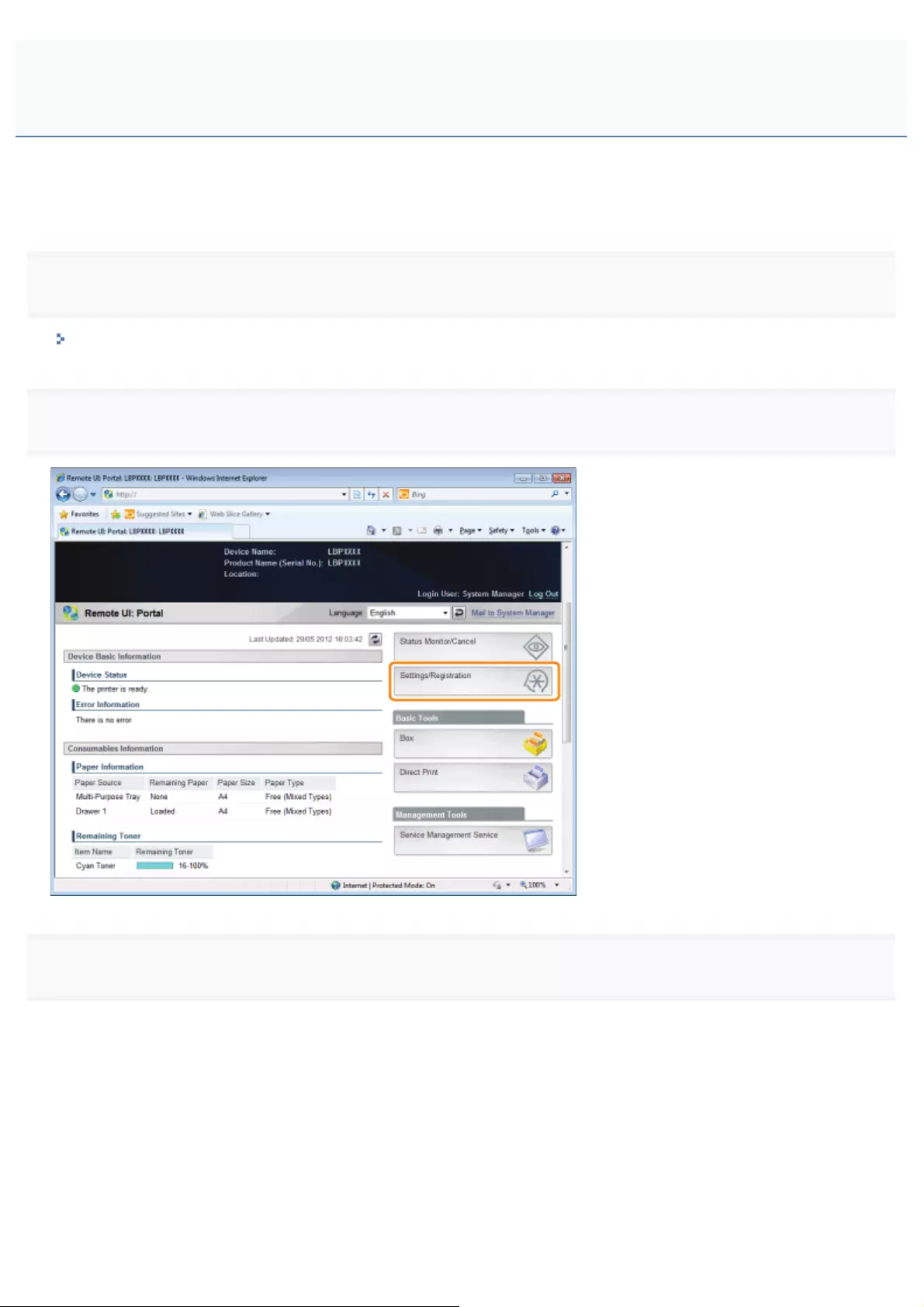
0258-06K
You can restrict the users who can specify and browse the settings using the SNMP protocol using a Web browser
(Remote UI).
1
Start the Remote UI, and then log in as Administrator.
"Starting the Remote UI"
2
Click [Settings/Registration].
3
Select [Network] from the [Preferences] menu.
Restricting the Users Who Can Monitor/Change the Settings Using the
SNMP Protocol
㻟㻤㻥㻌㻛㻌㻥㻥㻤

4
Click [SNMP Settings].
5
Click [Edit...].
㻟㻥㻜㻌㻛㻌㻥㻥㻤

6
Specify the settings for SNMP.
Configuring the SNMP Protocol
Specifying User Information to Be Used in the SNMP v. 3 Protocol
Specifying Context Information to Be Used in the SNMP v. 3 Protocol
Configuring the SNMP Protocol
(1) Configure the SNMP v. 1 protocol.
When using SNMPv1 protocol
a. Select the [Use SNMPv1] check box.
b. When using Community Name 1, select the check box for [Use Community Name 1], and set the following
items.
Set the SNMP Community Name in [Community Name 1]. Up to 32 characters can be entered. The
default setting is [public].
Using [MIB Access Permission], select whether to operate the SNMPv1 agent in one of [Read/Write] or
㻟㻥㻝㻌㻛㻌㻥㻥㻤

[Read Only] modes.
c. When using Community Name 2, select the check box for [Use Community Name 2], and set the following
items.
Set the SNMP Community Name in Community Name 2. Up to 32 characters can be entered. The
default setting is [public2].
Using [MIB Access Permission], select whether to operate the SNMPv1 agent in one of [Read/Write] or
[Read Only] modes.
When you are not using SNMPv1 protocol
Clear the [Use SNMPv1] check box.
IMPORTANT
When the [Use SNMPv1] check box is cleared
The following problems may occur.
* You may not be able to use some functions of Canon utility software or to use the software properly
due to an error occurring.
* You may not be able to specify or browse each option for this printer from utility software that uses
the SNMP v. 1 protocol to obtain information.
If you clear the [Use SNMPv1] check box, set it after consulting with the network administrator.
(2) Set a dedicated community.
a. In the [Dedicated Community 1] settings, select from [Off], [Read/Write] or [Read Only].
b. In the [Dedicated Community 2] settings, select from [Off], [Read/Write] or [Read Only].
(3) Configure the SNMP v. 3 protocol.
㻟㻥㻞㻌㻛㻌㻥㻥㻤
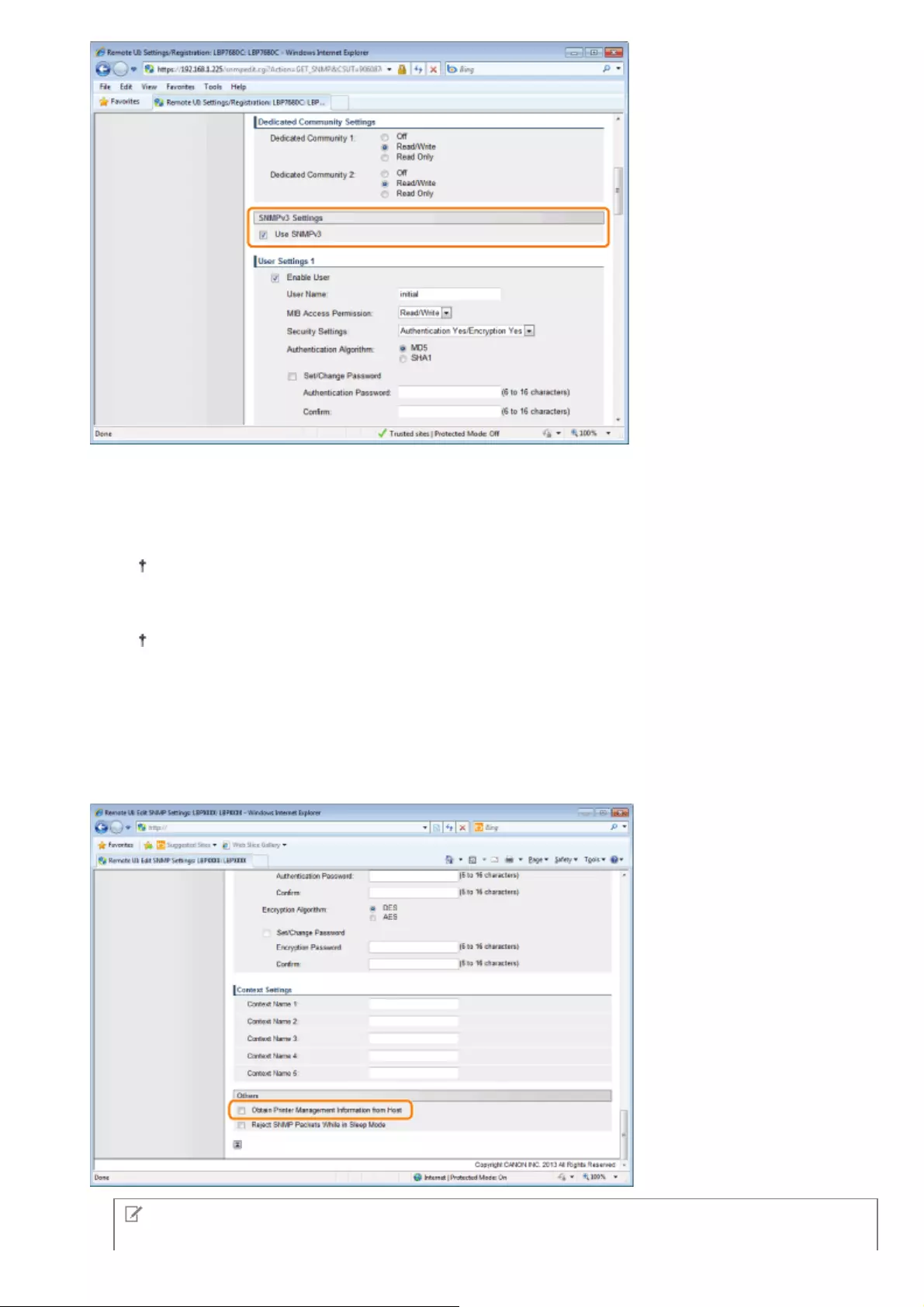
When using SNMPv3 protocol
a. Select the [Use SNMPv3] check box.
b. When setting user information used by SNMPv3 protocol, set user information using [User Settings 1] to
[User Settings 5].
See "Specifying User Information to Be Used in the SNMP v. 3 Protocol" for the method for setting
user information.
c. When setting context information used by SNMPv3 protocol, set context information using [Context Settings].
See "Specifying Context Information to Be Used in the SNMP v. 3 Protocol" for the method for
setting context information.
When you are not using SNMPv3 protocol
Clear the [Use SNMPv3] check box.
(4) Specify [Obtain Printer Management Information from Host] as needed.
If the [Obtain Printer Management Information from Host] check box is selected, when the printer driver is installed in
Windows Vista/7/Server 2008, port monitoring by SNMP is activated automatically.
NOTE
㻟㻥㻟㻌㻛㻌㻥㻥㻤

The port monitoring function by SNMP
The port monitoring function by SNMP is a function of Standard TCP/IP Port, and it periodically obtains printer
management information such as information about print applications and ports, using SNMP.
(5) Make a setting for rejecting to receive SNMP packets while in sleep mode, as necessary.
If you select the check box for [Reject SNMP Packets While in Sleep Mode], you may be unable to access the
printer from Canon software (iW Series) or applications using the SNMP protocol.
(6) Proceed to Step 7.
Specifying User Information to Be Used in the SNMP v. 3 Protocol
(1) Specify the user information to be used in the SNMP v. 3 protocol.
If You Want to Register/Edit User Information
If You Want to Change the Status (Valid/Invalid) of User Information
If You Want to Register/Edit User Information
1. Select the [Enable User] check box under [User Settings 1].
2. In [User Name], enter the user name to be used in the SNMP v. 3 protocol. Up to 32 alphanumeric
characters can be entered.
㻟㻥㻠㻌㻛㻌㻥㻥㻤

3. For [MIB Access Permission], select in which mode the SNMP v. 3 agent can operate, [Read/Write] or
[Read Only].
4. Under [Security Settings], select from [Authentication Yes/Encryption Yes], [Authentication Yes/Encryption
No] or [Authentication No/Encryption No] for the security used by SNMPv3.
㻟㻥㻡㻌㻛㻌㻥㻥㻤

5. If [Authentication Yes/Encryption Yes] or [Authentication Yes/Encryption No] is set for [Security Settings],
select [MD5] or [SHA1] for [Authentication Algorithm] as the authentication algorithm used by SNMPv3.
6. When [Authentication Yes/Encryption Yes] is set using [Security Settings], set an authentication
password.
[Authentication
Password]:
Enter the password to be used for the authentication function of the authentication
algorithm. 6 to 16 alphanumeric characters can be entered.
[Confirm]: To confirm the password, enter the entered [Authentication Password] again.
㻟㻥㻢㻌㻛㻌㻥㻥㻤

If the SSL encrypted communication function is not used, this item cannot be set by the Remote
UI. Either enable the SSL encrypted communication function, or set from the control panel using
the following procedure.
a. Press [ @6HWXSDQGVHOHFW>1HWZRUN@ĺ>6103Y6HWWLQJV@DQGVHW
[SNMP v. 3] to [On].
b. Set each password using [Auth. Password] from [User Settings 1] to [User Settings 5].
For details on the SSL encrypted communication function, see "Setting Keys and Certificates."
7. If [Security Settings] are set to [Authentication Yes/Encryption Yes], set an encrypted password.
Set [Encryption Algorithm] to [DES] or [AES].
[Encryption
Password]:
Enter the password to be used for the encryption function of the encryption
algorithm. 6 to 16 alphanumeric characters can be entered.
[Confirm]: To confirm the password, enter the entered [Encryption Password] again.
If the SSL encrypted communication function is not used, this item cannot be set by the Remote
UI. Either enable the SSL encrypted communication function, or set from the control panel using
the following procedure.
a. Press [ @6HWXSDQGVHOHFW>1HWZRUN@ĺ>6103Y6HWWLQJV@DQGVHW
㻟㻥㻣㻌㻛㻌㻥㻥㻤

[SNMP v. 3] to [On].
b. Set each password using [Auth. Password] from [User Settings 1] to [User Settings 5].
For details on the SSL encrypted communication function, see "Setting Keys and Certificates."
8. Set [User Settings 2] to [User Settings 5] using the same procedure as needed.
If You Want to Change the Status (Valid/Invalid) of User Information
To enable registered user information, select the [Enable User] check box at the top of the targeted user information.
To disable registered user information, clear the [Enable User] check box at the top of the targeted user information.
(2) Proceed to Step 7.
Specifying Context Information to Be Used in the SNMP v. 3 Protocol
(1) Specify the context information to be used in the SNMP v. 3 protocol.
If You Want to Register Context Information
If You Want to Erase Context Information
If You Want to Register Context Information
(1) Enter the context names used by the SNMPv3 protocol in [Context Name 1] to [Context Name 5] under
[Context Settings]. Up to 32 characters can be entered.
㻟㻥㻤㻌㻛㻌㻥㻥㻤
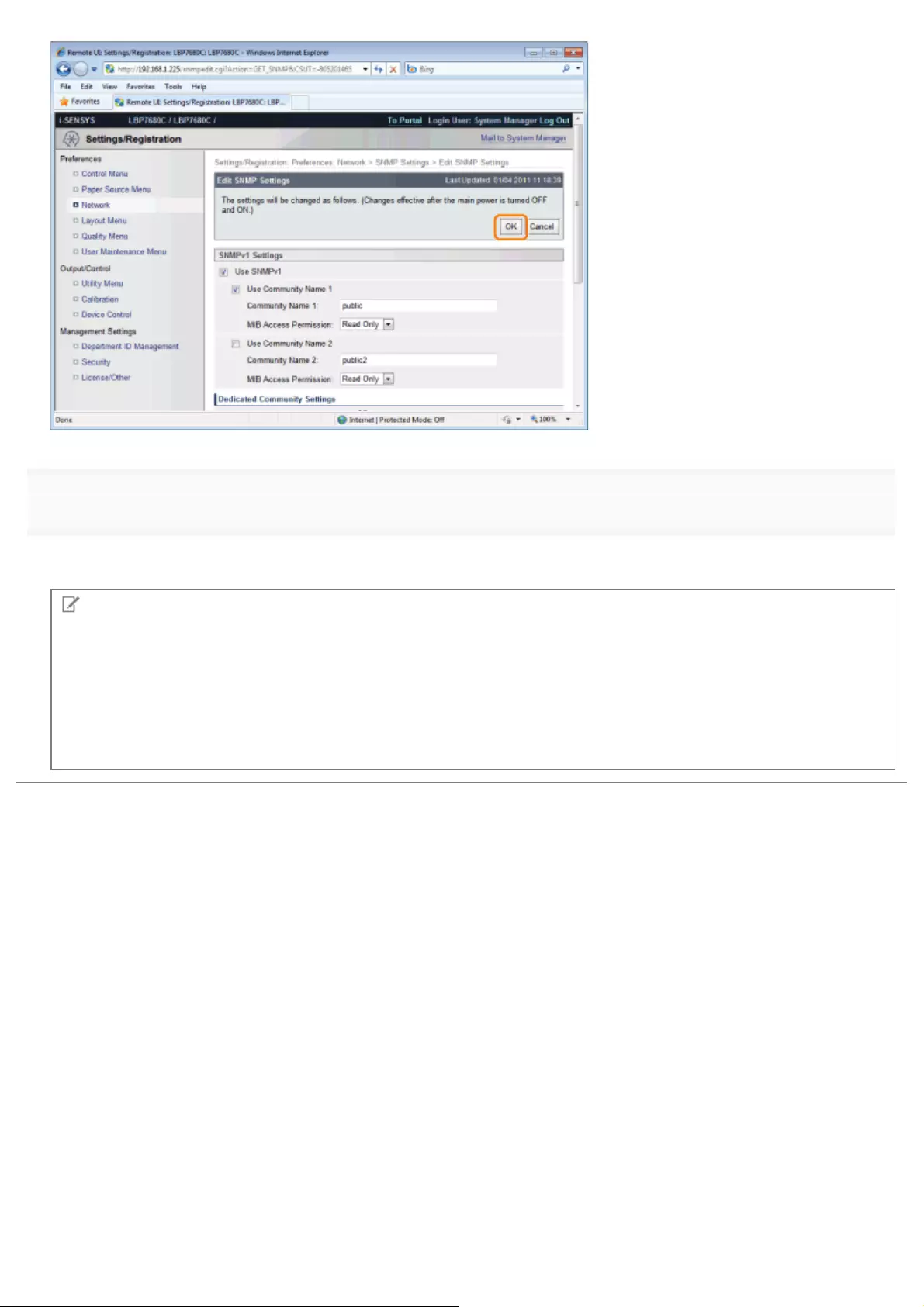
8
Perform a hard reset or restart the printer.
ĺAfter performing a hard reset or restarting the printer, the settings are effective.
NOTE
To perform a hard reset
You can perform a hard reset using the following procedure.
1. Click [Settings/Registration].
2. Select [Device Control] from the [Output/Control] menu.
3. Select [Hard Reset], then click [Execute].
㻠㻜㻜㻌㻛㻌㻥㻥㻤

0258-0L6
Specify the settings for using IEEE802.1X authentication with the printer.
See the following sections according to the protocol to be used for authentication.
"Setting TLS Authentication Information"
"Setting TTLS/PEAP Authentication Information"
IMPORTANT
Conditions for Using IEEE802.1X Authentication
In order to use IEEE802.1X authentication, an authentication server (RADIUS server) is required.
NOTE
IEEE802.1X Authentication Protocol
The printer supports TLS, TTLS and PEAP IEEE802.1X authentication.
TLS performs mutual authentication using the certificate sent from the authentication server and the certificate set in
the printer.
TTLS and PEAP perform mutual authentication using the certificate sent from the authentication server and the user
name and password set in the printer.
Note the following when simultaneously specifying multiple options from TLS, TTLS, and PEAP:
To select TLS: TTLS or PEAP cannot be specified.
To select TTLS: TLS cannot be specified. PEAP can be specified.
To select PEAP: TLS cannot be specified. TTLS can be specified.
The network authentication method to use is determined by the configuration of the authentication server in use.
Choose the method based on the configuration of the authentication server.
IEEE802.1X Authentication Settings
We recommend that network settings be performed by the network administrator.
Setting IEEE802.1X Authentication
㻠㻜㻝㻌㻛㻌㻥㻥㻤

0258-0L7
Set authentication information for using TLS with the IEEE802.1X authentication method.
TLS performs mutual authentication using the authentication server's certificate and the printer's certificate.
IMPORTANT
In order to set up TLS authentication
You need to register a key and certificate or a CA certificate used for authentication to the printer in advance.
"Setting Keys and Certificates"
"Setting CA Certificates"
1
Start the Remote UI, and then log in as Administrator.
"Starting the Remote UI"
2
Click [Settings/Registration].
3
Select [Network] from the [Preferences] menu.
Setting TLS Authentication Information
㻠㻜㻞㻌㻛㻌㻥㻥㻤

4
Click [IEEE802.1X Settings].
5
Click [Edit...].
㻠㻜㻟㻌㻛㻌㻥㻥㻤

6
Enter the login name.
Up to 24 alphanumeric characters can be entered.
7
Select the [Use TLS] check box.
㻠㻜㻠㻌㻛㻌㻥㻥㻤

8
Click [Key and Certificate...].
9
Select the key to use, and then click [Default Key Settings].
㻠㻜㻡㻌㻛㻌㻥㻥㻤

10
Select the [Use IEEE802.1X] check box.
If a Message Appears
A message will be displayed if there is anything wrong with the settings. See Steps 6 to 9, and check the settings.
11
Click [OK].
㻠㻜㻢㻌㻛㻌㻥㻥㻤

12
Perform a hard reset or restart the printer.
Perform a hard reset or restart the printer.
ĺAfter performing a hard reset or restarting the printer, the settings are effective.
NOTE
To perform a hard reset
You can perform a hard reset using the following procedure.
1. Click [Settings/Registration].
2. Select [Device Control] from the [Output/Control] menu.
3. Select [Hard Reset], then click [Execute].
㻠㻜㻣㻌㻛㻌㻥㻥㻤

0258-0L8
Set authentication information for using TTLS or PEAP with IEEE802.1X authentication.
TTLS and PEAP perform mutual authentication using the authentication server's certificate and the user name and
password set in the printer.
IMPORTANT
In order to set a user name and password
You need to set up the SSL encryption communication function in advance.
Setting the SSL Encryption Communication Function
1
Start the Remote UI, and then log in as Administrator.
Starting the Remote UI
2
Click [Settings/Registration].
3
Select [Network] from the [Preferences] menu.
Setting TTLS/PEAP Authentication Information
㻠㻜㻤㻌㻛㻌㻥㻥㻤
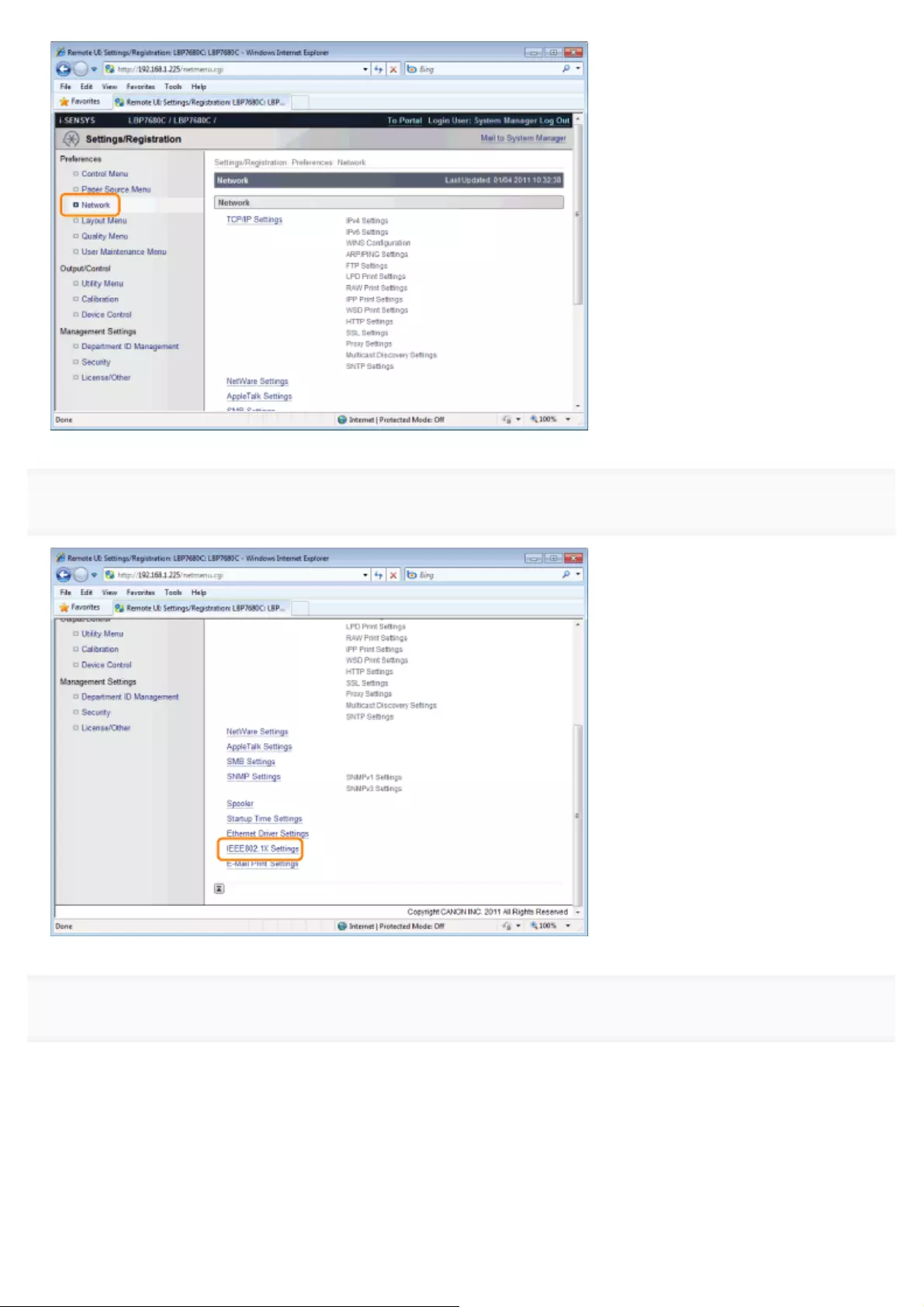
4
Click [IEEE802.1X Settings].
5
Click [Edit...].
㻠㻜㻥㻌㻛㻌㻥㻥㻤

6
Enter the login name.
Up to 24 alphanumeric characters can be entered.
7
Select the [Use TTLS] or [Use PEAP] check box.
㻠㻝㻜㻌㻛㻌㻥㻥㻤
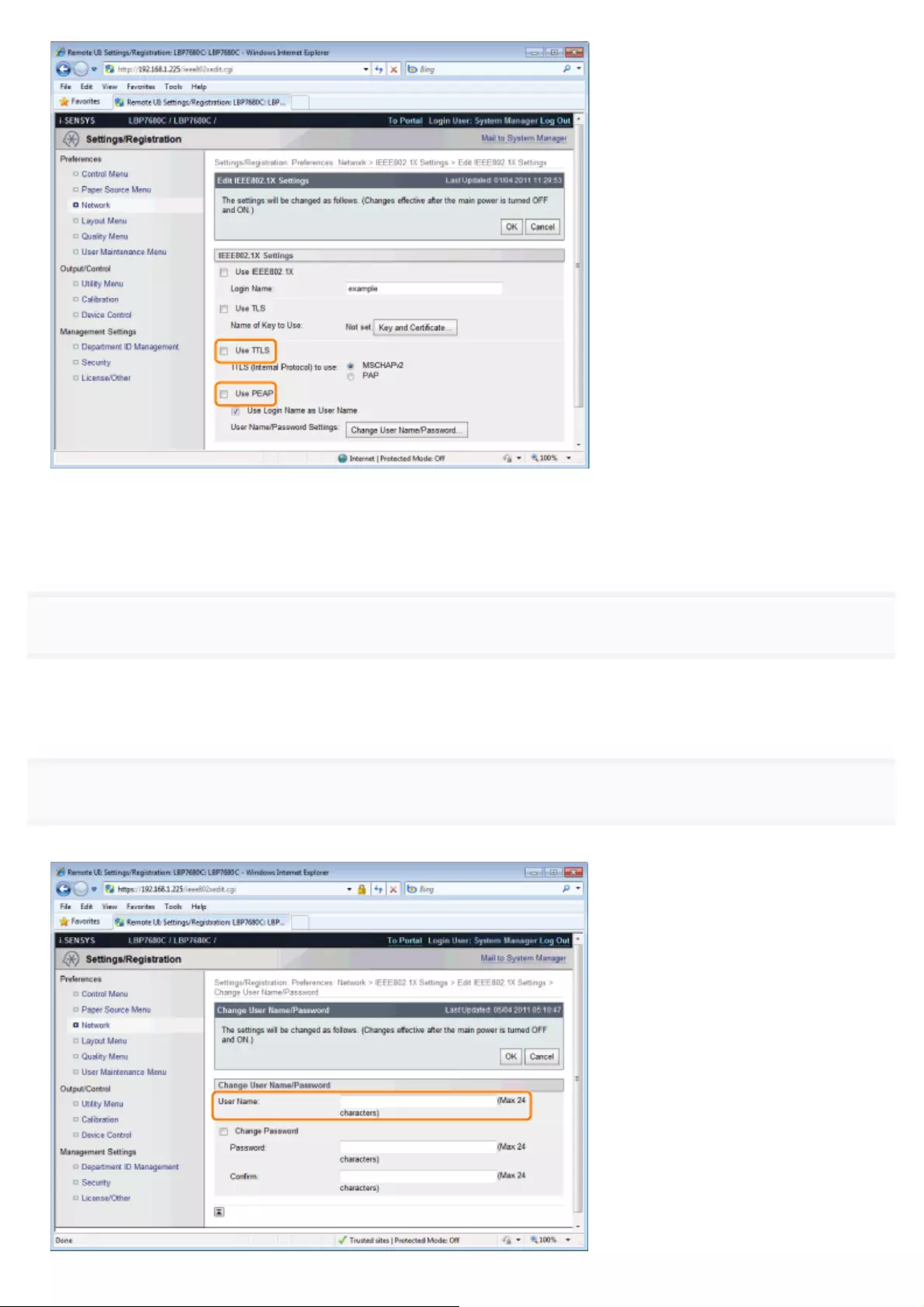
When using TTLS
Select the internal TTLS authentication method.
(1) Select the [MSCHAPv2] or [PAP] check box.
8
Click [Change User Name/Password...].
When using the log in name entered in Step 6 as the user name
Select the [Use Login Name as User Name] check box.
9
Enter user name.
Up to 24 alphanumeric characters can be entered.
㻠㻝㻝㻌㻛㻌㻥㻥㻤

10
Enter password.
(1) Select the [Change Password] check box.
(2) Enter password.
You can enter up to 24 characters.
(3) Enter the same password in the [Confirm] field.
(4) Click [OK].
11
Select the [Use IEEE802.1X] check box.
If a Message Appears
A message will be displayed if there is anything wrong with the settings. See Steps 6 to 10, and check the settings.
12
Click [OK].
㻠㻝㻞㻌㻛㻌㻥㻥㻤

13
Perform a hard reset or restart the printer.
ĺAfter performing a hard reset or restarting the printer, the settings are effective.
NOTE
To perform a hard reset
You can perform a hard reset using the following procedure.
1. Click [Settings/Registration].
2. Select [Device Control] from the [Output/Control] menu.
3. Select [Hard Reset], then click [Execute].
㻠㻝㻟㻌㻛㻌㻥㻥㻤

0258-06L
You can change the network settings using various methods.
Network Setting Items
Software That Can Be Used for the Network Settings
Network Setting Items
The setting items you can change using NetSpot Device Installer, FTP Client, or the control panel on the printer are as
follows.
NOTE
The settings that you cannot specify using FTP Client, NetSpot Device Installer, or the control
panel on the printer
Specify them using a Web browser (Remote UI).
(However, you cannot specify the settings with even using the Remote UI.)
About the item names
In the following table, the characters shown in parentheses are exclusively for FTP Client.
For example, "[IP Address] (INT_ADDR)" is displayed differently as follows, depending on the application.
Web browser (Remote UI): [IP Address]
NetSpot Device Installer: [IP Address]
config file of FTP Client: [INT_ADDR]
Control Panel: [IP Address]
General Settings
: Can be specified : Cannot be specified
Option Contents Default
Settings
Using
NetSpot
Device
Installer
Settings
Using
FTP
Client
Settings Using
the Control
Panel
[System Manager
Password]
(ROOT_PWD)
Up to 16 characters (Blank)
[System Manager]
(SYS_CONTACT) Up to 32 characters (Blank)
[Device Name]
(DEVICE_NAME) Up to 32 characters LBP7680C/LBP7660C
[Location]
(SYS_LOC) Up to 32 characters (Blank)
[Permit End-User's
Job Operation]
(USER_JOB_CONT)
ON, OFF OFF
Support Link
[URL]
(LINK_URL1)
Up to 128 alphanumeric
characters http://www.canon.com
Network Setting Items
㻠㻝㻠㻌㻛㻌㻥㻥㻤

TCP/IP (IP v. 4) Settings
: Can be specified : Cannot be specified
Option Contents Default
Settings
Using
NetSpot
Device
Installer
Settings
Using
FTP
Client
Settings
Using
the
Control
Panel
[Use IPv4] (IPV4_USE) ON, OFF ON
[DHCP] (DHCP_ENB) ON, OFF OFF
[RARP] (RARP_ENB) ON, OFF OFF
[BOOTP] (BOOTP_ENB) ON, OFF OFF
[IP Address] (INT_ADDR) IP address 0.0.0.0
[Subnet Mask] (NET_MASK) IP address 0.0.0.0
[Gateway Address] (DEF_GW) IP address 0.0.0.0
[Primary DNS Server Address]
(DNS_PADDR) IP address 0.0.0.0
[Secondary DNS Server Address]
(DNS_SADDR) IP address 0.0.0.0
[Host Name] (HOST_NAME) Up to 47 characters
"Canon" +
"Last 6
digits of
the MAC
address"
[Domain Name] (DOMAIN_NAME) Up to 47 characters (Blank)
[DNS Dynamic Update]
(DDNS_ENB) ON, OFF OFF
[WINS Resolution] (WINS_ENB) ON, OFF OFF
[WINS Server Address]
(WINS_SERVER) IP address 0.0.0.0
[Scope ID] (WINS_SCOPEID) Up to 63 characters (Blank)
[SMB Server Name]
(SMB_SERVER)
Up to 15 alphanumeric
characters (Blank)
[SMB Workgroup Name]
(SMB_WG)
Up to 15 alphanumeric
characters (Blank)
[Use ARP/PING]
(ARP_PING_ENB) ON, OFF ON
[Use FTP Print]
(FTP_PRINT_ENB) ON, OFF OFF
[FTP Print User Name]
(FTP_PRINT_USER) Up to 24 characters (Blank)
[Password] (FTP_PRINT_PWD) Up to 24 characters (Blank)
[FTP Settings] ON, OFF OFF
[Use LPD Printing] (LPD_ENB) ON, OFF ON
[Print LPD Banner Page]
(LPD_BANN) ON, OFF OFF
㻠㻝㻡㻌㻛㻌㻥㻥㻤

[Use RAW Printing] (RAW_ENB) ON, OFF ON
[Use Bidirectional Communication]
(RAW_BIDIR_ENB) ON, OFF OFF
[Use IPP Print] (IPP_ENB) ON, OFF OFF
[SSL]
ON, OFF (Fixed at OFF
when a key is not
registered.)
OFF
[IPP Authentication]
(IPP_AUTH_ENB) ON, OFF ON
[User Name]
(IPP_AUTH_ACCUNT1)
Up to 24 characters (Must
be entered when using IPP
Authentication)
(Blank)
[Password]
(IPP_AUTH_PASSWD1)
Up to 24 characters (Must
be entered when using IPP
Authentication)
(Blank)
[Use WSD Printing] (WSD_ENB) ON, OFF OFF
[Use WSD Browsing]
(WSD_BROWSING) ON, OFF OFF
[Use Multicast Discovery]
(WSD_MULTICAST_DISCOVERY) ON, OFF OFF
[Use HTTP] (HTTP_ENB) ON, OFF ON
[Use Proxy] ON, OFF OFF
[HTTP Proxy Server Address] Up to 128 alphanumeric
characters (Blank)
[HTTP Proxy Server Port Number] 0 to 99999 80
[Use Proxy Within Same Domain] ON, OFF OFF
[Proxy Authentication] ON, OFF OFF
[User Name] Up to 24 alphanumeric
characters (Blank)
[Password] Up to 24 alphanumeric
characters (Blank)
[Discovery Response]
(DISCOVERY_ENB) ON, OFF ON
[Scope Name]
(DISCOVERY_SCOPE_NAME)
Scope name to be used for
discovery using utility
software such as NetSpot
Device Installer. (Up to 32
characters *)
default
[Use SNTP] (SNTP_ENB) ON, OFF OFF
[NTP Server Name]
(SNTP_ADDR) IP address or host name (Blank)
[Polling Interval]
(SNTP_INTERVAL)
Interval for synchronizing
time (1 to 48 hours) 24
*You cannot use any of the following characters: "(", ")", ",", "!", "<", ">", "=", "~", ";", "+", "*", "\."
TCP/IP (IP v. 6) Settings
: Can be specified : Cannot be specified
㻠㻝㻢㻌㻛㻌㻥㻥㻤

Option Contents Default
Settings
Using NetSpot
Device
Installer
Settings
Using
FTP
Client
Settings
Using the
Control
Panel
[Use IPv6] (IPV6_USE) ON, OFF OFF
[Use Stateless Address]
(IPV6_STATELESS_USE) ON, OFF ON
[Use Manual Address]
(IPV6_MANUAL_ADDR_USE) ON, OFF OFF
[IP Address]
(IPV6_MANUAL_ADDR_SET)
IP
address (Blank)
[Prefix Length]
(IPV6_MANUAL_ADDR_PREFIX) 0 to 128 64
[Default Router Address]
(IPV6_MANUAL_ROUTER_ADDR)
IP
address (Blank)
[Use DHCPv6] (IPV6_DHCPV6_USE) ON, OFF OFF
[Primary DNS Server Address]
(IPV6_DNS_ADDRESS_PRI)
IP
address (Blank)
[Secondary DNS Server Address]
(IPV6_DNS_ADDRESS_SEC)
IP
address (Blank)
[Use IPv4 Host/Domain Names]
(IPV6_DNS_NAME_SAME_AS_IPV4) ON, OFF OFF
[Host Name]
(IPV6_DNS_HOST_NAME_V6)
Up to 47
characters
"Canon" +
"Last 6 digits of
the MAC
address"
[Domain Name]
(IPV6_DNS_DOMAIN_NAME_V6)
Up to 47
characters (Blank)
[DNS Dynamic Update]
(IPV6_DNS_DYNAMIC_SET) ON, OFF OFF
[Register Manual Address]
(IPV6_DNS_MANUAL) ON, OFF OFF
[Register Stateful Address]
(IPV6_DNS_STATEFUL) ON, OFF OFF
[Register Stateless Address]
(IPV6_DNS_STATELESS) ON, OFF OFF
NetWare Network Settings
: Can be specified : Cannot be specified
Option Contents Default
Settings
Using
NetSpot
Device
Installer
Settings
Using
FTP
Client
Settings
Using
the
Control
Panel
[Use NetWare] (NW_ENB) ON, OFF OFF
[Frame Type] (NW_FRAME_TYPE)
Frame type
used by
NetWare
AutoSense
([Auto Detect])
[IPX External Network Number] (Display only)
㻠㻝㻣㻌㻛㻌㻥㻥㻤

[Node Number] (Display only)
[Print Service] (NW_PRINT_SERVICE) Print service to
be used
ndsPserver([NDS
PServer])
Bindery PServer
[File Server Name]
(NW_PSERVER_FILE_SERVER_
NAME)
Name of the
NetWare file
server to which
the NetWare
print server
belongs (1 to
47 characters)
(Blank)
[Print Server Name]
(NW_PSERVER_PRINT_SERVER_NAME)
NetWare print
server name to
be used (1 to
47 characters)
(Blank)
[Print Server Password]
(NW_PSERVER_PASSWD)
Password for
accessing the
print server (0
to 20
characters)
(Blank)
[Printer Number]
(NW_PSERVER_PRINTER_NO)
Number for the
printer
connected to
the NetWare
print server (0
to 15)
0
[Service Mode]
(NW_PSERVER_SERVICE_MODE)
Service mode
to be used
psMode1: Only
the currently
loaded paper
can be
serviced.
psMode2:
Paper can be
changed as
needed.
psMode3: The
order of the
jobs is
rearranged to
minimize the
frequency of
changing paper.
psMode4: The
order of the
jobs in a queue
is rearranged to
minimize the
frequency of
changing paper.
psMode4
[Printer Form]
(NW_PSERVER_PRINTER_FORM)
Paper Define
Form (0 to 255) 0
[Polling Interval]
(NW_PSERVER_POLLING_INT)
Interval for
checking the
jobs (1 to 15
seconds)
5
㻠㻝㻤㻌㻛㻌㻥㻥㻤

[Buffer Size]
(NW_PSERVER_BUFFER_SIZE)
Data Buffer
Size (1 to 20
KB)
20
NDS PServer
[Tree
Name](NW_NDSSERVER_TREE_NAME)
Name of the
NDS tree to
which the
NetWare print
server belongs
(1 to 32
characters)
(Blank)
[Context Name]
(NW_NDSSERVER_CONTEXT_
NAME)
Name of the
context to which
the NetWare
print server
belongs (1 to
255 characters)
(Blank)
[Print Server Name]
(NW_NDSSERVER_PRINT_
SERVER_NAME)
NetWare print
server name to
be used (1 to
64 characters)
(Blank)
[Print Server Password]
(NW_NDSSERVER_PRINT_
SERVER_PASSWORD)
Password for
accessing the
print server (0
to 20
characters)
(Blank)
[Printer Number]
(NW_NDSSERVER_PRINTER_NO)
Number for the
printer
connected to
the NetWare
print server (0
to 254)
0
[Service Mode]
(NW_NDSSERVER_SERVICE_
MODE)
Service mode
to be used
psMode1: Only
the currently
loaded paper
can be
serviced.
psMode2:
Paper can be
changed as
needed.
psMode3: The
order of the
jobs is
rearranged to
minimize the
frequency of
changing paper.
psMode4: The
order of the
jobs in a queue
is rearranged to
minimize the
frequency of
changing paper.
psMode4
[Printer Form]
(NW_NDSSERVER_PRINTER_FORM)
Paper Define
Form (0 to 255) 0
㻠㻝㻥㻌㻛㻌㻥㻥㻤

[Polling Interval]
(NW_NDSSERVER_POLLING_INT)
Interval for
checking the
jobs (1 to 255
seconds)
5
[Buffer Size]
(NW_NDSSERVER_BUFFER_SIZE)
Data Buffer
Size (3 to 20
KB)
20
RPrinter
[File Server Name]
(NW_RPRINTER_FILE_SERVER_
NAME)
Name of the
NetWare file
server to which
the NetWare
print server
belongs (1 to
47 characters)
(Blank)
[Print Server Name]
(NW_RPRINTER_PRINT_SERVER_
NAME)
NetWare print
server name to
be used (1 to
47 characters)
(Blank)
[Printer Number]
(NW_RPRINTER_PRINTER_NO)
Number for the
printer
connected to
the NetWare
print server (0
to 15)
0
NPrinter
[Tree
Name](NW_NPRINTER_TREE_NAME)
Name of the
NPrinter tree to
which the
NetWare print
server belongs
(1 to 32
characters)
(Blank)
[Context Name]
(NW_NPRINTER_CONTEXT_NAME)
Name of the
context to which
the NetWare
print server
belongs (1 to
256 characters)
(Blank)
[Print Server Name]
(NW_NPRINTER_PRINT_SERVER_
NAME)
NetWare print
server name to
be used (1 to
64 characters)
(Blank)
[Printer
Number](NW_NPRINTER_PRINTER_NO)
Number for the
printer
connected to
the NetWare
print server (0
to 254)
0
AppleTalk Settings
: Can be specified : Cannot be specified
Option Contents Default
Settings
Using
NetSpot
Device
Settings
Using
FTP
Settings
Using
the
Control
㻠㻞㻜㻌㻛㻌㻥㻥㻤

Installer Client Panel
[Use AppleTalk]
(ATLK_ENB) ON, OFF OFF
[Phase] Fixed at [Phase 2] [Phase 2]
[Service Name]
(APRINT_1) Up to 32 characters *1 LBP7680Cx/LBP7660Cdn
[Zone]
(ATK_ZONE) Up to 32 characters *2 *
[Print Mode]*3 [Open Both Spool and Direct],
[Open Spool], [Open Direct]
[Open Both Spool and
Direct]
*1 "=", "@", "*", ":", and "~" cannot be used.
*2 "=", "@", ":", and "~" cannot be used.
*3 Can be specified only when PS ROM or PS/Barcode ROM is installed.
SMB Settings (LBP7680Cx Only)
: Can be specified : Cannot be specified
Option Contents Default
Settings
Using
NetSpot
Device
Installer
Settings
Using
FTP
Client
Settings Using the
Control Panel
[Use SMB Server](SMB_ENB) ON, OFF OFF
[Server Name](SMB_SERVER) Up to 15
characters *(Blank)
[Workgroup Name](SMB_WG) Up to 15
characters *(Blank)
[Comments](SMB_COMMENT) Up to 48
characters (Blank)
[Use LM
Announce](SMB_LM_ENB) ON, OFF OFF
[Use SMB
Printing](SMB_PRINT_ENB) ON, OFF OFF
[Printer
Name](SMB_PRINTER)
Up to 13
characters *(Blank)
*You cannot enter a space between characters.
SNMP Settings
: Can be specified : Cannot be specified
Option Contents Default
Settings
Using
NetSpot
Device
Installer
Settings
Using
FTP
Client
Settings Using the
Control Panel
[Use SNMPv1]
(SNMP_V1_ENB) ON, OFF ON
[Use Community Name 1]
(SNMP_COMMUNITY1_ENB) ON, OFF ON
㻠㻞㻝㻌㻛㻌㻥㻥㻤

[Community Name 1]
(SNMP_COMMUNITY1_NAME)
Up to 32
characters public
[MIB Access Permission]
(SNMP_COMMUNITY1_ACCESS)
RW, RO
([Read/Write],
[Read Only])
RO
([Read
Only])
[Use Community Name 2]
(SNMP_COMMUNITY2_ENB) ON, OFF OFF
[Community Name 2]
(SNMP_COMMUNITY2_NAME)
Up to 32
characters public2
[MIB Access Permission]
(SNMP_COMMUNITY2_ACCESS)
RW, RO
([Read/Write],
[Read Only])
RO
([Read
Only])
[Use SNMPv3]
(SNMP_V3_ENB) ON, OFF OFF
[Obtain Printer Management
Information from Host]
(SNMP_GET_PRT_MNG_INFO)
ON, OFF OFF
[Reject SNMP Packets While in
Sleep Mode] ON, OFF OFF
User Settings (SNMPv3)
: Can be specified : Cannot be specified
Option Contents Default
Settings
Using
NetSpot
Device
Installer
Settings
Using
FTP
Client
Settings
Using
the
Control
Panel
[User Name] Up to 32 alphanumeric characters initial
[MIB Access
Permission] [Read/Write], [Read Only] [Read/Write]
[Security Settings]
[Authentication Yes/Encryption Yes],
[Authentication Yes/Encryption No],
[Authentication No/Encryption No]
[Authentication
Yes/Encryption
Yes]
[Authentication
Algorithm] [MD5], [SHA1] [MD5]
[Authentication
Password] *6 to 16 alphanumeric characters initial
[Encryption
Algorithm] [DES], [AES] [DES]
[Encryption
Password] *6 to 16 alphanumeric characters initial
*Can be specified only when the printer is in the state of SSL encrypted communication. (If the printer is not in the
state of encrypted communication, specify the setting using the printer's control panel.)
Context Settings (SNMPv3)
: Can be specified : Cannot be specified
Option Contents Default
Settings
Using
NetSpot
Settings
Using
FTP
Settings Using the
Control Panel
㻠㻞㻞㻌㻛㻌㻥㻥㻤

Device
Installer Client
[Context Name 1] -
[Context Name 5]
Up to 32 alphanumeric
characters (Blank)
Spooler Settings (LBP7680Cx Only)
: Can be specified : Cannot be specified
Option Contents Default
Settings
Using
NetSpot
Device
Installer
Settings
Using
FTP
Client
Settings Using the Control Panel
[Use
Spooler](SPOOL_ENB) ON, OFF OFF
Startup Time Setting
: Can be specified : Cannot be specified
Option Contents Default
Settings
Using
NetSpot
Device
Installer
Settings
Using
FTP
Client
Settings
Using
the
Control
Panel
[Startup Time]
(STRT_DELAY_TIME)
Waiting time from when you turn the printer
ON to when the printer starts obtaining the
address (0 to 300 seconds)
0
Ethernet Driver Setting
: Can be specified : Cannot be specified
Option Contents Default
Settings
Using
NetSpot
Device
Installer
Settings
Using
FTP
Client
Settings Using the
Control Panel
[Auto Detect] ON, OFF ON
[Communication
Mode] [Half Duplex], [Full Duplex] [Half
Duplex]
[Ethernet Type] [10 Base-T], [100 Base-TX],
[1000 Base-T]
[10
Base-T]
E-Mail Print Settings
: Can be specified : Cannot be specified
Option Contents Default
Settings
Using
NetSpot
Device
Installer
Settings
Using
FTP
Client
Settings Using the
Control Panel
[POP3 Server
Name](EMAIL_POP_ADDR)
Up to 48
characters (Blank)
[POP3 User
Name](EMAIL_POP_ACCOUNT)
Up to 32
characters (Blank)
㻠㻞㻟㻌㻛㻌㻥㻥㻤

[Password](EMAIL_POP_PASSWD) Up to 32
characters (Blank)
[POP3 RX
Interval](EMAIL_POP_INTERVAL) 0 to 90 minutes 0*
[POP3 RX](EMAIL_PRINT_ENB) ON, OFF OFF
[POP3 Server Port
Number](EMAIL_POP_PORTNO) 0 to 65535 110
[SMTP RX] ON, OFF OFF
[SMTP Server Port Number] 0 to 65535 25
*When [0] is set, auto e-mail reception to the server is not performed.
Remote UI Settings
: Can be specified : Cannot be specified
Option Contents Default
Settings
Using
NetSpot
Device
Installer
Settings
Using
FTP
Client
Settings Using the
Control Panel
[Remote
UI](RUI_ENB)*
Turing ON or OFF the
Remote UI ON
[Use SSL] ON, OFF OFF
*Can be specified only by FTP Client or the printer's control panel
Permitted Receiving MAC Address Settings
: Can be specified : Cannot be specified
Option Contents Default
Settings
Using
NetSpot
Device
Installer
Settings
Using
FTP
Client
Settings Using the Control Panel
[MAC Address
Filter] ON, OFF OFF
[MAC Address] (Display only)
Software That Can Be Used for the Network Settings
You can perform the network settings for this printer using the following software.
: Specifiable
: Not specifiable
: Can perform a part of the settings
Setting Type Web Browser
(Remote UI)
FTP
Client
NetSpot Device
Installer
ARP/PING
Command
Control Panel of
the Printer
Configuring the
Ethernet Driver
"Changing the
Network
㻠㻞㻠㻌㻛㻌㻥㻥㻤

Transmission
Speed or
Transfer
Mode"
Setting the Spooling
Function
(LBP7680Cx only)
"Setting the
Spooling
Function
(LBP7680Cx
Only)"
Configuring the
Communication
Environment
"Specifying the
Setting for
Startup Waiting
Time"
Setting the IP
Address of the
Printer
"Setting the IP
Address (IP v.
4)"
Setting the TCP/IP
Protocol
"Configuring
the Protocol
Settings"
Setting IP v. 6
"Setting IP v.
6"
Preparing the
NetWare Protocol
Settings
"Configuring
NetWare"
Setting the NetWare
Protocol
"Configuring
the Protocol
Settings"
Setting the
AppleTalk Protocol
"Network
Settings for the
Printer
(AppleTalk)"
Changing the
Device Name or
Administrator
Information
"Specifying the
Device Name
or
Administrator
Information"
㻠㻞㻡㻌㻛㻌㻥㻥㻤

Changing the
Administrator
Password
"Setting the
Administrator
Password"
Specifying the Job
Operation
Permission for End-
users
"Specifying the
Job Operation
Permission for
End-Users"
Restricting the Job
Requests by Certain
Devices
"Restricting the
Users Who
Can Print or
Perform the
Printer
Settings"
Restricting the Job
Requests by Certain
Devices
"Restricting the
Users Who
Can Print or
Perform the
Printer
Settings"
Keylock Settings
"Locking the
Keys on the
Control Panel
(Key Lock
Function)"
Changing E-Mail
Print Settings
"Receiving E-
mail Data on
the Mail Server
and Printing
(E-mail Print)"
㻠㻞㻢㻌㻛㻌㻥㻥㻤

0258-06R
If you want to reset the network settings for the printer to the default values, use the printer's control panel.
"Initializing the Network Settings Using the Printer's Control Panel"
Initialize the network settings using the control panel while checking the display on the printer.
IMPORTANT
Precautions when initializing the network settings
Make sure that the printer is not operating before initializing the network settings.
If you initialize the network settings while the printer is printing or receiving data, the received data may not be printed
properly, or may result in paper jams or damage to the printer.
NOTE
When checking the current settings
"Checking the Printer Settings"
Initializing the Network Settings
㻠㻞㻣㻌㻛㻌㻥㻥㻤
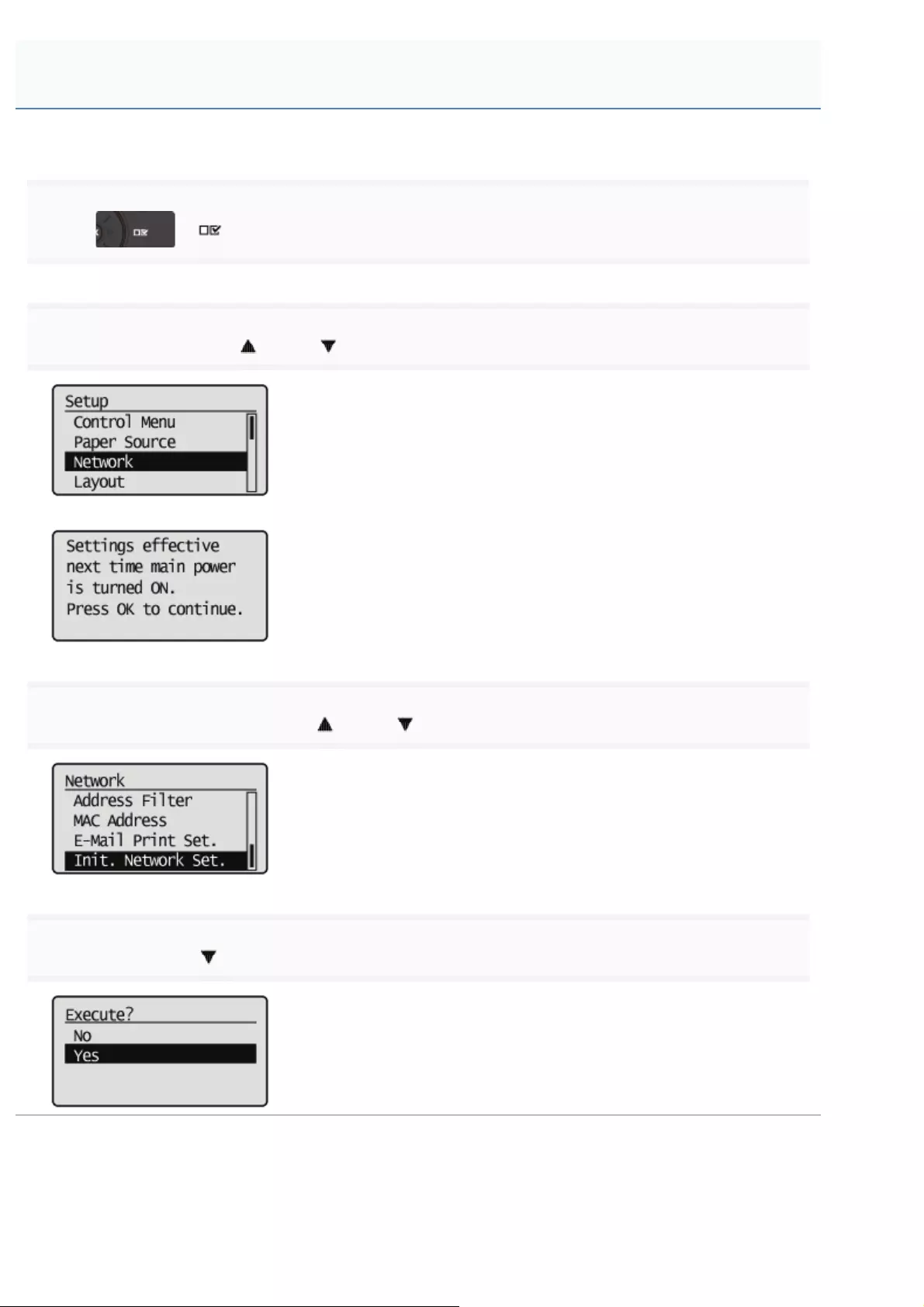
0258-06S
1
Press [ ] ( : Settings).
2
Select [Network] using [ ] and [ ], then press [OK].
When the message is displayed, press [OK].
3
Select [Init. Network Set.] using [ ] and [ ], then press [OK].
4
Select [Yes] using [ ], then press [OK].
Initializing the Network Settings Using the Printer's Control Panel
㻠㻞㻤㻌㻛㻌㻥㻥㻤
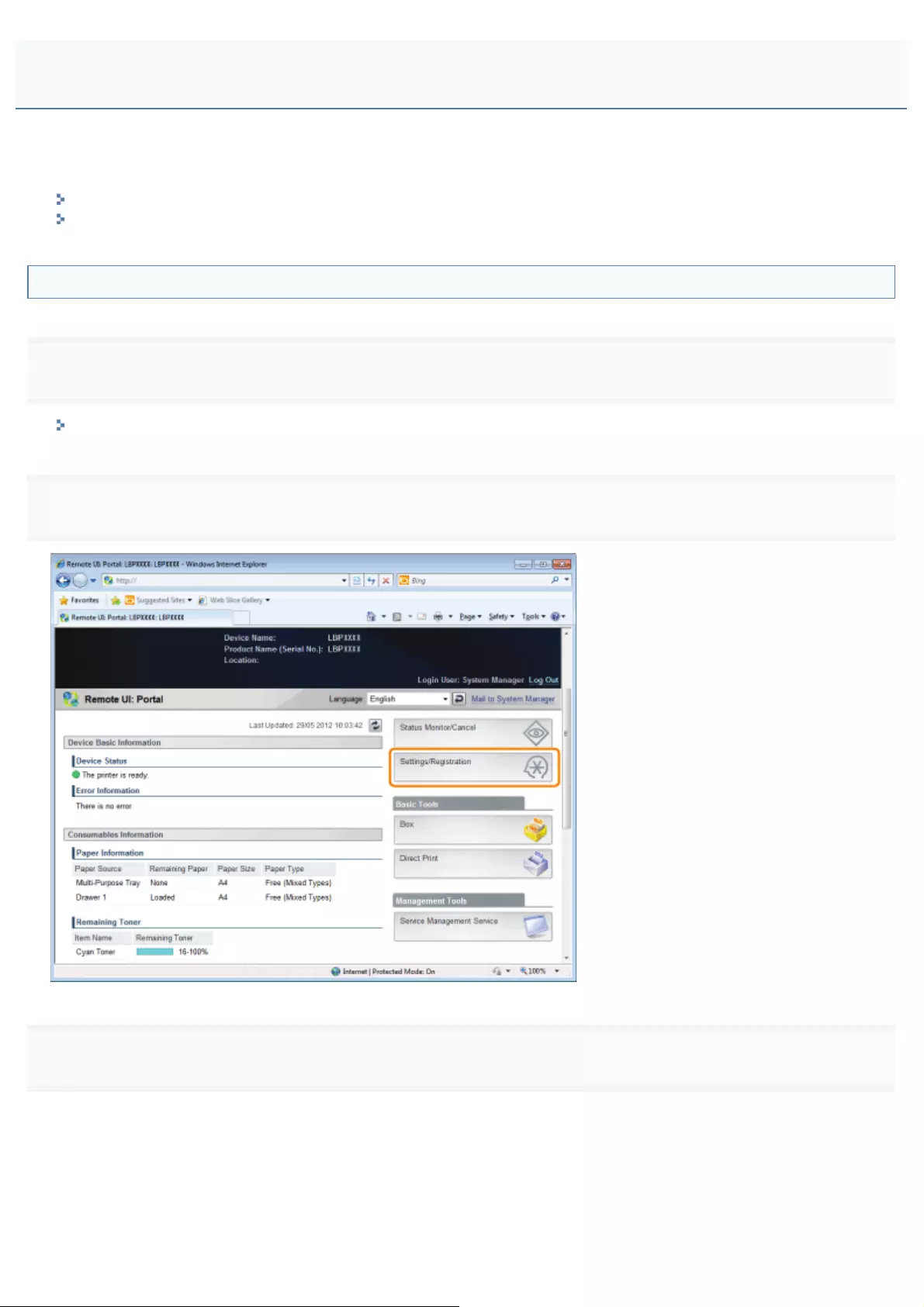
0258-06W
You need the MAC address of the printer to set the IP address using NetSpot Device Installer or the ARP/PING command.
There are the following two methods for checking MAC addresses.
"Checking the Network Ethernet Driver Screen from a Remote UI"
"Printing a Network Status Print from the Printer's Control Panel and Checking It"
Checking the Network Ethernet Driver Screen from a Remote UI
1
Start the Remote UI, and then log in as Administrator.
"Starting the Remote UI"
2
Click [Settings/Registration].
3
Select [Network] from the [Preferences] menu.
Checking the MAC Address
㻠㻞㻥㻌㻛㻌㻥㻥㻤

4
Click [Ethernet Driver Settings].
5
Check the MAC address.
㻠㻟㻜㻌㻛㻌㻥㻥㻤

Printing a Network Status Print from the Printer's Control Panel and Checking It
NOTE
Loading A4 paper
The Network Status Print is designed to be printed on A4 paper.
Be sure to load A4 paper when printing the Network Status Print.
1
Load A4 paper in the multi-purpose tray or paper drawer.
Paper Loading and Output
2
Press [ ] ( : Utility).
3
Select [Network Status Print] using [ ] and [ ], then press [OK].
4
Select [Yes] using [ ], then press [OK].
㻠㻟㻝㻌㻛㻌㻥㻥㻤

Network Status Print is printed. The MAC address (A) is indicated in [Ethernet Driver Settings] on the upper left of the
Network Status Print.
㻠㻟㻞㻌㻛㻌㻥㻥㻤
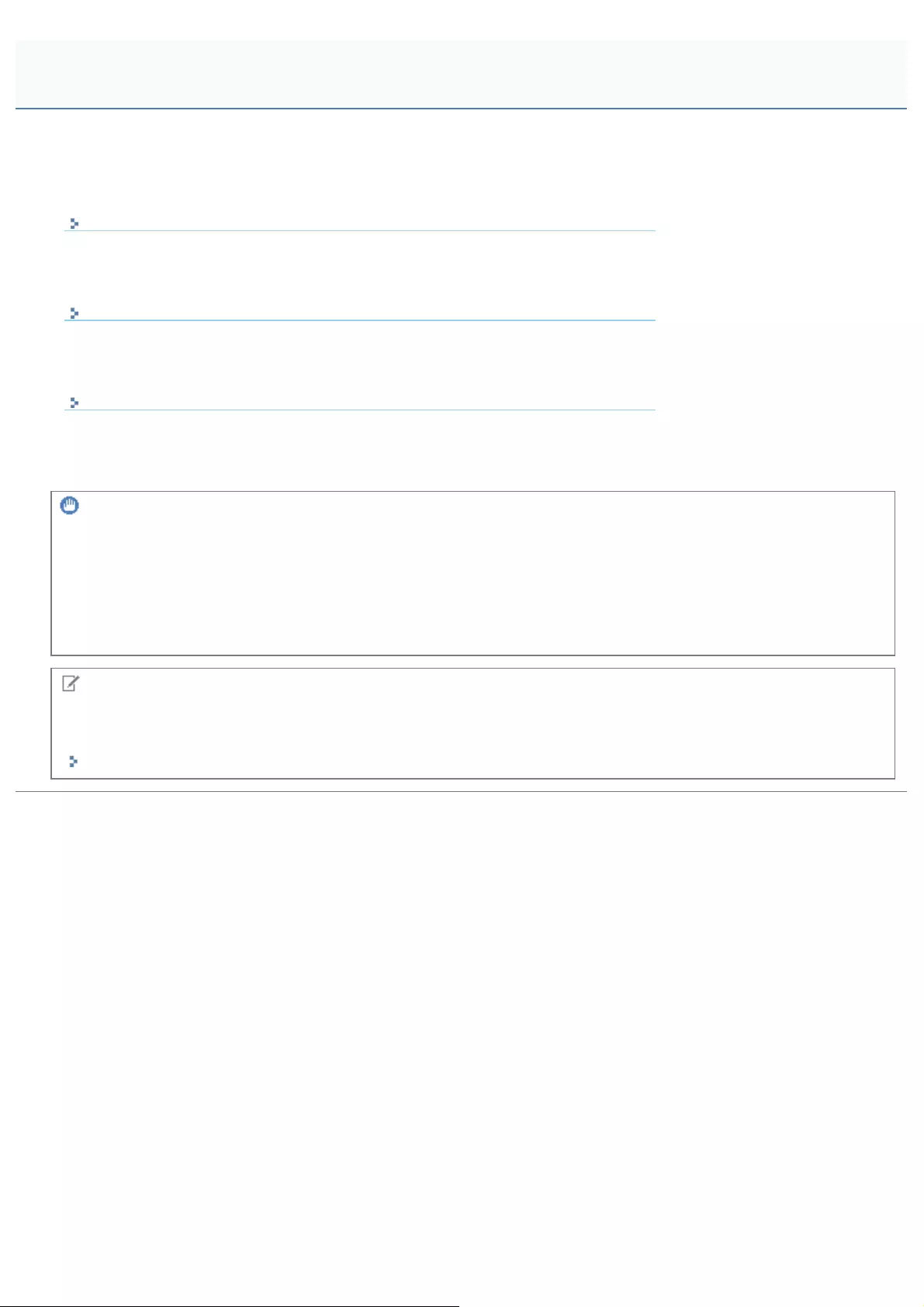
0258-06Y
There are the following three methods for setting the IP address.
Setting the IP Address Using the Printer's Control Panel
Set the IP address using the control panel while checking the display on the printer.
Setting the IP Address Using the ARP/PING Commands
Set the IP address using the ARP/PING command in Command Prompt.
Setting the IP Address Using NetSpot Device Installer
Set the IP address using NetSpot Device Installer in the supplied CD-ROM.
IMPORTANT
When setting the IP Address using the ARP/PING command or NetSpot Device Installer
The MAC address of the printer is required. For details on the procedure for checking the MAC address, see "Checking
the MAC Address."
Before setting the IP address
Make sure that the printer is connected to the network and the printer is ON.
NOTE
If you changed the IP address after installing the printer driver
Specify the port to be used again in the printer driver.
"Configuring a Computer that Performs Printing"
Setting the IP Address (IP v. 4)
㻠㻟㻠㻌㻛㻌㻥㻥㻤

0258-070
To set the IP address using the printer's control panel, use the following menu hierarchies.
* [Protocol] is displayed when [IP Mode] is set to [Auto].
Pressing [ ] ( : Settings) displays the common Setup menu.
indicates that the procedure is performed by pressing [ ] or [ ] on the control panel.
indicates that the procedure is performed by pressing [OK] on the control panel.
IMPORTANT
After setting the IP address
To enable the settings, perform a hard reset or restart the printer.
For details on a hard reset, see "Canceling All the Jobs (Hard Reset)."
To go back up the hierarchy
Press [ ] ( : Back).
About the control panel
For details on the control panel, see "Control Panel."
1
Press [ ] ( : Settings), select [Network] using [ ] and [ ], and then press [OK].
When the message is displayed, press [OK].
You can specify the settings when the printer is either online (the Online indicator is on) or offline (the Online
Setting the IP Address Using the Printer's Control Panel
㻠㻟㻡㻌㻛㻌㻥㻥㻤

indicator is off).
2
Select [TCP/IP Settings] using [ ] and [ ], and then press [OK].
3
Select [IPv4 Settings] using [ ] and [ ], and then press [OK].
4
Set it to use [IPv4].
(1) After selecting [IPv4] using [ ] or [ ], press [OK].
(2) After selecting [On] using [ ] or [ ], press [OK].
5
Select the method for setting the IP address.
(1): Select [IP Mode] using [ ] and [ ], and then press [OK].
(2): Select a method for setting the IP address using [ ] and [ ], and then press [OK].
[Auto]: When setting the IP address using any one of DHCP, BOOTP, or RARP, select this
option.
[Manual]: When specifying the IP address to the printer directly, select this option.
6
Set the IP address.
If You Selected [Auto] in Step 5
If You Selected [Manual] in Step 5
If You Selected [Auto] in Step 5
1. Select [Protocol] using [ ] and [ ], and then press [OK].
2. Select [On] for the option to be used when setting the IP address.
[Use DHCP]: Obtains an IP address using DHCP. (The DHCP server needs to be running.)
[Use BOOTP]: Obtains an IP address using BOOTP. (The BOOTP daemon needs to be running.)
[Use RARP]: Obtains an IP address using RARP. (The RARP daemon needs to be running.)
NOTE
When using DHCP, BOOTP, or RARP
You can select only one from RARP, BOOTP, or DHCP. One of the following can be used: DHCP,
BOOTP, or RARP. When any of the settings is turned [On], the remaining two settings are automatically
turned [Off].
Because it takes approximately two minutes to check whether DHCP, BOOTP, and RARP are available,
we recommend that you set the unused protocol(s) to [Off].
㻠㻟㻢㻌㻛㻌㻥㻥㻤

When using DHCP
If you cycle the power of the printer, you may not be able to print. This is because a different IP address from
the one that has been used is assigned.
When using DHCP, consult your network administrator and perform either of the following settings.
Specifying the DNS Dynamic Update function
"Configuring the Protocol Settings"
Specifying the settings so that the same IP address is always assigned when the printer starts up
3. Set the IP address, the subnet mask, and the gateway address manually as needed.
When setting them manually, go back up the hierarchy by pressing [ ] ( : Back), and then perform the
procedure in "If You Selected [Manual] in Step 5."
Even if you are using any one of DHCP, BOOTP, or RARP, specify the IP address, subnet mask, and
gateway address. If you cannot obtain information from the servers of DHCP, BOOTP, and RARP, the values
specified manually are used.
NOTE
When using DHCP, BOOTP, or RARP
You can select only one from RARP, BOOTP, or DHCP.
After the printer restarts, the values obtained from DHCP, BOOTP, and RARP are displayed.
(If the values were specified previously, they overwrite the obtained ones.)
4. Proceed to Step 7.
If You Selected [Manual] in Step 5
1. Select [IP Address Settings] using [ ] and [ ], and then press [OK].
2. Select [IP Address], [Subnet Mask] and [Gateway Address] using [ ] and [ ], press [OK].
3. [IP Address], [Subnet Mask] and [Gateway Address] are each set.
NOTE
How to enter values in [IP Address], [Subnet Mask] and [Gateway Address].
1. Press [ ] and [ ] to move the cursor to each field (an area separated by periods to enter
three-digit numbers) in which you want to enter respective values of the address.
(The numbers in the field blinks, allowing you to enter the value.)
2. Enter the value. (Pressing [ ] increases the value and [ ] decreases the value.)
3. After entering values in all the fields, press [OK] to confirm the setting.
4. Proceed to Step 7.
7
Perform a hard reset or restart the printer.
After performing a hard reset or restarting the printer, the settings are effective.
NOTE
For details on a hard reset
See "Canceling All the Jobs (Hard Reset)."
㻠㻟㻣㻌㻛㻌㻥㻥㻤
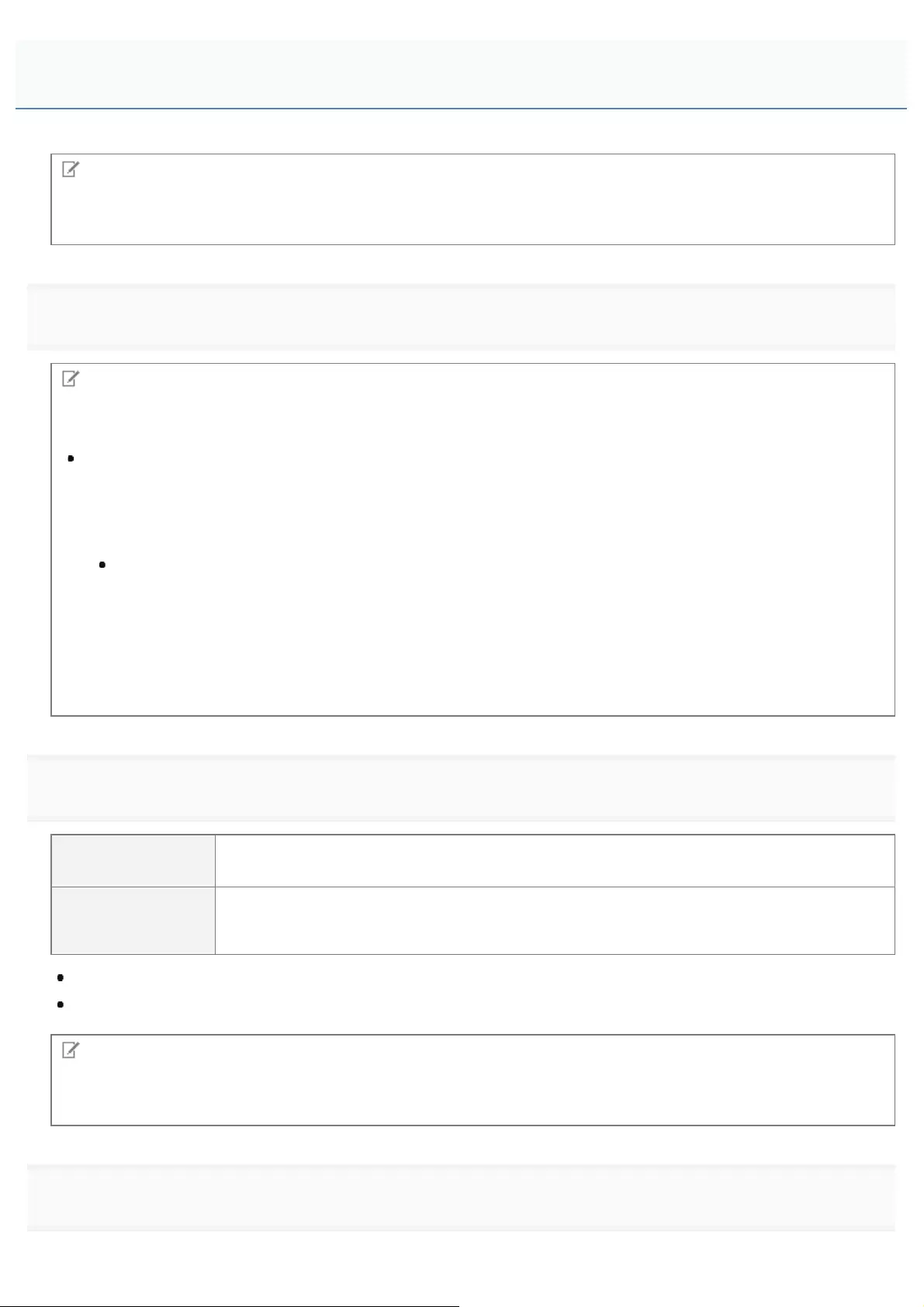
0258-071
NOTE
If your computer and the printer are connected via the router
You cannot set the IP address using the ARP/PING command.
1
Run Command Prompt.
NOTE
If you are using Windows
Run Command Prompt using the following procedure.
)URPWKH>6WDUW@PHQXVHOHFW>$OO3URJUDPV@RU>3URJUDPV@ĺ>$FFHVVRULHV@ĺ>&RPPDQG3URPSW@
If you are using Macintosh
Perform the following procedure.
1 Run Terminal.
6HOHFWWKHKDUGGLVN\RXXVHĺ>$SSOLFDWLRQV@ĺWKH>8WLOLWLHV@IROGHUDQGWKHQGRXEOHFOLFNWKH>7HUPLQDO@
icon.
2 Enter "su", and then press the [return] key on your keyboard.
3 "Password:" is displayed. Enter the root password, and then press the [return] key on your keyboard.
If you are using UNIX
Display the console screen, and then log in as a super user.
2
Enter "arp -s <IP address> <MAC address>", then press the [ENTER] key on your keyboard.
<IP address>: Enter the IP address to assign to the printer.
Specify the address with four numbers (from 0 to 255) separated with a period (.).
<MAC address>:
Enter the MAC address of the printer.
When entering the number, separate the number every two digits with a hyphen (-) (a colon (:)
for Macintosh/UNIX).
Input Example (Windows): "arp -s 192.168.0.215 00-1E-8F-46-80-2e"
Input Example (Macintosh/UNIX): "arp -s 192.168.0.215 00:1E:8F:46:80:2e"
NOTE
If you are using IBM-AIX
Enter "arp -s ether <the IP address> <the MAC address>."
3
Enter the following command, then press the [ENTER] key on your keyboard.
Setting the IP Address Using the ARP/PING Commands
㻠㻟㻤㻌㻛㻌㻥㻥㻤

If you are using Windows: "ping <the IP Address> -l 479"
If you are using Macintosh: "ping -c 1 -s 479 <the IP Address>"
If you are using Solaris 1.x/2.x: "ping -s <the IP Address> 479"
If you are using IBM-AIX: "ping <the IP Address> 479"
If you are using HP-UX: "ping <the IP Address> 487"
If you are using Linux: "ping -s 479 <the IP Address>"
<IP address>: Enter the same IP address as the one entered in Step 2.
Enter a lowercase "L" for "-l."
Input Example (Windows): "ping 192.168.0.215 -l 479"
ĺThe IP address is set for the printer.
The subnet mask and gateway address are set to [0.0.0.0].
4
Enter "exit", then press the [ENTER] key on your keyboard.
ĺCommand Prompt closes.
㻠㻟㻥㻌㻛㻌㻥㻥㻤
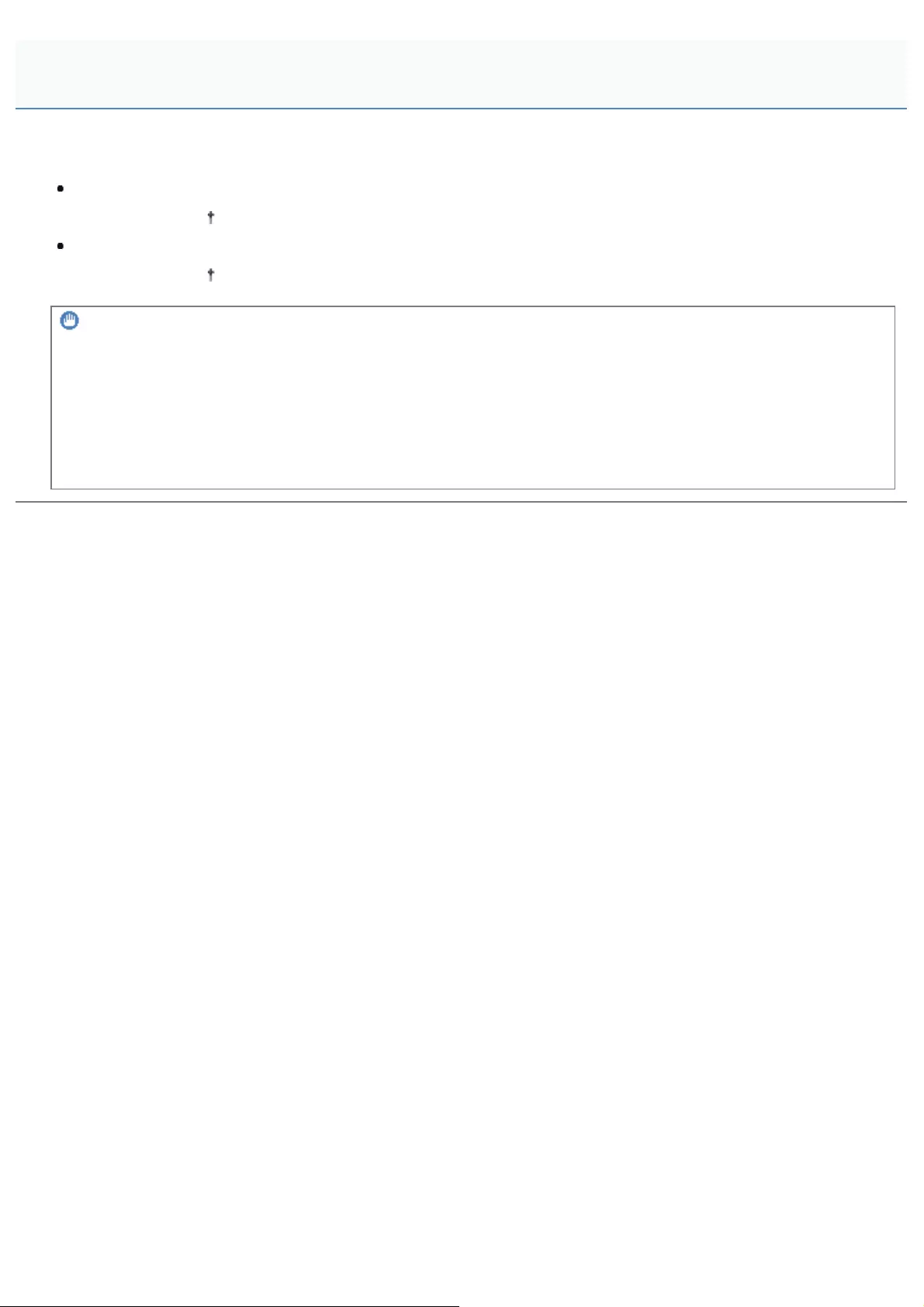
0258-072
For details on other procedures for starting and using NetSpot Device Installer, see the following.
Starting method: "Printer Driver Installation Guide"
For details on the procedure for viewing "Printer Driver Installation Guide", see "Installation."
Usage: Help of NetSpot Device Installer
Help is displayed by clicking [Help] in the [Help] menu.
IMPORTANT
If Windows Firewall is enabled
Before starting NetSpot Device Installer, configure Windows Firewall to unblock NetSpot Device Installer.
For details on the configuration procedure, see the Readme file of NetSpot Device Installer.
For operating systems not compatible with NetSpot Device Installer
Perform the settings from another computer on the network or by using the printer's control panel or the ARP/PING
command.
Setting the IP Address Using NetSpot Device Installer
㻠㻠㻜㻌㻛㻌㻥㻥㻤
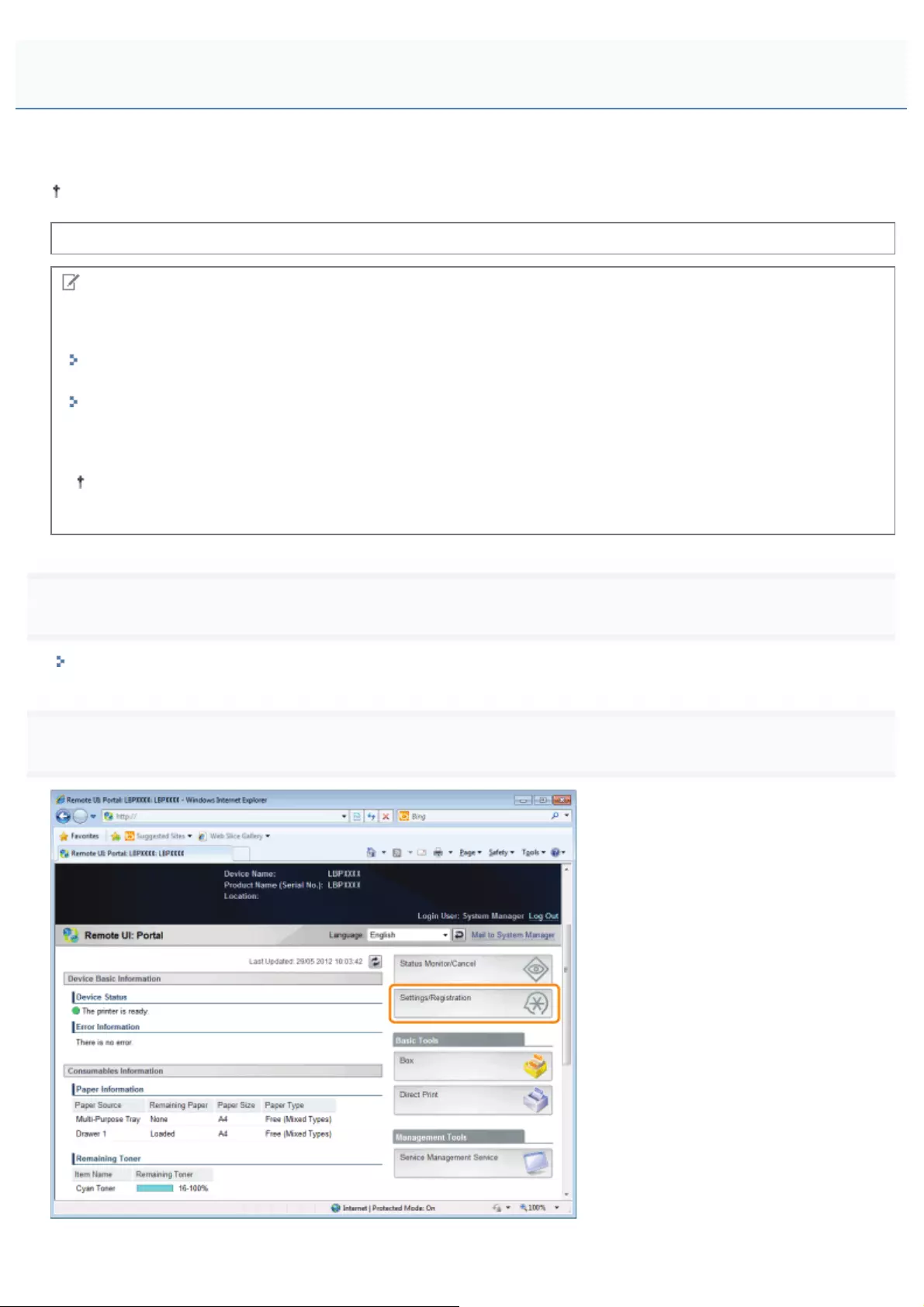
0258-073
This section describes the procedure for specifying the settings using the Remote UI.
In the Remote UI, you can specify the settings by accessing the printer from a Web browser via a network.
Before specifying the settings, see "Attention (Protocol Settings)."
NOTE
When specifying the settings using software other than the Remote UI
You can also specify the settings using the following software.
"FTP Client"
You can specify the settings by accessing the FTP server of the printer using Command Prompt.
"NetSpot Device Installer"
You can specify the settings using the Canon software, NetSpot Device Installer, in the supplied CD-ROM.
If you want to configure the settings such as the DNS server settings, use the Remote UI or FTP Client.
The specifiable options vary depending on the software. See "Network Setting Items" and use software
appropriate to the network environment you are using or options that you want to specify.
1
Start the Remote UI, and then log in as Administrator.
"Starting the Remote UI"
2
Click [Settings/Registration].
Configuring the Protocol Settings
㻠㻠㻝㻌㻛㻌㻥㻥㻤

RAW Settings
IPP/IPPS Settings
WSD Settings
HTTP Settings
Setting SSL Keys and Certificates
Proxy Settings
Multicast Discovery Settings
SNTP Settings
IP Address Settings
(1) Click [Edit...] in [IPv4 Settings].
(2) Set the IP address.
[Use IPv4] When the check box is selected, use IPv4.
[Select Protocol] Select the protocol used from [Off], [DHCP], [RARP] or [BOOTP].
When [Off] is selected using [Select Protocol], set the following items.
[IP Address] Enter the printer's IP address.
㻠㻠㻟㻌㻛㻌㻥㻥㻤

[Subnet Mask] Enter the subnet mask used by the TCP/IP network.
[Gateway Address] Enter the gateway address used by the TCP/IP network.
(3) Set DNS.
[Primary DNS
Server Address] Enter the IP address of the primary DNS server.
[Secondary DNS
Server Address] Enter the IP address of the secondary DNS server.
[Host Name] Enter the host name to be added to the DNS server. Up to 47 characters can be
entered.
[Domain Name]
Enter the name of the domain to which the printer belongs. Up to 47 characters can
be entered.
Entry example: "example.com"
[DNS Dynamic
Update]
Set it to [On] when using the DNS Dynamic Update function. When you are not
using the DNS Dynamic Update Function, set it to [Off].
Using the DNS Dynamic Update function, by registering the [Host Name] and
[Domain Name] to the DNS server, the printer's IP address can be used
without being fixed.
(4) Set DHCP option settings.
㻠㻠㻠㻌㻛㻌㻥㻥㻤
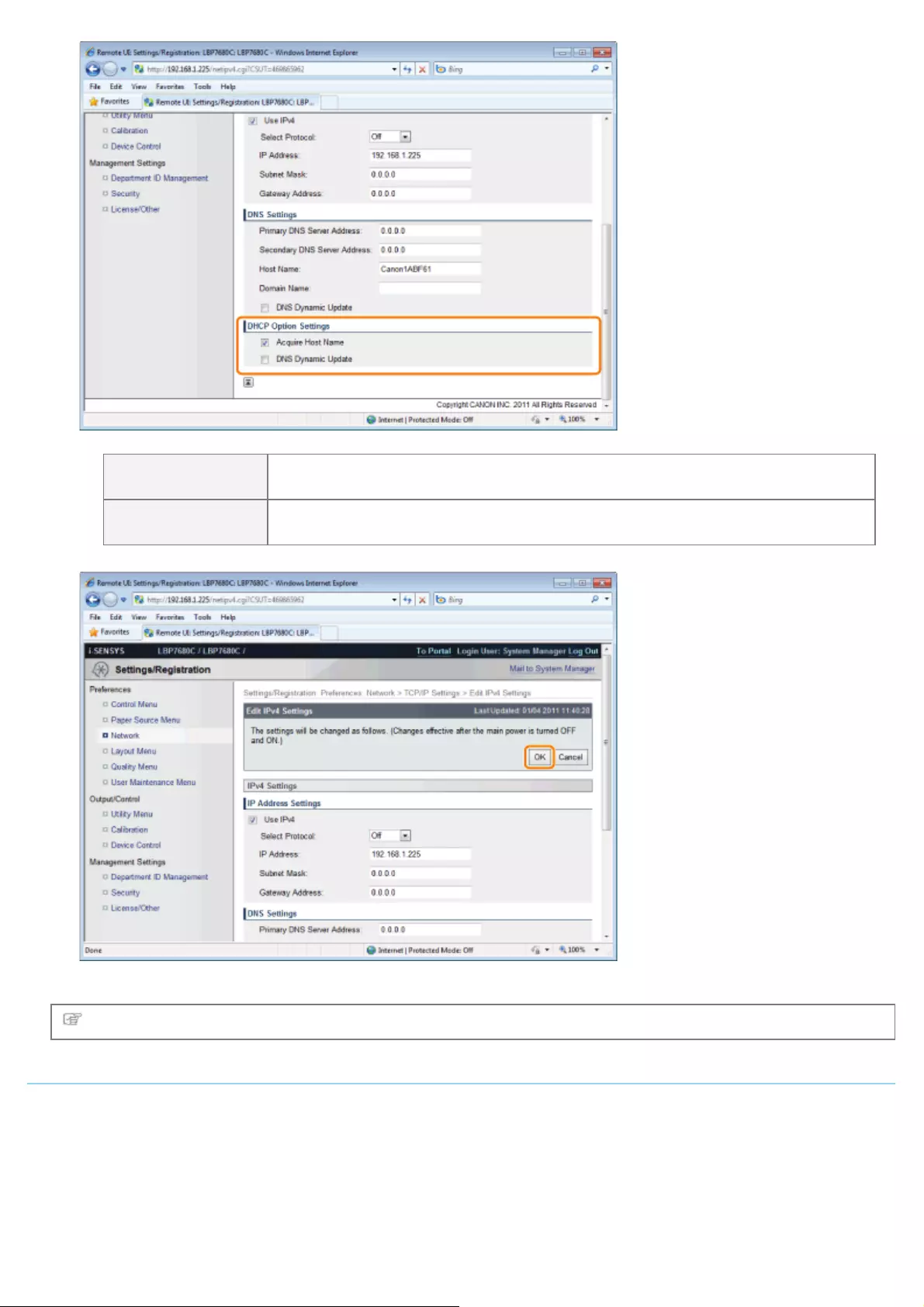
[Acquire Host
Name]
When obtaining the host name using DHCP, select the [Acquire Host Name] check
box.
[DNS Dynamic
Update]
When updating the host name using DHCP, select the [DNS Dynamic Update] check
box.
(5) Click [OK].
Proceed to Step 6 if you do not specify the settings for the other options.
WINS Settings
(1) Click [Edit...] in [WINS Configuration].
㻠㻠㻡㻌㻛㻌㻥㻥㻤
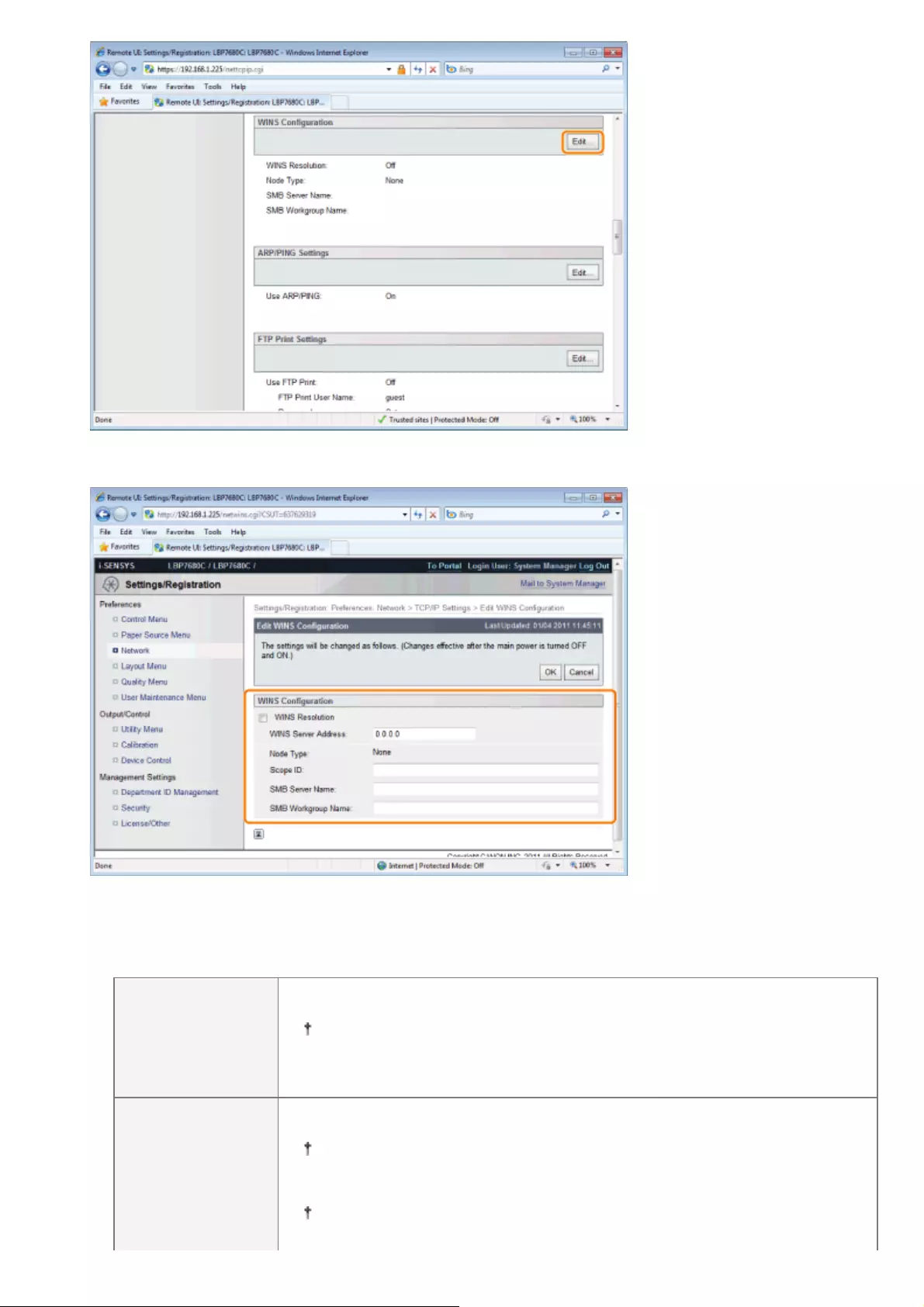
(2) Set WINS.
When Using WINS Resolution
Select the [WINS Resolution] check box, and set the following items.
[WINS Server
Address]
Enter the IP address of the WINS server.
When using the IP address settings specified by DHCP, if you obtain the
WINS server IP address from the DHCP server, the IP address obtained
from the DHCP server is overwritten.
[Scope ID]
Enter [Scope ID] as needed. You can enter up to 63 characters.
The scope ID is an identifier to determine the range available for printers
and computers. The scope ID is browsed regardless of the WINS resolution
settings.
When a scope ID is not specified for the computer in your network
environment, leave the [Scope ID] field blank.
㻠㻠㻢㻌㻛㻌㻥㻥㻤
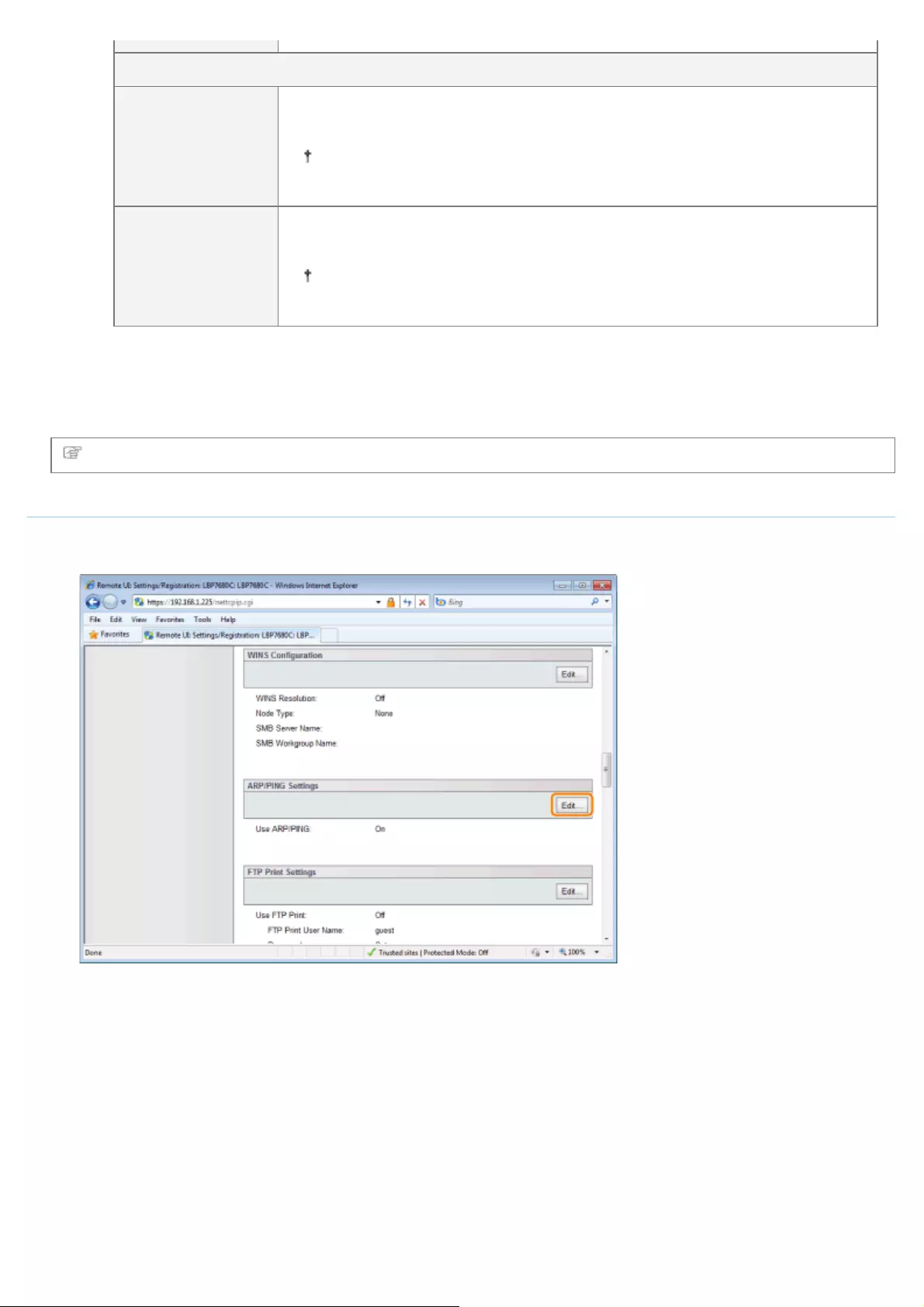
Set the following items when registering printers on the WINS server.
[SMB Server Name]
Enter the name of the WINS server. You can enter up to 15 characters.(spaces
cannot be entered between the characters)
Set the server name that was set here using the SMB function.(LBP7680Cx
only)
[SMB Workgroup
Name]
Enter the workgroup name. You can enter up to 15 characters.(spaces cannot be
entered between the characters)
Set the workgroup name that was set here using the SMB
function.(LBP7680Cx only)
When not Using WINS Resolution
Clear the [WINS Resolution] check box.
(3) Click [OK].
Proceed to Step 6 if you do not specify the settings for the other options.
ARP/PING Settings
Select whether to use the ARP/PING function.
(1) Click [Edit...] in [ARP/PING Settings].
(2) Set ARP/PING.
㻠㻠㻣㻌㻛㻌㻥㻥㻤
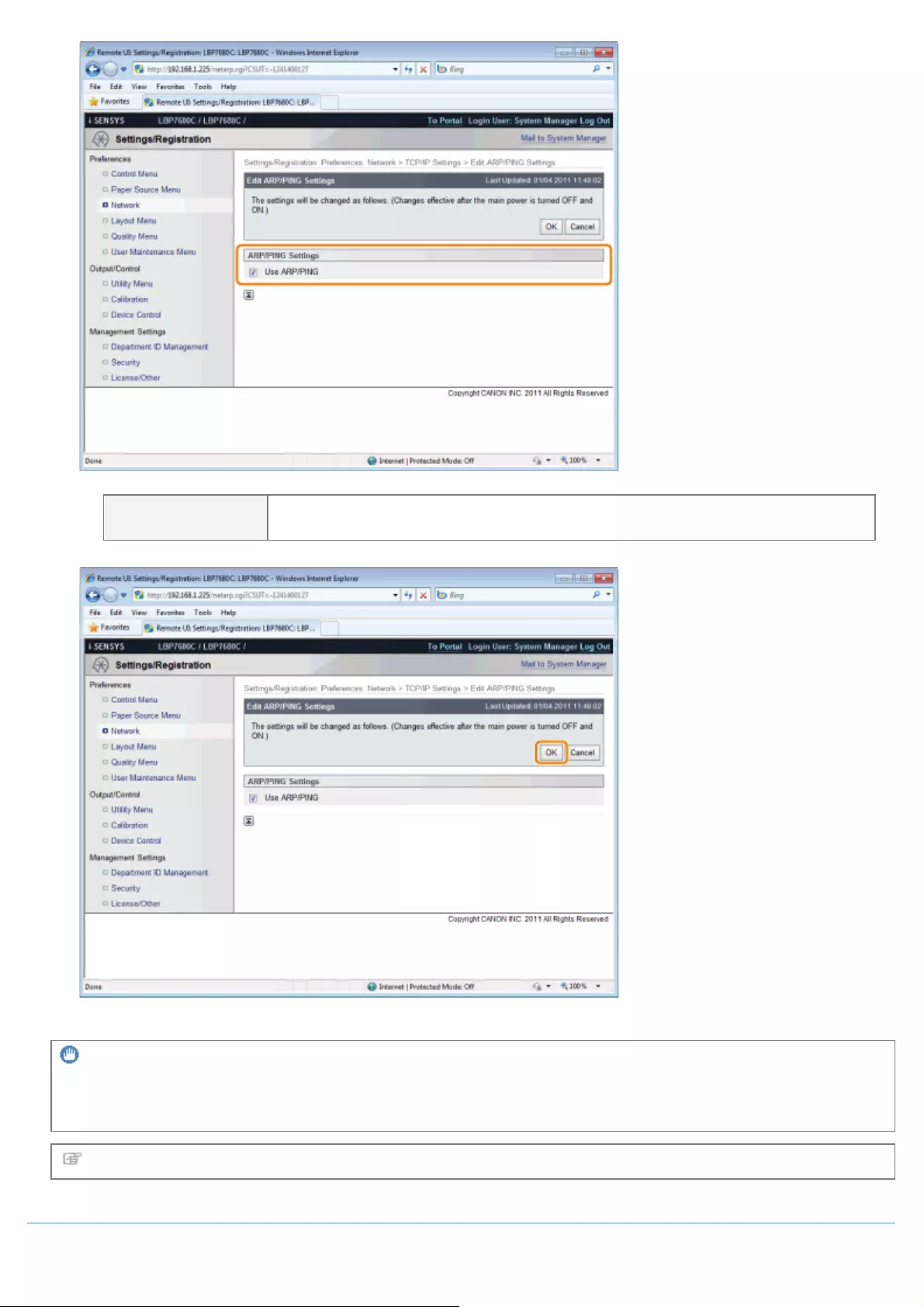
[Use ARP/PING] When the check box is selected, you can change the IP address settings from the
client using the ARP/PING command.
(3) Click [OK].
IMPORTANT
When the [Use ARP/PING] check box is cleared
You cannot set the IP address using the ARP/PING command.
Proceed to Step 6 if you do not specify the settings for the other options.
FTP Settings
㻠㻠㻤㻌㻛㻌㻥㻥㻤
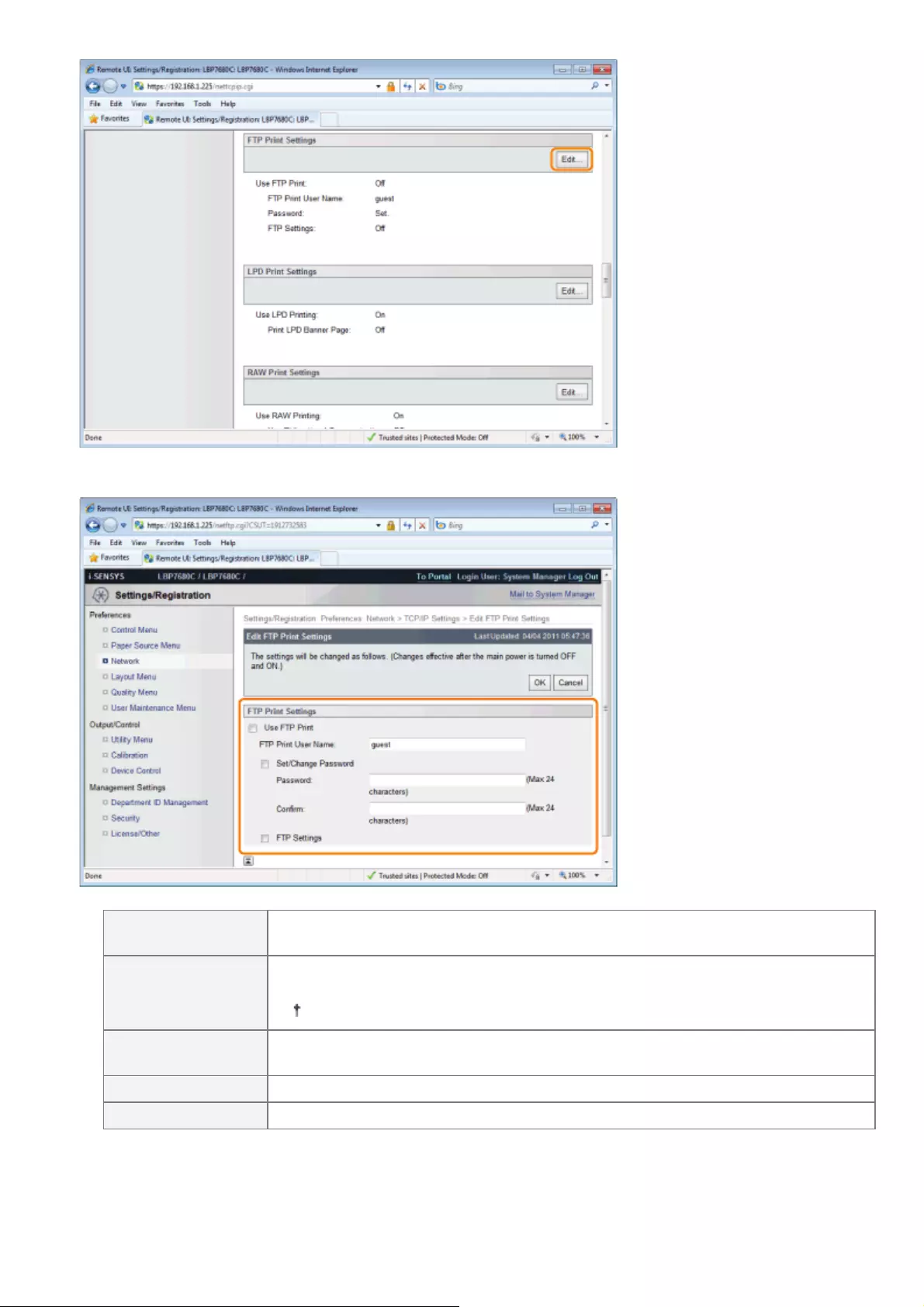
(1) Click [Edit...] in [FTP Print Settings].
(2) Set FTP print.
[Use FTP Print] When the check box is selected, you can access the printer's FTP server using the
FTP client and print files.
[FTP Print User
Name]
Enter the user name for logging in to the FTP server. Up to 24 characters can be
entered.
You cannot set "root."
[Password] Enter the password for logging in to the FTP server. Up to 24 characters can be
entered.
[Confirm] To confirm the password, enter the entered [Password] again.
[FTP Settings] When the check box is selected, changing settings from the FTP client is allowed.
(3) Click [OK].
㻠㻠㻥㻌㻛㻌㻥㻥㻤
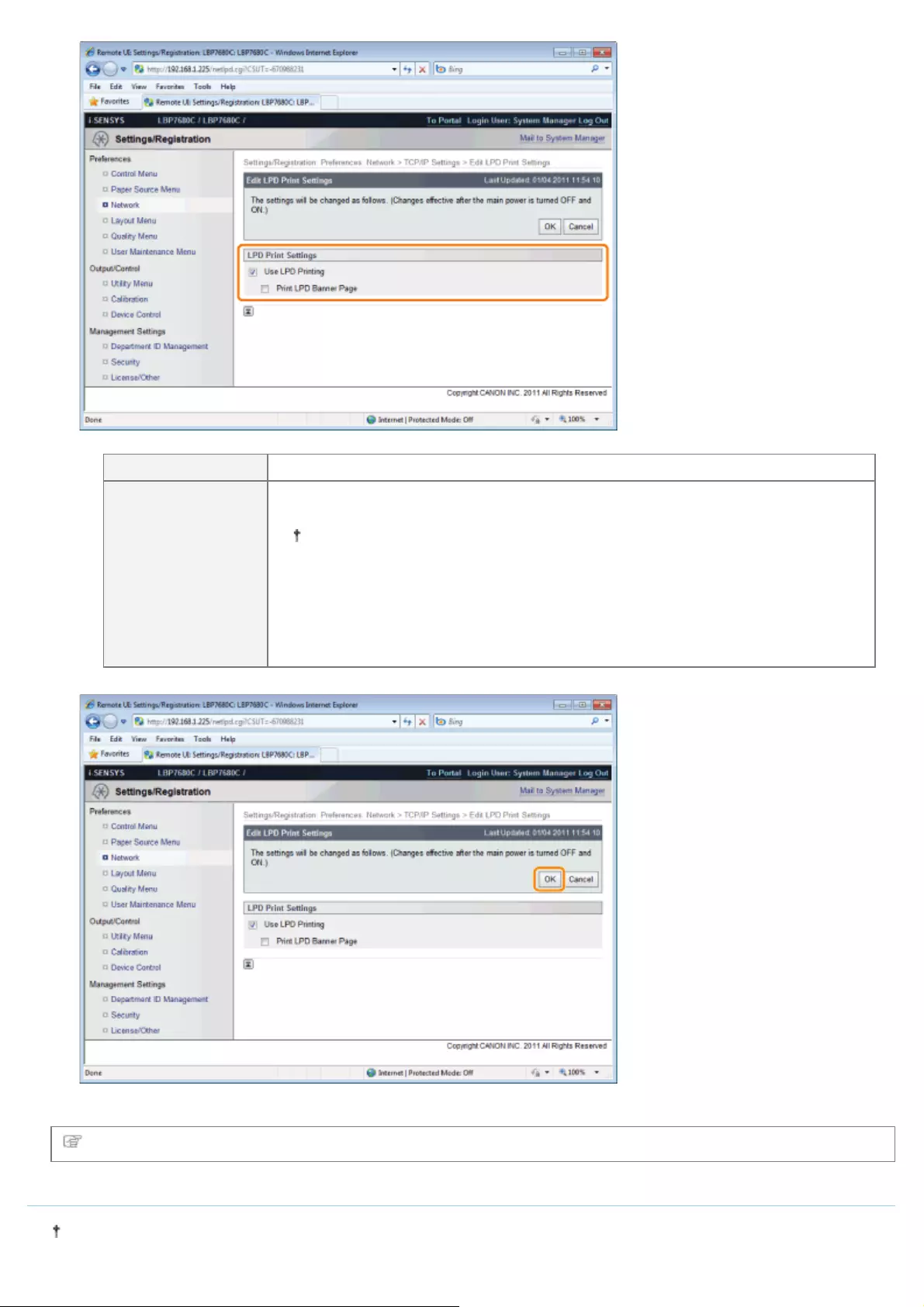
[Use LPD Printing] When the check box is selected, the LPD print function is enabled.
[Print LPD Banner
Page]
When the check box is selected, whenever it prints using LPD applications, a banner
page is printed simultaneously.
Banner page printing is set for each job. If the [Print LPD Banner Page] check
box is selected, a banner page is printed simultaneously for jobs that are set
to print banners. Banner pages are not printed for jobs that are set not to
print banner pages.
If you are not printing pages, clear the [Print LPD Banner Page] check box. If
the [Print LPD Banner Page] check box is cleared, it will not always print
banner pages.
(3) Click [OK].
Proceed to Step 6 if you do not specify the settings for the other options.
RAW Settings
Normally, you do not need to change the settings for this option.
㻠㻡㻝㻌㻛㻌㻥㻥㻤
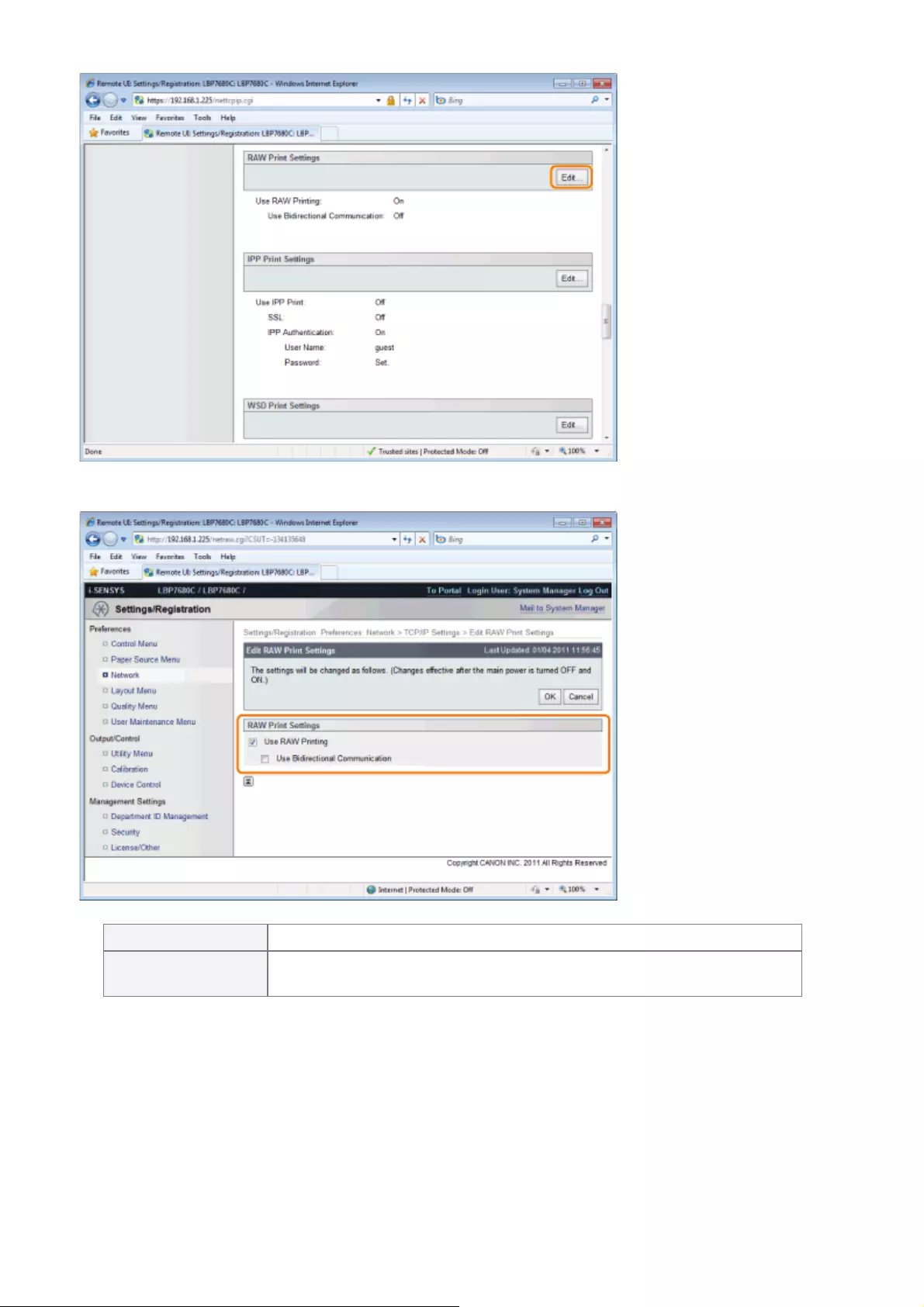
(1) Click [Edit...] in [RAW Print Settings].
(2) Set RAW printing.
[Use RAW Printing] When the check box is selected, the RAW printing function is enabled.
[Use Bidirectional
Communication] When the check box is selected, bidirectional communication is performed.
(3) Click [OK].
㻠㻡㻞㻌㻛㻌㻥㻥㻤
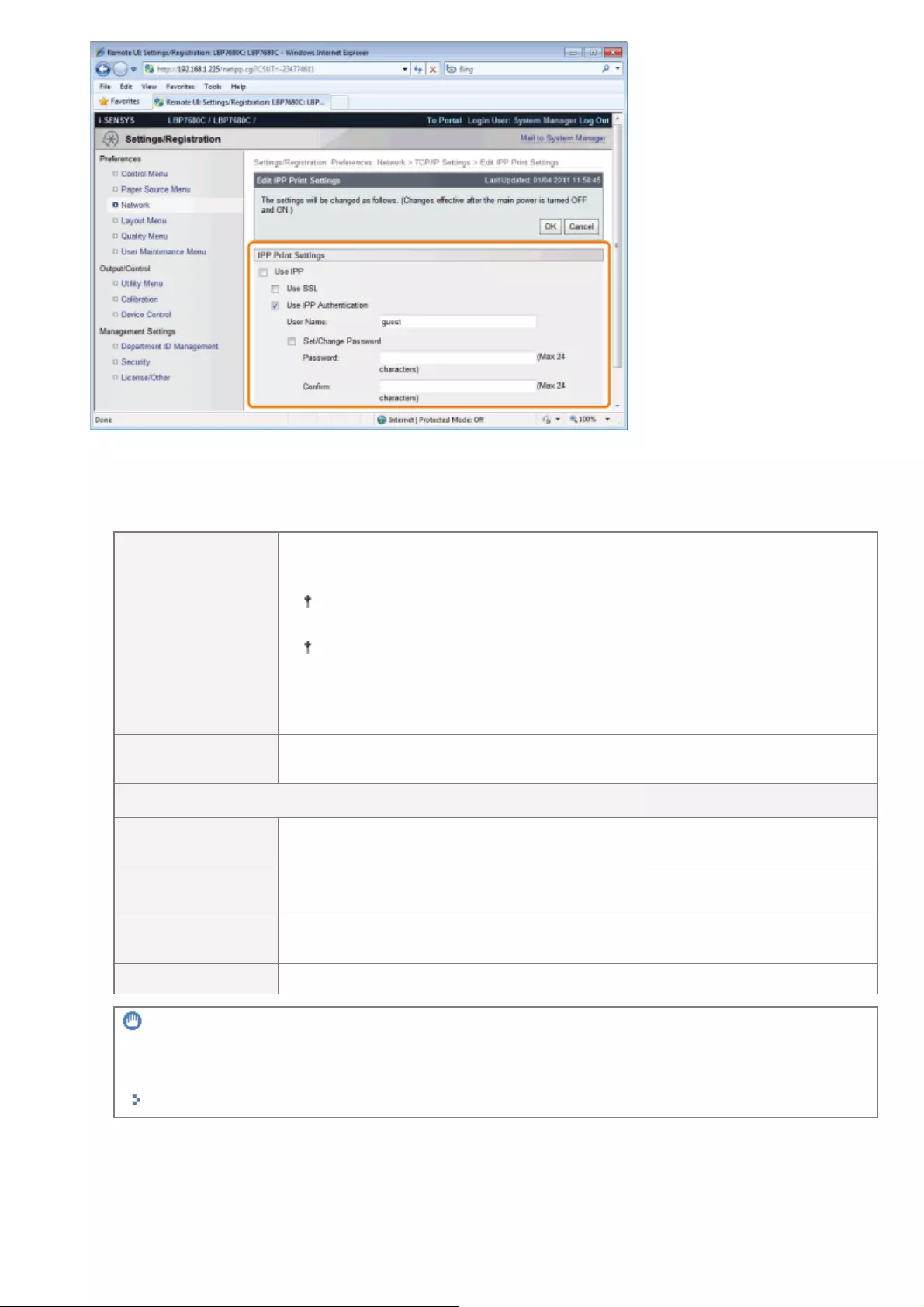
To Use IPP/IPPS Printing
Select the [Use IPP] check box, and set the following items.
[Use SSL]
When the check box is selected, you can use IPPS (encryption of IPP
communication data using SSL).
You can only use IPPS when the SSL encrypted communication function is
enabled.
You cannot select the [Use SSL] check box if a key and certificate have
been created but the use key is not registered.
See "Selecting Keys and Certificates" for more information about SSL
encrypted communication functions and key registration procedures.
[Use IPP
Authentication] When the check box is selected, use the IPP print user authentication function.
When the [Use IPP Authentication] check box is selected, set the following items.
[User Name] Enter the user name used for the IPP print user authentication function. Up to 24
characters can be entered.
[Set/Change
Password] Select the check box when setting/changing the password.
[Password] Enter the password used for the IPP print user authentication function. Up to 24
characters can be entered.
[Confirm] For confirmation, enter the same [Password] again.
IMPORTANT
When the [Use IPP] check box is selected
The HTTP setting [Use HTTP] turns [On] automatically.
"HTTP Settings"
When Not Using IPP/IPPS Printing
Clear the [Use IPP] check box.
(3) Click [OK].
㻠㻡㻠㻌㻛㻌㻥㻥㻤
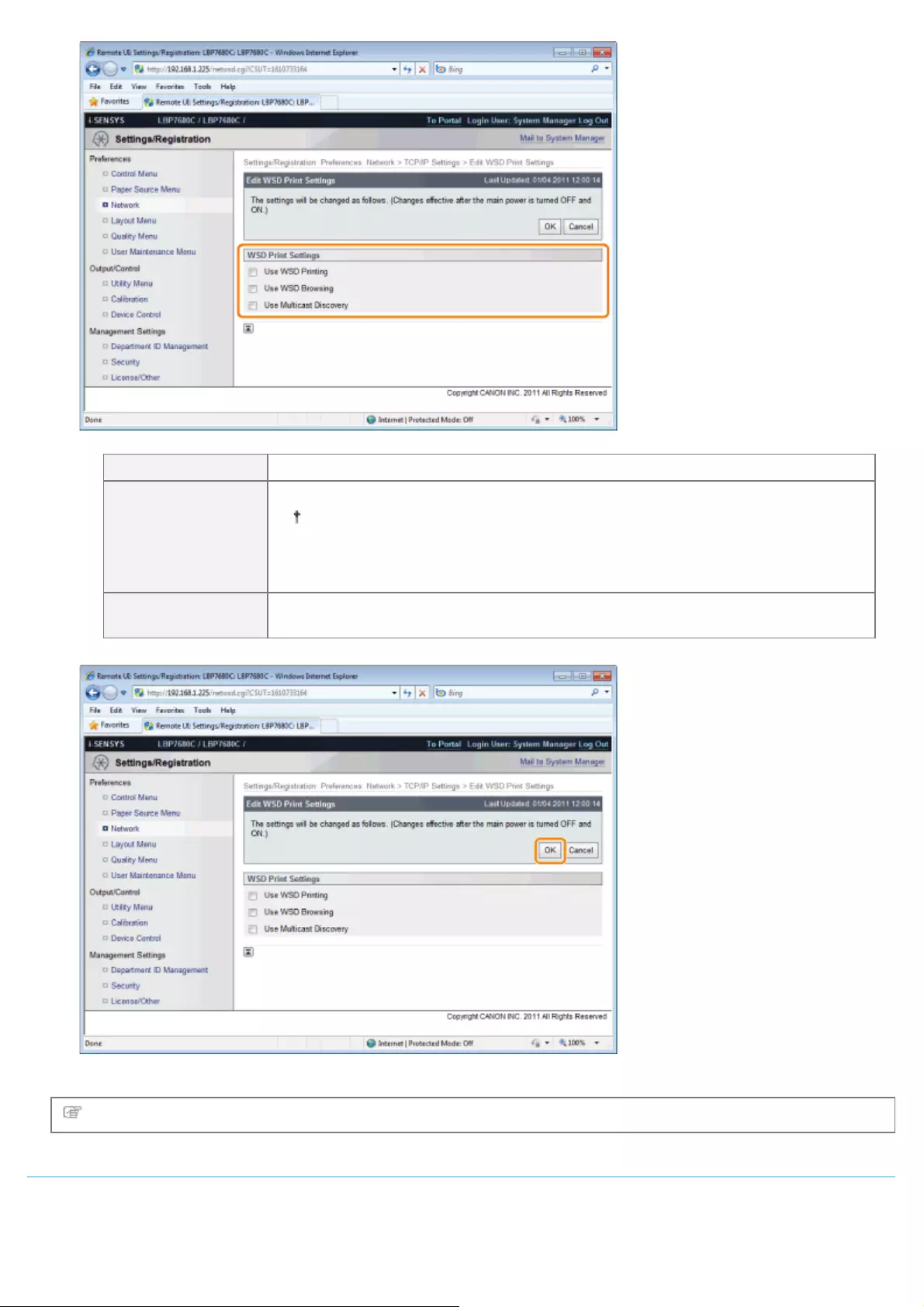
[Use WSD Printing] Select the check box to use WSD printing.
[Use WSD
Browsing]
When the check box is selected, it obtains printer information using WSD reference.
If you select the [Use WSD Printing] check box, the [Use WSD Browsing]
check box will always be selected.
You can only clear the [Use WSD Browsing] check box when the [Use WSD
Printing] check box is cleared.
[Use Multicast
Discovery] Select the check box to use Multicast Discovery.
(3) Click [OK].
Proceed to Step 6 if you do not specify the settings for the other options.
HTTP Settings
Specify whether to use the HTTP function.
(1) Click [Edit...] in [HTTP Settings].
㻠㻡㻢㻌㻛㻌㻥㻥㻤
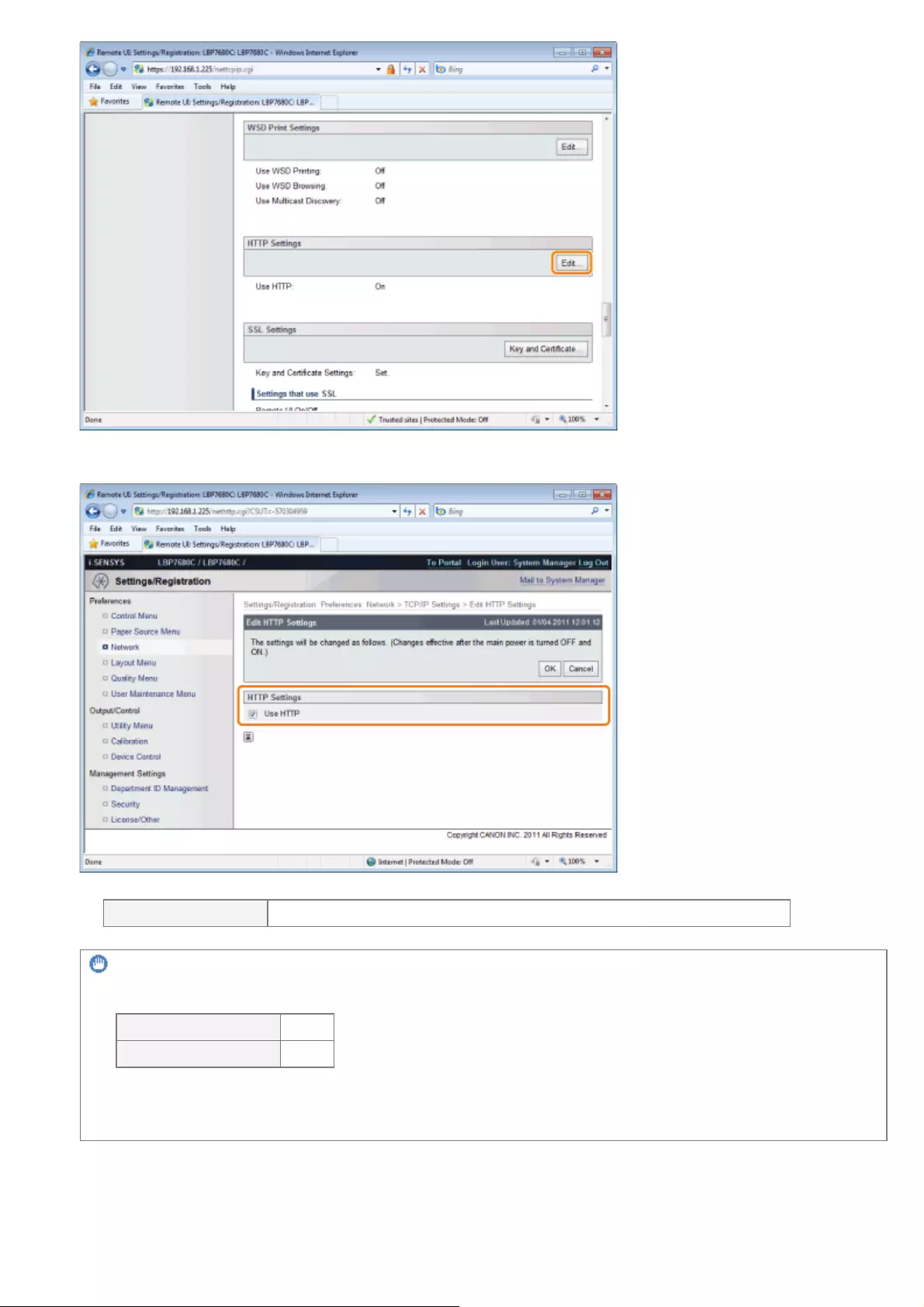
(2) Set HTTP.
[Use HTTP] When the check box is selected, you can access the printer using HTTP.
IMPORTANT
When the [Use HTTP] check box is cleared
The settings on the functions using HTTP change automatically, as shown below.
[Use IPP Print] [Off]
[Remote UI]* [Off]
* Can only be set from the printer's control panel and the FTP client
If the [Use HTTP] check box is cleared, you will not be able to use IPP print or Remote UI, so consult with the
network administrator before you set it.
(3) Click [OK].
㻠㻡㻣㻌㻛㻌㻥㻥㻤

Proceed to Step 6 if you do not specify the settings for the other options.
Setting SSL Keys and Certificates
Check the key used for SSL.
See "Selecting Keys and Certificates" for more information about SSL encrypted communication functions and key
registration and selection procedures.
Proxy Settings
(1) Click [Edit...] in [Proxy Settings].
(2) Set proxy functions.
㻠㻡㻤㻌㻛㻌㻥㻥㻤
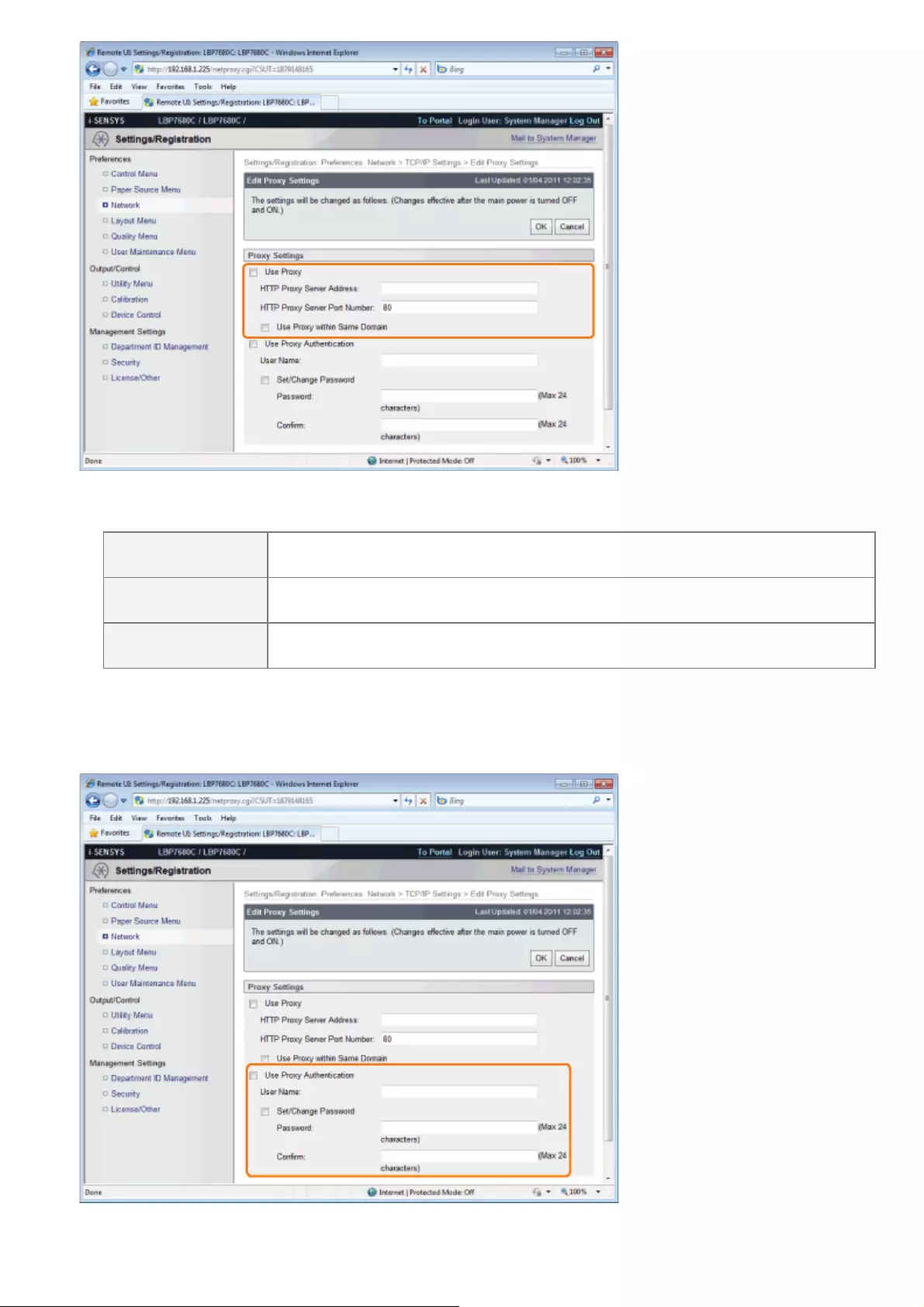
When using proxy functions
Select the [Use Proxy] check box, and set the following items.
[HTTP Proxy Server
Address] Enter the address of the proxy server used by the proxy functions.
[HTTP Proxy Server
Port Number]
Enter the port number of the proxy server used by the proxy functions. You can set
it between [0] and [99999].
[Use Proxy within
Same Domain] When the check box is selected, use the proxy function within the same domain.
When not using proxy functions
Clear the [Use Proxy] check box.
(3) Set proxy authentication functions.
When using proxy authentication functions
㻠㻡㻥㻌㻛㻌㻥㻥㻤
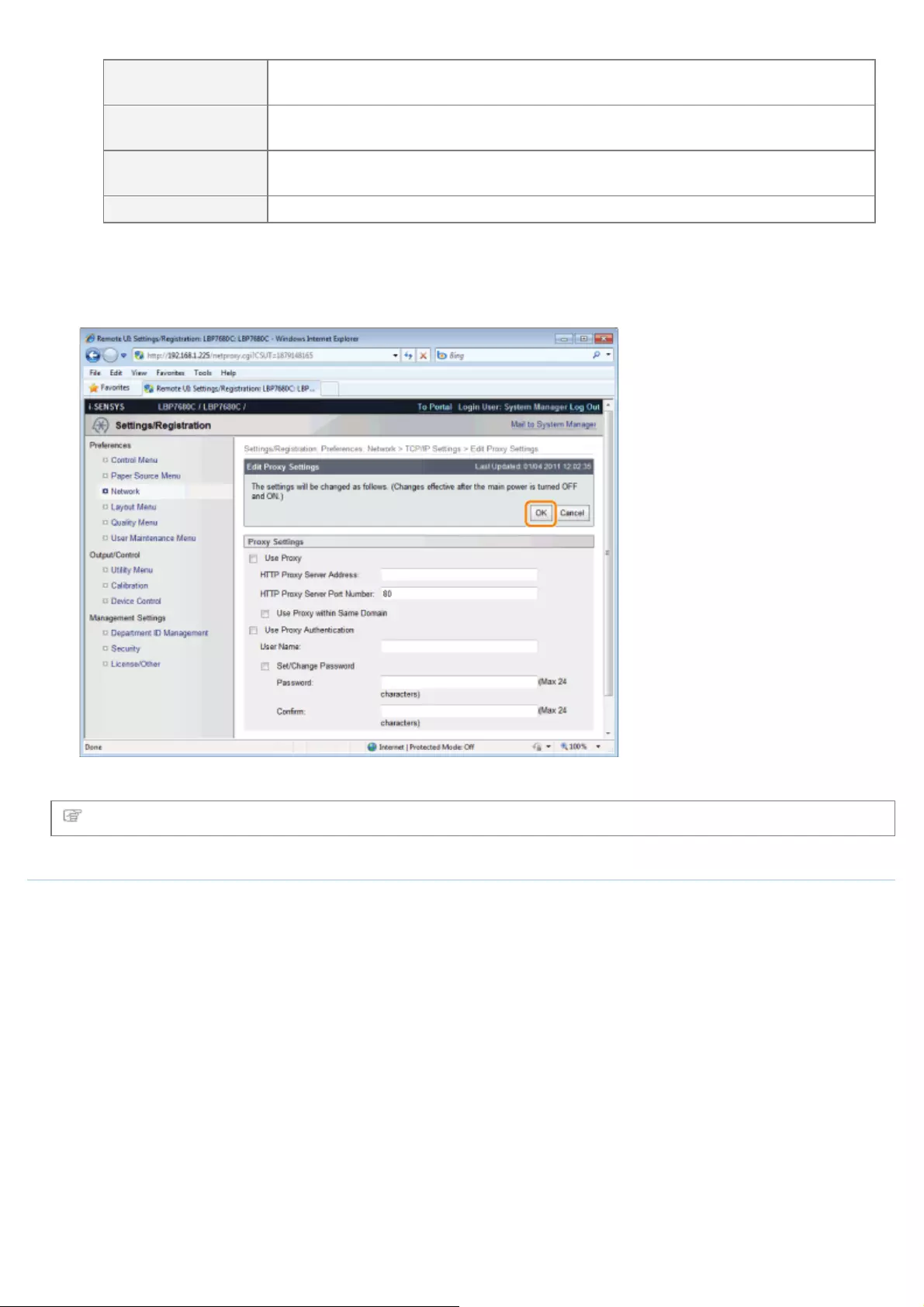
Select the [Use Proxy Authentication] check box, and set the following items.
[User Name] Enter the user name used for proxy authentication. Up to 24 characters can be
entered.
[Set/Change
Password]
Select the check box to use a password for proxy authentication. When you are not
using a password for proxy authentication, clear the check box.
[Password] When [Set/Change Password] is selected, enter the password used for proxy
authentication. Up to 24 characters can be entered.
[Confirm] To confirm the password, enter the entered [Password] again.
When not using proxy authentication functions
Clear the [Use Proxy Authentication] check box.
(4) Click [OK].
Proceed to Step 6 if you do not specify the settings for the other options.
Multicast Discovery Settings
Set whether the printer will respond to device searches over the network using Multicast Discovery.
(1) Click [Edit...] in [Multicast Discovery Settings].
㻠㻢㻜㻌㻛㻌㻥㻥㻤
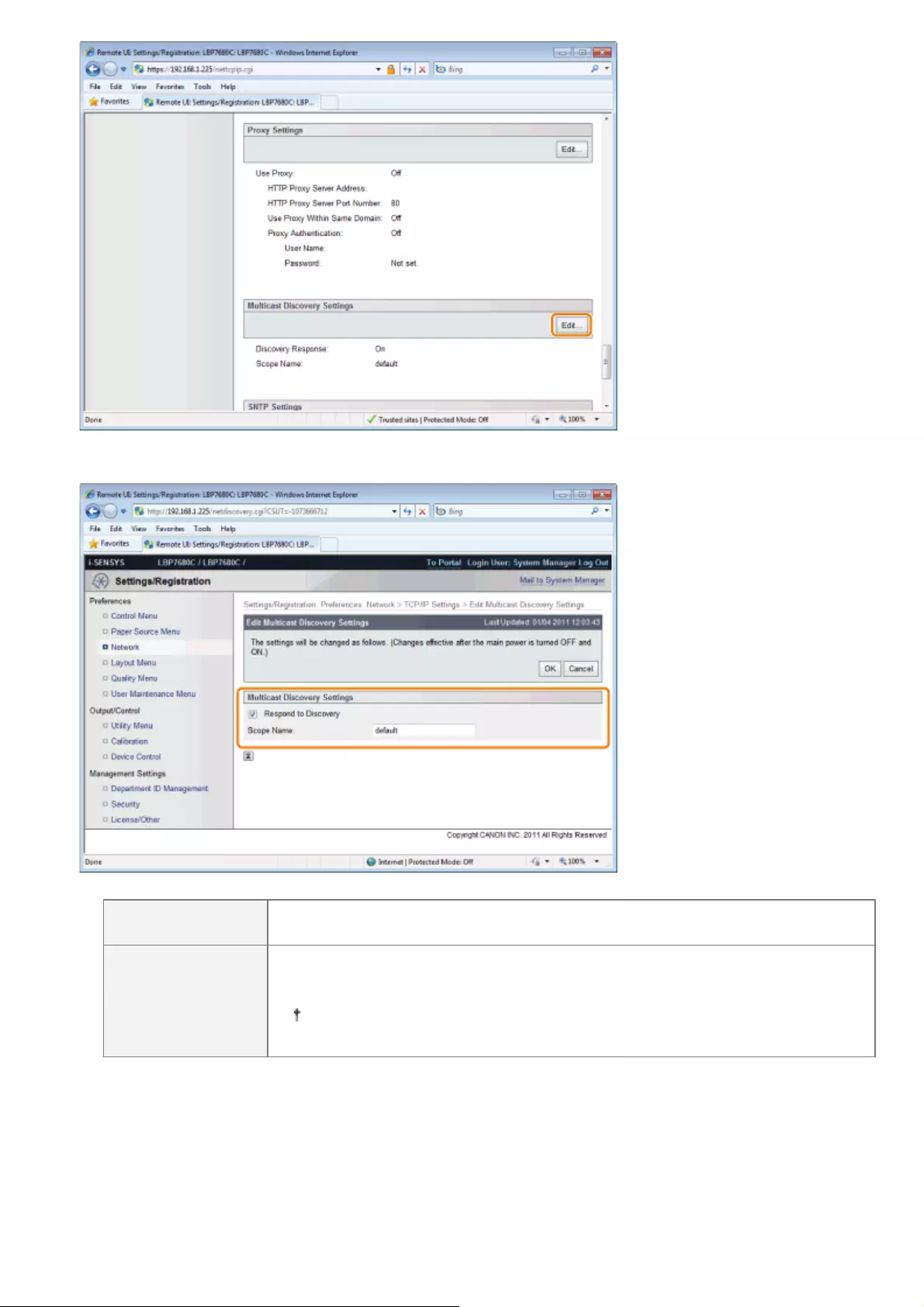
(2) Set Multicast Discovery.
[Respond to
Discovery] Select the check box to allow it to respond to a multicast search request.
[Scope Name]
Enter the scope name used when a specified device is searched from utility software
such as NetSpot Device Installer using multicast. Up to 32 characters can be
entered.
You cannot use any of the following characters: "(", ")", ",", "!", "<", ">", "=",
"~", ";", "+", "*", "\."
(3) Click [OK].
㻠㻢㻝㻌㻛㻌㻥㻥㻤

When using the SNTP client function to obtain time information from the NTP server
Select the [Use SNTP] check box, and set the following items.
[NTP Server Name] If DNS is set, enter the server name of the NTP server in [NTP Server Name].
If DNS is not set, enter the IP address of the NTP server in [NTP Server Name].
[Polling Interval] Set the interval for the printer to poll the NTP server for time information. You can
set intervals of [1] to [48] (hours).
NOTE
NTP Server
It is a public time information server on the Internet.
When not Using the SNTP Client Function
Clear the [Use SNTP] check box.
(3) Click [OK].
㻠㻢㻟㻌㻛㻌㻥㻥㻤
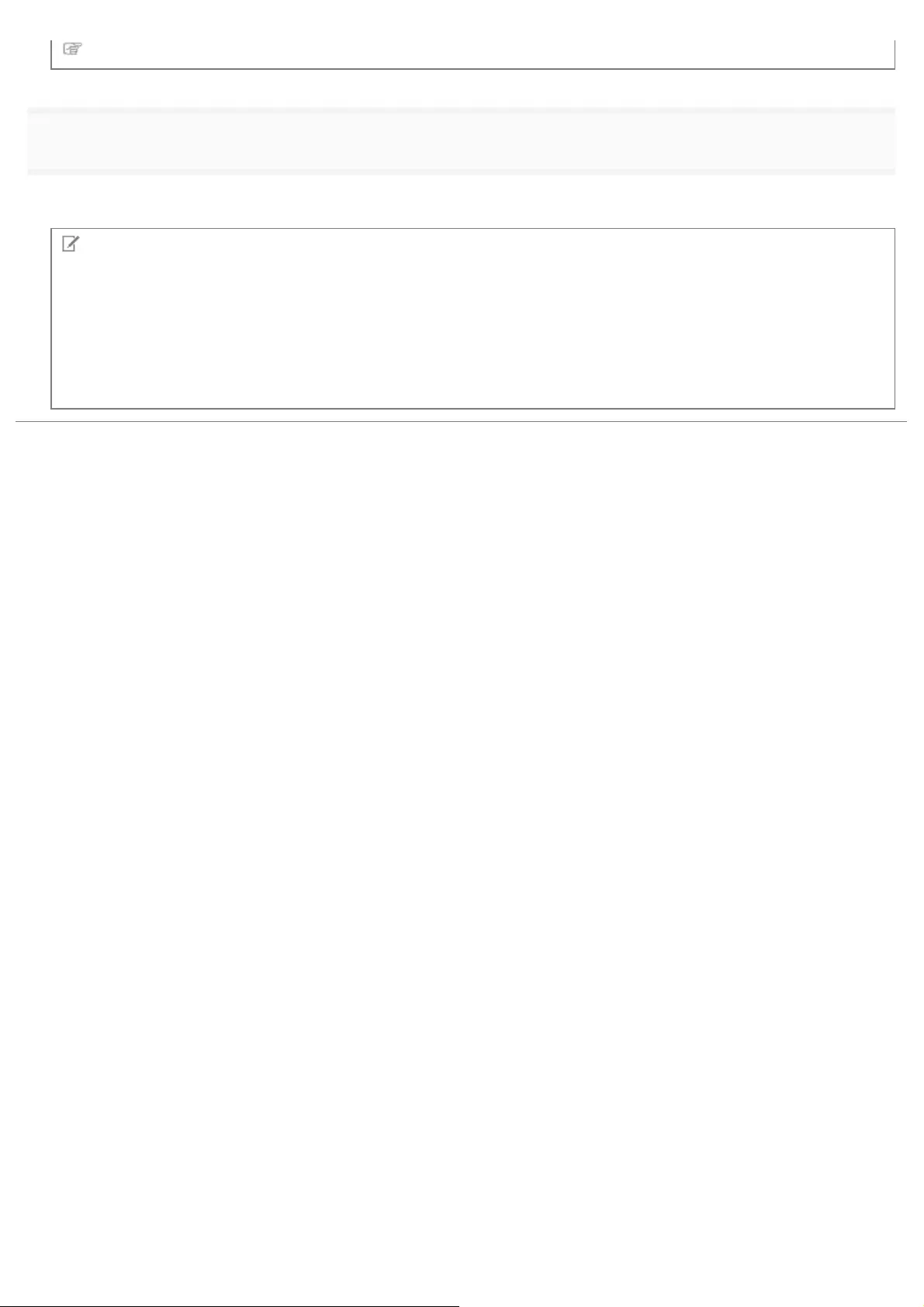
Proceed to Step 6 if you do not specify the settings for the other options.
6
Perform a hard reset or restart the printer.
ĺAfter performing a hard reset or restarting the printer, the settings are effective.
NOTE
To perform a hard reset
You can perform a hard reset using the following procedure.
1. Click [Settings/Registration].
2. Select [Device Control] from the [Output/Control] menu.
3. Select [Hard Reset], then click [Execute].
㻠㻢㻠㻌㻛㻌㻥㻥㻤

0258-074
When setting the IP address
NOTE
If you changed the IP address after installing the printer driver
Specify the port to be used again in the printer driver.
"Configuring a Computer that Performs Printing"
When using DHCP, BOOTP, or RARP
One of the following can be used: DHCP, BOOTP, or RARP. When any of the settings is turned [On], the remaining
two settings are automatically turned [Off].
Because it takes one to two minutes to check whether DHCP, BOOTP, and RARP are available, we recommend
that you set the unused protocol(s) to [Off].
Each server or daemon (the DHCP server, BOOTP daemon, or RARP daemon) must be running on the network.
Even if you are using DHCP, BOOTP, or RARP, specify the settings for [IP Address], [Subnet Mask], and [Gateway
Address] manually. If you cannot obtain information from the servers of DHCP, BOOTP, and RARP, the values
specified manually are used.
After the printer restarts, the values obtained from DHCP, BOOTP, and RARP are displayed.
(If the values have been specified previously, they overwrite the obtained ones.)
When using DHCP
If you cycle the power of the printer, you may not be able to print. This is because a different IP address from the one
that has been used is assigned.
When using DHCP, consult your network administrator and perform either of the following settings.
Specifying the DNS Dynamic Update function
Specifying the settings so that the same IP address is always assigned when the printer starts up
When configuring the DNS Settings
IMPORTANT
DNS Dynamic Update
DNS Dynamic Update is a function that adds the IP address of the device and the names specified as the host name
and domain name to the DNS server automatically.
This function can be used in the environment in which a Dynamic DNS server is being used.
When using the DNS Dynamic Update function
You need to set the IP address, host name, and domain name of the DNS server.
When configuring the WINS Settings
IMPORTANT
WINS
WINS (Windows Internet Name Service) is a service that maps NetBIOS names (names of computers or printers) to IP
addresses. A WINS server is required to use WINS.
If [Scope ID] is specified
The printer cannot communicate with the computers that have a different scope ID.
When configuring the Multicast Discovery Settings
NOTE
Attention (Protocol Settings)
㻠㻢㻡㻌㻛㻌㻥㻥㻤
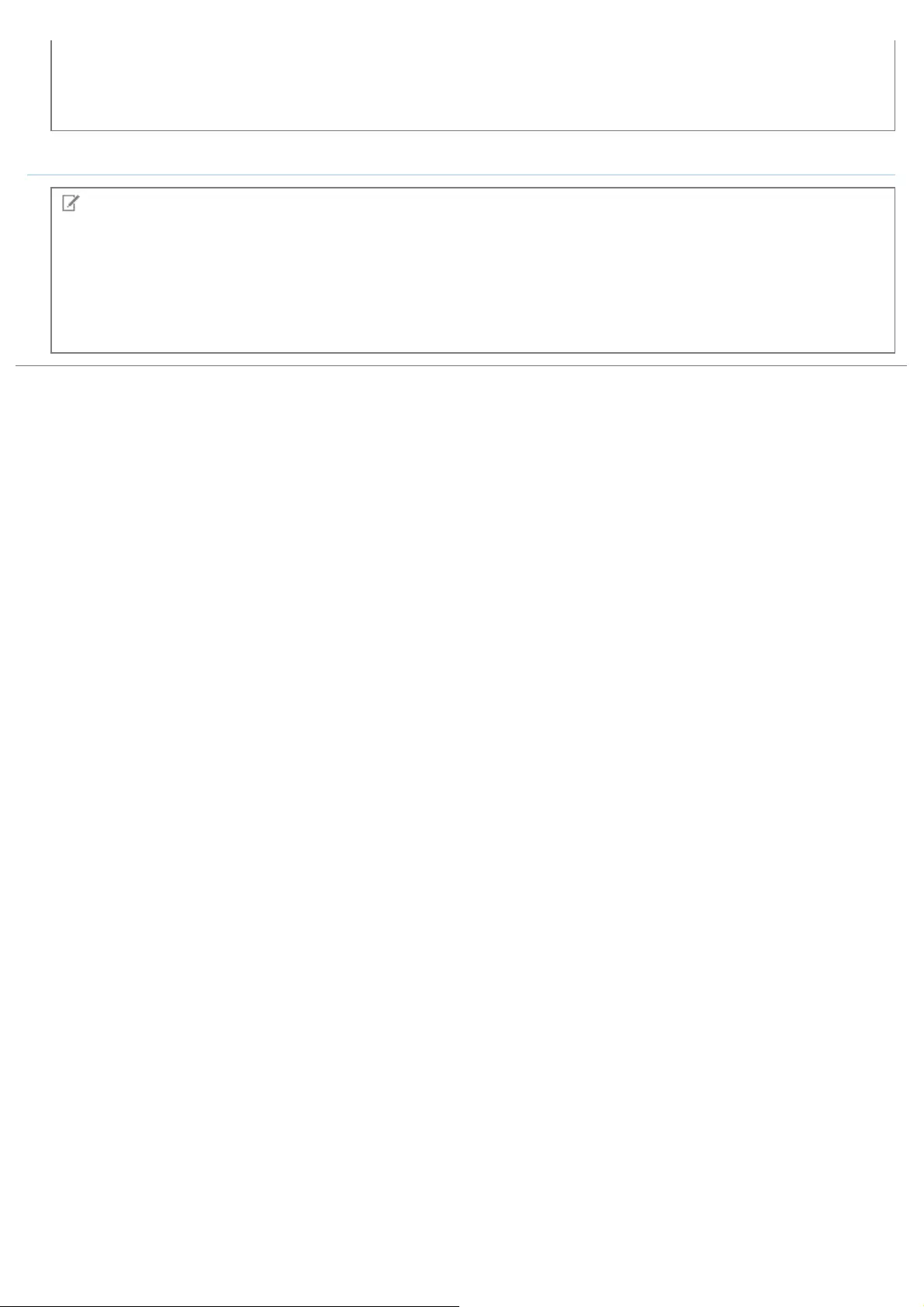
Multicast discovery
This is a function that searches for certain devices using Service Location Protocol (SLP).
By using the multicast discovery function, you can search for only the devices whose values in [Scope Name] are
verified, using the service location protocol (SLP) from utility software, such as NetSpot Device Installer.
When configuring the SNTP Settings
NOTE
When the check box for [Use SNTP] is selected
[Check NTP Server Connection] is displayed on the [TCP/IP Settings] page on the [Network]. When [Check NTP Server
Connection] is clicked, the printer communicates with the specified NTP server, and the result of the communication is
displayed in [NTP Server Connection Check Result].
[OK] is displayed if the printer communicated with the NTP server successfully, and [Error] is displayed if the printer
could not communicate with the NTP server due to any reason such as a setting mistake or communication error.
㻠㻢㻢㻌㻛㻌㻥㻥㻤

0258-075
This section describes the procedure for setting IP v. 6.
Specify the settings for IP v. 6 using the Remote UI after specifying the settings for IP v. 4.
IMPORTANT
IPSec encryption (Security Architecture for Internet Protocol) is not supported for LBP7660Cdn.
NOTE
About the IP v. 6 address
This printer can have up to seven IP v. 6 addresses of the following types. (Only one address can be registered
manually.) IP v. 6 communication allows you to use multiple IP v. 6 addresses simultaneously.
Type Registrable
Number Overview
Link-Local Address 1
A link local address is an IPv6 address that is generated automatically
using the specific prefix (information indicating to which network the
machine belongs) "fe80::" and an interface identifier generated from the
MAC address of the printer.
Because this address is valid only within the same prefix, it cannot
traverse the router. One link-local address is specified for this printer
whenever IP v. 6 is being used.
Manual Address 0 to 1
A manual address is a fixed address entered manually. By setting the IP
address manually, you can specify the prefix length and the default
router address.
Stateless Address 0 to 4
A stateless address is a temporary IPv6 address that is automatically
generated using the prefix included in the RA (Router Advertisement)
that is notified from the router and the printer's MAC address. If the
created IPv6 addresses do not overlap on the network, they may be
allocated as the printer's IP address.
Stateful Address 0 to 1 You can obtain a stateful address from the DHCP server using DHCP v.
6.
1
Start the Remote UI, and then log in as Administrator.
"Starting the Remote UI"
2
Click [Settings/Registration].
Setting IP v. 6
㻠㻢㻣㻌㻛㻌㻥㻥㻤
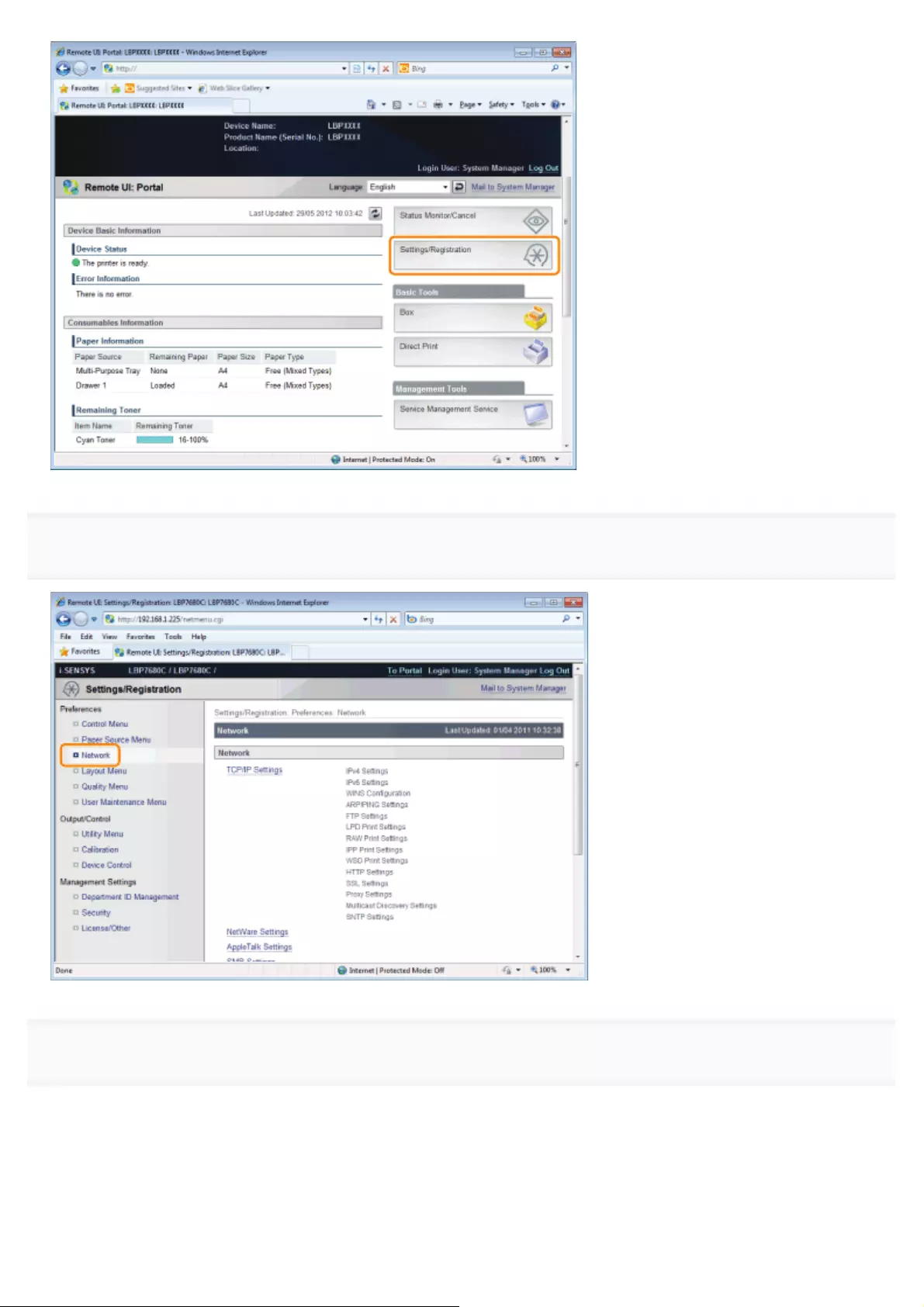
3
Select [Network] from the [Preferences] menu.
4
Click [TCP/IP Settings].
㻠㻢㻤㻌㻛㻌㻥㻥㻤
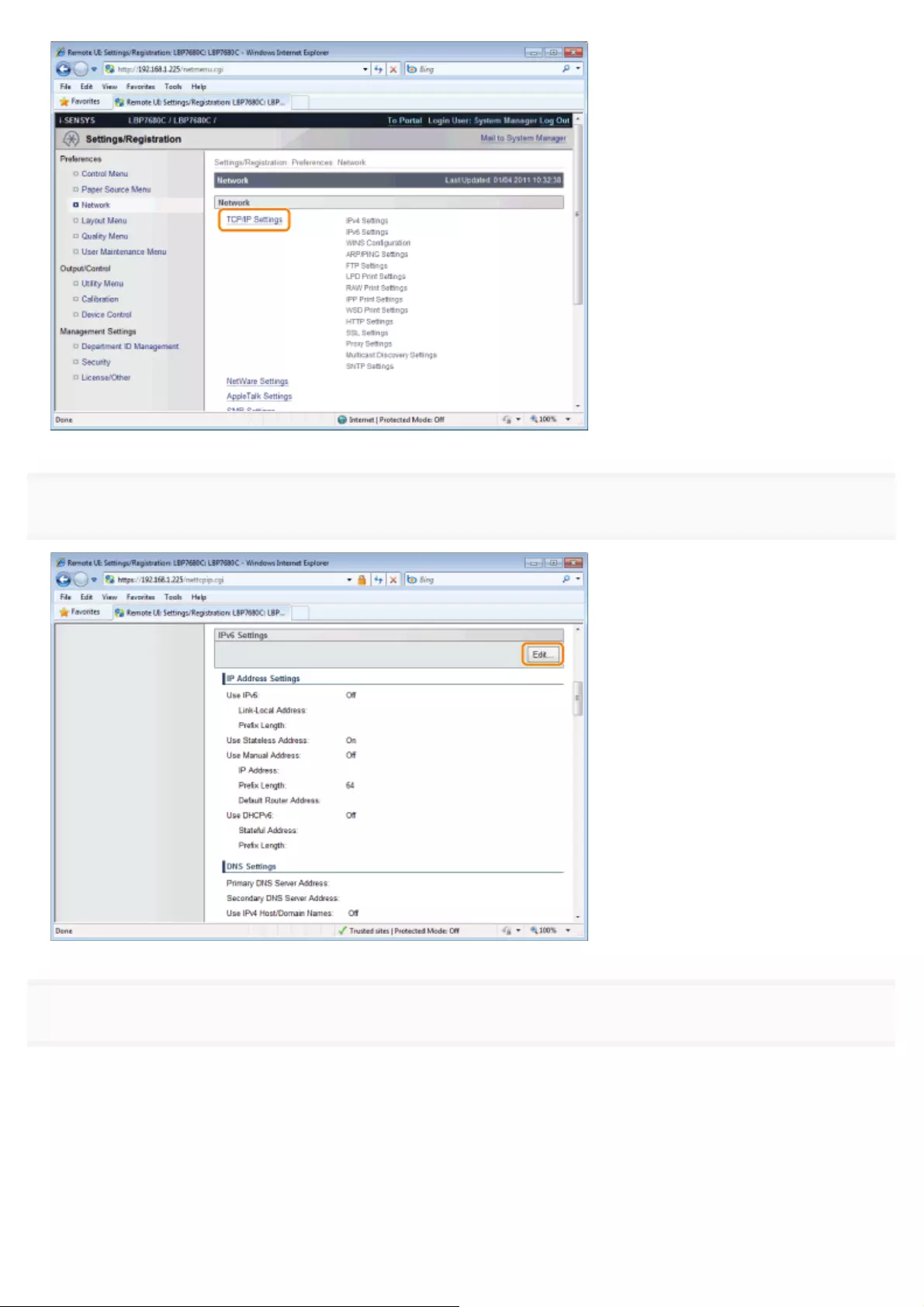
5
Click [Edit...] under [IPv6 Settings].
6
Select the [Use IPv6] check box.
㻠㻢㻥㻌㻛㻌㻥㻥㻤
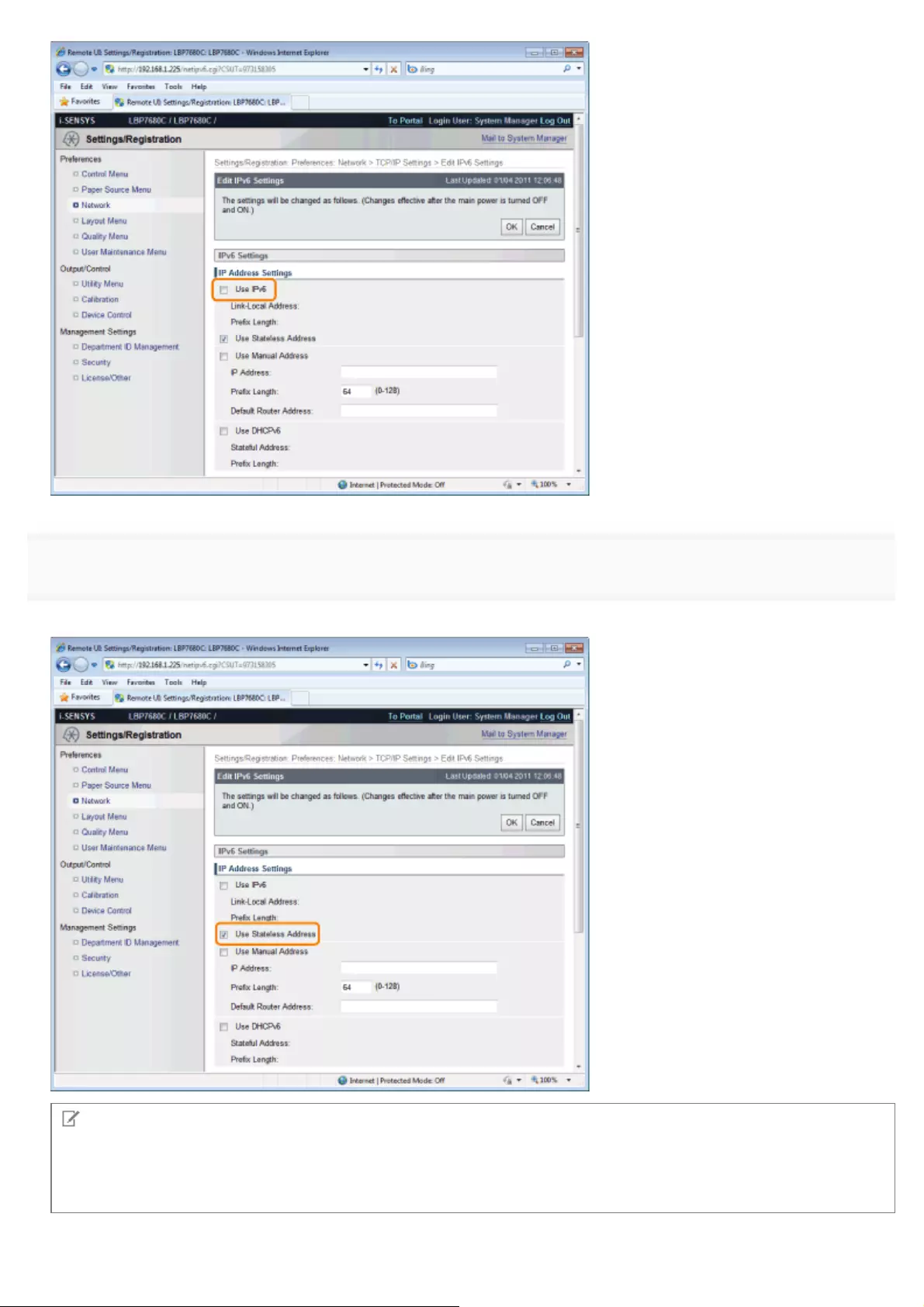
7
Specify the stateless address.
Check the [Use Stateless Address] check box when using a stateless address.
NOTE
Stateless Address Retention
After the [Use Stateless Address] check box is selected and the printer is restarted, the stateless address is displayed
automatically. This stateless address is discarded when the printer is turned OFF.
㻠㻣㻜㻌㻛㻌㻥㻥㻤
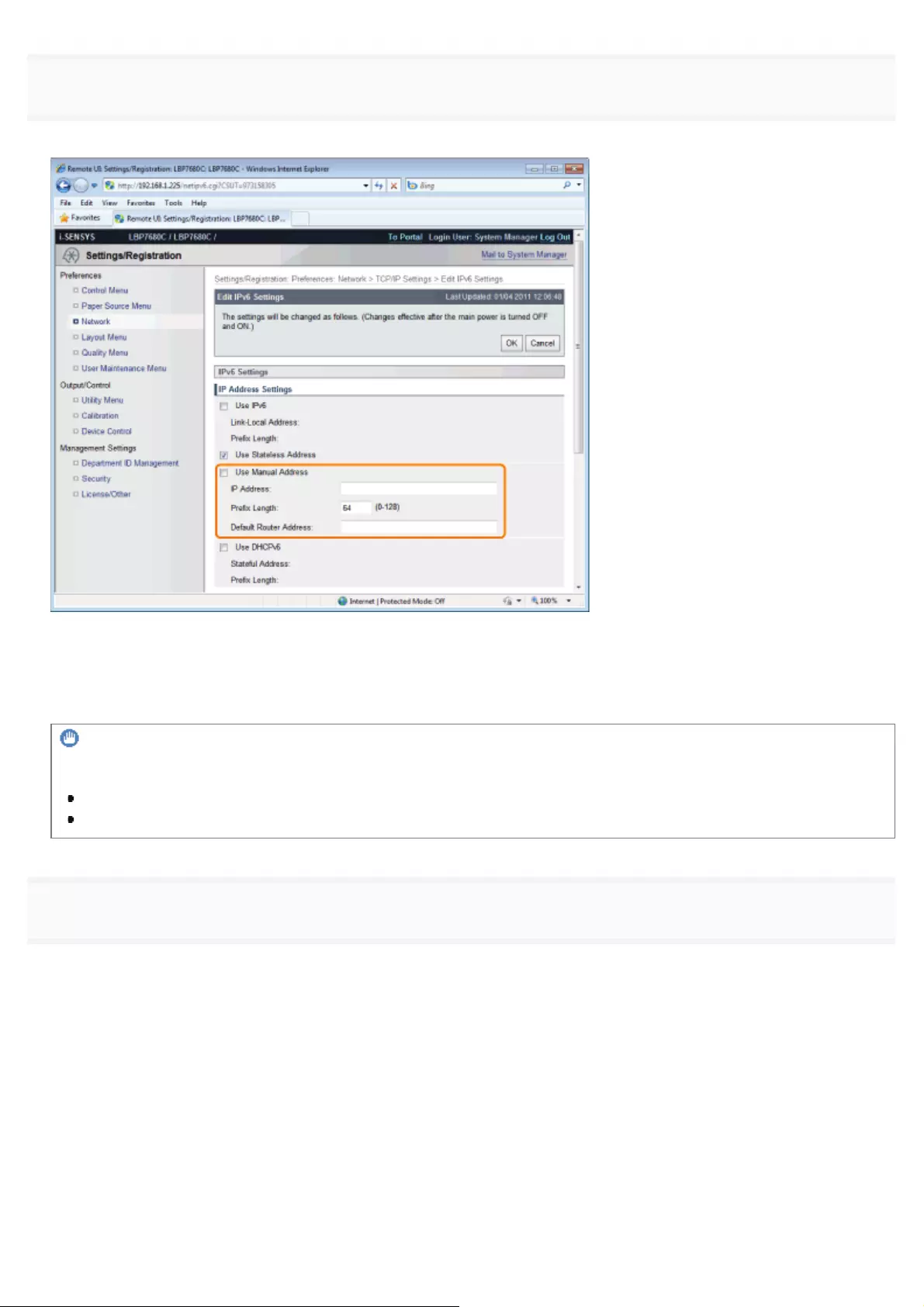
8
If you want to use a manual address, specify the following settings.
If you do not want to use a manual address, proceed to Step 9.
(1) Select the [Use Manual Address] check box.
(2) Enter [IP Address].
(3) Enter [Prefix Length].
(4) Enter [Default Router Address] as needed.
IMPORTANT
Addresses which cannot be entered in [IP Address] and [Default Router Address]
An address which starts with "ff" (multicast address)
An address which starts with "0:0:"
9
Specify DHCP v. 6.
When using the stateful address, select the [Use DHCPv6] check box.
㻠㻣㻝㻌㻛㻌㻥㻥㻤
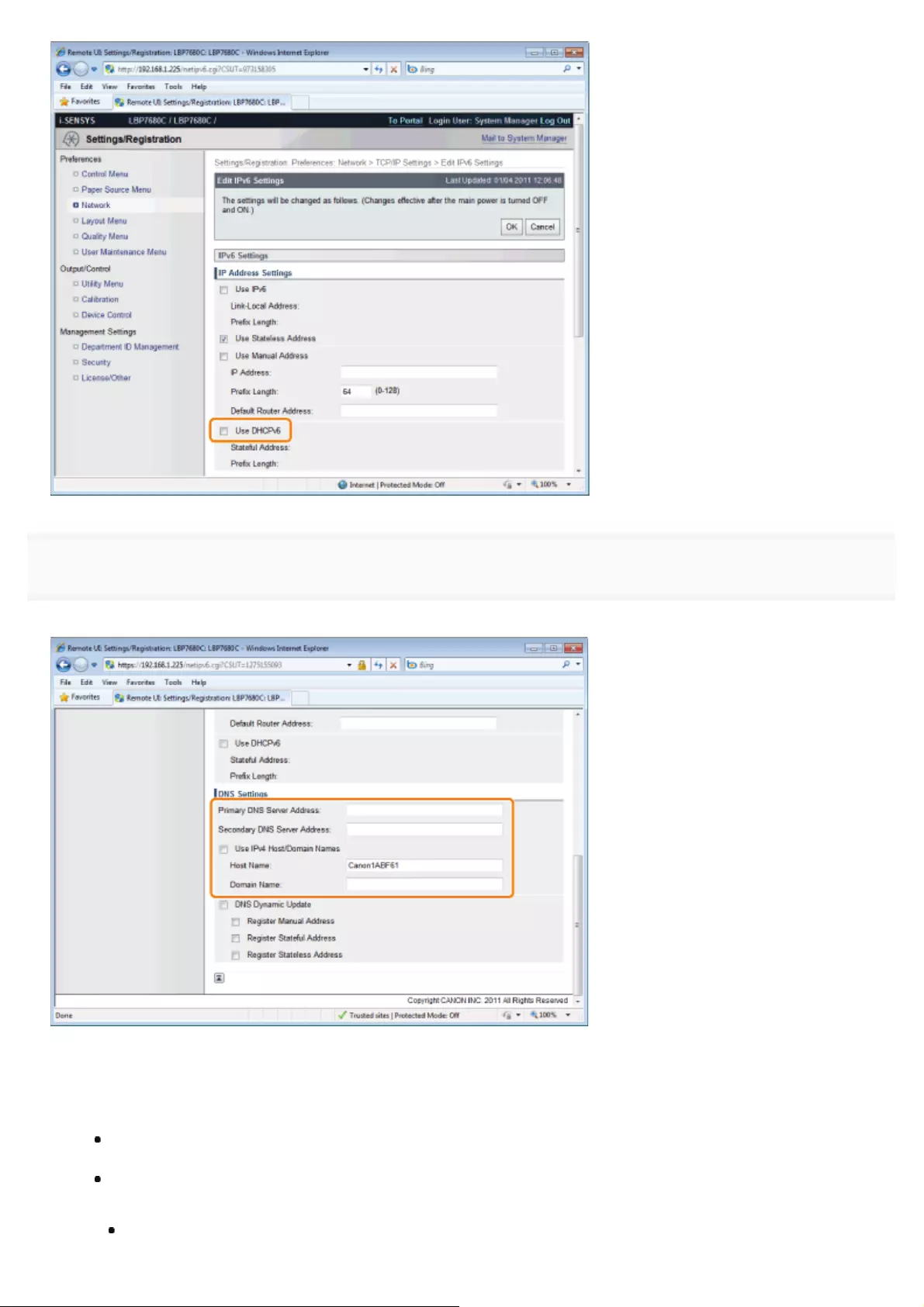
10
If you want to use the DNS server, specify the following settings.
If you do not want to use the DNS server, proceed to Step 11.
You can specify the following [IPv6 Settings].
(1) Enter the IP address of the primary DNS server in [Primary DNS Server Address].
(2) Enter the IP address of the secondary DNS server in [Secondary DNS Server Address].
(3) Set [Host Name] and [Domain Name].
Select the [Use IPv4 Host/Domain Names] check box to use the same host name and domain name as
IPv4.After the printer is restarted, the host name and domain name set by IPv4 are set automatically.
When using a host name and domain name that are different from IPv4, enter [Host Name] and [Domain
Name]. You can enter up to 47 characters.
Example of [Domain Name] entry: "example.com"
㻠㻣㻞㻌㻛㻌㻥㻥㻤
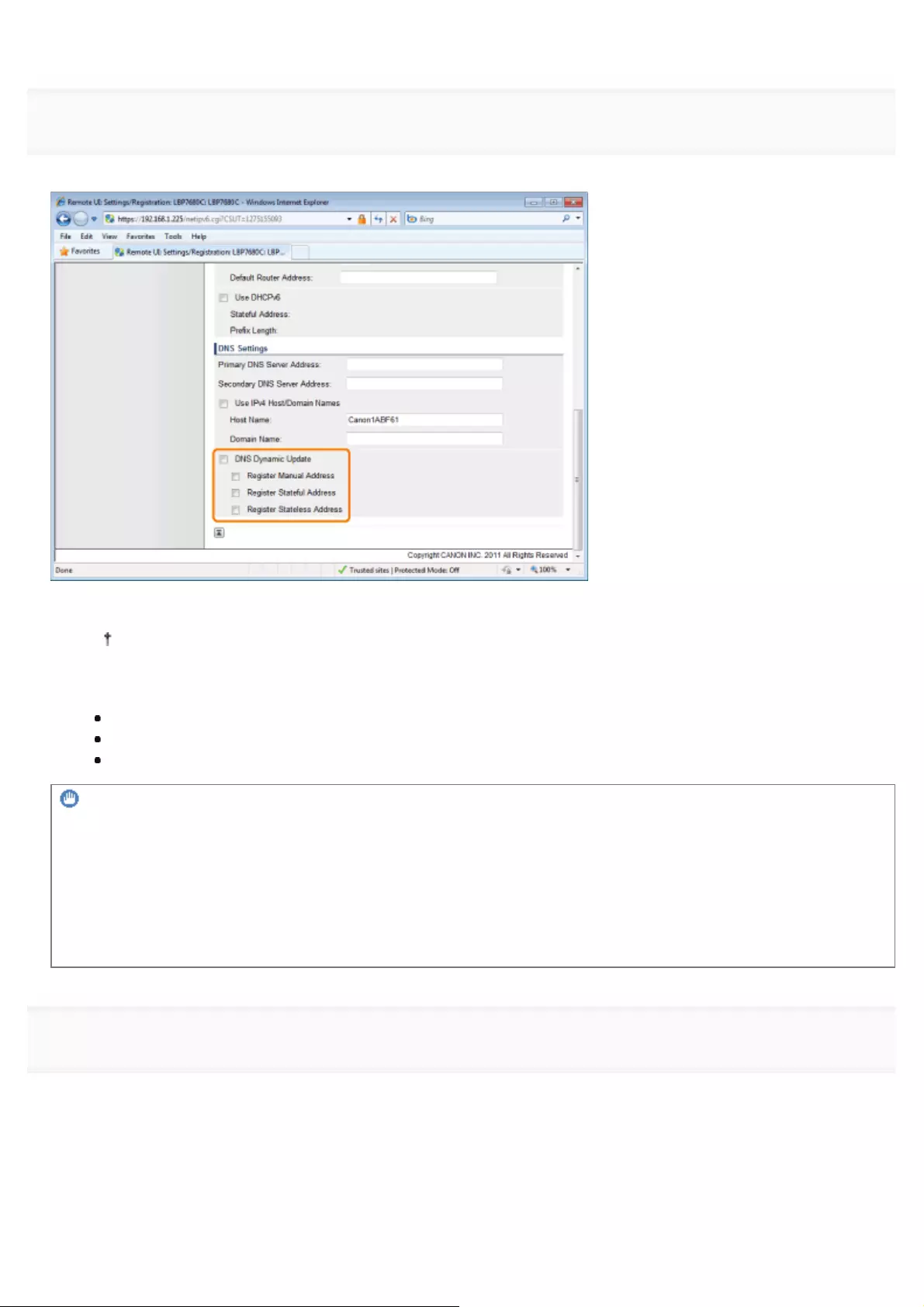
11
If you want to use DNS Dynamic Update, specify the following settings.
If you do not want to use the DNS server, proceed to Step 12.
(1) Select the [DNS Dynamic Update] check box.
Using the DNS Dynamic Update function, by registering the [Host Name] and [Domain Name] to the DNS
server, the printer's IP address can be used without being fixed.
(2) Set whether to register the IPv6 address to the DNS server during DNS dynamic updates.
If you select the [Register Manual Address] check box, a manual address is registered to the DNS server.
If you select the [Register Stateful Address] check box, a stateful address is registered to the DNS server.
If you select the [Register Stateless Address] check box, a stateless address is registered to the DNS server.
IMPORTANT
DNS Dynamic Update
DNS Dynamic Update is a function that adds the IP address of the device and the names specified as the host name
and domain name to the DNS server automatically.
This function can be used in the environment in which a Dynamic DNS server is being used.
When using the DNS Dynamic Update function
You need to set the IP address, host name, and domain name of the DNS server.
12
Click [OK].
㻠㻣㻟㻌㻛㻌㻥㻥㻤
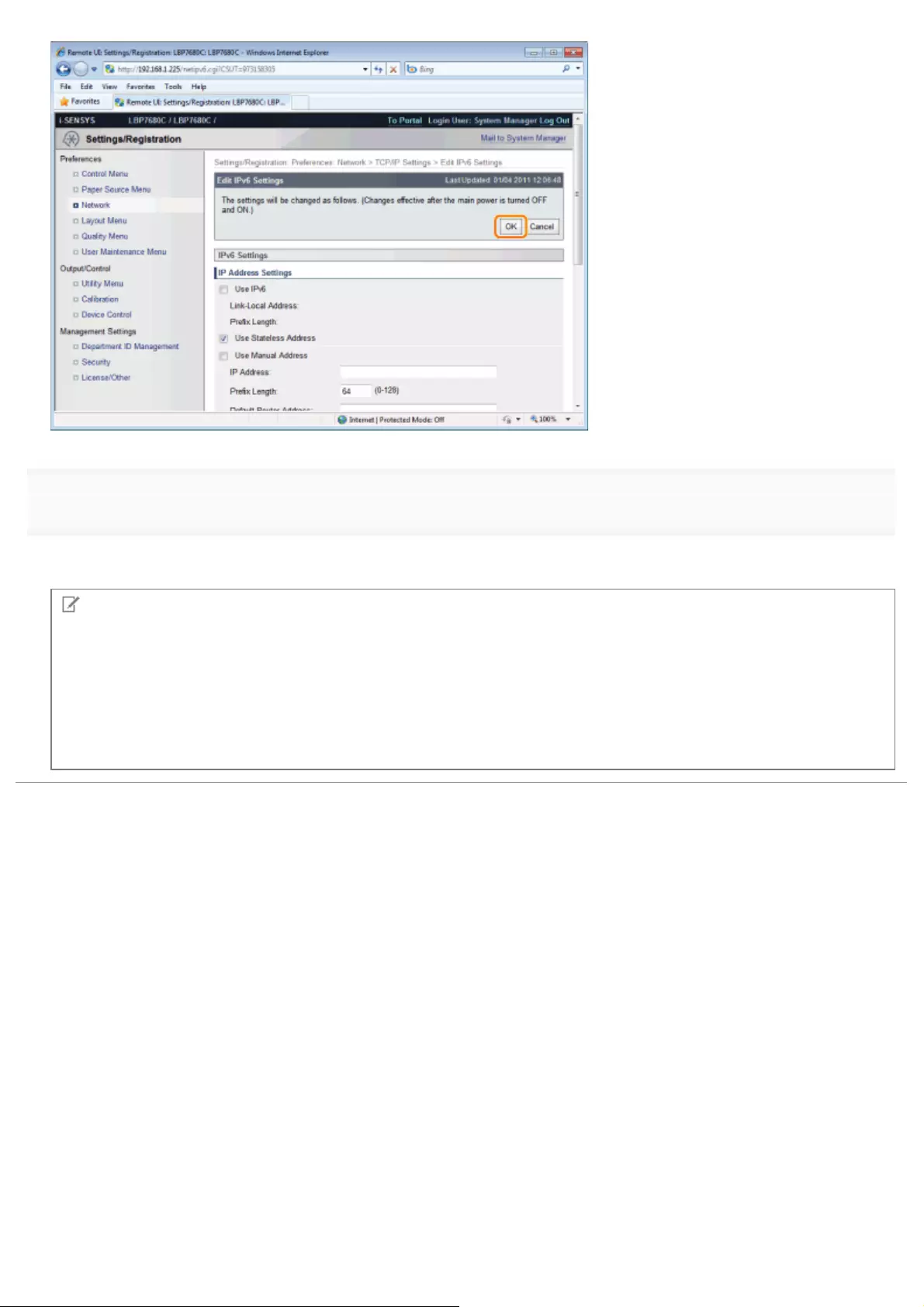
13
Perform a hard reset or restart the printer.
ĺAfter performing a hard reset or restarting the printer, the settings are effective.
NOTE
To perform a hard reset
You can perform a hard reset using the following procedure.
1. Click [Settings/Registration].
2. Select [Device Control] from the [Output/Control] menu.
3. Select [Hard Reset], then click [Execute].
㻠㻣㻠㻌㻛㻌㻥㻥㻤
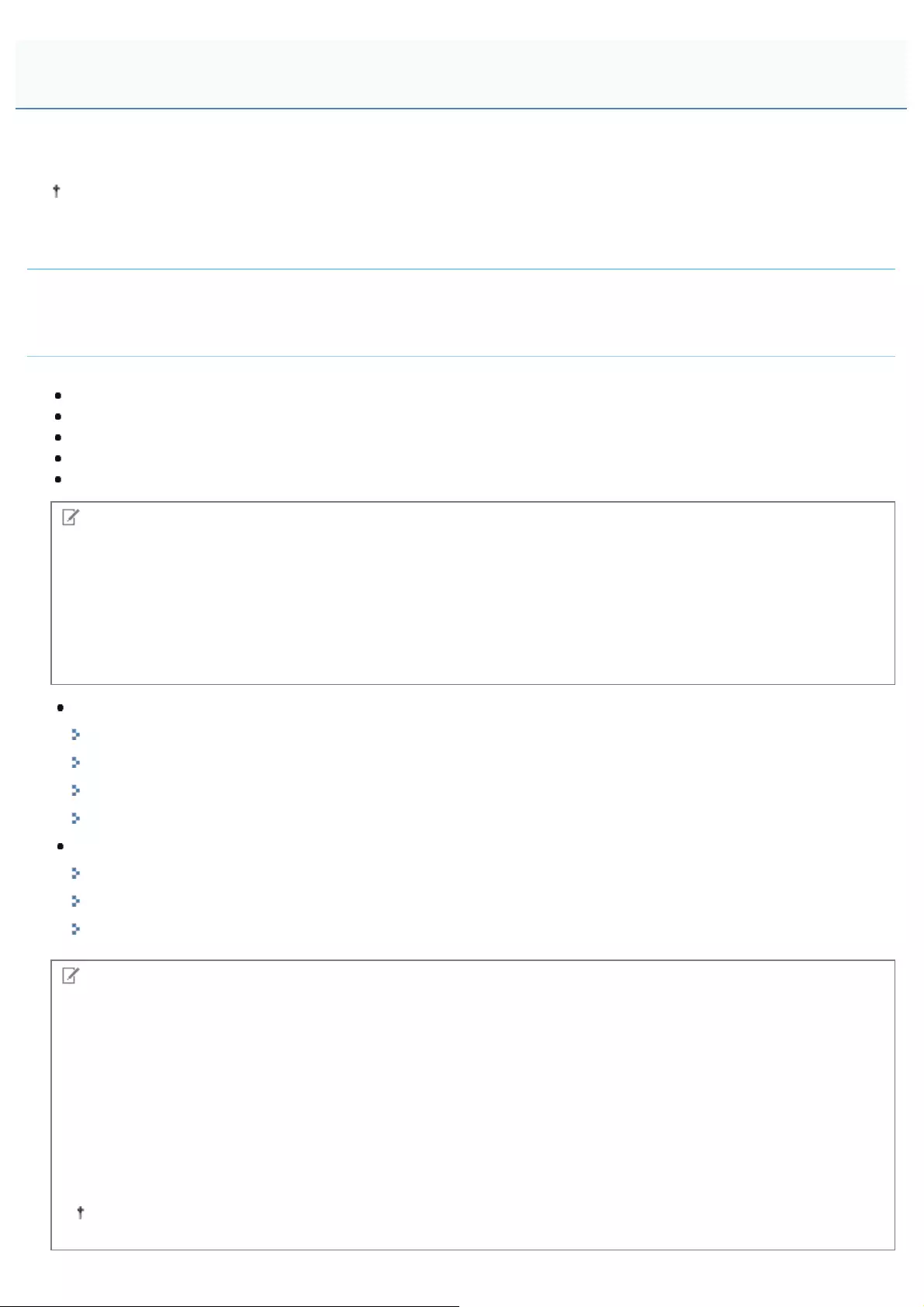
0258-076
After completing the protocol settings for the printer, configure each computer to be used for printing.
This section describes the procedure for when you are using Windows. If you are using Macintosh, see "Configuring a
Computer that Performs Printing" in "Network Settings for the Printer (AppleTalk)."
Connecting to a TCP/IP Network
Install TCP/IP client software on all the computers to be used for printing to make them able to use a TCP/IP network. For
more details, see the instruction manual for the operating system.
Print Application Selection
This printer supports the following print applications when being used on a TCP/IP network.
LPD
RAW
IPP/IPPS
FTP
WSD
NOTE
Print application
A print application is software that receives print data sent via a network and outputs the data to the printer. A print
application is required to print to the printer on a network.
About the printer connection
The setting procedure for the printer connection varies depending on the print application. Perform the settings for the
printer connection after installing the printer driver.
For details on the features of print applications, see the following.
"Features of LPD"
"Features of RAW"
"Features of IPP/IPPS"
"Features of WSD"
For details on the procedure for configuring a print application, see the following.
"Connecting the Printer (LPD/RAW)"
"Connecting the Printer (IPP/IPPS)"
"Connecting the Printer (WSD)"
NOTE
When using FTP Client
You can print using FTP client software.
For details on the procedure for printing using FTP client software, see "FTP Client."
To manage the printer effectively
You can manage the printer effectively as follows by specifying Windows on the network as the print server.
The print server manages print data.
If you install an alternative printer driver previously, other computers can install the printer driver via the network.
For details on the procedure for configuring the print server, see "Printer Driver Installation Guide."
For details on the procedure for viewing "Printer Driver Installation Guide", see "Installation."
Configuring a Computer that Performs Printing
㻠㻣㻡㻌㻛㻌㻥㻥㻤
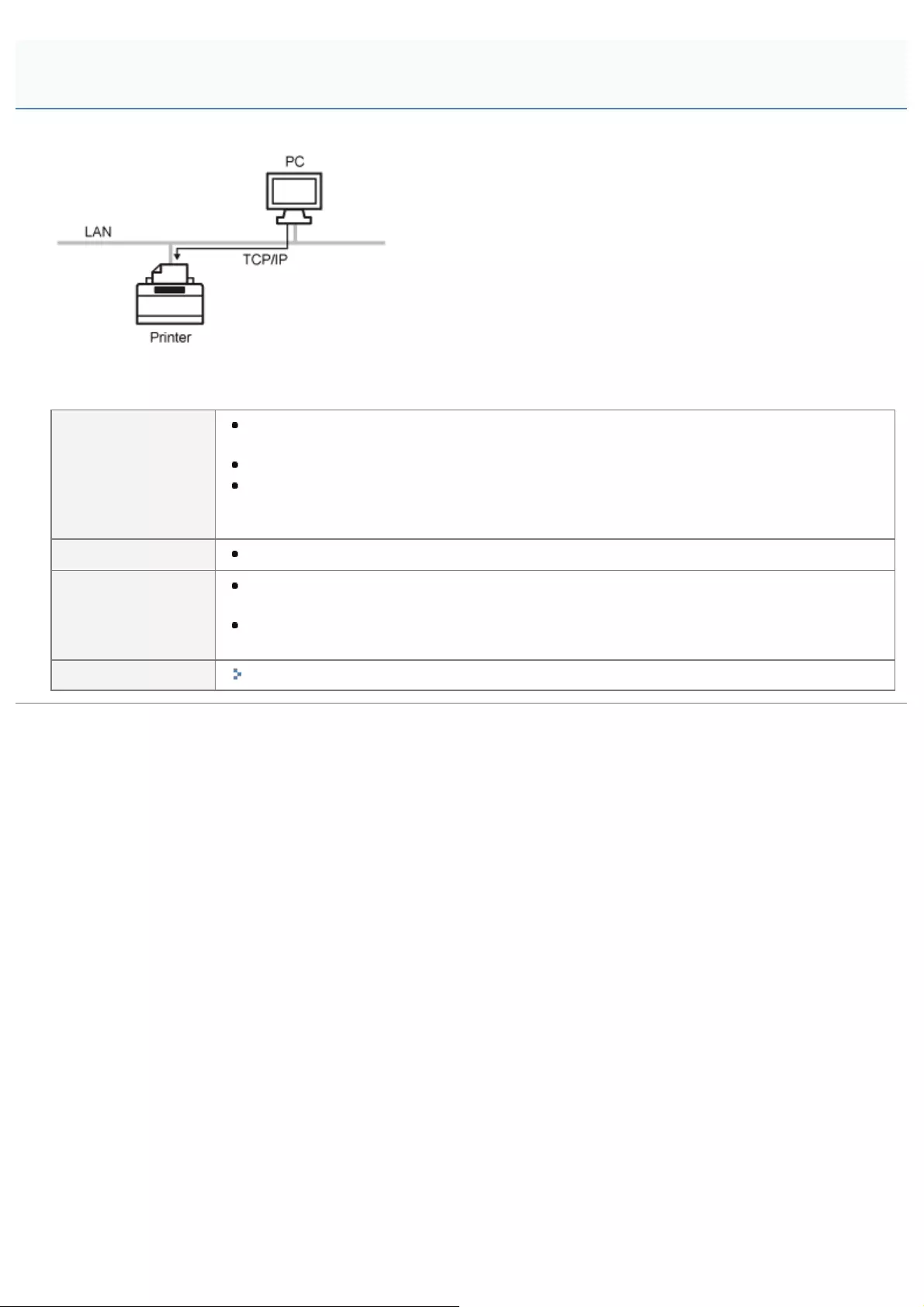
0258-077
This is a print application that can be used on Windows, Mac OS X, UNIX, and Linux.
LPD is generally used for a TCP/IP network environment.
Advantages
LPD printing is the most common network printing method supported by Windows, Mac
OS X, UNIX, and Linux as standard.
You can also print a banner page.
Even if you should restart the printer while the printer is printing, the print data is
guaranteed because the print job is retransmitted (when a byte count is specified on
printing).
Disadvantage You cannot obtain the detailed information about print jobs.
Usage Example
When sharing the printer by multiple users (because it is easy to identify the owner of the
print data by using the banner page)
When there are a variety of computers (operating systems) in the same network
environment, and you want to print using only one print application
Setting Method "Connecting the Printer (LPD/RAW)"
Features of LPD
㻠㻣㻢㻌㻛㻌㻥㻥㻤
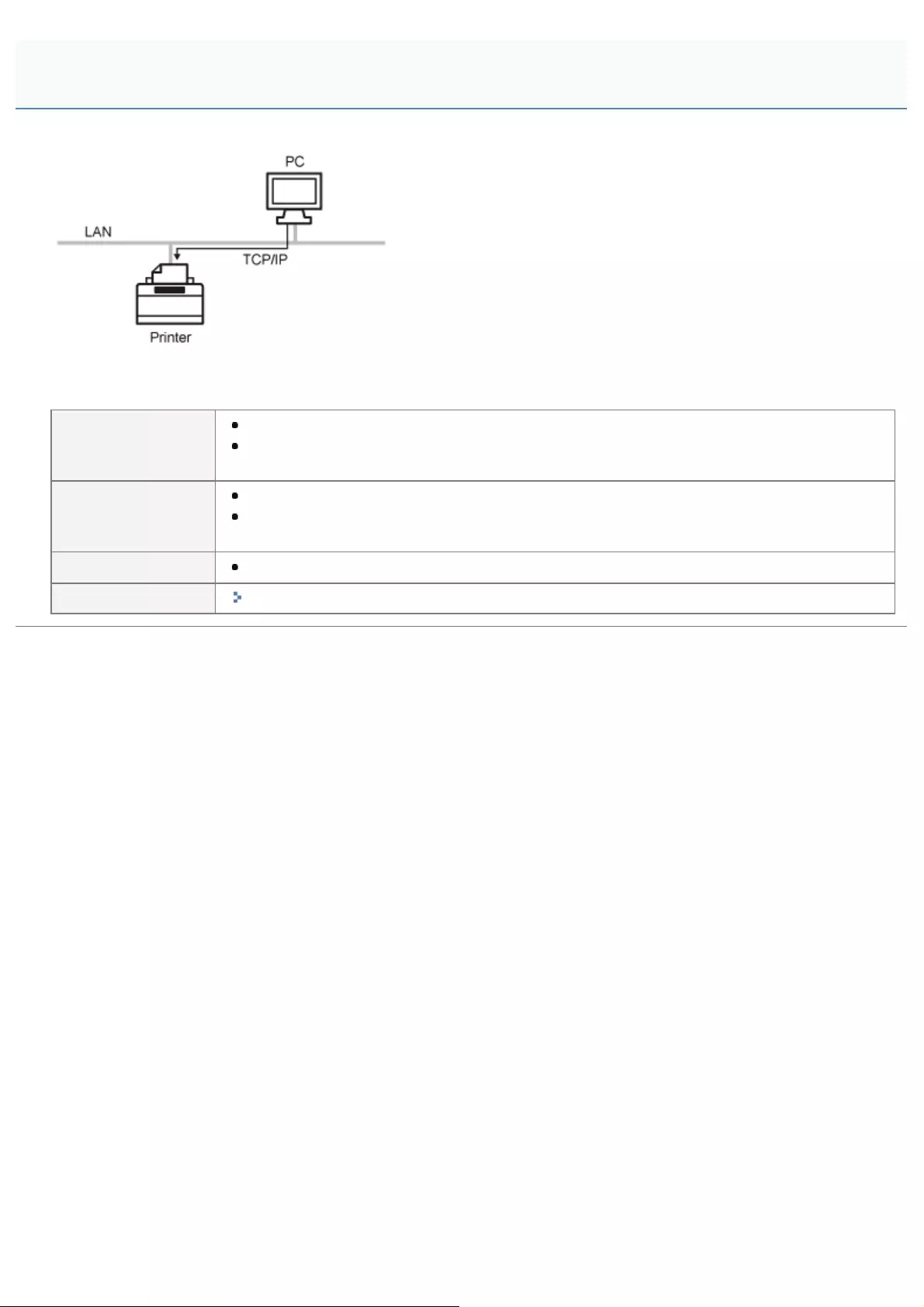
0258-078
This is a print application that can be used on Windows.
By using this printer application, you can generally print faster than when using LPD.
Advantages
You can print relatively faster than when using other applications.
When printing in Windows, the print settings using RAW are easier than using other print
applications.
Disadvantage
You cannot obtain the detailed information about print jobs.
RAW is supported as standard by only Windows, not supported by Macintosh, UNIX, and
Linux.
Usage Example If you are using Windows and want to use the printer immediately after installing it
Setting Method "Connecting the Printer (LPD/RAW)"
Features of RAW
㻠㻣㻣㻌㻛㻌㻥㻥㻤
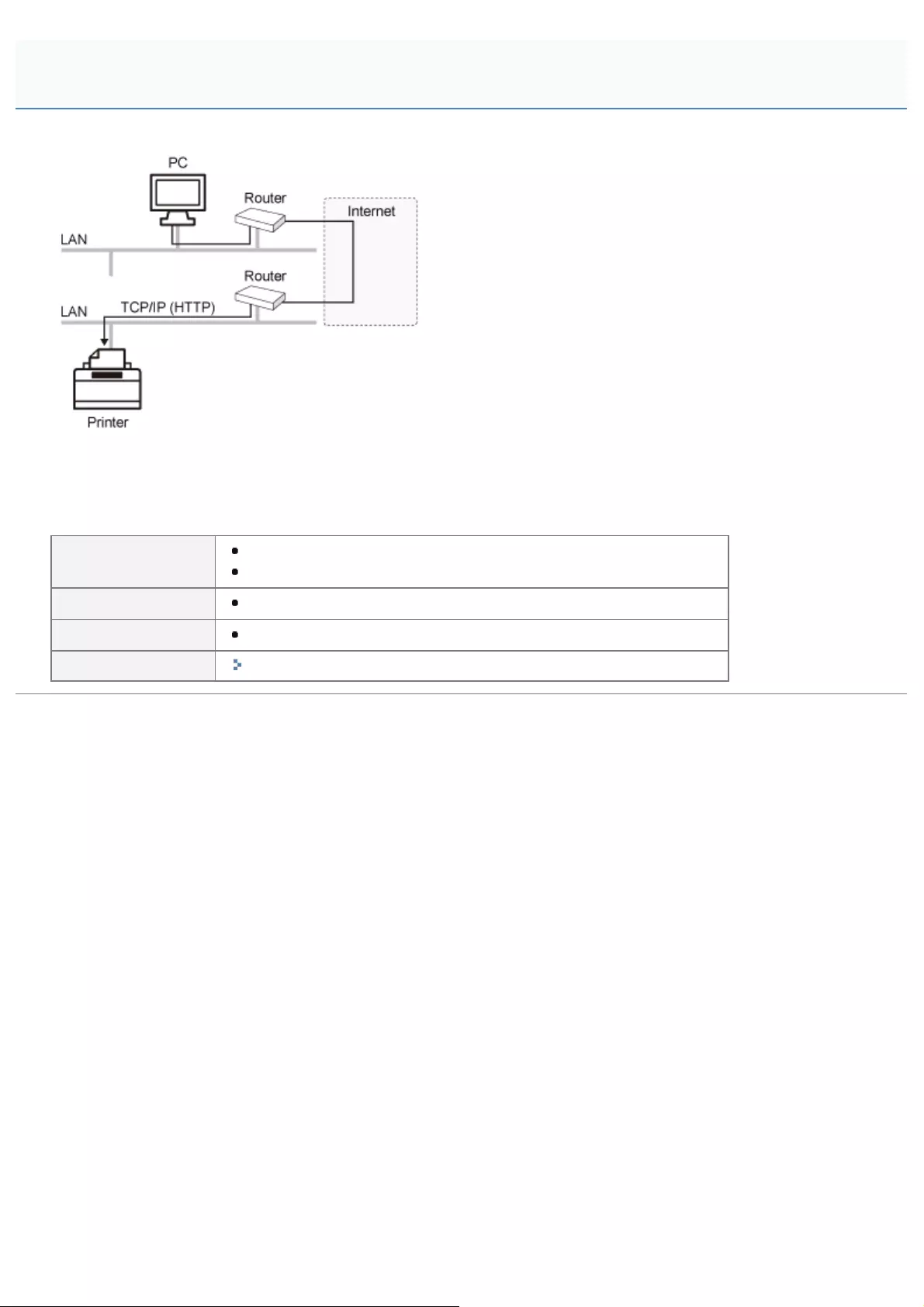
0258-079
IPP is a print application that can be used on Windows etc. By using this print application, you can print not only to a
printer on your LAN, but also to a remote printer via the Internet.
IPPS is a print application that performs SSL encrypted communication when using IPP. IPPS can be used on Windows
when the SSL encrypted communication function is enabled.
Advantages You can print using the printer on the Internet.
You can obtain information about print jobs and the printer.
Disadvantage Printing takes relatively more time than other print applications do.
Usage Example When printing using a remote printer via the Internet
Setting Method "Connecting the Printer (IPP/IPPS)"
Features of IPP/IPPS
㻠㻣㻤㻌㻛㻌㻥㻥㻤
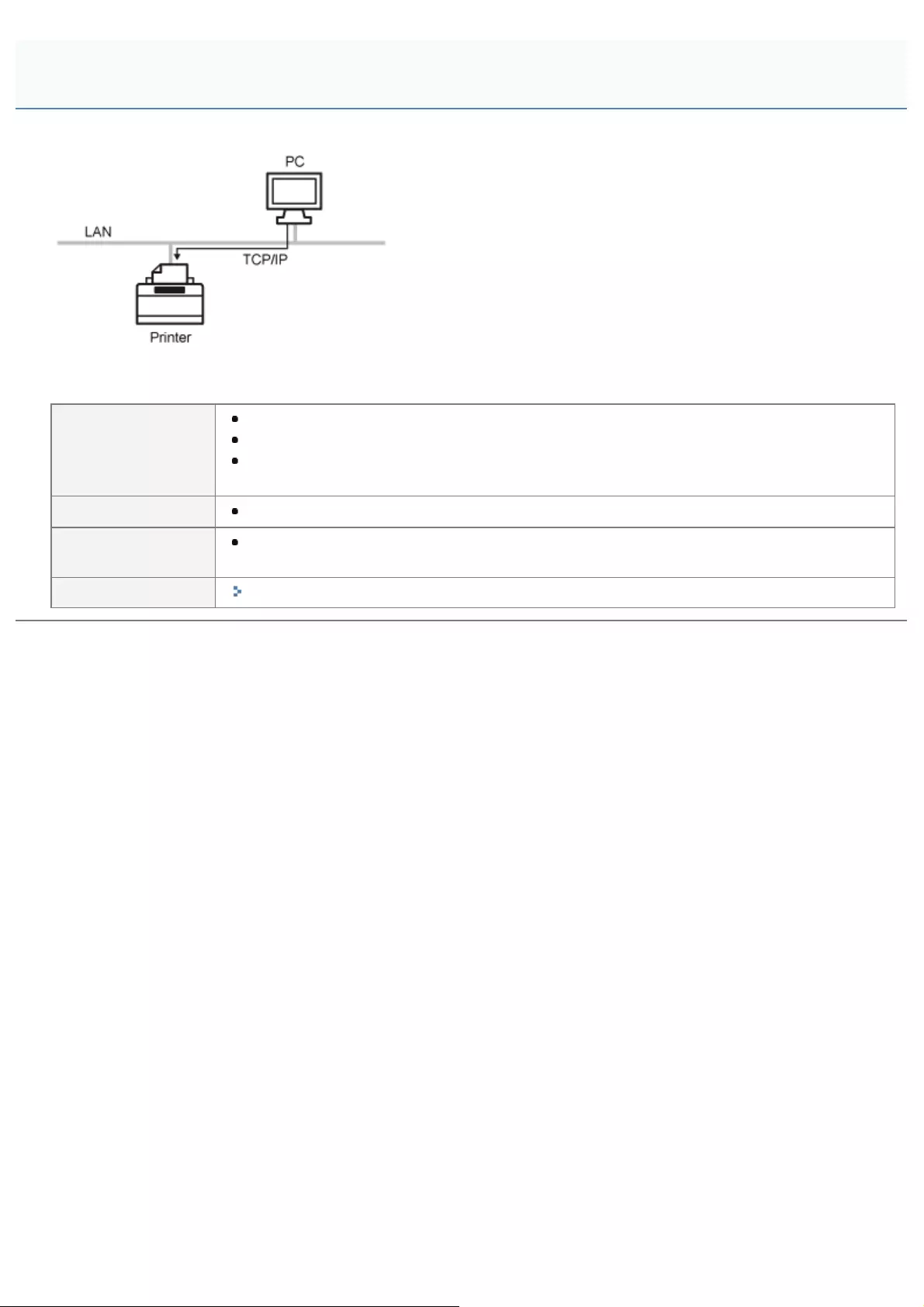
0258-07A
This is a print application that can be used on Windows Vista, 7, and Server 2008. By using WSD, you can search for the
printer automatically as well as obtain information about jobs and the printer, using the WSD protocol.
Advantages
You can search printers on a network automatically.
Installation of the printer driver is easy.
WSD can notify the computer of job completion and obtain the printer's configuration
information automatically.
Disadvantage Windows Vista, 7, and Server 2008 are only operating systems that support WSD.
Usage Example If you are using Windows Vista, 7 or Server 2008 and want to use the printer immediately
after installing it
Setting Method "Connecting the Printer (WSD)"
Features of WSD
㻠㻣㻥㻌㻛㻌㻥㻥㻤
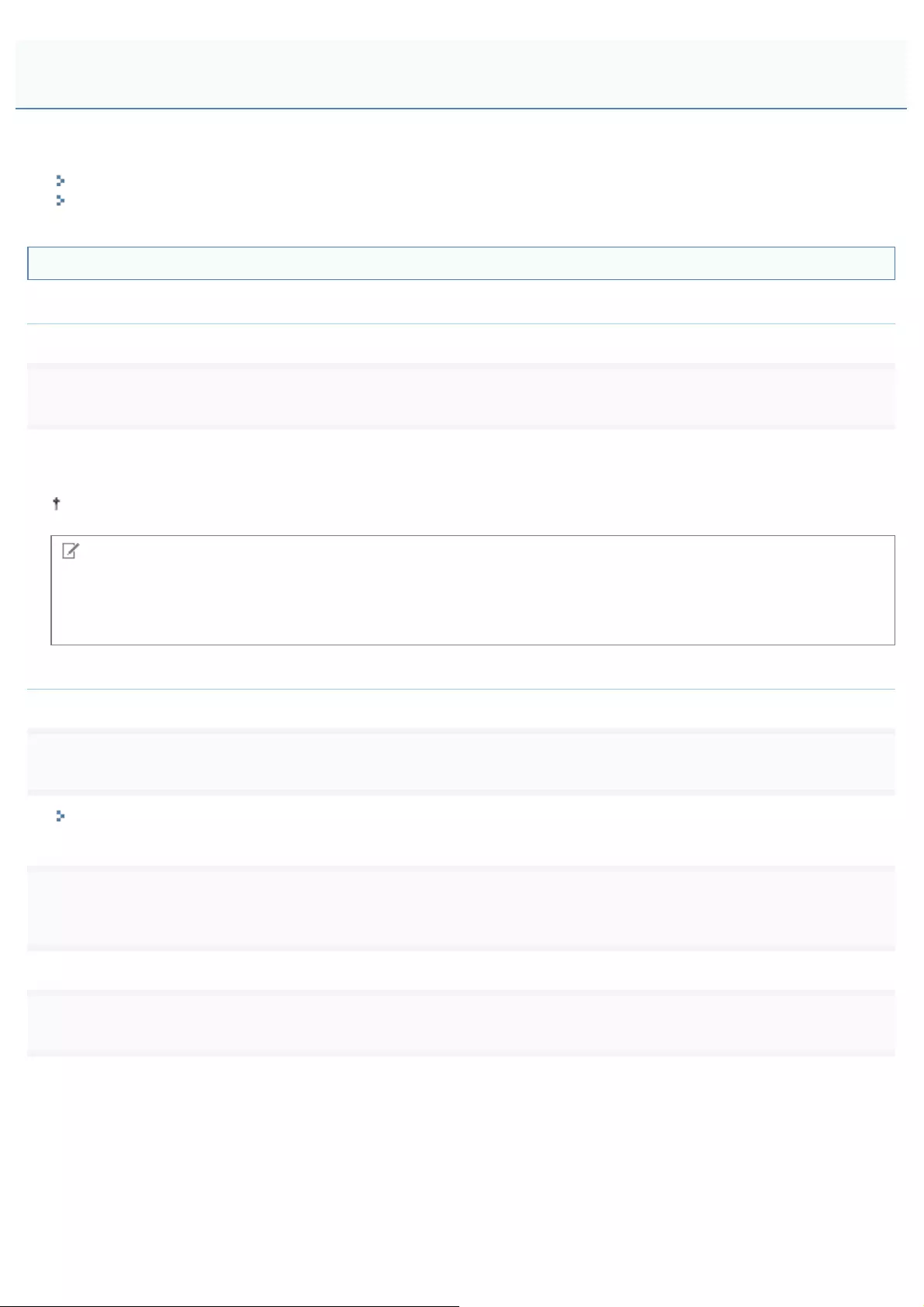
0258-07C
Configure the protocol settings.
If You Are Using Windows
If You Are Using UNIX
If You Are Using Windows
When Installing the Printer Driver from the Beginning
1
Install the printer driver.
Following the procedure for automatically searching the printer on a network in "Printer Driver Installation Guide", install the
printer driver.
For details on the procedure for viewing "Printer Driver Installation Guide", see "Installation."
NOTE
When using LPD
When the printer driver is installed using the above method, RAW is specified as the print application to be used. If you
want to use LPD, install the printer driver using the above procedure, and then change a port.
When Changing a Port
1
Open the printer folder.
"Basic Operations/Various Information for Windows"
2
Right-click the icon for this printer, and then select [Printer properties] or [Properties] from the pop-
up menu.
3
Perform the following procedure.
(1) Display the [Ports] sheet.
(2) Click [Add Port].
Connecting the Printer (LPD/RAW)
㻠㻤㻜㻌㻛㻌㻥㻥㻤
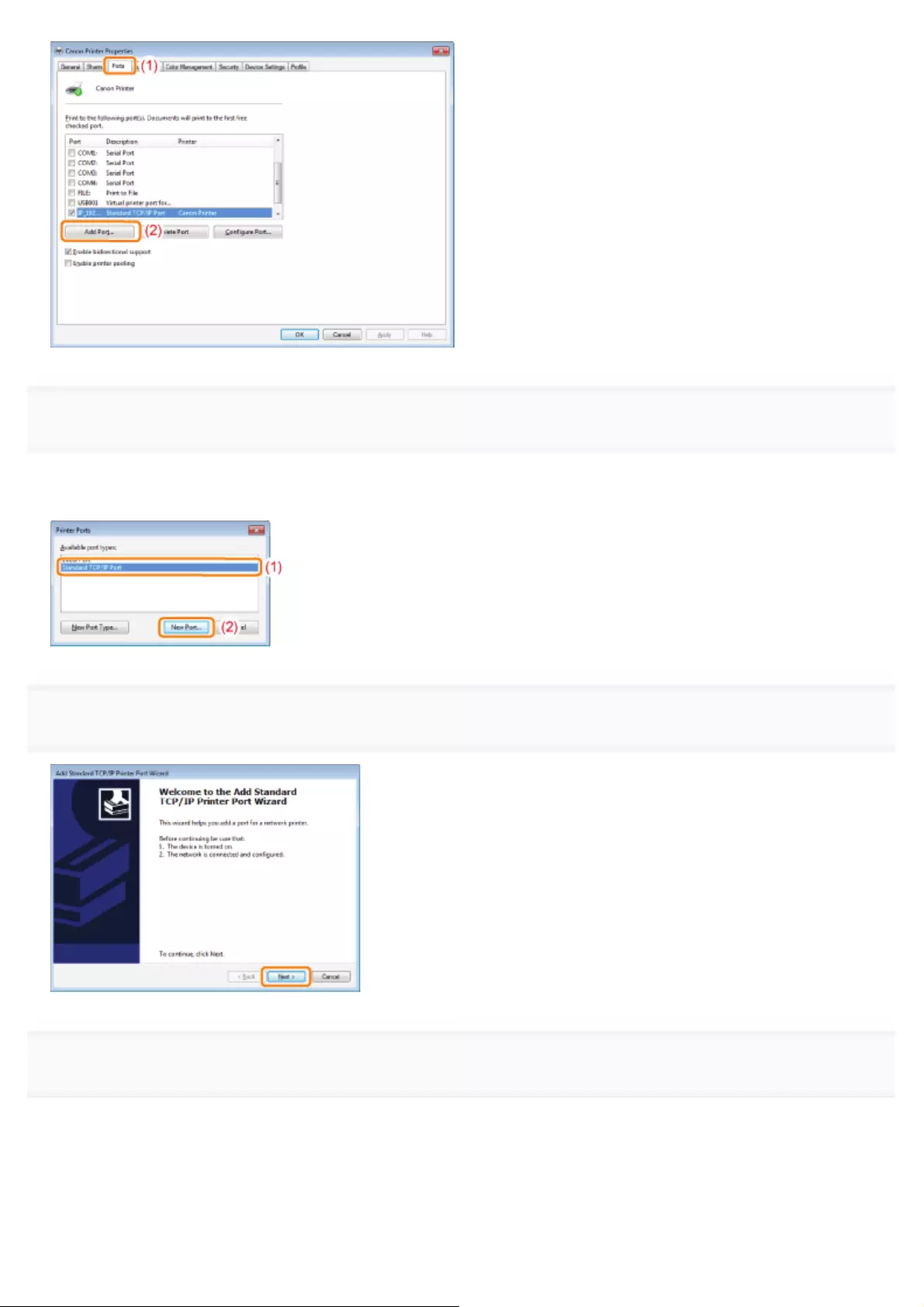
4
Select the port type.
(1) Select [Standard TCP/IP Port].
(2) Click [New Port].
5
Click [Next].
6
Enter the IP address or name of the printer.
(1) Enter the IP address or name* of the printer in [Printer Name or IP Address].
*The DNS name to be registered on the DNS server (up to 78 characters)
(2) Click [Next].
㻠㻤㻝㻌㻛㻌㻥㻥㻤
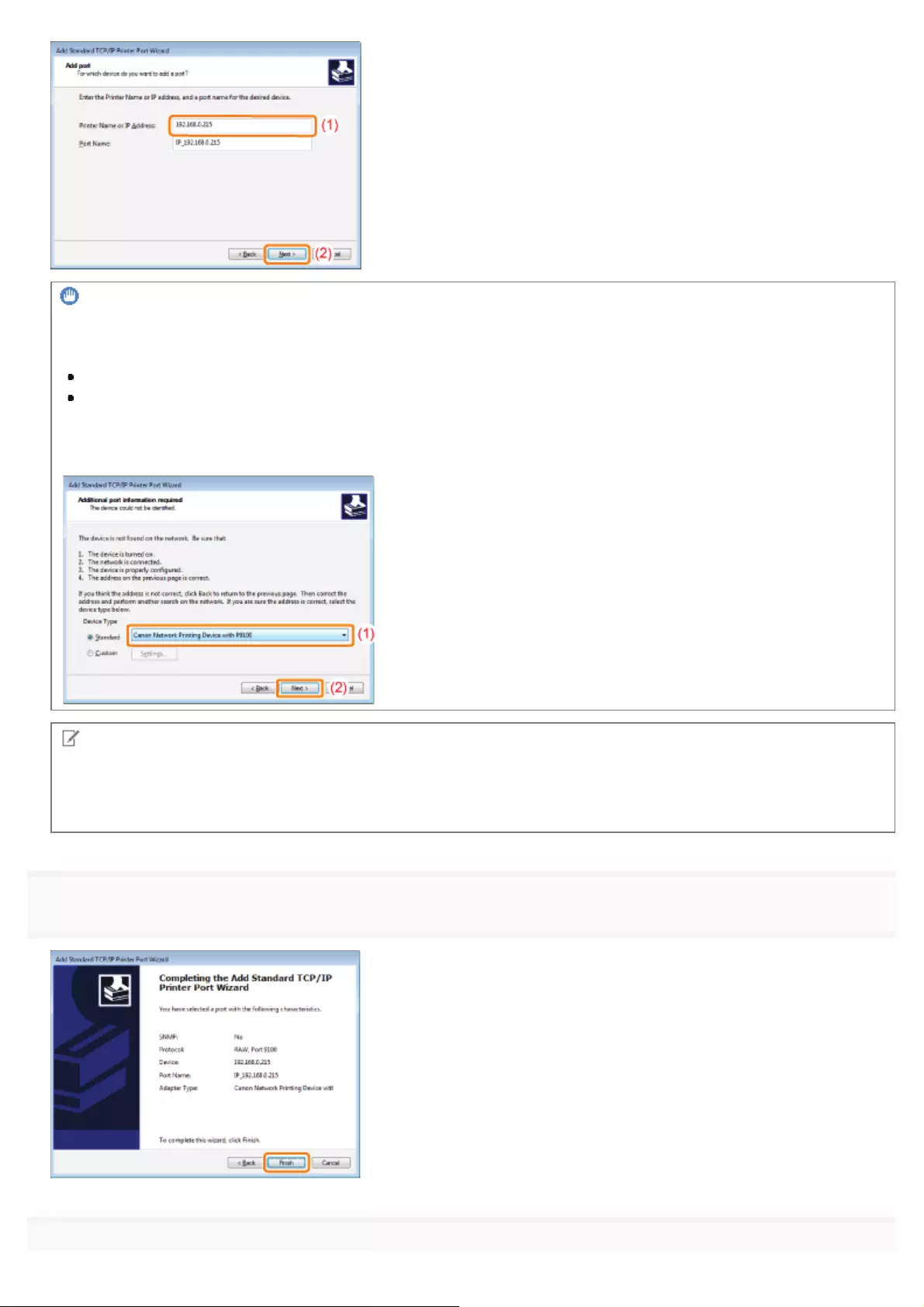
IMPORTANT
If the printer cannot be detected
The following screen appears. Perform either of the following operations.
Follow the on-screen instructions and search again for the printer.
Specify the setting for [Device Type].
(1) Select [Standard], and then select [Canon Network Printing Device with P9100].
(2) Click [Next].
NOTE
If you are not sure about the value to enter
The value to be entered varies depending on how the IP address of the printer was set.
For more details, see "Values for Setting a Port" or ask your network administrator.
7
Click [Finish].
8
㻠㻤㻞㻌㻛㻌㻥㻥㻤
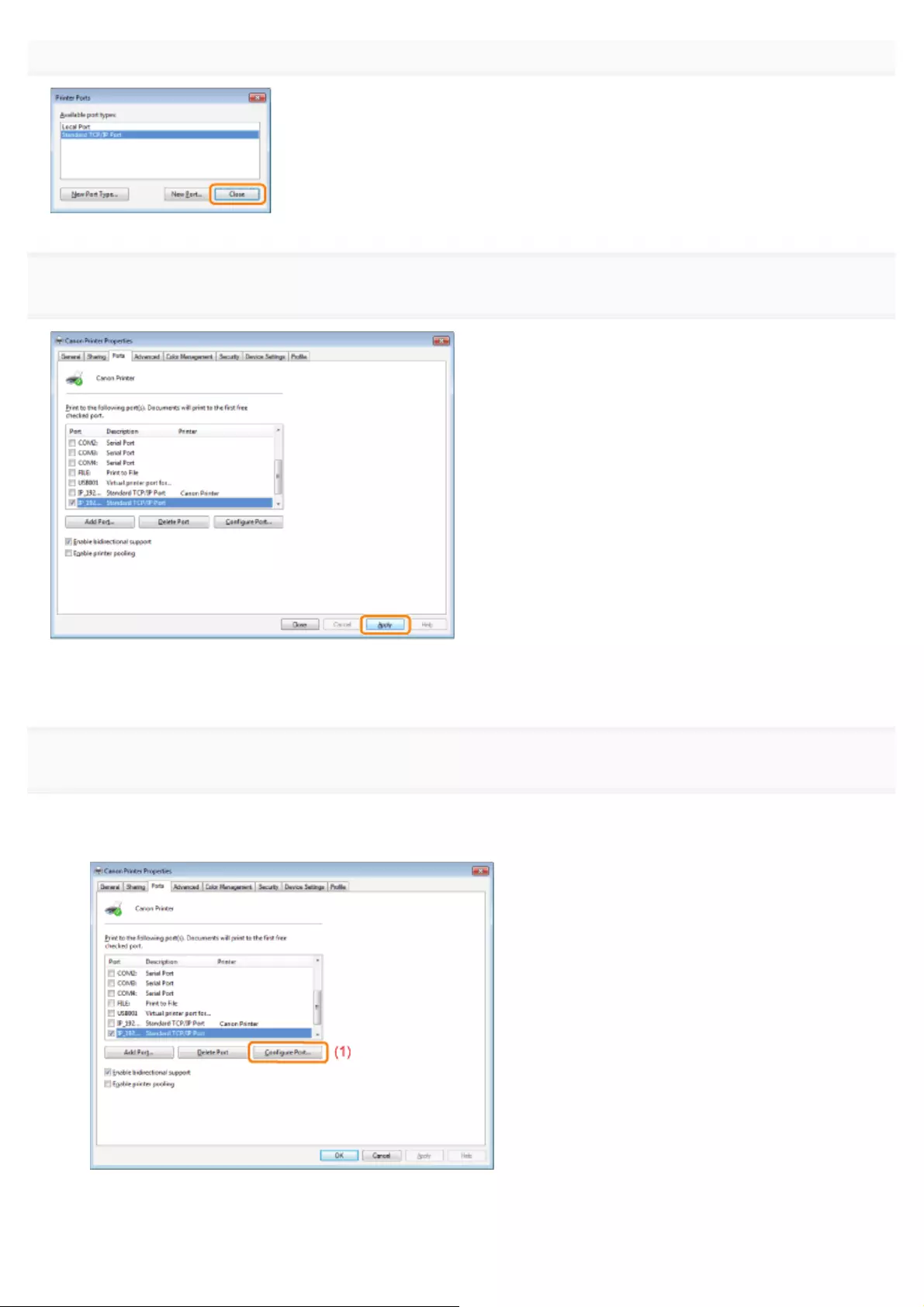
Click [Close].
9
Click [Apply].
If you want to use LPD, proceed to Step 10.
If you want to use RAW, proceed to Step 11.
10
If you want to use LPD, change the port configuration information.
When using LPD printing, set up the LPR protocol using the procedure below.
(1) Click [Configure Port].
(2) Select [LPR].
(3) Enter "lp" in [Queue Name].
(4) Click [OK].
㻠㻤㻟㻌㻛㻌㻥㻥㻤
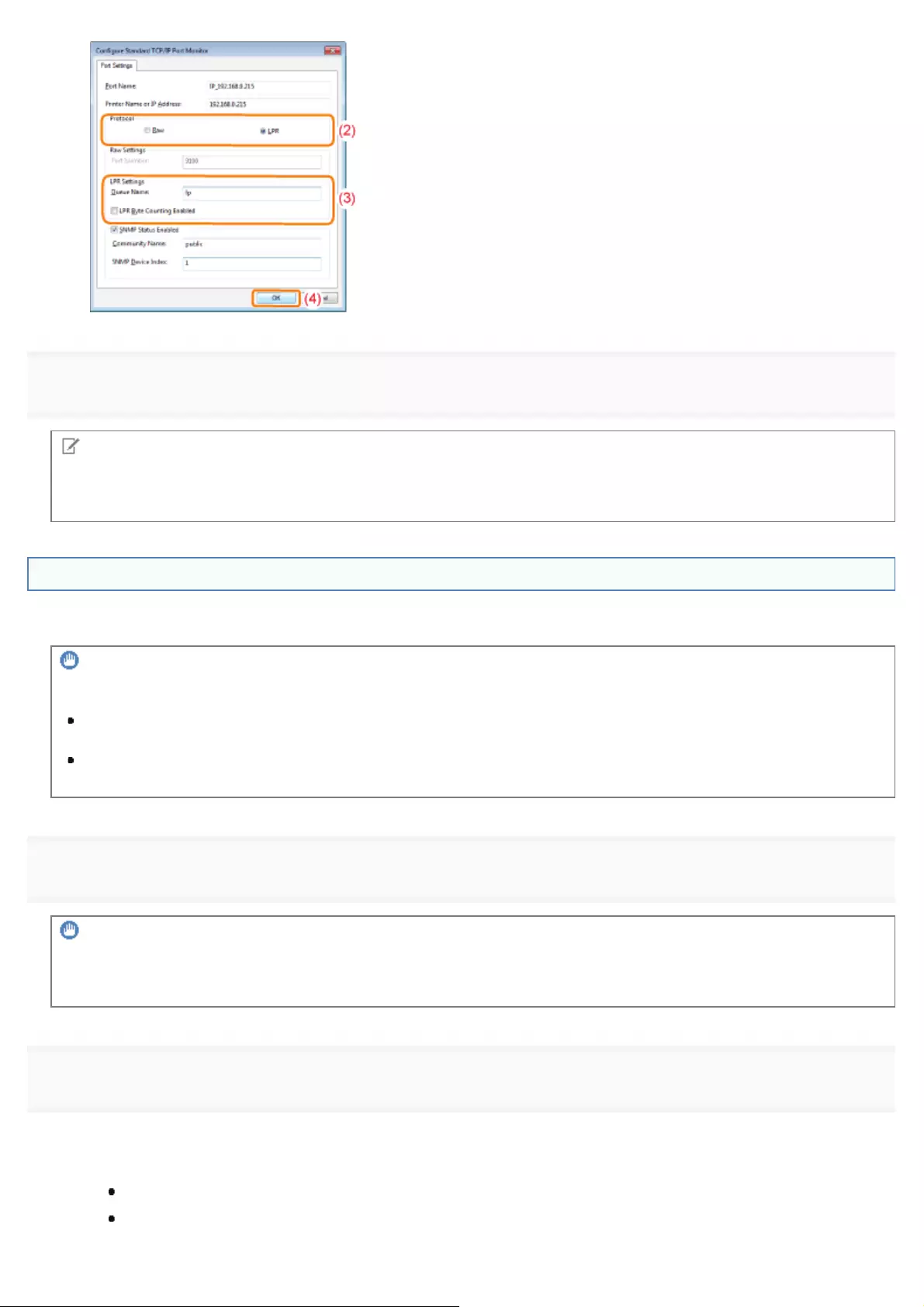
11
Click [OK].
NOTE
When deleting an unnecessary port
Select the unnecessary port on the [Ports] sheet, and then click [Delete Port].
If You Are Using UNIX
This section describes the preparation for printing using LPD. For details on the procedure for printing using FTP, see "FTP
Client."
IMPORTANT
About the setting procedure
The procedure described here is a setting example. Depending on the system environment, the setting procedure
may be different.
Specify the settings also when using a computer on which UNIX OS is installed as a stand-alone workstation along
the procedure described here.
1
Log in to the UNIX server as a root user.
IMPORTANT
If you do not have the root user permission on the UNIX server
Consult your network administrator.
2
Edit the "/etc/hosts" file to add the printer to the local network.
1. Open the "/etc/hosts" file using a text editor.
2. Add the following line.
Form: <The fixed IP address of the printer> (a tab) <the printer name> (a tab) # <comment>
Input Example: 192.168.0.215 LBP7680Cx/LBP7660Cdn #the printer to be added
㻠㻤㻠㻌㻛㻌㻥㻥㻤
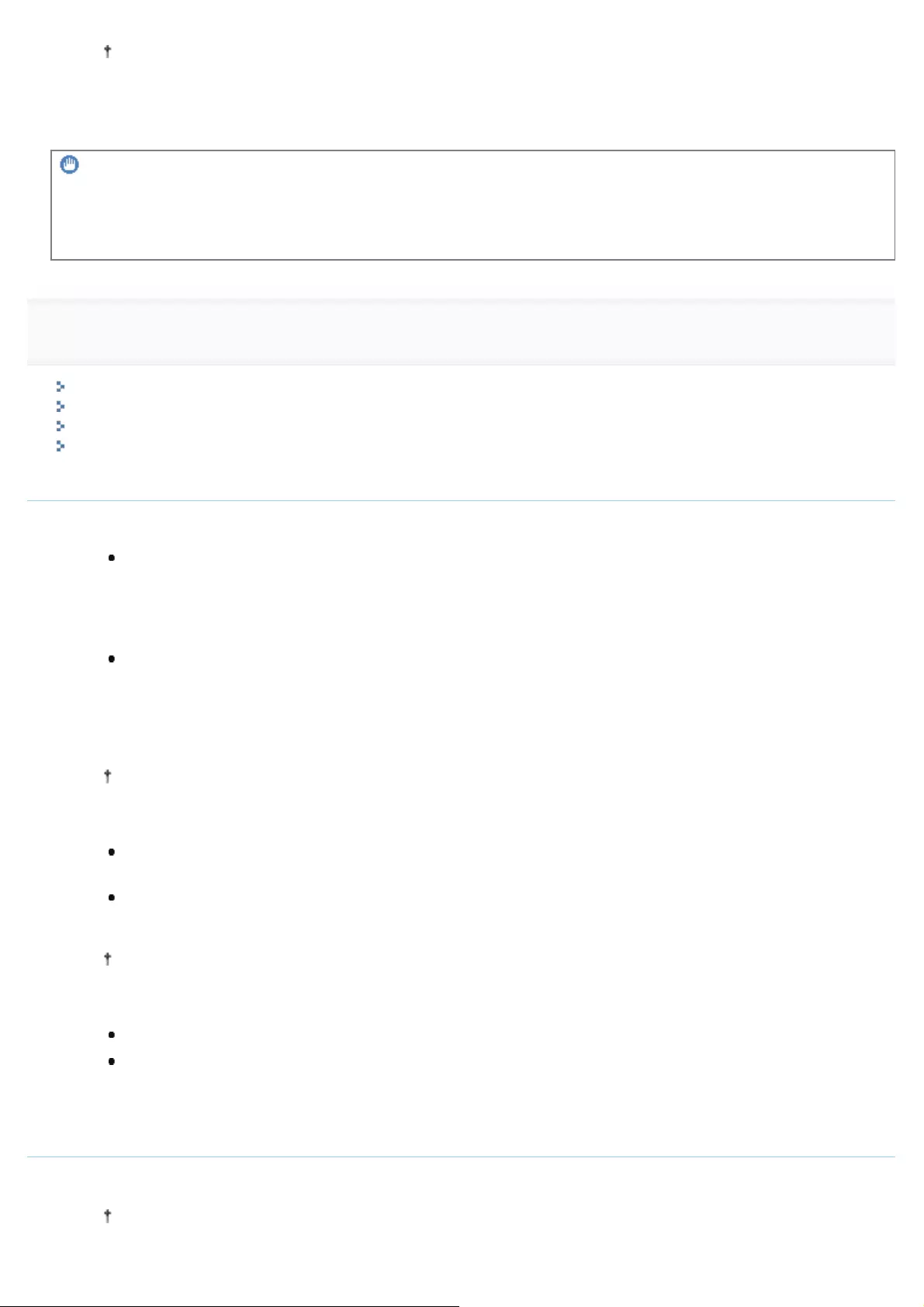
If you specified [DNS Host Name] of the printer, specify the same character string as [DNS Host Name] in
<the printer name>.
For more details on [DNS Host Name], see "Configuring the Protocol Settings."
3. After saving the "/etc/hosts" file, exit the text editor.
IMPORTANT
Be sure to assign a fixed IP address to the printer.
When printing from UNIX OS, be sure to assign a fixed IP address to the printer. For details on the procedure for setting
the IP address, see "Setting the IP Address (IP v. 4)."
3
Set up the spooling system on the UNIX server.
Example of When Using Solaris 1.x
Example of When Using Solaris 2.x or Later
Example of When Using HP-UX
Example of When Using IBM-AIX
Example of When Using Solaris 1.x
1. Enter the following in the "/etc/printcap" file.
Form: :<Print queue name>|<comment>:\
:lp=<the device special file>:\
:sd=<the spool directory>:\
:if=<the log file directory>:\
:rm=<the IP address or name of the printer>
Input Example: :print_queue_name|comments:\
:lp=/var/spool/print_queue_name/.null:\
:sd=/var/spool/print_queue_name:\
:if=/var/spool/print_queue_name/log:\
:rm=printer_host_name
In the line of "rm", enter the same contents that you entered in <the printer name>.
2. Create the spool directory for the printer. Execute the following commands.
Form: mkdir -p <the spool directory>
chown daemon <the spool directory>
Input Example: mkdir -p /var/spool/print_queue_name
chown daemon /var/spool/print_queue_name
In <the spool directory>, enter the same character string that you added in the "/etc/printcap" file.
3. Create the log file for the printer. Execute the following commands.
Form: cp /dev/null <the log file directory>
Input Example: cp /dev/null /var/spool/print_queue_name/log
4. Proceed to Step 4.
Example of When Using Solaris 2.x or Later
1. Run "admintool."
The "admintool" utility is supplied with an operating system. For more details, see the manual for the
operating system.
㻠㻤㻡㻌㻛㻌㻥㻥㻤
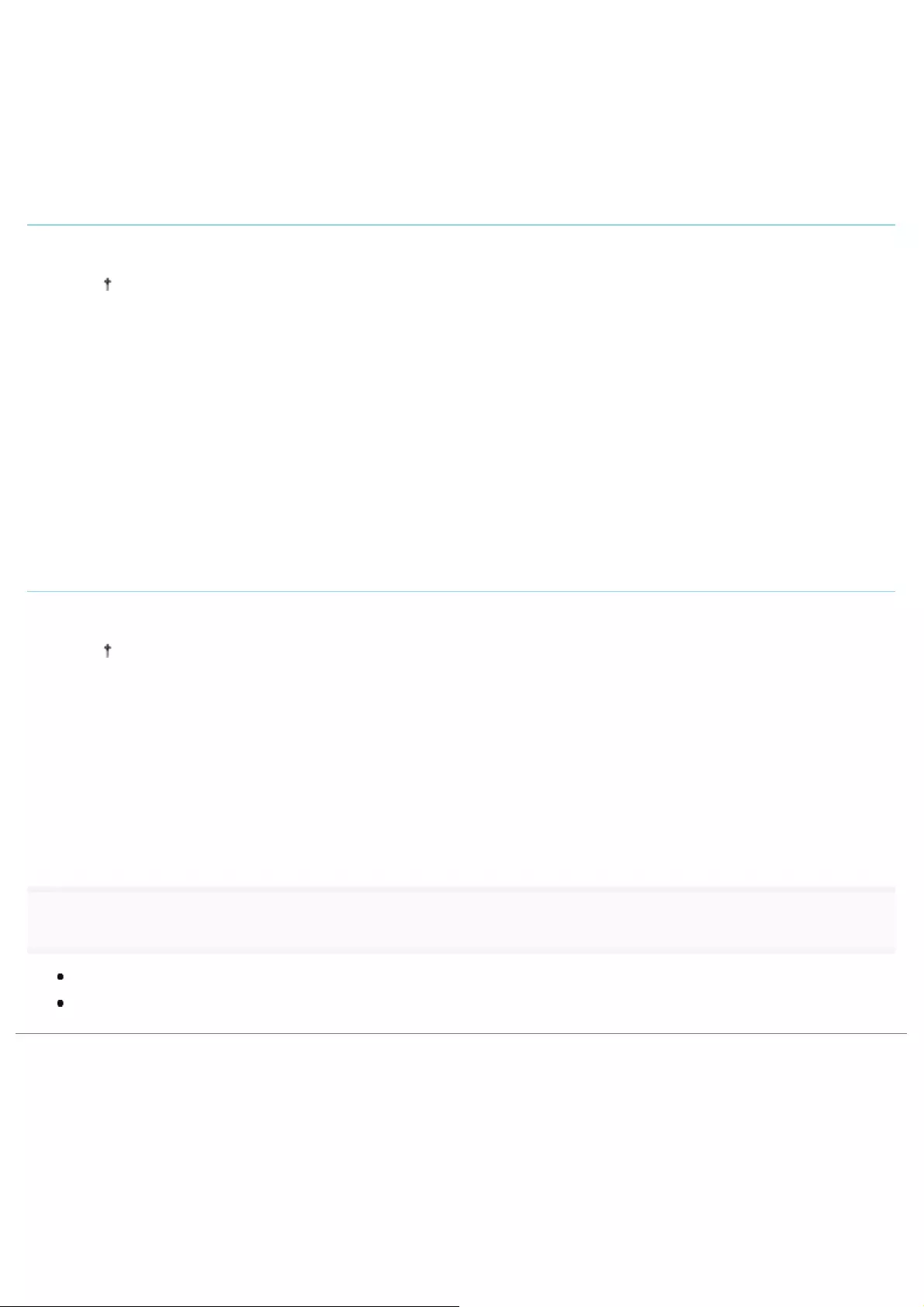
2.
3.
4. Enter an arbitrary print queue name in [Printer Name], and then enter the IP address or name of
the printer in [Print Server].
5. Select [OK].
6. Proceed to Step 4.
Example of When Using HP-UX
1. Run "SAM."
The "SAM" utility is supplied with an operating system. For more details, see the manual for the operating
system.
2. Select [Printers and Plotters].
3. Select [LP Spooler] from the [Printers and Plotters] menu.
4. Select [Printers and Plotter] from the [LP Spooler] menu.
5. Select [Add Remote Printer/Plotter] from the [Action] menu.
6. Enter an arbitrary print queue name in [Printer Name], and then enter the IP address or name of
the printer in [Remote System Name].
7. Enter "lp" in [Remote Printer Name].
8. Select [Remote Printer is on a BSD System].
9. Select [OK].
10. Proceed to Step 4.
Example of When Using IBM-AIX
1. Run "SMIT."
The "SMIT" utility is supplied with an operating system. For more details, see the manual for the operating
system.
2.
3. Select [Standard processing].
4. Enter an arbitrary print queue name in [remote queue name] and the IP address or name of the
printer in [Hostname of Remote Server].
5. Enter "lp" in [name of the queue] on the remote server.
6. Enter "BSD" in [type of print spooler] on the remote server.
7. Proceed to Step 4.
4
Enter the following commands and check if you can print.
Form: lp -d <the print queue name> <the name of the file to be printed>
Input Example: lp -d print_queue_name report
㻠㻤㻢㻌㻛㻌㻥㻥㻤
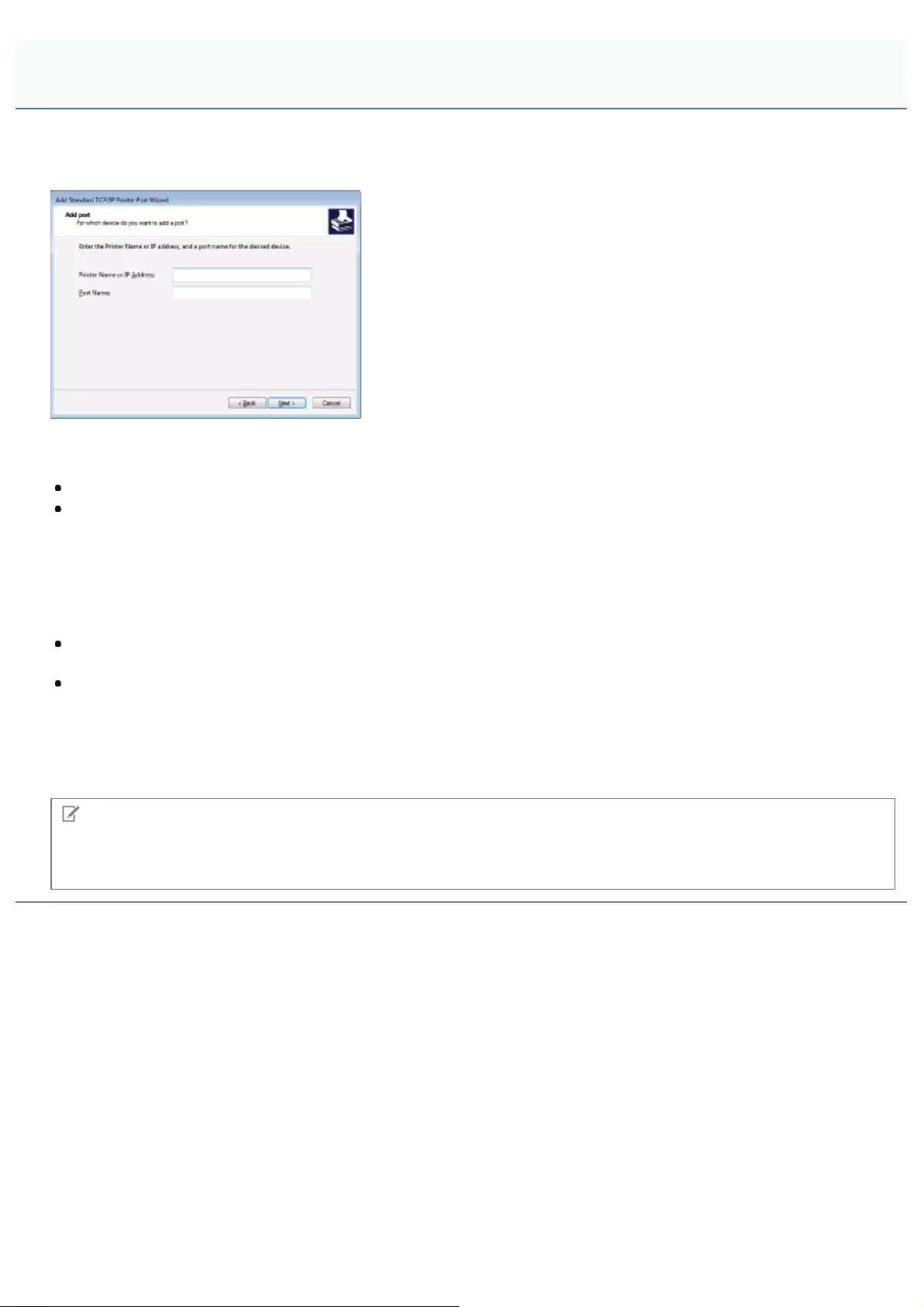
0258-07E
Depending on the method for setting the IP address of the printer, the value to be entered in [Printer Name or IP Address]
on the following screen displayed in the process of port setting varies.
If you want to set the IP address to be assigned to the printer manually (If you know the IP address
to use)
Enter the IP address in [Printer Name or IP Address].
If you want to set the IP address using the DNS server, specify the DNS settings for the printer. Then, enter the printer
name (the DNS name registered on the DNS server) within up to 78 characters in [Printer Name or IP Address].
For example, enter the printer name as "AAA.BBB.com" if you specified the host name as "AAA" and the domain name
as "BBB.com." However, enter "AAA.CCC.com" if you can obtain the domain name (CCC.com) simultaneously when
you obtain the IP address from DHCP and so on.
If you want to set the IP address to be assigned to the printer using DHCP and so on
Specify the settings such as the DHCP settings so that the same IP address is always assigned to the printer when you
start the printer. For more details, see "If you want to set the IP address to be assigned to the printer manually" above.
If a different IP address is assigned to the printer each time the printer starts, specify the DNS settings for the printer
first. Then, enter the printer name (the DNS name registered on the DNS server) within up to 78 characters in [Printer
Name or IP Address].
For example, enter the printer name as "AAA.BBB.com" if you specified the host name as "AAA" and the domain name
as "BBB.com." However, enter "AAA.CCC.com" if you can obtain the domain name (CCC.com) simultaneously when
you obtain the IP address from DHCP and so on.
NOTE
About the DNS settings
See "Configuring the Protocol Settings."
Values for Setting a Port
㻠㻤㻣㻌㻛㻌㻥㻥㻤

0258-07F
If You Are Using Windows Vista, 7 or Server 2008
If You Are Using Windows 2000, XP, or Server 2003
If You Are Using Windows Vista, 7 or Server 2008
IMPORTANT
When using IPPS printing
You need to obtain the public key for this printer and install it on Windows Vista, 7 or Server 2008.
For details on the procedure for obtaining the public key, see "Obtaining the Public Key for This Printer When Using SSL
Encrypted Communication."
NOTE
About the screenshots
This procedure is described using screenshots from Windows 7.
1
Confirm the setting for [Receive/Print Range Setting].
Make sure that the IP address of the computer on which the printer driver is installed is not restricted to print.
"Restricting the Users Who Can Print or Perform the Printer Settings"
IMPORTANT
If printing is restricted
You cannot install the printer driver.
If printing is restricted after the installation
If the IP address of the computer on which the printer driver is installed is restricted to perform printing in [Receive/Print
Range Setting], you cannot print from the computer.
2
Open the printer folder.
"Basic Operations/Various Information for Windows"
3
Click [Add a printer].
4
Click [Add a network, wireless or Bluetooth printer].
Connecting the Printer (IPP/IPPS)
㻠㻤㻤㻌㻛㻌㻥㻥㻤
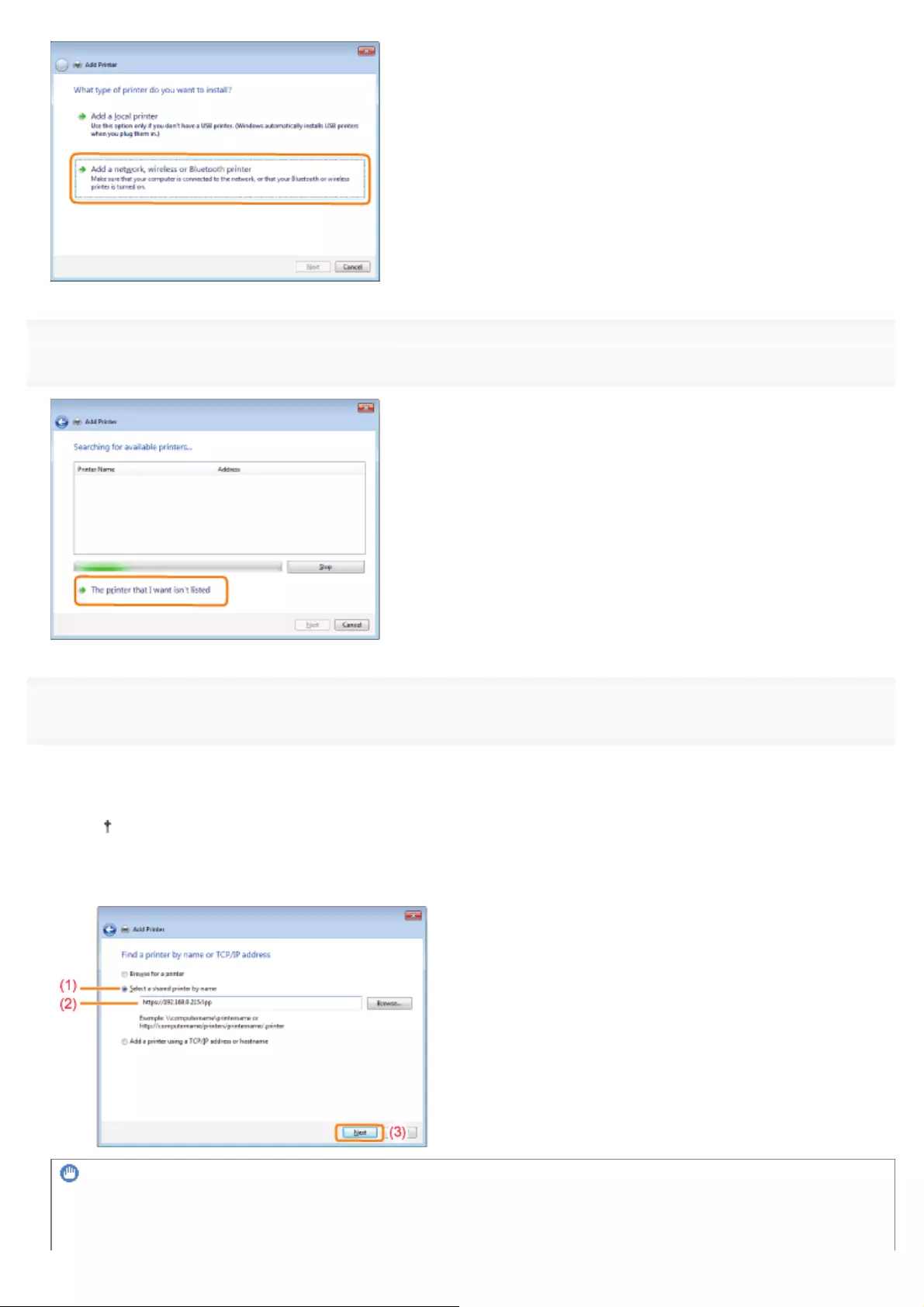
5
Click [The printer that I want isn't listed].
6
Perform the following procedure.
(1) Select [Select a shared printer by name].
(2) Enter "http://<the IP address or FQDN of the printer>/ipp."
When you want to perform IPPS printing using SSL encrypted communication, enter "https://<the IP address
or FQDN of the printer>/ipp."
(3) Click [Next].
IMPORTANT
About IPPS
IPPS can be used only when the SSL encrypted communication function is enabled.
㻠㻤㻥㻌㻛㻌㻥㻥㻤
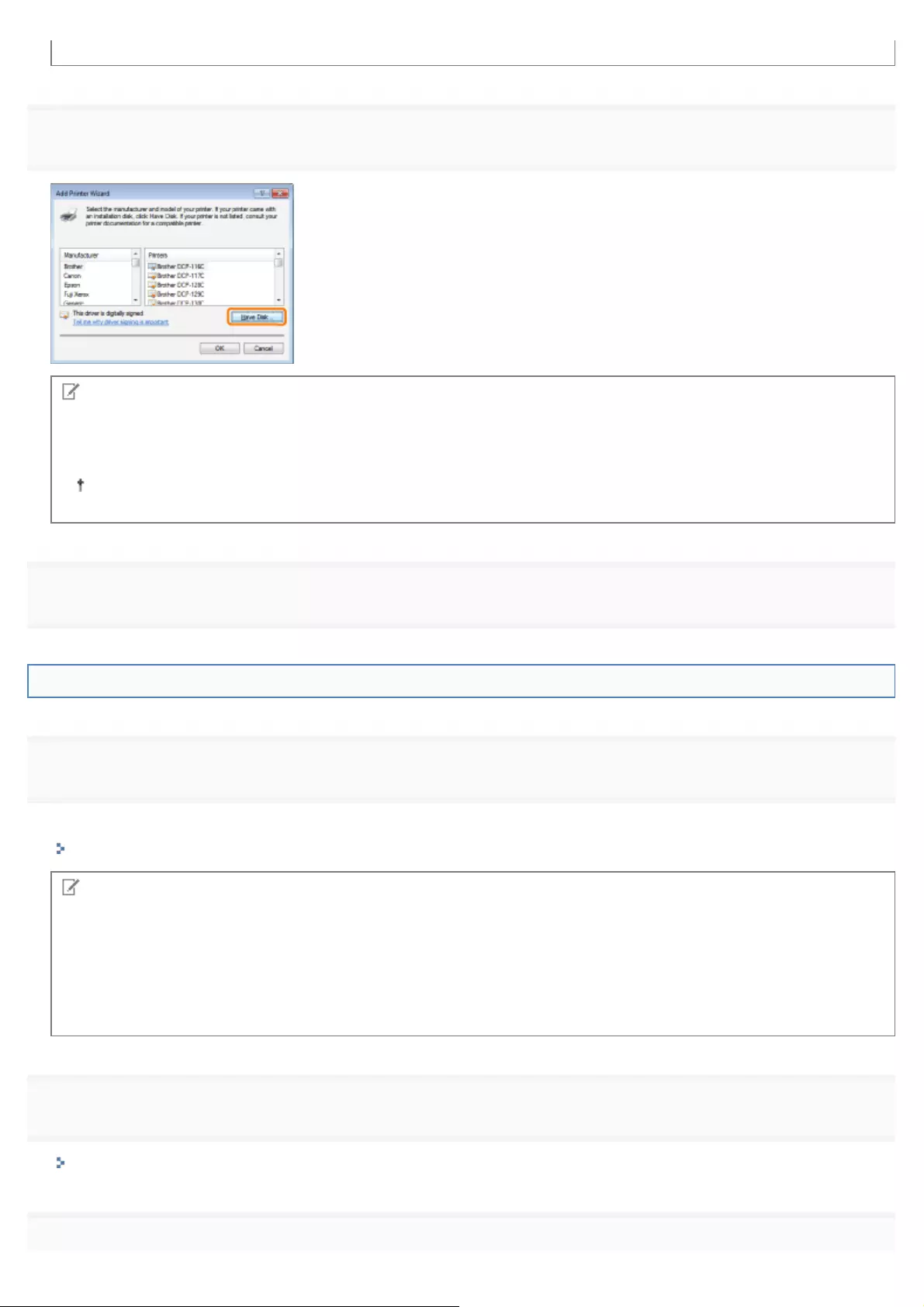
For details on the SSL encrypted communication function, see "Setting Keys and Certificates."
7
Click [Have Disk], then specify the folder that contains the printer driver from the CD-ROM drive.
NOTE
When you are using the IPP authentication function
If you are asked to enter the password, enter the user name and password, and then click [OK].
For details on the settings for the IPP authentication function, see "Configuring the Protocol Settings."
8
Follow the on-screen instructions to install the printer driver.
If You Are Using Windows 2000, XP, or Server 2003
1
Confirm the setting for [Receive/Print Range Setting].
Make sure that the IP address of the computer on which the printer driver is installed is not restricted to print.
"Restricting the Users Who Can Print or Perform the Printer Settings"
NOTE
If printing is restricted
You cannot install the printer driver.
If printing is restricted after the installation
If the IP address of the computer on which the printer driver is installed is restricted to perform printing in [Receive/Print
Range Setting], you cannot print from the computer.
2
Open the printer folder.
"Basic Operations/Various Information for Windows"
3
㻠㻥㻜㻌㻛㻌㻥㻥㻤
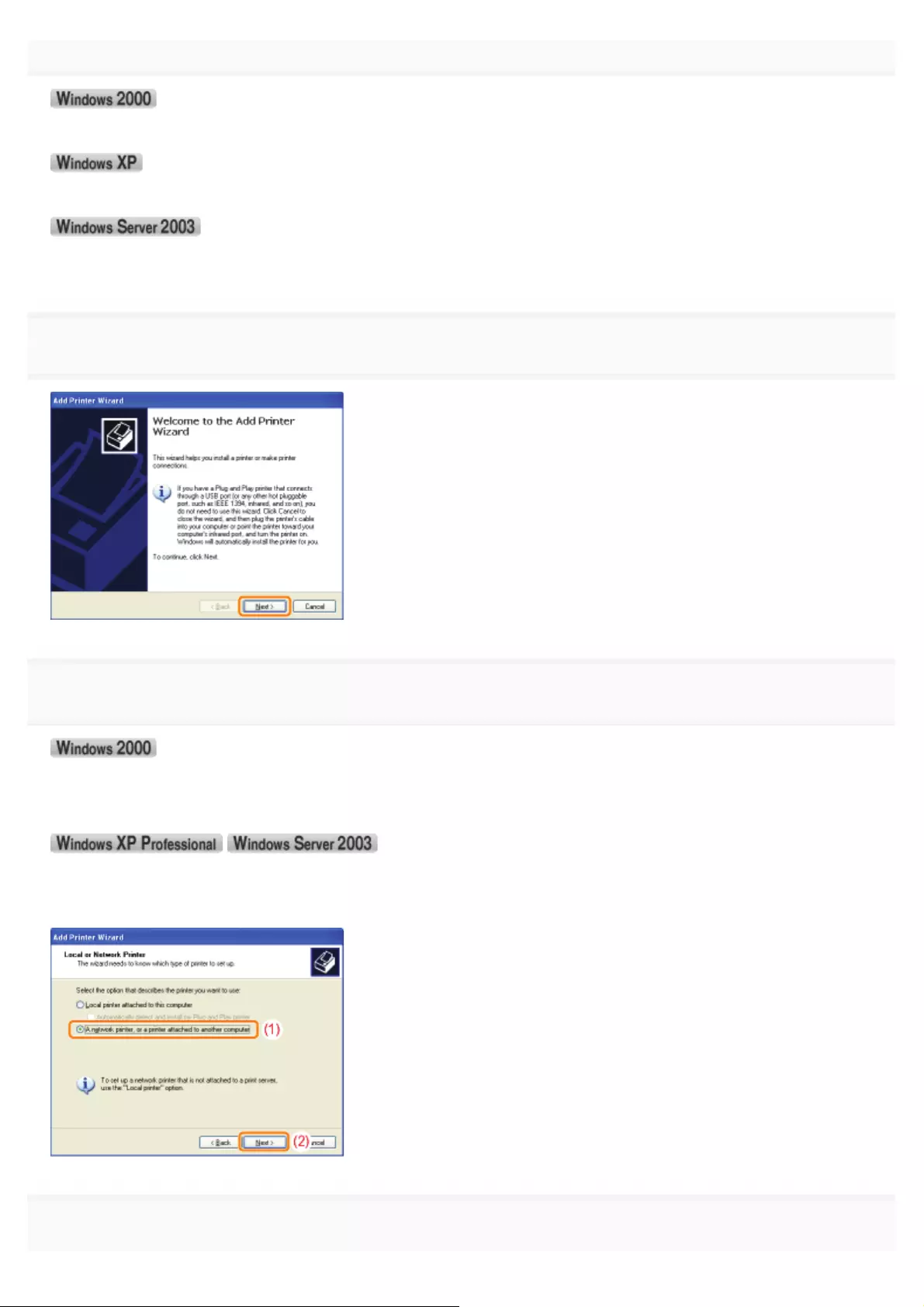
Display [Add Printer Wizard].
Double-click [Add Printer].
Click [Add a printer].
Double-click [Add Printer].
4
Click [Next].
5
Select a printer type.
(1) Select [Network printer].
(2) Click [Next].
(1) Select [A network printer, or a printer attached to another computer].
(2) Click [Next].
6
Select the printer to be connected.
㻠㻥㻝㻌㻛㻌㻥㻥㻤

Select [Connect to a printer on the Internet or on your intranet].
Select [Connect to a printer on the Internet or on a home or office network].
7
Enter [URL].
(1) Enter "http://<the IP address or FQDN of the printer>/ipp."
When you want to perform IPPS printing using SSL encrypted communication, enter "https://<the IP address
or FQDN of the printer>/ipp."
(2) Click [Next].
IMPORTANT
About IPPS
IPPS can be used only when the SSL encrypted communication function is enabled.
For details on the SSL encrypted communication function, see "Setting Keys and Certificates."
8
Click [Have Disk], then specify the folder that contains the printer driver from the CD-ROM drive.
㻠㻥㻞㻌㻛㻌㻥㻥㻤
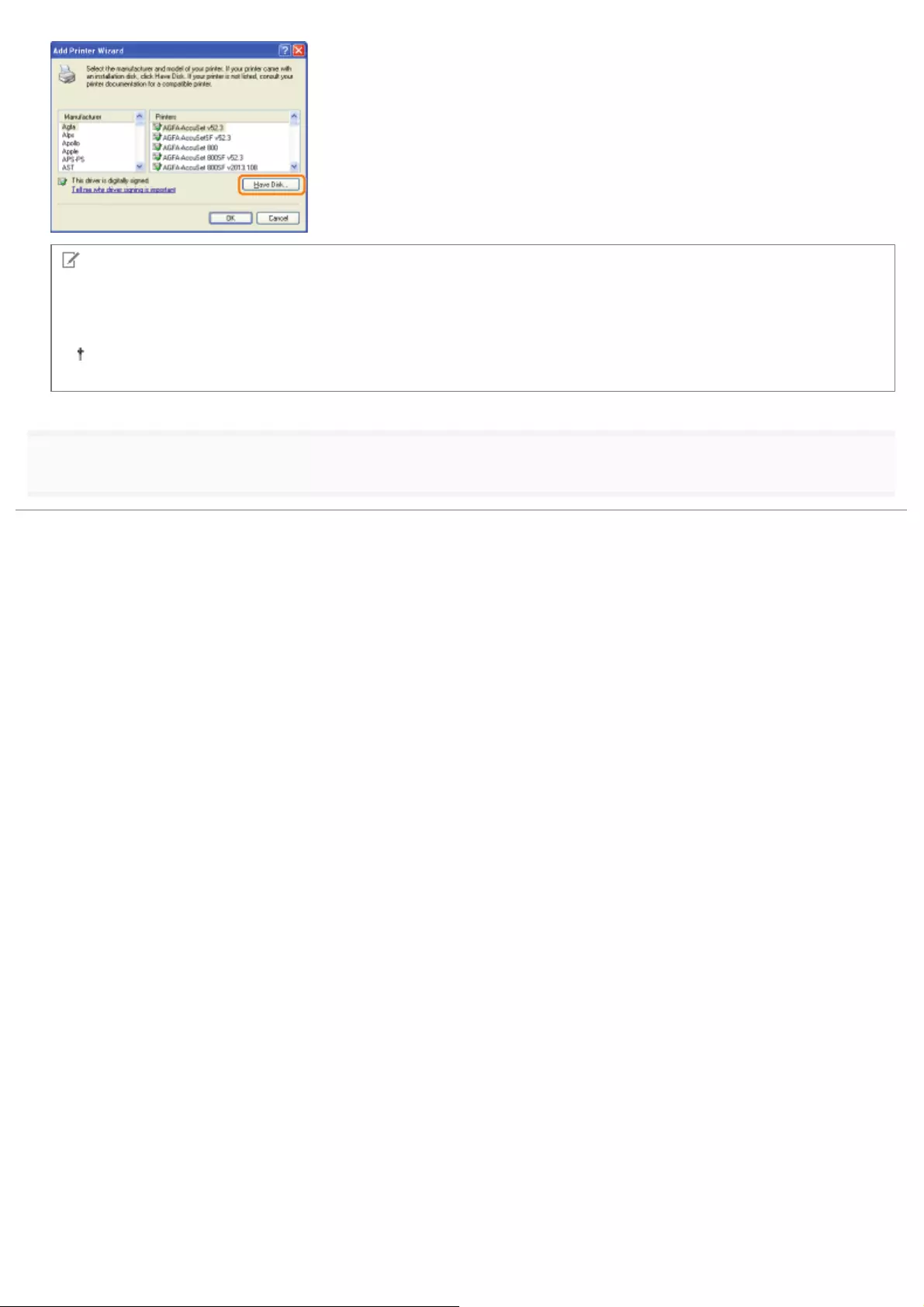
NOTE
When you are using the IPP authentication function
If you are asked to enter the password, enter the user name and password, and then click [OK].
For details on the settings for the IPP authentication function, see "Configuring the Protocol Settings."
9
Follow the on-screen instructions to install the printer driver.
㻠㻥㻟㻌㻛㻌㻥㻥㻤
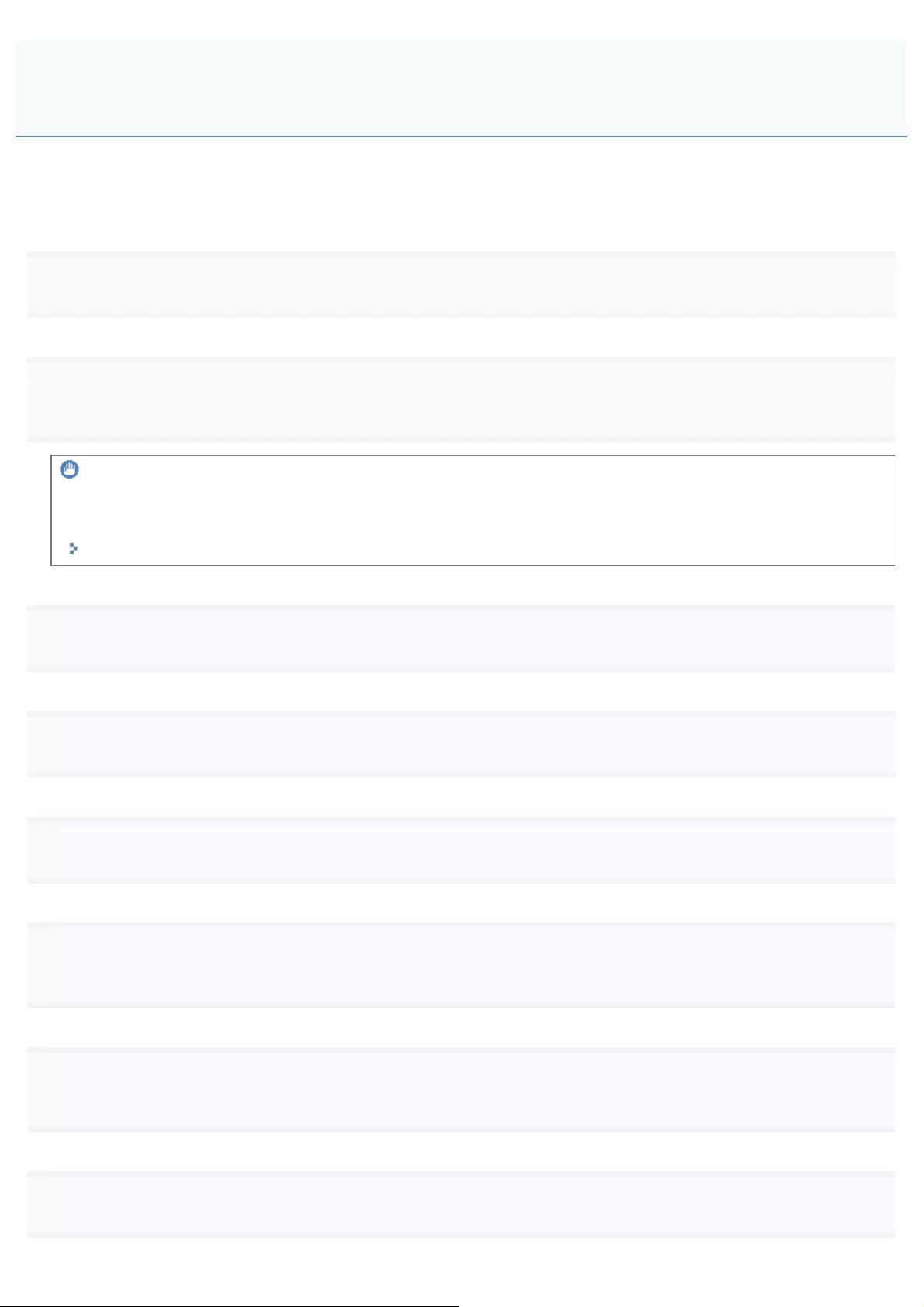
0258-07H
If you want to use IPPS printing, you need to obtain the public key for this printer using the following procedure and install
it on Windows Vista, 7 or Server 2008.
1
Start the Web browser.
2
Enter "https://<the IP address or FQDN of the printer>/" in the address field, and then press the
[ENTER] key on your keyboard.
IMPORTANT
Note on entry of the address
For the IP address or FQDN, enter the same character string as the [Common Name] of the certificate.
"Setting Keys and Certificates"
3
Click [Continue to this website (not recommended).] to display the Remote UI screen.
4
Double-click [Internet | Protected Mode] on the lower right of the Web browser.
5
Select [Trusted sites], then click [Sites].
6
[Close].
7
If the [Enable Protected Mode (requires restarting Internet Explorer)] check box is selected, clear the
check box.
8
Click [OK] to redisplay the Remote UI screen.
Obtaining the Public Key for This Printer When Using SSL Encrypted
Communication
㻠㻥㻠㻌㻛㻌㻥㻥㻤

9
Exit the Web browser once, then restart it.
10
Repeat Steps 1 to 3 to start the Remote UI, and then click [Continue to this website (not
recommended).].
11
Click [Certificate Error] on the right of the address entry field, then select [View certificates].
12
Click [Install Certificate] in the displayed dialog box to run the Certificate Import Wizard.
13
Click [Next], select [Place all certificates in the following store], and then click [Browse].
14
Select [Trusted Root Certification Authorities], then complete the Wizard following the instructions on
the screen.
15
If you cleared the [Enable Protected Mode (requires restarting Internet Explorer)] check box in Step
7, select the check box.
㻠㻥㻡㻌㻛㻌㻥㻥㻤
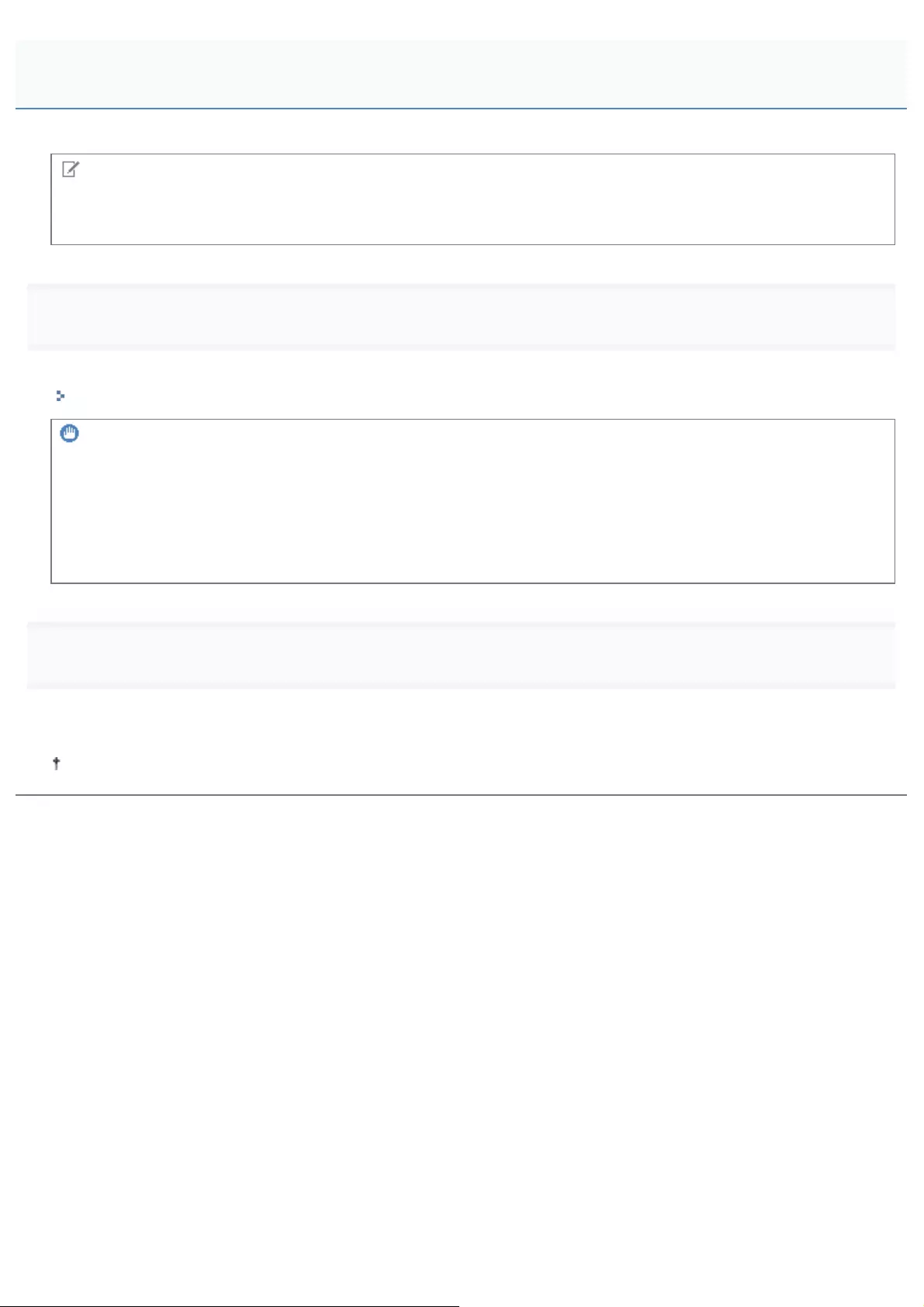
0258-07J
NOTE
If the confirmation dialog box appears during the procedure
Enter the user name and password. For more details, see the manual etc. supplied with the operating system.
1
Confirm the setting for [Receive/Print Range Setting].
Make sure that the IP address of the computer on which the printer driver is installed is not restricted to print.
"Restricting the Users Who Can Print or Perform the Printer Settings"
IMPORTANT
If printing is restricted
You cannot install the printer driver.
If printing is restricted after the installation
If the IP address of the computer on which the printer driver is installed is restricted to perform printing in [Receive/Print
Range Setting], you cannot print from the computer.
2
Install the printer driver.
Following the procedure for when you are using a WSD network environment in "Printer Driver Installation Guide", install
the printer driver.
For details on the procedure for viewing "Printer Driver Installation Guide", see "Installation."
Connecting the Printer (WSD)
㻠㻥㻢㻌㻛㻌㻥㻥㻤
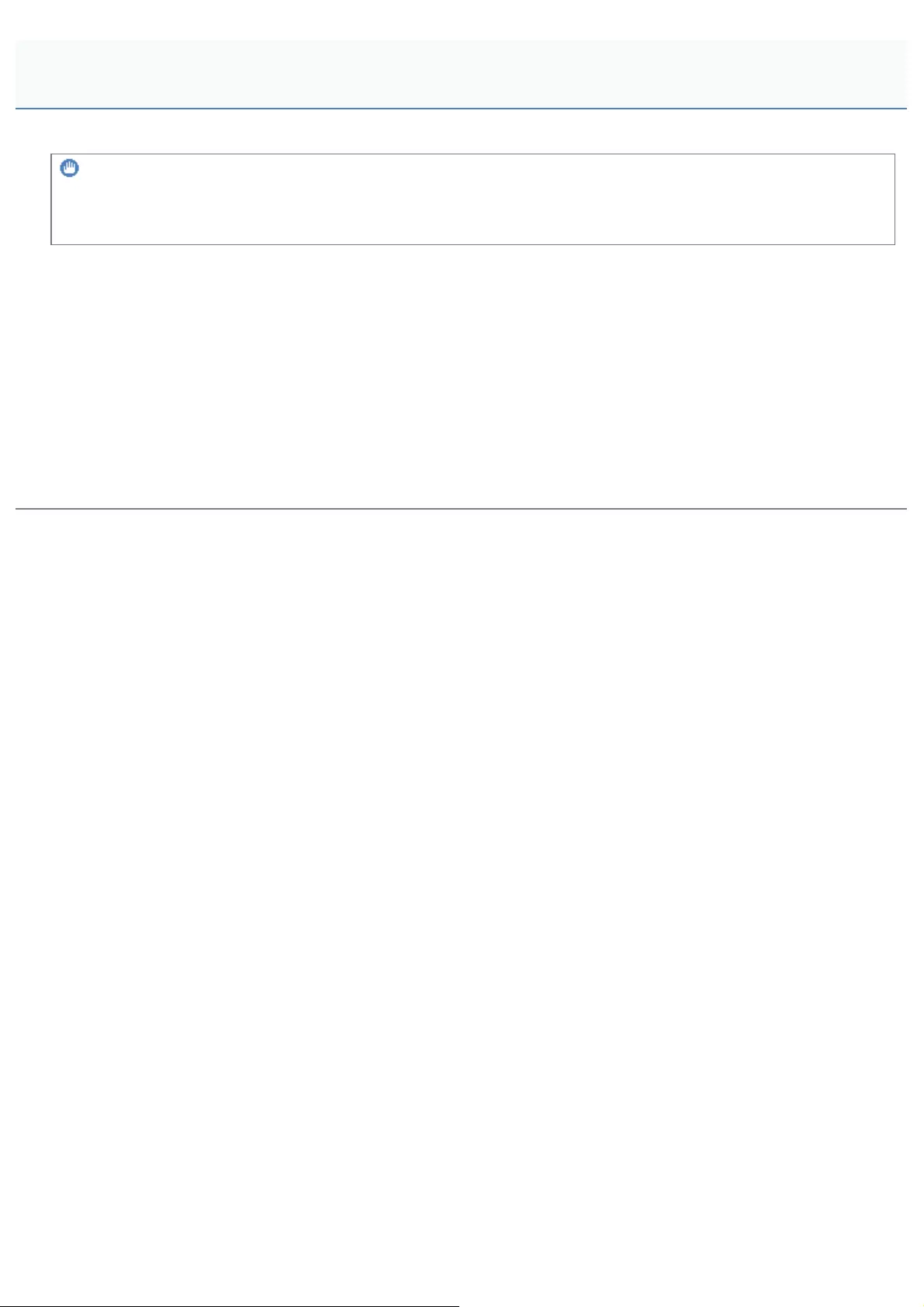
0258-07L
IMPORTANT
Configuring a Computer that Performs Printing
After completing the NetWare network settings, configure each computer to be used for printing.
(1) Connecting to an NetWare Network
Install NetWare client software on all the computers that perform printing, and then log in to the NetWare server or to
the tree.
For details on the NetWare Network connection, see the instruction manual for NetWare or the operating systems.
(2) Connecting the Printer
Install the printer driver using the procedure for installing the printer driver for a local area connection or network
environment in "Printer Driver Installation Guide."
When you install the printer driver, select [Network printer] for the printer connection, and then select the print queue
created in "Configuring NetWare."
If a screen for selecting a port appears during the installation, select [Network], and then click [Settings].
From the list, select the print queue created in "Configuring NetWare."
Attention (NetWare Network Settings)
㻠㻥㻤㻌㻛㻌㻥㻥㻤

0258-07R
To perform printing using a NetWare network, you need to configure the print service such as the print server and queue
and the printer protocols.
IMPORTANT
About the print service settings
When specifying the print service settings using NetSpot Device Installer or NetWare Administrator, Novell Client (a
NetWare client from Novell, Inc.) needs to be installed as a client software on the computer on which NetWare
Administrator will run.
Types of the Print Service
Before configuring the print service, select the type of the print service referring to the following descriptions.
NOTE
About describing the print service in this manual
Usually, select the print service of NDS for NetWare 4.x or later and the print service in Bindery Mode for NetWare 3.x.
This manual does not describe the other settings.
About NDPS
You can also use NDPS as the print service on NetWare 5.x or later. When using NDPS, use Novell Printer Gateway
supplied with NetWare as the gateway. This manual does not describe the procedure for setting NDPS. For the setting
procedure, see the instruction manual of NetWare.
NDS (Novell Directory Services) and Bindery Mode
This printer supports both NDS and Bindery Mode. Select the appropriate mode for your network environment. If you
are using NetWare 3.x, you can use only Bindery Mode.
Queue Server Mode and Remote Printer Mode
This printer supports both the Queue server mode and Remote Printer mode.
Queue Server Mode
When using Queue Server Mode, you do not need any other hardware or software for the print server because
this printer is provided with all the functions of the print server.
NDS Queue Server Mode (NDS PServer) uses a NDS print server for printing. Bindery Queue Server Mode
(Bindery PServer) uses a Bindery print server for printing. Queue Server Mode requires one NetWare user license
per printer.
Remote Printer Mode
In Remote Printer Mode, this printer is controlled by a NetWare print server. Therefore, you need a NetWare print
server other than this printer. NDS Remote Printer Mode (NPrinter) uses a NDS print server for printing. Bindery
Remote Printer Mode (RPrinter) uses a Bindery print server for printing.
Configuring NetWare
If there is any operating system that supports NetSpot Device Installer on the network, configure the NetWare print server
using NetSpot Device Installer.
If there is no operating system that supports NetSpot Device Installer on the network, configure the NetWare print server
using NetWare Administrator or PCONSOLE.
Settings Using NetSpot Device Installer
For details on the procedures for installing or using NetSpot Device Installer, see the Readme file in the following folder in
Printer Driver Software CD-ROM.
Configuring NetWare
㻠㻥㻥㻌㻛㻌㻥㻥㻤
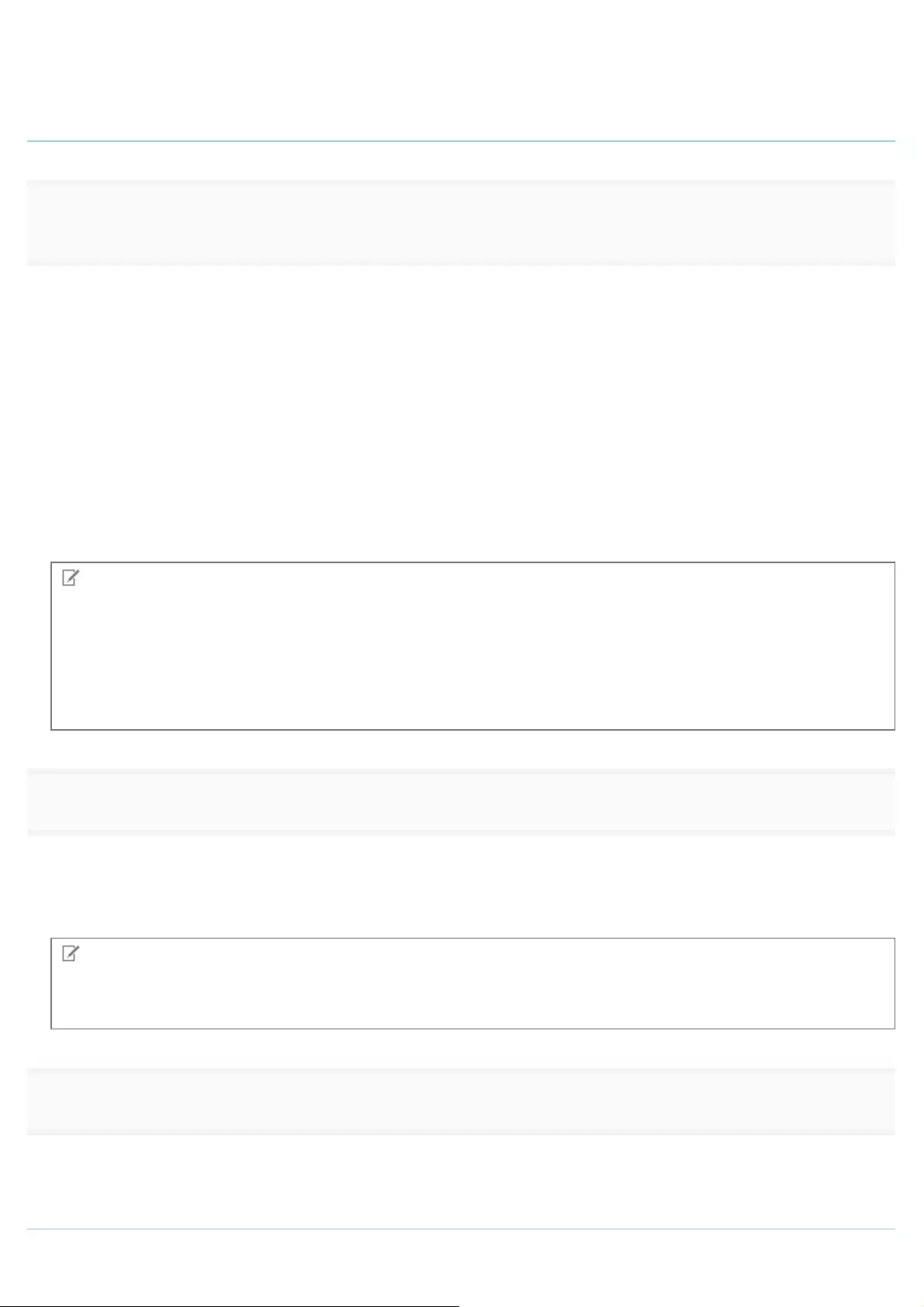
\NetSpot_Device_Installer\usa
Settings Using NetWare Administrator (When Using the Printer in NDS Queue Server Mode/NDS
Remote Printer Mode)
1
Log in to NetWare as "Admin" (or a user who has the equivalent permissions), and then run NetWare
Administrator.
1. Select [Print Services Quick Setup] from the [Tools] menu.
2. In [Print Server name], enter an arbitrary name. To use an existing print server, click the button on the right of [Print
Server name], and then select the print server from the list.
3. In [Name] for the printer, enter an arbitrary name.
4. When using the printer in Queue Server Mode, select [Other/Unknown] in [Type].
5. When using the printer in Remote Printer Mode, select [Parallel] in [Type], and then click [Communication]. Set [Port]
to [LPT1] and [Connection type] to [Manual load].
6. In [Name] for the print queue, enter an arbitrary name.
7. In [Volume], enter the volume object (the object that indicates the physical volume on the network) that creates the
queue. You can select the volume object from a list by clicking the button on the right.
8. Specify the other settings, then click [OK].
NOTE
About entering the print server name
Because the print server name is required for the protocol settings for the printer, note it down.
About Quick Setup
If you perform Quick Setup, the printer is allocated to the printer number "0."
When using the printer in Queue Server Mode, do not change the printer number from "0."
2
When using the printer in Remote Printer Mode, start the print server.
When using the NetWare file server as the print server, enter "LOAD PSERVER.NLM" in the file server, and then press the
[ENTER] key on your keyboard.
ĺThe settings for NetWare print service are now completed.
NOTE
About Queue Server Mode
When using the printer in Queue Server Mode, you do not need to specify these settings.
3
Next, configure the NetWare protocol settings for the printer.
For details on the procedure for configuring the NetWare protocol, see "Configuring the Protocol Settings."
Settings Using PCONSOLE (When Using the Printer in Bindery Queue Server Mode/Bindery
Remote Printer Mode)
㻡㻜㻜㻌㻛㻌㻥㻥㻤

1
Log in to NetWare as the Supervisor, then start PCONSOLE.
2
If you have not created a print server, create the print server.
1. Select [Print Server Information] from [Available Options], then press the [ENTER] key on your keyboard.
2. Press the [INSERT] key on your keyboard.
3. Enter the name of the print server to be created, then press the [ENTER] key on your keyboard.
4. Press the [ESC] key on your keyboard to go back to the [Available Options] list.
NOTE
About entering the print server name
Because the print server name is required for the protocol settings for the printer, note it down.
About using multiple NetWare servers
If you are using multiple NetWare servers and want to use this printer in Queue Server Mode, use the same print server
name for all the NetWare servers.
3
Create a queue, then assign the print server to the queue.
1. From [Available Options] select [Print Queue Information], then press the [ENTER] key on your keyboard.
2. Press the [INSERT] key on your keyboard.
3. Enter the name of the queue to be created, then press the [ENTER] key on your keyboard.
4. Select the name of the created queue, then press the [ENTER] key on your keyboard.
5. Select [Queue Servers], then press the [ENTER] key on your keyboard.
6. Press the [INSERT] key on your keyboard.
7. Select the print server created in Step 2, then press the [ENTER] key on your keyboard.
8. Press the [ESC] key on your keyboard repeatedly to go back up to [Available Options].
4
Assign the printer to the print server.
1. Select [Print Server Information] from [Available Options], then press the [ENTER] key on your keyboard.
2. Select the print server created in Step 2, then press the [ENTER] key on your keyboard.
3. Select [Print Server Configuration], then press the [ENTER] key on your keyboard.
4. Select [Printer Configuration], then press the [ENTER] key on your keyboard.
5. From the [Configured Printers] list, select the printer number, and then press the [ENTER] key on your keyboard.
When using the printer in Queue Server Mode, select the printer number "0."
When using the printer in Remote Printer Mode, you can select an arbitrary printer number.
5
Specify the name or type of the printer.
㻡㻜㻝㻌㻛㻌㻥㻥㻤
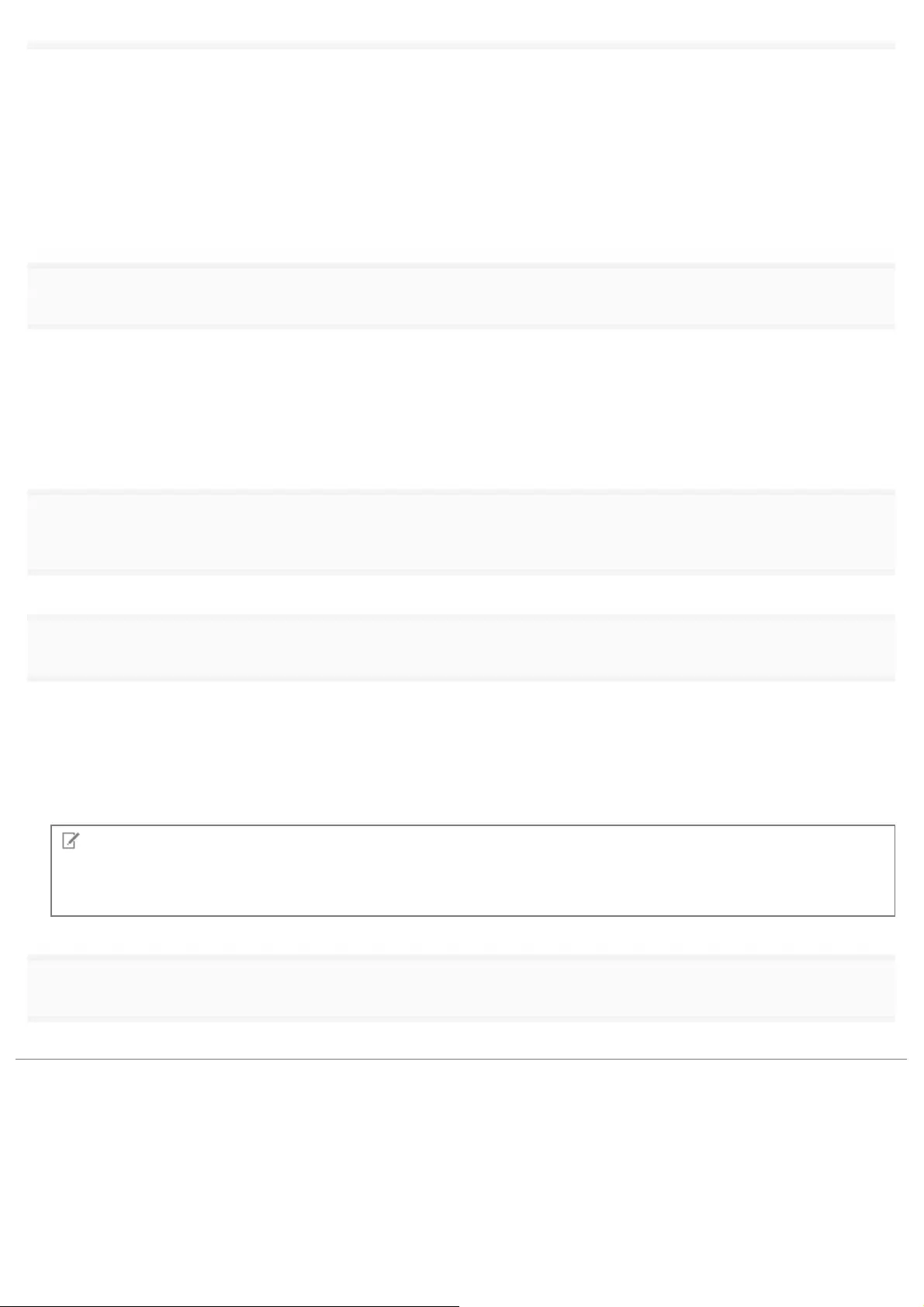
1. Enter an arbitrary printer name in [Name], then press the [ENTER] key on your keyboard.
2. When using the printer in Queue Server Mode, select [Defined] in [Type].
3. When using the printer in Remote Printer Mode, select [Remote Parallel] in [Type], and then set [Port] to [LPT1].
4. Specify the settings for the other options, then press the [ESC] key on your keyboard.
5. If the confirmation box appears, select [Yes], and then press the [ENTER] key on your keyboard.
6. Press the [ESC] key on your keyboard to go back to the [Print Server Configuration] list.
6
Assign a queue to the printer.
1. Select [Queues Serviced by Printer], then press the [ENTER] key on your keyboard.
2. Select the printer name specified in Step 5, then press the [ENTER] key on your keyboard.
3. Press the [INSERT] key on your keyboard.
4. Select the queue created in Step 3, then press the [ENTER] key on your keyboard.
7
Press the [ESC] key on your keyboard until the [Exit PCONSOLE] window appears, and then select
[Yes] to exit PCONSOLE.
8
When using the printer in Remote Printer Mode, start the print server.
1. When you are using a computer exclusively as the print server, enter "PSERVER.EXE" in the computer as the print
server name, and then press the [ENTER] key on your keyboard.
2. When using the NetWare file server as the print server, enter "LOAD PSERVER.NLM <the print server name>" in the
file server, and then press the [ENTER] key on your keyboard.
ĺThe settings for NetWare print service are now completed.
NOTE
About Queue Server Mode
When using the printer in Queue Server Mode, you do not need to specify these settings.
9
Next, configure the NetWare protocol settings for the printer.
For details on the procedure for configuring the NetWare protocol, see "Configuring the Protocol Settings."
㻡㻜㻞㻌㻛㻌㻥㻥㻤

0258-07S
This section describes the procedure for specifying the settings using the Remote UI.
In the Remote UI, you can specify the settings by accessing the printer from a Web browser via a network.
IMPORTANT
Before configuring the protocol settings
When configuring the protocol settings for the printer using the above software, the TCP/IP protocol must be able to
be used in your network environment.
Make sure that each setting option for TCP/IP is specified, the printer and computer are connected properly, and the
printer is ON.
NOTE
When specifying the settings using software other than the Remote UI
You can also specify the settings using the following software.
"FTP Client"
You can specify the settings by accessing the FTP server of the printer using Command Prompt.
The specifiable options vary depending on the software. See "Network Setting Items" and use software
appropriate to the network environment you are using or options that you want to specify.
1
Start the Remote UI, and then log in as Administrator.
"Starting the Remote UI"
2
Click [Settings/Registration].
Configuring the Protocol Settings
㻡㻜㻟㻌㻛㻌㻥㻥㻤

3
Select [Network] from the [Preferences] menu.
4
Click [NetWare Settings].
㻡㻜㻠㻌㻛㻌㻥㻥㻤
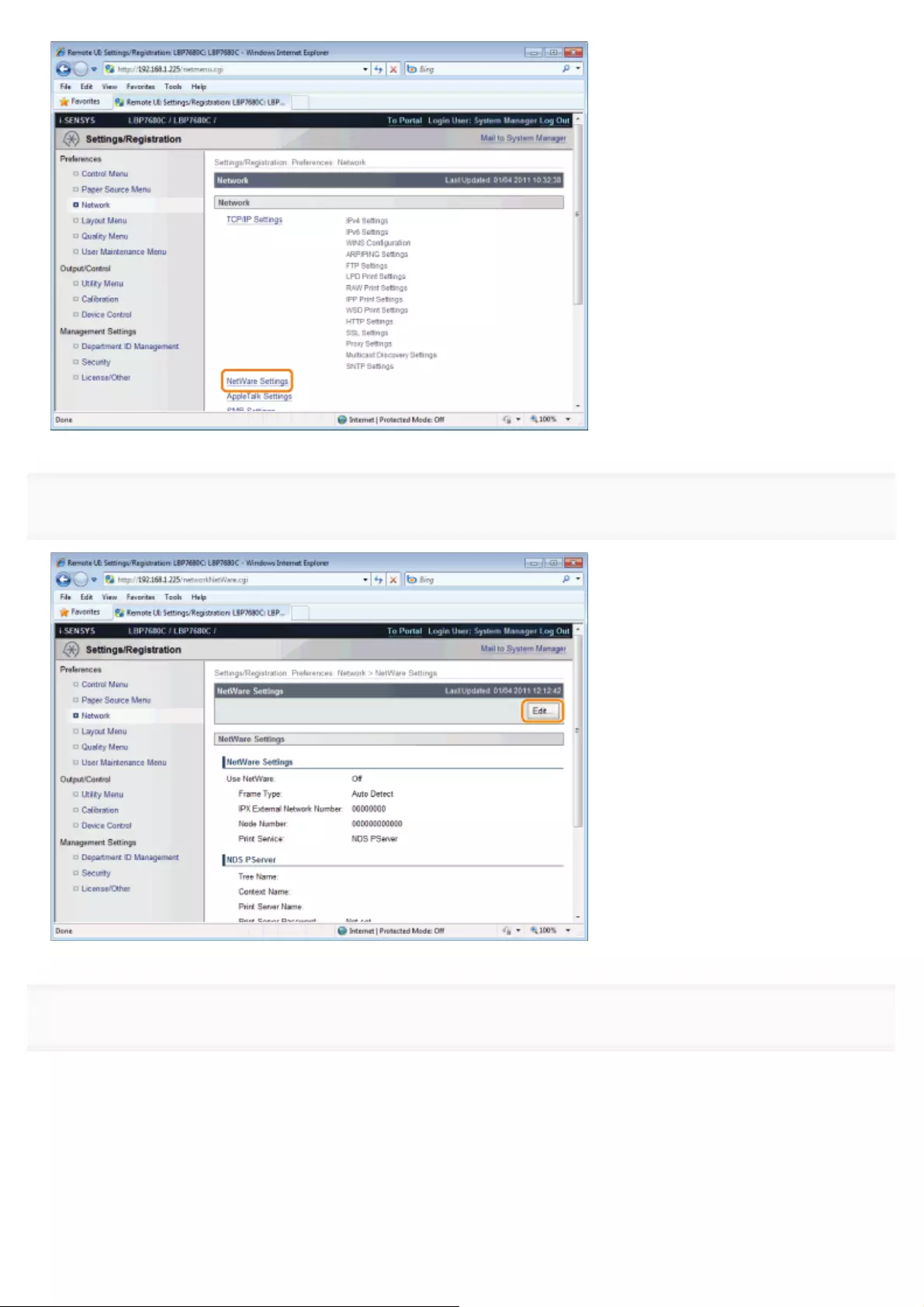
5
Click [Edit...].
6
Select the [Use NetWare] check box.
㻡㻜㻡㻌㻛㻌㻥㻥㻤
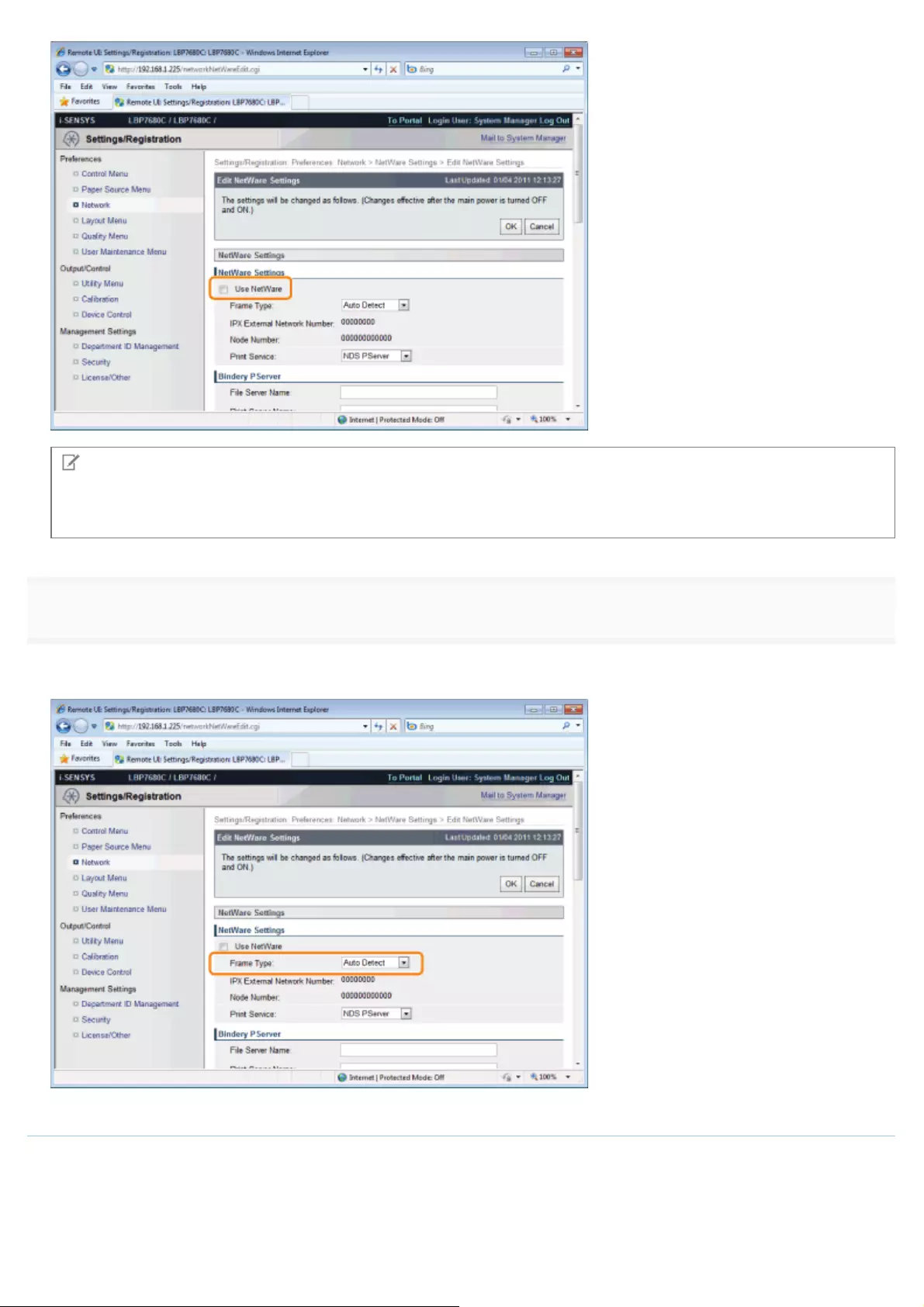
NOTE
When the [Use NetWare] check box is cleared
The printer is not detected on the NetWare network.
7
Set [Frame Type].
Select the frame type that is used by the system environment you are using from [Auto Detect], [Ethernet II], [Ethernet
802.2], [Ethernet 802.3] or [Ethernet SNAP].
When using Bindery PServer: Queue Server Mode (the print server of Bindery Mode)
1. Select [Bindery PServer] from [Print Service].
2. In [File Server Name], enter the file server name created in "Configuring NetWare."
3. In [Print Server Name], enter the print server name created in "Configuring NetWare."
4. In [Print Server Password], enter the password for the print server.
㻡㻜㻢㻌㻛㻌㻥㻥㻤
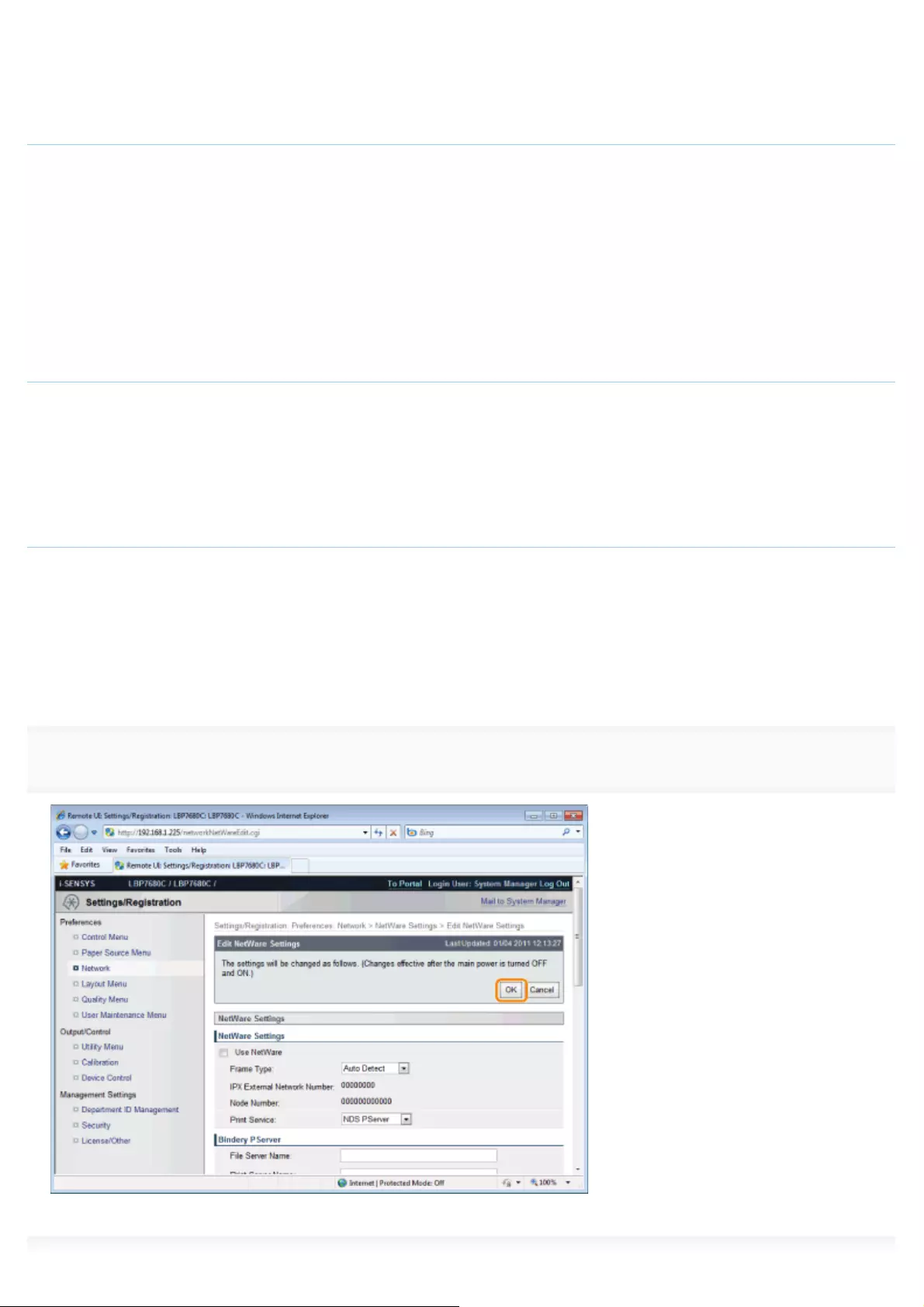
5. In [Printer Number], enter the same printer number as the one specified in "Configuring NetWare."
6. Specify the settings for [Service Mode], [Printer Form], [Polling Interval], and [Buffer Size] as needed.
When using NDS PServer: Queue Server Mode (the print server of NDS)
1. Select [NDS PServer] from [Print Service].
2. In [Tree Name] and [Context Name], enter the name of the tree to which the print server belongs and the context
name.
3. In [Print Server Name], enter the print server name created in "Configuring NetWare."
4. In [Print Server Password], enter the password for the print server.
5. In [Printer Number], enter the same printer number as the one specified in "Configuring NetWare."
6. Specify the settings for [Service Mode], [Printer Form], [Polling Interval], and [Buffer Size] as needed.
When using RPrinter: Remote Printer Mode (the print server of Bindery Mode)
1. Select [RPrinter] from [Print Service].
2. In [File Server Name], enter the file server name created in "Configuring NetWare."
3. In [Print Server Name], enter the print server name created in "Configuring NetWare."
4. In [Printer Number], enter the same printer number as the one specified in "Configuring NetWare."
When using NPrinter: Remote Printer Mode (the print server of NDS)
1. Select [NPrinter] from [Print Service].
2. In [Tree Name] and [Context Name], enter the name of the tree to which the print server belongs and the context
name.
3. In [Print Server Name], enter the print server name created in "Configuring NetWare."
4. In [Printer Number], enter the same printer number as the one specified in "Configuring NetWare."
8
Click [OK].
㻡㻜㻣㻌㻛㻌㻥㻥㻤
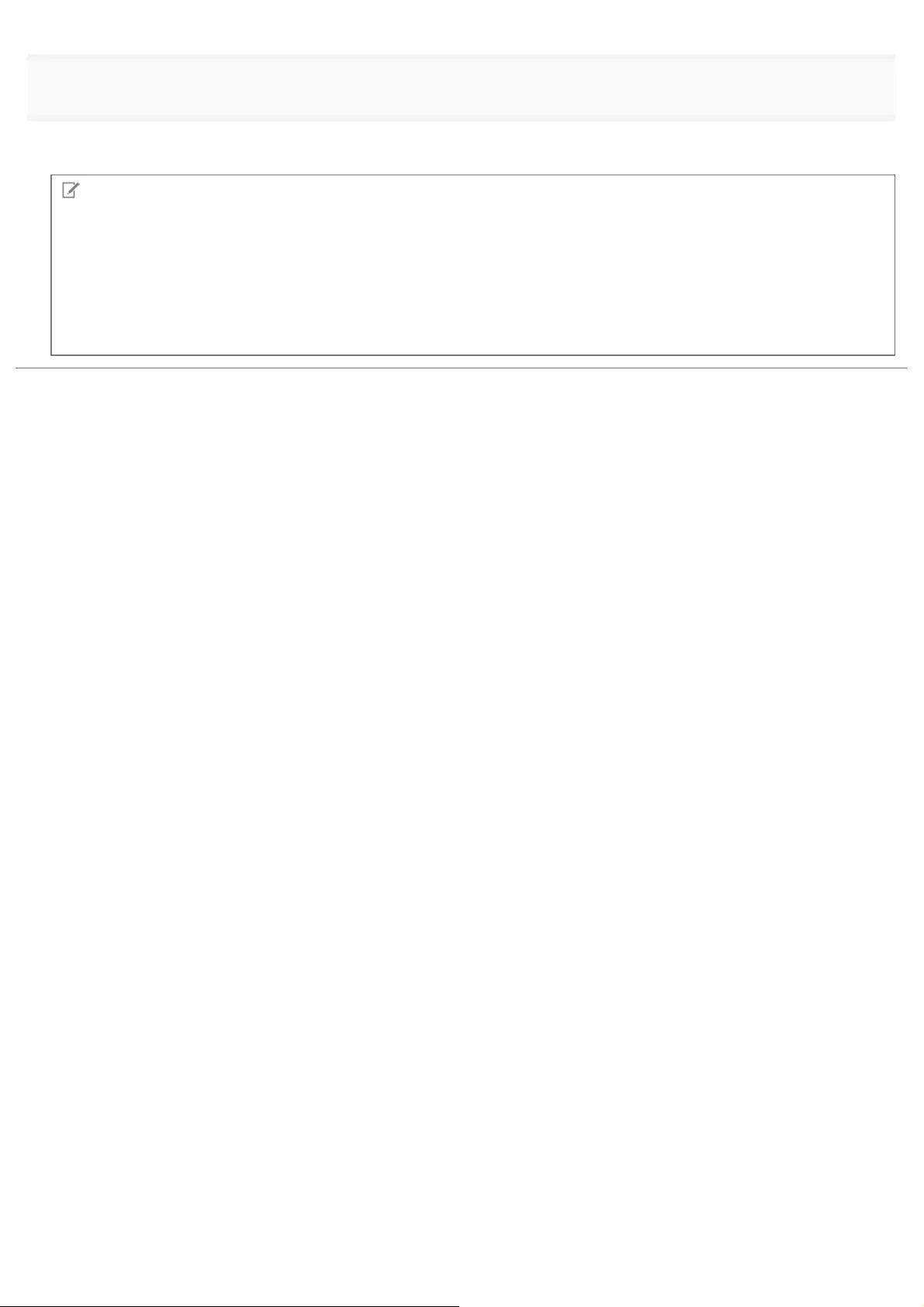
9
Perform a hard reset or restart the printer.
ĺAfter performing a hard reset or restarting the printer, the settings are effective.
NOTE
To perform a hard reset
You can perform a hard reset using the following procedure.
1. Click [Settings/Registration].
2. Select [Device Control] from the [Output/Control] menu.
3. Select [Hard Reset], then click [Execute].
㻡㻜㻤㻌㻛㻌㻥㻥㻤
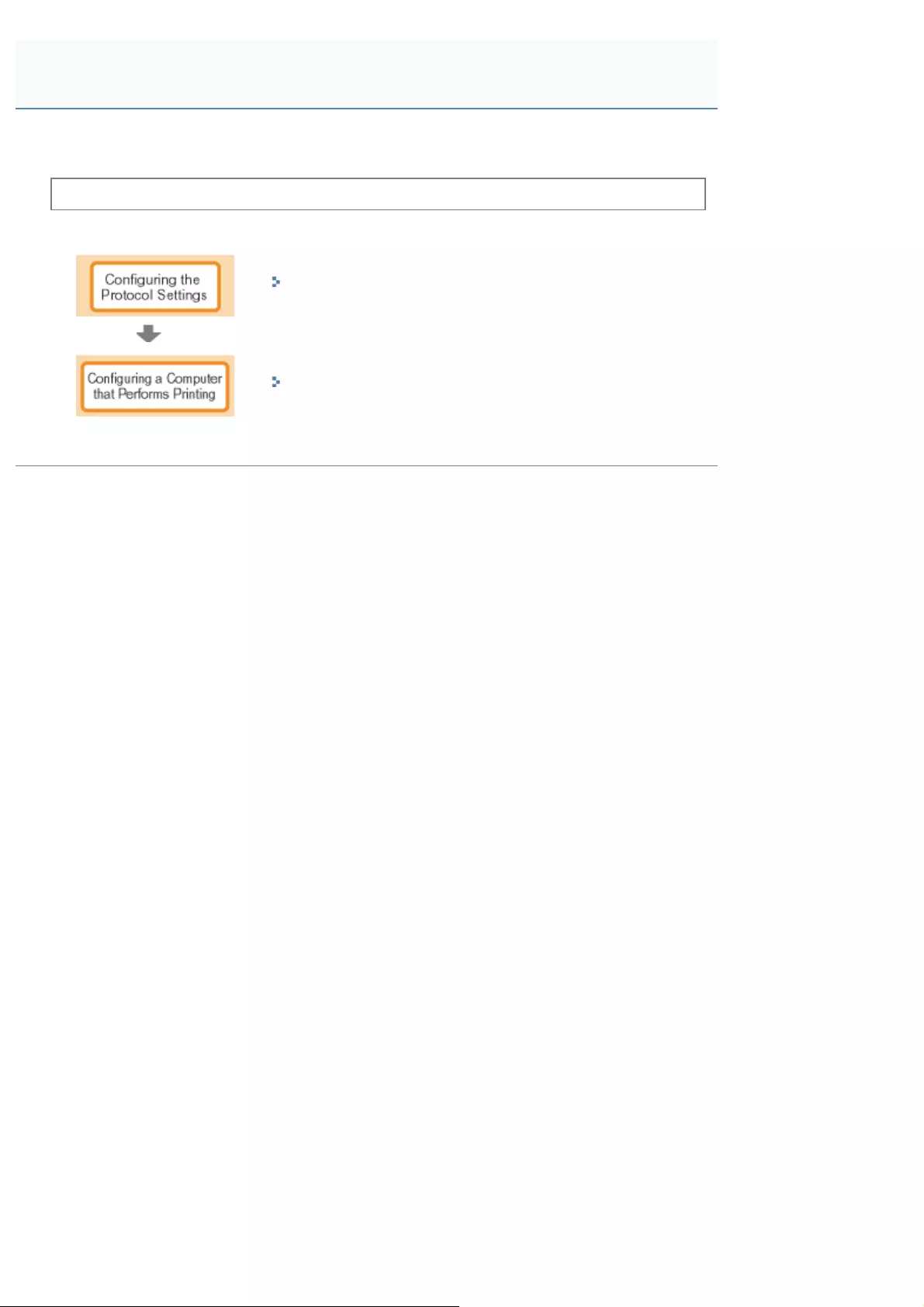
0258-0KF
The requisite tasks to use the printer in the SMB network are as follows.
Before starting SMB network settings, see "Attention (SMB Network Settings)."
Configuring the Protocol Settings
Configuring a Computer that Performs Printing
Network Settings for the Printer (SMB) (LBP7680Cx Only)
㻡㻜㻥㻌㻛㻌㻥㻥㻤

0258-0KH
IMPORTANT
Configuring a Computer that Performs Printing
After completing the protocol settings for the printer, configure each computer to be used for printing.
About the protocol used in an SMB network
An SMB network supports only NetBIOS over TCP/IP, but not NetBEUI.
You need to install TCP/IP client software on all the computers to be used for printing to make them able to use a
TCP/IP network. For more details, see the instruction manual for the operating system.
Attention (SMB Network Settings)
㻡㻝㻜㻌㻛㻌㻥㻥㻤
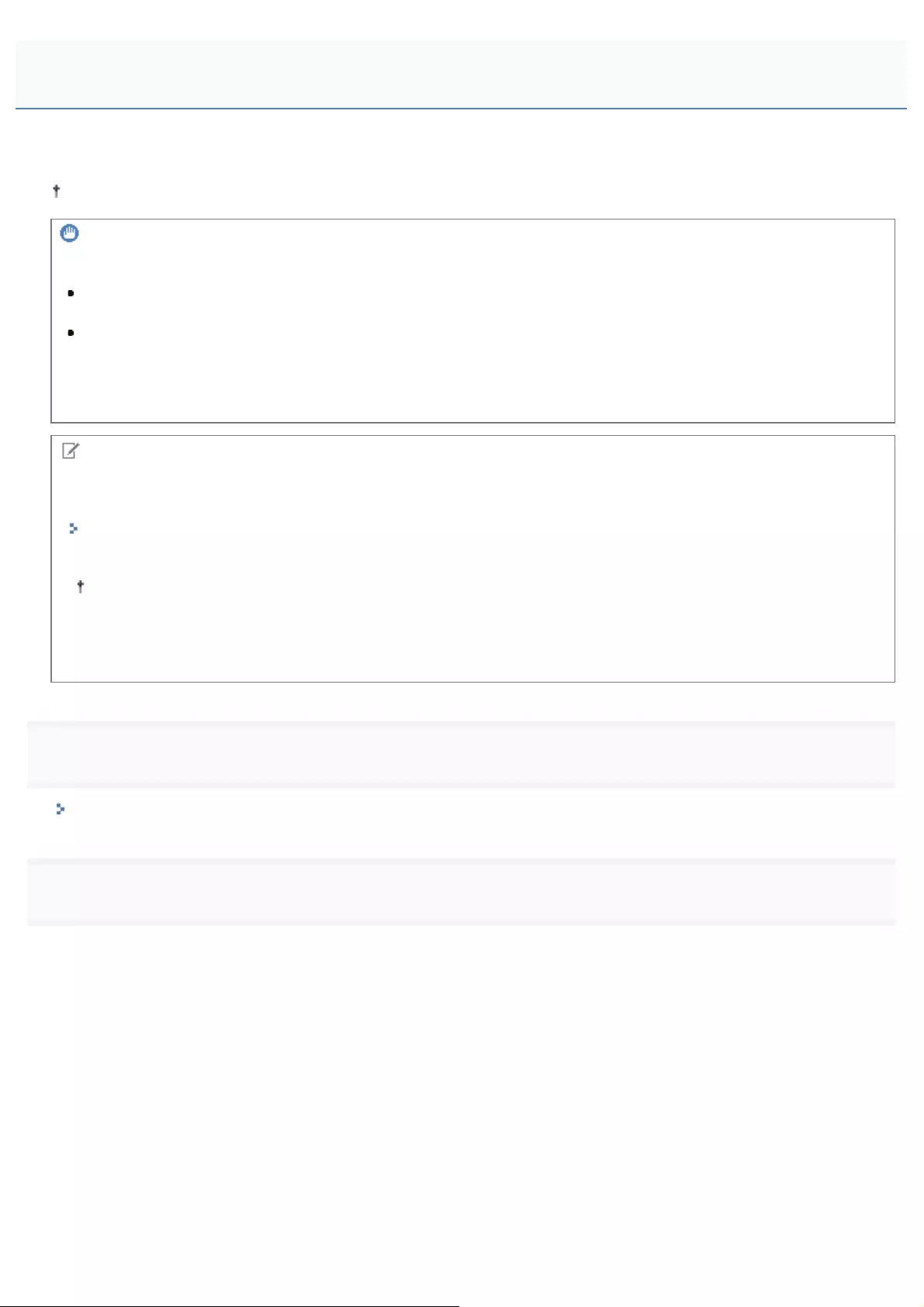
0258-0KJ
This section describes the procedure for specifying the settings using the Remote UI.
In the Remote UI, you can specify the settings by accessing the printer from a Web browser via a network.
IMPORTANT
Before configuring the protocol settings
When configuring the protocol settings for the printer using the above software, the TCP/IP protocol must be able to
be used in your network environment.
Make sure that each setting option for TCP/IP is specified, the printer and computer are connected properly, and the
printer is ON.
About SMB printing
You can use SMB printing only when an SD card is installed.
NOTE
When specifying the settings using software other than the Remote UI
You can also specify the settings using the following software.
"FTP Client"
You can specify the settings by accessing the FTP server of the printer using Command Prompt.
The specifiable options vary depending on the software. See "Network Setting Items" and use software
appropriate to the network environment you are using or options that you want to specify.
About the screenshots
This procedure is described using screenshots from Windows 7.
1
Start the Remote UI, and then log in as Administrator.
"Starting the Remote UI"
2
Click [Settings/Registration].
Configuring the Protocol Settings
㻡㻝㻝㻌㻛㻌㻥㻥㻤
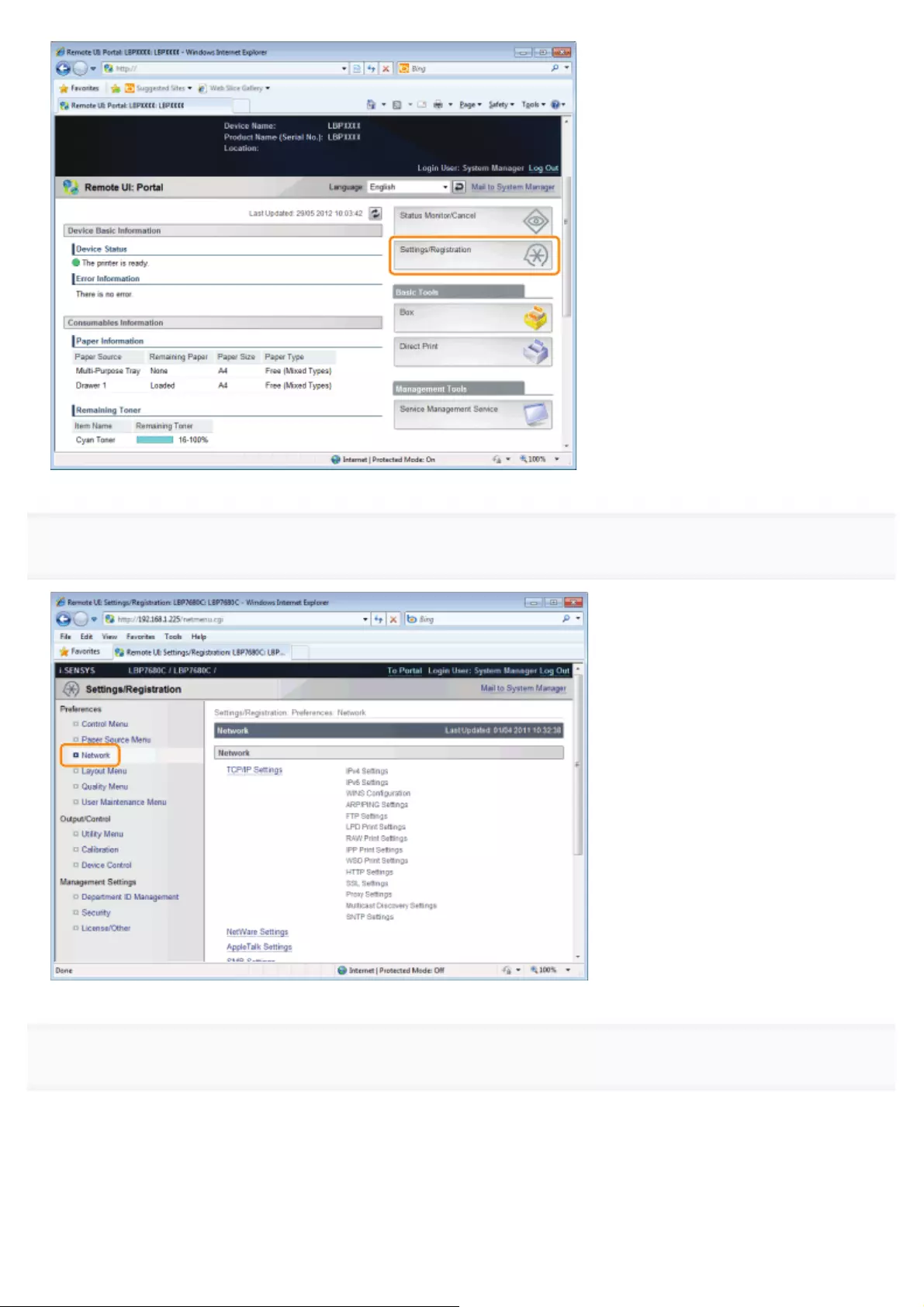
3
Select [Network] from the [Preferences] menu.
4
Click [SMB Settings].
㻡㻝㻞㻌㻛㻌㻥㻥㻤
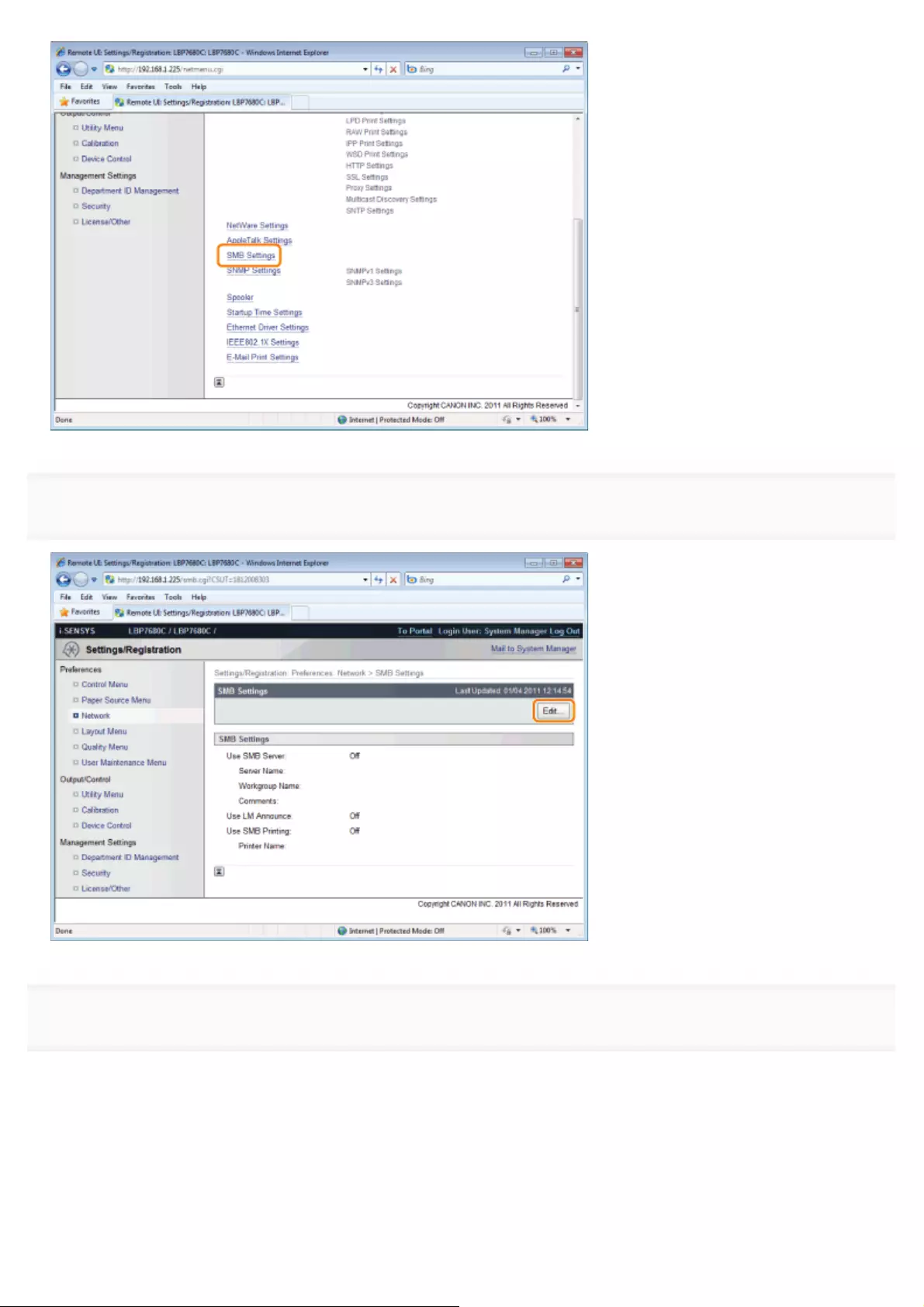
5
Click [Edit...].
6
Select the [Use SMB Server] check box.
㻡㻝㻟㻌㻛㻌㻥㻥㻤
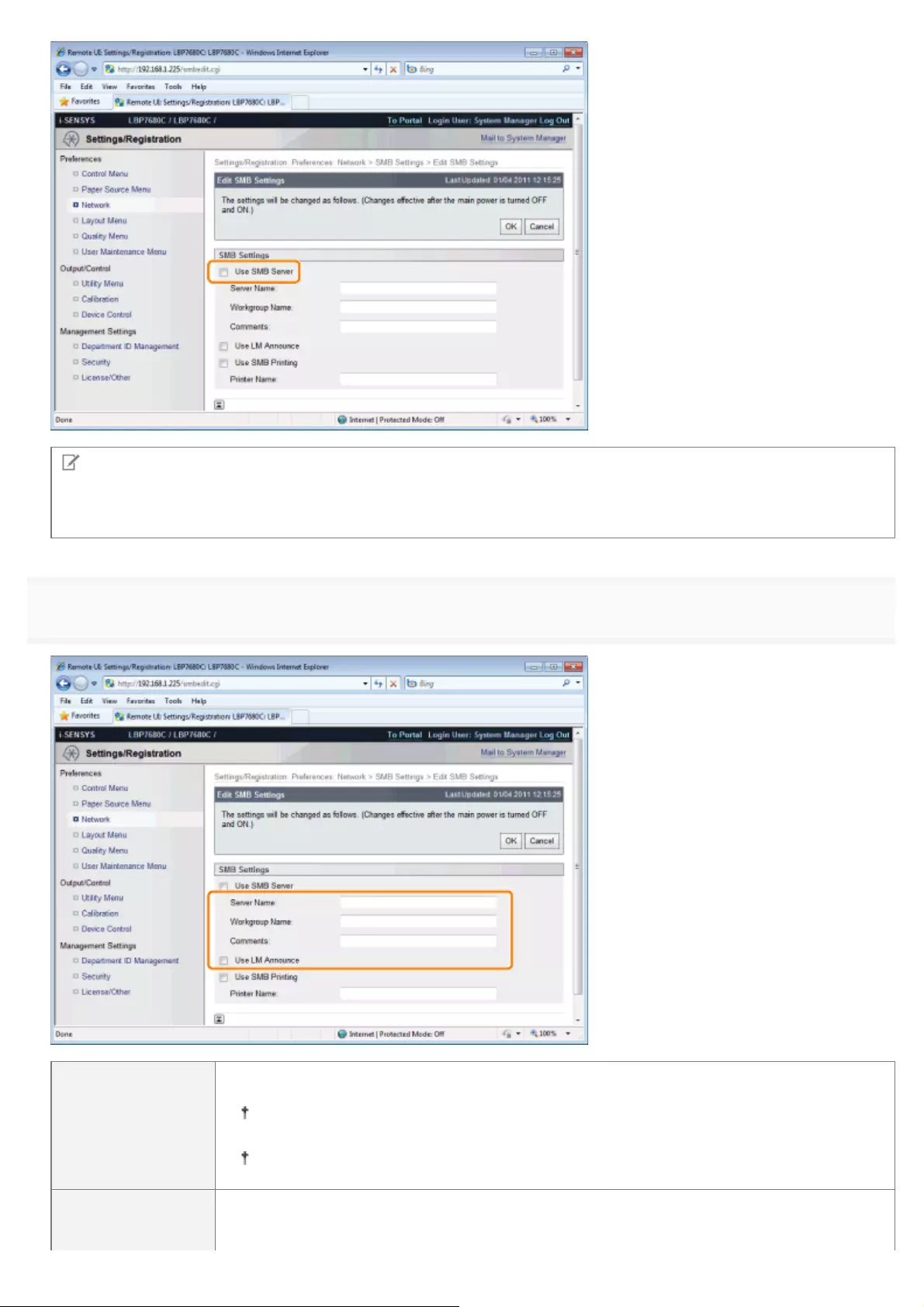
NOTE
When the [Use SMB Server] check box is cleared
The printer is not detected on the SMB network.
7
Specify the settings for SMB.
[Server Name]
Enter the computer name to which the printer belongs. Up to 15 characters can be entered.
Enter a name that does not overlap with the names used on the other computers or the
printers on the network.
You cannot enter a space between characters.
Enter the name of the work group to which the printer belongs. Up to 15 characters can be
entered.
㻡㻝㻠㻌㻛㻌㻥㻥㻤
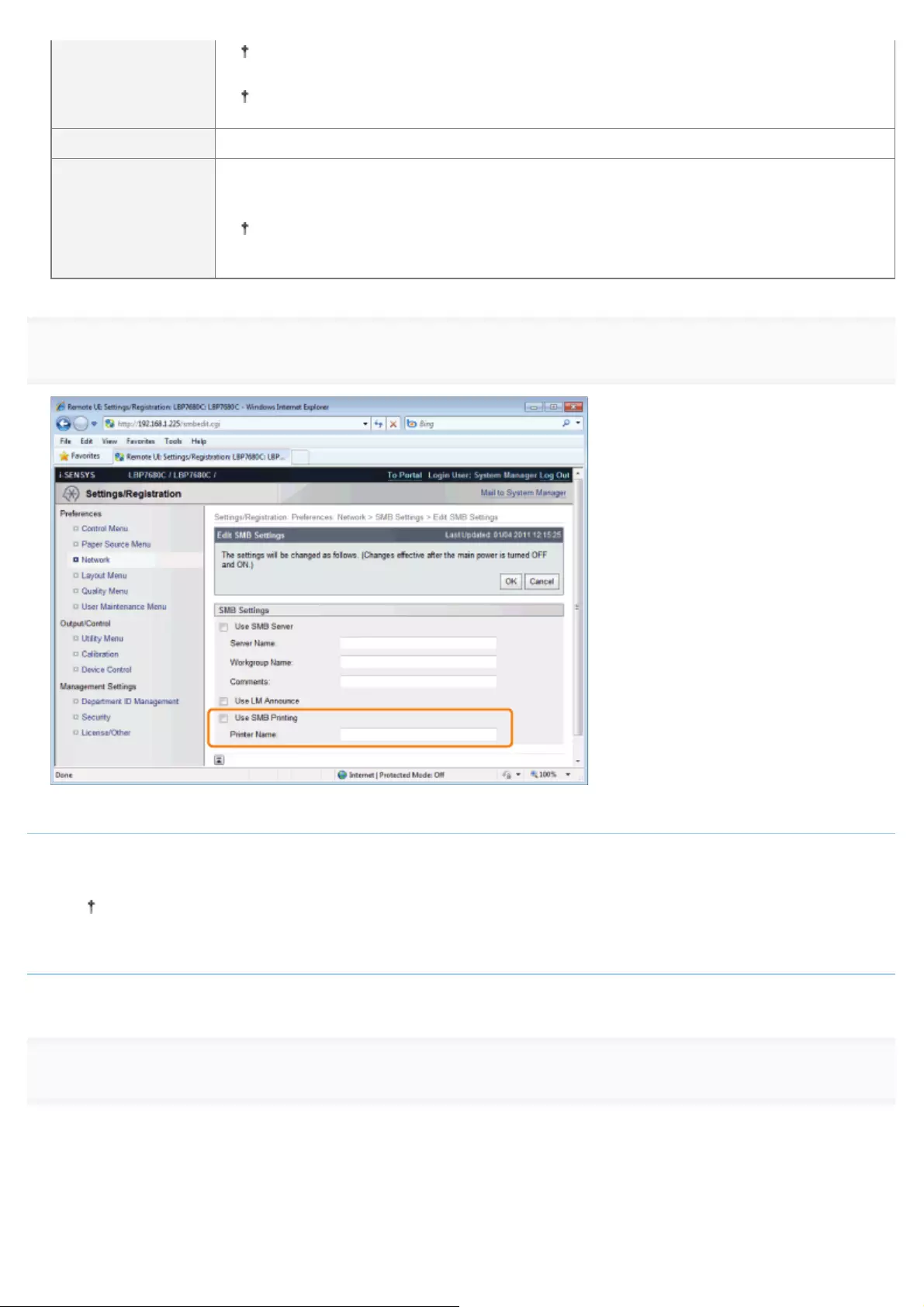
[Workgroup Name] If there is no workgroup in your system environment, create a workgroup on Windows,
and then enter the workgroup name.
You cannot enter a space between characters.
[Comments] If necessary, enter comments about the printer. You can enter up to 48 characters.
[Use LM Announce]
When announcing the existence of the printer to the LAN Manager, select the [Use LM
Announce] check box. When not making an announcement, clear [Use LM Announce].
When it is not necessary for the LAN Manager to reference the printer, you can clear
the [Use LM Announce] check box and reduce network traffic.
8
Specify the settings for SMB printing.
When using SMB printing
1. Select the [Use SMB Printing] check box.
2. Enter the name of this printer in [Printer Name]. Up to 13 alphanumeric characters can be entered.
You cannot enter a space between characters.
When not using SMB printing
Clear the [Use SMB Printing] check box.
9
Click [OK].
㻡㻝㻡㻌㻛㻌㻥㻥㻤
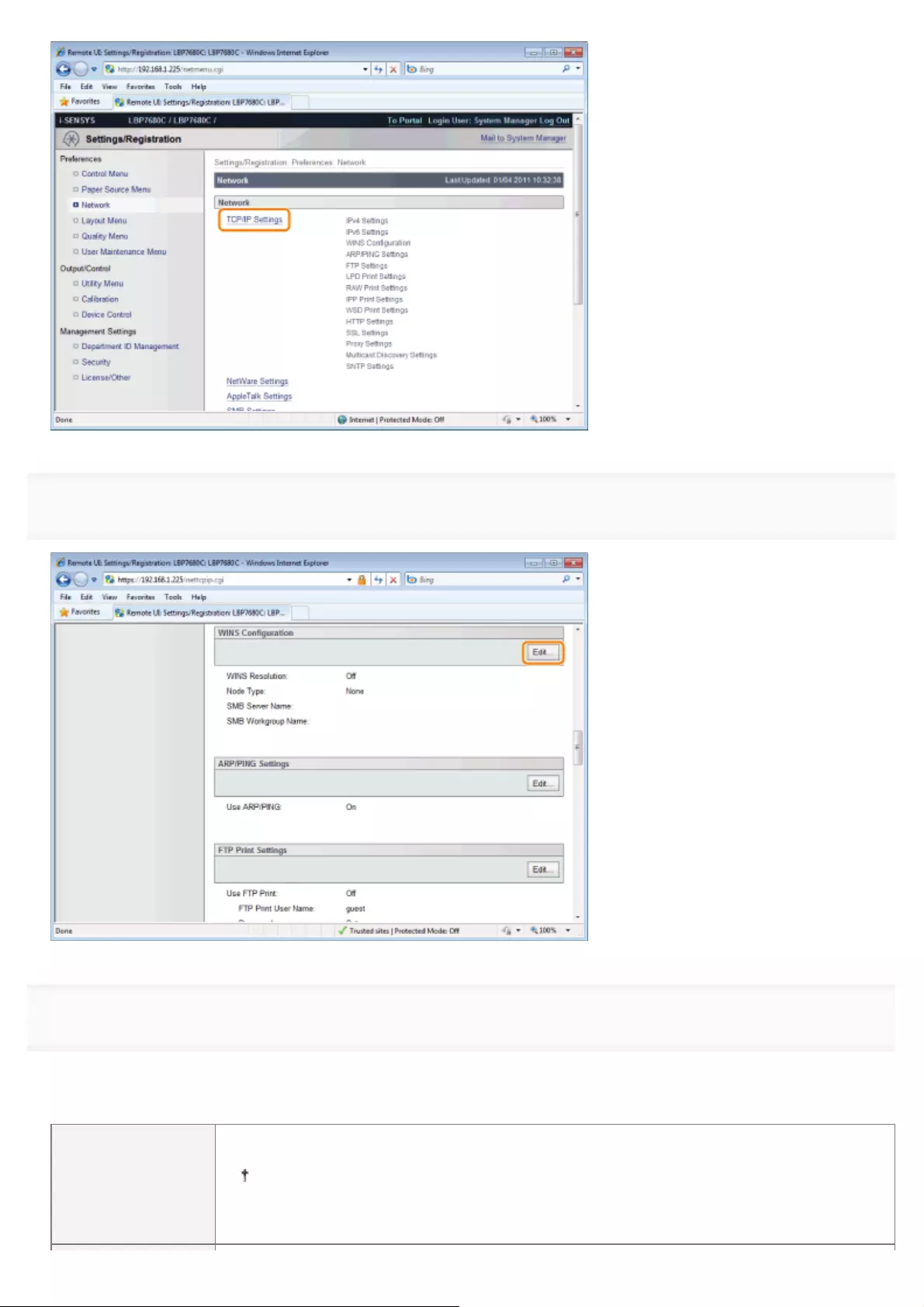
12
Click [Edit...] in [WINS Configuration].
13
Set WINS.
When Using WINS Resolution
Select the [WINS Resolution] check box, and set the following items.
[WINS Server
Address]
Enter the IP address of the WINS server.
When using the IP address settings specified by DHCP, if you obtain the WINS server
IP address from the DHCP server, the IP address obtained from the DHCP server is
overwritten.
㻡㻝㻣㻌㻛㻌㻥㻥㻤
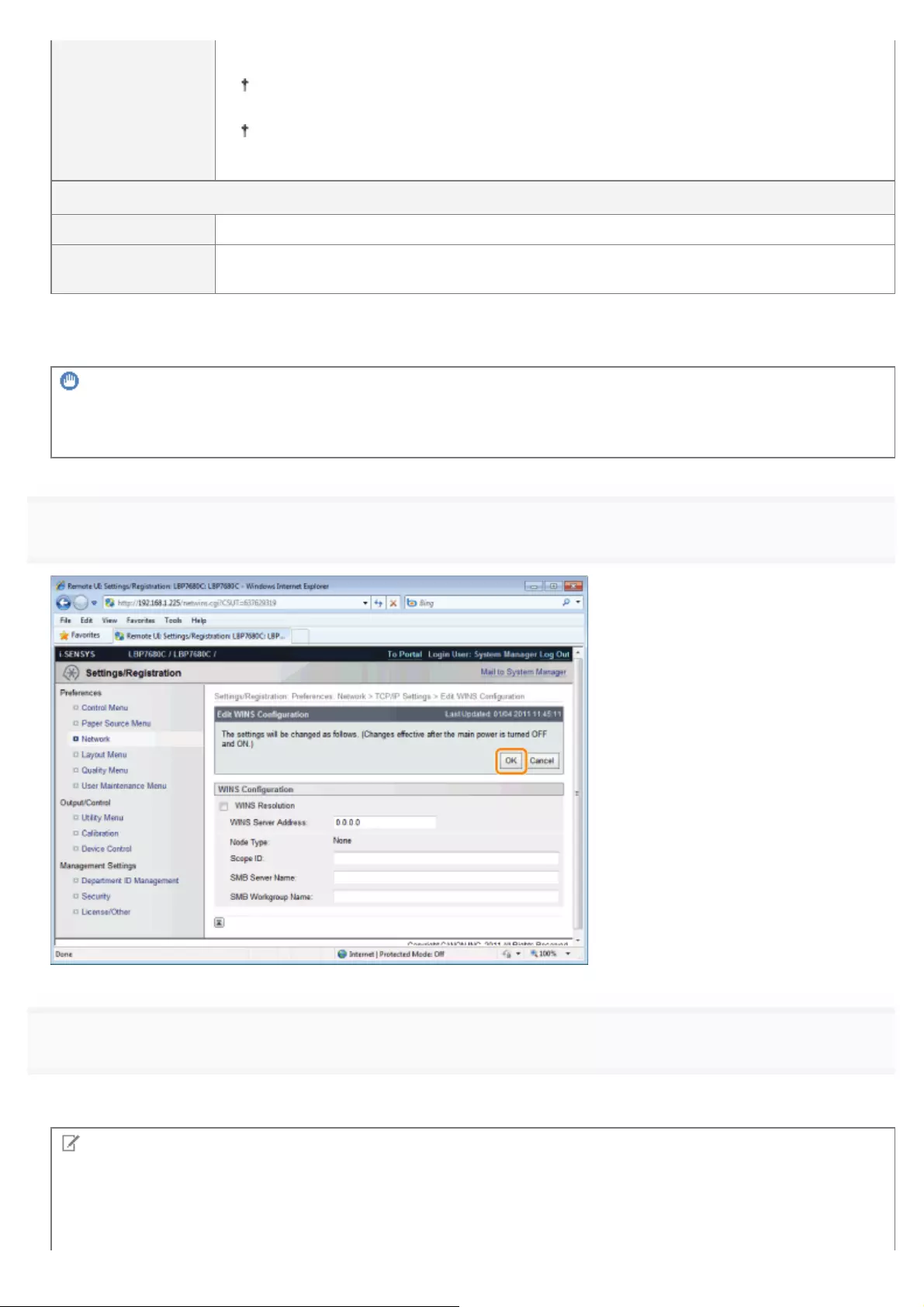
[Scope ID]
Enter [Scope ID] as needed. You can enter up to 63 characters.
The scope ID is an identifier to determine the range available for printers and
computers. The scope ID is browsed regardless of the WINS resolution settings.
When a scope ID is not specified for the computer in your network environment, leave
the [Scope ID] field blank.
Set the following items when registering printers on the WINS server.
[SMB Server Name] Enter the WINS server name set in Procedure 7.
[SMB Workgroup
Name] Enter the workgroup name set in Procedure 7.
When not Using WINS Resolution
Clear the [WINS Resolution] check box.
IMPORTANT
If [Scope ID] is specified
The printer cannot communicate with the computers that have a different scope ID.
14
Click [OK].
15
Perform a hard reset or restart the printer.
ĺAfter performing a hard reset or restarting the printer, the settings are effective.
NOTE
To perform a hard reset
You can perform a hard reset using the following procedure.
1. Click [Settings/Registration].
㻡㻝㻤㻌㻛㻌㻥㻥㻤

2. Select [Device Control] from the [Output/Control] menu.
3. Select [Hard Reset], then click [Execute].
㻡㻝㻥㻌㻛㻌㻥㻥㻤
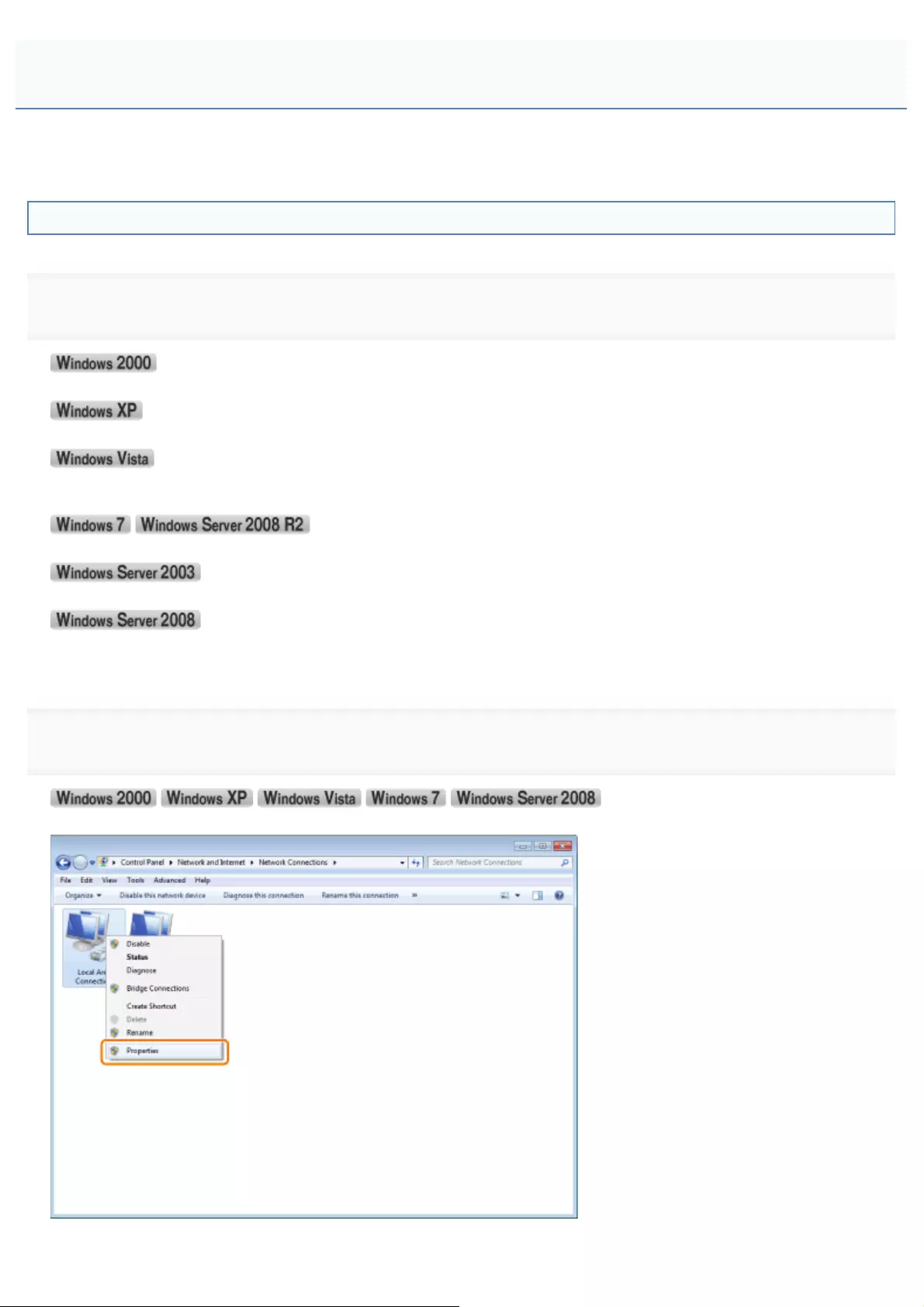
0258-0KK
Configure all the computers to be used for printing so that they can be used on an SMB network.
Connecting to an SMB Network
1
Perform the following procedure.
)URPWKH>6WDUW@PHQXVHOHFW>6HWWLQJV@ĺ>1HWZRUNDQG'LDO8S&RQQHFWLRQV@
)URPWKH>6WDUW@PHQXVHOHFW>&RQWURO3DQHO@DQGWKHQFOLFN>1HWZRUNDQG,QWHUQHW&RQQHFWLRQV@ĺ>1HWZRUN&RQQHFWLRQV@
)URPWKH>6WDUW@PHQXVHOHFW>&RQWURO3DQHO@DQGWKHQFOLFN>9LHZQHWZRUNVWDWXVDQGWDVNV@ĺ>0DQDJHQHWZRUN
connections].
)URPWKH>6WDUW@PHQXVHOHFW>&RQWURO3DQHO@DQGWKHQFOLFN>9LHZQHWZRUNVWDWXVDQGWDVNV@ĺ>&KDQJHDGDSWHUVHWWLQJV@
)URPWKH>6WDUW@PHQXVHOHFW>&RQWURO3DQHO@ĺ>1HWZRUN&RQQHFWLRQV@ĺ>/RFDO$UHD&RQQHFWLRQ@
From the [Start] menu, select [Control Panel], double-click [Network and Sharing Center], and then click [Manage network
connections].
2
Display the [Local Area Connection Properties] dialog box.
Right-click the [Local Area Connection] icon, then select [Properties] from the pop-up menu.
Configuring a Computer that Performs Printing
㻡㻞㻜㻌㻛㻌㻥㻥㻤
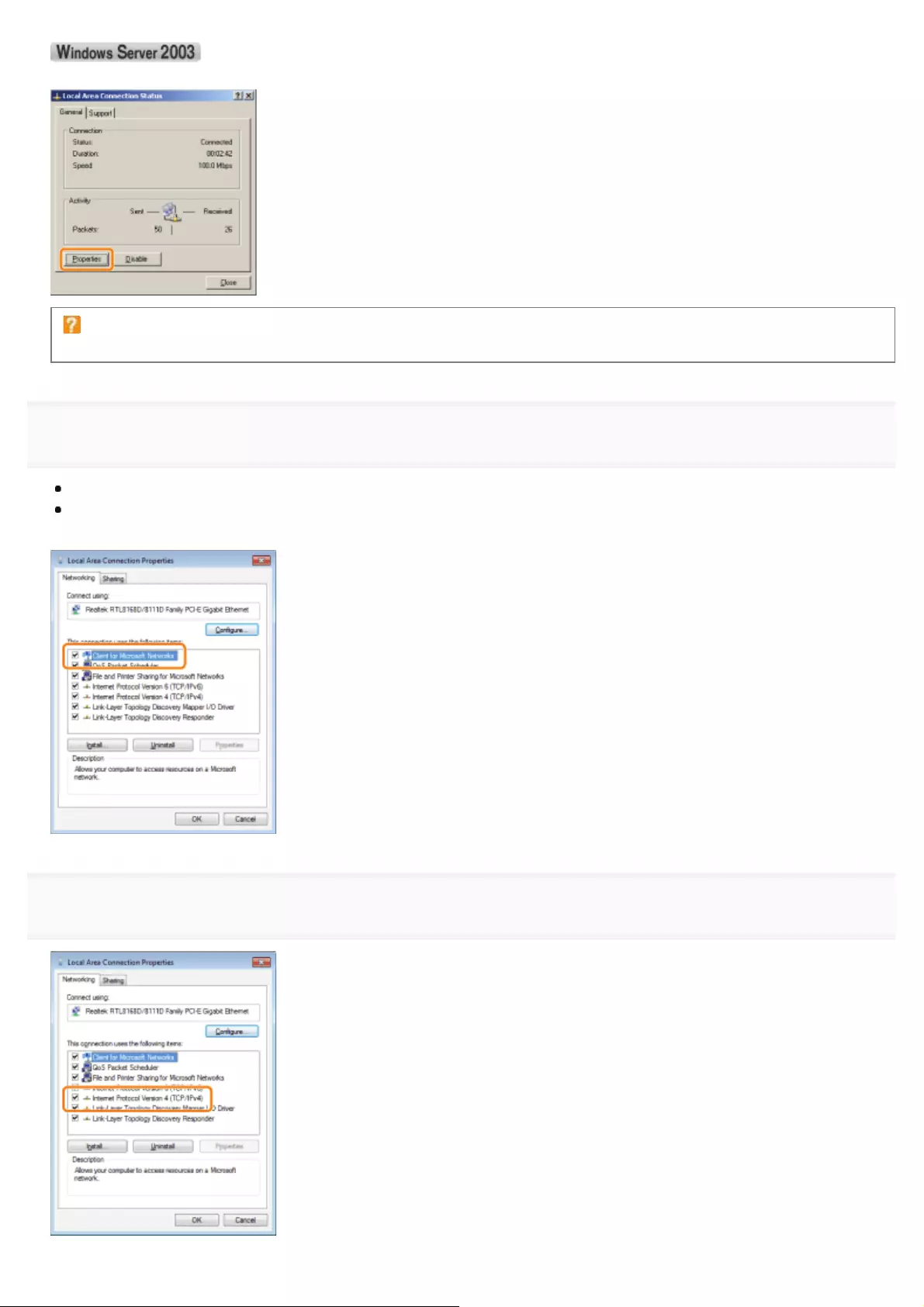
Click [Properties].
If the [User Account Control] dialog box appears
Click [Yes] or [Continue].
3
Make sure that the check boxes for the following options are selected.
[Client for Microsoft Networks]
[Internet Protocol Version 4 (TCP/IPv4)] (or [Internet Protocol (TCP/IP)])
If the check boxes are not selected, select them.
4
Double-click [Internet Protocol Version 4 (TCP/IPv4)] (or [Internet Protocol (TCP/IP)]).
㻡㻞㻝㻌㻛㻌㻥㻥㻤
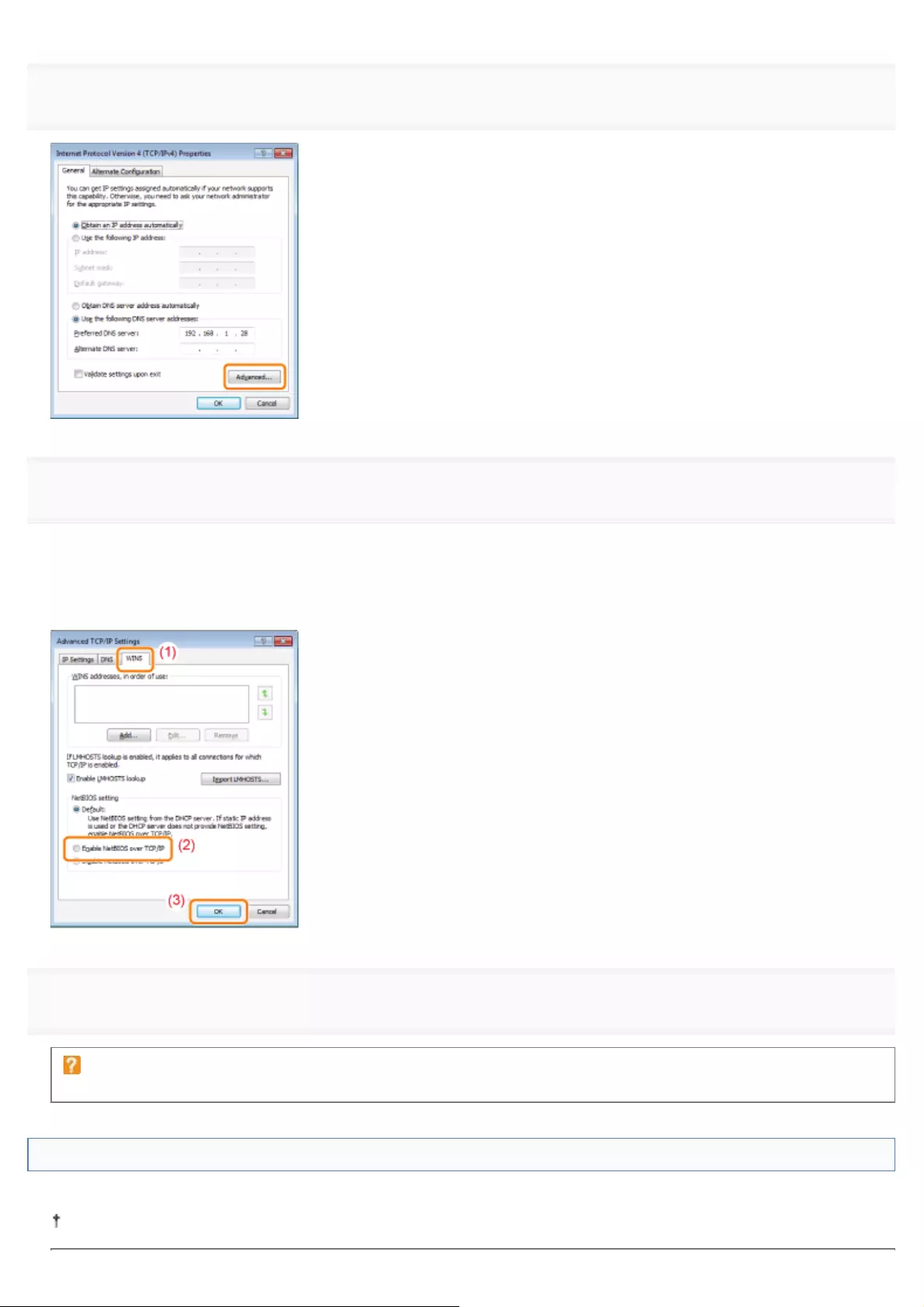
5
Click [Advanced] in the [General] sheet.
6
Enable NetBIOS over TCP/IP.
(1) Display the [WINS] sheet.
(2) Select [Enable NetBIOS over TCP/IP].
(3) Click [OK].
7
Continue to click [OK] until all the dialog boxes close.
If a message that prompts you to restart the computer appears
Restart the computer.
Installing the Printer Driver
A printer driver is required for printing. Following "Printer Driver Installation Guide", install the printer driver.
For details on the procedure for viewing "Printer Driver Installation Guide", see "Installation."
㻡㻞㻞㻌㻛㻌㻥㻥㻤

NOTE
If the screen that prompts you to select a port appears during the installation
Perform the following procedure.
1. Click [Add Port].
2. Select [Network], then click [OK].
3. From the list, select [Workgroup Name], [Server Name], and [Printer Name] specified in "Configuring the Protocol
Settings" respectively.
㻡㻞㻟㻌㻛㻌㻥㻥㻤
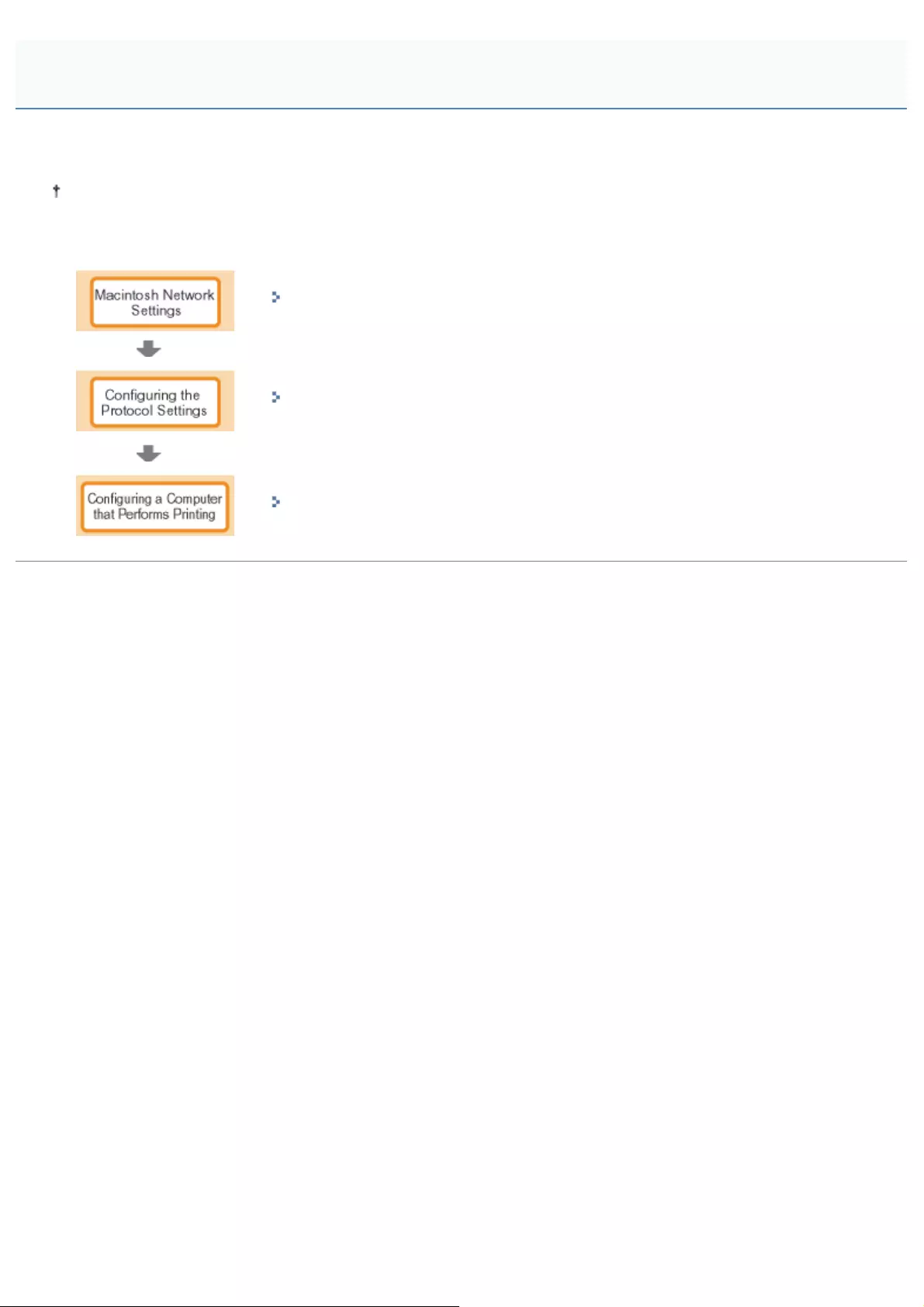
0258-07U
The requisite tasks to use the printer in the AppleTalk network are as follows.
If you are using Mac OS X 10.6, see "Network Settings for the Printer (TCP/IP)", and specify the settings for the
network.
Macintosh Network Settings
Configuring the Protocol Settings
Configuring a Computer that Performs Printing
Network Settings for the Printer (AppleTalk)
㻡㻞㻠㻌㻛㻌㻥㻥㻤
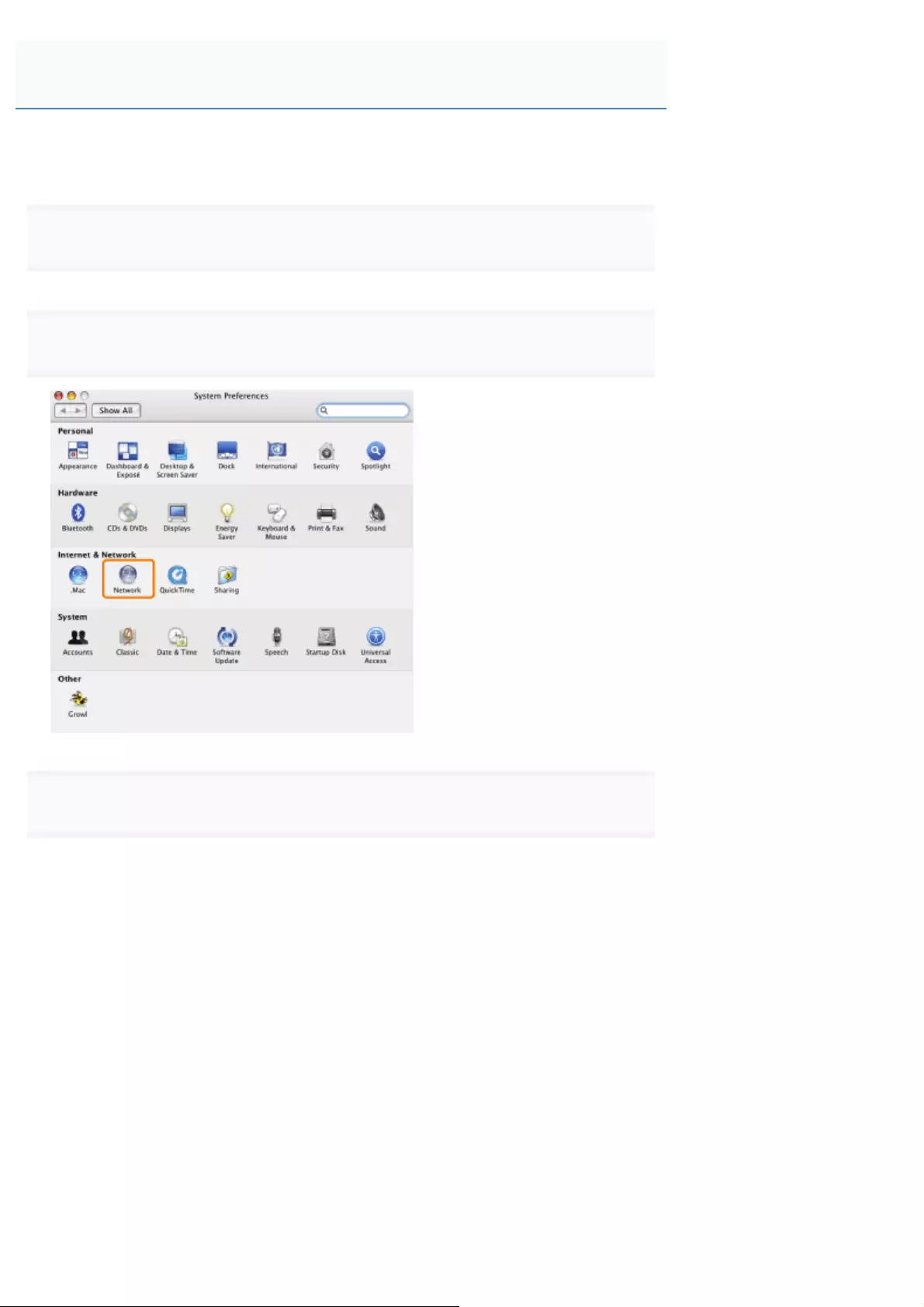
0258-07W
Configure the Macintosh network settings.
1
Select [System Preferences] from the Apple menu.
2
Click [Network].
3
Check the settings for the network port.
(1) Select [Network Port Configurations] from [Show].
(2) Make sure that the [Built-in Ethernet] check box is selected.
(If the check box is not selected, select it.)
Macintosh Network Settings
㻡㻞㻡㻌㻛㻌㻥㻥㻤
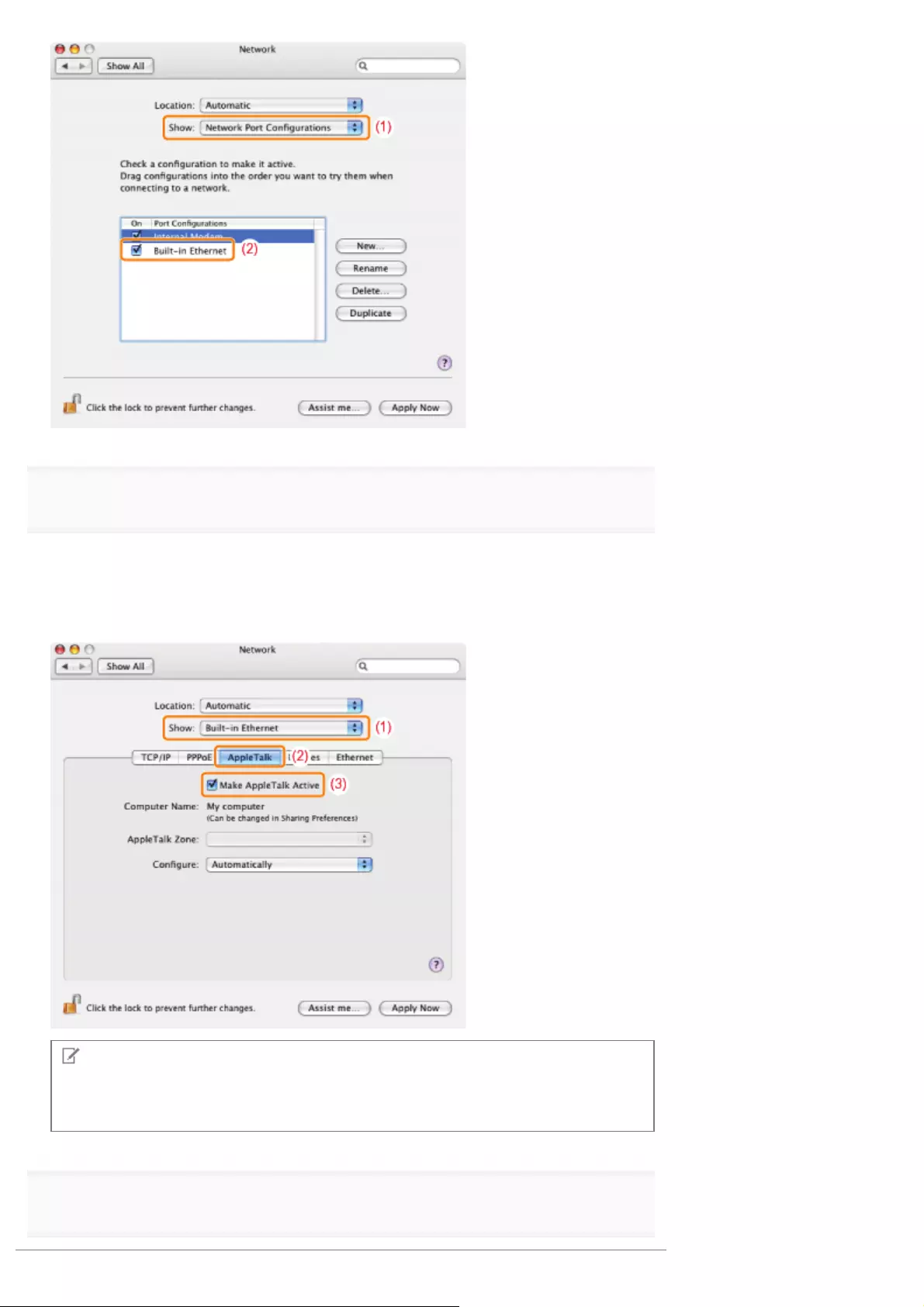
4
Make sure AppleTalk is active.
(1) Select [Built-in Ethernet] from [Show].
(2) Click [AppleTalk].
(3) Make sure that the [Make AppleTalk Active] check box is selected.
(If the check box is not selected, select it.)
NOTE
If [Built-in Ethernet] does not appear in [Show]
Select [Network Port Configurations], and then select the [Built-in Ethernet] check box.
5
Close the [Network] dialog box, then save the settings.
㻡㻞㻢㻌㻛㻌㻥㻥㻤
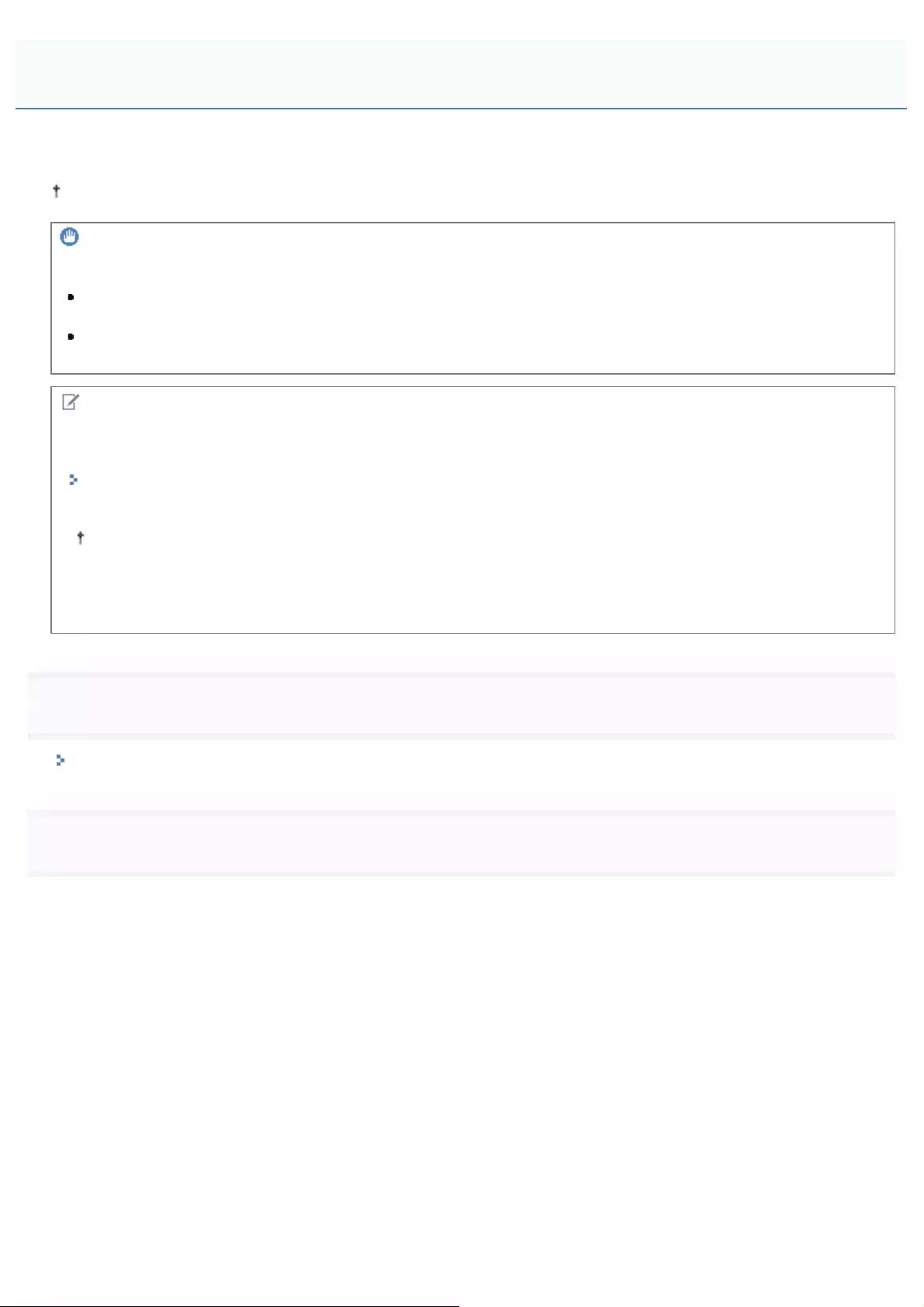
0258-07X
This section describes the procedure for specifying the settings using the Remote UI.
In the Remote UI, you can specify the settings by accessing the printer from a Web browser via a network.
IMPORTANT
Before configuring the protocol settings
When configuring the protocol settings for the printer using the above software, the TCP/IP protocol must be able to
be used in your network environment.
Make sure that each setting option for TCP/IP is specified, the printer and computer are connected properly, and the
printer is ON.
NOTE
When specifying the settings using software other than the Remote UI
You can also specify the settings using the following software.
"FTP Client (Macintosh)"
You can specify the settings by accessing the FTP server of the printer using Command Prompt.
The specifiable options vary depending on the software. See "Network Setting Items" and use software
appropriate to the network environment you are using or options that you want to specify.
About the screenshots
This procedure is described using screenshots from Windows 7.
1
Start the Remote UI, and then log in as Administrator.
"Starting the Remote UI"
2
Click [Settings/Registration].
Configuring the Protocol Settings
㻡㻞㻣㻌㻛㻌㻥㻥㻤
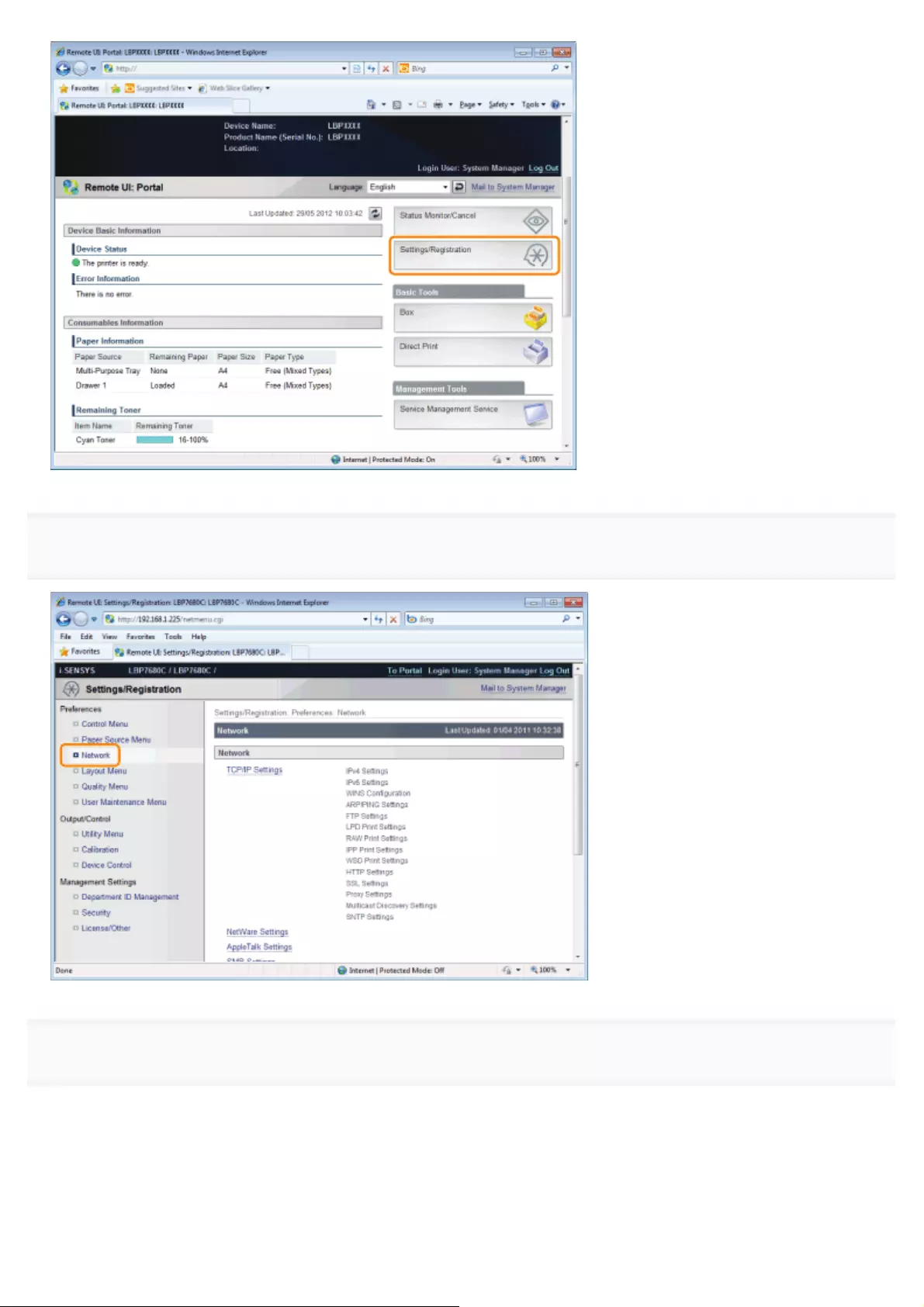
3
Select [Network] from the [Preferences] menu.
4
Click [AppleTalk Settings].
㻡㻞㻤㻌㻛㻌㻥㻥㻤
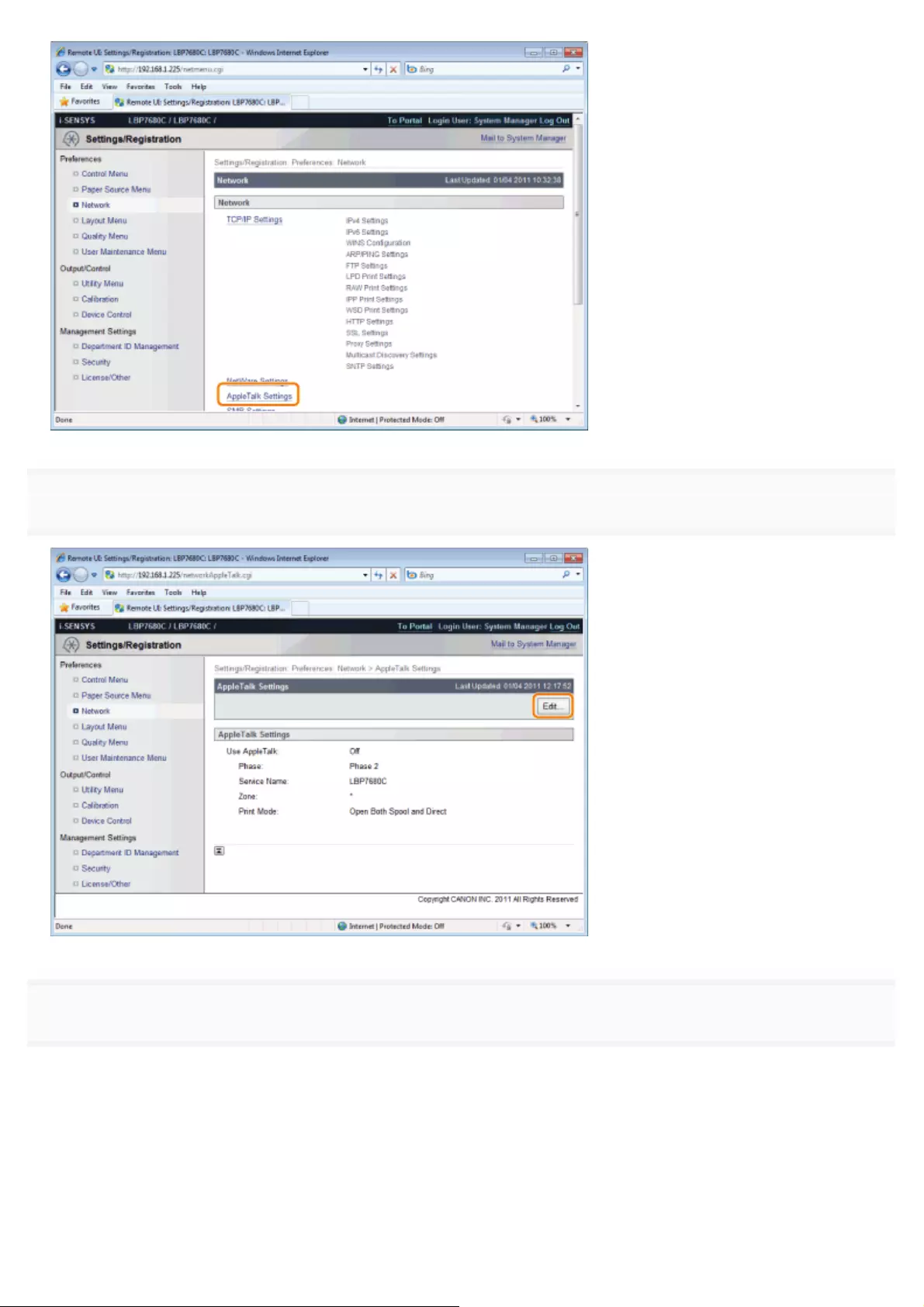
5
Click [Edit...].
6
Select the [Use AppleTalk] check box.
㻡㻞㻥㻌㻛㻌㻥㻥㻤
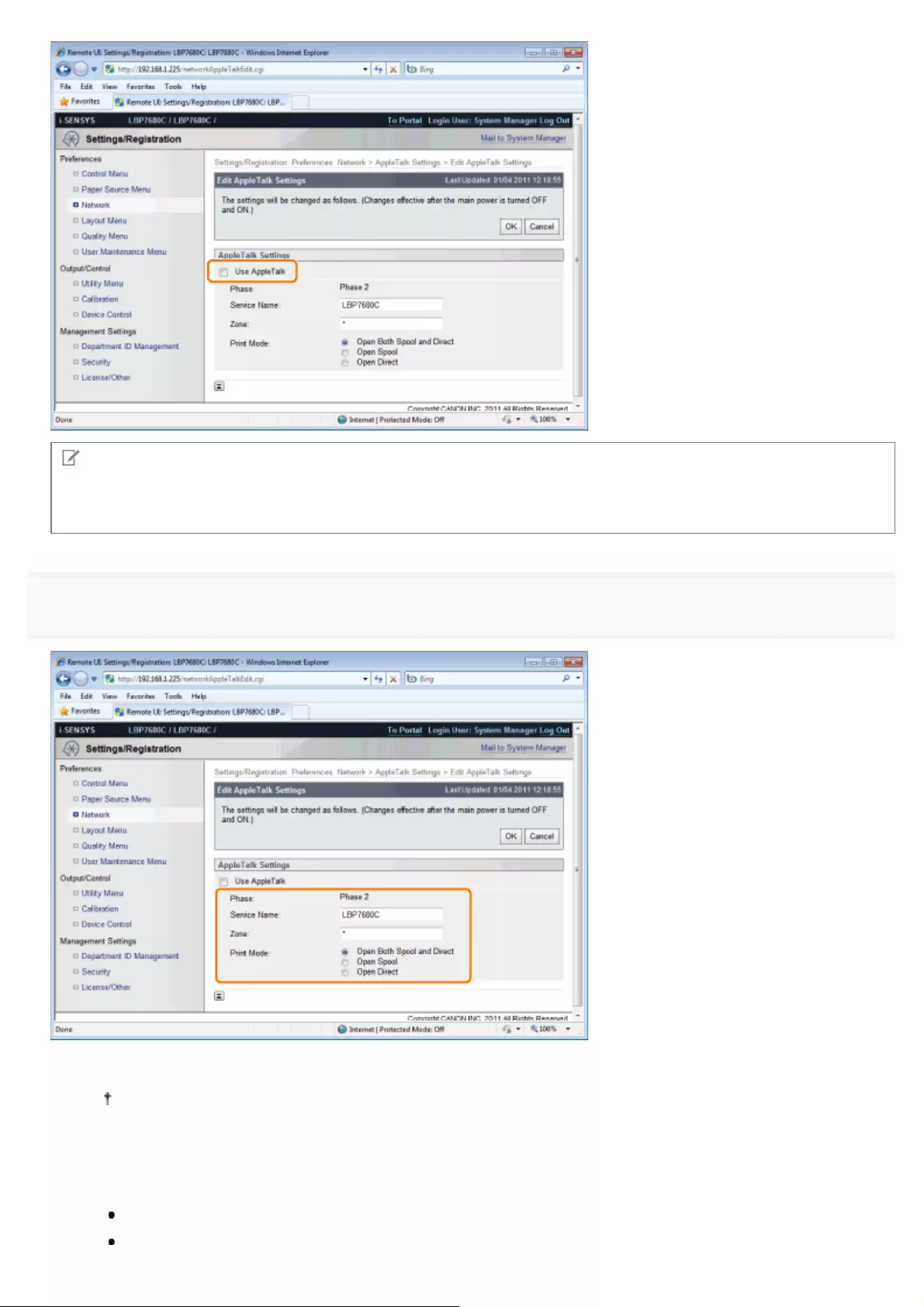
NOTE
When the [Use AppleTalk] check box is cleared
The printer is not detected on the AppleTalk network.
7
Specify the settings for AppleTalk.
1. Enter the name of the printer in [Service Name]. Up to 32 characters can be entered.
The name specified in this option is displayed on the printer list of Macintosh.
2. If any zone is set up on the network, enter the zone name in [Zone]. Up to 32 characters can be entered.
3. In [Print Mode], specify a printing process to be used. If you want to fix the printer to be used, select the check box
only for the printer.
[Open Both Spool and Direct]: Prints documents with a choice of "Spool" or "Direct" from the computer.
[Open Spool]: Prints documents at high speed.
㻡㻟㻜㻌㻛㻌㻥㻥㻤
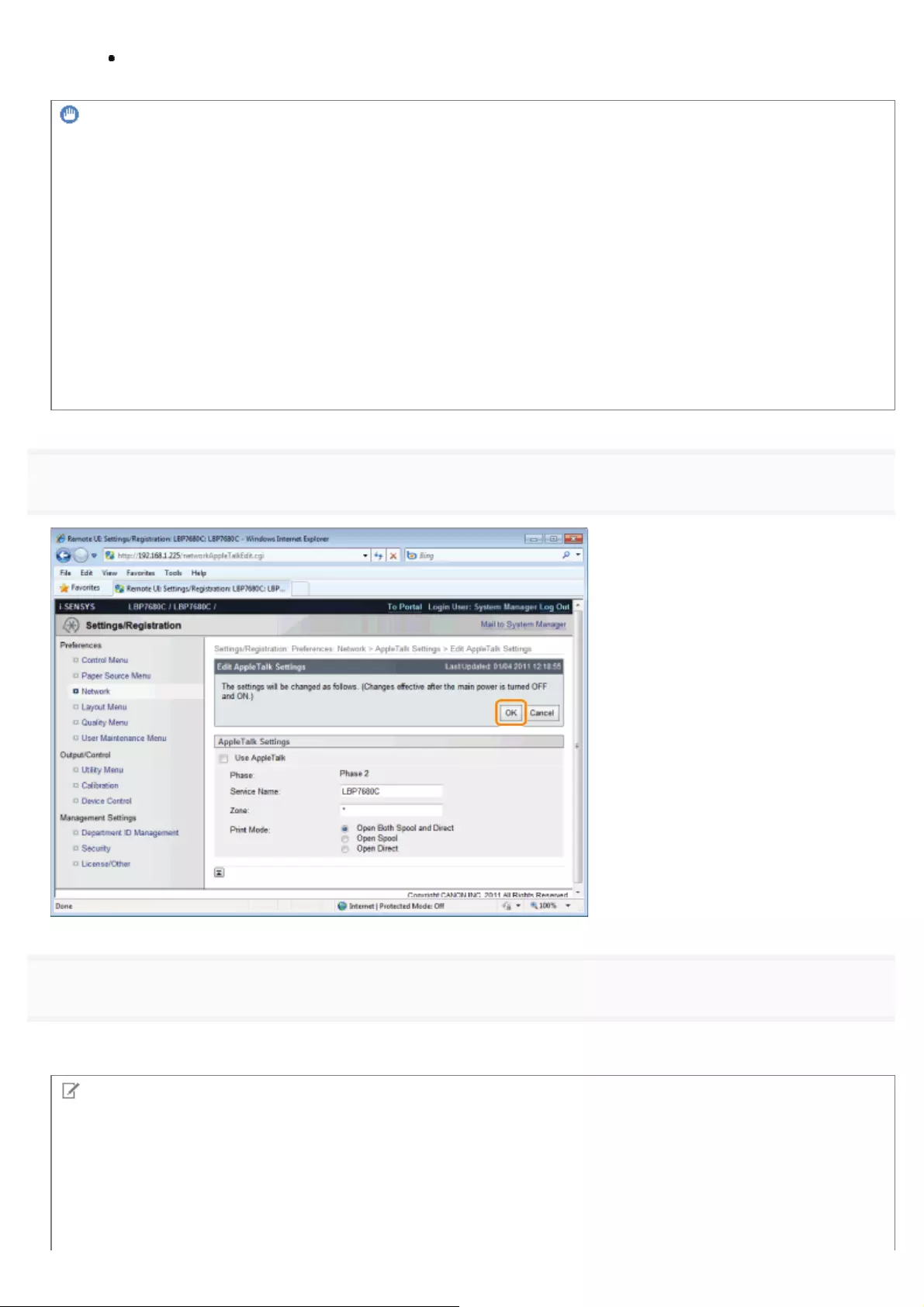
[Open Direct]: Prints documents at high quality.
IMPORTANT
About [Phase]
[Phase] is fixed at [Phase 2], and you cannot specify the setting.
About [Service Name]
You cannot specify a name which includes "=", "@", "*", ":", and "~."
About [Zone]
You cannot specify a name which includes "=", "@", ":", and "~."
If multiple printers are in the same zone
Specify a specific name for each printer.
[Print Mode]
It is not possible to clear both [Open Spool] and [Open Direct] together.
8
Click [OK].
9
Perform a hard reset or restart the printer.
ĺAfter performing a hard reset or restarting the printer, the settings are effective.
NOTE
To perform a hard reset
You can perform a hard reset using the following procedure.
1. Click [Settings/Registration].
2. Select [Device Control] from the [Output/Control] menu.
3. Select [Hard Reset], then click [Execute].
㻡㻟㻝㻌㻛㻌㻥㻥㻤

㻡㻟㻞㻌㻛㻌㻥㻥㻤
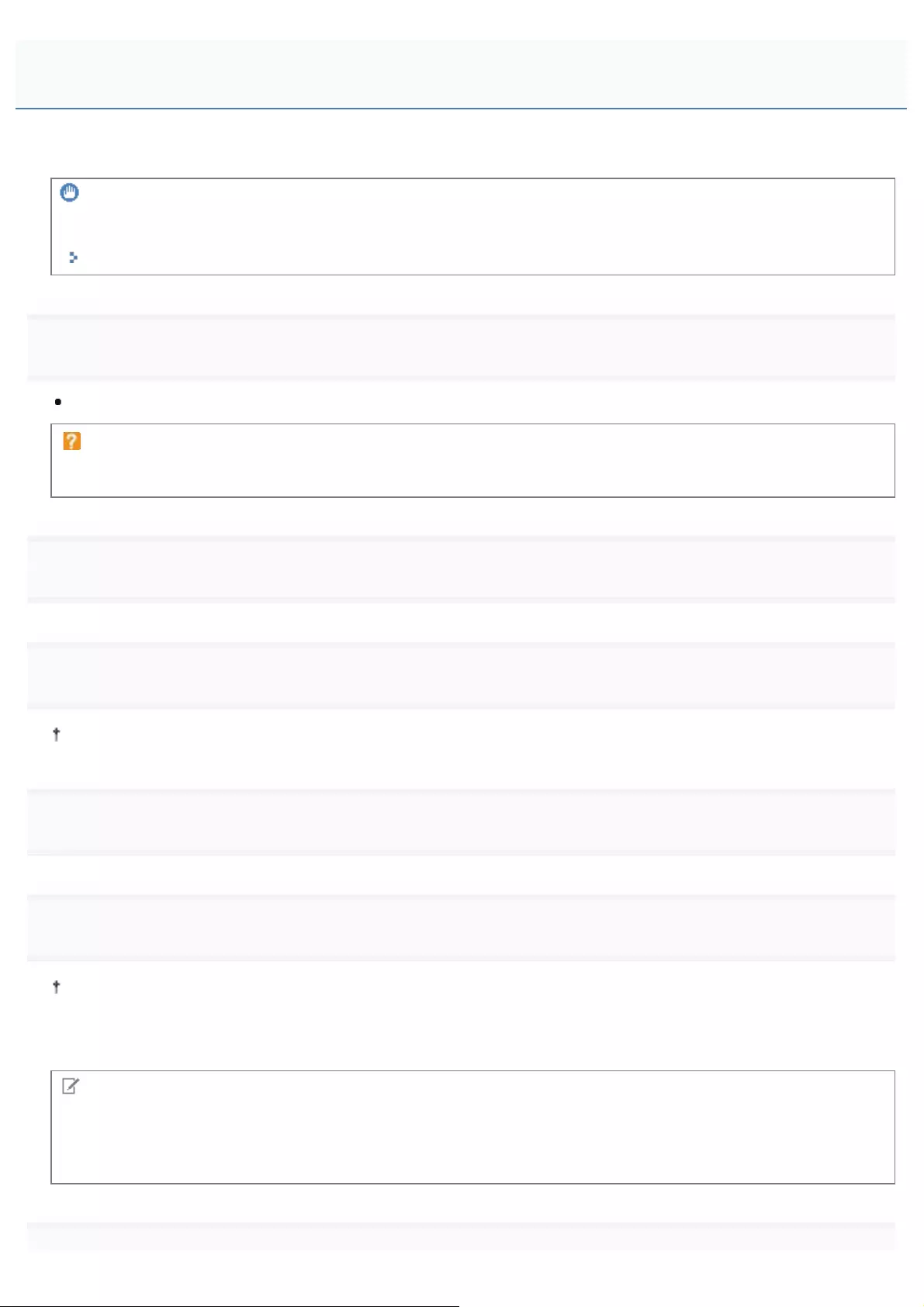
0258-07Y
This section describes the procedure for when Terminal supplied with Mac OS X as standard is used.
IMPORTANT
If the [FTP Settings] check box is not selected in the [TCP/IP Settings] page in [Settings/Registration] - [Preferences] -
[Network], settings cannot be specified from the FTP client.
"Configuring the Protocol Settings"
1
Enter "ftp the IP address of the printer", then press the [return] key on your keyboard.
Input Example: "ftp 192.168.0.215"
If you are not sure about the IP address of the printer
Print and confirm Network Status Print while referring to "Checking the Printer Settings", or consult your network
administrator.
2
Enter "root" as the user name, then press the [return] key on your keyboard.
3
Enter the administrator password, then press the [return] key on your keyboard.
The default password is "7654321".
4
Enter "cd config", then press the [return] key on your keyboard.
5
Enter "get CONFIG <the file name>", and then press [return] on your keyboard.
Enter "CONFIG" as all upper case characters.
ĺThe config file is downloaded.
The characters entered for <the file name> become the name of the downloaded config file.
NOTE
If the config file cannot be found
Search for the config file using the file search function of your operating system.
(The download directory for the config file varies depending on the operating system or settings.)
6
FTP Client (Macintosh)
㻡㻟㻟㻌㻛㻌㻥㻥㻤

Edit the downloaded config file in "TextEdit" or a similar text editor.
For details on descriptions of each option, see "Setting Items."
7
Enter "put <the file name> CONFIG", and then press [return] on your keyboard.
Enter "CONFIG" as all upper case characters.
ĺThe edited config file uploads.
In <the file name>, enter the name of the config file that was entered when the file was downloaded.
8
Enter "get reset", then press the [return] key on your keyboard.
When the printer is restarted the settings will be enabled.
After checking that the printer has restarted, press the [c] key while holding down the [Ctrl] key, and return to the ftp
command prompt.
9
Enter "quit", then press the [return] key on your keyboard.
10
Enter "exit", then press the [return] key on your keyboard.
11
Select [Quit Terminal] from the [Terminal] menu.
㻡㻟㻠㻌㻛㻌㻥㻥㻤
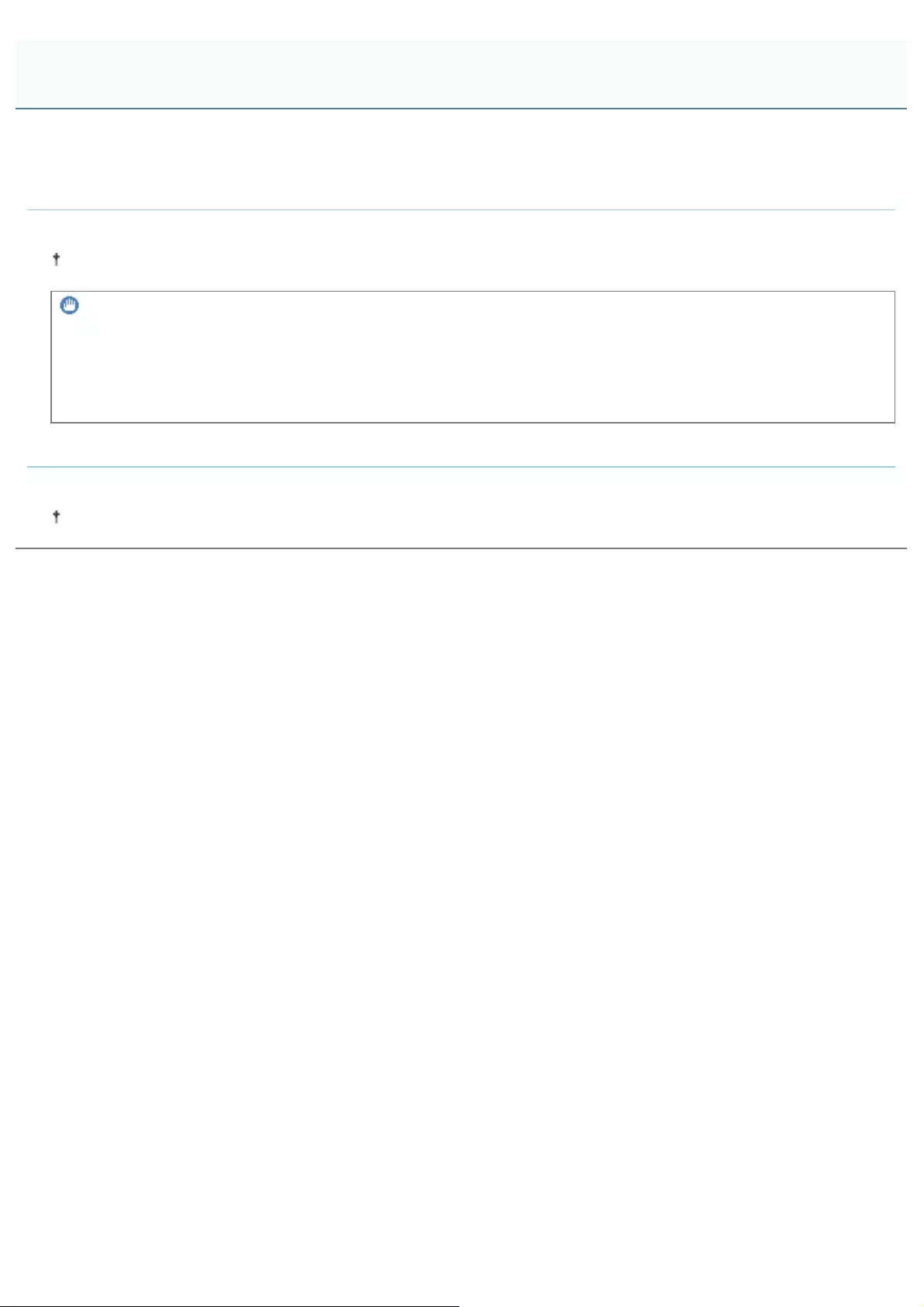
0258-080
After completing the protocol settings for the printer, configure each Macintosh to be used for printing.
Installing the Printer Driver
A printer driver is required for printing. Following "Printer Driver Installation Guide", install the printer driver.
For details on the procedure for viewing "Printer Driver Installation Guide", see "Installation."
IMPORTANT
The supplied CD-ROM does not include the printer driver for Macintosh.
Download the printer driver for Macintosh that supports this printer from the Canon Web site (http://www.canon.com/).
If you cannot find the printer driver for Macintosh that supports this printer on the Canon Web site, contact your local
authorized Canon dealer.
Setting the Printer Destination
After installing the printer driver, set the printer destination. Following "Driver Guide", set the printer destination.
For details on the procedure for displaying "Driver Guide", see "Viewing the Driver Guide."
Configuring a Computer that Performs Printing
㻡㻟㻡㻌㻛㻌㻥㻥㻤
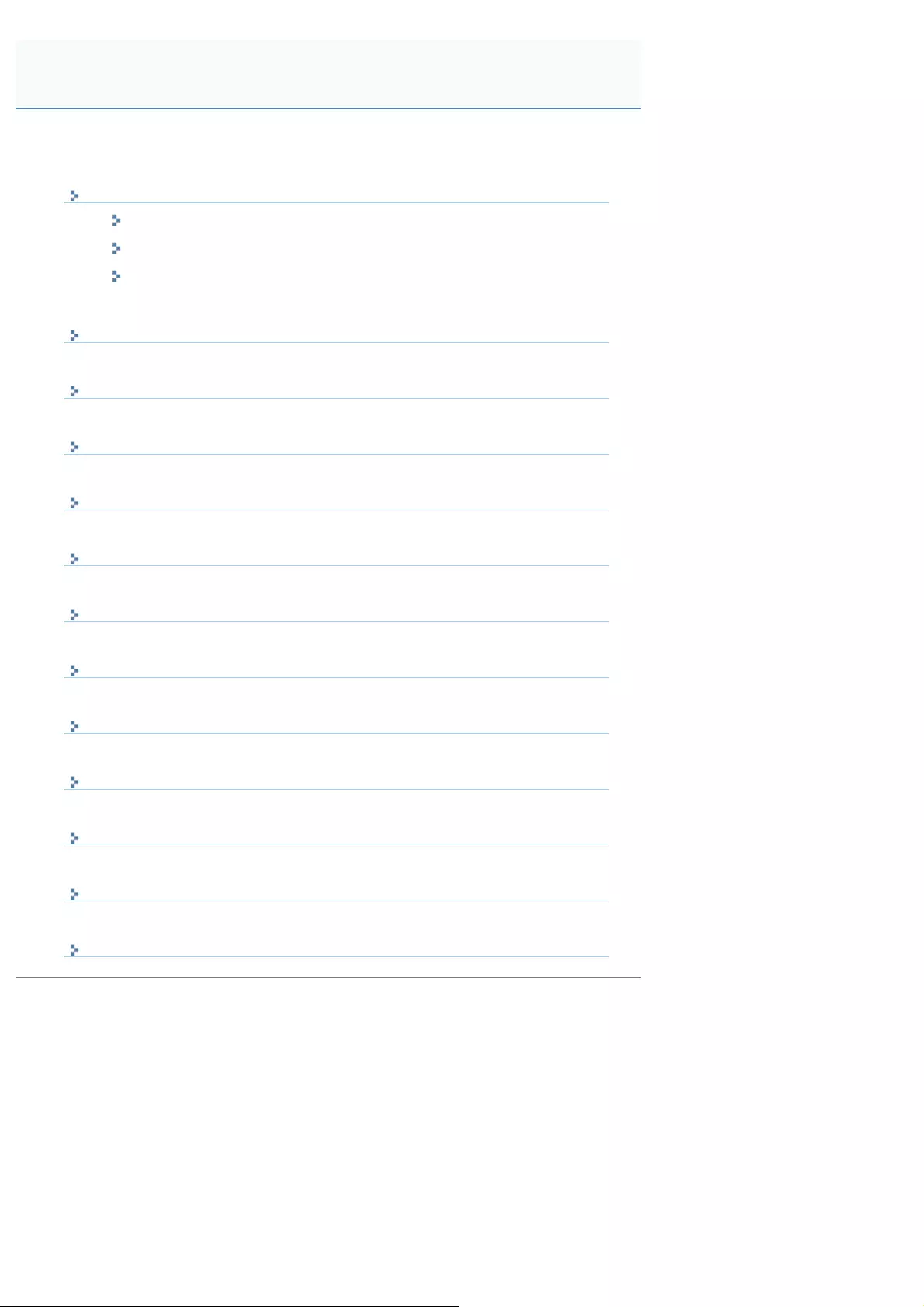
0258-081
Software That Can Be Used for Managing the Printer
Remote UI
FTP Client
NetSpot Device Installer
Managing Print Jobs
Control Panel Setting
Setting Items
Checking the Number of the Printed Pages
Initializing the Settings
Checking the Printer Settings
Setting the Administrator Password
Specifying the Device Name or Administrator Information
Sleep Mode
Auto Shutdown
Specifying an ID for Each Department (LBP7680Cx Only)
Register/Update Software Function (LBP7680Cx Only)
Managing the Printer
㻡㻟㻢㻌㻛㻌㻥㻥㻤

0258-082
You can manage the printer using the control panel and the following software.
Because the items you can manage differ respectively, use each software according to your environment or the item you
want to manage.
For details on the items you can manage using the control panel, see "Setting Items."
: Can be managed
: Cannot be managed
: Can be managed partly
Management Item Control Panel Remote UI FTP Client NetSpot Device Installer
Managing Print Jobs
Checking the
Number of the
Printed Pages
Checking the Printer
Settings
Setting the
Administrator
Password
Specifying the Device
Name or
Administrator
Information
Sleep Mode
Configuring the
Network Settings
(Sharing the Printer)
Security Settings
[Settings/Registration]
Menu
Specifying an ID for
Each Department
(LBP7680Cx Only)
Software That Can Be Used for Managing the Printer
㻡㻟㻣㻌㻛㻌㻥㻥㻤
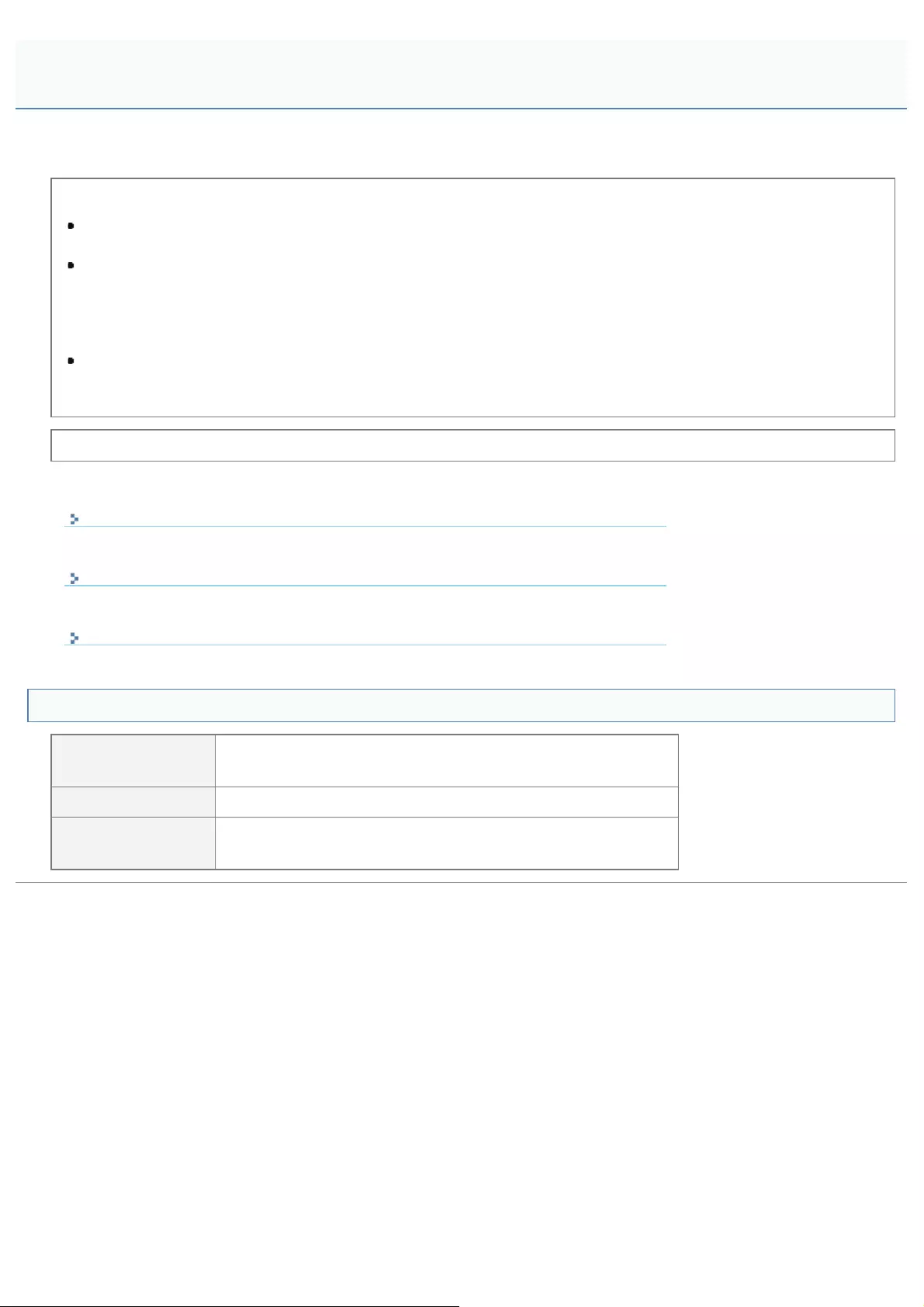
0258-083
The Remote UI allows you to manage the printer using a Web browser.
<Features of the Remote UI>
No specific software is needed.
You can operate the Remote UI in a Web browser. You do not need specific software to operate the Remote UI.
You can manage the printer from a remote location.
By accessing and operating the printer from the Web browser via a network, you can manage the printer using a
computer in a remote location.
You can perform various operations, such as checking the current printer status or job logs and specifying various
network settings in the Remote UI.
Central management of all the printer settings with the administrator password.
Only the administrator can configure the settings or perform the operations related to the printer management by
setting the administrator password.
Before starting the Remote UI, see "Attention (Remote UI)."
Starting the Remote UI
Screen Layout of the Remote UI (Details on Each Setting Page)
Display/Change Message Board Messages and Support Links
System Requirements of the Remote UI
Web Browser Internet Explorer 6 or later
Netscape Navigator 6.0 or later
Operating System An operating system on which the above Web browsers can run
Display Resolution: 800 x 600 pixels or more
Display colors: 256 colors or more
Remote UI
㻡㻟㻤㻌㻛㻌㻥㻥㻤
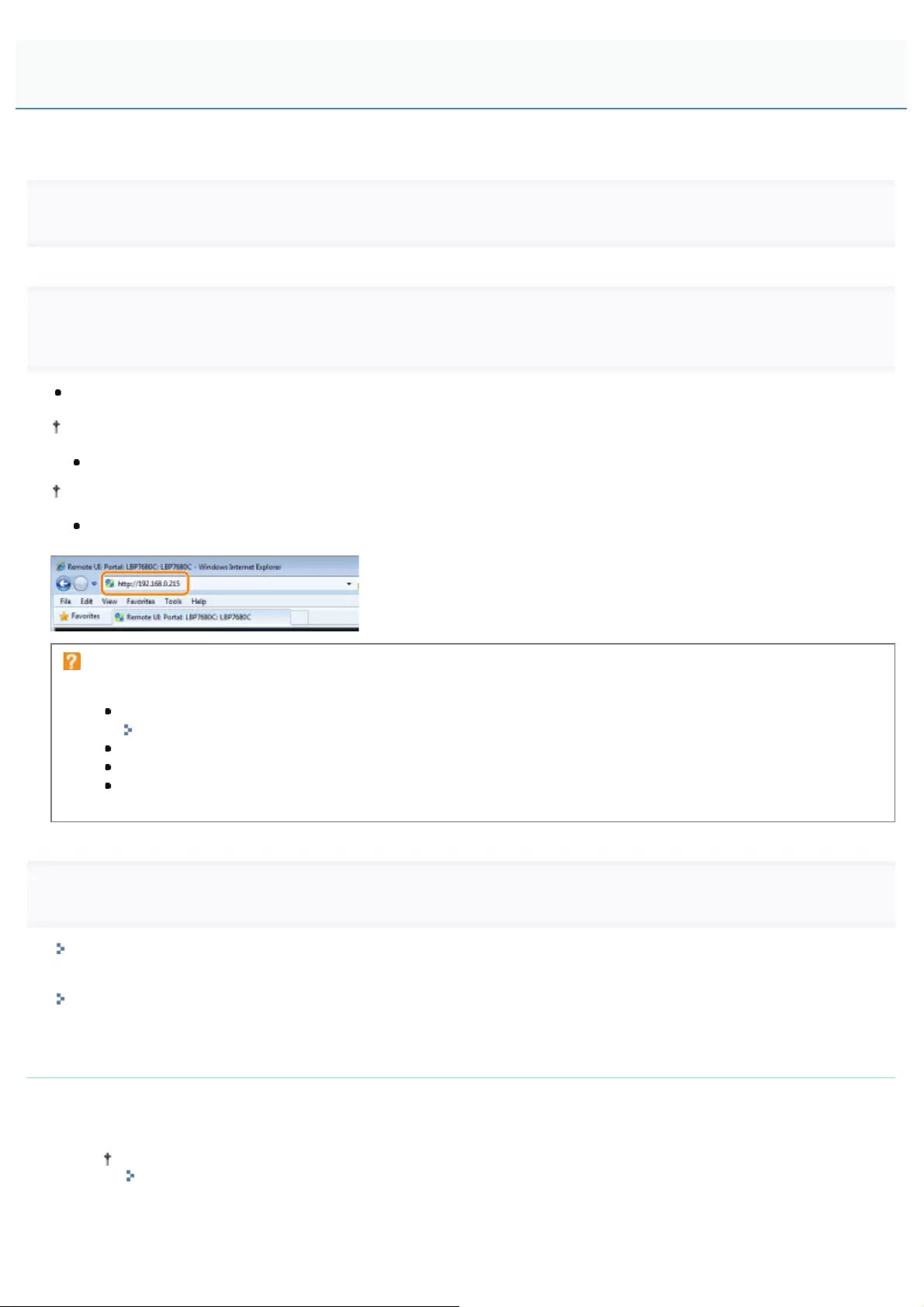
0258-084
1
Start the Web browser.
2
Enter "http://<the IP address of the printer>/" in the address field, and then press the [ENTER] key on
your keyboard.
Input Example: "http://192.168.0.215/"
If the host name of the printer is registered in the DNS server, you can enter ["host name"."domain name"] instead of
the IP address.
Input Example: http://my_printer.xy_dept.company.com/
If you want to use SSL encrypted communication, enter "https://<the IP address or name of the printer>/". If the
[Security Alert] dialog box or other dialog box appears, follow the directions in the message.
Input Example:https://192.168.0.215/
If the Remote UI top page is not displayed
Check the following points.
The Remote UI is enabled.
"Enabling the Remote UI"
The printer and computer are connected properly via a network.
The printer is turned ON.
The IP address or ["host name"."domain name"] is entered correctly.
3
Log in as Administrator or End-User.
Logging in as Administrator
By logging in as Administrator, you can perform all the operations and settings of the Remote UI.
Logging in as End-User
By logging in as End-User, you can check the device status, confirm the settings, and view the jobs.
Logging in as Administrator
(1) Select [Management Mode].
(2) Enter any value in [Password].
The default password is "7654321".
"Setting the Administrator Password"
(3) Click [Log In].
Starting the Remote UI
㻡㻟㻥㻌㻛㻌㻥㻥㻤

Logging in as End-User
(1) Select [End-User Mode].
(2) Enter [User Name] as needed.
(3) Click [Log In].
NOTE
About [User Name]
If you want to log in by entering [User Name], permit job operations by end-users in [Management Settings] in the
[Settings/Registration] - [Management Settings] - [Security] page.
"Specifying the Job Operation Permission for End-Users"
Although it is possible to log in without entering any value for [User Name], logging in by entering the user name
enables to operate the jobs for which the user names correspond with each other.
The value to be entered for [User Name] is the user name you entered when logging in to the computer.
About department ID management (LBP7680Cx only)
When the department ID management function is enabled, you can log in by entering the department ID and password.
"Specifying an ID for Each Department (LBP7680Cx Only)"
㻡㻠㻜㻌㻛㻌㻥㻥㻤
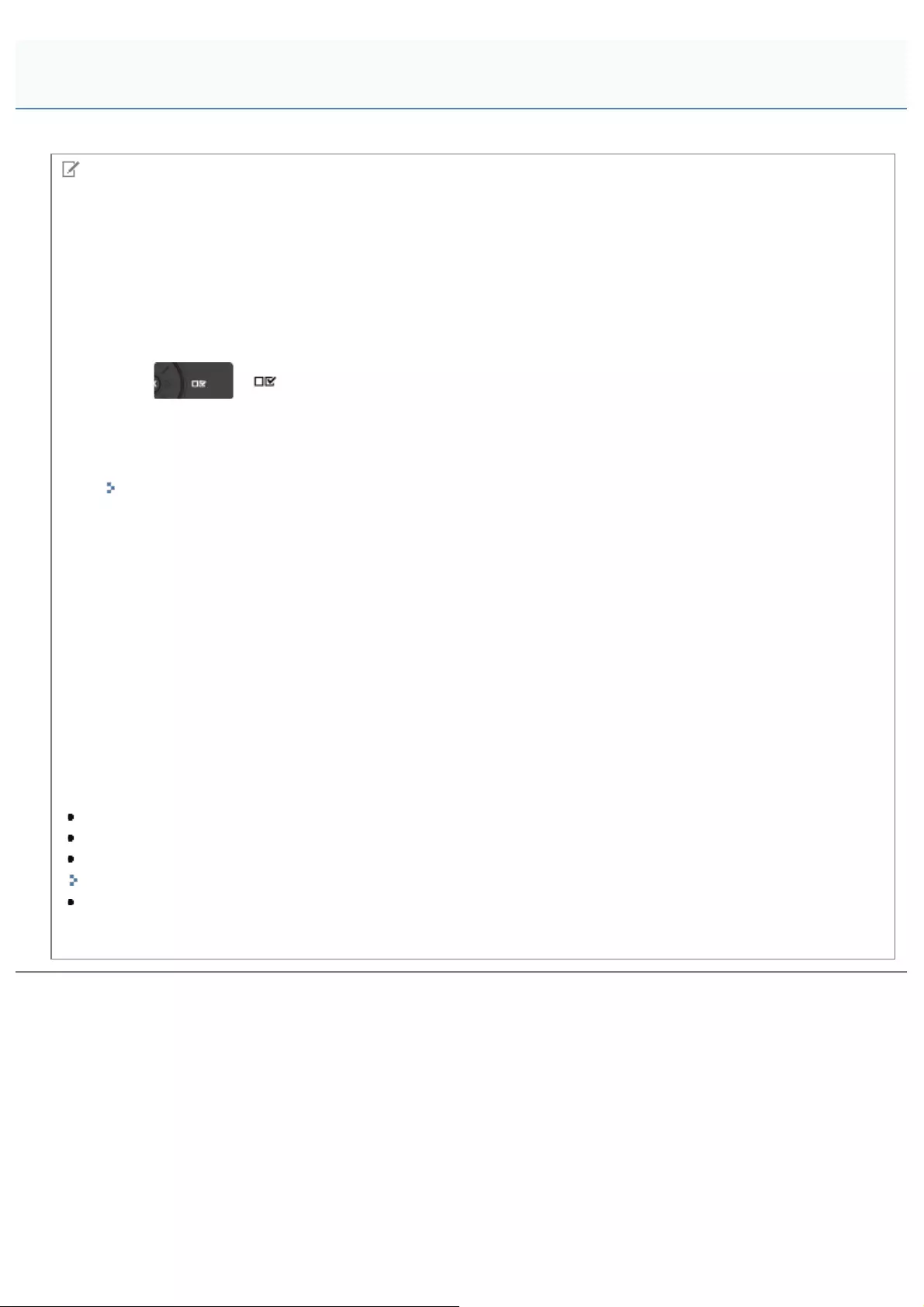
0258-085
NOTE
When using SSL encrypted communication
To use SSL encrypted communication, a key and its certificate need to have been created and the key needs to have
been registered as the default key.
For details on the SSL encrypted communication function and the procedure for registering a key, see "Setting Keys and
Certificates."
If the Remote UI does not start when SSL is enabled
There is a possibility that the file related to key management is broken. Perform the following procedure.
1. Press [ ] ( 6HWWLQJVRQWKHFRQWUROSDQHOVHOHFW>1HWZRUN@ĺ>5HPRWH8,6HWWLQJV@ĺ>66/@DQG
then make sure that [SSL] is set to [Off].
2. Restart the printer.
3. Regenerate the key and certificate and specify the settings for SSL from the Remote UI.
"Setting Keys and Certificates"
4. Restart the printer.
When using a proxy server
If you cannot connect the computer to the printer via a proxy server when using a proxy server, add the IP address of
the printer to [Exceptions] (the addresses that do not use the proxy server) on the settings for the proxy server of the
Web browser.
The setting varies depending on the network environment. Consult your network administrator.
About Cookies
Configure your Web browser to enable cookies.
Setting priority
For details on the setting priority for when specifying the same item using a method other than the Remote UI as that
specified using the Remote UI, see "Setting Priority (When Specifying the Same Item Using Multiple Methods)."
Starting the Remote UI
If the Remote UI is running on multiple computers at a time, the latest settings are valid.
If you want to log in as Administrator, we recommend that only one Remote UI should be running at a time.
You can change language displayed in the login screen from the Setup menu. (LBP7680Cx only)
"[Setup] Menu ([Control Menu] Options)"
The following message may be displayed before the login screen appears depending on your environment.
(LBP7680Cx only)
"Processing… Wait a moment."
Attention (Remote UI)
㻡㻠㻝㻌㻛㻌㻥㻥㻤
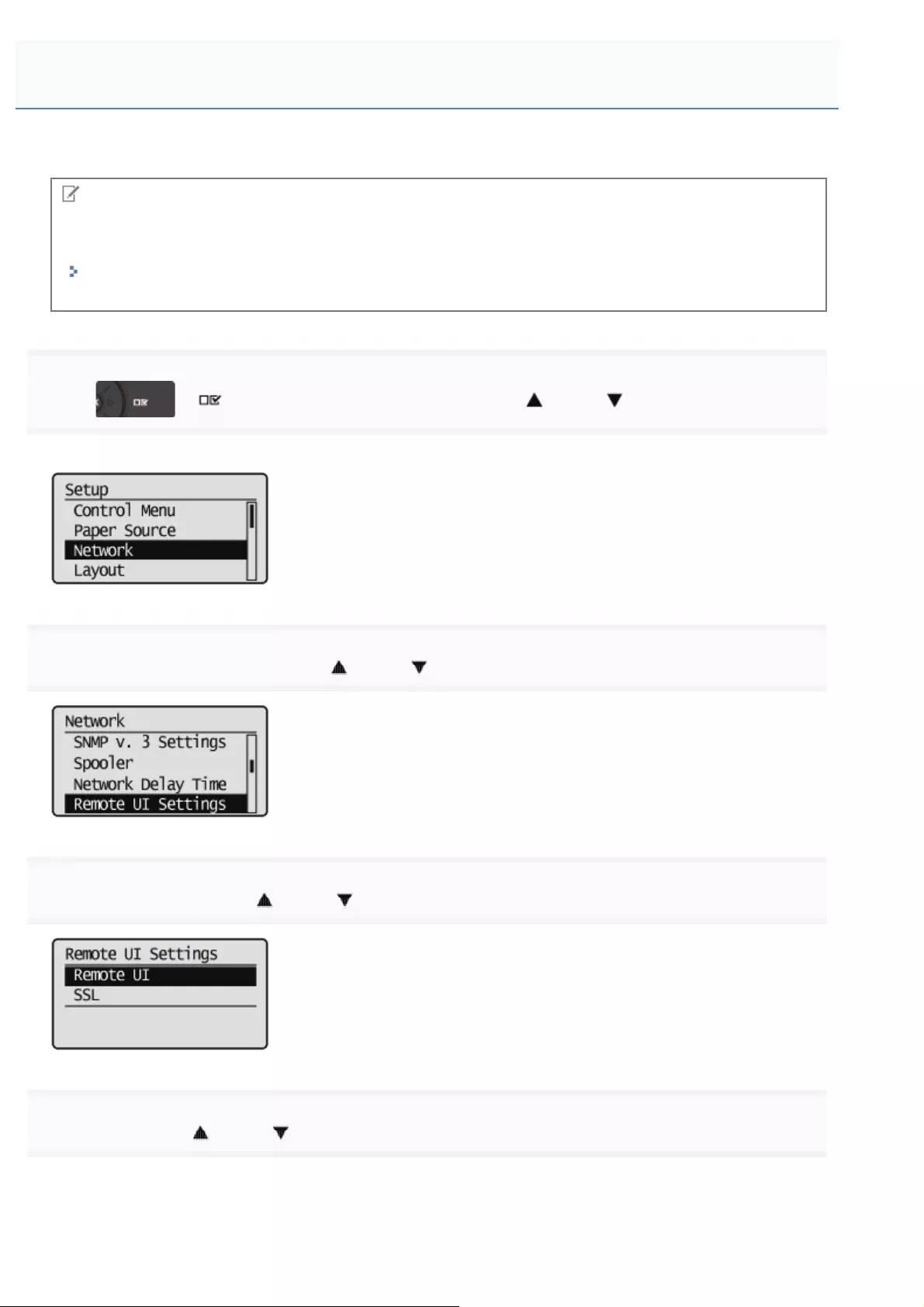
0258-086
This section describes the procedure for enabling the Remote UI using the printer's control panel.
NOTE
When enabling the Remote UI using software other than the Remote UI
You can also enable the Remote UI using the following software.
"FTP Client"
You can enable the Remote UI by accessing the FTP server of the printer using Command Prompt.
1
Press [ ] ( : Settings), select [Network] using [ ] and [ ], and then press [OK].
When the message is displayed, press [OK].
2
Select [Remote UI Settings] using [ ] and [ ], and then press [OK].
3
Select [Remote UI] using [ ] and [ ], and then press [OK].
4
Select [On] using [ ] and [ ], and then press [OK].
Enabling the Remote UI
㻡㻠㻞㻌㻛㻌㻥㻥㻤
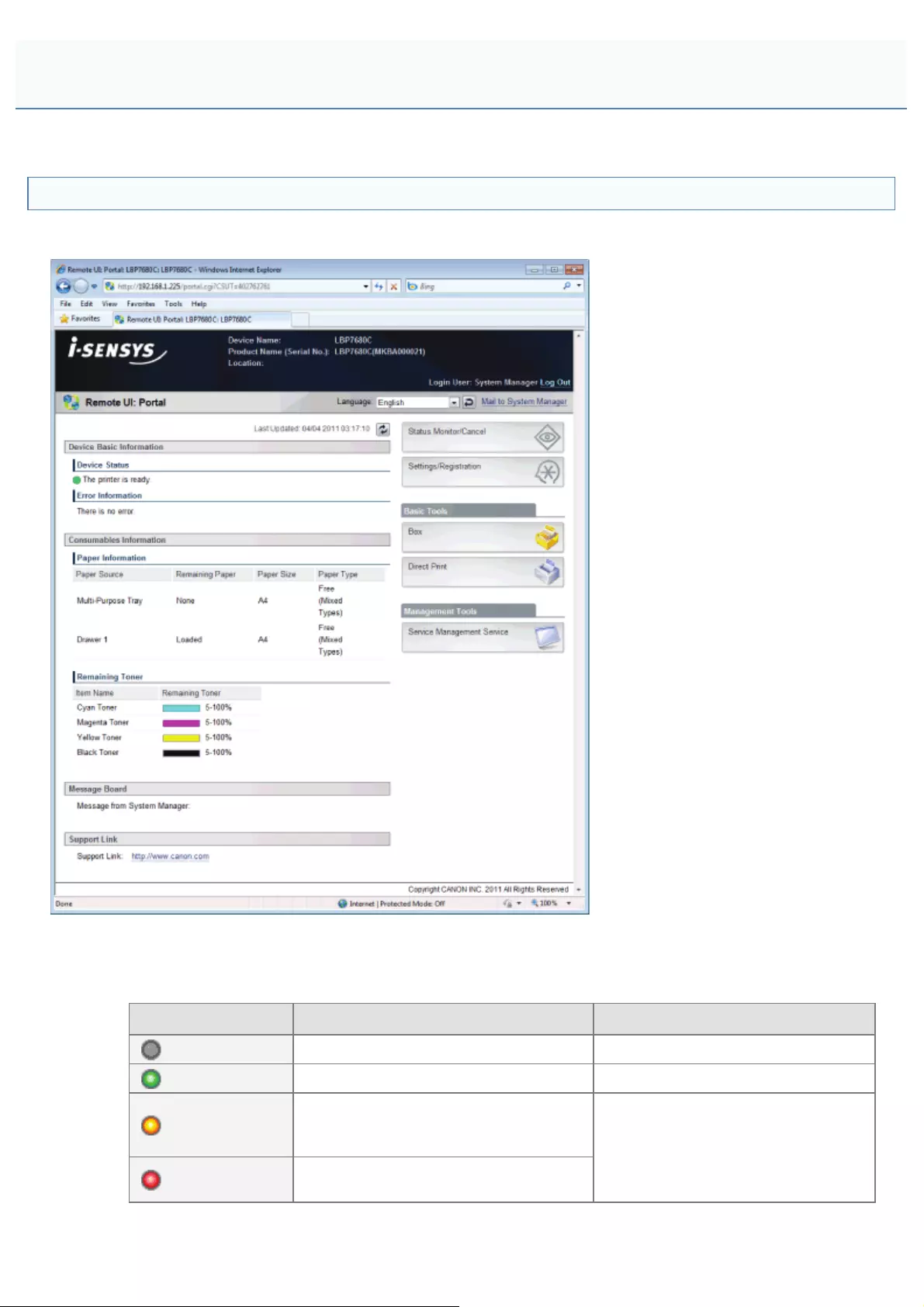
0258-087
Remote UI Portal Page
The screen shown below, which is displayed when the Web browser is launched and you have logged in to the Remote UI,
is called the Portal Page.
(1) [Device Basic Information]
[Device Status]
The indicators and status messages show the current printer status. You can see the status of the printer from the
indicator colors, as shown below.
Indicator Color Printer Status Solution
(Gray): Offline (not accepting print data) Go back online and print.
(Green): Normal status (able to print)
(Yellow):
There is no printing trouble, but some
type of action is required (a warning
message is displayed) Follow the onscreen instructions
shown in [Error Information] below
and solve the problem.
(Red): Printing is not possible for some reason
(an error message is displayed)
[Error Information]
It displays error information generated by the printer.
Screen Layout of the Remote UI (Details on Each Setting Page)
㻡㻠㻠㻌㻛㻌㻥㻥㻤
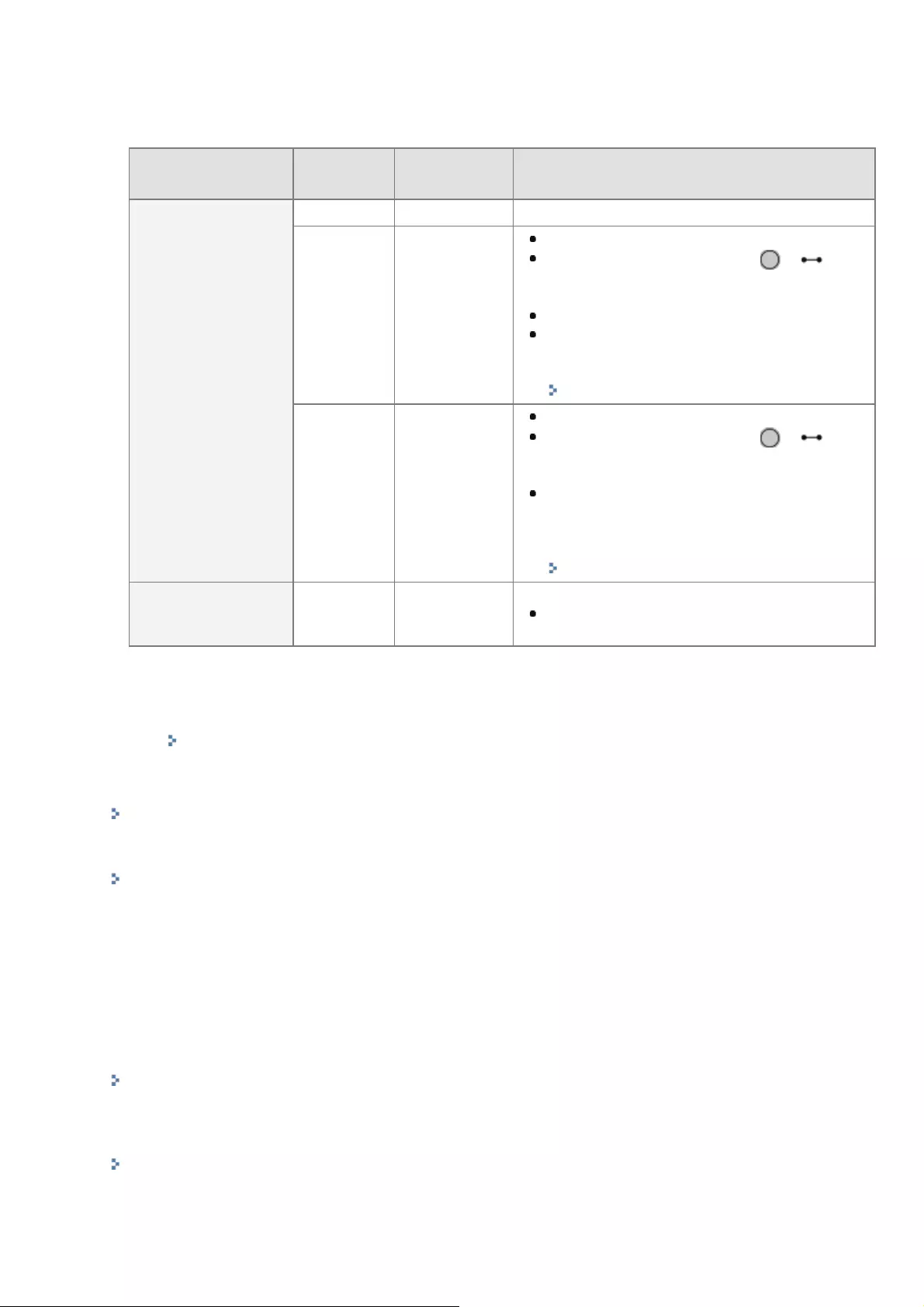
(2) [Consumables Information]
[Paper Information]
It displays paper level, size and type for each of the paper sources.
[Remaining Toner]
It displays the amount remaining in each color toner cartridge.
Item Name Remaining
Toner*1 Status Solution
Toner Cartridge
5-100% Able to print -
1-5%
The toner
cartridge
needs to be
replaced
soon
Printing will continue or stop.*2
If printing has stopped, press [ ] ( :
Online) on the printer control panel and
printing will continue.
Have a replacement toner cartridge ready.
We recommend that you replace the toner
cartridge before doing a large amount of
printing.
"Replacing Toner Cartridges"
0%
The toner
cartridge has
reached the
end of its life
Printing will continue or stop.*2
If printing has stopped, press [ ] ( :
Online) on the printer control panel and
printing will continue.
Since continuing the printing in this
condition may cause the printer to
malfunction, we recommend that you
replace the toner cartridge with a new one.
"Replacing Toner Cartridges"
<Insert
Cartridge>
The toner
cartridge is
not installed
Install the toner cartridge properly.
*1 The remaining amount displayed is just a rough indication, and may be different from the actual
amount.
*2 Whether the printer continues or stops printing when the toner cartridge needs to be replaced soon
depends on the setting for [Warning Step] in the [Setup] menu.
"[Setup] Menu ([Control Menu] Options)"
(3) [Message Board]
It displays messages from the administrator.
"Display/Change Message Board Messages and Support Links"
(4) [Support Link]
It displays links to information concerning printer support.
"Display/Change Message Board Messages and Support Links"
(5) [Language]
You can change the screen display language from the drop-down list.
(6) [Mail to System Manager]
You can send e-mail to the system manager.
(7) Update Button
Refresh the portal page display to the latest status.
(8) [Status Monitor/Cancel]
You can check and change the status of jobs the printer is processing. You can also check device status.
"[Status Monitor/Cancel] Menu "
(9) [Settings/Registration]
You can set/change the various printer settings. The items that can be set/changed differ depending on whether
you log in as administrator or end user.
"[Settings/Registration] Menu "
(10) [Box] (LBP7680Cx only)
When the optional SD card is installed, you can print, copy and send documents that are saved in the printer's
box.
㻡㻠㻡㻌㻛㻌㻥㻥㻤
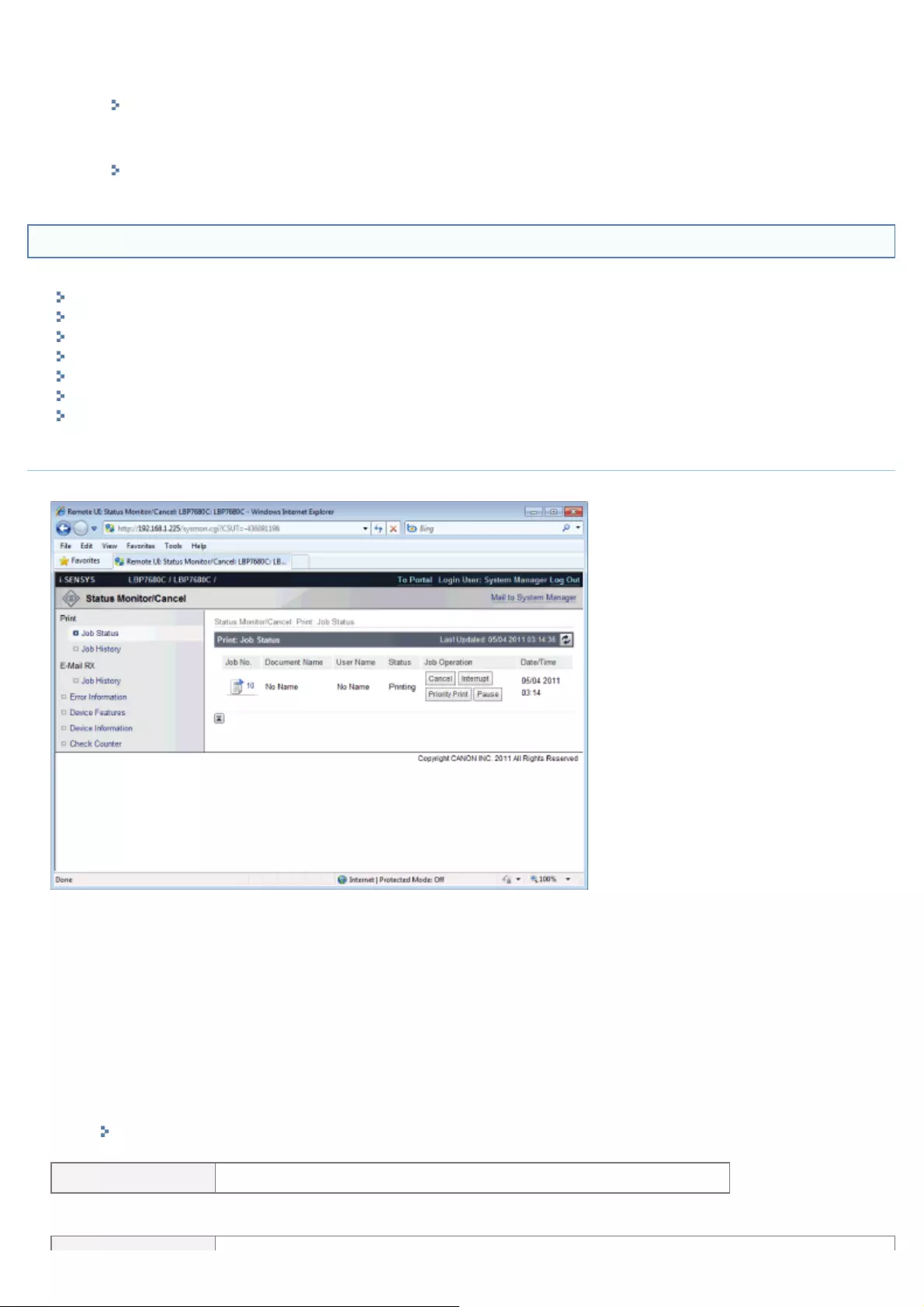
(11) [Direct Print]
Using the printer, you can print PDF files, PS/EPS files, image files and XPS files that are saved to the computer
you are using as is, without opening them.
"Printing without the Printer Driver (Direct Print)"
(12) [Service Management Service] (LBP7680Cx only)
It displays the SMS (Service Management Service) screen.
"MEAP (LBP7680Cx Only)"
[Status Monitor/Cancel] Menu
The following pages are in the [Status Monitor/Cancel] menu.
Print: [Job Status] Page
Print: [Job History] Page
E-Mail RX: [Job History] Page
[Error Information] Page
[Device Features] Page
[Device Information] Page
[Check Counter] Page
Print: [Job Status] Page
You can check the status of jobs that are currently printing and manage them using cancel/resume.
(1) [Job No.]
The Job No. of the job is displayed. When you click the Job No., the job's details are displayed.
(2) [Document Name]
The name of the job is displayed. For e-mail printing jobs, the subject of the e-mail is displayed.
(3) [User Name]
The user name of the job is displayed. For e-mail printing jobs, the e-mail sender is displayed.
(4) [Status]
The status of the job is displayed.
(5) [Job Operation]
It runs the job operation. Click the button for the operation that you want to run.
"Managing Print Jobs"
[Cancel] It cancels the printing of the job that you clicked on and deletes the job.
When the SD card is installed, you can run the following operations. (LBP7680Cx only)
㻡㻠㻢㻌㻛㻌㻥㻥㻤
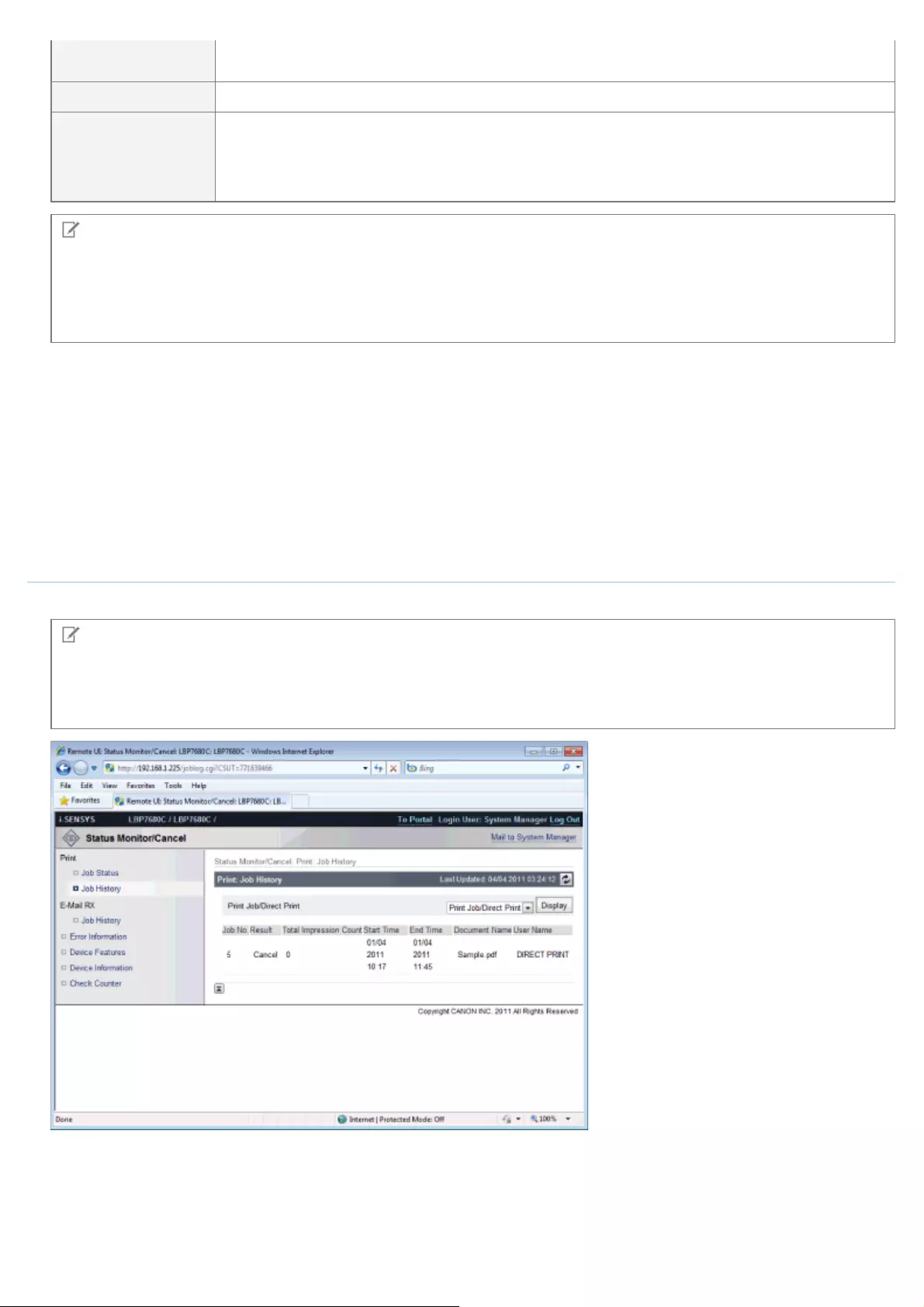
[Interrupt] It pauses the job that is currently being output, and makes the new job the printing priority.
When the new job is finished printing, it resumes printing the paused job.
[Priority Print] The output order of the job is moved up by one.
[Pause]/[Resume]
When you click [Pause], it pauses the job output. The button for the paused job changes to
[Resume].
When you click [Resume], the paused job resumes. The button for the resumed job goes back
to [Pause].
NOTE
[Job Operation]
When logged on in End-User mode, it is possible to operate jobs with user names that match using [Management
Settings] of [Settings/Registration] - [Management Settings] - [Security] only when job operation by end users is
permitted.
(6) [Dept. ID]
If department ID is set, the department ID for the job is displayed. (LBP7680Cx only)
(7) [Date/Time]
The date and time the job was input is displayed.
(8) Update Button
It refreshes the [Job Status] page display to the latest status.
(9) [Back to Page Top]
It moves the scroll box up to the top of the page.
Print: [Job History] Page
The Print Job/Direct Print, saved job, report printing and e-mail Job History are displayed.
NOTE
[Job History] Page Display
It is possible to display Job History only when displaying job history is permitted by [Display Job History] of
[Settings/Registration] – [Management Settings] – [Security].
(1) Display Toggling
Select the job history to display. Only the selected type of job history is displayed in the list.
[Print Job/Direct Print]
[Stored Job] (LBP7680Cx only)
[Report]
㻡㻠㻣㻌㻛㻌㻥㻥㻤
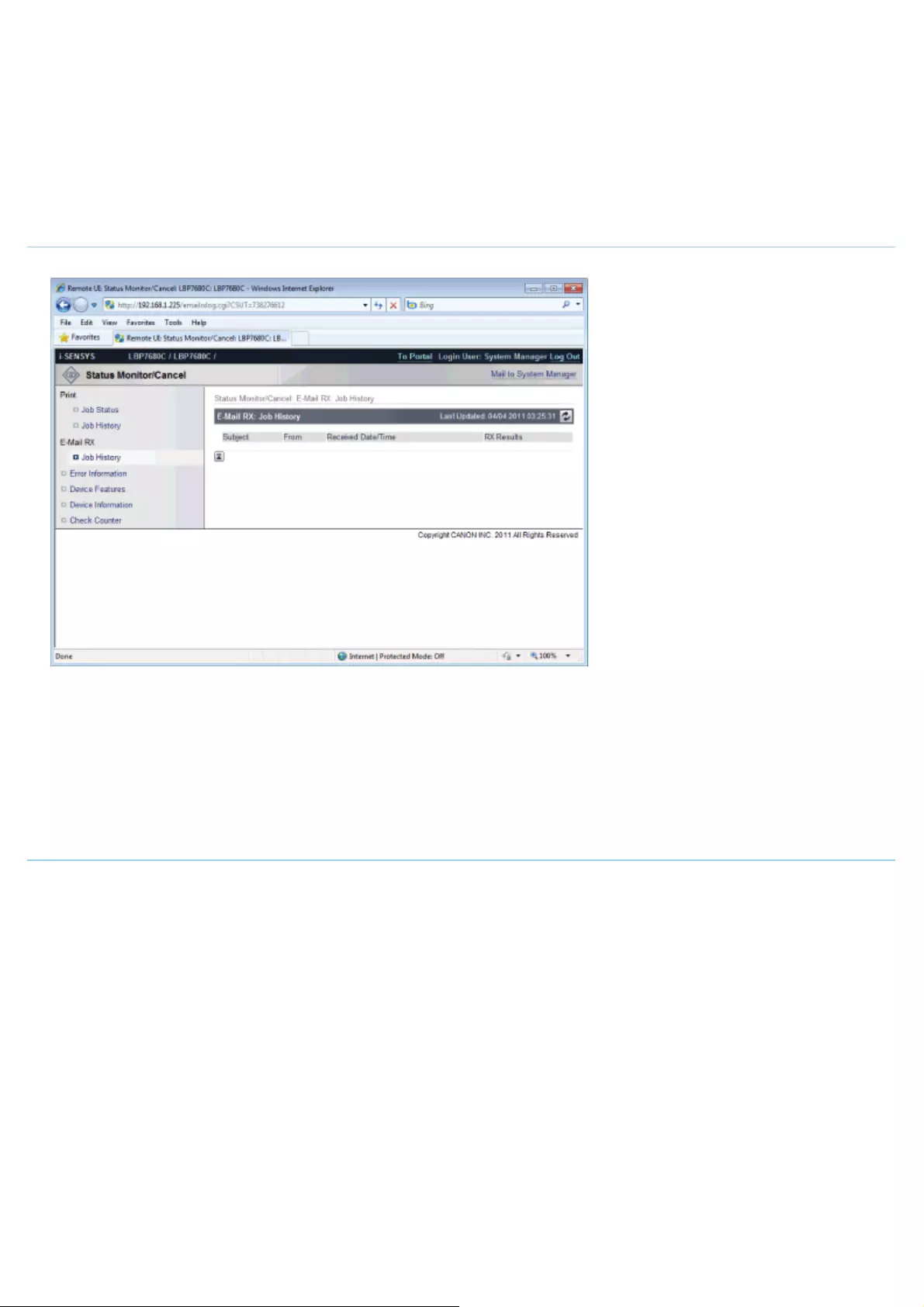
[E-Mail Print]
(2) Display Job History
The output job history list is displayed.
(3) Update Button
It refreshes the [Job History] page display to the latest status.
(4) [Back to Page Top]
It moves the scroll box up to the top of the page.
E-Mail RX: [Job History] Page
It displays the received e-mail history.
(1) Display Job History
The received e-mail history list is displayed.
(2) Update Button
It refreshes the [Job History] page display to the latest status.
(3) [Back to Page Top]
It moves the scroll box up to the top of the page.
[Error Information] Page
Information about errors occurring in the printer is displayed.
㻡㻠㻤㻌㻛㻌㻥㻥㻤
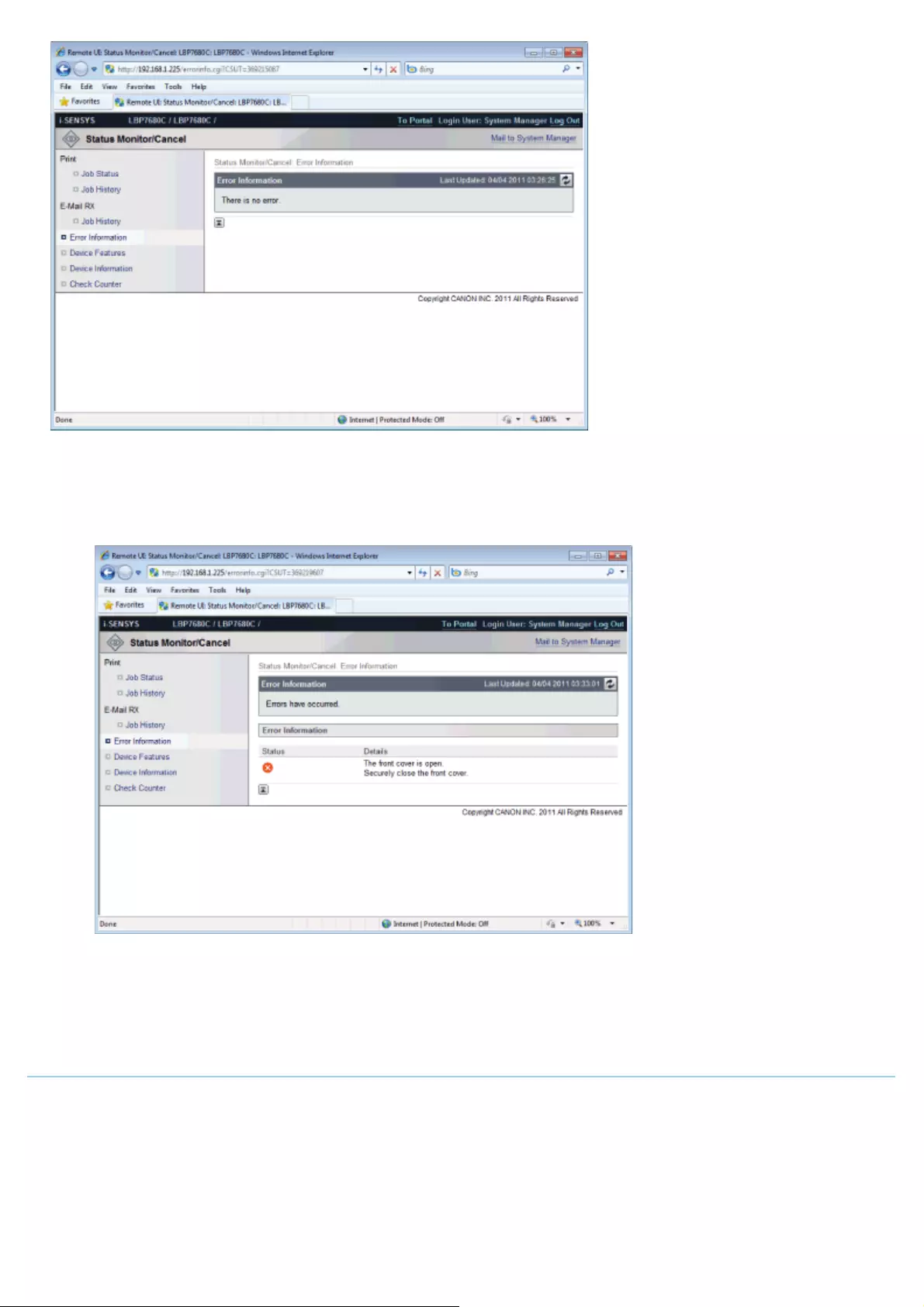
(1) [Error Information] (Number of Errors)
It displays whether or not errors have occurred, and if there are errors, the number of errors.
(2) [Error Information] (Information)
It displays status and solutions for the error information occurring in the printer.
The meanings of the displayed icons are shown below.
(3) Update Button
It refreshes the [Error Information] page display to the latest status.
(4) [Back to Page Top]
It moves the scroll box up to the top of the page.
[Device Features] Page
The printer equipment information and the functions that can be used in the current equipment status are displayed.
㻡㻠㻥㻌㻛㻌㻥㻥㻤
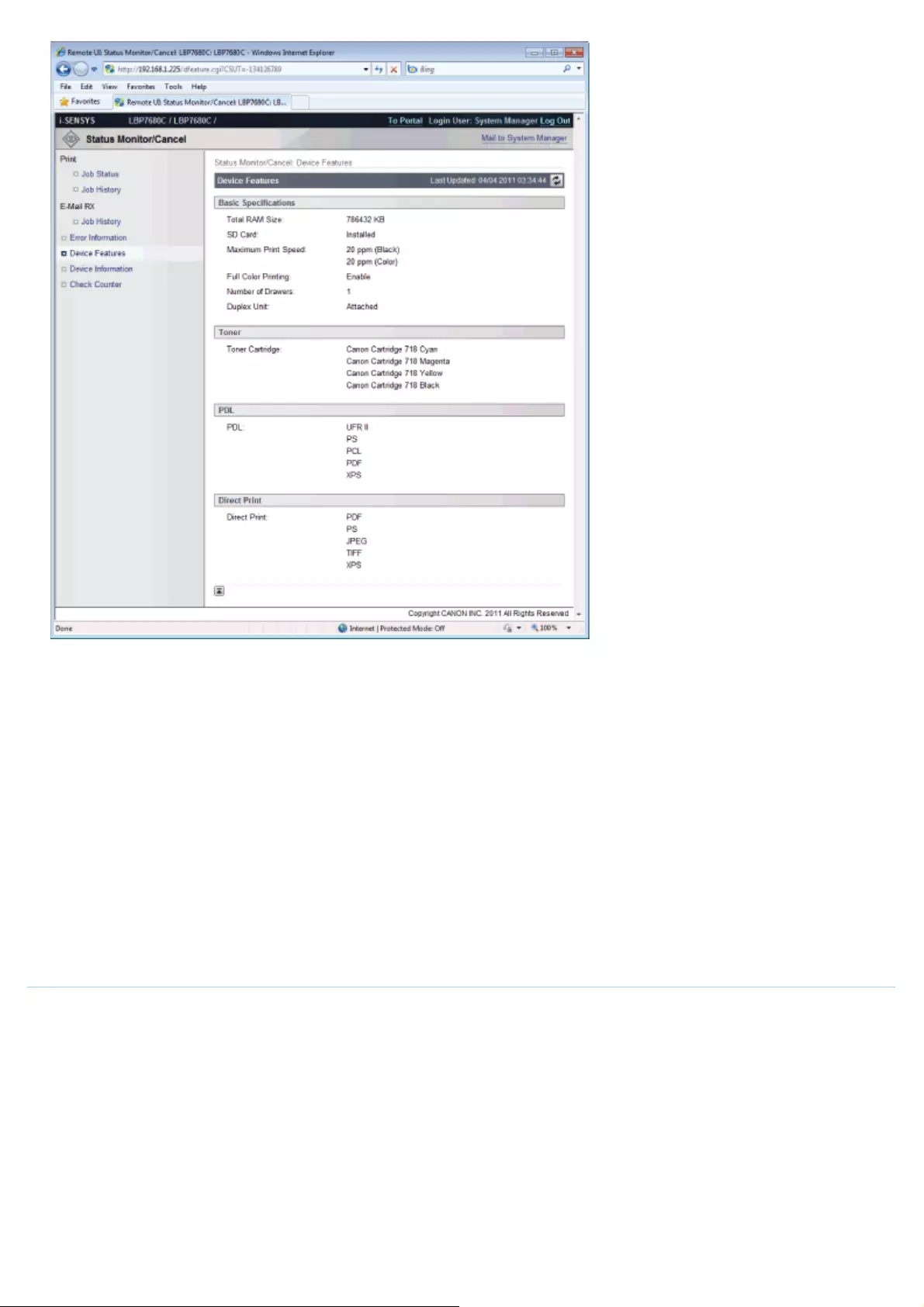
(1) [Basic Specifications]
The amount of RAM installed in the printer console, the installed options and the basic printing performance are
displayed.
(2) [Toner]
Information about the toner cartridges installed in the printer is displayed.
(3) [PDL]
The page description languages that can be used by the printer are displayed.
(4) [Direct Print]
The file formats and document formats that can be used by Direct Print are displayed.
(5) Update Button
It refreshes the [Device Features] page display to the latest status.
(6) [Back to Page Top]
It moves the scroll box up to the top of the page.
[Device Information] Page
The basic information about the printer and the system manager information are displayed.
㻡㻡㻜㻌㻛㻌㻥㻥㻤
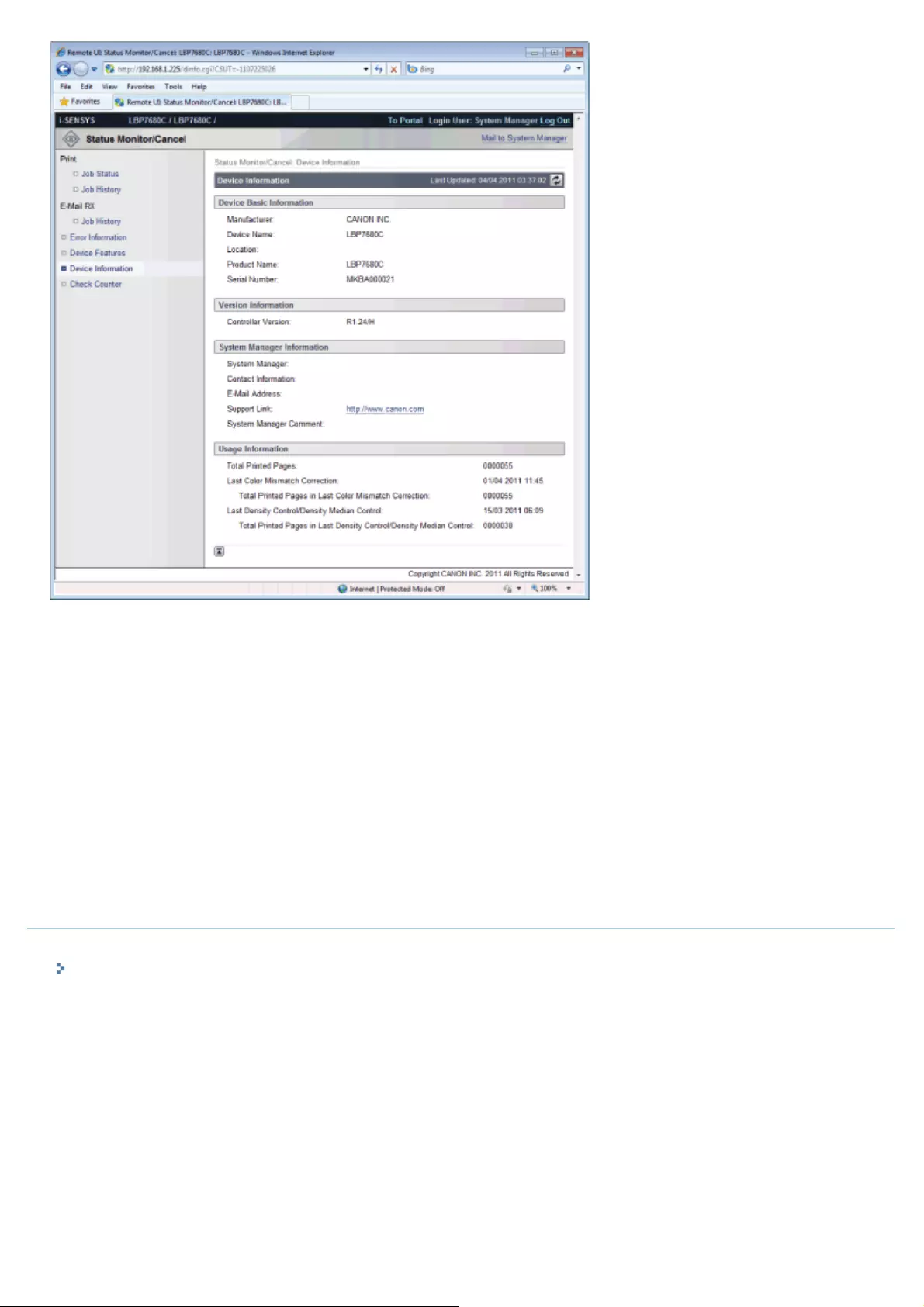
(1) [Device Basic Information]
The basic information about the printer is displayed.
(2) [Version Information]
The printer controller version is displayed.
(3) [System Manager Information]
Information about the registered system manager is displayed.
(4) [Usage Information]
The number of pages printed and the date of the last maintenance are displayed.
(5) Update Button
It refreshes the [Device Information] page display to the latest status.
(6) [Back to Page Top]
It moves the scroll box up to the top of the page.
[Check Counter] Page
The number of pages printed is displayed.
"Checking the Number of the Printed Pages"
㻡㻡㻝㻌㻛㻌㻥㻥㻤
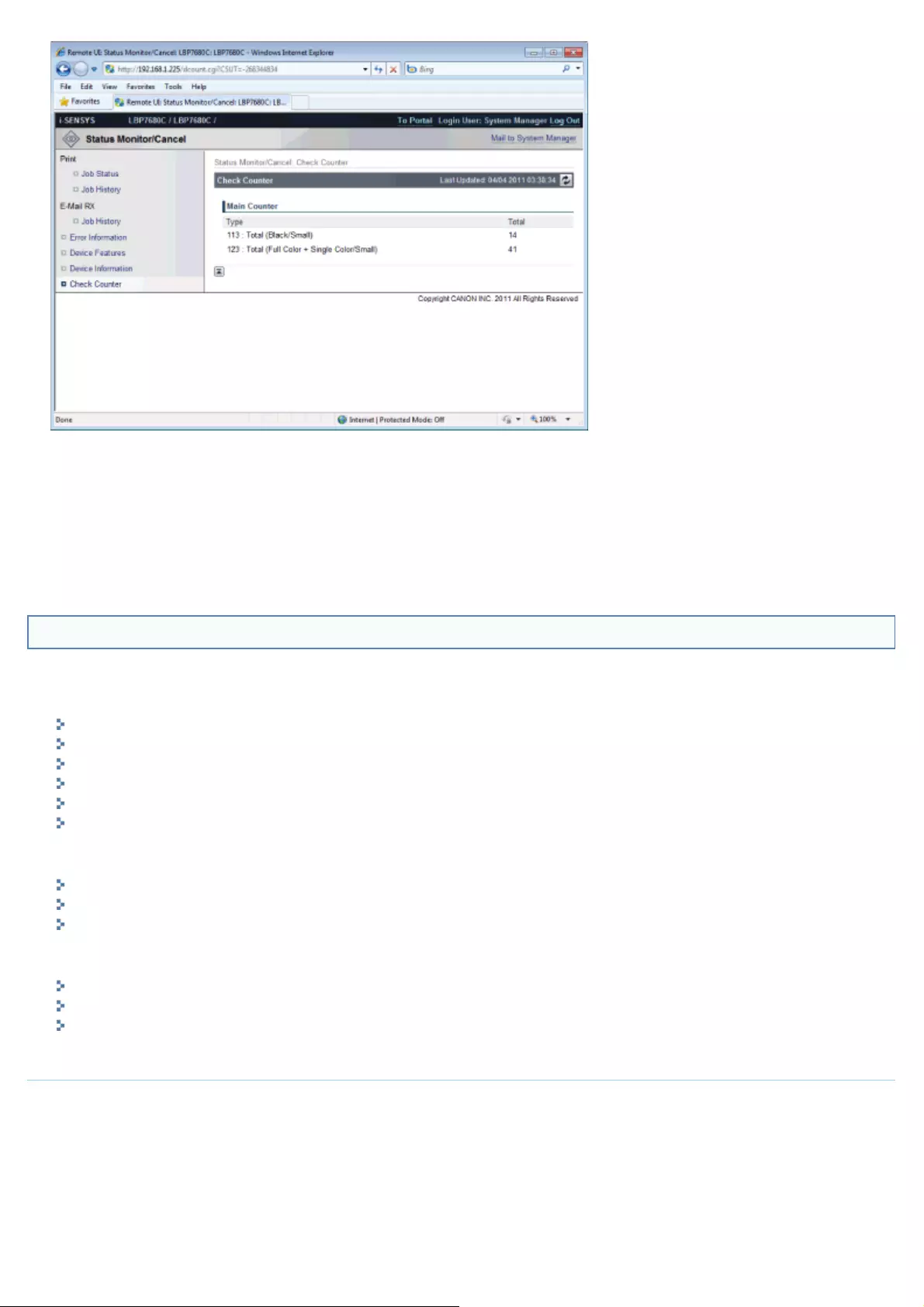
(1) [Main Counter]
The number of pages printed for each counter is displayed.
(2) Update Button
It refreshes the [Check Counter] page display to the latest status.
(3) [Back to Page Top]
It moves the scroll box up to the top of the page.
[Settings/Registration] Menu
The following pages show the settings that can be checked using the [Settings/Registration] menu.
[Preferences]
[Control Menu] Page
[Paper Source Menu] Page
[Network] Page
[Layout Menu] Page
[Quality Menu] Page
[User Maintenance Menu] Page
[Output/Control]
[Utility Menu] Page
[Calibration] Page
[Device Control] Page
[Management Settings]
[Department ID Management] Page (LBP7680Cx Only)
[Security] Page
[License/Other] Page/[Message Board/Support Link] Page
[Control Menu] Page
It displays the operation settings for energy-saving mode (Sleep Mode) and when errors occur.
For details on the settings, see "[Setup] Menu ([Control Menu] Options)."
㻡㻡㻞㻌㻛㻌㻥㻥㻤
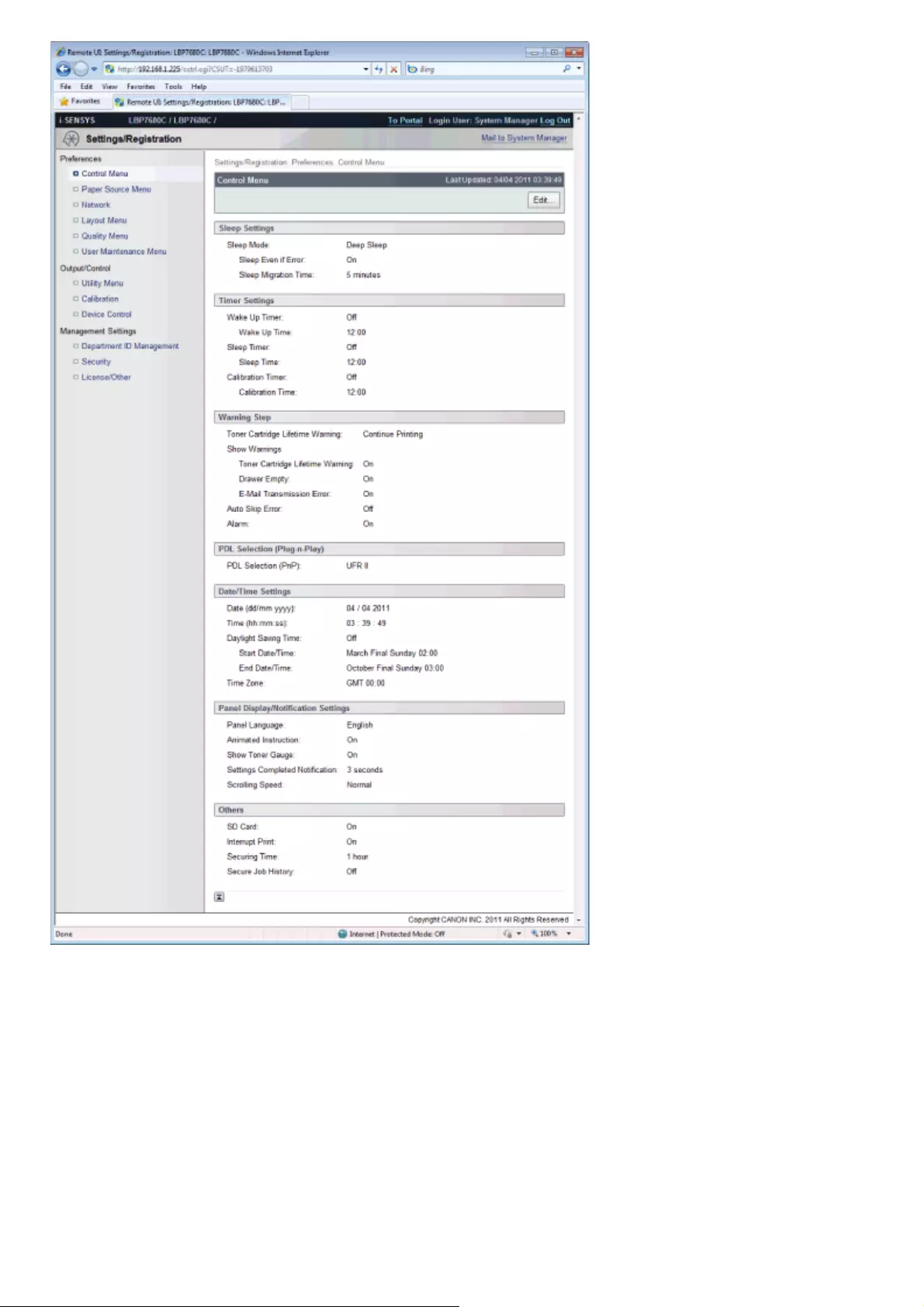
(1) [Sleep Settings]
The settings related to sleep mode operation are displayed.
(2) [Timer Settings]
The settings related to timer operation are displayed.
(3) [Warning Step]
The settings related to warning display are displayed.
(4) [PDL Selection (Plug-n-Play)]
The currently selected page description language is displayed.
(5) [Date/Time Settings]
The settings related to date and time are displayed.
(6) [Panel Display/Notification Settings]
The settings related to control panel display are displayed.
(7) [Others]
㻡㻡㻟㻌㻛㻌㻥㻥㻤
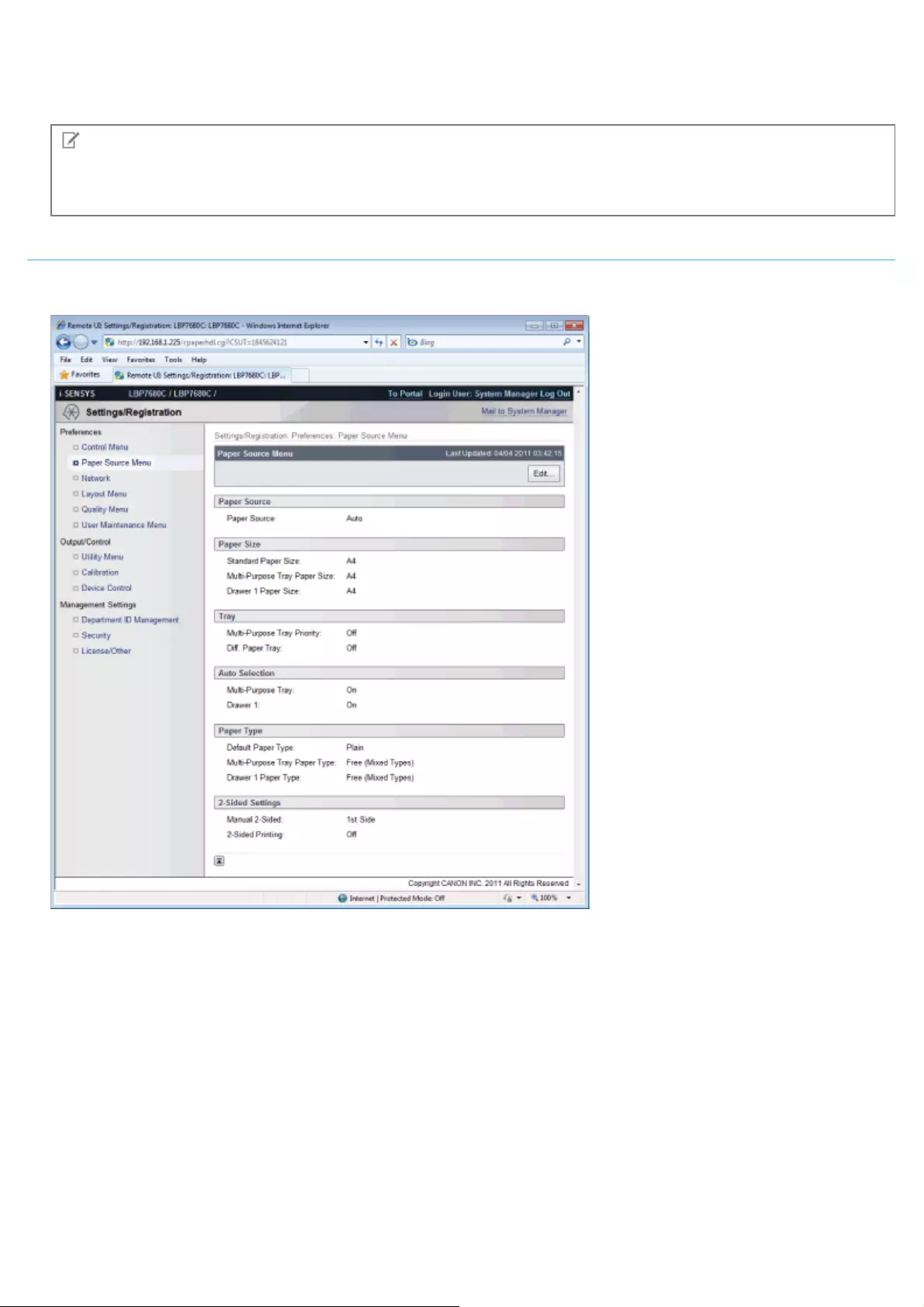
Other operation settings not included in the above categories are displayed.
(8) [Back to Page Top]
It moves the scroll box up to the top of the page.
NOTE
Changing Settings
You can only change settings when you are logged on in system manager mode.
[Paper Source Menu] Page
It displays the settings for paper size, etc. when printing from the multi-purpose tray or paper drawer.
For details on the settings, see "[Setup] Menu ([Paper Source] Options)" or "[Select Feeder] Menu."
(1) [Paper Source]
The currently selected paper source is displayed.
(2) [Paper Size]
The paper size selected for each paper source is displayed.
(3) [Tray]
The operation settings related to the multi-purpose tray are displayed.
(4) [Auto Selection]
It displays whether to recognize the paper source for auto selection when [Auto] is set for [Paper Source] for each
paper source.
(5) [Paper Type]
The paper type selected for each paper source is displayed.
(6) [2-Sided Settings]
The settings related to 2-sided printing are displayed.
(7) [Back to Page Top]
㻡㻡㻠㻌㻛㻌㻥㻥㻤
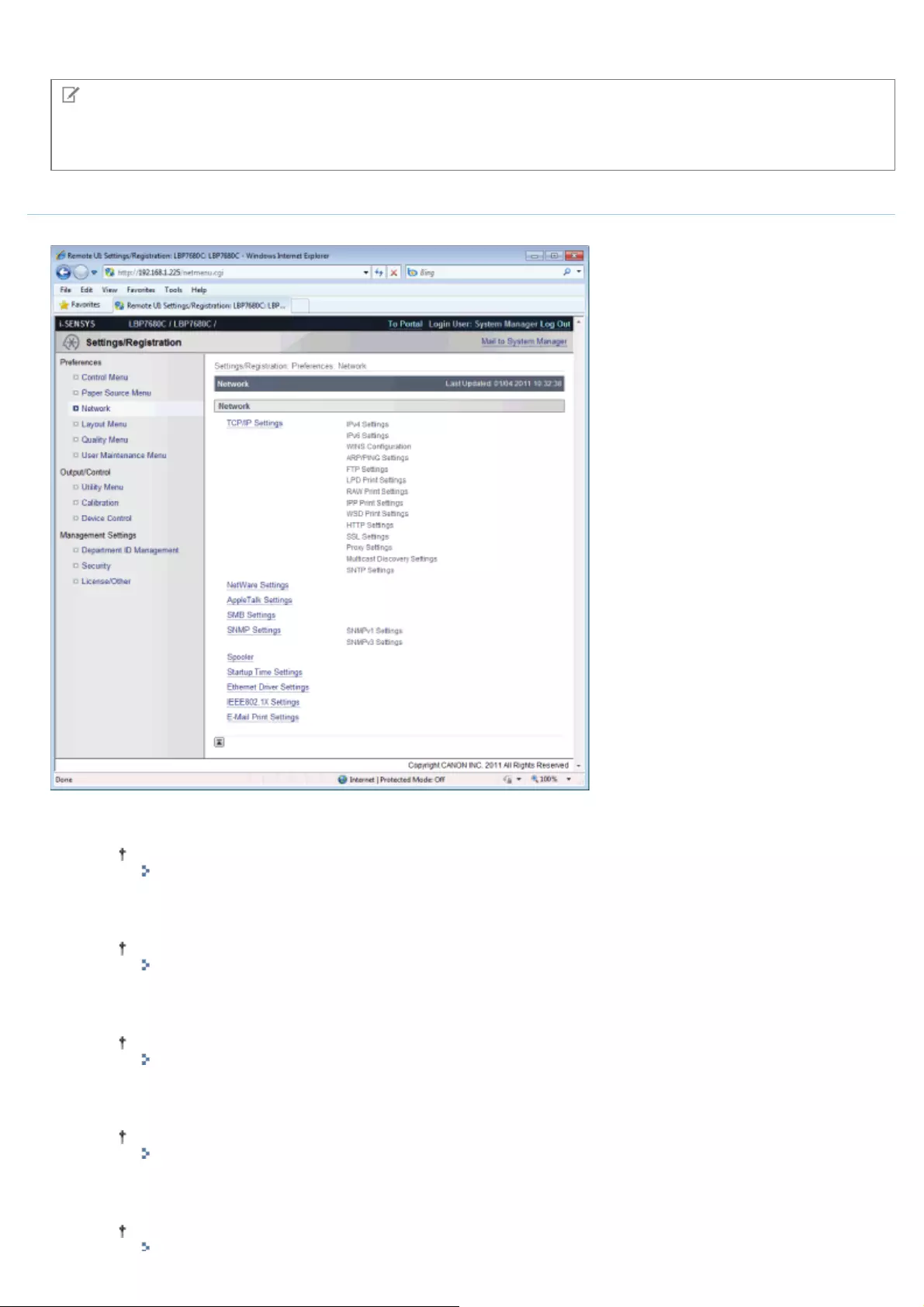
It moves the scroll box up to the top of the page.
NOTE
Changing Settings
You can only change settings when you are logged on in system manager mode.
[Network] Page
It displays the printer's network settings, etc.
(1) [TCP/IP Settings]
It displays the TCP/IP settings.
How to change settings
"Configuring the Protocol Settings"
(2) [NetWare Settings] (LBP7680Cx only)
It displays the NetWare settings.
How to change settings
"Network Settings for the Printer (NetWare) (LBP7680Cx Only)"
(3) [AppleTalk Settings]
It displays the AppleTalk settings.
How to change settings
"Configuring the Protocol Settings"
(4) [SMB Settings] (LBP7680Cx only)
It displays the SMB settings.
How to change settings
"Network Settings for the Printer (SMB) (LBP7680Cx Only)"
(5) [SNMP Settings]
It displays the SNMP settings.
How to change settings
㻡㻡㻡㻌㻛㻌㻥㻥㻤
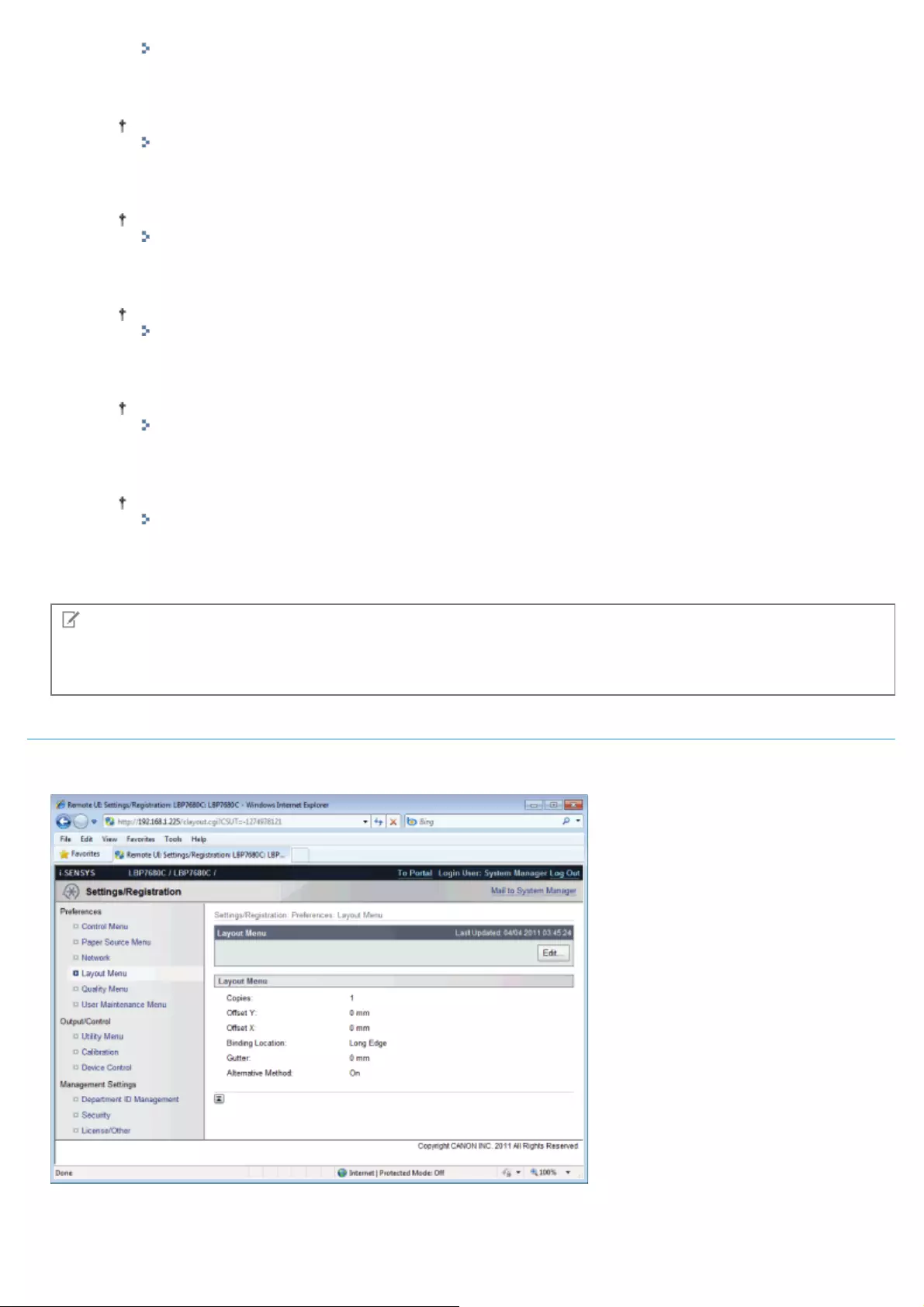
"Restricting the Users Who Can Monitor/Change the Settings Using the SNMP Protocol"
(6) [Spooler] (LBP7680Cx only)
It displays the spool function settings when the SD card is installed.
How to change settings
"Setting the Spooling Function (LBP7680Cx Only)"
(7) [Startup Time Settings]
It displays the startup time settings.
How to change settings
"Specifying the Setting for Startup Waiting Time"
(8) [Ethernet Driver Settings]
It displays the network interface settings.
How to change settings
"Changing the Network Transmission Speed or Transfer Mode"
(9) [IEEE802.1X Settings]
It displays IEEE802.1X security settings.
How to change settings
"Setting IEEE802.1X Authentication "
(10) [E-Mail Print Settings]
It displays the e-mail print settings.
How to change settings
"Receiving E-mail Data on the Mail Server and Printing (E-mail Print)"
(11) [Back to Page Top]
It moves the scroll box up to the top of the page.
NOTE
Changing Settings
You can only change settings when you are logged on in system manager mode.
[Layout Menu] Page
It displays the settings relating to print appearance, such as adjustment of print position and setting gutter margins.
For details on the settings, see "[Setup] Menu ([Layout] Options)."
(1) [Layout Menu]
The settings for number of pages and print appearance are displayed.
㻡㻡㻢㻌㻛㻌㻥㻥㻤
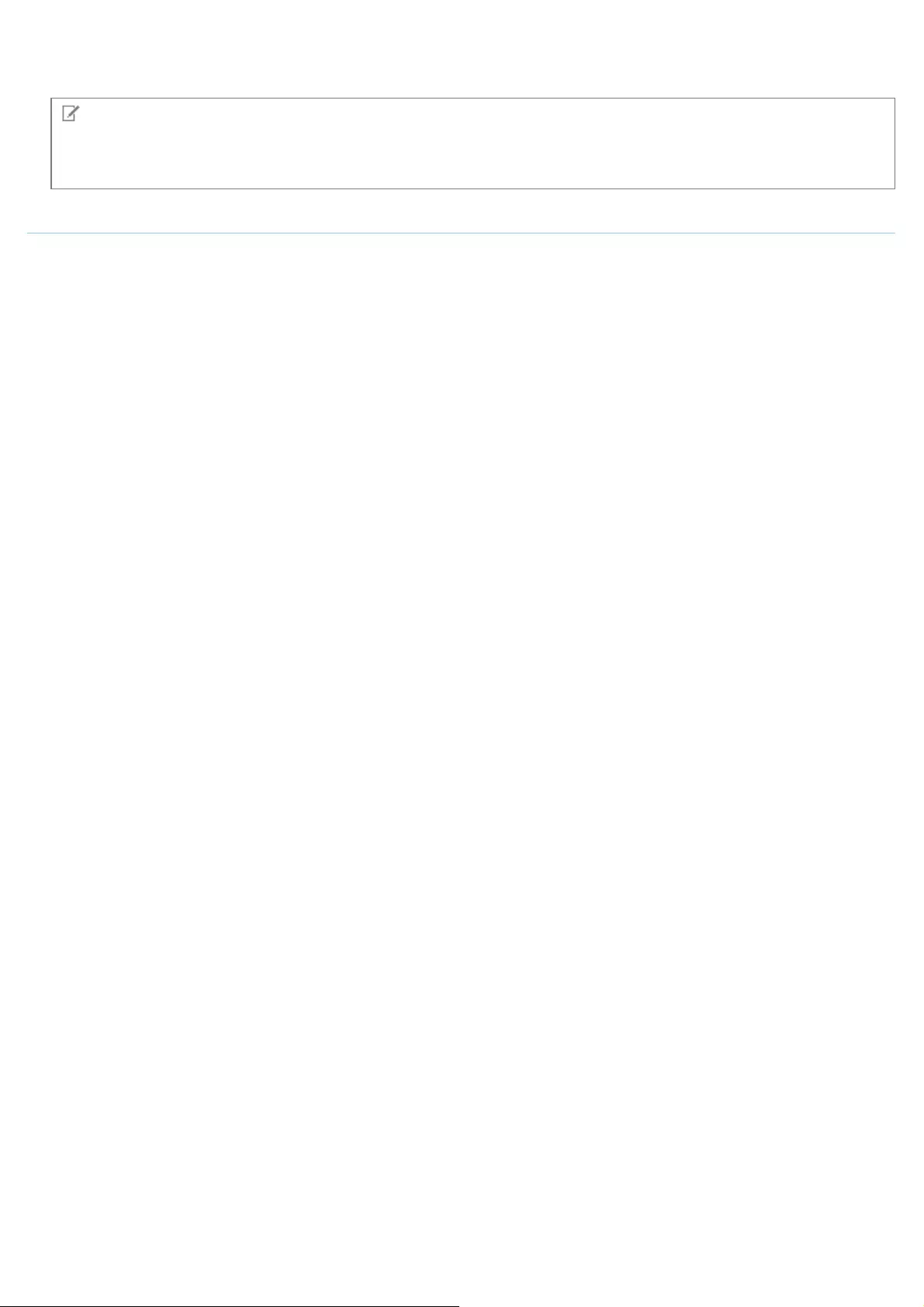
(2) [Back to Page Top]
It moves the scroll box up to the top of the page.
NOTE
Changing Settings
You can only change settings when you are logged on in system manager mode.
[Quality Menu] Page
It displays the settings related to print quality, such as toner density adjustment.
For details on the settings, see "[Setup] Menu ([Quality] Options)."
㻡㻡㻣㻌㻛㻌㻥㻥㻤
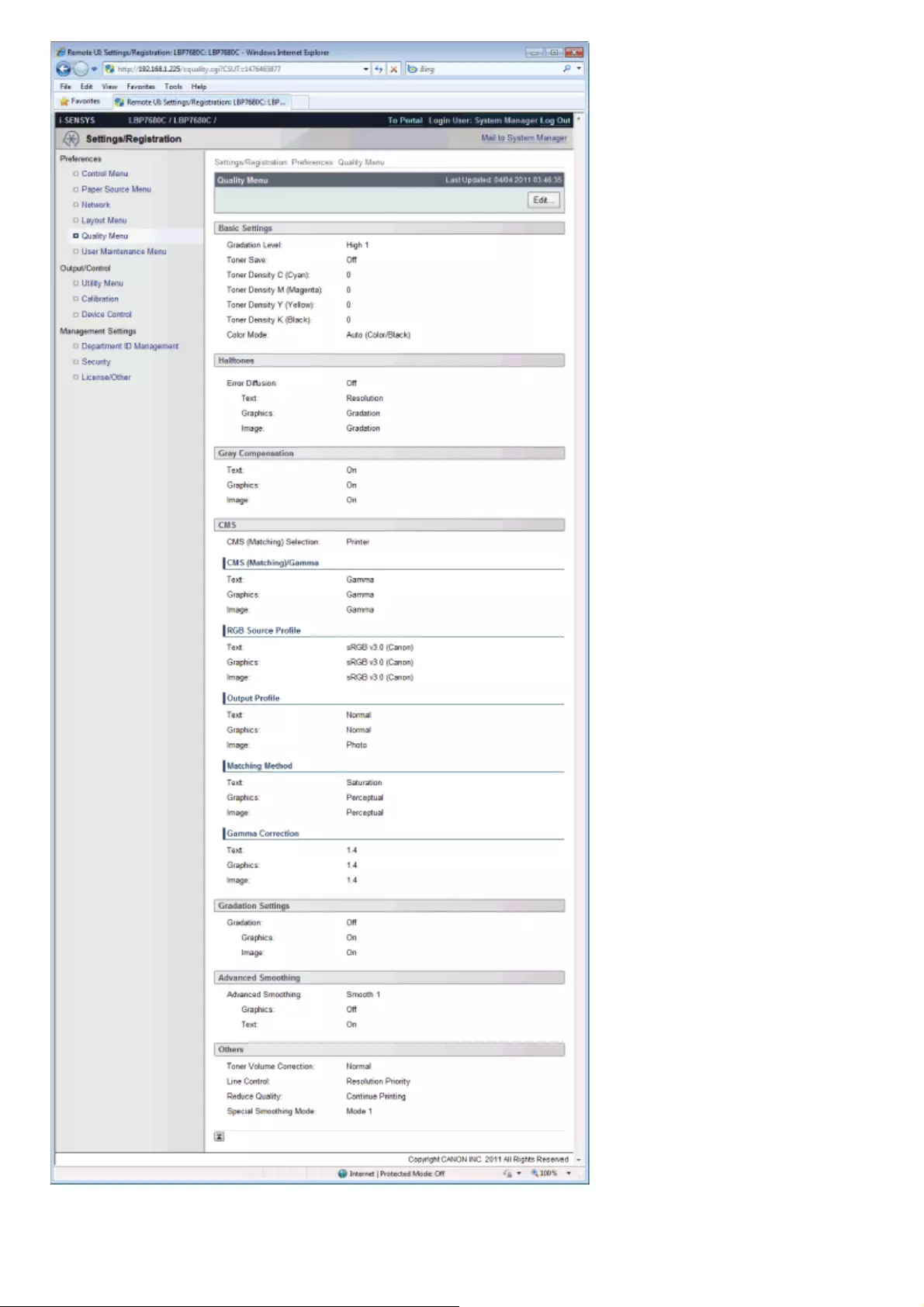
(1) [Basic Settings]
It displays the settings related to printing resolution and toner.
㻡㻡㻤㻌㻛㻌㻥㻥㻤
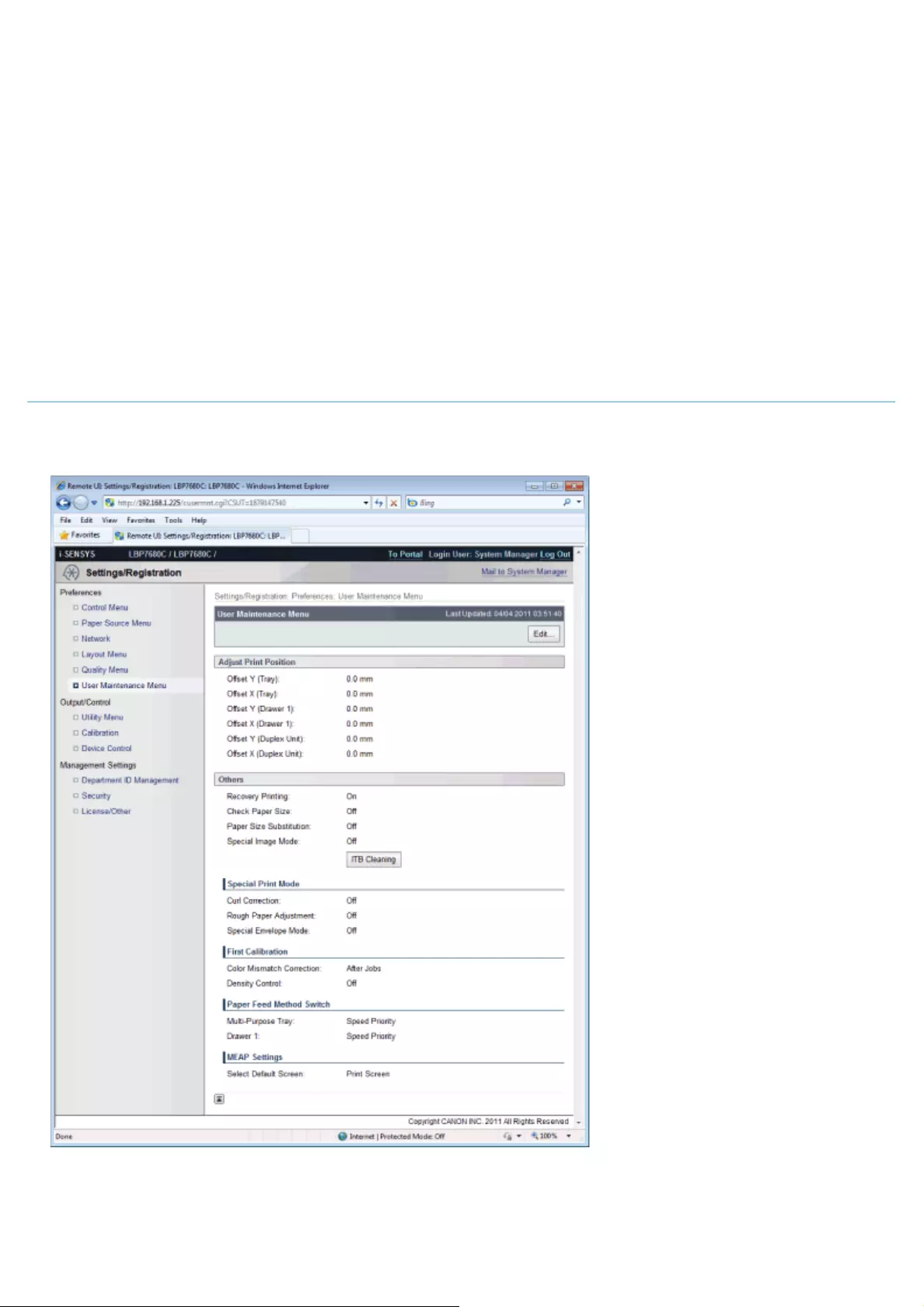
(2) [Halftones]
It displays the settings related to halftone representation method when printing.
(3) [Gray Compensation]
It displays the settings related to gray compensation.
(4) [CMS]
It displays the settings related to color management.
(5) [Gradation Settings]
It displays the settings related to gradation processing.
(6) [Advanced Smoothing]
It displays the settings related to gradation processing.
(7) [Others]
The settings related to other print quality are displayed.
(8) [Back to Page Top]
It moves the scroll box up to the top of the page.
[User Maintenance Menu] Page
It displays the settings for printer adjustment from a specified paper source if a problem occurs, such as adjustment of print
position and recovery printing.
For details on the settings, see "[Setup] Menu ([User Maintenance] Options)."
(1) [Adjust Print Position]
It displays the print position adjustment settings for each paper source.
(2) [Others]
It displays the settings for operation and maintenance if a problem occurs.
㻡㻡㻥㻌㻛㻌㻥㻥㻤
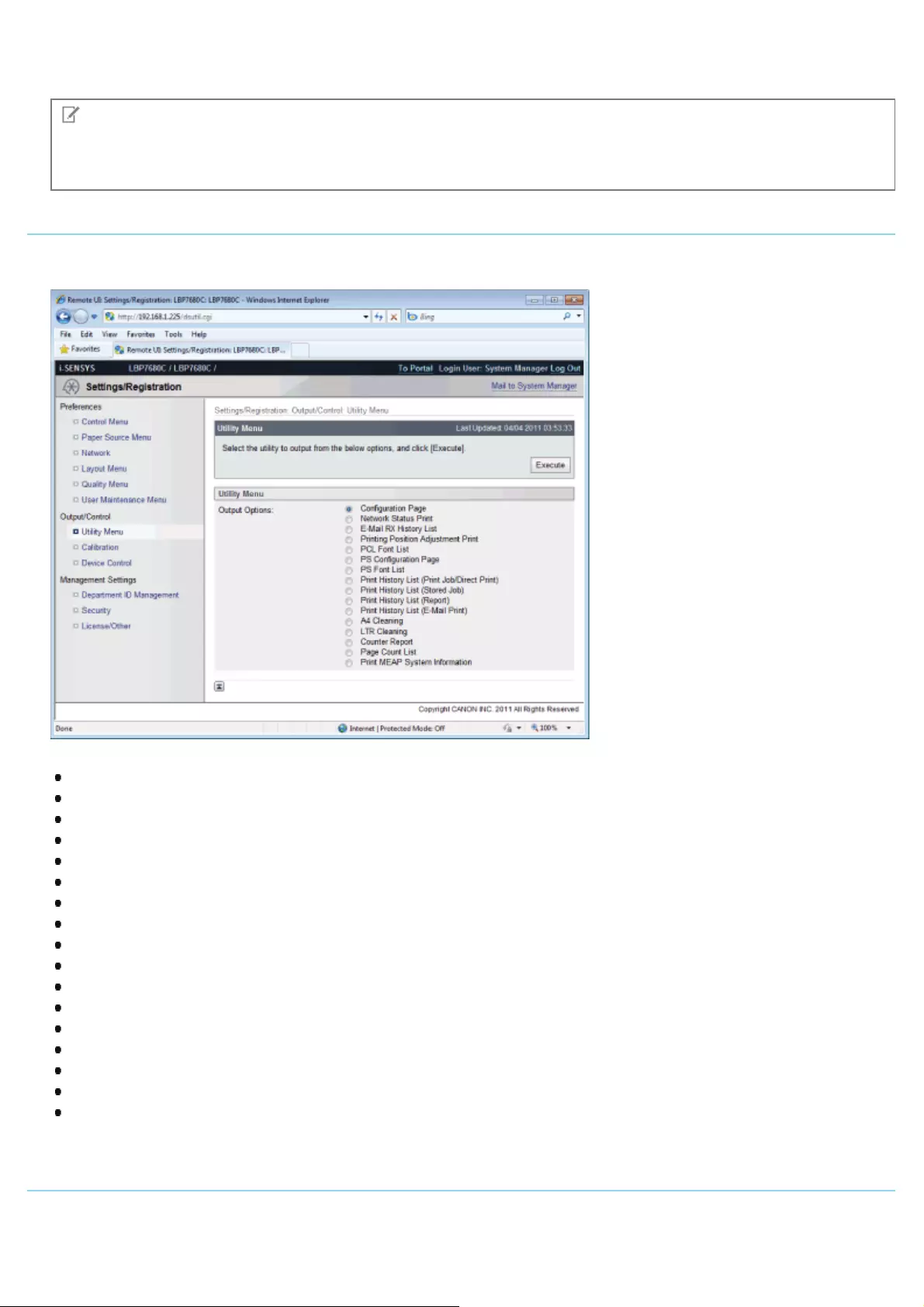
(3) [Back to Page Top]
It moves the scroll box up to the top of the page.
NOTE
Changing Settings
You can only change settings when you are logged on in system manager mode.
[Utility Menu] Page
You can print each type of management report. Select the item to output, and then click [Execute].
For details on the settings, see "[Utility Menu] Menu."
The following management reports can be output.
Configuration Page
Network Status Print
E-Mail RX History List
Printing Position Adjustment Print
Stored Job List (LBP7680Cx only)*
PCL Font List
PS Configuration Page (LBP7680Cx only)
PS Font List (LBP7680Cx only)
Print History List (Print Job/Direct Print)
Print History List (Stored Job) (LBP7680Cx only)*
Print History List (Report)
Print History List (E-Mail Print)
A4 Cleaning
LTR Cleaning
Counter Report
Page Count List (LBP7680Cx only)
Print MEAP System Information (LBP7680Cx only)
* Only when the optional SD card is installed
[Calibration] Page
You can run each type of calibration. Select the item to run, and then click [Execute].
For details on the settings, see "[Utility Menu] Menu" or "Troubleshooting."
㻡㻢㻜㻌㻛㻌㻥㻥㻤
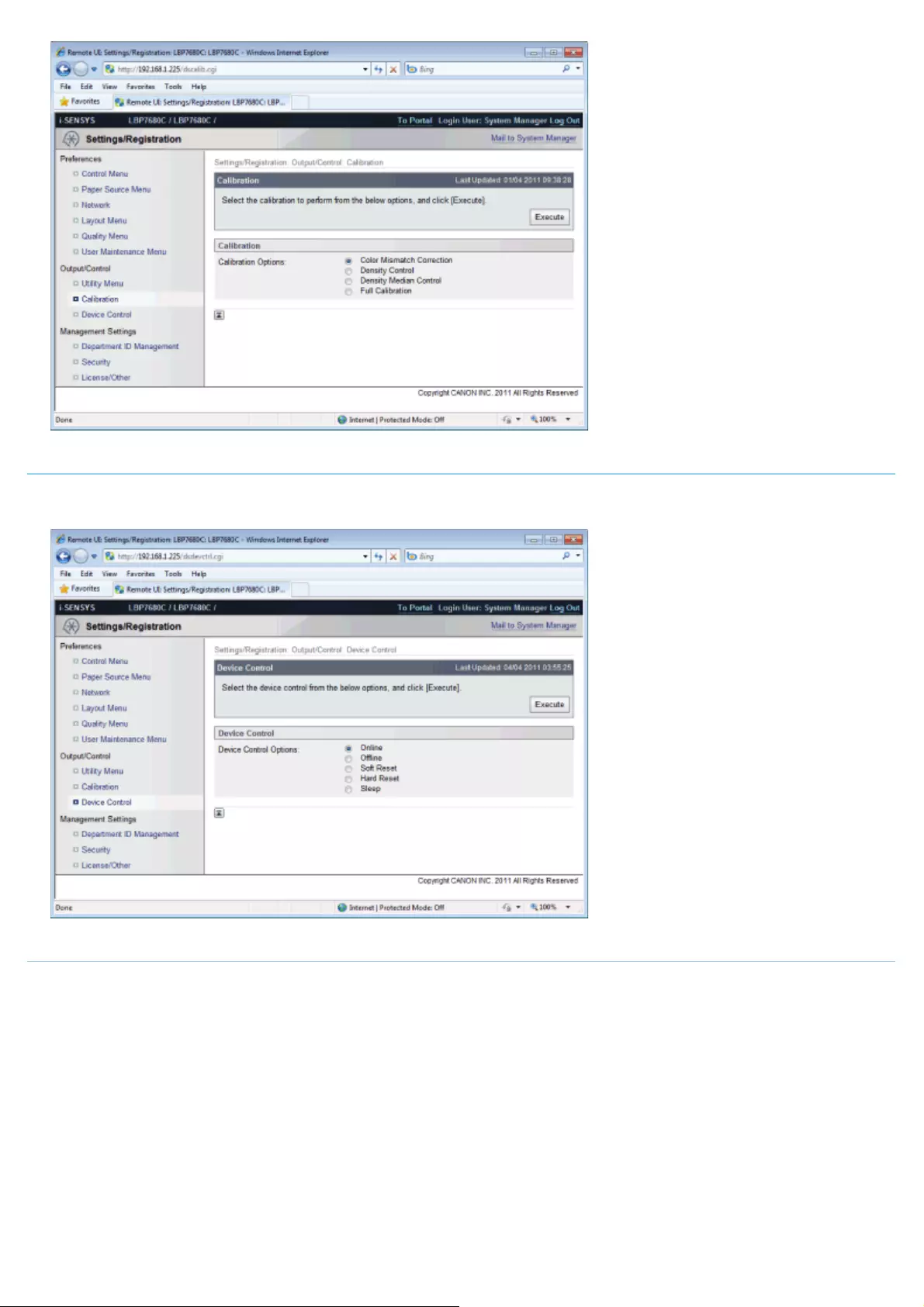
[Device Control] Page
It controls the printer. Select the item to run, and then click [Execute].
For details on the settings, see "[Reset] Menu" or "Basic Printer Operations."
[Department ID Management] Page (LBP7680Cx Only)
If department ID management is set, it displays the number of pages printed by each registered department.
For details on the settings, see "Specifying an ID for Each Department (LBP7680Cx Only)."
㻡㻢㻝㻌㻛㻌㻥㻥㻤

(1) [Department ID Page Total]
It displays the number of pages printed by each department.
(2) [Back to Page Top]
It moves the scroll box up to the top of the page.
[Security] Page
It displays printer information and security settings.
(1) [Management Settings]
It displays general information about the printer.
How to change settings
"Setting the Administrator Password"
"Specifying the Device Name or Administrator Information"
"Setting Restrictions for Print Jobs (LBP7680Cx Only)"
"Specifying the Job Operation Permission for End-Users"
"Locking the Keys on the Control Panel (Key Lock Function)"
"Setting Restrictions for USB Direct Print (LBP7680Cx Only)"
(2) [Remote UI Settings]
It displays whether the Remote UI is set to use the SSL encrypted communication function.
㻡㻢㻞㻌㻛㻌㻥㻥㻤

How to change settings
"Changing the Remote UI Settings"
(3) [Key and Certificate Settings]
It displays information on registered keys and certificates.
How to change settings
"Displaying the [Key and Certificate Settings] Page in the Remote UI"
(4) [CA Certificate Settings] (LBP7680Cx only)
It displays information on registered keys and certificates.
How to change settings
"Displaying the [CA Certificate Settings] Page in the Remote UI"
(5) [IPSec Settings] (LBP7680Cx only)
It displays the IPSec security policy list.
How to change settings
"Setting the IPSec Encryption Communication Function (LBP7680Cx Only)"
(6) [Display Job History]
It displays whether it is set to allow job history to be displayed.
How to change settings
"Specifying the Setting for Job Log Display"
(7) [IP Address Filter]
It displays information restricting users who can print and change settings.
How to change settings
"Restricting the Users Who Can Print or Perform the Printer Settings"
(8) [MAC Address Filter]
It displays information restricting users who have access.
How to change settings
"Restricting the Users Who Can Access"
(9) [Back to Page Top]
It moves the scroll box up to the top of the page.
NOTE
Changing the settings
You can only change settings when you are logged on in system manager mode.
[License/Other] Page/[Message Board/Support Link] Page
For LBP7680Cx
It displays the pages that the settings for message boards or support links, or registering or updating software are
performed.
㻡㻢㻟㻌㻛㻌㻥㻥㻤
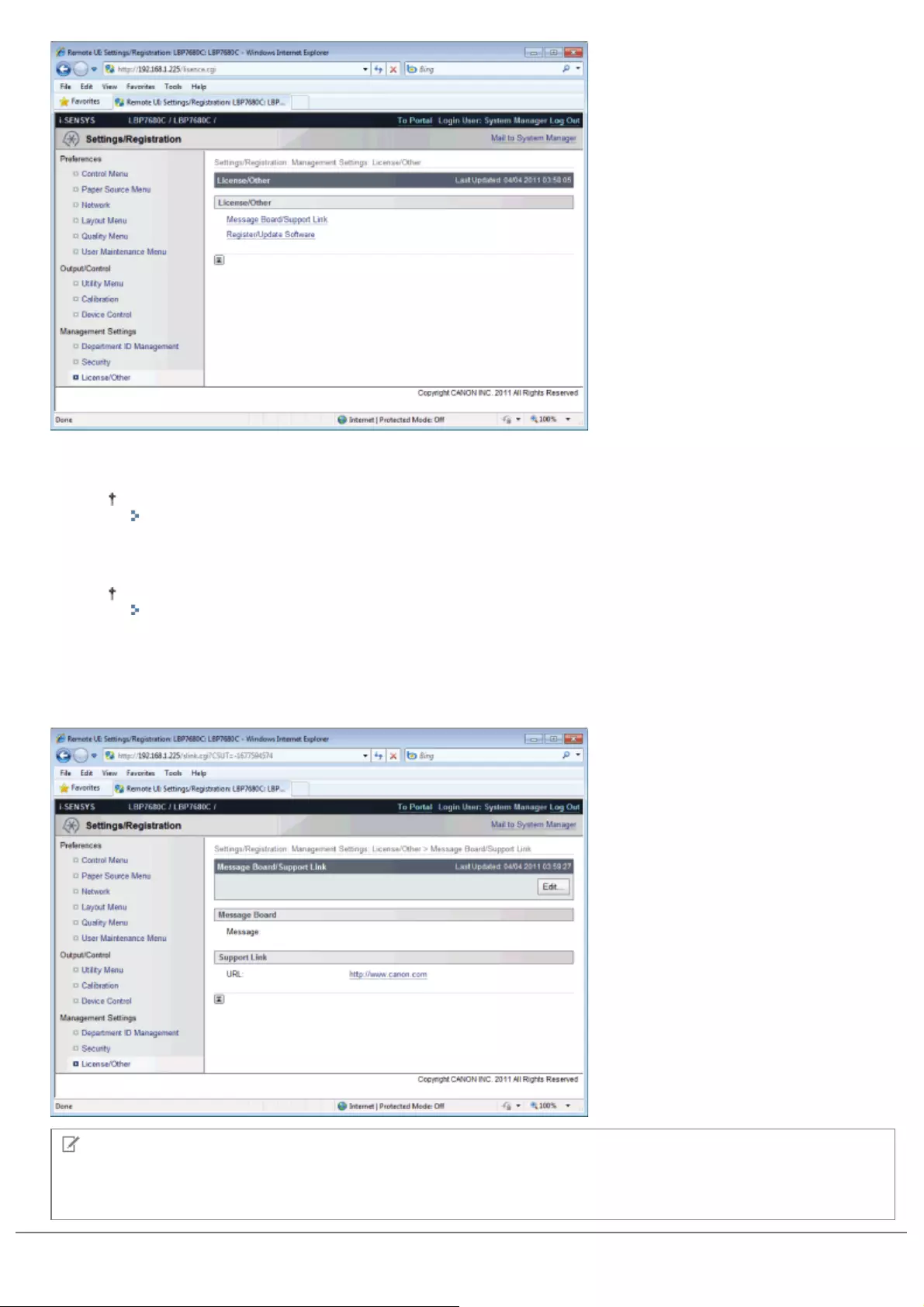
(1) [Message Board/Support Link]
It displays messages from the administrator and links to support pages.
How to change settings
"Display/Change Message Board Messages and Support Links"
(2) [Register/Update Software]
It displays the pages that registering or updating software is performed.
How to change settings
"Register/Update Software Function (LBP7680Cx Only)"
For LBP7660Cdn
It displays messages from the administrator and links to support pages.
See "Display/Change Message Board Messages and Support Links" for setting procedures.
NOTE
Changing the settings
You can only change settings when you are logged on in system manager mode.
㻡㻢㻠㻌㻛㻌㻥㻥㻤
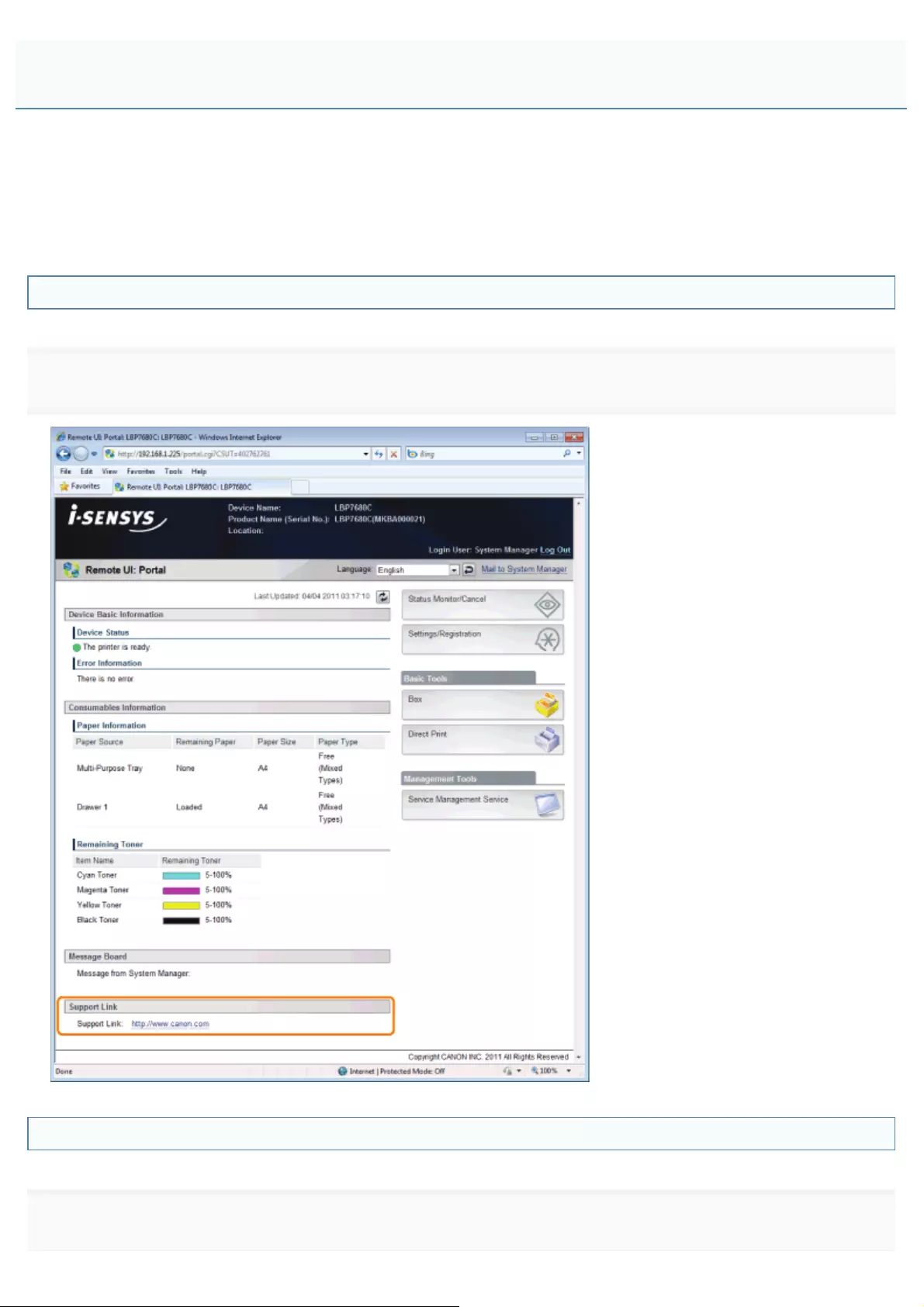
0258-089
You can post messages from the administrator on a message board on the portal page of the Remote UI. Also, you can
set links to information about printer support in the portal page support link, and make it accessible from the Remote UI
when necessary.
When you are logged in in system manager mode, you can change the messages on the message board and change the
link destination of support links.
Displaying a Support Page
1
From [Support Link] on the portal page, click the link destination on the support page.
Changing Message Board Comments or Support Link Destinations
1
Select [Message Board/Support Link].
Display/Change Message Board Messages and Support Links
㻡㻢㻡㻌㻛㻌㻥㻥㻤

LBP7680Cx
From the [Settings/Registration] menu, select [Message Board/Support Link] in [License/Other] under [Management
Settings].
LBP7660Cdn
Select [Message Board/Support Link] under [Management Settings] in the [Settings/Registration] menu.
2
Click [Edit...].
If [Edit...] does not appear
Log in as Administrator.
"Starting the Remote UI"
3
㻡㻢㻢㻌㻛㻌㻥㻥㻤
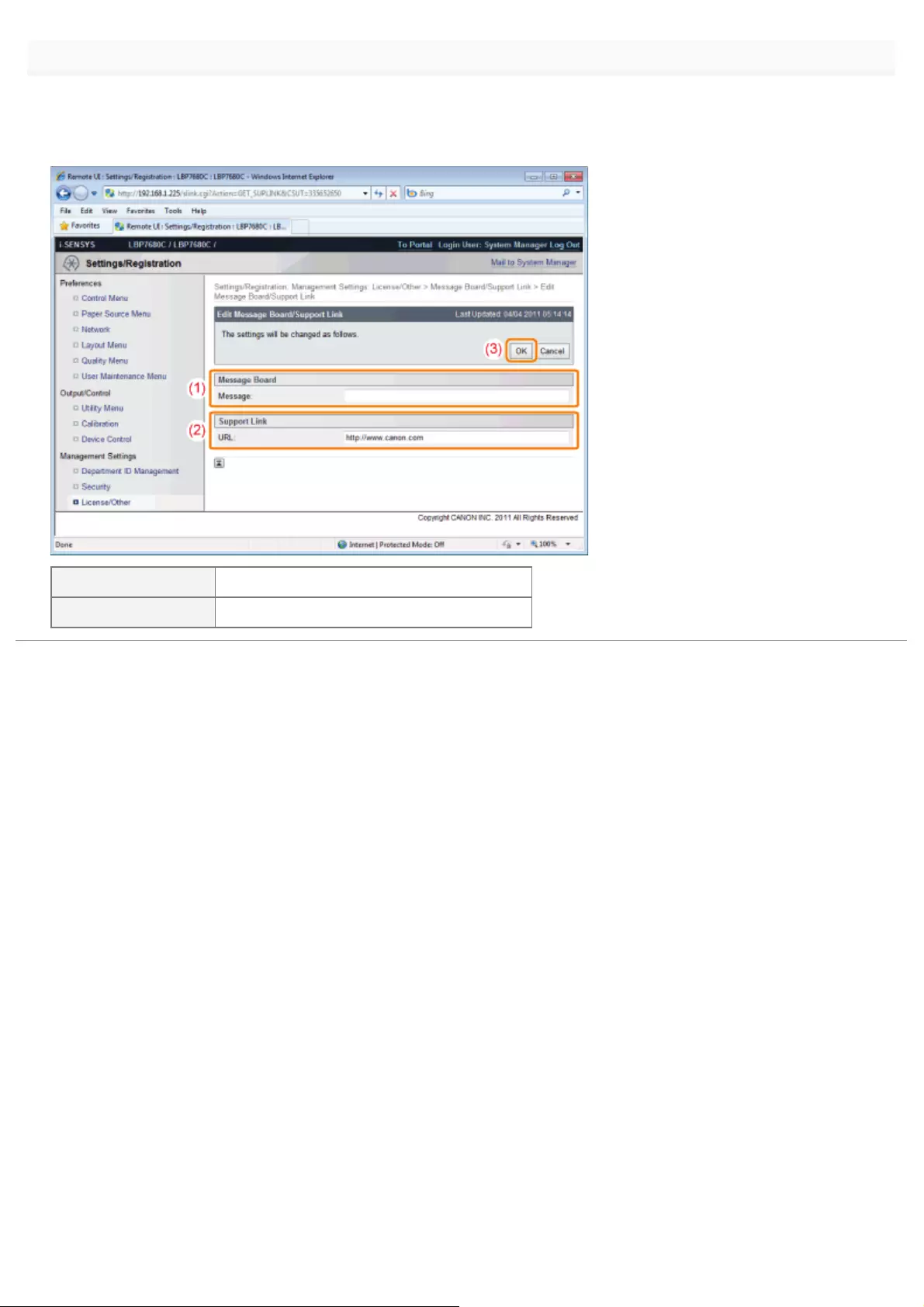
Change the message link destination.
(1) Set message board messages when necessary.
(2) Set support link URL when necessary.
(3) Click [OK].
[Message] Enter messages from the administrator.
[URL] Enter the URL address of the support link.
㻡㻢㻣㻌㻛㻌㻥㻥㻤
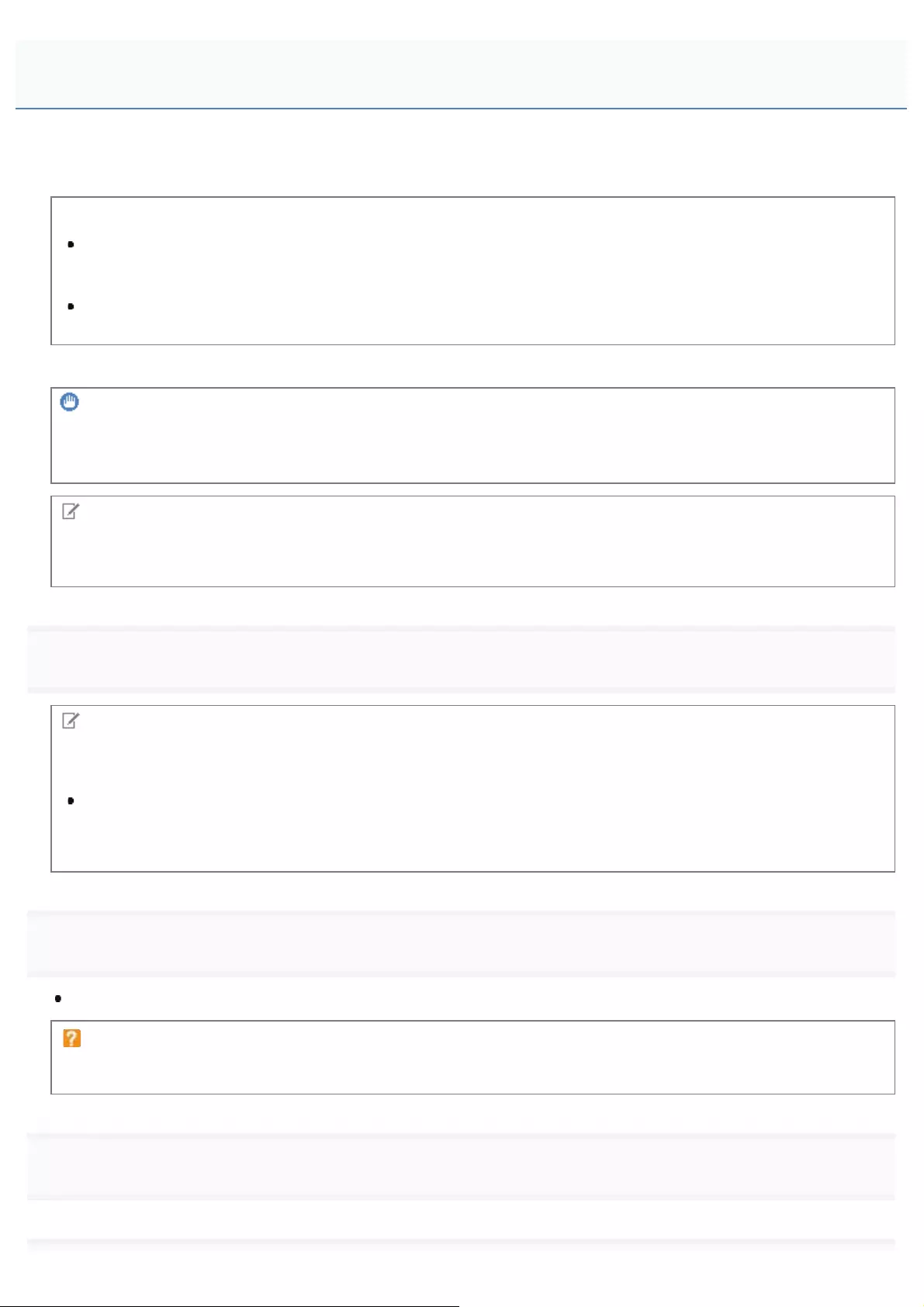
0258-08A
In FTP Client, you can specify the network settings, security settings, and so on by accessing the FTP server of the printer
using Command Prompt.
<Features of FTP Client>
No specific software is needed.
You can operate the FTP Client using the Command Prompt supplied with Windows. You do not need specific
software to operate the FTP Client.
You can specify the network settings at a time.
Because the setting items are listed in a file, you can specify multiple items all at once.
To manage the printer using FTP Client, perform the following procedure.
IMPORTANT
If the [FTP Settings] check box is not selected in the [TCP/IP Settings] page in [Settings/Registration] - [Preferences] -
[Network], settings cannot be specified from the FTP client.
"Configuring the Protocol Settings"
NOTE
For Macintosh users
For details on the procedure for Macintosh, see "FTP Client (Macintosh)."
1
Run Command Prompt.
NOTE
If you are using Windows
Run Command Prompt using the following procedure.
)URPWKH>6WDUW@PHQXVHOHFW>$OO3URJUDPV@RU>3URJUDPV@ĺ>$FFHVVRULHV@ĺ>&RPPDQG3URPSW@
If you are using UNIX
Display the console screen.
2
Enter "ftp <the IP address of the printer>", then press the [ENTER] key on your keyboard.
Input Example: "ftp 192.168.0.215"
If you are not sure about the IP address of the printer
Print and confirm Network Status Print while referring to "Checking the Printer Settings", or consult your network
administrator.
3
Enter "root" as the user name, then press the [ENTER] key on your keyboard.
FTP Client
㻡㻢㻤㻌㻛㻌㻥㻥㻤

4
Enter the administrator password, then press the [ENTER] key on your keyboard.
The default password is "7654321".
5
Enter "cd config", then press the [ENTER] key on your keyboard.
6
Enter "get CONFIG <the file name>", and then press the [ENTER] key on your keyboard.
Enter "CONFIG" as all upper case characters.
ĺThe config file is downloaded.
The characters entered for <the file name> become the name of the downloaded file.
If you cannot find the config file
Search for the config file using the file search function of your operating system.
(The download directory for the config file varies depending on the operating system or settings.)
7
Edit the downloaded config file in Notepad or a similar text editor.
For details on descriptions of each option, see "Network Setting Items."
8
Enter "put <the file name> CONFIG", and then press [ENTER] key on your keyboard.
Enter "CONFIG" as all upper case characters.
ĺThe edited config file uploads.
In <the file name>, enter the name of the config file that was entered when the file was downloaded.
9
Enter "get reset", then press the [ENTER] key on your keyboard.
ĺWhen the printer is restarted the settings will be enabled.
After checking that the printer has restarted, press the [c] key while holding down the [Ctrl] key, and return to the ftp
command prompt.
10
Enter "quit", then press the [ENTER] key on your keyboard.
㻡㻢㻥㻌㻛㻌㻥㻥㻤

11
Enter "exit", then press the [ENTER] key on your keyboard.
ĺCommand Prompt closes.
㻡㻣㻜㻌㻛㻌㻥㻥㻤
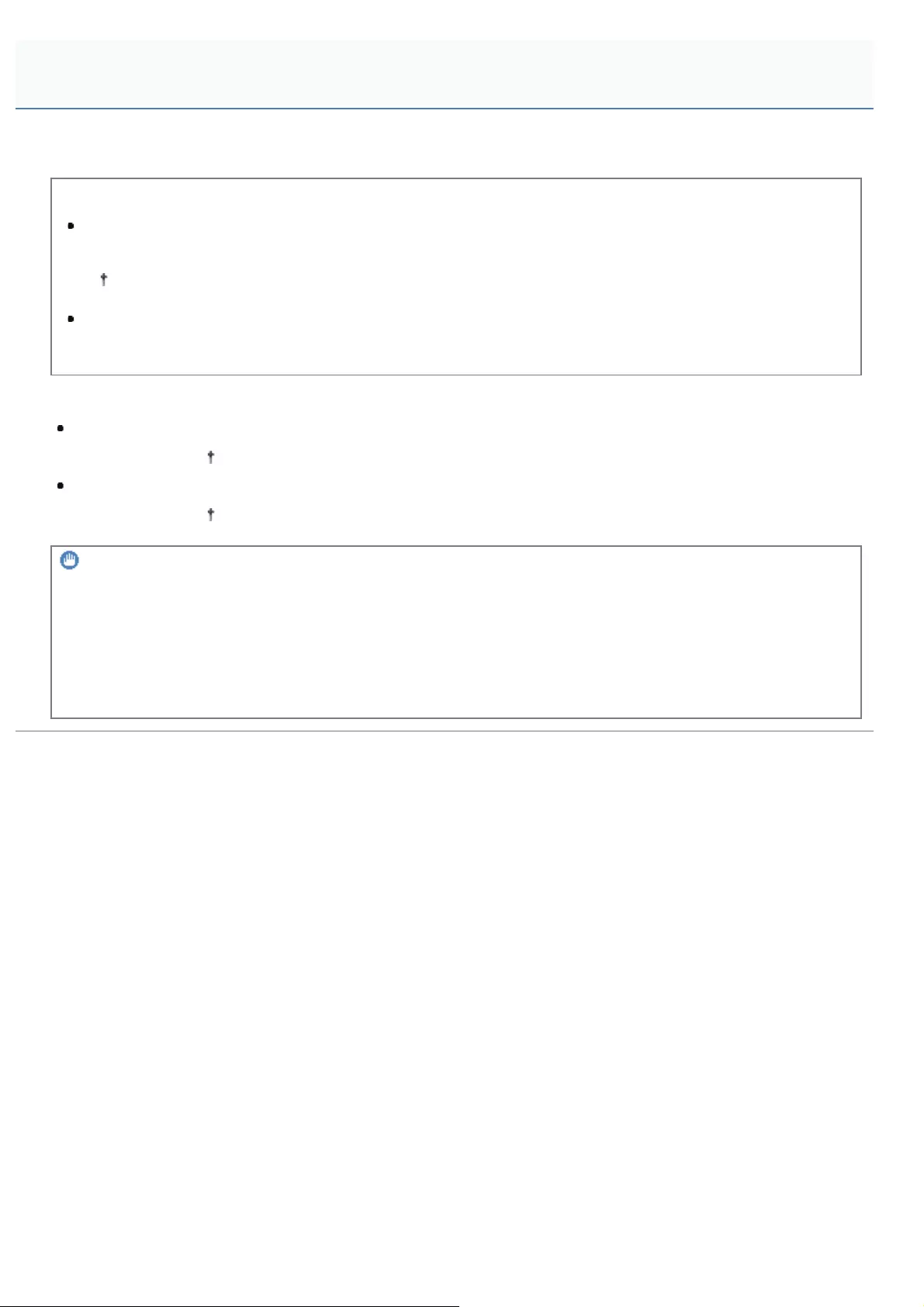
0258-08C
NetSpot Device Installer is the Canon software included in the supplied CD-ROM.
<Features of NetSpot Device Installer>
You do not need to install NetSpot Device Installer.
You can start NetSpot Device Installer directly from the CD-ROM without installing it.
You can also install NetSpot Device Installer on a computer.
You can check the various printer statuses.
You can view the list of statuses of the Canon devices on a network easily.
Also, you can change the default network settings or basic protocol settings.
For details on other procedures for starting and using NetSpot Device Installer, see the following.
Starting method: "Printer Driver Installation Guide"
For details on the procedure for viewing "Printer Driver Installation Guide", see "Installation."
Usage: Help of NetSpot Device Installer
Help is displayed by clicking [Help] in the [Help] menu.
IMPORTANT
If Windows Firewall is enabled
Before starting NetSpot Device Installer, configure Windows Firewall to unblock NetSpot Device Installer.
For details on the configuration procedure, see the Readme file of NetSpot Device Installer.
About operating systems that NetSpot Device Installer supports
For details on the latest NetSpot Device Installer, see the Canon Web site (http://www.canon.com/).
NetSpot Device Installer
㻡㻣㻝㻌㻛㻌㻥㻥㻤
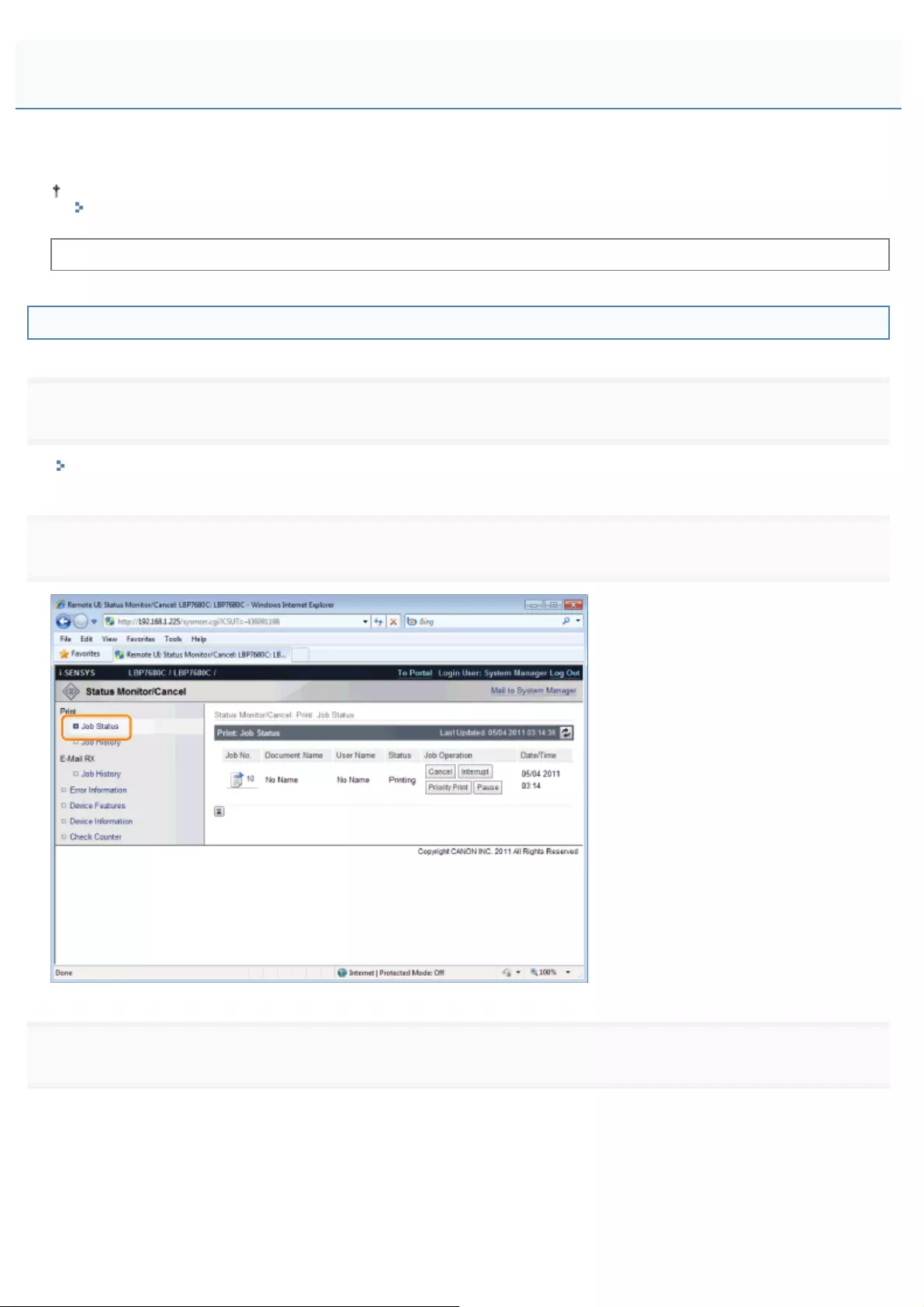
0258-08E
You can check/delete the job currently being printed or check job histories using the Remote UI.
You can also delete the job currently being printed using a method other than the Remote UI.
"Canceling a Job"
Before managing print jobs, see "Attention (Job Manager)."
Checking/Deleting the Job Currently Being Printed
1
Start the Remote UI.
"Starting the Remote UI"
2
From the [Status Monitor/Cancel] menu, select [Job Status] to display the job currently being printed.
3
If you want to delete the job, perform the following procedure.
Using job operation, click [Cancel] on the job you want to delete.
Managing Print Jobs
㻡㻣㻞㻌㻛㻌㻥㻥㻤
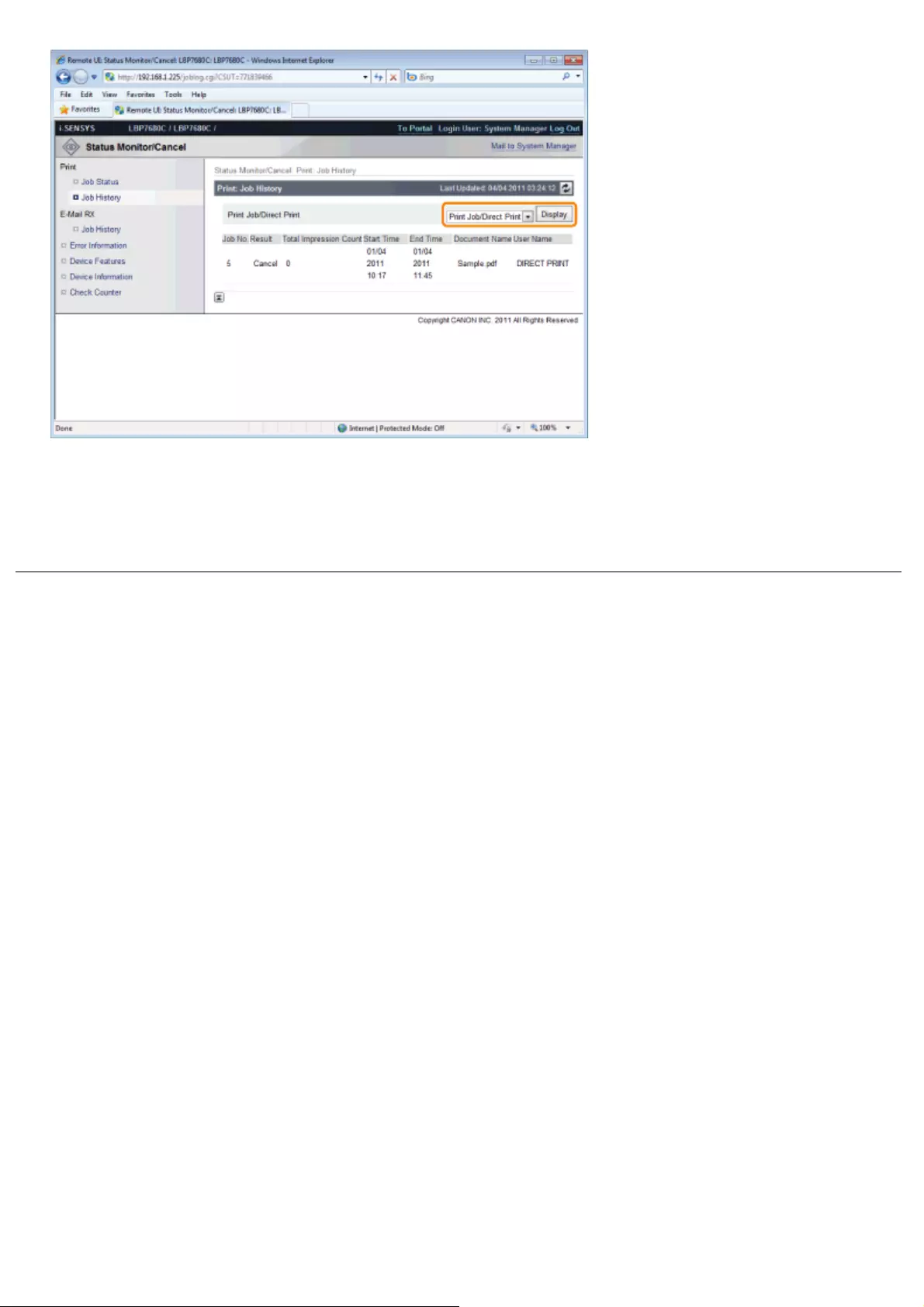
[Print Job/Direct Print]: The printed job history is displayed from the computer.
[Stored Job]: The printing history of jobs stored in BOX is displayed. (LBP7680Cx only)
[Report]: The utility print printing history is displayed.
[E-Mail Print]: The history of jobs received by e-mail and printed is displayed.
㻡㻣㻠㻌㻛㻌㻥㻥㻤
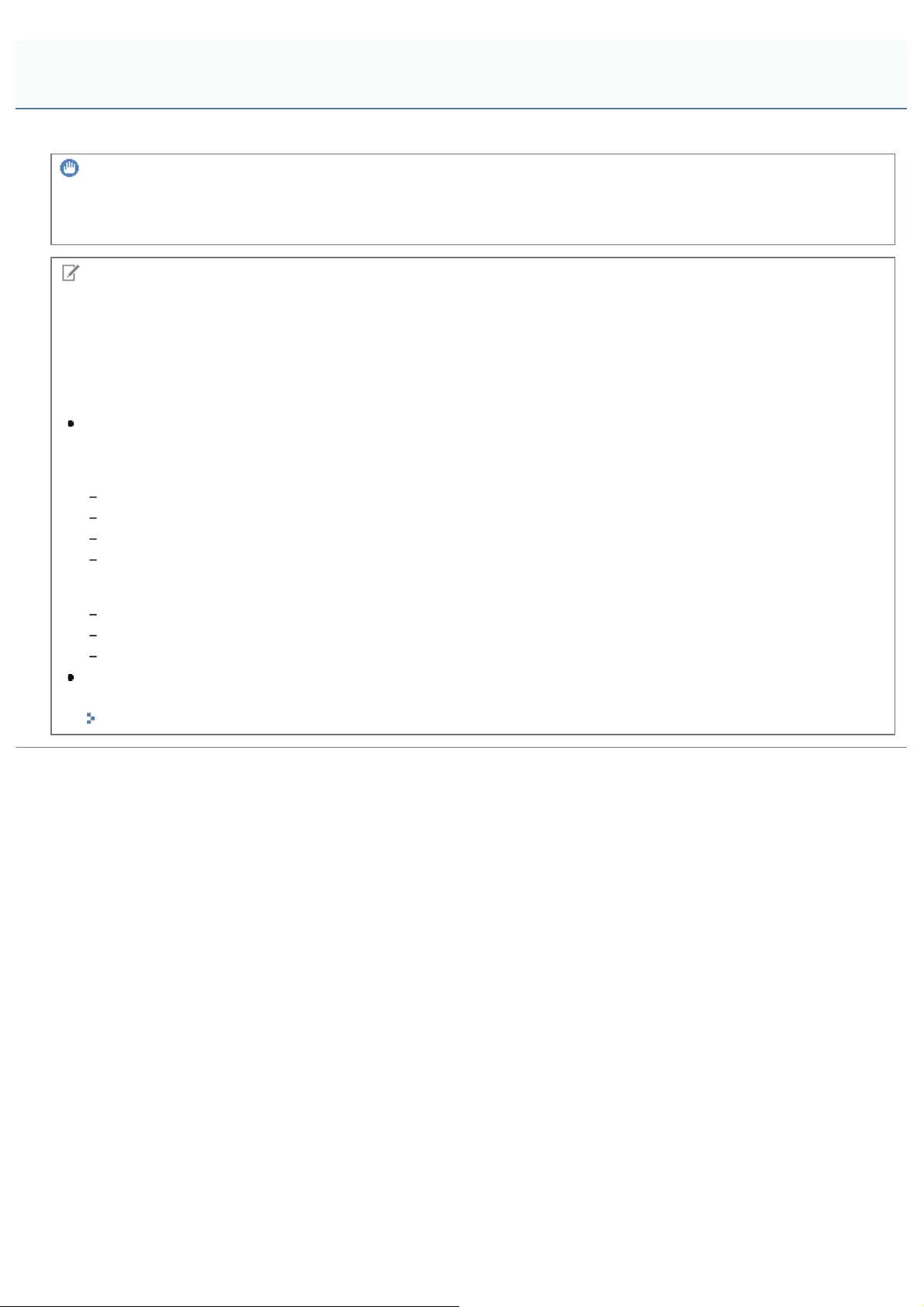
0258-08F
IMPORTANT
Deleting the print logs
The print logs are deleted by turning the printer OFF or performing a hard reset.
NOTE
About [Document Name]
A job file name of up to 32 characters can be displayed. If the file name has more than 32 characters, the characters
after the limited number are not displayed.
Also, depending on the application, the application name may be added to the beginning of the file name.
About the job histories
The maximum numbers of the print logs that you can check are as follows. When the number of the jobs exceeds
the maximum, the job histories are deleted starting from the oldest one.
LBP7680Cx
[Print Job/Direct Print]: 200
[Stored Job]:128
[Report]: 128
[E-Mail Print]: 128
LBP7660Cdn
[Print Job/Direct Print]: 48
[Report]: 16
[E-Mail Print]: 128
If the jog log display is not specified in [Display Job History] in the [Settings/Registration] - [Management Settings] -
[Security] page, you cannot display the job histories.
"Specifying the Setting for Job Log Display"
Attention (Job Manager)
㻡㻣㻡㻌㻛㻌㻥㻥㻤
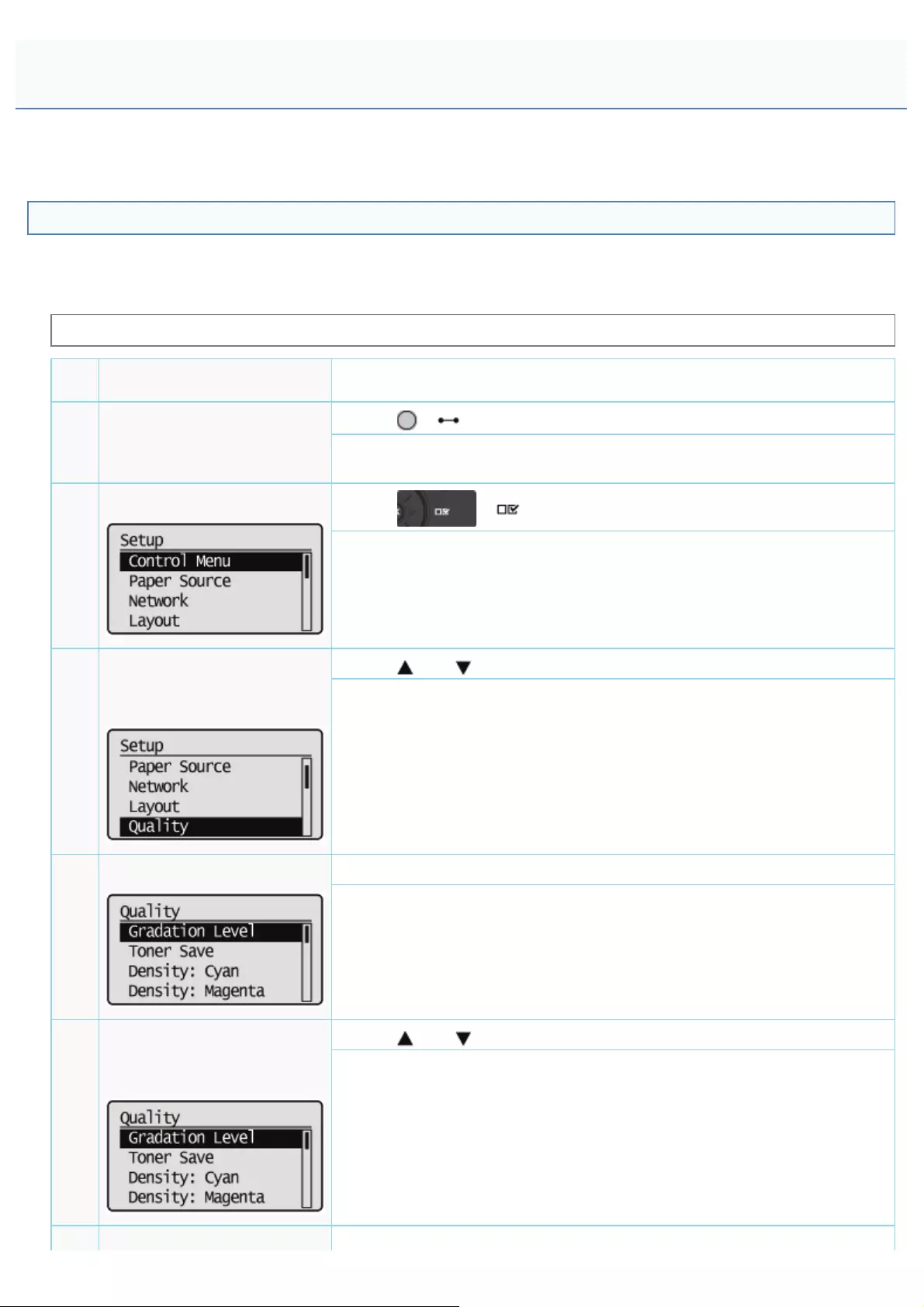
0258-08H
This section describes the menu operation for this printer.
Procedure for the Menu Operation
The menu consists of three hierarchies: "Option", "Item", and "Setting Value." Select the target options in each hierarchy.
As an example of the setting procedure, this section describes the procedure for setting [Gradation Level] in the [Quality]
options to [High]. Start the key operation from Step 1.
Before specifying the setting, see "Attention (Control Panel Setting)."
Operation Procedure Key Operation
1Place the printer offline.
Press [ ] ( : Online).
When the printer is online, the [Setup] menu can be displayed, however, the
[User Maintenance] options cannot be specified.
2
Display the [Setup] menu. Press [ ] ( : Settings).
The [Setup] menu is displayed.
3
Select the option.
When the [Quality] options are
selected
Press [ ] or [ ].
The target option is displayed.
4
Display the item. Press [OK].
The selected item is displayed.
5
Select the item.
When [Gradation Level] is
selected
Press [ ] or [ ].
The target item is displayed.
Press [OK].
Control Panel Setting
㻡㻣㻢㻌㻛㻌㻥㻥㻤
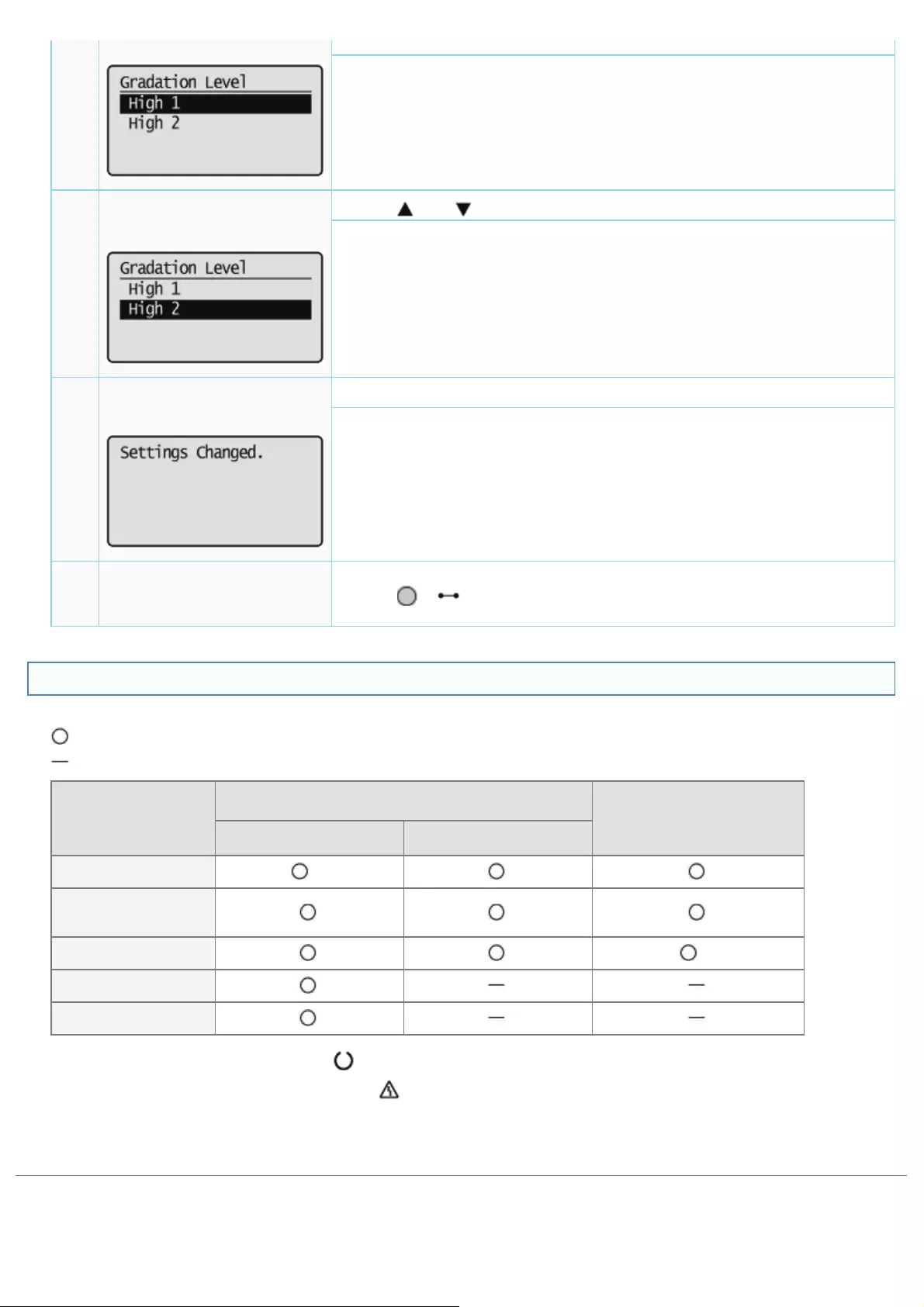
6
Select the item.
The selected setting value is displayed.
7
Select the setting value.
When [High 2] is selected
Press [ ] or [ ].
The target setting value is displayed.
8
Determine the selected
setting value.
Press [OK].
The target setting value is specified.
The setting completion screen is displayed for 3 seconds. You can change the
display time for the screen using [Set. Comp. Notify] in the [Setup] menu.
9Go out of the setting
menu. Press [ ] ( : Online).
Printer Status to Enter the Menu Operation
You can enter each menu when the printer is in the following status.
: The state where you can enter the menu
: The state where you cannot enter the menu
When the printer is ready to print *1
When an error is occurring *2
When the printer is online When the printer is offline
[Setup] Menu *3
[Select Feeder]
Menu
[Reset] Menu *4
[Job] Menu
[Utility Menu] Menu
*1 The printer is ready to print when the Ready indicator is on.
*2 An error is occurring in the printer when the Message indicator is on.
*3 The [User Maintenance] options cannot be specified.
*4 You cannot perform [Form Feed].
㻡㻣㻣㻌㻛㻌㻥㻥㻤
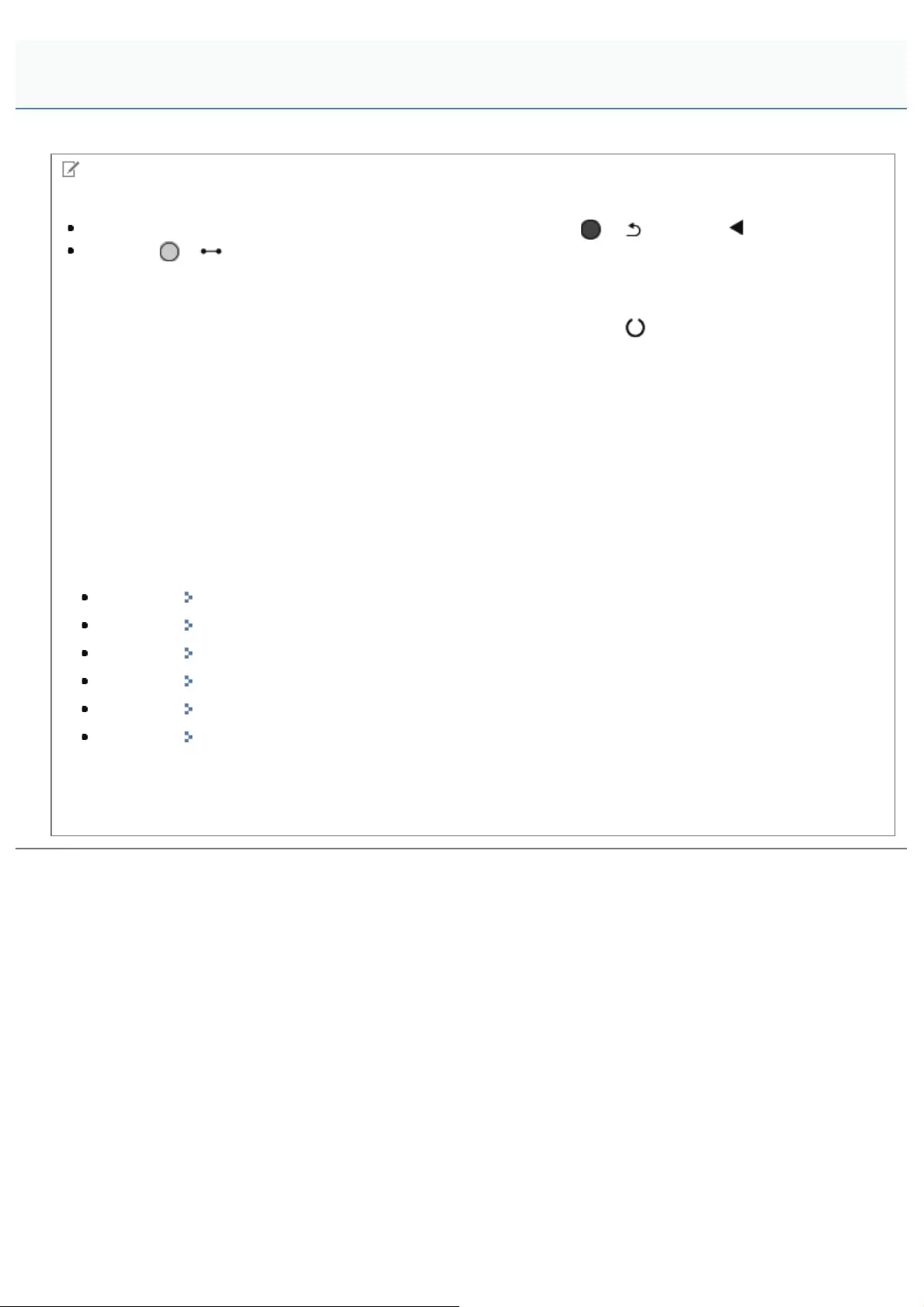
0258-08J
NOTE
If you want to go back up the previous hierarchy or cancel a selected item
To go back up the previous hierarchy or cancel a selected item, press [ ] ( : Back) or [ ].
Pressing [ ] ( : Online) on the screen during the menu operation cancels a selected item and places the
printer online or offline.
The state where the printer can be placed offline
The printer can switch back to the offline state when it is ready to print (when the Ready indicator is on).
About setting values
Depending on the item, some settings become effective after restarting the printer.
Setting priority
For details on the setting priority for when specifying the same item using a method other than the control panel as that
specified using the control panel, see "Setting Priority (When Specifying the Same Item Using Multiple Methods)."
About items displayed in the display
Some items are added and displayed only when an optional accessory is installed, and you can select such items.
About the exclusive [Setup] menu
When the exclusive [Setup] menu is selected in the "Option" hierarchy, see the following about each option.
PCL: "[Setup] Menu ([PCL] Options)"
UFR II: "[Setup] Menu ([UFR II] Options)"
Imaging: "[Setup] Menu ([Imaging] Options)"
XPS: "[Setup] Menu ([XPS] Options) (LBP7680Cx Only)"
PS: "[Setup] Menu ([PS] Options)"
PDF: "[Setup] Menu ([PDF] Options)"
About [Initialize Menu]
[Initialize Menu] does not have a lower hierarchy than "Option."
For details on the procedure for the initialization, see "Initializing the [Setup] Menu Using the Printer's Control Panel."
Attention (Control Panel Setting)
㻡㻣㻤㻌㻛㻌㻥㻥㻤
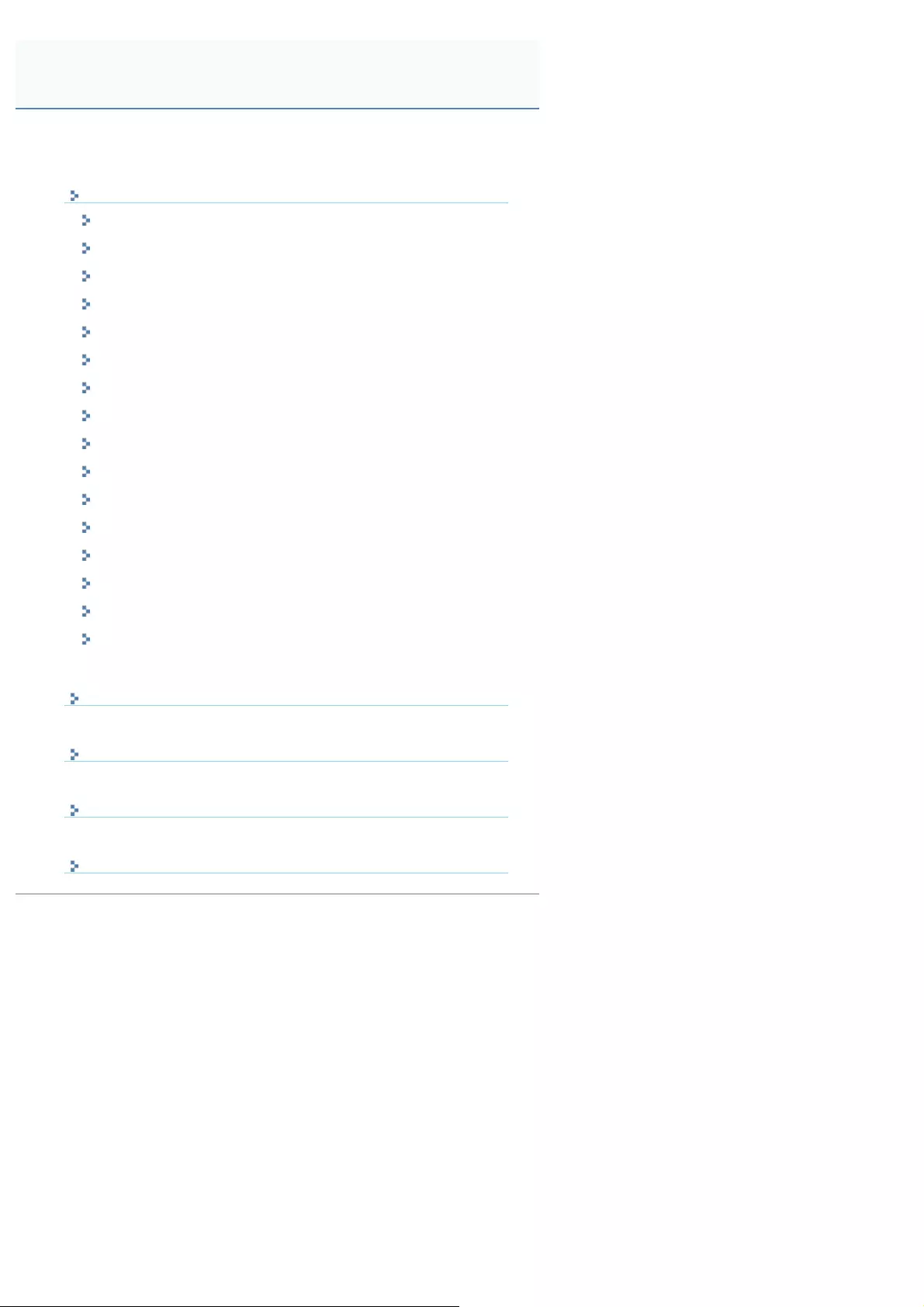
0258-08K
[Setup] Menu
[Setup] Menu ([Control Menu] Options)
[Setup] Menu ([Paper Source] Options)
[Setup] Menu ([Network] Options)
[Setup] Menu ([Layout] Options)
[Setup] Menu ([Quality] Options)
[Setup] Menu ([Interface] Options)
[Setup] Menu ([User Maintenance] Options)
[Setup] Menu ([Print Mode] Options)
[Setup] Menu ([PCL] Options)
[Setup] Menu ([UFR II] Options)
[Setup] Menu ([Imaging] Options)
[Setup] Menu ([XPS] Options) (LBP7680Cx Only)
[Setup] Menu ([PDF] Options)
[Setup] Menu ([PS] Options)
[Setup] Menu ([MEAP Settings] Options) (LBP7680Cx Only)
[Setup] Menu ([Check Counter] Options)
[Utility Menu] Menu
[Job] Menu
[Reset] Menu
[Select Feeder] Menu
Setting Items
㻡㻣㻥㻌㻛㻌㻥㻥㻤
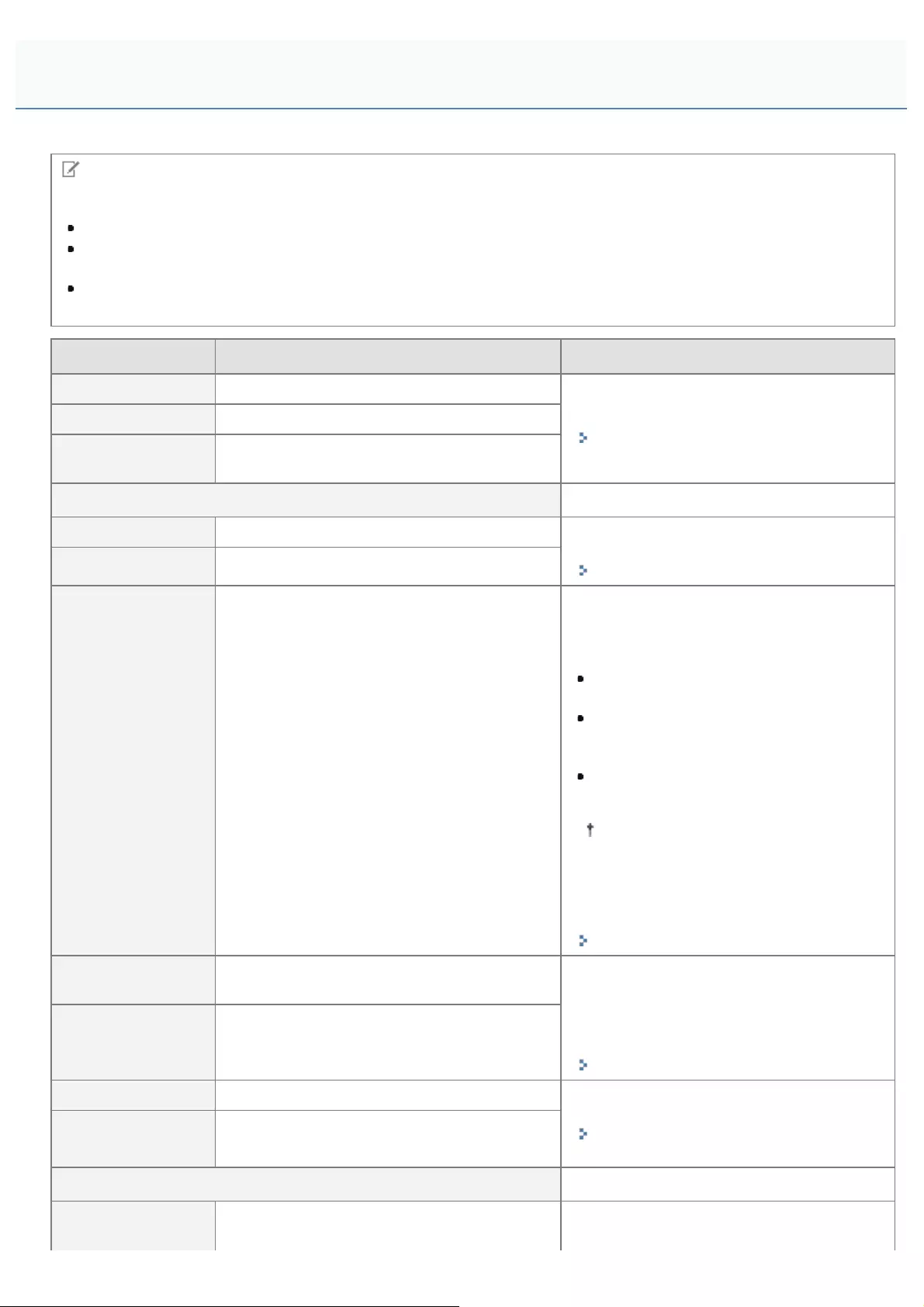
0258-08L
NOTE
Table description
Bold values in the table indicate the default settings.
After changing the setting items with "*1", cycle the power of the printer or perform a hard reset to make the
settings effective.
The setting items or setting values with "*2" may not be displayed depending on the availability of the optional
accessories and other settings.
Setting Item Setting Value Setting
[Sleep Mode] [High (Deep Sleep)], [Mid (Printer Sleep)]
Set the sleep mode.
"Sleep Mode"
[Sleep Even if Error] [Off], [On]
[Sleep Migration
Time]
[5 minutes], [10 minutes], [15 minutes], [30
minutes], [60 minutes]
[Timer Settings]
[Wake Up Timer] [Off], [On] Set sleep modes (printer sleep mode and
deep sleep mode) to cancel automatically.
"Sleep Mode"
[Wake Up Time] 00:00 to 12:00 to 23:59
[Auto Reset Time]
[Off], [10 seconds], [20 seconds], [30
seconds], [40 seconds], [50 seconds], [1
minute], [2 minutes], [3 minutes], [4
minutes], [5 minutes], [6 minutes], [7 minutes],
[8 minutes], [9 minutes]
Specifies whether one of the following
transitions is to take place when no key
operation has been performed in a particular
screen.
A transition to the MEAP authentication
screen (LBP7680Cx only)
A transition to the ready status screen
and the screen for using MEAP
applications (LBP7680Cx only)
A transition from offline status to online
status
When no key operation has been
performed during a job processing
session, this function is also executed
depending on the current screen or
current position in a menu.
"Online and Offline"
[Sleep Mode
Timer] [Off], [On] Specifies whether the sleep timer function is
used to put the printer into a sleep mode
(printer sleep mode or deep sleep mode)
when the printer is not used for a certain
time.
"Sleep Mode"
[Sleep Mode
Time] 00:00 to 12:00 to 23:59
[Calibration Timer] [Off], [On] Set whether to run calibration automatically
at set times.
"Specifying Times and Performing
Automatic Calibration"
[Calibration Time] 00:00 to 12:00 to 23:59
[Warning Step]
[Toner Cart. [Continue Printing], [Stop Printing]
Specifies whether the printer should continue
or stop printing when <Toner cartridge will
[Setup] Menu ([Control Menu] Options)
㻡㻤㻜㻌㻛㻌㻥㻥㻤
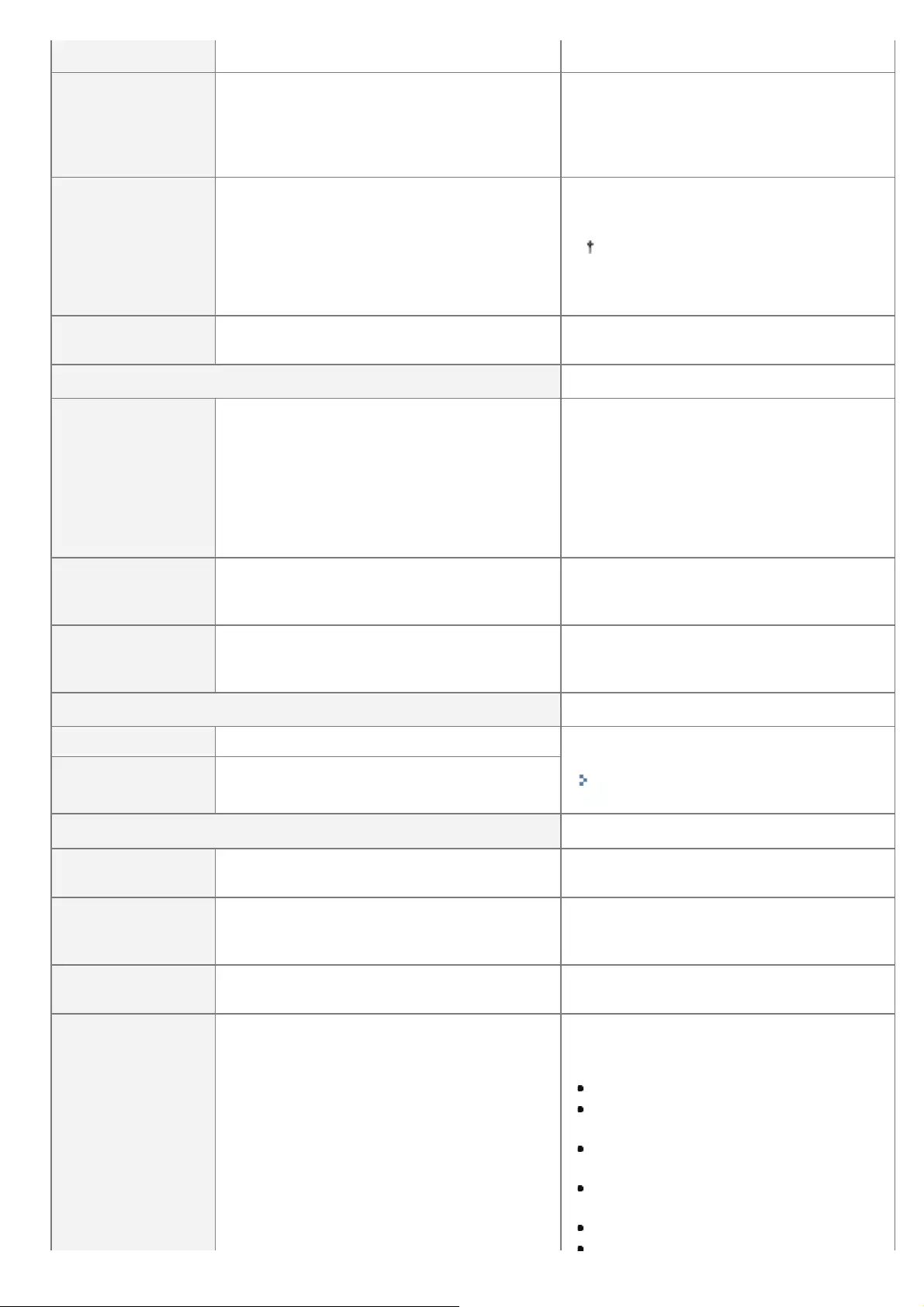
Warning] soon reach end of lifetime> appears.
[Auto Continue] [Off], [On]
Specifies whether the printer should
automatically use the function that, when an
error is occurring, releases the printer from
the error temporarily (Error Skip) and
continues the job.
[Panel Language]
>ýHãWLQD@>'DQVN@>'HXWVFK@[English],
[Español], [Français], [Italiano], [Magyar],
[Nederlands], [Norsk], [Polski], [Português],
>Ɋɭɫɫɤɢɣ@>6XRPL@>6YHQVND@>7UNoH@>中
文(体)], [ ]
Specifies the language to be displayed in the
display.
This setting allows you to change
language displayed in the Remote UI
login screen (LBP7680Cx only).
[Alarm] [Off], [On] Specifies an alarm sound for when an error
occurs.
[Show Warnings]
[Toner Cart.
Warning] [Off], [On]
Specifies whether the printer should display
<16 C toner cart. will soon reach lifetime.>
<16 M toner cart. will soon reach lifetime.>
<16 Y toner cart. will soon reach lifetime.>
<16 K toner cart. will soon reach lifetime.>
when the toner cartridge needs to be
replaced soon.
[Drawer Empty] [Off], [On]
Specifies whether the printer should blink the
Paper Source indicator for the paper drawer
that ran out of paper.
[E-Mail Trans.
Error] [Off], [On]
Specifies whether the printer should display
an error message when a communication
error occurs in the e-mail printing.
[Date/Time Settings]
[Date] 01/01/2001 to 31/12/2030 Specify date or time when the clock is not
keeping correct date or time.
"Turning the Power On and Specifying
a Language and Time"
[Time (24 hour)] 00:00:00 to 23:59:59
[Daylight Savings]*1
[DST Settings] [Off], [On] Specifies whether to set the daylight saving
time.
[Start
Date/Time]/[End
Date/Time]
[Month], [Week], [Day], [Time] Specifies the time duration of the daylight
saving time.
[Time Zone]*1 GMT-12:00 to GMT+12:00 Specifies the time zone according to the
region where the printer is being used.
[SD Card]*1*2 [Off], [On]
Specify whether to use SD cards. When the
optional SD card is installed, you will be able
to use the following functions.
Interrupt print
Changing the order of print data
(Priority print)
Pausing/Resuming print data
processing (Pausing/Resuming printing)
Saving print data on the SD card
(boxes) (Stored job print)
Spooler
㻡㻤㻝㻌㻛㻌㻥㻥㻤
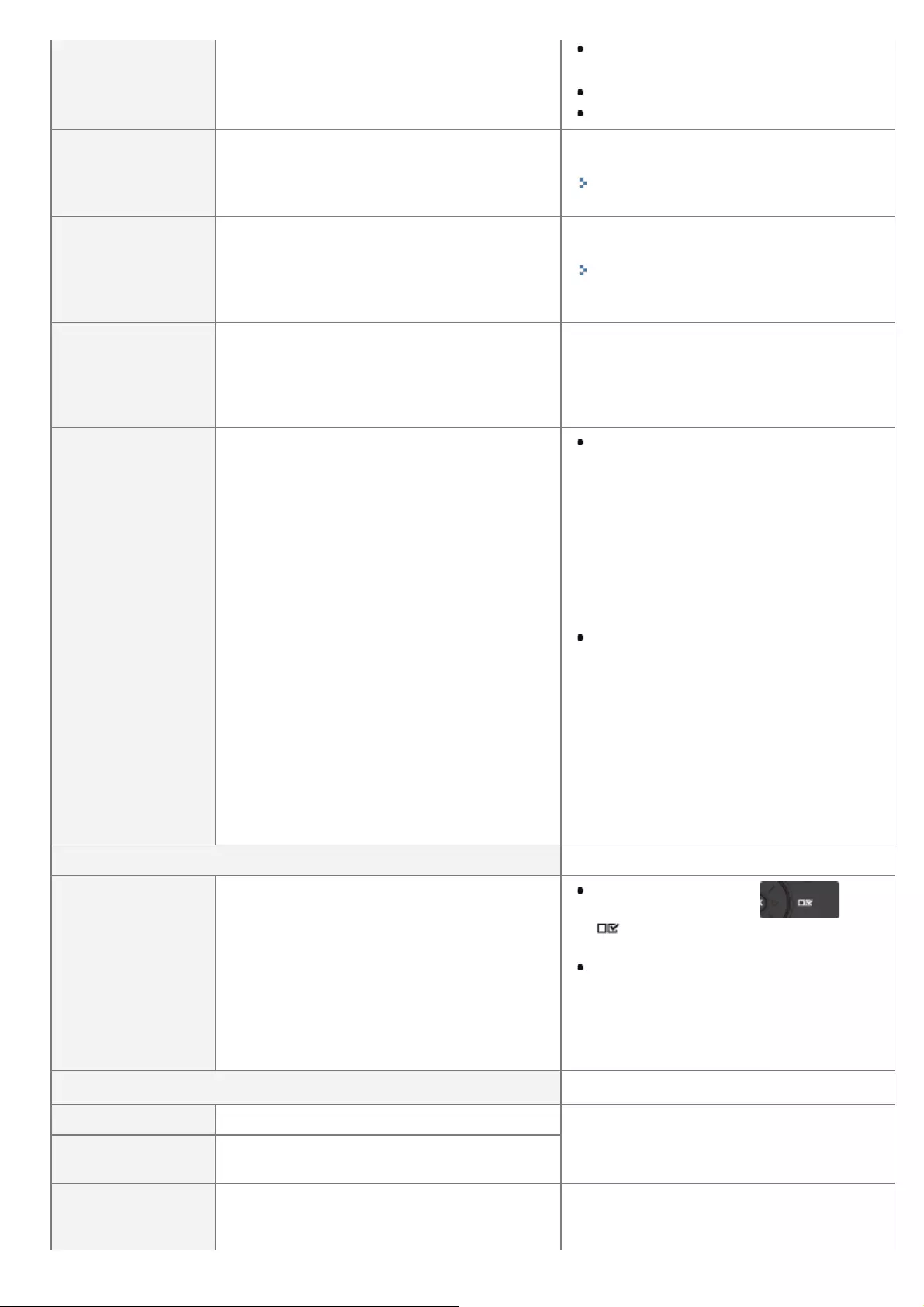
SMB print
Importing and Exporting Settings
Stored Job List
Print History List (Stored Job)
[Interrupt Print]*2 [Off], [On]
Set whether to allow the job printing to be
interrupted.
"Giving Priority to a Print Job (Interrupt
Printing) (LBP7680Cx Only)"
[Sec. Print Del.
Time]*1 *2
[1 hour], [2 hours], [3 hours], [6 hours], [12
hours], [24 hours]
Set the amount of time before secure print
jobs are automatically deleted.
"Specifying a Password for a Document
and Printing (Secured Print)
(LBP7680Cx Only)"
[Secure Job Log]*1*2 [Off], [On]
If [On] is specified for this item, the print log
of the job being printed is saved, and the
total number of printed pages (page counter)
is counted even when you turn the printer
OFF.
[Select PDL
(PnP)]*1*2
[UFR II], [UFR II XPS]*2, [PCL5c], [PCL6],
[PS3]*2, [XPS (Direct)]*2
If you want to connect the
printer and computer with a USB
cable
The printer driver for this printer may be
installed automatically when the USB
cable is connected.
You can select the type of the printer
driver ("UFR II", "UFR II XPS", "PCL5c",
"PCL6", "PS3", or "XPS (Direct)", ) to be
installed in this item at the time.
If you want to connect the
printer and computer with a LAN
cable
If you are using Windows Vista, you can
detect the printer automatically using the
WSD (Web Service on Devices) protocol.
You can select the type of the printer
driver ("UFR II", "UFR II XPS", "PCL5c",
"PCL6", "PS3", or "XPS (Direct)", ) to be
installed on the automatically detected
printer in this item.
[Mng. Settings]
[Settings Key Lock] [Off], [On]
When you set to [On], [ ] (
: Settings) is locked and you cannot
operate the Setup menu.
When you set to [Off], [Settings Key
Lock] is not locked.
* You can unlock the locked Settings
key only from the Remote UI.
[Adjust Screen]
[Contrast] -3 to 0 to +3 If the display is not clear, adjust the contrast
or brightness to the desired level.
[Backlight
Brightness] [Off], [Level 1], [Level 2], [Level 3]
[Animated
Instruction] [Off], [On]
Specifies whether the printer should display
an animated picture in the display when a
paper jam occurs or when a toner cartridge
㻡㻤㻞㻌㻛㻌㻥㻥㻤

is replaced.
[Show Toner
Gauge] [Off], [On] Specifies whether the printer should display
the icon that indicates the toner remaining.
[Set. Comp. Notify] [Off], [1 second], [2 seconds], [3 seconds]
Specifies the display time of messages that
are displayed when the setting completes. If
[Off] is specified, no setting completion
message is displayed.
[Scrolling Speed] [Slow], [Normal], [Fast] Set the scrolling speed for the message
display on the control panel.
㻡㻤㻟㻌㻛㻌㻥㻥㻤
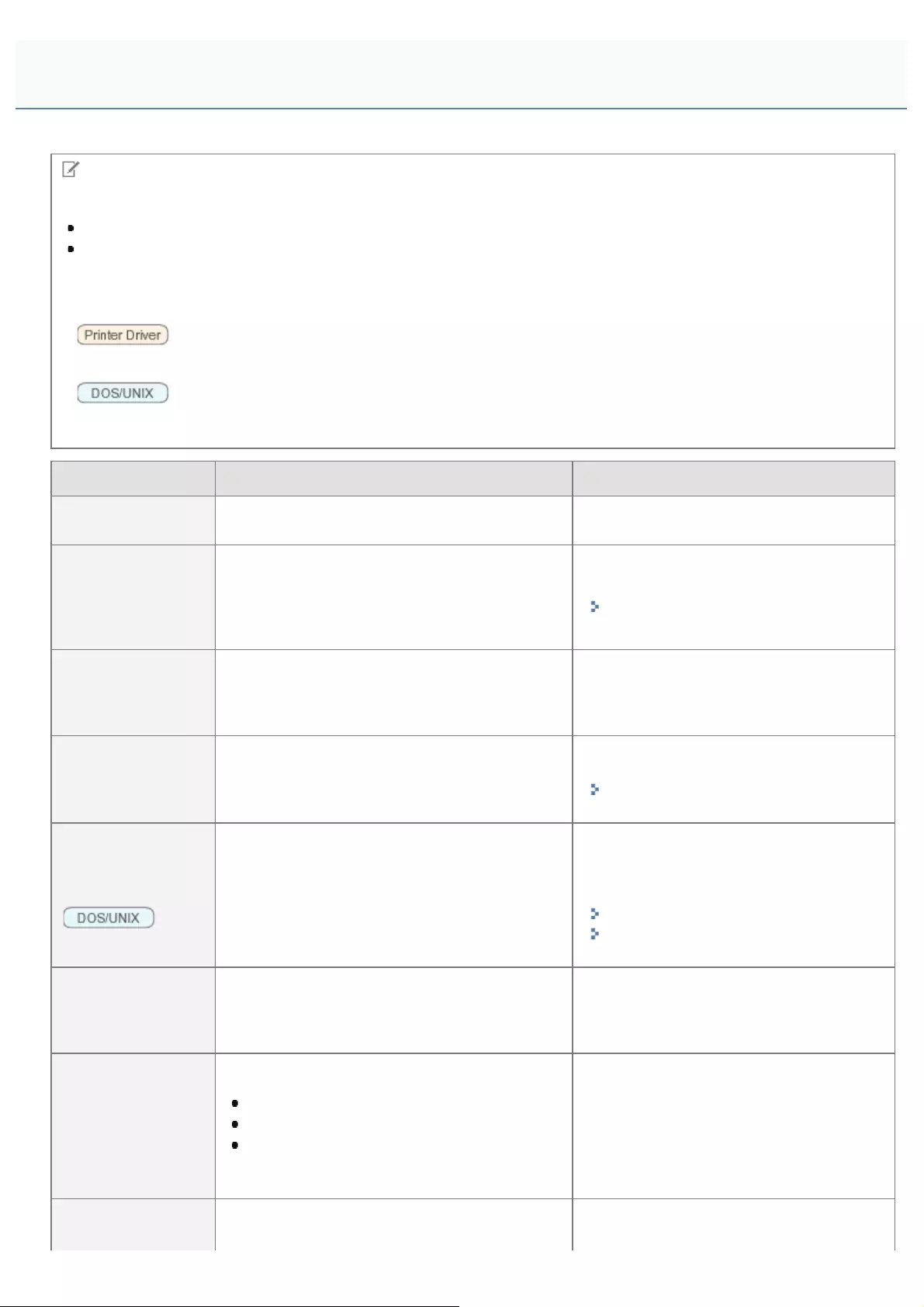
0258-08R
NOTE
Table description
Bold values in the table indicate the default settings.
The setting items or setting values with "*" may not be displayed depending on the availability of the optional
accessories and other settings.
About the icons
:
The settings for the printer driver are prioritized for this item.
:
When you are printing from DOS, UNIX, or other operating systems which do not use the printer
driver, the settings are enabled for this item.
Setting Item Setting Value Setting
[Paper Source] [Auto], [Drawer 1], [Drawer 2]*, [Multi-Purpose
Tray]
Select the default paper source that is
used when printing.
[MP Tray Paper
Size]
[A5], [B5], [A4], [LTR], [LGL], [EXEC], [Mixed
Sizes], [Custom Size], [Custom Size R], [Env.
ISO-C5], [Env. Monarch], [Env. No.10], [Env.
DL], [Env. ISO-B5], [Index Card], [STMT],
[FLSC]
Specifies the size of the paper loaded in
the multi-purpose tray.
"Registering the Paper Size and
Type"
[MP Tray Priority] [Off], [On]
Specifies whether the printer should detect
the paper source in order starting with the
multi-purpose tray when [Paper Source] is
set to [Auto] in "[Select Feeder] Menu."
[Drawer 1
Size]/[Drawer 2
Size]*
[A5], [B5], [A4], [LTR], [LGL], [EXEC], [Mixed
Sizes], [Custom Size], [Custom Size R], [Env.
ISO-C5], [Env. No.10], [Env. DL], [Env. ISO-B5],
[STMT], [FLSC]
Specifies the size of the paper loaded in
the paper drawer.
"Registering the Paper Size and
Type"
[Standard Paper
Size]
[A5], [B5], [A4], [LTR], [LGL], [EXEC], [Env.
ISO-C5], [Env. Monarch], [Env. No.10], [Env.
DL], [Env. ISO-B5], [Index Card], [STMT],
[FLSC]
If you cannot specify the paper size or if
you print from DOS, UNIX, or other
operating system, specify the paper size in
this item.
"Loading Paper in the Drawer"
"Loading Paper in the Multi-purpose
Tray"
[Diff. Paper Tray] [Off], [On]
Specifies whether the printer should feed
paper from the multi-purpose tray when
paper of the size for the received data is
not loaded in the paper drawer.
[Auto Selection]
[Multi-Purpose Tray]: [Off], [On]
[Drawer 1]: [Off], [On]
[Drawer 2]*: [Off], [On]
Specifies the paper source to be
automatically selected when [Paper
Source] is set to [Auto] in "[Select Feeder]
Menu."
If [On] is specified, the printer selects the
paper source as the one to be
automatically selected.
[Default Paper
Type]
[Plain], [Plain L], [Plain L2], [Plain H], [Heavy
1], [Heavy 2], [Heavy 3], [Transparency],
If you cannot specify the paper type or if
you print from DOS, UNIX, or other
[Setup] Menu ([Paper Source] Options)
㻡㻤㻠㻌㻛㻌㻥㻥㻤

[Envelope], [Envelope H], [Coated 1], [Coated
2], [Coated 3], [Coated 4], [Labels]
operating system, specify the paper type in
this item.
[MP Tray Paper
Type]
[Plain], [Plain L], [Plain L2], [Plain H], [Heavy 1],
[Heavy 2], [Heavy 3], [Transparency],
[Envelope], [Envelope H], [Coated 1], [Coated
2], [Coated 3], [Coated 4], [Labels], [Mixed
Types]
Set the type of paper that is loaded in the
multi-purpose tray.
"Registering the Paper Size and
Type"
"Usable Paper"
[Drawer 1
Type]/[Drawer 2
Type]*
[Plain], [Plain L], [Plain L2], [Plain H], [Heavy 1],
[Heavy 2], [Heavy 3], [Envelope], [Envelope H],
[Coated 1], [Coated 2], [Coated 3], [Coated 4],
[Labels], [Mixed Types]
Set the type of paper that is loaded in the
paper drawer.
"Registering the Paper Size and
Type"
"Usable Paper"
[Manual 2-Sided
(MP)] [1st Side], [2nd Side]
Set the printing side of the paper that is
loaded in the multi-purpose tray manually
for 2-sided printing.
When it is set to [1st Side], it is
printed on the front of the paper (the
side that is first be printed).
When it is set to [2nd Side], it is
printed on the back of the paper (the
reverse side of the paper that has
already been printed).
[2-Sided Printing] [Off], [On] Specifies whether the printer should print
on one side or both sides of the paper.
㻡㻤㻡㻌㻛㻌㻥㻥㻤
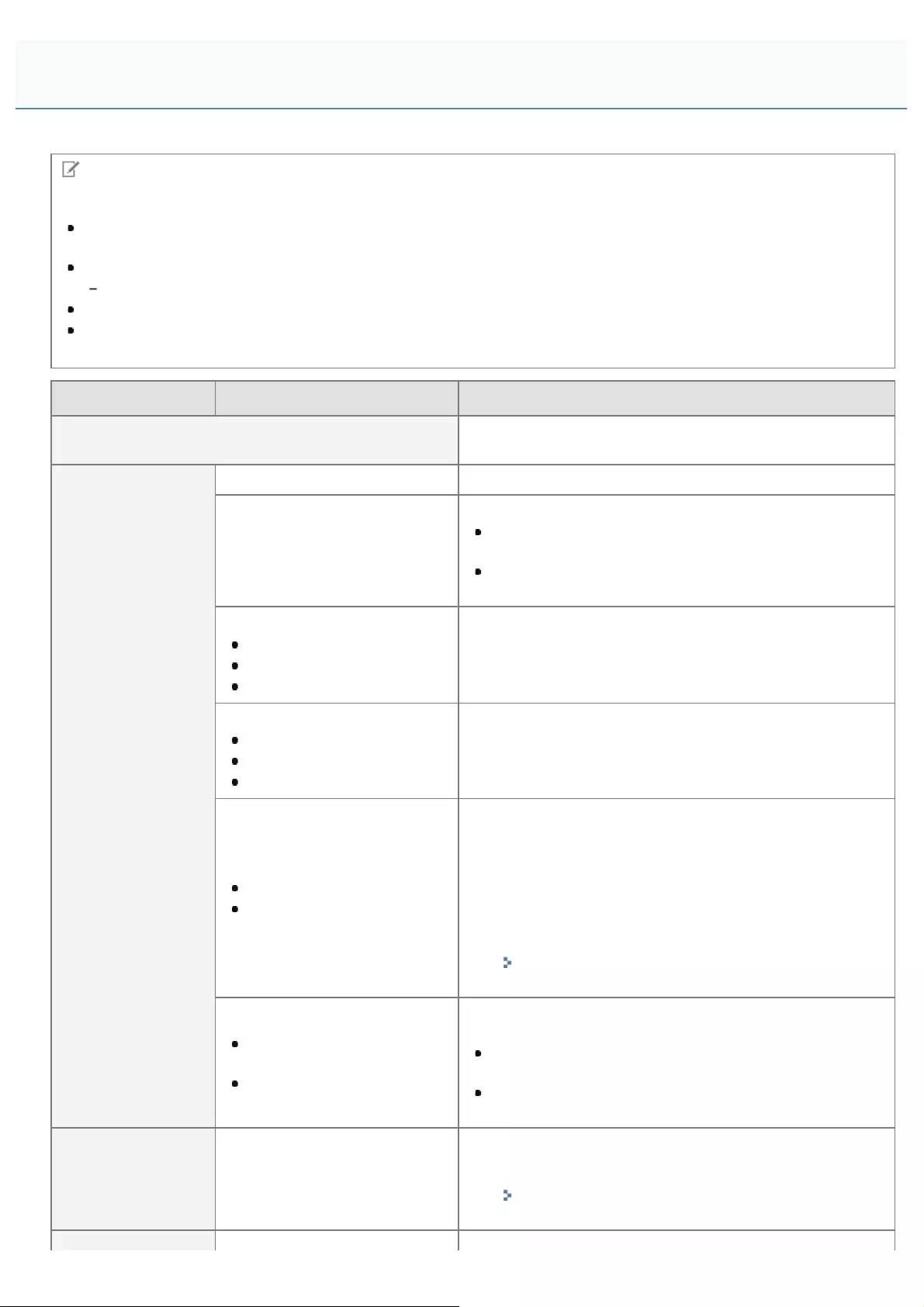
0258-08S
NOTE
Table description
After changing the settings for this item, cycle the power of the printer or perform a hard reset to make the settings
effective.
This item is displayed only when the following condition is fulfilled.
[Network] in [Interface Selection] is set to [On].
Bold values in the table indicate the default settings.
The setting items or setting values with "*" may not be displayed depending on the availability of the optional
accessories and other settings.
Setting Item Setting Value Setting
[TCP/IP Settings] Specifies the TCP/IP setting for the print server equipped
with this printer.
[IPv4 Settings]
[IPv4]: [Off], [On] When using IPv4, set it to [On].
[IP Mode]: [Auto], [Manual]
Select the method for setting the IP address.
When setting the IP address using any one of DHCP,
BOOTP, or RARP, select [Auto].
When specifying the IP address to the printer directly,
select [Manual].
[Protocol]*:
[Use DHCP]: [Off], [On]
[Use BOOTP]: [Off], [On]
[Use RARP]: [Off], [On]
If you set [IP Mode] to [Auto], select which protocol you
want to use. Set each of [Use DHCP], [Use BOOTP], and
[Use RARP] to [On] (use) or [Off] (do not use).
[IP Address Settings]:
[IP Address]: 0.0.0.0
[Subnet Mask]: 0.0.0.0
[Gateway Address]: 0.0.0.0
Specify [IP Address], [Subnet Mask], and [Gateway
Address]. For the method for entering the addresses, see
"Method for entering addresses " below the table.
[DNS]:
[Primary Address]: 0.0.0.0
[Secondary Address]:
0.0.0.0
Specify [Primary Address] and [Secondary Address] for
DNS.
For the method for entering the addresses, see "Method for
entering addresses " below the table.
*Specify the settings for [Host Name], [Domain
Name], and [DNS Dynamic Update] from the Remote
UI.
"Configuring the Protocol Settings"
[DHCP Option]:
[Acquire Host Name]: [Off],
[On]
[DNS Dynamic Update]:
[Off], [On]
Set DHCP options when [IP Mode] is set to [Manual] and
[Use DHCP] is set to [On].
When obtaining the host name using DHCP, set
[Acquire Host Name] to [On].
When updating the host name using DHCP, set [DNS
Dynamic Update] to [On].
[IPv6 Settings] [IPv6]: [Off], [On]
If you want to use IP v. 6, specify [On].
*Specify the setting for IP v. 6 from the Remote UI.
"Setting IP v. 6"
[Setup] Menu ([Network] Options)
㻡㻤㻢㻌㻛㻌㻥㻥㻤
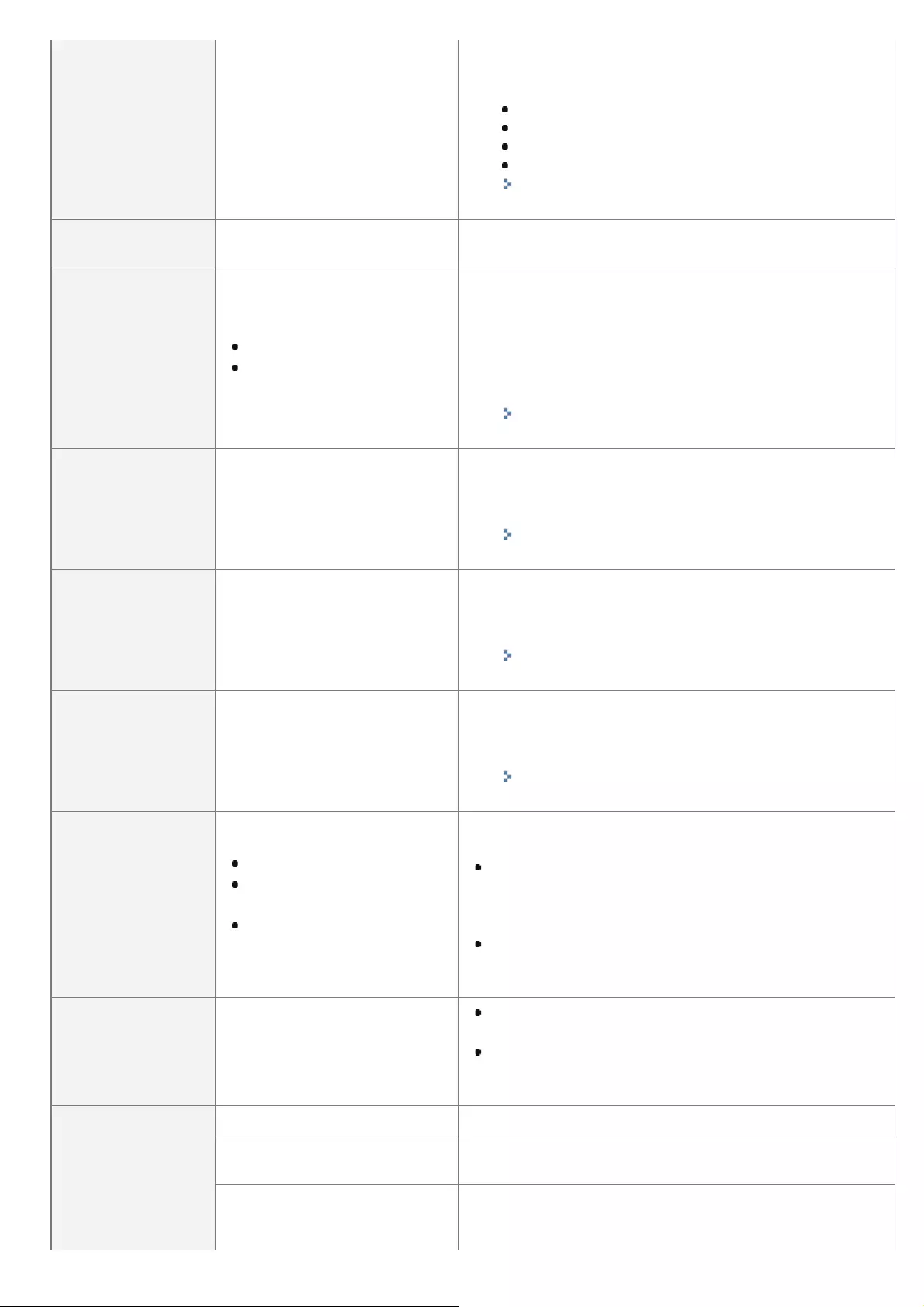
[WINS Resolution] [Off], [On]
If you want to use WINS Resolution, specify [On].
*Specify the following settings from the Remote UI.
[WINS Server Address]
[Scope ID]
[SMB Server Name]
[SMB Workgroup Name]
"Configuring the Protocol Settings"
[ARP/PING] [Off], [On] When it is set to [On], you can change the IP address
settings from the client using ARP/PING commands.
[FTP] [FTP Print]: [Off], [On]
[FTP Settings]: [Off], [On]
When it is set to [On], you can access the printer's FTP
server using the FTP client and print the files.
If you want to perform the settings using FTP Client, set
[FTP Settings] to [On].
*Specify the settings for [FTP Print User Name] and
[Password] from the Remote UI.
"Configuring the Protocol Settings"
[LPD Print] [Off], [On]
If you want to use LPD Print, specify [On].
*Specify the setting for [Print LPD Banner Page] from
the Remote UI.
"Configuring the Protocol Settings"
[RAW Print] [Off], [On]
If you want to use RAW Print, specify [On].
*Specify the setting for [Use Bidirectional
Communication] from the Remote UI.
"Configuring the Protocol Settings"
[IPP Print] [Off], [On]
If you want to use IPP Print, specify [On].
*Specify the settings for [IPP Authentication], [User
Name], and [Password] from the Remote UI.
"Configuring the Protocol Settings"
[WSD]
[WSD Print]: [Off], [On]
[WSD Browsing]*:[Off],
[On]
[Multicast Discovery]:
[Off], [On]
If you want to use WSD Print, set [WSD Print] to [On], and
then specify the following settings.
If you want to obtain printer information using WSD,
set [WSD Browsing] to [On]. If you set [WSD Print] to
[On], [WSD Browsing] is not displayed. ([WSD
Browsing] is fixed at [On].)
If you want to set the printer to respond to requests
from multicast discovery, set [Multicast Discovery] to
[On].
[HTTP] [Off], [On]
When it is set to [On], you will be able to access the
printer using HTTP.
When this is set to [Off], the message appears,
disallowing you to use the Remote UI or perform IPP
printing.
[Proxy]: [Off], [On] If you want to use the proxy function, specify [On].
[Server Address]*: - Enter the proxy server address to be used for the proxy
function.
[Port Number]*: 0 to 80 to
99999
Enter the port number of the proxy server to be used for
the proxy function. You can specify between [0] and
[99999].
㻡㻤㻣㻌㻛㻌㻥㻥㻤
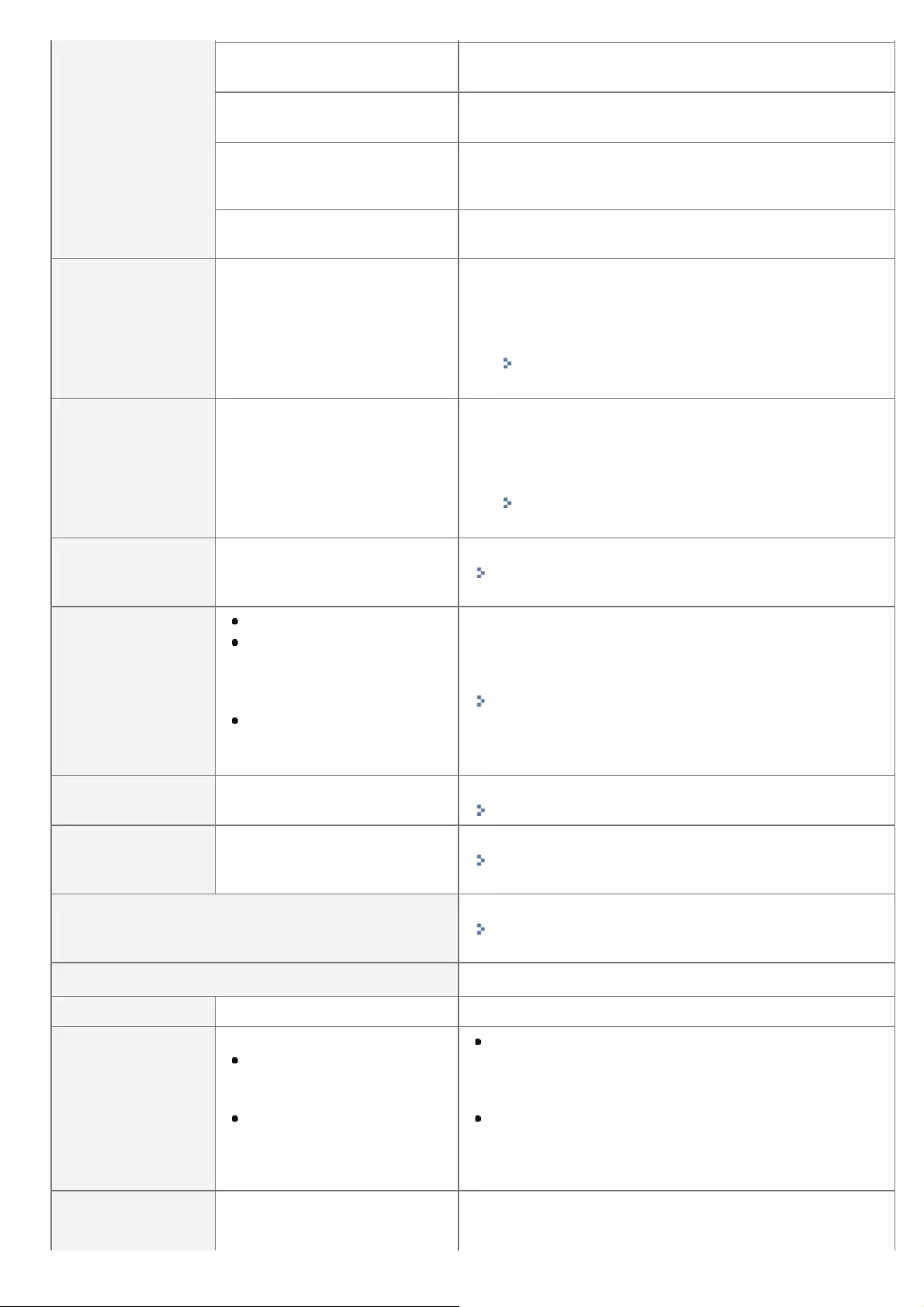
[Proxy Settings]*[Same Domain]*: [Use Proxy],
[Do Not Use Proxy]
If you want to use the proxy function also for the same
domain, specify [Use Proxy].
[Proxy Authentication]*:[Off],
[On]
If you want to use the proxy authentication function, specify
[On].
[User Name]*: -
Enter the user name to be used for the proxy
authentication. Up to 24 alphanumeric characters can be
entered.
[Password]*: - Enter the password to be used for the proxy authentication.
Up to 24 alphanumeric characters can be entered.
[SNTP] [Off], [On]
When obtaining time using the SNTP Client function,
specify [On].
*Specify the settings for [NTP Server Name] and
[Polling Interval] from the Remote UI.
"Configuring the Protocol Settings"
[Discovery
Response] [Off], [On]
If you want to set the printer so that it responds to searches
that used the multicast discovery function, specify [On].
*Specify the setting for [Scope Name] from the
Remote UI.
"Configuring the Protocol Settings"
[IPSec] [Off], [On]
When using the IPSec function, set it to [On].
"Setting the IPSec Encryption Communication Function
(LBP7680Cx Only)"
[NetWare Settings]
[NetWare]: [Off], [On]
[Frame Type]*:[Auto
Detect], [Ethernet II],
[Ethernet 802.2], [Ethernet
802.3], [Ethernet SNAP]
[Print Service]*: [Bindery
PServer], [RPrinter], [NDS
PServer], [NPrinter]
Configures the NetWare network settings.
"Configuring the Protocol Settings"
[AppleTalk] [Off], [On] Specifies whether the printer should use AppleTalk.
"Configuring the Protocol Settings"
[SMB]* [SMB Server]: [Off], [On]
[SMB Print]: [Off], [On]
Specifies whether the printer should use SMB.
"Network Settings for the Printer (SMB) (LBP7680Cx
Only)"
[SNMP Settings]
Specify the settings related to SNMP protocol.
"Restricting the Users Who Can Monitor/Change the
Settings Using the SNMP Protocol"
[SNMP v. 1 Settings] Specify the settings related to SNMP v. 1 protocol.
[SNMP v. 1] [Off], [On] Specify whether to use the SNMP v. 1 protocol.
[Dctd.
Community Set.]
[Dctd. Community 1]:
[Off], [Read/Write],
[Read Only]
[Dctd. Community 2]:
[Off], [Read/Write],
[Read Only]
[Dctd. Community 1]
Specifies access privileges for the Management
Information Base (MIB) of the community
(canon_admin) that SNMP manages.
[Dctd. Community 2]
Specifies access privileges for the Management
Information Base (MIB) of the community (canon_user)
that SNMP manages.
[SNMP v. 3
[SNMP v. 3]: [Off], [On]
[User Settings 1] to [User
*
㻡㻤㻤㻌㻛㻌㻥㻥㻤
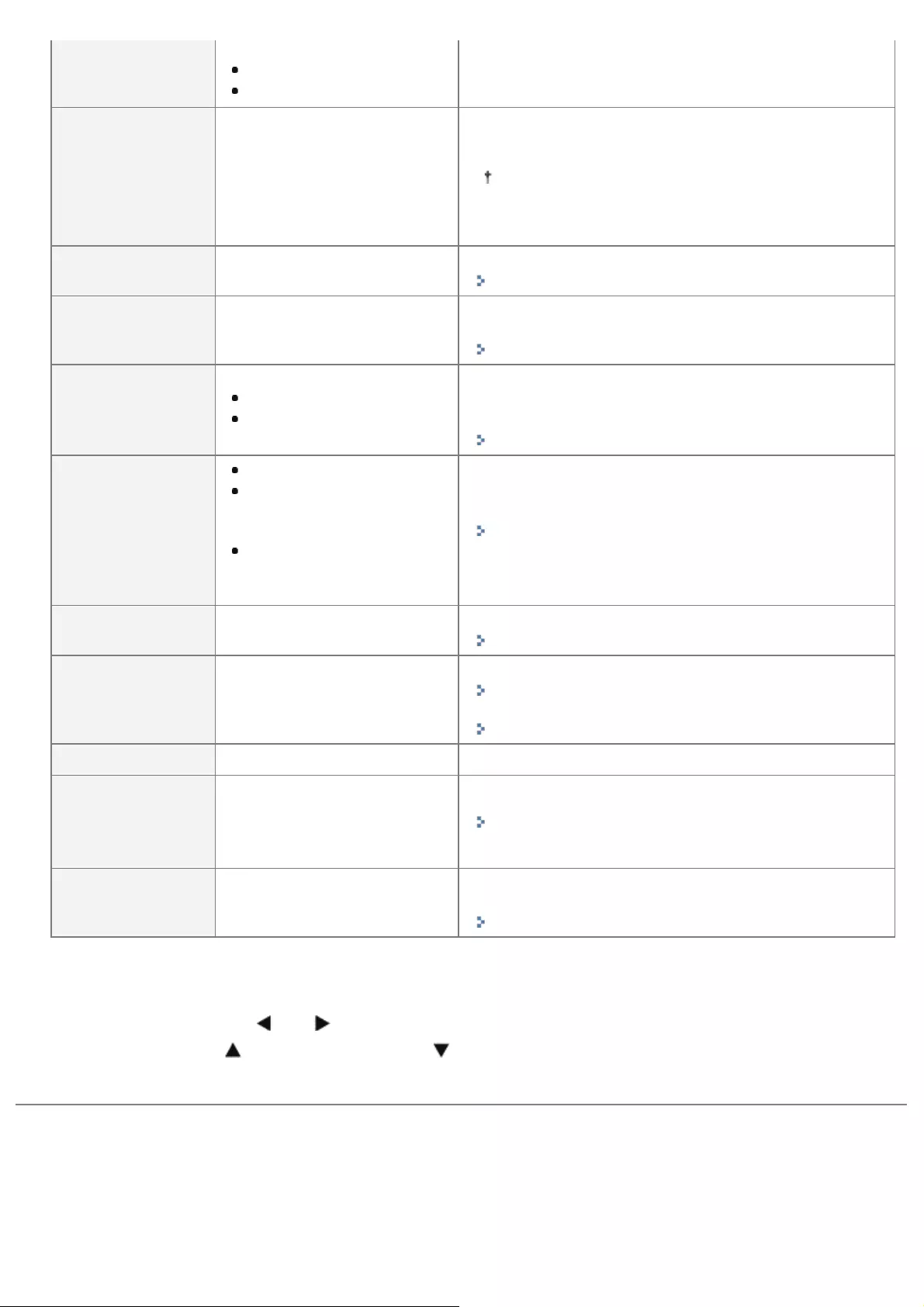
Settings] Settings 5] :
[Auth. Password]
[Encryption Password]
Specify the settings related to SNMP v. 3 protocol.
[Rjct Packet in
Sleep] [Off], [On]
Specifies whether to discard the SNMP packets received
while in sleep mode.
If you set this item to [On], you may be unable to
access the printer from Canon software (iW Series)
or applications using the SNMP protocol.
[Spooler]* [Off], [On] When using the spooling function, set it to [On].
"Setting the Spooling Function (LBP7680Cx Only)"
[Network Delay
Time]* 0 to 300 seconds
Specifies the time interval from when the printer is turned
ON to when the protocol starts.
"Specifying the Setting for Startup Waiting Time"
[Remote UI
Settings]
[Remote UI]: [Off], [On]
[SSL]*:[Off], [On]*
Specifies whether the printer should use the Remote UI.
Also, whether to use SSL for communication by the Remote
UI is specified.
"Setting Keys and Certificates"
[Ethernet Driver]*
[Auto Detect]: [Off], [On]
[Communication Mode]*:
[Half Duplex], [Full
Duplex]
[Ethernet Type]*:[10
Base-T], [100 Base-TX],
[1000 Base-T]
Configures the Ethernet driver.
"Changing the Network Transmission Speed or
Transfer Mode"
[IEEE802.1X] [Off], [On] When using the IEEE802.1X function, set it to [On].
"Setting IEEE802.1X Authentication "
[Address Filter] [Off], [On]
When using the address filter function, set it to [On].
"Restricting the Users Who Can Print or Perform the
Printer Settings"
"Restricting the Users Who Can Access"
[MAC Address]*(Display only) Displays the MAC address of the printer.
[E-Mail Print Set.]
[POP3 RX Interval]: 0 to 90
(minutes)
[POP3 RX]: [Off], [On]
[SMTP RX]: [Off], [On]
Set e-mail print.
"Receiving E-mail Data on the Mail Server and
Printing (E-mail Print)"
[Init. Network Set.] -
By the initialization in this item, you can reset the network
settings to the default settings.
"Initializing the Network Settings"
Method for entering addresses
1. Move the cursor to each field (an area separated by periods to enter three-digit numbers) in which you want to enter
the address, by pressing [ ] or [ ]. (The number in the field blinks, allowing you to enter a value.)
2. Enter the numbers. ([ ] increases the value and [ ] decreases the value.)
3. After entering values in all the fields, press [OK] to confirm the settings.
㻡㻤㻥㻌㻛㻌㻥㻥㻤
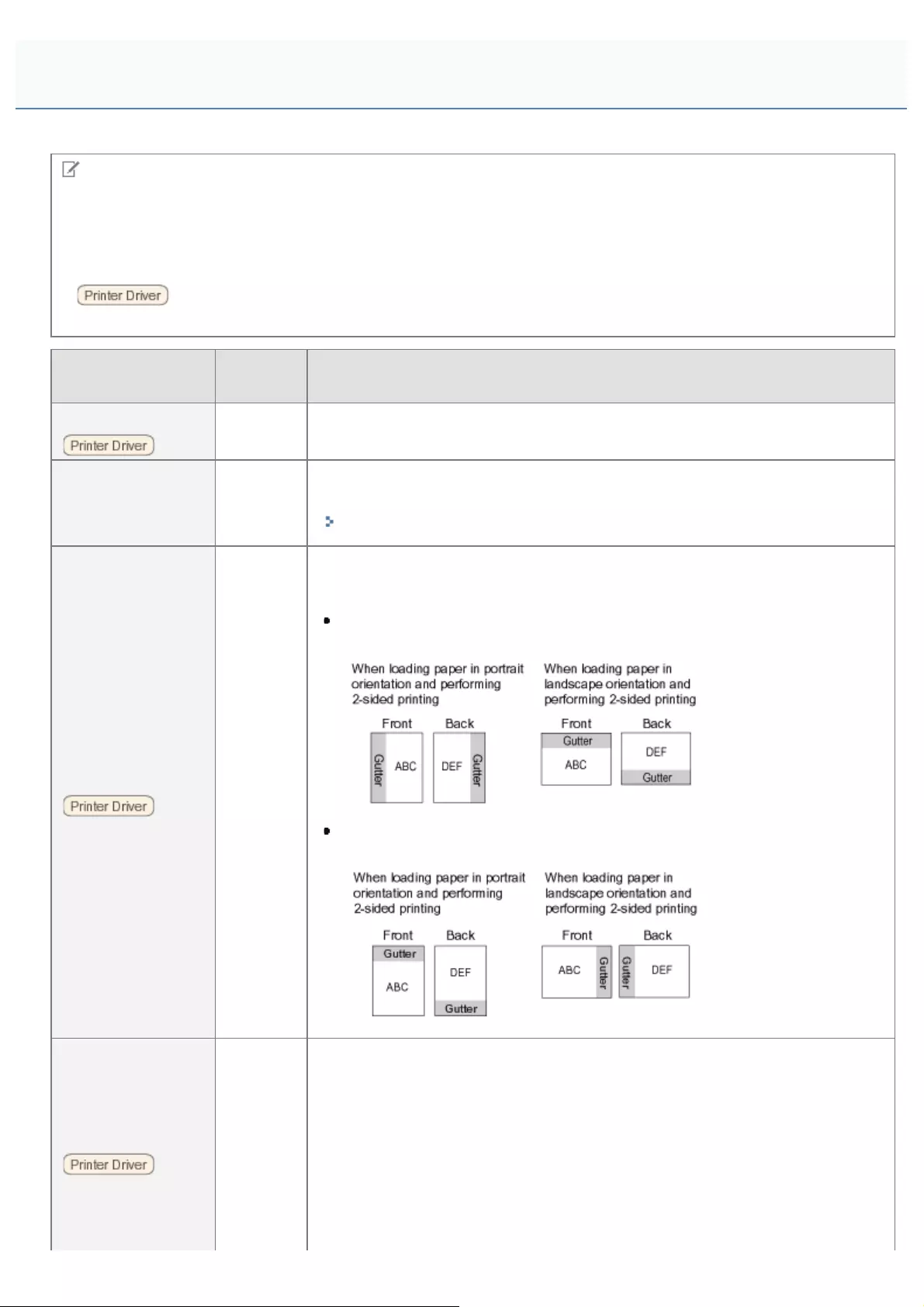
0258-08U
NOTE
Table description
Bold values in the table indicate the default settings.
About the icon
: The settings for the printer driver are prioritized for this item.
Setting Item Setting
Value Setting
[Copies] 1 to 9999 Specifies the number of copies to be printed.
The printer prints the specified number of copies.
[Offset Y]/[Offset X]
-50.0 to
0.0 to
+50.0
(mm)
Adjusts the printing position in the vertical direction (Y) or the horizontal direction
(X) by the specified value.
"Adjusting the Printing Position for All the Jobs"
[Binding Location] [Long
Edge],
[Short
Edge]
Specifies which edge of the paper, the long edge or short edge, is to be bound.
When performing 2-sided printing, the printer adjusts the binding location
automatically according to the paper surface.
If [Long Edge] is specified, the binding location is created on the long edge
of the paper.
If [Short Edge] is specified, the binding location is created on the short edge
of the paper.
[Gutter] -50.0 to
0.0 to
+50.0
(mm)
Specifies the gutter width for printing with the binding location created. A gutter is
created with the image shifted by the specified value.
You can shift the image in the "+" direction with a positive value and in the "-"
direction with a negative value.
[Setup] Menu ([Layout] Options)
㻡㻥㻜㻌㻛㻌㻥㻥㻤
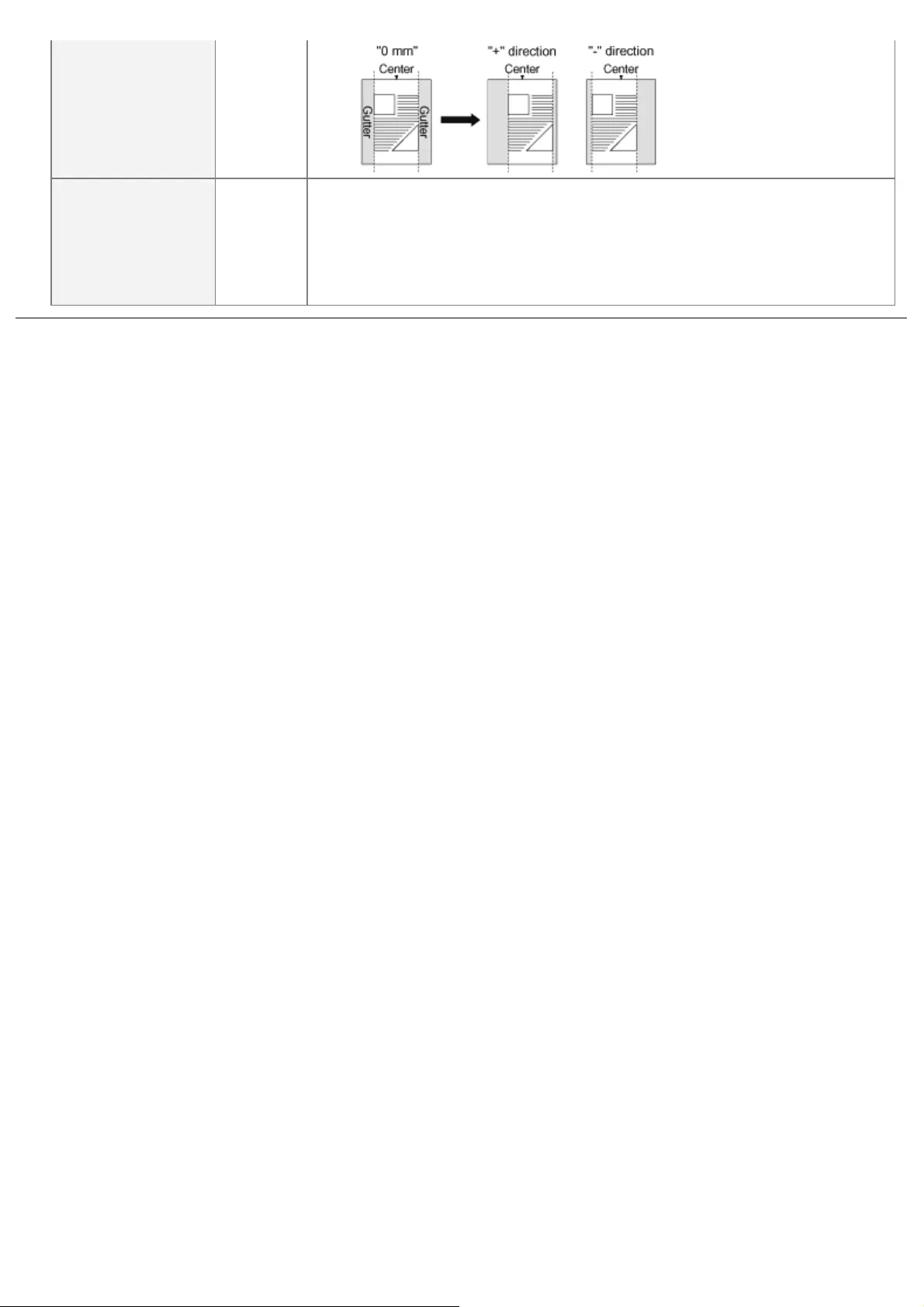
[Alternative Method] [Off],
[On]
If this item is set to [On] and if the last page for the 2-sided printing is 1-sided
printing, 1-sided printing is applied to the last page. (Printing can be performed
faster than normal 2-sided printing.)
However, when performing 2-sided printing on punched paper or previously
printed paper, the orientation or printing surface of the last page may differ from
other pages. In this case, specify [Off].
㻡㻥㻝㻌㻛㻌㻥㻥㻤
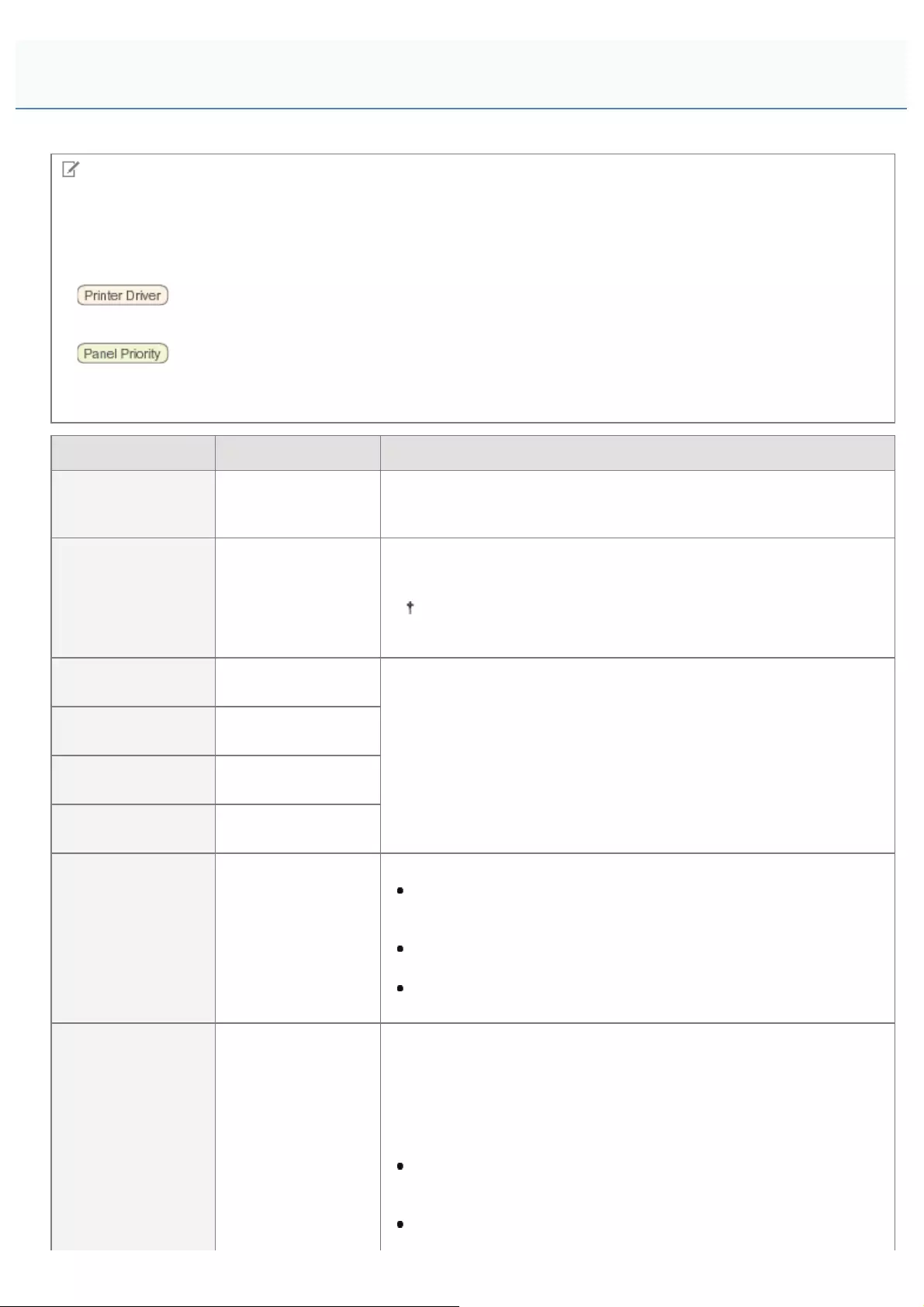
0258-08W
NOTE
Table description
Bold values in the table indicate the default settings.
About the icons
:
The settings for the printer driver are prioritized for this item.
:
The settings in the control panel are enabled for this item because the settings are prioritized for the
default settings for the printer driver.
Check the settings in the control panel even when using the printer driver.
Setting Item Setting Value Setting
[Gradation Level] [High 1], [High 2]
Specify the data gradation process when printing. It is effective to set
[High 1] when printing photographs at standard quality, and to set [High
2] when printing at a higher quality.
[Toner Save] [Off], [On]
[Toner Save] is used for test printing. When you use [Toner Save], you
can save toner when you print.
When it is set to [On], the print density becomes lower, and
sometimes it does not print well.
[Density: C] -8 Light to 0 to +8
Dark
Adjust the print density for each color when printing. The larger the
setting value, the greater the print density.
[Density: M] -8 Light to 0 to +8
Dark
[Density: Y] -8 Light to 0 to +8
Dark
[Density: K] -8 Light to 0 to +8
Dark
[Color Mode]
[Auto
(Color/Black)],
[Color], [Black]
Specify color printing or B&W printing.
When it is set to [Auto (Color/Black)], it automatically switches
between color and black and white printing depending on the
original type.
When it is set to [Color], it prints in 4 colors: cyan (C), magenta
(M), yellow (Y) and black (Bk).
When it is set to [Black], it prints color documents in black (Bk)
only.
[Halftones]
[Error
Diffusion]: [Off],
[On]
[Resolution/Grad.]:
[Text]:
[Resolution],
[Gradation]
[Graphics]:
[Resolution],
[Gradation]
[Image]:
Specify the halftone display method when printing. When [Error
Diffusion] is set to [On], it uses error diffusion that excels at subtle
expression of text and fine lines. It is suitable for printing small text or
particularly fine lines.When [Error Diffusion] is set to [Off], you can
select the halftone display method from [Resolution] and [Gradation]
using [Resolution/Grad.].
[Resolution] allows you to print in fine detail so that the edges of
text data can be seen clearly. It is suitable for printing data
containing text and fine lines.
[Gradation] allows you to perform printing that combines smooth
[Setup] Menu ([Quality] Options)
㻡㻥㻞㻌㻛㻌㻥㻥㻤

[Resolution],
[Gradation]
gradation with edge quality. It is suitable for printing graphics or
graphs that use gradation.
[Gray
Compensation]
[Text]: [Off], [On]
[Graphics]: [Off],
[On]
[Image]: [Off], [On]
When printing in color, for RGB equivalent, set whether to print in black
(K) toner only to print in CMYK 4-color toner.
When it is set to [On], black and gray data is printed in black (K)
only. This can prevent color registration errors.
When it is set to [Off], it is printed with CMYK 4-color toner. The
gradation of dark colors is reproduced more faithfully than when it
is set to [On].
[CMS]
[CMS Selection] [Printer], [Host] Set which side will perform color processing, the printer side or the
host side (printer driver).
[CMS/Gamma]
[Text]: [CMS],
[Gamma]
[Graphics]: [CMS],
[Gamma]
[Image]: [CMS],
[Gamma]
Set whether to perform color matching or to perform color correction by
setting a gamma value.
[RGB Source
Profile]
[Text]: [sRGB v3.0
(Canon)], [Canon
HDTV gamma 1.5],
[Canon HDTV
gamma 1.8], [Canon
HDTV gamma 2.4]
[Graphics]: [sRGB
v3.0 (Canon)],
[Canon HDTV
gamma 1.5], [Canon
HDTV gamma 1.8],
[Canon HDTV
gamma 2.4]
[Image]: [sRGB
v3.0 (Canon)],
[Canon HDTV
gamma 1.5], [Canon
HDTV gamma 1.8],
[Canon HDTV
gamma 2.4]
Select a suitable profile for RGB data that matches the monitor that
you are using.
When it set to [sRGB v3.0 (Canon)], it is set to the industry
standard image quality for general Windows (PC) monitors. When
using monitors that support sRGB, it can match the colors
displayed on the monitor and the colors printed in the printer and
print colors close to the colors displayed on the monitor.
When it is set to [Canon HDTV gamma X.X], it adjusts the
brightness of the printed result so that the brightest and darkest
parts of the data are not lost. Set it to adjust the brightness, such
as when the print result is brighter than the colors displayed on
the monitor. The larger the gamma value, the darker it is printed.
[Output Profile]
[Text]: [Normal],
[Photo]
[Graphics]:
[Normal], [Photo]
[Image]: [Normal],
[Photo]
Set the output profile. The output profile is applied to all of the print
data.
[Matching Method]
[Text]: [Perceptual],
[Saturation],
[Colorimetric]
[Graphics]:
[Perceptual],
[Saturation],
[Colorimetric]
[Image]:
[Perceptual],
[Saturation],
[Colorimetric]
Since the colors displayed on the computer monitor and the colors that
the printer can reproduce differ, adjust the colors. Select the
adjustment method depending your use or preference.
When it is set to [Perceptual], matching is performed by making it
prioritize shades (hues).
When it is set to [Saturation], it provides colors suitable for printing
artwork and graphs for use in presentations.
When it is set to [Colorimetric], it matches so that the color
difference between originals such as logos and the output color is
minimized.
[Text]: [1.0], [1.4],
[1.8], [2.2]
㻡㻥㻟㻌㻛㻌㻥㻥㻤
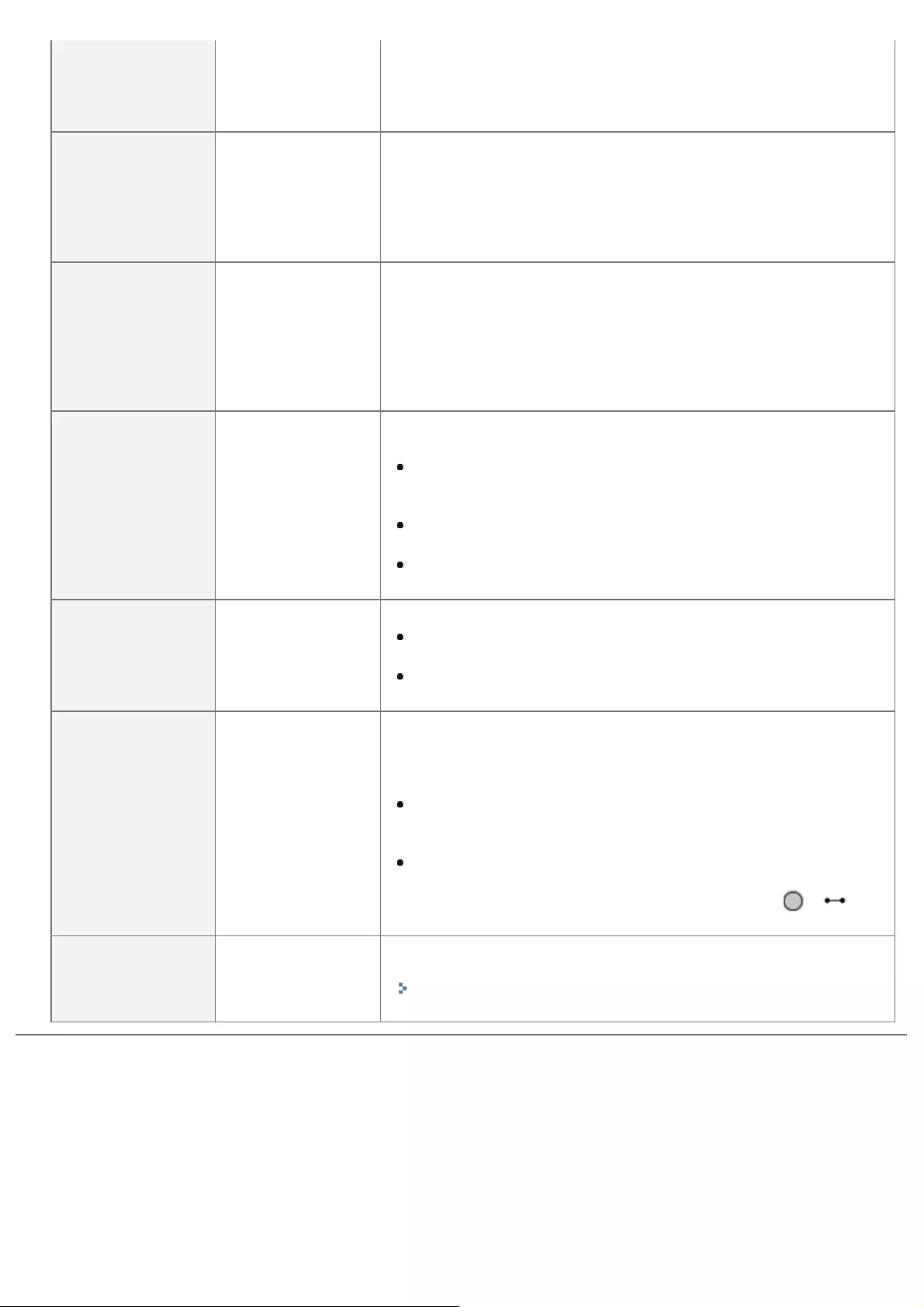
[Gamma
Correction]
[Graphics]: [1.0],
[1.4], [1.8], [2.2]
[Image]: [1.0], [1.4],
[1.8], [2.2]
It adjusts the brightness of the printed result so that the brightest and
darkest parts of the document are not lost. The larger the setting value,
the darker it is printed. [1.4] shows no correction.
[Gradation Settings]
[Gradation]: [Off],
[Smooth 1], [Smooth
2]
[Graphics]: [Off],
[On]
[Image]: [Off], [On]
Set this item when you cannot print the gradations of image data such
as graphics (illustrations created in other applications) and images
(bitmaps) smoothly (color transitions stand out). [Smooth 2] is better
than [Smooth 1] for performing a smoothing process that provides
smoother gradation. You also can select what to smooth by switching
[Graphics] and [Image] [On]/[Off].
[Advanced
Smoothing]
[Advanced
Smoothing]: [Off],
[Smooth 1],
[Smooth 2]
[Graphics]: [Off],
[On]
[Text]: [Off], [On]
Specify whether to use the smoothing process to smooth the edges of
graphics (illustrations created in other applications) or text.
[Smooth 2] is better than [Smooth 1] for performing a smoothing
process that provides more smoothing.
You can select what to smooth by switching [Graphics] and [Text]
[On]/[Off].
[Toner Volume
Corr.]
[Normal],
[Gradation Priority],
[Text Priority]
Set the correction method for when the toner volume has exceeded the
printer's limit value when printing high density parts.
When it is set to [Normal], it prints text and lines using the toner
volume that will preserve resolution, and it prints the other data
with the toner volume that will preserve hue.
When it is set to [Gradation Priority], it prints all the data using the
toner volume that will preserve hue.
When it is set to [Text Priority], it prints all the data using the
toner volume that will preserve resolution.
[Line Control]
[Resolution
Priority],
[Gradation Priority]
Set image processing for lines.
When it is set to [Resolution Priority], it processes lines in the
same way as text so that resolution is preserved.
When it is set to [Gradation Priority], it processes lines in the
same way as graphics so that gradation is preserved.
[Reduce Quality]
[Continue
Printing], [Stop
Printing]
Specifies whether the printer should continue printing with the image
quality of the data being lowered automatically or stop printing
displaying the following error message when the memory required for
the process runs out.
If [Continue Printing] is specified, the printer prints with the image
quality level being lowered automatically without displaying a
message.
If [Stop Printing] is specified, the printer stops printing, displaying
a message. In this case, the printer resumes printing with the
image quality of the data being lowered by pressing [ ] (
Online).
[Sp. Smoothing
Mode]
[Mode 1], [Mode
2], [Mode 3], [Mode
4], [Mode 5], [Mode
6]
Set it to solve print quality problems.
"Colors Are Uneven or Not Printed Smoothly"
㻡㻥㻠㻌㻛㻌㻥㻥㻤
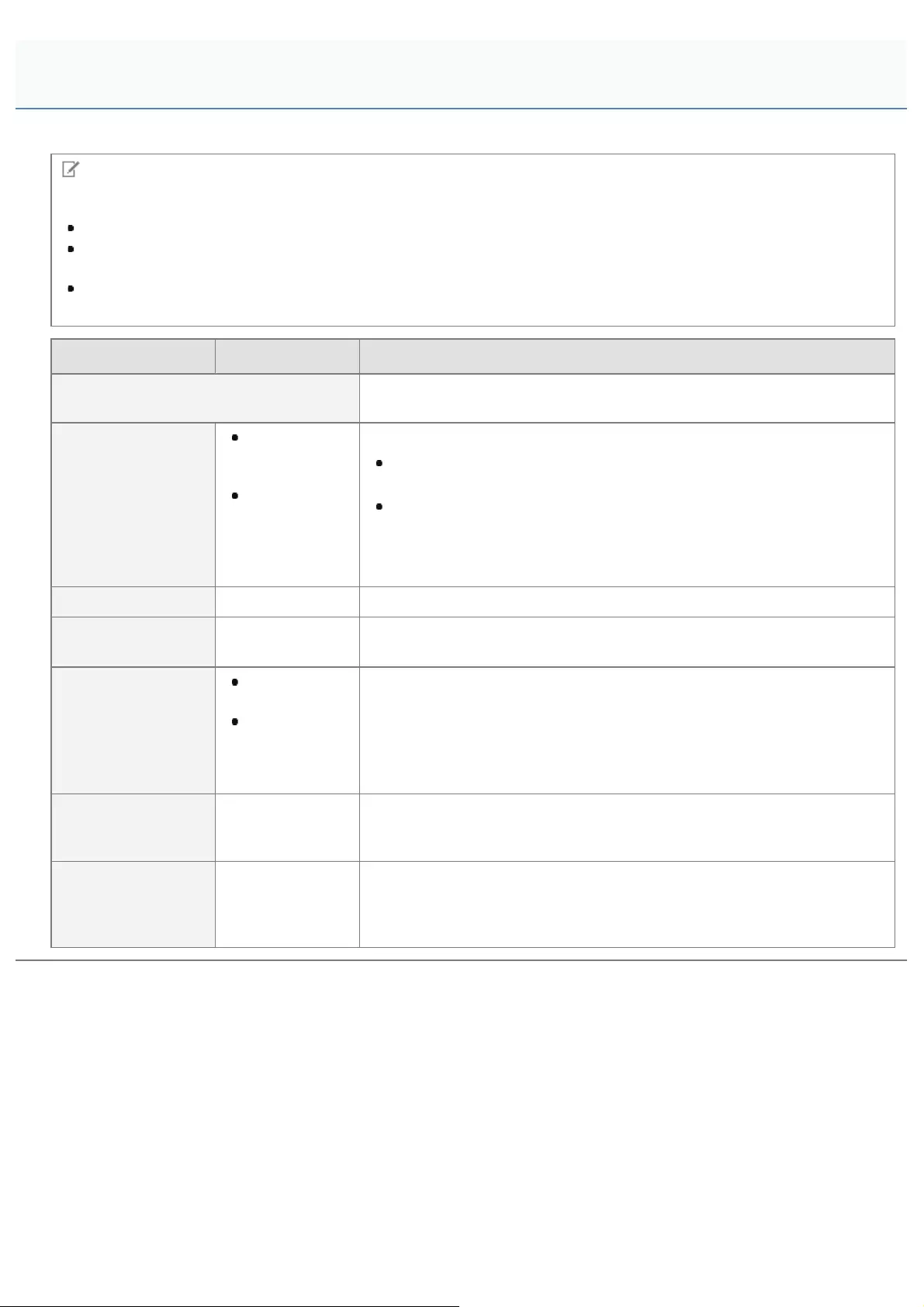
0258-08X
NOTE
Table description
Bold values in the table indicate the default settings.
After changing the setting items with "*1", cycle the power of the printer or perform a hard reset to make the
settings effective.
The setting items or setting values with "*2" may not be displayed depending on the availability of the optional
accessories and other settings.
Setting Item Setting Value Setting
[Interface Selection]*1 Specifies the settings for the interfaces used for communication with the
computer or other device.
[USB]
[Use USB
Connection]:
[Off], [On]
[Recog.
USB
Connect.]:
[Mode 1],
[Mode 2]
[Use USB Connection]
Specifies whether to use the USB interface.
[Recog. USB Connect.]
Switches the USB connection recognition mode.
Normally, set it as [Mode 1].
[Network] [Off], [On] Specifies whether to use the network interface.
[USB Storage
Device]*2
[MEAP Driver]:
[Off], [On]
Specifies the setting for the device driver when using USB memory
devices.
[Timeout]
[Timeout]:
[Off], [On]
[Timeout
Time]: 5 to
15 to 300
seconds
Specifies the function to finish a job automatically.
[Connection
Recog.]*1 [Off], [On]
When you print using the standard network, you may not obtain proper
printout results. (Unreadable characters are printed, overlay printing fails,
etc.) In this case, specify [Off] for this item.
[Extended RX
Buffer]*1*2 [Off], [On]
If this item is set to [On], the memory capacity of the printer's receive
buffer that receives the data is increased. You can speed up the time the
computer exits when you send a large amount of data or complicated data
from the computer.
[Setup] Menu ([Interface] Options)
㻡㻥㻡㻌㻛㻌㻥㻥㻤
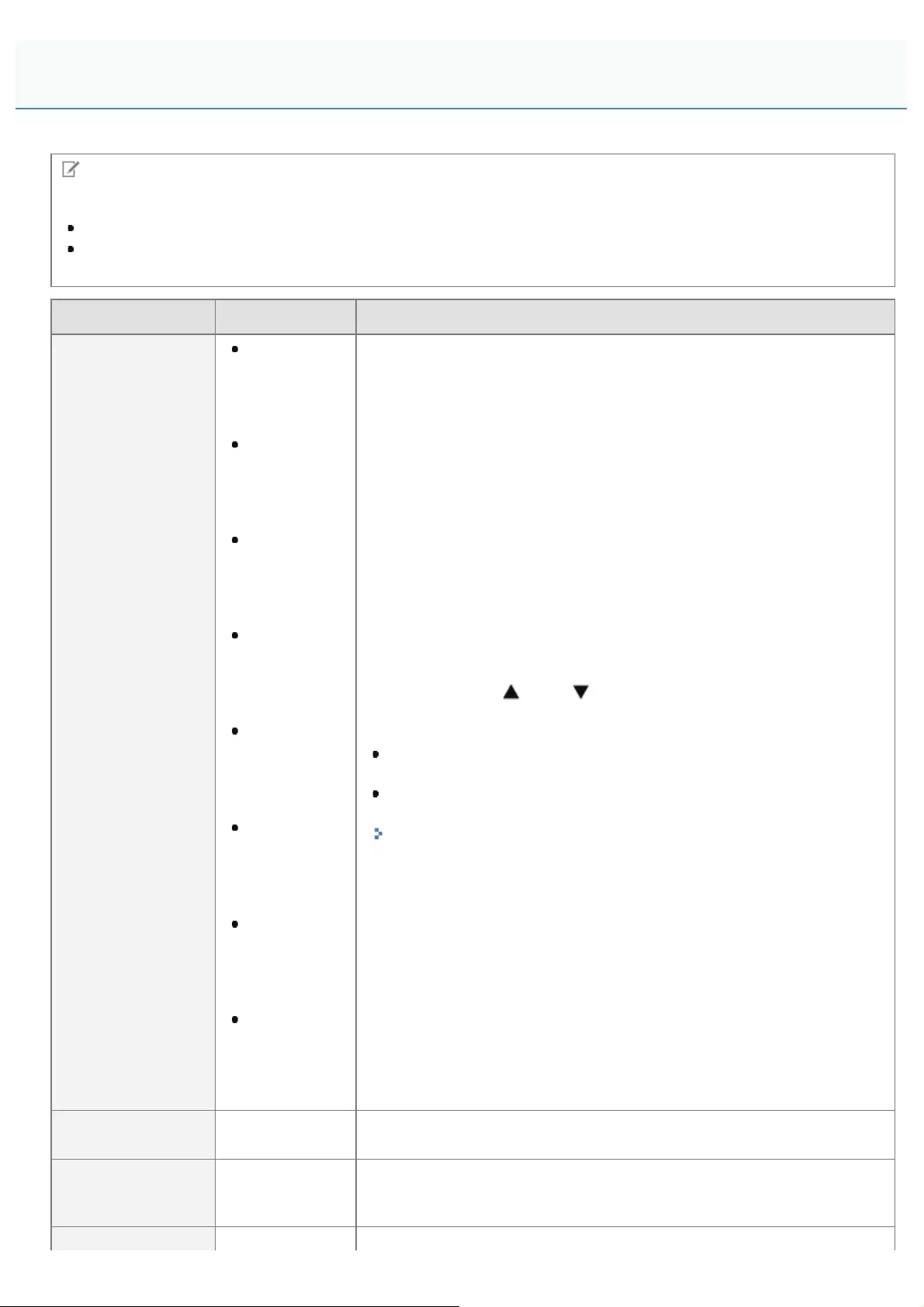
0258-08Y
NOTE
Table description
Bold values in the table indicate the default settings.
The setting items or setting values with "*" may not be displayed depending on the availability of the optional
accessories and other settings.
Setting Item Setting Value Setting
[Adj. Start Position]
[Offset Y
(MP Tray)]:
-5.0 to 0.0
to +5.0
(mm)
[Offset X
(MP Tray)]:
-5.0 to 0.0
to +5.0
(mm)
[Offset Y
(Drawer 1)]:
-5.0 to 0.0
to +5.0
(mm)
[Offset X
(Drawer 1)]:
-5.0 to 0.0
to +5.0
(mm)
[Offset Y
(Drawer
2)]*: -5.0 to
0.0 to +5.0
(mm)
[Offset X
(Drawer
2)]*: -5.0 to
0.0 to +5.0
(mm)
[Offset Y
(2-Sided)]:
-5.0 to 0.0
to +5.0
(mm)
[Offset X
(2-Sided)]:
-5.0 to 0.0
to +5.0
(mm)
Specifies the printing position of the paper in the specified paper source.
Adjusts the position in the vertical direction (Y) or the horizontal direction
(X) by the specified value.
The setting values are indicated in millimeters (mm), and you can adjust
the position using [ ] and [ ].
If you do not adjust the printing position, specify [0.0] for this item.
Adjust the printing position for 2-sided printing as follows.
Adjust the printing position of the first page using [Offset Y (2-Sided)]
and [Offset X (2-Sided)].
The printing position of the second page depends on the settings for
each paper source.
"Adjusting the Printing Position for Each Paper Source"
[Recovery Printing] [Off], [On] Specifies whether to print the partially printed page when the printer stops
printing due to a paper jam or an error occurring.
[Check Paper Size] [Off], [On]
Specifies whether the printer should stop printing, displaying the message
<Check paper size.> or continue printing when [MP Tray Paper Size],
[Drawer 1 Size], [Drawer 2 Size] is set to [Mixed Sizes].
[Setup] Menu ([User Maintenance] Options)
㻡㻥㻢㻌㻛㻌㻥㻥㻤
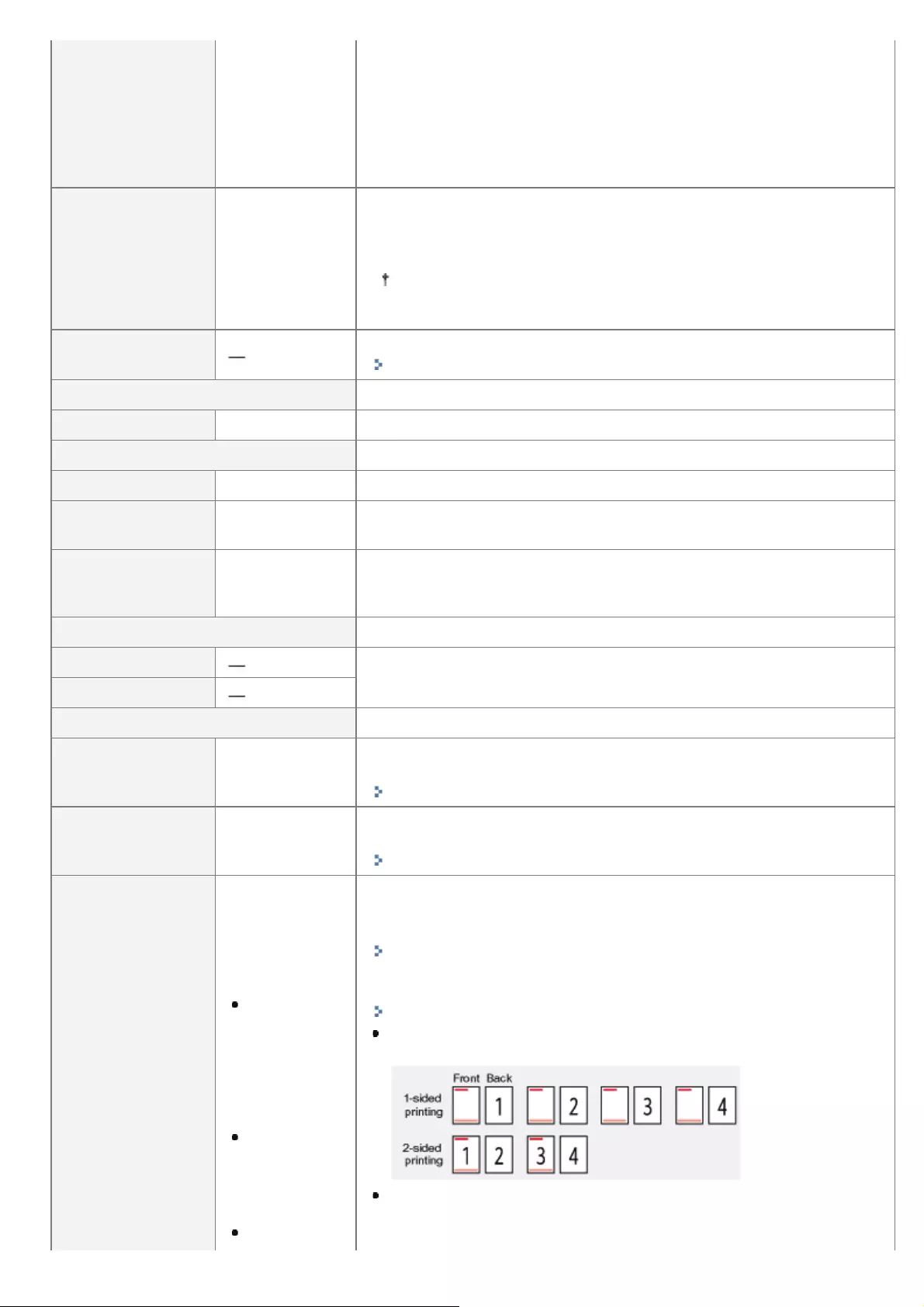
[Substitute Size] [Off], [On]
When the paper of the target size is not loaded in the printer, the printer
prints on paper of the following sizes.
Size of the Paper to Be Printed Printer Driver Setting
Letter ĺA4
A4 ĺLetter
[Special Image
Mode]
[Off], [Level 1],
[Level 2]
If the centers of dense text or lines are not being printed, set this to [Level
1].
If the problem still persists after setting it to [Level 1], set it to [Level 2].
When [Special Image Mode] is used, the print density becomes
lower.
[ITB Cleaning] Run the ITB Cleaner.
"Cleaning the Transfer Belt"
[SD Card Maintenance]
[Format] [No], [Yes] Delete the contents of the SD card.
[Special Print Mode]
[Curl Correction] [Off], [On] When printed paper curls, set this item to [On].
[Rough Paper
Adj.] [Off], [On] If images with toner of two or more overlapping colors are printed too
lightly when using rough paper, set this item to [On].
[Special Env.
Mode] [Off], [On]
Sometimes, depending on the type of envelope and the use environment
(especially humid environments), the envelope flap gets glued down. In
such a case, set this item to [On].
[Update Firmware]
[USB] This option is to be executed only when the firmware of the printer needs
to be updated.
[Network]
[First Calibration]
[Color Mismatch
Corr.]
[After Jobs],
[Immediately]
Set the operation when there is a request for color shift adjustment
calibration during the printer startup diagnostics.
"Adjusting the Color or Color Mismatch (Calibration)"
[Density Control]
[Off], [After
Jobs],
[Immediately]
Set the operation when there is a request for density control and density
measurement calibration during the printer startup diagnostics.
"Adjusting the Color or Color Mismatch (Calibration)"
[Paper Feed
Method]
[Multi-
Purpose
Tray]:
[Speed
Priority],
[Print Side
Priority]
[Drawer 1]:
[Speed
Priority],
[Print Side
Priority]
[Drawer 2]*:
Specifies on which side of the loaded paper the printer should print.
Perform printing after selecting the paper drawer or tray to feed paper.
Select the paper source.
"[Setup] Menu ([Paper Source] Options)"
The setting of this item determines which side of paper is printed on. Load
the paper in proper orientation.
"Paper Loading Orientation"
If [Speed Priority] is specified, the printing sides of the paper for 1-
sided printing and 2-sided printing do not match.
If you specify [Print Side Priority], the printer matches the printing
sides of the paper for 1-sided printing and 2-sided printing.
Therefore, when you print previously printed paper, you do not need
㻡㻥㻣㻌㻛㻌㻥㻥㻤
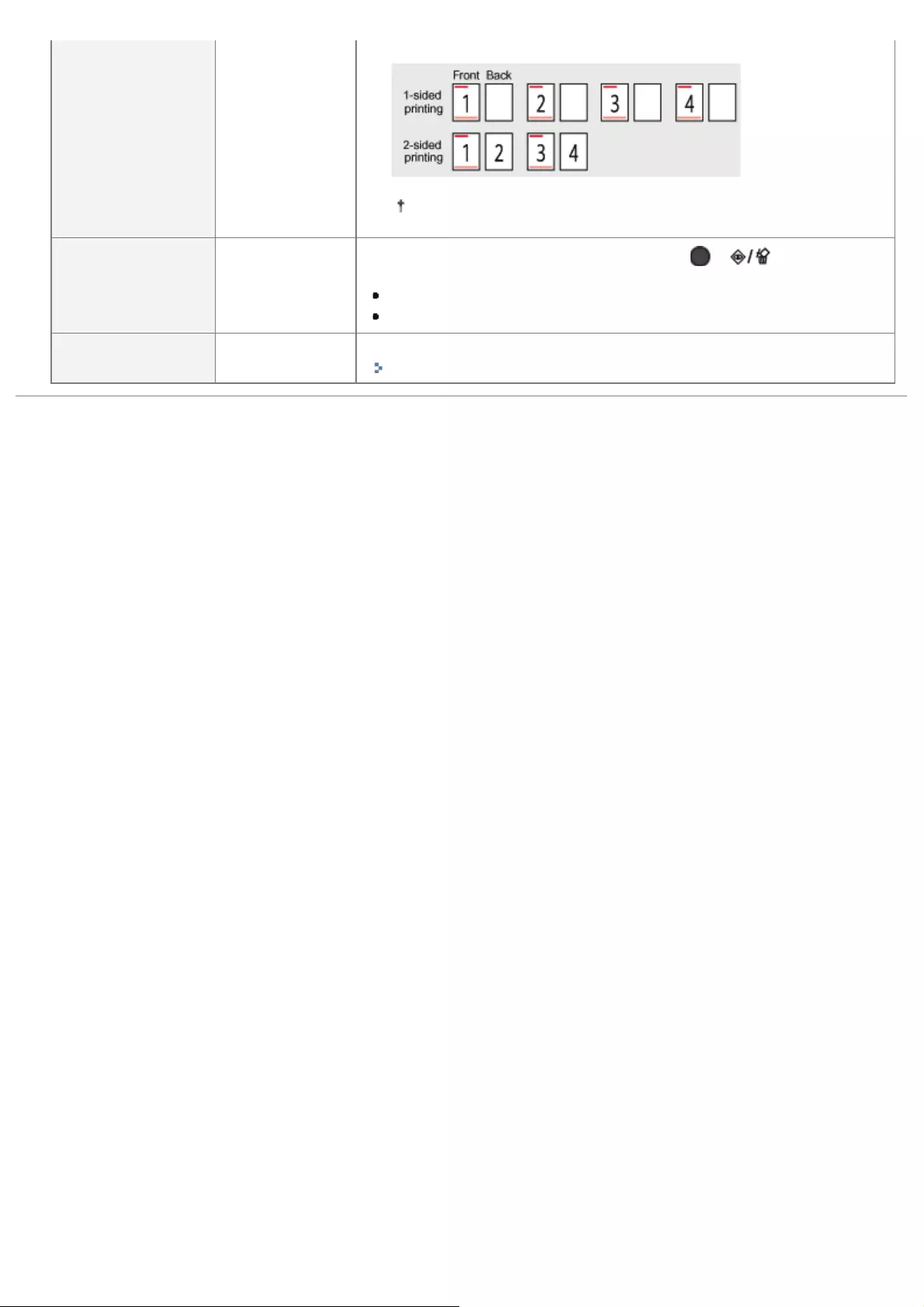
[Speed
Priority],
[Print Side
Priority]
to reload the paper each time you switch between the settings.
If you specify [Print Side Priority], the print speed drops.
[Show Job List] [Off], [On]
Specifies whether to display the job list when [ ] ( : Job
Status/Cancel) is pressed.
If [On] is specified, the printer displays the job list.
If [Off] is specified, the printer does not display the job list.
[IMPORT/EXPORT] [EXPORT],
[IMPORT]
You can save and read printer settings.
"Importing and Exporting Settings"
㻡㻥㻤㻌㻛㻌㻥㻥㻤
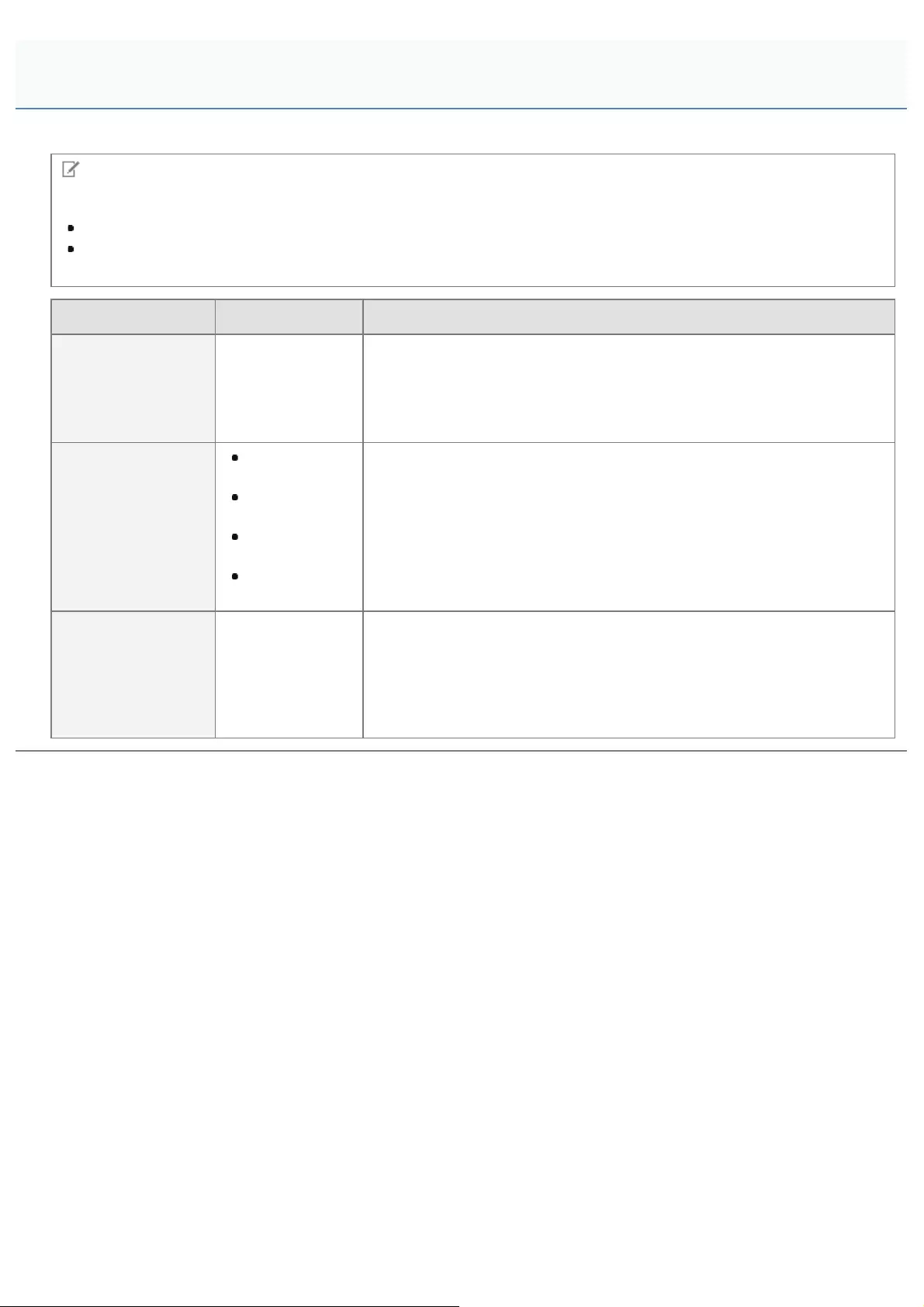
0258-090
NOTE
Table description
Bold values in the table indicate the default settings.
The setting items or setting values with "*" may not be displayed depending on the availability of the optional
accessories and other settings.
Setting Item Setting Value Setting
[Auto Mode
Selection]
[Auto
Selection],
[PCL], [PS]*,
[PDF], [XPS]*
Specifies the mode in which this printer operates when you print without
using the printer driver for this printer.
If the print mode is not appropriate, such a printing problem as
unreadable characters being printed may occur. Specify this item
according to the job to be printed.
[Auto Select]
[PCL]: [Off],
[On]
[PS]* [Off],
[On]
[PDF]: [Off],
[On]
[XPS]*: [Off],
[On]
Specifies the print mode to be automatically switched if [Auto Mode
Selection] is set to [Auto Selection].
If [On] is specified, the mode is to be automatically switched to.
[Mode Priority]
[None], [PCL],
[PS]*, [PDF],
[XPS]*
You can specify [Mode Priority] to be switched to by priority for when
[Auto Mode Selection] is set to [Auto Selection] and this printer cannot
identify the control command of the data.
If you specify [None], the printer does not specify the mode priority. If this
printer cannot identify the control command of the data, it determines the
mode automatically.
[Setup] Menu ([Print Mode] Options)
㻡㻥㻥㻌㻛㻌㻥㻥㻤
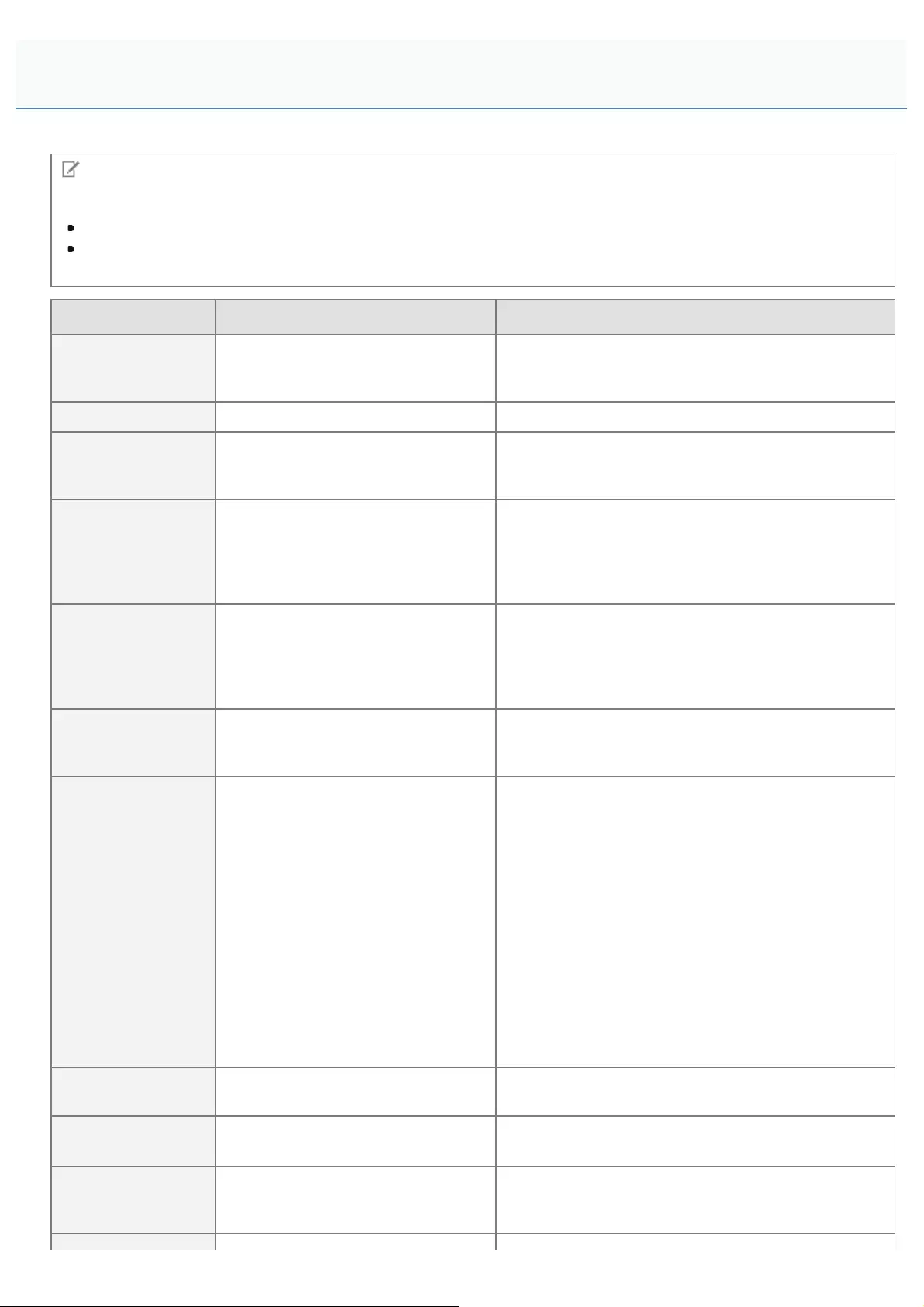
0258-091
NOTE
Table description
Bold values in the table indicate the default settings.
The setting items or setting values with "*" may not be displayed depending on the availability of the optional
accessories and other settings.
Setting Item Setting Value Setting
[Paper Save] [Off], [On]
Specifies whether the printer outputs the blank page
that can be created due to no data existing between
two Form Feed codes sent from an application.
[Orientation] [Portrait], [Landscape] Enables you to set the paper orientation.
[Font Number] 0 to 104
Enables you to set the default font for this printer
function using the corresponding font numbers. Valid
font numbers are from 0 to 104.
[Point Size]*4.00 to 12.00 to 999.75 point
If the number selected in [Font Number] is that of a
proportionally spaced scalable font, this option
appears in the [PCL] options. It enables you to specify
a point size for the default font. The point size can be
adjusted in increments of 0.25 pts.
[Pitch]*0.44 to 10.00 to 99.99 cpi
If the number selected in [Font Number] is that of a
fixed pitch scalable font, Pitch appears in the [PCL]
options. It enables you to specify the pitch for the
default font. The pitch can be adjusted in increments
of 0.01 cpi (characters per inch).
[Form Lines] 5 to 64 to 128 lines
Enables you to specify the number of lines to be
printed on a page. You can specify from 5 to 128
lines.
[Character Code]
[PC8], [ROMAN8], [ROMAN9],
[ISOL1], [ISOL2], [ISOL5], [ISOL6],
[ISOL9], [PC775], [PC8DN], [PC850],
[PC852], [PC858], [PC8TK],
[PC1004], [WINL1], [WINL2],
[WINL5], [WINBALT], [DESKTOP],
[PSTEXT], [LEGAL], [ISO4], [ISO6],
[ISO11], [ISO15], [ISO17], [ISO21],
[ISO60], [ISO69], [WIN 30],
[MCTEXT], [PC864], [ARABIC8],
[WINARB], [PC866], [ISOCYR],
[WINCYR], [PC851], [GREEK8],
[ISOGRK], [PC8GRK], [WINGRK],
[PC862], [HEBREW7], [HEBREW8],
[ISOHEB]
Enables you to select the symbol set most suited to
the needs of the host computer.
[Custom Size] [Do Not Set], [Set] Enables you to specify a custom paper size. If [Set] is
selected, you can enter a custom size.
[Unit of
Measurement]*[Inches], [Millimeters] Enables you to specify the unit of measurement you
would like to use to specify your custom paper size.
[X Dimension]*98.4 to 215.9 mm; 215.9 mm (3.87
to 8.50 in.; 8.50 in.)
Enables you to specify the X dimension of the custom
paper. The X dimension can be adjusted between
98.4 mm and 215.9 mm in increments of 0.1 mm.
[Setup] Menu ([PCL] Options)
㻢㻜㻜㻌㻛㻌㻥㻥㻤
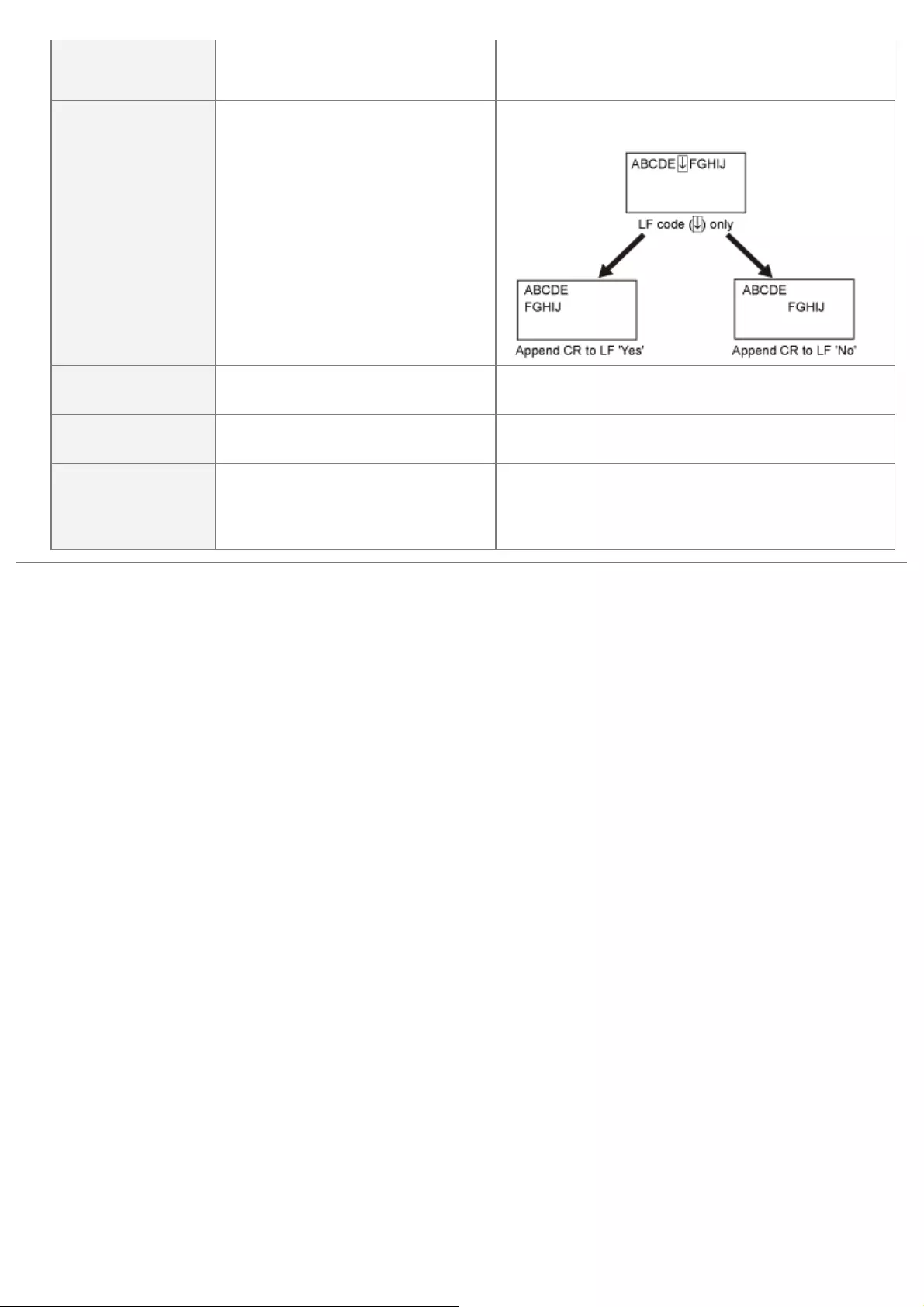
[Y Dimension]*148.0 to 355.6 mm; 355.6 mm
(5.82 to 14.00 in.; 14.00 in.)
Enables you to specify the Y dimension of the custom
paper. The Y dimension can be adjusted between
148.0 mm and 355.6 mm in increments of 0.1 mm.
[Append CR to LF] [Yes], [No]
Enables you to specify whether to append a carriage
return (CR) when line feed code (LF) is received.
[Enlarge A4 Prt
Width] [Off], [On] Determines whether to expand the printable area of
A4 paper to that of Letter size in width.
[BarDIMM]*[Enable], [Disable] You can enable or disable the Bar Code Printing
function of the printer.
[FreeScape]*[Off], [~], ["], [#], [$], [/], [\], [?], [{],
[}], [|]
You can specify the AEC (Alternate Escape Code) to
be used for bar code commands when the host
computer does not support the standard Escape
Code.
㻢㻜㻝㻌㻛㻌㻥㻥㻤
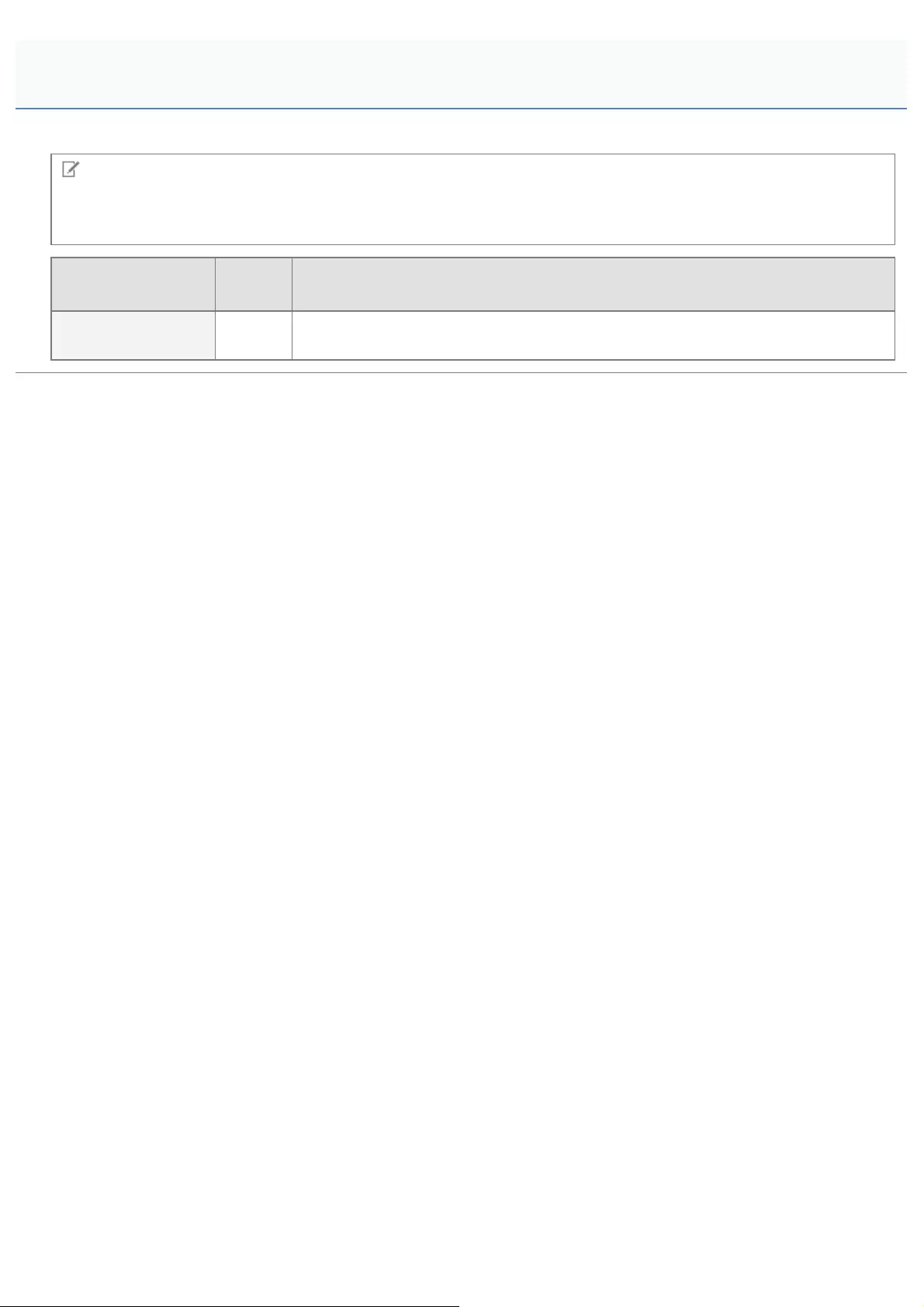
0258-092
NOTE
Table description
Bold values in the table indicate the default settings.
Setting Item Setting
Value Setting
[Paper Save] [Off],
[On]
Specifies whether the printer outputs the blank page that can be created due to no
data existing in the page data sent from an application.
[Setup] Menu ([UFR II] Options)
㻢㻜㻞㻌㻛㻌㻥㻥㻤
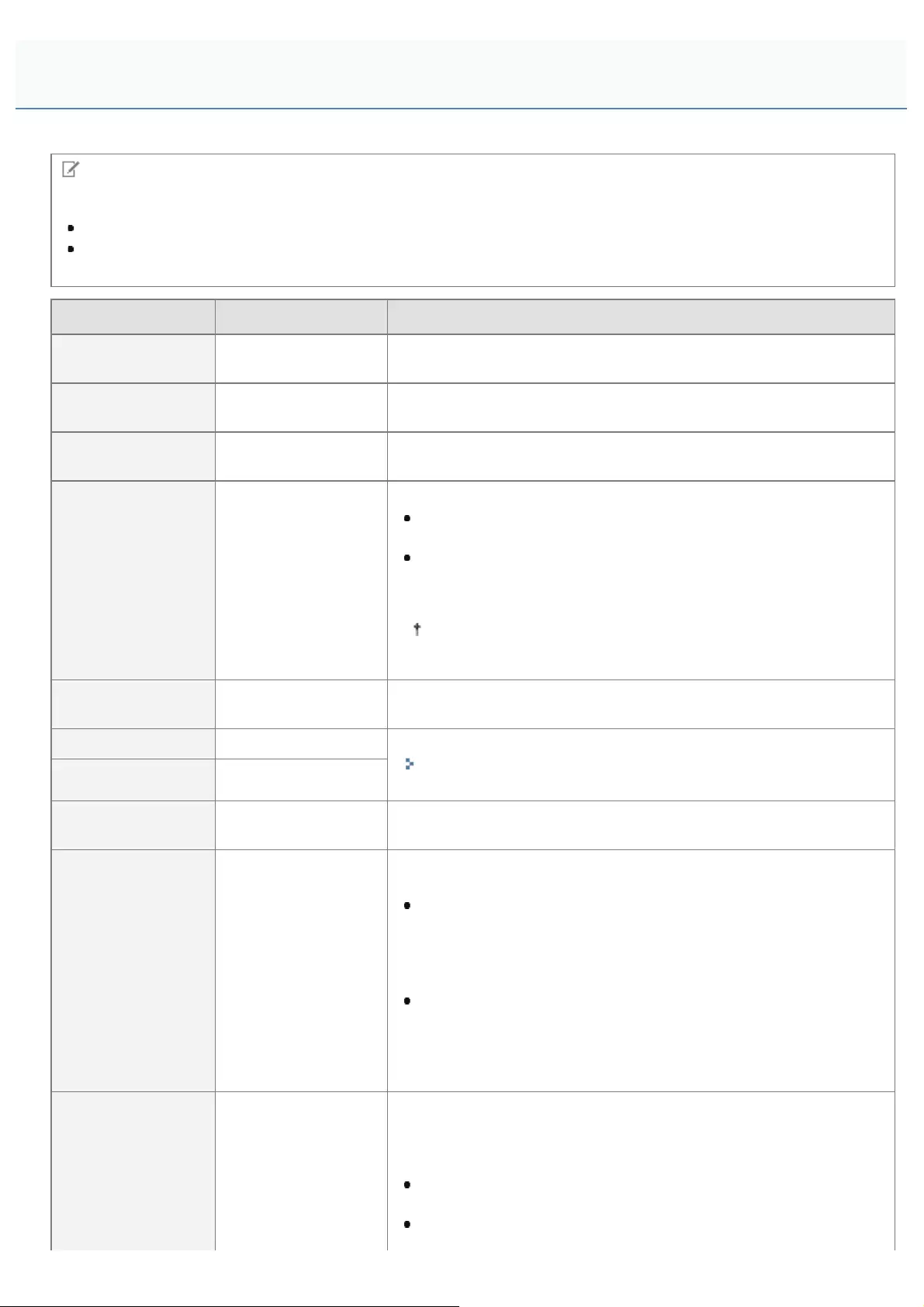
0258-093
NOTE
Table description
Bold values in the table indicate the default settings.
The setting items or setting values with "*" may not be displayed depending on the availability of the optional
accessories and other settings.
Setting Item Setting Value Setting
[Image Orientation] [Auto], [Vertical],
[Horizontal]
Specifies whether the printer should print an image in portrait (vertical)
orientation or in landscape (horizontal) orientation.
[Zoom] [Off], [Auto] Specifies whether the printer should print with scaling outputs
according to the printable area.
[Print Position] [Auto], [Center],
[Top Left] Specifies the printing position for an image.
[Print Guarantee]*[Off], [On]
Set the processing method for received TIFF data.
When it is set to [Off], the processing time is shortened by
processing received TIFF data sequentially.
When it is set to [On], it is possible to prevent errors from
occurring, since all the TIFF data is received before processing
begins. However, the printing speed will drop.
After specifying, perform a hard reset or restart the printer to
enable the settings.
[Show Warnings] [Off], [Print], [Panel] Specifies the display setting for the error message in case of an error
occurring.
[Print E-Mail Text] [On], [Off] Set e-mail print.
"Receiving E-mail Data on the Mail Server and Printing (E-mail
Print)"
[Limit E-Mail Print] [Off], [On]
[Enlarge Print Area] [Off], [On] Specifies whether the printer should print a document with its printable
area expanded.
[RGB Source
Profile]
[sRGB v3.0
(Canon)], [Canon
HDTV gamma 1.5],
[Canon HDTV
gamma 1.8], [Canon
HDTV gamma 2.4]
Select a suitable profile for RGB data that matches the monitor that
you are using.
When it set to [sRGB v3.0 (Canon)], it is set to the industry
standard image quality for general Windows (PC) monitors. When
using monitors that support sRGB, it can match the colors
displayed on the monitor and the colors printed in the printer and
print colors close to the colors displayed on the monitor.
When it is set to [Canon HDTV gamma X.X], it adjusts the
brightness of the printed result so that the brightest and darkest
parts of the data are not lost. Set it to adjust the brightness, such
as when the print result is brighter than the colors displayed on
the monitor. The larger the gamma value, the darker it is printed.
[CMYK Sim. Profile]
[Euro Standard
v1.00],
[JapanColor
(Canon)], [U.S.
Web Coated v1.0]
You can set a simulation target when printing CMYK data. The
machine converts CMYK data to a device-dependent CMYK color
model in accordance with the simulation target selected by the CMYK
simulation profile.
When it is set to [JapanColor (Canon)], it uses JapanColor
profile.
When it is set to [U.S. Web Coated v1.0], it uses U.S. Web
[Setup] Menu ([Imaging] Options)
㻢㻜㻟㻌㻛㻌㻥㻥㻤
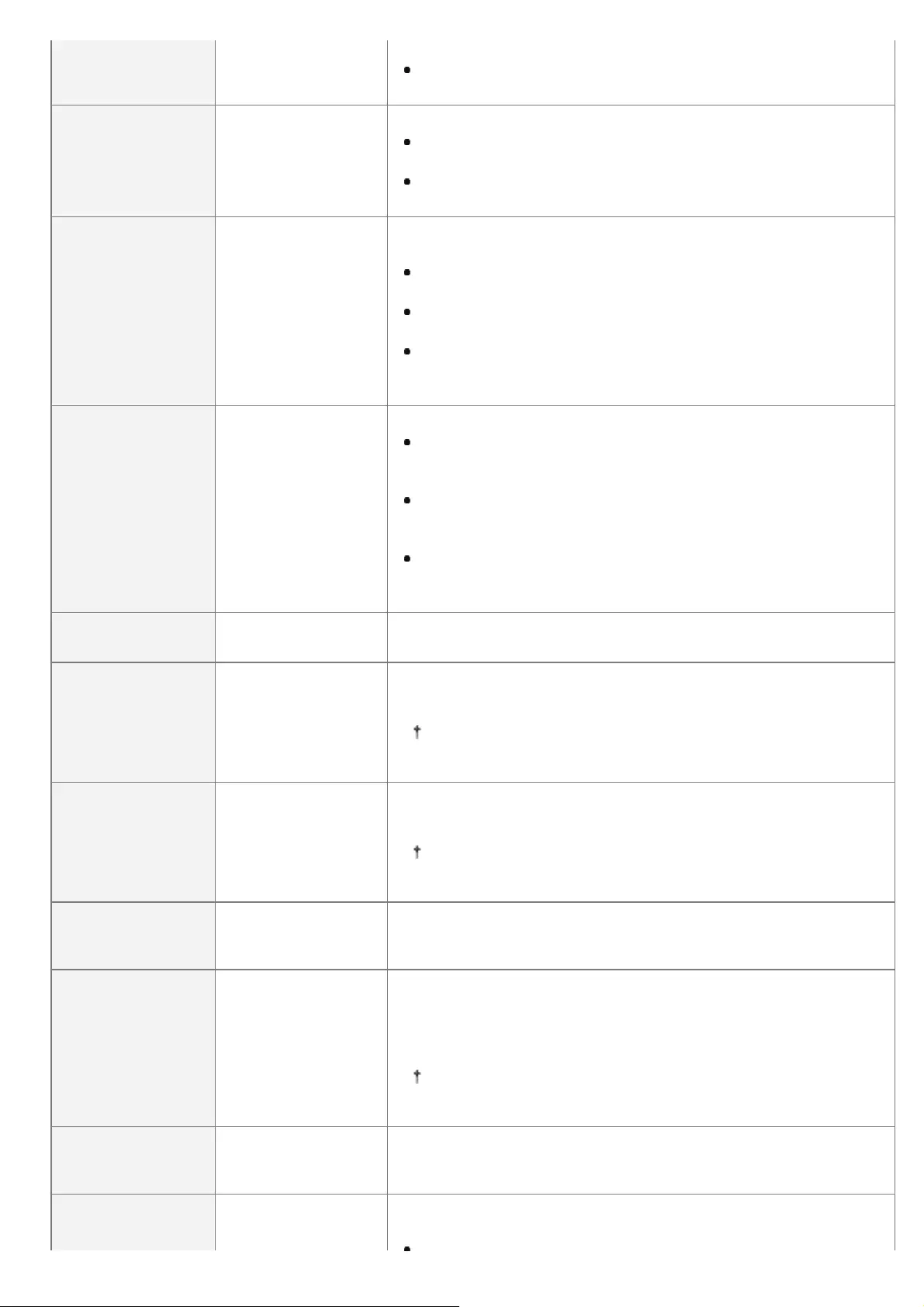
Coated profile.
When it is set to [Euro Standard v1.00], it uses Euro Standard
profile
[Output Profile] [Normal], [Photo]
You can define suitable profiles for data that you are trying to print.
When it is set to [Normal], it matches with colors close to the
colors displayed on the monitor, and prints.
When it is set to [Photo], it matches with colors similar to
photographs, and prints.
[Matching Method]
[Perceptual],
[Saturation],
[Colorimetric]
Specify the printing method when [RGB Source Profile] is applied.
You can select color rendering style on the machine, as shown below.
When it is set to [Perceptual], it provides colors suitable for
printing photos and bitmap images.
When it is set to [Saturation], it provides colors suitable for
printing artwork and graphs for use in presentations.
When it is set to [Colorimetric], it reproduces as accurately as
possible the RGB color values that are within the machine's color
gamut.
[Halftones]
[Resolution],
[Gradation], [Error
Diffusion]
Specify the halftone display method when printing
When it is set to [Resolution], you can print in fine detail so that
the edges of text data can be seen clearly. It is suitable for
printing data containing text and fine lines.
When it is set to [Gradation] you can perform printing that
combines smooth gradation with edge quality. It is suitable for
printing graphics or graphs that use gradation.
When it is set to [Error Diffusion], it uses error diffusion that
excels at subtle expression of text and fine lines. It is suitable for
printing small text or particularly fine lines.
[Photo Corr (CL
Only)]*
[Photo Optimizer
PRO] [Off], [On]
Set whether to correct image contrast, color balance, saturation, and
gradation automatically and print.
If [Color Mode] is set as [Black], the setting for this item
becomes invalid.
[Red-Eye
Correction] [Off], [On]
Set whether to detect and correct red eye caused by flash or strobe
light when shooting and print.
If [Color Mode] is set as [Black], the setting for this item
becomes invalid.
[Red-Eye Correct.
Lv.]
[Weak],
[Standard],
[Strong]
When [Red-Eye Correction] is set to [On], set the red-eye correction
strength.
[Face Brightener] [Off], [On]
Set whether or not to correct and print photographs in which people's
faces are dark due to insufficient backlighting or underexposure so
that the entire image is brightened and the people's faces are the
preferred brightness.
If [Color Mode] is set as [Black], the setting for this item
becomes invalid.
[Face Brightener
Lv.]
[Weak],
[Standard],
[Strong]
When [Face Brightener] is set to [On], set the correction strength for
brightening the entire image.
Select the method for converting color print data to grayscale for
printing.
㻢㻜㻠㻌㻛㻌㻥㻥㻤
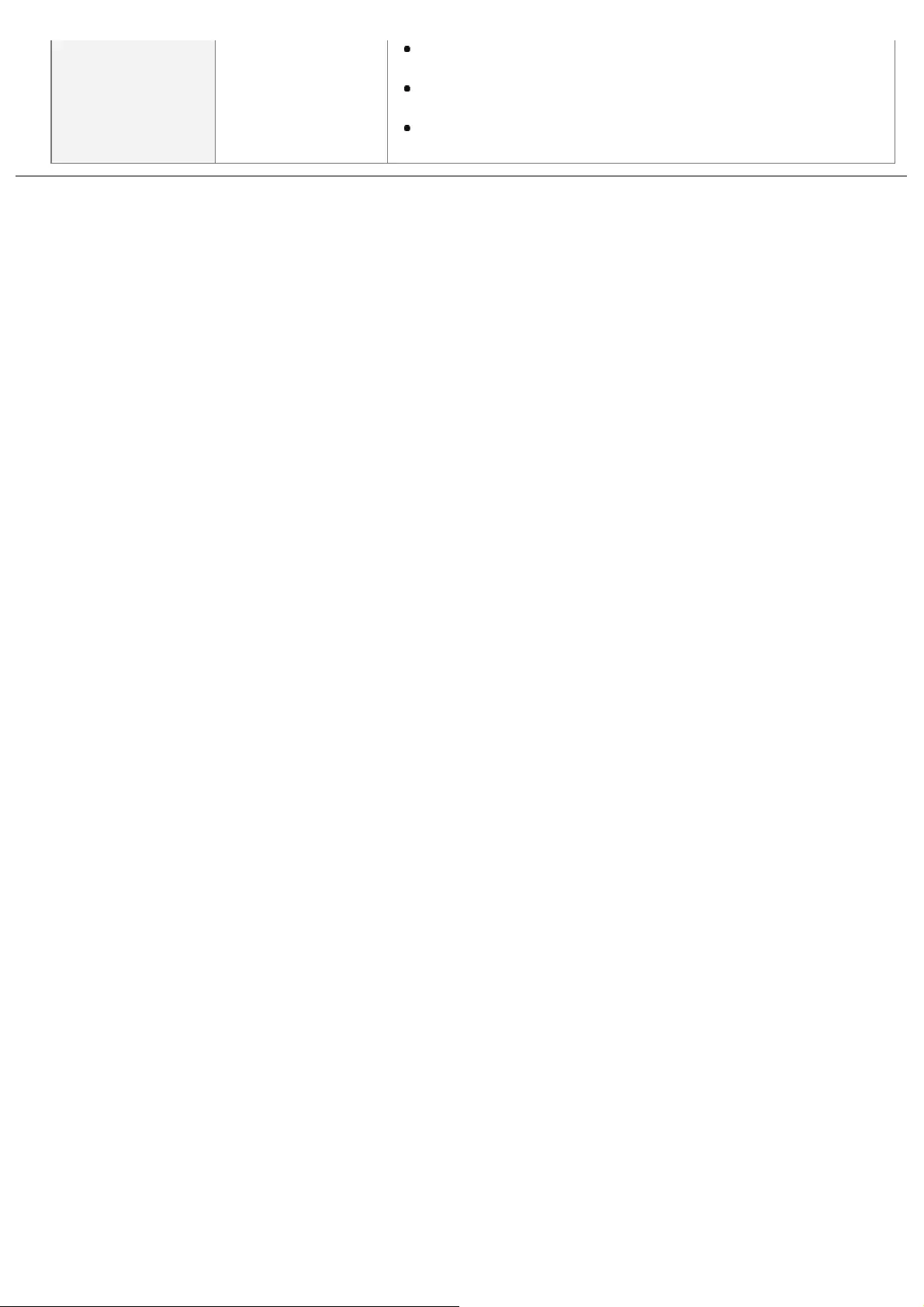
[Grayscale
Conversion]
[sRGB], [NTSC],
[Uniform RGB]
When it is set to [sRGB], it calculates the grayscale value using
the sRGB standard color conversion method.
When it is set to [NTSC], it calculates the grayscale value using
the NTSC standard color conversion method.
When it is set to [Uniform RGB], it takes the average value of the
Red, Green and Blue color values as the grayscale value.
㻢㻜㻡㻌㻛㻌㻥㻥㻤
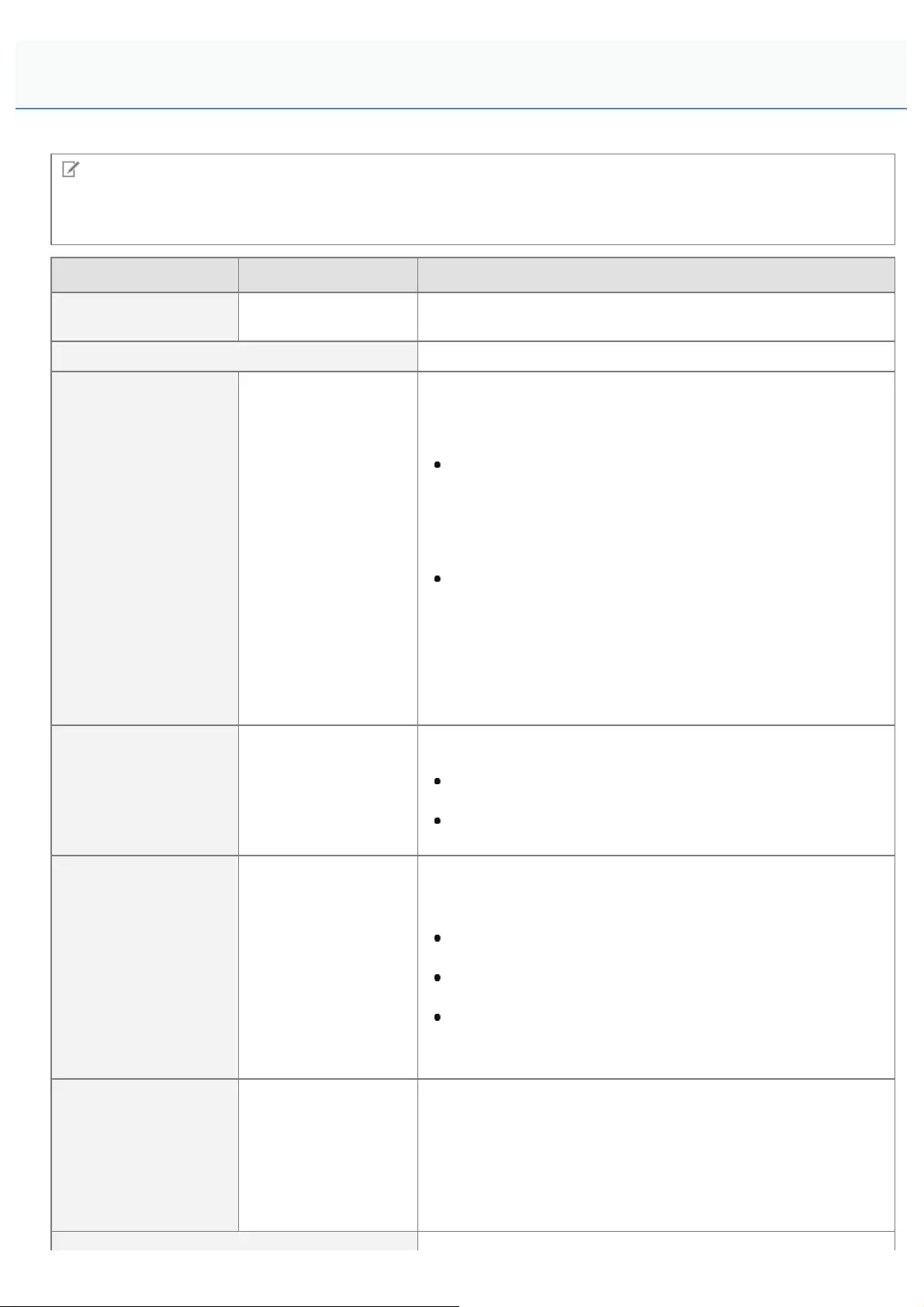
0258-0KR
NOTE
Table description
Bold values in the table indicate the default settings.
Setting Item Setting Value Setting
[Matching Mode] [ICC Profile],
[Gamma]
Set whether to perform color matching or to perform color
correction by setting a gamma value.
[ICC Profile Settings]
[RGB Source Profile]
[Text]: [sRGB v3.0
(Canon)], [Canon
HDTV gamma 1.5],
[Canon HDTV gamma
1.8], [Canon HDTV
gamma 2.4]
[Graphics]: [sRGB
v3.0 (Canon)],
[Canon HDTV gamma
1.5], [Canon HDTV
gamma 1.8], [Canon
HDTV gamma 2.4]
[Image]: [sRGB v3.0
(Canon)], [Canon
HDTV gamma 1.5],
[Canon HDTV gamma
1.8], [Canon HDTV
gamma 2.4]
Select a suitable profile for RGB data that matches the monitor
that you are using.
When it set to [sRGB v3.0 (Canon)], it is set to the industry
standard image quality for general Windows (PC)
monitors.When using monitors that support sRGB, it can
match the colors displayed on the monitor and the colors
printed in the printer and print colors close to the colors
displayed on the monitor.
When it is set to [Canon HDTV gamma X.X], it adjusts the
brightness of the printed result so that the brightest and
darkest parts of the data are not lost. Set it to adjust the
brightness, such as when the print result is brighter than the
colors displayed on the monitor. The larger the gamma
value, the darker it is printed.
[Output Profile]
[Text]: [Normal],
[Photo]
[Graphics]: [Normal],
[Photo]
[Image]: [Normal],
[Photo]
You can define suitable profiles for data that you are trying to
print.
When it is set to [Normal], it matches with colors close to the
colors displayed on the monitor, and prints.
When it is set to [Photo], it matches with colors similar to
photographs, and prints.
[Matching Method]
[Text]: [Perceptual],
[Saturation],
[Colorimetric]
[Graphics]:
[Perceptual],
[Saturation],
[Colorimetric]
[Image]:
[Perceptual],
[Saturation],
[Colorimetric]
Specify the printing method when [RGB Source Profile] is applied.
You can select color rendering style on the machine, as shown
below.
When it is set to [Perceptual], it provides colors suitable for
printing photos and bitmap images.
When it is set to [Saturation], it provides colors suitable for
printing artwork and graphs for use in presentations.
When it is set to [Colorimetric], it reproduces as accurately
as possible the RGB color values that are within the
machine's color gamut.
[Gamma Settings]
[Gamma Correction]:
[Text]: [1.0], [1.4],
[1.8], [2.2]
[Graphics]: [1.0],
[1.4], [1.8], [2.2]
[Image]: [1.0], [1.4],
[1.8], [2.2]
It adjusts the brightness of the printed result so that the brightest
and darkest parts of the document are not lost. The larger the
setting value, the darker it is printed. [1.4] shows no correction.
[Setup] Menu ([XPS] Options) (LBP7680Cx Only)
㻢㻜㻢㻌㻛㻌㻥㻥㻤
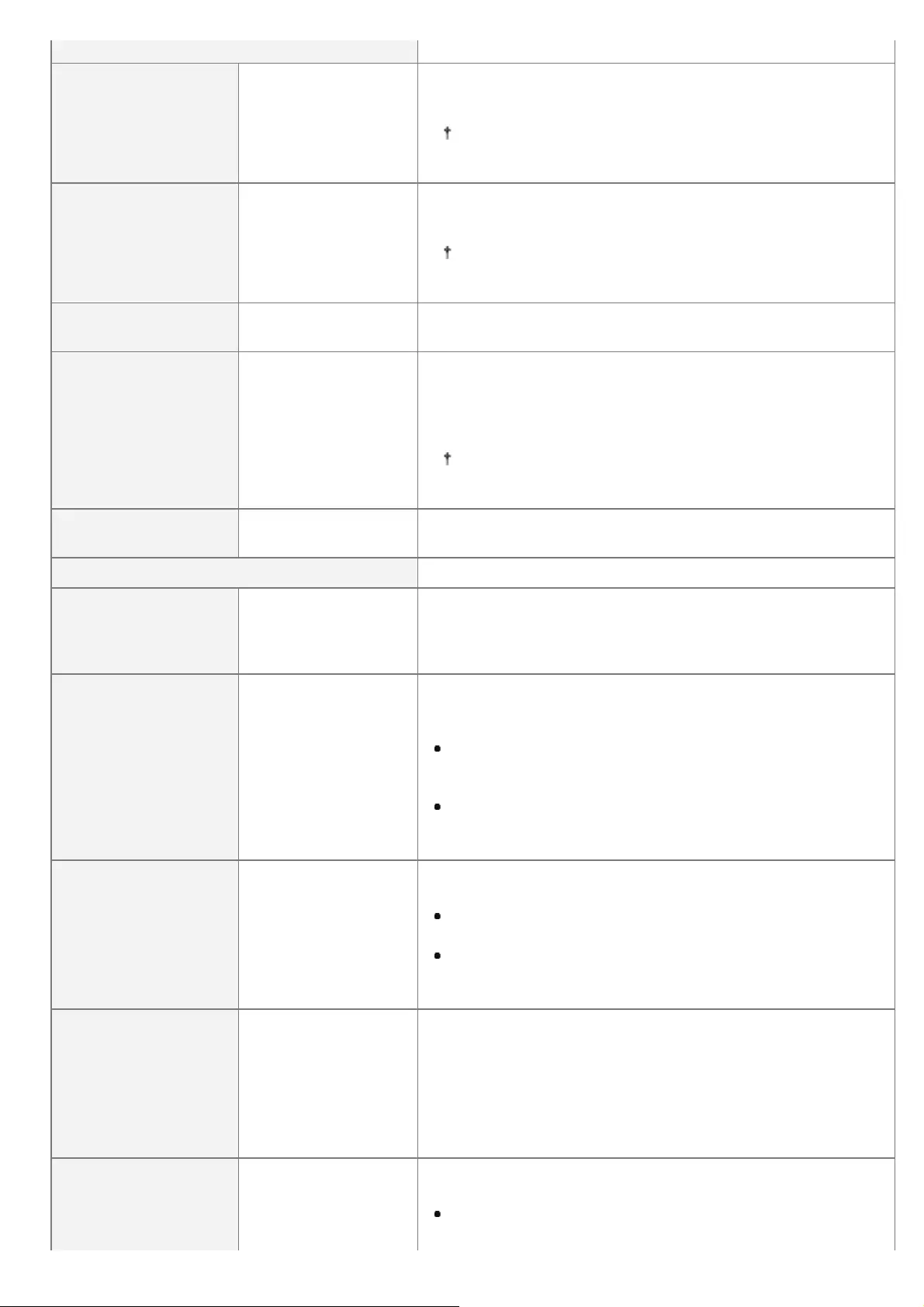
[Photo Corr (CL Only)]
[Photo Optimizer
PRO] [Off], [On]
Set whether to correct image contrast, color balance, saturation,
and gradation automatically and print.
If [Color Mode] is set as [Black], the setting for this item
becomes invalid.
[Red-Eye Correction] [Off], [On]
Set whether to detect and correct red eye caused by flash or
strobe light when shooting and print.
If [Color Mode] is set as [Black], the setting for this item
becomes invalid.
[Red-Eye Correct.
Lv.]
[Weak], [Standard],
[Strong]
When [Red-Eye Correction] is set to [On], set the red-eye
correction strength.
[Face Brightener] [Off], [On]
Set whether or not to correct and print photographs in which
people's faces are dark due to insufficient backlighting or
underexposure so that the entire image is brightened and the
people's faces are the preferred brightness.
If [Color Mode] is set as [Black], the setting for this item
becomes invalid.
[Face Brightener Lv.] [Weak], [Standard],
[Strong]
When [Face Brightener] is set to [On], set the correction strength
for brightening the entire image.
[Halftones]
[Error Diffusion] [Off], [On]
Specify the halftone display method when printing. When [Error
Diffusion] is set to [On], it uses error diffusion that excels at subtle
expression of text and fine lines. It is suitable for printing small
text or particularly fine lines.
[Resolution/Gradation]
[Text]: [Resolution],
[Gradation]
[Graphics]:
[Resolution],
[Gradation]
[Image]: [Resolution],
[Gradation]
When [Error Diffusion] is set to [Off], you can select the halftone
display method from [Resolution] and [Gradation] using
[Resolution/Grad.].
[Resolution] allows you to print in fine detail so that the
edges of text data can be seen clearly. It is suitable for
printing data containing text and fine lines.
[Gradation] allows you to perform printing that combines
smooth gradation with edge quality. It is suitable for printing
graphics or graphs that use gradation.
[Gray Compensation]
[Text]: [Off], [On]
[Graphics]: [Off], [On]
[Image]: [Off], [On]
When printing in color, for RGB equivalent, set whether to print in
black (K) toner only to print in CMYK 4-color toner.
When it is set to [On], black and gray data is printed in black
(K) only. This can prevent color registration errors.
When it is set to [Off], it is printed with CMYK 4-color toner.
The gradation of dark colors is reproduced more faithfully
than when it is set to [On].
[Advanced Smoothing]
[Advanced
Smoothing]: [Off],
[Smooth 1],
[Smooth 2]
[Graphics]: [Off], [On]
[Text]: [Off], [On]
Specify whether to use the smoothing process to smooth the
edges of graphics (illustrations created in other applications) or
text.
[Smooth 2] is better than [Smooth 1] for performing a smoothing
process that provides more smoothing.
You can select what to smooth by switching [Graphics] and [Text]:
[On]/[Off].
[Text]: [sRGB],
[NTSC], [Uniform
Select the method for converting color print data to grayscale for
printing.
When it is set to [sRGB], it calculates the grayscale value
using the sRGB standard color conversion method.
㻢㻜㻣㻌㻛㻌㻥㻥㻤
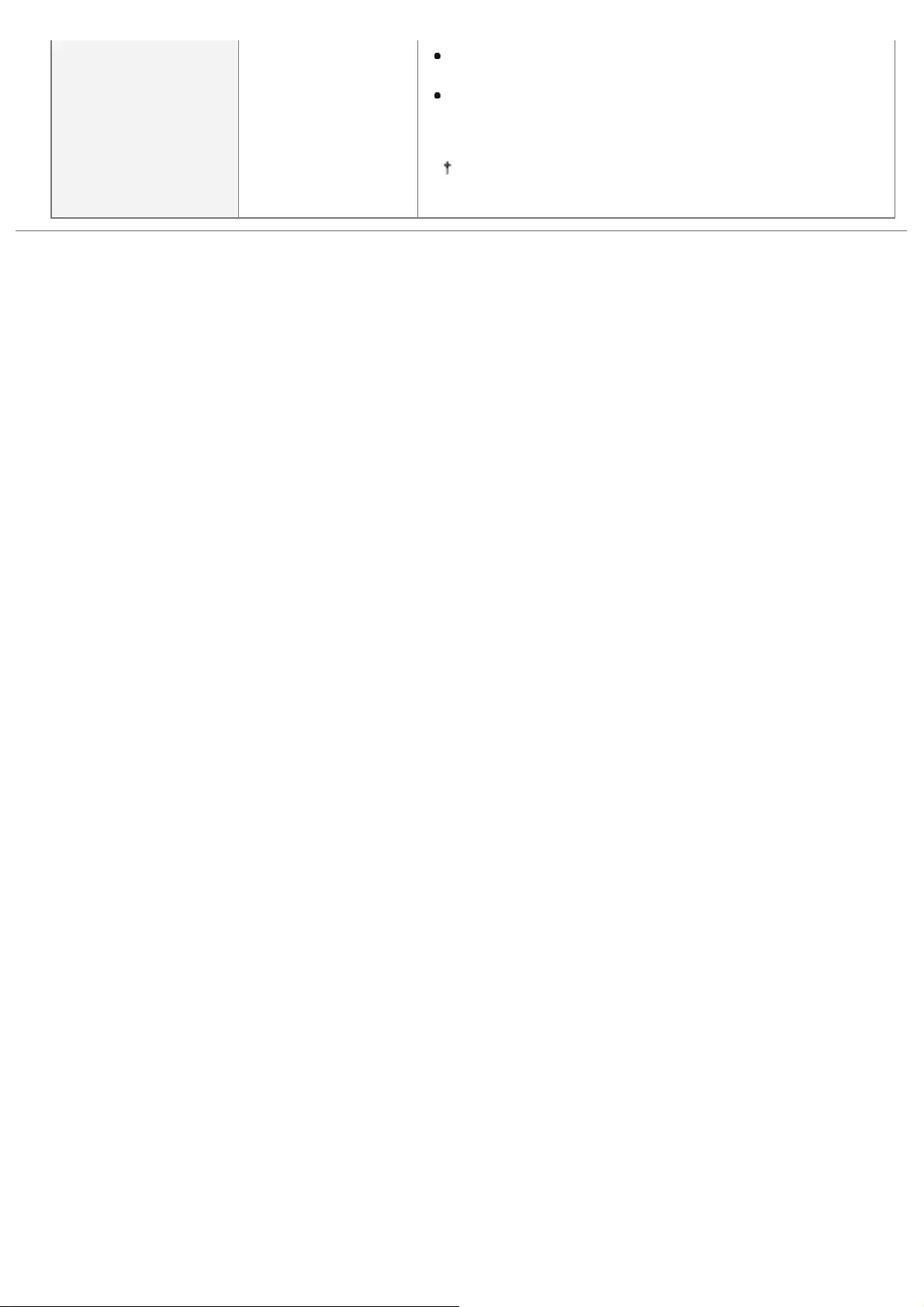
[Grayscale Conversion]
RGB]
[Graphics]: [sRGB],
[NTSC], [Uniform
RGB]
[Image]: [sRGB],
[NTSC], [Uniform
RGB]
When it is set to [NTSC], it calculates the grayscale value
using the NTSC standard color conversion method.
When it is set to [Uniform RGB], it takes the average value
of the Red, Green and Blue color values as the grayscale
value.
If [Color Mode] is set as [Auto (Color/Black)] and [Color],
the setting for this item becomes invalid.
㻢㻜㻤㻌㻛㻌㻥㻥㻤

0258-0KL
NOTE
Table description
Bold values in the table indicate the default settings.
Setting Item Setting Value Setting
[Fit to Page] [Off], [On]
Set it to enlarge or reduce to fit the effective print area of the
specified paper.
This setting fixes the aspect ratio and scales the page size of
the PDF file.
[Enlarged Print
Area] [Off], [On]
Set whether to expand the effective print area to the edges of the
paper without leaving margins around the edges of the paper.
When it is set to [On], images on the edges of the paper may
be partially cut off.
[N on 1]
[Off], [2 on 1], [4 on
1], [6 on 1], [8 on 1],
[9 on 1], [16 on 1]
You can print multiple pages of the PDF file data arranged on one
page. When multiple pages are printed, they are arranged from the
top left.
[Comment Print] [Off], [Auto] Specify whether to print the comments inside the PDF file that are
specified for printing.
[ICC Profile Settings]
[RGB Source
Profile]
[sRGB v3.0
(Canon)], [Canon
HDTV gamma 1.5],
[Canon HDTV gamma
1.8], [Canon HDTV
gamma 2.4], [None]
Select a suitable profile for RGB data that matches the monitor that
you are using.
When it is set to [sRGB v3.0 (Canon)], it is set to the industry
standard image quality for general Windows (PC)
monitors.When using monitors that support sRGB, it can match
the colors displayed on the monitor and the colors printed in the
printer and print colors close to the colors displayed on the
monitor.
When it is set to [Canon HDTV Gamma X.X], it adjusts the
brightness of the printed result so that the brightest and darkest
parts of the data are not lost. Set it to adjust the brightness,
such as when the print result is brighter than the colors
displayed on the monitor. The larger the gamma value, the
darker it is printed.
When it is set to [None], it performs color separation from RGB
data to CMYK without applying an RGB profile.
[CMYK Sim.
Profile]
[Euro Standard v1.00],
[JapanColor (Canon)],
[U.S. Web Coated
v1.0], [None]
You can set a simulation target when printing CMYK data.The
machine converts CMYK data to a device-dependent CMYK color
model in accordance with the simulation target selected by the
CMYK simulation profile.
When it is set to [U.S. Web Coated v1.0], it uses U.S. Web
Coated profile.
When it is set to [Euro Standard v1.00], it uses Euro Standard
profile.
When it is set to [None], it prints CMYK data using a device-
dependent CMYK color model, without applying a CMYK
simulation profile.
If this item is set to [None], dark color gradation may
[Setup] Menu ([PDF] Options)
㻢㻜㻥㻌㻛㻌㻥㻥㻤
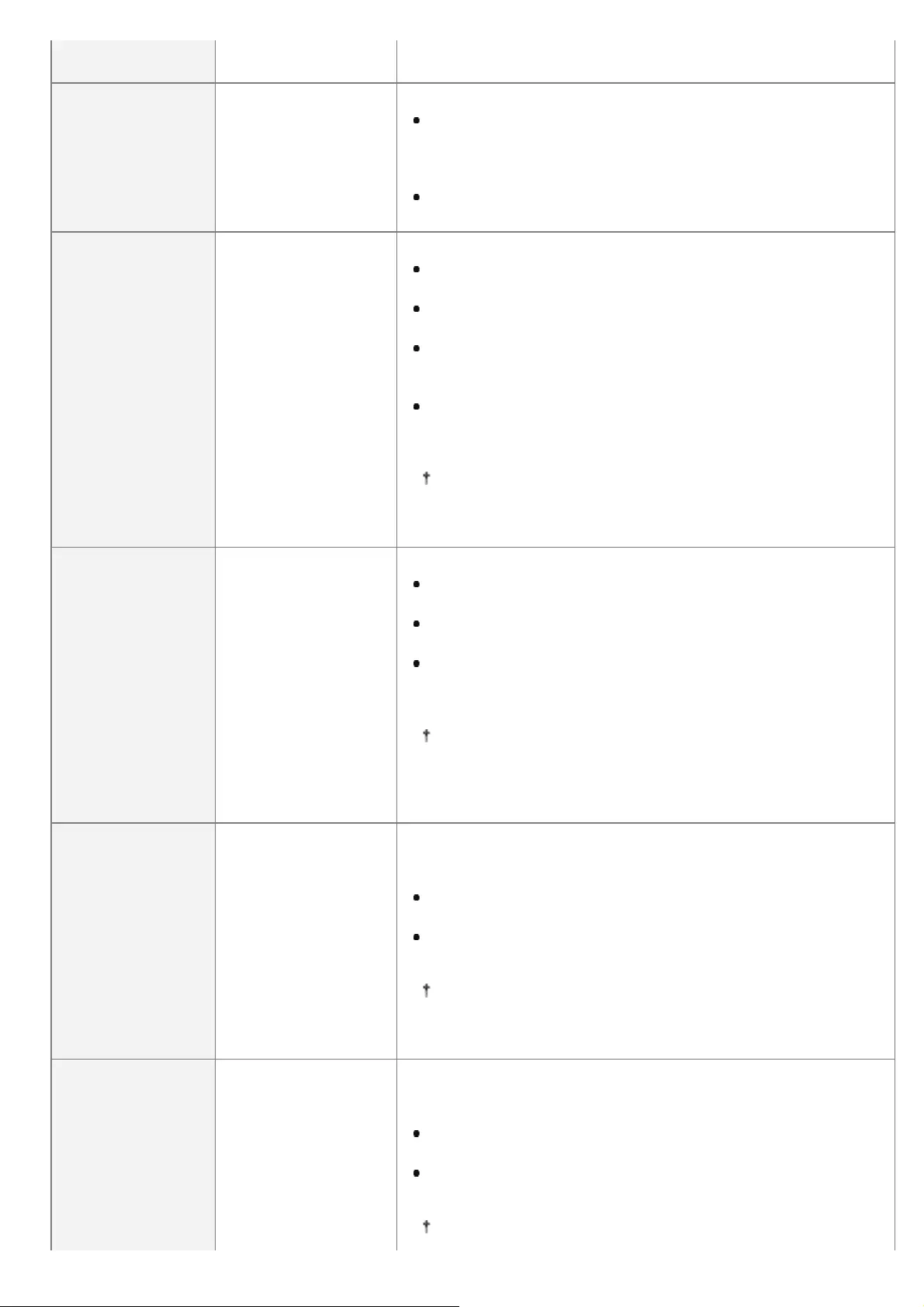
collapse, depending on the data.
[Grayscale Profile] [Off], [On]
Set what type of processing to use for device-dependent gray data.
When it is set to [On], it uses the printer's "Grayscale Profile" to
convert it to CMYK data. However, it may be reproduced using
black (Bk) toner only, by using the [Output Profile] or [Pure
Black Text] settings.
When it is set to [Off], it is reproduced using black (Bk) toner
only.
[Output Profile]
[PS Normal], [PS
Photo], [PS TR
Normal], [PS TR
Photo]
You can define suitable profiles for data that you are trying to print.
When it is set to [PS Normal], it matches with colors close to
the colors displayed on the monitor, and prints.
When it is set to [PS Photo], it matches with colors similar to
photographs, and prints.
When it is set to [PS TR Normal], it matches with colors close
to the colors displayed on the monitor and prints, while also
controlling the bleeding of toner into text and fine lines.
When it is set to [PS TR Photo], it matches with colors similar
to photographs, and prints, while also controlling the bleeding of
toner into text and fine lines.
When [RGB Source Profile] and [CMYK Sim. Profile] are set
to [None], or [Grayscale Profile] is set to [Off], this setting is
not applied to device-dependent color data.
[Matching Method]
[Perceptual],
[Saturation],
[Colorimetric]
Specify the printing method when [RGB Source Profile] is applied.
When it is set to [Perceptual], it provides colors suitable for
printing photos and bitmap images.
When it is set to [Saturation], it provides colors suitable for
printing artwork and graphs for use in presentations.
When it is set to [Colorimetric], it reproduces as accurately as
possible the RGB color values that are within the machine's
color gamut.
When [RGB Source Profile] or [CMYK Sim. Profile] are set to
[None], if the printer receives a device-dependent color space
definition that has been processed by the host computer, the
setting for this item becomes invalid.
[RGB Pure Black
Mode] [Off], [On]
When device-dependent RGB data is converted to device-dependent
CMYK using [RGB Source Profile] in this machine, set what type of
processing to use for black and gray data that becomes R=G=B.
When it is set to [On], it prints using black (Bk) toner only,
regardless of the [Output Profile] setting that is selected.
When it is set to [Off], it prints according to the selected [Output
Profile] setting.
If uneven gradation or staining is visible when printing black
or gray data, set this item to [Off], and set [Output Profile] to
[Normal].
[CMYK Pure Black] [Off], [On]
When device-dependent CMYK is processed using [CMYK Sim.
Profile] in this machine, set what type of printing to use for grey data
(C=M=Y=0).
When it is set to [On], it prints using black (Bk) toner only,
regardless of the [Output Profile] setting that is selected.
When it is set to [Off], it converts it and prints according to the
selected [Output Profile] setting.
If [CMYK Sim. Profile] is set as [None], the setting for this
㻢㻝㻜㻌㻛㻌㻥㻥㻤
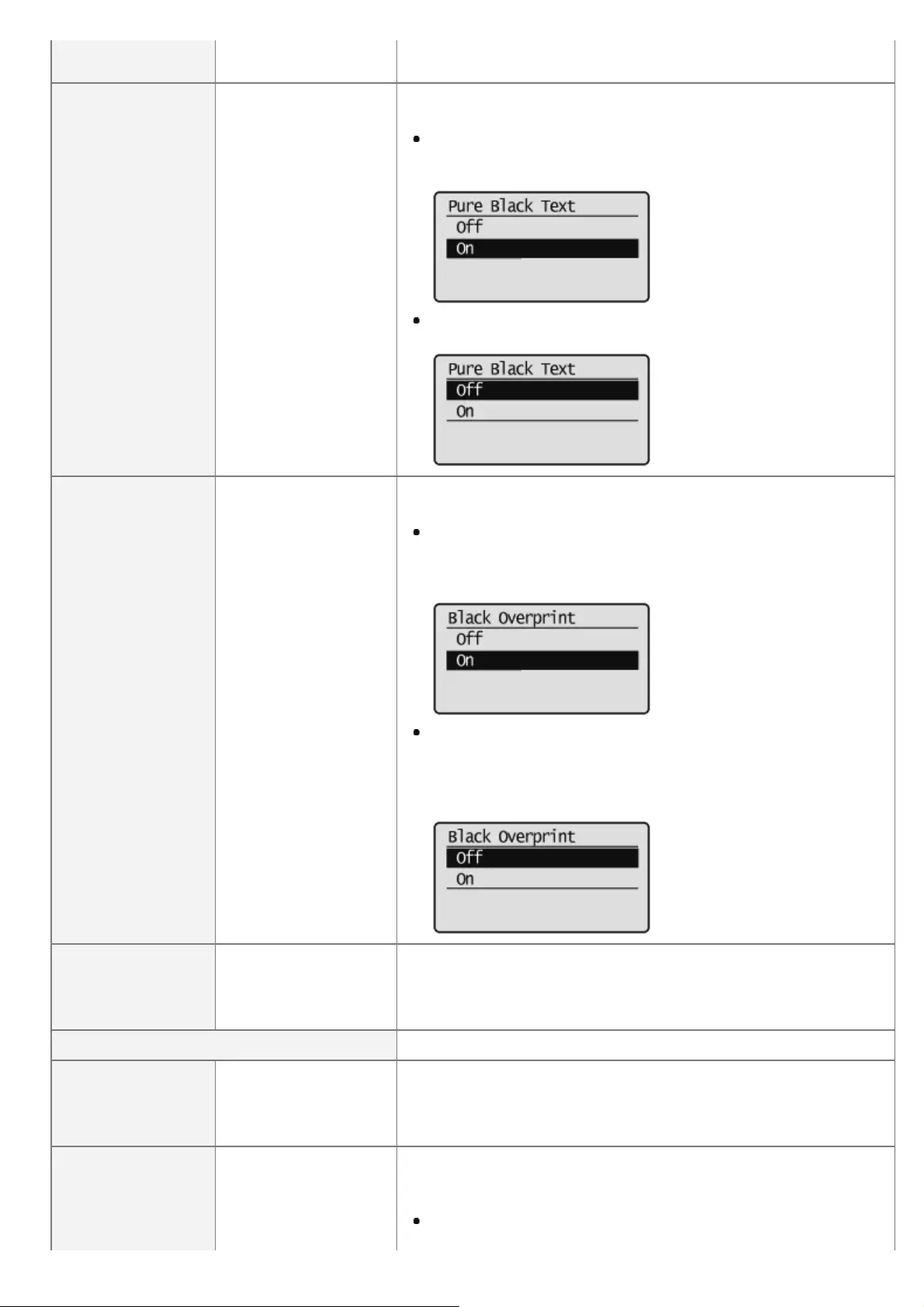
item becomes invalid.
[Pure Black Text] [Off], [On]
Set how to print black (R=G=B=0% and C=M=Y=100%/BK=N% or
C=M=Y=0%/Bk=100%) text.
When it is set to [On], it prints data for black colors created by
applications using only 100% black toner. The text is never
printed with color toner slurring around the edges.
When it is set to [Off], it prints black text according to the
selected [Output Profile] setting.
[Black Overprint] [Off], [On]
Set how to print black (R=G=B=0% and C=M=Y=100%/BK=N% or
C=M=Y=0%/Bk=100%) text.
When it is set to [On], if black text is on a colored background,
there is never a white rim around the edges of the text, so that
the black text is not printed set out from the background with
white edges.
When it is set to [Off], if black text is on a colored background,
after the black text is printed set out from the background with
white edges, black text is printed on the white edges.The print
may be fainter than the print result if it were set to [On], and
the edges of the text may be rimmed with white.
[Brightness] 85 to 100 to 115%
You can adjust the brightness of the whole image.You can use this
setting to set from 85 to115% at intervals of 5%.The smaller the
value the brighter it becomes. The larger the value the darker it
becomes.
[Halftones]
[Error Diffusion] [Off], [On]
Specify the halftone display method when printing. When [Error
Diffusion] is set to [On], it uses error diffusion that excels at subtle
expression of text and fine lines. It is suitable for printing small text or
particularly fine lines.
[Resolution/Grad.]
[Text]: [Resolution],
[Gradation]
[Graphics]:
[Resolution],
When [Error Diffusion] is set to [Off], you can select the halftone
display method from [Resolution] and [Gradation] using
[Resolution/Grad.].
When it is set to [On], it uses the printer's "Grayscale Profile" to
convert it to CMYK data. However, it may be reproduced using
㻢㻝㻝㻌㻛㻌㻥㻥㻤
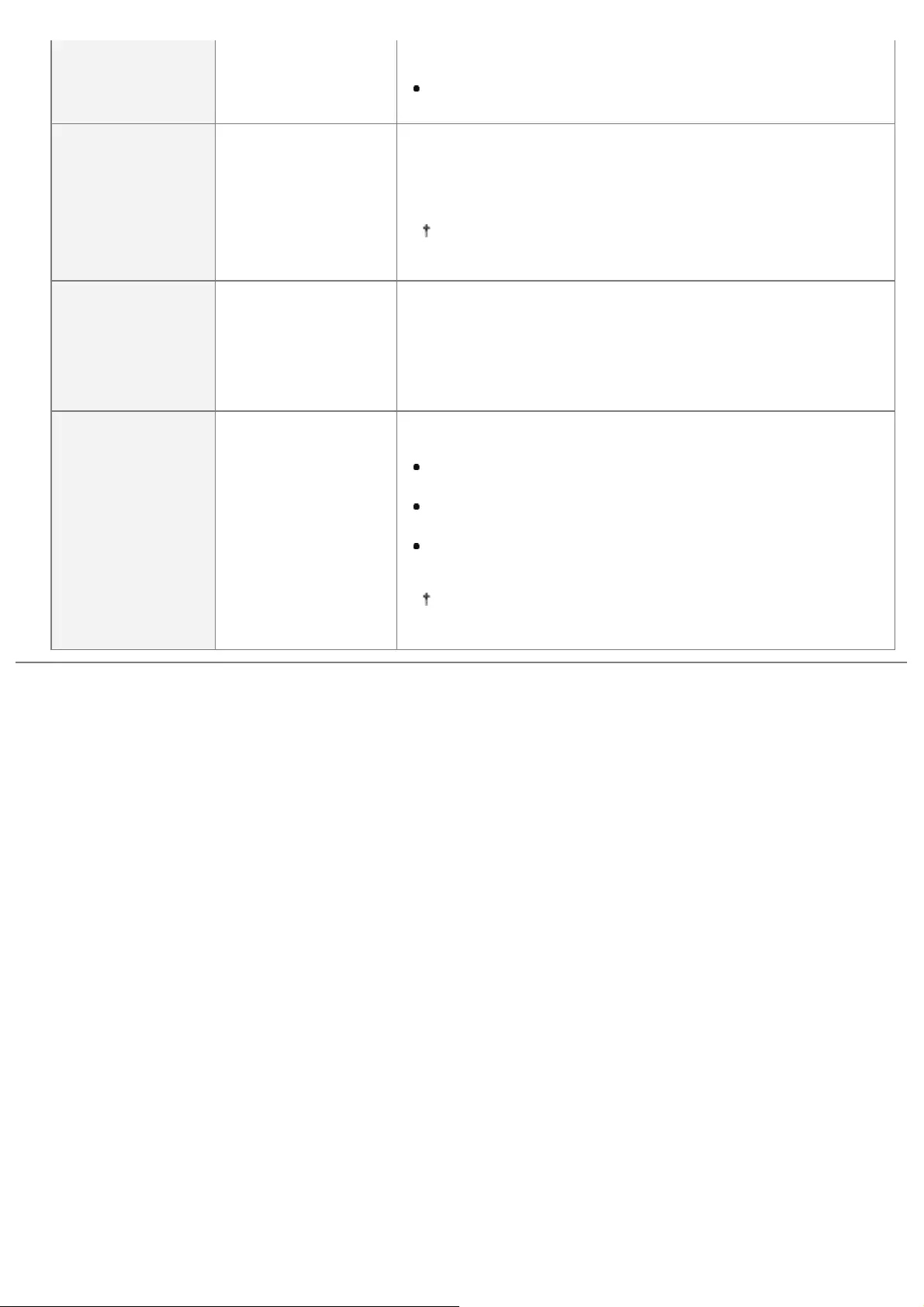
[Gradation]
[Image]: [Resolution],
[Gradation]
black (Bk) toner only, by using the [Output Profile] or [Pure
Black Text] settings.
When it is set to [Off], it is reproduced using black (Bk) toner
only.
[CMYK Overprint] [Off], [On]
You can overprint device-dependent CMYK data as composite
output.Since all the colors used in the data are overprinted to a
single palette, you can check the result without performing color
separation.
If [CMYK Sim. Profile] is set as a value other than [None], the
setting for this item becomes invalid.
[Advanced
Smoothing]
[Advanced
Smoothing]: [Off],
[Smooth 1], [Smooth
2]
[Graphics]: [Off], [On]
[Text]: [Off], [On]
Specify whether to use the smoothing process to smooth the edges
of graphics (illustrations created in other applications) or text.
[Smooth 1] is better than [Smooth 2] for performing a smoothing
process that provides more smoothing.
You can select what to smooth by switching [Graphics] and [Text]:
[On]/[Off].
[Grayscale
Conversion]
[sRGB], [NTSC],
[Uniform RGB]
Select the method for converting color print data to grayscale for
printing.
When it is set to [sRGB], it calculates the grayscale value using
the sRGB standard color conversion method.
When it is set to [NTSC], it calculates the grayscale value using
the NTSC standard color conversion method.
When it is set to [Uniform RGB], it takes the average value of
the Red, Green and Blue color values as the grayscale value.
If [Color Mode] is set as [Auto (Color/Black)] and [Color], the
setting for this item becomes invalid.
㻢㻝㻞㻌㻛㻌㻥㻥㻤
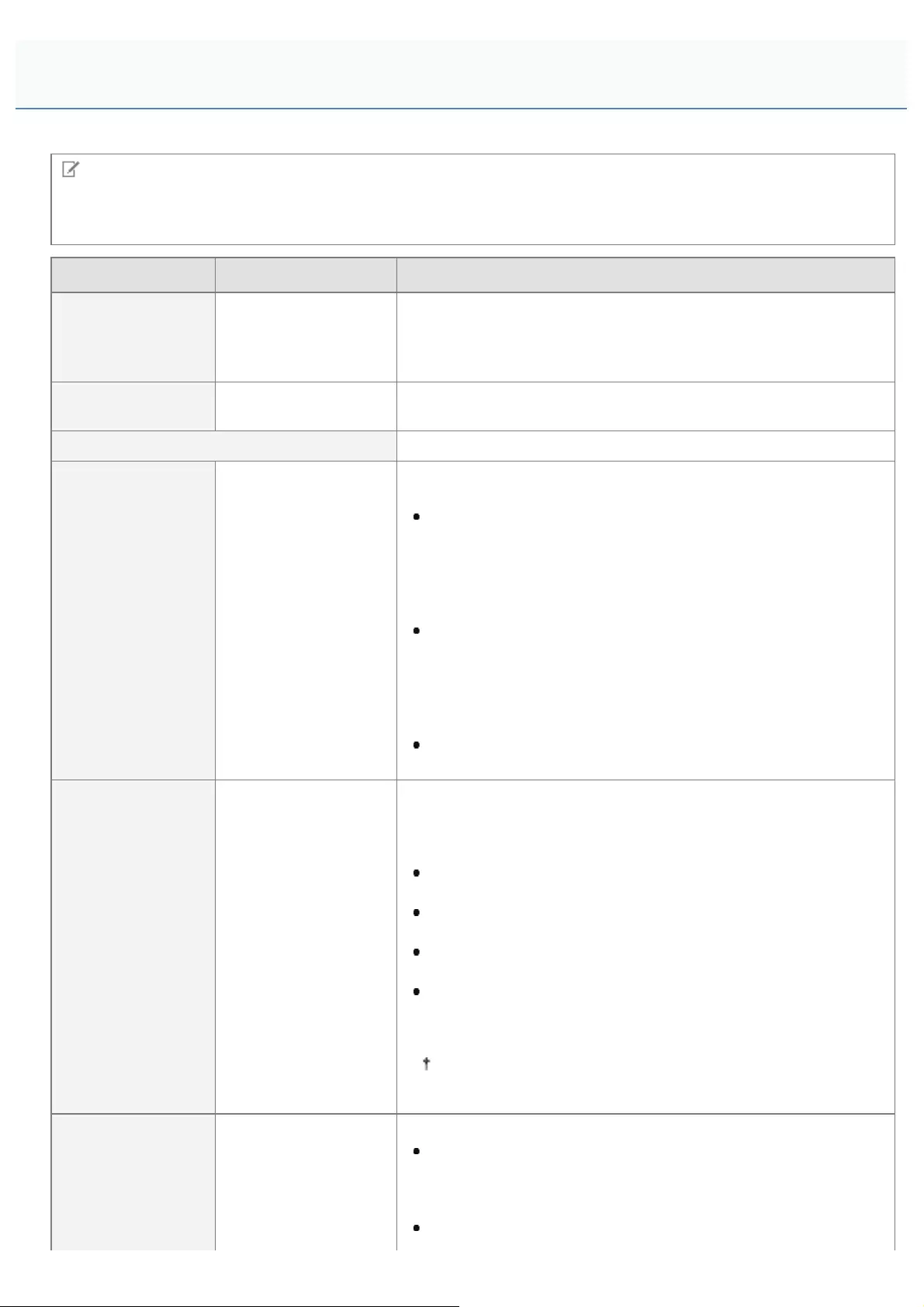
0258-094
NOTE
Table description
Bold values in the table indicate the default settings.
Setting Item Setting Value Setting
[Job Timeout] 0 to 3600 seconds
If the time specified in this item has elapsed since a job process was
started, the printer automatically finishes the job and receives the
next job.
If you do not want to specify the timeout, specify "0 seconds."
[Print PS Errors] [Off], [On] Specifies whether an error page should be printed when a PostScript
error is occurring.
[ICC Profile Settings]
[RGB Source
Profile]
[sRGB v3.0
(Canon)], [Canon
HDTV gamma 1.5],
[Canon HDTV gamma
1.8], [Canon HDTV
gamma 2.4], [None]
Select a suitable profile for RGB data that matches the monitor that
you are using.
When it set to [sRGB v3.0 (Canon)], it is set to the industry
standard image quality for general Windows (PC) monitors.
When using monitors that support sRGB, it can match the
colors displayed on the monitor and the colors printed in the
printer and print colors close to the colors displayed on the
monitor.
When it is set to [Canon HDTV gamma X.X], it adjusts the
brightness of the printed result so that the brightest and darkest
parts of the data are not lost. Set it to adjust the brightness,
such as when the print result is brighter than the colors
displayed on the monitor. The larger the gamma value, the
darker it is printed.
When it is set to [None], it performs color separation from RGB
data to CMYK without applying an RGB profile.
[CMYK Sim.
Profile]
[Euro Standard v1.00],
[JapanColor (Canon)],
[U.S. Web Coated
v1.0], [None]
You can set a simulation target when printing CMYK data.The
machine converts CMYK data to a device-dependent CMYK color
model in accordance with the simulation target selected by the
CMYK simulation profile.
When it is set to [JapanColor (Canon)], it uses JapanColor
profile.
When it is set to [U.S. Web Coated v1.0], it uses U.S. Web
Coated profile.
When it is set to [Euro Standard v1.00], it uses Euro Standard
profile.
When it is set to [None], it prints CMYK data using a device-
dependent CMYK color model, without applying a CMYK
simulation profile.
If this item is set to [None], dark color gradation may
collapse, depending on the data.
[Grayscale Profile] [Off], [On]
Set what type of processing to use for device-dependent gray data.
When it is set to [On], it uses the printer's "Grayscale Profile" to
convert it to CMYK data.However, it may be reproduced using
black (Bk) toner only, by using the [Output Profile] or [Pure
Black Text] settings.
When it is set to [Off], it is reproduced using black (Bk) toner
[Setup] Menu ([PS] Options)
㻢㻝㻟㻌㻛㻌㻥㻥㻤
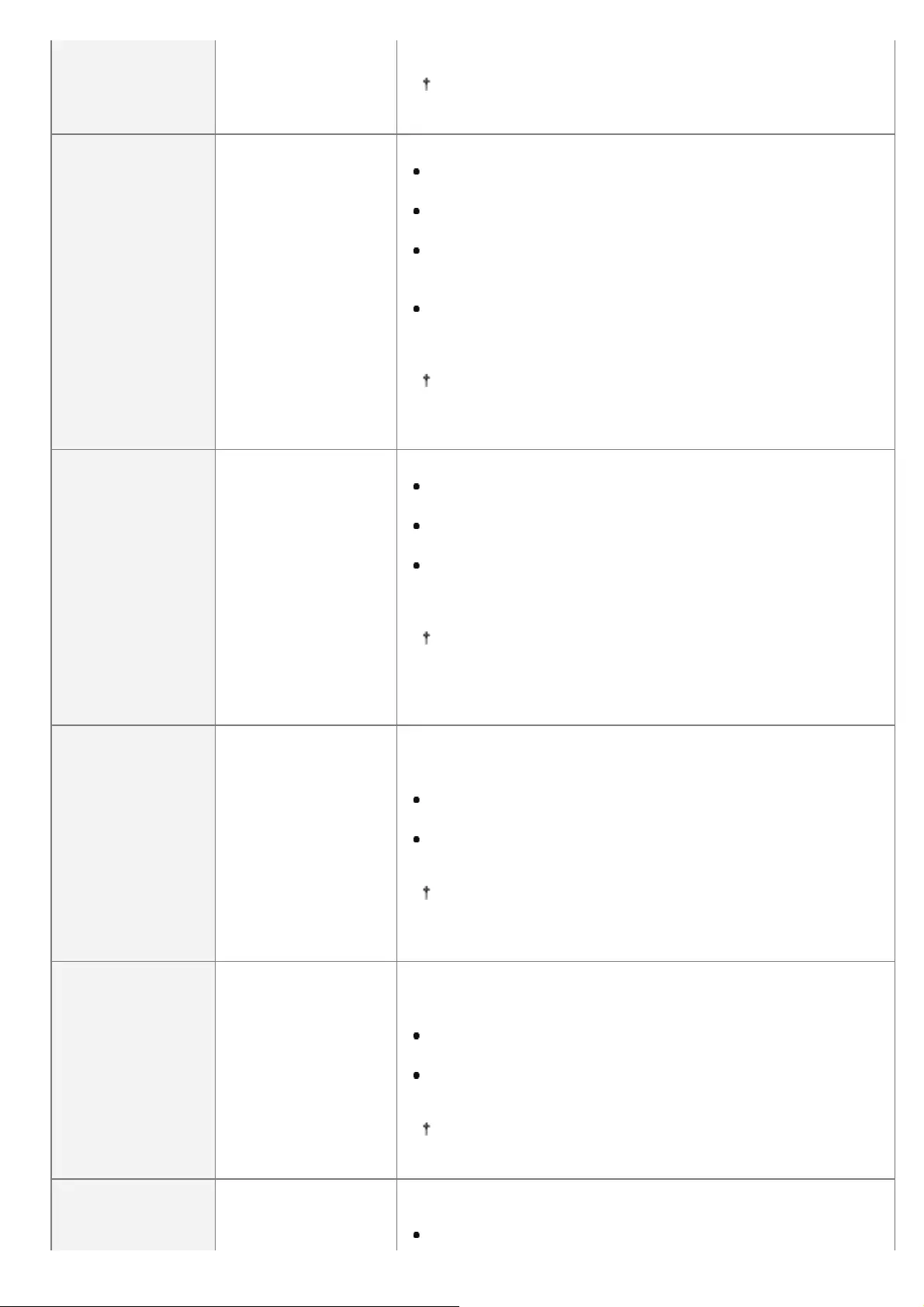
only.
If this item is set to [None], dark color gradation may
collapse, depending on the data.
[Output Profile]
[PS Normal], [PS
Photo], [PS TR
Normal], [PS TR
Photo]
You can define suitable profiles for data that you are trying to print.
When it is set to [PS Normal], it matches with colors close to
the colors displayed on the monitor, and prints.
When it is set to [PS Photo], it matches with colors similar to
photographs, and prints.
When it is set to [PS TR Normal], it matches with colors close
to the colors displayed on the monitor and prints, while also
controlling the bleeding of toner into text and fine lines.
When it is set to [PS TR Photo], it matches with colors similar
to photographs, and prints, while also controlling the bleeding of
toner into text and fine lines.
When [RGB Source Profile] and [CMYK Sim. Profile] are set
to [None], or [Grayscale Profile] is set to [Off], this setting is
not applied to device-dependent color data.
[Matching Method]
[Perceptual],
[Saturation],
[Colorimetric]
Specify the printing method when [RGB Source Profile] is applied.
When it is set to [Perceptual], it provides colors suitable for
printing photos and bitmap images.
When it is set to [Saturation], it provides colors suitable for
printing artwork and graphs for use in presentations.
When it is set to [Colorimetric], you can reproduce the RGB
color values that are within the machine's color gamut as
accurately as possible.
When [RGB Source Profile] or [CMYK Sim. Profile] are set to
[None], if the printer receives a device-dependent color space
definition that has been processed by the host computer, the
setting for this item becomes invalid.
[RGB Pure Black
Mode] [Off], [On]
When device-dependent RGB data is converted to device-dependent
CMYK using [RGB Source Profile] in this machine, set what type of
processing to use for black and gray data that becomes R=G=B.
When it is set to [On], it prints using black (Bk) toner only,
regardless of the [Output Profile] setting that is selected.
When it is set to [Off], it prints according to the selected [Output
Profile] setting.
If uneven gradation or staining is visible when printing black
or gray data, set this item to [Off], and set [Output Profile] to
[Normal].
[CMYK Pure Black] [Off], [On]
When device-dependent CMYK is processed using [CMYK Sim.
Profile] in this machine, set what type of printing to use for grey data
(C=M=Y=0).
When it is set to [On], it prints using black (Bk) toner only,
regardless of the [Output Profile] setting that is selected.
When it is set to [Off], it converts it and prints according to the
selected [Output Profile] setting.
If [CMYK Sim. Profile] is set as [None], the setting for this
item becomes invalid.
Set how to print black (R=G=B=0% and C=M=Y=100%/BK=N% or
C=M=Y=0%/Bk=100%) text.
When it is set to [On], it prints data for black colors created by
㻢㻝㻠㻌㻛㻌㻥㻥㻤

[Pure Black Text] [Off], [On]
applications using only 100% black toner. The text is never
printed with color toner slurring around the edges.
When it is set to [Off], it prints black text according to the
selected [Output Profile] setting.
[Black Overprint] [Off], [On]
Set how to print black (R=G=B=0% and C=M=Y=100%/BK=N% or
C=M=Y=0%/Bk=100%) text.
When it is set to [On], if black text is on a colored background,
there is never a white rim around the edges of the text, so that
the black text is not printed set out from the background with
white edges.
When it is set to [Off], if black text is on a colored background,
after the black text is printed set out from the background with
white edges, black text is printed on the white edges. The print
may be fainter than the print result if it were set to [On], and
the edges of the text may be rimmed with white.
[Brightness] 85 to 100 to 115%
You can adjust the brightness of the whole image. You can use this
setting to set from 85 to115% at intervals of 5%. The smaller the
value the brighter it becomes. The larger the value the darker it
becomes.
[Halftones]
[Error Diffusion] [Off], [On]
Specify the halftone display method when printing. When [Error
Diffusion] is set to [On], it uses error diffusion that excels at subtle
expression of text and fine lines. It is suitable for printing small text or
particularly fine lines.
[Resolution/Grad.]
[Text]: [Resolution],
[Gradation]
[Graphics]:
[Resolution],
[Gradation]
[Image]:[Resolution],
[Gradation]
When [Error Diffusion] is set to [Off], you can select the halftone
display method from [Resolution] and [Gradation] using
[Resolution/Grad.].
[Resolution] allows you to print in fine detail so that the edges
of text data can be seen clearly. It is suitable for printing data
containing text and fine lines.
[Gradation] allows you to perform printing that combines smooth
gradation with edge quality. It is suitable for printing graphics or
graphs that use gradation.
You can overprint device-dependent CMYK data as composite
㻢㻝㻡㻌㻛㻌㻥㻥㻤
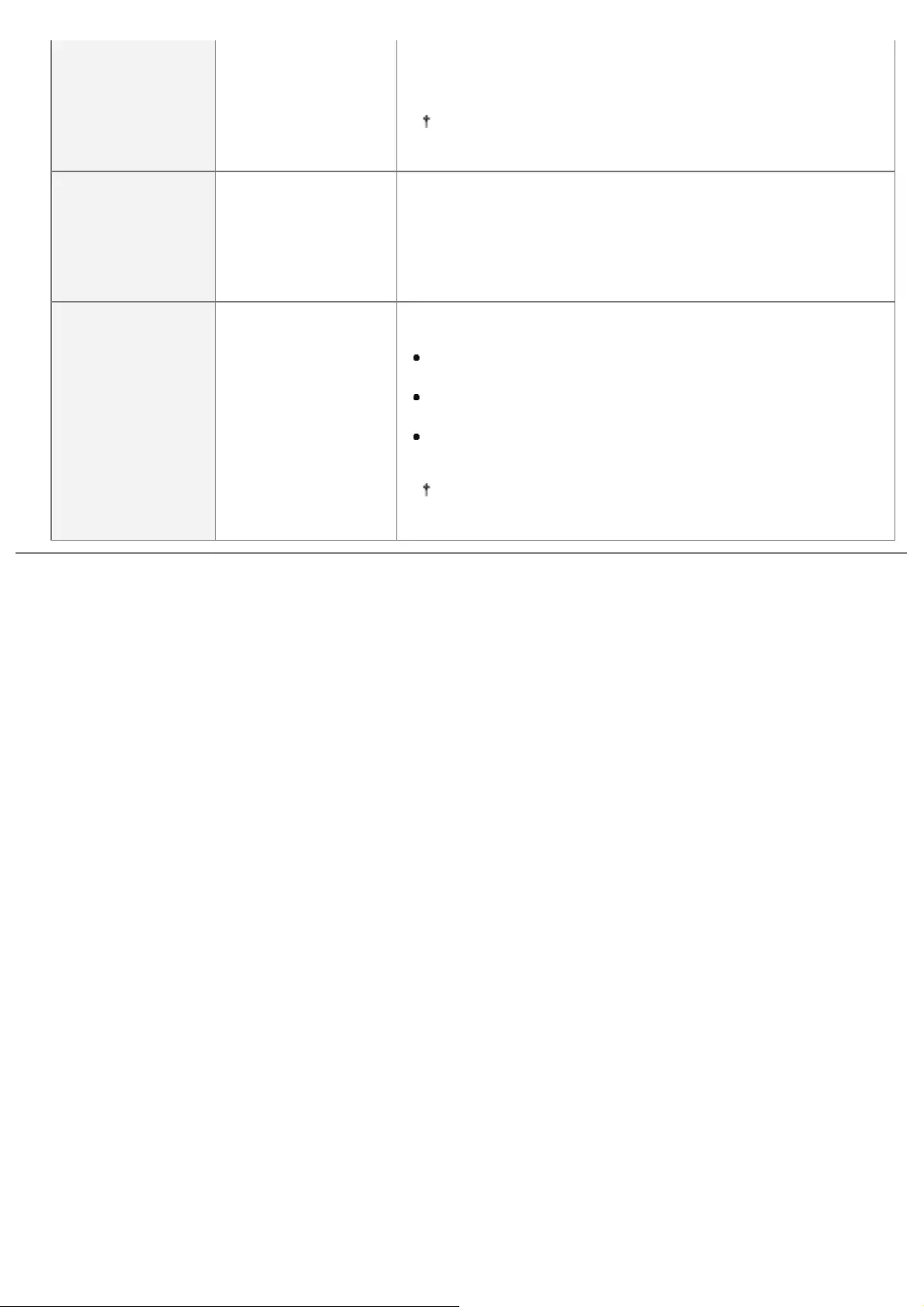
[CMYK Overprint] [Off], [On]
output. Since all the colors used in the data are overprinted to a
single palette, you can check the result without performing color
separation.
If [CMYK Sim. Profile] is set as a value other than [None], the
setting for this item becomes invalid.
[Advanced
Smoothing]
[Advanced
Smoothing]: [Off],
[Smooth 1], [Smooth
2]
[Graphics]: [Off], [On]
[Text]: [Off], [On]
Specify whether to use the smoothing process to smooth the edges
of graphics (illustrations created in other applications) or text.
[Smooth 2] is better than [Smooth 1] for performing a smoothing
process that provides more smoothing.
You can select what to smooth by switching [Graphics] and [Text]:
[On]/[Off].
[Grayscale
Conversion]
[sRGB], [NTSC],
[Uniform RGB]
Select the method for converting color print data to grayscale for
printing.
When it is set to [sRGB], it calculates the grayscale value using
the sRGB standard color conversion method.
When it is set to [NTSC], it calculates the grayscale value using
the NTSC standard color conversion method.
When it is set to [Uniform RGB], it takes the average value of
the Red, Green and Blue color values as the grayscale value.
If [Color Mode] is set as [Auto (Color/Black)] and [Color], the
setting for this item becomes invalid.
㻢㻝㻢㻌㻛㻌㻥㻥㻤
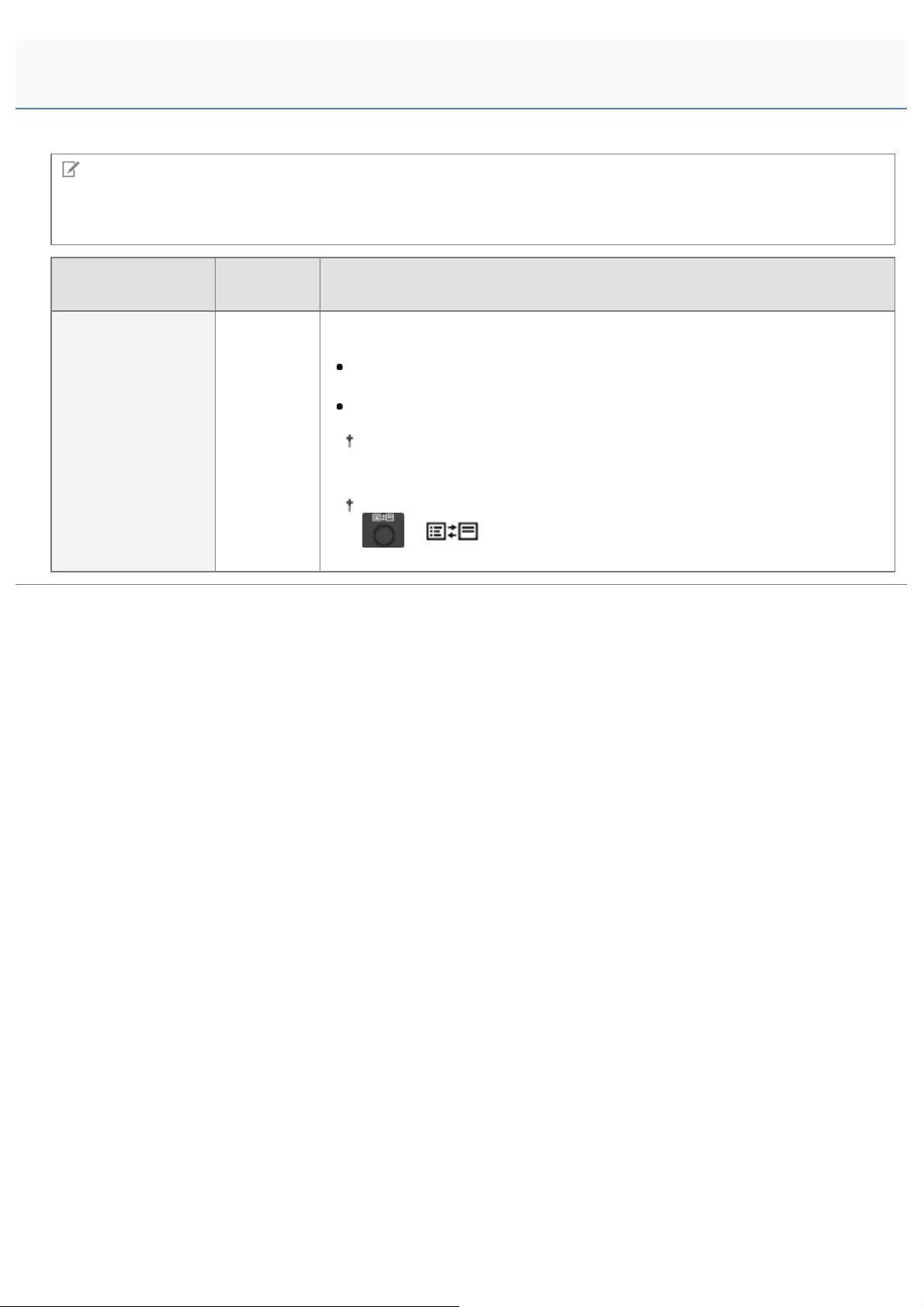
0258-0KS
NOTE
Table description
Bold values in the table indicate the default settings.
Setting Item Setting
Value Setting
[Select Def. Screen]
[Print
Screen],
[MEAP]
Set the initial screen of the control panel that is displayed after the printer starts
up.
When it is set to [Print Screen], the printer's print standby screen is
displayed.
When it is set to [MEAP], the MEAP menu screen is displayed.
If department ID management is set, the log in screen is displayed after
the printer is started. After you log in, the selected menu screen is
displayed.
After the printer starts, you can toggle the menu screens by pressing [
] ( : Application) on the control panel.
[Setup] Menu ([MEAP Settings] Options) (LBP7680Cx Only)
㻢㻝㻣㻌㻛㻌㻥㻥㻤
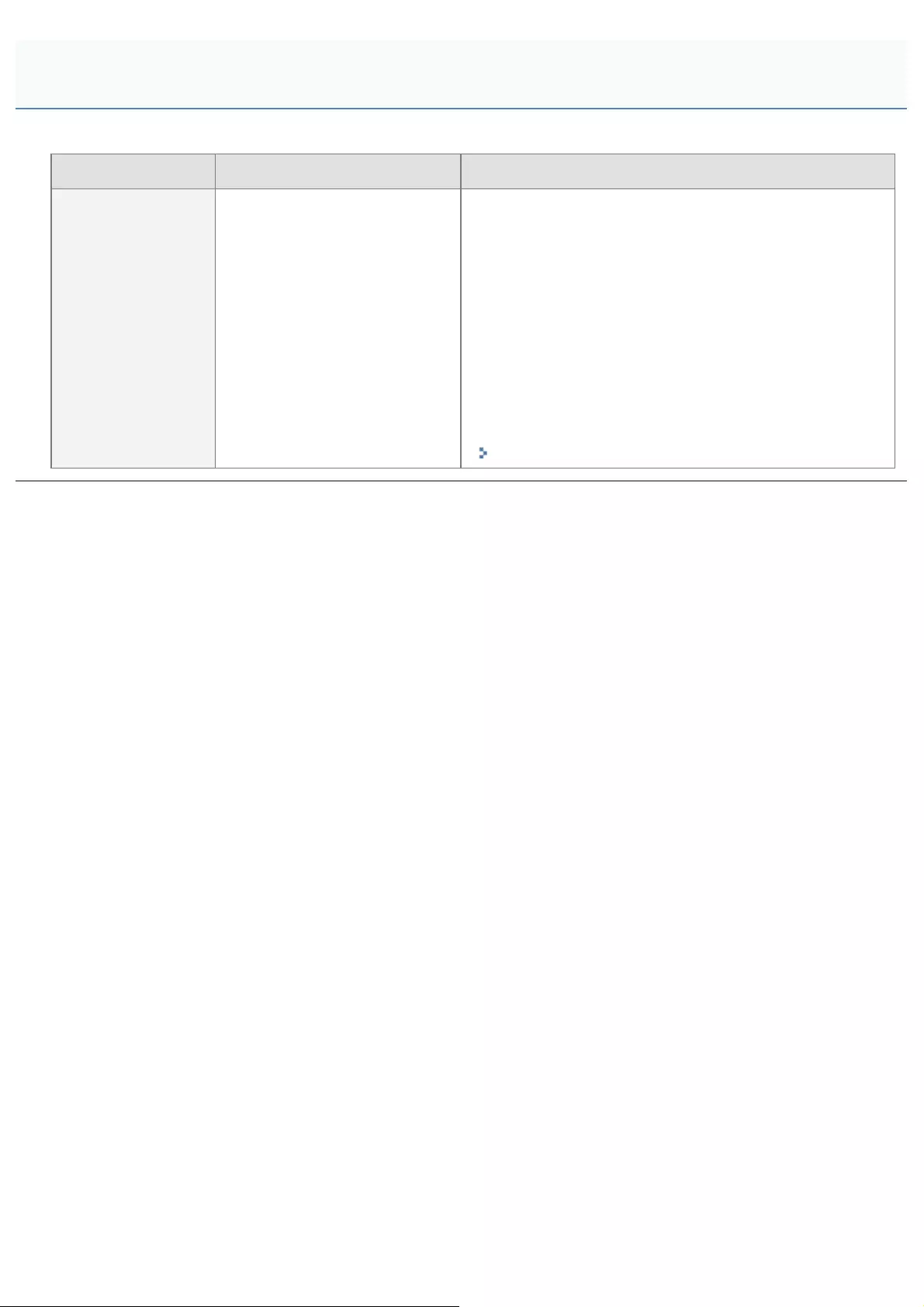
0258-0KU
Setting Item Setting Value Setting
[Check Counter]
LBP7680Cx
[113: Total (Black/S)],
[123:Total(Full+1C/S)]
LBP7660Cdn
[Color Total], [B&W Total]
Check the number of pages printed for each counter
selected.
Each counter shows the number of pages printed of the
following.
LBP7680Cx
[113: Total (Black/S)]: Number of single-sided pages
printed in black and white
[123:Total(Full+1C/S)]: Number of single-sided pages
printed in color
LBP7660Cdn
[Color Total]: Number of pages printed in color
[B&W Total]: Number of pages printed in black and white
"Checking the Number of the Printed Pages"
[Setup] Menu ([Check Counter] Options)
㻢㻝㻤㻌㻛㻌㻥㻥㻤

0258-095
NOTE
Table description
The setting items or setting values with "*" may not be displayed depending on the availability of the optional accessories
and other settings.
About samples
For Configuration Page, Network Status Print, and Printing Position Adjustment Print, see the following.
"The Lists Common to All the Settings in the Print Mode"
Setting Item Setting Value Setting
[Check Counter]
LBP7680Cx
[113: Total (Black/S)],
[123:Total(Full+1C/S)]
LBP7660Cdn
[Color Total], [B&W Total]
Check the number of pages printed for each counter selected.
Each counter shows the number of pages printed of the
following.
LBP7680Cx
[113: Total (Black/S)]: Number of single-sided pages printed
in black and white
[123:Total(Full+1C/S)]: Number of single-sided pages printed
in color
LBP7660Cdn
[Color Total]: Number of pages printed in color
[B&W Total]: Number of pages printed in black and white
"Checking the Number of the Printed Pages"
[Configuration Page] -
Prints the capacity of the built-in memory (RAM) or the
contents specified in the common [Setup] menu. You can
select this item regardless of the setting for the print mode.
[Network Status
Print] -Prints the version number and the settings of the print server
equipped with this printer.
[IPSec Policy List]* - Print the IPSec policy that is registered in the printer.
[Calibration]
[Color Mismatch Corr.],
[Density Control], [Density
Median Cont.], [Full
Calibration]
Run each type of calibration.
"Adjusting the Color or Color Mismatch (Calibration)"
[PCL Utility] [Font List] A list of the fonts that can be used in the PCL mode is printed.
[PS Utility]*[Configuration Page], [Font
List]
[Configuration Page]
Prints the content specified in the [PS] options.
[Font List]
A list of the fonts that can be used in the PS mode is
printed.
[Cleaning] [A4], [LTR] The printer cleans the fixing roller by printing a cleaning page.
"Cleaning the Fixing Roller of the Printer"
[E-Mail Print Utility] [Received E-Mails],
[Received E-mail List]
Manage e-mail printing.
"Receiving E-mail Data on the Mail Server and Printing
(E-mail Print)"
[Printing Pos. Print] -
The printing position adjusted in [Adj. Start Position] is printed.
Check the printout results to confirm the setting for [Adj. Start
Position].
"Adjusting the Printing Position for Each Paper Source"
If department ID management is set, print an aggregate report
[Utility Menu] Menu
㻢㻝㻥㻌㻛㻌㻥㻥㻤
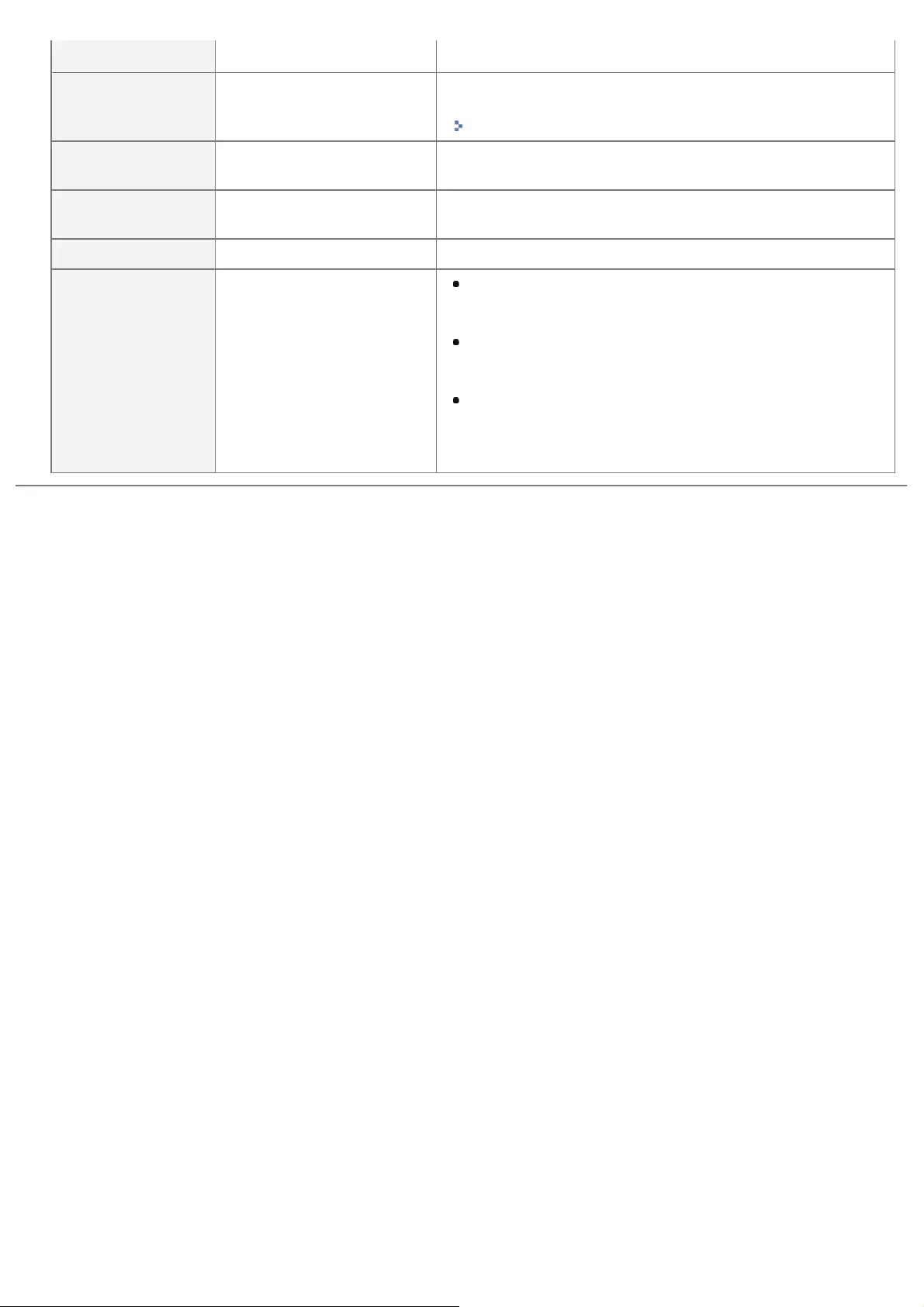
[Page Count List] - of the number of pages printed by each department.
[Counter Report] -
Print an aggregate report of the number of pages printed for
each counter.
"Checking the Number of the Printed Pages"
[Print MEAP Sys.
Info] -Print information about applications installed on MEAP and
parts of the system applications.
[Total Printed
Pages] - Display the total number of pages printed up to now.
[Serial Number] (Display only) Displays the serial number of the printer.
[Consumables]
[Paper Information], [Toner
Cart. Model], [Remaining
Toner]
[Paper Information]
Displays information about the loaded paper such as size,
type, and remaining amount for each paper source.
[Toner Cart. Model]
Displays the model numbers of the toner cartridges of
each color.
[Remaining Toner]
Displays the amount of toner remaining in the cartridge.
You can use this item to estimate when the toner
cartridge will need to be replaced.
㻢㻞㻜㻌㻛㻌㻥㻥㻤
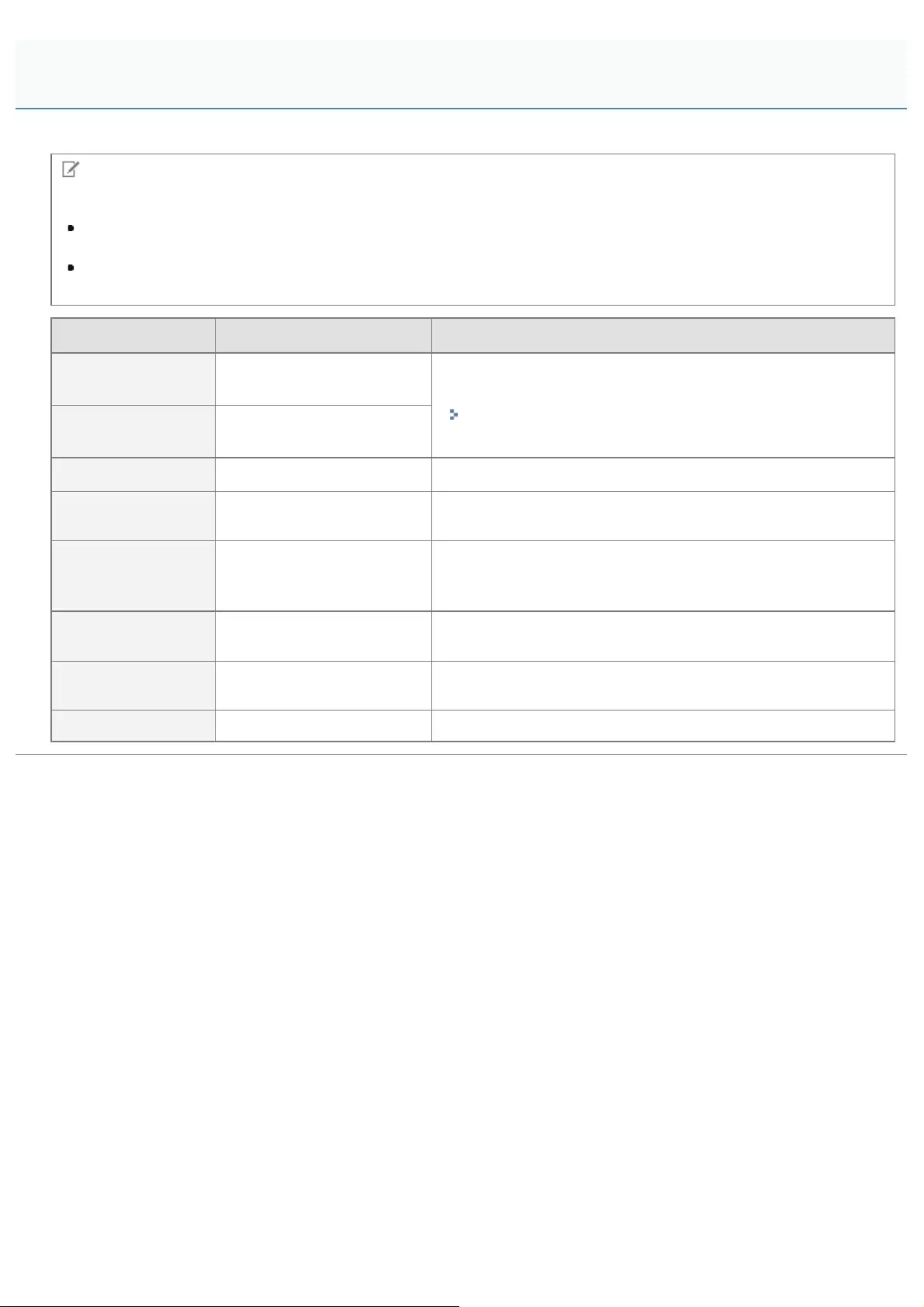
0258-096
NOTE
Table description
The items and setting values marked with "*1" may or may not be displayed depending on the availability of the
optional accessories or the content of the setting.
The items and setting values marked with "*2" are only displayed when the check box for [Display Job History] is
selected on the Remote UI.
Setting Item Setting Value Setting
[Encrypted Print]*1 User Name,
Job Name, [PIN] Print secure jobs stored on the SD card or encrypted secure
jobs.
"Specifying a Password for a Document and Printing
(Secured Print) (LBP7680Cx Only)"
[Secured Print]*1 User Name,
Job Name, [PIN]
[Stored Job List]*1 -Print the list of jobs stored on the SD card.
[Stored Job Print]*1 [Box No.N] (N=1 to 100),
[PIN], Job Name
[Job Print Log List]*2 -
Prints the job logs printed from the computer.
File names, print dates, and other information are printed on the
job log list.
[Stored Job Print
Log]*1*2 - Print the history of jobs printed from BOX.
[Report Print Log]*2 -Prints the logs of the printed Configuration Page and Network
Status Print.
[E-Mail Print Log]*2 - Print the history of jobs received by e-mail and printed.
[Job] Menu
㻢㻞㻝㻌㻛㻌㻥㻥㻤
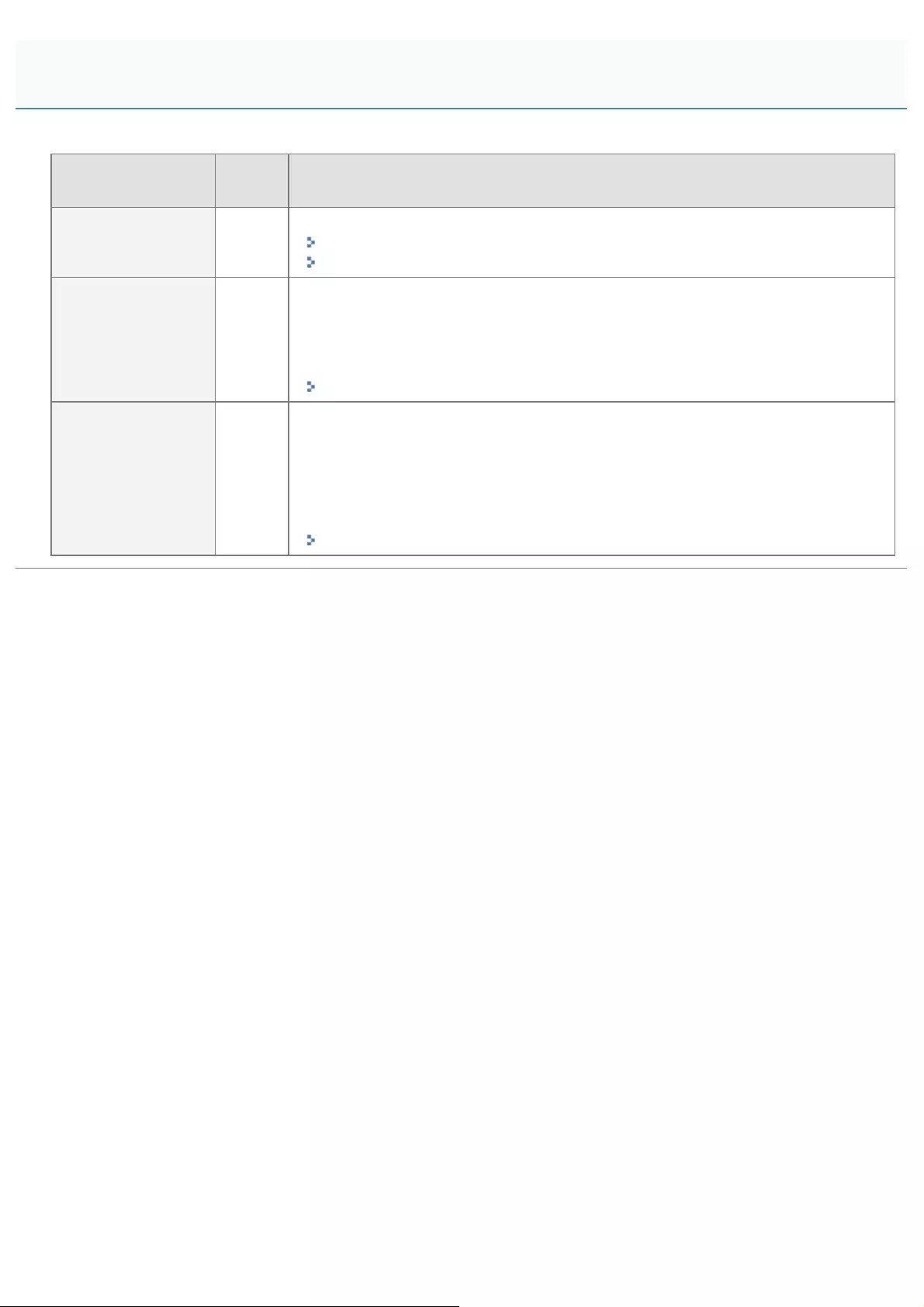
0258-097
Setting Item Setting
Value Setting
[Soft Reset] ([Hard
Reset]) -
Resets the printer when a problem is occurring or you want to cancel printing.
"Canceling the Process Currently Being Performed (Soft Reset)"
"Canceling All the Jobs (Hard Reset)"
[Form Feed] -
When a job is canceled from the computer or the data is less than one page, the
data may remain in the printer memory, and the job may not be completed properly.
As long as the printer remains in this state, you cannot print the next job because
the printer cannot receive the next data. In this case, force the printer to output the
print data using the procedure for this item.
"Outputting Data (Forced Output)"
[Shut Down] -
Shuts down the functions of the printer.
If you are using WSD printing, the shutdown notifies the computer that the printer is
turned OFF.
After executing a shut down, the printer cannot receive data, and panel operation
becomes invalid.
Cycle the power of the printer if you want to print the data again.
Turning the Printer ON/OFF
[Reset] Menu
㻢㻞㻞㻌㻛㻌㻥㻥㻤

0258-098
NOTE
Table description
Bold values in the table indicate the default settings.
The setting items or setting values with "*" may not be displayed depending on the availability of the optional
accessories and other settings.
About the icon
: The settings for the printer driver are prioritized for this item.
Setting Item Setting Value Setting
[Paper Source] [Auto], [Drawer 1], [Drawer 2]* , [Multi-Purpose
Tray]
Selects the drawer or tray from which the
printer feeds paper. After a paper source
is selected, the corresponding Paper
Source indicator comes on.
[MP Tray Paper
Size]
[A5], [B5], [A4], [LTR], [LGL], [EXEC], [Mixed
Sizes], [Custom Size], [Custom Size R], [Env.
ISO-C5], [Env. Monarch], [Env. No.10], [Env. DL],
[Env. ISO-B5], [Index Card], [STMT], [FLSC]
Specifies the size of the paper loaded in
the multi-purpose tray.
"Registering the Paper Size and
Type"
[MP Tray Priority] [Off], [On]
Specifies whether the printer should
detect the paper source in order starting
with the multi-purpose tray when [Paper
Source] is set to [Auto].
[Drawer 1
Size]/[Drawer 2
Size]*
[A5], [B5], [A4], [LTR], [LGL], [EXEC], [Mixed
Sizes], [Custom Size], [Custom Size R], [STMT],
[FLSC]
Specifies the size of the paper loaded in
the paper drawer.
"Registering the Paper Size and
Type"
[Standard Paper
Size]
[A5], [B5], [A4], [LTR], [LGL], [EXEC], [Env. ISO-
C5], [Env. Monarch], [Env. No.10], [Env. DL], [Env.
ISO-B5], [Index Card], [STMT], [FLSC]
If you cannot specify the paper size or if
you print from DOS, UNIX, or other
operating system, specify the paper size
in this item.
"Loading Paper in the Drawer"
"Loading Paper in the Multi-purpose
Tray"
[Diff. Paper Tray] [Off], [On]
Specifies whether the printer should feed
paper from the multi-purpose tray when
paper of the size for the received data is
not loaded in the paper drawer.
[Auto Selection]
[Multi-Purpose Tray]: [Off], [On]
[Drawer 1]: [Off], [On]
[Drawer 2]*: [Off], [On]
Specifies the paper source to be
automatically selected when [Paper
Source] is set to [Auto] in "[Select
Feeder] Menu."
If [On] is specified, the printer selects the
paper source as the one to be
automatically selected.
[Default Paper
Type]
[Plain], [Plain L], [Plain L2], [Plain H], [Heavy 1],
[Heavy 2], [Heavy 3], [Transparency], [Envelope],
[Envelope H], [Coated 1], [Coated 2], [Coated 3],
[Coated 4], [Labels]
Specifies whether the printer should print
on one side or both sides of the paper.
[Select Feeder] Menu
㻢㻞㻟㻌㻛㻌㻥㻥㻤

[MP Tray Paper
Type]
[Plain], [Plain L], [Plain L2], [Plain H], [Heavy 1],
[Heavy 2], [Heavy 3], [Transparency], [Envelope],
[Envelope H], [Coated 1], [Coated 2], [Coated 3],
[Coated 4], [Labels], [Mixed Types]
Set the type of paper that is loaded in
the multi-purpose tray.
"Registering the Paper Size and
Type"
"Usable Paper"
[Drawer 1
Type]/[Drawer 2
Type]*
[Plain], [Plain L], [Plain L2], [Plain H], [Heavy 1],
[Heavy 2], [Heavy 3], [Envelope], [Envelope H],
[Coated 1], [Coated 2], [Coated 3], [Coated 4],
[Labels], [Mixed Types]
Set the type of paper that is loaded in
the paper drawer.
"Registering the Paper Size and
Type"
"Usable Paper"
[Manual 2-Sided
(MP)] [1st Side], [2nd Side]
Set the printing side of the paper that is
loaded in the multi-purpose tray manually
for 2-sided printing.
When it is set to [1st Side], it is
printed on the front of the paper
(the side that is first be printed).
When it is set to [2nd Side], it is
printed on the back of the paper
(the reverse side of the paper that
has already been printed).
[2-Sided Printing] [Off], [On] Specifies whether the printer should print
on one side or both sides of the paper.
㻢㻞㻠㻌㻛㻌㻥㻥㻤

0258-099
If you want to check the number of the printed pages, use either of the following methods.
Checking the Counter Using the Printer's Control Panel
Checking the Counter Using a Web Browser (Remote UI)
Checking the Counter Using the Printer's Control Panel
You can check the number of the printed pages using the control panel.
1
Press [ ] ( : Settings).
2
Select [Check Counter] using [ ] or [ ], and then press [OK].
3
Select the counters to check using [ ] and [ ], and then press [OK].
LBP7680Cx
LBP7660Cdn
4
Check the number of the printed pages.
LBP7680Cx
Checking the Number of the Printed Pages
㻢㻞㻡㻌㻛㻌㻥㻥㻤

LBP7660Cdn
Checking the Counter Using a Web Browser (Remote UI)
You can check the number of the printed pages using the Remote UI.
1
Start the Remote UI, and then log in as Administrator.
"Starting the Remote UI"
2
Select [Check Counter] from the [Status Monitor/Cancel] menu.
3
Check the number of the printed pages.
㻢㻞㻢㻌㻛㻌㻥㻥㻤

㻢㻞㻣㻌㻛㻌㻥㻥㻤
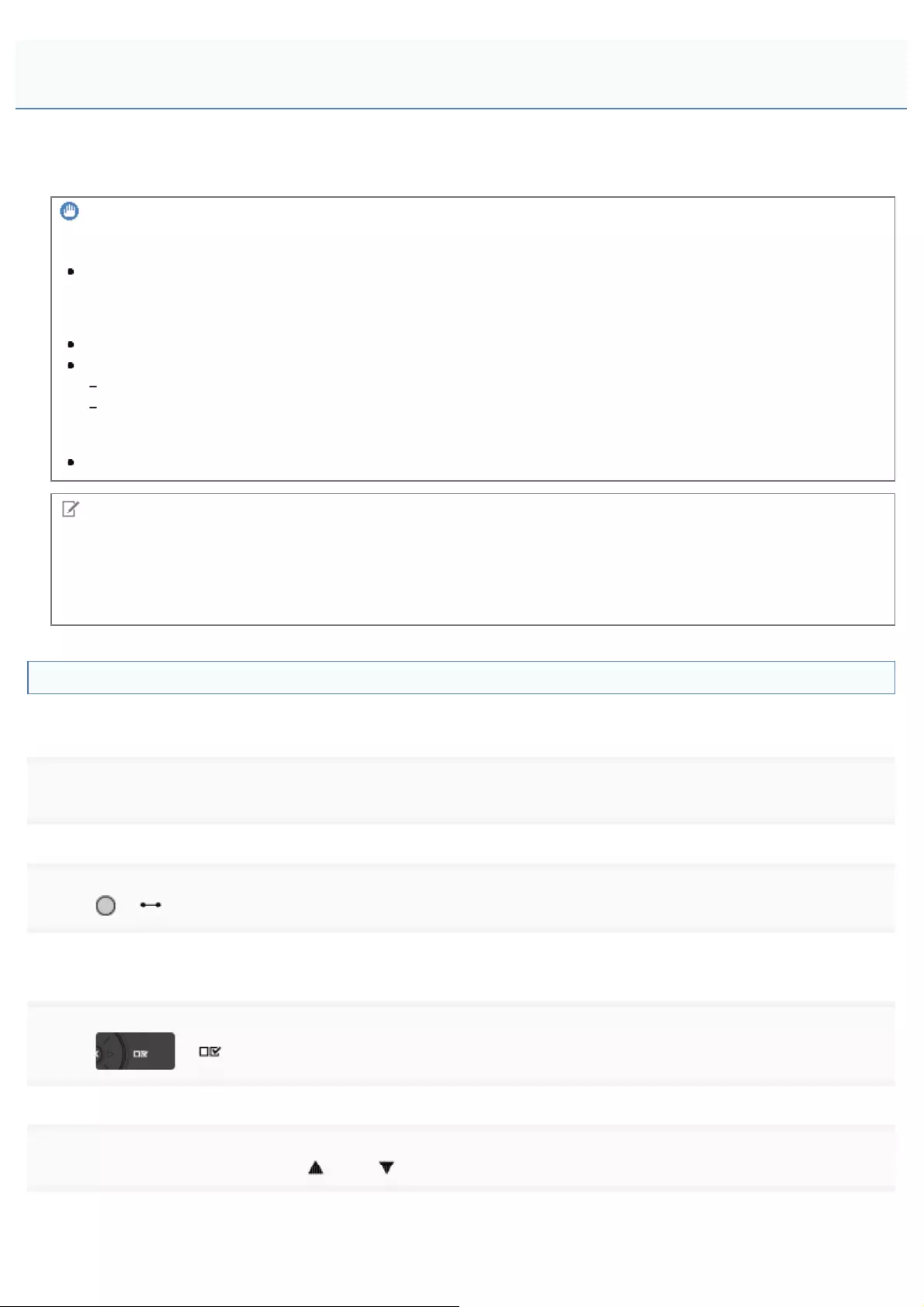
0258-0LH
You can save (export) printer settings that are set in the operation panel or Remote UI to USB memory devices or SD
cards. In addition, you can read (import) saved printer settings any time.
IMPORTANT
Slots for USB memory devices
The USB ports on the front and back of the printer can be used concurrently. If USB memory drives are inserted
into both ports, the one on the front has higher priority.
About USB memory support
The file format FAT32 is supported only.
USB memory drives cannot be read by this printer if:
these drives are partitioned
these drives contain encrypted data
Printers that can be imported
You can import the settings only to the same model from which you export the settings.
NOTE
When saving/reading settings using USB memory devices and SD cards
Connect a USB memory device or an SD card to the printer's USB port or SD card slot. The saving location/writing
source priority is shown below.
"USB memory" > "SD card"
Saving printer settings (export)
Save printer settings to USB memory devices or SD cards (LBP7680Cx only).
1
Insert the USB memory device or the SD card (LBP7680Cx only) into the printer.
2
Press [ ] ( : Online).
The Online indicator goes off, allowing you to specify the settings on the control panel.
3
Press [ ] ( : Settings).
4
Select [User Maintenance] with [ ] and [ ], and then press [OK].
Importing and Exporting Settings
㻢㻞㻤㻌㻛㻌㻥㻥㻤
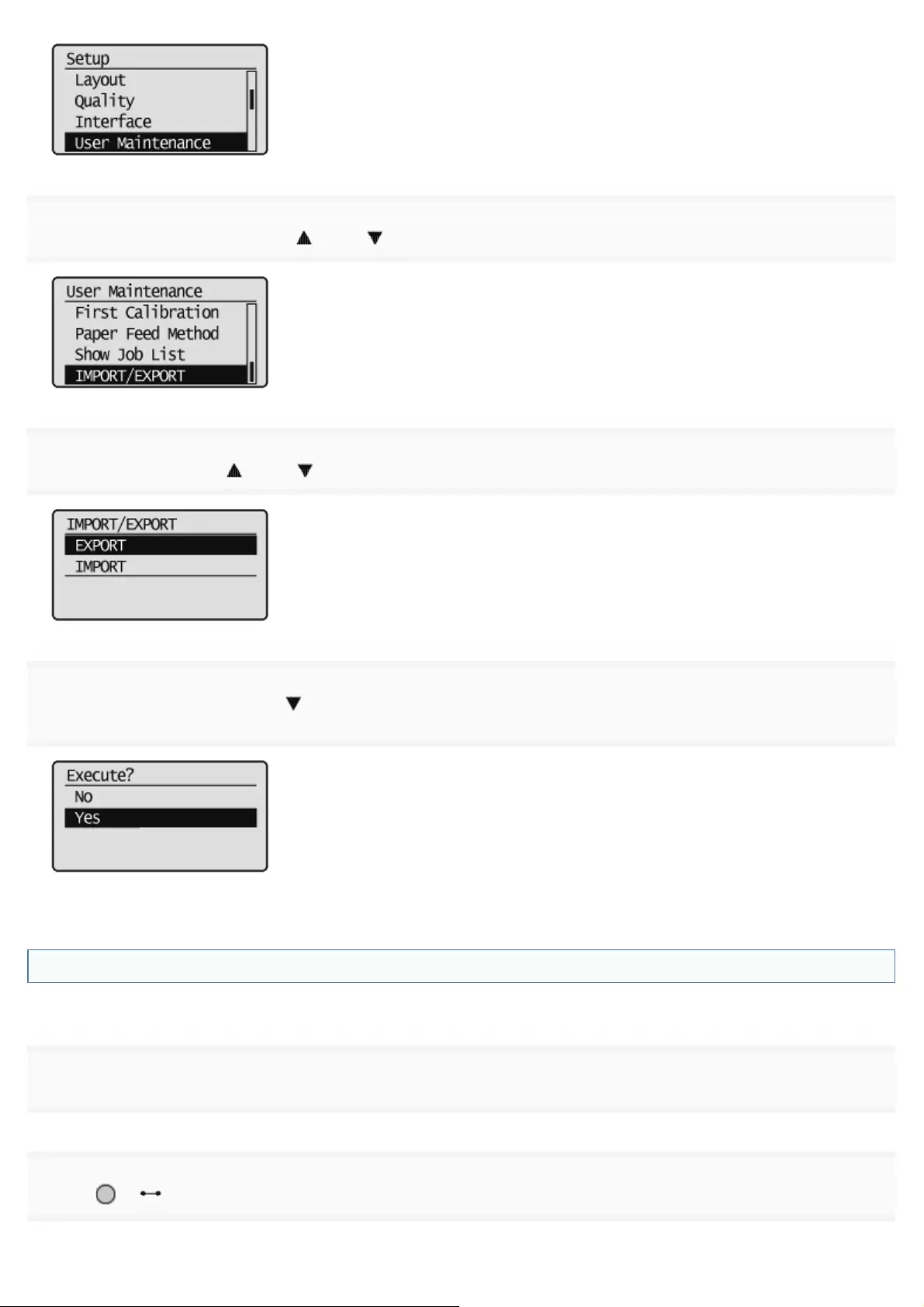
5
Select [IMPORT/EXPORT] with [ ] and [ ], and then press [OK].
6
Select [EXPORT] with [ ] and [ ], and then press [OK].
7
When [Yes] is selected using [ ], [OK] is pressed, the printer's settings are saved to the targeted
saving location.
ĺWhen the saving has finished, <Done.> is displayed.
Reading printer settings (import)
Read printer settings that have been saved to USB memory devices or SD cards (LBP7680Cx only).
1
Insert the USB memory device or the SD card (LBP7680Cx only) into the printer.
2
Press [ ] ( : Online).
The Online indicator goes off, allowing you to specify the settings on the control panel.
㻢㻞㻥㻌㻛㻌㻥㻥㻤

3
Press [ ] ( : Settings).
4
Select [User Maintenance] with [ ] and [ ], and then press [OK].
5
Select [IMPORT/EXPORT] with [ ] and [ ], and then press [OK].
6
Select [IMPORT] with [ ] and [ ], and then press [OK].
7
When [Yes] is selected using [ ], and [OK] is pressed, the printer's settings are read from the
targeted writing source.
ĺWhen the reading has finished, <Done.> is displayed.
8
Perform a hard reset or restart the printer.
㻢㻟㻜㻌㻛㻌㻥㻥㻤
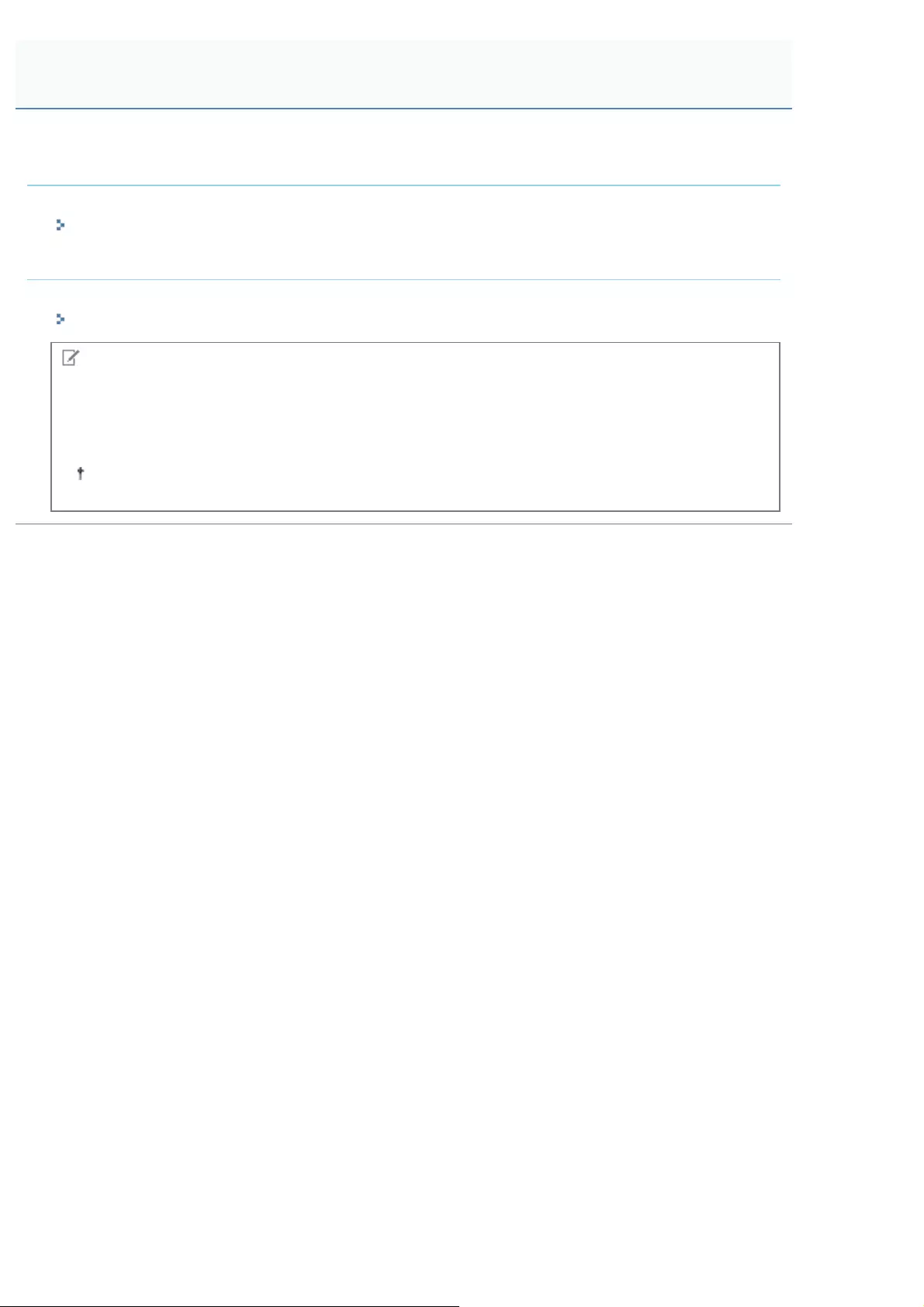
0258-09A
If you want to initialize the [Setup] menu using the control panel
You can restore the printer's common setup menus and dedicated setup menus to their default settings.
"Initializing the [Setup] Menu Using the Printer's Control Panel"
If you want to initialize the network settings
You can reset the network settings for the printer to the default values.
"Initializing the Network Settings"
NOTE
Initializing using NetSpot Device Installer
You can also initialize the network settings using NetSpot Device Installer.
For details on the procedure for initializing the network settings using NetSpot Device Installer, see Help.
Help is displayed by clicking [Help] in the [Help] menu.
Initializing the Settings
㻢㻟㻞㻌㻛㻌㻥㻥㻤
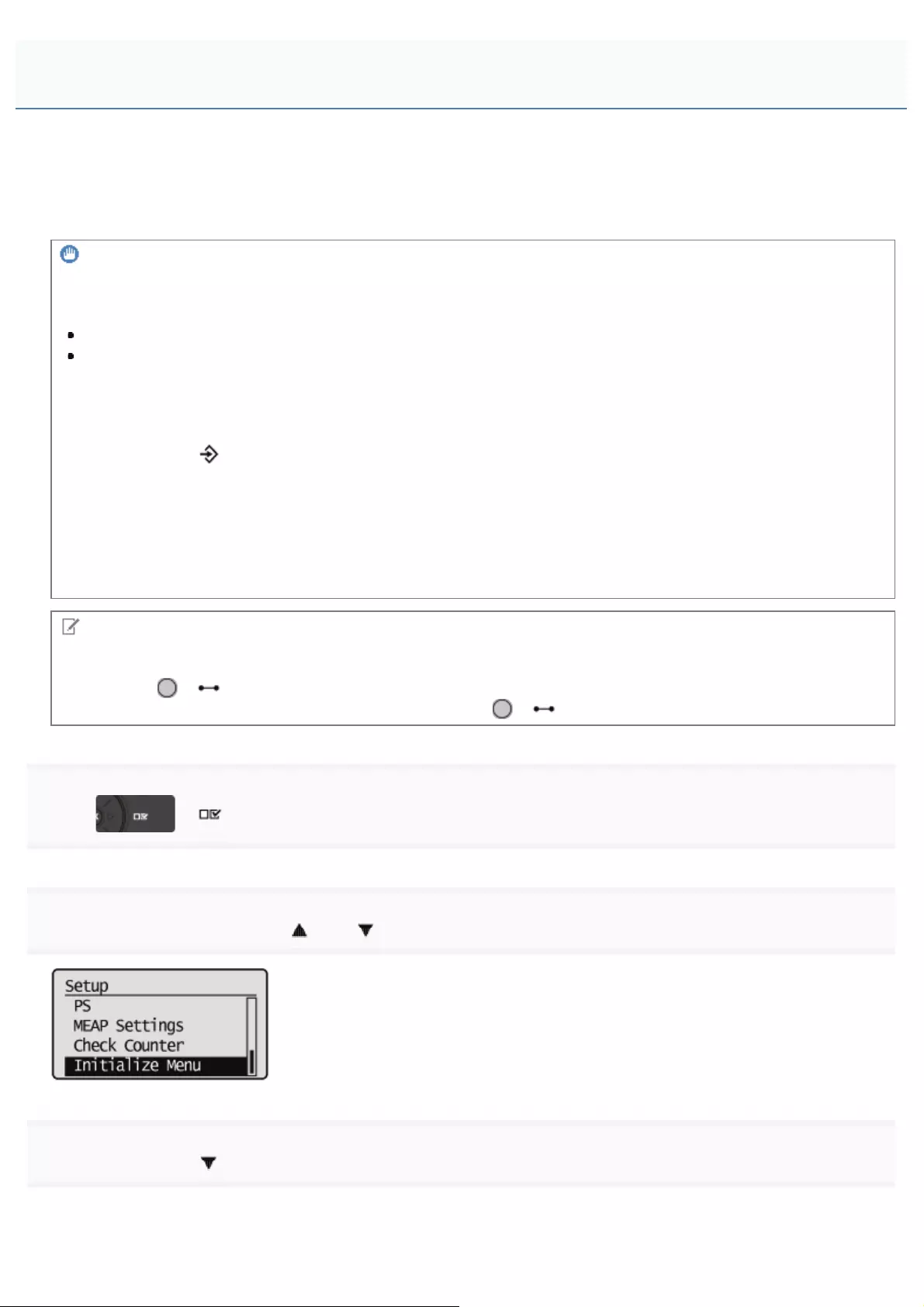
0258-09C
Initialization of the [Setup] menu resets the settings specified in the common [Setup] menu and exclusive [Setup] menu to
the default settings.
Initialize the settings by selecting [Initialize Menu] in the hierarchy of "Options" in the [Setup] menu. Start the key operation
from Step 1.
IMPORTANT
Setting items which are not initialized
The following setting items are not initialized.
[Network] Options
[Adj. Start Position] ([User Maintenance] Options)
If <Initialize failed.> is displayed
If the message <Initialize failed.> appears when the initialization of the [Setup] menu is executed, the [Setup] menu is
not initialized.
Make sure that the Job indicator is off, and then perform [Initialize Menu] again.
Do not turn the printer OFF during the initialization.
The printer memory may be damaged.
About some setting items
Some setting items do not become effective unless you cycle the power of the printer or perform a hard reset after
initializing the [Setup] menu.
NOTE
Canceling the initialization
If you press [ ] ( : Online) during the operation, the operation is canceled. However, you cannot cancel the
operation when <Initializing...> is displayed even if you press [ ] ( : Online).
1
Press [ ] ( : Settings).
2
Select [Initialize Menu] using [ ] or [ ], and then press [OK].
3
Select [Yes] using [ ], and then press [OK].
ĺWhile the initialization is being performed, <Initializing...> is displayed.
<Init. complete.> is displayed after the initialization is completed.
Initializing the [Setup] Menu Using the Printer's Control Panel
㻢㻟㻟㻌㻛㻌㻥㻥㻤
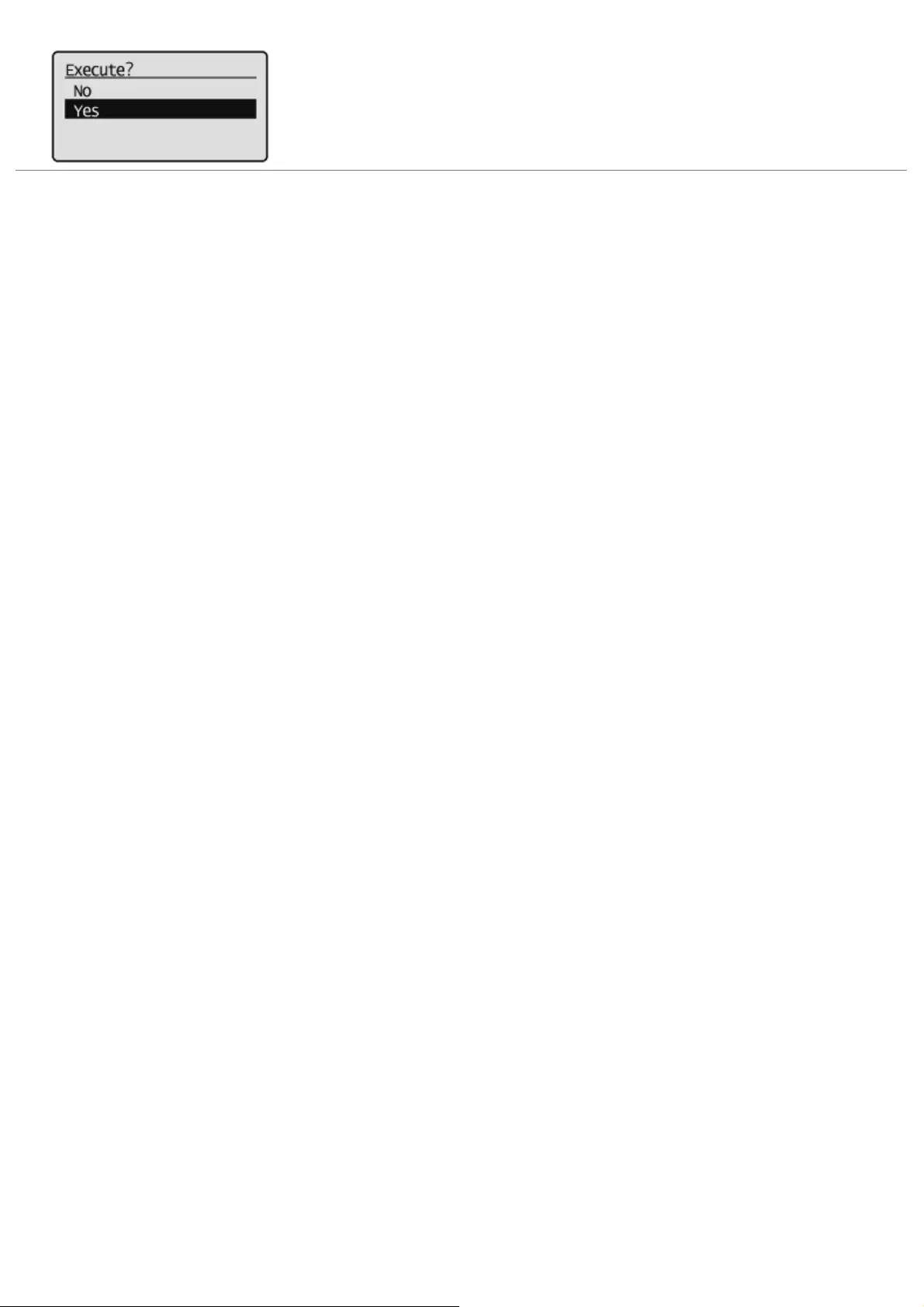
㻢㻟㻠㻌㻛㻌㻥㻥㻤
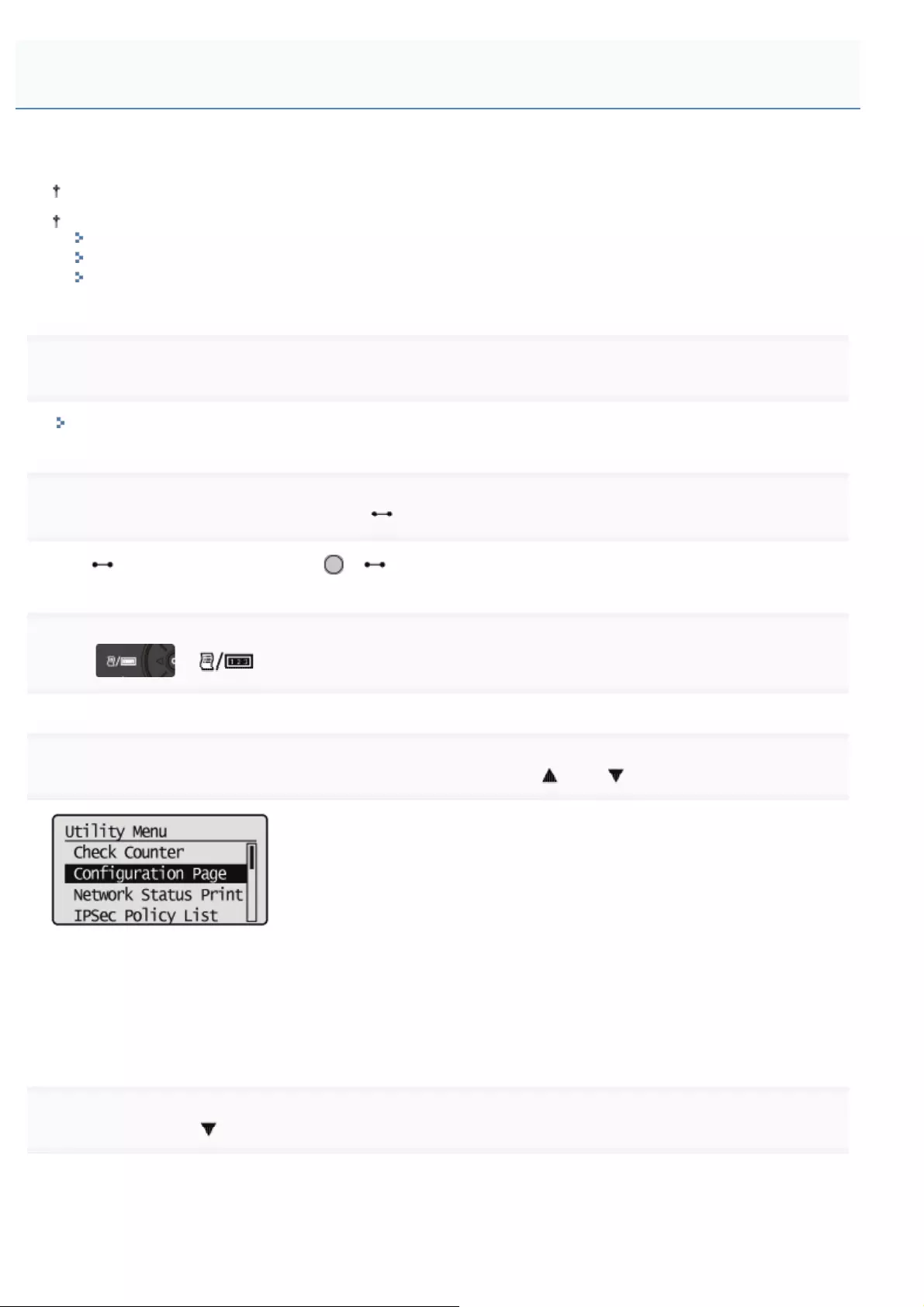
0258-09E
You can check the printer status, network settings, and so on by printing Configuration Page or Network Status Print.
Configuration Page or Network Status Print is designed to be printed on A4 paper. Be sure to use A4 paper.
You can also check the network settings and so on using the following software.
"Remote UI"
"FTP Client"
"NetSpot Device Installer"
1
Load A4 paper in the multi-purpose tray or paper drawer.
"Paper Loading and Output"
2
Make sure that the printer is online (the Online indicator is on).
If the Online indicator is off, press [ ] ( : Online).
3
Press [ ] ( : Utility).
4
Select [Configuration Page] or [Network Status Print] using [ ] or [ ], and then press [OK].
[Configuration Page]
Prints the list of currently available functions for the printer and setting values of the menus, and so on.
[Network Status Print]
Prints the TCP/IP settings including the IP address and information including security settings.
5
Select [Yes] using [ ], and then press [OK] to print Status Print.
Checking the Printer Settings
㻢㻟㻡㻌㻛㻌㻥㻥㻤
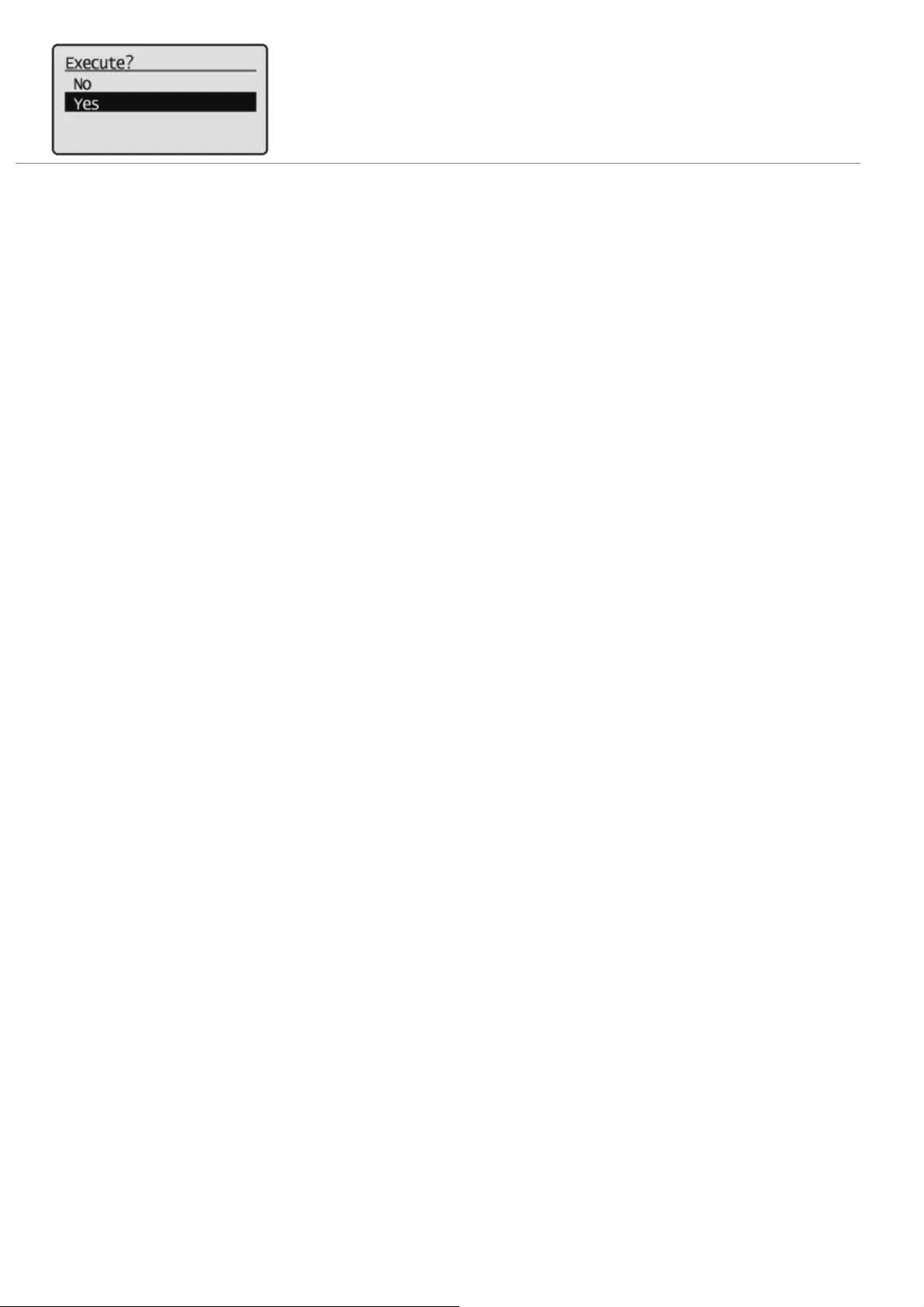
㻢㻟㻢㻌㻛㻌㻥㻥㻤
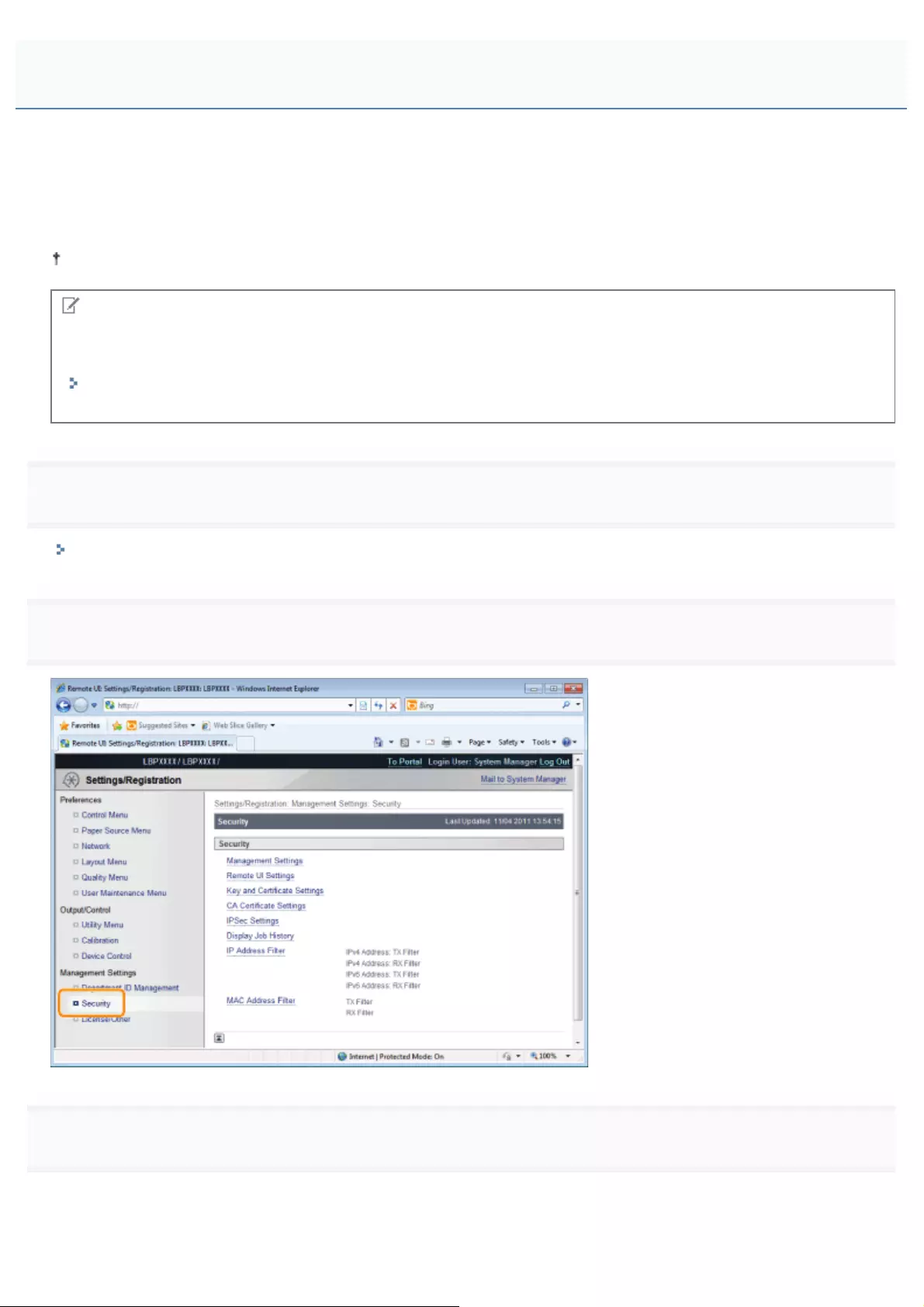
0258-09F
Only the administrator (user who knows the password) can configure the settings or perform the operations related to the
printer management by setting the administrator password.
Also, the administrator password can be changed anytime.
This section describes the procedure for specifying the settings using the Remote UI.
In the Remote UI, you can specify the settings by accessing the printer from a Web browser via a network.
NOTE
When specifying the settings using software other than the Remote UI
You can also specify the settings using the following software.
"FTP Client"
You can specify the settings by accessing the FTP server of the printer using Command Prompt.
1
Start the Remote UI, and then log in as Administrator.
"Starting the Remote UI"
2
Select [Security] under [Management Settings] in the [Settings/Registration] menu.
3
Click [Management Settings].
Setting the Administrator Password
㻢㻟㻣㻌㻛㻌㻥㻥㻤
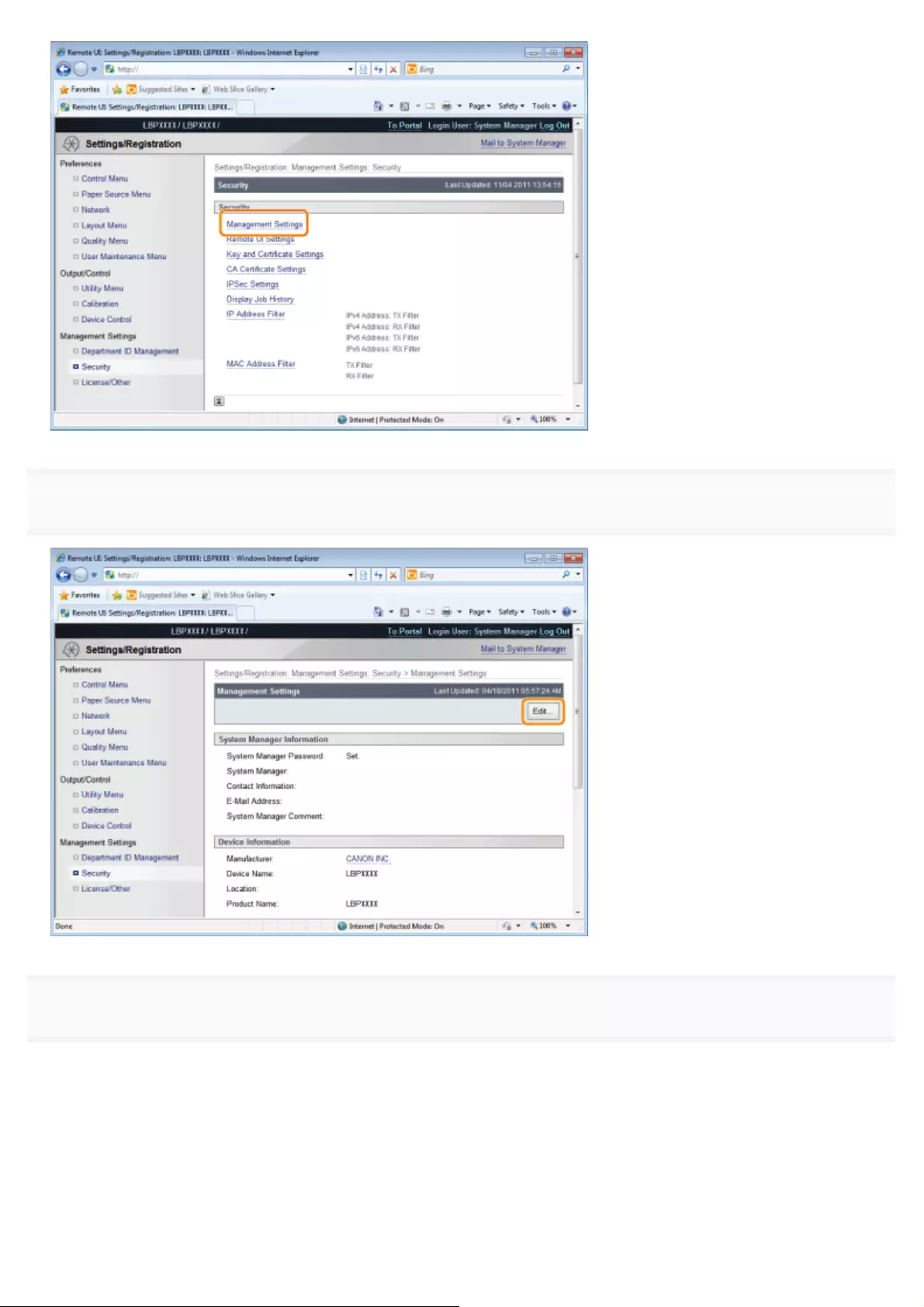
4
Click [Edit...] under [Management Settings].
5
Enter the password currently set for [Current System Manager Password].
㻢㻟㻤㻌㻛㻌㻥㻥㻤
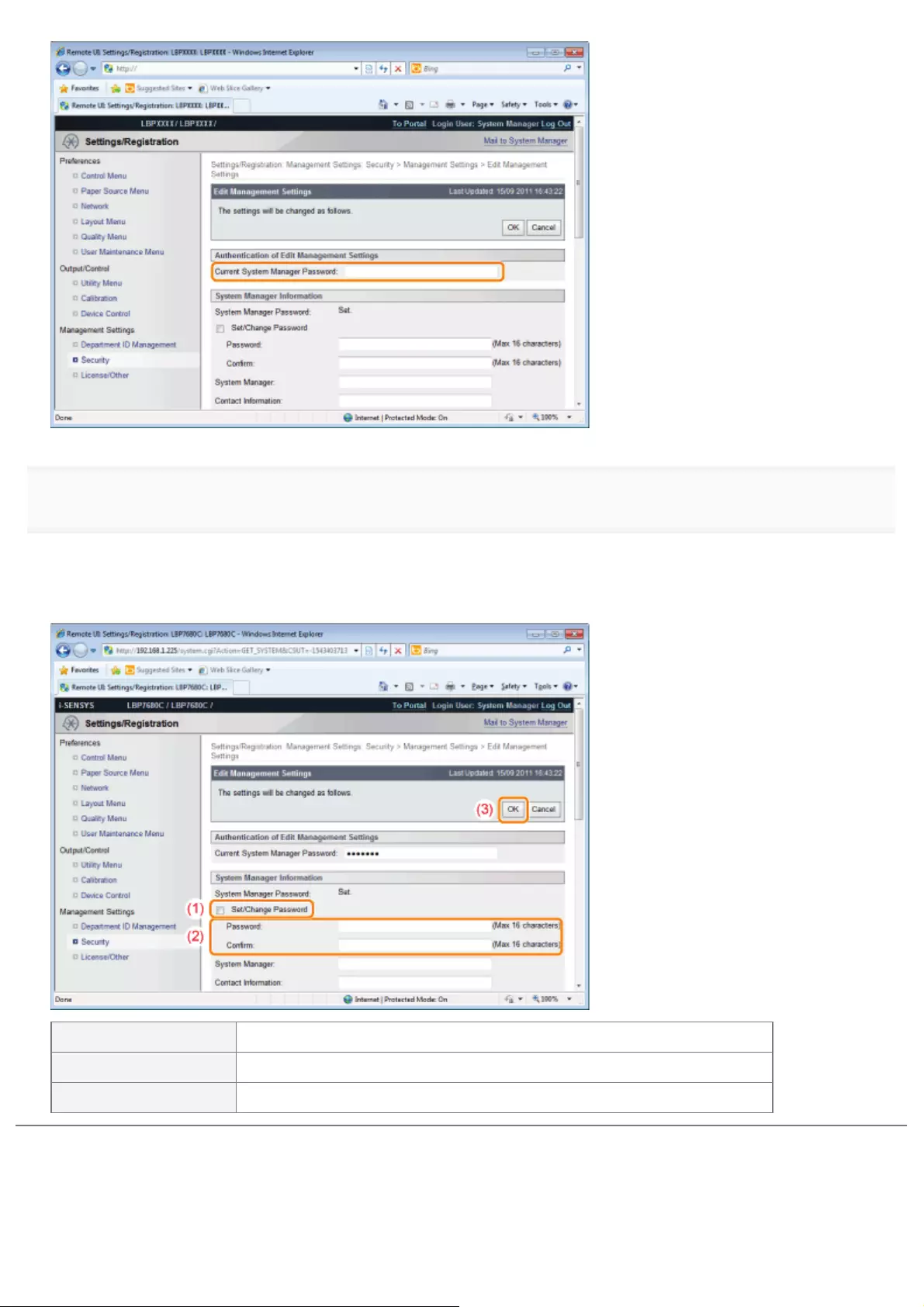
6
Set the administrator password.
(1) Select the [Set/Change Password] check box.
(2) Set the administrator password.
(3) Click [OK].
[Set/Change Password] Select the check box when setting/changing the password.
[Password] Enter a new desired password.
[Confirm] To confirm the password, enter the password entered in [Password] again.
㻢㻟㻥㻌㻛㻌㻥㻥㻤
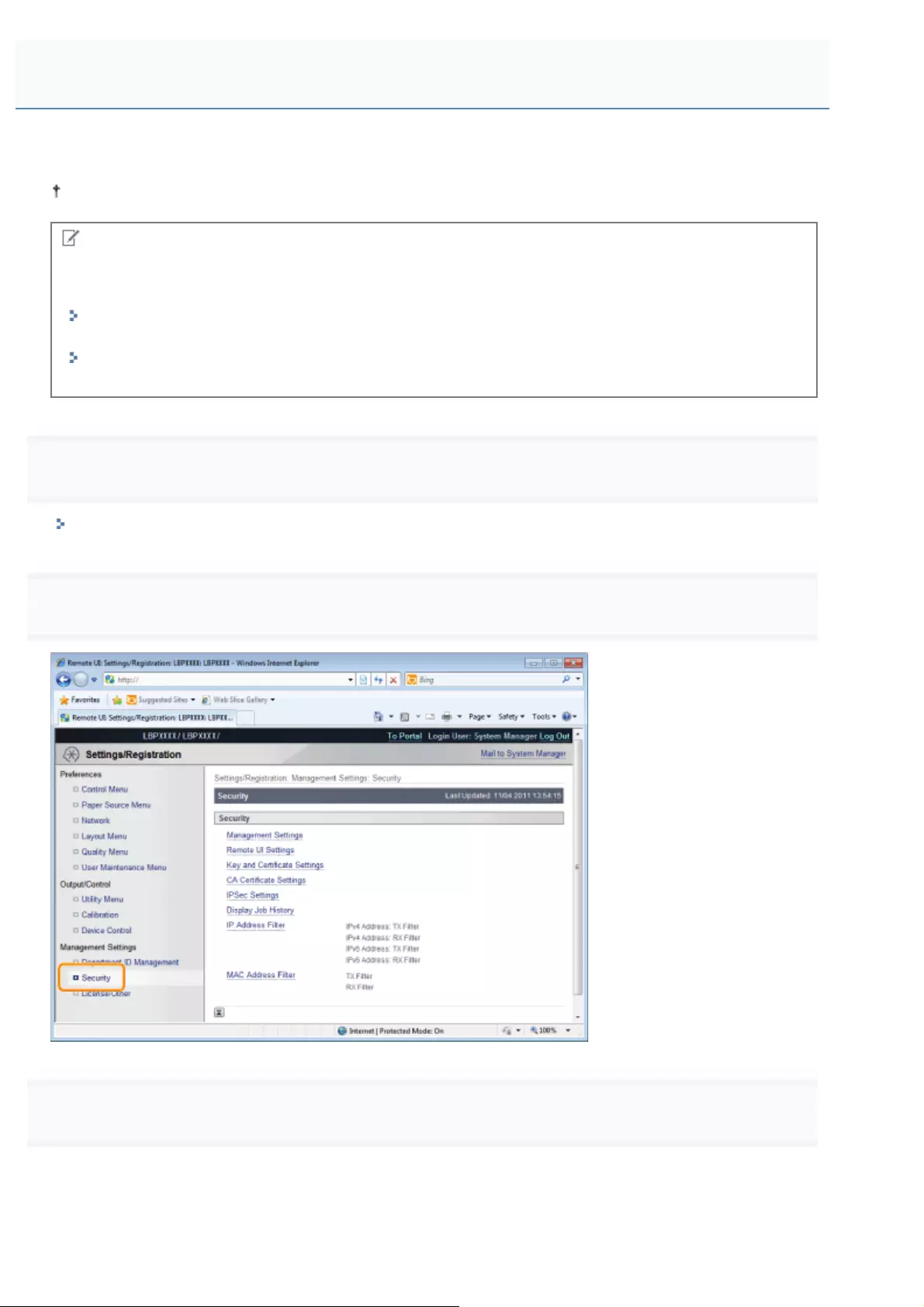
0258-09H
This section describes the procedure for specifying the settings using the Remote UI.
In the Remote UI, you can specify the settings by accessing the printer from a Web browser via a network.
NOTE
When specifying the settings using software other than the Remote UI
You can also specify the settings using the following software.
"FTP Client"
You can specify the settings by accessing the FTP server of the printer using Command Prompt.
"NetSpot Device Installer"
You can specify the settings using the Canon software, NetSpot Device Installer, in the supplied CD-ROM.
1
Start the Remote UI, and then log in as Administrator.
"Starting the Remote UI"
2
Select [Security] under [Management Settings] in the [Settings/Registration] menu.
3
Click [Management Settings].
Specifying the Device Name or Administrator Information
㻢㻠㻜㻌㻛㻌㻥㻥㻤
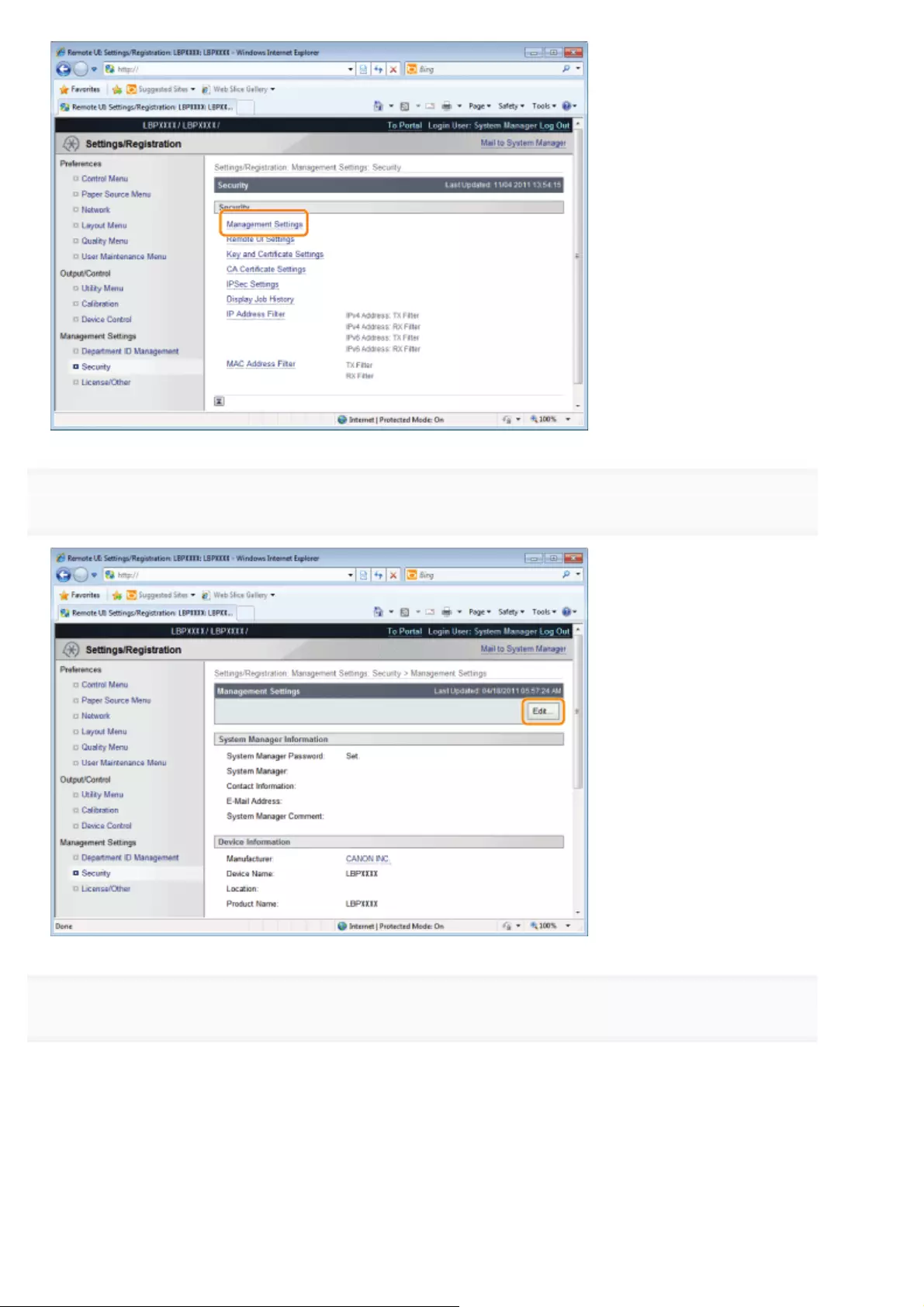
4
Click [Edit...] under [Management Settings].
5
Enter the password currently set for [Current System Manager Password].
㻢㻠㻝㻌㻛㻌㻥㻥㻤
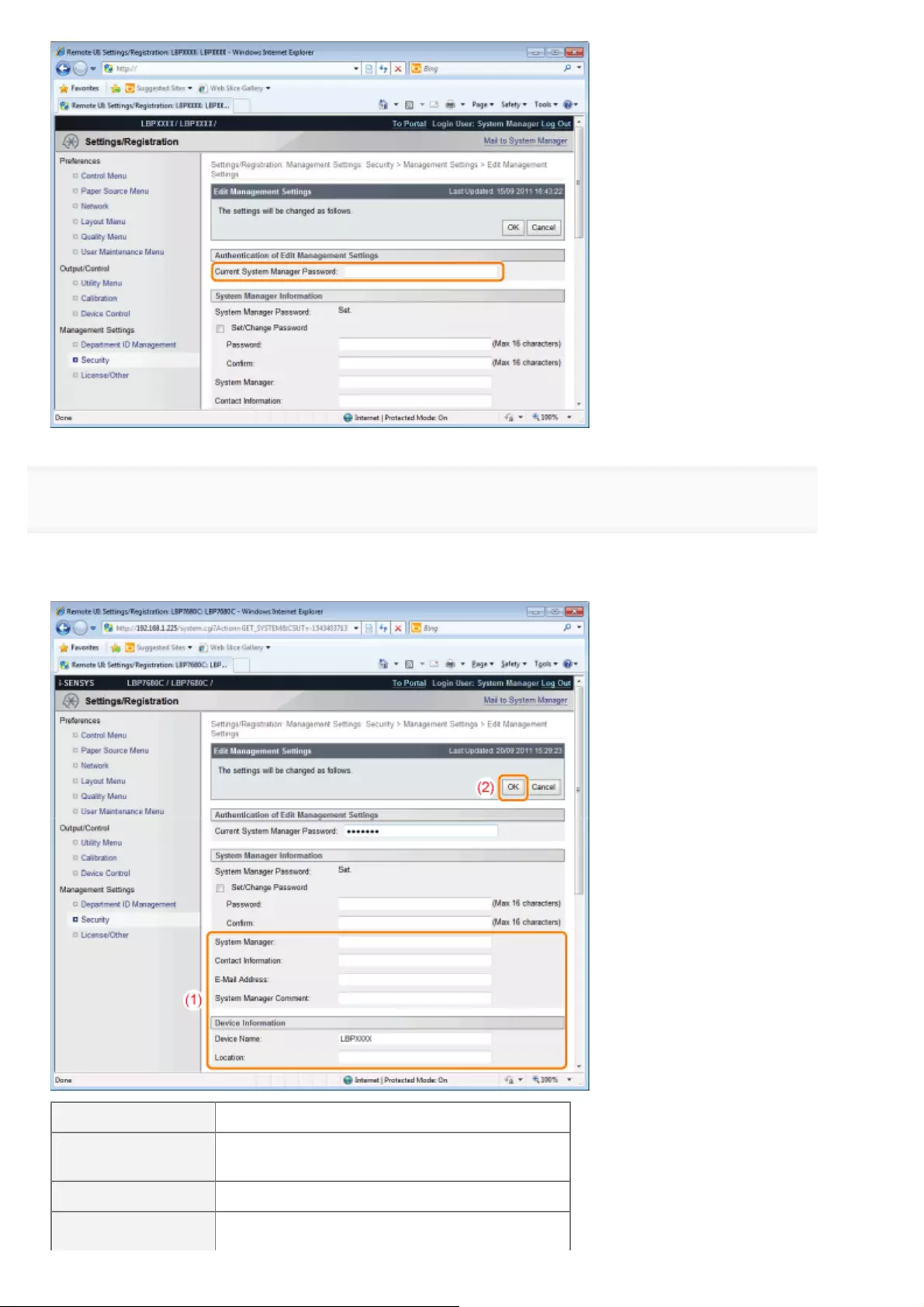
6
Specify the device name or administrator information.
(1) Specify the settings for each option as needed.
(2) Click [OK].
[System Manager] Enter the name of the system manager.
[Contact
Information] Enter the system manager's contact information.
[E-Mail Address] Enter the system manager's email address.
[System Manager Enter the system manager's comments.
㻢㻠㻞㻌㻛㻌㻥㻥㻤
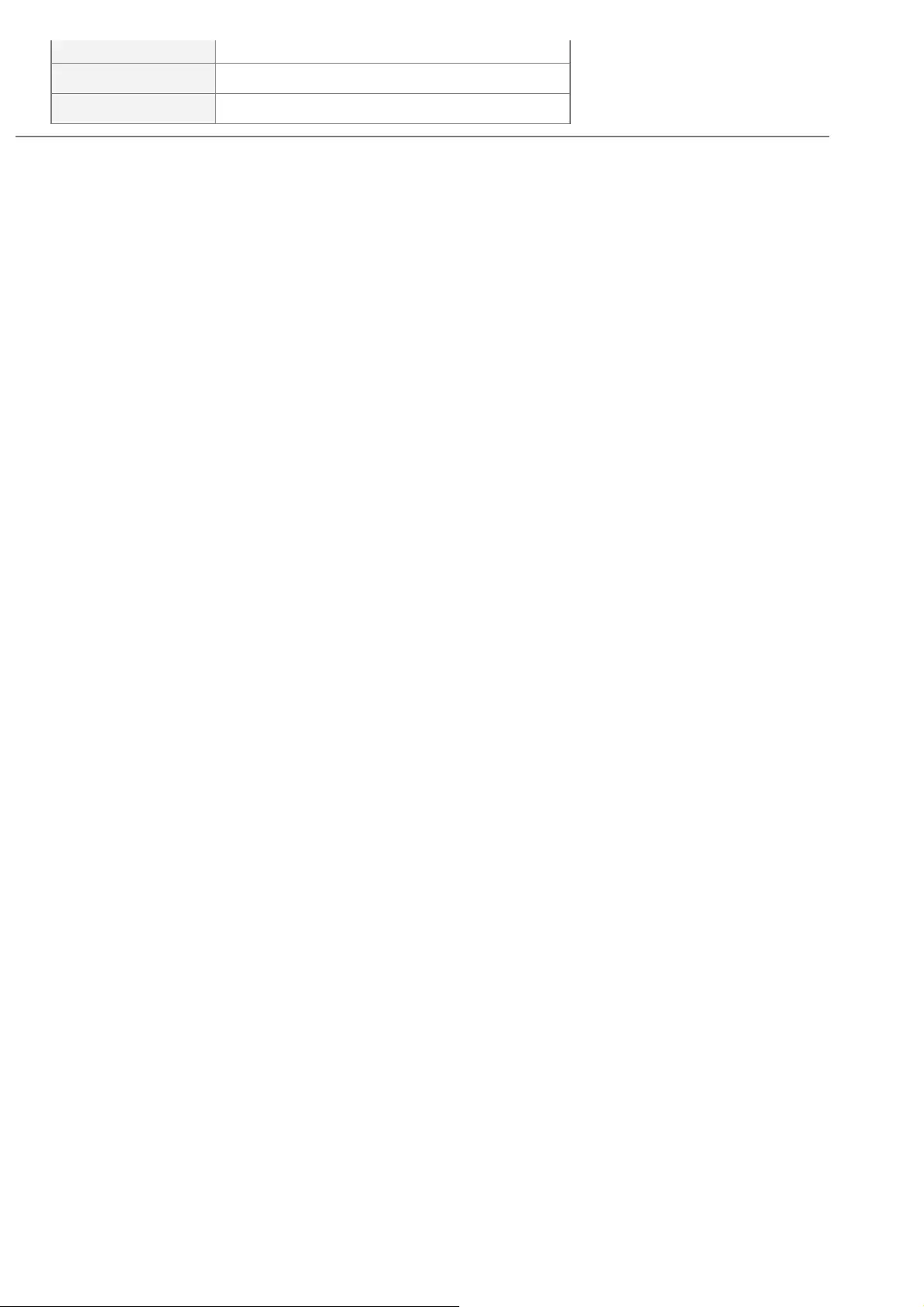
Comment]
[Device Name] Enter the name of the printer.
[Location] Enter the location of the printer.
㻢㻠㻟㻌㻛㻌㻥㻥㻤
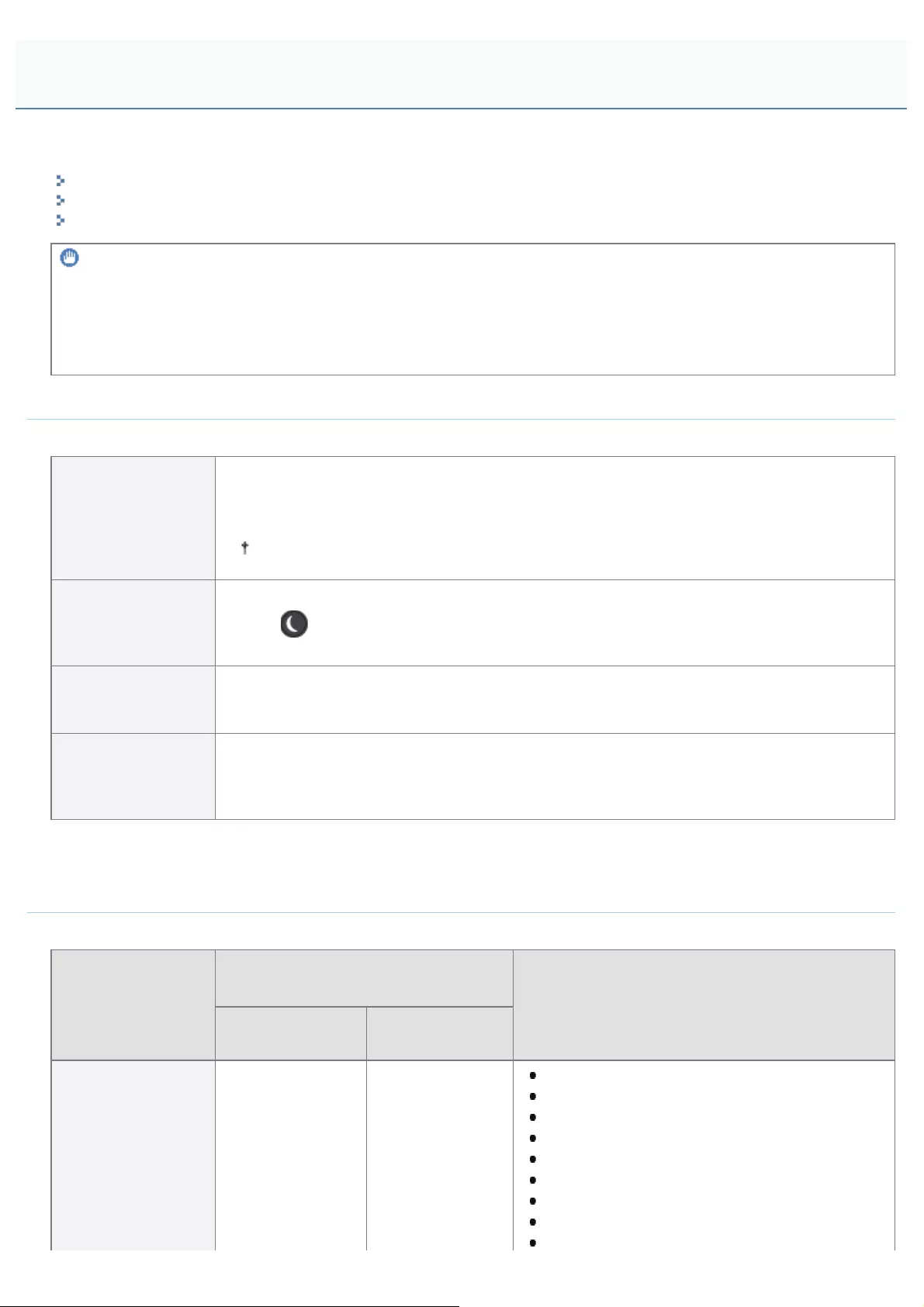
0258-09J
You can specify the settings for sleep mode using the following procedures.
"Setting the Printer to Sleep Mode"
"Types of Sleep Mode"
"Releasing Sleep Mode"
IMPORTANT
Power consumption when the power is OFF
Even if the power of the printer is turned OFF, power is consumed only slightly while the power plug is inserted in the AC
power outlet.
To cut the power consumption completely, unplug the power plug from the AC power outlet.
Setting the Printer to Sleep Mode
There are the following four methods for setting the printer to Sleep Mode.
Setting the printer to
Sleep Mode
automatically when
it is not operating
Specify the time interval until the printer enters Sleep Mode in [Sleep Migration Time].
You can specify the time interval between [5 minutes] and [60 minutes]. The default is [10
minutes].
We recommend that you use this option in the default setting.
Setting the printer to
Sleep Mode using
the printer's control
panel
Press [ ] (Energy Saver) on the printer's control panel.
Setting the printer to
Sleep Mode from a
network computer
6HOHFW>6OHHS@IURP>6HWWLQJV5HJLVWUDWLRQ@RQWKH5HPRWH8,ĺ>2XWSXW&RQWURO@ĺ>'HYLFH
Control], and click [Execute].
Setting the printer to
Sleep Mode on the
designated time
every day
Set the [Sleep Mode Timer] under [Timer Settings] to [On], and set the time when it
automatically goes in the Sleep Mode in [Sleep Mode Time].
If the above operations or settings are performed, and the entering conditions described in "Types of Sleep Mode" are
fulfilled, the printer enters Sleep Mode.
Types of Sleep Mode
There are the following two types of Sleep Mode, and they vary in the entering conditions.
Types of Sleep
Mode
Settings for [Sleep Mode] Which
the Printer Can Enter
Entering Conditions
[Mid (Printer
Sleep)]
[High (Deep
Sleep)]
Sleep Mode 1
(Printer Sleep
Panel operation has not been performed.
No data has been sent from the computer.
The printer is not starting up.
A shutdown is not being performed.
There is no job on the print queue.
A service call is not occurring.
A paper jam is not occurring.
No cover is open.
Sleep Mode
㻢㻠㻠㻌㻛㻌㻥㻥㻤
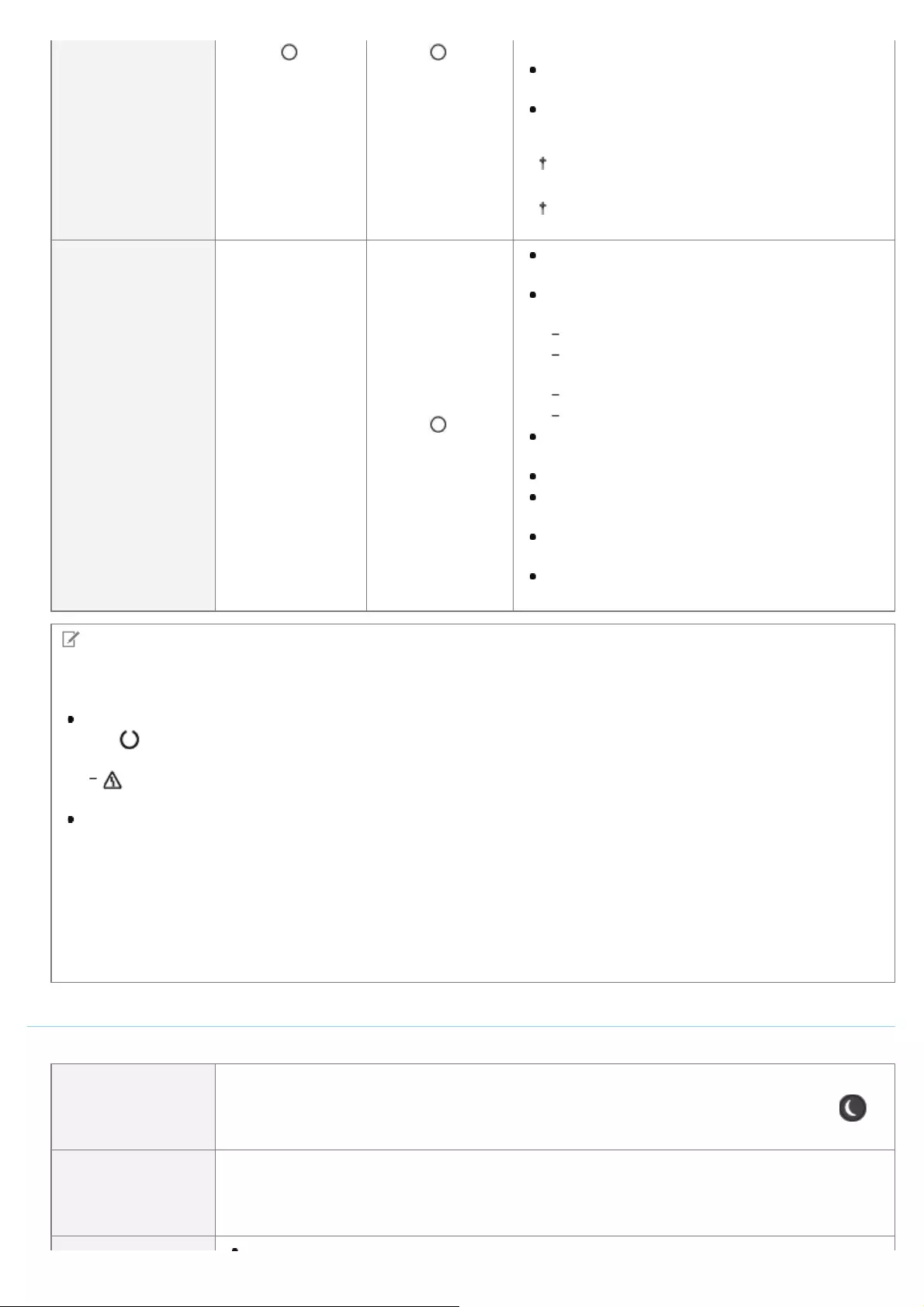
Mode)
Power saving
effect: Middle
The toner cartridge is installed.
A toner cartridge has not reached the end of
its life.
The printer is not cooling down. (The cooling
fan stops.)
The printer takes up to about 5 minutes to
fully cool down.
It is not accessing USB memory.
Sleep Mode 2
(Deep Sleep mode)
Power saving
effect: Large
-
The conditions to enter Sleep Mode 2 are
fulfilled.
The following setting items in the [Network]
options are set to [Off].
[WINS Resolution] in [TCP/IP Settings]
[IPSec] in [TCP/IP Settings] (LBP7680Cx
only)
[AppleTalk]
[SMB Server] in [SMB] (LBP7680Cx only)
The printer has not communicated on the
network for more than 15 seconds.
An interface cable is not connected.
The SNTP or DHCP communication is not to
be performed within 1 minute.
It is not accessing USB memory or the SD
card (LBP7680Cx only)
The Wake Up function is not to be performed
within 1 minute.
NOTE
To check which Sleep Mode the printer has entered
You can check Sleep Mode using indicators on the control panel.
Sleep Mode 1
The Ready indicator and Main Power indicator come on.
However, the following indicator may come on.
Message Indicator
Comes on if the printer enters Sleep Mode when it is offline.
Sleep Mode 2
Only the Main Power indicator comes on.
To configure the printer so that it does not enter Sleep Mode when an error occurs
Set [Sleep Even if Error] to [Off].
When using a utility software related to network
When you are using some type of utility software related to network and you set Sleep Mode to [High (Deep Sleep)],
communications may fail. When using such type of utility software, please release Sleep Mode.
Releasing Sleep Mode
The following are the methods to release Sleep Mode.
Releasing Sleep
Mode using the
printer's control
panel
Press the key on the printer's control panel.
If the printer has entered Sleep Mode 2, however, you can release the mode only when [ ]
(Energy Saver) is pressed.
Releasing Sleep
Mode on the
designated time
every day
Set the [Wake Up Timer] under [Timer Settings] to [On], and set the time when it automatically
cancels the Sleep Mode in [Wake Up Time].
㻢㻠㻡㻌㻛㻌㻥㻥㻤
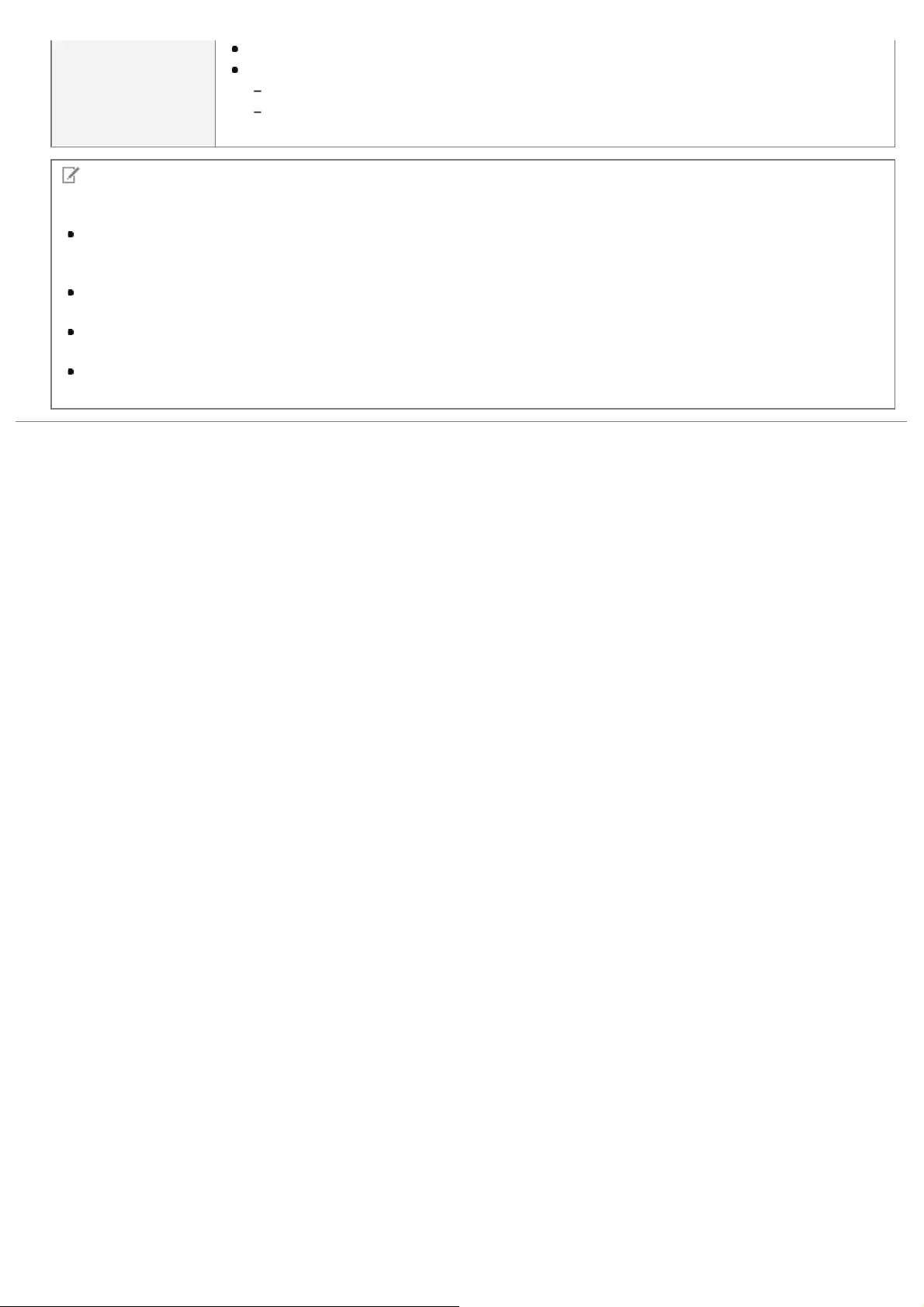
Releasing Sleep
Mode from a
computer
Send data to the printer.
Perform the following in the Remote UI.
Perform the operations in the [Output/Control] menu under [Settings/Registration]
Display and set the [User Maintenance Menu] page in the [Preferences] menu under
[Settings/Registration]
NOTE
Sleep Mode is released also in the following cases.
When an error is occurring
Sleep Mode 1 is released also when an error is occurring.However, Sleep Mode 2 may not be released depending
on the error type.
When connecting a network cable
The printer enters Sleep Mode 1 from Sleep Mode 2.
When the printer is connected to a network or receives the unicast packet
Sleep Mode 2 is released.
When devices on a network are searched from application software or utility software
Sleep Mode 2 is released.
㻢㻠㻢㻌㻛㻌㻥㻥㻤
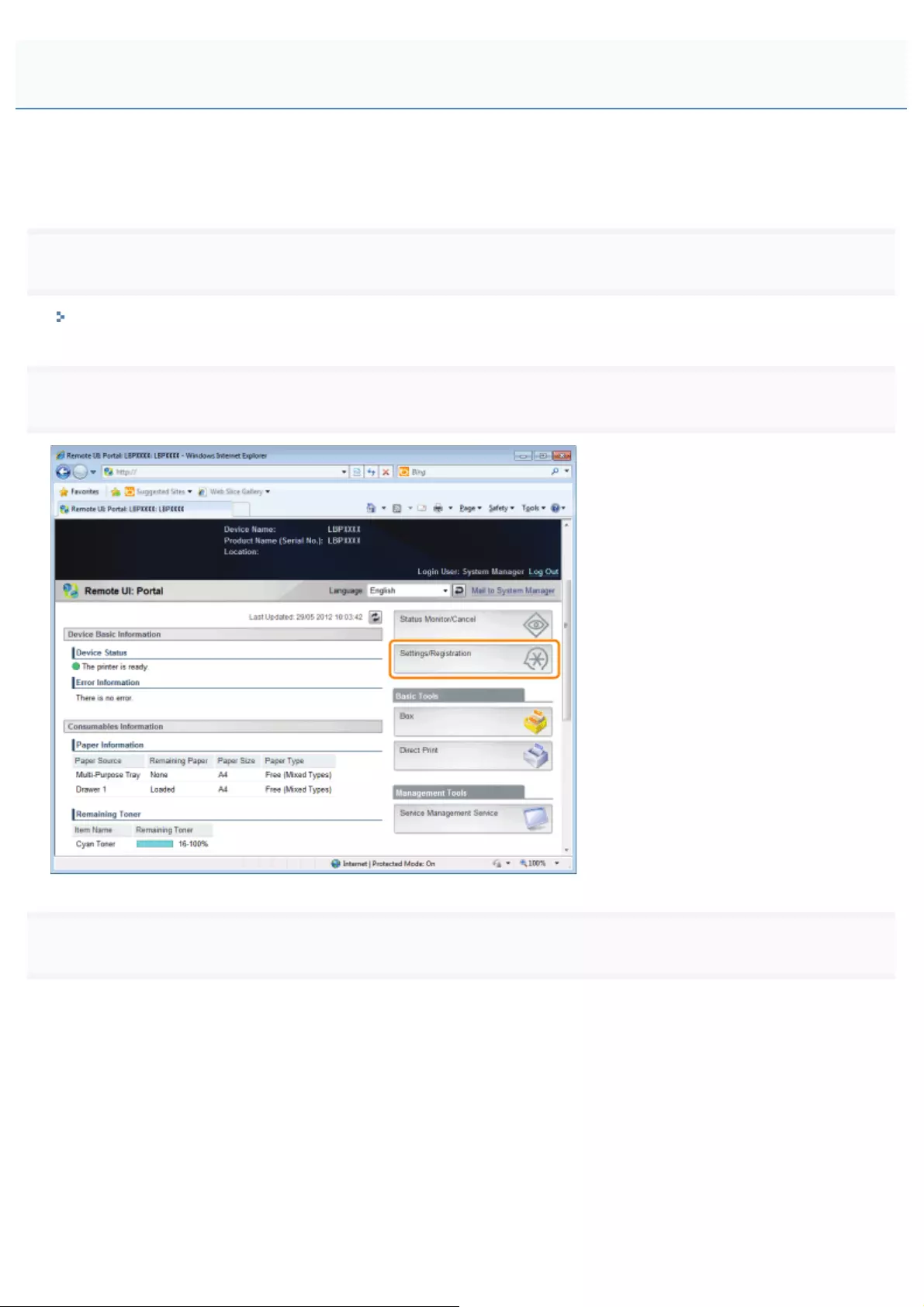
0258-0U1
You can specify the settings for auto shutdown using the following procedure.
This setting is made using the Remote UI.
1
Start the Remote UI, and then log in as Administrator.
"Starting the Remote UI"
2
Click [Settings/Registration].
3
Select [Control Menu] from the [Preferences] menu.
Auto Shutdown
㻢㻠㻣㻌㻛㻌㻥㻥㻤
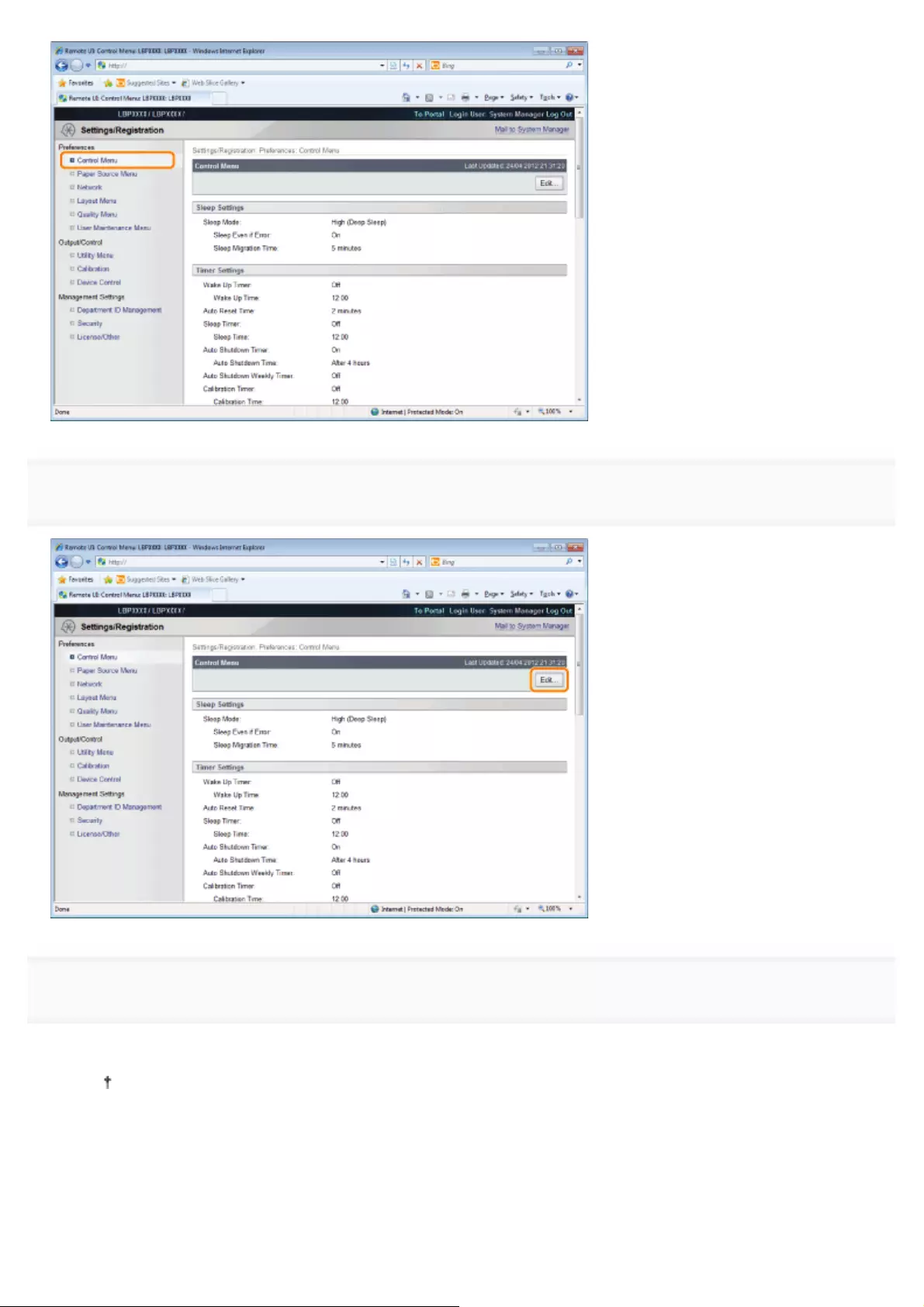
4
Click [Edit...].
5
Specify the settings for auto shutdown.
(1) Select the [Use Auto Shutdown Timer] check box.
The default setting is that it is enabled.
(2) Specify the time to shut down in [Auto Shutdown Time].
㻢㻠㻤㻌㻛㻌㻥㻥㻤
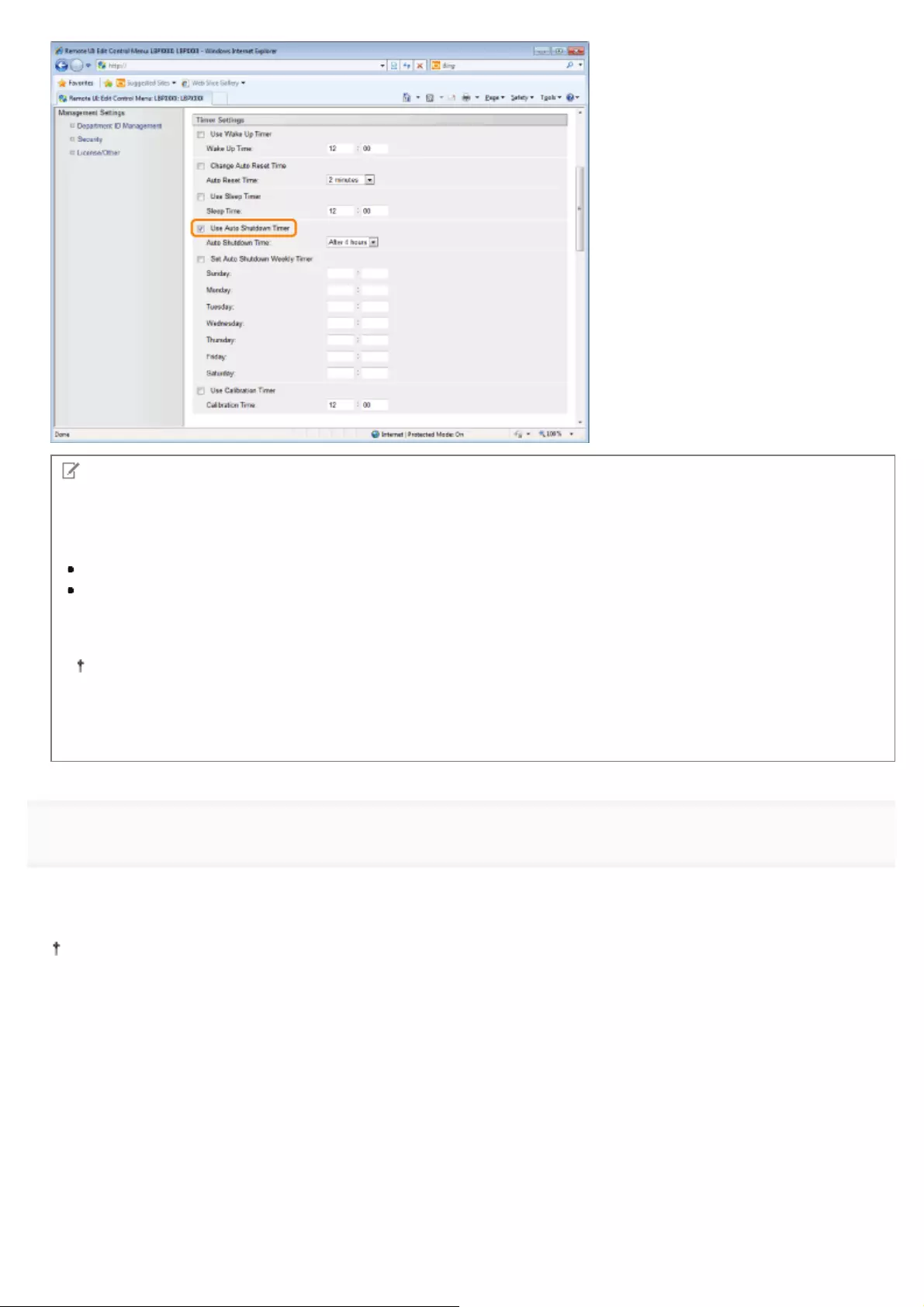
NOTE
About the setting for the time to execute auto shutdown
When [Auto Shutdown Time] is changed during sleep mode, the specified time to execute auto shutdown becomes
effective in the following cases.
When the printer is recovered from sleep
When the power of the printer is cycled
You can specify [Auto Shutdown Time] for auto shutdown with 1 hour increments between [After 1 hour] and [After 8
hours].
If you specify the setting for this option shorter than the default setting, this may shorten the life of the toner
cartridges (the default setting is "4" hours).
If the printer is not turned OFF immediately
Depending on the process in the printer, it may take up to 10 minutes to turn the printer OFF.
6
Set the auto shutdown weekly function as needed.
(1) Select the [Set Auto Shutdown Weekly Timer] check box.
(2) Specify the day and time when to execute auto shutdown.
All the default settings are that it is disabled.
㻢㻠㻥㻌㻛㻌㻥㻥㻤
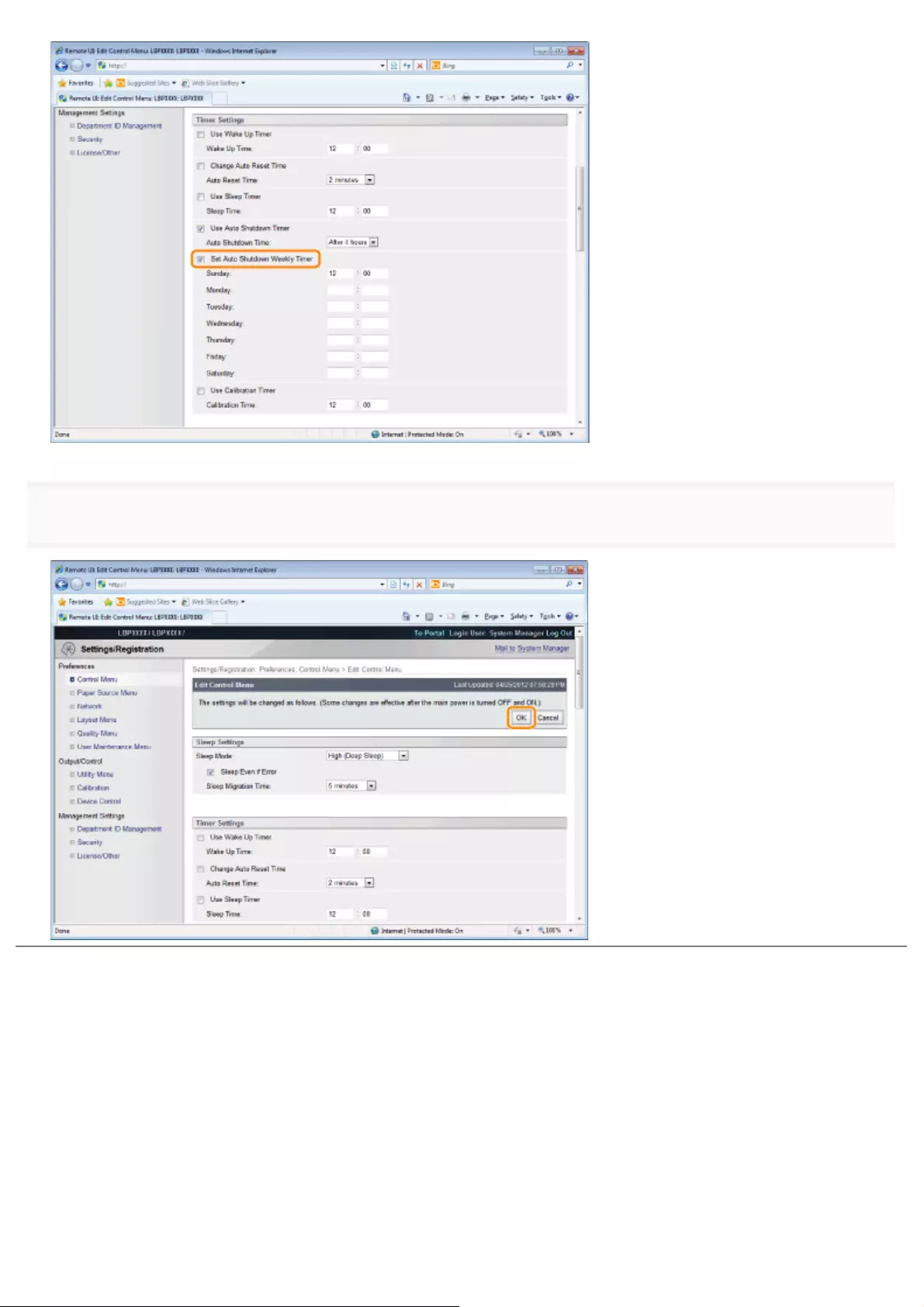
7
Click [OK].
㻢㻡㻜㻌㻛㻌㻥㻥㻤
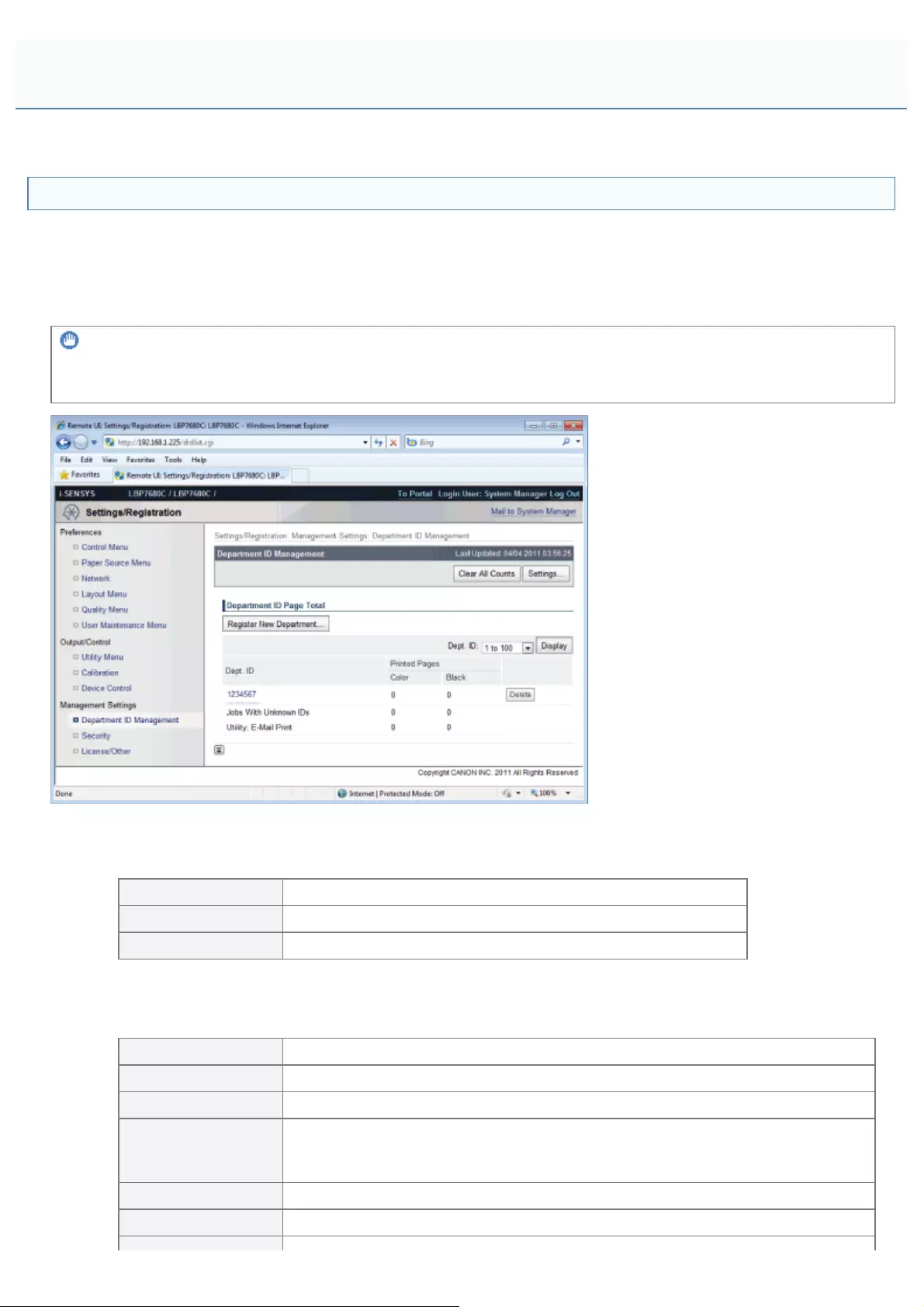
0258-09K
Displaying or Changing the Departmental ID Management Settings
You can manage the number of [Printed Pages]* on a departmental basis by specifying IDs for each department and
entering an ID when printing.
* [Printed Pages] indicates the number of printed surfaces. If you perform 2-sided printing on a sheet of paper, the
number of the printed surfaces is two.
IMPORTANT
Register more than one Department IDs before enabling Department ID Management, which will have no effect with no
Department ID registered.
(1) [Register New Department]
(Displayed only if you have logged on in Administrator Mode.)
Clicking this button displays the [Register New Department] page. You can specify the following settings.
[Department ID] Enter the department ID using a number with up to seven digits.
[PIN] Enter the password using a number with up to seven digits.
[Confirm] Enter the number specified in [PIN].
(2) [Dept. ID]
(Clickable only if you have logged on in Administrator Mode.)
Clicking the department ID displays the [Edit Department] page. You can specify the following settings.
[Department ID] Enter the department ID using a number with up to seven digits.
[PIN] Enter the password using a number with up to seven digits.
[Confirm] Enter the number specified in [PIN].
[Clear Count]
(Not displayed depending on the settings.)
Click [Printed Pages] ([Total Print], [Black Print] and [Color Print]) for this
Department ID.
[Total Print] Displays the number of printed surfaces.
[Black Print] It displays the number of pages printed in black and white.
Specifying an ID for Each Department (LBP7680Cx Only)
㻢㻡㻝㻌㻛㻌㻥㻥㻤
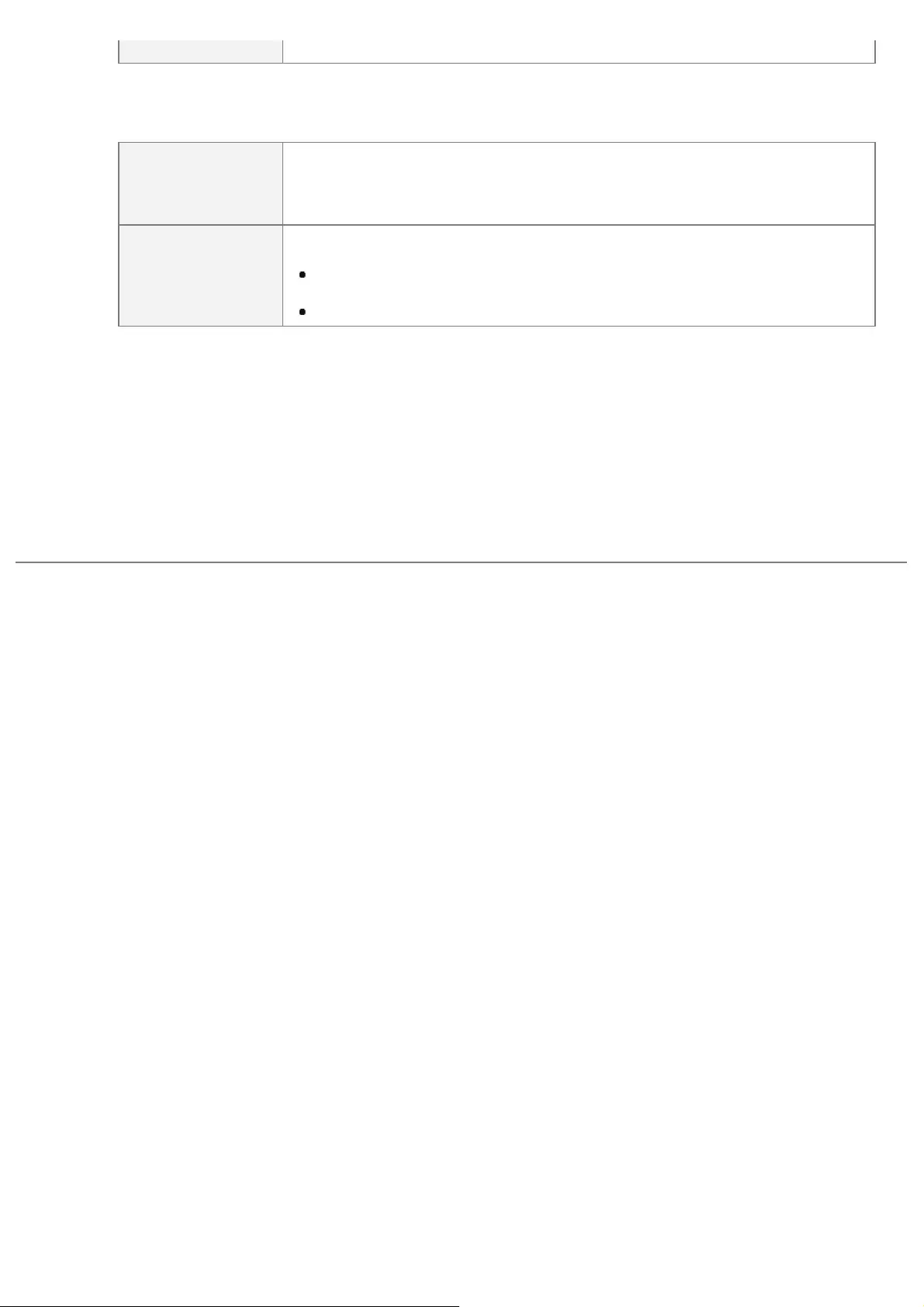
[Color Print] It displays the number of pages printed in color.
(3) [Settings...]
(Displayed only if you have logged on in Administrator Mode.)
Clicking this button displays the [Department ID Management Settings] page. You can specify the following settings.
[Enable Department
ID Management]
If the check box for this option is selected, you need to enter a department ID and
password when printing. You also need to enter a department ID and password
when you perform direct printing or manipulate boxes from the Remote UI. Jobs
which failed to be authenticated are deleted.
[Accept Print Jobs
With Unknown IDs]
If the check box for this option is selected, you can print jobs with unknown IDs.
Jobs with unknown IDs indicate the following kinds of jobs.
Jobs printed by a printer driver which does not support the department ID
management
Jobs directly printed using a method other than the Remote UI
(4) [Printed Pages]
Displays the number of printed surfaces.
(5) Delete the Selected Department
(Displayed only if you have logged on in Administrator Mode.)
If you click [Delete] to the right of the Dept. ID to be deleted, the selected Dept. ID is deleted.
(6) [Clear All Counts]
(Not displayed depending on the settings.)
Clears [Total Print] of all the departments.
㻢㻡㻞㻌㻛㻌㻥㻥㻤

0258-0S6
Available Functions
Installing the System Options/MEAP Applications
Installing by Connecting This Printer to an Outside Network (Delivery)
Installing by Not Connecting This Printer to an Outside Network (Manual)
Downloading the Manuals and Related Software
Updating the Firmware
Managing the Register/Update Software Function
Register/Update Software Function (LBP7680Cx Only)
㻢㻡㻟㻌㻛㻌㻥㻥㻤
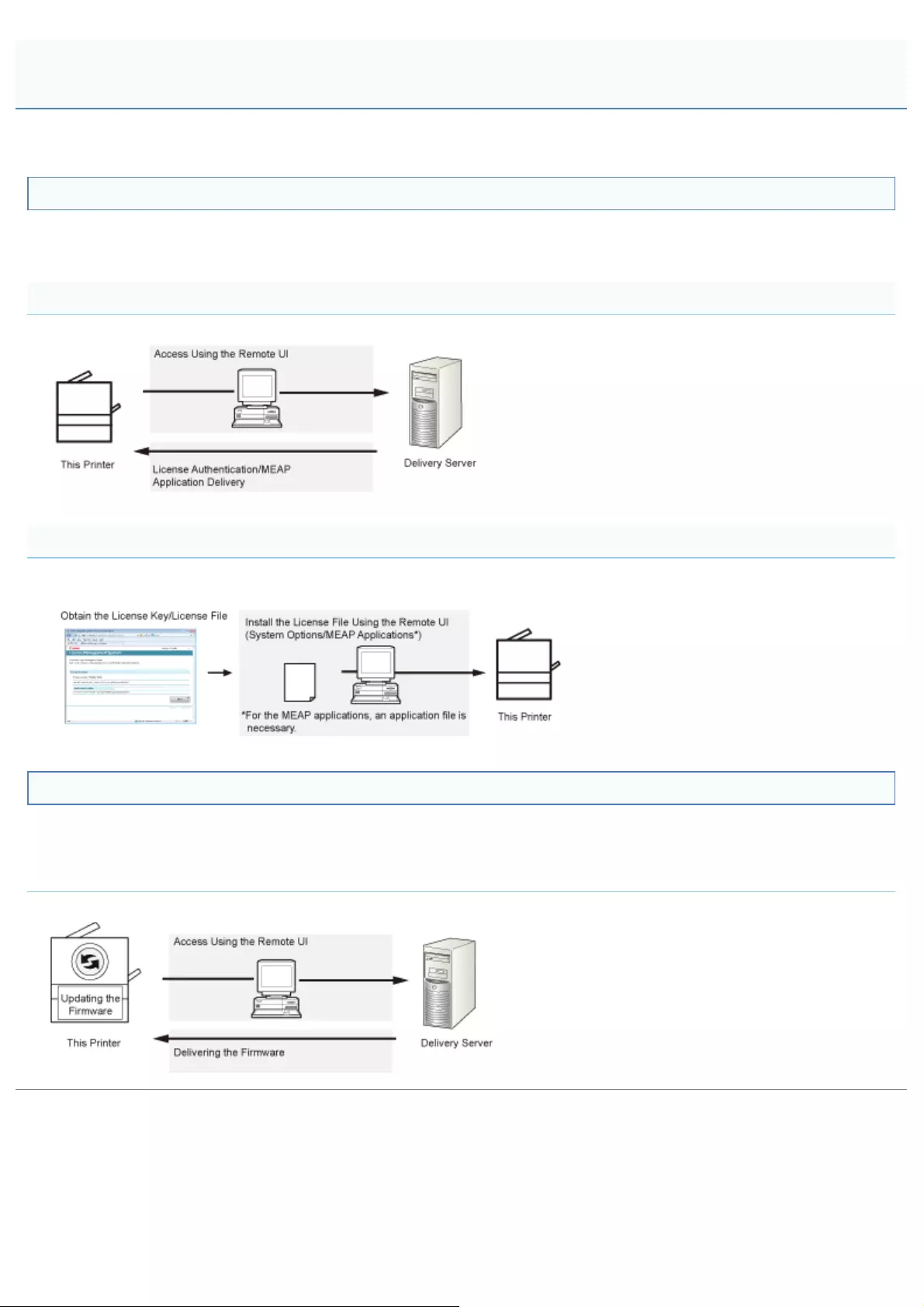
0258-0S7
Installing the System Options/MEAP Applications
Using the Register/Update Software function, you can install the System Options/MEAP Applications to the printer. You can
use this function from both the touch panel display and the computer (Remote UI).
Installing by Connecting This Printer to an Outside Network
You can install the System Options/MEAP Applications by accessing the delivery server from this printer.
Installing by Not Connecting This Printer to an Outside Network
You can install the System Options/MEAP Applications by using the license file/license key that you obtained from the
License Management System.
Updating the Firmware
Using the Register/Update Software function, you can update the firmware of the printer to the most recent version. You
can use this function from the computer (Remote UI).
Updating by Connecting This Printer to an Outside Network
You can update the firmware by accessing the delivery server from this printer.
Available Functions
㻢㻡㻠㻌㻛㻌㻥㻥㻤
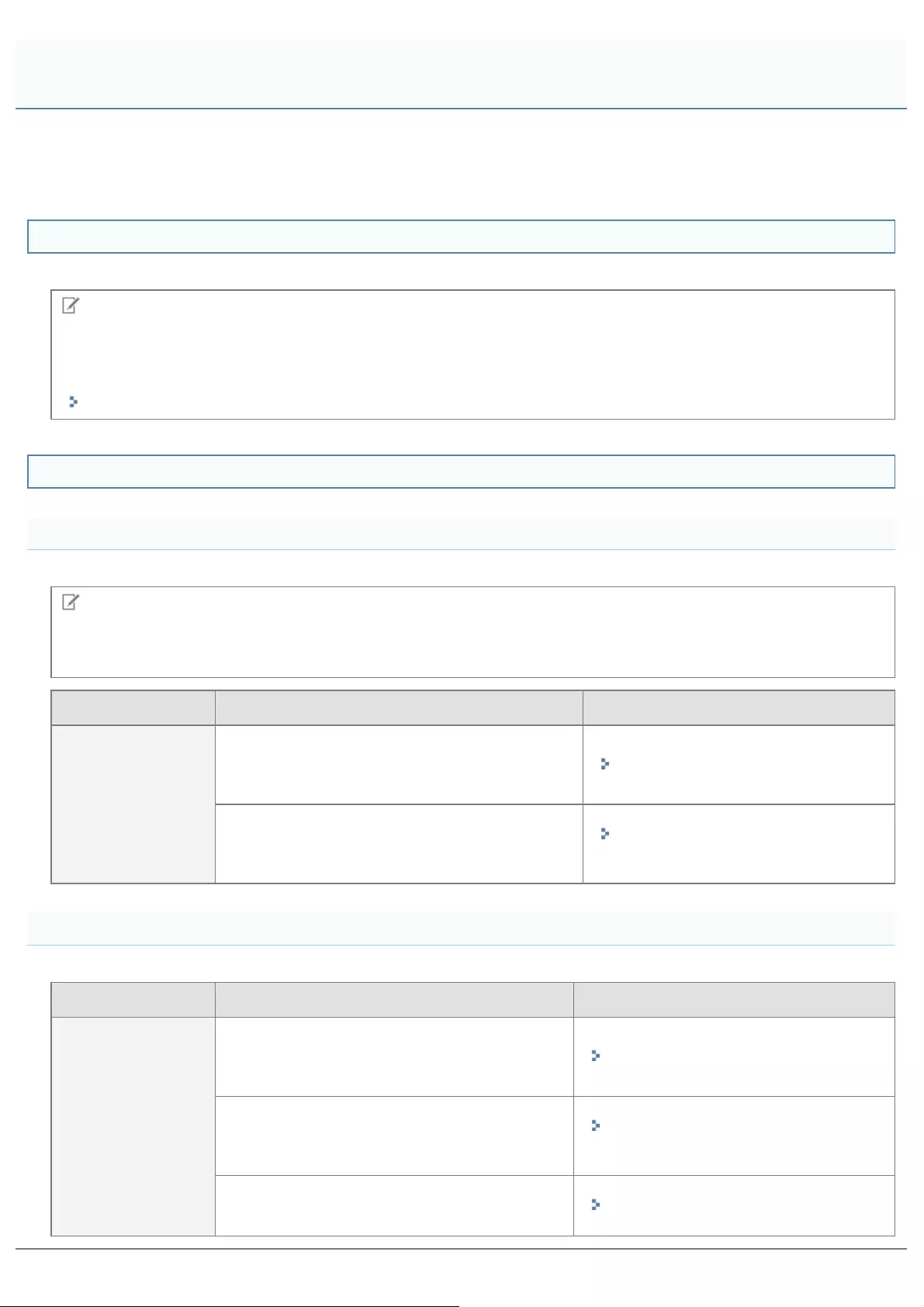
0258-0S8
The procedures to install the system options or MEAP applications on the printer differ, depending on whether the printer is
connected or not to an outside network. Select the procedure that matches your conditions using the references below.
Installing by Connecting this Printer to an Outside Network
Install from the Remote UI.
NOTE
Communication test
To check that the transmission with the delivery server is properly operating, if necessary, perform a communication test
before installation.
"Testing Communication Using the Remote UI"
Installing by Not Connecting this Printer to an Outside Network
Installing System Options
Install using one of the following procedures.
NOTE
If you install multiple system options
We recommend that you install from the Remote UI.
Procedure Necessary Steps Reference Page
Using the Remote
UI to install
1. Obtain the license file from the License
Management System "Obtaining the License File"
2. Install the license file using the Remote
UI "Installing the System Options Using
the Remote UI"
Installing MEAP Applications
Use the following procedure to install.
Procedure Necessary Steps Reference Page
Using the Remote
UI to install
1. Obtain the license file from the License
Management System "Obtaining the License File"
2. Install the license file and application file
using the Remote UI "Installing the MEAP Applications
Using the Remote UI"
3. Start the MEAP applications from SMS "Starting the MEAP Applications"
Installing the System Options/MEAP Applications
㻢㻡㻡㻌㻛㻌㻥㻥㻤
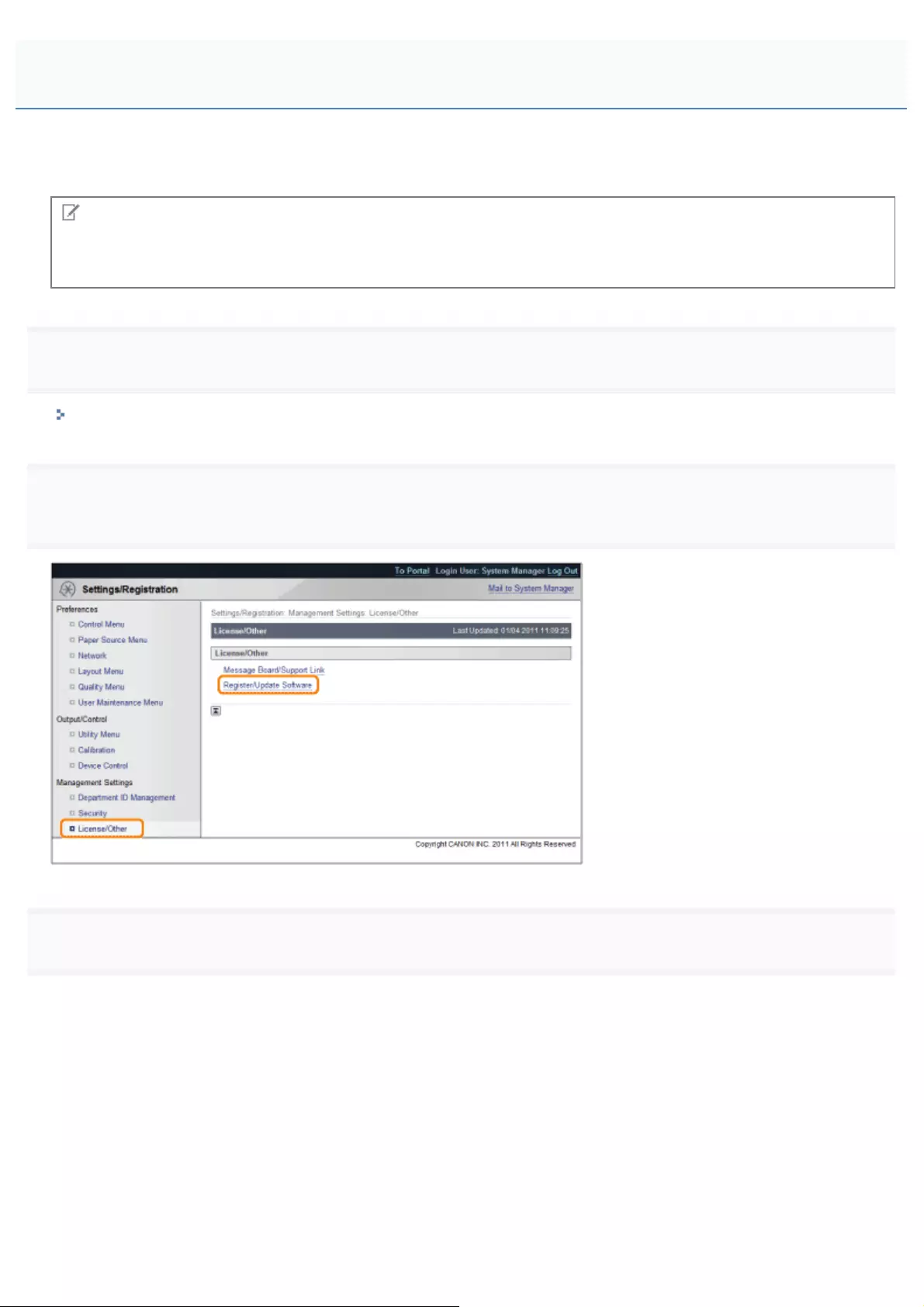
0258-0S9
If the printer is connected to an outside network, you can install the system options and MEAP applications from the
Remote UI by linking with the delivery server.
NOTE
Preparing a license access number certificate
Make sure that the license access number that is included with the package is available.
1
Start the Remote UI, and then log in as Administrator.
"Starting the Remote UI"
2
[Register/Update Software].
3
Click [Delivered Installation].
Installing by Connecting This Printer to an Outside Network (Delivery)
㻢㻡㻢㻌㻛㻌㻥㻥㻤
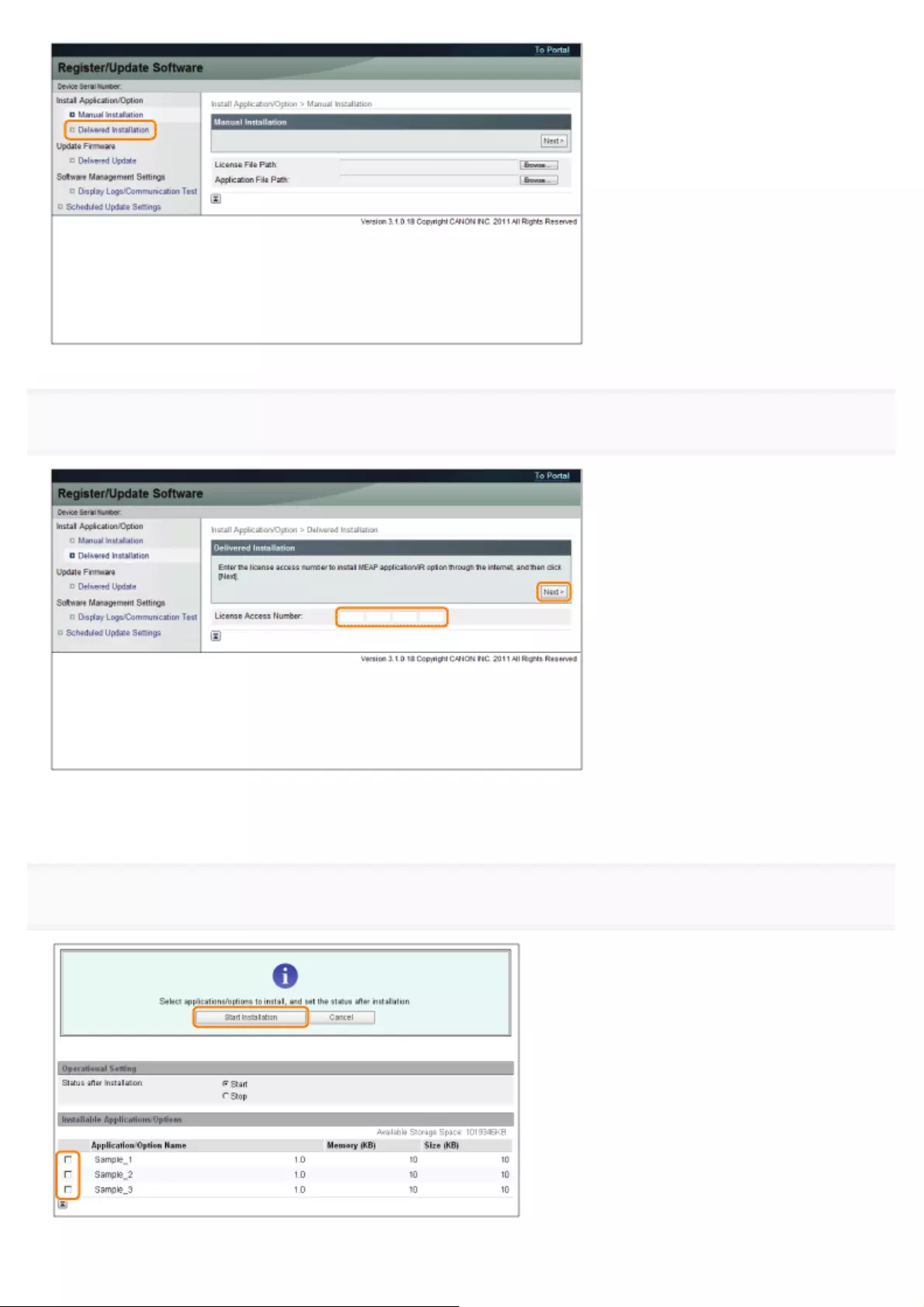
4
Once the license access number is confirmed after contacting the delivery server, information for the system options/MEAP
applications you can install are displayed.
5
㻢㻡㻣㻌㻛㻌㻥㻥㻤

Status after Installation:
Start: Starts the installed MEAP applications.
Stop: Stops the installed MEAP applications.
IMPORTANT
If [Stop] is selected when installing MEAP applications
You need to start the application before using the MEAP application.
"Starting/Stopping MEAP Applications"
If the agreement screen is displayed, read the agreement. If you abide with the agreement, click [Accept].
6
Check the Installation Result page.
When the installation of the system options is completed, the message <Restart the device.> appears. Restart the printer to
enable the function.
To return to the Delivered Installation screen, click [To Delivered Installation].
NOTE
The manual for system options/MEAP applications
You can download the manual for the installed system options/MEAP applications by accessing the URL for the manual
download site displayed on the Installation Result screen.
"Downloading the Manuals and Related Software"
㻢㻡㻤㻌㻛㻌㻥㻥㻤
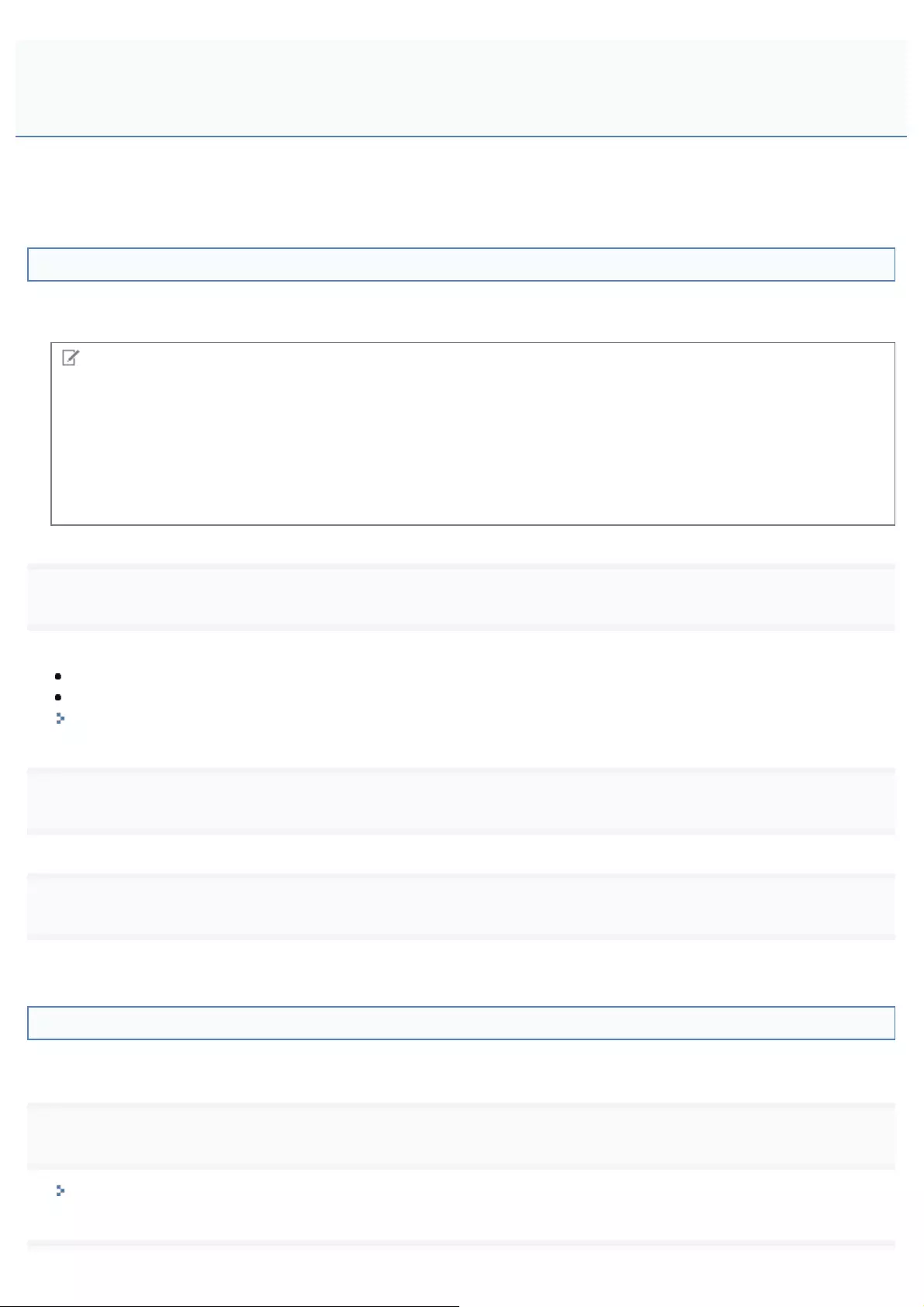
0258-0SA
This section describes how to install the system options and MEAP applications without connecting the printer to an outside
network.
Obtaining the License File
Obtain the license file.
License file: Obtain the license file when installing the system options/MEAP applications using the Remote UI.
NOTE
Preparing a license access number certificate
Make sure that the license access number that is included with the package is available.
License access number is not printed on the package of the MEAP application
If the license access number is not printed on the package of the MEAP application you are using, the license file is
issued by the distributor of the MEAP application. You do not need to obtain the license file explained in this section. For
more information, see the manual for each MEAP application.
1
Check the management number you need to obtain the license file.
To obtain the license file, the following management number is required.
License Access Number: Check the license access number certificate.
Device Serial Number: You can check from the control panel.
"[Utility Menu] Menu"
2
Access http://www.canon.com/lms/license/.
3
Follow the instructions on the screen and obtain the license file.
Next, install the system options or the MEAP applications.
Installing the System Options Using the Remote UI
You can install the system options to the printer using the Remote UI.
1
Start the Remote UI, and then log in as Administrator.
"Starting the Remote UI"
Installing by Not Connecting This Printer to an Outside Network
(Manual)
㻢㻡㻥㻌㻛㻌㻥㻥㻤
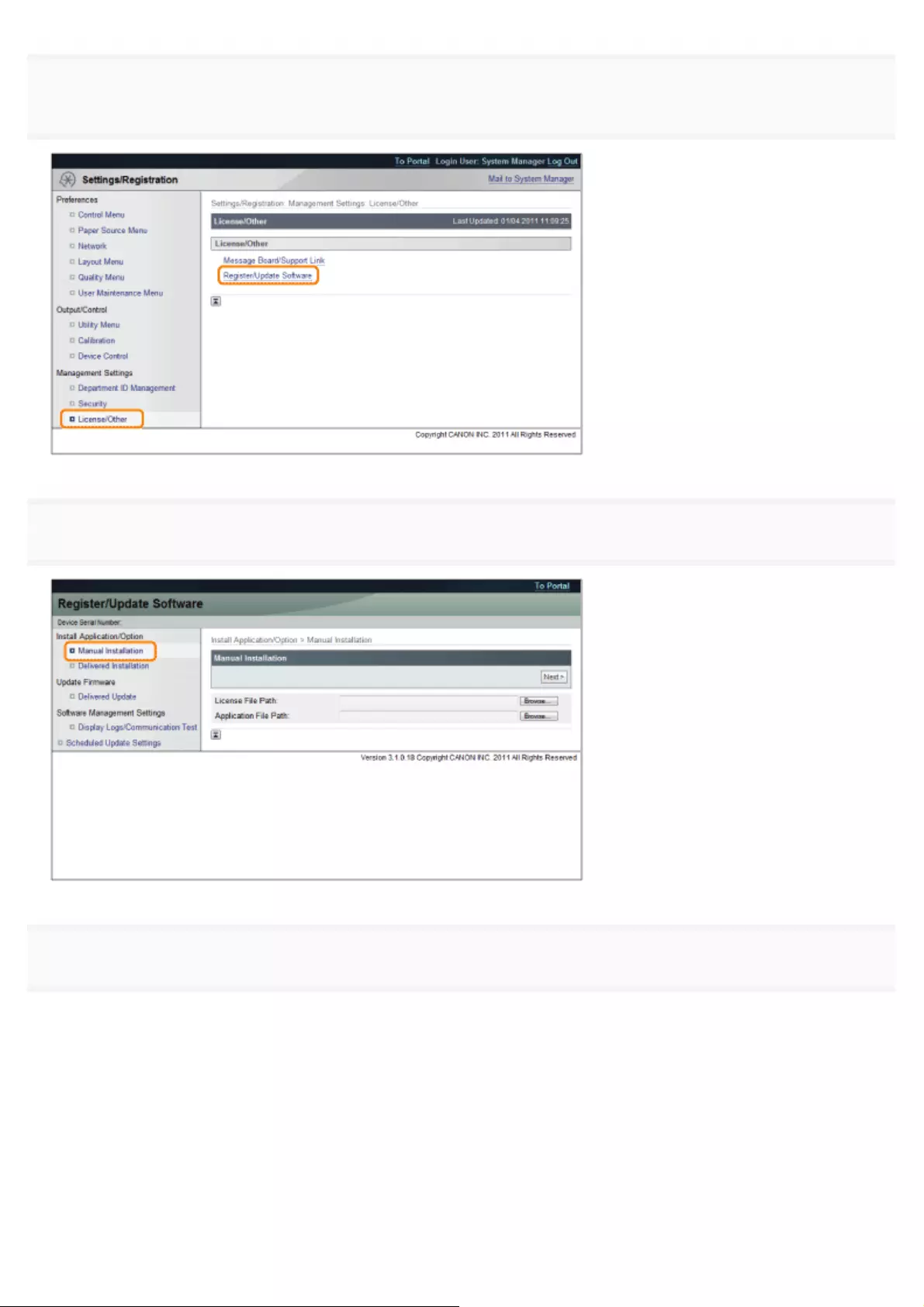
2
[Register/Update Software].
3
Click [Manual Installation].
4
㻢㻢㻜㻌㻛㻌㻥㻥㻤
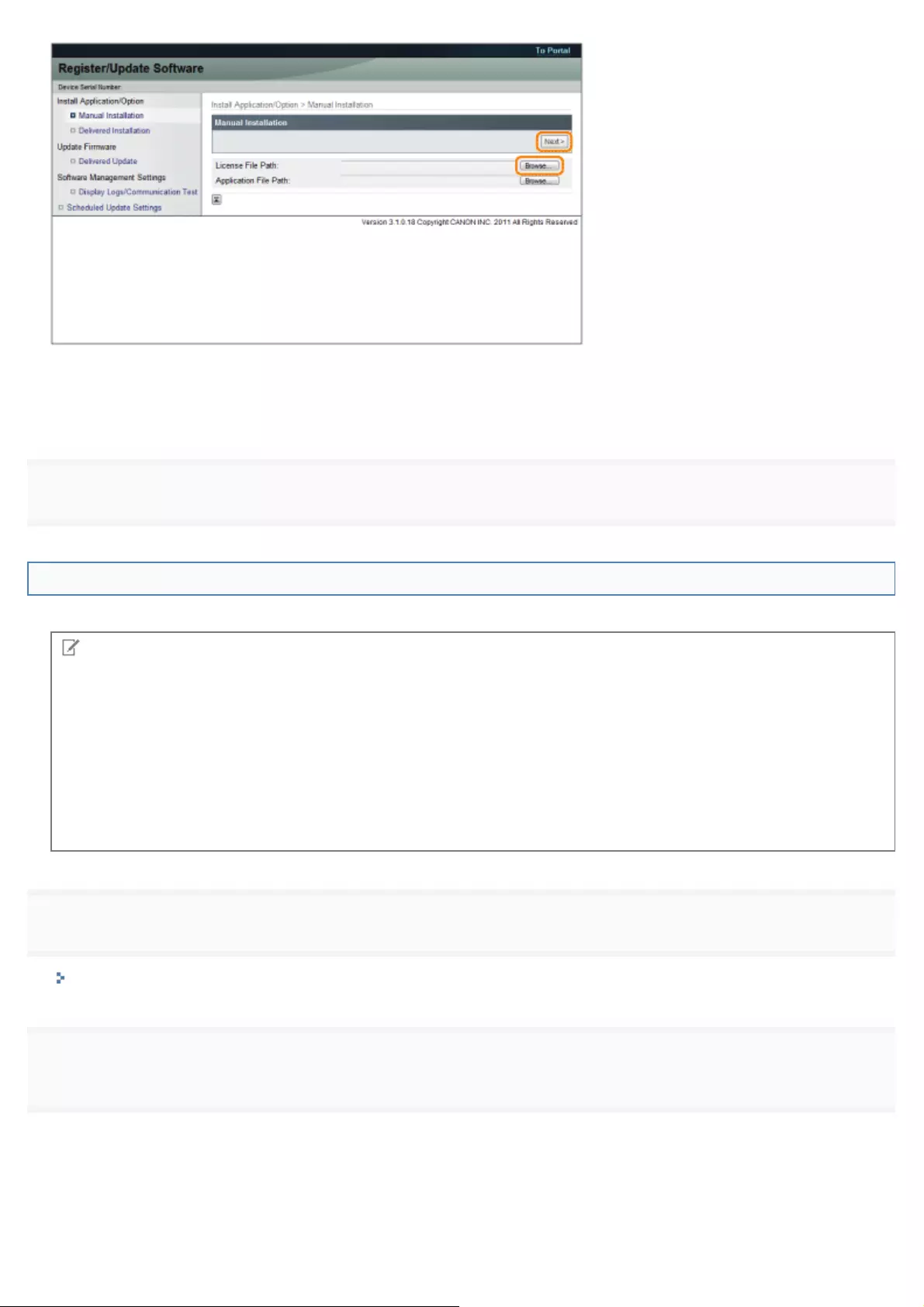
File extensions:
License File: A file with the [lic] extension.
5
Installing the MEAP Applications Using the Remote UI
You can install the MEAP applications to the printer using the Remote UI.
NOTE
The number of MEAP applications that can be installed
You can install up to eight applications.
Memory area that can be used
The maximum amount of memory allocated to install MEAP applications is 32MB.
For details on MEAP applications
There may be other system requirements for installation, depending on the MEAP applications. For instructions on
settings, see the manual provided with the MEAP application.
1
Start the Remote UI, and then log in as Administrator.
"Starting the Remote UI"
2
[Register/Update Software].
㻢㻢㻝㻌㻛㻌㻥㻥㻤
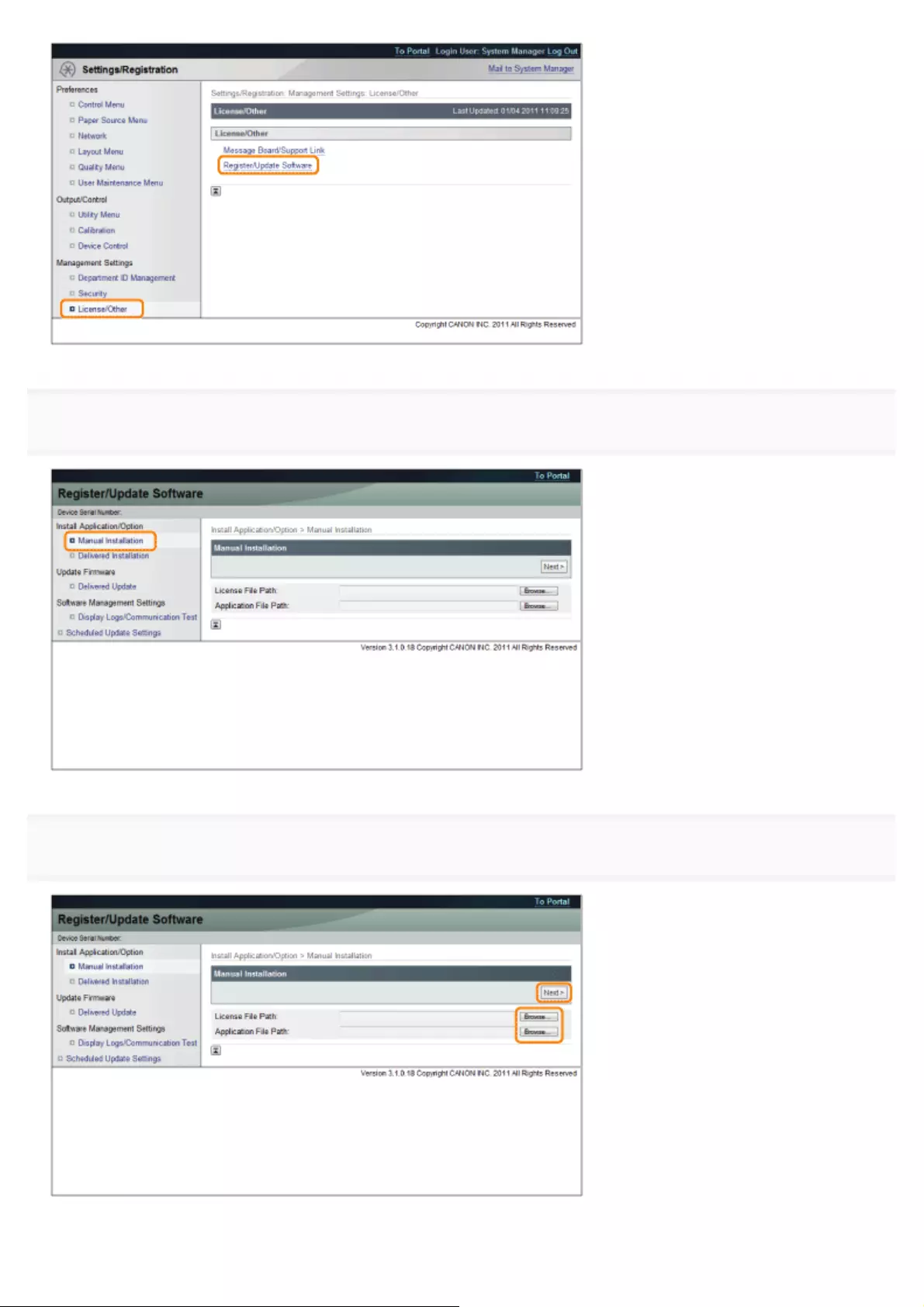
3
Click [Manual Installation].
4
File extensions:
㻢㻢㻞㻌㻛㻌㻥㻥㻤
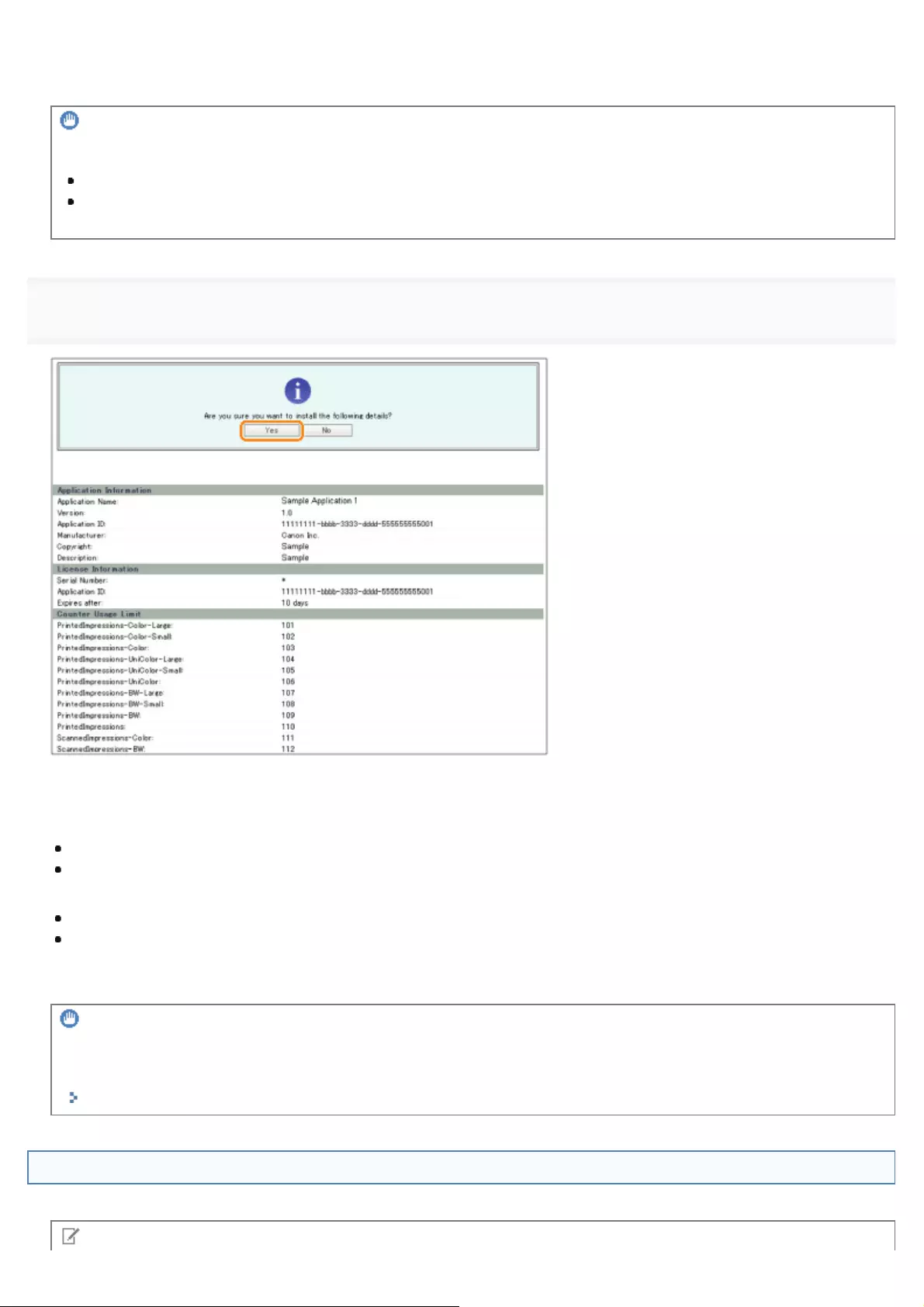
License File: A file with the [lic] extension.
Application File: A file with the [jar] extension.
IMPORTANT
When you install MEAP applications
You cannot install license files only.
When installing the MEAP application, make sure you specify the license file. You cannot install the MEAP
application without specifying the license file.
5
Depending on the MEAP application, a software license agreement screen may be displayed. Confirm the information
GLVSOD\HGRQWKHVFUHHQĺFOLFN>2.@
If you are installing a new MEAP application, the following information is displayed on the screen.
Application Information
License Information
The following information is displayed when you overwrite a MEAP application.
Current Application Information
Application Information after Overwrite
Installation will start after the message <Installing... Please wait.> is displayed again. After the installation, click [To Manual
Installation] to display the Manual Installation screen.
IMPORTANT
To use MEAP applications
To use the installed MEAP application, you must start the MEAP application.
"Starting/Stopping MEAP Applications"
Starting the MEAP Applications
This section describes how to start the installed MEAP application from the SMS screen.
NOTE
㻢㻢㻟㻌㻛㻌㻥㻥㻤
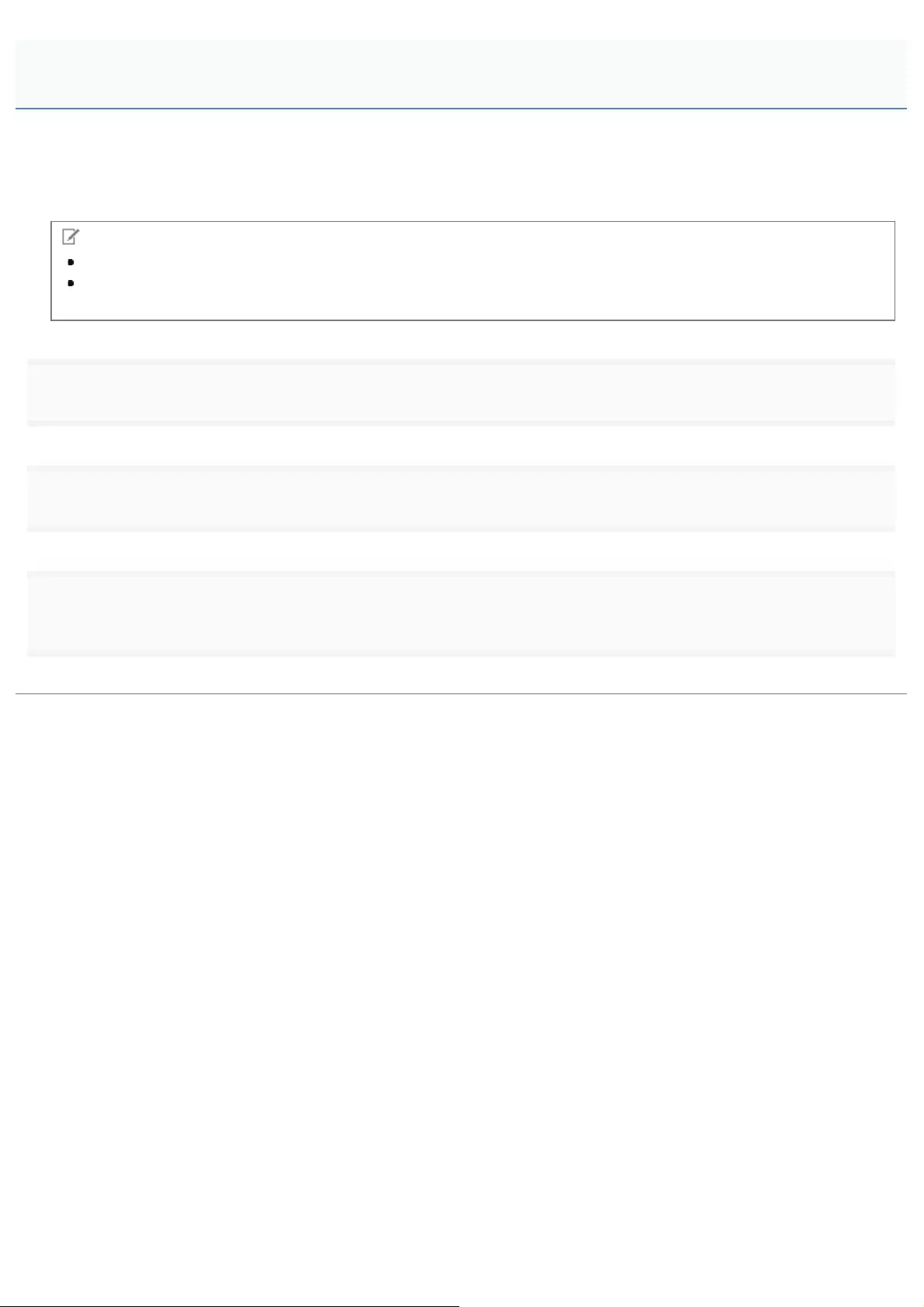
0258-0SC
You can download the manuals for the installed system options/MEAP applications and their related software from the
following URL.
http://canon.com/fau/downloads
NOTE
Make sure that the license access number that is included with the package is available.
If you installed from the Remote UI, you can jump to the above URL from the link displayed on the Installation
Result screen. If you do so, the license access number is entered automatically.
1
Start the Web browser on your computer.
2
Enter the URL in [Address].
3
After entering the license access number, follow the instructions on the screen to download the
manuals and related software.
If software is downloaded, refer to the manual of that software to install.
Downloading the Manuals and Related Software
㻢㻢㻡㻌㻛㻌㻥㻥㻤
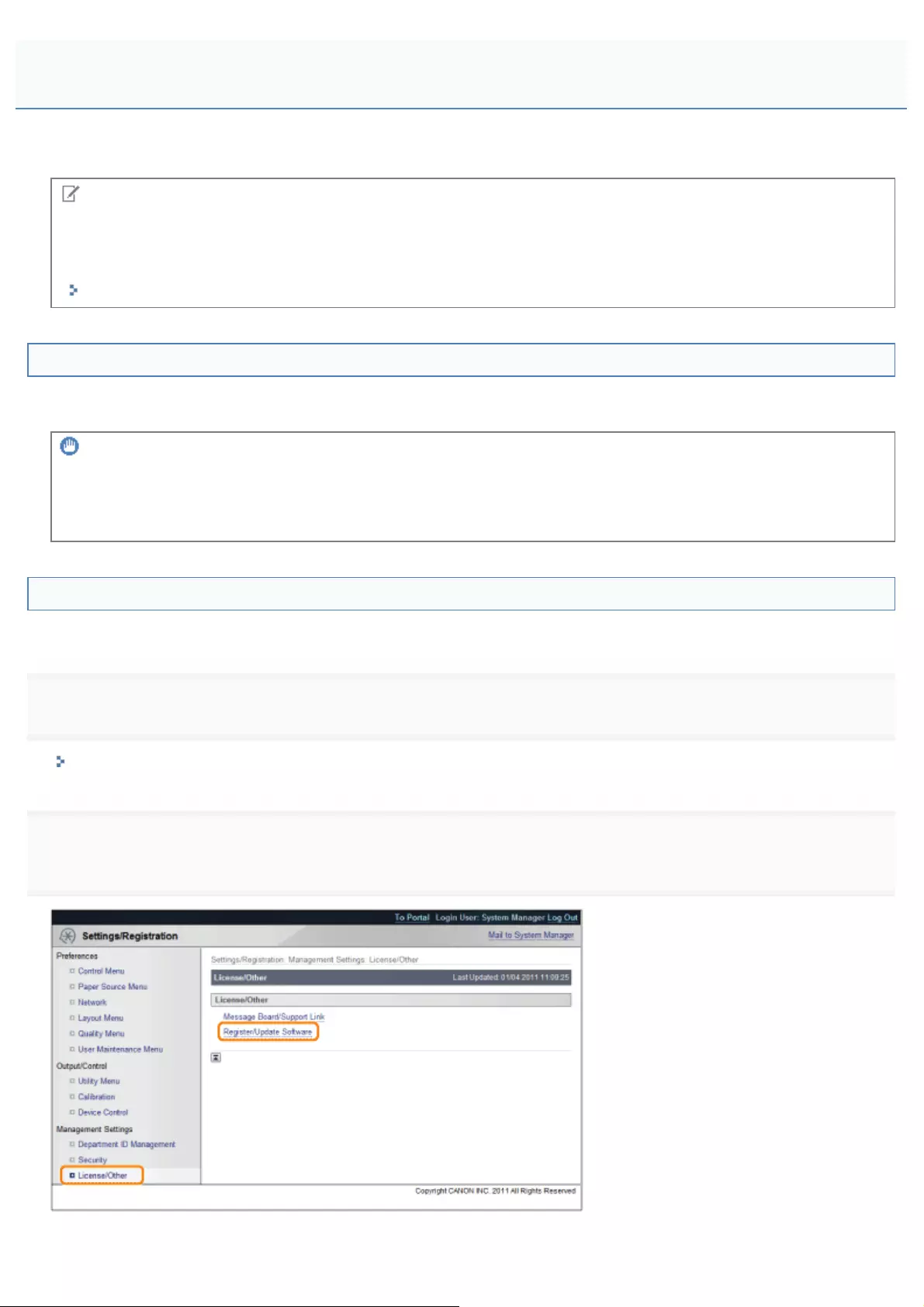
0258-0SE
Update from the Remote UI.
NOTE
Communication test
To check that the transmission with the delivery server is properly operating, if necessary, perform a communication test
before installation.
"Testing Communication Using the Remote UI"
Updating by Connecting This Printer to an Outside Network
If the printer is connected to an outside network, you can update to a most recent firmware by linking with the delivery
server.
IMPORTANT
Estimated time required to apply firmware
The time required to apply the downloaded firmware is approximately 20 minutes. This operation may take more time
depending on the system configuration and network environment of your printer.
Checking the New Firmware/Specifying the Delivery Settings
You can check the new firmware that is applicable with the printer and specify the delivery settings.
1
Start the Remote UI, and then log in as Administrator.
"Starting the Remote UI"
2
[Register/Update Software].
Updating the Firmware
㻢㻢㻢㻌㻛㻌㻥㻥㻤

3
Click [Delivered Update].
4
Click [Confirm New Firmware].
Contact the delivery server for information on whether an applicable new firmware is available or not.
5
If the agreement screen is displayed, read the agreement. If you abide with the agreement, press [I Accept].
㻢㻢㻣㻌㻛㻌㻥㻥㻤
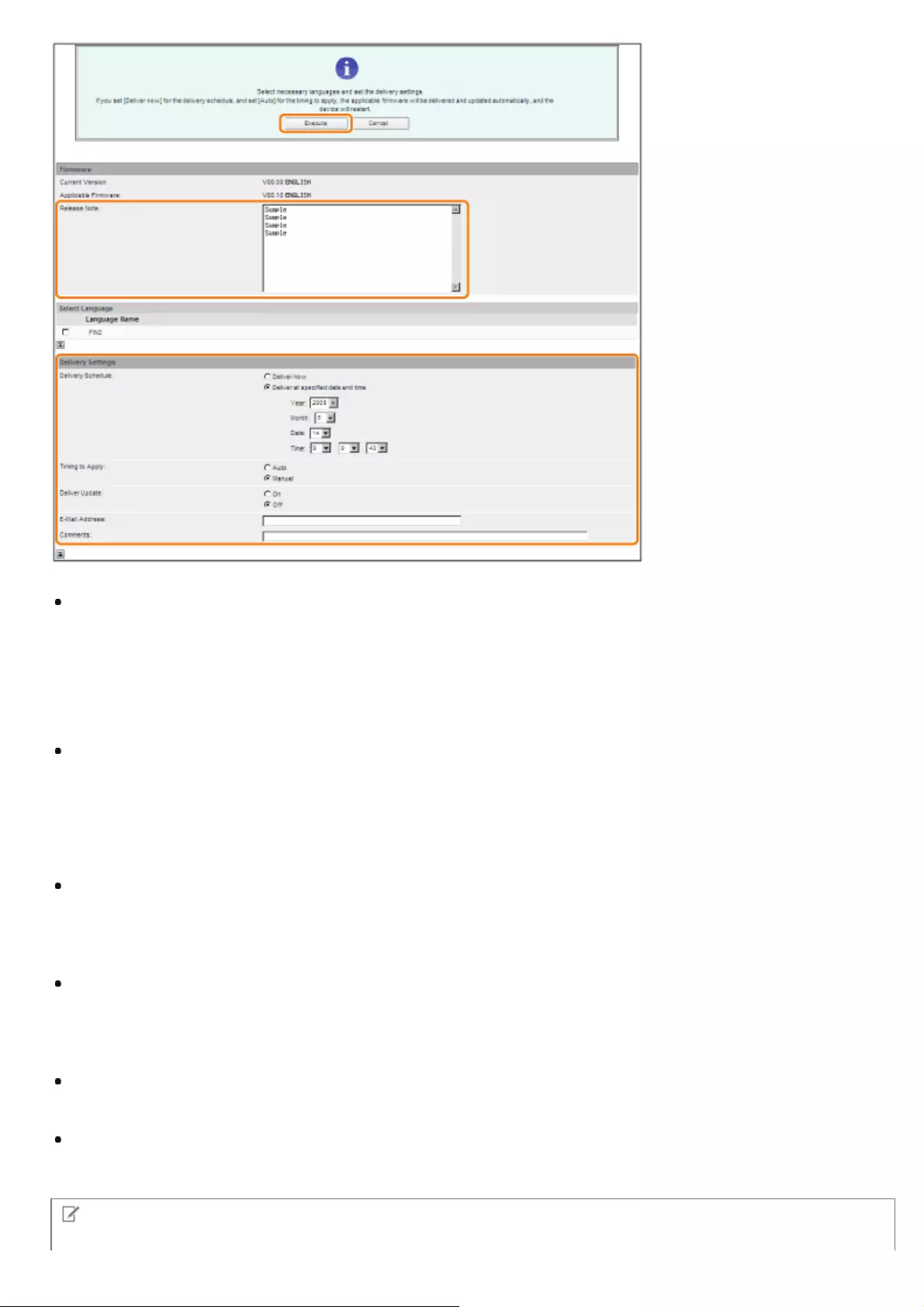
Details of each item are shown below.
Firmware:
Current Version: Displays the version of the current firmware.
Applicable Firmware: Displays the new firmware that is applicable with the printer.
Release Note: If the new firmware has a release note, that information is displayed.
Delivery Settings:
Delivery Schedule: Click "Deliver now" or " Deliver at specified date and time."
You can specify a date/time up to 30 days later for delivery schedule.
[Deliver now]: Downloads the firmware after the delivery setting is specified.
[Deliver at specified date and
time]:
Select the date/time (year, month, date, and time) to download the firmware from the
drop-down list.
Timing to Apply: Click [Auto] or [Manual].
[Auto]: The firmware is automatically applied after the download of the firmware is completed.
[Manual]: Only downloads the firmware. To apply the downloaded firmware, set from [Apply Firmware].
Deliver Update: Click [On] or [Off].
[On]: Downloads only the difference between the current firmware and the new firmware.
[Off]: Downloads the new firmware entirely.
E-Mail Address: Enter the e-mail address of the administrator. You can receive e-mails regarding the update status that
is sent from the delivery server.
You can enter up to 64 characters for the e-mail address (excluding "(," ")," "<," ">," ",," ";," ":," "”," and "\").
Comments: Enter the comment that will automatically be added to the e-mail. If the model name is entered, you can
identify which device status the e-mail is about.
You can enter up to 128 characters in Comment.
NOTE
㻢㻢㻤㻌㻛㻌㻥㻥㻤
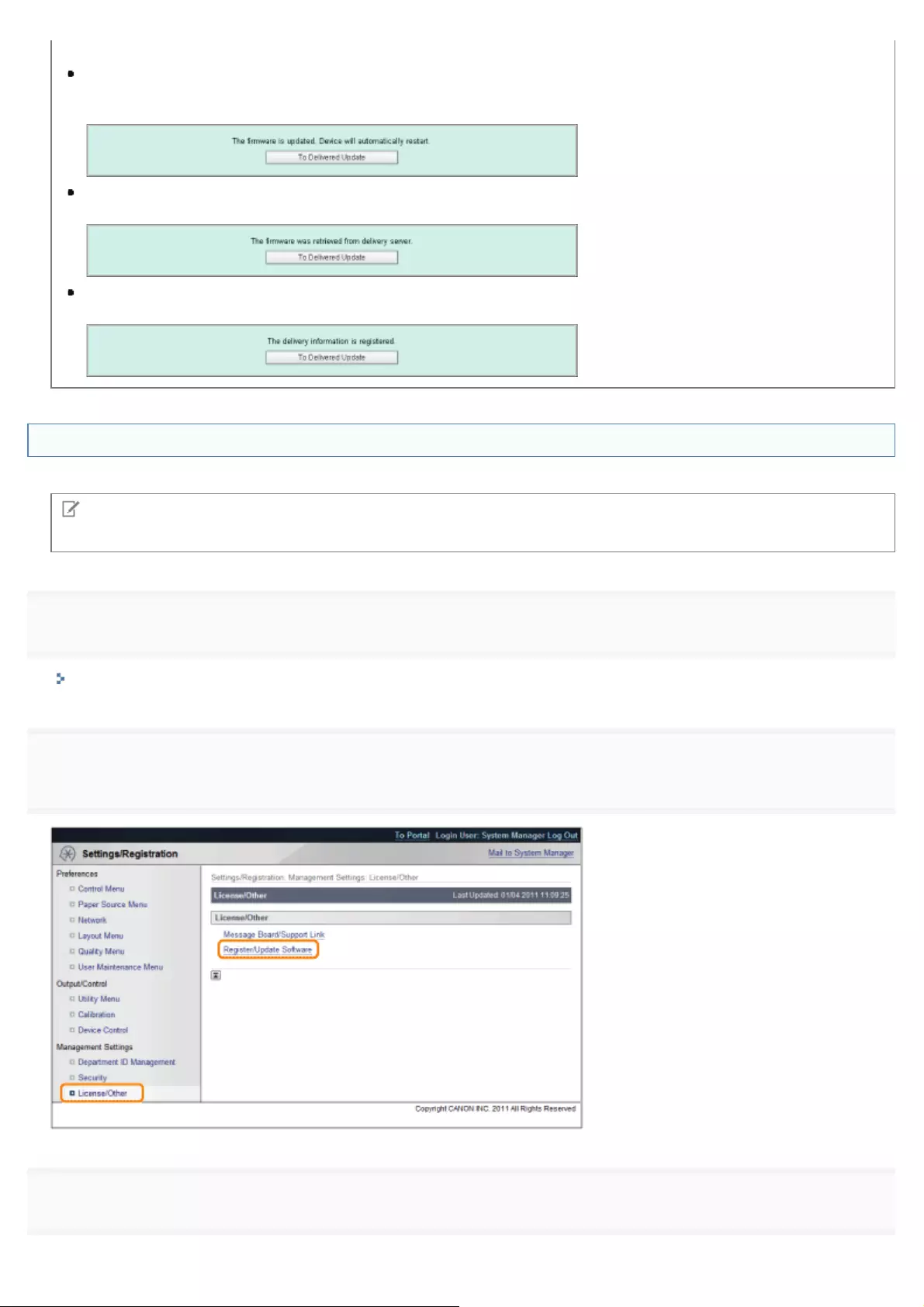
Delivery Schedule and Timing to Apply
When the Delivery Schedule is set to [Deliver now] and the Timing to Apply is set to [Auto]
The firmware is applied after the new firmware is downloaded from the delivery server. When the application is
completed, the printer automatically restarts.
When the Delivery Schedule is set to [Deliver now] and the Timing to Apply is set to [Manual]
The new firmware is downloaded.
When the Delivery Schedule is set to [Deliver at specified date and time]
The scheduled delivery is set to the specified date/time.
Applying the Downloaded Firmware
You can apply the downloaded firmware to the printer.
NOTE
If the Timing to Apply in Delivery Settings is set to [Auto], this step is not necessary.
1
Start the Remote UI, and then log in as Administrator.
"Starting the Remote UI"
2
[Register/Update Software].
3
Click [Delivered Update].
㻢㻢㻥㻌㻛㻌㻥㻥㻤
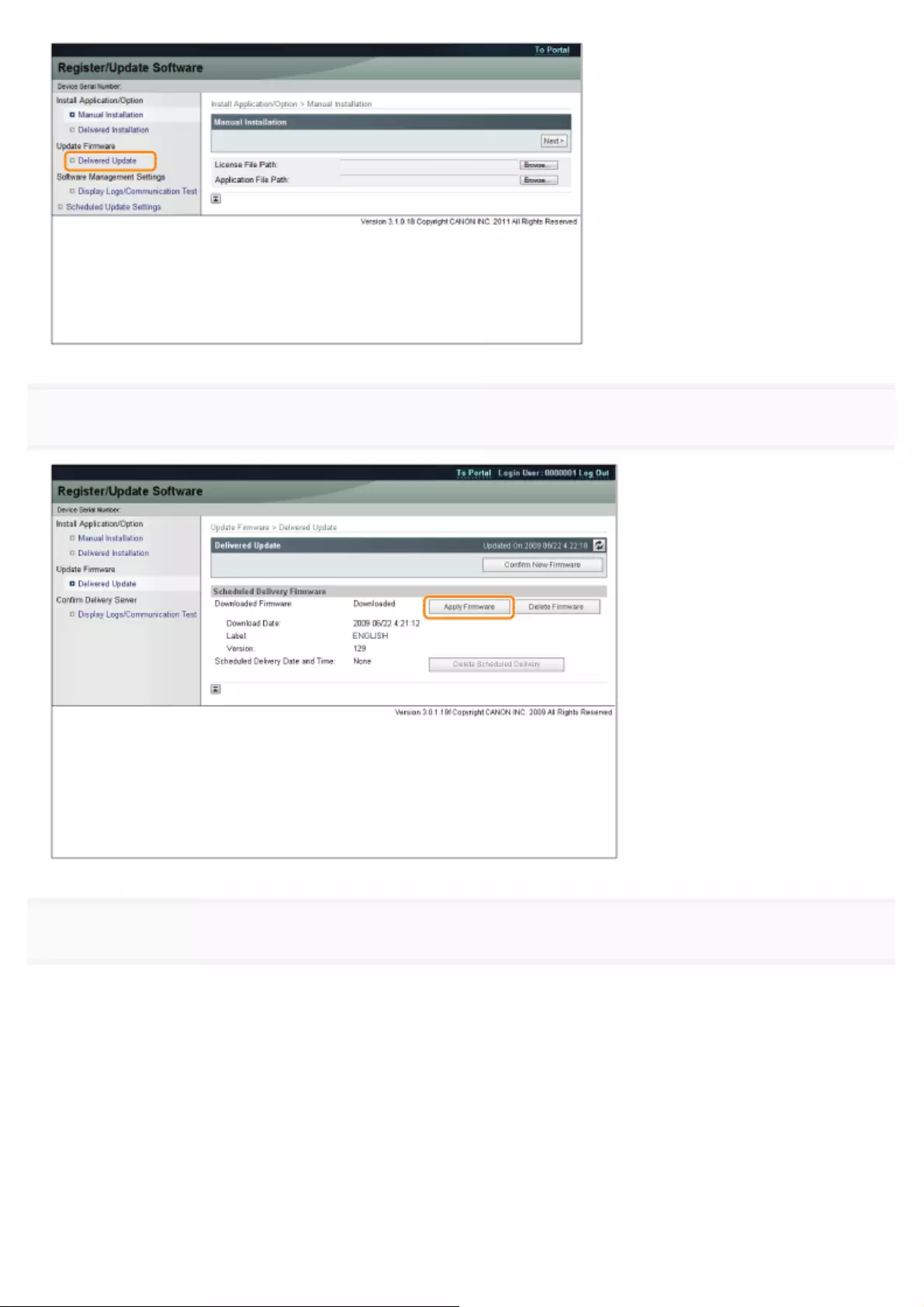
4
Click [Apply Firmware].
5
㻢㻣㻜㻌㻛㻌㻥㻥㻤
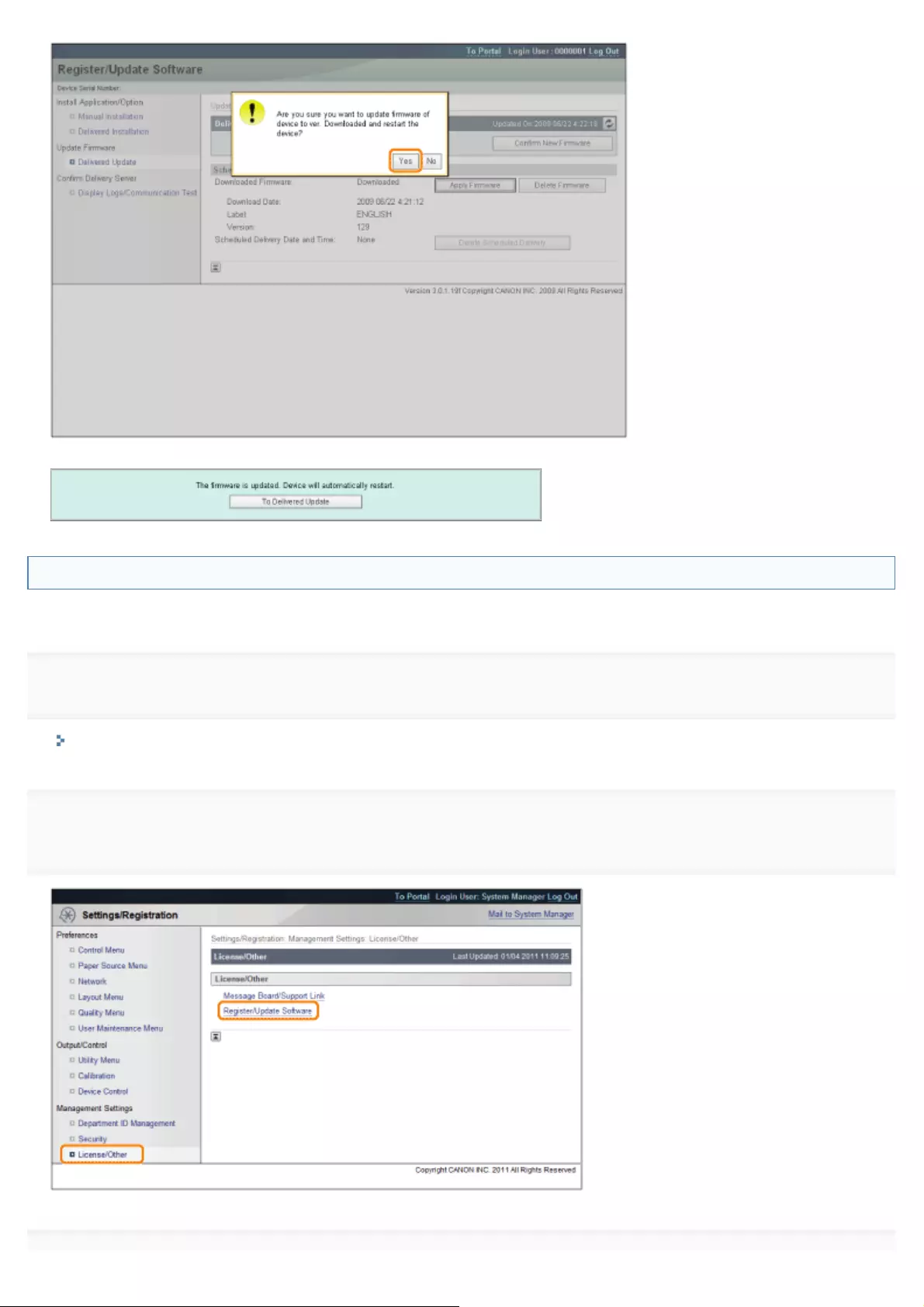
The new firmware is applied to the printer. When the application is completed, the printer automatically restarts.
Deleting the Downloaded Firmware
You can delete the downloaded firmware.
1
Start the Remote UI, and then log in as Administrator.
"Starting the Remote UI"
2
[Register/Update Software].
㻢㻣㻝㻌㻛㻌㻥㻥㻤
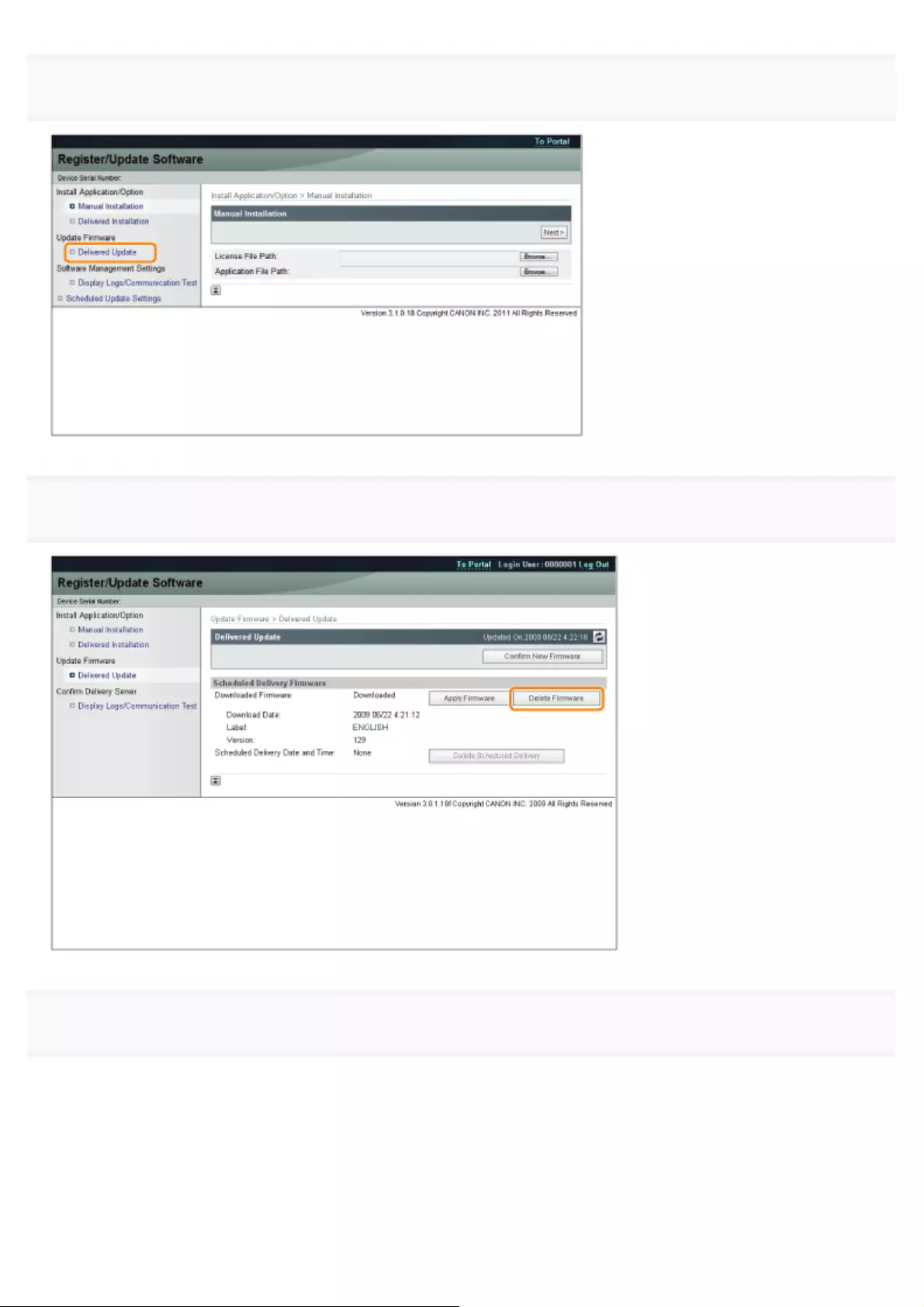
3
Click [Delivered Update].
4
Click [Delete Firmware].
5
㻢㻣㻞㻌㻛㻌㻥㻥㻤
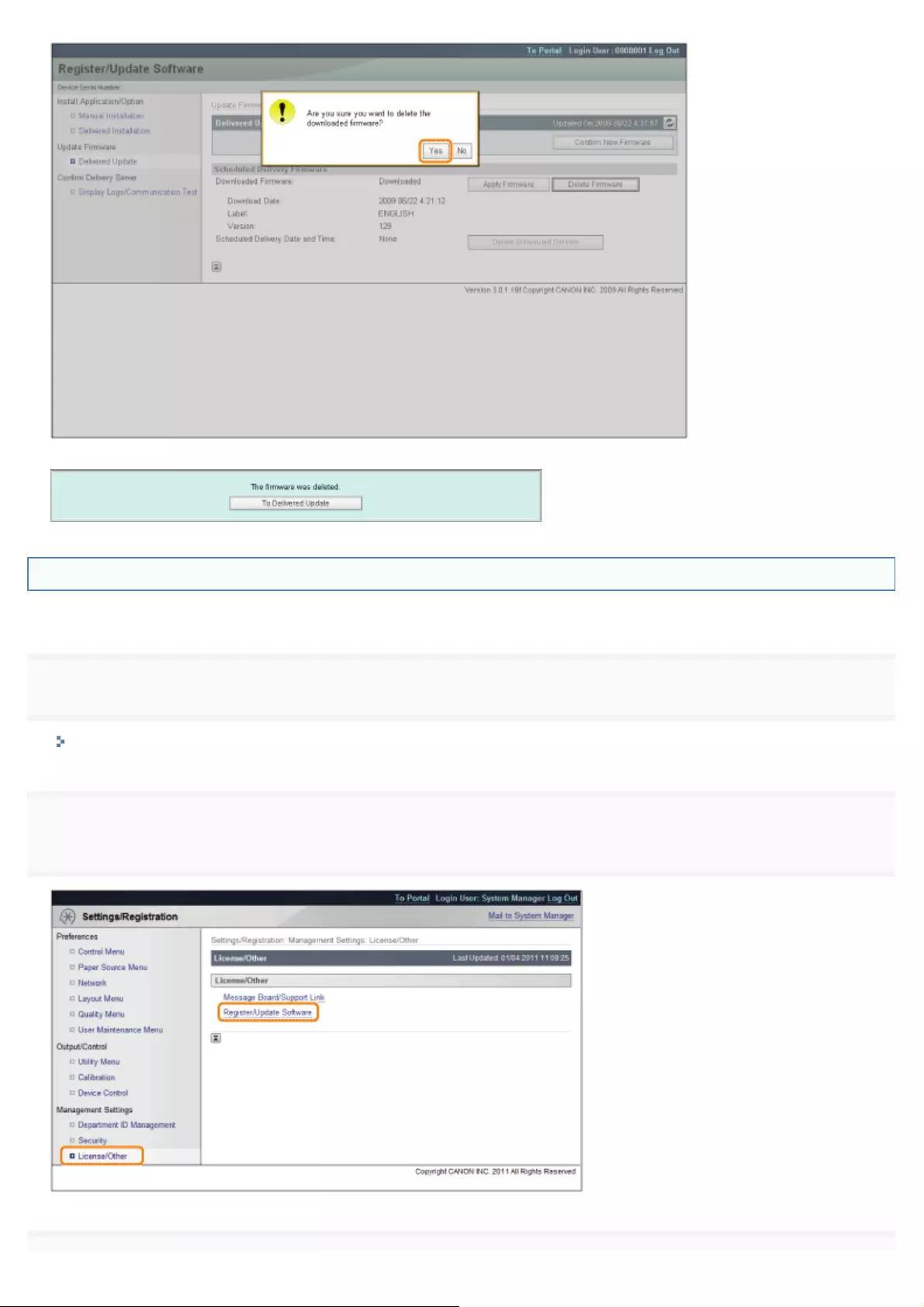
The firmware is deleted.
Deleting the Scheduled Delivery
You can delete the scheduled delivery of the firmware.
1
Start the Remote UI, and then log in as Administrator.
"Starting the Remote UI"
2
[Register/Update Software].
㻢㻣㻟㻌㻛㻌㻥㻥㻤
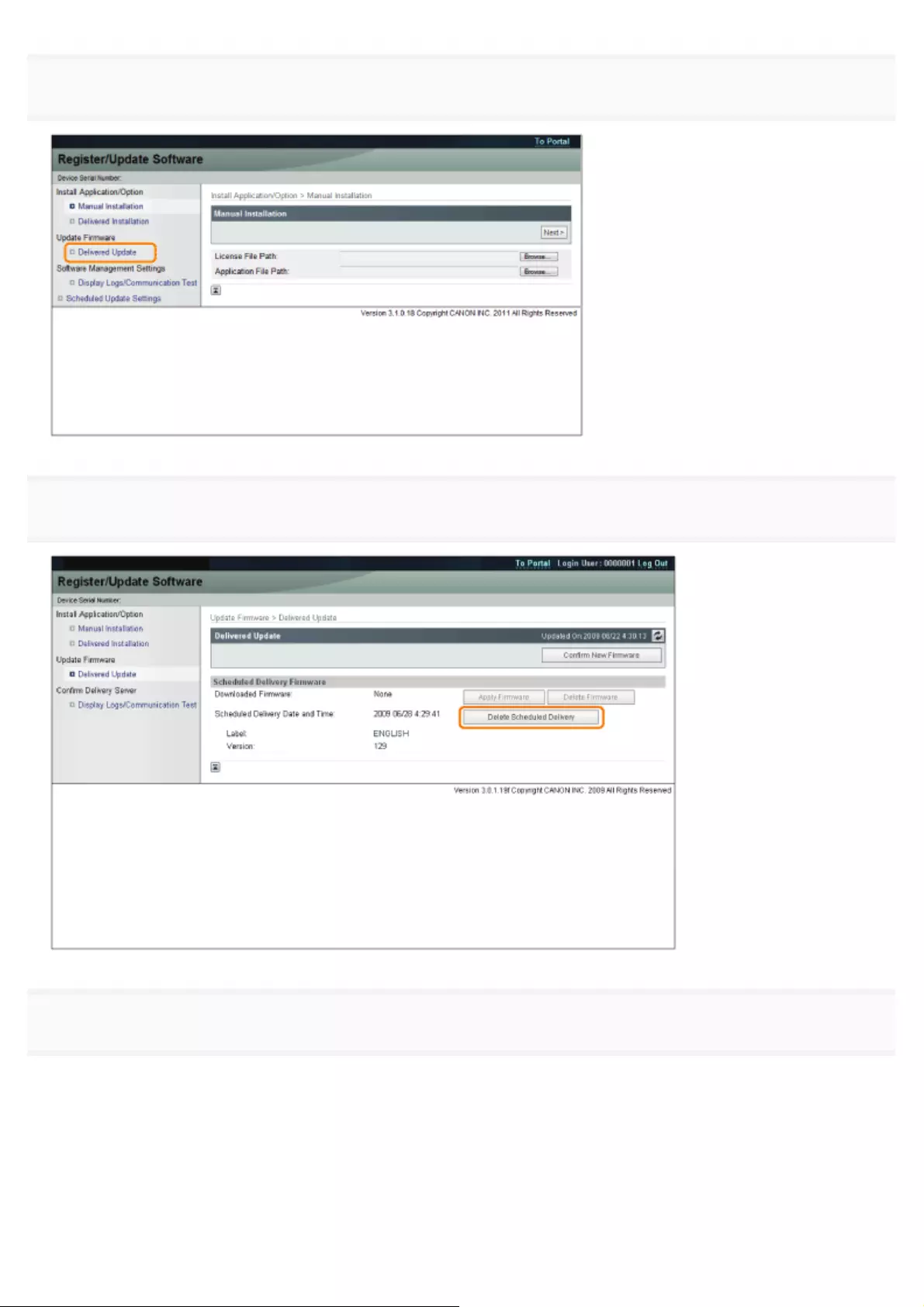
3
Click [Delivered Update].
4
Click [Delete Scheduled Delivery].
5
㻢㻣㻠㻌㻛㻌㻥㻥㻤
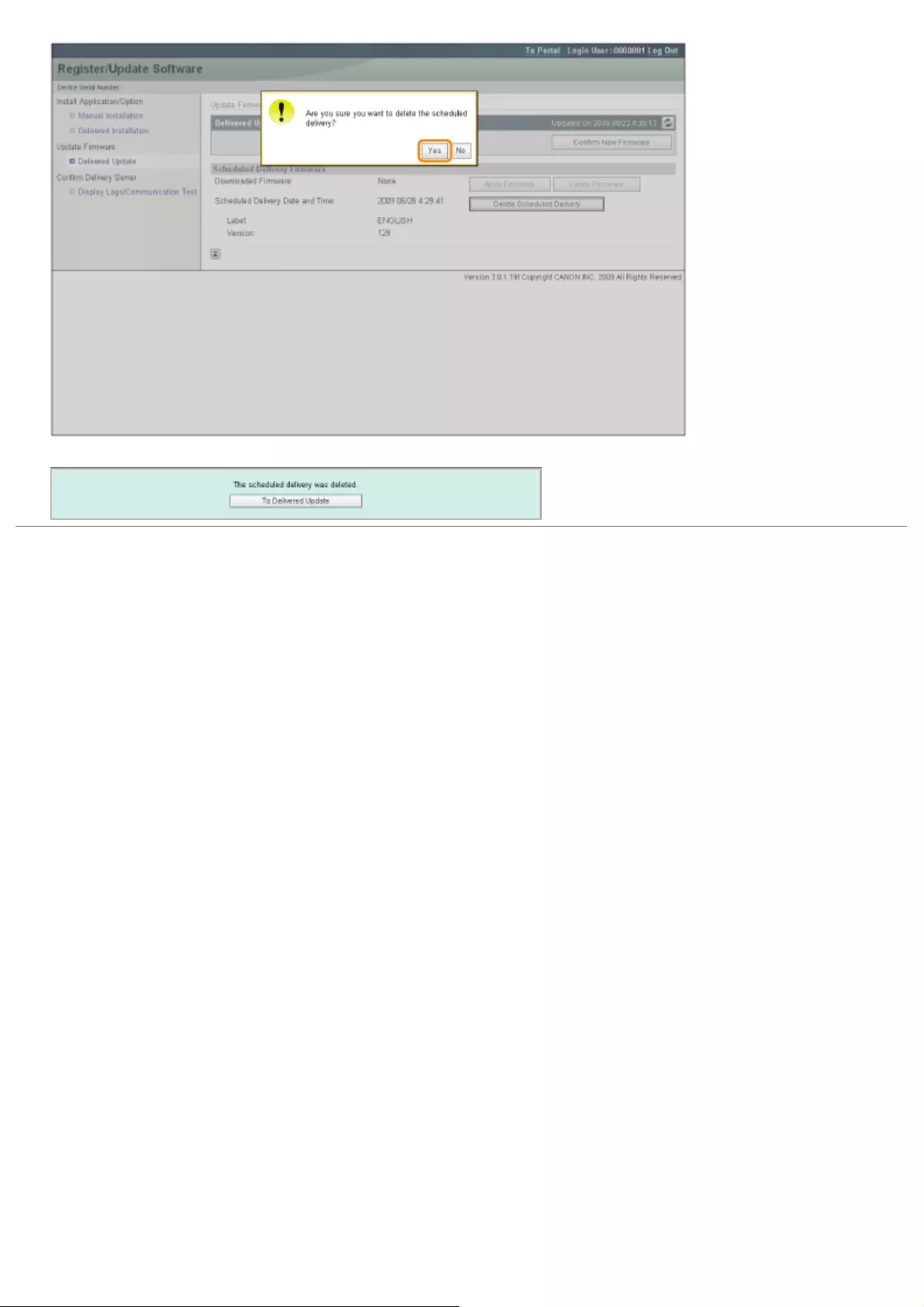
The scheduled delivery is deleted.
㻢㻣㻡㻌㻛㻌㻥㻥㻤
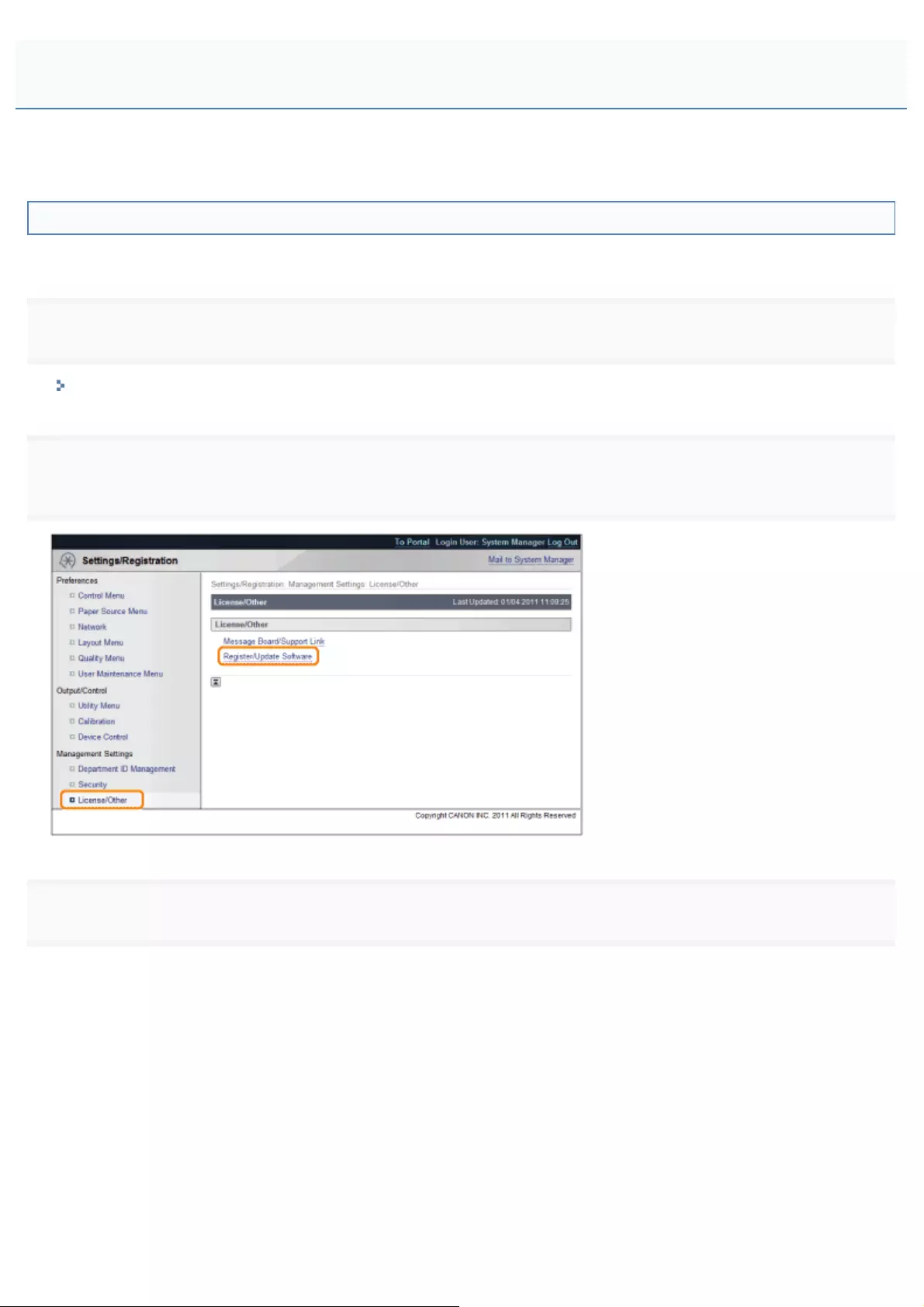
0258-0SJ
You can display the installation logs and test communication using the Remote UI.
Displaying the Installation/Update Log Using the Remote UI
You can check the installation logs of the system options/MEAP applications and the update log of the firmware.
1
Start the Remote UI, and then log in as Administrator.
"Starting the Remote UI"
2
[Register/Update Software].
3
Click [Display Logs /Communication Test].
Managing the Register/Update Software Function
㻢㻣㻢㻌㻛㻌㻥㻥㻤
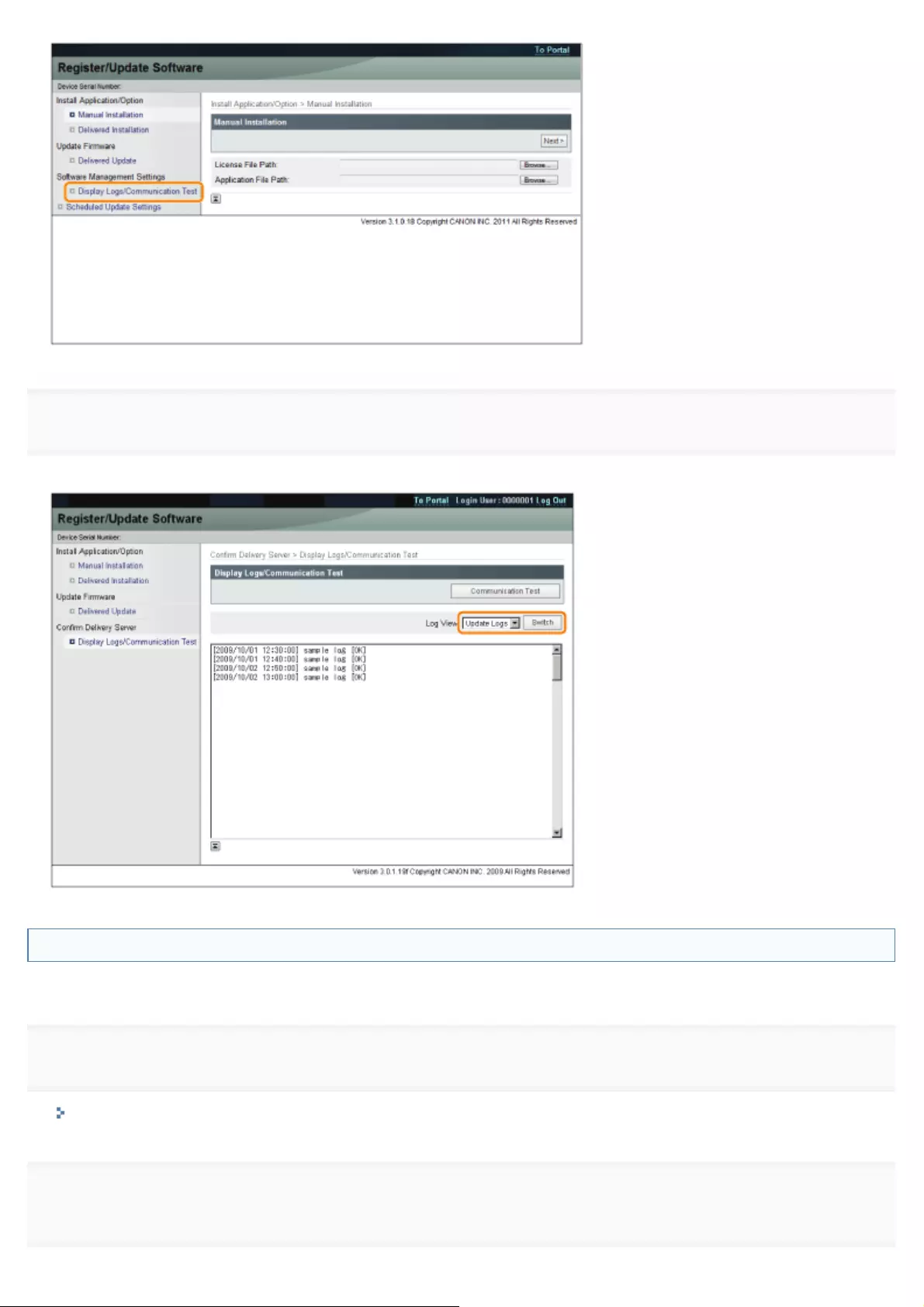
4
The installation logs of the system options/MEAP applications and the update log of the firmware are displayed.
Testing Communication Using the Remote UI
You can check whether the printer can properly communicate with the delivery server.
1
Start the Remote UI, and then log in as Administrator.
"Starting the Remote UI"
2
[Register/Update Software].
㻢㻣㻣㻌㻛㻌㻥㻥㻤
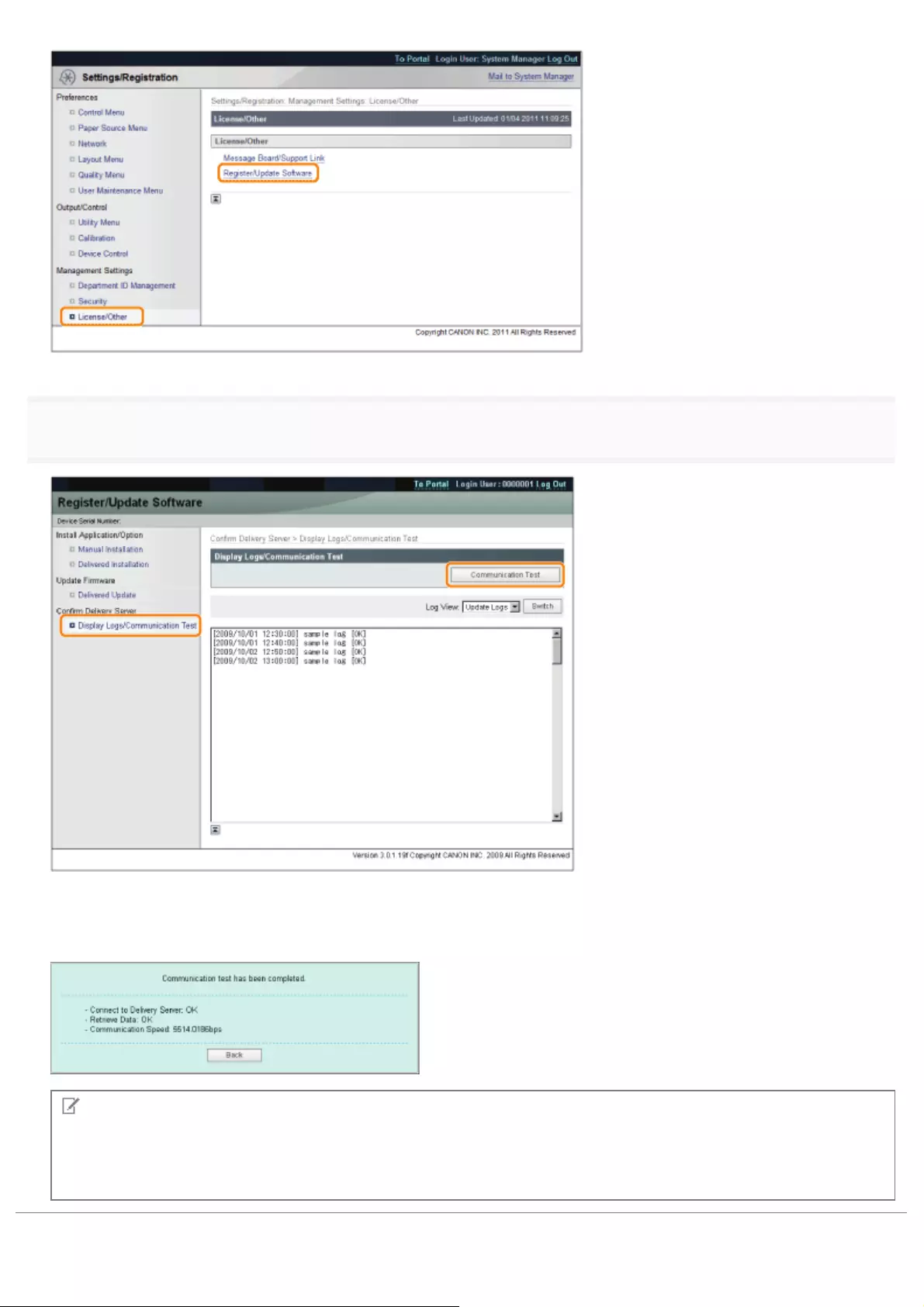
3
When the confirmation dialog is displayed, click [Yes].
Contents for the test are downloaded from the delivery server.
When the communication test is completed, the communication test result screen is displayed.
NOTE
If [Failed] is displayed on the communication test result
If [Failed] is displayed on the communication test result screen, check that the network cable is connected and that the
network settings are correct. If the problem is not resolved, contact your local authorized Canon dealer.
㻢㻣㻤㻌㻛㻌㻥㻥㻤
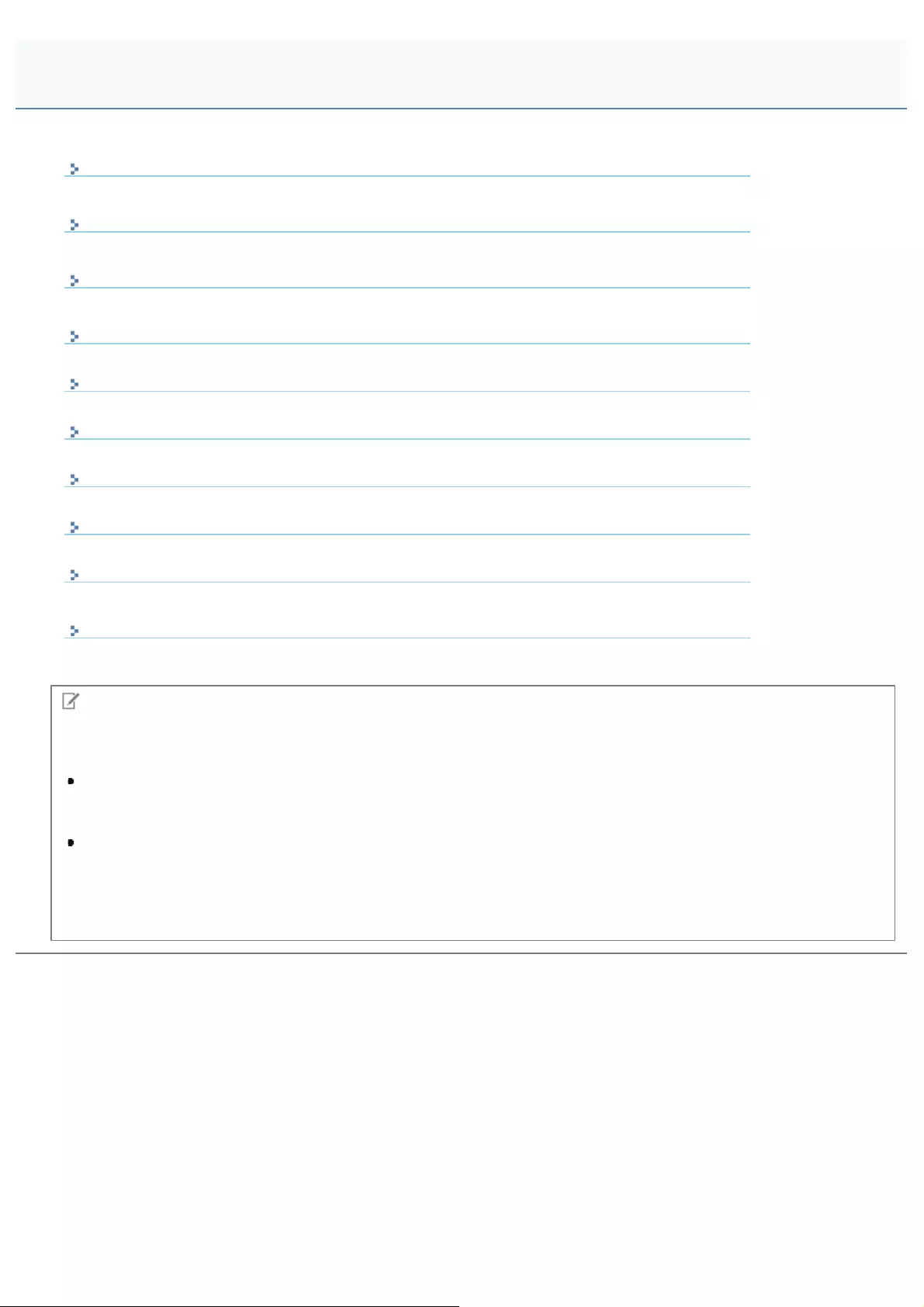
0258-09L
Restricting the Users Who Can Print or Perform the Printer Settings
Restricting the Users Who Can Access
Specifying the Job Operation Permission for End-Users
Locking the Keys on the Control Panel (Key Lock Function)
Setting Restrictions for USB Direct Print (LBP7680Cx Only)
Setting Keys and Certificates
Setting CA Certificates
Setting the SSL Encryption Communication Function
Setting the IPSec Encryption Communication Function (LBP7680Cx Only)
Specifying the Setting for Job Log Display
NOTE
Software to be used for the security settings
You can specify the settings using the following software.
Remote UI
You can specify the settings by accessing the printer from a Web browser via the
network.
FTP Client
You can specify the settings by accessing the FTP server of the printer using
Command Prompt.
This section describes the procedure for specifying the settings using the Remote UI. To specify the settings using FTP
Client, see "FTP Client."
Security Settings
㻢㻣㻥㻌㻛㻌㻥㻥㻤
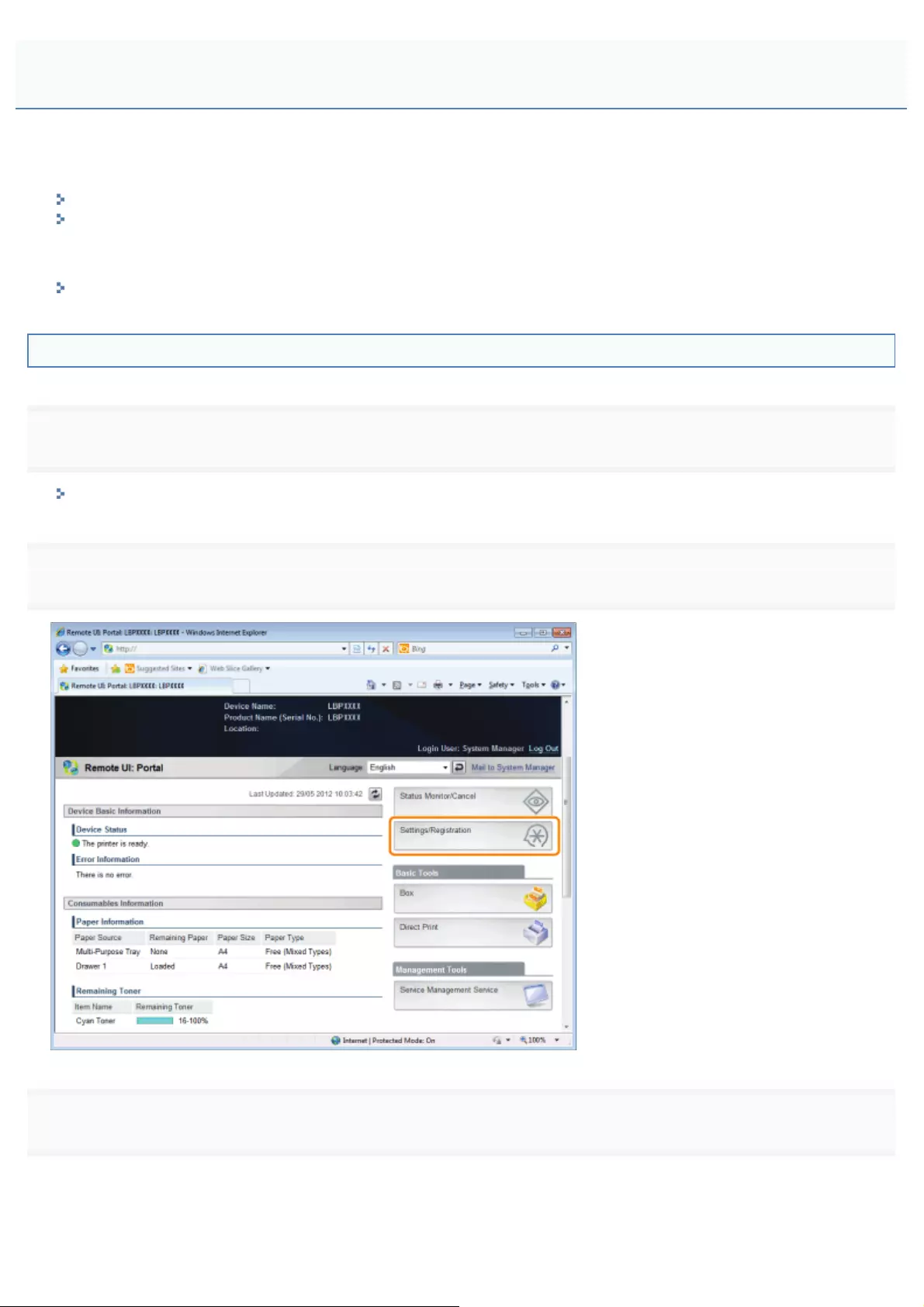
0258-09R
You can restrict the users who can print or perform the printer settings with IP addresses by using a Web browser (Remote
UI).
Restriction Using the IP v. 4 Address
Restriction Using the IP v. 6 Address
Always use the Remote UI to specify the IP address. The control panel allows you only to switch the address filter setting
between On and Off.
[Setup] Menu ([Network] Options)
Restriction Using the IP v. 4 Address
1
Start the Remote UI, and then log in as Administrator.
"Starting the Remote UI"
2
Click [Settings/Registration].
3
Select [Security] from the [Management Settings] menu.
Restricting the Users Who Can Print or Perform the Printer Settings
㻢㻤㻜㻌㻛㻌㻥㻥㻤

4
Click [IP Address Filter].
5
Click [Edit...] under [IPv4 Address: TX Filter] or [IPv4 Address: RX Filter].
㻢㻤㻝㻌㻛㻌㻥㻥㻤
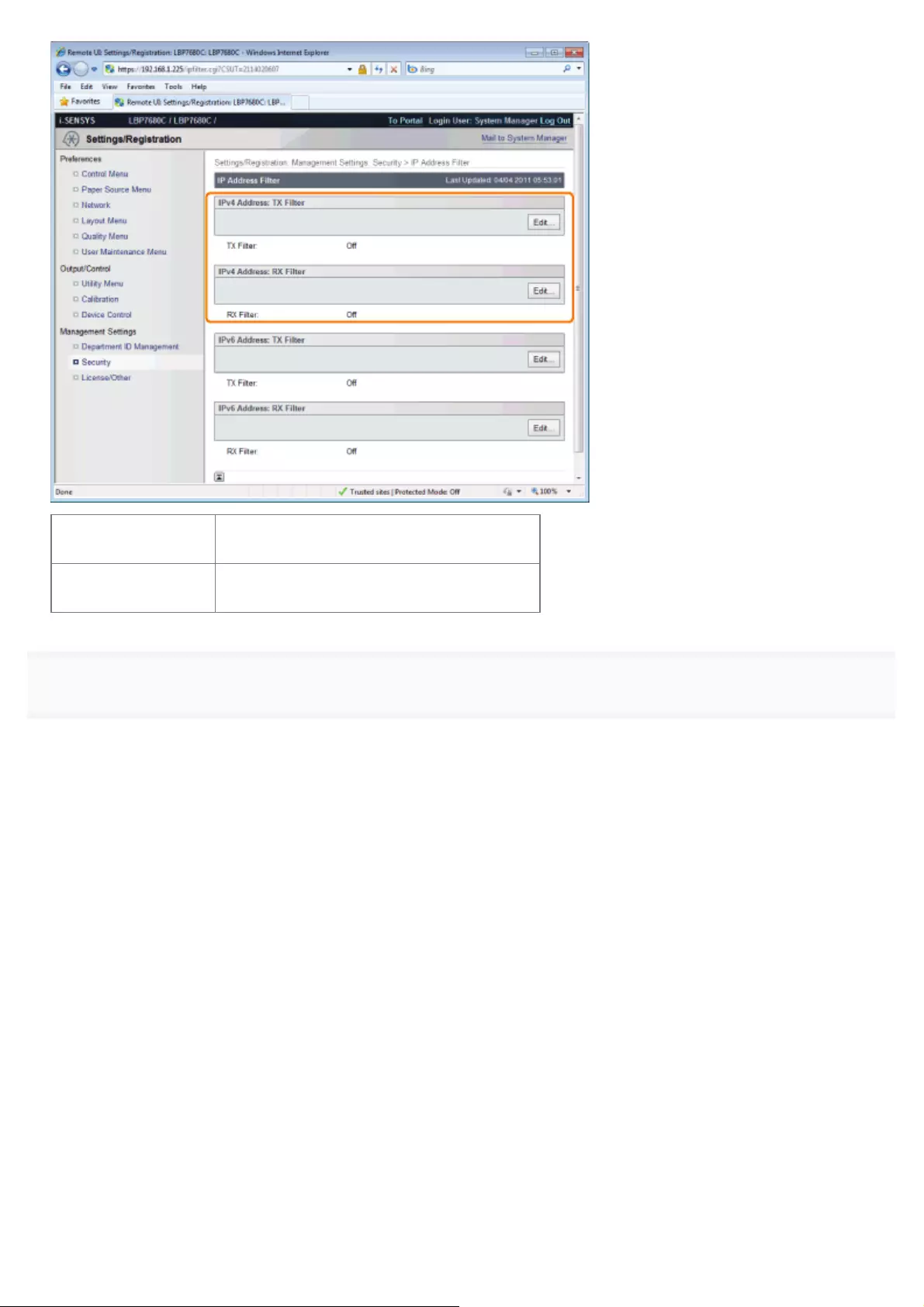
[IPv4 Address: TX
Filter] It limits the sending of data from the printer.
[IPv4 Address: RX
Filter] It limits the sending of data to the printer.
6
Select the [Use Filter] check box, and select [Default Policy].
㻢㻤㻞㻌㻛㻌㻥㻥㻤

If you select [Reject], you will only be able to transmit or print from users (clients) entered in the [Exception Addresses]
field.
If you select [Allow], you will not be able to transmit or print from users (clients) entered in the [Exception Addresses]
field.
If you clear the [Use Filter] check box, you will be able to transmit and print from all users (clients).
7
Set the IP address.
(1) Enter the IP address for which you want to reject or permit to print.
Enter the IPv4 address, which is a decimal value, by adding "." (periods) as delimiters.
(2) Click [Add].
You can set up to 16 IP addresses (16 sets of IP address for when you have specified with [Register
Address]).
㻢㻤㻟㻌㻛㻌㻥㻥㻤
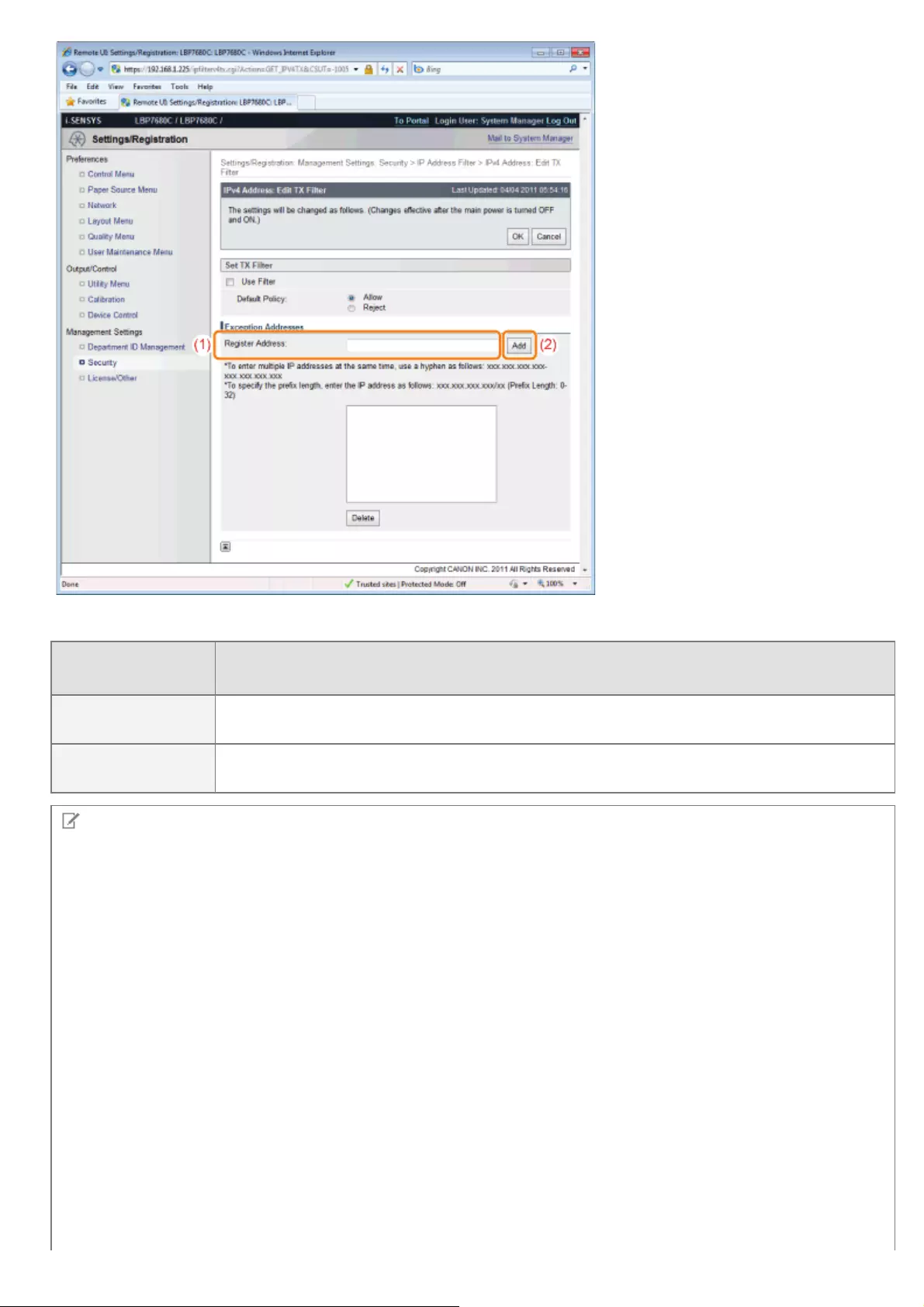
You can also enter IP addresses as follows.
Input example of
the IP addresses Method for entering IP addresses
192.168.0.1-
192.168.0.10
If you want to enter the IP addresses of consecutive numbers, place "-" (hyphen) between the
address of the smallest number and that of the largest number.
192.168.0.0/16 In order to specify the subnet range (prefix length), enter a "/" (slash) after the normal IP
address symbol, then enter another prefix length (maximum 32).
NOTE
When "0" is entered in [Prefix Length]
All the IP addresses become the target for rejection or permission.
When "32" is entered in [Prefix Length]
The IP address of the printer becomes the target for rejection or permission.
When deleting a set IP address
(1) Select an IP address you want to delete.
(2) Click [Delete].
㻢㻤㻠㻌㻛㻌㻥㻥㻤
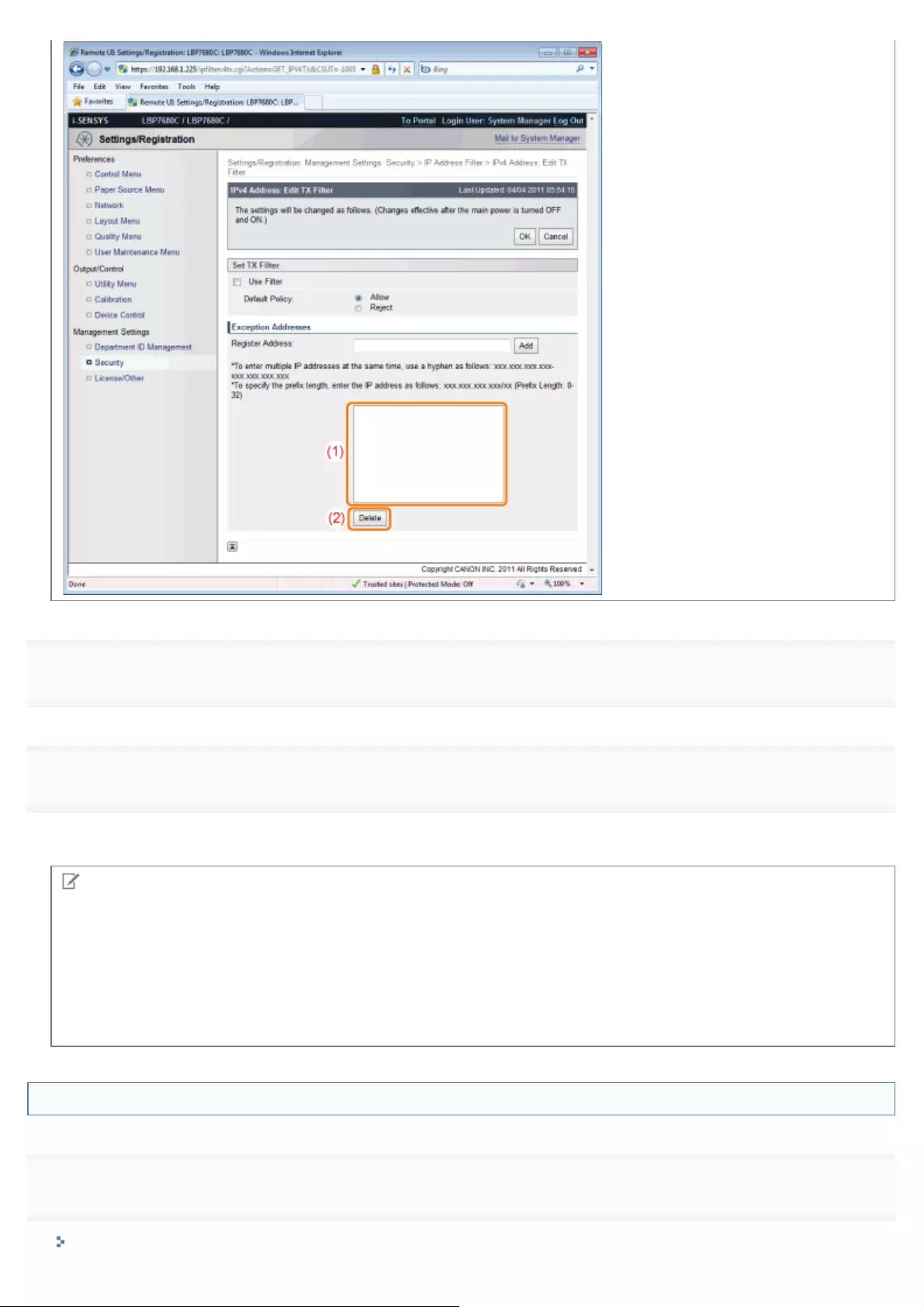
8
Click [OK].
9
Perform a hard reset or restart the printer.
ĺAfter performing a hard reset or restarting the printer, the settings are effective.
NOTE
To perform a hard reset
You can perform a hard reset using the following procedure.
1. Click [Settings/Registration].
2. Select [Device Control] from the [Output/Control] menu.
3. Select [Hard Reset], then click [Execute].
Restriction Using the IP v. 6 Address
1
Start the Remote UI, and then log in as Administrator.
㻢㻤㻡㻌㻛㻌㻥㻥㻤

5
Click [Edit...] under [IPv6 Address: TX Filter] or [IPv6 Address: RX Filter].
[IPv6 Address: TX
Filter] It limits the sending of data from the printer.
[IPv6 Address: RX
Filter] It limits the sending of data to the printer.
6
Select the [Use Filter] check box, and select [Default Policy].
㻢㻤㻣㻌㻛㻌㻥㻥㻤

If you select [Reject], you will only be able to transmit or print from users (clients) entered in the [Exception Addresses]
field.
If you select [Allow], you will not be able to transmit or print from users (clients) entered in the [Exception Addresses]
field.
If you clear the [Use Filter] check box, you will be able to transmit and print from all users (clients).
7
Set the IP address.
(1) Enter the IP address for which you want to reject or permit to print.
Enter the IPv6 address, which is a hexadecimal value, by adding ":" (colons) as delimiters.
(2) Click [Add].
You can set up to 16 IP addresses (16 sets of IP address for when you have specified with [Register
Address]).
㻢㻤㻤㻌㻛㻌㻥㻥㻤

You can also enter IP addresses as follows.
Input example of
the IP addresses Method for entering IP addresses
fe80::0000/64 In order to specify the subnet range (prefix length), enter a "/" (slash) after the normal IP
address symbol, then enter another prefix length (maximum 128).
NOTE
When "0" is entered in [Prefix Length]
All the IP addresses become the target for rejection or permission.
When "128" is entered in [Prefix Length]
The IP address of the printer becomes the target for rejection or permission.
When deleting a set IP address
(1) Select an IP address you want to delete.
(2) Click [Delete].
㻢㻤㻥㻌㻛㻌㻥㻥㻤
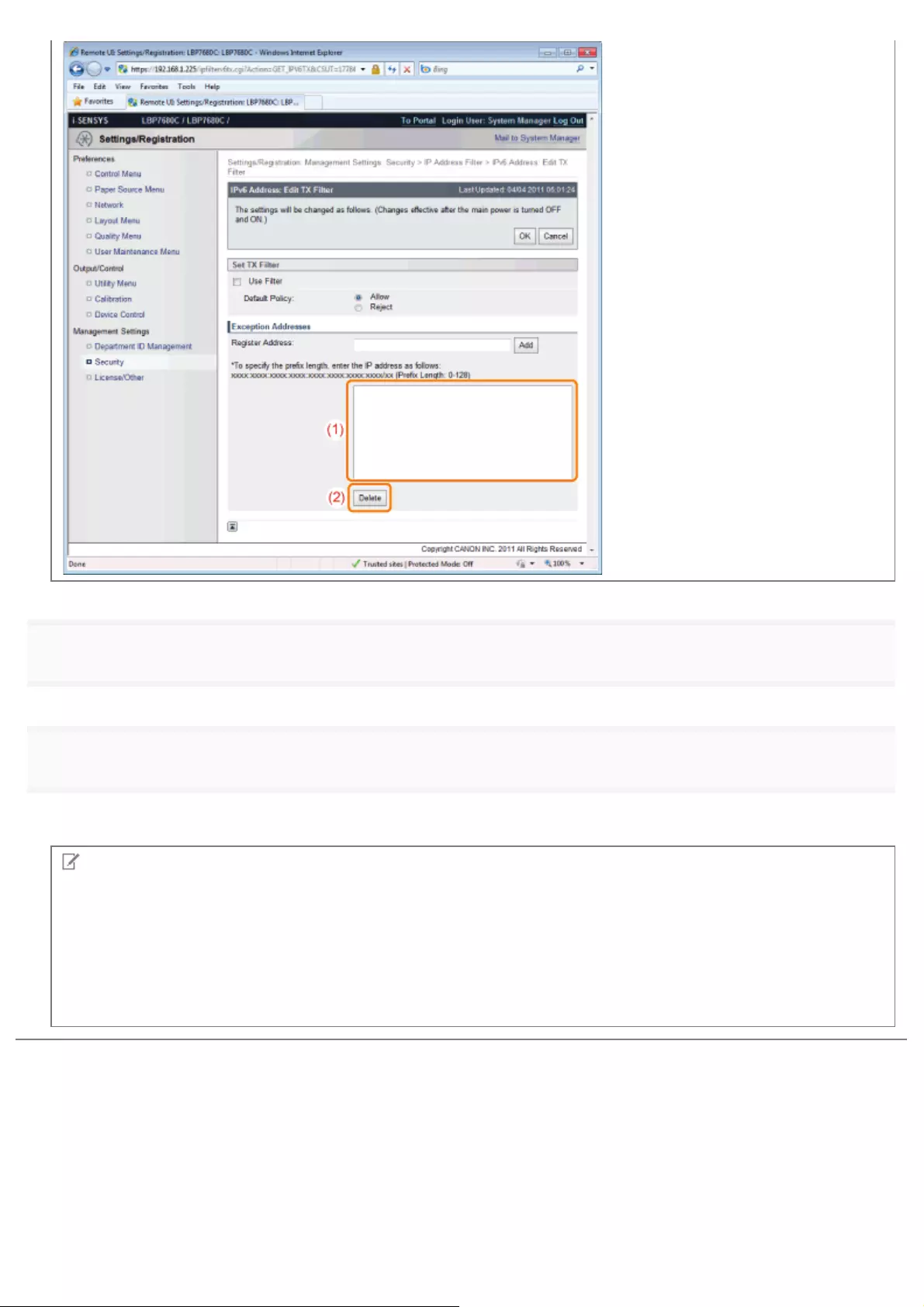
8
Click [OK].
9
Perform a hard reset or restart the printer.
ĺAfter performing a hard reset or restarting the printer, the settings are effective.
NOTE
To perform a hard reset
You can perform a hard reset using the following procedure.
1. Click [Settings/Registration].
2. Select [Device Control] from the [Output/Control] menu.
3. Select [Hard Reset], then click [Execute].
㻢㻥㻜㻌㻛㻌㻥㻥㻤
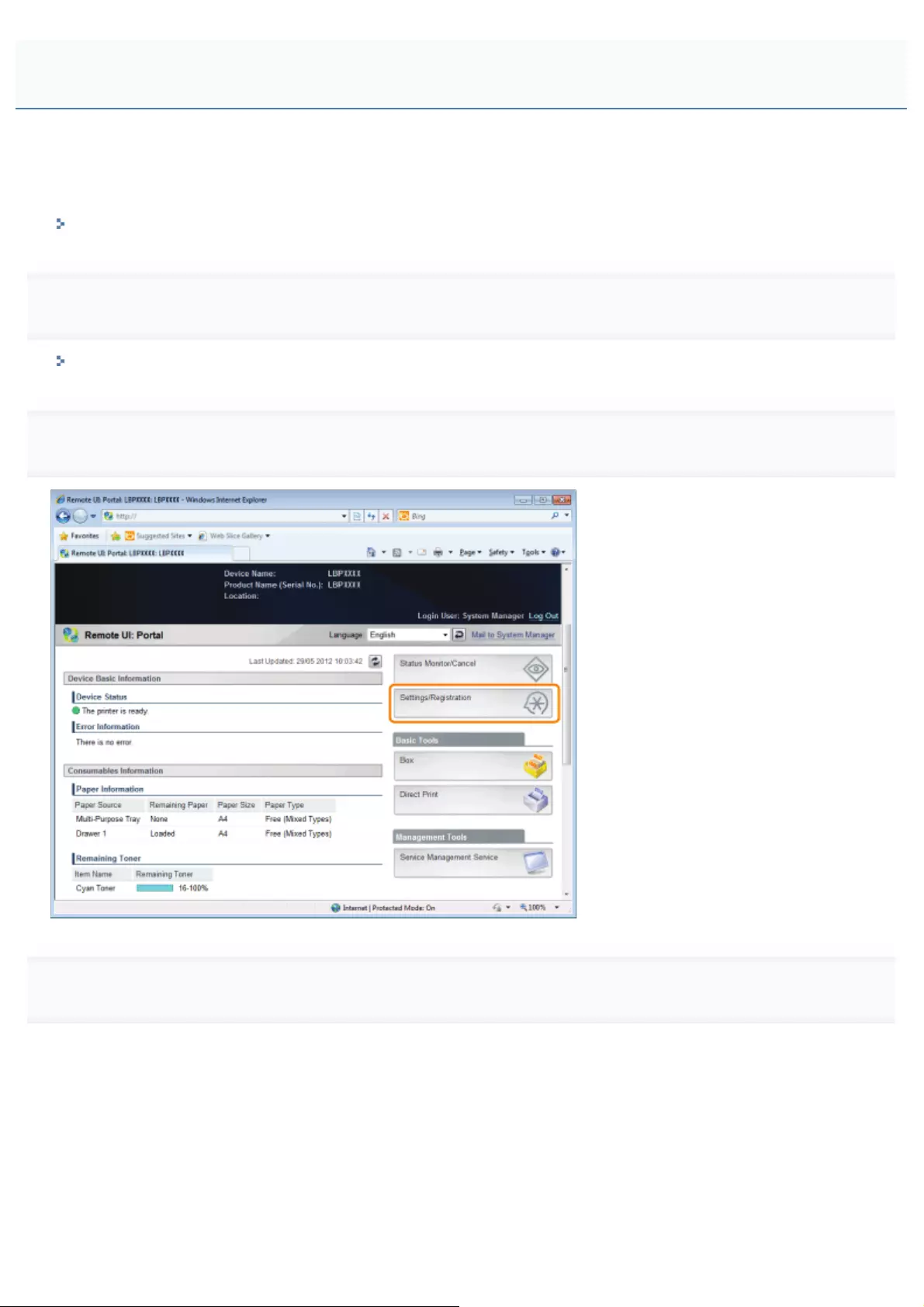
0258-09S
You can restrict the users who can access with MAC addresses using a Web browser (Remote UI).
Always use the Remote UI to specify the MAC address. The control panel allows you only to switch the address filter
setting between On and Off.
[Setup] Menu ([Network] Options)
1
Start the Remote UI, and then log in as Administrator.
"Starting the Remote UI"
2
Click [Settings/Registration].
3
Select [Security] from the [Management Settings] menu.
Restricting the Users Who Can Access
㻢㻥㻝㻌㻛㻌㻥㻥㻤
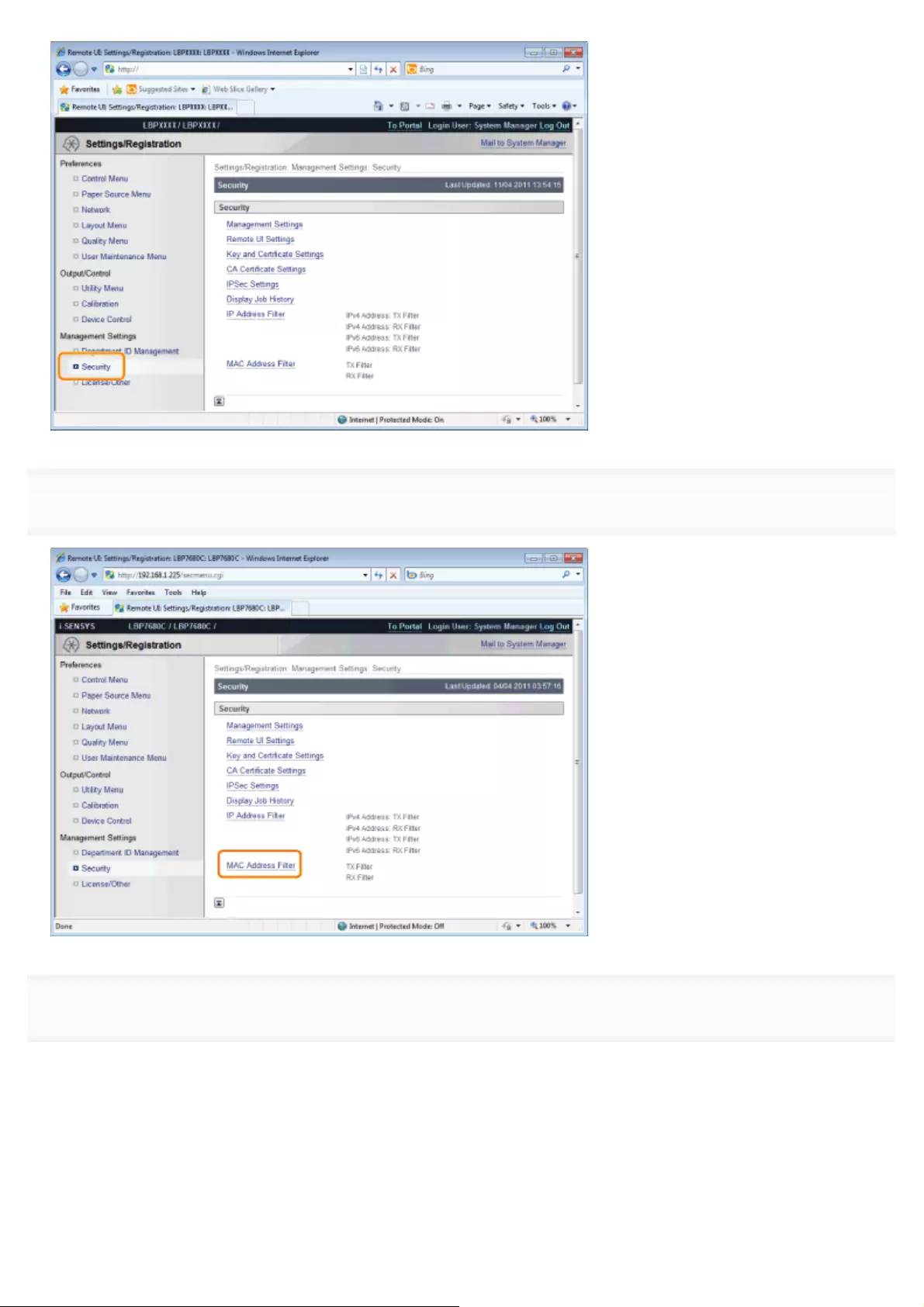
4
Click [MAC Address Filter].
5
Click [Edit...] under [TX Filter] or [RX Filter].
㻢㻥㻞㻌㻛㻌㻥㻥㻤
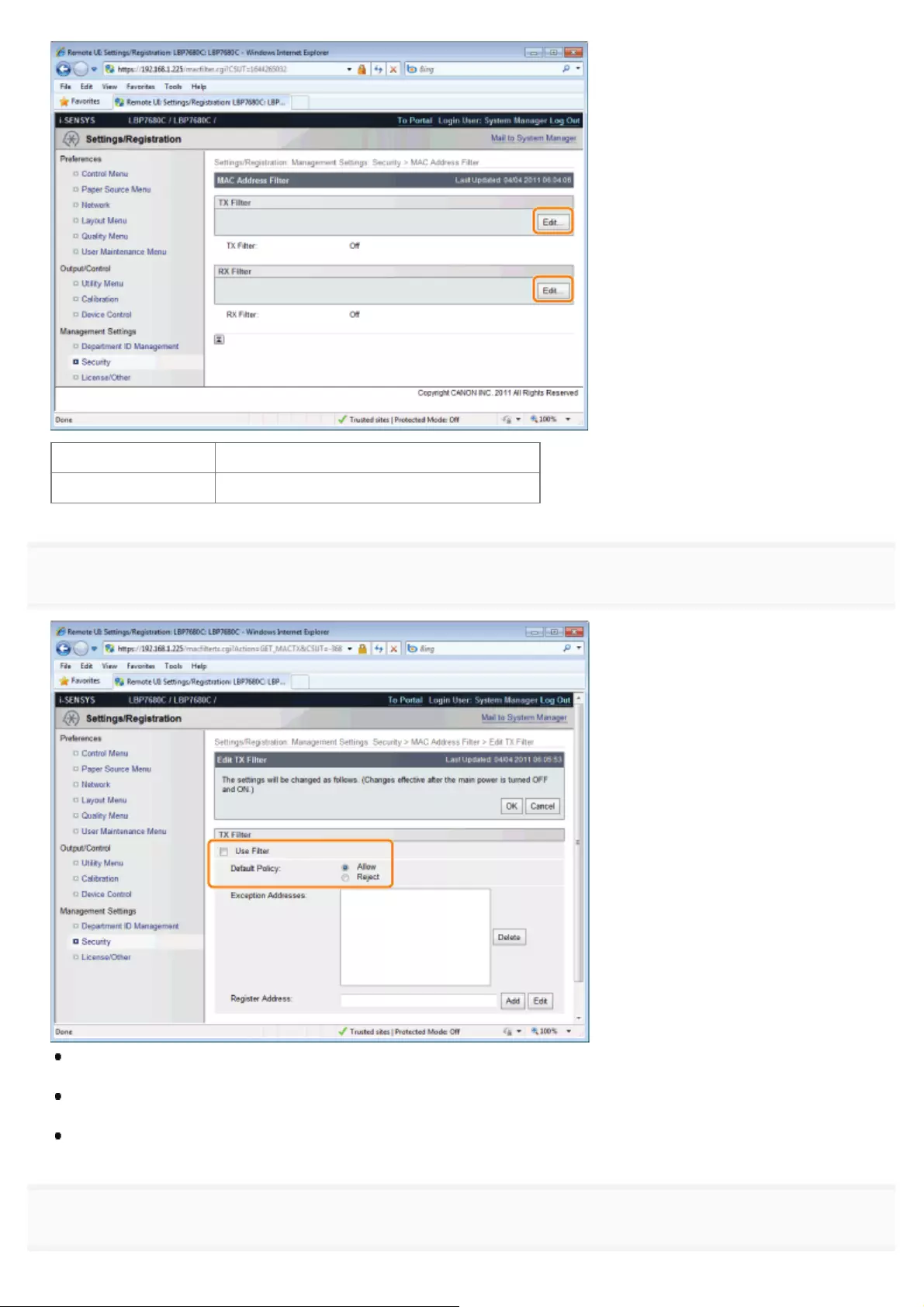
[TX Filter] It limits the sending of data from the printer.
[RX Filter] It limits the sending of data to the printer.
6
Select the [Use Filter] check box, and select [Default Policy].
If you select [Reject], you will not be able to transmit or print from users (clients) entered in the [Exception Addresses]
field.
If you select [Allow], you will only be able to transmit or print from users (clients) entered in the [Exception Addresses]
field.
If you clear the [Use Filter] check box, you will be able to transmit and print from all users (clients).
7
Set the MAC address.
㻢㻥㻟㻌㻛㻌㻥㻥㻤

(1) Enter the MAC address of a device of which you want to permit to access.
Enter the MAC address without the hyphens (-), for example, AABBCCDDEEFF.
(2) Click [Add].
You can set up to 50 addresses.
NOTE
When deleting a set MAC address
(1) Select a MAC address you want to delete.
(2) Click [Delete].
㻢㻥㻠㻌㻛㻌㻥㻥㻤
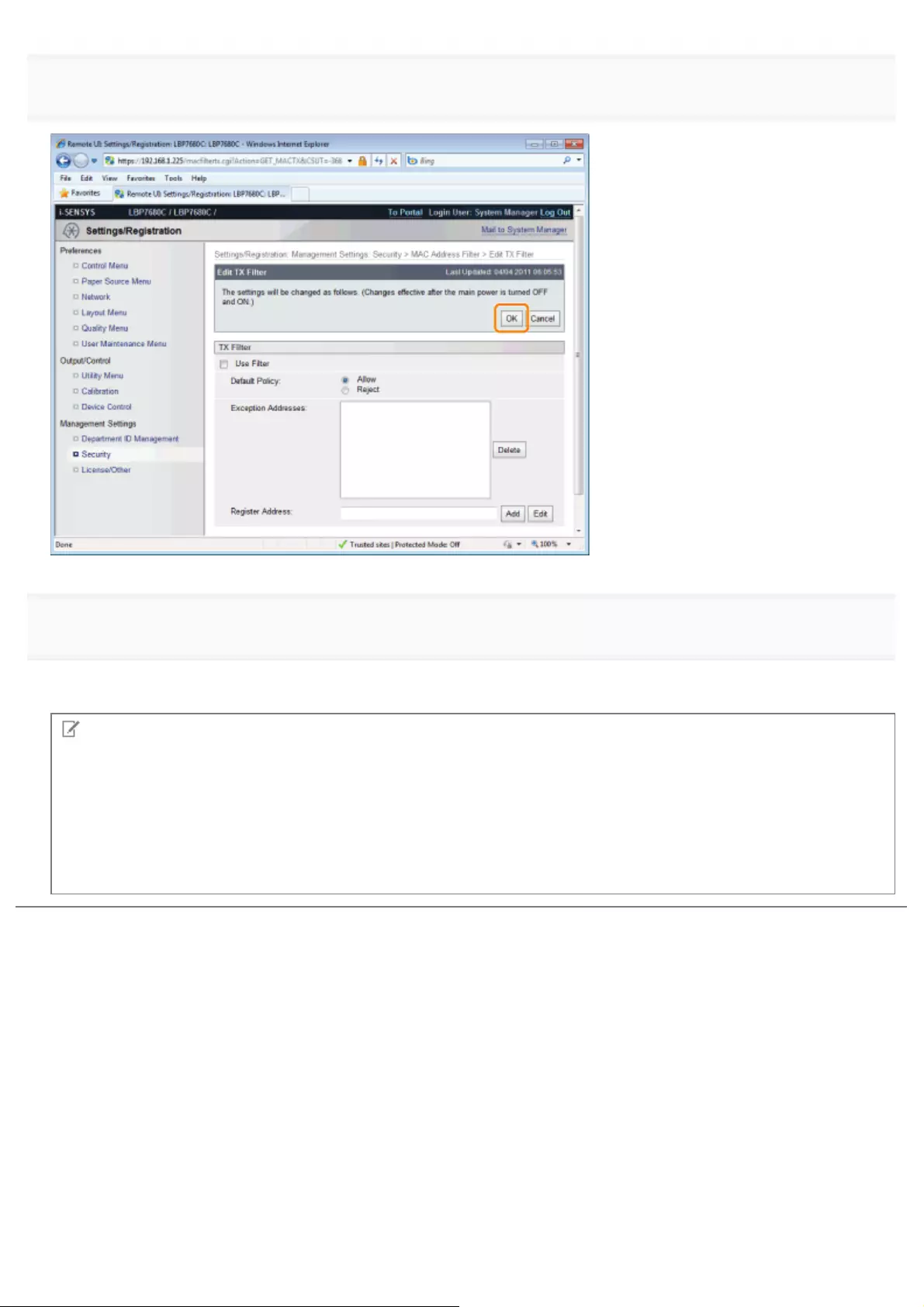
8
Click [OK].
9
Perform a hard reset or restart the printer.
ĺAfter performing a hard reset or restarting the printer, the settings are effective.
NOTE
To perform a hard reset
You can perform a hard reset using the following procedure.
1. Click [Settings/Registration].
2. Select [Device Control] from the [Output/Control] menu.
3. Select [Hard Reset], then click [Execute].
㻢㻥㻡㻌㻛㻌㻥㻥㻤

0258-0SU
You can use a Web browser (Remote UI) to set restrictions for print jobs.
IMPORTANT
When restrictions for print jobs are set, the effect will be as follows.
Type of job Restriction
Printer Driver Will be stored in a box.
Direct Print
Image File Will not be displayed in the menu.*
PS/PDF Will be stored in a box.
XPS Will be stored in a box.
USB Direct Print Cannot be output.
Utility Menu There are no restrictions.
* The settings will be enabled after a hard reset or after the printer is restarted.
"Canceling All the Jobs (Hard Reset)"
1
Start the Remote UI, and then log in as Administrator.
"Starting the Remote UI"
2
Click [Settings/Registration].
Setting Restrictions for Print Jobs (LBP7680Cx Only)
㻢㻥㻢㻌㻛㻌㻥㻥㻤
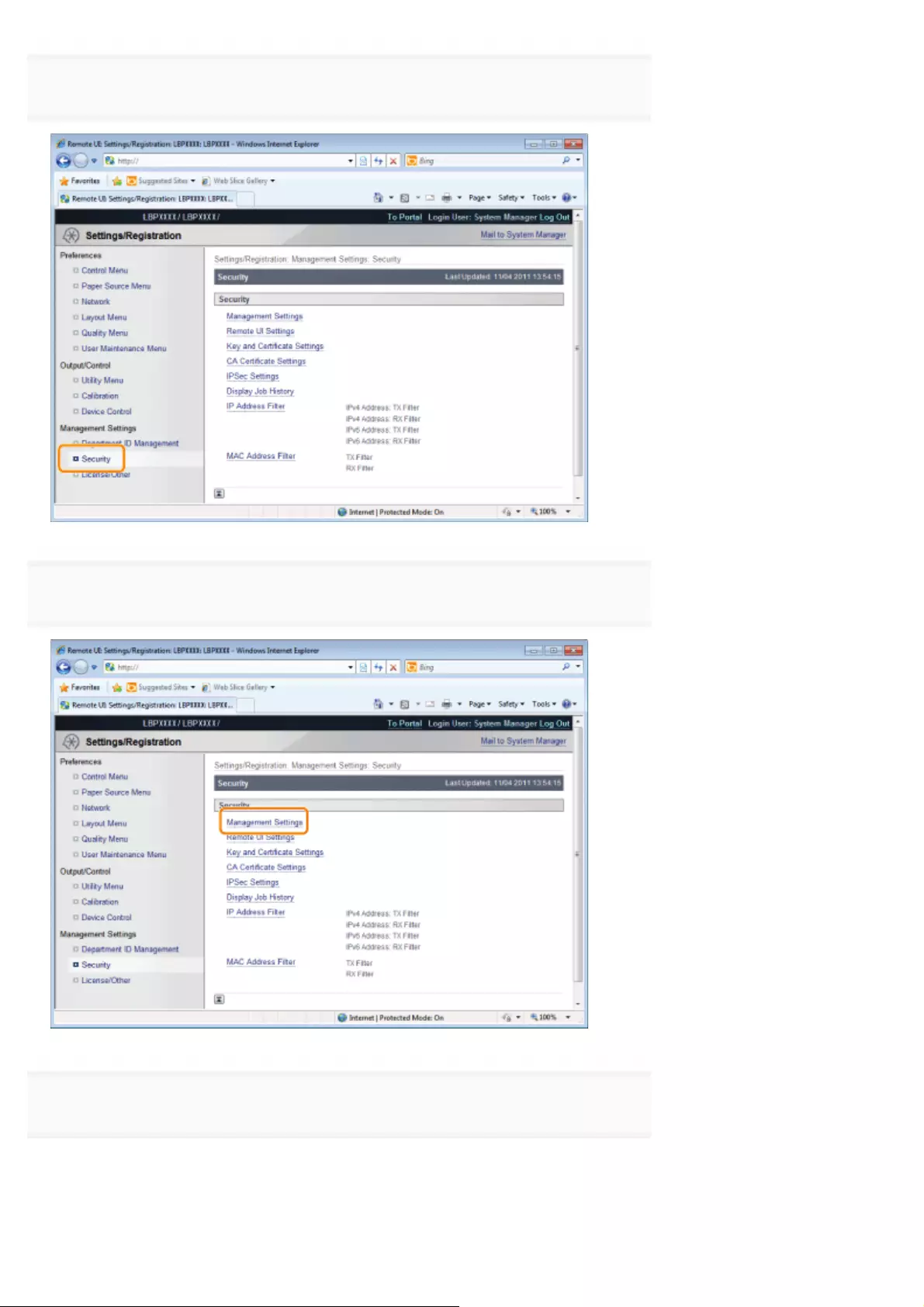
3
Select [Security] from the [Management Settings] menu.
4
Click [Management Settings].
5
Click [Edit...].
㻢㻥㻣㻌㻛㻌㻥㻥㻤
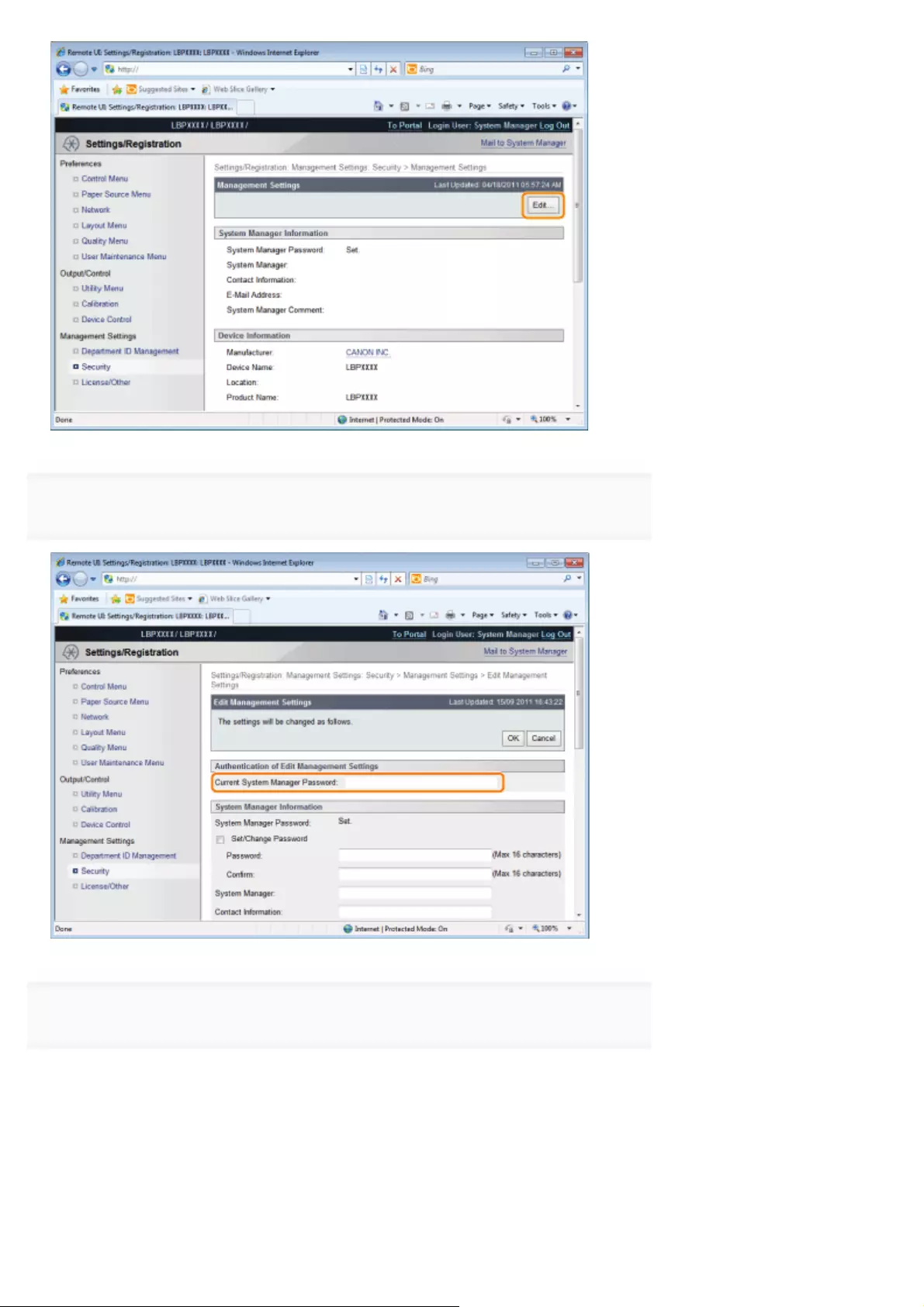
6
Enter the current password in [Current System Manager Password].
7
Set restrictions for print jobs.
(1) Select the [Restrict Printer Jobs] check box.
(2) Click [OK].
㻢㻥㻤㻌㻛㻌㻥㻥㻤
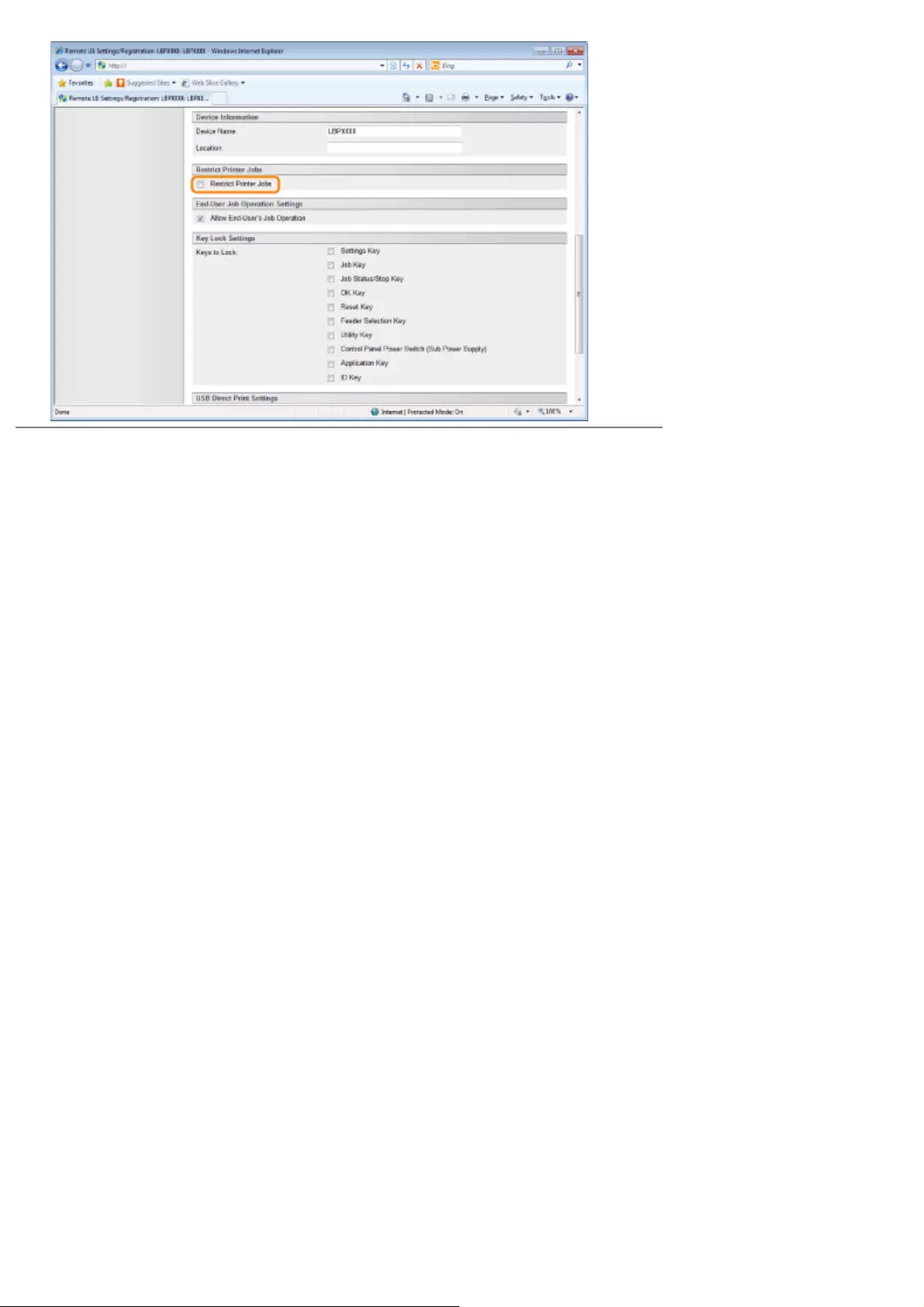
㻢㻥㻥㻌㻛㻌㻥㻥㻤
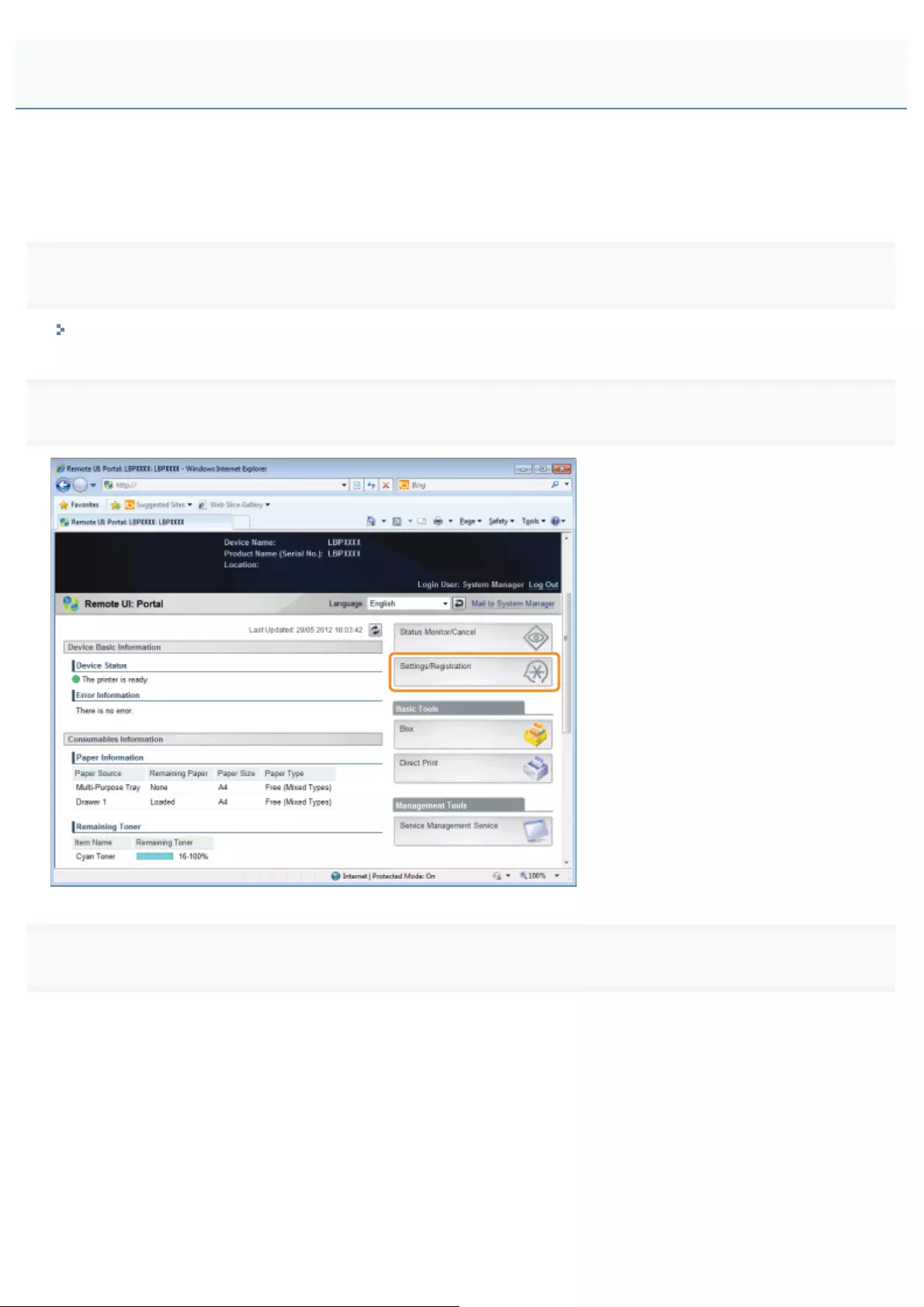
0258-09U
You can specify the job operation permission for end-users using a Web browser (Remote UI).
If the job operation by end-users is permitted, the job operation by the name entered when logging on (the user name)
becomes enabled when you are using the Remote UI in End-User Mode.
1
Start the Remote UI, and then log in as Administrator.
"Starting the Remote UI"
2
Click [Settings/Registration].
3
Select [Security] from the [Management Settings] menu.
Specifying the Job Operation Permission for End-Users
㻣㻜㻜㻌㻛㻌㻥㻥㻤
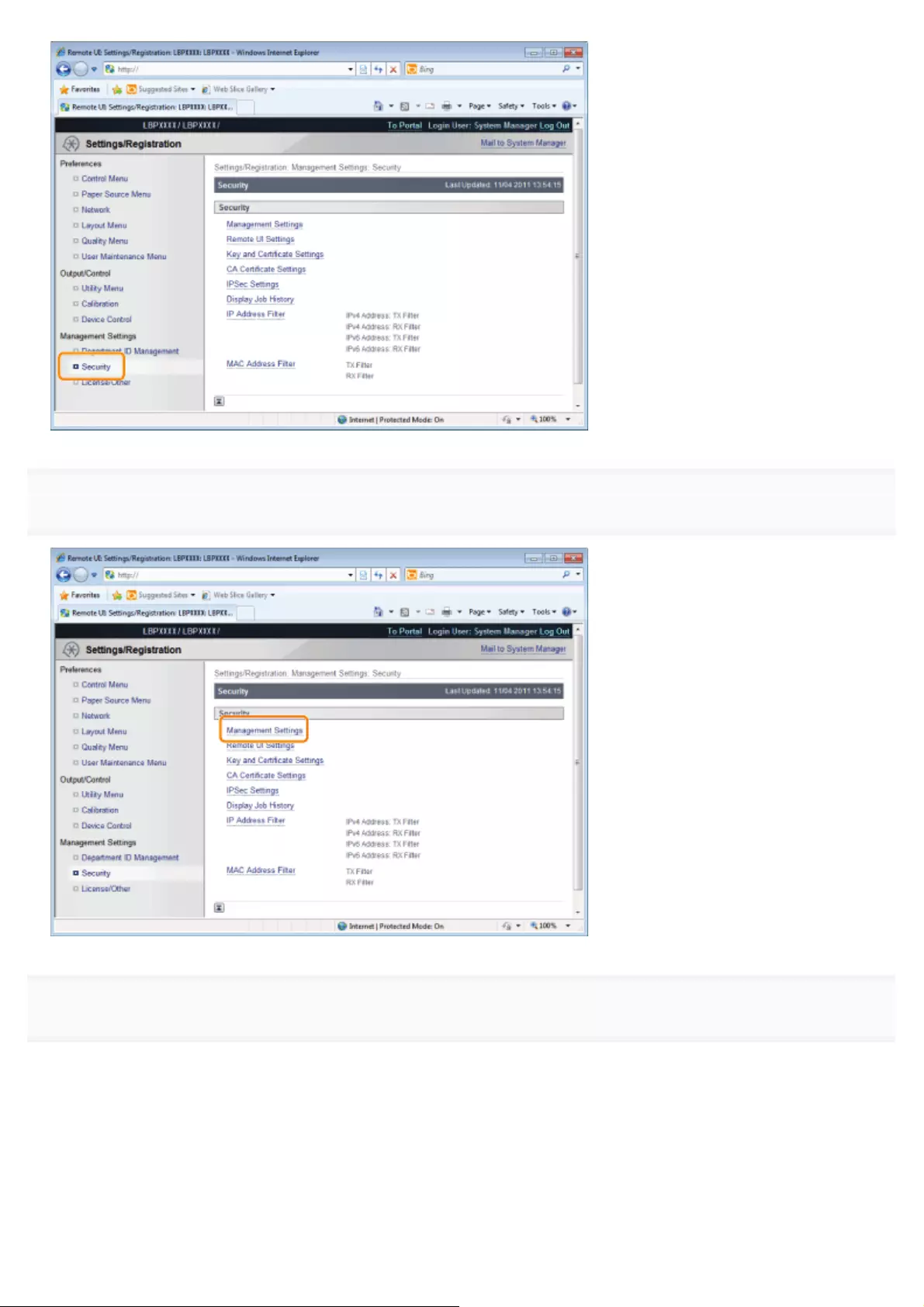
4
Click [Management Settings].
5
Click [Edit...].
㻣㻜㻝㻌㻛㻌㻥㻥㻤
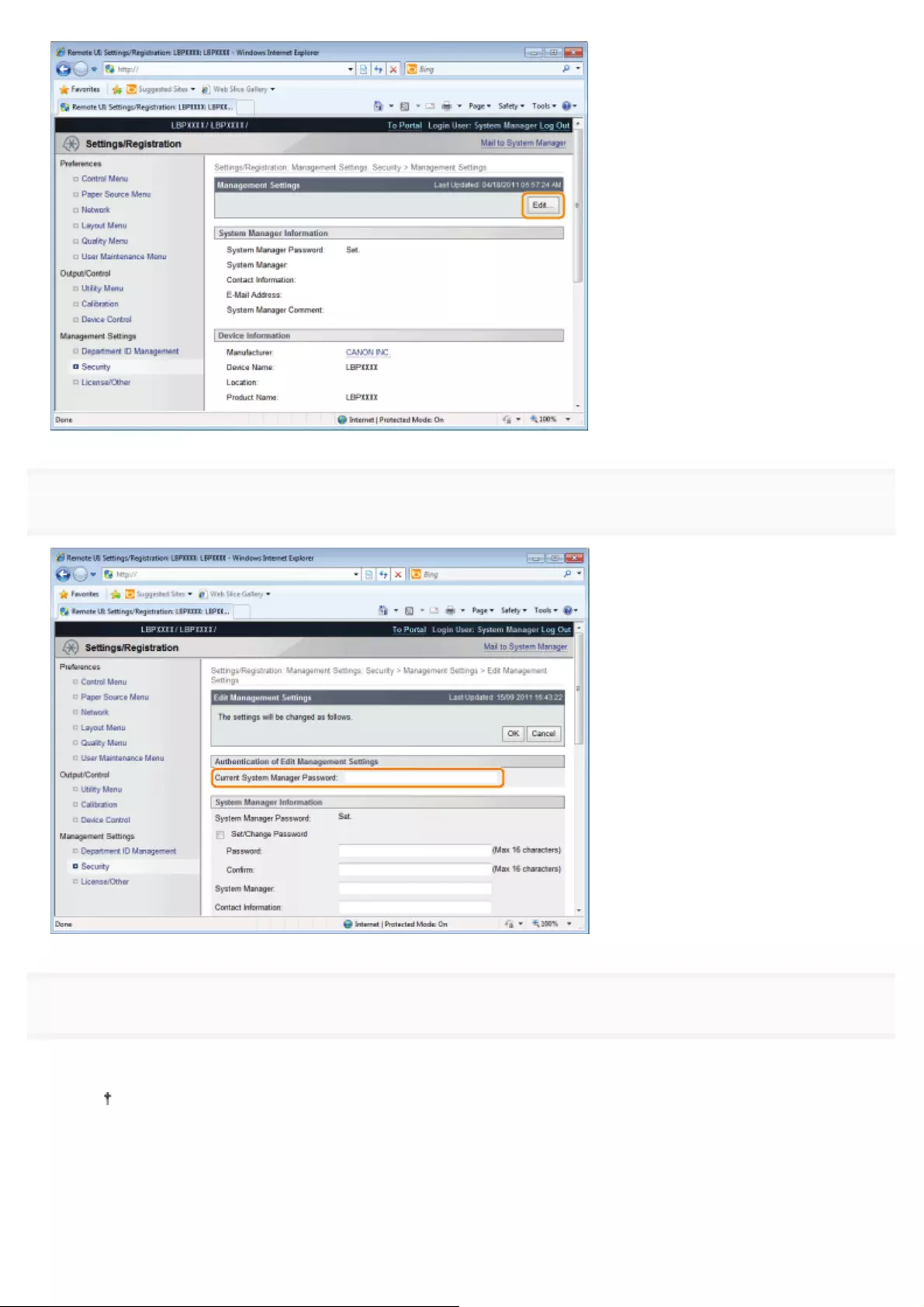
6
Enter the password currently set for [Current System Manager Password].
7
Specify the job operation permission for end-users.
(1) Select the [Allow End-User's Job Operation] check box.
If the check box is cleared, End-User cannot operate all the jobs.
(2) Click [OK].
㻣㻜㻞㻌㻛㻌㻥㻥㻤
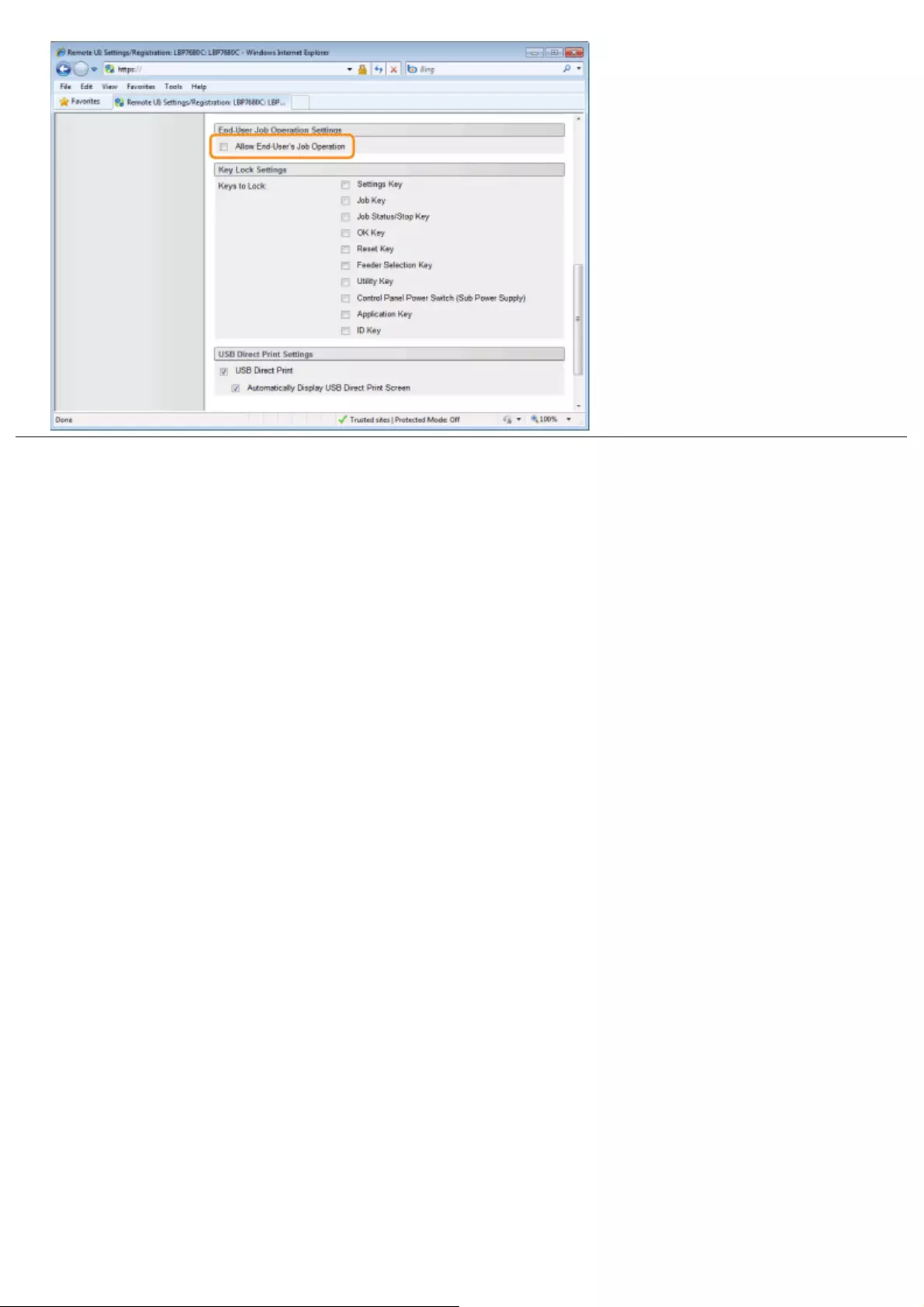
㻣㻜㻟㻌㻛㻌㻥㻥㻤
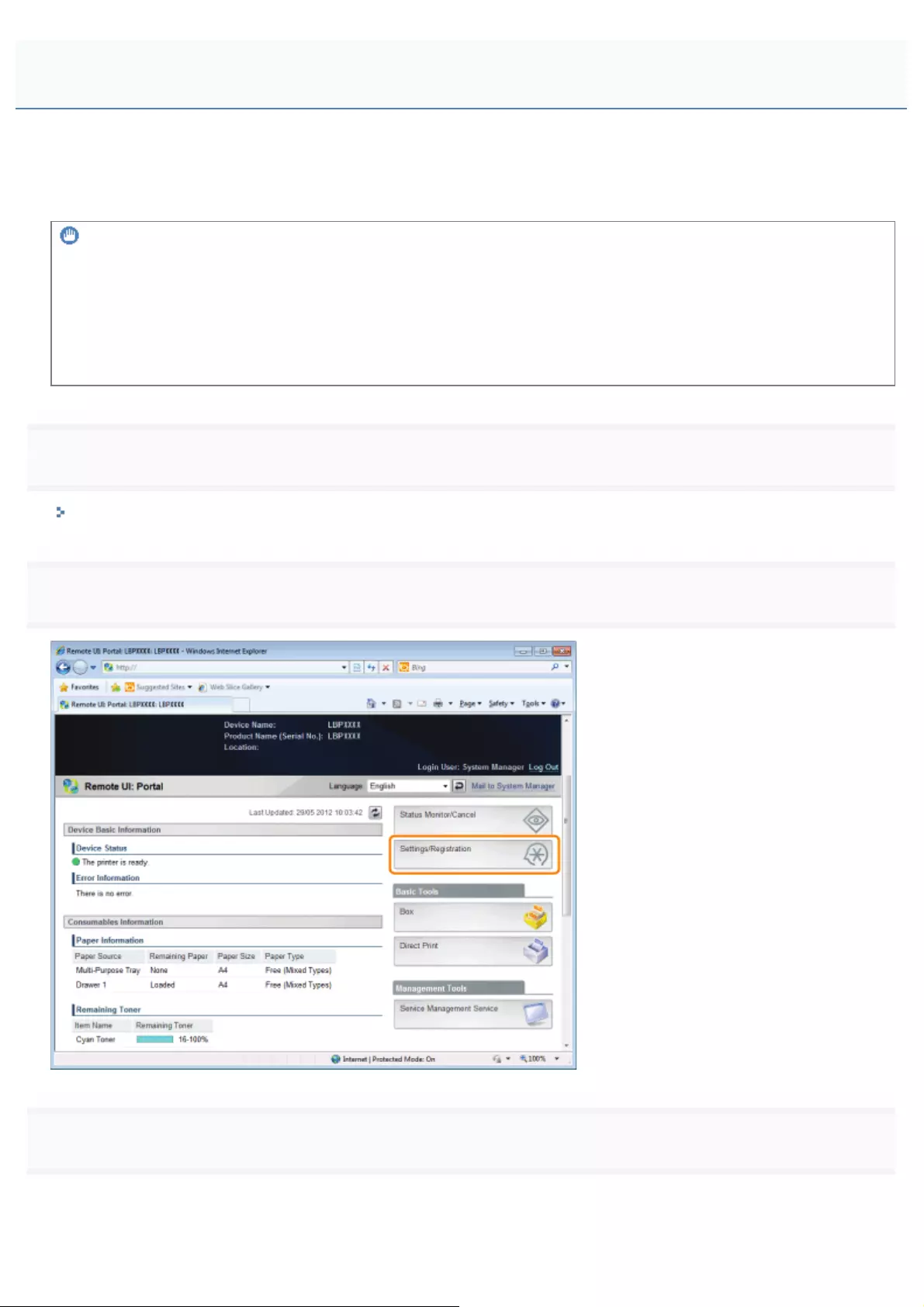
0258-0S4
You can set the key lock function using a Web browser (Remote UI).
When using the key lock function, you can lock the keys on the control panel, prohibiting the change of the printer settings
by a user other than the administrators.
IMPORTANT
If pressing a locked key
The printer beeps and the message <Key locked.> is displayed on the display.
Precautions when setting the key lock function
Set the key lock function while the keys are not being operated.
If the key lock function is set while the keys are being operated, the key lock function is enabled after the key operation.
1
Start the Remote UI and log on in system manager mode.
"Starting the Remote UI"
2
Click [Settings/Registration].
3
Select [Security] in the [Management Settings] menu.
Locking the Keys on the Control Panel (Key Lock Function)
㻣㻜㻠㻌㻛㻌㻥㻥㻤
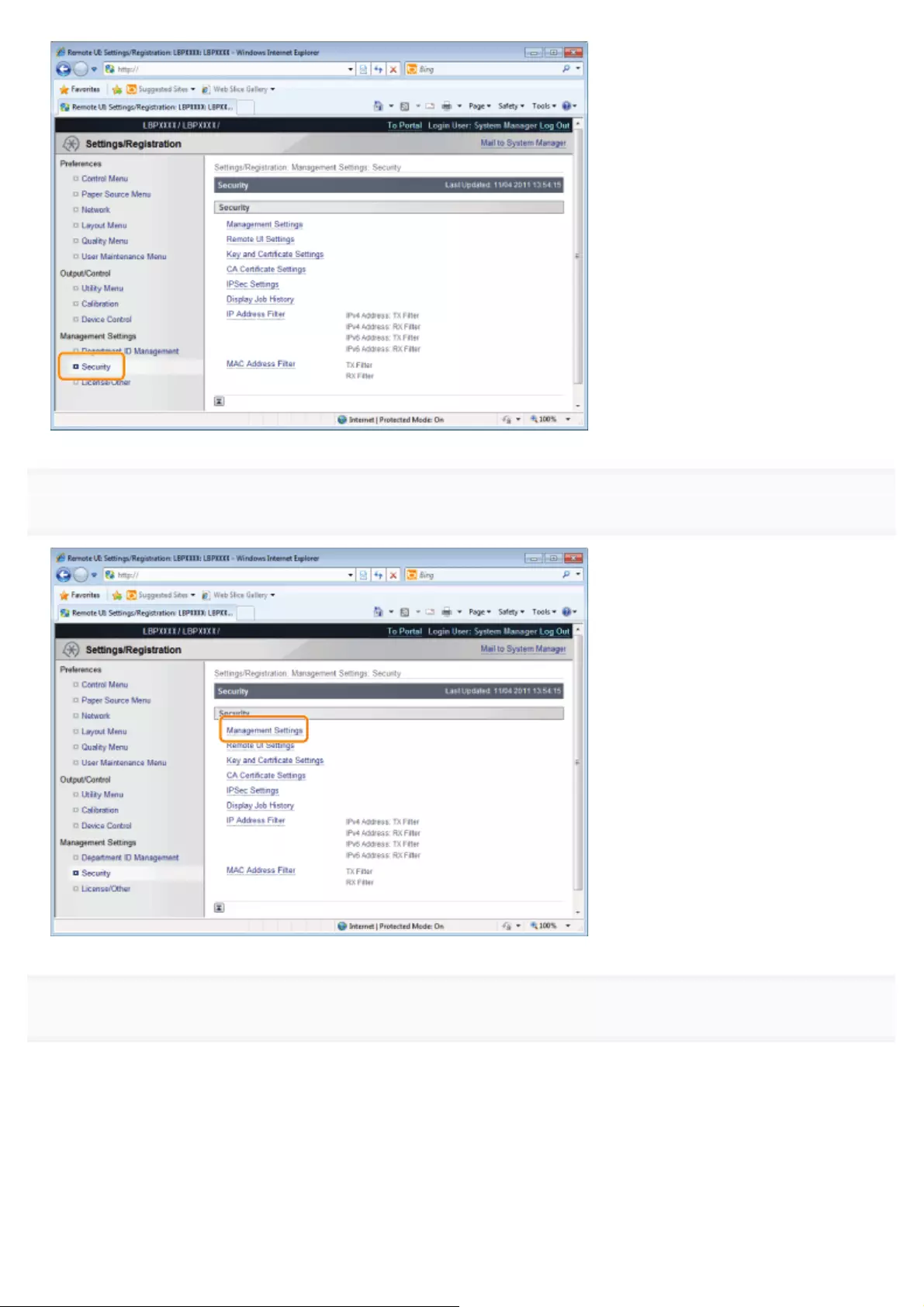
4
Click [Management Settings].
5
Click [Edit...].
㻣㻜㻡㻌㻛㻌㻥㻥㻤
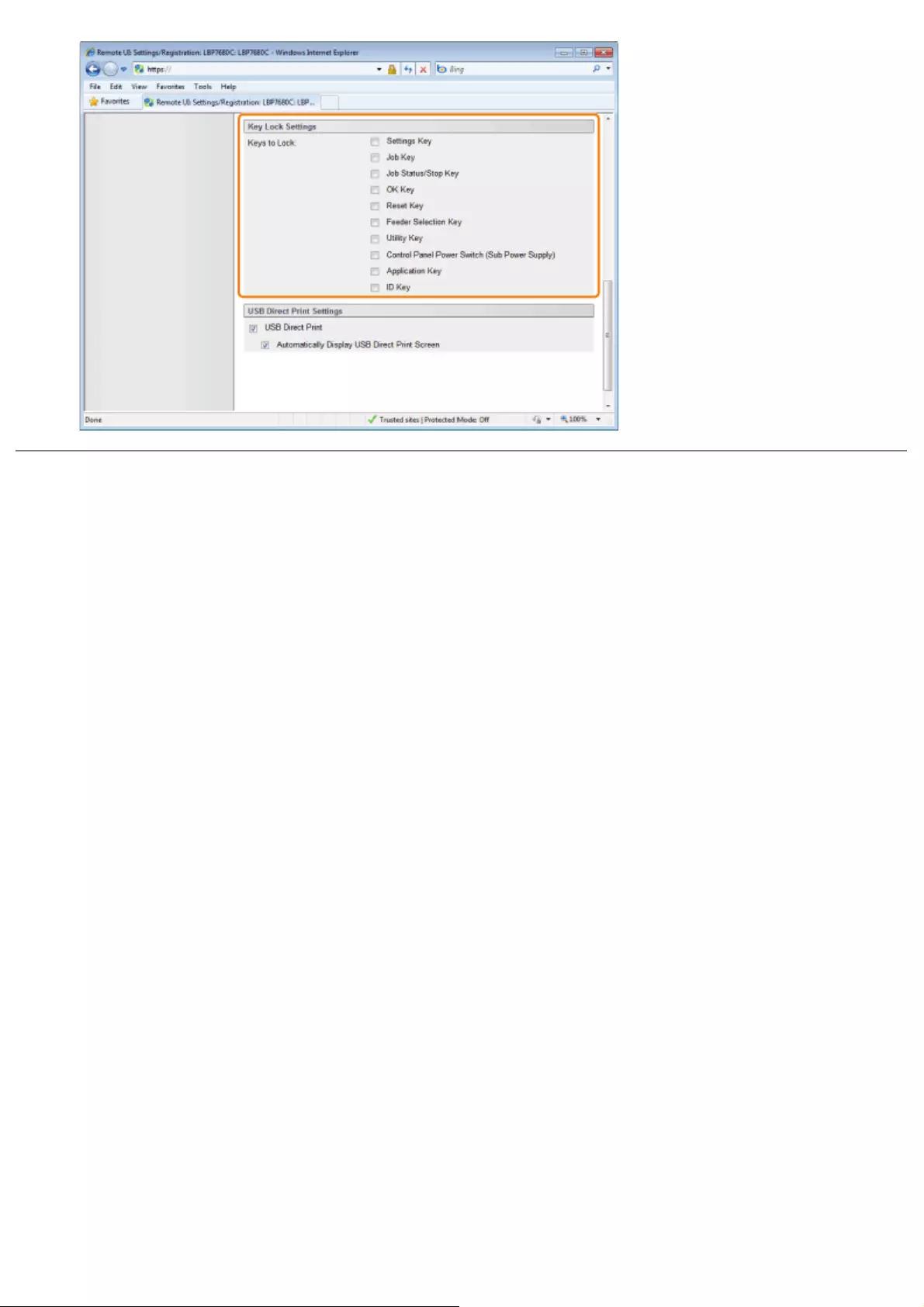
㻣㻜㻣㻌㻛㻌㻥㻥㻤
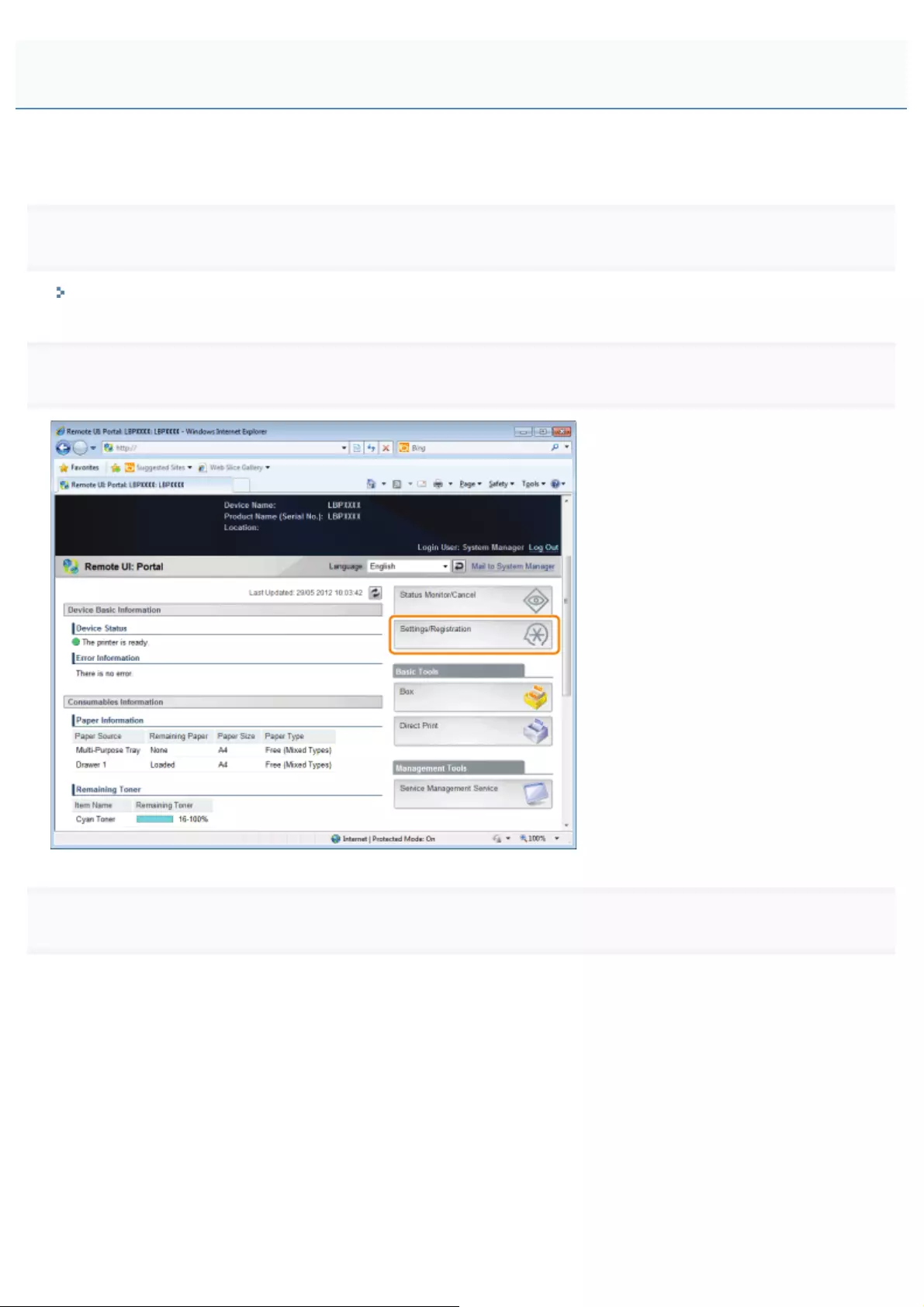
0258-0U2
You can use the Web browser (Remote UI) to set restrictions for USB Direct Print.
1
Start the Remote UI, and then log in as Administrator.
"Starting the Remote UI"
2
Click [Settings/Registration].
3
Select [Security] from the [Management Settings] menu.
Setting Restrictions for USB Direct Print (LBP7680Cx Only)
㻣㻜㻤㻌㻛㻌㻥㻥㻤
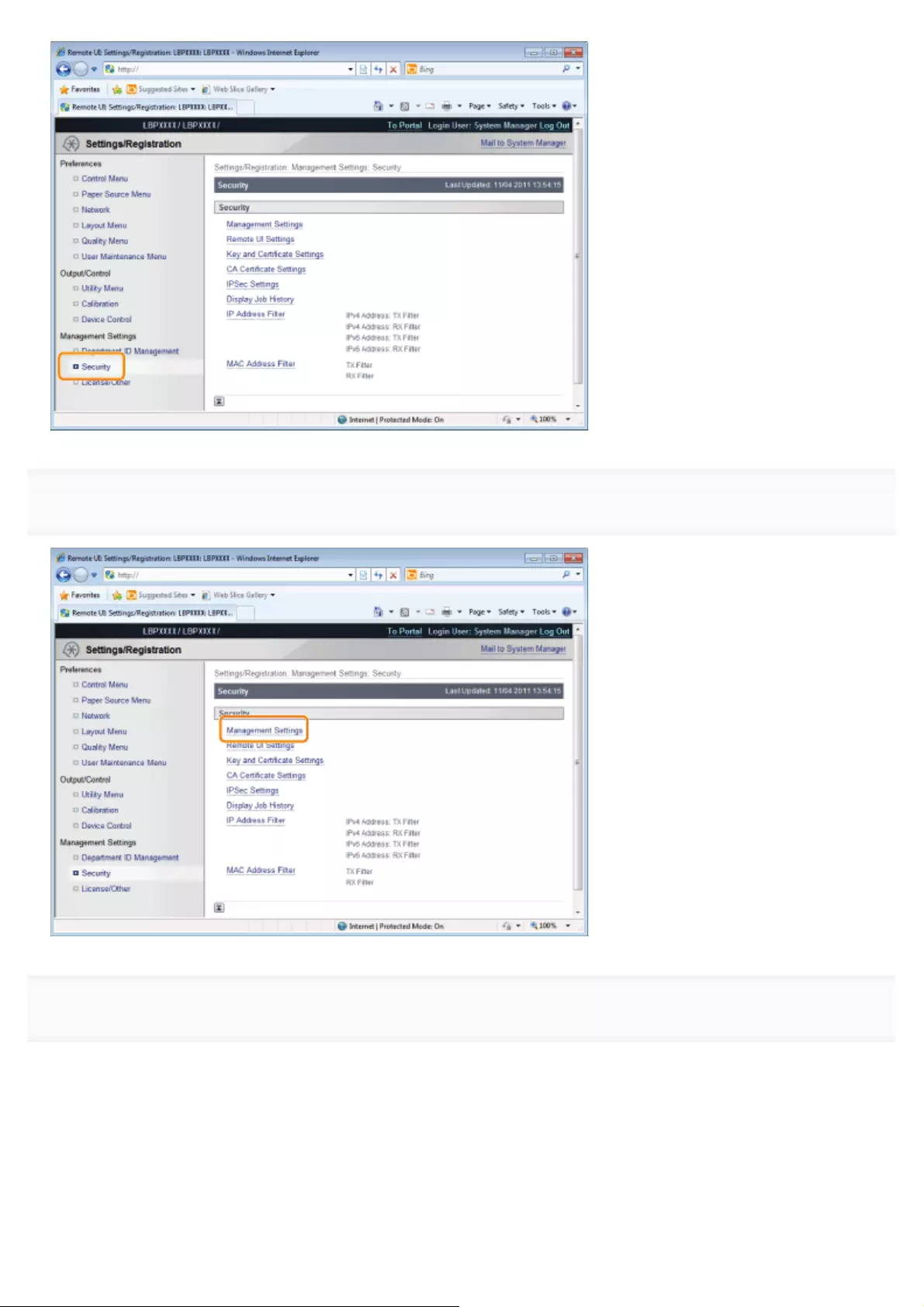
4
Click [Management Settings].
5
Click [Edit...].
㻣㻜㻥㻌㻛㻌㻥㻥㻤
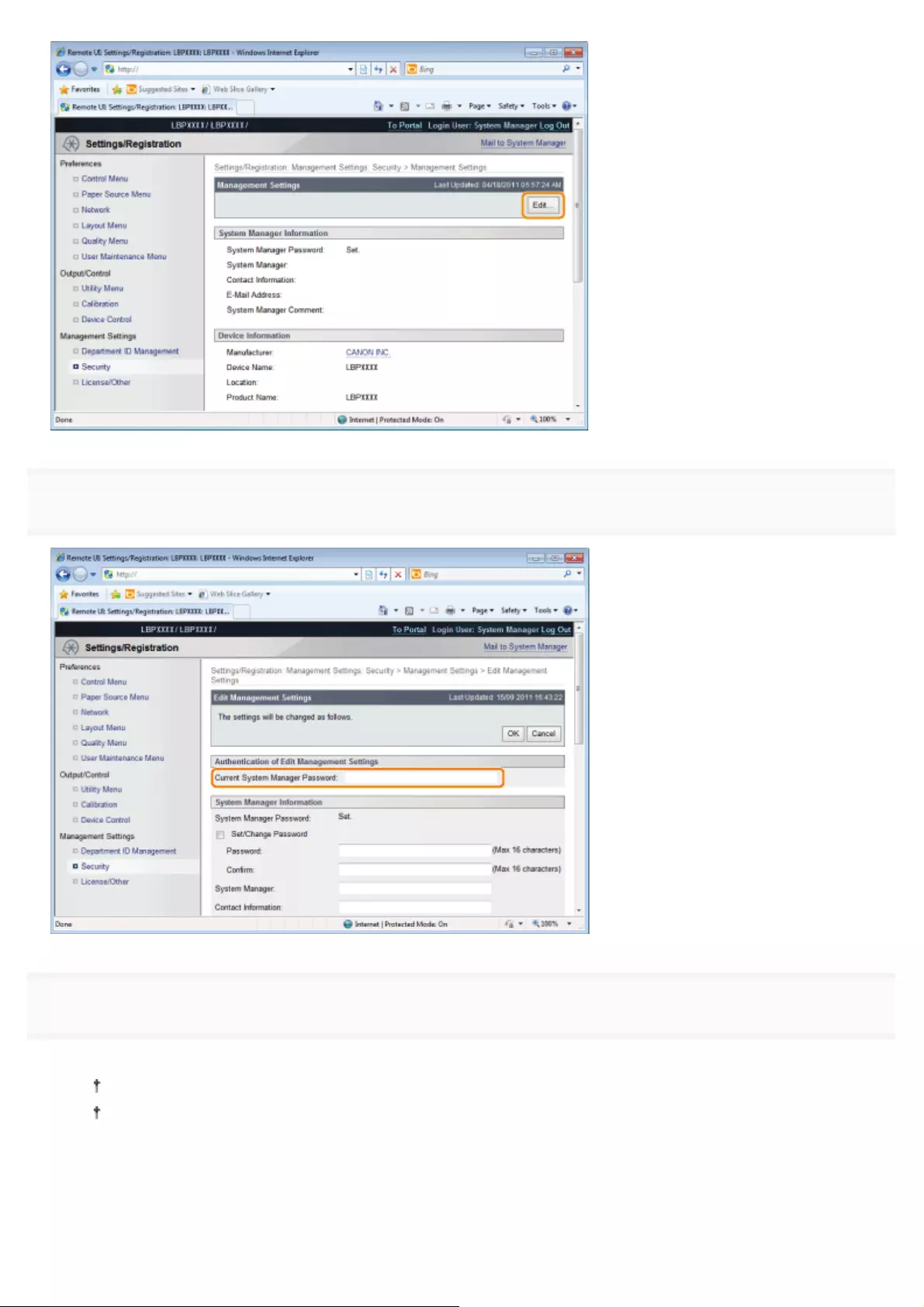
6
Enter the current password in [Current System Manager Password].
7
Set restrictions for USB Direct Print.
(1) Clear the [USB Direct Print] check box.
If the check box is selected, the USB Direct Print function is enabled.
If the [Automatically Display USB Direct Print Screen] check box is selected, the USB Direct Print screen is
automatically displayed when the USB memory device is inserted.
(2) Click [OK].
㻣㻝㻜㻌㻛㻌㻥㻥㻤
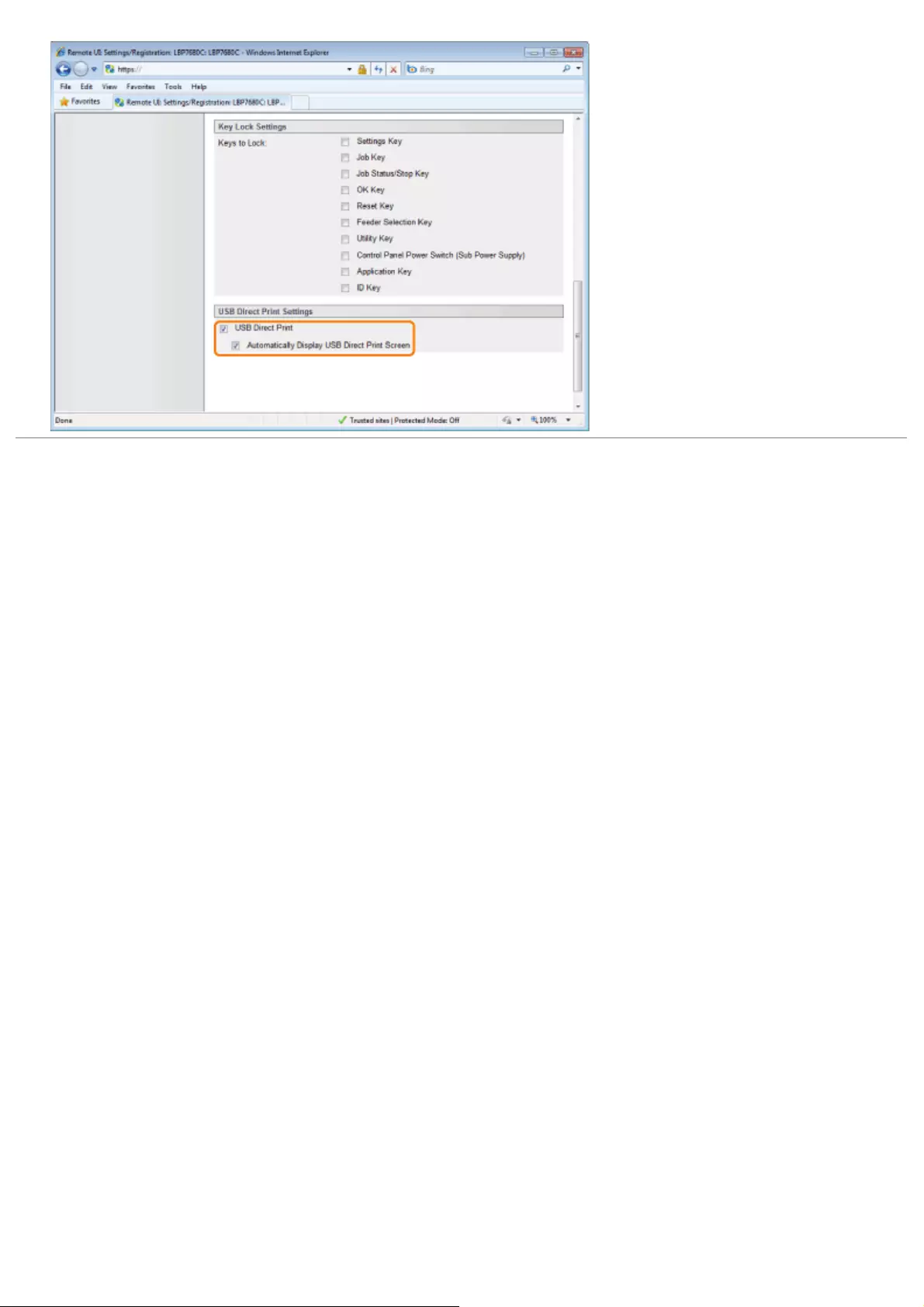
㻣㻝㻝㻌㻛㻌㻥㻥㻤

0258-09W
When using SSL encrypted communication, IEEE802.1X authentication or IPSec encrypted communication, authentication
settings are necessary for the user to check the public key for encryption, the private key for decryption and key
information.
See the following according to your system environment and the options that you want to specify.
When creating and using a key and its certificate with this printer
Displaying the [Key and Certificate Settings] Page in the Remote UI
Newly Creating a Key and Its Certificate
Newly create a key pair (the public key and private key) and its certificate.
Checking a Certificate
Confirm the contents of the certificate of a created key.
Deleting a Key and Its Certificate
Delete a created key and its certificate.
When using a key/certificate file created by a device other than this printer
Displaying the [Key and Certificate Settings] Page in the Remote UI
Installing a Key/Certificate File on the Printer
Install a key/certificate file created by a device other than this printer on this printer.
Registering a Key and Its Certificate in the Printer
Register a key pair (the public key and private key) and its certificate in a key/certificate file installed on this printer
so that you can use them in the printer.
Checking a Certificate
Confirm the contents of the certificate of a created key.
Deleting a Key and Its Certificate
Delete a created key and its certificate.
IMPORTANT
The number of key and certificate which you can create, register, or install
You can create and register up to six "keys and certificates" (the total includes the one that is installed). Also, only one
key and certificate file can be installed. If you cannot create, register or install them, delete unnecessary keys and
certificates.
About a Key/Certificate File which can be installed on this printer
The key generation algorithm is "RSA". You can only install files with the extensions ".P12" or ".PFX".
The file format which you can register is a PKCS#12 file in DER (binary encoding) format.
Setting Keys and Certificates
㻣㻝㻞㻌㻛㻌㻥㻥㻤
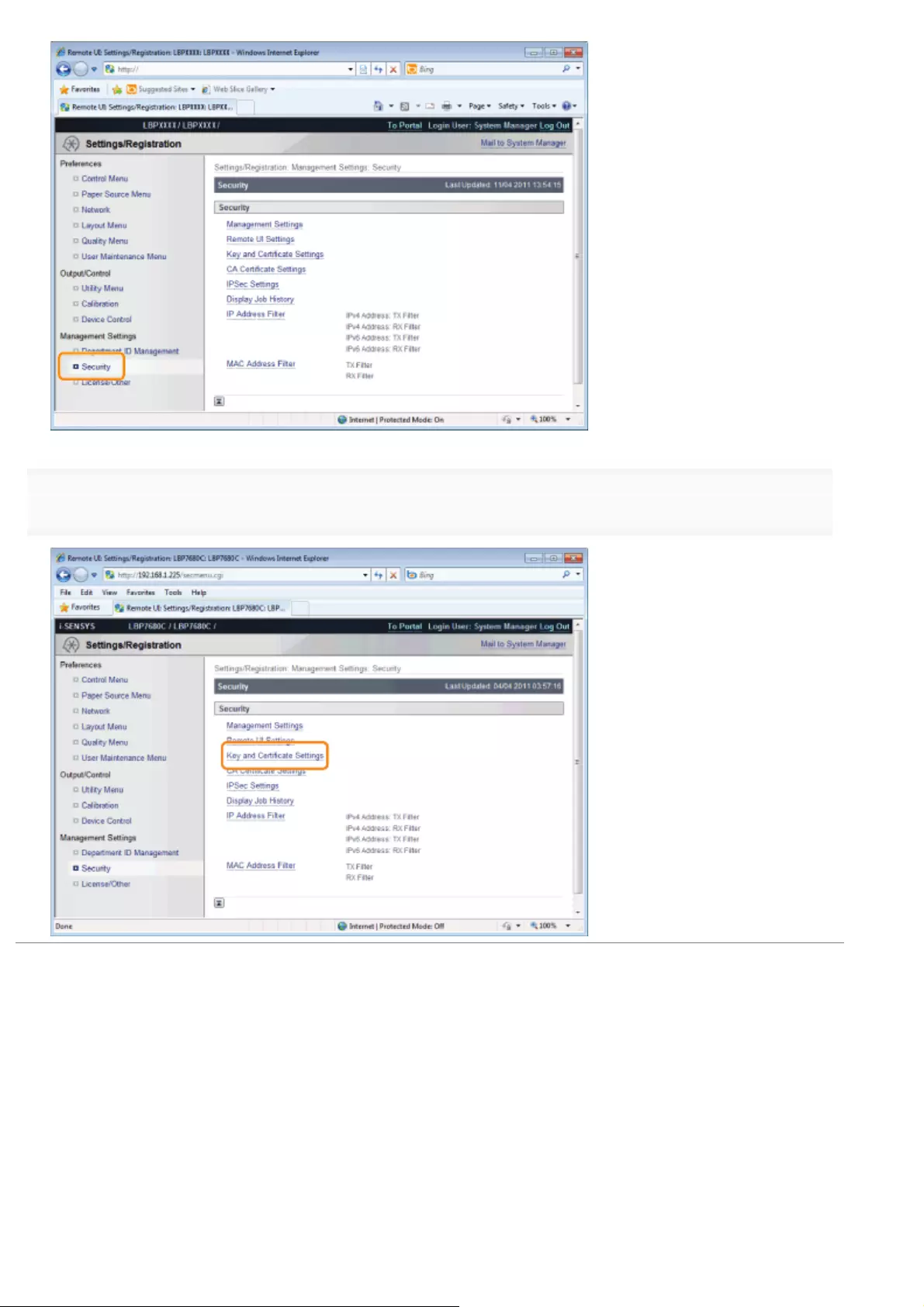
4
Click [Key and Certificate Settings].
㻣㻝㻠㻌㻛㻌㻥㻥㻤
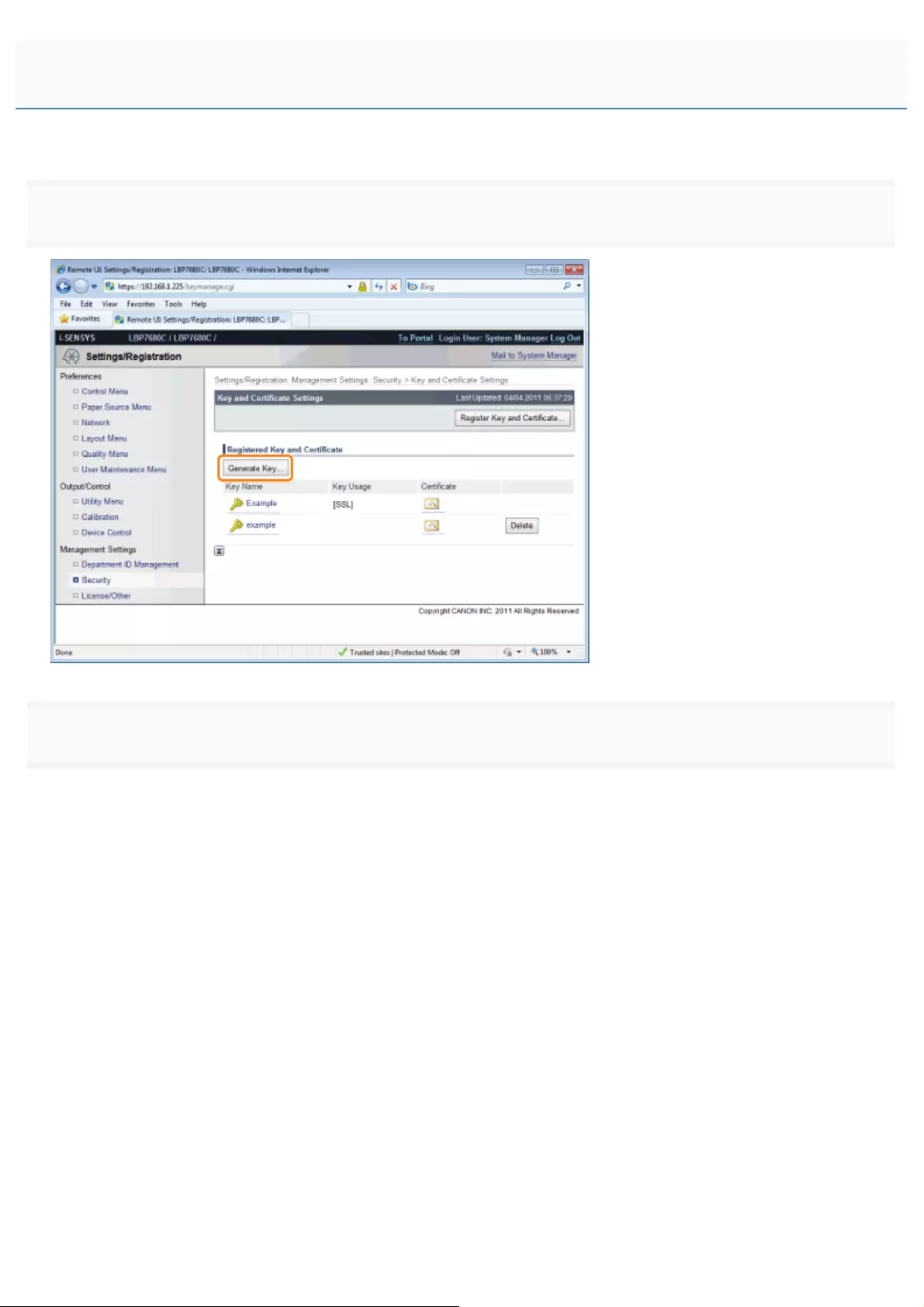
0258-0A0
1
Click [Generate Key...].
2
Enter the name of the key to be newly created.
Up to 24 alphanumeric characters can be entered.
Newly Creating a Key and Its Certificate
㻣㻝㻡㻌㻛㻌㻥㻥㻤
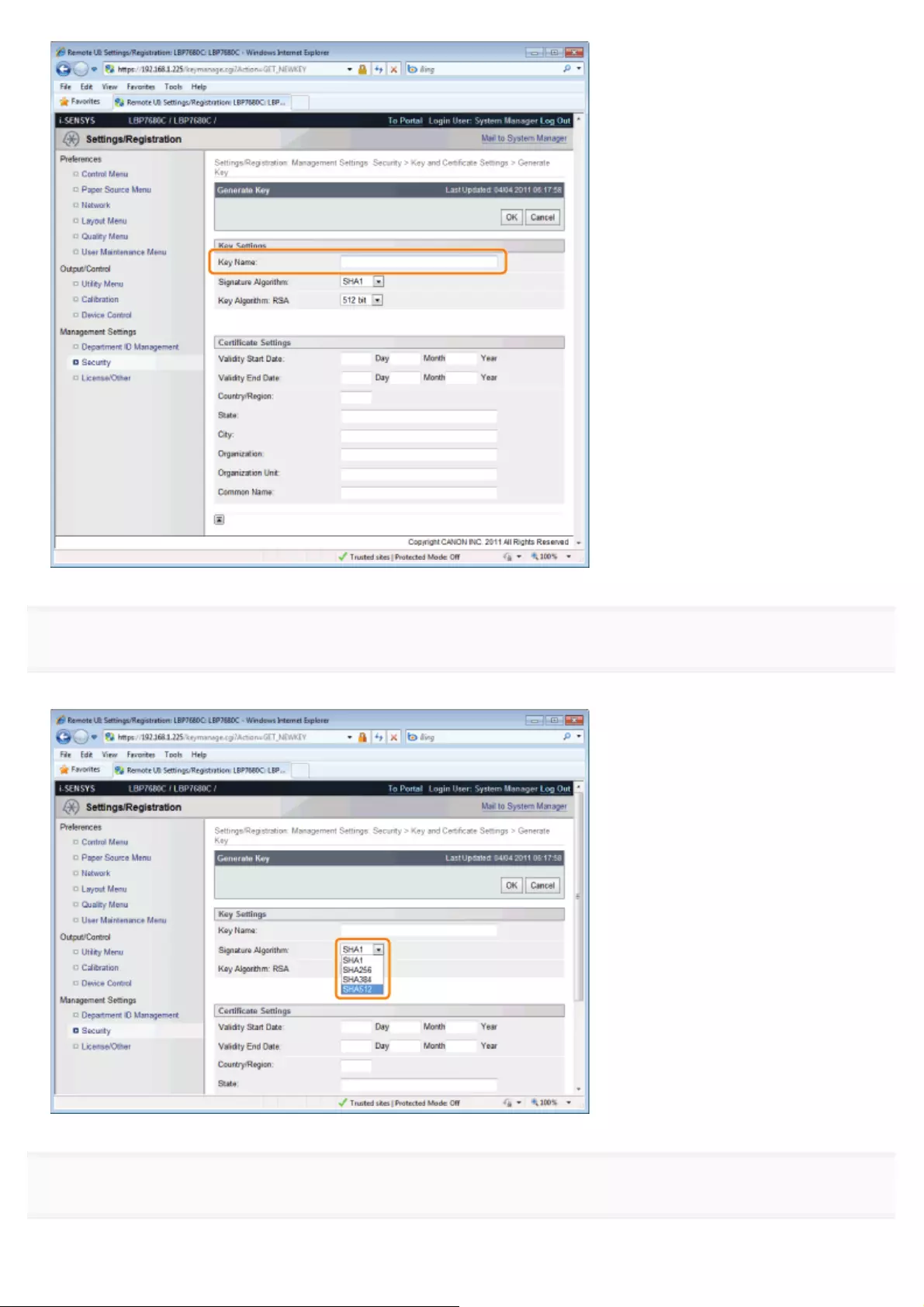
3
Select [Signature Algorithm].
Select from [SHA1], [SHA256], [SHA384], or [SHA512].
4
Select [Key Algorithm].
Select from [512 bit], [1024 bit], [2048 bit], or [4096 bit].
㻣㻝㻢㻌㻛㻌㻥㻥㻤
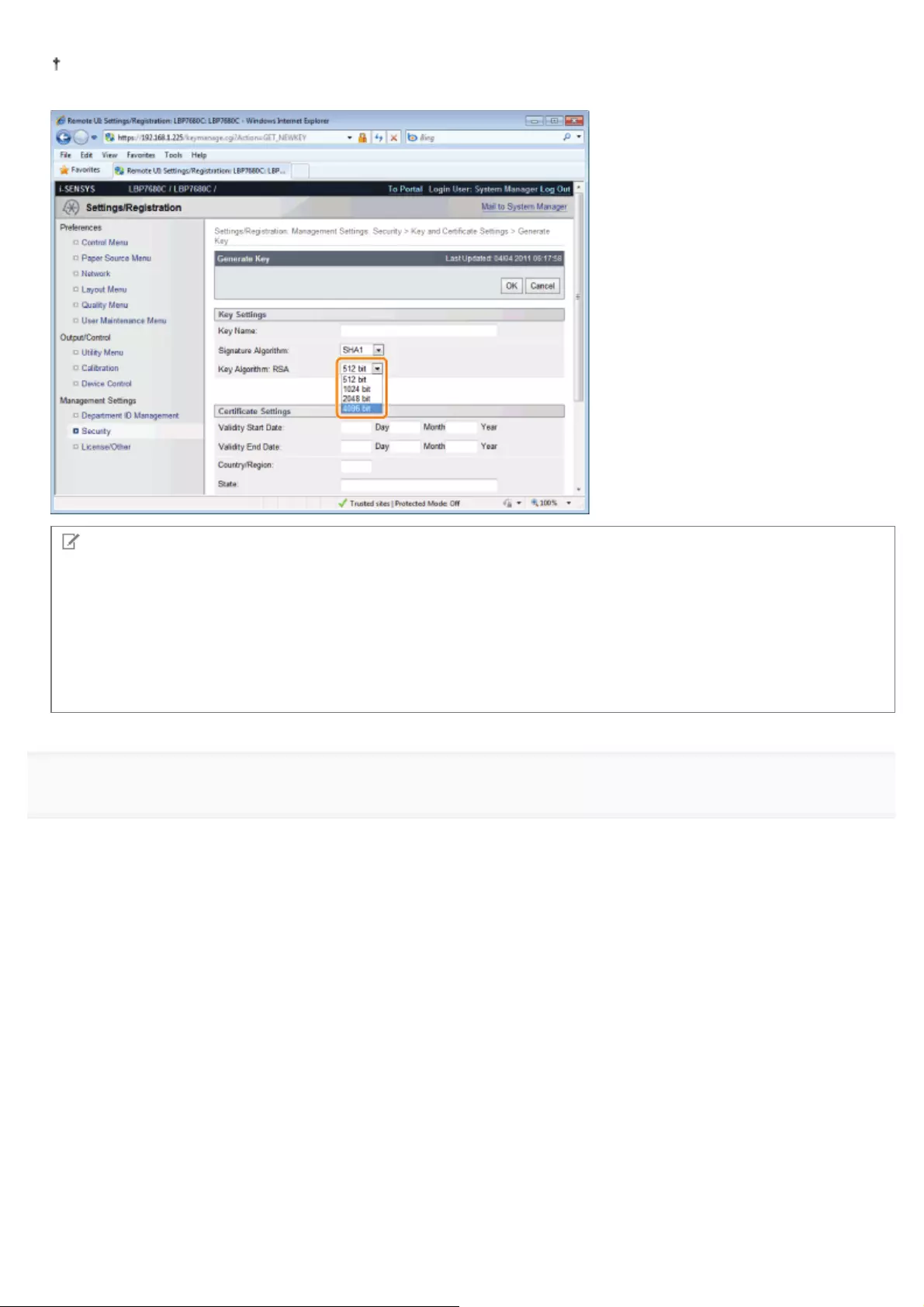
When you select [SHA384] and [SHA512] in [Signature Algorithm], you can create a key only when selecting other than
[512 bit].
NOTE
Key Generation Algorithm
The generation algorithm when the printer generates a key is RSA.
About the key length
Although using the longer key makes it more difficult to decode data, the processing speed on encryption and decryption
is slower.
Select the key length according to the needs of security for data communication.
5
Specify the effective date and expiration date of the self-sign server certificate.
You can enter date between 1/1/2000 (1 Day 1 Month 2000 Year) and 31/12/2037 (31 Day 12 Month 2037 Year).
㻣㻝㻣㻌㻛㻌㻥㻥㻤

6
Specify the country/region name for the self-sign server certificate.
Enter the Internet country code with 2 or less characters.
㻣㻝㻤㻌㻛㻌㻥㻥㻤

7
Specify the required information for the self-sign server certificate.
[State]: Enter the name of the state. Up to 24 alphanumeric characters can be entered.
[City]: Enter the name of the city. Up to 24 alphanumeric characters can be entered.
[Organization]: Enter the name of the organization. Up to 24 alphanumeric characters can be entered.
[Organization Unit]: Enter the organization unit such as a section name. Up to 24 alphanumeric characters can be
entered.
[Common Name]: Enter the IP address or FQDN (in the style of "xyz.company.com") of this printer. Up to 41
alphanumeric characters can be entered.
IMPORTANT
To issue the self-sign server certificate
Specify the setting for at least one of the options among [Country/Region], [State], [City], [Organization], [Organization
Unit], and [Common Name].
When all the fields are blank, the self-sign server certificate is not issued.
If you are using Windows Vista, 7 or Server 2008
[Common Name] needs to be the same as the name (FQDN) or IP address that is specified for IPPS connection.
For FQDN, enter "FQDN" in [Common Name].
For IP address, enter the IP address of this printer in [Common Name].
Obtaining the Public Key for This Printer When Using SSL Encrypted Communication
8
Click [OK].
㻣㻝㻥㻌㻛㻌㻥㻥㻤
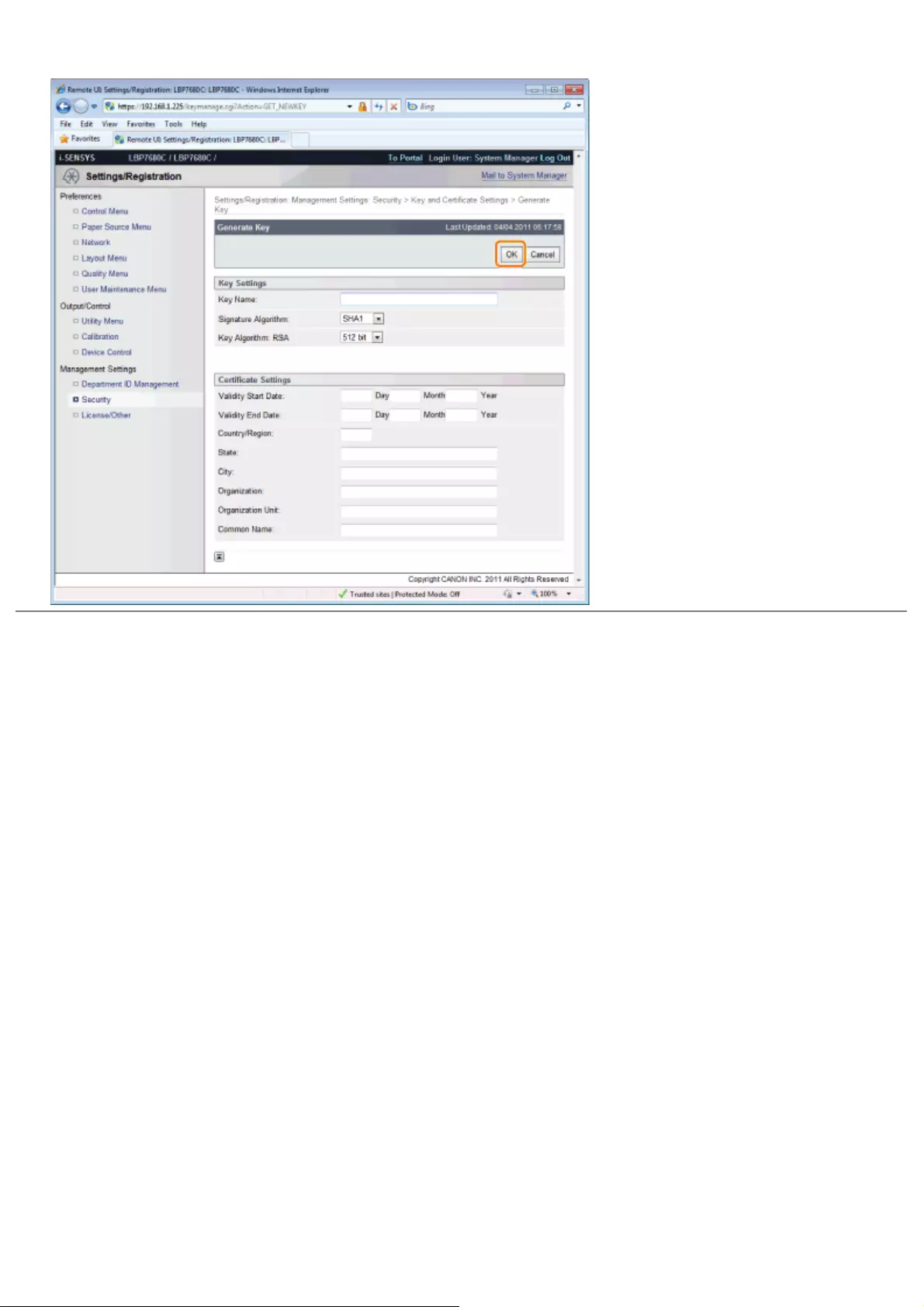
ĺThe key and certificate creation starts.
㻣㻞㻜㻌㻛㻌㻥㻥㻤
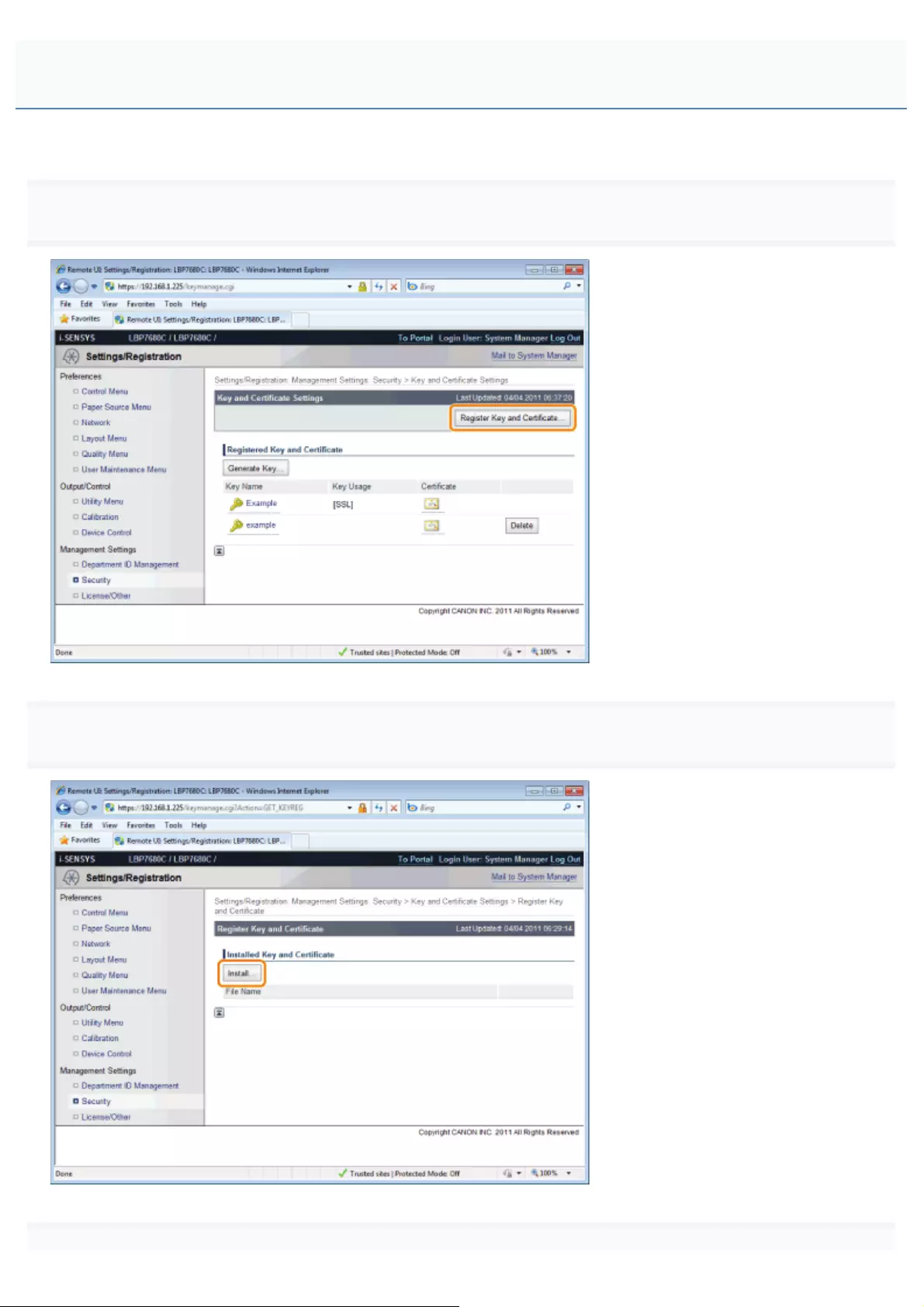
0258-0A1
1
Click [Register Key and Certificate...].
2
Click [Install...].
3
Installing a Key/Certificate File on the Printer
㻣㻞㻝㻌㻛㻌㻥㻥㻤
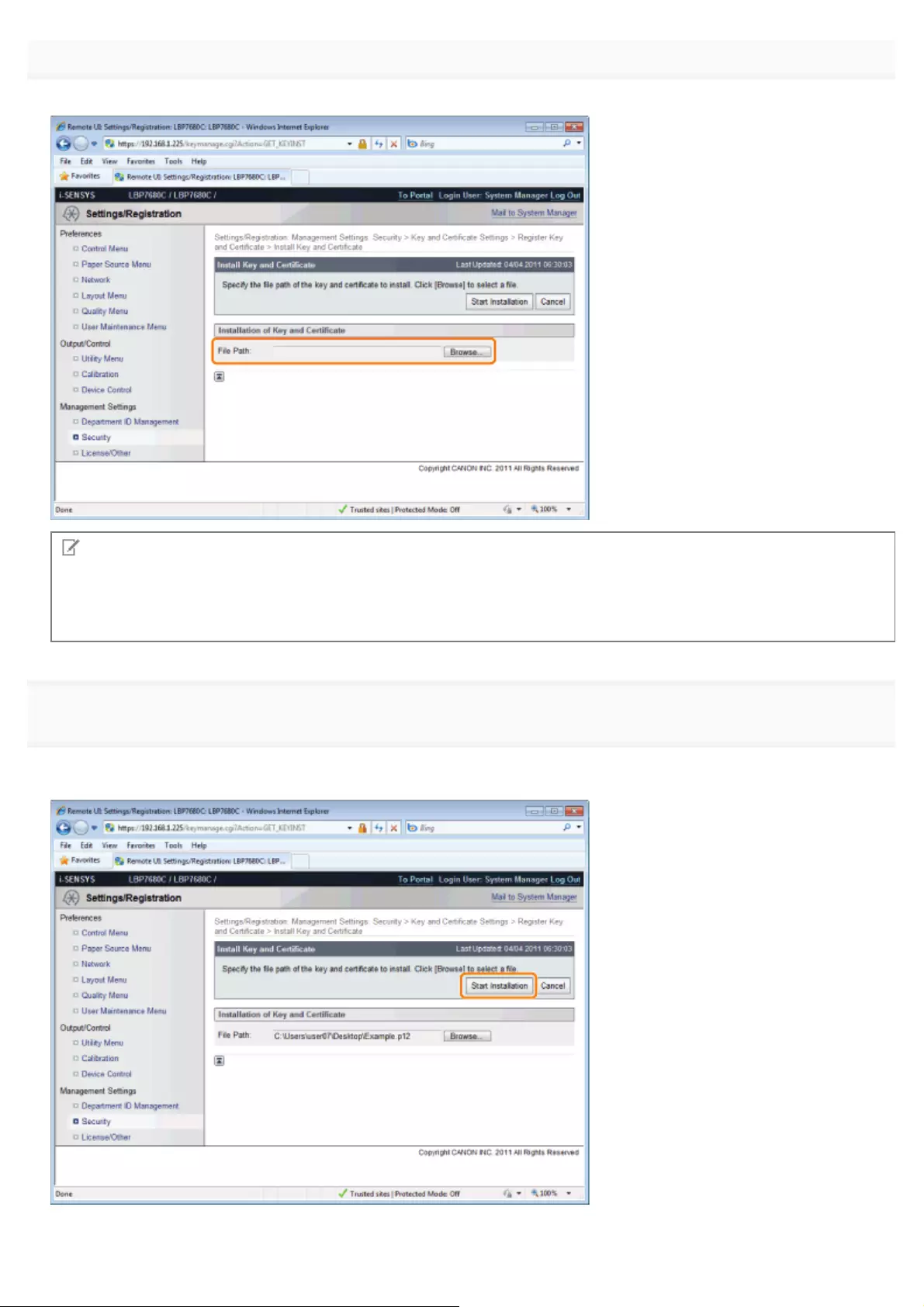
Specify the directory of a key/certificate file.
Click [Browse...] to select the key/certificate file or enter the directory for the saved key/certificate file.
NOTE
About the name of the key/certificate file
Except for the extension up to 20 alphanumeric characters can be specified in [File Path] for the file name.
Specify the file name so that its length is 20 characters or less.
4
Click [Start Installation].
ĺThe installation of the key/certificate file starts.
To specify the key pair (the public key and private key) and its certificate in a key/certificate file installed on this printer so
that you can use them in the printer, see "Registering a Key and Its Certificate in the Printer " and register the key pair (the
㻣㻞㻞㻌㻛㻌㻥㻥㻤

public key and private key) and its certificate in the printer after installing the key/certificate file.
㻣㻞㻟㻌㻛㻌㻥㻥㻤
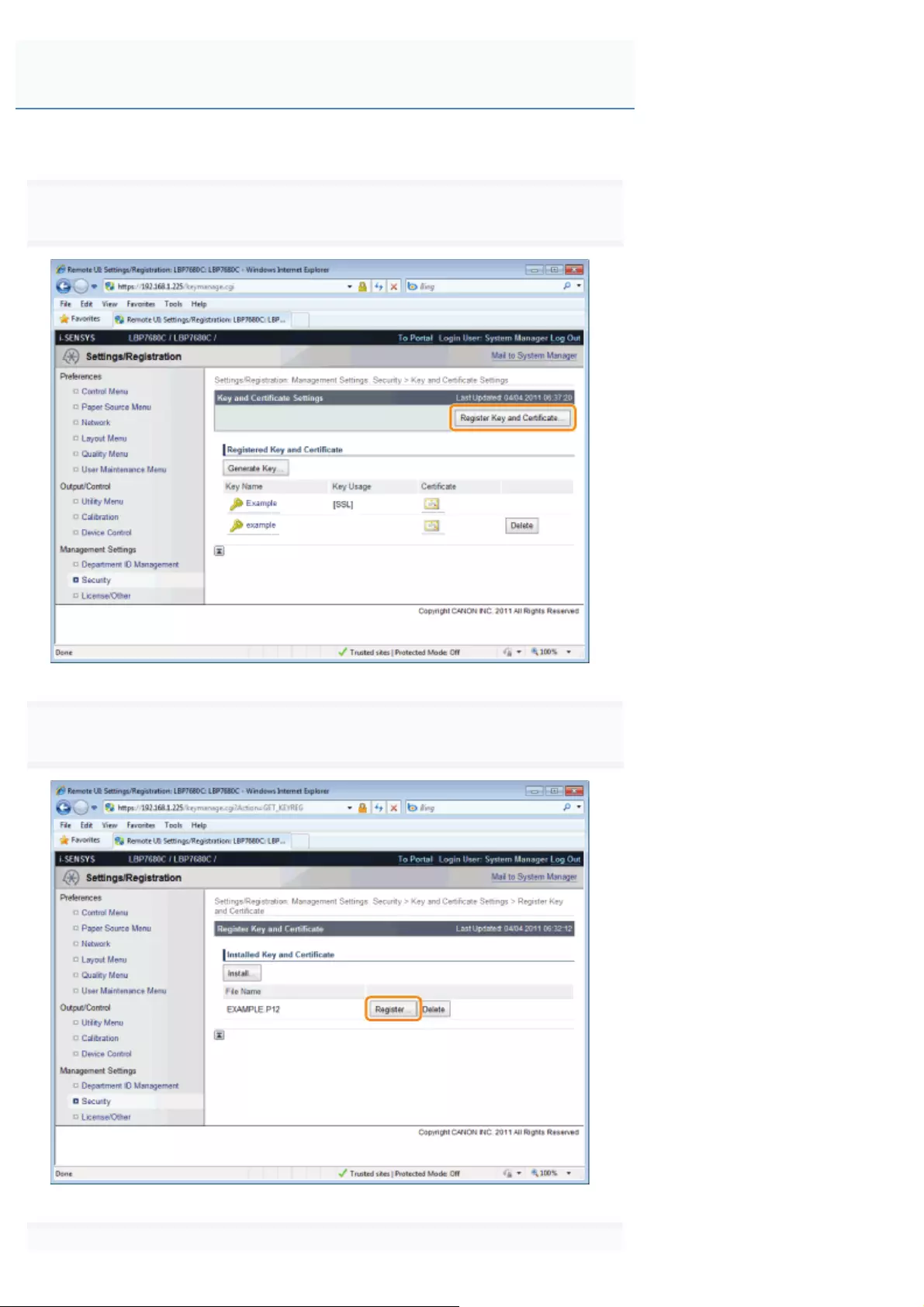
0258-0A2
1
Click [Register Key and Certificate...].
2
Click [Register...].
3
Registering a Key and Its Certificate in the Printer
㻣㻞㻠㻌㻛㻌㻥㻥㻤

Enter the name of the key to be registered.
Up to 24 alphanumeric characters can be entered.
4
Enter the password specified for the private key.
Up to 24 alphanumeric characters can be entered.
5
Click [OK].
ĺThe key and certificate registration starts.
㻣㻞㻡㻌㻛㻌㻥㻥㻤
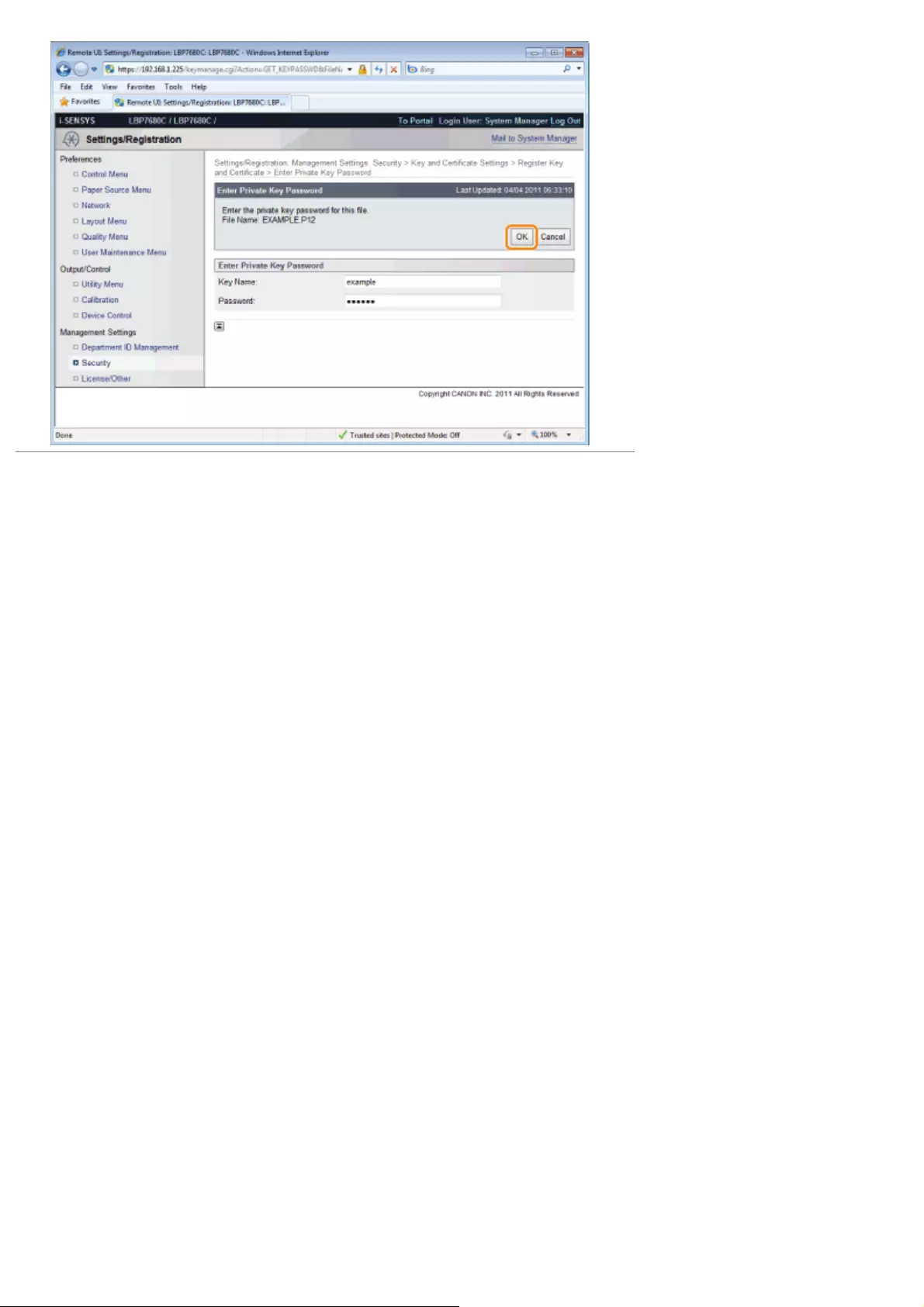
㻣㻞㻢㻌㻛㻌㻥㻥㻤

0258-0A4
1
Click the icon of the certificate to be confirmed.
[ ] is displayed only when a certificate has been issued for the created key.
2
If you want to verify the certificate, click [Certificate Verification].
ĺThe verification result is displayed.
Checking a Certificate
㻣㻞㻣㻌㻛㻌㻥㻥㻤

Check the verification result, and then click [Back to Certificate Details].
㻣㻞㻤㻌㻛㻌㻥㻥㻤

0258-0A5
1
Click [Delete] for the key and its certificate that you want to erase.
NOTE
About [Delete]
[Delete] is displayed only when the key is not specified as the default key.
2
Click [OK].
ĺThe selected key and its certificate are deleted.
Deleting a Key and Its Certificate
㻣㻞㻥㻌㻛㻌㻥㻥㻤
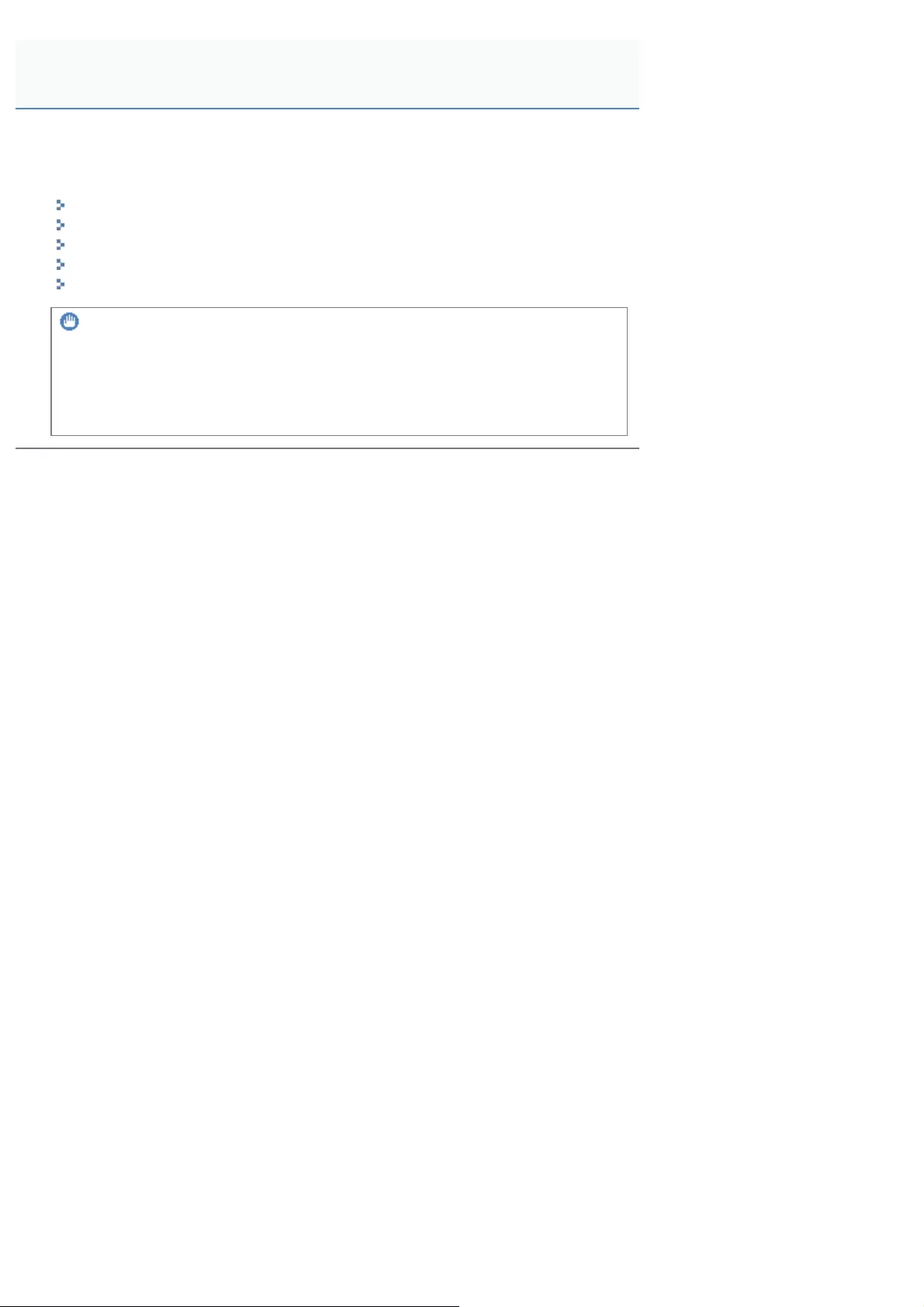
0258-0KX
Set CA certificates needed by the server in order to use SSL server communication.
See the following sections.
"Displaying the [CA Certificate Settings] Page in the Remote UI"
"Installing CA Certificate Files on the Printer"
"Registering CA Certificates in the Printer"
"Checking CA Certificates"
"Deleting CA Certificates"
IMPORTANT
Number of CA Certificates that can be Registered/Installed
Registered: 4
Installed: 2
If you cannot register or install one, delete unnecessary keys and certificates.
Setting CA Certificates
㻣㻟㻜㻌㻛㻌㻥㻥㻤
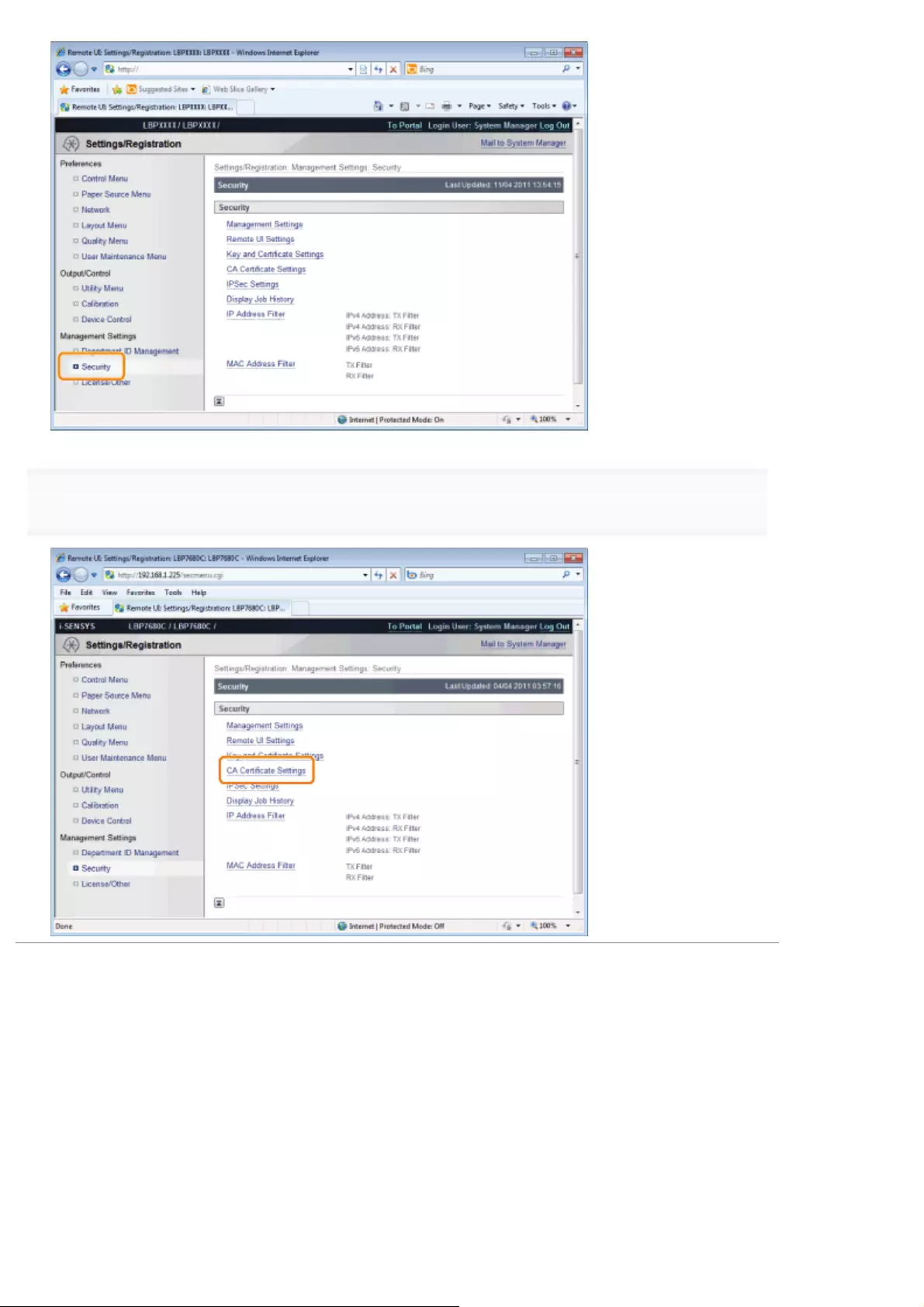
4
Click [CA Certificate Settings].
㻣㻟㻞㻌㻛㻌㻥㻥㻤
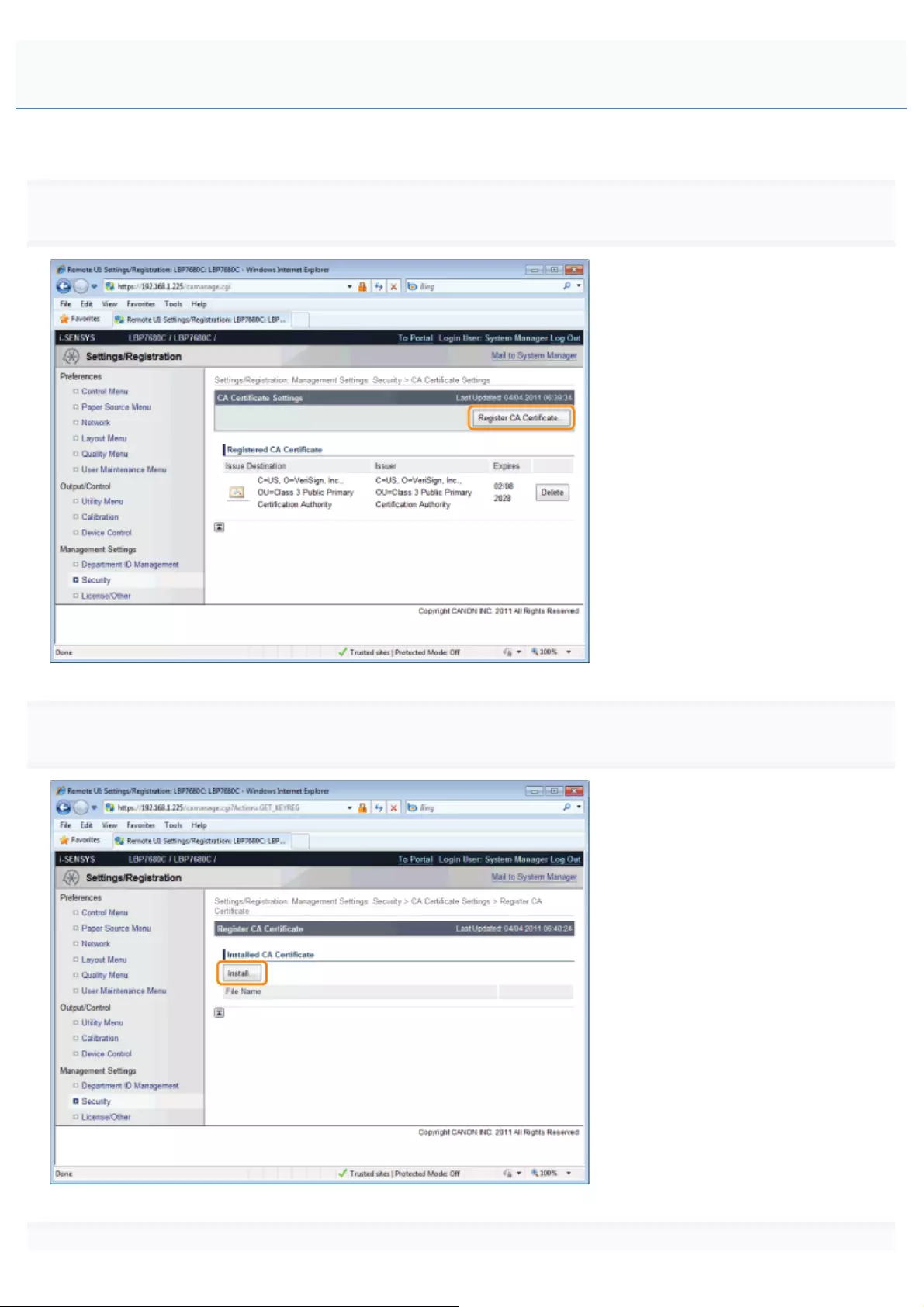
0258-0L0
1
Click [Register CA Certificate...].
2
Click [Install...].
3
Installing CA Certificate Files on the Printer
㻣㻟㻟㻌㻛㻌㻥㻥㻤

Specify the location of the CA certificate file.
Either select the CA certificate file by clicking [Browse...], or enter the location where CA certificate file is stored.
4
Click [Start Installation].
ĺThe CA file installation starts.
To enable the printer to use the CA certificate installed on the printer, after the CA certificate installation is complete, refer
to "Registering CA Certificates in the Printer" and register the CA certificate in the printer.
㻣㻟㻠㻌㻛㻌㻥㻥㻤
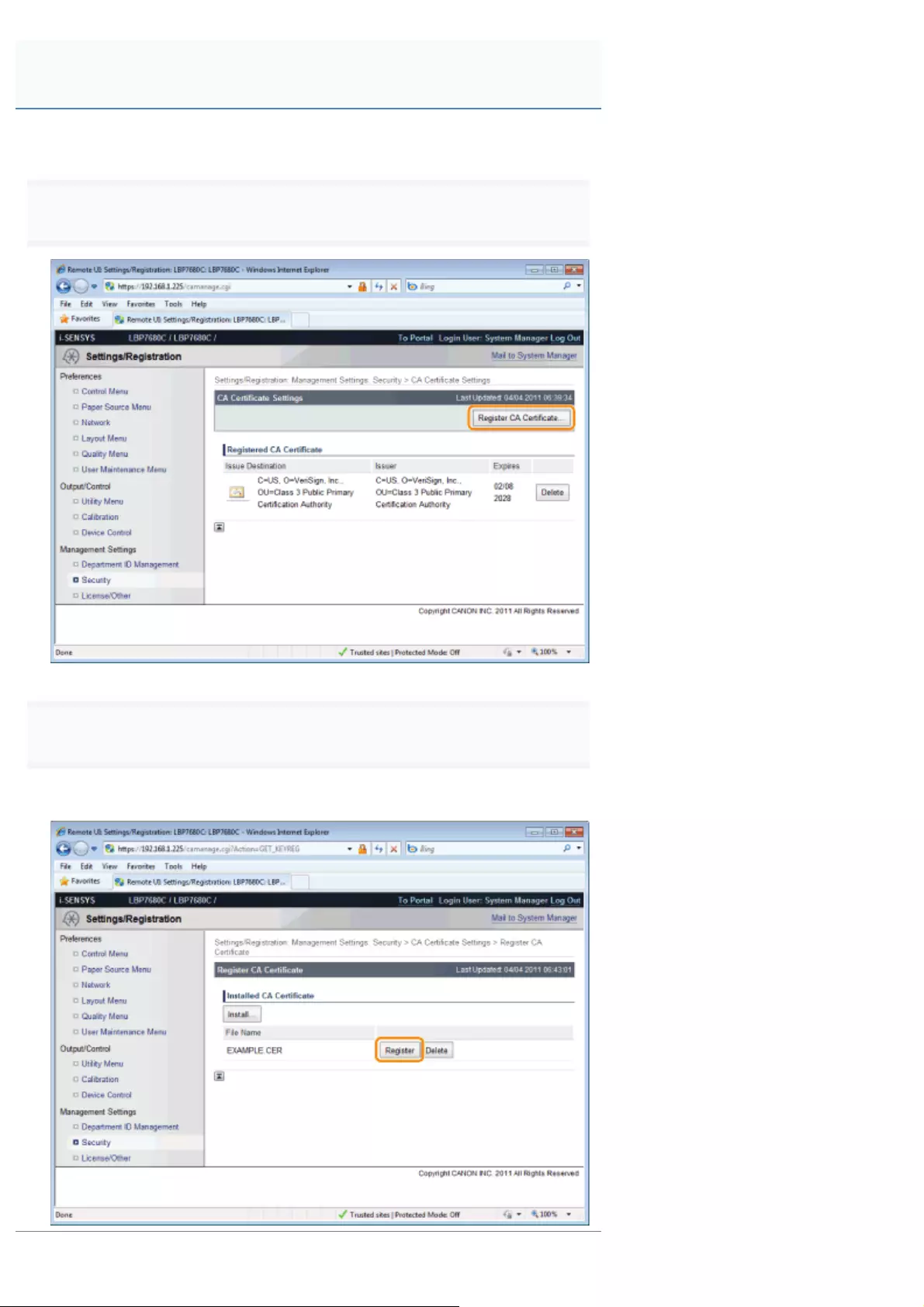
0258-0L1
1
Click [Register CA Certificate...].
2
Click [Register].
ĺThe CA file registration begins.
Registering CA Certificates in the Printer
㻣㻟㻡㻌㻛㻌㻥㻥㻤
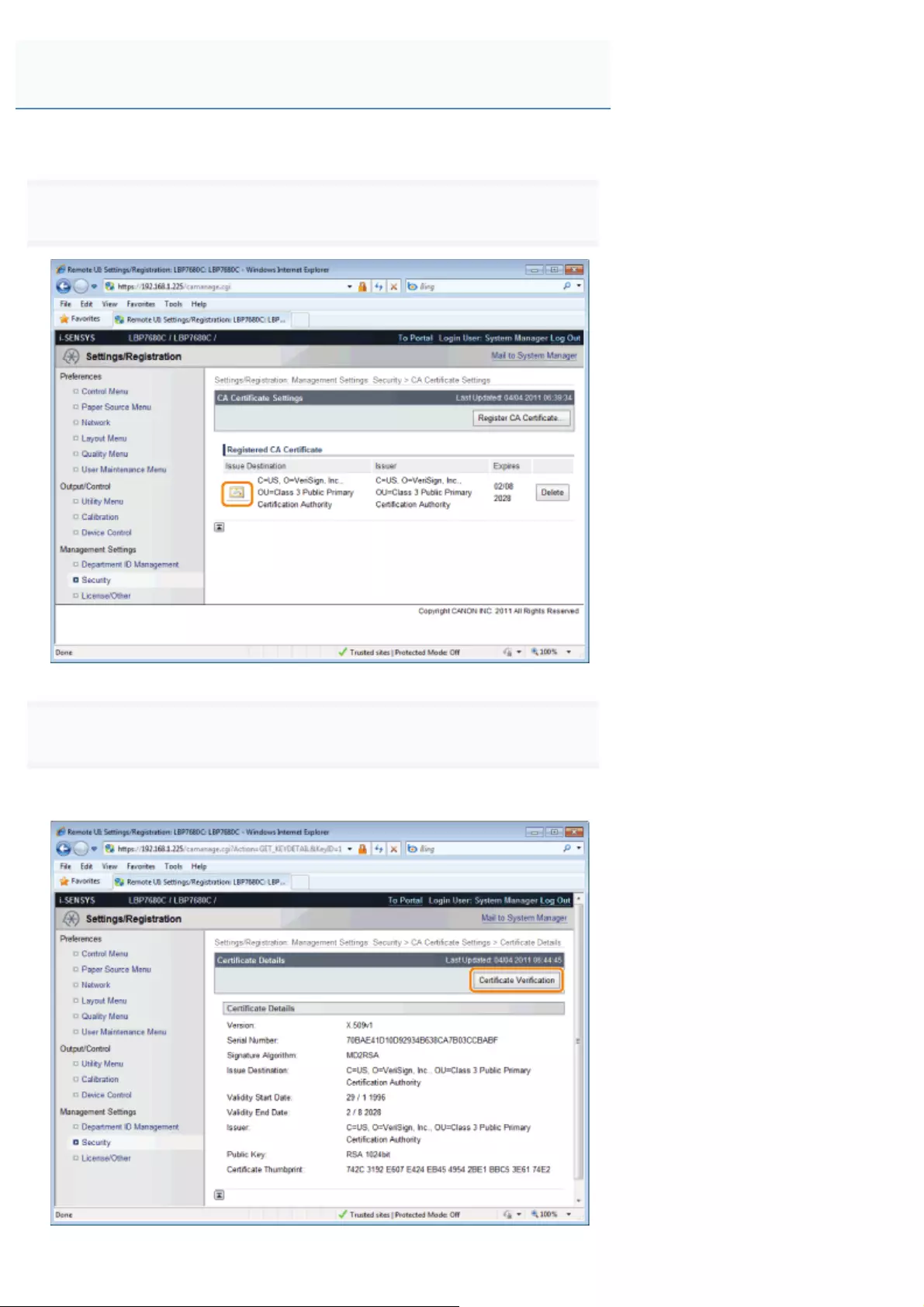
0258-0L2
1
Click the icon of the CA certificate to be confirmed.
2
If you want to verify the certificate, click [Certificate Verification].
ĺThe verification result is displayed.
Check the verification result, and then click [Back to Certificate Details].
Checking CA Certificates
㻣㻟㻢㻌㻛㻌㻥㻥㻤
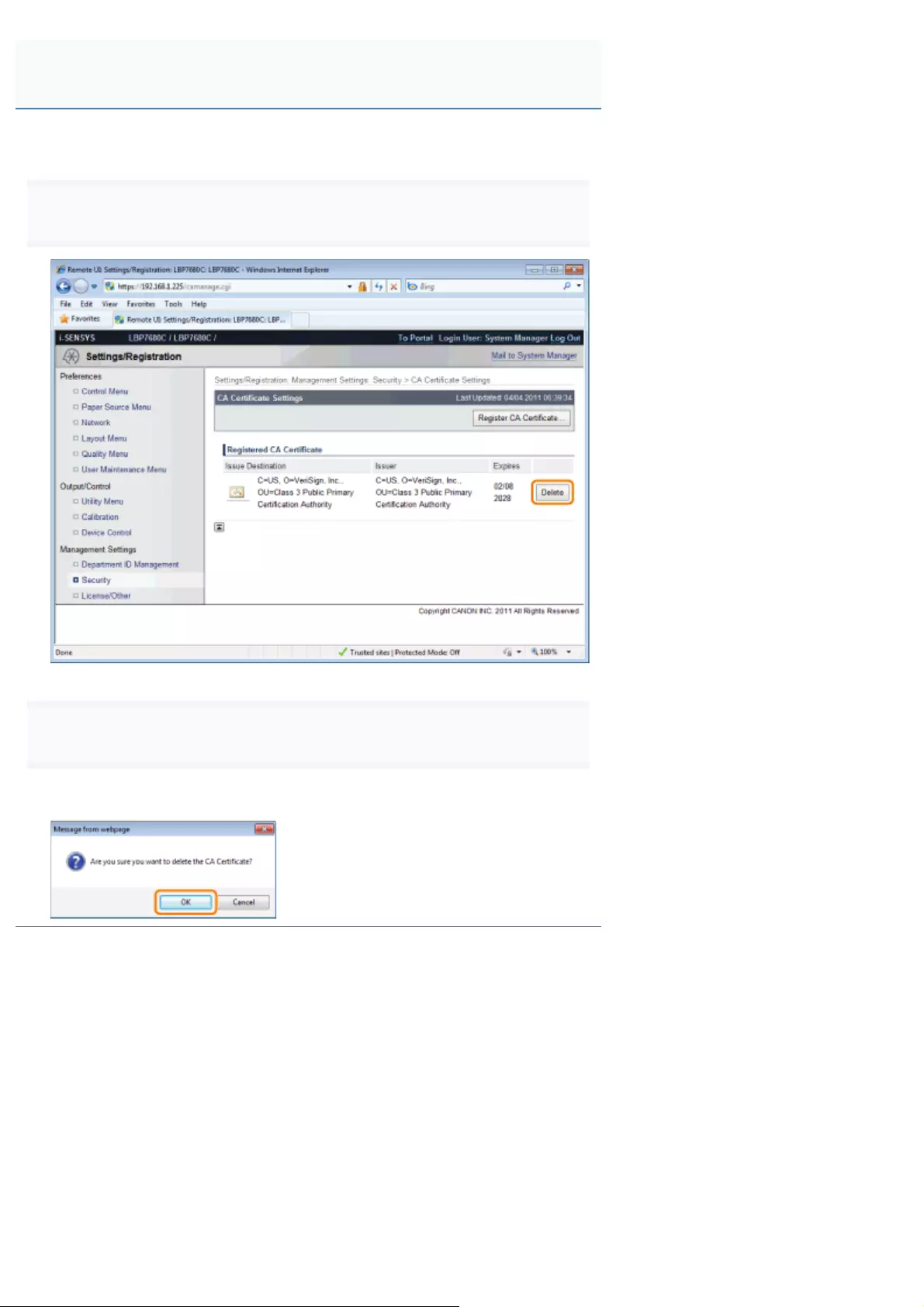
0258-0L3
1
Click [Delete].
2
Click [OK].
ĺThe CA certificate is deleted.
Deleting CA Certificates
㻣㻟㻣㻌㻛㻌㻥㻥㻤
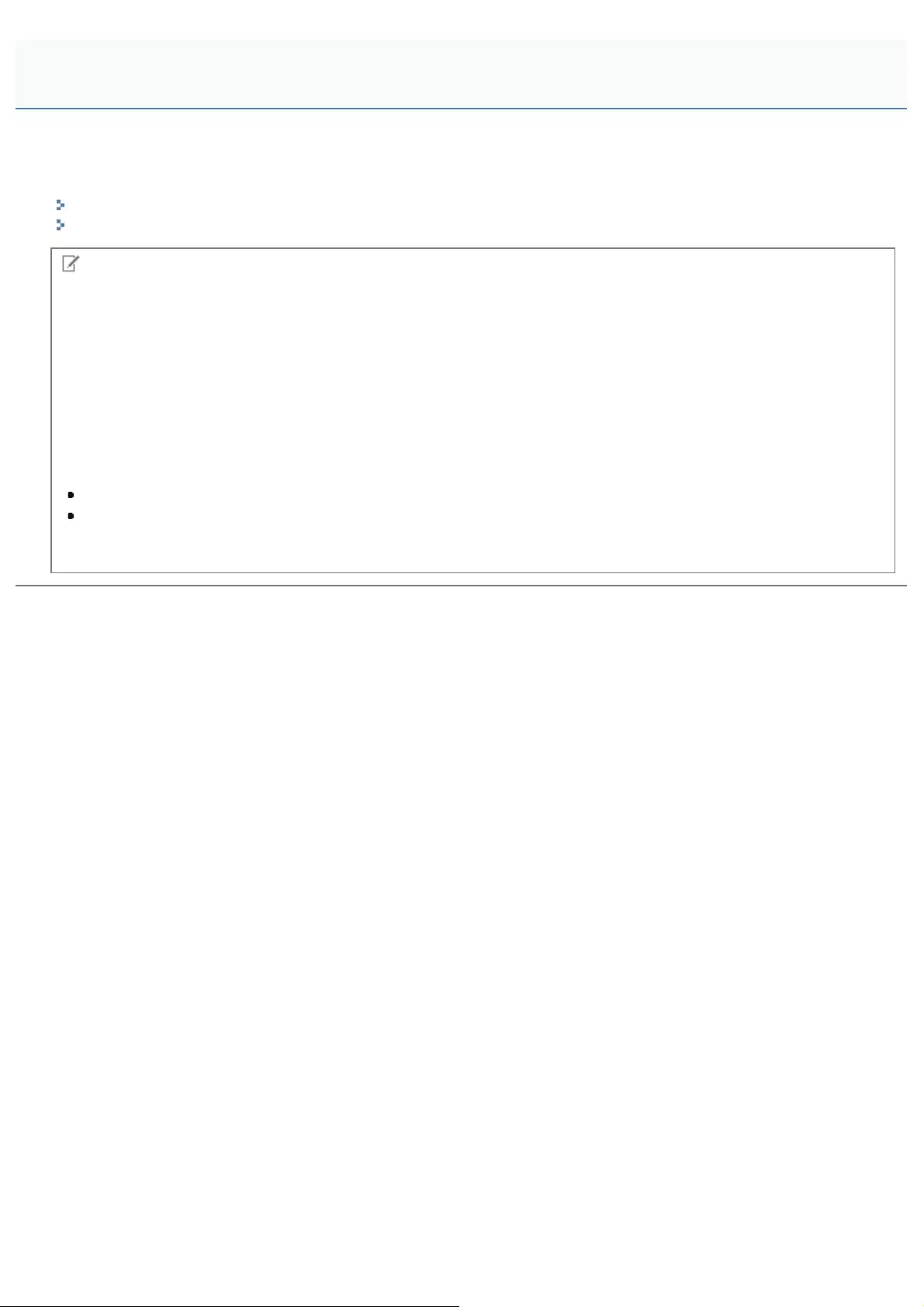
0258-0L4
Specify settings in order to use the SSL encryption communication function with this printer.
See the following sections.
"Selecting Keys and Certificates"
"Changing the Remote UI Settings"
NOTE
SSL encrypted communication function
This is a function that enables exchange of encrypted data between this printer and a computer when performing IPP
printing in which data is printed via a network or when using the Remote UI in which you manage the printer with the
Web browser.
Using the SSL encrypted communication function achieves safer printing environments by preventing theft and
falsification of data.
To perform SSL encrypted communication
A key pair (the public key for encryption and private key for decryption) is required.
Registering the key pair in this printer and opening the public key to the users allows you to perform the following.
The users can encrypt data to send to the printer.
Only this printer can decrypt the encrypted data with the private key.
In this printer, a certificate is also created when a key pair is created. The users can check information about the key
with the certificate.
Setting the SSL Encryption Communication Function
㻣㻟㻤㻌㻛㻌㻥㻥㻤
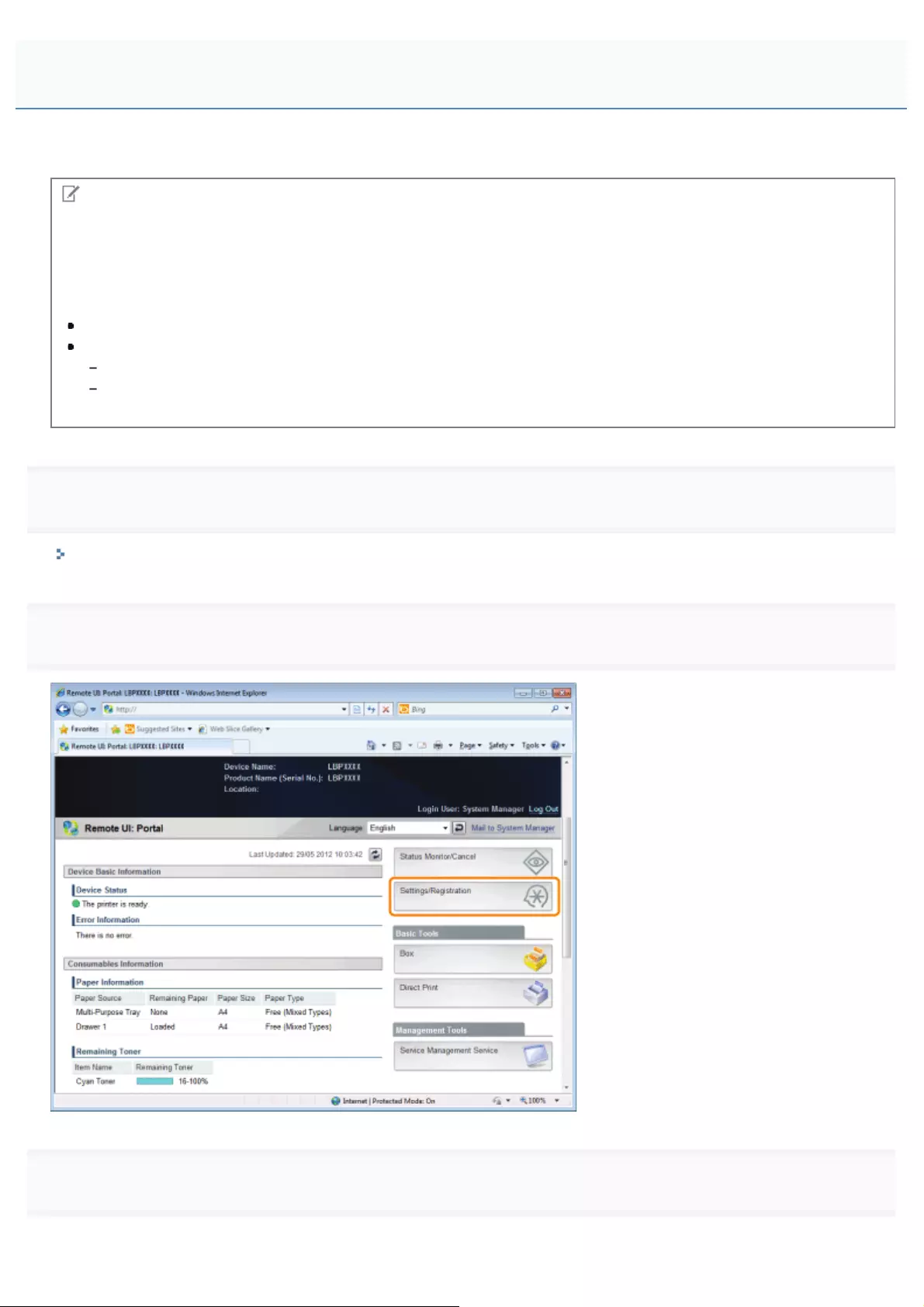
0258-0L5
Select keys and certificates used by SSL encrypted communication functions.
NOTE
When Selecting Keys and Certificates
A key and certificate need to be generated for encrypted SSL traffic. For more information, see "Setting Keys and
Certificates."
About [Default Key Settings]
[Default Key Settings] is only displayed when the key is not specified as use key.
To prevent keys in use from being changed, [Default Key Settings] is not displayed in the following cases.
[Use SSL] under [Remote UI Settings] is set to ON.
[SSL] under [TCP/IP Settings] is set to On for IPP printing.
If you want to set the key as use key, first disable the above settings and then set the key as use key.
1
Start the Remote UI, and then log in as Administrator.
"Starting the Remote UI"
2
Click [Settings/Registration].
3
Select [Network] from the [Preferences] menu.
Selecting Keys and Certificates
㻣㻟㻥㻌㻛㻌㻥㻥㻤
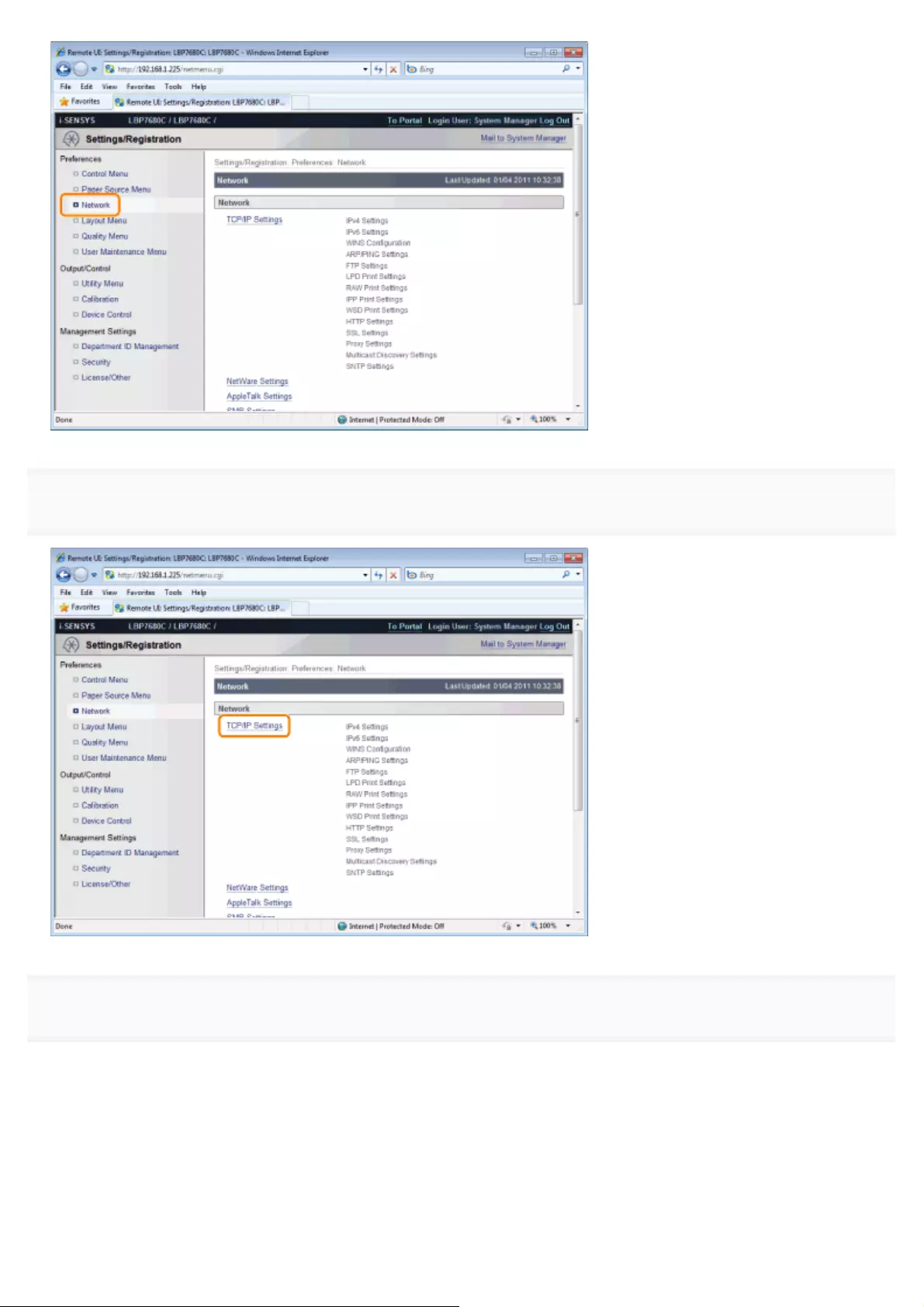
4
Click [TCP/IP Settings].
5
Click [Key and Certificate...] under [SSL Settings].
㻣㻠㻜㻌㻛㻌㻥㻥㻤
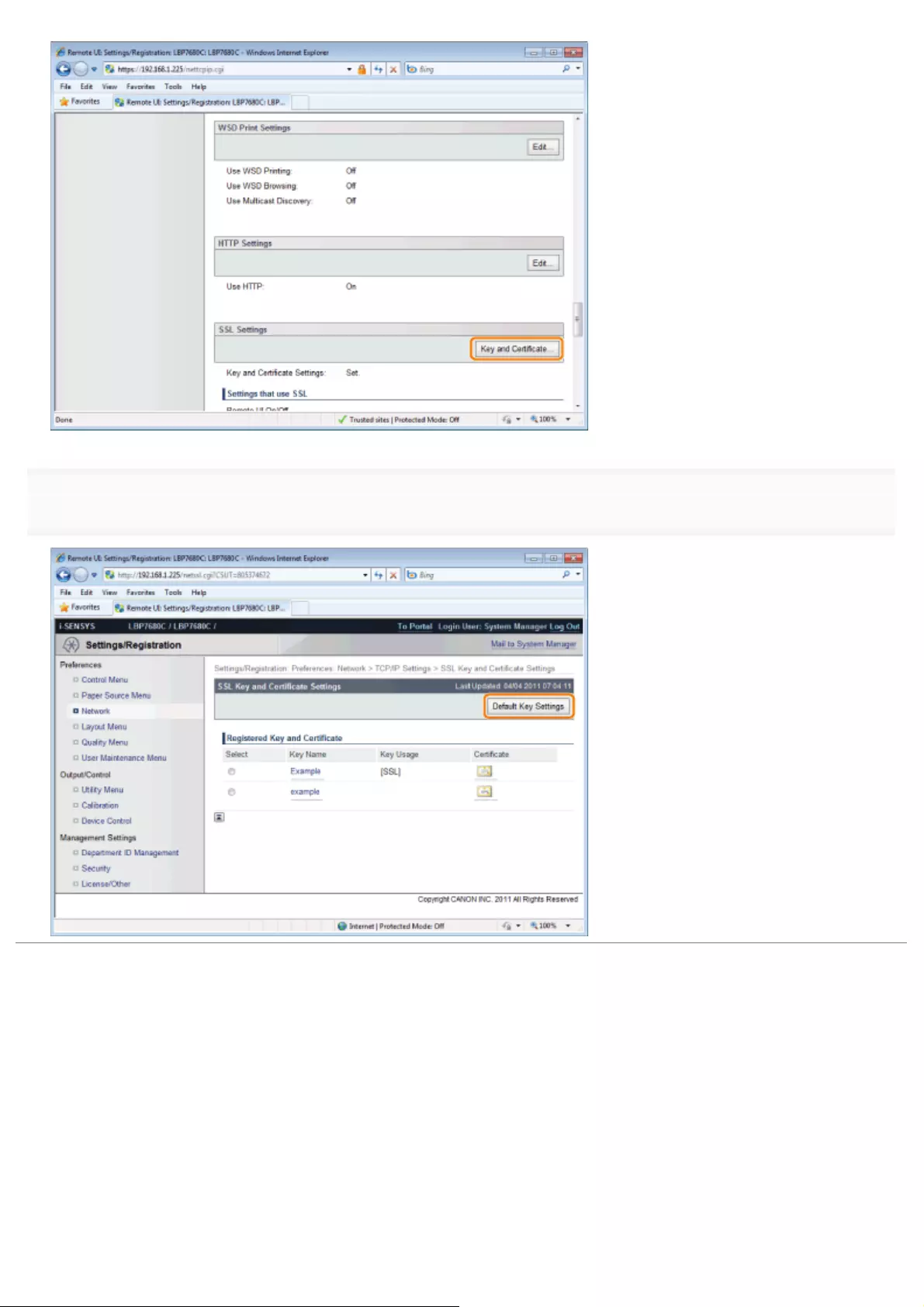
6
Select the key to use, and then click [Default Key Settings].
㻣㻠㻝㻌㻛㻌㻥㻥㻤

0258-0A7
Specify whether the SSL encrypted communication function should be used for the Remote UI.
1
Start the Remote UI, and then log in as Administrator.
"Starting the Remote UI"
2
Click [Settings/Registration].
3
Select [Security] from the [Management Settings] menu.
Changing the Remote UI Settings
㻣㻠㻞㻌㻛㻌㻥㻥㻤

4
Click [Remote UI Settings].
5
Click [Edit...].
㻣㻠㻟㻌㻛㻌㻥㻥㻤
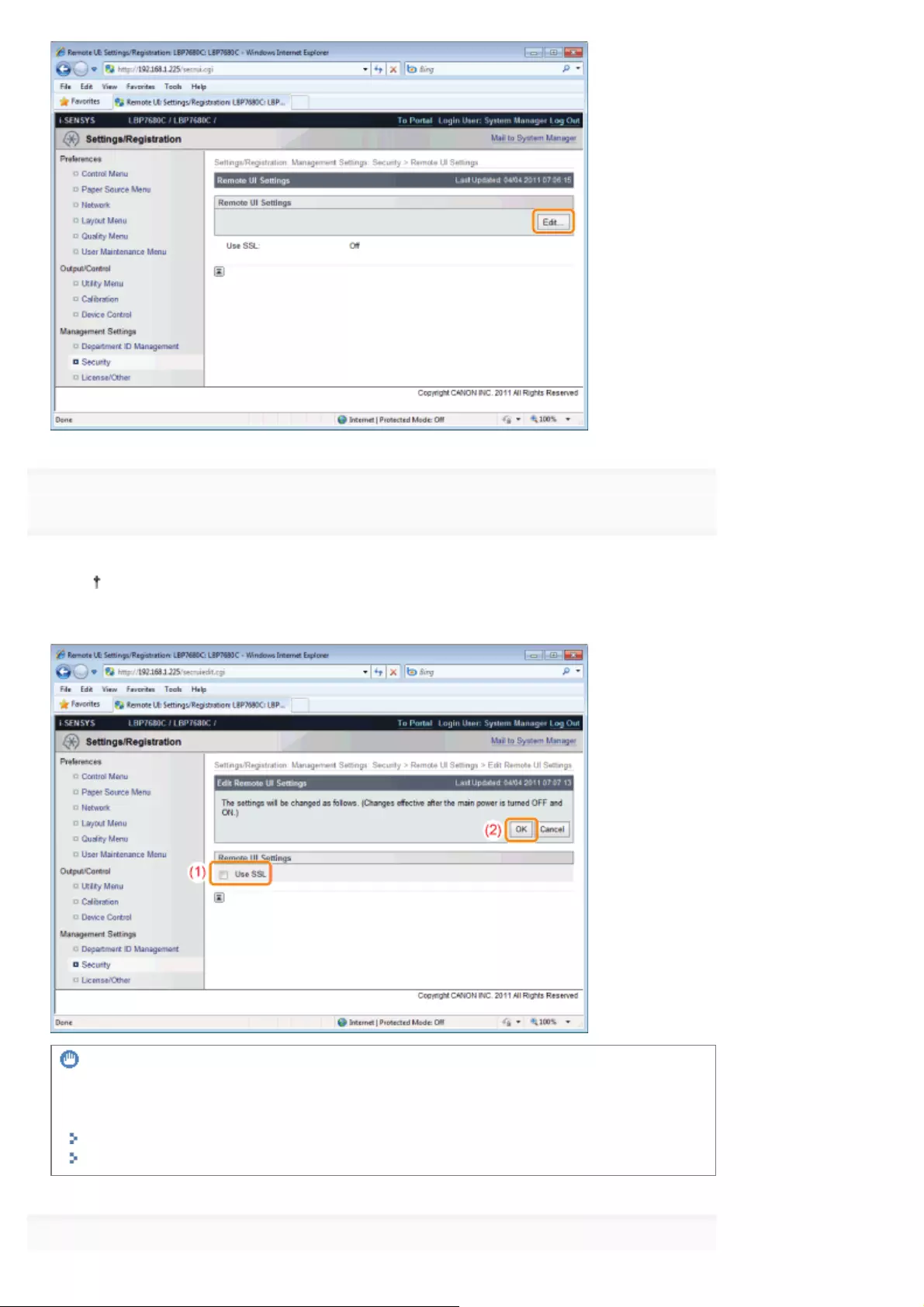
6
Change the Remote UI settings.
(1) Select the [Use SSL] check box.
If you clear the check box, the remote UI cannot use SSL encrypted communication.
(2) Click [OK].
IMPORTANT
If you cannot set [Use SSL]
When a key is not selected for SSL, [Use SSL] cannot be checked.
Setting Keys and Certificates
Selecting Keys and Certificates
7
㻣㻠㻠㻌㻛㻌㻥㻥㻤
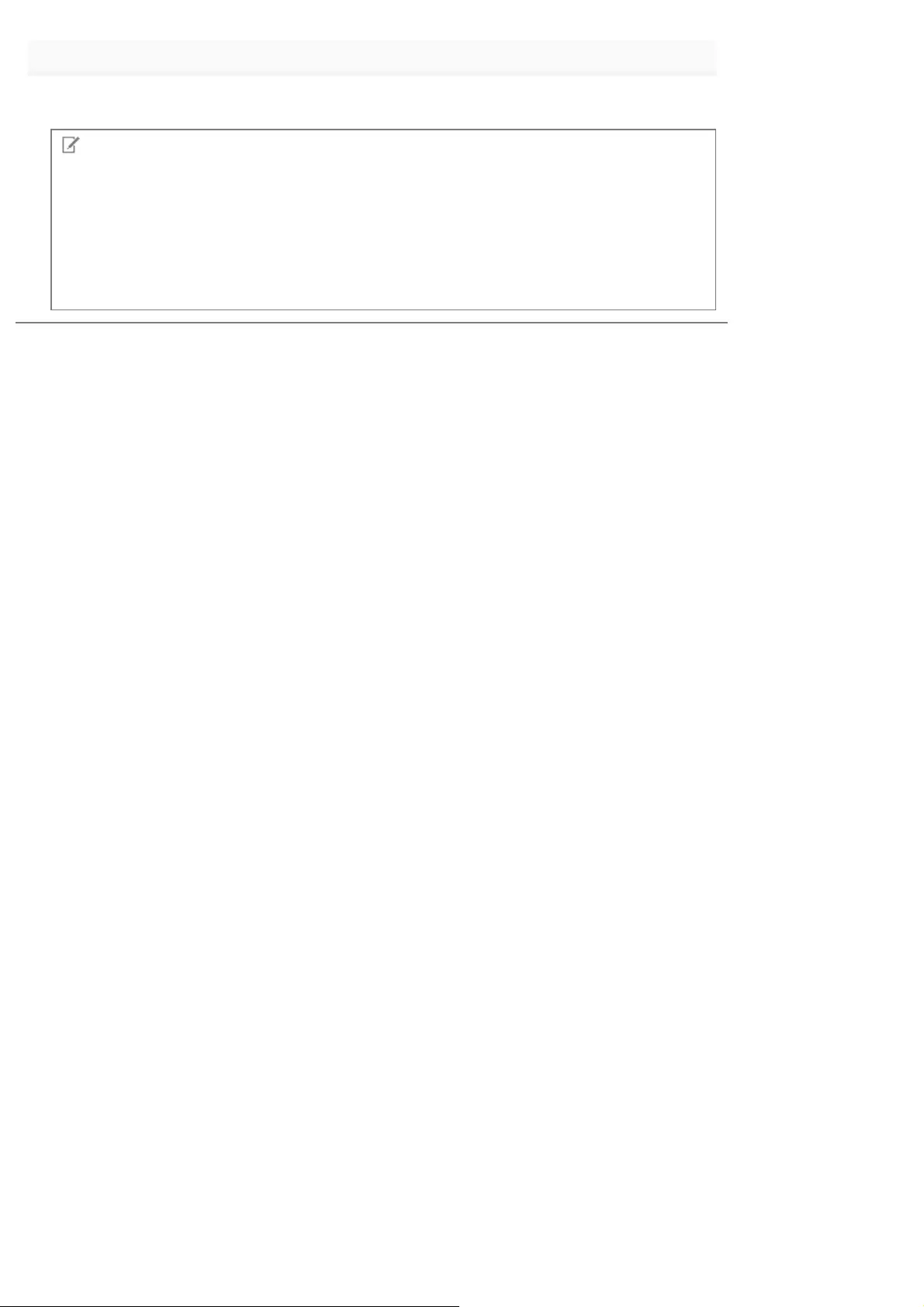
Perform a hard reset or restart the printer.
ĺAfter performing a hard reset or restarting the printer, the settings are effective.
NOTE
To perform a hard reset
You can perform a hard reset using the following procedure.
1. Click [Settings/Registration].
2. Select [Device Control] from the [Output/Control] menu.
3. Select [Hard Reset], then click [Execute].
㻣㻠㻡㻌㻛㻌㻥㻥㻤
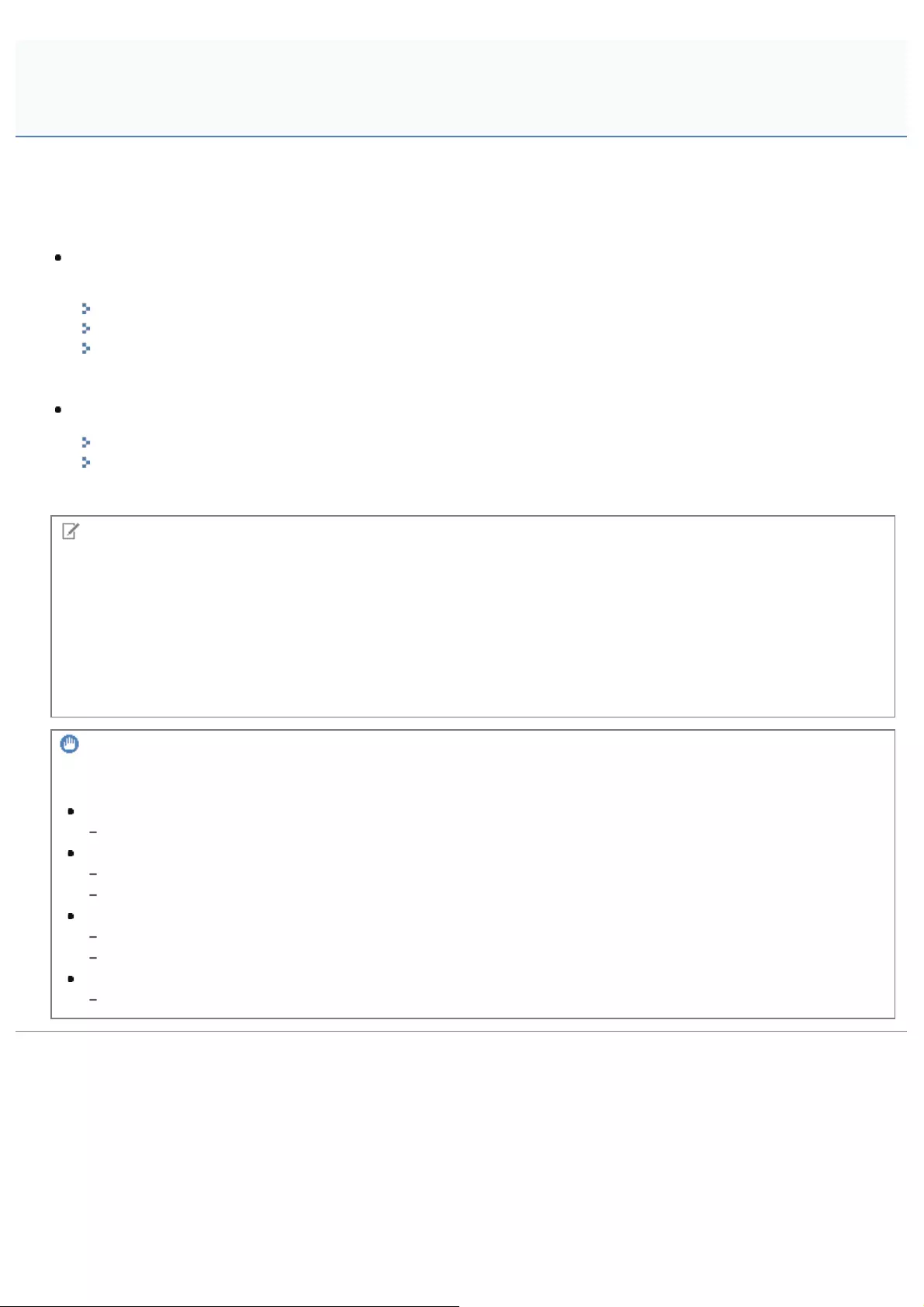
0258-0L9
Specify the settings for using IPSec encryption with the printer.
See the following sections, depending on the items you wish to set.
Registering/Editing Security Policies
In order to use the IPSec encryption communication function, it is necessary to set a security policy in advance.
Displaying the [Key and Certificate Settings] Page in the Remote UI
Adding a New Security Policy
Editing Security Policies
Enabling and Disabling IPSec Encryption Communication Function Settings
Displaying the [Key and Certificate Settings] Page in the Remote UI
Enabling IPSec Encryption Communication
NOTE
IPSec Encryption Communication
IPSec is a protocol that maintains security by protecting IP packets transmitted over the IP network from threats such as
theft, falsification, spoofing. Its advantage is that it can be used to add a security function to the basic Internet Protocol
(IP) without being dependent on software or network configuration.
Communication Mode
Of the IPSec communication modes, the printer supports only the transport mode. Certificates and encryption can only be
applied to the data parts of IP packets.
IMPORTANT
Packets that are not applied by IPSec encrypted communication
The following packets are not applied by IPSec encrypted communication.
IKE(IPv4/IPv6)
UDP port number: 500
Loopback address
IPv4 address: 127.0.0.1
IPv6 address: ::1
Multicast address
IPv4 address: 244.0.0.0 /4
IPv6 address: FF00:: /8
Broadcast address
IPv4 address: 255.255.255.255
Setting the IPSec Encryption Communication Function (LBP7680Cx
Only)
㻣㻠㻢㻌㻛㻌㻥㻥㻤
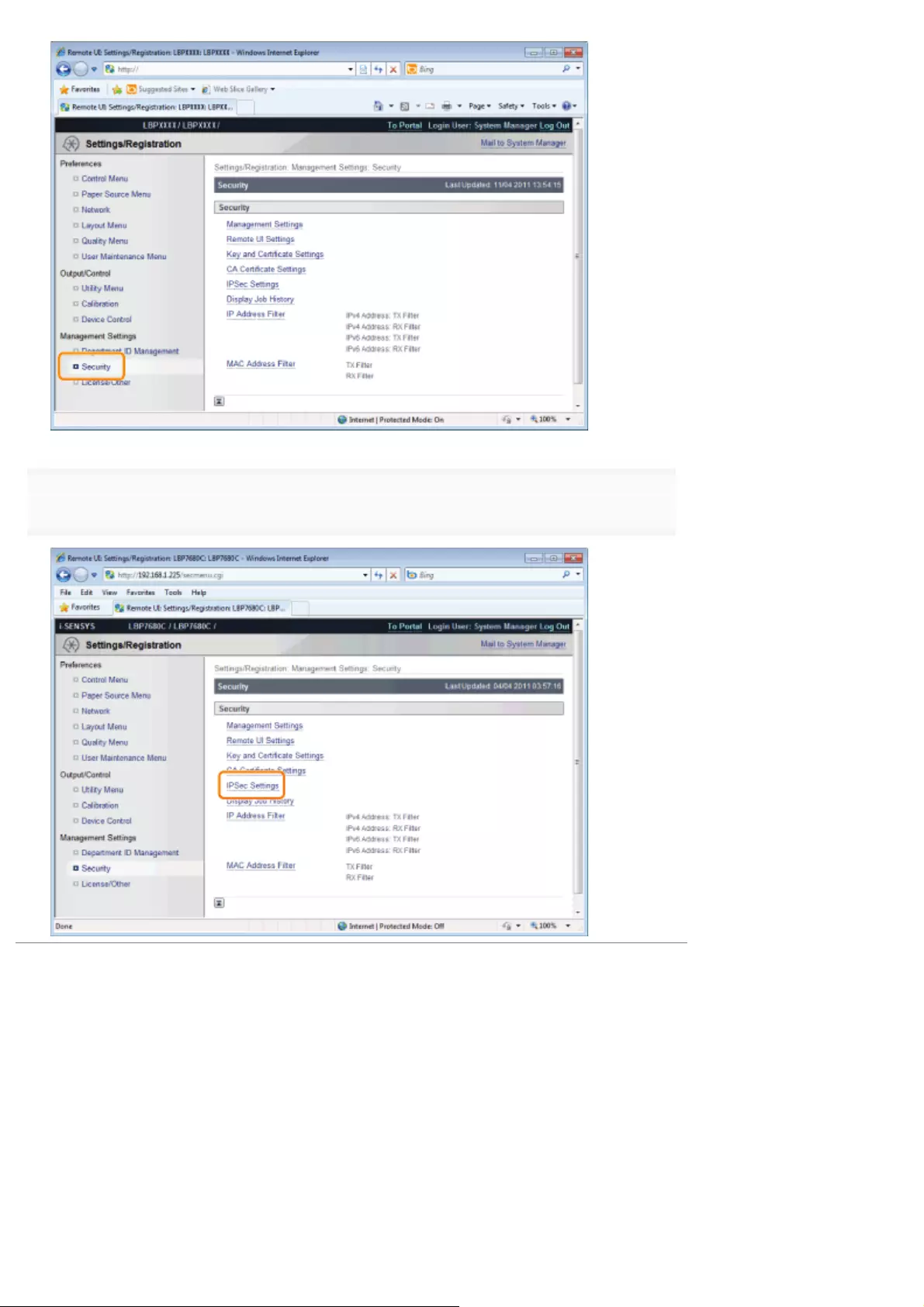
4
Click [IPSec Settings].
㻣㻠㻤㻌㻛㻌㻥㻥㻤
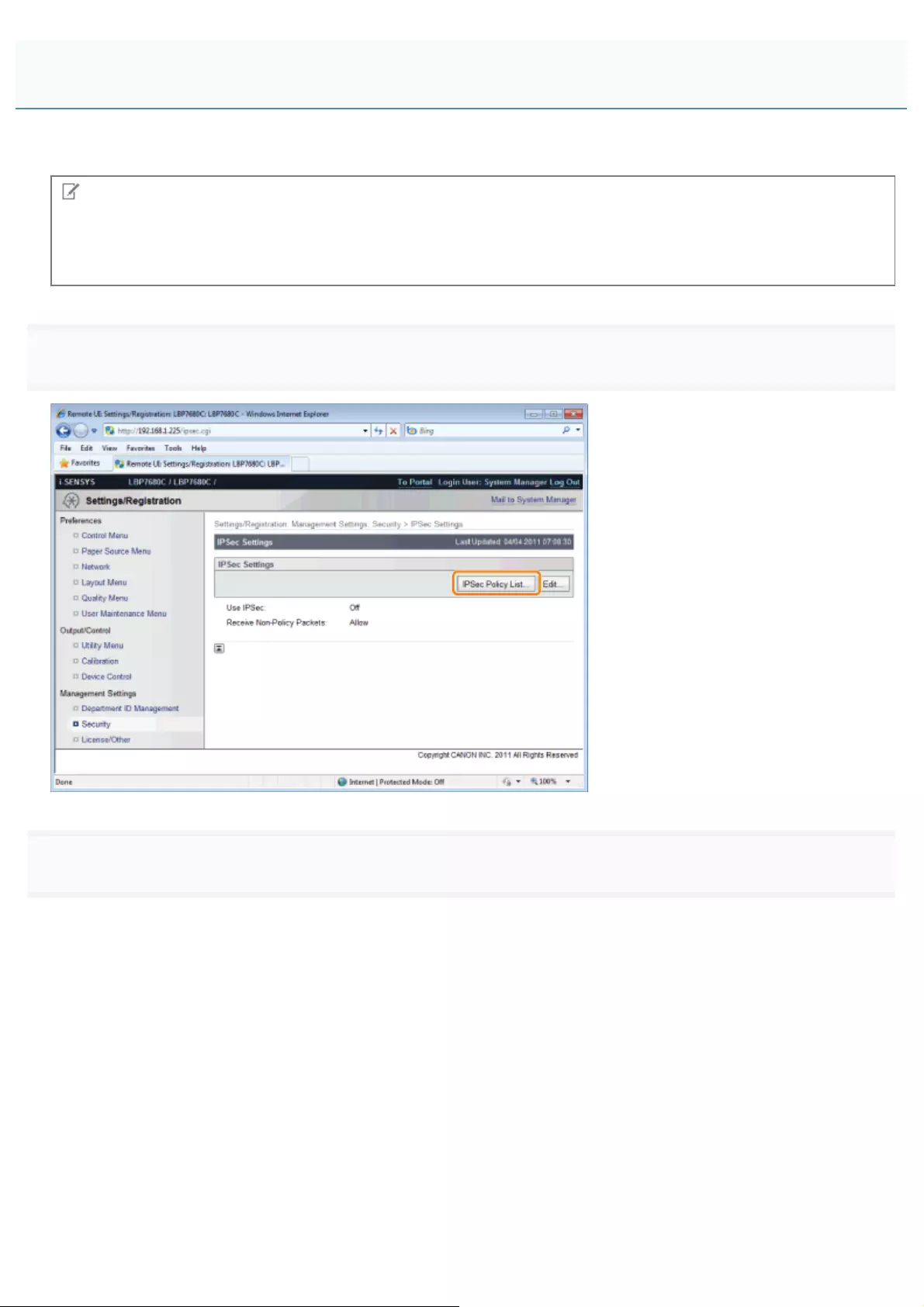
0258-0LC
NOTE
Number of security policies that can be registered
You can register up to 10.
If you cannot register one, delete unnecessary security policies.
1
Click [IPSec Policy List...] on the [IPSec Settings] page.
2
Click [Register IPSec Policy...].
Adding a New Security Policy
㻣㻠㻥㻌㻛㻌㻥㻥㻤

3
Enter the name of the new security policy to be registered.
Up to 24 alphanumeric characters can be entered.
4
Select the [Enable Policy] check box.
If the check box is cleared, the security policy cannot be used.
㻣㻡㻜㻌㻛㻌㻥㻥㻤
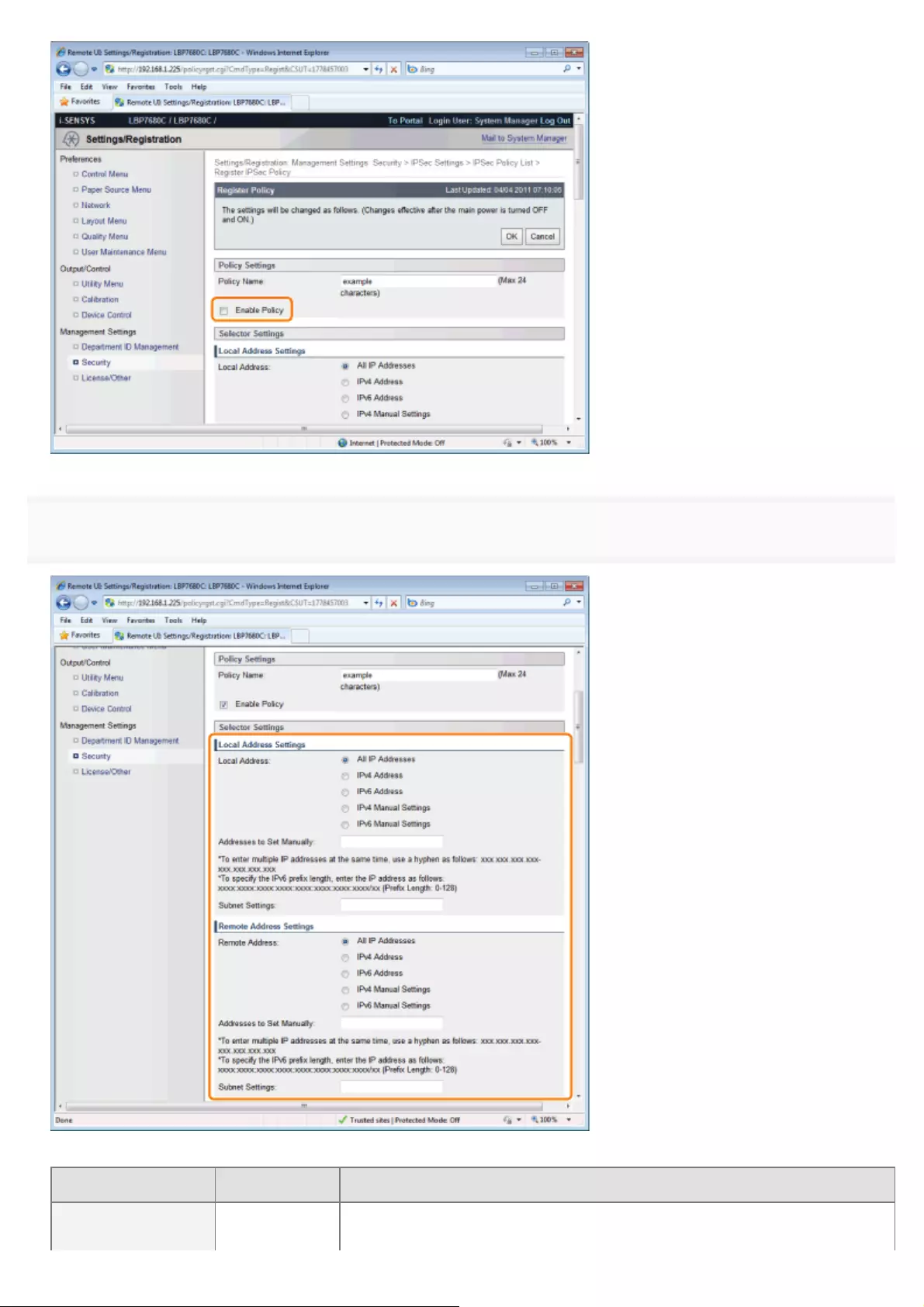
5
Set [Local Address Settings] and [Remote Address Settings].
The packets setting the security policy are specified as follows.
Transmission Packets Applying the Security Policy
RX Packets with "destination IP addresses" that match IP addresses specified
here
㻣㻡㻝㻌㻛㻌㻥㻥㻤
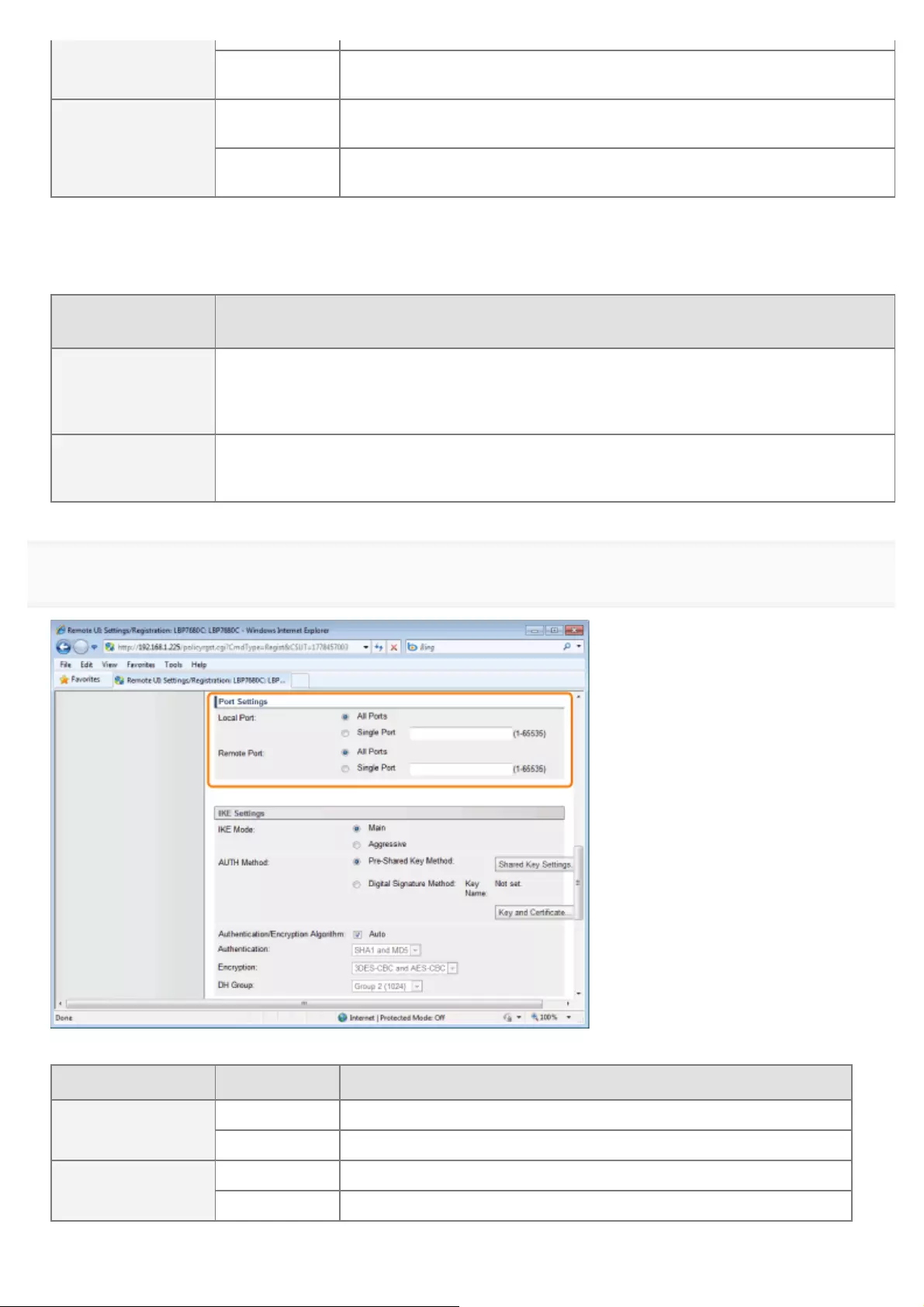
[Local Address]
TX Packets with "departure IP addresses" that match IP addresses specified
here
[Remote Address]
RX Packets with "departure IP addresses" that match IP addresses specified
here
TX Packets with "destination IP addresses" that match IP addresses specified
here
When [IPv4 Manual Settings]/[IPv6 Manual Settings] is selected
Enter the IP address in the [Addresses to Set Manually] field.
You can enter the IP address in the following way.
IP Address Entry
Example IP Address Entry Method
192.168.0.1-
192.168.0.10
fe80::1000-
fe80::2000
If you want to enter the IP addresses of consecutive numbers, place "-" (hyphen) between the
address of the smallest number and that of the largest number.
192.168.0.0/16
fe80::0000/64
In order to specify the subnet range (prefix length), enter a "/" (slash) after the normal IP
address symbol, then enter another prefix length (maximum 32 for IPv4 and maximum 128 for
IPv6).
6
Set [Port Settings].
The packets setting the security policy are specified as follows.
Transmission Packets Applying the Security Policy
[Local Port] RX Packets with "destination ports" that match IP addresses specified here
TX Packets with "departure ports" that match IP addresses specified here
[Remote Port] RX Packets with "departure ports" that match IP addresses specified here
TX Packets with "destination ports" that match IP addresses specified here
㻣㻡㻞㻌㻛㻌㻥㻥㻤
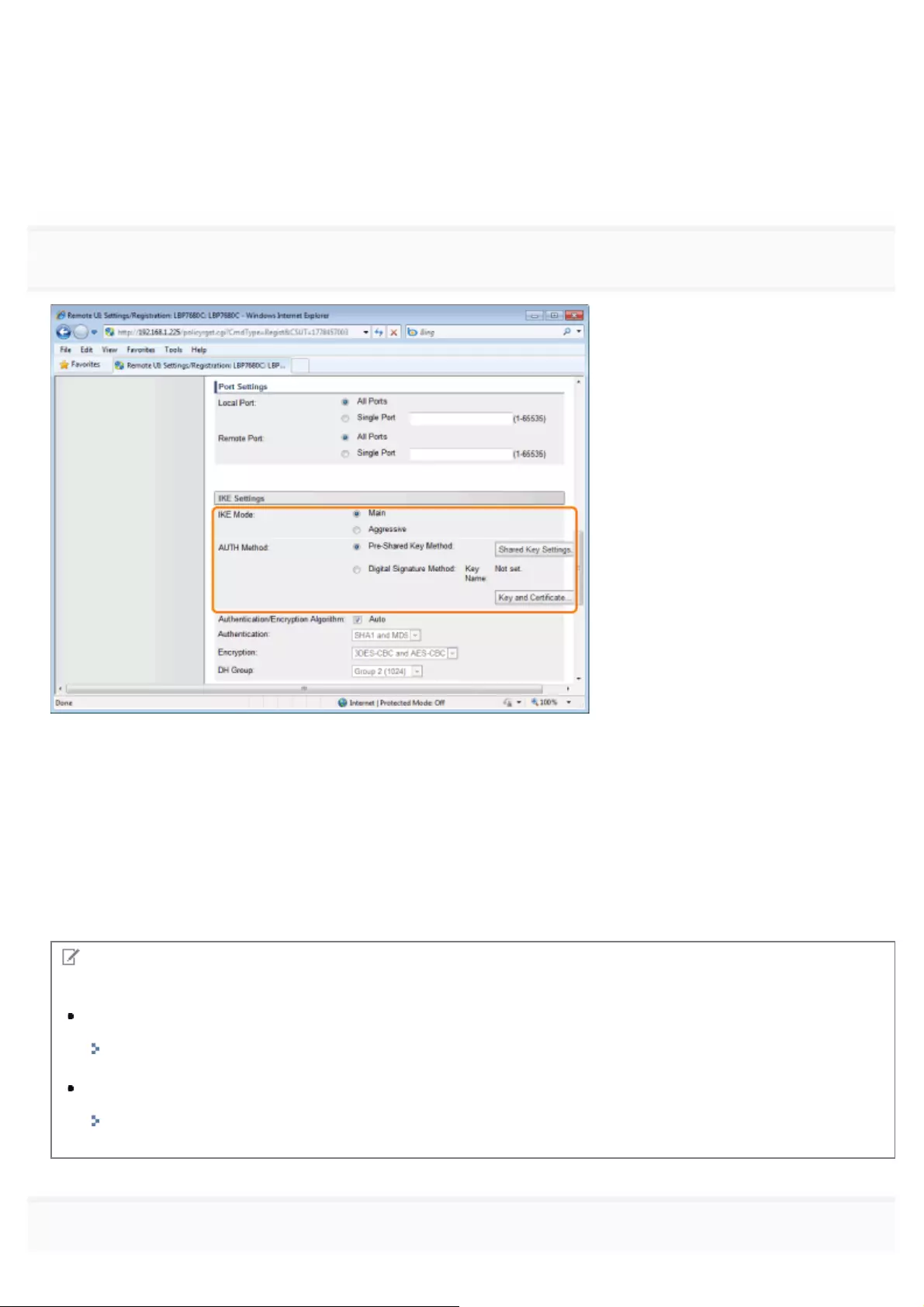
If you want to select all ports
Select the [All Ports] check box.
If you want to select a single port
(1) Select the [Single Port] check box.
(2) Enter the port number (0 to 65535).
7
Set [IKE Mode] and [AUTH Method] under [IKE Settings].
(1) Select [Main] or [Aggressive] under [IKE Mode].
(2) Select [AUTH Method].
If you want to specify [Pre-Shared Key Method]
a. Select the [Pre-Shared Key Method] check box.
b. Click [Shared Key Settings...].
c. Enter the name of the shared key (up to 24 characters), and click [OK].
If you want to specify [Digital Signature Method]
a. Select the [Digital Signature Method] check box.
b. Click [Key and Certificate...].
c. Select the key to use, and then click [Default Key Settings].
NOTE
[AUTH Method] Settings
In order to set [Pre-Shared Key Method], the SSL encrypted communication function must be enabled.
"Setting the SSL Encryption Communication Function"
We recommend that network settings be performed by the network administrator.
"Setting Keys and Certificates"
8
Set [Authentication/Encryption Algorithm] under [IKE Settings].
㻣㻡㻟㻌㻛㻌㻥㻥㻤
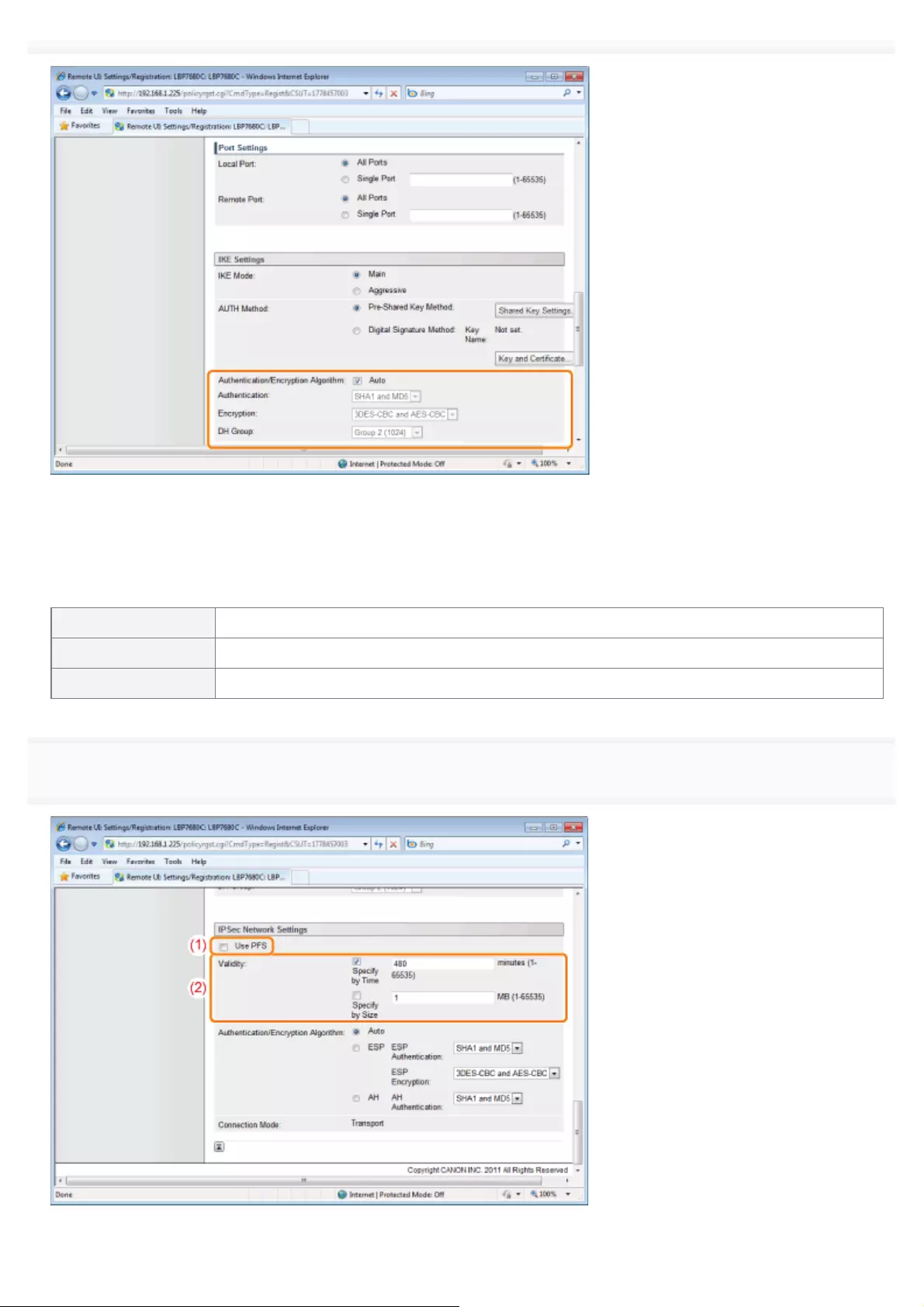
When setting automatically
Select the [Auto] check box.
When setting manually
Set the following items.
[Authentication] Select the authentication algorithm from [SHA1], [MD5] or [SHA1 and MD5].
[Encryption] Select the encryption algorithm from [3DES-CBC], [AES-CBC] or [3DES-CBC and AES-CBC].
[DH Group] Select the Diffie-Hellman group from [Group 1 (768)], [Group 2 (1024)] or [Group 14 (2048)].
9
Set the PFS for [IPSec Network Settings] and [Validity].
(1) When using PFS, select the [Use PFS] check box.
㻣㻡㻠㻌㻛㻌㻥㻥㻤

(2) Set [Validity].
When specifying by time
a. Select the [Specify by Time] check box.
b. Enter the time (1 to 65535 minutes).
When specifying by size
a. Select the [Specify by Size] check box.
b. Enter the size (1 to 65535 MB).
NOTE
About PFS
If PFS is used, the key generation process becomes complex. Even assuming one key is deciphered, it does not mean
that later keys will be deciphered easily.
10
Set [Authentication/Encryption Algorithm] under [IPSec Network Settings].
When setting automatically
Select the [Auto] check box.
When setting authentication using ESP protocol
(1) Select the [ESP] check box.
(2) Select the authentication algorithm from [SHA1], [MD5], [SHA1 and MD5] or [NULL] under [ESP Authentication].
(3) Select the encryption algorithm from [3DES-CBC], [AES-CBC], [3DES-CBC and AES-CBC] or [NULL] under [ESP
Encryption].
When setting authentication using AH protocol
(1) Select the [AH] check box.
(2) Select the authentication algorithm from [SHA1], [MD5] or [SHA1 and MD5] under [AH Authentication].
11
Click [OK].
㻣㻡㻡㻌㻛㻌㻥㻥㻤
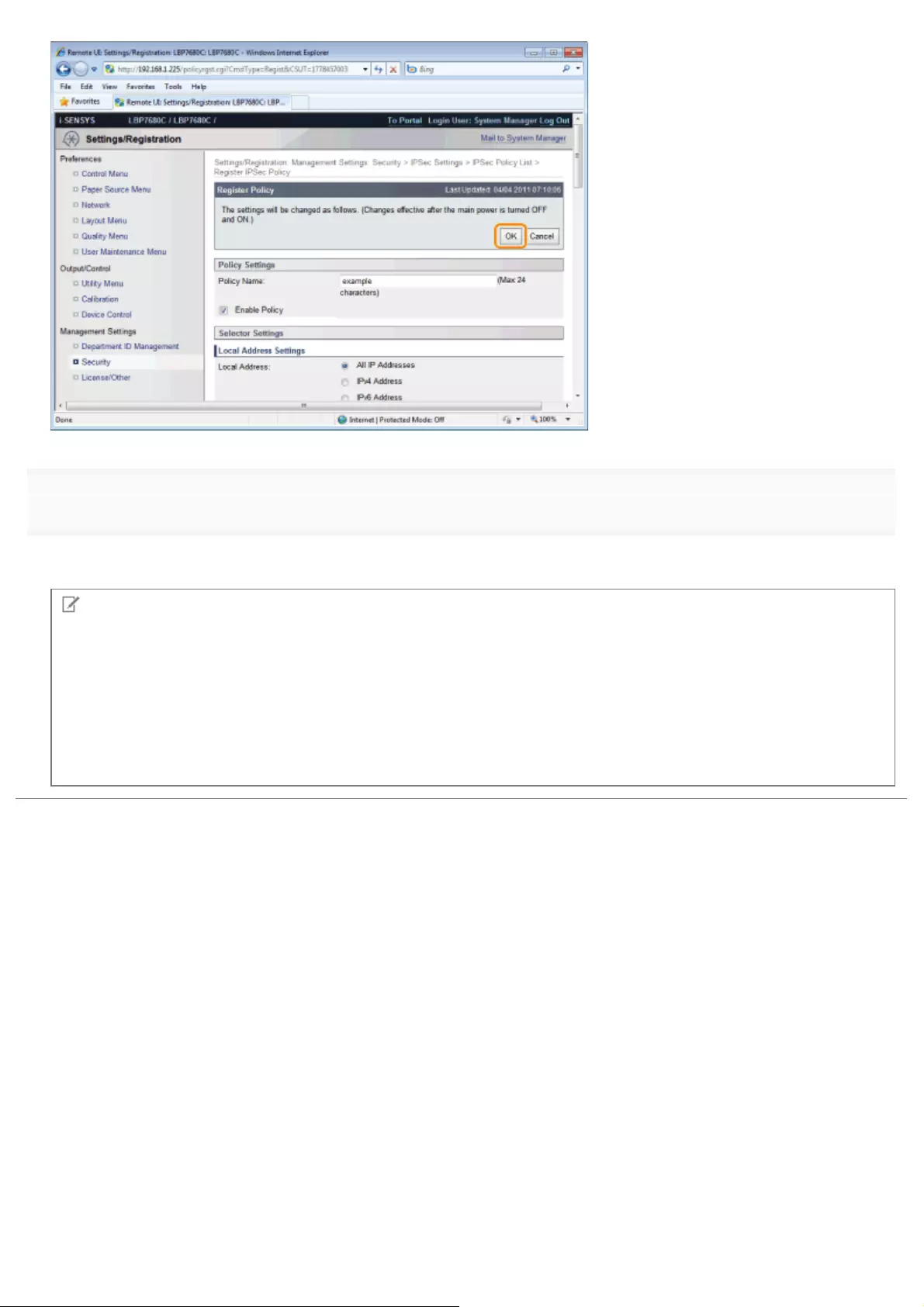
12
Perform a hard reset or restart the printer.
ĺAfter performing a hard reset or restarting the printer, the settings are effective.
NOTE
To perform a hard reset
You can perform a hard reset using the following procedure.
1. Click [Settings/Registration].
2. Select [Device Control] from the [Output/Control] menu.
3. Select [Hard Reset], then click [Execute].
㻣㻡㻢㻌㻛㻌㻥㻥㻤
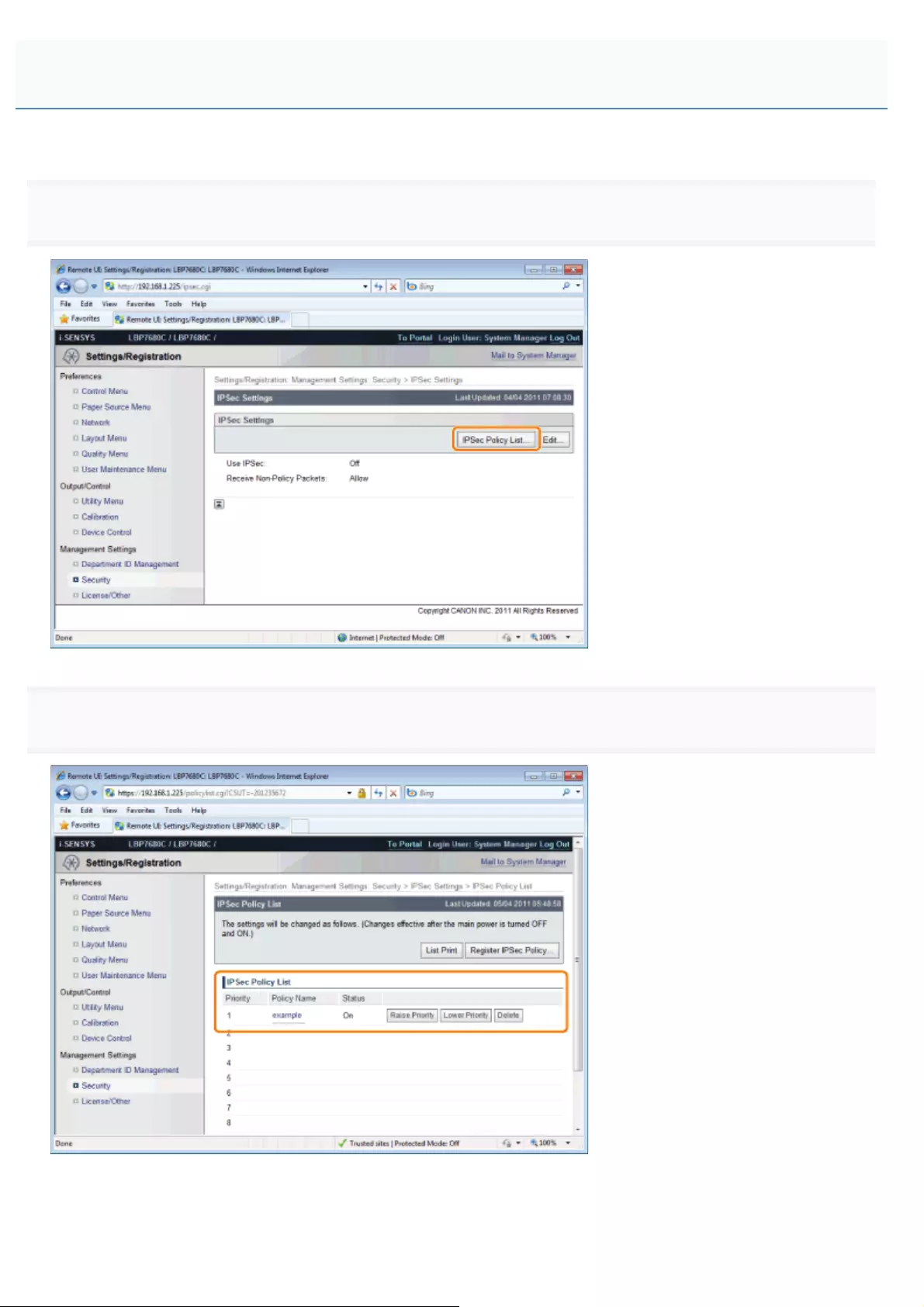
0258-0LE
1
Click [IPSec Policy List...] on the [IPSec Settings] page.
2
Perform the necessary operations on the [IPSec Policy List] page.
When editing security policies
(1) Click the policy name displayed in the [Policy Name] field.
(2) See "Adding a New Security Policy", and edit the content.
Editing Security Policies
㻣㻡㻣㻌㻛㻌㻥㻥㻤
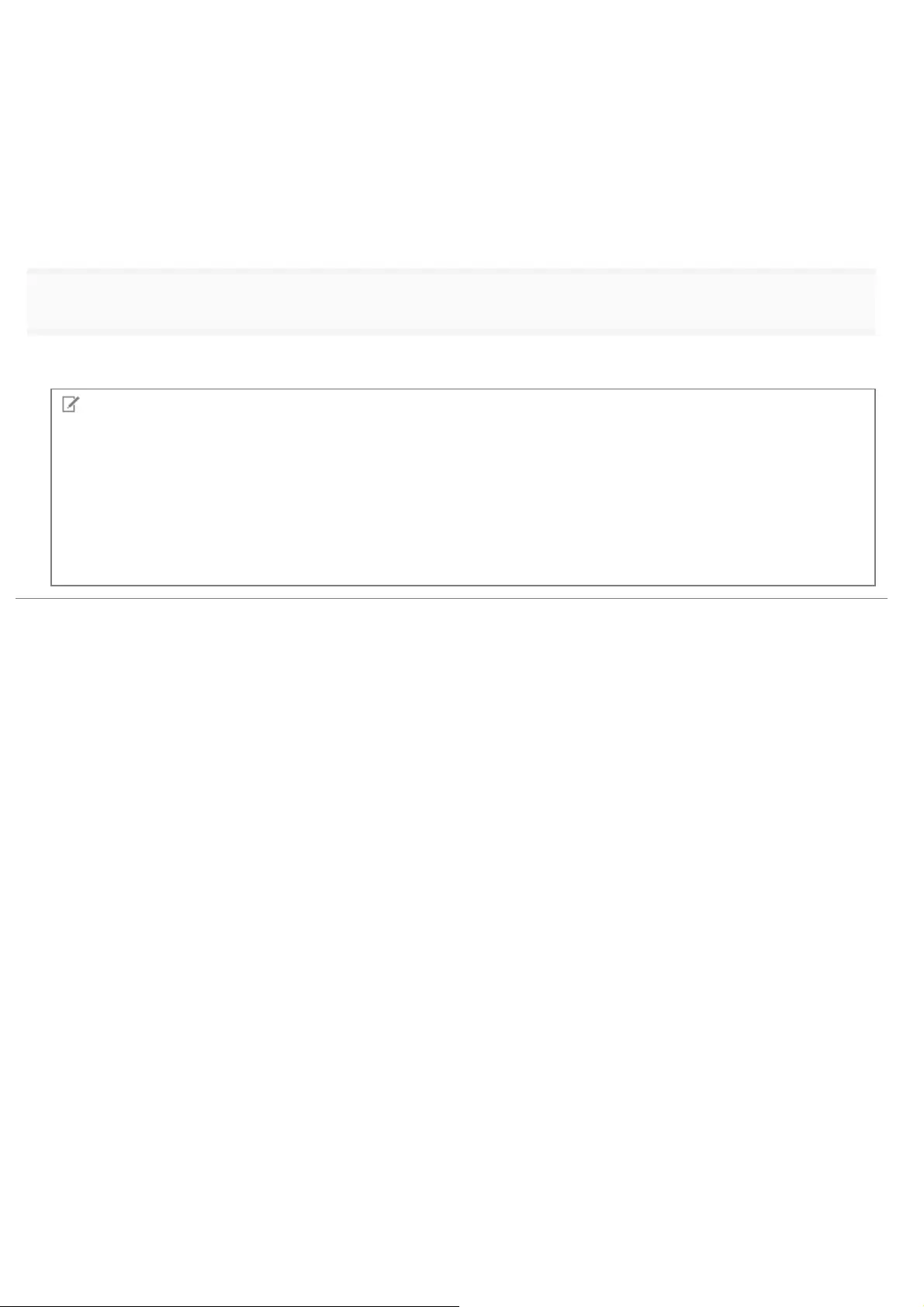
When deleting security policies
(1) Click [Delete] on the security policy you wish to delete.
(2) Click [OK].
When changing the priority of security policies
The higher up the list the security policy is, the higher its priority.
Click [Raise Priority] or [Lower Priority] for the security policy whose priority you wish to change, and change the priority.
3
Perform a hard reset or restart the printer.
ĺAfter performing a hard reset or restarting the printer, the settings are effective.
NOTE
To perform a hard reset
You can perform a hard reset using the following procedure.
1. Click [Settings/Registration].
2. Select [Device Control] from the [Output/Control] menu.
3. Select [Hard Reset], then click [Execute].
㻣㻡㻤㻌㻛㻌㻥㻥㻤
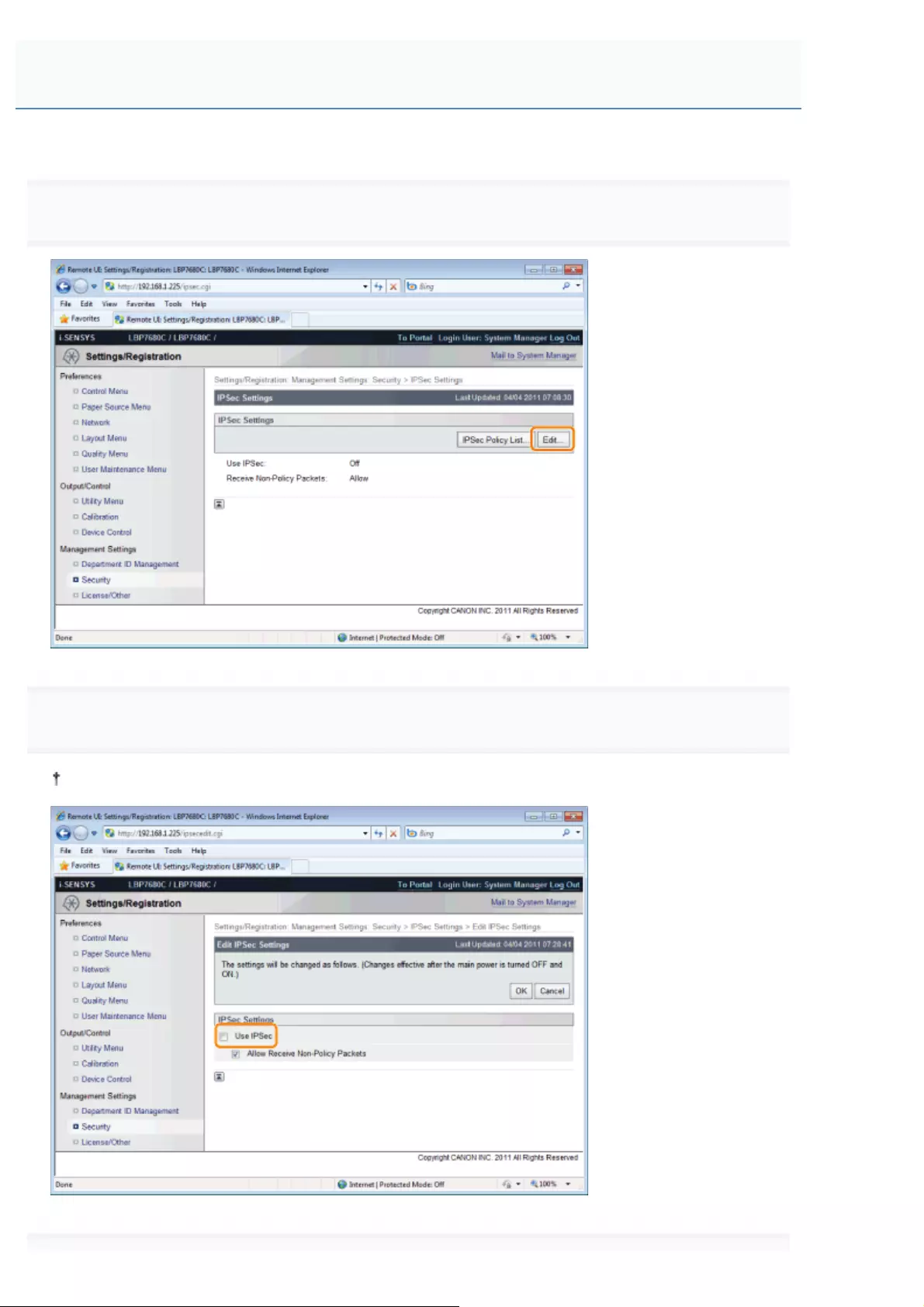
0258-0LF
1
Click [Edit...] on the [IPSec Settings] page.
2
Select the [Use IPSec] check box.
In order to allow receipt of non-policy packets, select the [Allow Receive Non-Policy Packets] check box.
Enabling IPSec Encryption Communication
㻣㻡㻥㻌㻛㻌㻥㻥㻤
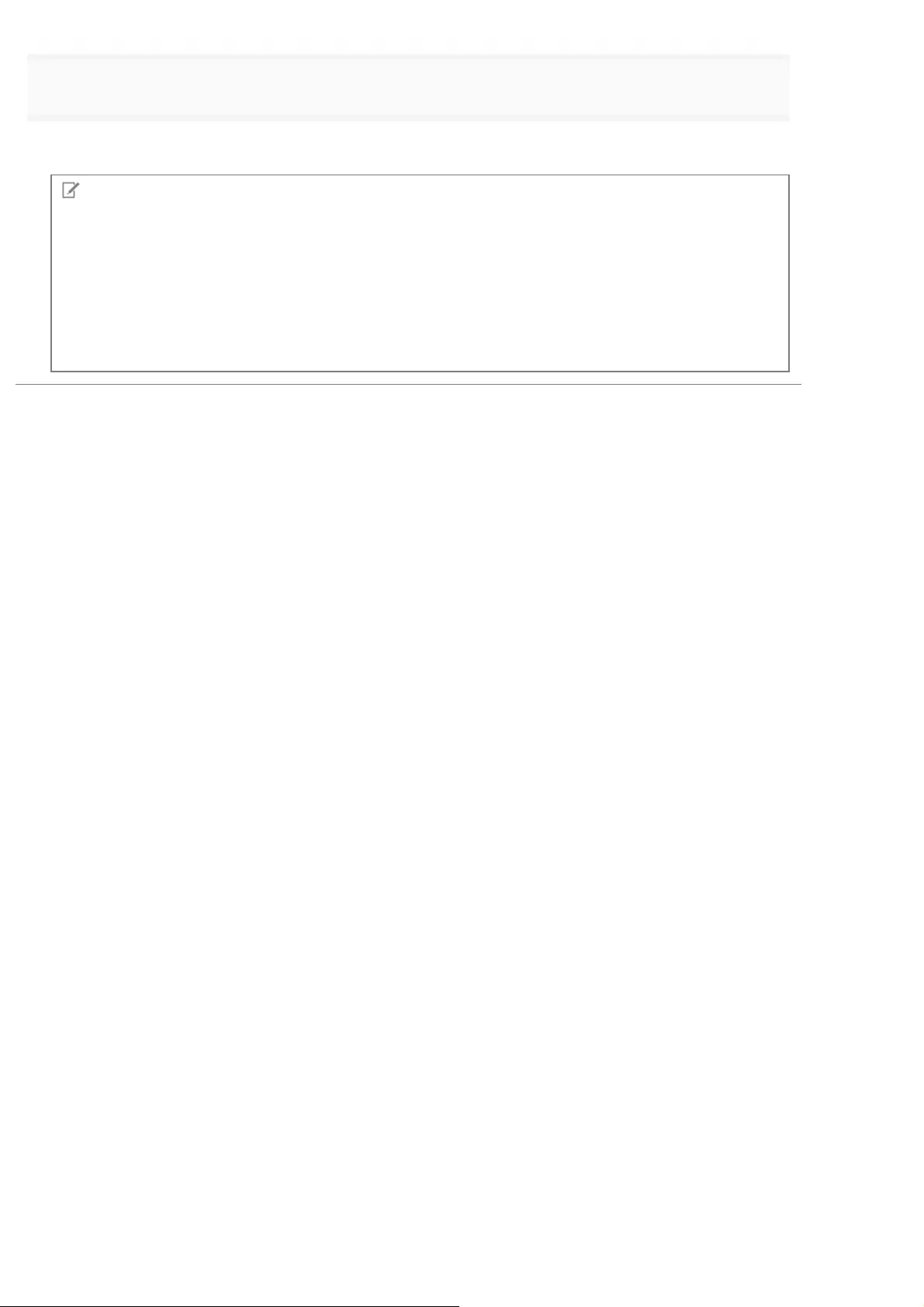
3
Perform a hard reset or restart the printer.
ĺAfter performing a hard reset or restarting the printer, the settings are effective.
NOTE
To perform a hard reset
You can perform a hard reset using the following procedure.
1. Click [Settings/Registration].
2. Select [Device Control] from the [Output/Control] menu.
3. Select [Hard Reset], then click [Execute].
㻣㻢㻜㻌㻛㻌㻥㻥㻤
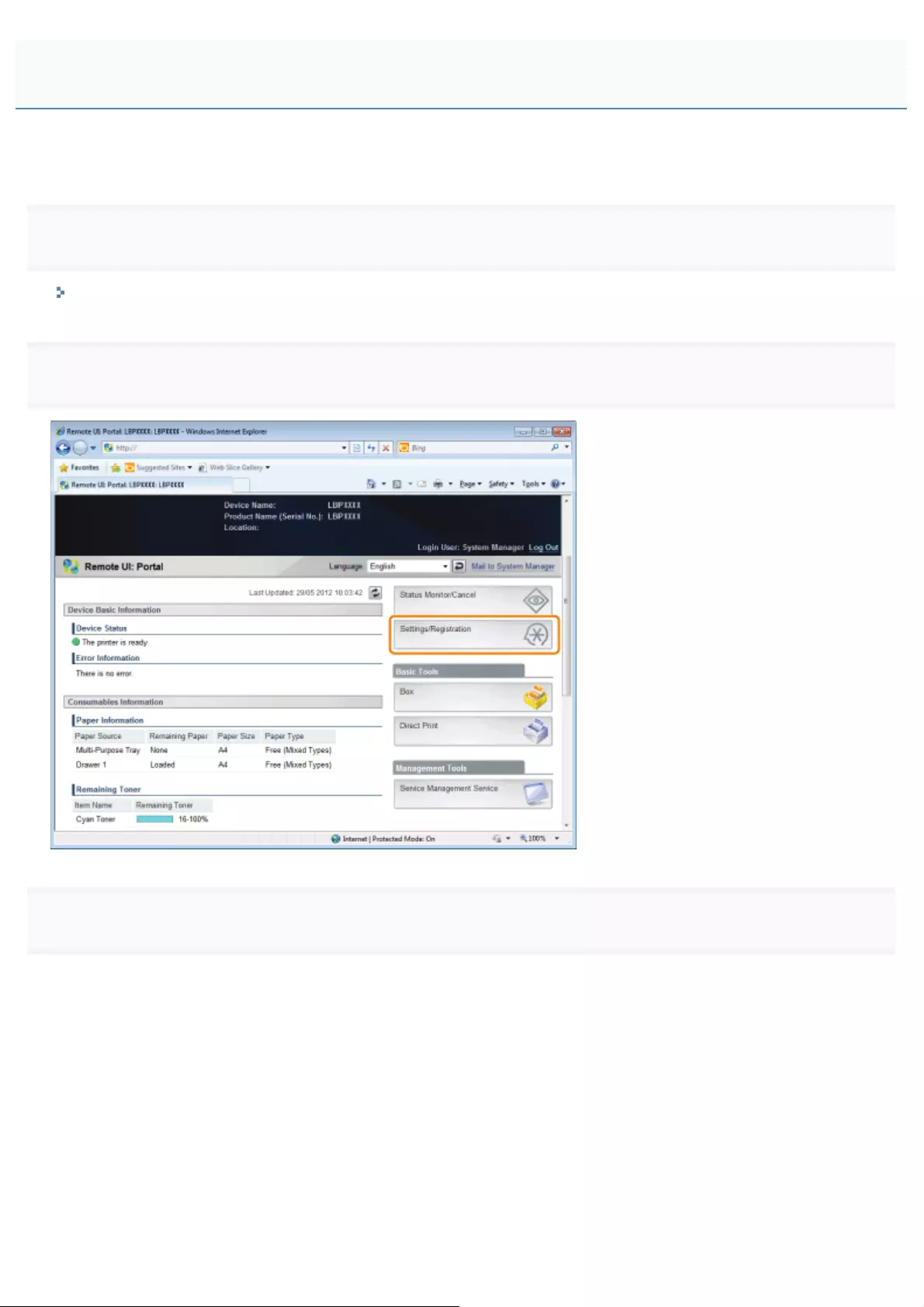
0258-0A8
You can specify the setting for Job Log Display using a Web browser (Remote UI).
1
Start the Remote UI, and then log in as Administrator.
"Starting the Remote UI"
2
Click [Settings/Registration].
3
Select [Security] from the [Management Settings] menu.
Specifying the Setting for Job Log Display
㻣㻢㻝㻌㻛㻌㻥㻥㻤
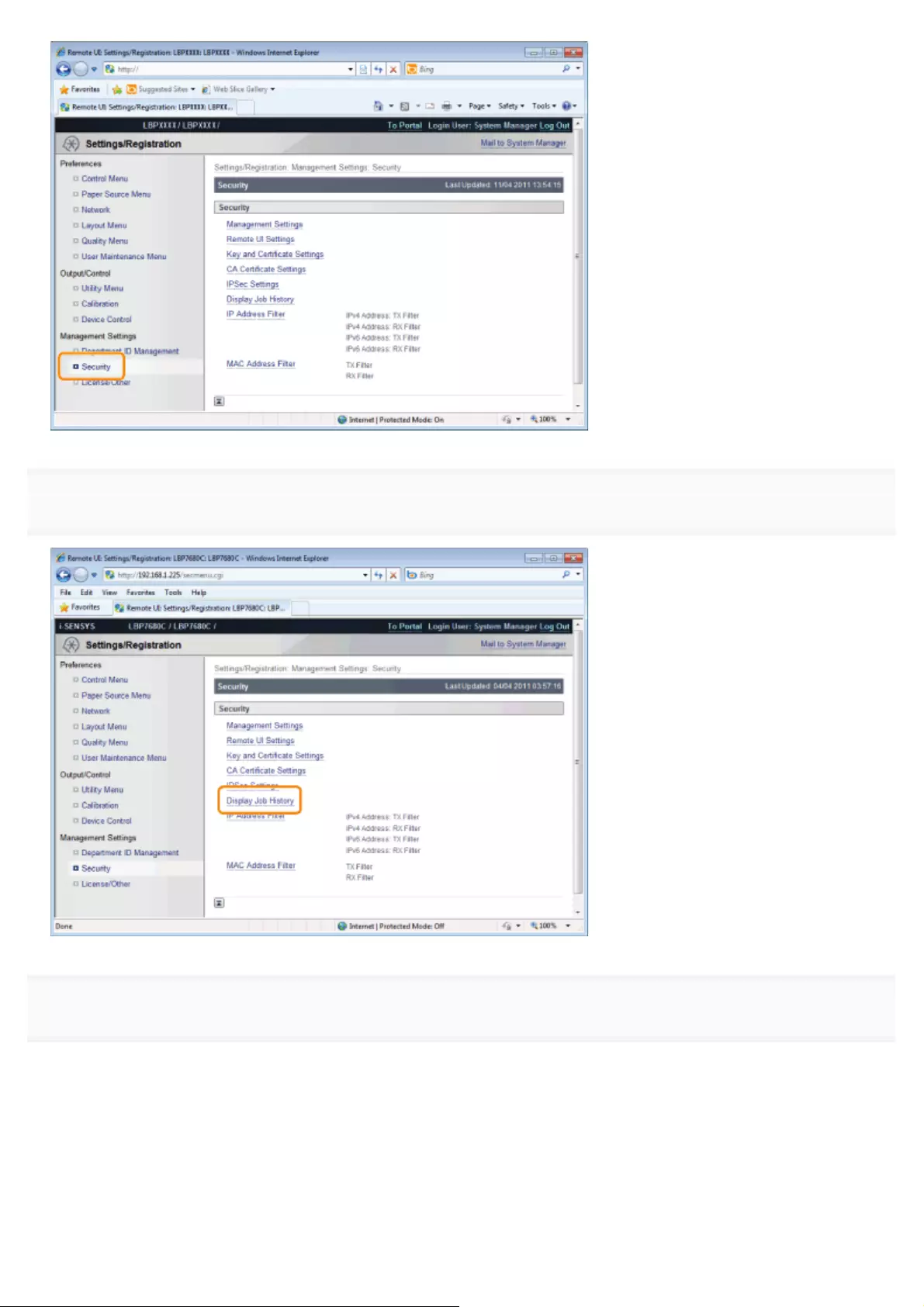
4
Click [Display Job History].
5
Click [Edit...].
㻣㻢㻞㻌㻛㻌㻥㻥㻤

6
Specify whether the printer should display the job logs.
If the [Display Job History] check box is selected, you can display the job logs*.
If the [Display Job History] check box is cleared, the job logs* are not displayed.
*The [Job History] page in the [Status Monitor/Cancel] menu
7
Select whether to permit management software to obtain job logs.
㻣㻢㻟㻌㻛㻌㻥㻥㻤
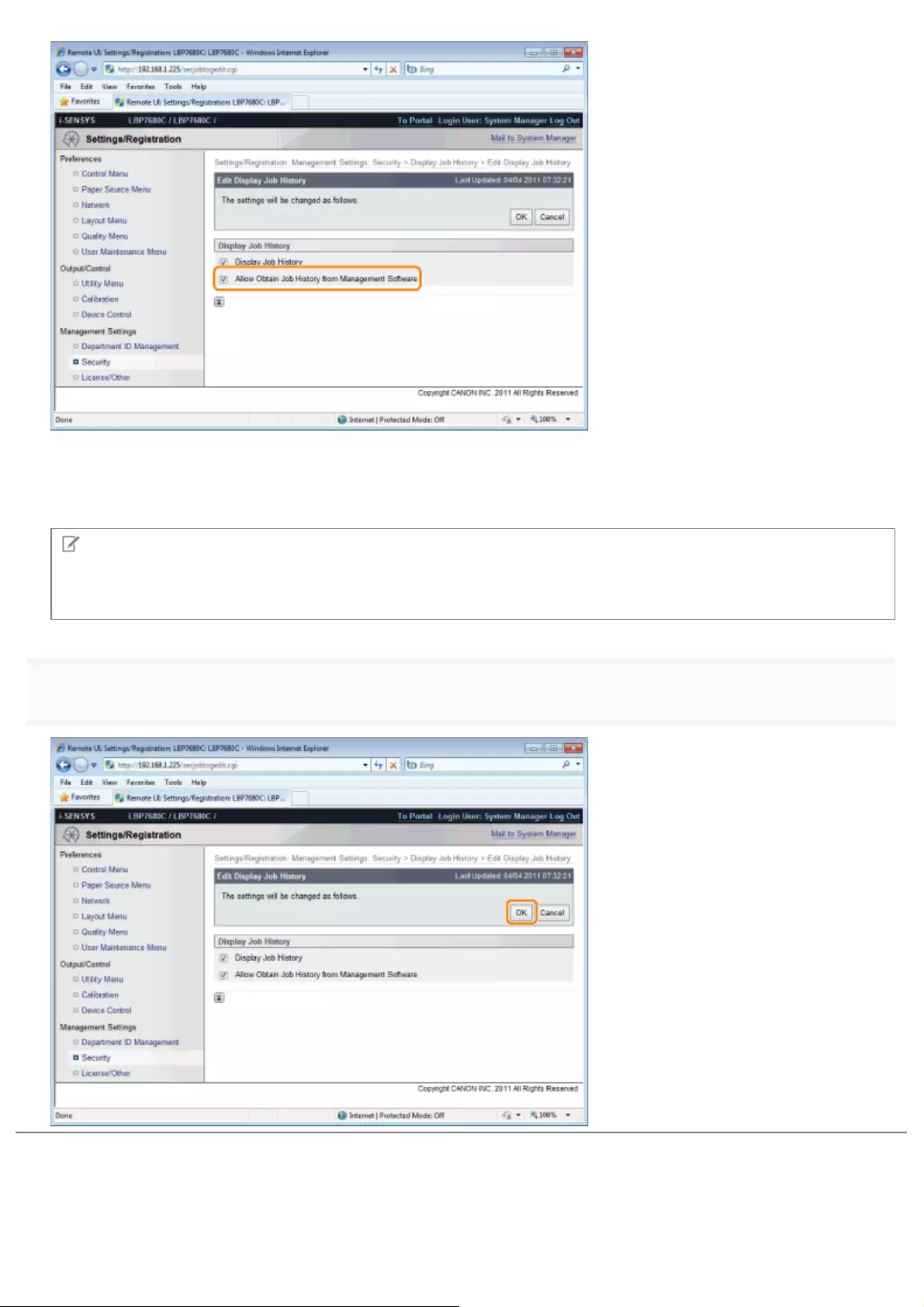
If the [Allow Obtain Job History from Management Software] check box is selected, you can obtain the job logs from
management software.
If the [Allow Obtain Job History from Management Software] check box is cleared, job logs cannot be obtained from
management software.
NOTE
If the [Display Job History] check box is selected
The [Allow Obtain Job History from Management Software] check box is selected automatically.
8
Click [OK].
㻣㻢㻠㻌㻛㻌㻥㻥㻤

0258-0H5
SMS (Service Management Service) is software that accesses the printer over the network from an existing Web browser,
and can install and manage MEAP applications (called "applications" in this document). Since the software (Web server) for
using SMS is embedded in the printer, there is no need for any software other than a Web browser.
If a printer on the network is connected to a computer, it can use SMS. You can perform the following operations using
SMS.
You can check application information from computers on the network
You can access the printer via the network and display the status and information of installed applications.
After SMS launches and you log in by entering your password in the [Log In] page, the following top page is displayed.
(1) [MEAP Application Management]
It can display the status of applications that are installed in the printer.
"MEAP Application Settings"
(2) [Install MEAP Application]
Install the MEAP application.
Available Functions
㻣㻢㻢㻌㻛㻌㻥㻥㻤

"Installing MEAP Applications"
(3) [System Management]
MEAP system administrator settings are used for setting system application settings, displaying information and
changing passwords, etc.
"System Settings"
You can install and uninstall applications
You can install and uninstall applications that support this printer from the computer.
"Installing MEAP Applications"
"Uninstalling MEAP Applications"
You can update installed applications and license files
If the license for the installed applications has expired, you can reinstall and update it.
"Adding License Files"
㻣㻢㻣㻌㻛㻌㻥㻥㻤
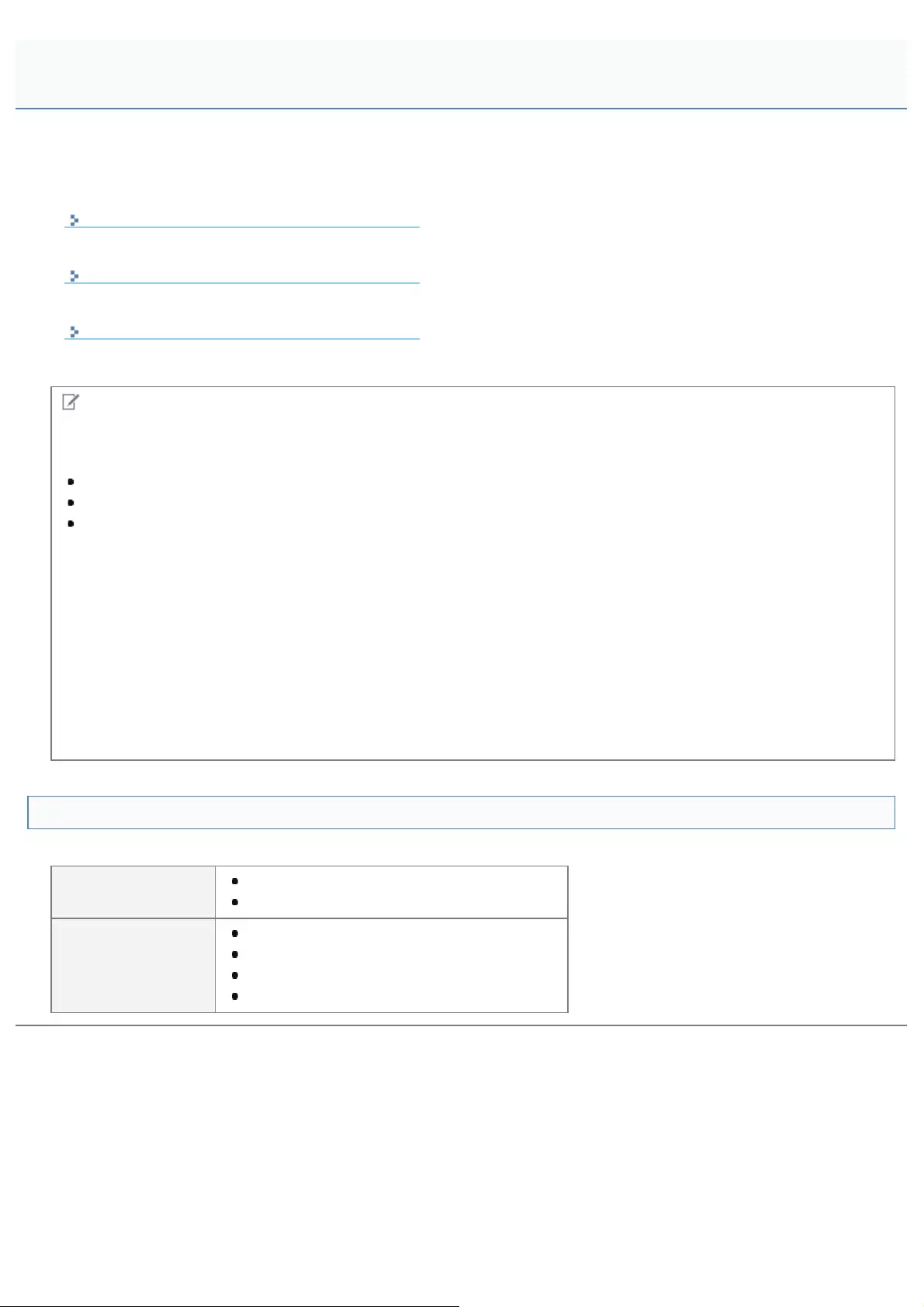
0258-0H6
Log in is required to use SMS.
Before Launching SMS (Preparation)
Launching SMS (Log in)
Closing SMS (Logging Out)
NOTE
Web Browser Settings
The following settings are required.
JavaScript must be enabled
The use of session cookies must be enabled
When a proxy server is used, using the proxy server settings of your Web browser, add the IP address of the printer
to the [Exceptions] (addresses that do not use a proxy) list.
Since settings differ depending on the network environment, consult with your network administrator.
Launching SMS
Multiple users cannot log in to SMS at the same time.
Automatic SMS Logout
While SMS is in use, if it is not accessed for approximately five minutes or more it times out and the user is
automatically logged out. If that happens, log in again from the [Login] page.
Do not use the Web browser's [Back] navigation button
If you use the Web browser's [Back] navigation button, SMS may not operate properly.
SMS System Environment
SMS operation is guaranteed in the following system environments.
Web Browsers Internet Explorer 6 Service Pack 1, or later
Safari 1.3.2 or later
Operating system
Windows XP Professional SP3
Windows Vista SP2
Windows 7
Mac OS X 10.4.9 or later
Launching and Closing SMS
㻣㻢㻤㻌㻛㻌㻥㻥㻤
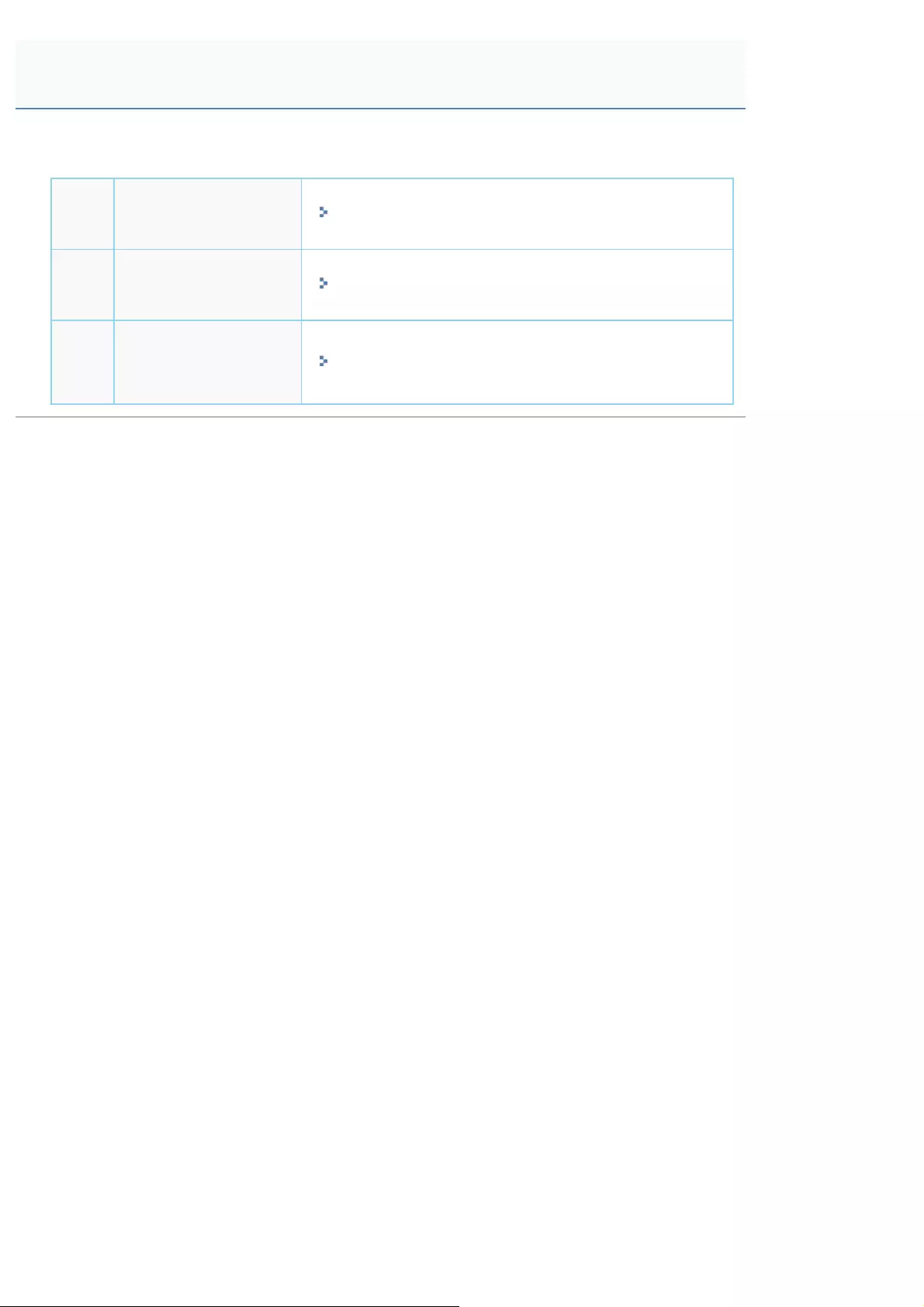
0258-0H7
Set the following before launching SMS.
Step
1Set [Network]. "Configuring the Network Settings (Sharing the Printer)"
Step
2
Check the printer's IP
address. "Checking the Printer Settings"
Step
3
Set it so that the printer
can be accessed from
the Web browser.
"Setting Up HTTP Communication"
Before Launching SMS (Preparation)
㻣㻢㻥㻌㻛㻌㻥㻥㻤
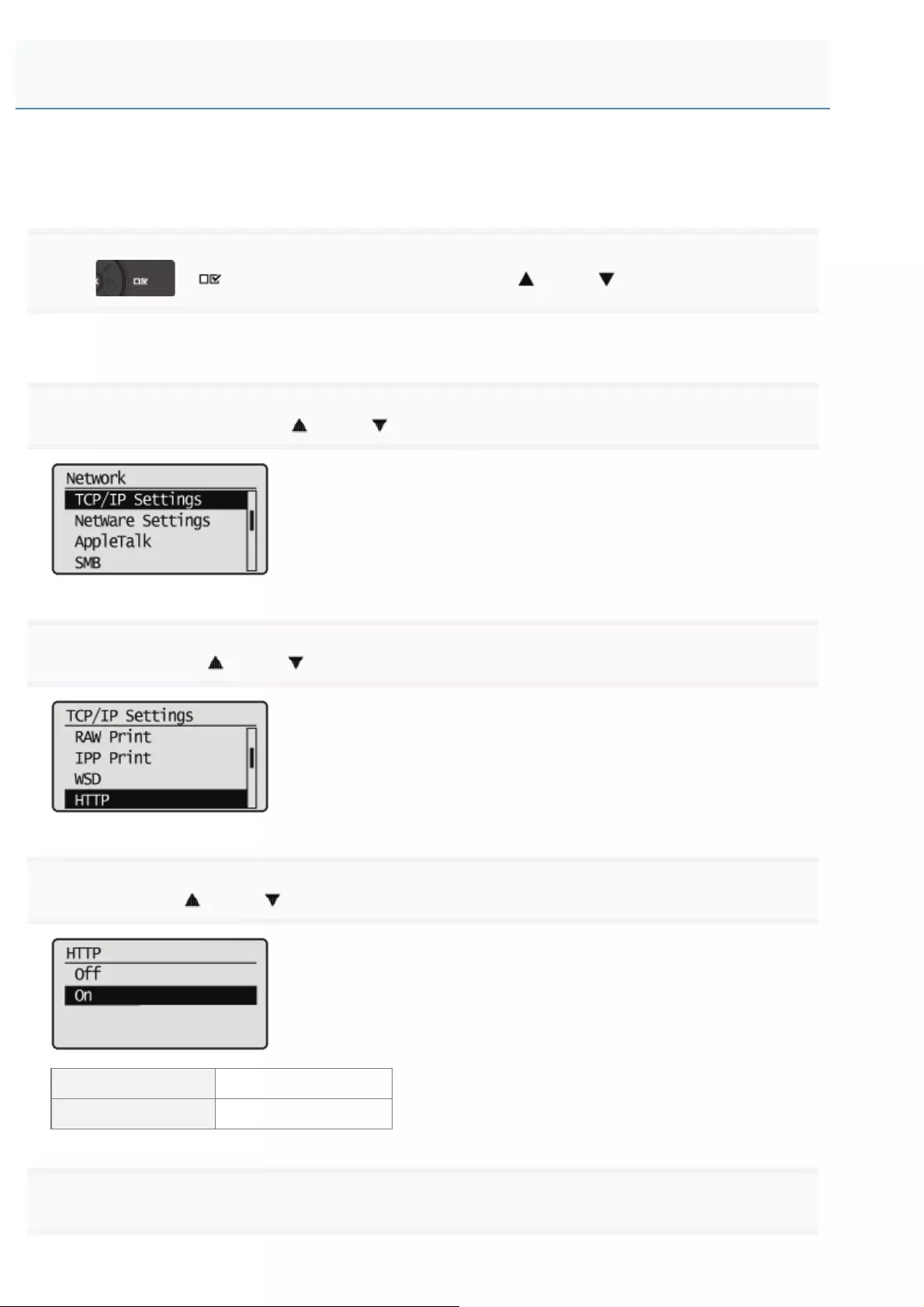
0258-0H9
In order to use MEAP functions from the Web browser, HTTP communication must be enabled.
Follow the steps in the procedure below to configure the settings. (The default settings are [On].)
1
Press [ ] ( : Settings), select [Network] with [ ] and [ ], and then press [OK].
After the message is displayed, press [OK].
2
Select [TCP/IP Settings] with [ ] and [ ], and then press [OK].
3
Select [HTTP] with [ ] and [ ], and then press [OK].
4
Select [On] with [ ] and [ ], and then press [OK].
[On] It uses HTTP.
[Off] It does not use HTTP.
5
Hard reset or restart the printer.
Setting Up HTTP Communication
㻣㻣㻜㻌㻛㻌㻥㻥㻤
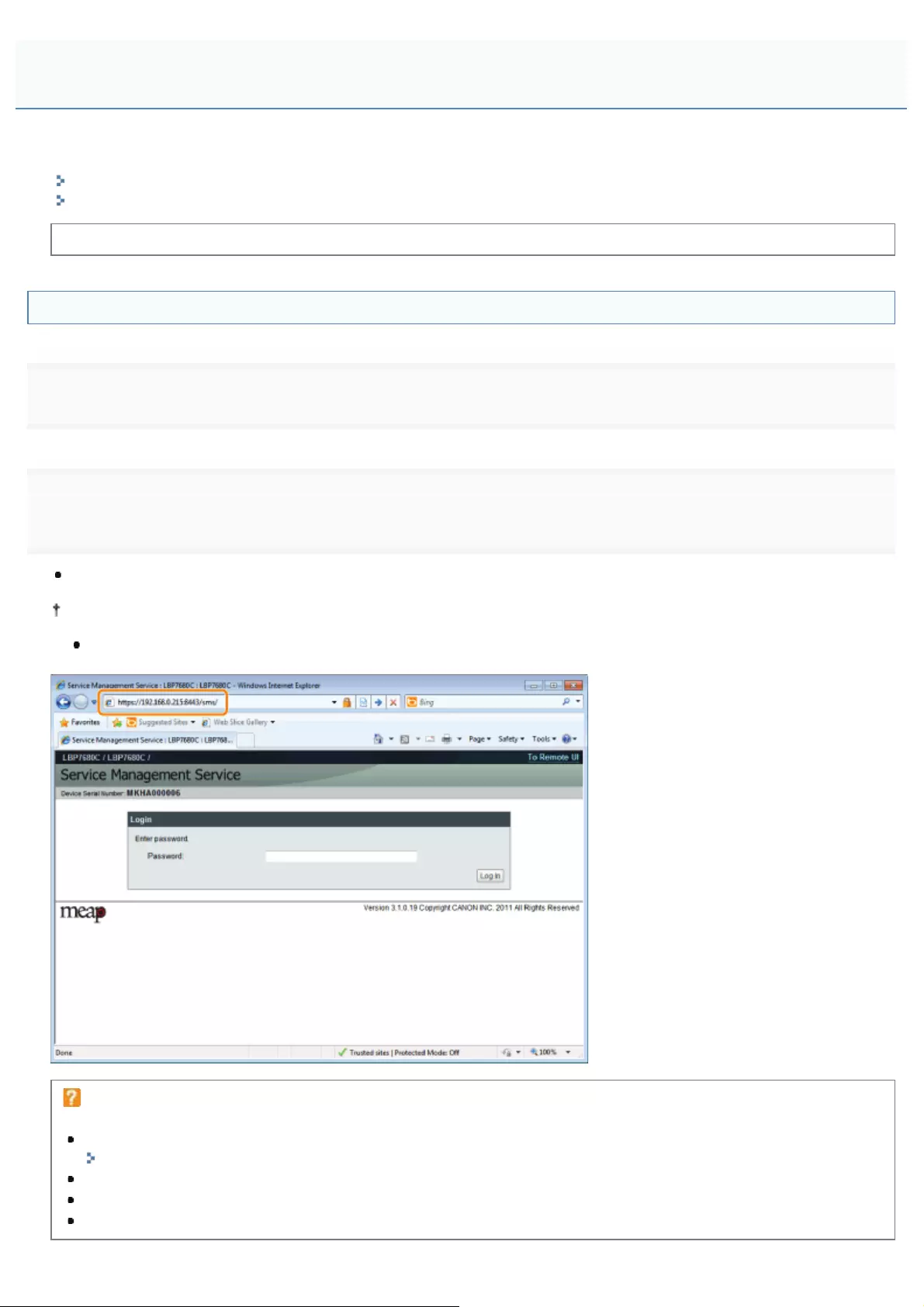
0258-0HA
The following two methods are used for launching SMS.
Launching SMS directly from the Web browser
Launching SMS from a Remote UI
Before launching SMS, see "Attention (Launching SMS (Log in))."
Launching SMS directly from the Web browser
1
Start the Web browser.
2
Enter "https://<Printer's IP address>:8443/sms/" in the address bar, and press [ENTER] from the Enter
key on the keyboard.
Entry Example: https://192.168.0.215:8443/sms/
If the printer's host name is registered in the DNS server, you can enter [host name.domain name] instead of the IP
address.
Input Example: http://my_printer.xy_dept.company.com:8443/sms/
If SMS does not launch
Check the following.
HTTP communication is enabled.
"Setting Up HTTP Communication"
The computer and printer are connected properly over the network.
The printer is turned ON.
The IP address or [host name.domain name] are entered correctly.
Launching SMS (Log in)
㻣㻣㻞㻌㻛㻌㻥㻥㻤
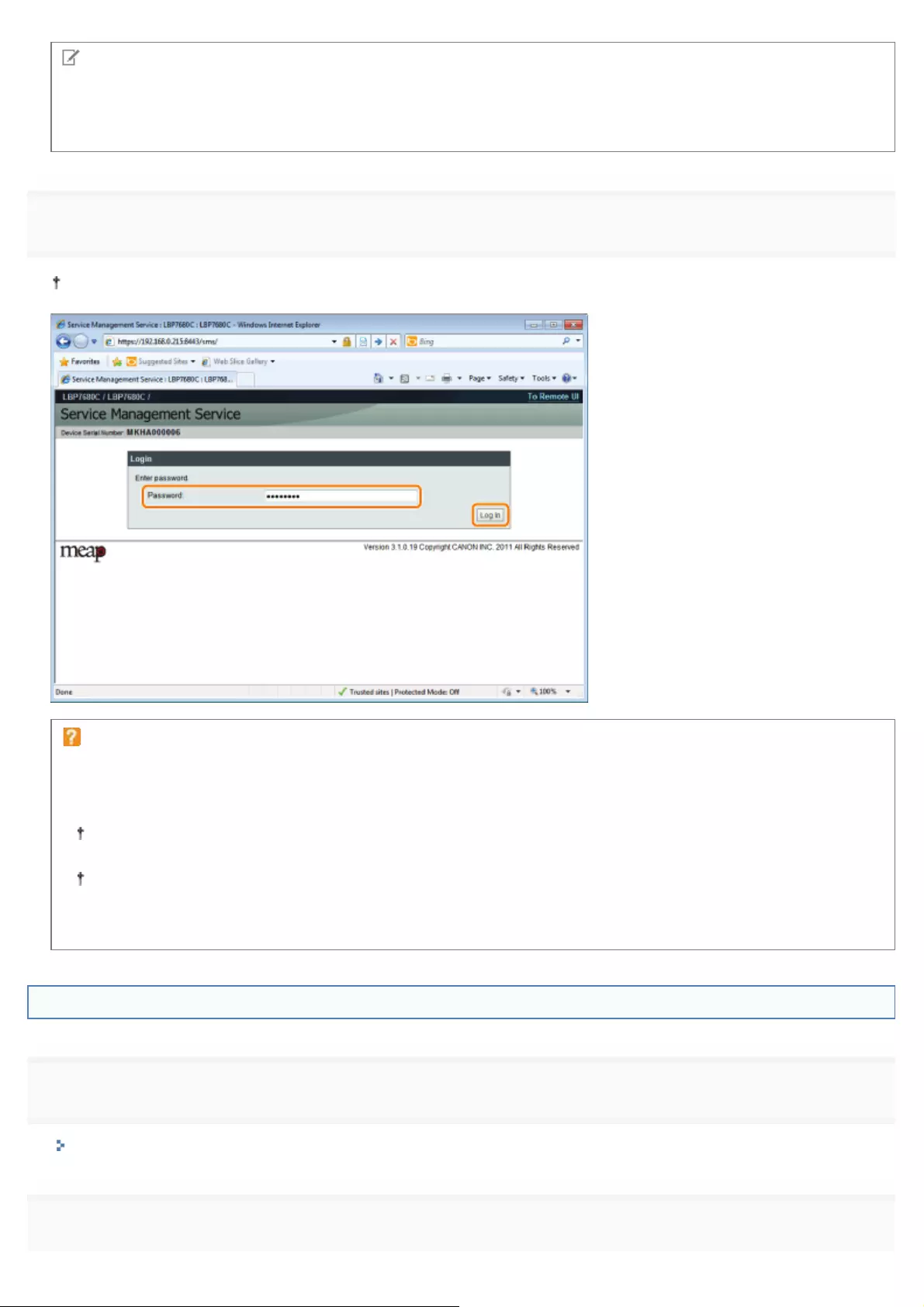
NOTE
Device Serial Number
The printer's device serial number is displayed on the upper left of the screen. (The device serial number is required to
obtain the license file from the license management system.)
3
Enter the password, and click [Login].
The default password is "MeapSmsLogin" (case sensitive).
If you cannot log in
If you cannot log in because the password is not correct, a message is displayed prompting you to re-enter your
password.
Enter the correct password, and click [Login].
If you do not log in within approximately 5 minutes after the login page is displayed, you will not be able to log in
even if you enter the correct password.
A switch license file is required to initialize passwords. After clicking on [Browse] in [Initialize Password] in the
screen that displays the message prompting password re-entry, select Switch License File, and click [Initialize].
Contact your local authorized Canon dealer or sales representatives.
Launching SMS from a Remote UI
1
Start the Remote UI and log on in system manager mode.
"Starting the Remote UI"
2
Click [Service Management Service] on the portal page.
㻣㻣㻟㻌㻛㻌㻥㻥㻤
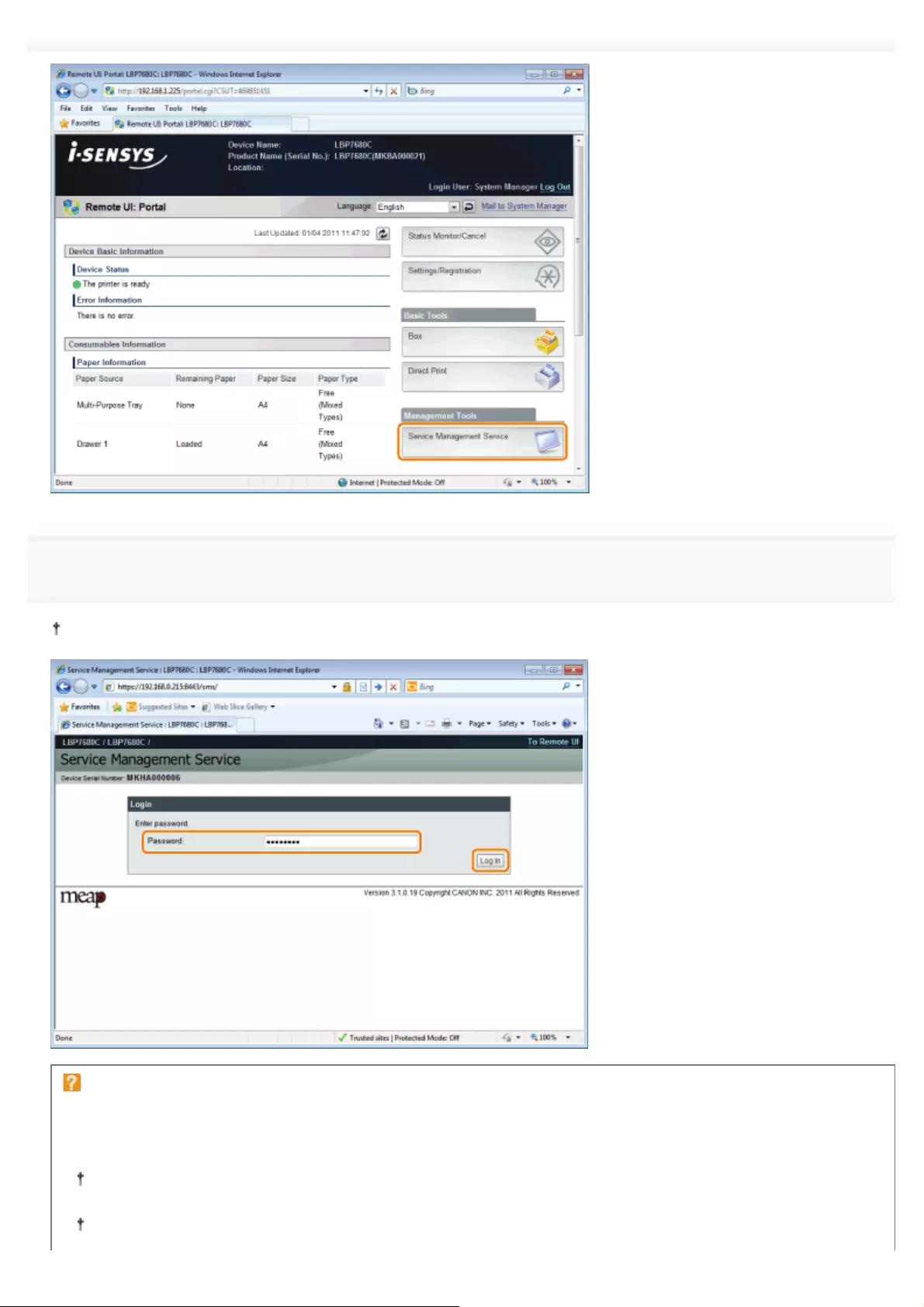
3
Enter the password, and click [Login].
The default password is "MeapSmsLogin" (case sensitive).
If you cannot log in
If you cannot log in because the password is not correct, a message is displayed prompting you to re-enter your
password.
Enter the correct password, and click [Login].
If you do not log in within approximately 5 minutes after the login page is displayed, you will not be able to log in
even if you enter the correct password.
A switch license file is required to initialize passwords. After clicking on [Browse] in [Initialize Password] in the
screen that displays the message prompting password re-entry, select Switch License File, and click [Initialize].
㻣㻣㻠㻌㻛㻌㻥㻥㻤

Contact your local authorized Canon dealer or sales representatives.
㻣㻣㻡㻌㻛㻌㻥㻥㻤
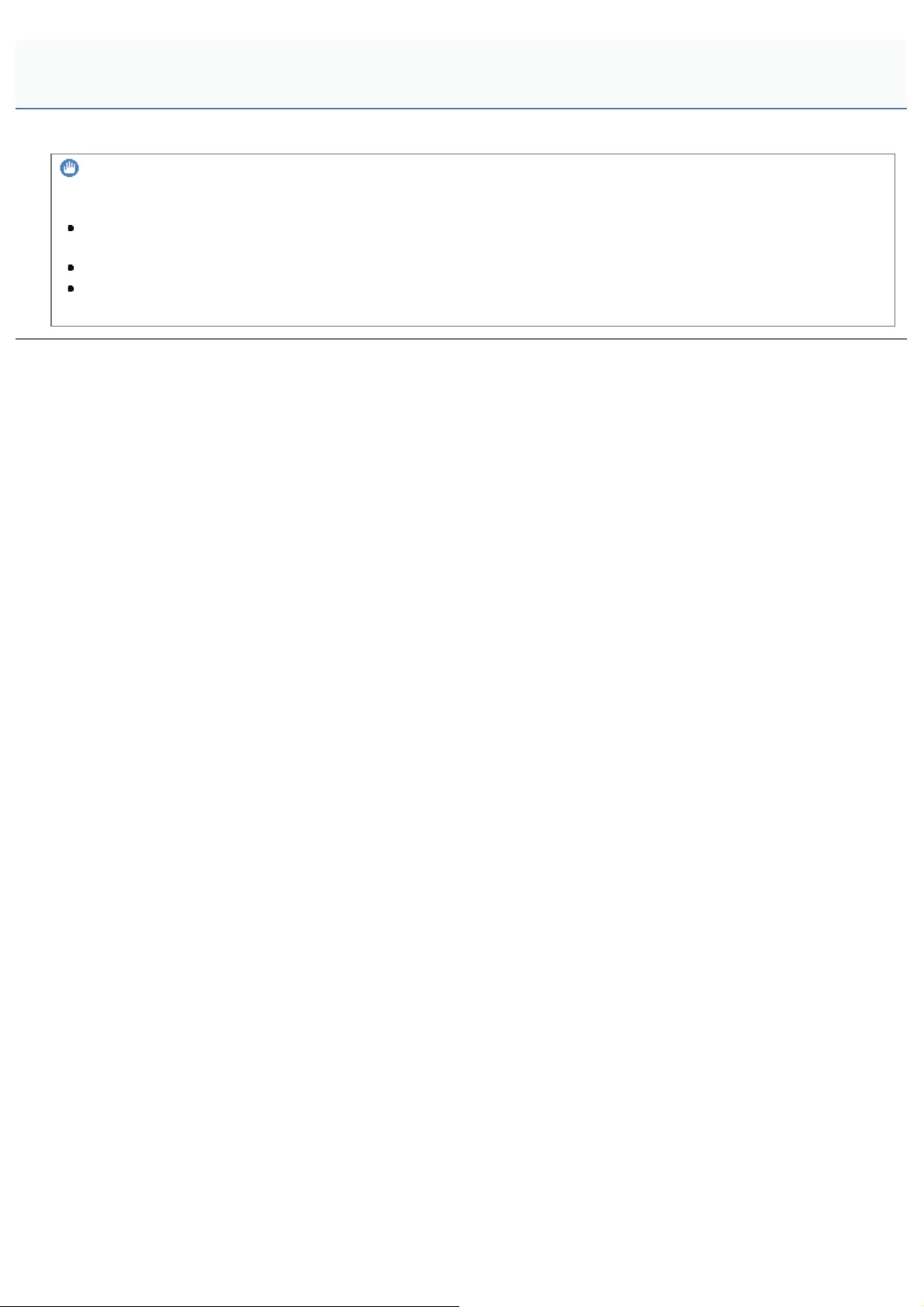
0258-0HC
IMPORTANT
SMS Password
To prevent unauthorized access, We recommend that the administrator change the password before SMS use is
begun. See "Changing the SMS Password" when changing passwords.
This password is to prevent unauthorized operation of the printer. Do not let anyone know except the administrator.
Make sure that you do not forget your password. If you forget your password, you will not be able to use SMS. If
this happens, contact your local dealer.
Attention (Launching SMS (Log in))
㻣㻣㻢㻌㻛㻌㻥㻥㻤
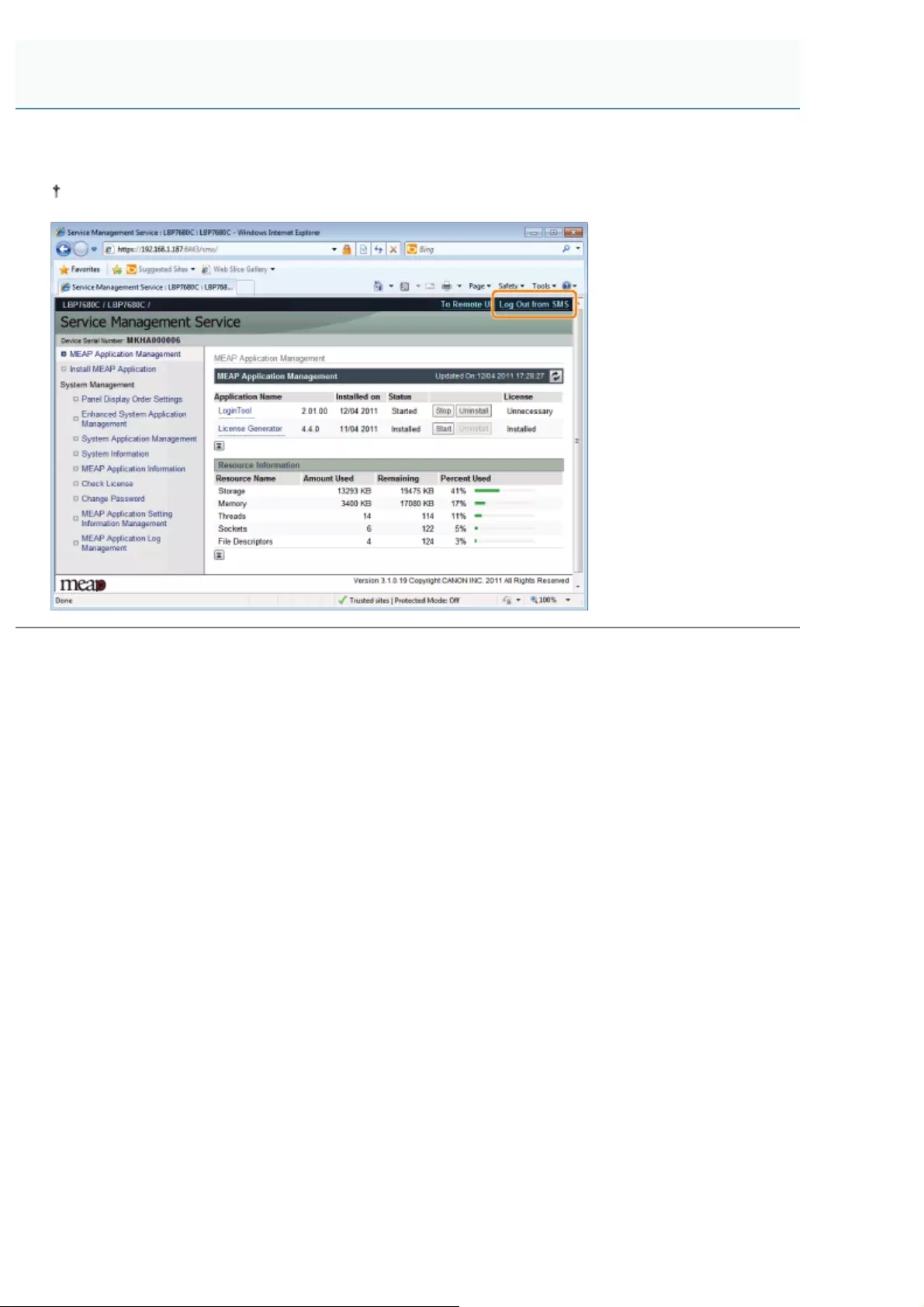
0258-0HE
Click [Log Out from SMS] to close SMS.
If you close the Web browser without clicking [Log Out from SMS], SMS becomes temporarily unusable.
Closing SMS (Logging Out)
㻣㻣㻣㻌㻛㻌㻥㻥㻤

0258-0HF
MEAP applications are set from the [MEAP Application Management] and the [Install MEAP Application] menus.
Items shown in the [MEAP Application Management] menu
[Application
Name] The name of the application is displayed.
[Installed on] The date on which the application was installed is displayed.
[Status]
The status of the application is displayed.
[Installed]:
The application has been installed, but not started.
Or, the printer was turned OFF after the application stopped, and after the printer was
restarted the application was not yet started.
[Started]:
The application is running.
MEAP Application Settings
㻣㻣㻤㻌㻛㻌㻥㻥㻤

[Stopped]:
The application is stopped.
[Starting]:
The application is starting up.
[Stopping]:
The application is closing down.
[License]
The license status of the application is displayed.
[Installed]:
A valid license file has been installed.
[Not Installed]:
The license file has been disabled.
[Over Limit]:
The license file that is installed has an expiration date, and multiple types of counters have
been set. One or more of the counter values has exceeded the upper limits of the counter.
[Invalid]:
The installed license file has passed its expiration date.
Or, the current counter value has exceeded the upper limit of the license file.
* When upper limits have been set for multiple types of counters, the license will become
invalid at the point in time when any counter exceeds its upper limit.
[Unnecessary]:
The application does not require a license file for startup.
[Resource
Information]
The resources being used by the applications are displayed.
[Storage]:
The amount of storage being used. It is shown in kilobyte units (KB).
[Memory]:
The amount of memory being used. It is shown in kilobyte units (KB).
[Threads]:
The number of threads.
[Sockets]:
The number of sockets.
[File Descriptors]:
The number of file descriptors.
NOTE
Timing of [Resource Information] Updates
[Resource Information] is updated at the following times.
Item Timing of Updates
[Storage] When the application is installed or uninstalled
[Memory]
[Threads]
[Sockets]
[File Descriptors]
When the application starts or stops
[Install MEAP Application] Menu Settings
[Install MEAP
Application/License]
Install the MEAP application.
[Install]:
Specify the application file and license file to be installed, and click [Install] to start the
installation.
[Application File]:
Specify the application file to be installed.
㻣㻣㻥㻌㻛㻌㻥㻥㻤
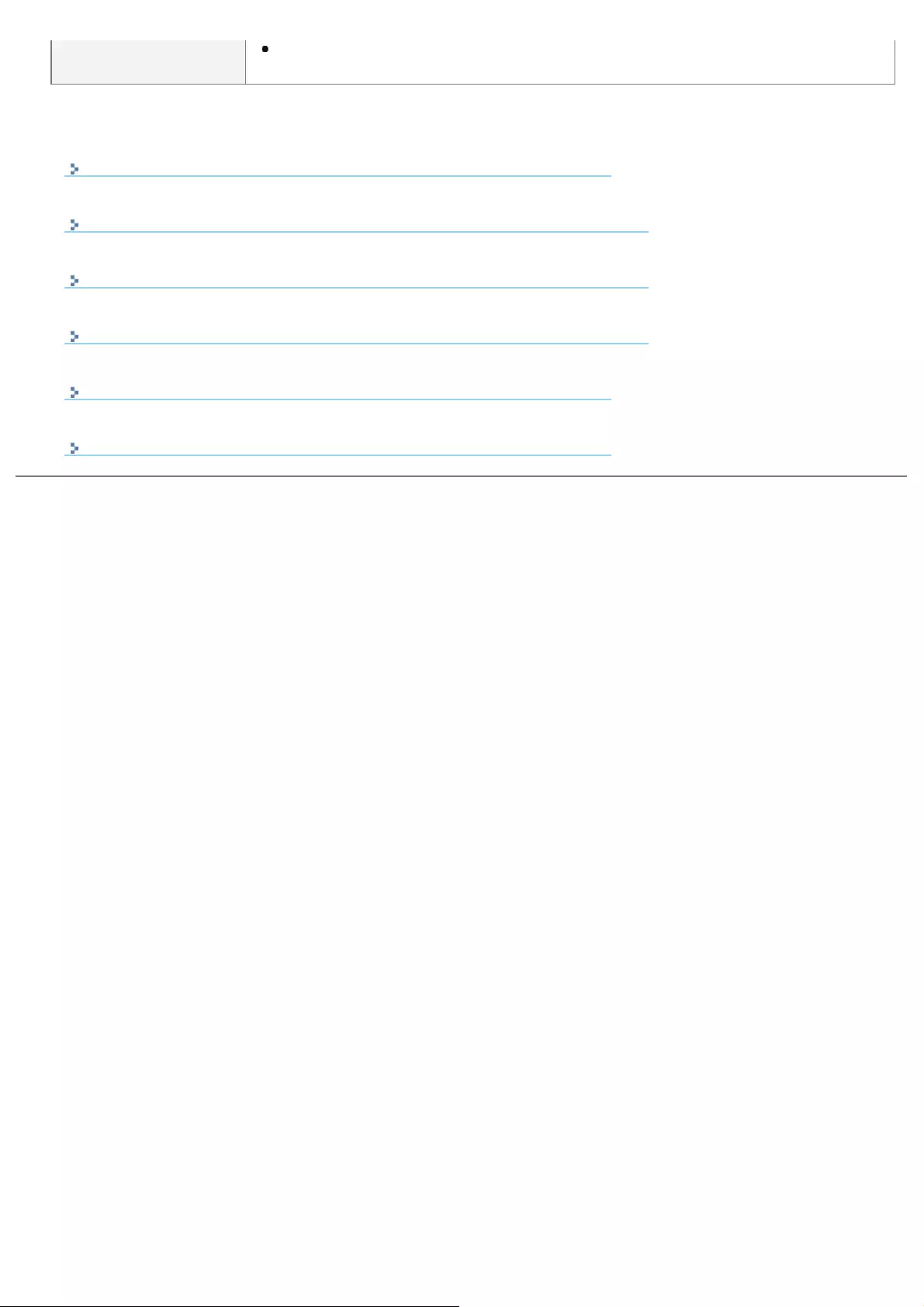
[License File]:
Specify the license file.
See the following section for settings that use the [MEAP Application Management] and [Install MEAP Application] menus.
Installing MEAP Applications
Uninstalling MEAP Applications
Starting/Stopping MEAP Applications
Checking the Details of MEAP Applications
MEAP Application License Settings
Setting Authentication Information for MEAP Applications
㻣㻤㻜㻌㻛㻌㻥㻥㻤
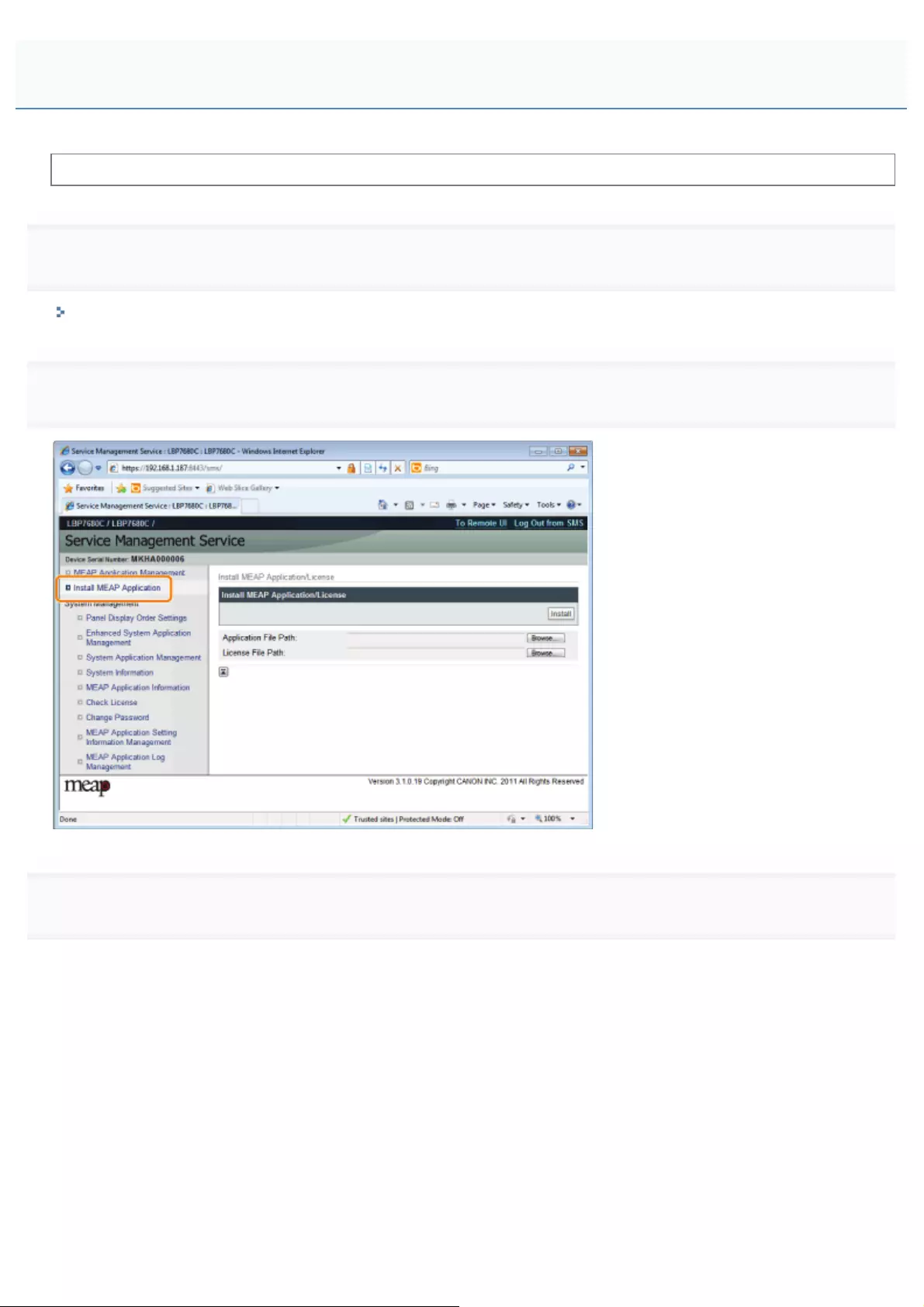
0258-0HH
Before starting the following operation, see "Attention (Installing MEAP Applications)."
1
Start SMS (Service Management Service).
"Launching SMS (Log in)"
2
Click [Install MEAP Application].
3
Set [Application File Path] and [License File Path].
Either select the file by clicking [Browse...], or enter the location where the file is stored.
Installing MEAP Applications
㻣㻤㻝㻌㻛㻌㻥㻥㻤

[Application File
Path] Specify a file with a "jar" extension.
[License File Path] Specify a file with a "lic" extension.
4
Click [Install].
5
Confirm the information on the install confirmation page, and click [Yes].
When the [License Agreement] appears, confirm the information, and click [I Accept].
ĺThe installation begins.
<Information Displayed on the Install Confirmation Page>
If you are installing a new application
[Application
Information] Information about the application
[License
Information] The expiration date of the application
If you are updating an application
[Application
Information]
[Current Application Information] Information about the current application
[Application Information after Overwrite] Application information after overwrite
[License
Information]
[Expires after] The expiration date of the targeted application
[Current Counter Usage Limit] Current counter information
[Counter Usage Limit after Overwrite] Counter information after overwrite
If the install is cancelled
If the shutdown process for the printer starts while an application is being installed, an error message may be displayed
㻣㻤㻞㻌㻛㻌㻥㻥㻤
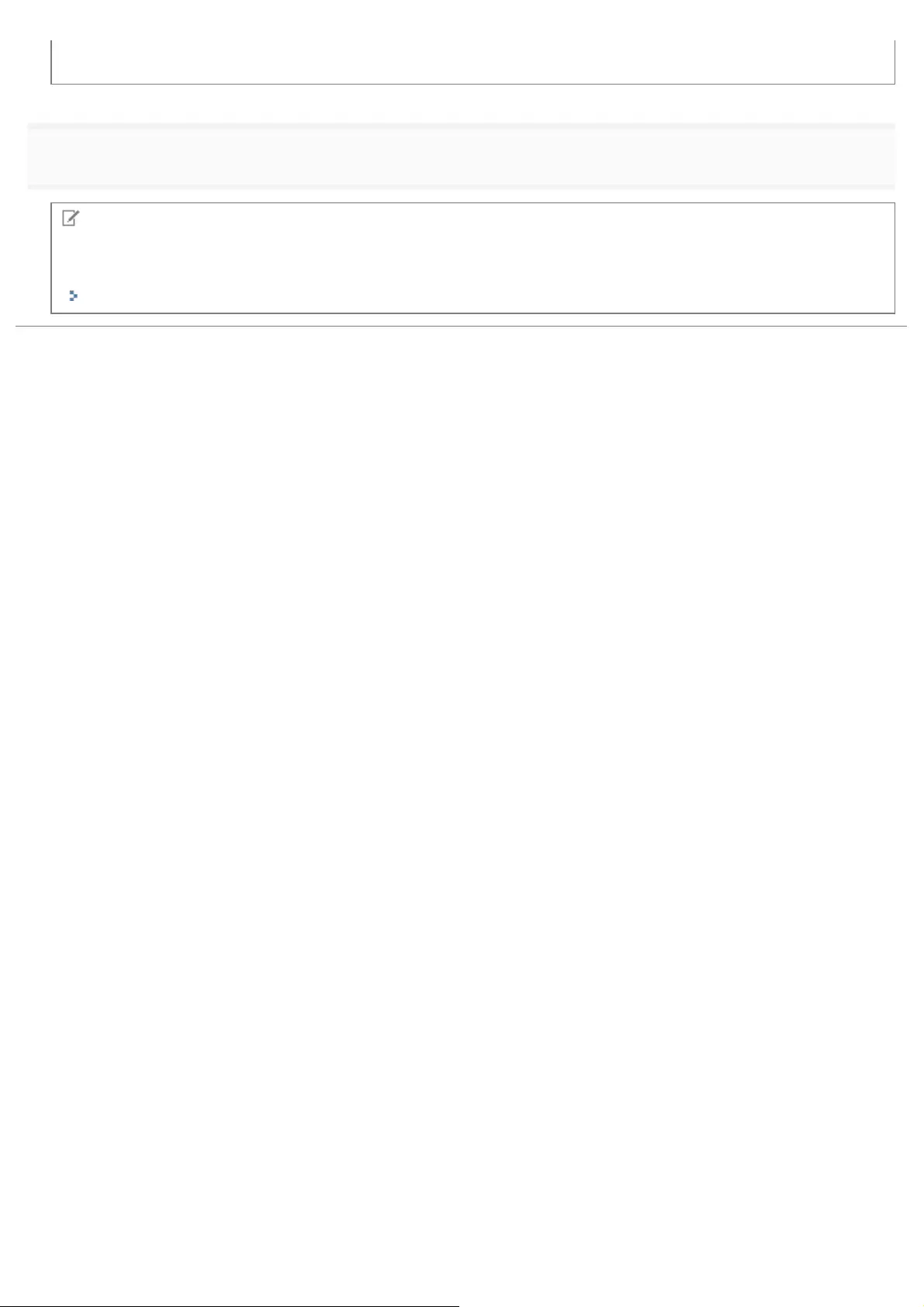
on the [Install] page for SMS, and the installation cancelled. If this happens, install the application again after restarting
the printer by turning the main power switch OFF and then back ON again.
6
After the install is completed, click [To MEAP Application Management].
NOTE
When using the installed application
Start the application.
"Starting MEAP Applications"
㻣㻤㻟㻌㻛㻌㻥㻥㻤
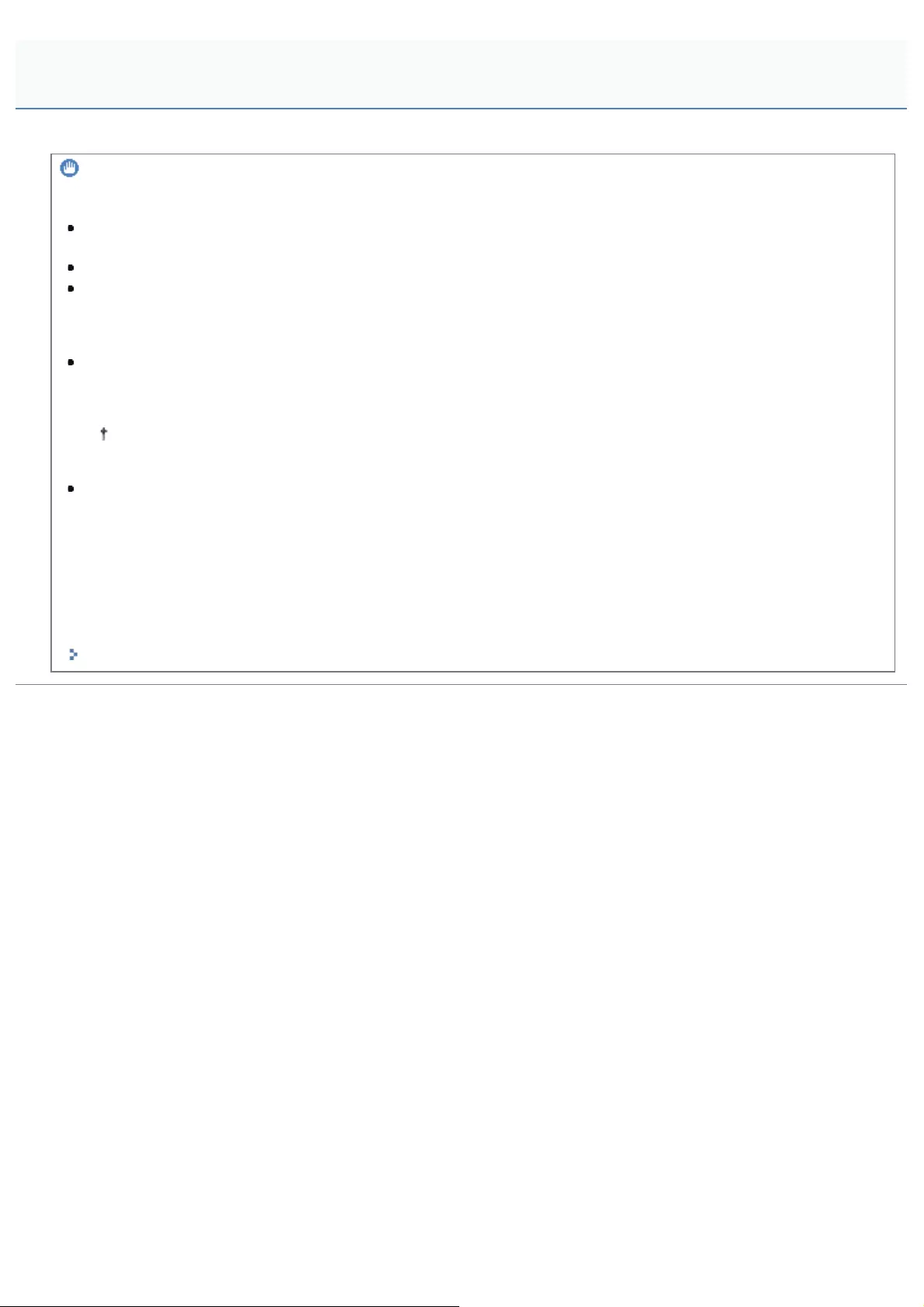
0258-0HJ
IMPORTANT
Installing Applications
There may be other specific requirements for installation, depending on the application. For more information, see
the instruction manual provided with the application.
You can install up to eight applications.
You cannot install license files only. Specify both the application file and the license file.
To only add a license file for an application that is already installed, see"Adding License Files."
Obtaining License Files
In order to install an application, a valid license file is required.
If you have a license access number in your application package, obtain a valid license file from License
Management System (http://www.canon.com/lms/license/).
In order to obtain a license file, a license access number and a device serial number (the number displayed
on the upper left of the SMS screen) are required.
If you do not have a license access number in your application package, it will be provided by the dealer where you
purchased the application. For more information, see the instruction manual provided with the application.
Storage Area
The application can use a maximum storage area of 32MB. You can confirm the storage space used by the application
"Storage", under resource information displayed on the [MEAP Application Management] page.
When you are updating an application
Stop the application before installing the new version.
"Stopping MEAP Applications"
Attention (Installing MEAP Applications)
㻣㻤㻠㻌㻛㻌㻥㻥㻤
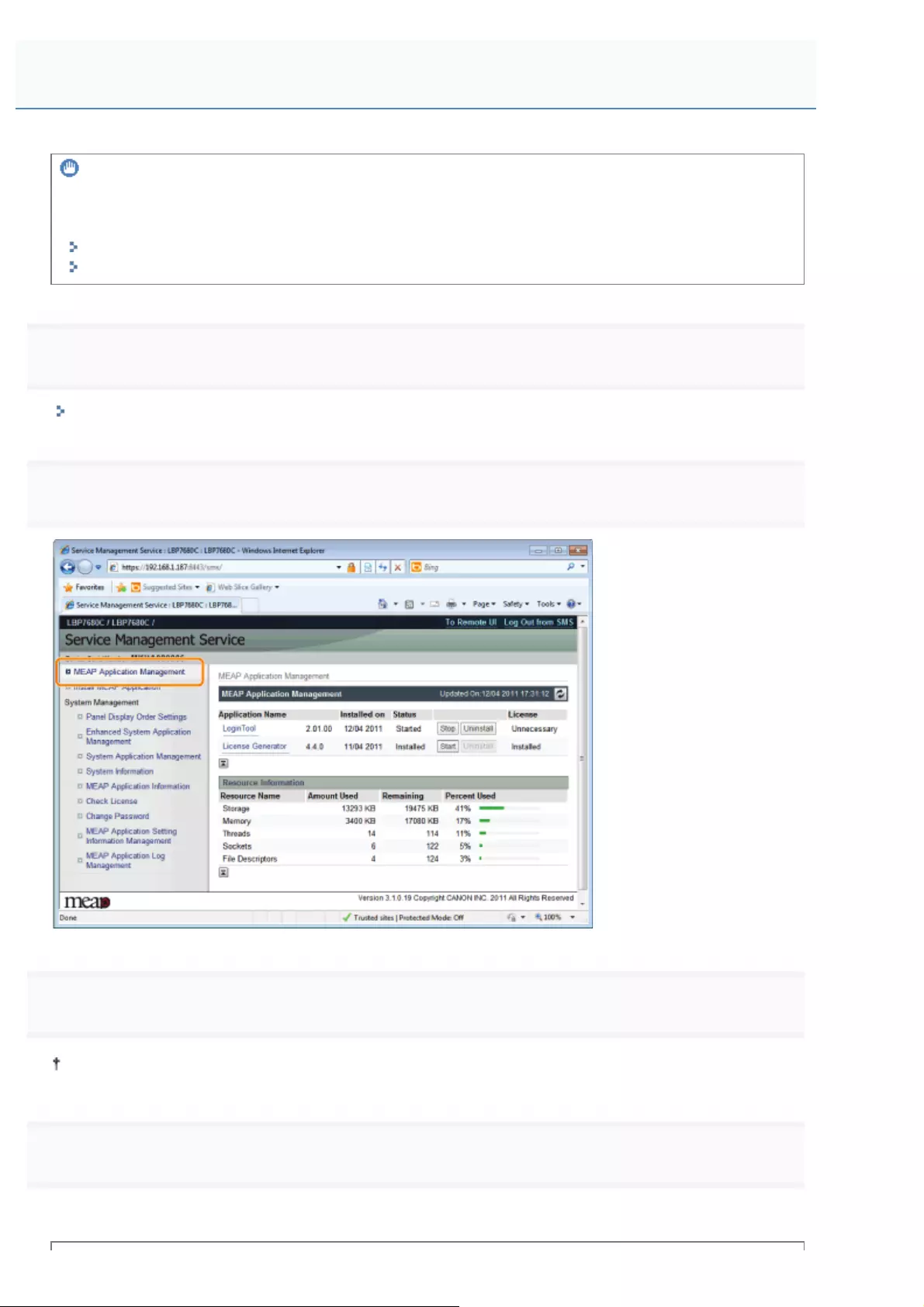
0258-0HK
IMPORTANT
If the license status is not "Not Installed"
Uninstall the application after disabling and deleting the license files.
"Disabling License Files"
"Deleting Disabled License Files"
1
Start SMS (Service Management Service).
"Launching SMS (Log in)"
2
Click [MEAP Application Management].
3
Click [Uninstall] for the application to uninstall.
Applications with [Uninstall] grayed out cannot be deleted.
4
Click [Yes].
ĺThe uninstall begins.
Uninstalling MEAP Applications
㻣㻤㻡㻌㻛㻌㻥㻥㻤
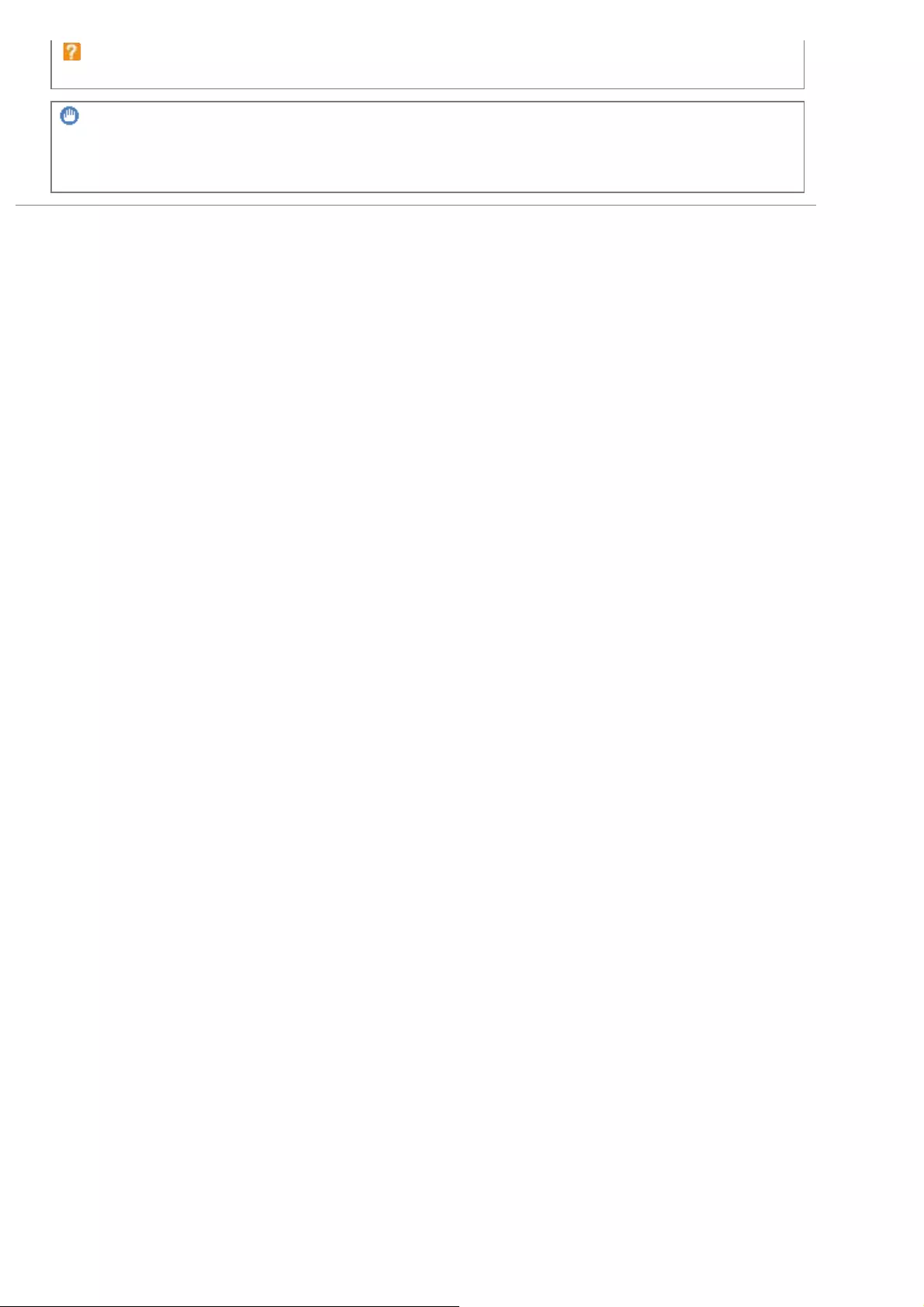
When the restart prompt message is displayed
Follow the onscreen instructions to restart the printer.
IMPORTANT
If <A package exported from this application cannot be used.> is displayed
and you uninstall the application that displayed this message, you may not be able to use other applications.
㻣㻤㻢㻌㻛㻌㻥㻥㻤
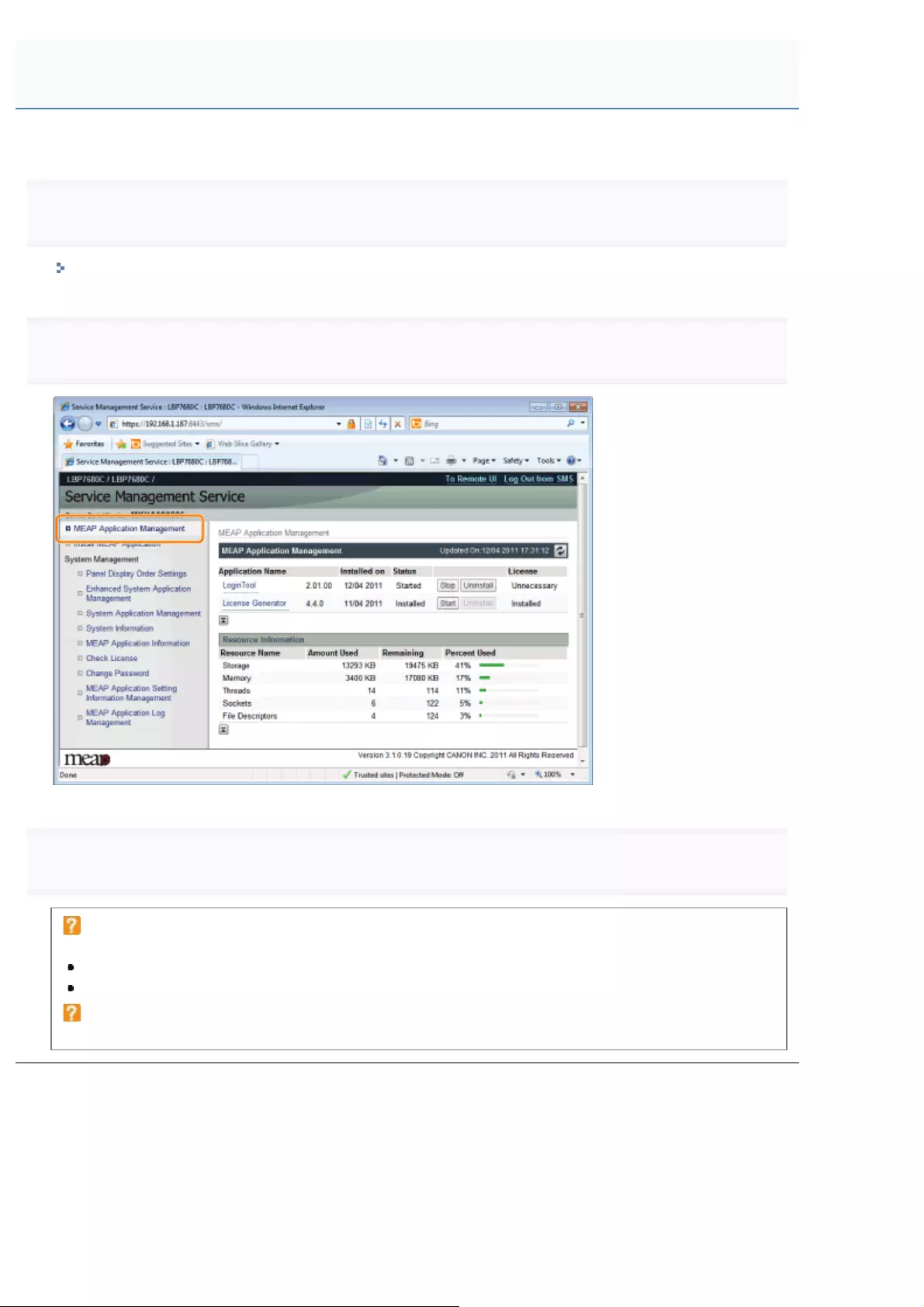
0258-0HR
1
Start SMS (Service Management Service).
"Launching SMS (Log in)"
2
Click [MEAP Application Management].
3
Click [Start] for the application to start.
If the application does not start
Check the following.
The required license file has been installed
There is sufficient [Memory], [Threads], [Sockets] and [File Descriptors] under [Resource Information]
When the restart prompt message is displayed
Follow the onscreen instructions to restart the printer.
Starting MEAP Applications
㻣㻤㻤㻌㻛㻌㻥㻥㻤
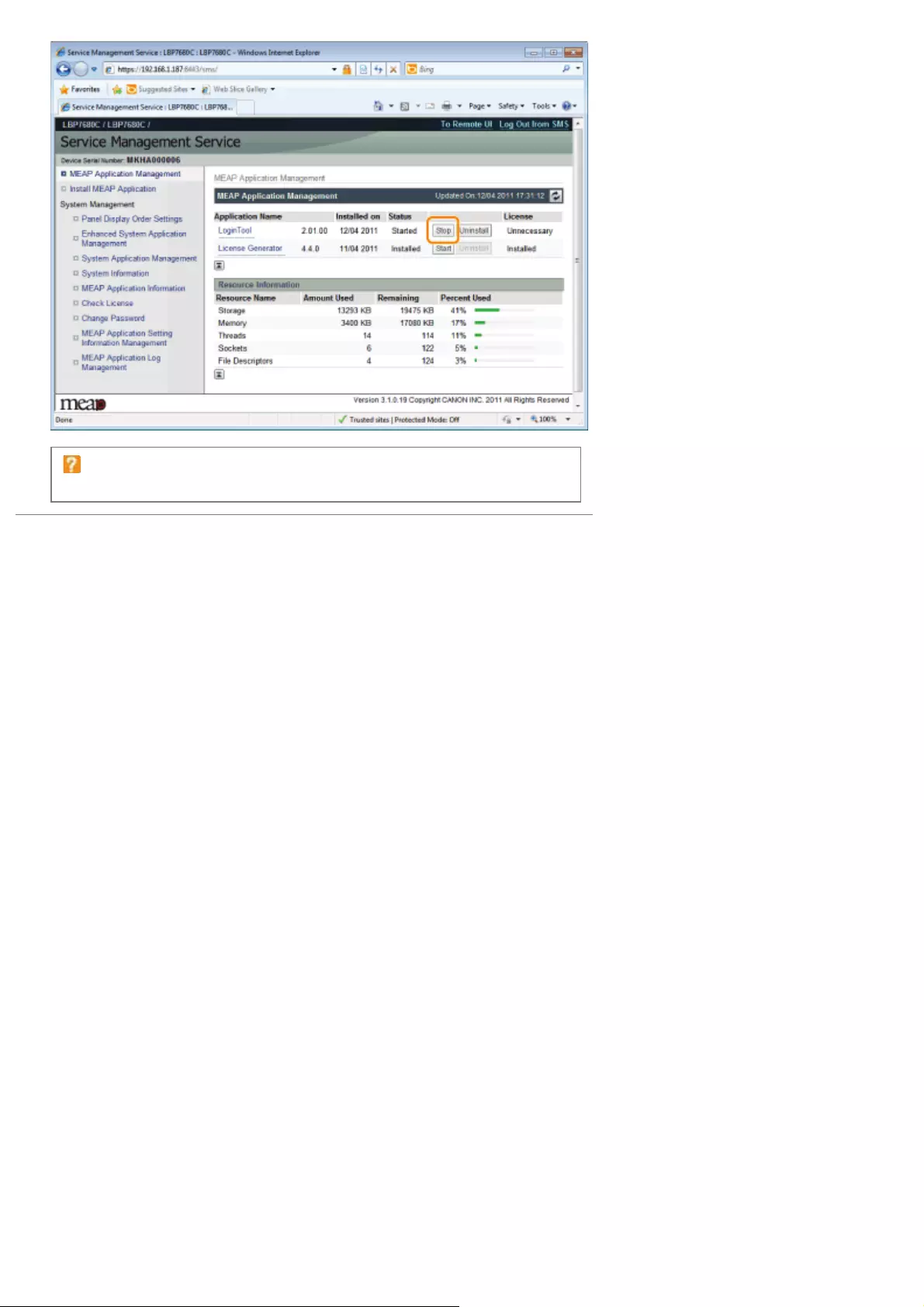
When the restart prompt message is displayed
Follow the onscreen instructions to restart the printer.
㻣㻥㻜㻌㻛㻌㻥㻥㻤
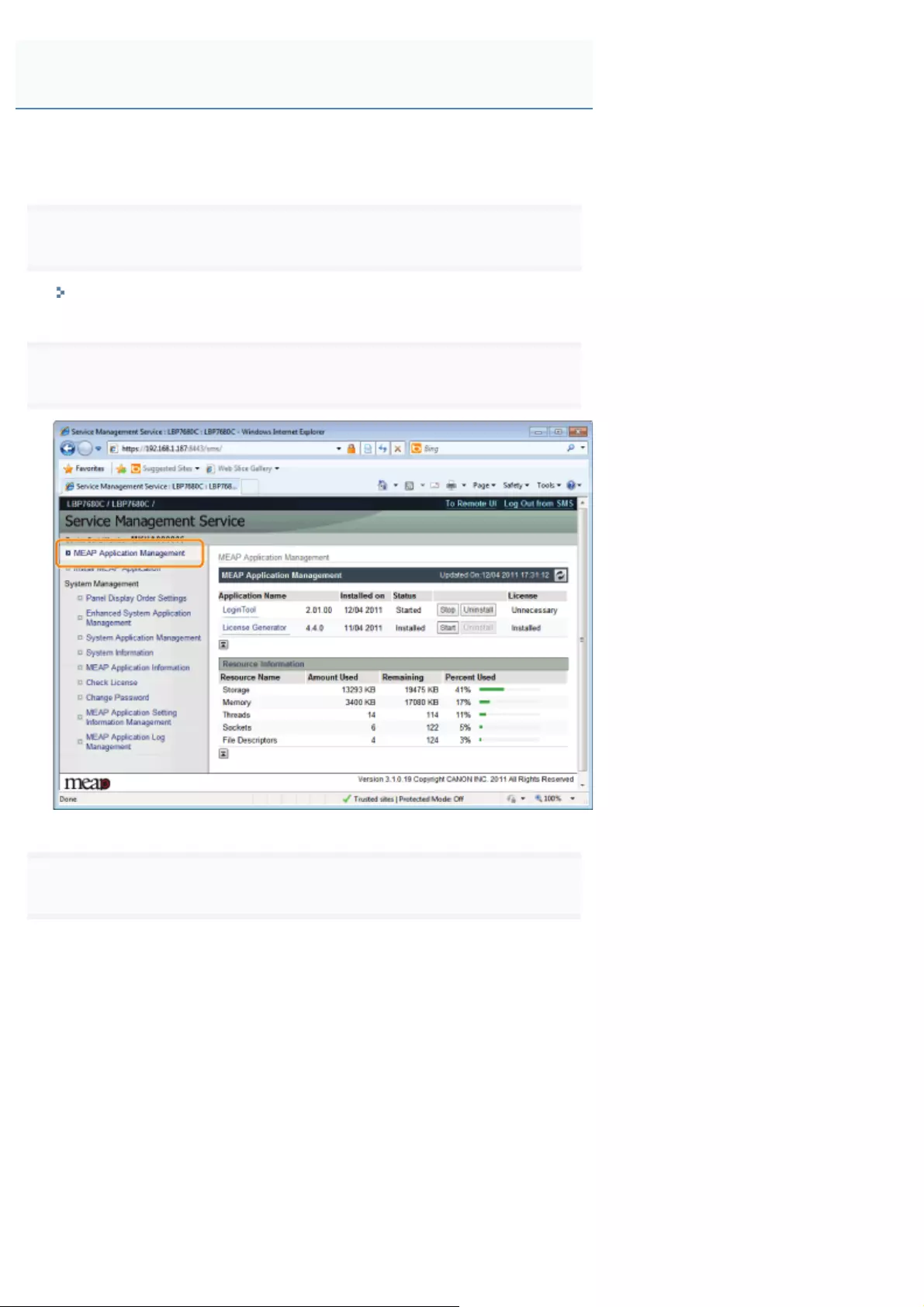
0258-0HU
Check the details of installed applications.
1
Start SMS (Service Management Service).
"Launching SMS (Log in)"
2
Click [MEAP Application Management].
3
Click the application to check the details.
ĺ[Application/License Information] is displayed on the screen.
Checking the Details of MEAP Applications
㻣㻥㻝㻌㻛㻌㻥㻥㻤
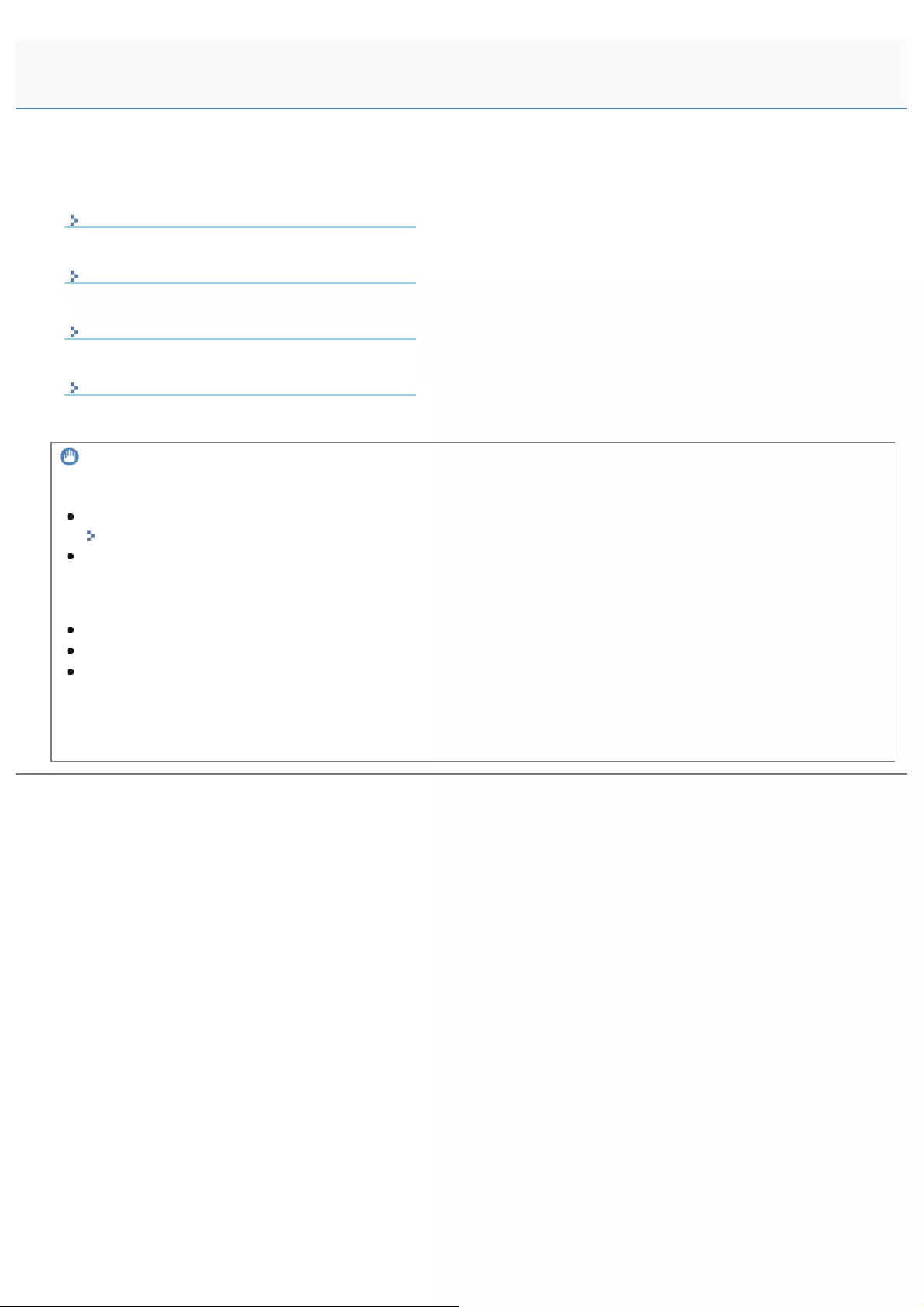
0258-0HW
You can add, disable and delete license files for installed applications.
Adding License Files
Disabling License Files
Downloading Disabled License Files
Deleting Disabled License Files
IMPORTANT
Disabling Licenses
You cannot disable a license file if the application is still running.
"Stopping MEAP Applications"
When a disabled license file is generated, the status of that license file becomes <Not Installed> and the application
becomes unusable.
Downloading and Deleting Licenses
You can only download or delete disabled license files.
Some license files need to be downloaded after they have been disabled.
Once you have deleted the disabled license file, you cannot download it from the printer again. We recommend
downloading and backing it up before deleting it.
Reinstalling License Files
You can reinstall disabled or downloaded license files in the same printer.
MEAP Application License Settings
㻣㻥㻟㻌㻛㻌㻥㻥㻤

0258-0HX
You can install license files for applications that are already installed.
You can also increase counter values and extend terms of validity by adding license files.
1
Start SMS (Service Management Service).
"Launching SMS (Log in)"
2
Click [MEAP Application Management].
3
Click the name of the application to which a license file will be added.
Adding License Files
㻣㻥㻠㻌㻛㻌㻥㻥㻤
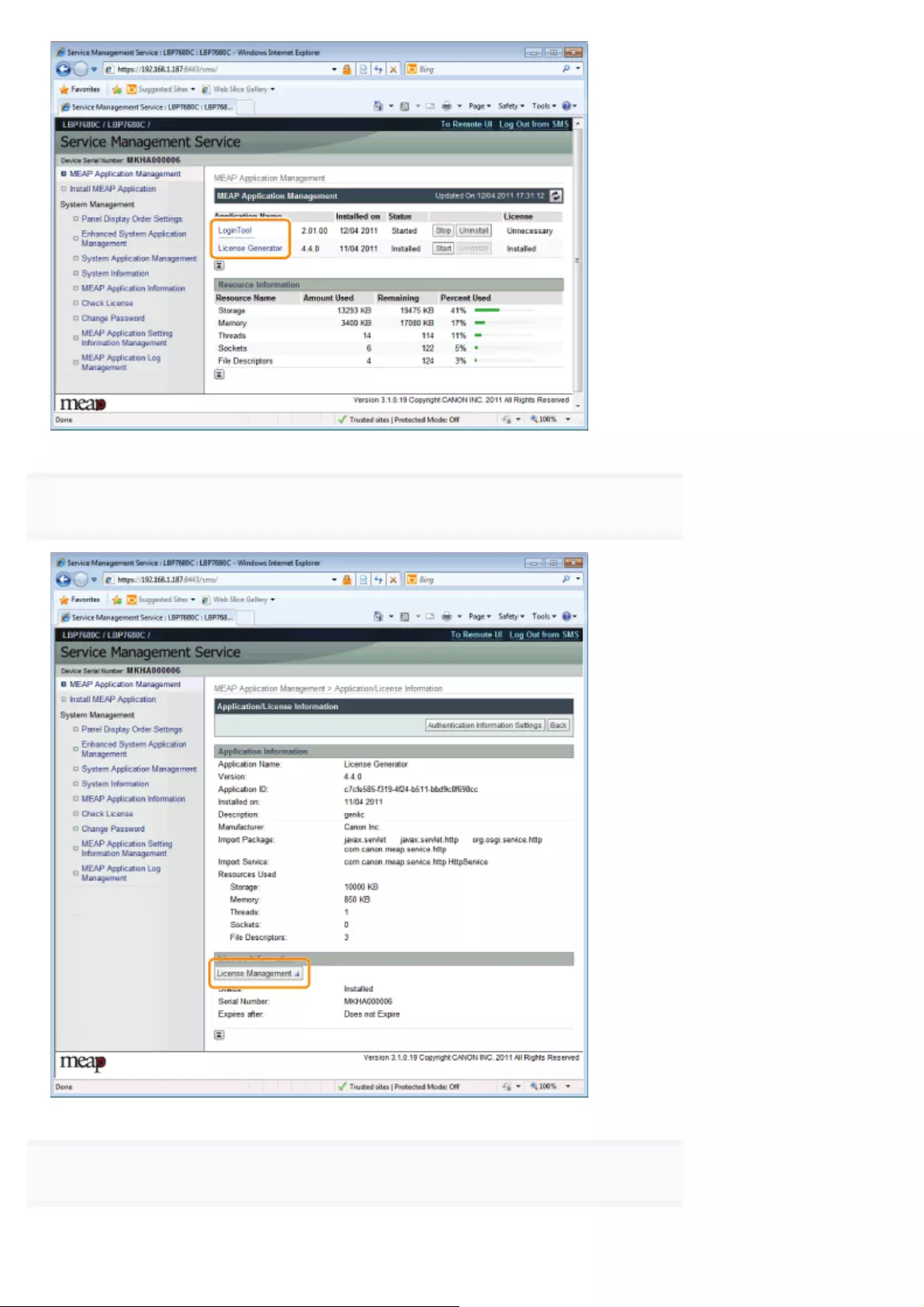
4
Click [License Management].
5
Specify the license file.
(1) Click [Browse], and select the license file to be added.
㻣㻥㻡㻌㻛㻌㻥㻥㻤
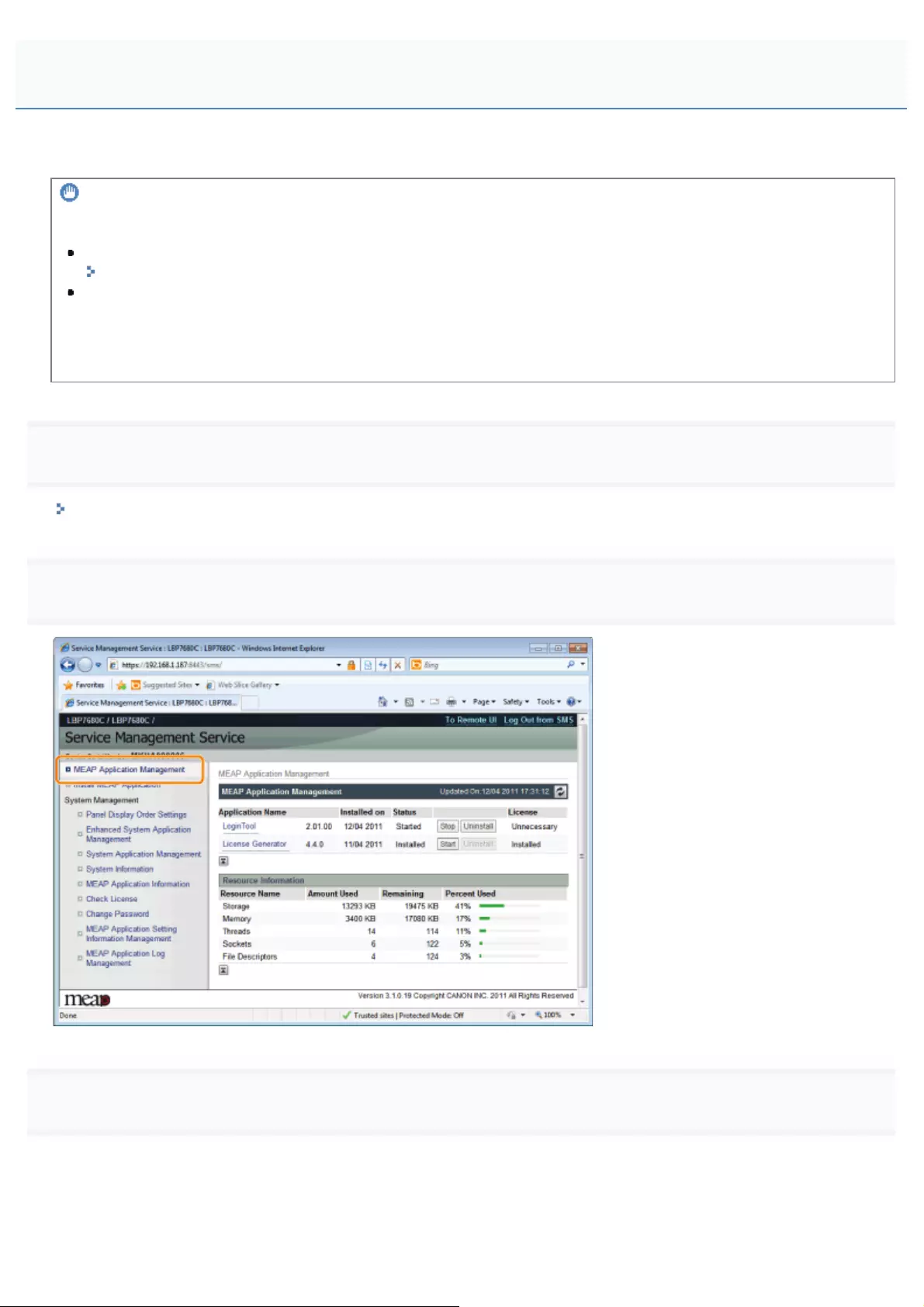
0258-0HY
After you disable a license file, you can download and save it to a computer or delete it.
IMPORTANT
Disabling Licenses
You cannot disable a license file if the application is still running.
"Stopping MEAP Applications"
When a disabled license file is generated, the status of that license file becomes <Not Installed> and the application
becomes unusable.
Reinstalling License Files
You can reinstall disabled license files in the same printer.
1
Start SMS (Service Management Service).
"Launching SMS (Log in)"
2
Click [MEAP Application Management].
3
Click the name of the application for which to disable to license file.
Disabling License Files
㻣㻥㻣㻌㻛㻌㻥㻥㻤
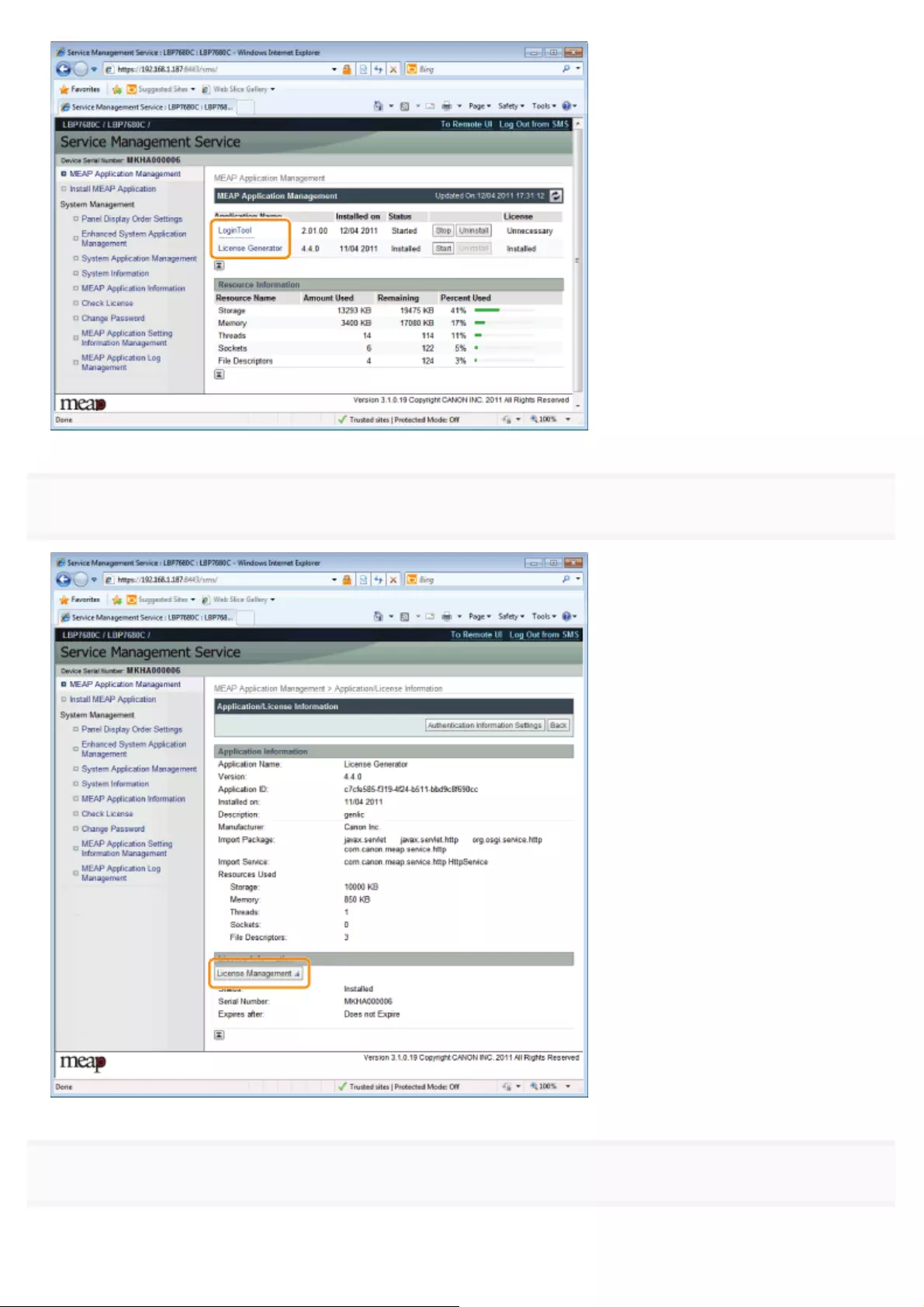
4
Click [License Management].
5
Click [Disable].
㻣㻥㻤㻌㻛㻌㻥㻥㻤
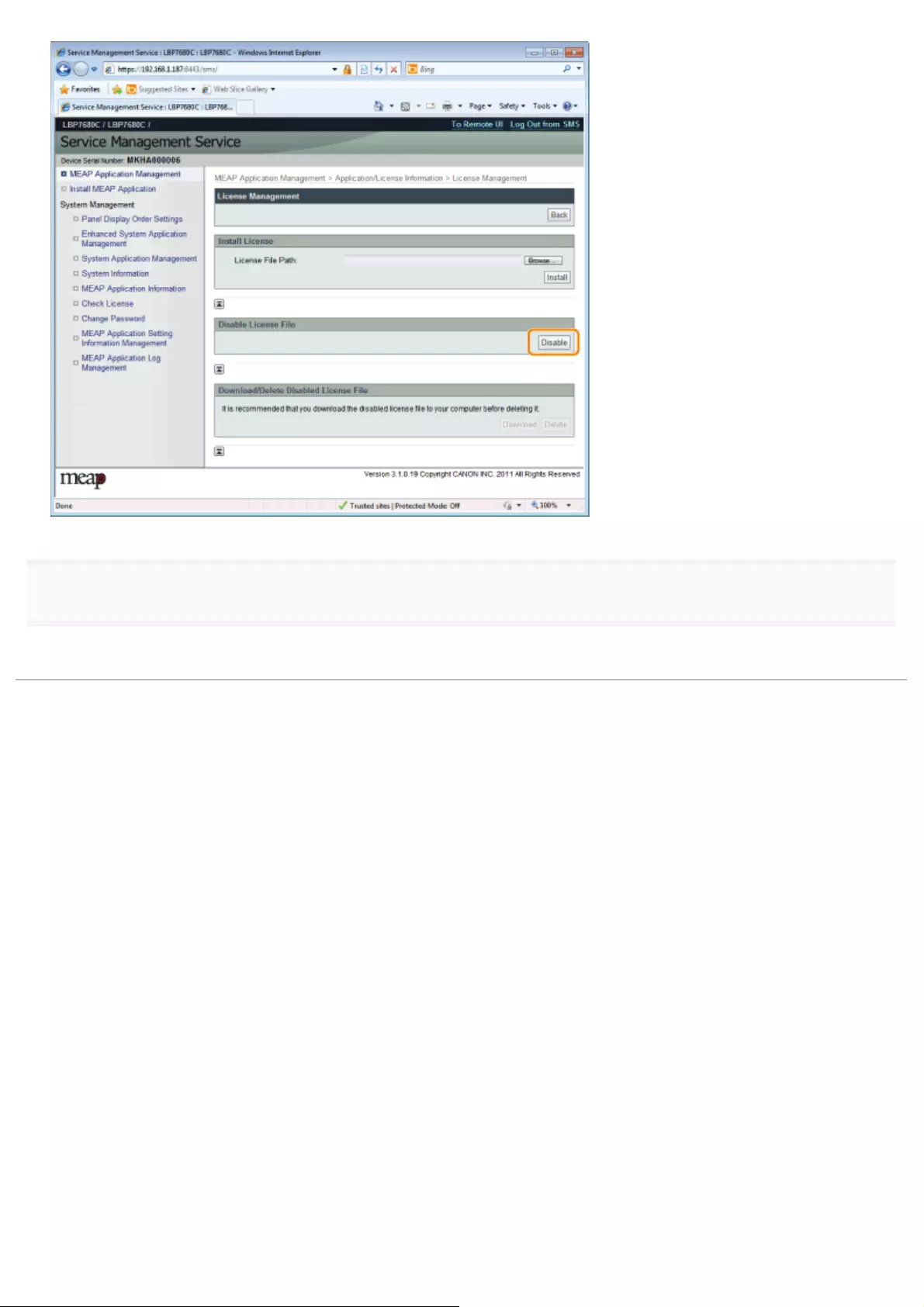
6
Click [Yes].
ĺThe license file is disabled.
㻣㻥㻥㻌㻛㻌㻥㻥㻤
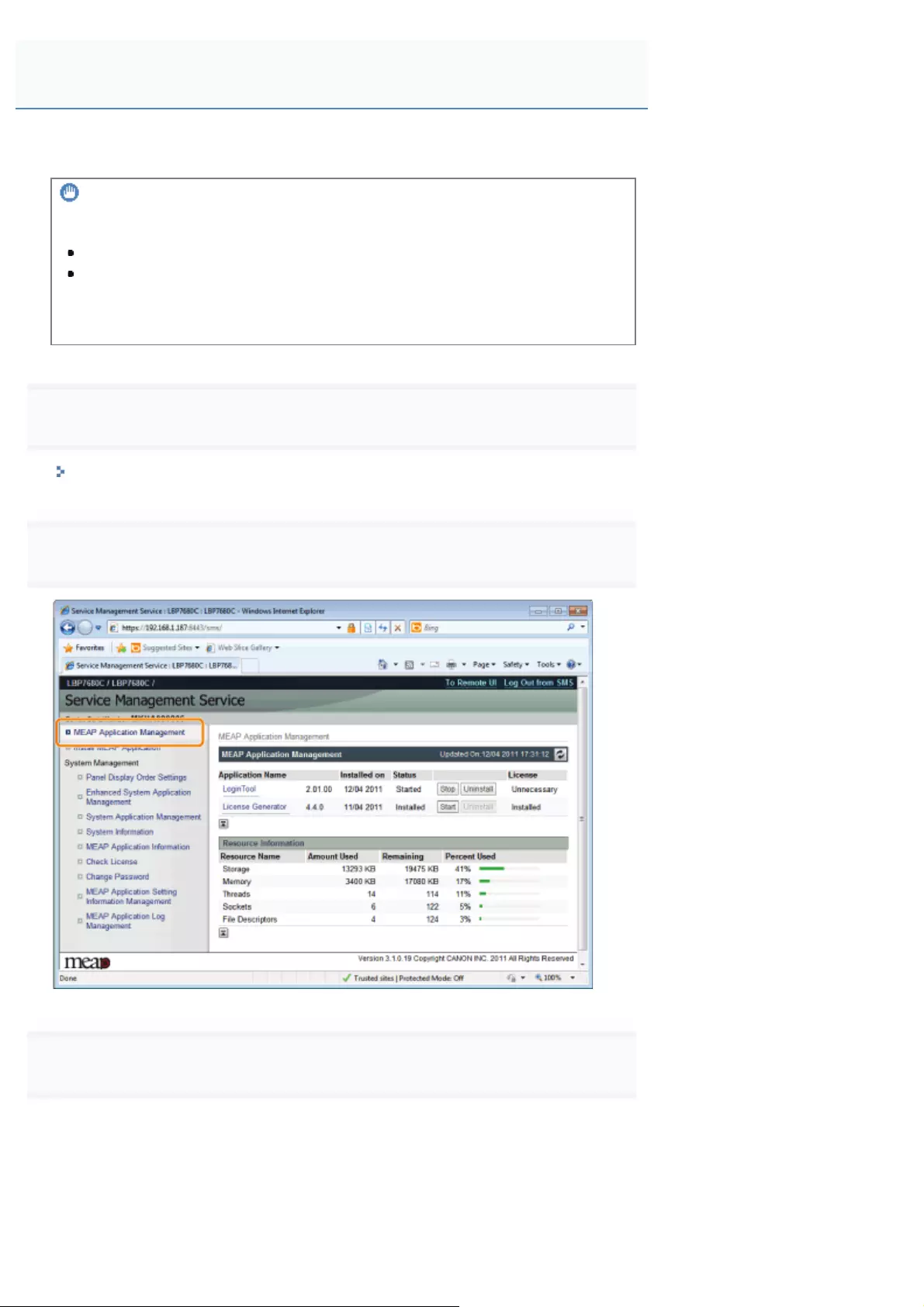
0258-0J0
Download and back up disabled license files to the computer.
IMPORTANT
Downloading Licenses
You can only download disabled license files.
Some license files need to be downloaded after they have been disabled.
Reinstalling License Files
You can reinstall downloaded and disabled license files in the same printer.
1
Start SMS (Service Management Service).
"Launching SMS (Log in)"
2
Click [MEAP Application Management].
3
Click the name of the application for which to download to license file.
Downloading Disabled License Files
㻤㻜㻜㻌㻛㻌㻥㻥㻤
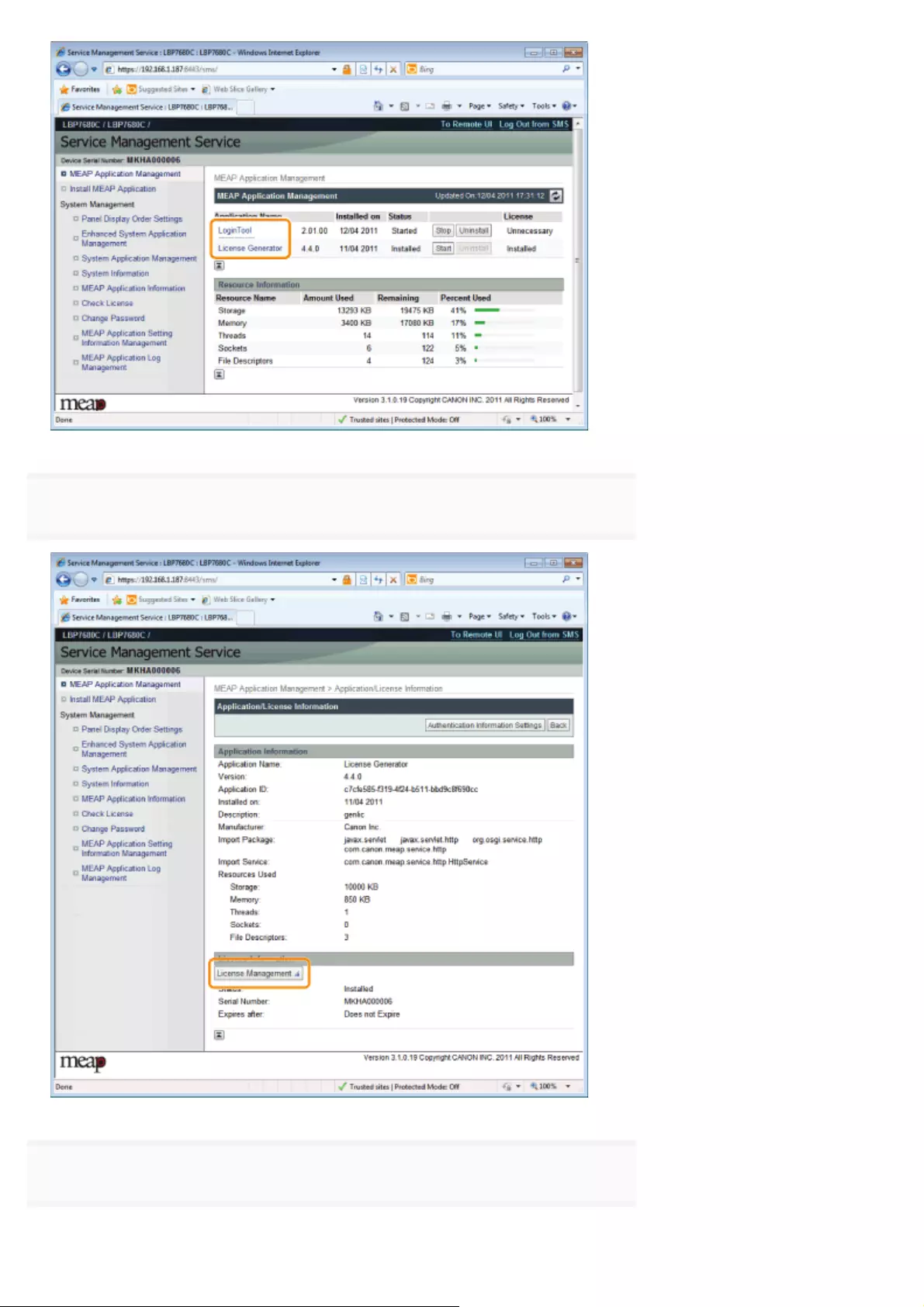
4
Click [License Management].
5
Click [Download].
㻤㻜㻝㻌㻛㻌㻥㻥㻤
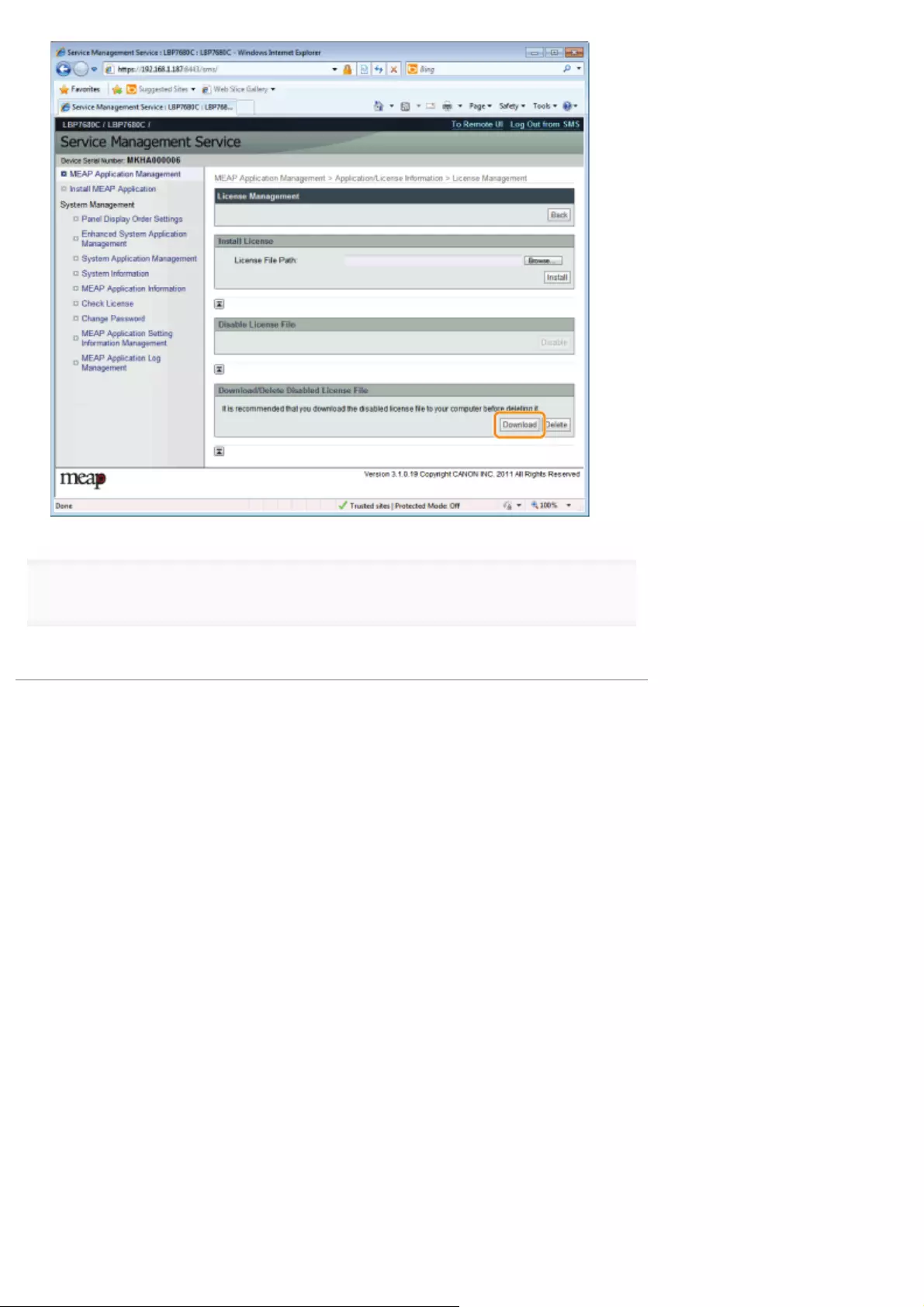
6
Follow the on-screen instructions and specify a file storage directory.
ĺThe license file is saved.
㻤㻜㻞㻌㻛㻌㻥㻥㻤
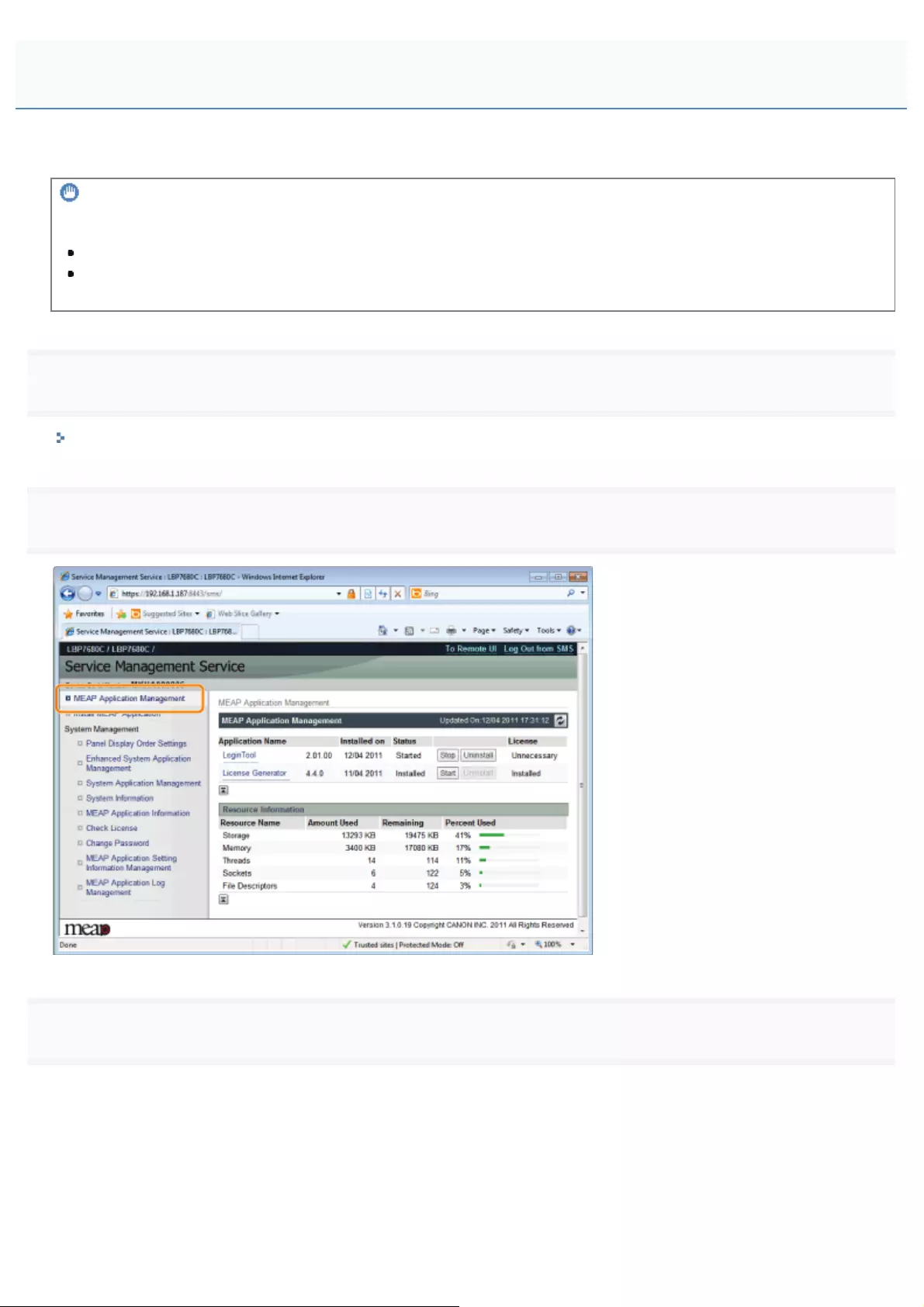
0258-0J1
To uninstall an application, you must first delete the license file.
IMPORTANT
Deleting Licenses
You can only delete disabled license files.
Once you have deleted the disabled license file, you cannot download it again. We recommend downloading and
backing it up before deleting it.
1
Start SMS (Service Management Service).
"Launching SMS (Log in)"
2
Click [MEAP Application Management].
3
Click the name of the application to which to delete a license file.
Deleting Disabled License Files
㻤㻜㻟㻌㻛㻌㻥㻥㻤
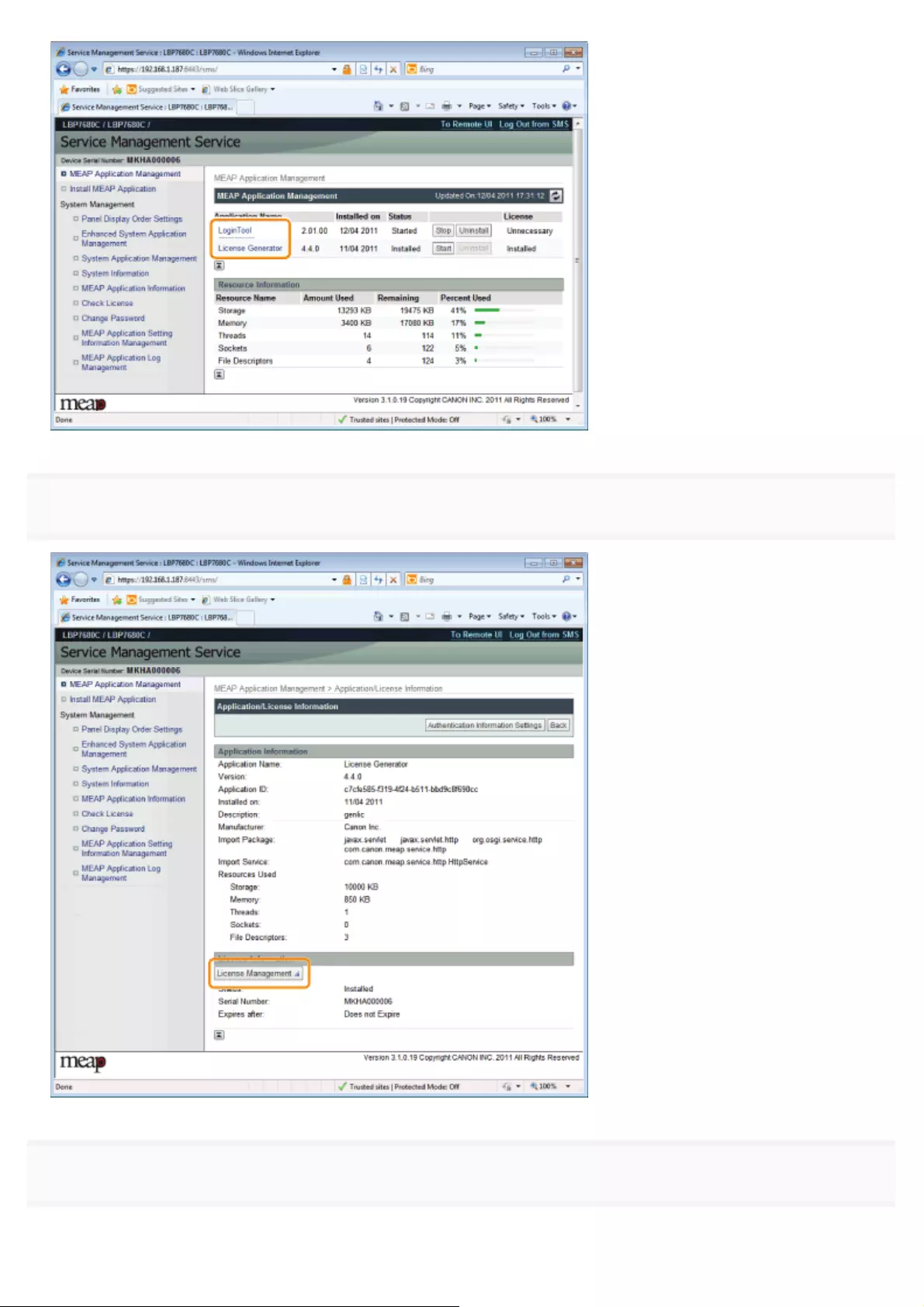
4
Click [License Management].
5
Click [Delete].
㻤㻜㻠㻌㻛㻌㻥㻥㻤
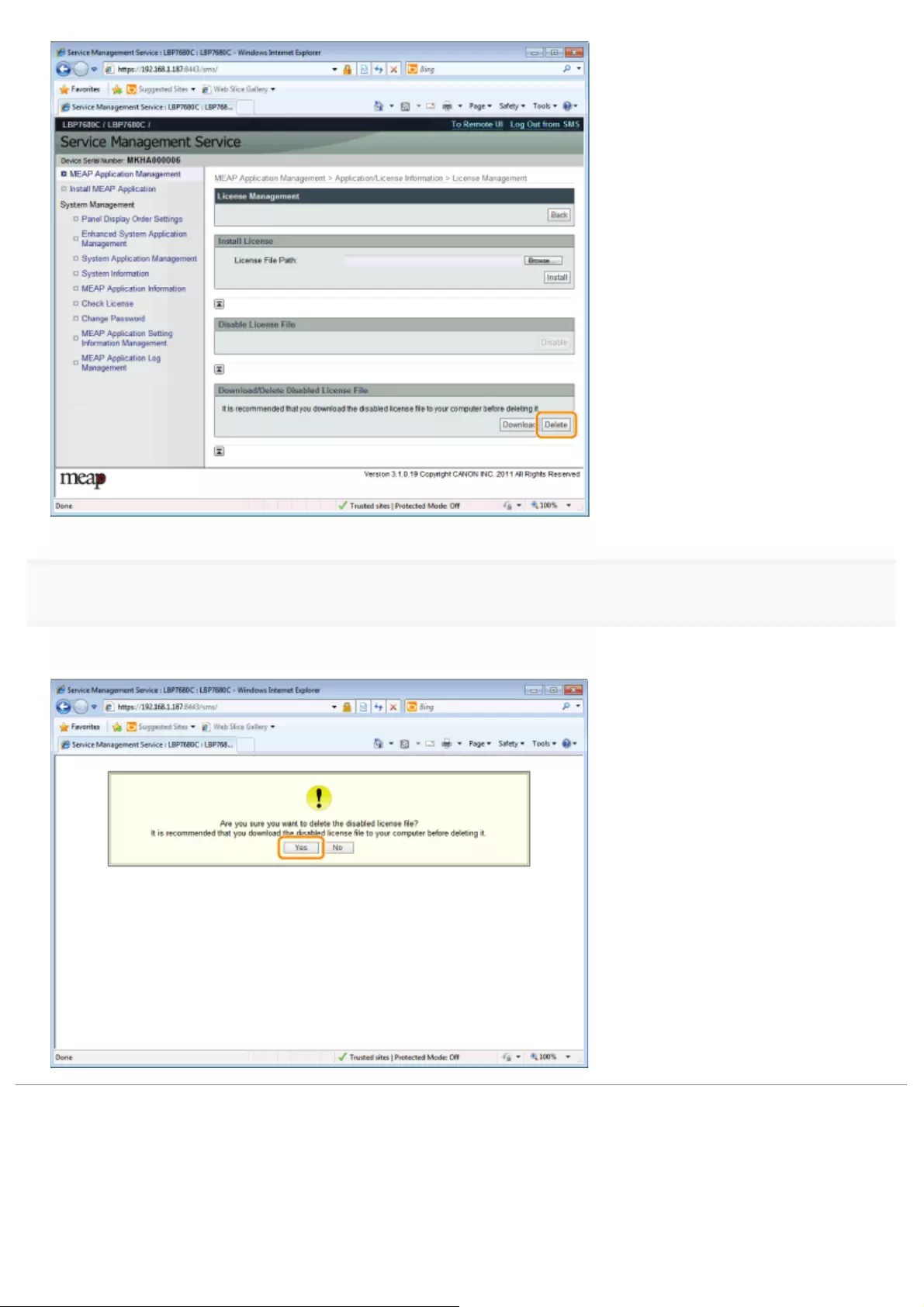
6
Click [Yes].
ĺThe license file is deleted.
㻤㻜㻡㻌㻛㻌㻥㻥㻤
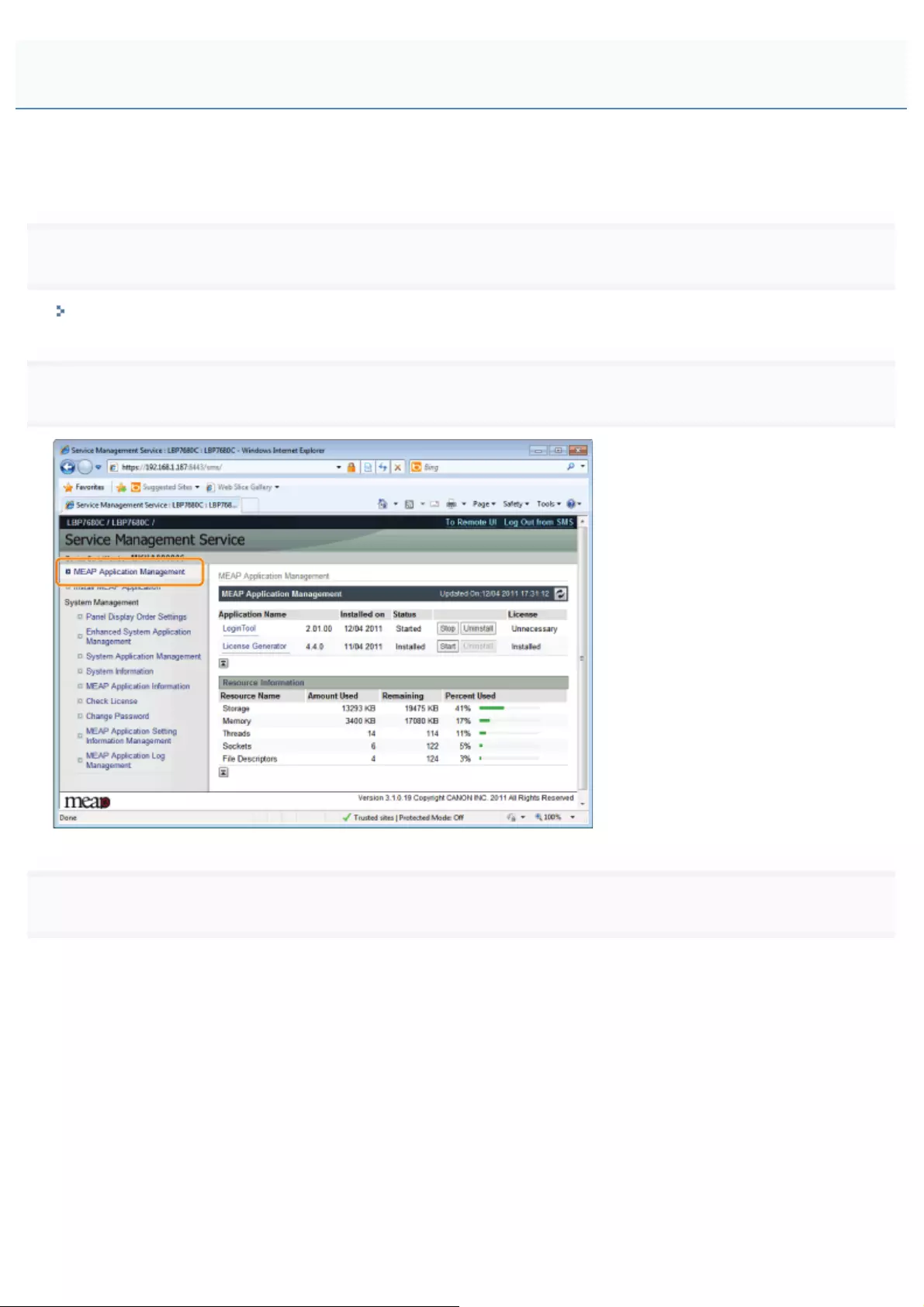
0258-0J2
When processing jobs from applications that do not require operation from the printer, you must first set the authentication
information.
1
Start SMS (Service Management Service).
"Launching SMS (Log in)"
2
Click [MEAP Application Management].
3
Click the name of the application for which to set authentication information.
Setting Authentication Information for MEAP Applications
㻤㻜㻢㻌㻛㻌㻥㻥㻤
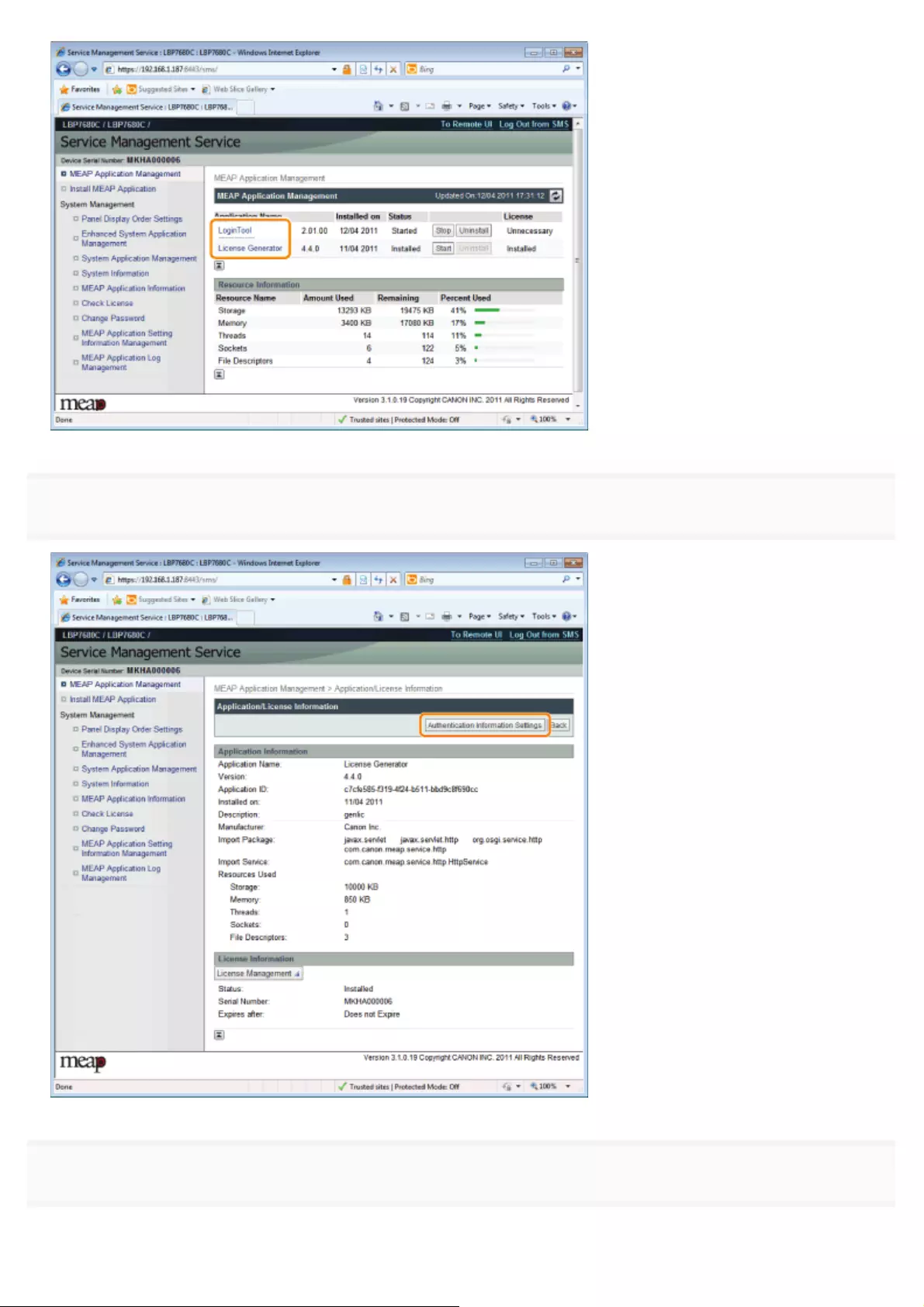
4
Click [Authentication Information Settings].
5
Enter the authentication information.
If you use department ID management
㻤㻜㻣㻌㻛㻌㻥㻥㻤
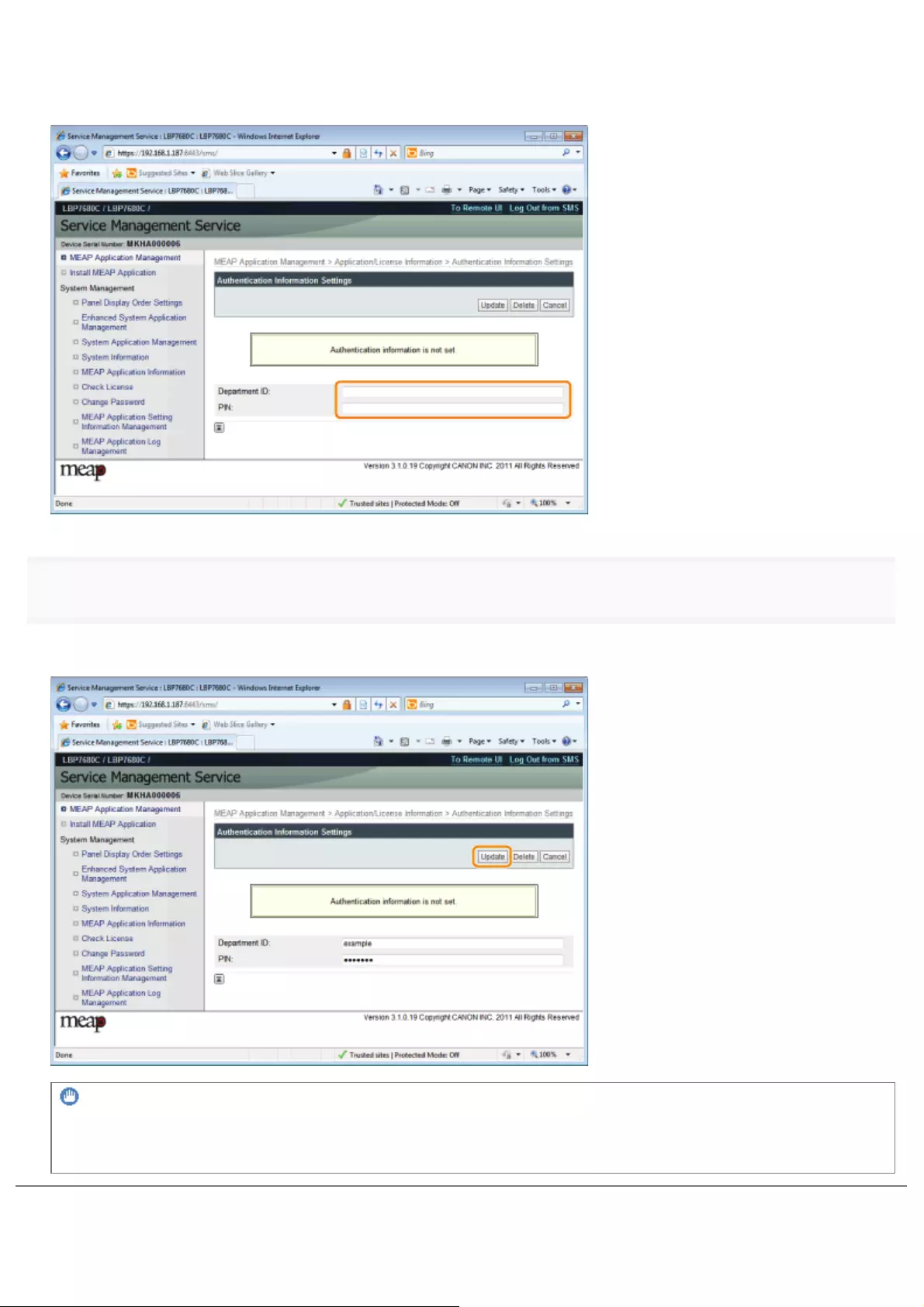
Enter the department ID and password in the fields marked [Department ID] and [PIN].
If you do not use department ID management
Enter an arbitrary ID and password in the fields marked [Department ID] and [PIN].
6
Click [Update].
ĺAuthentication information is set.
IMPORTANT
When cancelling authentication information
Click [Delete].
㻤㻜㻤㻌㻛㻌㻥㻥㻤
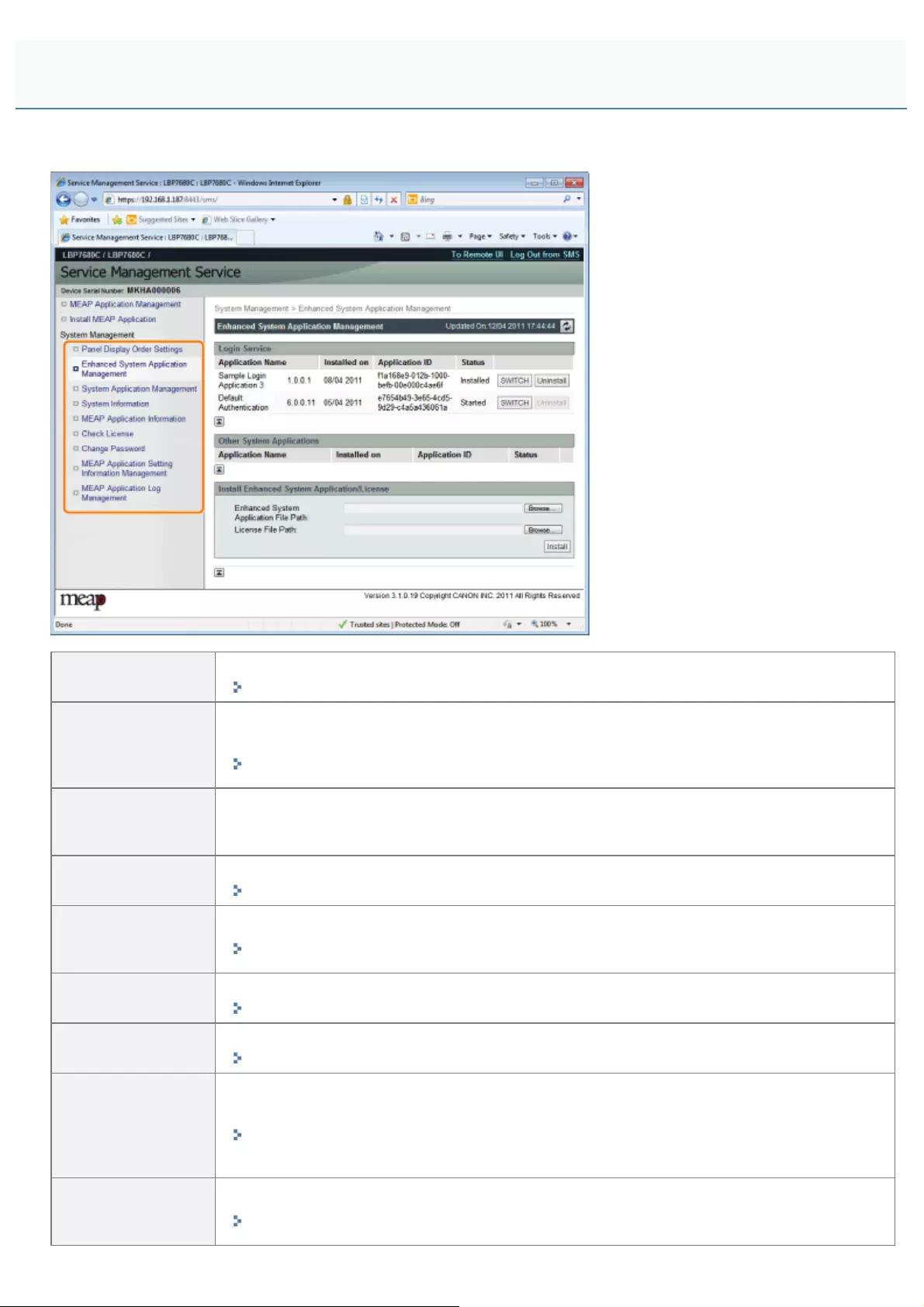
0258-0J3
The [System Management] menu contains the following items.
[Panel Display
Order Settings]
It sets the order MEAP applets are displayed on the operation panel.
"Changing the MEAP Applet Display Order"
[Enhanced
System
Application
Management]
It displays enhanced system application status and performs settings. You can also set log in
service settings.
"Setting Enhanced System Applications"
[System
Application
Management]
It displays system application status and performs start/stop operations.
[System
Information]
It displays versions and system application information, etc.
"Checking System Information"
[MEAP
Application
Information]
It displays the details about MEAP applications.
"Checking Application Information"
[Check License] It checks the content of the license file before it is installed.
"Checking License Files"
[Change
Password]
It changes the SMS log in password.
"Changing the SMS Password"
[MEAP
Application
Setting
Information
Management]
It deletes the details about MEAP applications.
"Deleting the MEAP Application Setting Information"
[MEAP
Application Log
Management]
It downloads and deletes log data obtained by MEAP applications.
"Managing MEAP Application Log Data"
System Settings
㻤㻜㻥㻌㻛㻌㻥㻥㻤

0258-0JR
The applet display order changes when you press [ ] ( : Application) on the control panel.
1
Start SMS (Service Management Service).
"Launching SMS (Log in)"
2
Click [Panel Display Order Settings].
3
Select the check boxes for the applets whose display order you wish to change.
Changing the MEAP Applet Display Order
㻤㻝㻜㻌㻛㻌㻥㻥㻤

4
The display order changes.
(1) Move the applets up and down by clicking [Up] and [Down].
(2) Click [Update].
㻤㻝㻝㻌㻛㻌㻥㻥㻤
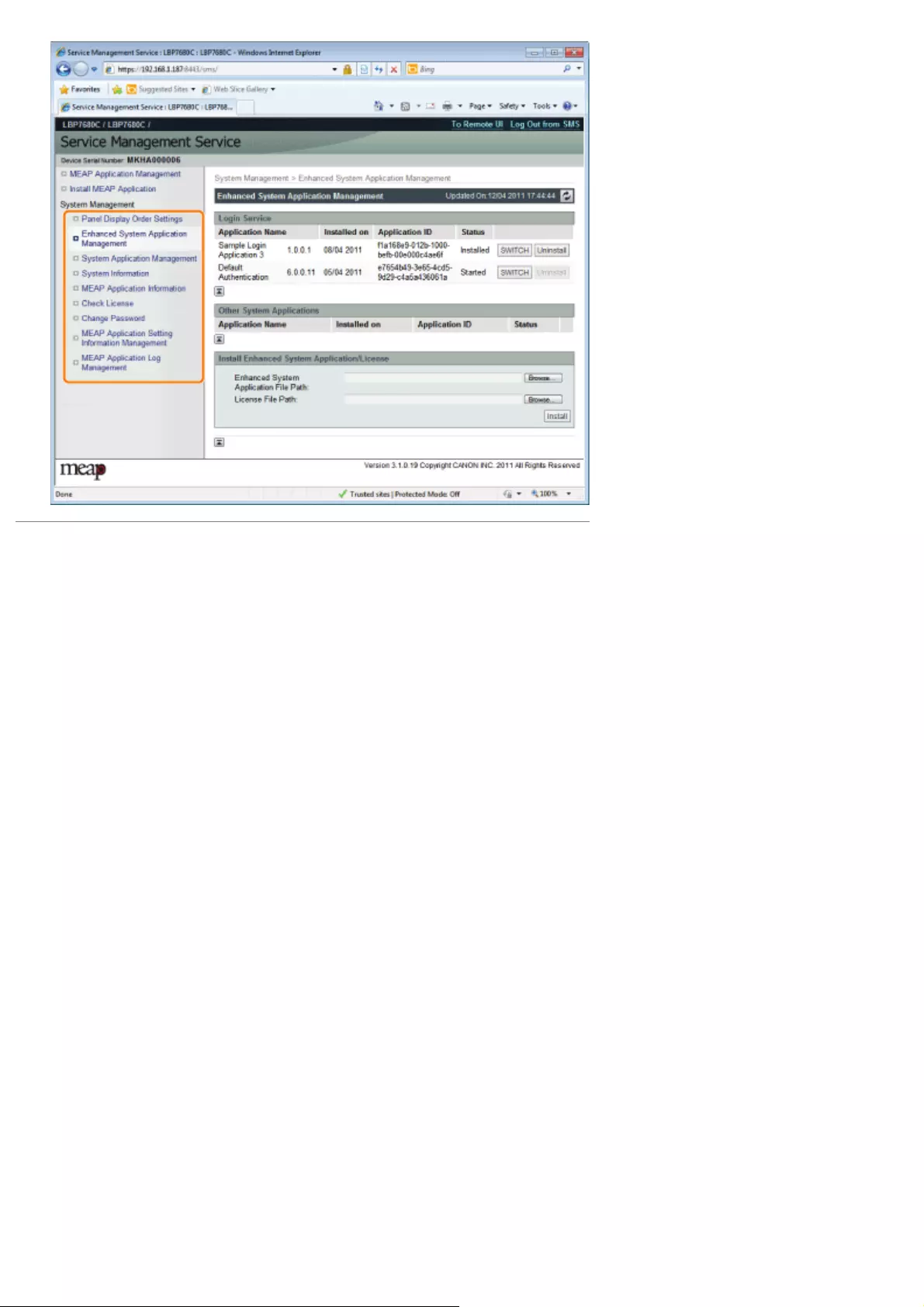
㻤㻝㻟㻌㻛㻌㻥㻥㻤

0258-0J7
They perform the operations of the enhanced system applications that enhance the system applications (the basic
applications that make up the MEAP system).
Starting/Stopping Enhanced System Applications
Starting Enhanced System Applications
Stopping Enhanced System Applications
Installing Enhanced System Applications
Uninstalling Enhanced System Applications
Setting Enhanced System Applications
㻤㻝㻠㻌㻛㻌㻥㻥㻤
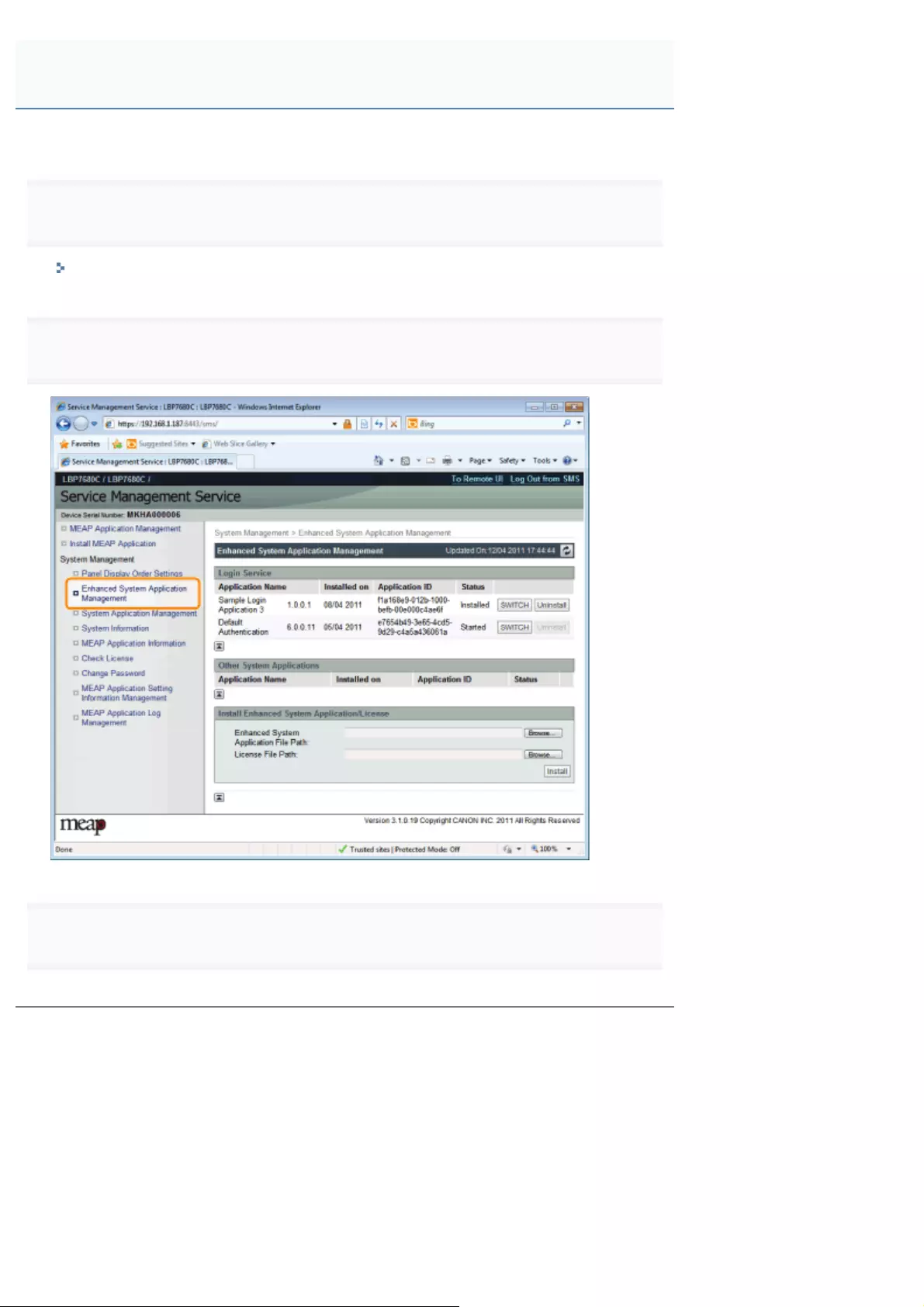
0258-0J9
1
Start SMS (Service Management Service).
"Launching SMS (Log in)"
2
Click [Enhanced System Application Management].
3
Click [Start] for Other System Applications, and then start the application.
When the [License Agreement] appears, confirm the information, and click [I Accept].
Starting Enhanced System Applications
㻤㻝㻢㻌㻛㻌㻥㻥㻤
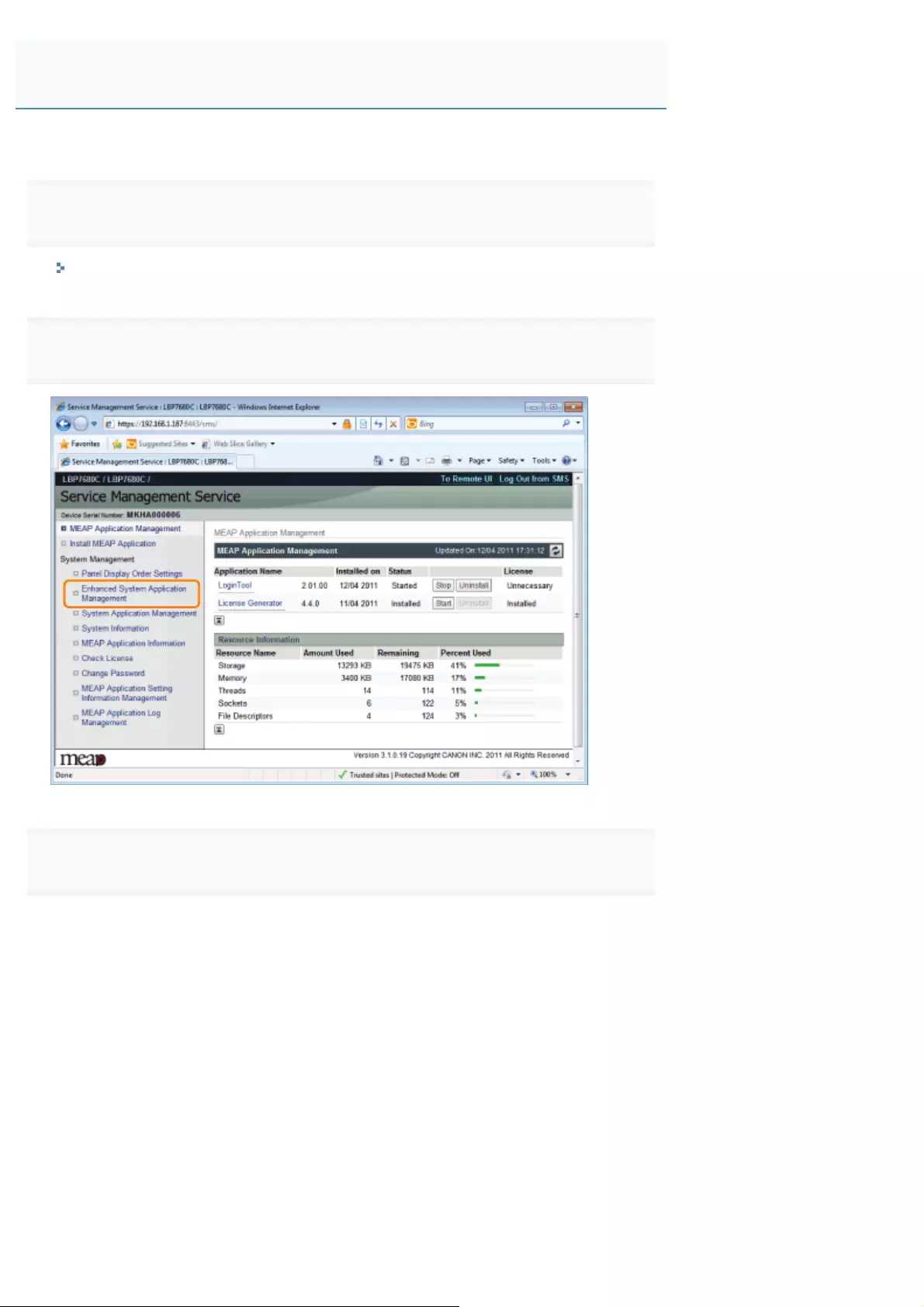
0258-0JC
1
Start SMS (Service Management Service).
"Launching SMS (Log in)"
2
Click [Enhanced System Application Management].
3
Set [Enhanced System Application File Path] and [License File Path].
Either select the file by clicking [Browse...], or enter the location where the file is stored.
Installing Enhanced System Applications
㻤㻝㻤㻌㻛㻌㻥㻥㻤
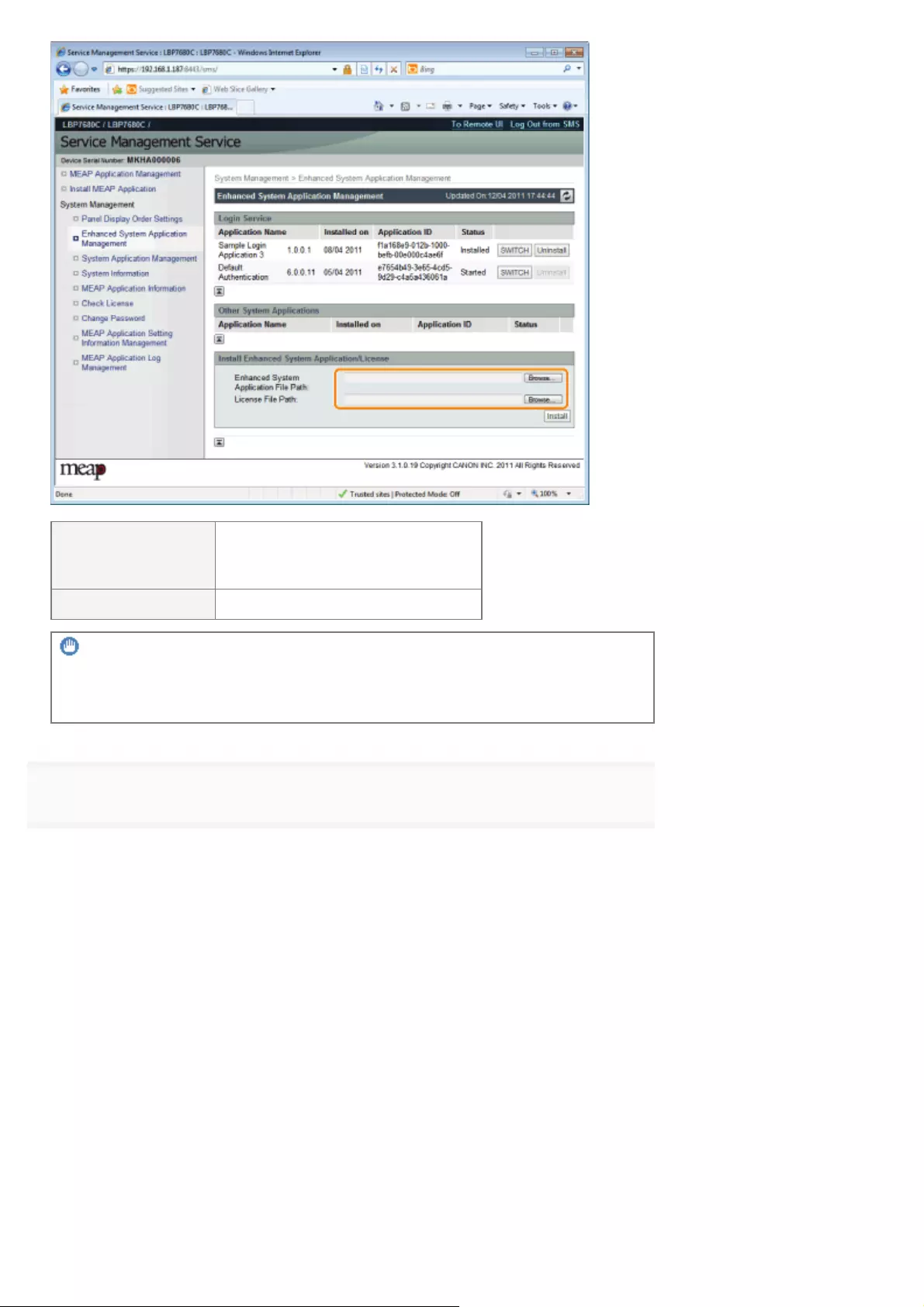
[Enhanced System
Application File
Path]
Specify a file with a "jar" extension.
[License File Path] Specify a file with a "lic" extension.
IMPORTANT
When specifying a file
Specify both the application file and the license file.
4
Click [Install].
㻤㻝㻥㻌㻛㻌㻥㻥㻤
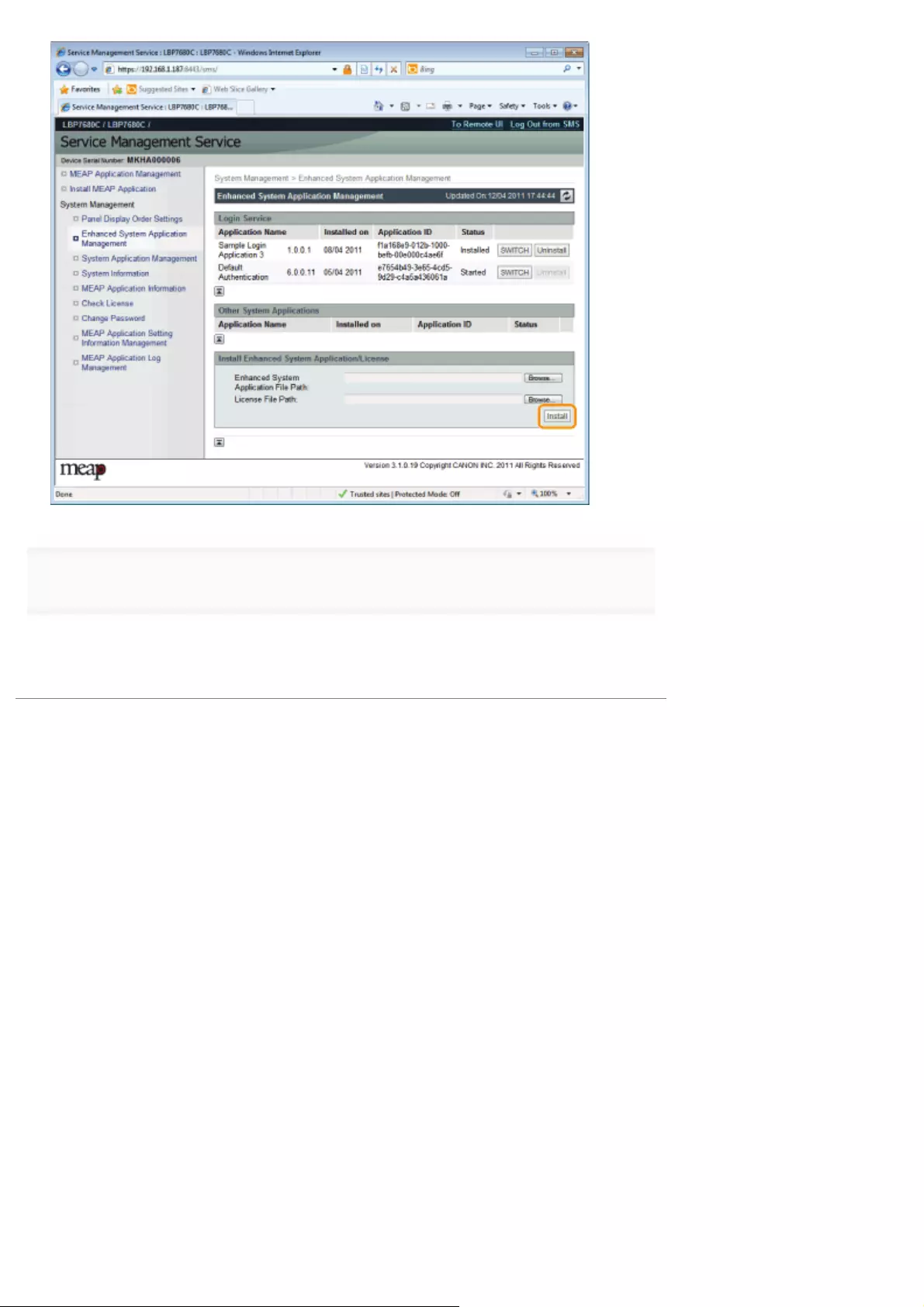
5
Confirm the information on the install confirmation page, and click [Yes].
When the [License Agreement] appears, confirm the information, and click [I Accept].
ĺThe installation begins.
㻤㻞㻜㻌㻛㻌㻥㻥㻤
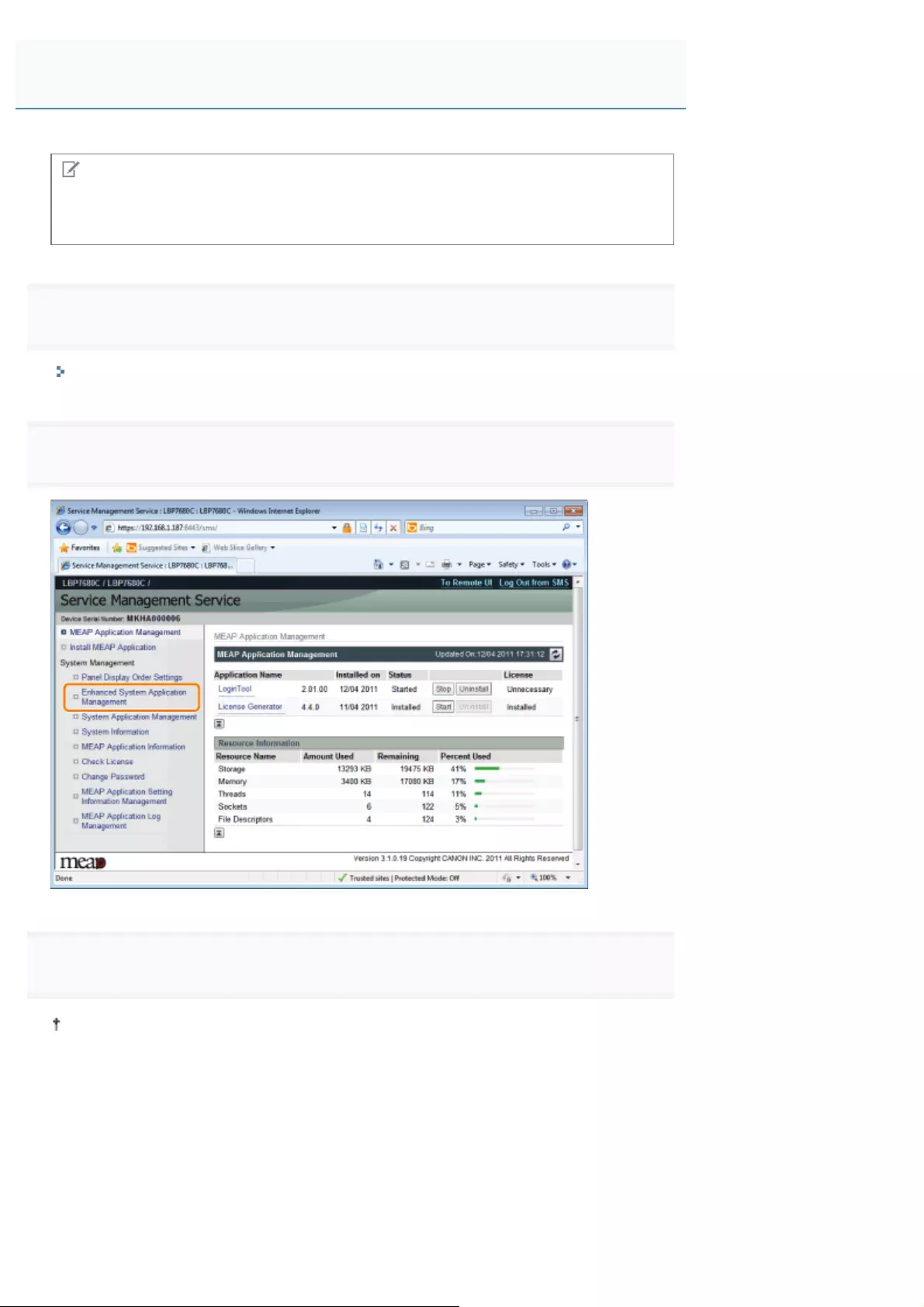
0258-0JE
NOTE
Deleting License Files
There is no need to delete license files before uninstalling enhanced system applications.
1
Start SMS (Service Management Service).
"Launching SMS (Log in)"
2
Click [Enhanced System Application Management].
3
Click [Uninstall] for the application to uninstall.
Applications with [Uninstall] grayed out cannot be deleted.
Uninstalling Enhanced System Applications
㻤㻞㻝㻌㻛㻌㻥㻥㻤
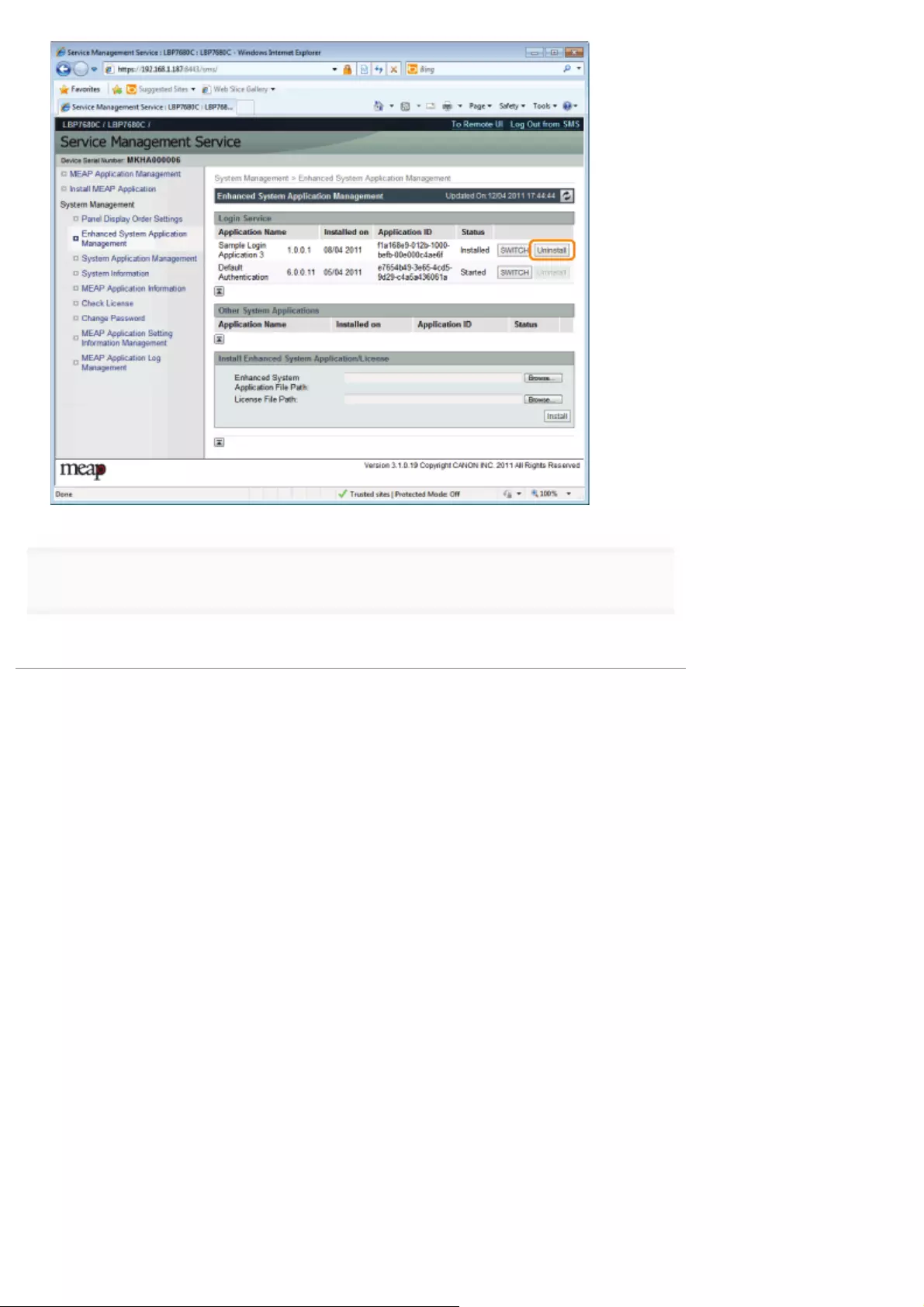
4
Click [Yes].
ĺThe uninstall begins.
㻤㻞㻞㻌㻛㻌㻥㻥㻤
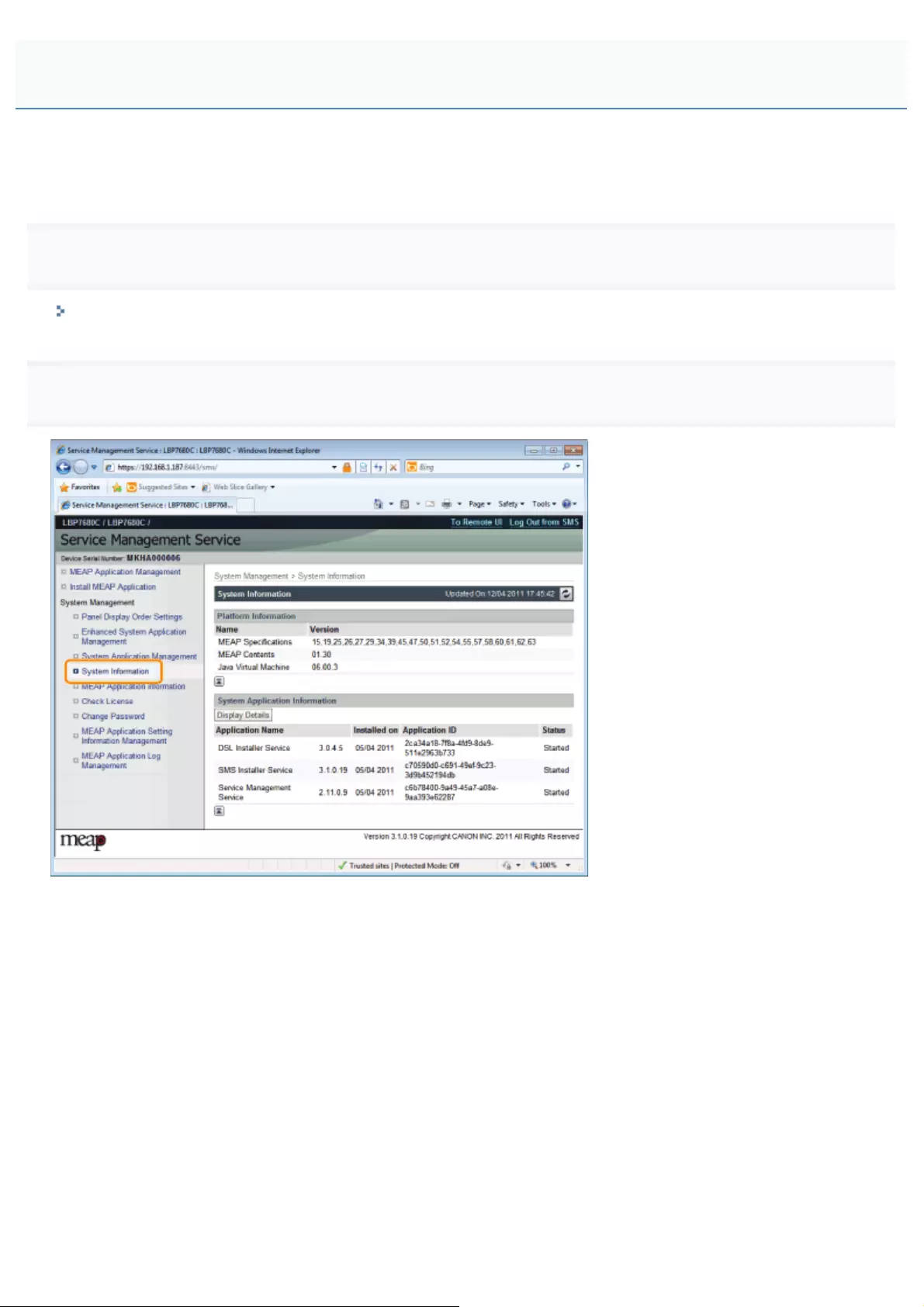
0258-0JH
You can check the version information of platforms such as Java virtual machine and version information, date of
installation and status of system applications.
1
Start SMS (Service Management Service).
"Launching SMS (Log in)"
2
Click [System Information].
Click [Display Details] to check detailed information.
Checking System Information
㻤㻞㻠㻌㻛㻌㻥㻥㻤
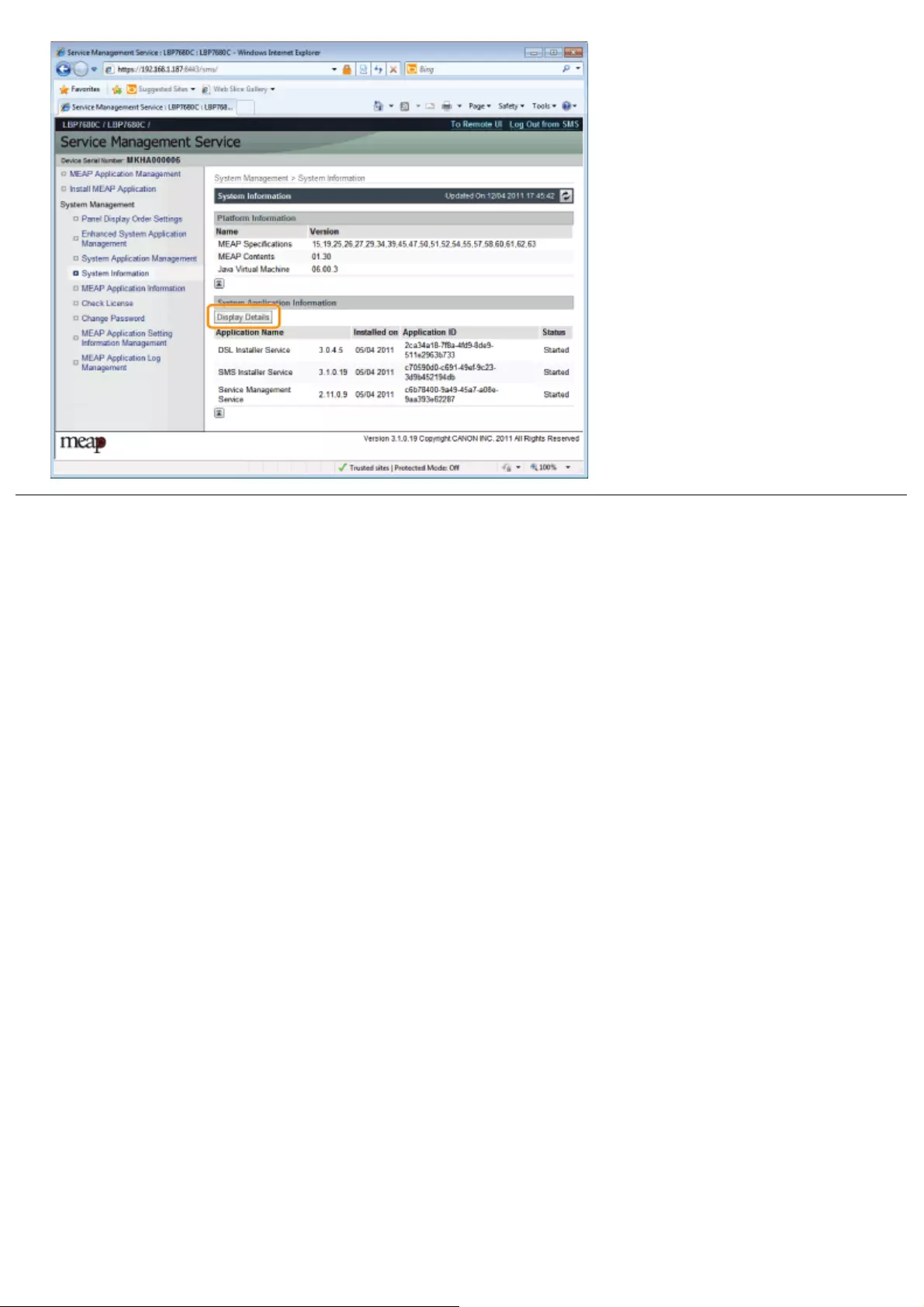
㻤㻞㻡㻌㻛㻌㻥㻥㻤
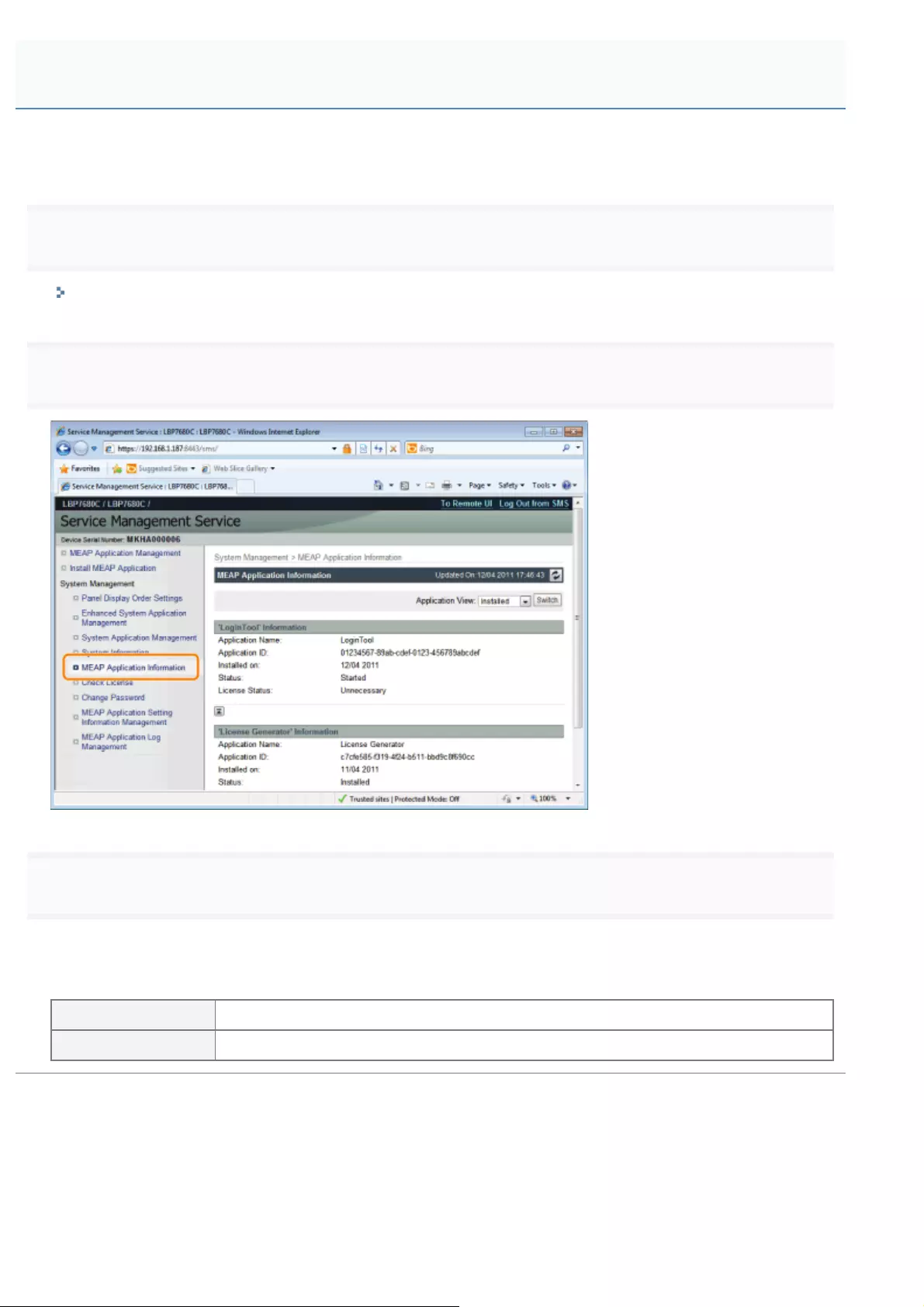
0258-0JJ
You can check the information about installed or uninstalled applications (except for system applications).
1
Start SMS (Service Management Service).
"Launching SMS (Log in)"
2
Click [MEAP Application Information].
3
Information about applications is displayed.
(1) Select [Installed] or [Uninstalled].
(2) Click [Switch].
[Installed] Information about installed applications (except for system applications) is displayed.
[Uninstalled] Information about uninstalled applications (except for system applications) is displayed.
Checking Application Information
㻤㻞㻢㻌㻛㻌㻥㻥㻤
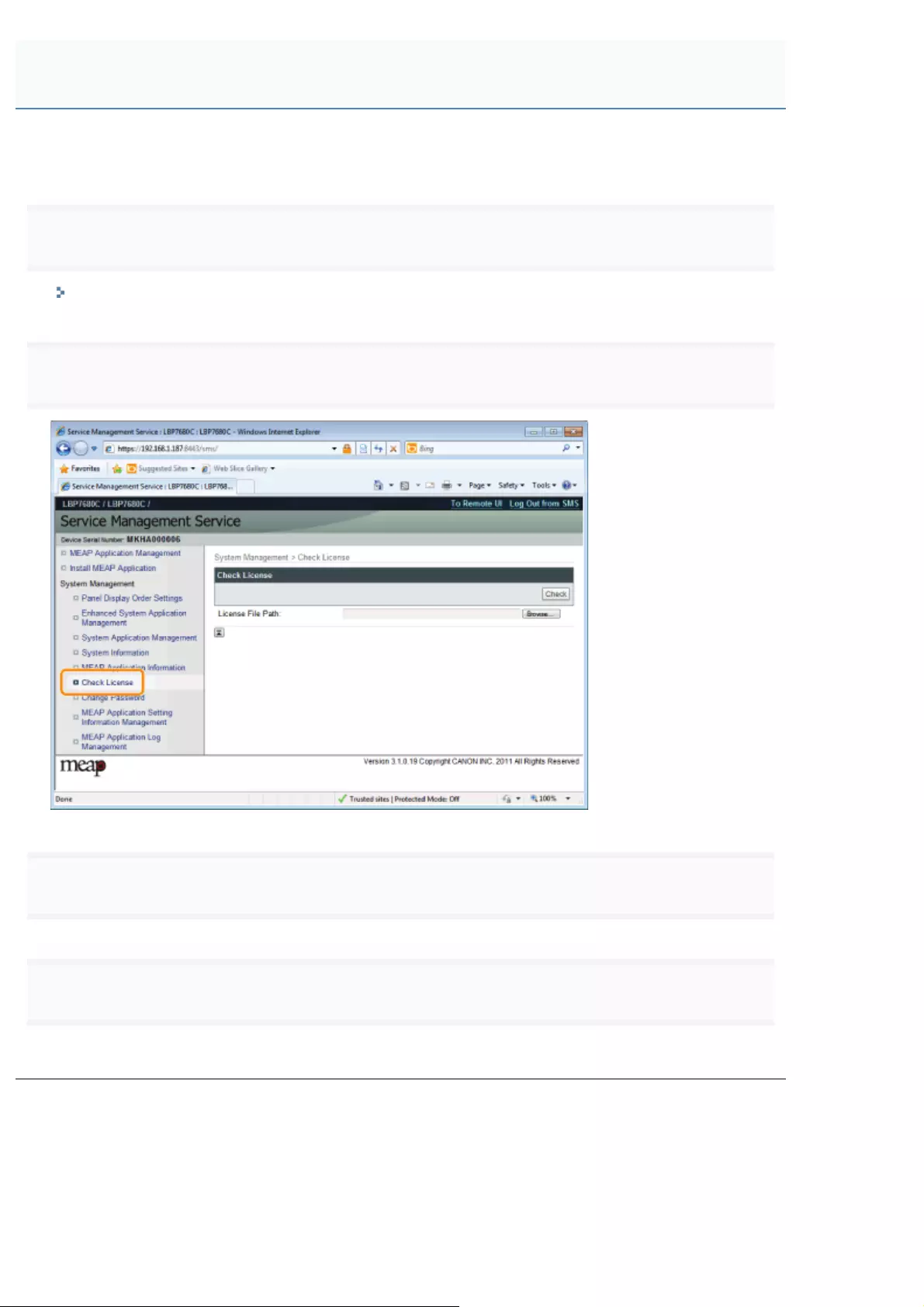
0258-0JK
You can check the content of the license file before it is installed.
1
Start SMS (Service Management Service).
"Launching SMS (Log in)"
2
Click [Check License].
3
Either select the file by clicking [Browse], or enter the location where the file is stored.
4
Click [Check].
ĺThe content of the license file is displayed.
Checking License Files
㻤㻞㻣㻌㻛㻌㻥㻥㻤
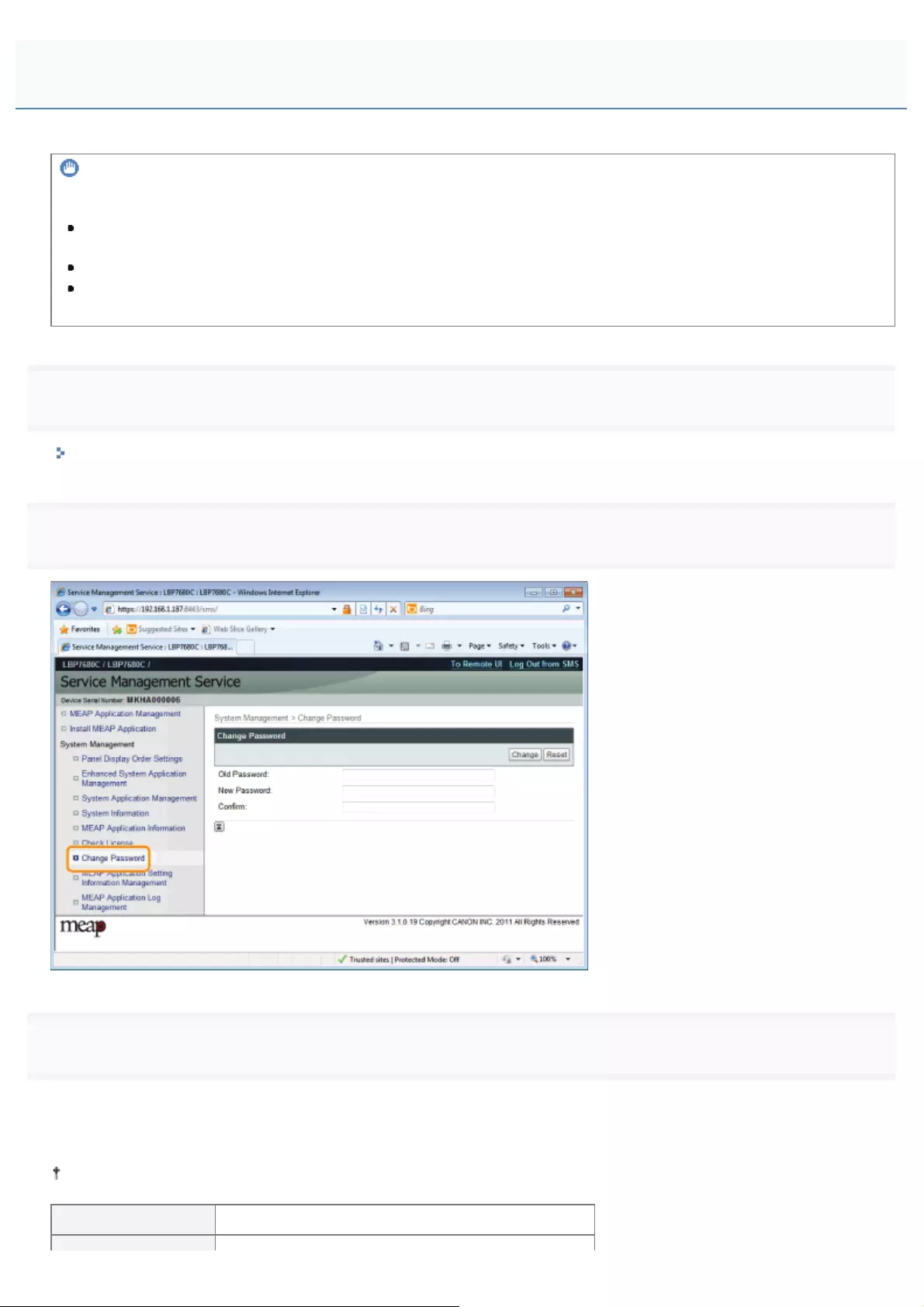
0258-0JL
IMPORTANT
SMS Password
To prevent unauthorized access, We recommend that the administrator change the password before SMS use is
begun.
This password is to prevent unauthorized operation of the printer. Do not let anyone know except the administrator.
Make sure that you do not forget your password. If you forget your password, you will not be able to use SMS. If
this happens, contact your local dealer.
1
Start SMS (Service Management Service).
"Launching SMS (Log in)"
2
Click [Change Password].
3
Set the password.
(1) Set the password.
(2) Click [Change].
Enter between 8 and 32 alphanumeric characters (a to z, A to Z, and 0 to 9) for the password.
[Old Password] Enter the password that is currently used.
Changing the SMS Password
㻤㻞㻤㻌㻛㻌㻥㻥㻤

[New Password] Enter the new password.
[Confirm] Enter the same password again in [New Password].
㻤㻞㻥㻌㻛㻌㻥㻥㻤

0258-0JS
Deletes the application data.
1
Start SMS (Service Management Service).
"Launching SMS (Log in)"
2
Click [MEAP Application Setting Information Management].
3
Select the check box for the application whose setting information you wish to delete, and click
[Delete].
Click [Select All] to select all of the applications.
Deleting the MEAP Application Setting Information
㻤㻟㻜㻌㻛㻌㻥㻥㻤
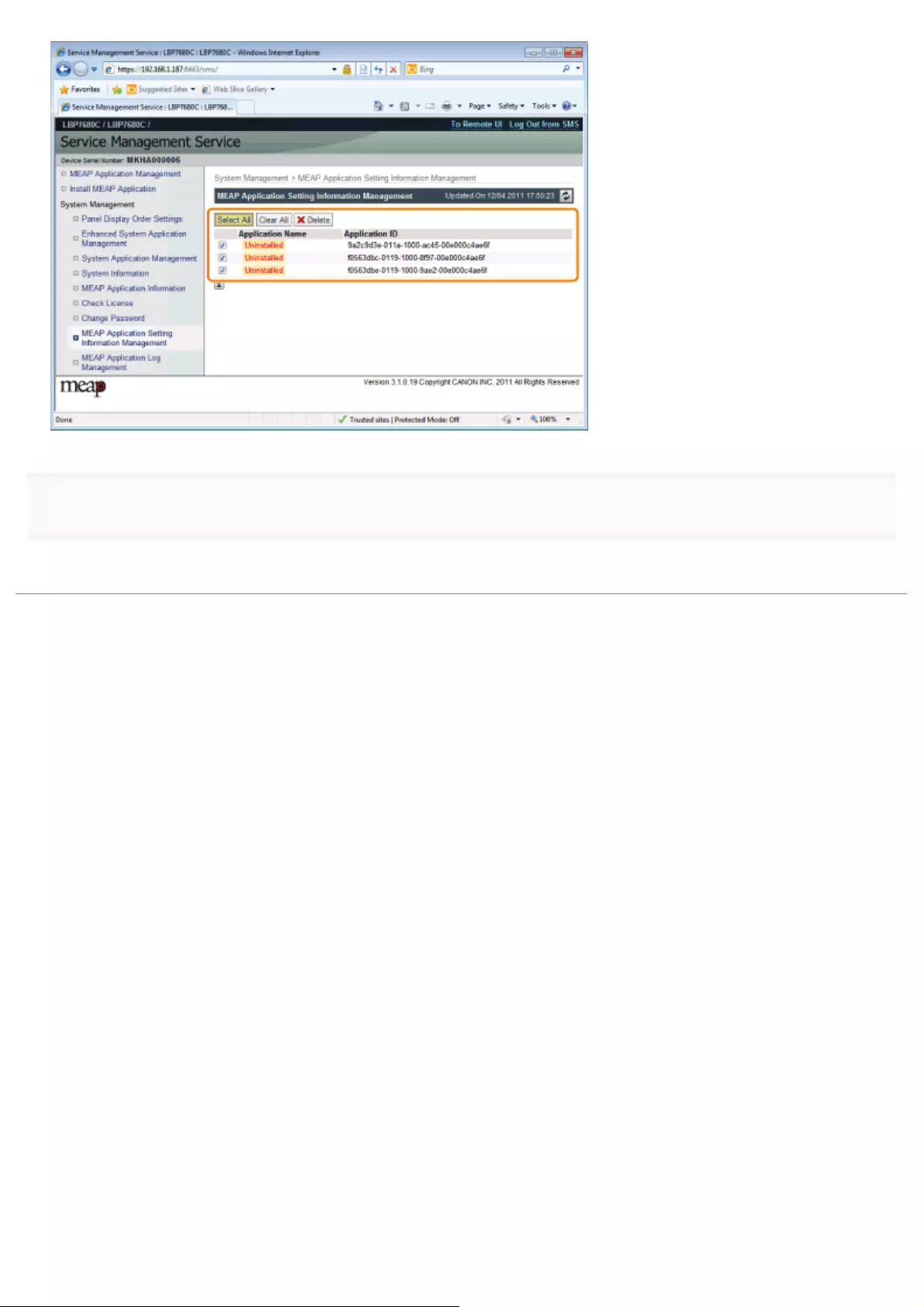
4
Click [Yes].
ĺThe setting information of the application is deleted.
㻤㻟㻝㻌㻛㻌㻥㻥㻤
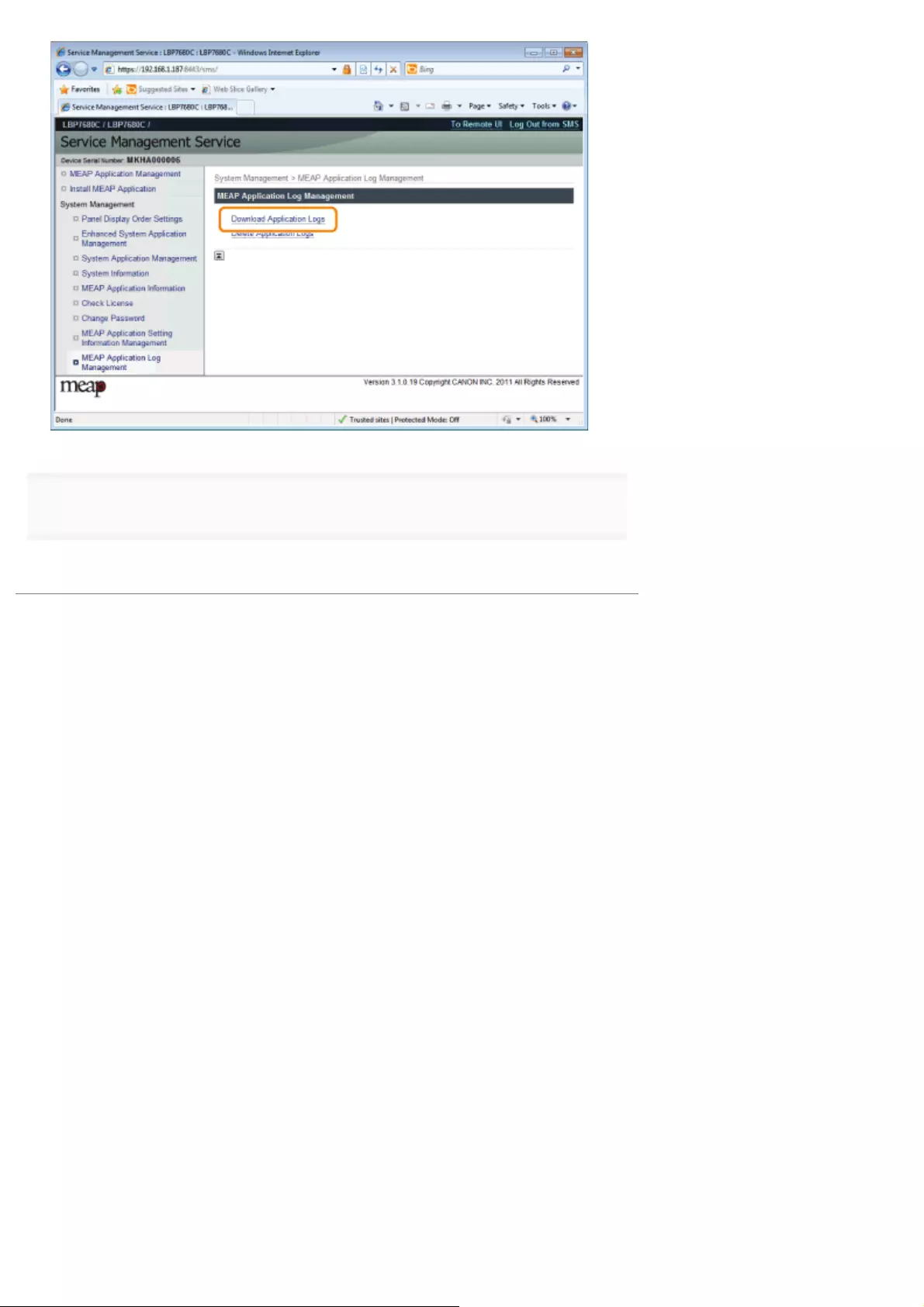
4
Follow the on-screen instructions and specify a file storage directory.
ĺThe log file is saved.
㻤㻟㻠㻌㻛㻌㻥㻥㻤
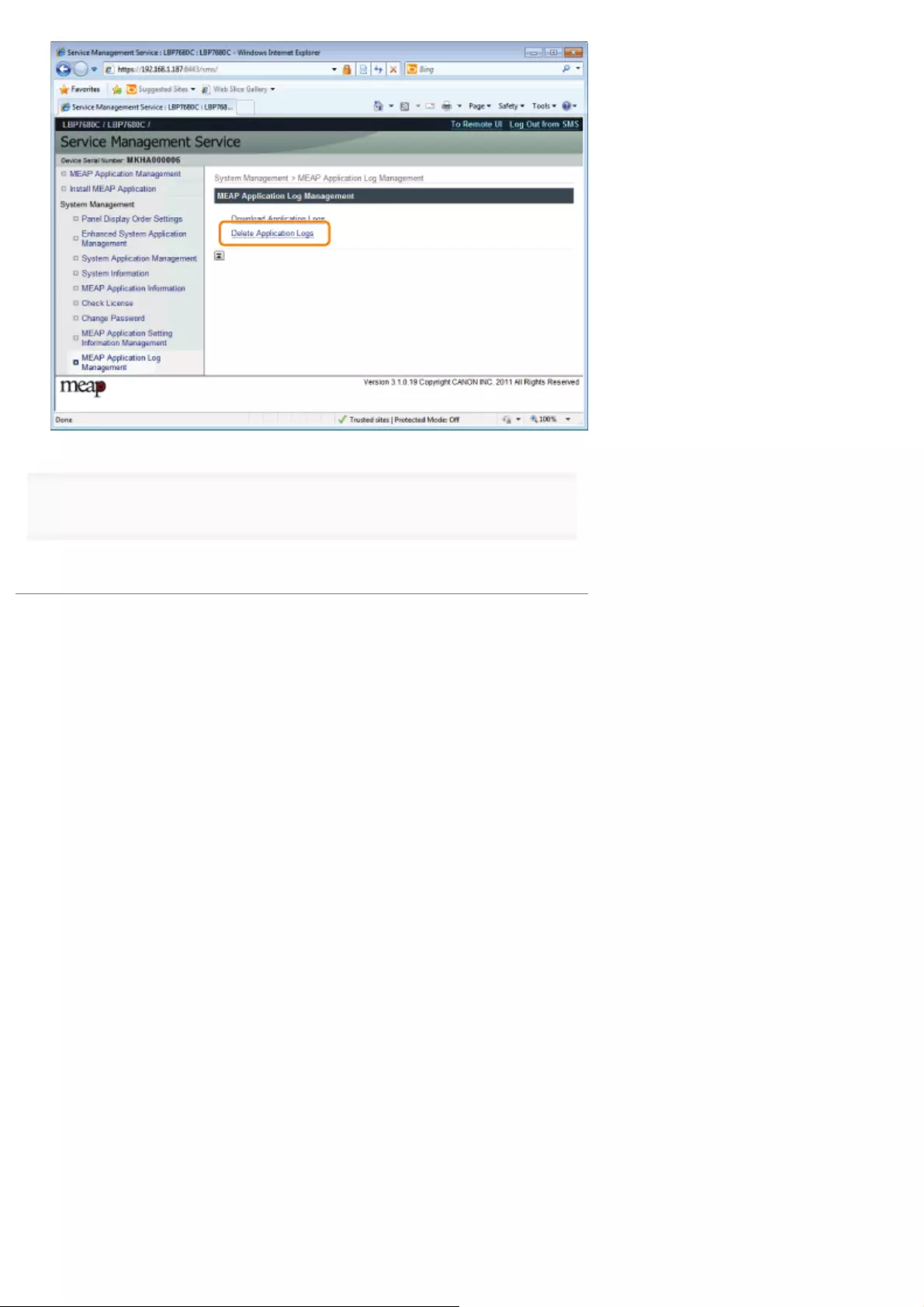
4
Click [Yes].
ĺThe log data is deleted.
㻤㻟㻢㻌㻛㻌㻥㻥㻤

0258-0JY
This section describes how to handle error messages that are displayed when logging in to or operating SMS.
The error messages are divided into separate pages. Click the following links and perform the necessary actions.
Errors Relating to the [Login] Page
Errors Relating to the [MEAP Application Management] Page
Errors Relating to the [Install MEAP Application] Page
Errors Relating to the [Authentication Information Settings] Page
Errors Relating to the [License Management] Page
Errors Relating to the [Enhanced System Application Management] Page
Errors Relating to the [Check License] and [Change Password] Pages
Errors Relating to the [MEAP Application Setting Information Management] Page
Errors Relating to the [MEAP Application Log Management] Page
Other Errors
List of Error Messages (MEAP)
㻤㻟㻣㻌㻛㻌㻥㻥㻤
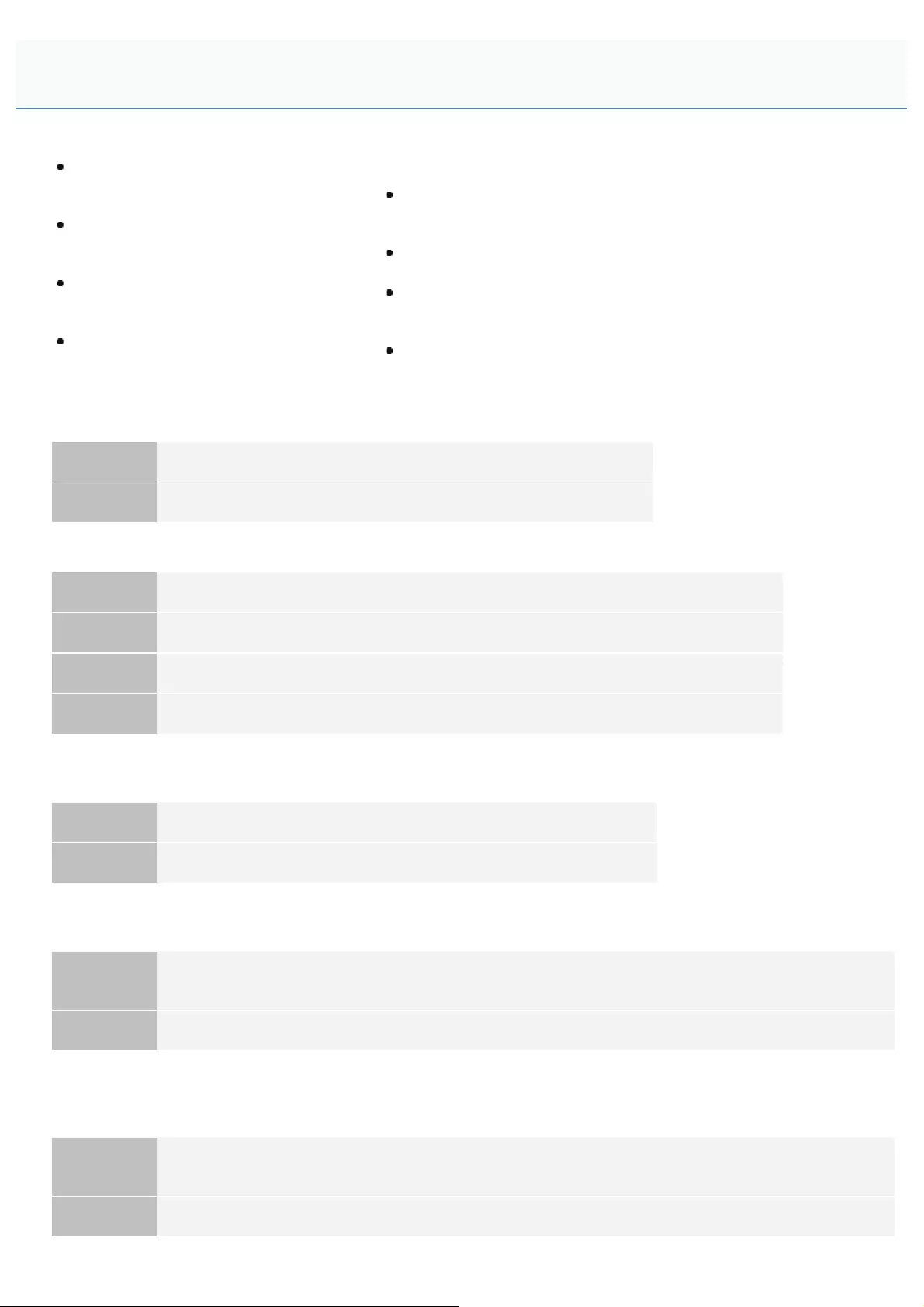
0258-0K0
<The specified file does not exist or the
file path is incorrect. Try to specify the
path again.>
<The contents of the specified file are
incorrect or information is missing. Check
the file.>
<The specified switch license file cannot
be used for password initialization. Try to
specify the file again.>
<Cannot initialize password because a
used switch license file is specified. Try to
specify the file again.>
<Cannot initialize the password because another application is being
installed, or the firmware being updated.Please wait a moment and
then try again.>
<You do not have permissions to use Service Management Service.
Log in with administrator rights.>
<Cannot login because another user is logged in or logout operations
have not been successfully performed. Please wait a moment and
then try this operation again.>
<Error: <Error Details>>
The specified file does not exist or the file path is incorrect. Try to specify the path again.
Problem The file does not exist on the specified path or the file path is incorrect.
Action Specify the file path correctly.
The contents of the specified file are incorrect or information is missing. Check the file.
Problem The specified file is not a switch license file.
Action Check to make sure that the specified file is a switch license file for password initialization.
Problem Information is missing from the specified file.
Action The password cannot be initialized using the specified file. Check the content of the file.
The specified switch license file cannot be used for password initialization. Try to specify the file
again.
Problem The specified file is not a switch license file for initializing the password.
Action Specify a switch license file for initializing the password.
Cannot initialize password because a used switch license file is specified. Try to specify the file
again.
Problem The specified license file has already been installed. License files that have been installed once cannot be
installed again.
Action Since the specified license file cannot be installed, specify another file.
Cannot initialize the password because another application is being installed, or the firmware being
updated.
Please wait a moment and then try again.
Problem Either it is installed in another application outside of SMS, or it cannot initialize the password because the
firmware is being updated.
Action Wait until the processing stops before initializing the password.
Errors Relating to the [Login] Page
㻤㻟㻤㻌㻛㻌㻥㻥㻤
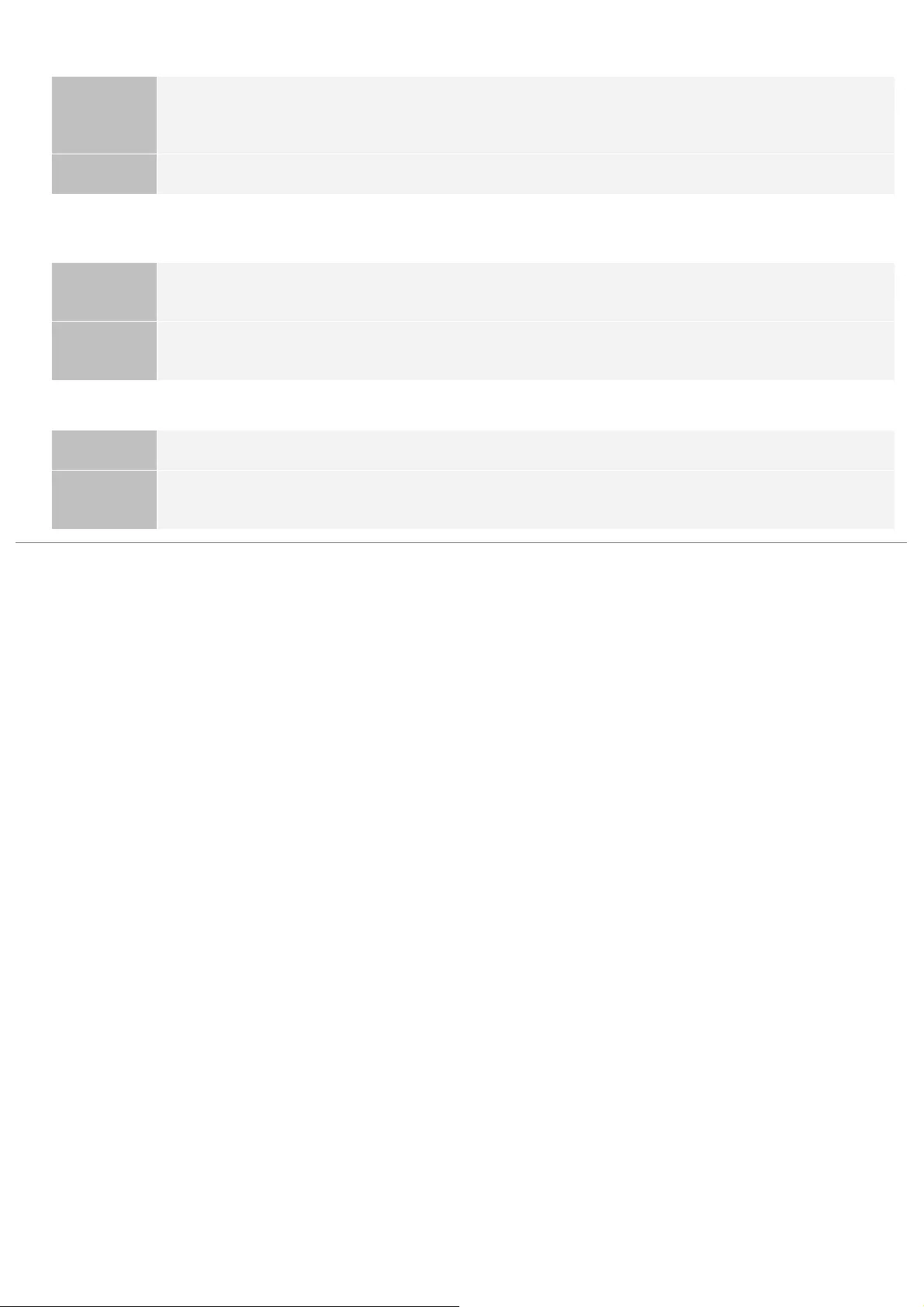
You do not have permissions to use Service Management Service. Log in with administrator rights.
Problem
Only users with administrator rights can log in to SMS with the user name and password that they use for
logging in to the printer. The user trying to log in cannot do so because they do not have administrator
rights.
Action Log in again with the user name and password of a user with administrator rights.
Cannot login because another user is logged in or logout operations have not been successfully
performed. Please wait a moment and then try this operation again.
Problem Cannot log in for a period of time because either another user is logged in or when the user was logged
in before, the logout procedure was not performed properly.
Action If another user is logged in, wait until the user logs out. If another user is not logged in, wait for the lock
to be cancelled.
Error: <Error Details>
Problem An error has occurred for some reason. See <Error Details> for details.
Action If the solutions given in <Error Details> are unclear, contact your local authorized Canon dealer or sales
representatives.
㻤㻟㻥㻌㻛㻌㻥㻥㻤
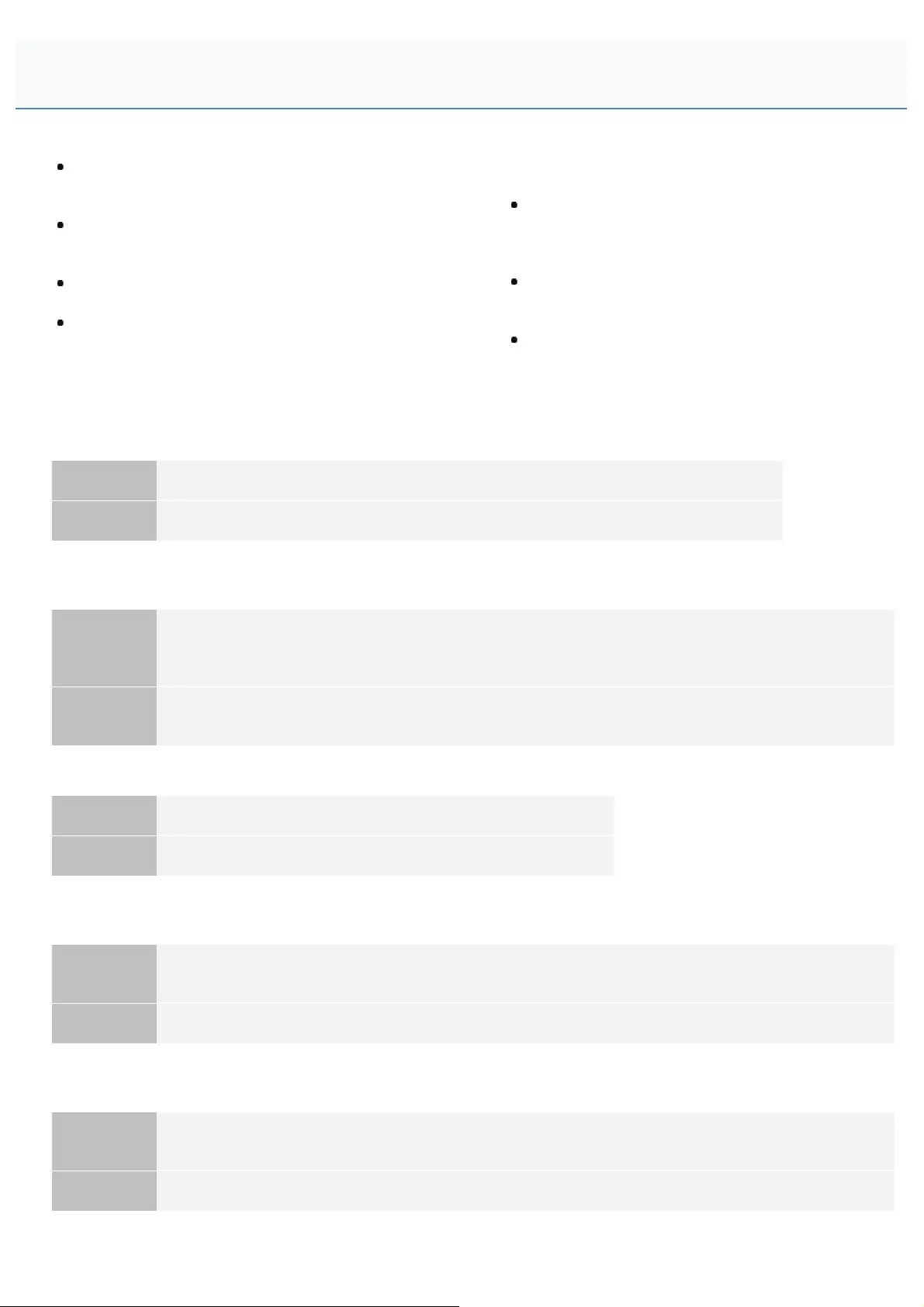
0258-0K1
<Cannot start this application because there is no
distributable software in the application. Get a distributable
software.>
<Cannot start this application because the number of
bootable applets has exceeded the limit. Start this
application after stopping other applications.>
<A license is needed to start this application. Try to start it
again after installing a license.>
<Cannot start this application because system resources
(memory, threads, sockets, file descriptors, disk space, or
screen size) required to start the application may not be
available. <Resources>>
<Cannot uninstall this application because the
license file has not been deleted. Uninstall the
application after deleting the license in the
[License Management] page.>
<The name listed in the file for the application and
the applet name to register with Applet Viewer
Service are different. Check the file.>
<Error: <Error Details>>
Cannot start this application because there is no distributable software in the application. Get a
distributable software.
Problem The application cannot be started because it does not contain any redistributable modules.
Action Contact the application developer.
Cannot start this application because the number of bootable applets has exceeded the limit. Start
this application after stopping other applications.
Problem
The application that you are attempting to launch contains applets. If the application was launched, the
number of applets that would be booted on the system would exceed the limit (five applets), so the
application cannot be launched.
Action First, reduce the number of applets running on the system by stopping an application running on the
system which includes an applet, and then restart the application.
A license is needed to start this application. Try to start it again after installing a license.
Problem Cannot start the application because a license file is not installed.
Action Install the license file, and then restart the application.
Cannot start this application because system resources (memory, threads, sockets, file descriptors,
disk space, or screen size) required to start the application may not be available. <Resources>
Problem The application cannot be started because the system resources for opening the application may not be
available to be allocated.
Action Restart this application after stopping other applications. It may be able to start this time.
Cannot uninstall this application because the license file has not been deleted. Uninstall the
application after deleting the license in the [License Management] page.
Problem The application cannot be uninstalled because the license file for the application still exists inside the
printer.
Action Uninstall the application after deleting the license on the [License Management] page.
The name listed in the file for the application and the applet name to register with Applet Viewer
Errors Relating to the [MEAP Application Management] Page
㻤㻠㻜㻌㻛㻌㻥㻥㻤

Service are different. Check the file.
Problem The application cannot be started because the applet name the application is trying to register in the
Applet Viewer Service differs from the applet name included in the application file.
Action Since it is necessary to make corrections to the application file, contact the application developer.
Error: <Error Details>
Problem An error has occurred for some reason. See <Error Details> for details.
Action If the solutions given in <Error Details> are unclear, contact your local authorized Canon dealer or sales
representatives.
㻤㻠㻝㻌㻛㻌㻥㻥㻤
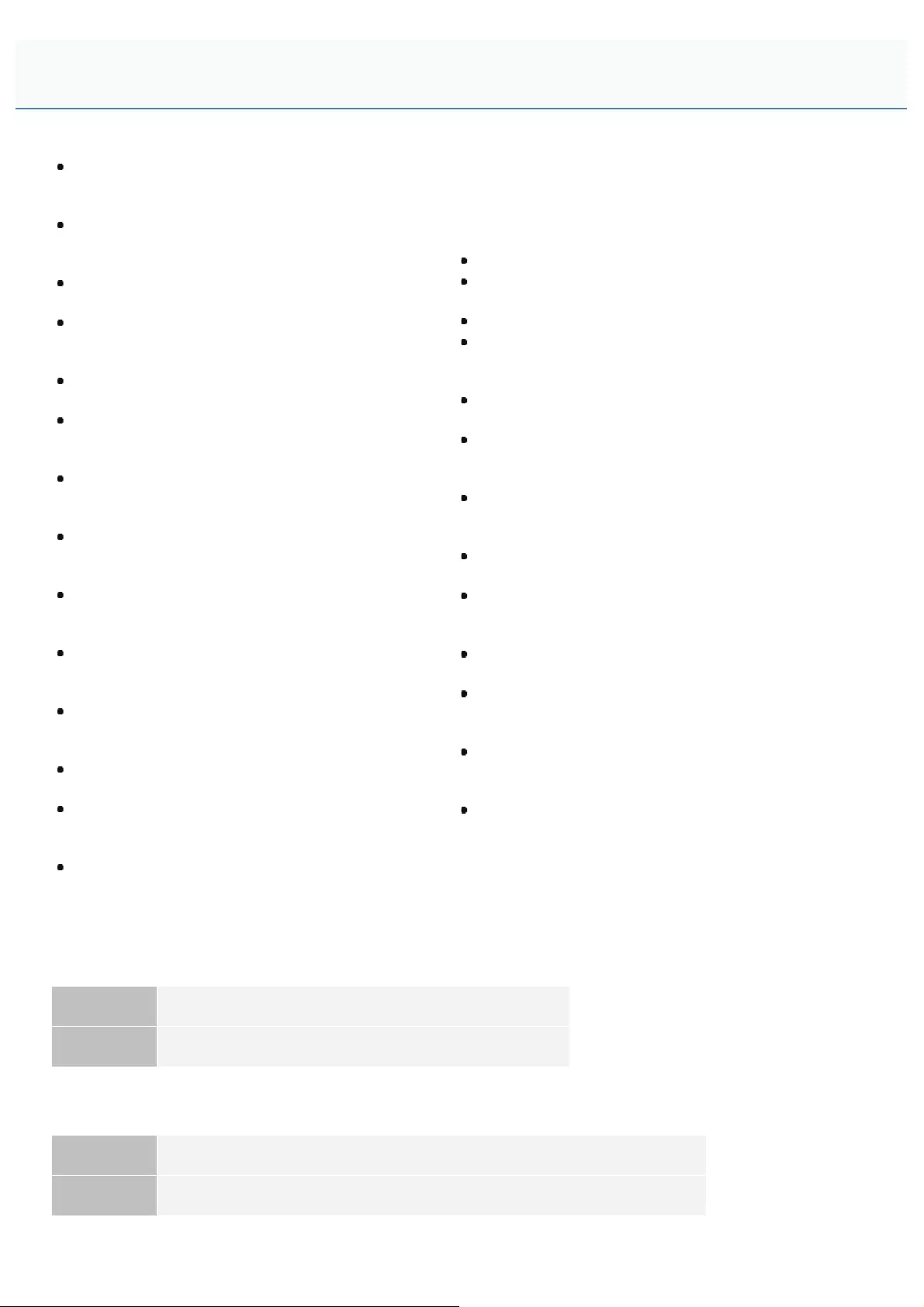
0258-0K2
<The file for the application to install does not exist
or the file path is incorrect. Try to specify the path
again.>
<The file for the license to install does not exist or
the file path is incorrect. Try to specify the path
again.>
<The manifest is not listed in the specified file.
Check the file.>
<The contents of the file for the application to install
are incorrect or information is missing. Check the
file.>
<The contents of the file for the license to install are
incorrect or information is missing. Check the file.>
<The following information is missing in file for the
specified application. Check the file. <Missing
information>>
<The following information in the specified
application is incorrect. Check the file. <Inaccurate
information>>
<Cannot install this application because a code
signing has not been confirmed to be valid. Get a
valid code signing.>
<Cannot install this license because the specified
application and license do not correspond. Try to
specify a path for the license file again.>
<The number of applications that can be installed has
exceeded the limit. Try to install this application after
uninstalling other applications.>
<Cannot install this license because the number of
license file ID logs that can be saved has exceeded
the limit. Contact your service representative.>
<Cannot install because a used license file is
specified. Try to specify the file again.>
<To install the specified application, a license file
must be installed at the same time. Specify a license
file.>
<The specified file is a system application. Install the
application from the [Enhanced System Application
Management] page.>
<The specified application does not require a license.>
<The specified license does not match this device.
Specify an installable license.>
<The specified application does not support this device.>
<Cannot install this application because an applet
included in the specified application has exceeded the
area that can be displayed in the device panel.>
<The specified file is an update file. Stop the application
that you want update and then install the file.>
<Cannot install the application because the license
requirement is different. Uninstall the specified application,
and then try to install the application again.>
<Cannot install this application because storage space
has been exceeded. Uninstall other applications and then
try to install it again.>
<Could not cancel installation. Installation has been
successfully completed.>
<This application does not support the MEAP version of
the device. Contact your service representative after
checking the application version.>
<The specified application cannot be installed on this
device.>
<The process is canceled because the system has been
shut down. Restart the system, and then perform the
process again.>
<Cannot install the application or license because another
application is being installed, or the firmware being
updated. Please wait a moment and then try again.>
<Error: <Error Details>>
The file for the application to install does not exist or the file path is incorrect. Try to specify the
path again.
Problem The specified file does not exist or the file path is incorrect.
Action Specify the file path correctly.
The file for the license to install does not exist or the file path is incorrect. Try to specify the path
again.
Problem The license file does not exist on the specified path or the file path is incorrect.
Action Specify the file path correctly.
Errors Relating to the [Install MEAP Application] Page
㻤㻠㻞㻌㻛㻌㻥㻥㻤
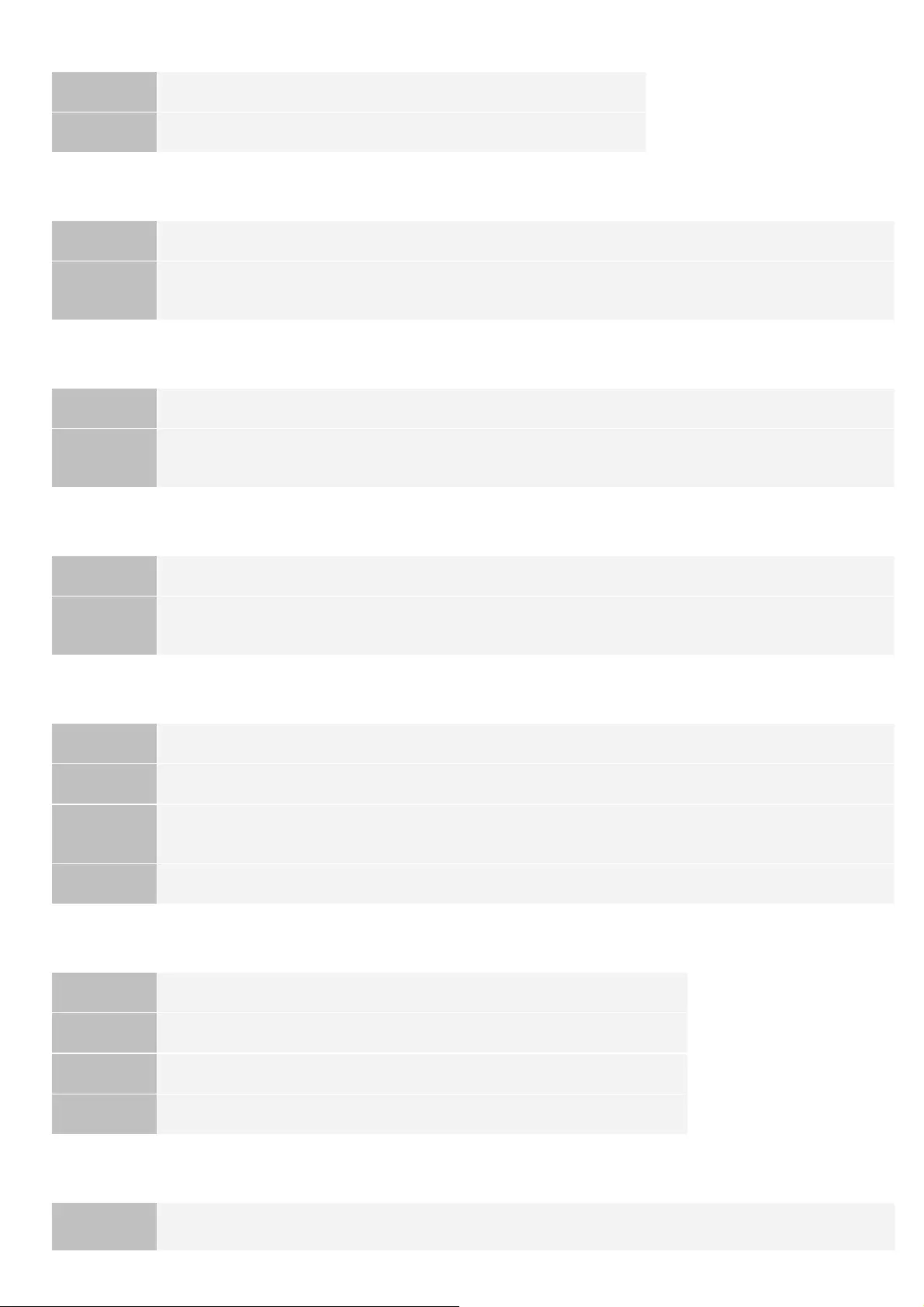
The manifest is not listed in the specified file. Check the file.
Problem A manifest does not exist for the file specified as the application file.
Action This application cannot be installed. Contact the application developer.
The contents of the file for the application to install are incorrect or information is missing. Check
the file.
Problem Either the content of the files specified as application files is not correct or information is missing.
Action This application file cannot be installed. Check the file. If there are no problems with the files, contact the
application developer or the application support help desk.
The contents of the file for the license to install are incorrect or information is missing. Check the
file.
Problem Either the content of the files specified as license files is not correct or information is missing.
Action This license file cannot be installed. Check the file. If there are no problems with the files, contact the
application developer or the application support help desk.
The following information is missing in file for the specified application. Check the file. <Missing
information>
Problem The application cannot be installed because required information is not included in the application file.
Action Check the file. If there are no problems with the files, contact the application developer or the application
support help desk concerning the <Missing Information>.
The following information in the specified application is incorrect. Check the file. <Inaccurate
information>
Problem 1 <Inaccurate information> in the application file cannot be recognized as correct information.
Action Contact the application developer or the application support help desk.
Problem 2 If the <Inaccurate information> is the MEAP Specifications, the application's MEAP specification values
and the printer's MEAP specification values do not match.
Action Contact your local authorized Canon dealer or sales representatives.
Cannot install this application because a code signing has not been confirmed to be valid. Get a valid
code signing.
Problem 1 Cannot confirm that there is a valid code signature inside the application file.
Action Perform the correct code signing operation for the application.
Problem 2 The file may have been altered.
Action Contact the application developer.
Cannot install this license because the specified application and license do not correspond. Try to
specify a path for the license file again.
Problem The application cannot be installed because the specified license file does not correspond to the specified
application.
㻤㻠㻟㻌㻛㻌㻥㻥㻤
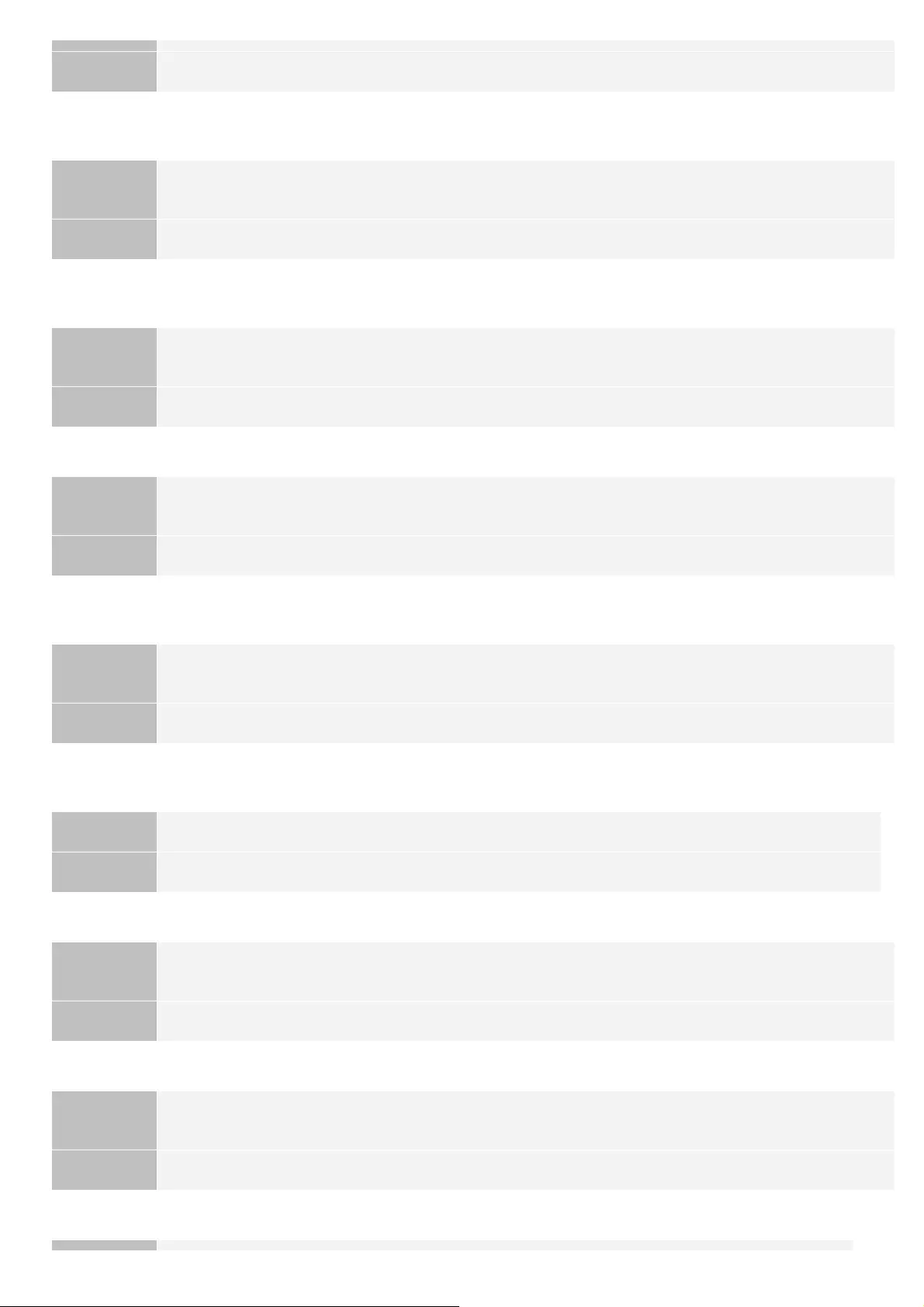
Action Specify the license file that corresponds to the application.
The number of applications that can be installed has exceeded the limit. Try to install this
application after uninstalling other applications.
Problem The maximum number of applications that can be installed is eight. You are attempting to install an
application that will exceed that number.
Action You can install it if you first uninstall another installed application (unless it is a system application).
Cannot install this license because the number of license file ID logs that can be saved has
exceeded the limit. Contact your service representative.
Problem The license file cannot be installed because the number of license file ID information logs contained in the
license file exceeds the number that can be saved.
Action Contact your local authorized Canon dealer or sales representatives.
Cannot install because a used license file is specified. Try to specify the file again.
Problem License files that have been installed once cannot be installed again. The specified license file has already
been installed.
Action Since the specified license file cannot be installed, specify another file.
To install the specified application, a license file must be installed at the same time. Specify a
license file.
Problem You cannot install the application unless you specify the license file that corresponds to the application at
the same time.
Action Specify the corresponding license file when specifying the application, and then install them.
The specified file is a system application. Install the application from the [Enhanced System
Application Management] page.
Problem The specified file is a system application. It cannot be installed from this [Install MEAP Application] page.
Action Install it from the [Enhanced System Application Management] page.
The specified application does not require a license.
Problem An application file and license file were specified, but the specified application file does not require a
license file.
Action Install the application without specifying a license file.
The specified license does not match this device. Specify an installable license.
Problem License files contain the serial number information of printers in which the license file can be installed. The
specified license cannot be installed because it does not contain the printer's serial number information.
Action Specify a license file that matches the printer's serial number.
The specified application does not support this device.
㻤㻠㻠㻌㻛㻌㻥㻥㻤
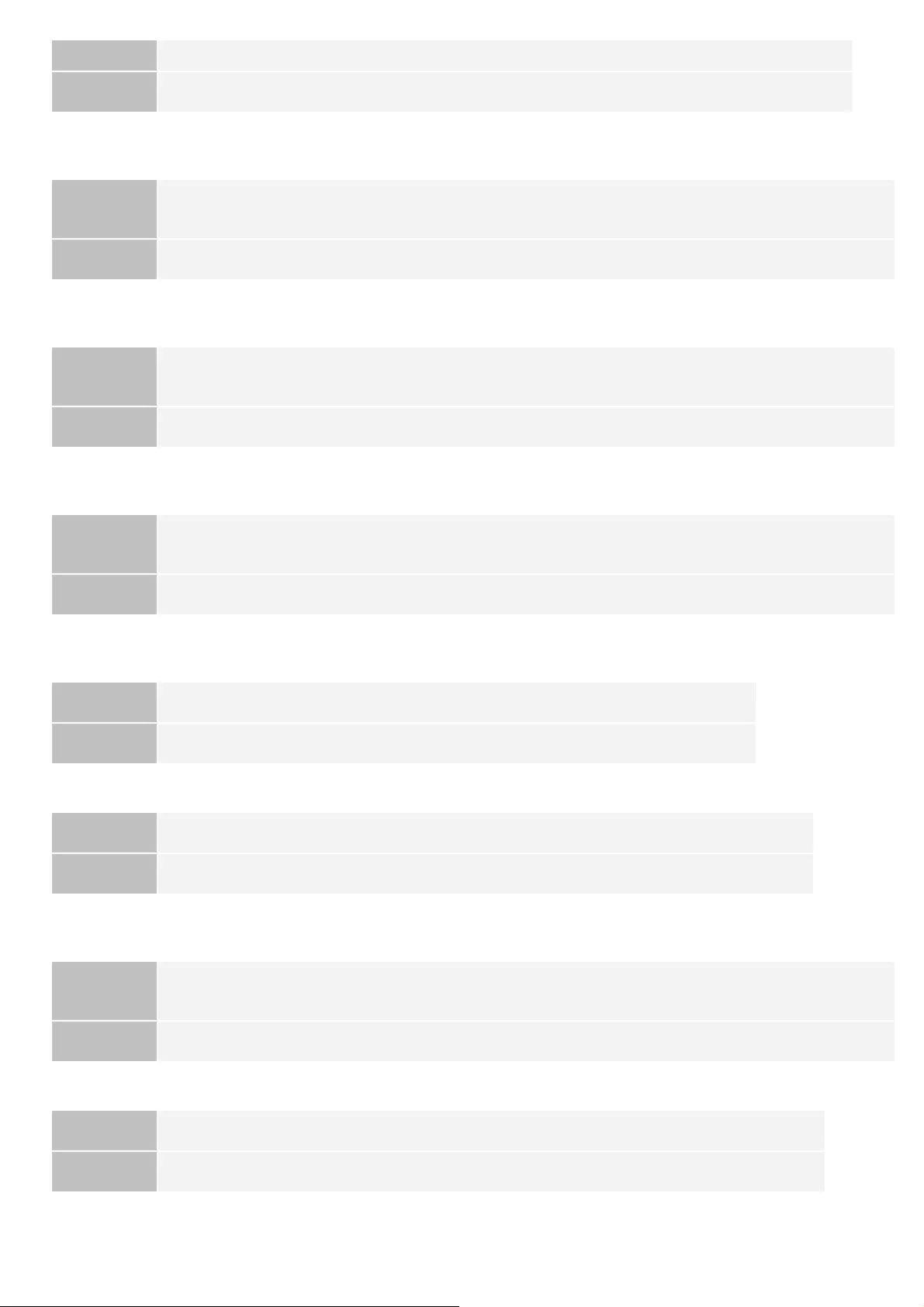
Problem Some applications can only be installed in certain printer models. It cannot be installed in this model.
Action Specify an application that supports this printer.
Cannot install this application because an applet included in the specified application has exceeded
the area that can be displayed in the device panel.
Problem The application cannot be installed because the display area of an applet included in the application
exceeds the area that can be displayed on the operation panel of the printer.
Action Install an application that contains applets that support this printer.
The specified file is an update file. Stop the application that you want update and then install the
file.
Problem The specified application file is a file for updating an application which is already installed. It is necessary
to stop the application which is to be updated before updating.
Action Stop the application that you want to update, and then perform the update again.
Cannot install the application because the license requirement is different. Uninstall the specified
application, and then try to install the application again.
Problem You have tried to upgrade an application which is already installed using a version of the same application
with different license requirements.
Action Upgrade using the same license conditions.
Cannot install this application because storage space has been exceeded. Uninstall other
applications and then try to install it again.
Problem The application cannot be installed because there is not enough free storage capacity.
Action Make storage capacity available by uninstalling an application that is not being used.
Could not cancel installation. Installation has been successfully completed.
Problem The [Cancel] button was pressed when the installation operation could not be cancelled.
Action Disable the license file, download it from the [License Management] page, and then uninstall it.
This application does not support the MEAP version of the device. Contact your service
representative after checking the application version.
Problem The specified application cannot be installed because it does not support the MEAP version on this
printer.
Action Contact the application developer.
The specified application cannot be installed on this device.
Problem The specified application cannot be installed because there is not enough memory in the printer.
Action Contact your local authorized Canon dealer or sales representatives.
The process is canceled because the system has been shut down. Restart the system, and then
perform the process again.
㻤㻠㻡㻌㻛㻌㻥㻥㻤
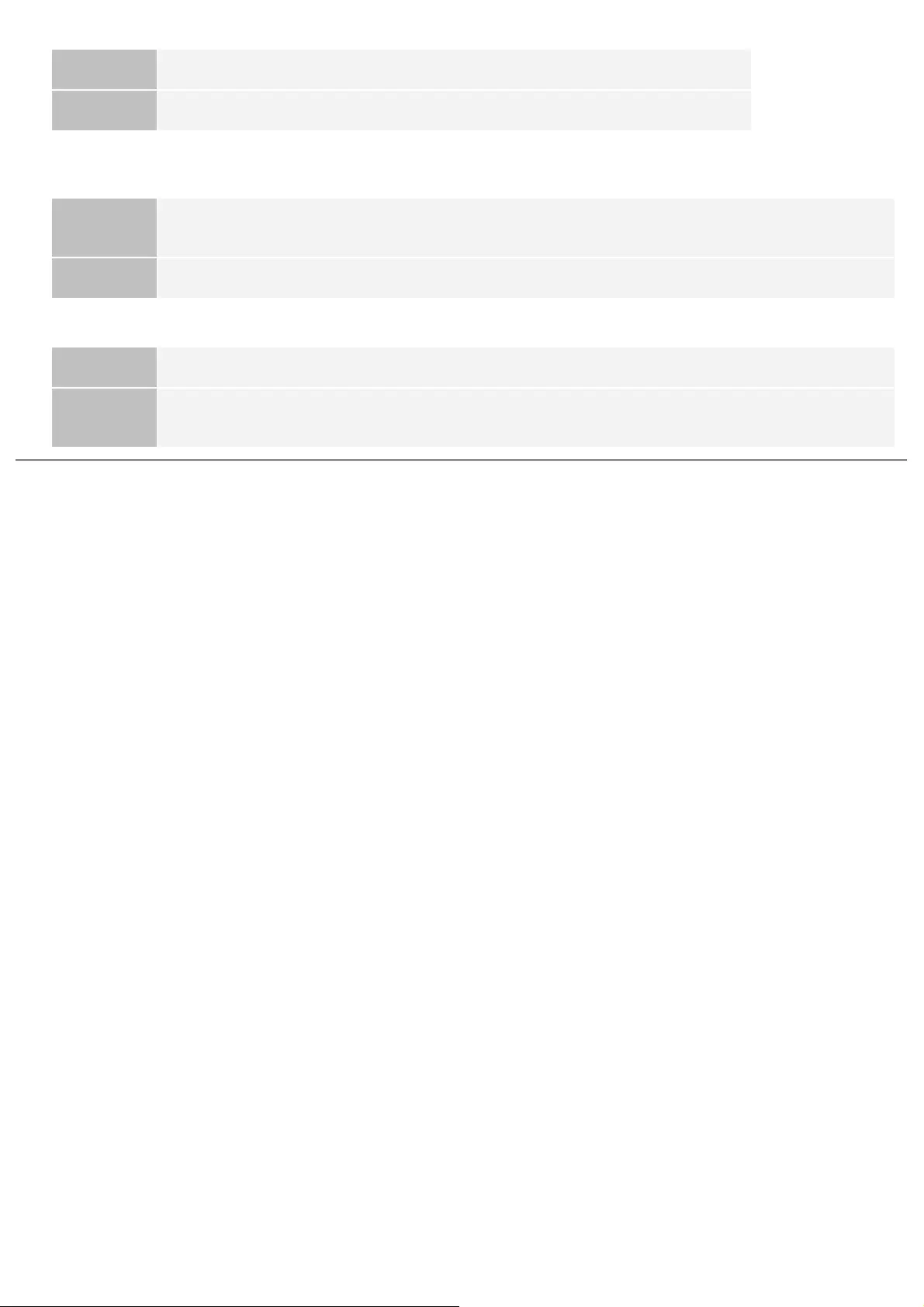
Problem The installation could not be completed because it conflicted with a system shutdown.
Action Restart the printer and perform the install again.
Cannot install the application or license because another application is being installed, or the
firmware being updated. Please wait a moment and then try again.
Problem Either it is installed in another application outside of SMS, or the application cannot be installed because
the firmware has been updated.
Action Wait until the processing stops before installing the application.
Error: <Error Details>
Problem An error has occurred for some reason. See <Error Details> for details.
Action If the solutions given in <Error Details> are unclear, contact your local authorized Canon dealer or sales
representatives.
㻤㻠㻢㻌㻛㻌㻥㻥㻤
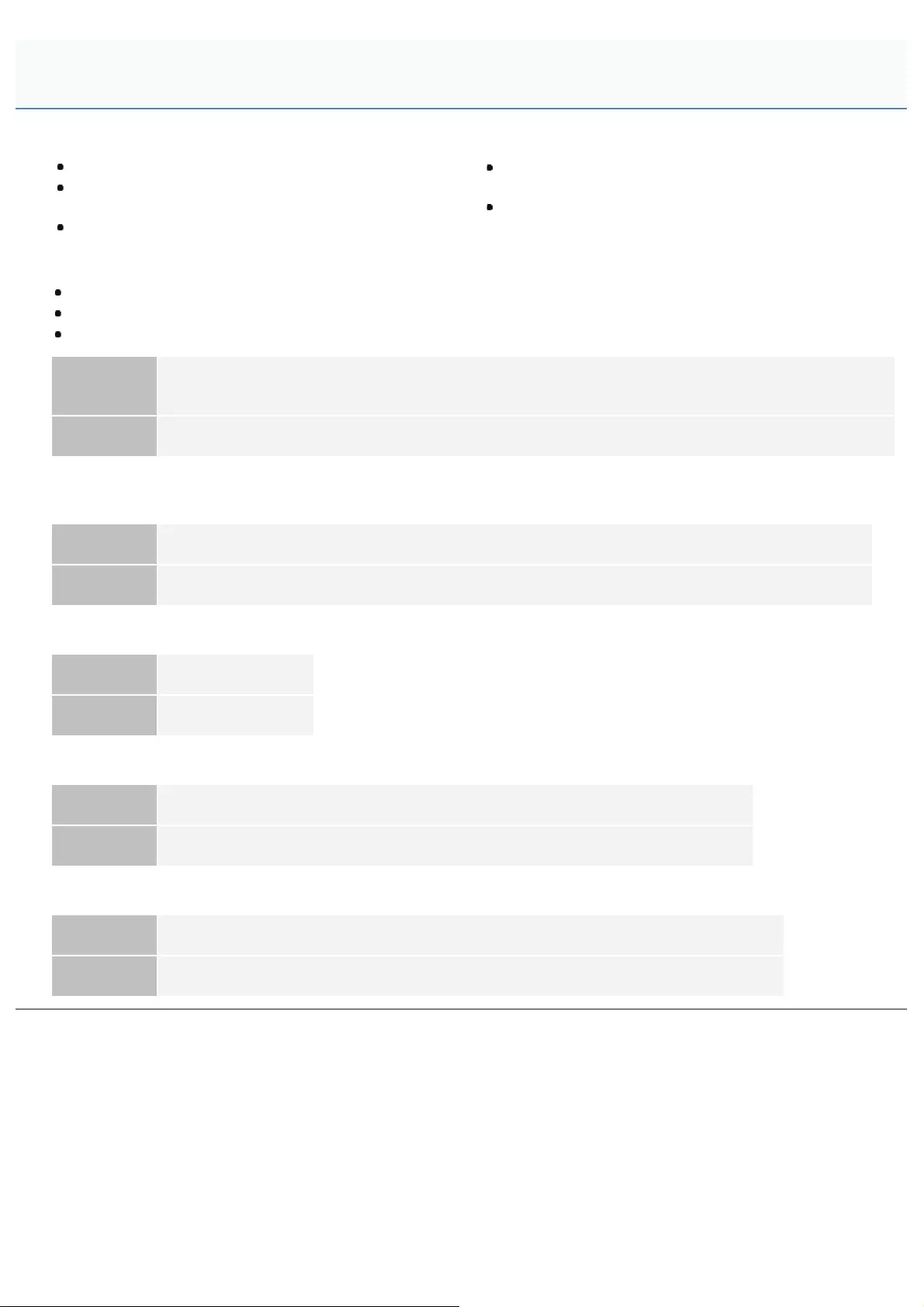
0258-0K3
<Settings are incorrect.>
<The [Department ID] is incorrect. Enter an integer for
the [Department ID].>
<The [Department ID] is not entered.>
<Could not set authentication information because an
error occurred.>
<Could not delete authentication information because
an error occurred.>
Settings are incorrect.
Check to see if the password is incorrect.
Enter Dept. ID within 7 digits.
Check to see if the Department. ID is registered with the device.
Problem Cannot set authentication information because either the Dept. ID entered does not exist, or the PIN was
entered incorrectly.
Action Enter a Dept. ID and PIN that are registered in the printer.
The [Department ID] is incorrect.
Enter an integer for the [Department ID].
Problem The Dept. ID that was entered is a positive integer, but the registered Dept. ID is not a positive integer.
Action Enter the correct Dept. ID that is registered in the device.
The [Department ID] is not entered.
Problem The Dept. ID is blank.
Action Specify a Dept. ID.
Could not set authentication information because an error occurred.
Problem An error has occurred for some reason, so authentication information could not be set.
Action Contact your local authorized Canon dealer or sales representatives.
Could not delete authentication information because an error occurred.
Problem An error has occurred for some reason, so authentication information could not be deleted.
Action Contact your local authorized Canon dealer or sales representatives.
Errors Relating to the [Authentication Information Settings] Page
㻤㻠㻣㻌㻛㻌㻥㻥㻤
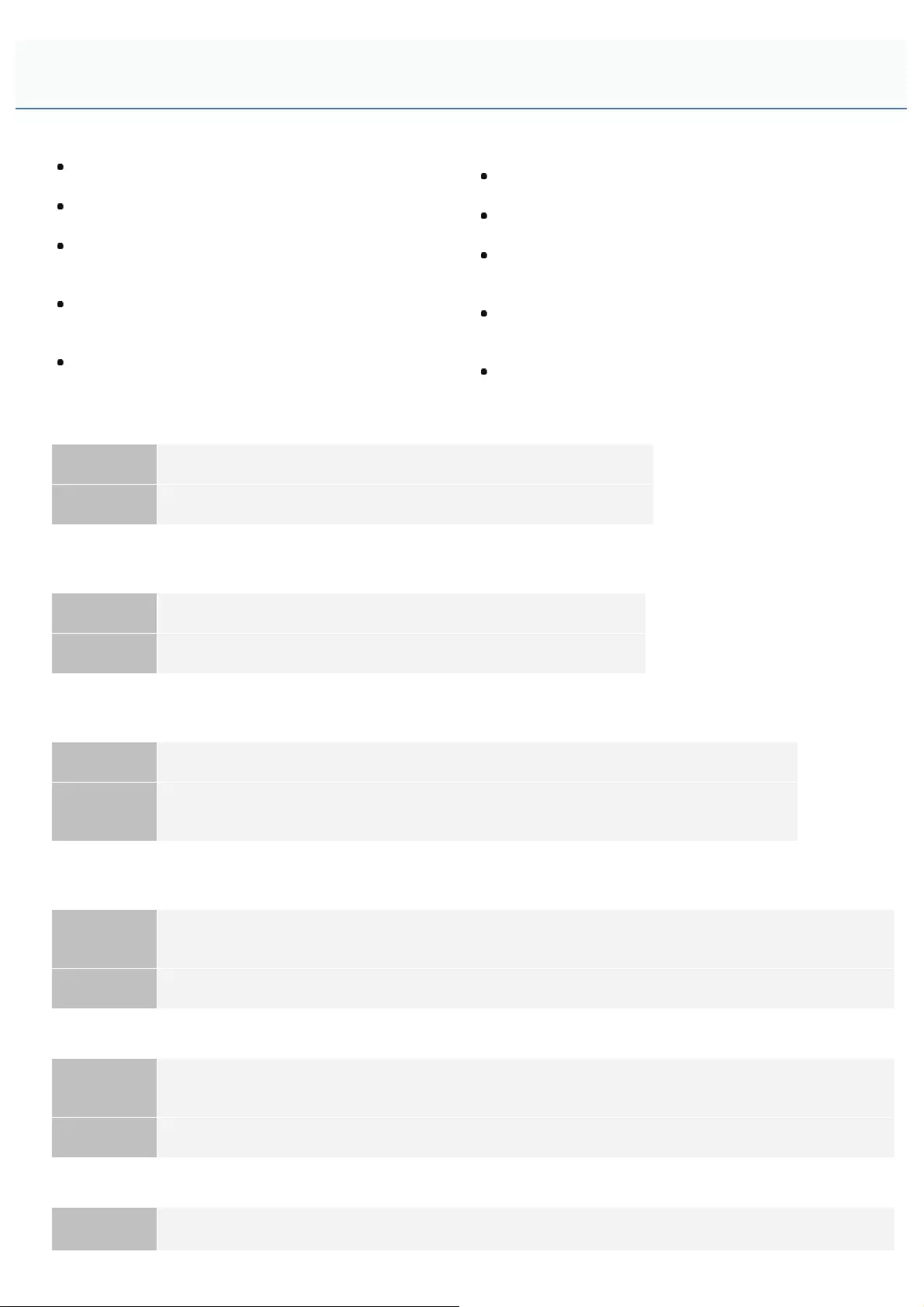
0258-0K4
<The specified file does not exist or the file path is
incorrect. Try to specify the path again.>
<The contents of the file for the license to install are
incorrect or information is missing. Check the file.>
<Cannot install this license because the specified
license does not correspond to this application. Try to
specify a path for the license file again.>
<Cannot install this license because the number of
license file ID logs that can be saved has exceeded the
limit. Contact your service representative.>
<Cannot install because a used license file is specified.
Try to specify the file again.>
<The specified license does not match this device.
Specify an installable license.>
<Could not cancel installation. Installation has been
successfully completed.>
<Cannot install the license because another application
is being installed, or the firmware being updated.Please
wait a moment and then try again.>
<Cannot disable the license file because this
application has been started. Disable the license file
after stopping the application.>
<Error: <Error Details>>
The specified file does not exist or the file path is incorrect. Try to specify the path again.
Problem The file does not exist on the specified path or the file path is incorrect.
Action Specify the file path correctly.
The contents of the file for the license to install are incorrect or information is missing. Check the
file.
Problem Either the content of the file is not correct or information is missing.
Action This license file cannot be installed. Contact the application developer.
Cannot install this license because the specified license does not correspond to this application. Try
to specify a path for the license file again.
Problem The specified license file does not correspond to the application, so they cannot be installed.
Action Specify the license file that corresponds to the application.
Check to make sure that the manifest file listed inside the license file is correct.
Cannot install this license because the number of license file ID logs that can be saved has
exceeded the limit. Contact your service representative.
Problem The license file cannot be installed because the number of license file ID information logs contained in the
license file exceeds the number that can be saved.
Action Contact your local authorized Canon dealer or sales representatives.
Cannot install because a used license file is specified. Try to specify the file again.
Problem According to the specifications, a license file which is already installed cannot be installed again. The
specified license file has already been installed.
Action Since the specified license file cannot be installed, specify another file.
The specified license does not match this device. Specify an installable license.
Problem License files contain lists of printers in which they can be installed. The specified license file cannot be
Errors Relating to the [License Management] Page
㻤㻠㻤㻌㻛㻌㻥㻥㻤
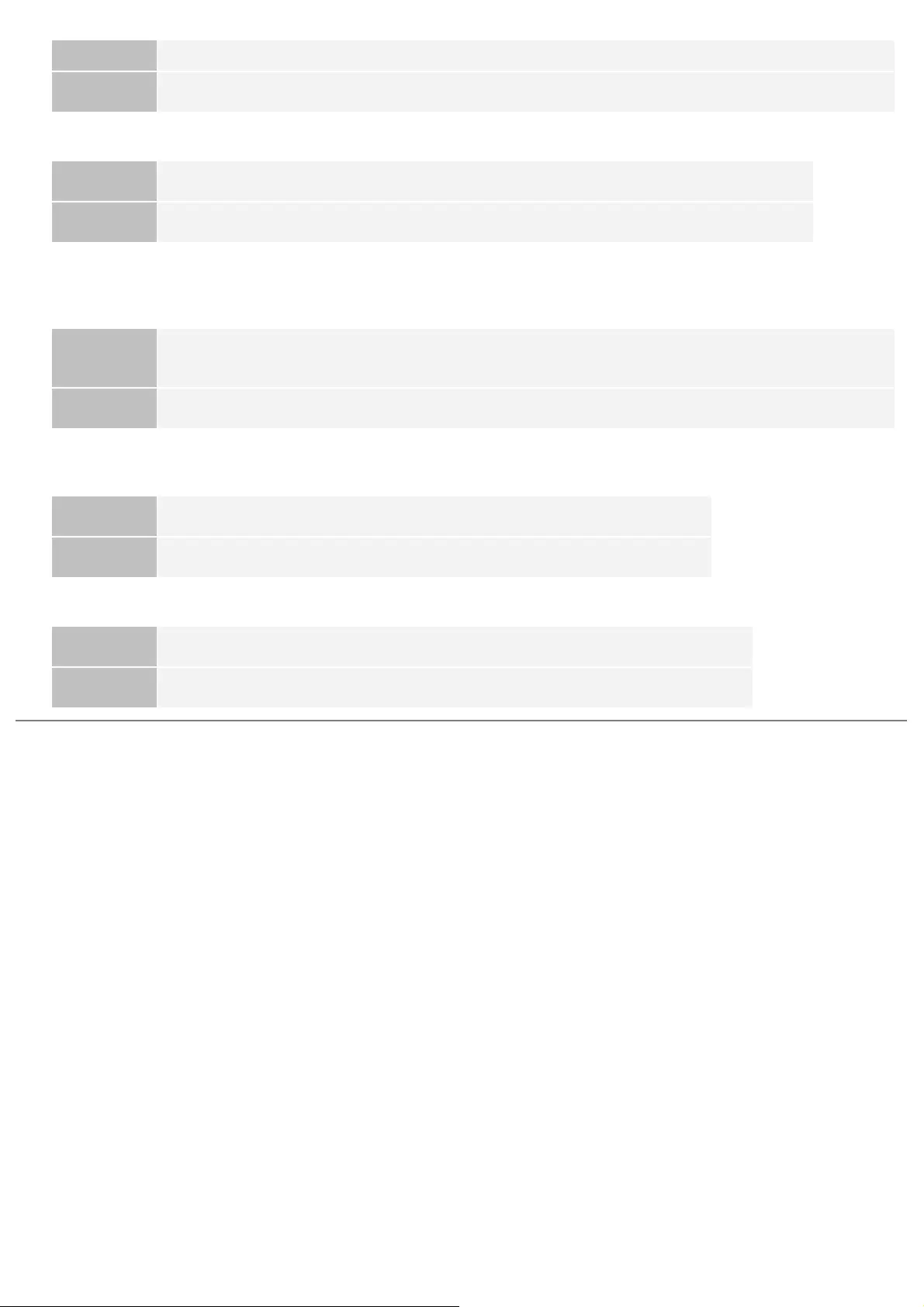
installed in this printer.
Action Specify a license file that can be installed in this printer.
Could not cancel installation. Installation has been successfully completed.
Problem The [Cancel] button was pressed when the installation operation could not be cancelled.
Action Disable the license file, download it from the [License Management] page, and then uninstall it.
Cannot install the license because another application is being installed, or the firmware being
updated.
Please wait a moment and then try again.
Problem Either it is installed in another application outside of SMS, or the license file cannot be installed because
the firmware has been updated.
Action Wait until the processing stops before installing the license file.
Cannot disable the license file because this application has been started. Disable the license file
after stopping the application.
Problem You cannot disable a license if the corresponding application is still running.
Action Stop the application that corresponds to the license before disabling the license.
Error: <Error Details>
Problem An error has occurred for some reason. See <Error Details> for details.
Action If the solutions given in <Error Details> are unclear, contact the application developer.
㻤㻠㻥㻌㻛㻌㻥㻥㻤
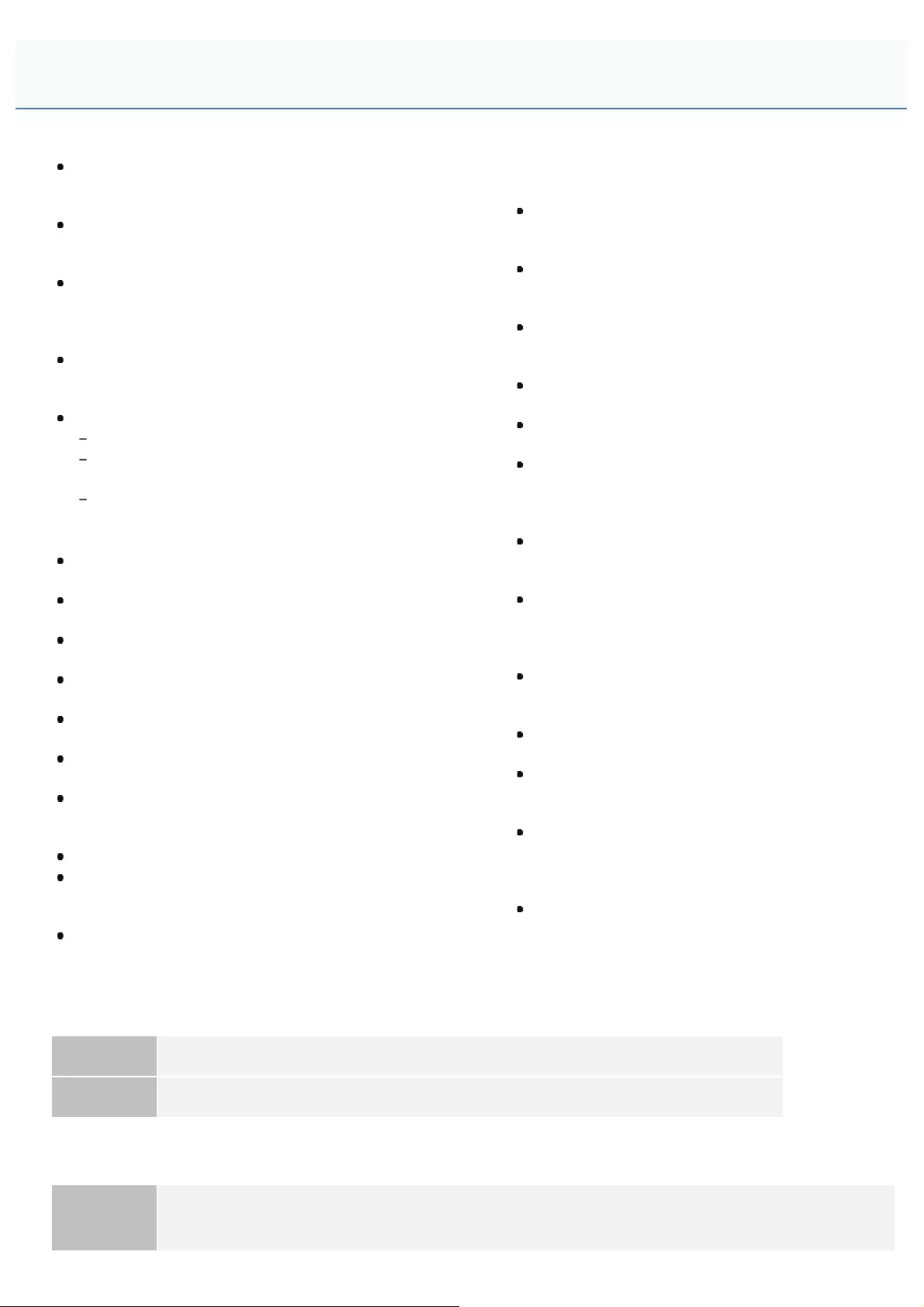
0258-0K5
<Cannot start this application because there is no
distributable software in the application. Get a distributable
software.>
<Cannot start this application because the number of
bootable applets has exceeded the limit. Start this application
after stopping other applications.>
<Cannot start this application because system resources
(memory, threads, sockets, file descriptors, disk space, or
screen size) required to start the application may not be
available. <Resources>>
<The name listed in the file for the application and the applet
name to register with Applet Viewer Service are different.
Check the file.>
<The following login services cannot be uninstalled:
The currently set login service
Login services that will be enabled after the device is
restarted
Default Authentication login services
The currently set login service can be uninstalled after the
device is restarted.>
<The file for the application to install does not exist or the file
path is incorrect. Try to specify the path again.>
<The manifest is not listed in the specified file. Check the
file.>
<The file for the license to install does not exist or the file
path is incorrect. Try to specify the path again.>
<The contents of the file for the application to install are
incorrect or information is missing. Check the file.>
<The contents of the file for the license to install are incorrect
or information is missing. Check the file.>
<Cannot install this application because a code signing has
not been confirmed to be valid. Get a valid code signing.>
<Cannot install this license because the specified application
and license do not correspond. Try to specify a path for the
license file again.>
<The specified file is not system application. Check the file.>
<Cannot install this license because the number of license
file ID logs that can be saved has exceeded the limit. Contact
your service representative.>
<Cannot install because a used license file is specified. Try
to specify the file again.>
<To install the specified application, a license file
must be installed at the same time. Specify a
license file.>
<The following information in the specified
application is incorrect. Check the file. <Inaccurate
information>>
<The following information is missing in file for the
specified application. Check the file. <Missing
information>>
<The specified application does not support this
device.>
<The specified license does not match this
device. Specify an installable license.>
<Cannot install this application because an applet
included in the specified application has exceeded
the area that can be displayed in the device
panel.>
<The specified file is an update file. Stop the
application that you want update and then install
the file.>
<The specified file is an update file for a login
service that is currently set. Switch to another
login service, restart the device, and then install
the file.>
<Cannot install this application because storage
space has been exceeded. Uninstall other
applications and then try to install it again.>
<Could not cancel installation. Installation has
been successfully completed.>
<The process is canceled because the system
has been shut down. Restart the system, and then
perform the process again.>
<Cannot install the application or license because
another application is being installed, or the
firmware being updated. Please wait a moment
and then try again.>
<Error: <Error Details>>
Cannot start this application because there is no distributable software in the application. Get a
distributable software.
Problem The application cannot be started because it does not contain any redistributable modules.
Action Contact the application developer.
Cannot start this application because the number of bootable applets has exceeded the limit. Start
this application after stopping other applications.
Problem
The application that you are attempting to launch contains applets. If the application was launched, the
number of applets that would be booted on the system would exceed the limit (five applets), so the
application cannot be launched.
Errors Relating to the [Enhanced System Application Management] Page
㻤㻡㻜㻌㻛㻌㻥㻥㻤
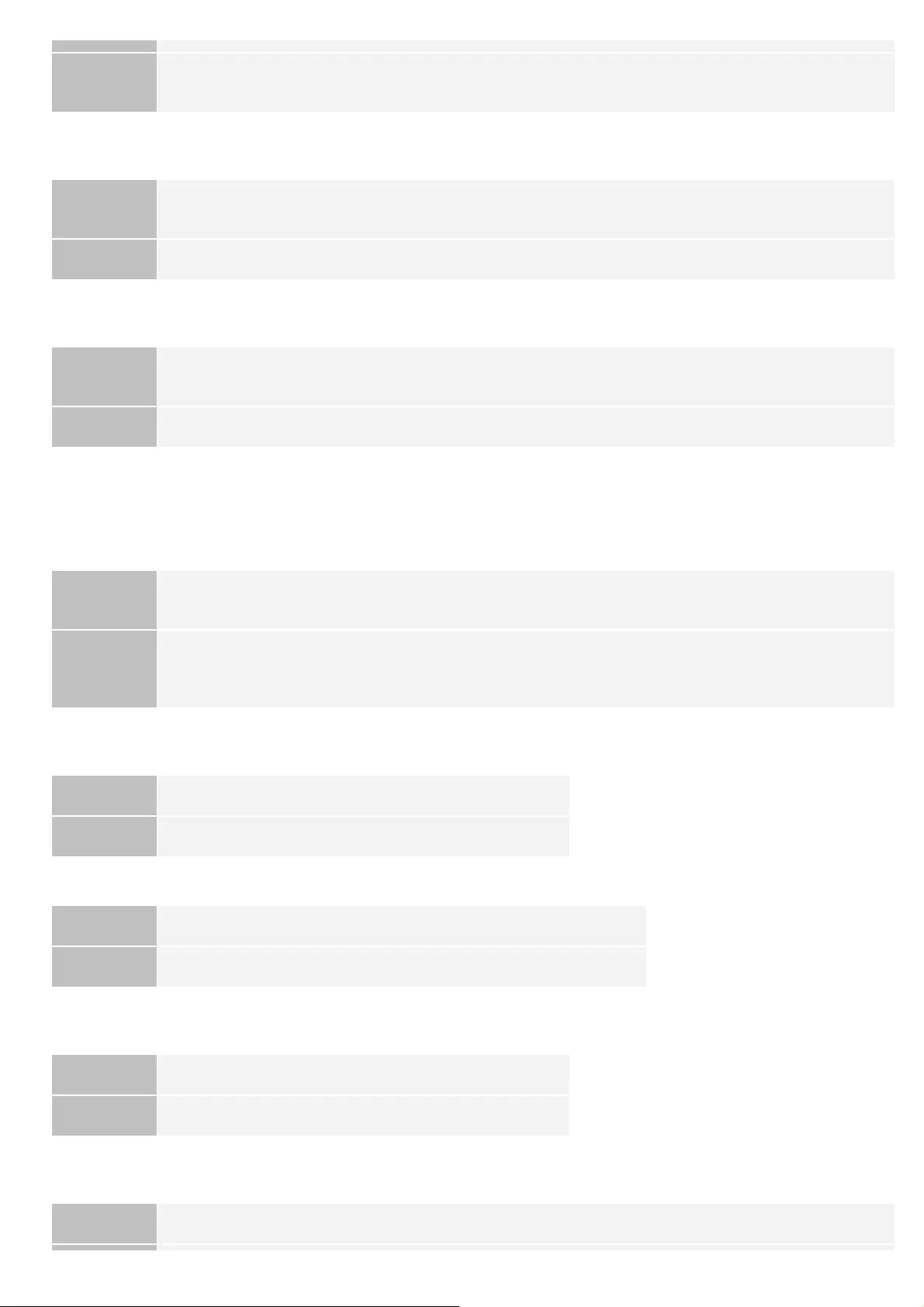
Action First, reduce the number of applets running on the system by stopping an application running on the
system which includes an applet, and then restart the application.
Cannot start this application because system resources (memory, threads, sockets, file descriptors,
disk space, or screen size) required to start the application may not be available. <Resources>
Problem The application cannot be started because the system resources for opening the application may not be
available to be allocated.
Action Restart this application after stopping other applications. It may be able to start this time.
The name listed in the file for the application and the applet name to register with Applet Viewer
Service are different. Check the file.
Problem The application cannot be started because the applet name the application is trying to register in the
Applet Viewer Service differs from the applet name included in the application file.
Action Since it is necessary to make corrections to the application file, contact the application developer.
The following login services cannot be uninstalled:
- The currently set login service
- Login services that will be enabled after the device is restarted
- Default Authentication login services
The currently set login service can be uninstalled after the device is restarted.
Problem The currently set login service, a login service that will be enabled after restarting the machine, and the
Default Authentication login service cannot be uninstalled.
Action
Do not uninstall the currently set login service, a login service that will be enabled after restarting the
machine, or the Default Authentication login service. To uninstall the currently set login service, uninstall it
after restarting the machine.
The file for the application to install does not exist or the file path is incorrect. Try to specify the
path again.
Problem The specified file does not exist or the file path is incorrect.
Action Specify the file path correctly.
The manifest is not listed in the specified file. Check the file.
Problem A manifest does not exist for the file specified as the application file.
Action This application cannot be installed. Contact the application developer.
The file for the license to install does not exist or the file path is incorrect. Try to specify the path
again.
Problem The specified file does not exist or the file path is incorrect.
Action Specify the file path correctly.
The contents of the file for the application to install are incorrect or information is missing. Check
the file.
Problem Either the content of the files specified as application files is not correct or information is missing.
㻤㻡㻝㻌㻛㻌㻥㻥㻤
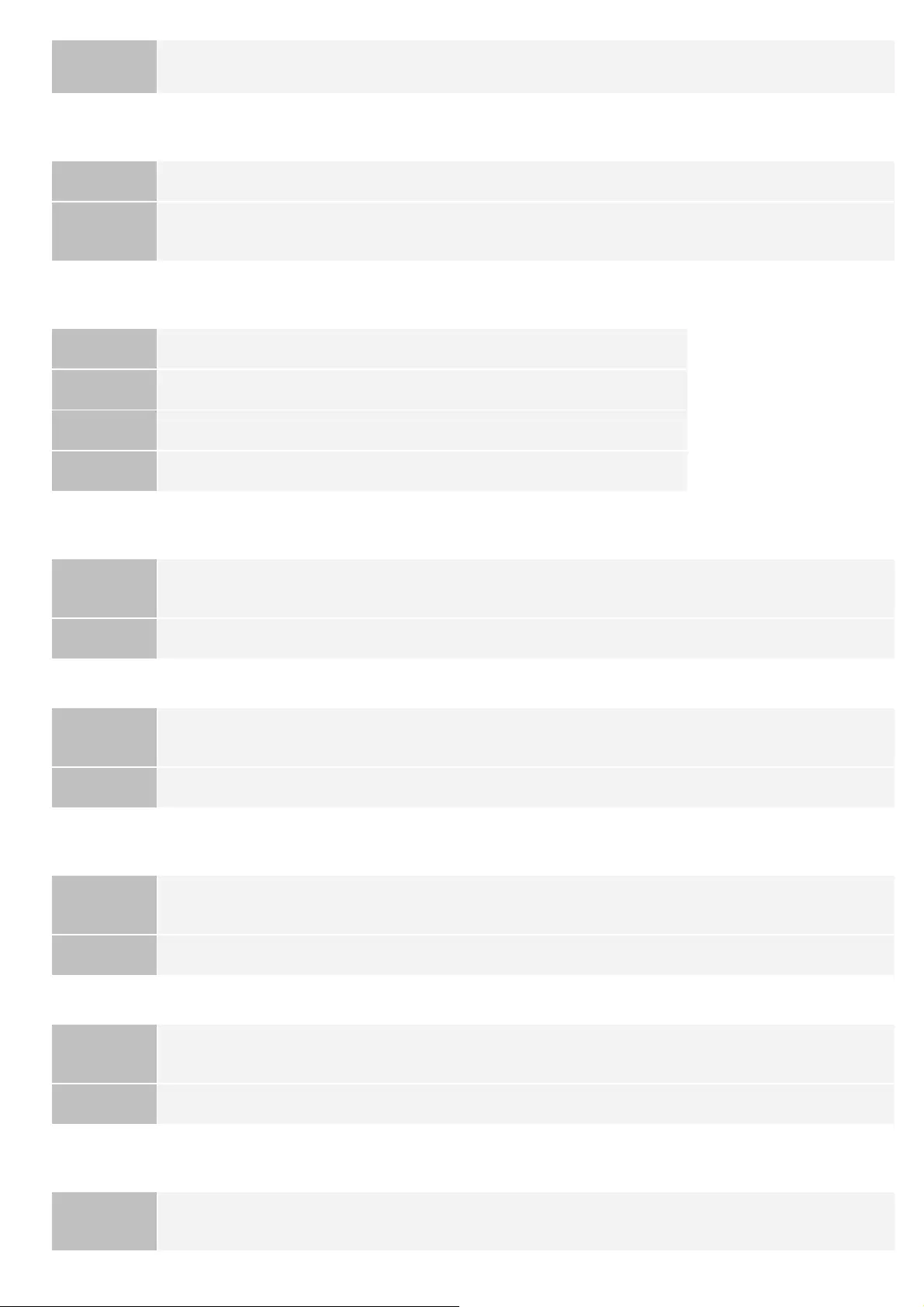
Action This application file cannot be installed. Check the file. If there are no problems with the files, contact the
application developer or the application support help desk.
The contents of the file for the license to install are incorrect or information is missing. Check the
file.
Problem Either the content of the files specified as license files is not correct or information is missing.
Action This license file cannot be installed. Check the file. If there are no problems with the files, contact the
application developer or the application support help desk.
Cannot install this application because a code signing has not been confirmed to be valid. Get a valid
code signing.
Problem 1 Cannot confirm that there is a valid code signature inside the application file.
Action Perform the correct code signing operation for the application.
Problem 2 The file may have been altered.
Action Contact the application developer.
Cannot install this license because the specified application and license do not correspond. Try to
specify a path for the license file again.
Problem The application cannot be installed because the specified license file does not correspond to the specified
application.
Action Specify the license file that corresponds to the application.
The specified file is not system application. Check the file.
Problem The specified file is not system application. It cannot be installed from the [Enhanced System Application
Management] page.
Action Install it from the [Install MEAP Application] page.
Cannot install this license because the number of license file ID logs that can be saved has
exceeded the limit. Contact your service representative.
Problem The license file cannot be installed because the number of license file ID information logs contained in the
license file exceeds the number that can be saved.
Action Contact your local authorized Canon dealer or sales representatives.
Cannot install because a used license file is specified. Try to specify the file again.
Problem License files that have been installed once cannot be installed again. The specified license file has already
been installed.
Action Since the specified license file cannot be installed, specify another file.
To install the specified application, a license file must be installed at the same time. Specify a
license file.
Problem You cannot install the application unless you specify the license file that corresponds to the application at
the same time.
㻤㻡㻞㻌㻛㻌㻥㻥㻤

Action Specify the corresponding license file when specifying the application, and then install them.
The following information in the specified application is incorrect. Check the file. <Inaccurate
information>
Problem 1 <Inaccurate information> in the application file cannot be recognized as correct information.
Action Contact the application developer or the application support help desk.
Problem 2 If the <Inaccurate information> is the MEAP Specifications, the application's MEAP specification values
and the printer's MEAP specification values do not match.
Action Contact your local authorized Canon dealer or sales representatives.
The following information is missing in file for the specified application. Check the file. <Missing
information>
Problem The application cannot be installed because required information is not included in the application.
Action Check the file. If there are no problems with the files, contact the application developer or the application
support help desk concerning the <Missing Information>.
The specified application does not support this device.
Problem Some applications can only be installed in certain printer models. It cannot be installed in this model.
Action Specify an application that supports this printer.
The specified license does not match this device. Specify an installable license.
Problem License files contain the serial number information of printers in which the license file can be installed. The
specified license cannot be installed because it does not contain the printer's serial number information.
Action Specify a license file that matches the serial number of this printer.
Cannot install this application because an applet included in the specified application has exceeded
the area that can be displayed in the device panel.
Problem The application cannot be installed because the display area of an applet included in the application
exceeds the area that can be displayed on the operation panel of the printer.
Action Install an application that contains applets that support this printer.
The specified file is an update file. Stop the application that you want update and then install the
file.
Problem The specified application file is a file for updating an application which is already installed. It is necessary
to stop the application which is to be updated before updating.
Action Stop the application that you want to update, and then perform the update again.
The specified file is an update file for a login service that is currently set. Switch to another login
service, restart the device, and then install the file.
Problem Although the specified application file is an update file for the login service that is currently set, it cannot
update a login service that has already started.
㻤㻡㻟㻌㻛㻌㻥㻥㻤
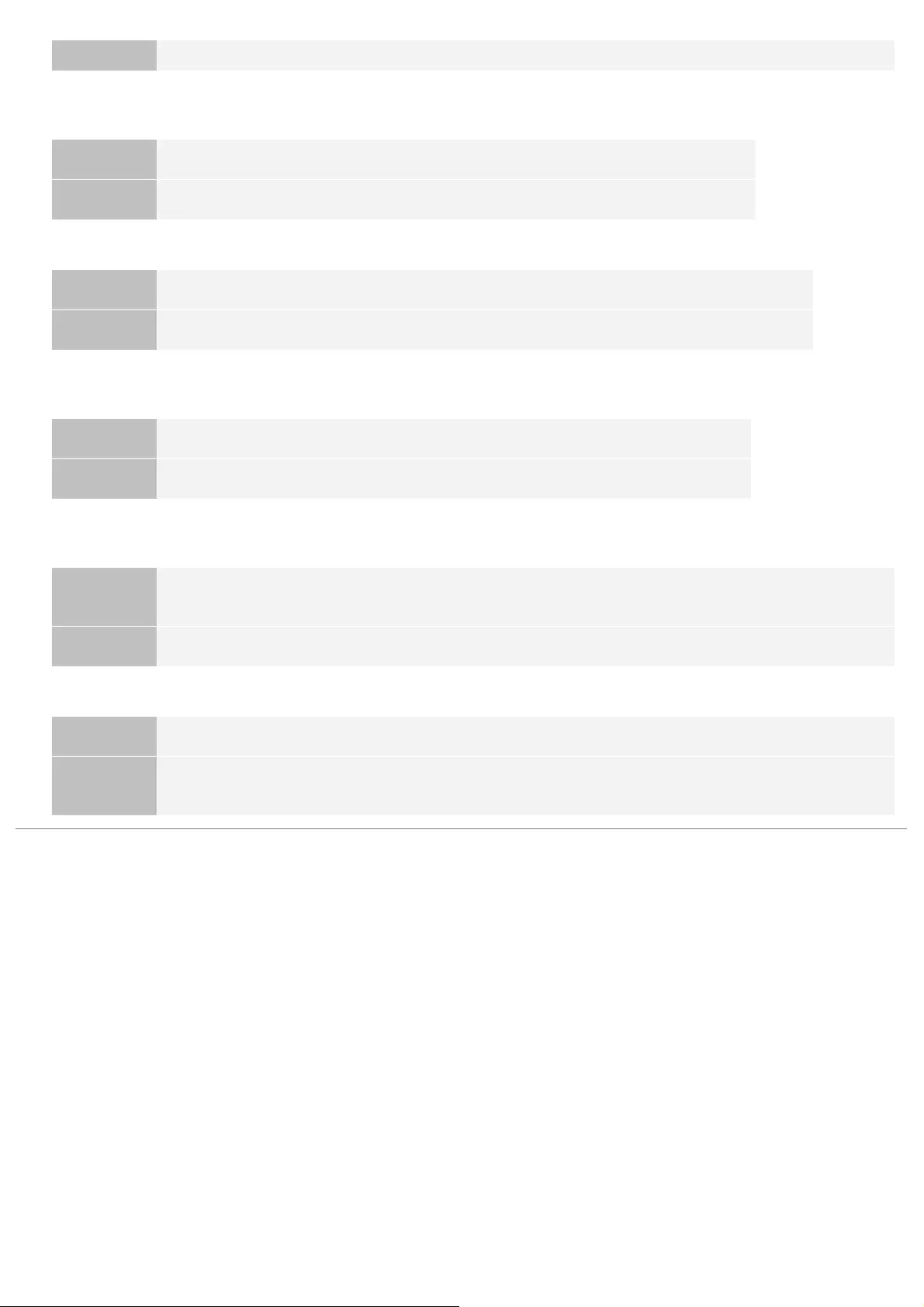
Action To install the update file for the login service, start another login service, and then install the update file.
Cannot install this application because storage space has been exceeded. Uninstall other
applications and then try to install it again.
Problem The application cannot be installed because there is not enough free storage capacity.
Action Make storage capacity available by uninstalling an application that is not being used.
Could not cancel installation. Installation has been successfully completed.
Problem The [Cancel] button was pressed when the installation operation could not be cancelled.
Action Disable the license file, download it from the [License Management] page, and then uninstall it.
The process is canceled because the system has been shut down. Restart the system, and then
perform the process again.
Problem The installation could not be completed because it conflicted with a system shutdown.
Action Restart the printer and perform the install again.
Cannot install the application or license because another application is being installed, or the
firmware being updated. Please wait a moment and then try again.
Problem Either it is installed in another application outside of SMS, or the application cannot be installed because
the firmware has been updated.
Action Wait until the processing stops before installing the application.
Error: <Error Details>
Problem An error has occurred for some reason. See <Error Details> for details.
Action If the solutions given in <Error Details> are unclear, contact your local authorized Canon dealer or sales
representatives.
㻤㻡㻠㻌㻛㻌㻥㻥㻤
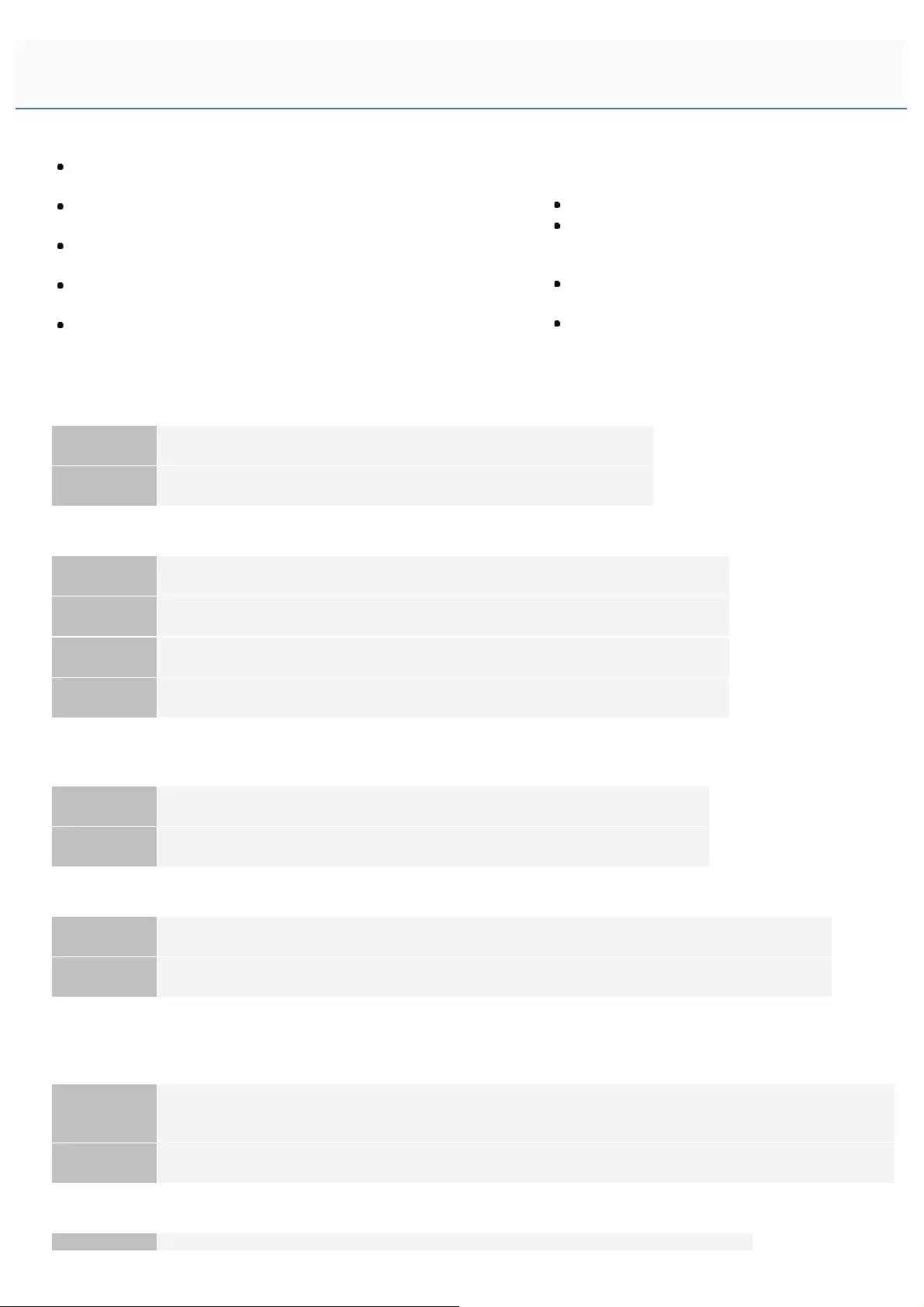
0258-0K6
<The specified file does not exist or the file path is incorrect. Try to
specify the path again.>
<The contents of the specified file are incorrect or information is
missing. Check the file.>
<The specified switch license file cannot be used to delete the
license file ID log. Try to specify the path again.>
<The specified license is already installed. Installed license file
information cannot be displayed.>
<Cannot perform the operation because another application is
being installed, or the firmware being updated.Please wait a
moment and then try again.>
<The old password is incorrect.>
<The new password is incorrect. Enter the
password with 8 to 32 single-byte
alphanumeric characters.>
<The new password and password to
confirm do not match.>
<Error: <Error Details>>
The specified file does not exist or the file path is incorrect. Try to specify the path again.
Problem The file does not exist on the specified path or the file path is incorrect.
Action Specify the file path correctly.
The contents of the specified file are incorrect or information is missing. Check the file.
Problem 1 The content of the file is not correct. (A file other than a license file was specified.)
Action Check to make sure that the specified file is a license file.
Problem 2 Information is missing from the file.
Action Check the content of the file.
The specified switch license file cannot be used to delete the license file ID log. Try to specify the
path again.
Problem The specified file is not a switch license file for deleting license file ID logs.
Action Try specifying the file path for the switch license for deleting license file ID logs.
The specified license is already installed. Installed license file information cannot be displayed.
Problem Information about license files that have already been installed in this printer cannot be displayed.
Action Specify another license file.
Cannot perform the operation because another application is being installed, or the firmware being
updated.
Please wait a moment and then try again.
Problem Either it is installed in another application outside of SMS, or the license file information cannot be
displayed because the firmware has been updated.
Action Wait until the processing stops before displaying the license information.
The old password is incorrect.
Errors Relating to the [Check License] and [Change Password] Pages
㻤㻡㻡㻌㻛㻌㻥㻥㻤
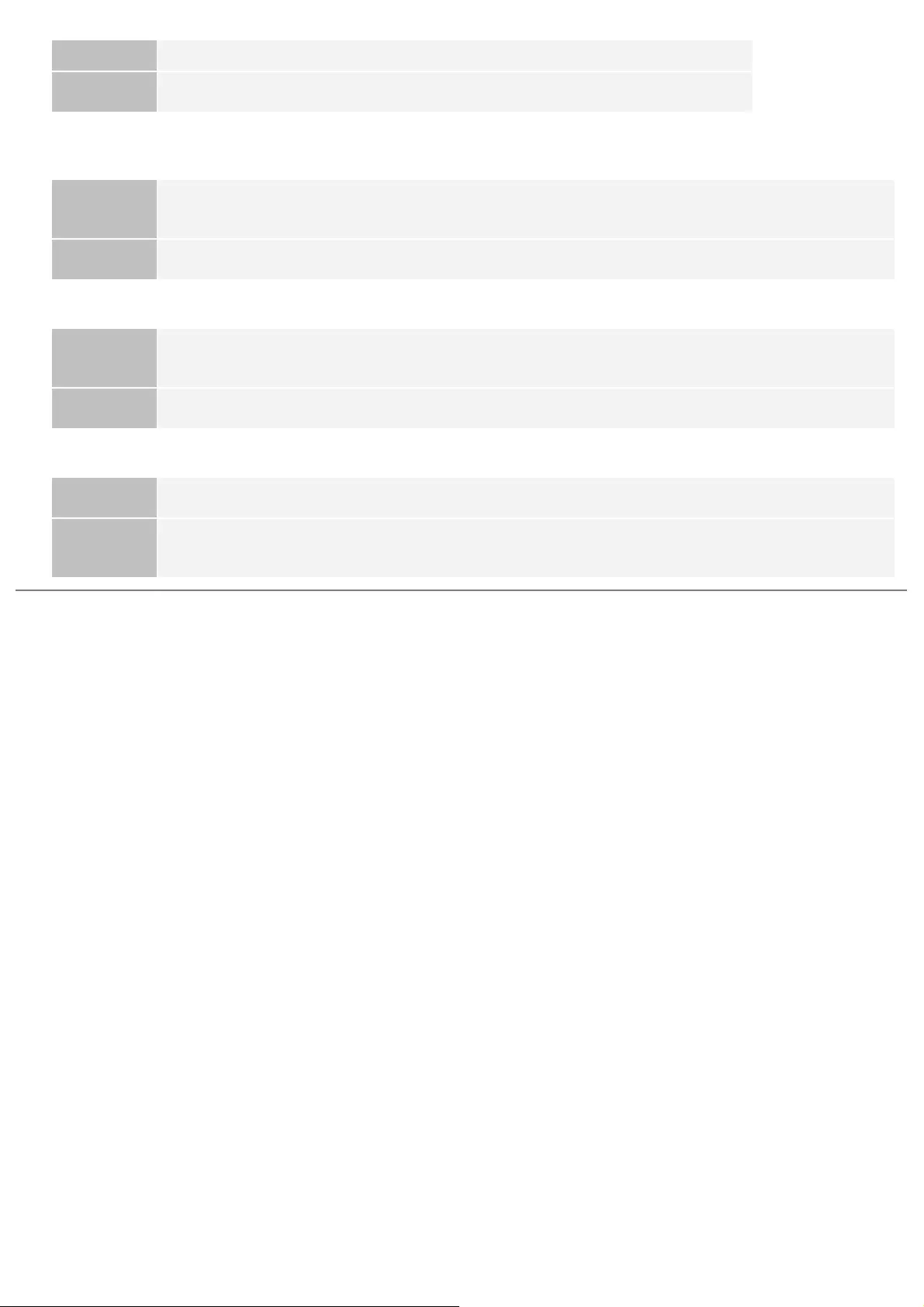
Problem The text string entered as the current password is different from the current password.
Action Enter the correct password.
The new password is incorrect. Enter the password with 8 to 32 single-byte alphanumeric
characters.
Problem The new password has under 8 characters or more than 33 characters. Illegal characters that cannot be
used in passwords have been used.
Action Enter a new password of between 8 and 32 alphanumeric characters (a to z, A to Z, and 0 to 9).
The new password and password to confirm do not match.
Problem The password cannot be changed because the new password and the confirmation password do not
match.
Action Enter a new password and the same text string as the confirmation password.
Error: <Error Details>
Problem An error has occurred for some reason. See <Error Details> for details.
Action If the solutions given in <Error Details> are unclear, contact your local authorized Canon dealer or sales
representatives.
㻤㻡㻢㻌㻛㻌㻥㻥㻤
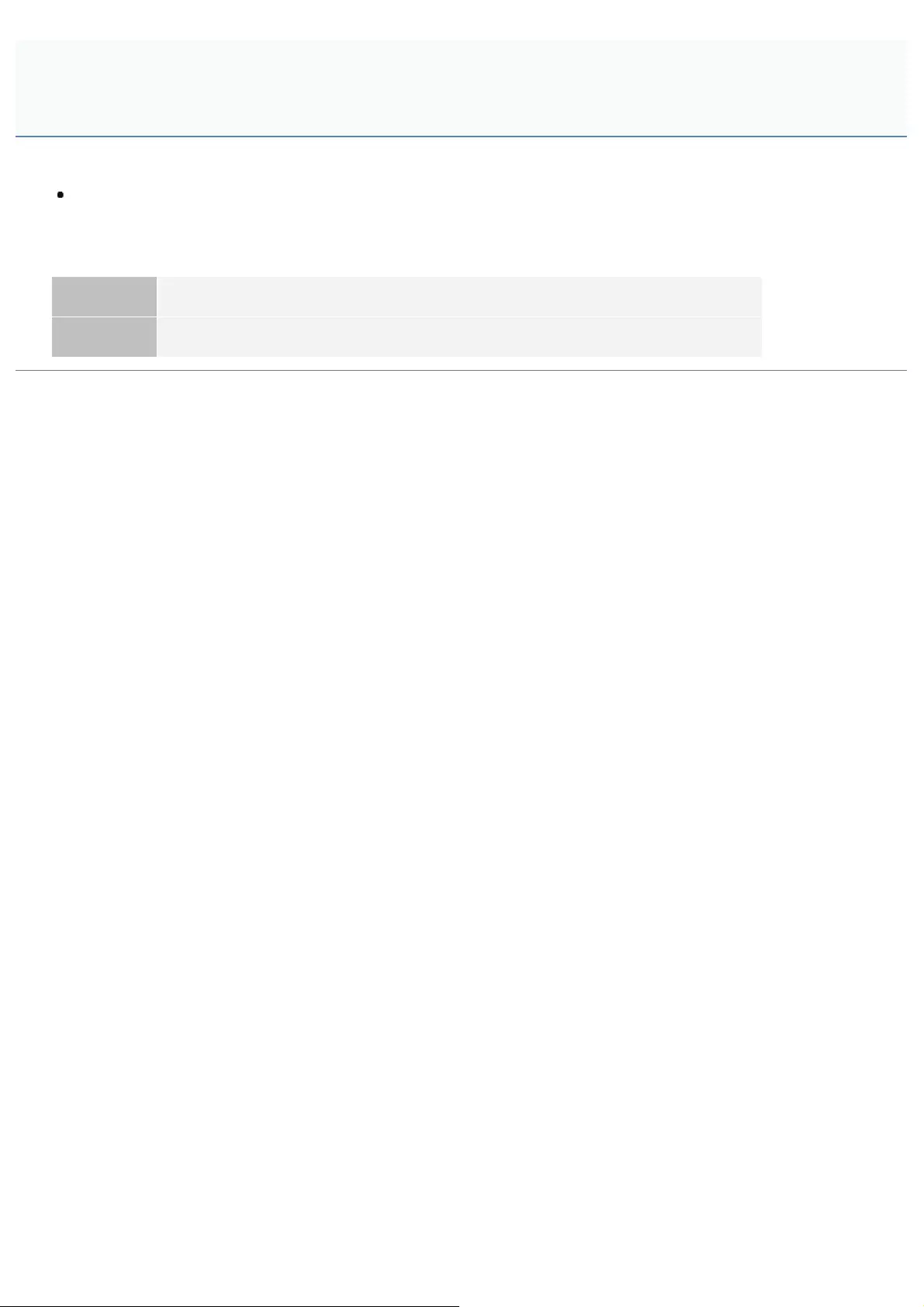
0258-0K7
<Could not delete MEAP application setting information because an error
occurred.>
Could not delete MEAP application setting information because an error occurred.
Problem An error has occurred for some reason, so the setting information could not be deleted.
Action Return to the previous page using the [Back] button.
Errors Relating to the [MEAP Application Setting Information
Management] Page
㻤㻡㻣㻌㻛㻌㻥㻥㻤
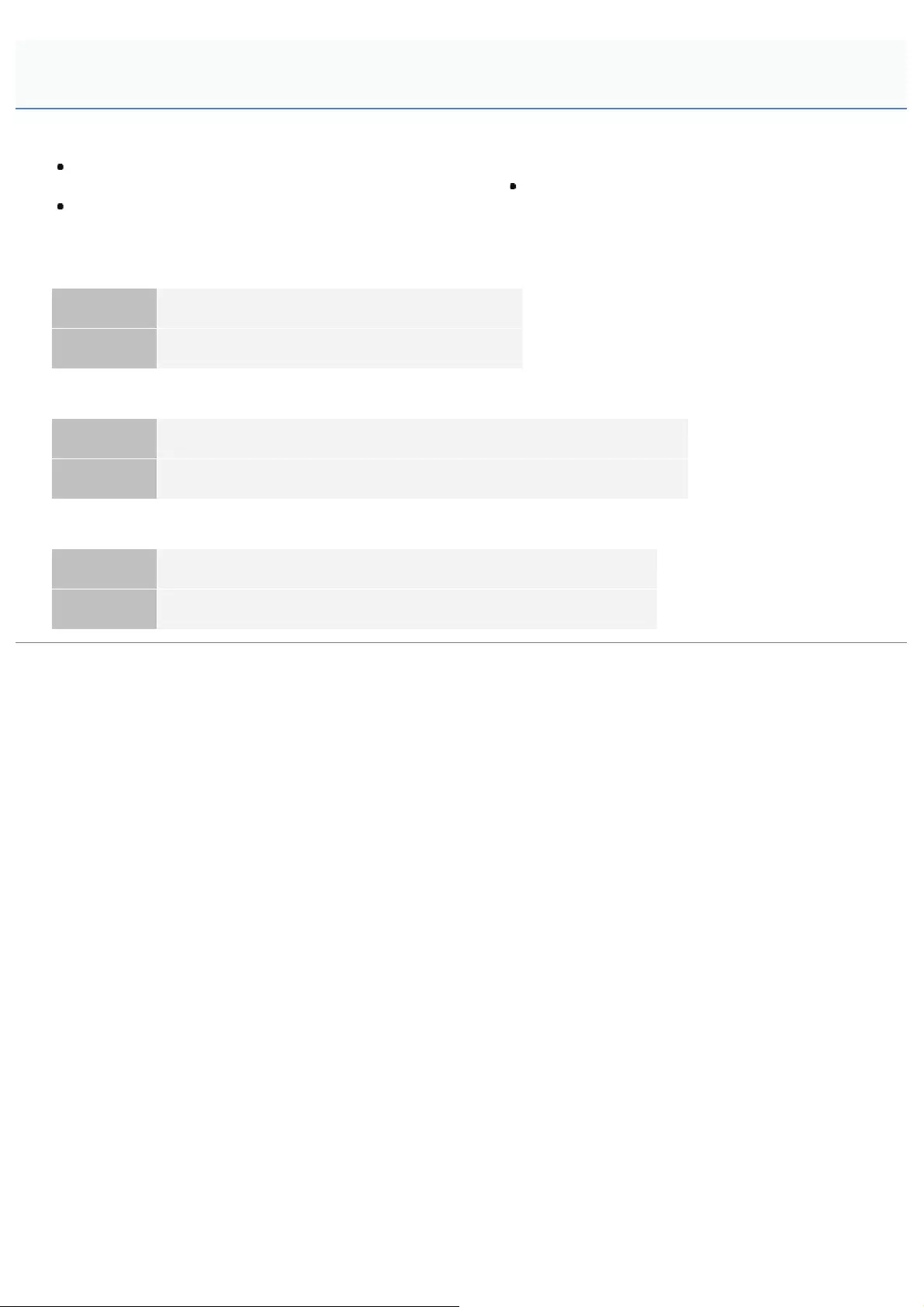
0258-0K8
<Cannot download application logs because application logs
do not exist.>
<Could not download application logs because an error
occurred.>
<Could not delete application logs because an
error occurred.>
Cannot download application logs because application logs do not exist.
Problem The application log does not exist.
Action Return to the previous page using the [Back] button.
Could not download application logs because an error occurred.
Problem An error has occurred for some reason, so the log could not be downloaded.
Action Return to the previous page using the [Back] button.
Could not delete application logs because an error occurred.
Problem An error has occurred for some reason, so the log could not be deleted.
Action Return to the previous page using the [Back] button.
Errors Relating to the [MEAP Application Log Management] Page
㻤㻡㻤㻌㻛㻌㻥㻥㻤

0258-0K9
<Cannot find the specified application. It may have been uninstalled by
another user.>
Cannot find the specified application. It may have been uninstalled by another user.
Problem The application for the attempted operation does not exist.
Action Return to the previous page using the [Back] button.
Other Errors
㻤㻡㻥㻌㻛㻌㻥㻥㻤
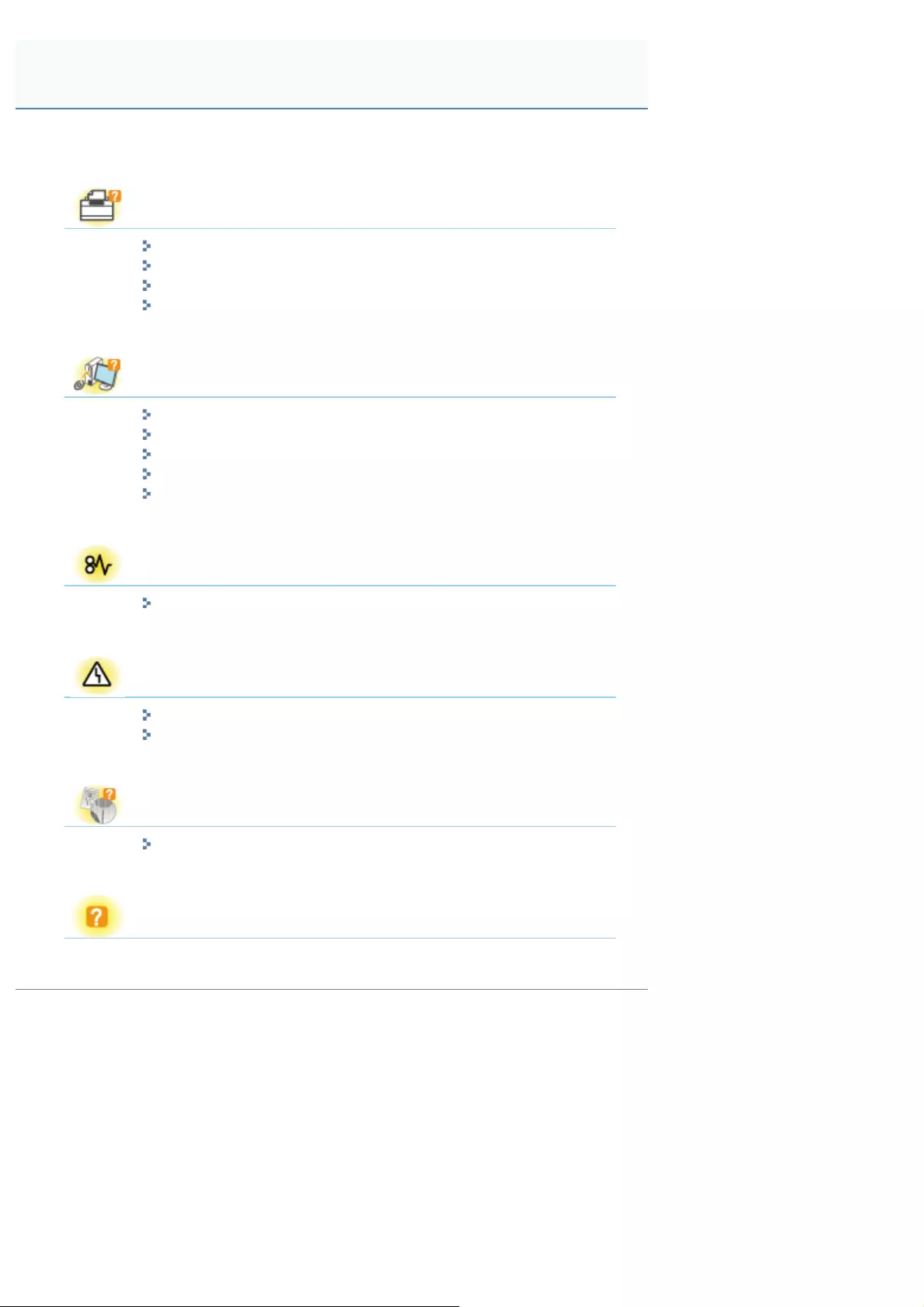
0258-0A9
Printer Unit Problems
Printing Cannot Be Performed
The Printer Takes a Long Time to Start the Print Job
You Cannot Turn the Printer ON
All the Indicators on the Network Interface Are Off
Driver Problems
You Cannot Install the Printer Driver
You Cannot Uninstall the Printer Driver
The Printer Driver Settings Cannot Be Changed
"Profiles" Cannot Be Selected or Edited
The Status of the Paper Feeder Cannot Be Obtained Automatically
Paper Jams
Paper Jams
Error Display
The Message Indicator Is On
A Message Appears in the Control Panel
Printout Problems
Poor Printout Results
Other Problems
Troubleshooting
㻤㻢㻜㻌㻛㻌㻥㻥㻤
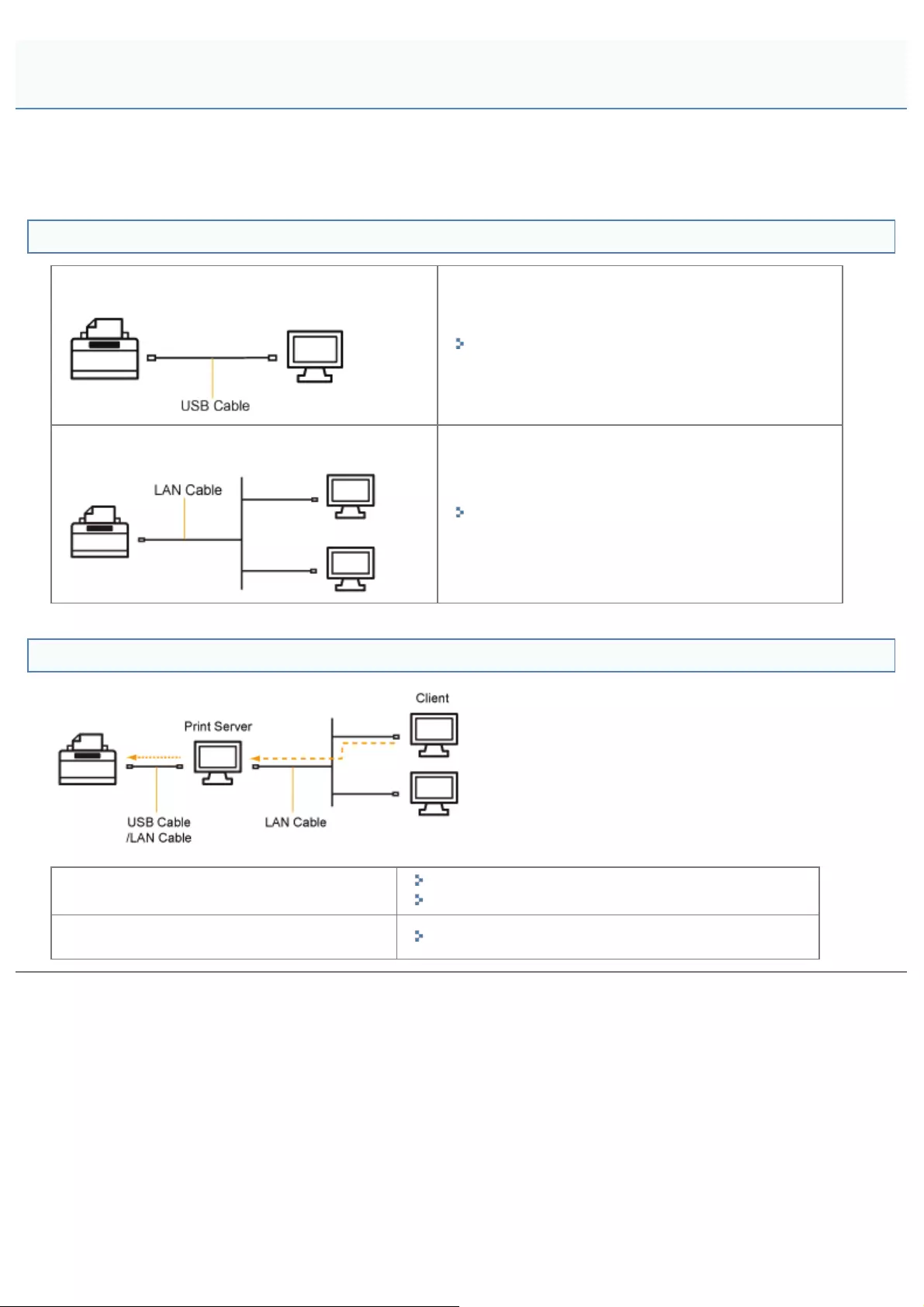
0258-0AA
The solutions for when printing cannot be performed vary depending on your environment. See the solutions according to
your environment.
If You Are Using the Printer by Direct Connection
If the printer is connected by a USB cable
"Printing Cannot Be Performed (USB Connection)"
If the printer is connected by a LAN cable
"Printing Cannot Be Performed (LAN Connection)"
If You Are Using the Printer in the Print Server Environment
If your computer is the print server "Printing Cannot Be Performed (USB Connection)"
"Printing Cannot Be Performed (LAN Connection)"
If your computer is a client computer "Printing Cannot Be Performed (via the Print Server)"
Printing Cannot Be Performed
㻤㻢㻝㻌㻛㻌㻥㻥㻤

0258-0AC
If you cannot print when the printer is connected to the computer by a USB cable, check the problem following the
questions below.
NOTE
For Macintosh users
This section describes the procedure for Windows as an example.
For details on the procedure for Macintosh, see "Driver Guide."
For details on the procedure for displaying "Driver Guide", see "Viewing the Driver Guide."
<Question 1> Is the printer turned ON?
Check if the Main Power indicator on the control panel is turned on.
ON To <Question 2>
OFF Turn the printer ON.
Cannot be turned ON "You Cannot Turn the Printer ON"
<Question 2> Check the indicators on the printer unit.
The Ready indicator is on. To <Question 3>
The Ready indicator is blinking. The printer is warming up. Please wait a moment.
The Message indicator is on. "The Message Indicator Is On"
The Job indicator is on. The printer is operating. Please wait a moment.
If the printer does not perform printing for a while, perform the print
data output or soft reset.
"Canceling a Job"
The Job indicator is blinking.
The Paper Source indicator is blinking. It is out of paper. Load paper.
"Paper Loading and Output"
Printing Cannot Be Performed (USB Connection)
㻤㻢㻞㻌㻛㻌㻥㻥㻤
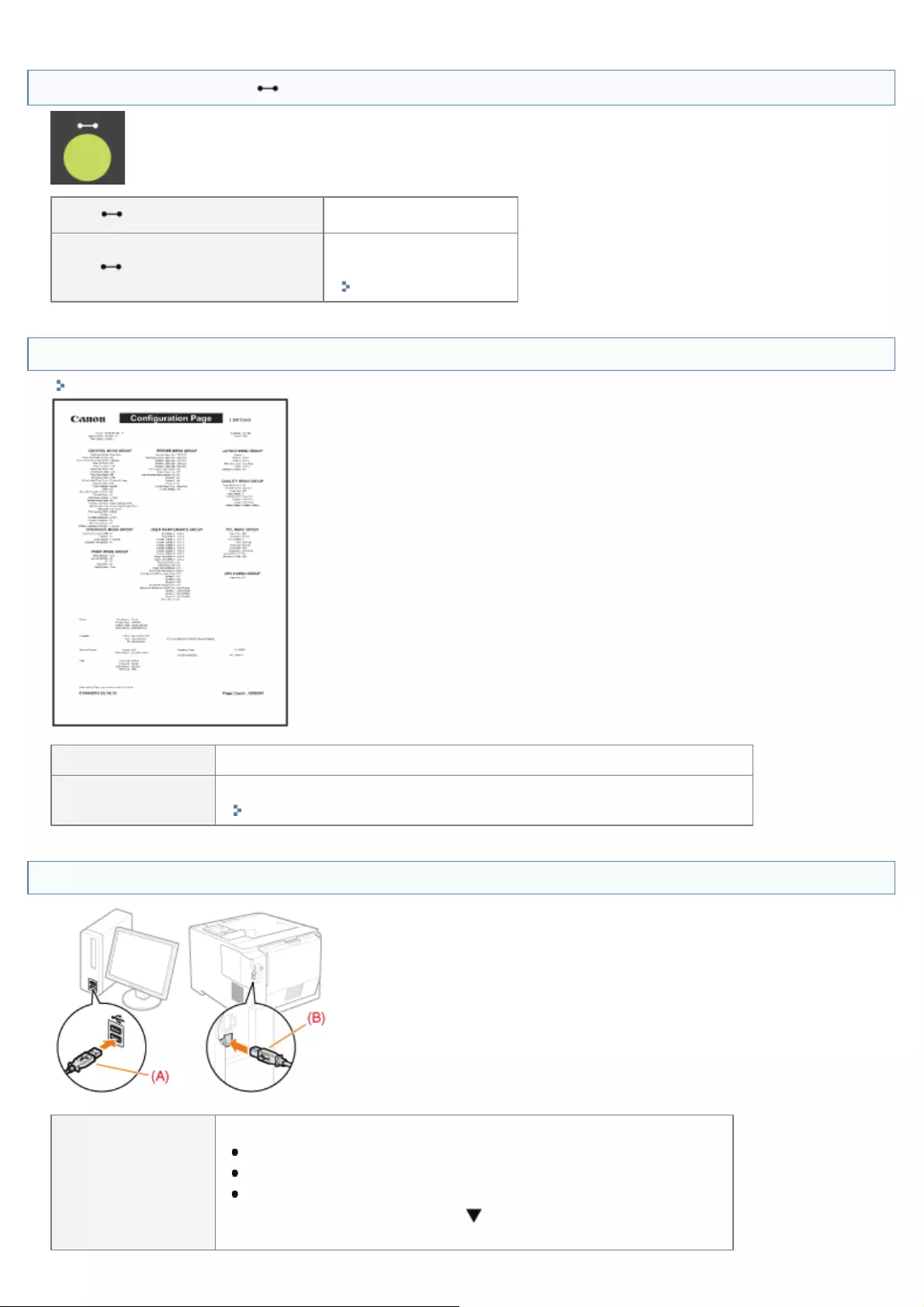
<Question 3> Check the Online indicator.
The Online indicator is on. To <Question 4>
The Online indicator is off.
The printer is offline.
Place it online.
"Online and Offline"
<Question 4> Can you print Configuration Page?
"Checking the Printer Settings"
Printable To <Question 5>
Not printable If an error message is displayed, solve the problem following the message.
"A Message Appears in the Control Panel"
<Question 5> Is the USB cable connected properly?
Connected
Try the following points.
If you are using a hub, connect the printer to the computer directly.
If you are using a long USB cable, replace it with the short one.
If you have another USB cable, use it.
If printing does not work, proceed to <Question 6>.
㻤㻢㻟㻌㻛㻌㻥㻥㻤
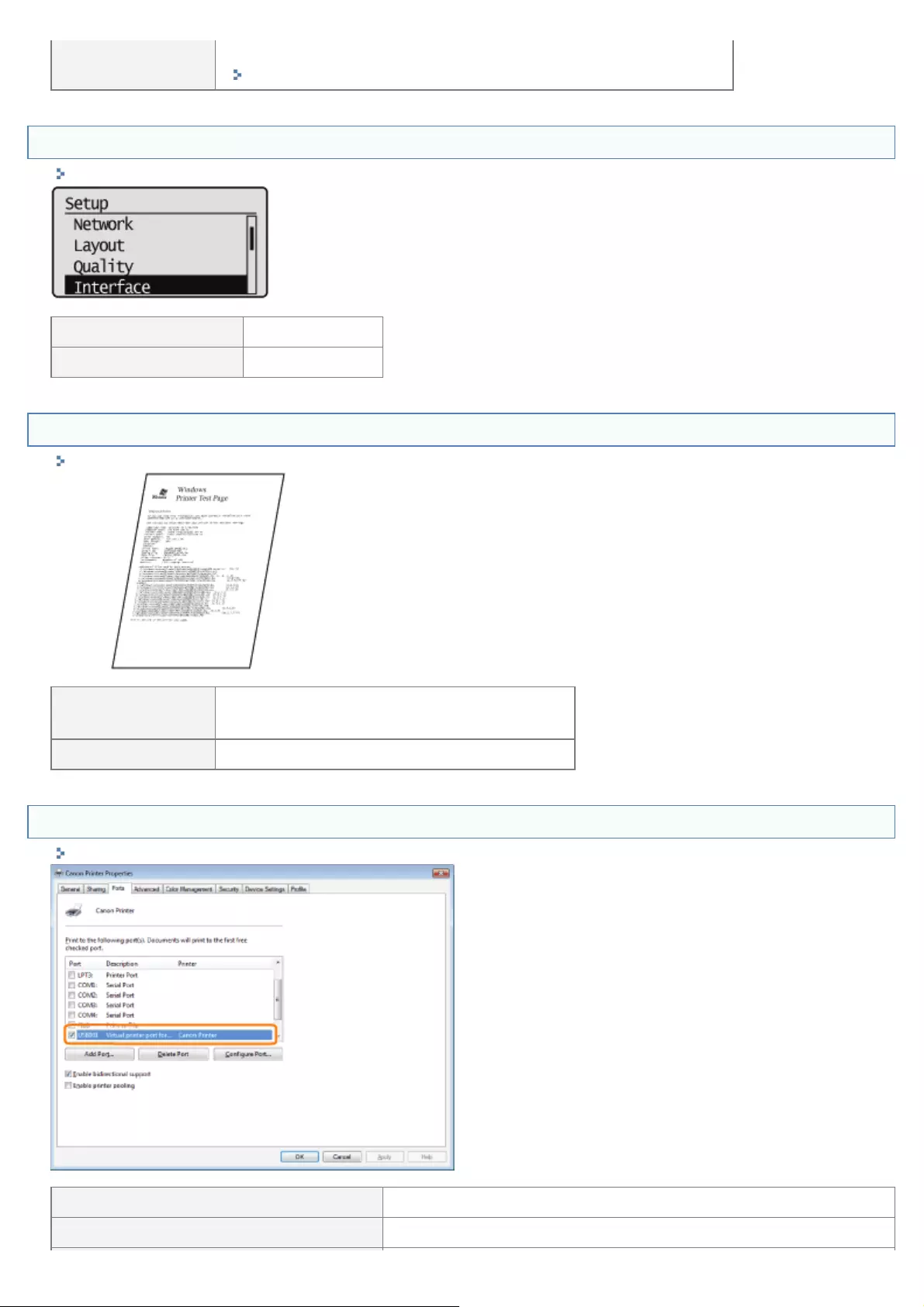
Unconnected Connect the cable properly.
"Connecting to a Computer"
<Question 6> Check the settings for [Interface Selection].
"[Setup] Menu ([Interface] Options)"
[USB] is set to [On]. To <Question 7>
[USB] is set to [Off]. Set it to [On].
<Question 7> Can you print a test page in Windows?
"Basic Operations/Various Information for Windows"
Printable There is no problem with the printer and driver.
Check the printing preferences in the application.
Not printable To <Question 8>
<Question 8> Is the port to be used selected correctly?
"Basic Operations/Various Information for Windows"
Selected To <Question 9>
Not selected Select the correct port.
㻤㻢㻠㻌㻛㻌㻥㻥㻤
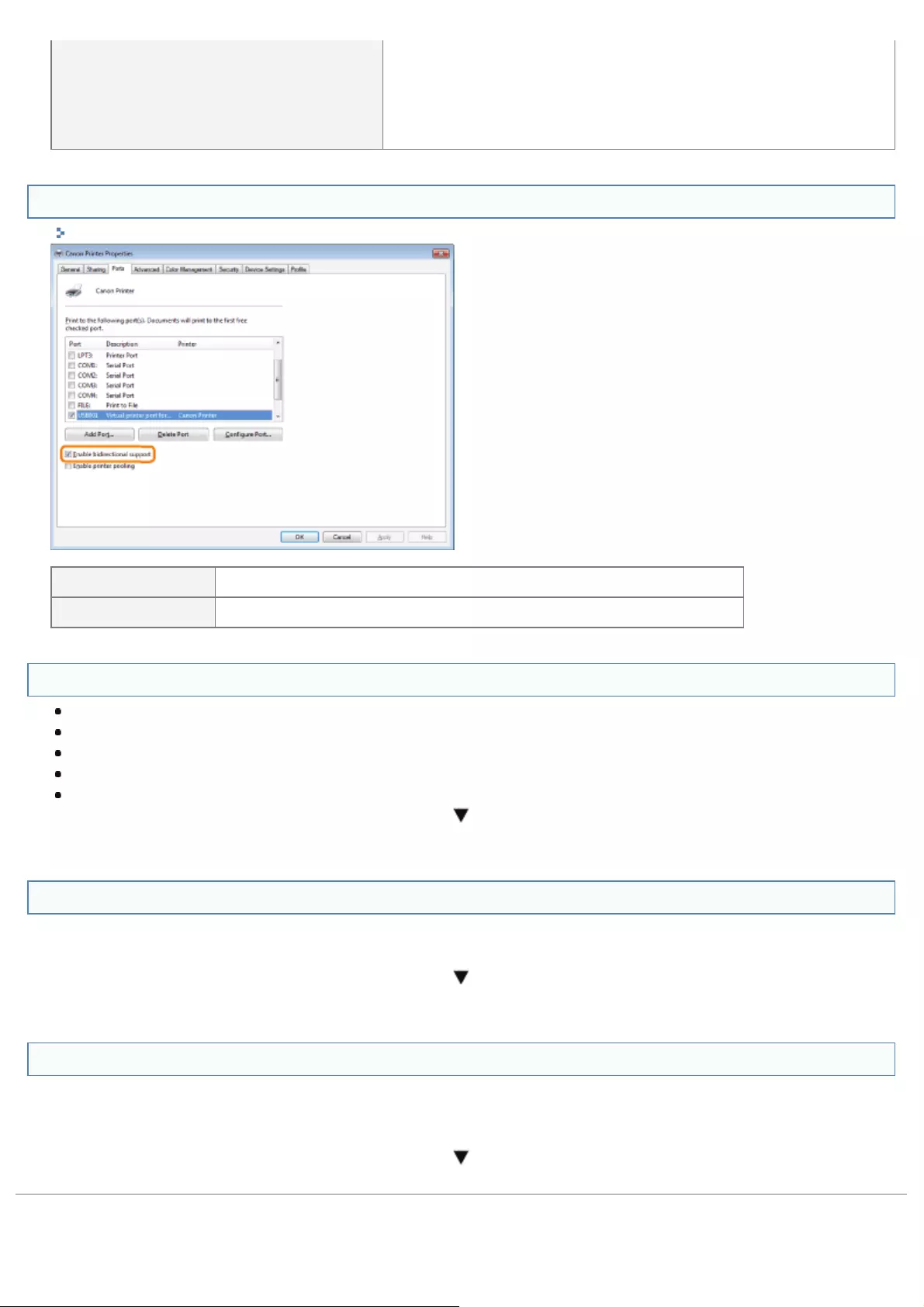
The port to be used cannot be found.
Install the printer driver again.
For details on the procedure for installing and uninstalling the printer
driver, see "Printer Driver Installation Guide."
For details on the procedure for viewing "Printer Driver Installation
Guide", see "Installation."
<Question 9> Is bi-directional communication enabled?
"Basic Operations/Various Information for Windows"
Enabled To <Question 10>
Not enabled Enable bi-directional communication and restart the computer and printer.
<Question 10> Try the following points.
Make resident software invalid including security software.
If any other devices are connected to your computer by USB connection, disconnect those unneeded.
If drivers or software of any other devices (USB connection) is installed on your computer, uninstall those unneeded.
Connect the USB cable to another USB port on your computer.
Connect the printer to another computer with a USB cable.
If printing does not work, proceed to <Question 11>.
<Question 11> Install the printer driver again.
For details on the procedure for installing the printer driver, see "Printer Driver Installation Guide."
For details on the procedure for viewing "Printer Driver Installation Guide", see "Installation."
If printing does not work, proceed to <Question 12>.
<Question 12> Uninstall the USB class driver, and then install the printer driver again.
For details on the procedure for uninstalling the USB class driver and installing the printer driver, see "Printer Driver
Installation Guide" on the User Software CD-ROM.
For details on the procedure for viewing "Printer Driver Installation Guide", see "Installation."
If printing does not work, contact your local authorized Canon dealer.
㻤㻢㻡㻌㻛㻌㻥㻥㻤
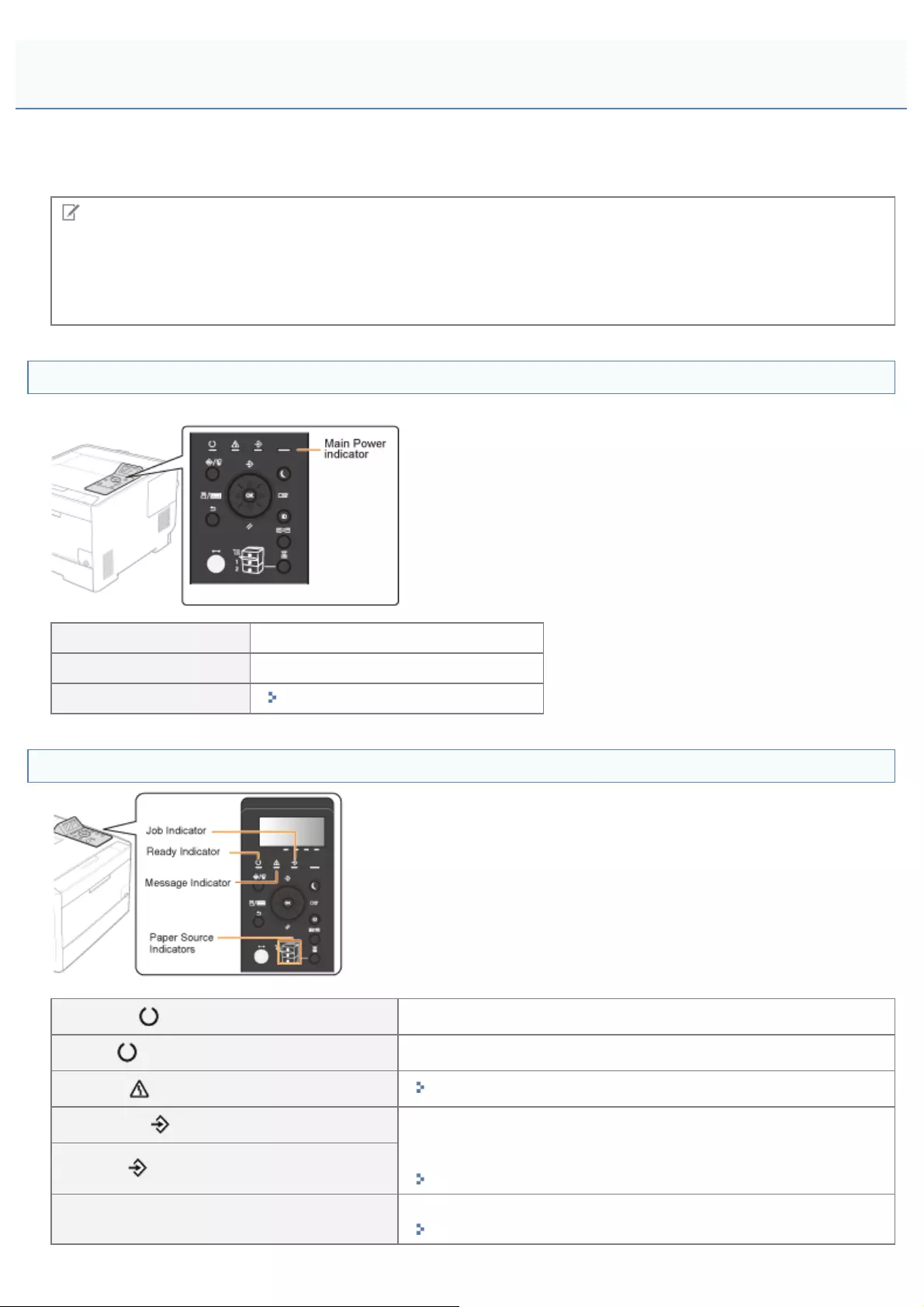
0258-0AE
If you cannot print when the printer is connected to the computer by a LAN cable, check the problem following the
questions below.
NOTE
For Macintosh users
This section describes the procedure for Windows as an example.
For details on the procedure for Macintosh, see "Driver Guide."
For details on the procedure for displaying "Driver Guide", see "Viewing the Driver Guide."
<Question 1> Is the printer turned ON?
Check if the Main Power indicator on the control panel is turned on.
ON To <Question 2>
OFF Turn the printer ON.
Cannot be turned ON "You Cannot Turn the Printer ON"
<Question 2> Check the indicators on the printer unit.
The Ready indicator is on. To <Question 3>
The Ready indicator is blinking. The printer is warming up. Please wait a moment.
The Message indicator is on. "The Message Indicator Is On"
The Job indicator is on. The printer is operating. Please wait a moment.
If the printer does not perform printing for a while, perform the print
data output or soft reset.
"Canceling a Job"
The Job indicator is blinking.
The Paper Source indicator is blinking. Load paper.
"Paper Loading and Output"
Printing Cannot Be Performed (LAN Connection)
㻤㻢㻢㻌㻛㻌㻥㻥㻤
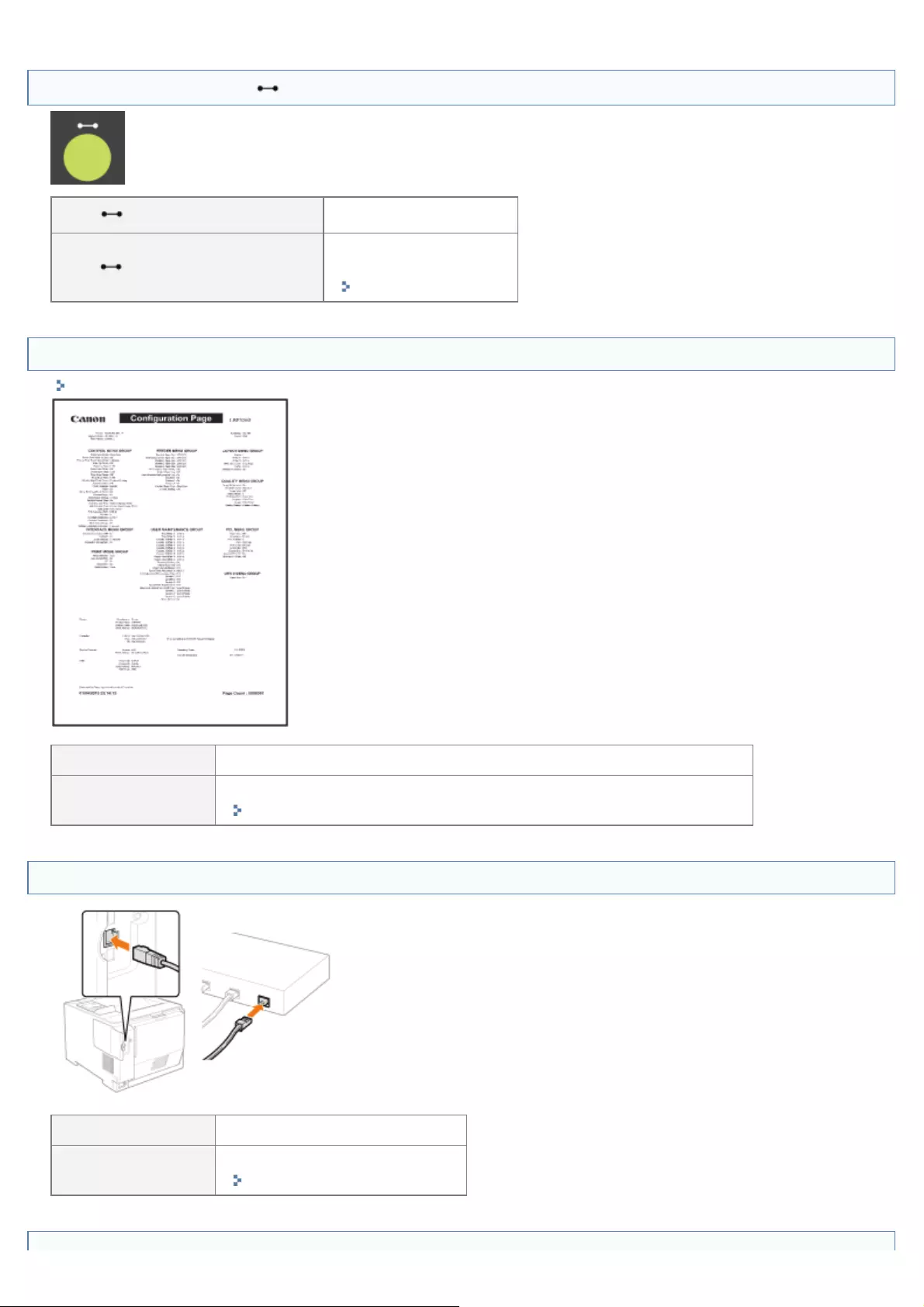
<Question 3> Check the Online indicator.
The Online indicator is on. To <Question 4>
The Online indicator is off.
The printer is offline.
Place it online.
"Online and Offline"
<Question 4> Can you print Configuration Page?
"Checking the Printer Settings"
Printable To <Question 5>
Not printable If an error message is displayed, solve the problem following the message.
"A Message Appears in the Control Panel"
<Question 5> Is the LAN cable connected properly?
Connected To <Question 6>
Unconnected Connect the cable properly.
"Connecting to a Computer"
㻤㻢㻣㻌㻛㻌㻥㻥㻤
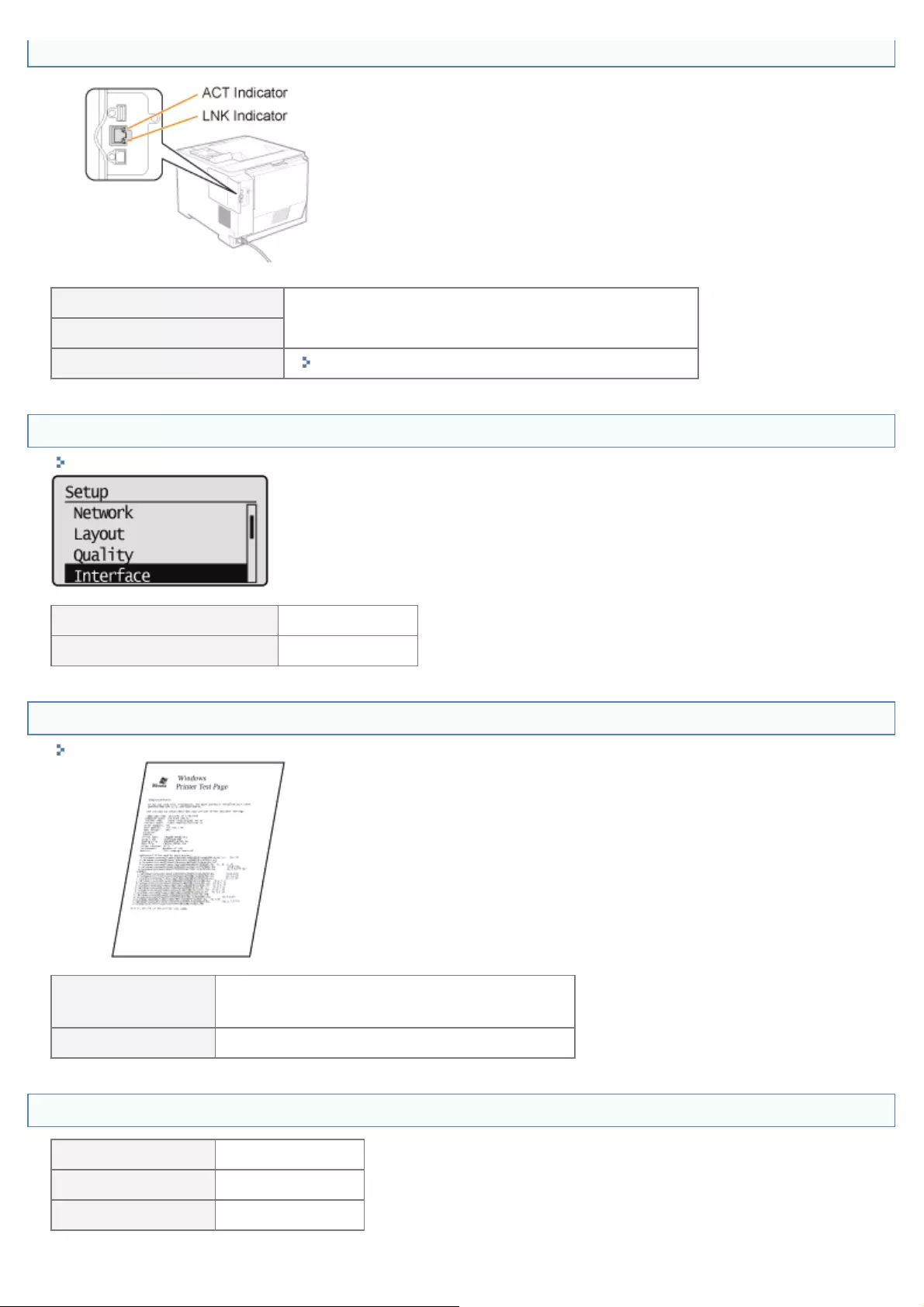
<Question 6> Check the indicators on the network interface.
The ACT indicator is on. To <Question 7>
The LNK indicator is on.
All the indicators are off. "All the Indicators on the Network Interface Are Off"
<Question 7> Check the settings for [Interface Selection].
"[Setup] Menu ([Interface] Options)"
[Network] is set to [On]. To <Question 8>
[Network] is set to [Off]. Set it to [On].
<Question 8> Can you print a test page in Windows?
"Basic Operations/Various Information for Windows"
Printable There is no problem with the printer and driver.
Check the printing preferences in the application.
Not printable To <Question 9>
<Question 9> Which network protocol are you using?
TCP/IP To <Question 10>
NetWare or SMB To <Question 14>
AppleTalk To <Question 17>
㻤㻢㻤㻌㻛㻌㻥㻥㻤
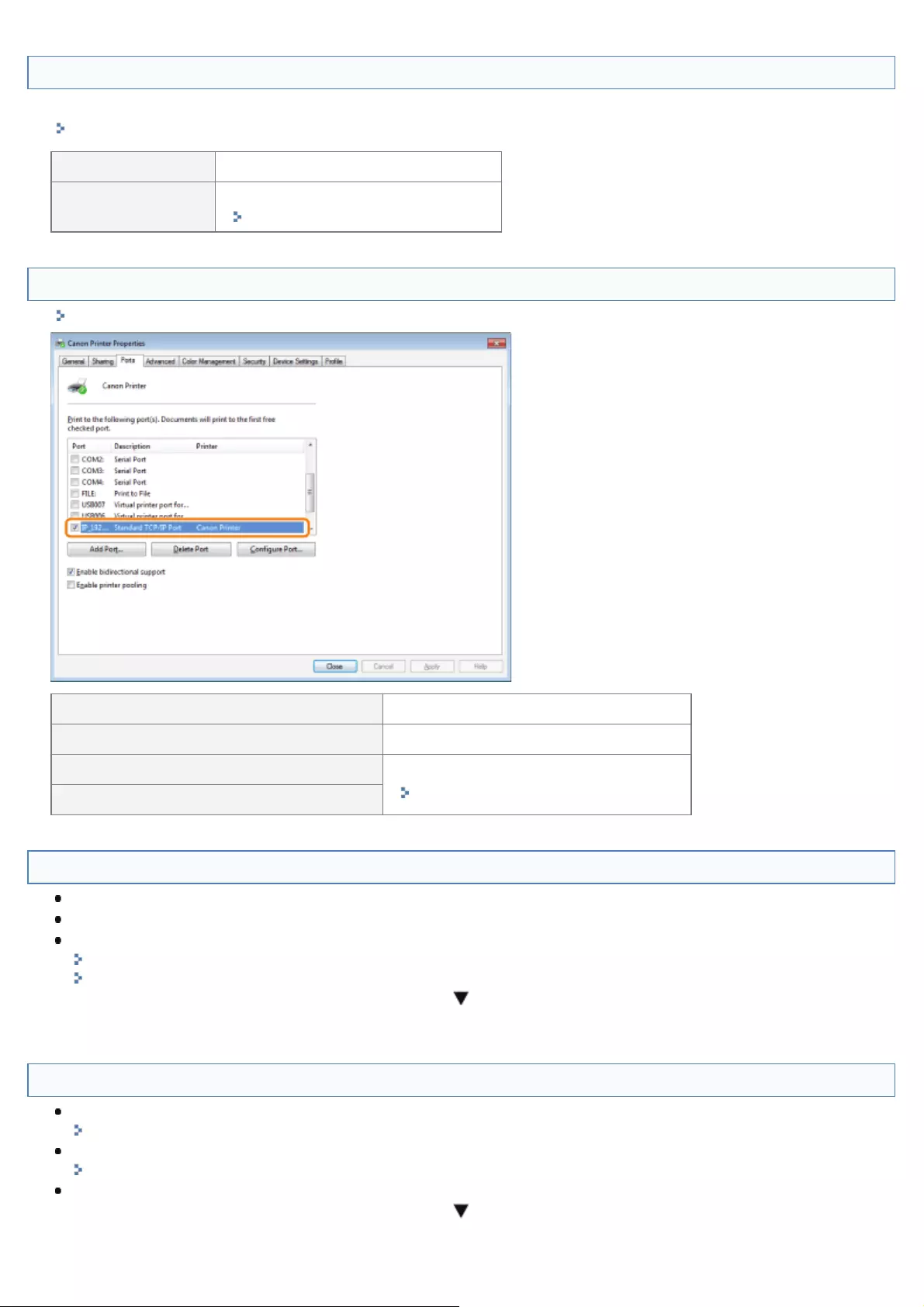
<Question 10> Is the IP address set properly?
Check that the IP address is set properly using the PING command.
"Basic Operations/Various Information for Windows"
Set To <Question 11>
Not set Set the IP address properly.
"Setting the IP Address (IP v. 4)"
<Question 11> Is the port to be used selected correctly?
"Basic Operations/Various Information for Windows"
Selected To <Question 12>
Not selected Select the correct port.
The port to be used cannot be found. Create a port.
"Connecting the Printer (LPD/RAW)"
The IP address was changed.
<Question 12> Check the following points.
The printer is specified as the default printer.
The TCP/IP protocol is running.
The users who can print are not restricted.
"Restricting the Users Who Can Print or Perform the Printer Settings"
"Restricting the Users Who Can Access"
If printing does not work, proceed to <Question 13>.
<Question 13> Try the following points.
Change the printing protocol to LPR.
"Basic Operations/Various Information for Windows"
Enable the LPR byte count.
"Basic Operations/Various Information for Windows"
Shorten the name of the file to be printed.
If printing does not work, proceed to <Question 19>.
㻤㻢㻥㻌㻛㻌㻥㻥㻤
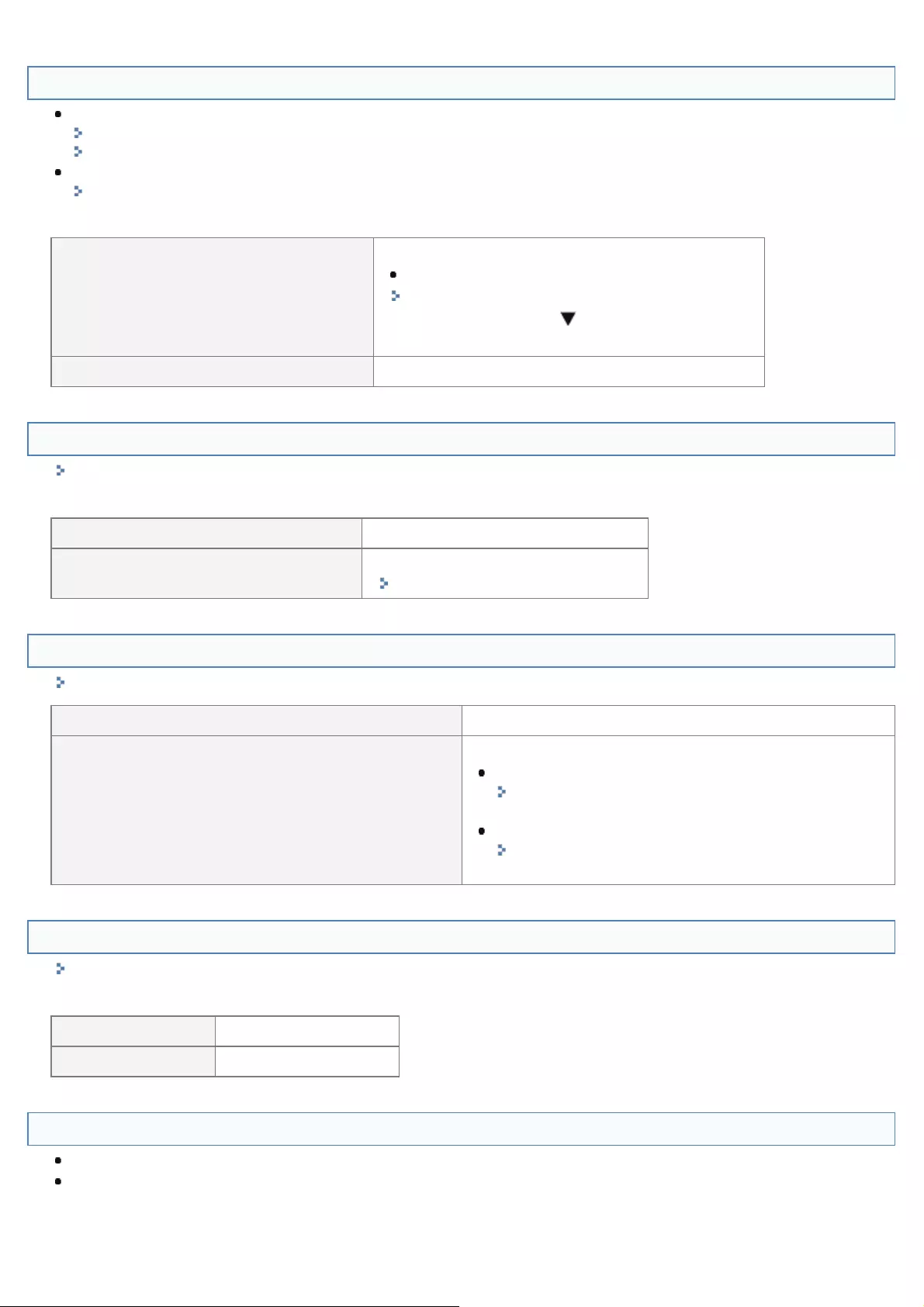
<Question 14> Is NetWare or SMB set properly?
When using NetWare
"Configuring NetWare"
"Configuring the Protocol Settings"
When using SMB
"Configuring the Protocol Settings"
If you are using the DHCP server and WINS server, check if the servers are linked properly.
NetWare or SMB is set properly.
Try the following point.
Set [Network Delay Time] longer than usual.
"Specifying the Setting for Startup Waiting Time"
If printing does not work, proceed to <Question 15>.
NetWare or SMB is not set properly. Set NetWare or SMB properly.
<Question 15> Is the IP address set properly?
"Basic Operations/Various Information for Windows"
SMB printing does not support IP v. 6.
The IP address is set properly. To <Question 16>.
The IP address is not set properly. Set the IP address properly.
"Setting the IP Address (IP v. 4)"
<Question 16> Is the port to be used selected correctly?
"Basic Operations/Various Information for Windows"
The port is selected correctly. To <Question 19>.
The port is not selected properly.
Or
The settings for NetWare or SMB are changed.
Create the appropriate port.
When using NetWare
"Network Settings for the Printer
(NetWare) (LBP7680Cx Only)"
When using SMB
"Network Settings for the Printer (SMB) (LBP7680Cx
Only)"
<Question 17> Is AppleTalk set properly?
"Configuring the Protocol Settings"
In particular, make sure that the zone in which the printer exists is configured properly in [Zone].
Set To <Question 18>
Not set Set AppleTalk properly.
<Question 18> Check the following points.
The printer destination is set properly.
AppleTalk is available.
For details on the procedure for setting the printer destination, see "Driver Guide."
For details on the procedure for displaying "Driver Guide", see "Viewing the Driver Guide."
㻤㻣㻜㻌㻛㻌㻥㻥㻤
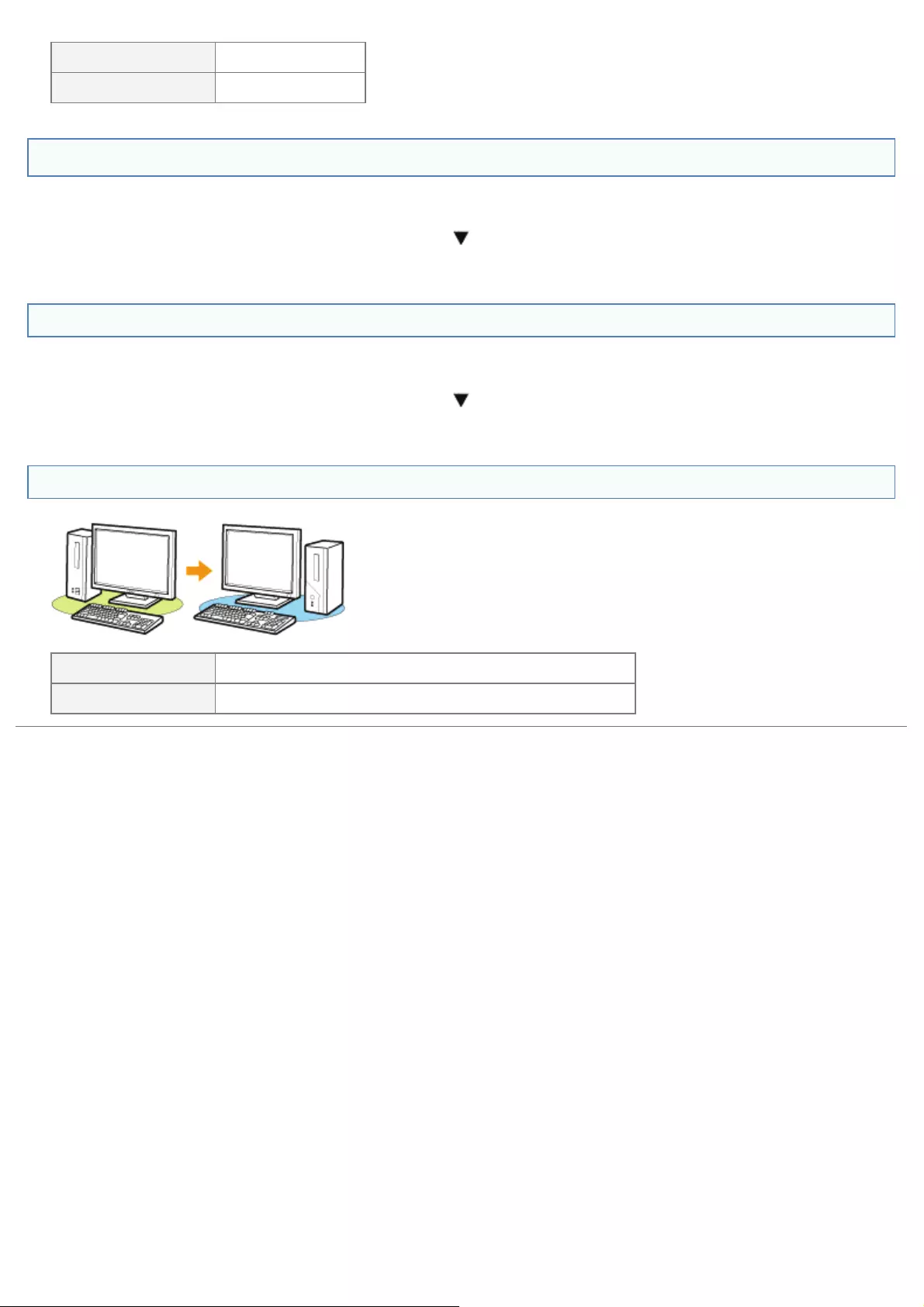
Set To <Question 19>
Not set Set them properly.
<Question 19> Connect the printer and computer directly with the cross-type* LAN cable.
*This is a LAN cable which is used to connect a printer and computer directly without a hub (LAN network).
If printing does not work or if you cannot prepare a cross-type LAN cable, proceed to <Question 20>.
<Question 20> Install the printer driver again.
For details on the procedure for installing the printer driver, see "Printer Driver Installation Guide."
For details on the procedure for viewing "Printer Driver Installation Guide", see "Installation."
If printing does not work, proceed to <Question 21>.
<Question 21> Can you print from another computer (LAN connection)?
Printable Make resident software invalid including security software.
Not printable Contact your local authorized Canon dealer.
㻤㻣㻝㻌㻛㻌㻥㻥㻤
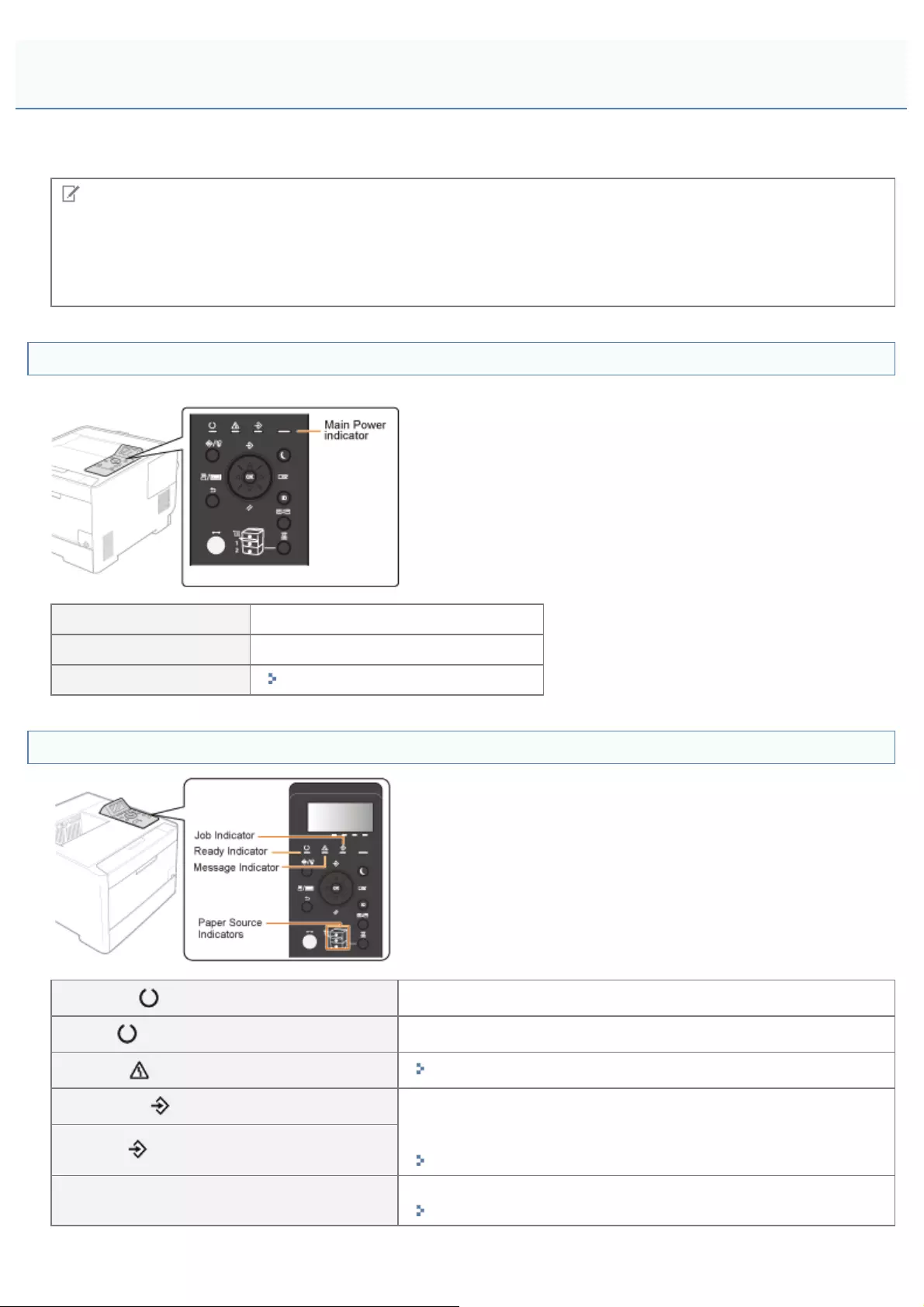
0258-0AF
If you cannot print when the printer is used via the print server, check the problem following the questions below.
NOTE
For Macintosh users
This section describes the procedure for Windows as an example.
For details on the procedure for Macintosh, see "Driver Guide."
For details on the procedure for displaying "Driver Guide", see "Viewing the Driver Guide."
<Question 1> Is the printer turned ON?
Check if the Main Power indicator on the control panel is turned on.
ON To <Question 2>
OFF Turn the printer ON.
Cannot be turned ON "You Cannot Turn the Printer ON"
<Question 2> Check the indicators on the printer unit.
The Ready indicator is on. To <Question 3>
The Ready indicator is blinking. The printer is warming up. Please wait a moment.
The Message indicator is on. "The Message Indicator Is On"
The Job indicator is on. The printer is operating. Please wait a moment.
If the printer does not perform printing for a while, perform the print
data output or soft reset.
"Canceling a Job"
The Job indicator is blinking.
The Paper Source indicator is blinking. Load paper.
"Paper Loading and Output"
Printing Cannot Be Performed (via the Print Server)
㻤㻣㻞㻌㻛㻌㻥㻥㻤
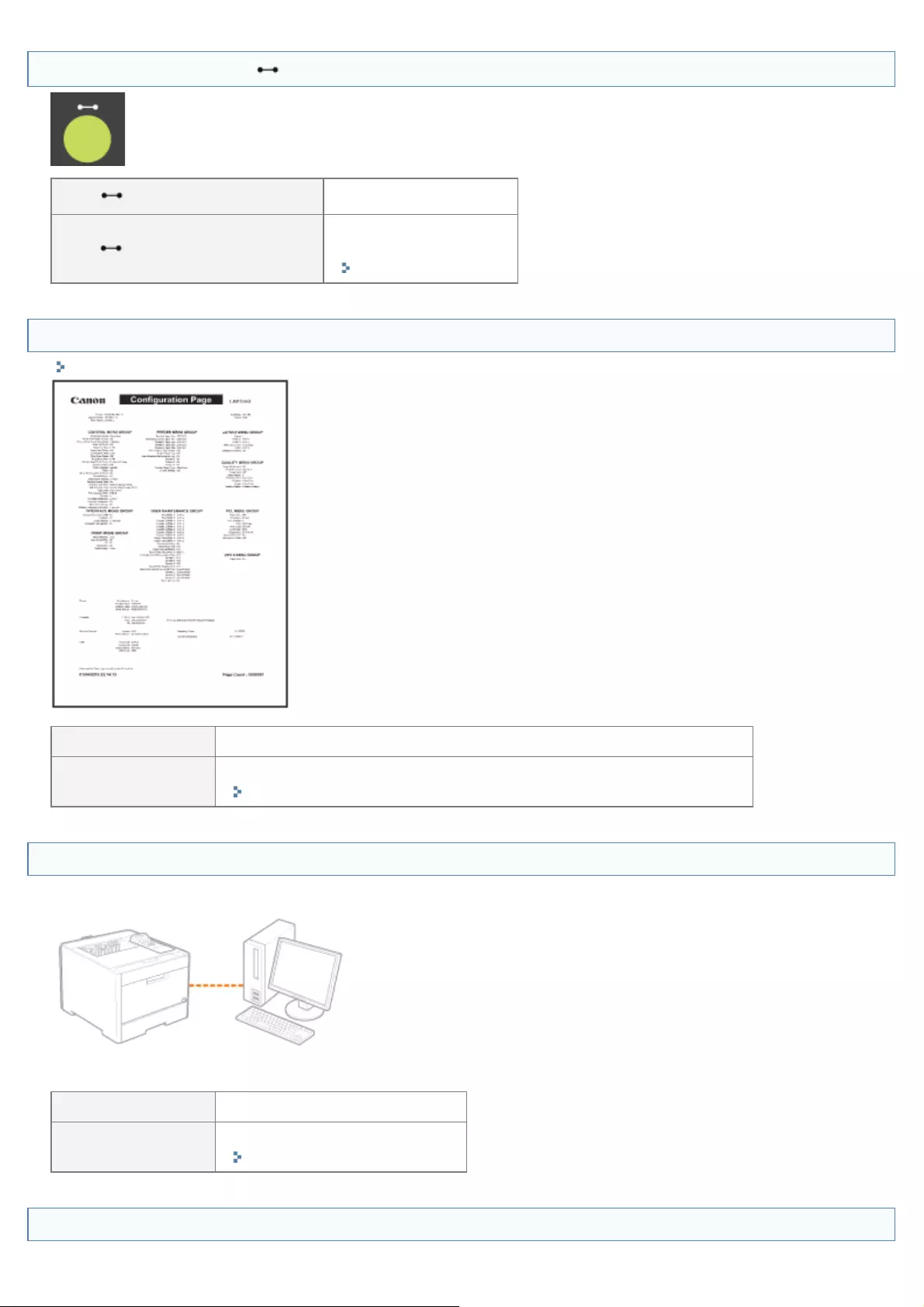
<Question 3> Check the Online indicator.
The Online indicator is on. To <Question 4>
The Online indicator is off.
The printer is offline.
Place it online.
"Online and Offline"
<Question 4> Can you print Configuration Page?
"Checking the Printer Settings"
Printable To <Question 5>
Not printable If an error message is displayed, solve the problem following the message.
"A Message Appears in the Control Panel"
<Question 5> Is the printer connected to the print server properly?
Connected To <Question 6>
Unconnected Connect them properly.
"Connecting to a Computer"
<Question 6> Can your computer be connected to the print server or the shared printer?
㻤㻣㻟㻌㻛㻌㻥㻥㻤

Can be connected To <Question 7>
Cannot be connected "The Print Server for Connection Cannot Be Found"
"The Shared Printer Cannot Be Accessed"
<Question 7> Check the following points.
The print server is connected to the network properly.
The additional driver (alternate driver) is updated properly.
Printing can be performed from the print server.
If printing does not work, proceed to <Question 8>.
<Question 8> Can you print a test page in Windows?
"Basic Operations/Various Information for Windows"
Printable There is no problem with the printer and driver.
Check the printing preferences in the application.
Not printable To <Question 9>
<Question 9> Is the printer on the print server displayed on the network?
"Basic Operations/Various Information for Windows"
㻤㻣㻠㻌㻛㻌㻥㻥㻤

Displayed To <Question 10>
Not displayed Ask your network administrator about the problem.
<Question 10> Install the printer driver again.
For details on the procedure for installing the printer driver, see "Printer Driver Installation Guide."
For details on the procedure for viewing "Printer Driver Installation Guide", see "Installation."
If printing does not work, proceed to <Question 11>.
<Question 11> Can another client print?
Printable Make resident software invalid including security software.
Not printable Contact your local authorized Canon dealer.
㻤㻣㻡㻌㻛㻌㻥㻥㻤
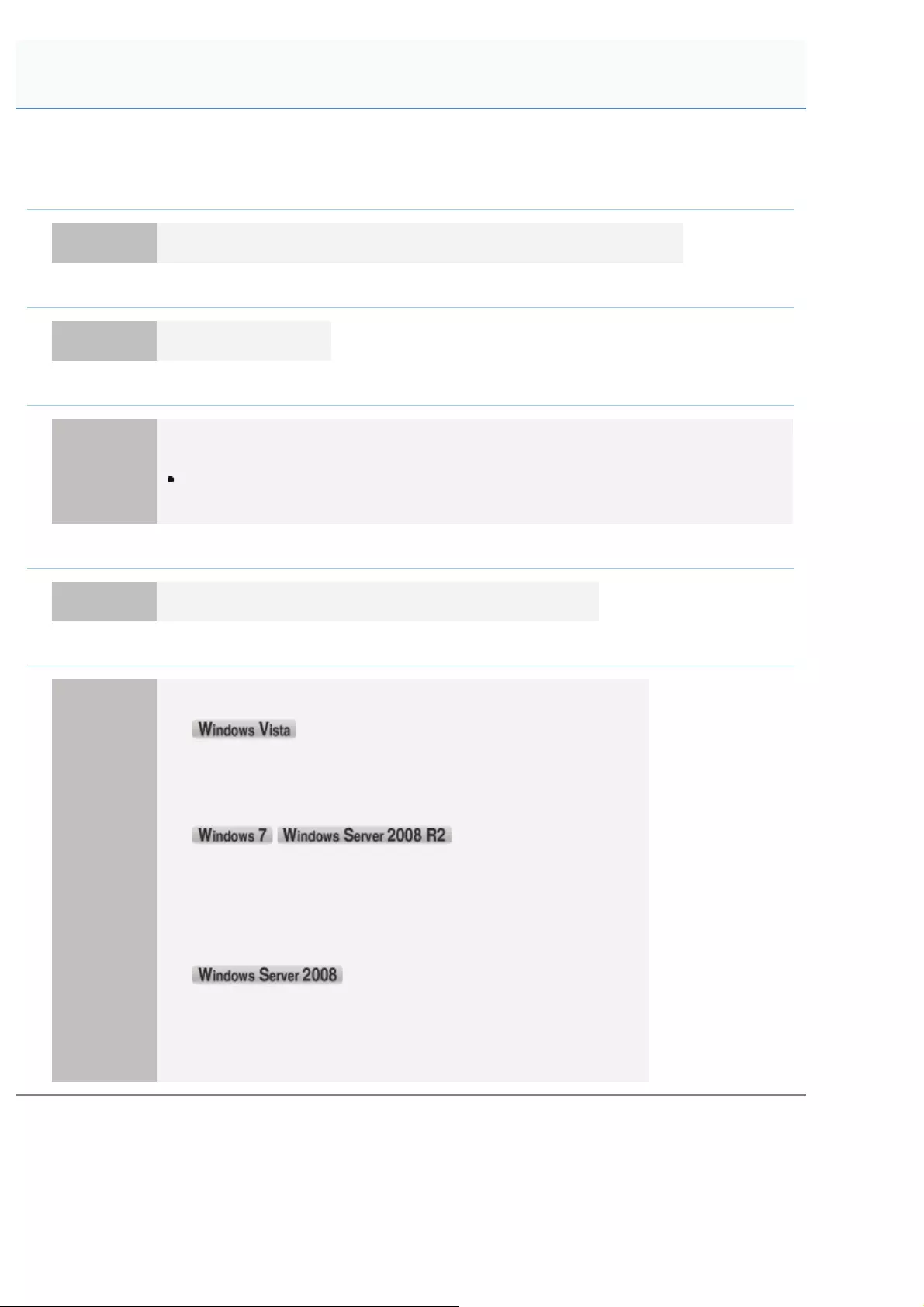
0258-0AH
Perform one of the following solutions according to the cause.
<Cause 1> The LAN cable is not connected properly.
Solution Connect the print server to the client computer with the LAN cable properly.
<Cause 2> The print server has not been started up.
Solution Start up the print server.
<Cause 3> The printer is not specified as a shared printer.
Solution
Specify the printer as a shared printer.
For details, see the following item in "Printer Driver Installation Guide."
"Installation" - "Print Server Settings"
For details on the procedure for viewing "Printer Driver Installation Guide", see "Installation."
<Cause 4> The user does not have permission to access the print server or printer.
Solution Ask your network administrator to change the user permissions.
<Cause 5> [Network discovery] is not enabled. (Windows Vista, 7, and Server 2008)
Solution
Perform either of the following procedures.
1. From the [Start] menu, select [Control Panel].
2. Click [View network status and tasks].
3. Set [Network discovery] to [On].
1. From the [Start] menu, select [Control Panel].
2. Click [View network status and tasks].
3. Click [Change advanced sharing settings].
4. Specify [Turn on network discovery] in [Network discovery].
1. From the [Start] menu, select [Control Panel].
2. Double-click [Network and Sharing Center].
3. Set [Network discovery] to [On].
The Print Server for Connection Cannot Be Found
㻤㻣㻢㻌㻛㻌㻥㻥㻤
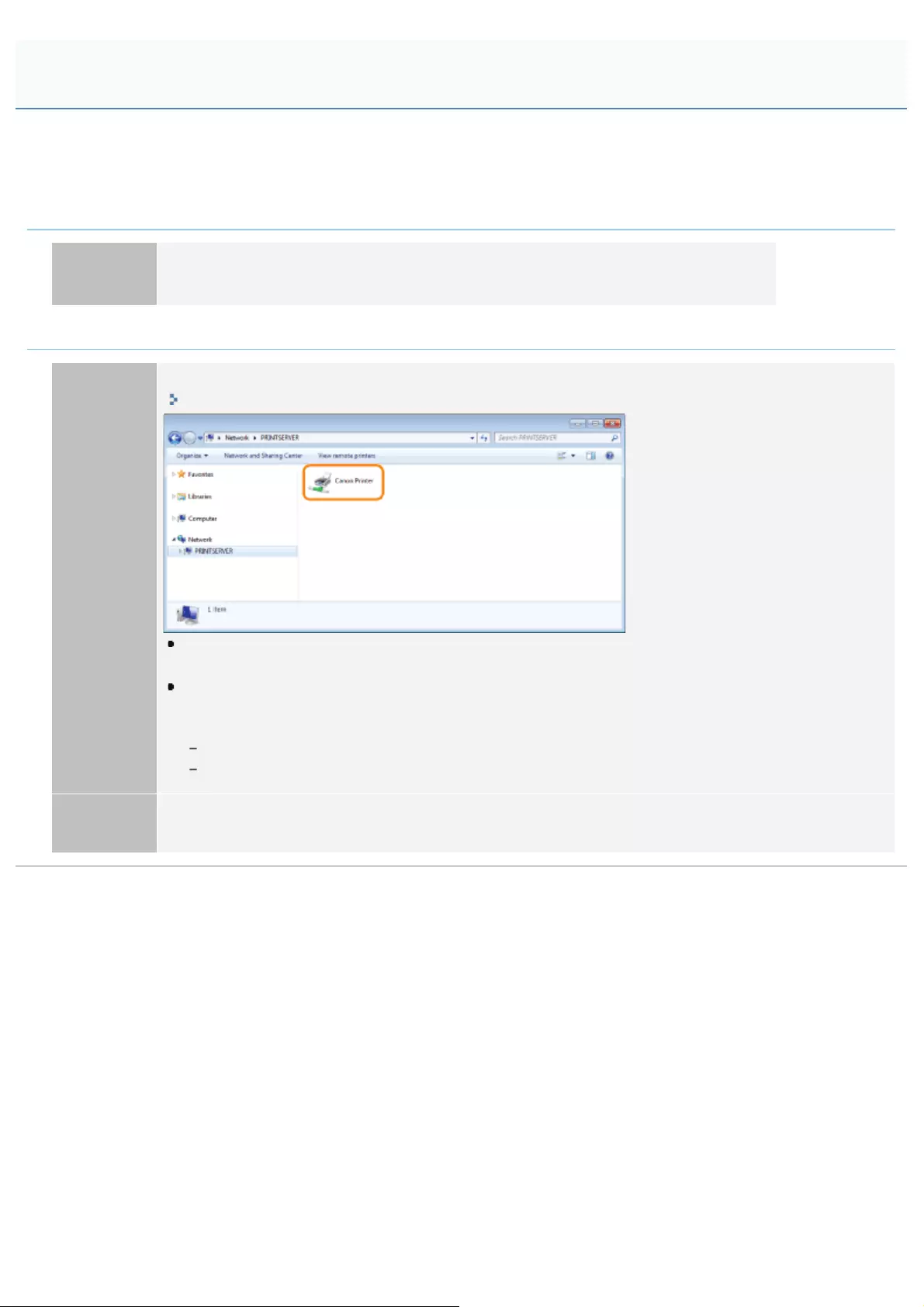
0258-0AJ
Perform one of the following solutions according to the cause.
<Cause 1> The user of the computer to be used is not registered, or the password is not
specified.
Solution Register the user of the computer to be used or specify the password on the print server.
For more details, ask your network administrator.
<Cause 2> The path to the network is not correct.
Solution 1
Check printers in the print server.
"Basic Operations/Various Information for Windows"
If the icon for this printer is not displayed
Ask your network administrator about the problem.
If the icon for this printer is displayed
You can install the printer driver by performing either of the following procedures and following the
instructions on the screen.
Double-clicking the icon for this printer
Dragging and dropping the icon for this printer in the printer folder
Solution 2 If you want to specify the network path directly, check if the network path is specified correctly as "\\the
print server name (the computer name of the print server)\the printer name."
The Shared Printer Cannot Be Accessed
㻤㻣㻣㻌㻛㻌㻥㻥㻤

0258-0AK
Perform one of the following solutions according to the cause.
<Cause 1> The printer is cooling down to maintain print quality. (Especially after narrow paper
is printed)
Solution Wait a moment. The printer automatically cools down the inside. After cooling is completed, the printer
resumes printing.
<Cause 2> This problem may occur in some applications depending on the processing type of
the print data. (Windows 2000/XP/Server 2003)
Solution
If you are using the PCL/UFR II printer driver, performing the following procedure may be able to solve the
problem.
UFR II Printer Driver
1. Display the [Finishing] sheet.
2. Click [Advanced Settings].
3. Change the [EMF Spooling] setting.
PCL Printer Driver
See Help of the PCL printer driver.
The Printer Takes a Long Time to Start the Print Job
㻤㻣㻤㻌㻛㻌㻥㻥㻤
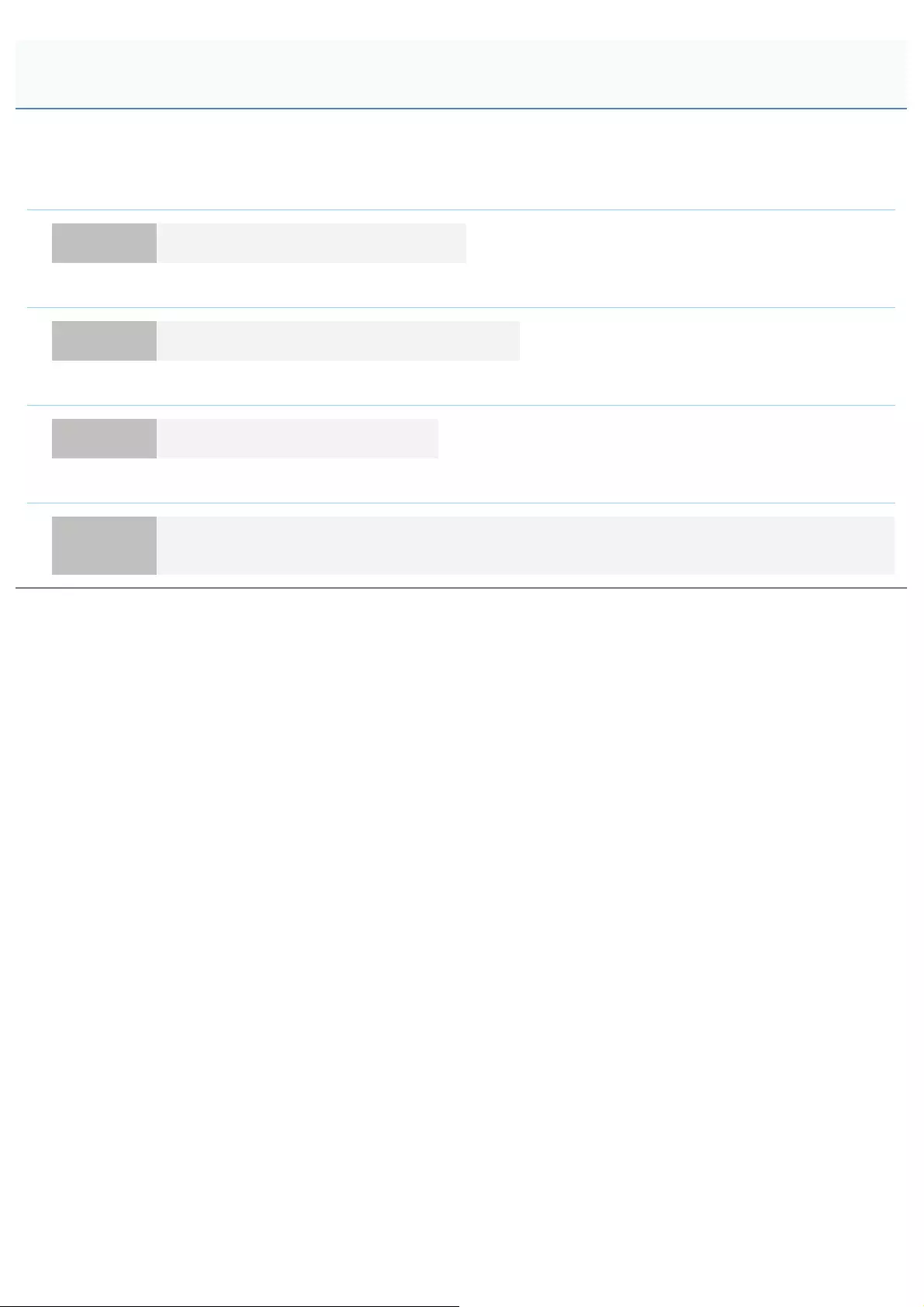
0258-0AL
Perform one of the following solutions according to the cause.
<Cause 1> The power plug is unplugged from the AC power outlet.
Solution Plug the power plug in the AC power outlet.
<Cause 2> The printer is plugged to an extension cord or multiple power strip.
Solution Plug the power plug directly in the AC power outlet.
<Cause 3> The breakers have tripped.
Solution Reset the breakers on the switch board.
<Cause 4> There is a break in the power cord.
Solution If the printer can be turned ON after replacing the power cord with one that is of the same type, then
purchase a new power cord and replace the broken one.
You Cannot Turn the Printer ON
㻤㻣㻥㻌㻛㻌㻥㻥㻤
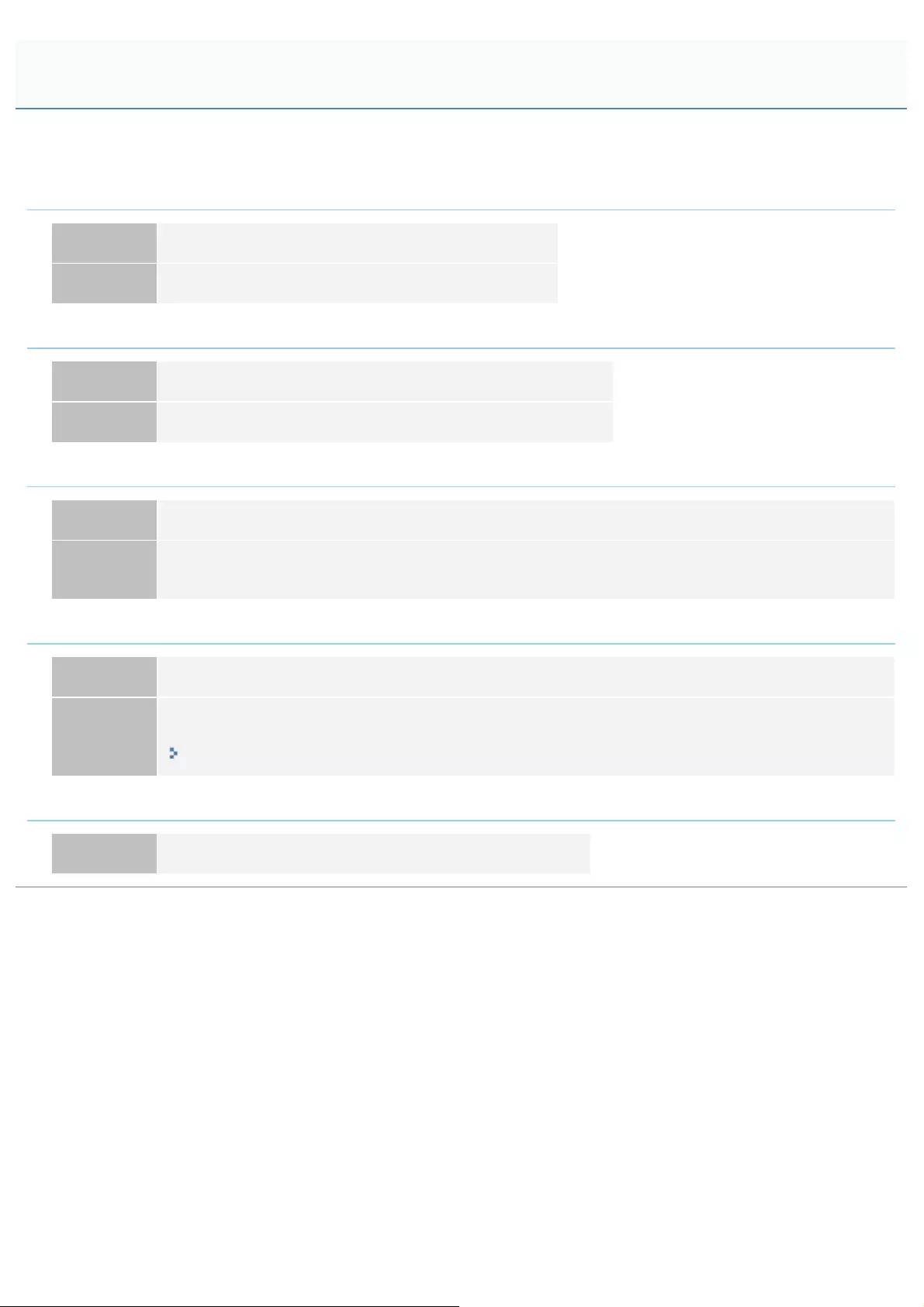
0258-0AR
Perform one of the following solutions according to the cause.
<Cause 1> The LAN cable is not connected properly or broken.
Solution 1 Remove the LAN cable once, then connect it again.
Solution 2 Replace the LAN cable with another one, then connect it.
<Cause 2> The cable is connected to the UP-LINK (cascade) port on the hub.
Solution 1 Connect the LAN cable to the port on the hub with an " X " mark.
Solution 2 If the hub has an UP-LINK (cascade) switch, switch to " X."
<Cause 3> A cross LAN cable is being used.
Solution 1 Replace the cable with a straight LAN cable.
Solution 2 Connect the cross LAN cable to the UP-LINK (cascade) port on the hub. If the hub has an UP-LINK
(cascade) switch, switch to the " = " side.
<Cause 4> Cannot communicate with the hub.
Solution 1 Make sure that the power of the hub is on.
Solution 2
Specify the communication settings for the print server according to the transmission speed of the
connected hub.
"Changing the Network Transmission Speed or Transfer Mode"
<Cause 5> The hardware of the printer is in an abnormal condition.
Solution Contact your local authorized Canon dealer to request service.
All the Indicators on the Network Interface Are Off
㻤㻤㻜㻌㻛㻌㻥㻥㻤
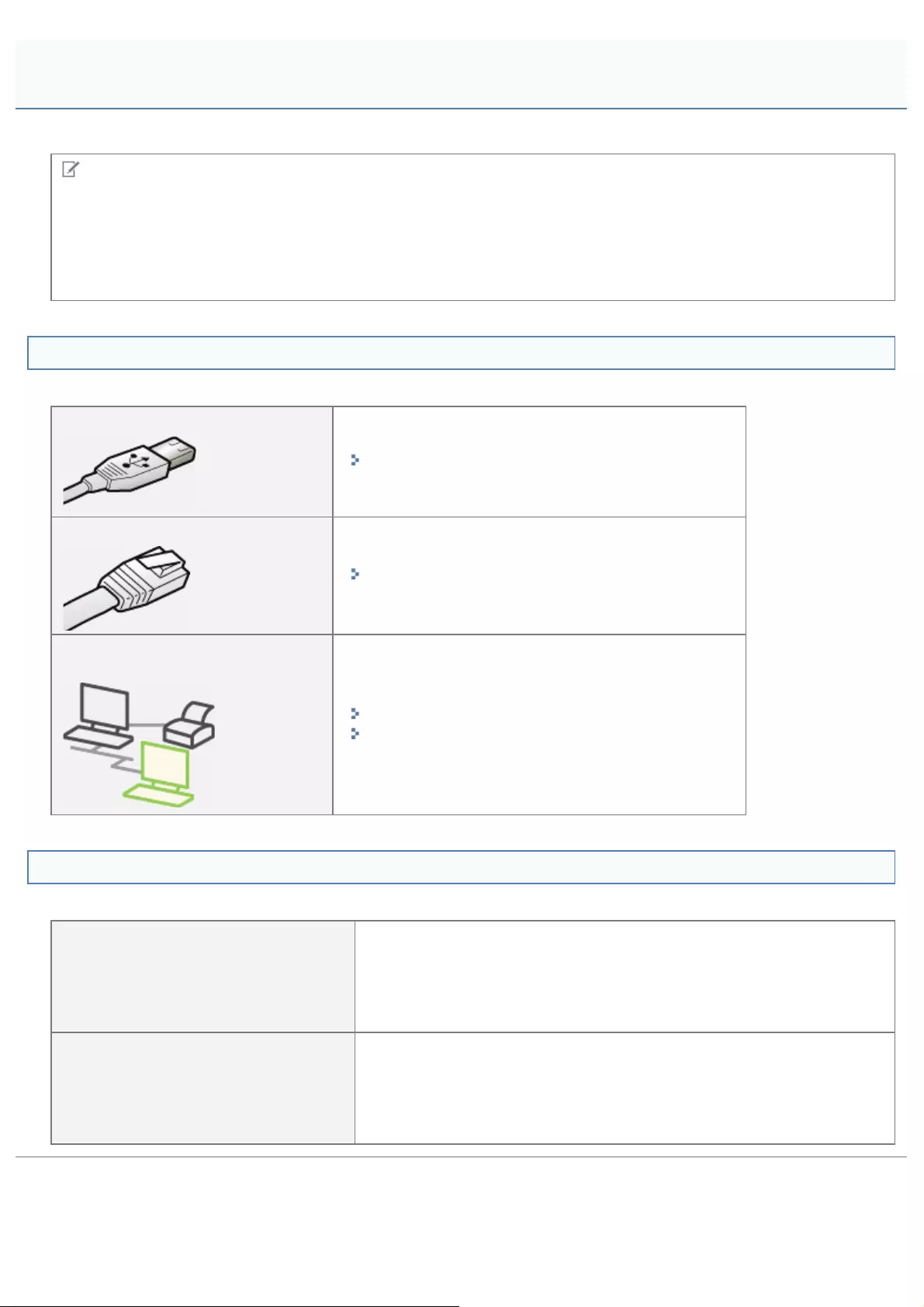
0258-0AS
NOTE
For Macintosh users
This section describes the procedure for Windows as an example.
For details on the procedure for Macintosh, see "Driver Guide."
If a symptom that is not indicated in this section occurs, see "Chapter 6 Troubleshooting" in Driver Guide.
For details on the procedure for displaying "Driver Guide", see "Viewing the Driver Guide."
If a problem occurs during the installation
Select a problem during the installation from any of the following.
Connection with a USB cable
"The Printer Is Not Recognized Automatically"
Connection with a LAN cable
"The Printer Cannot Be Searched for"
Connection via the print server
(Client)
"The Print Server for Connection Cannot Be Found"
"The Shared Printer Cannot Be Accessed"
If the printer driver is not installed properly
Perform the following procedure.
Solution 1
Install the printer driver again.
For details on the procedure for uninstalling or installing the printer driver,
see "Printer Driver Installation Guide."
For details on the procedure for viewing "Printer Driver Installation Guide",
see "Installation."
Solution 2
(Only when connecting with USB)
Uninstall the USB class driver, and then install the printer driver again.
For details on the procedure for uninstalling the USB class driver and
installing the printer driver, see "Printer Driver Installation Guide."
For details on the procedure for viewing "Printer Driver Installation Guide",
see "Installation."
You Cannot Install the Printer Driver
㻤㻤㻝㻌㻛㻌㻥㻥㻤

0258-0AU
Perform one of the following solutions according to the cause.
<Cause 1> The printer is not turned ON.
Solution Turn the printer ON.
<Cause 2> The USB cable is not connected properly.
Solution Make sure that the printer and computer are properly connected with the USB cable.
"Connecting to a Computer"
<Cause 3> The USB cable was already connected and the printer was turned ON before the
printer driver was installed.
Solution
Perform the following procedure.
1. Turn the printer OFF.
2. Disconnect the USB cable.
3. Connect the USB cable again.
4. While the following screen appears, turn the printer ON.
<Cause 4> An inappropriate USB cable is being used.
Solution
Use a USB cable that is appropriate for the USB interface environment of the printer and has the following
symbol.
The following is the USB interface environment of this printer.
Hi-Speed USB
USB
<Cause 5> The USB class driver is installed.
Solution
Uninstall the USB class driver.
For details, see the following item in "Printer Driver Installation Guide."
"Appendix" - "If You Cannot Install a USB Class Driver"
For details on the procedure for viewing "Printer Driver Installation Guide", see "Installation."
The Printer Is Not Recognized Automatically
㻤㻤㻞㻌㻛㻌㻥㻥㻤
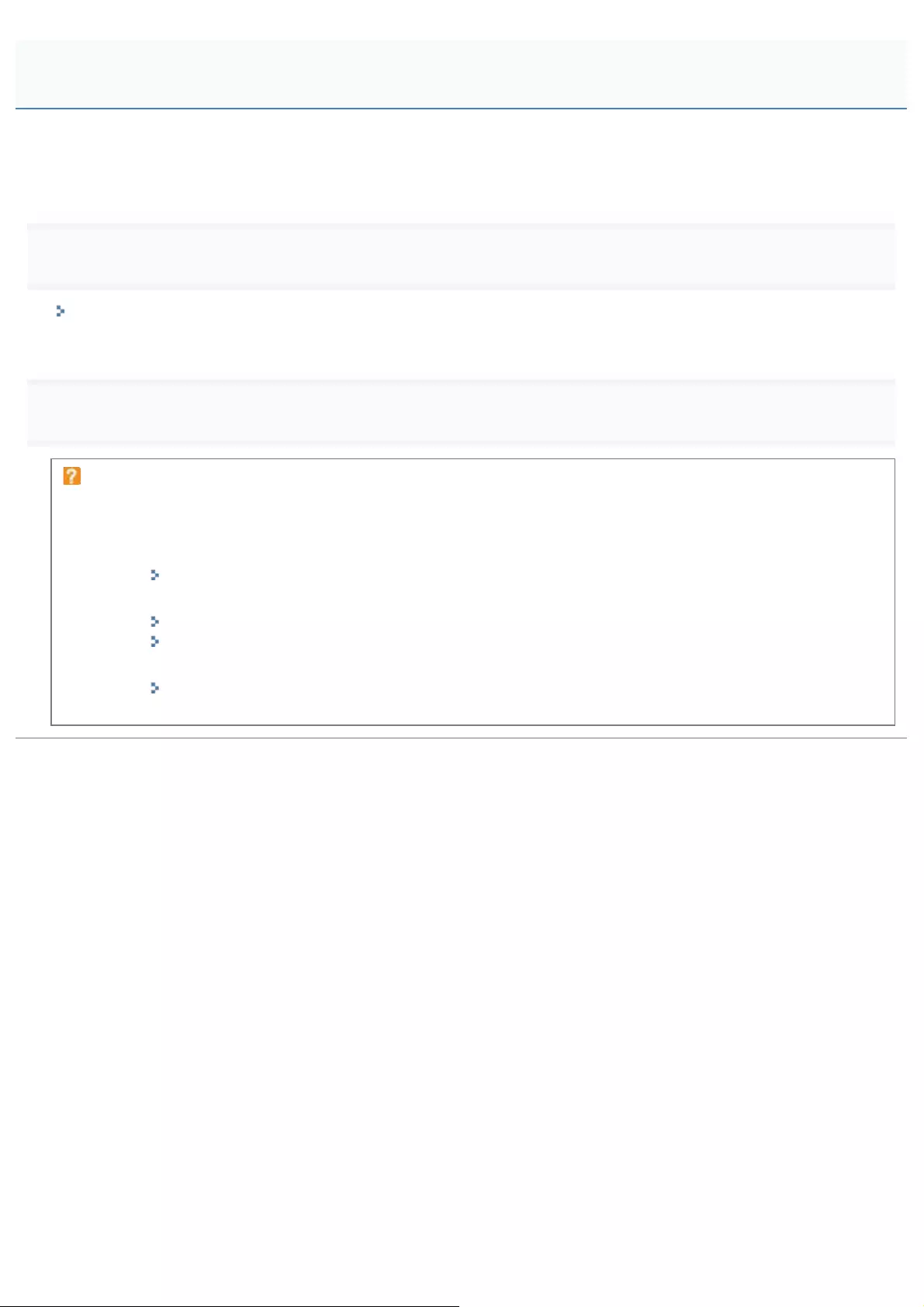
0258-0AW
If the printer cannot be searched for when you are in the process of installing the printer driver, perform the following
procedure.
1
Make sure that the LAN cable is connected properly, and the printer is turned ON.
"Connecting to a Computer"
2
Search for the printer on the network again.
If the printer cannot be searched for (no devices are displayed) even by performing the above
procedure
<Solution>
1. Set [Interface Selection] in [Network] to [On].
"[Setup] Menu ([Interface] Options)"
2. Set the IP address.
"Setting the IP Address (IP v. 4)"
"Setting IP v. 6"
3. Recover your printer from Sleep mode.
"Sleep Mode"
The Printer Cannot Be Searched for
㻤㻤㻟㻌㻛㻌㻥㻥㻤
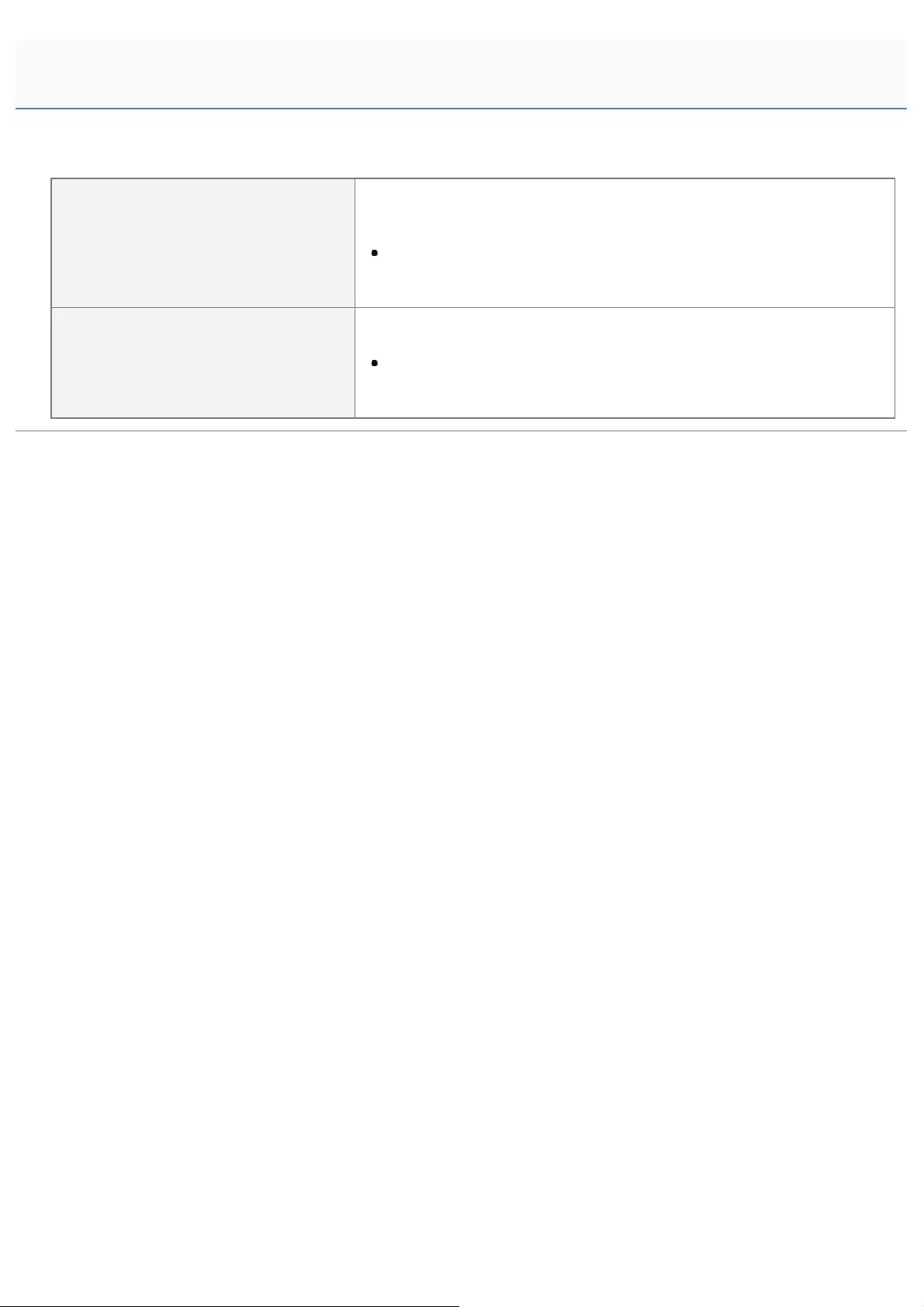
0258-0AX
Perform the following procedure.
Solution 1
Use Uninstaller supplied with User Software CD-ROM to uninstall the
printer driver.
For details, see the following item in "Printer Driver Installation Guide."
"Update/Uninstallation" - "Uninstalling the Printer Driver"
For details on the procedure for viewing "Printer Driver Installation Guide",
see "Installation."
Solution 2
(Only when connecting with USB)
Uninstall the USB class driver.
For details, see the following item in "Printer Driver Installation Guide."
"Appendix" - "If You Cannot Install a USB Class Driver"
For details on the procedure for viewing "Printer Driver Installation Guide",
see "Installation."
You Cannot Uninstall the Printer Driver
㻤㻤㻠㻌㻛㻌㻥㻥㻤
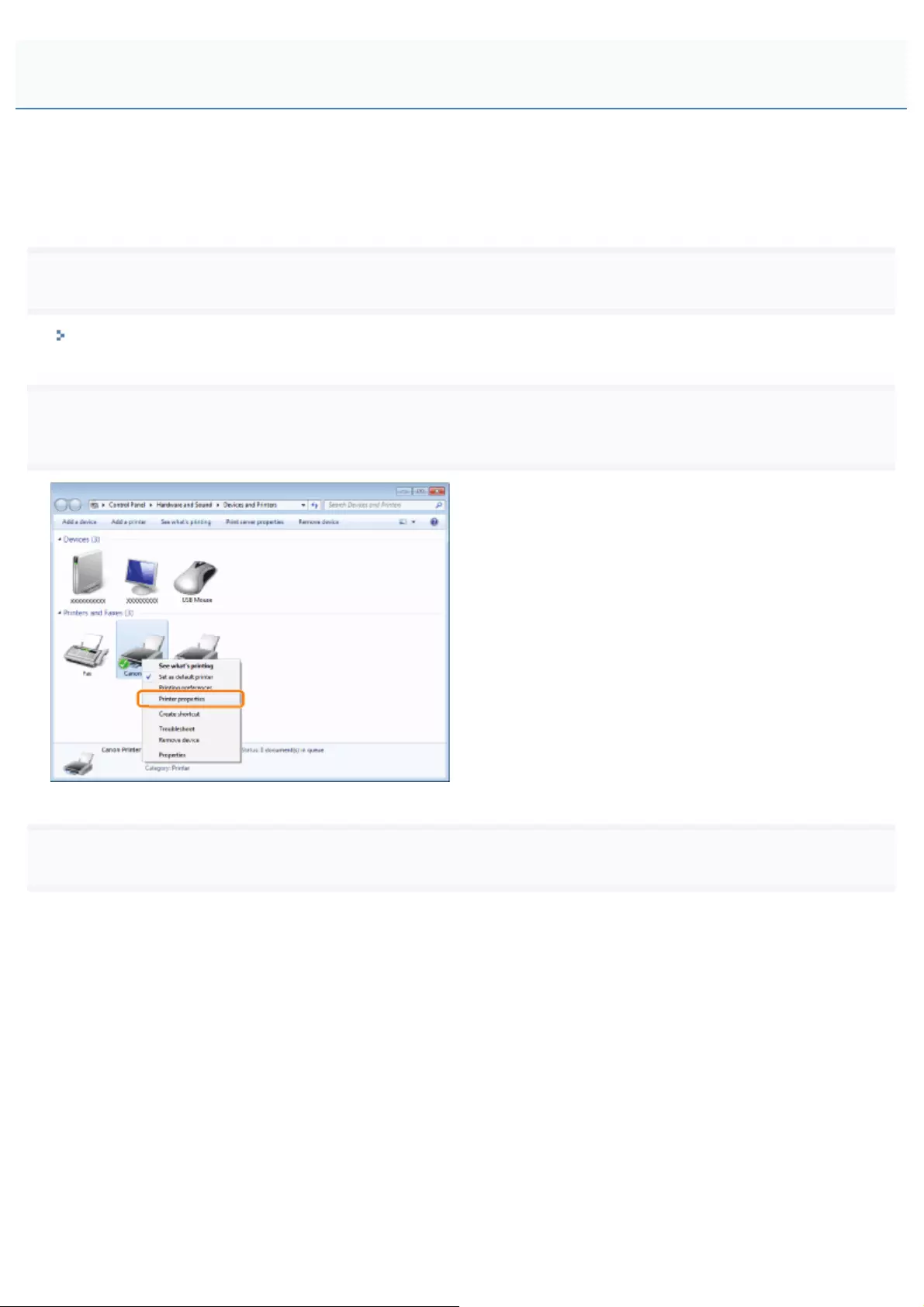
0258-0AY
If [Spooling at Host] (whether the print data are processed in the computer) is set to [Disabled], you cannot change the
driver settings because some options are unavailable.
To change the settings, set [Spooling at Host] to [Auto] using the following procedure.
1
Open the printer folder.
"Basic Operations/Various Information for Windows"
2
Right-click the icon for this printer, and then select [Printer properties] or [Properties] from the pop-
up menu.
3
Change the setting for [Spooling at Host].
(1) Display the [Device Settings] sheet.
(2) Select [Auto] for [Spooling at Host].
The Printer Driver Settings Cannot Be Changed
㻤㻤㻡㻌㻛㻌㻥㻥㻤
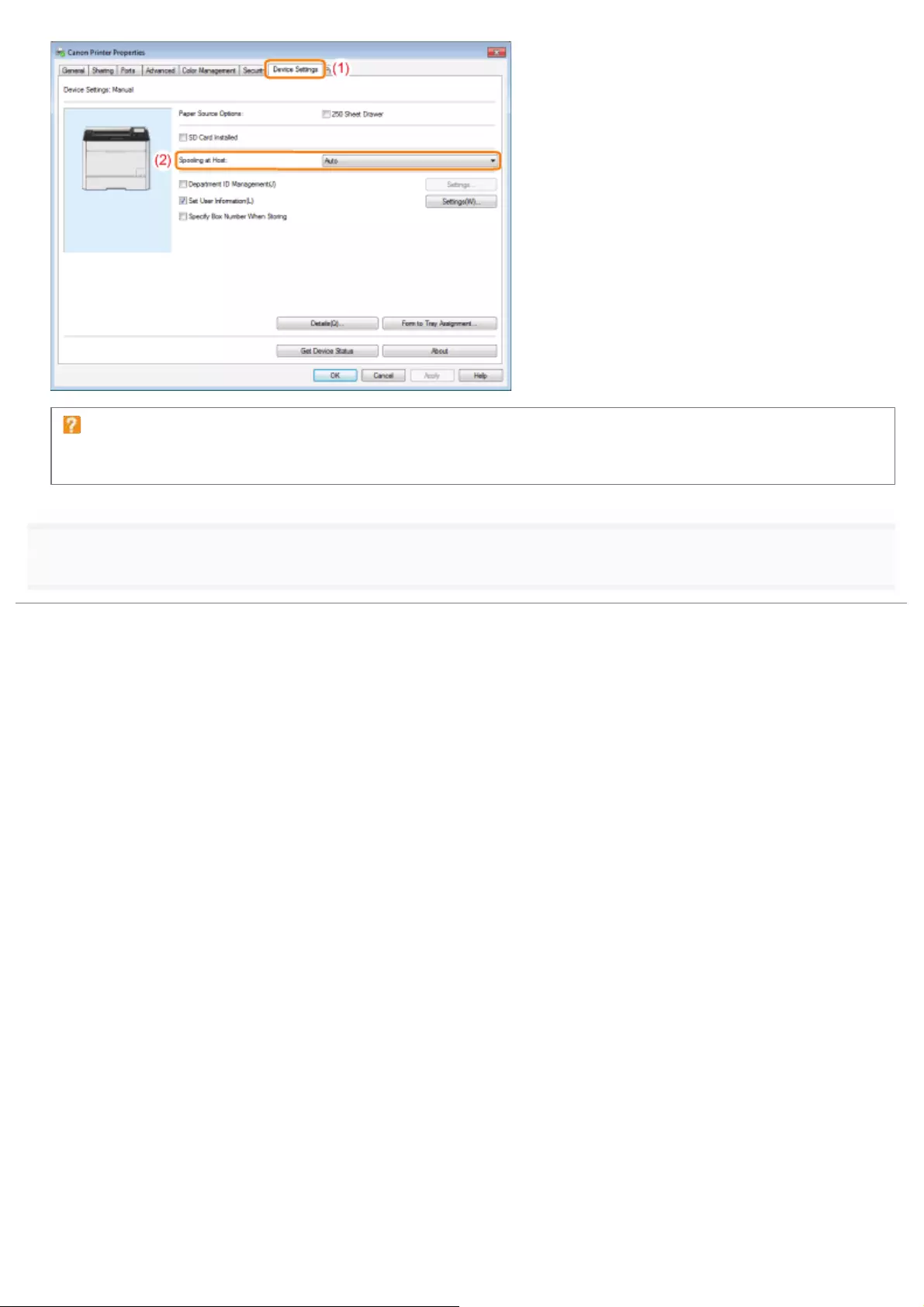
If you cannot change the setting
You need administrative rights to change the setting.
Contact your system administrator.
4
Click [OK].
㻤㻤㻢㻌㻛㻌㻥㻥㻤
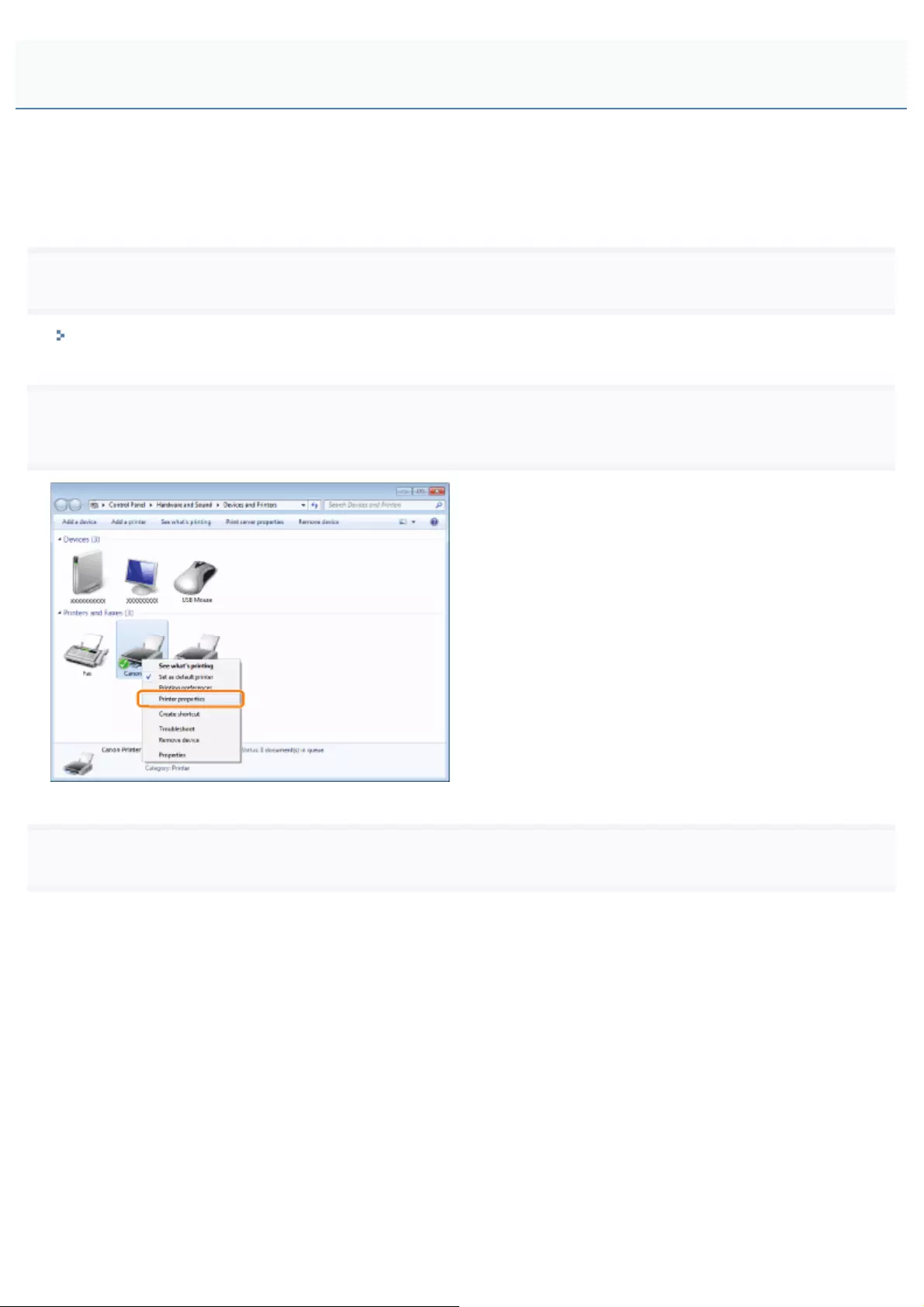
0258-0C0
When the [Allow Profile Selection] and [Allow Setting Edition] check boxes are cleared, selecting and editing a "Profile" are
restricted.
To select or edit a "Profile", select the check box using the following procedure.
1
Open the printer folder.
"Basic Operations/Various Information for Windows"
2
Right-click the icon for this printer, and then select [Printer properties] or [Properties] from the pop-
up menu.
3
Change the settings for [Define Document Property].
(1) Display the [Profile] sheet.
(2) Select the [Allow Profile Selection] and [Allow Setting Edition] check boxes.
"Profiles" Cannot Be Selected or Edited
㻤㻤㻣㻌㻛㻌㻥㻥㻤
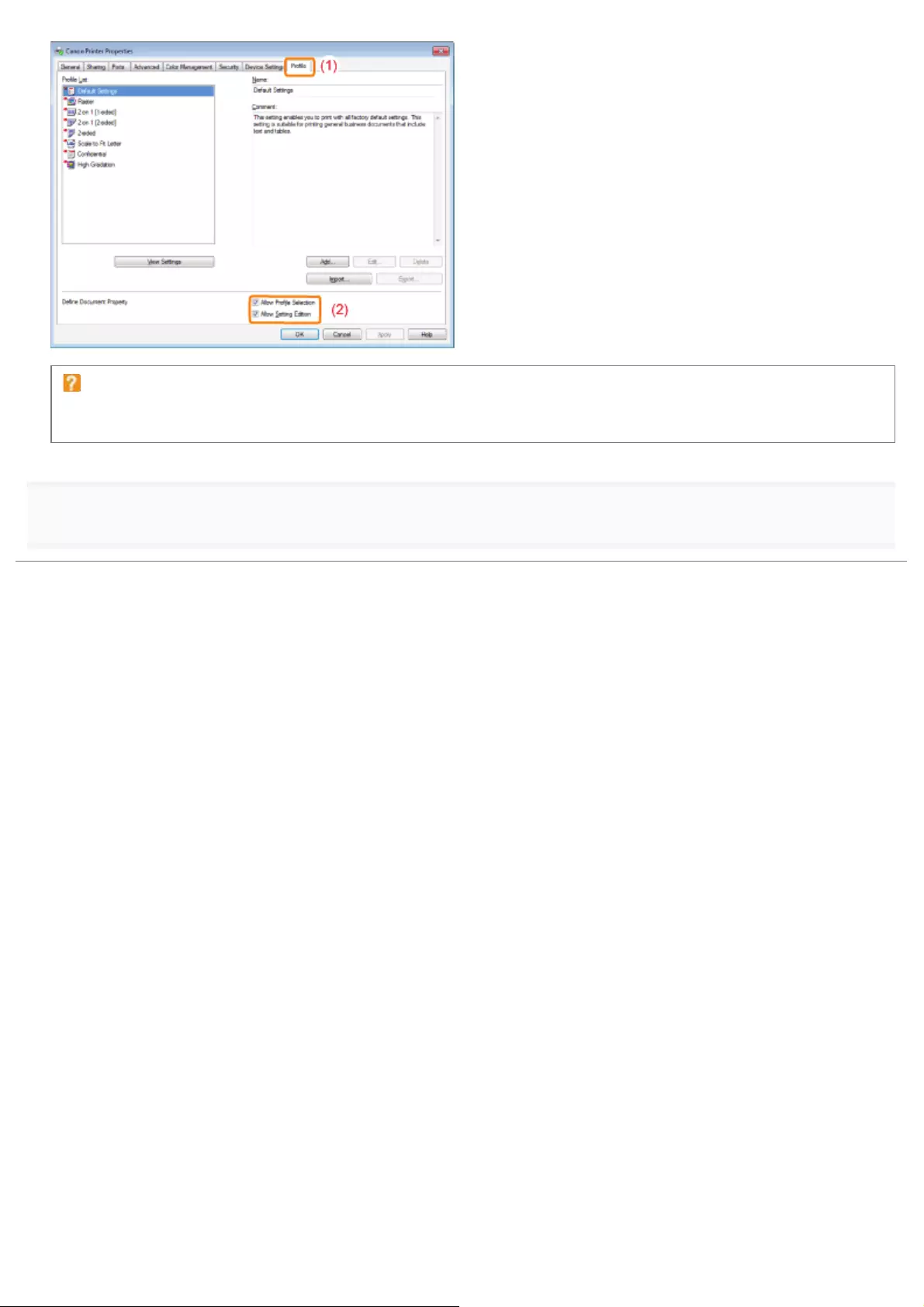
If you cannot change the setting
You need administrative rights to change the setting.
Contact your system administrator.
4
Click [OK].
㻤㻤㻤㻌㻛㻌㻥㻥㻤
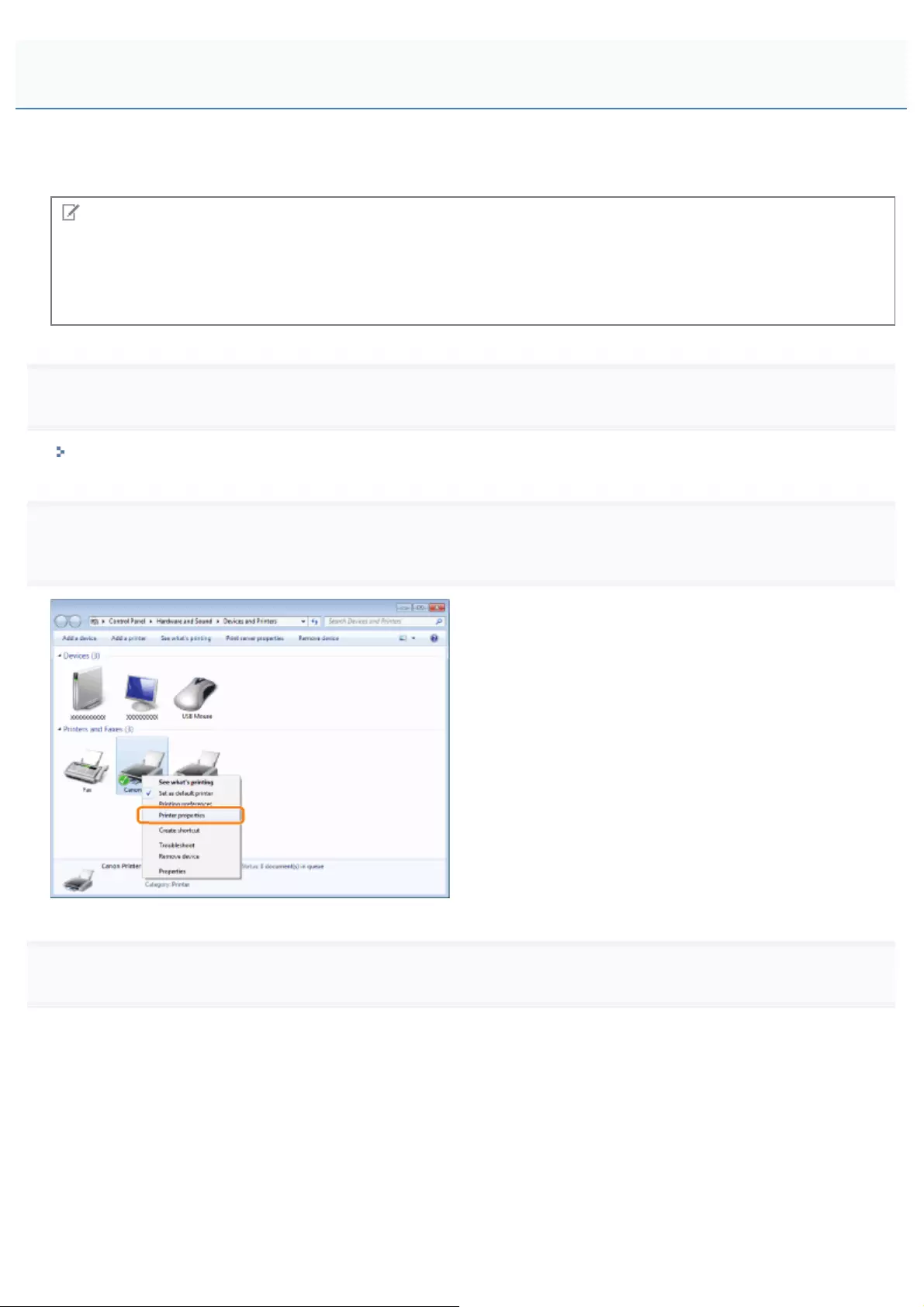
0258-0C1
If you cannot specify the settings for Drawer 2 in [Paper Source] in the printer driver, specify the status of the paper feeder
using the following procedure.
NOTE
For Macintosh users
This section describes the procedure for Windows as an example.
For details on the procedure for Macintosh, see "Driver Guide."
For details on the procedure for displaying "Driver Guide", see "Viewing the Driver Guide."
1
Open the printer folder.
"Basic Operations/Various Information for Windows"
2
Right-click the icon for this printer, and then select [Printer properties] or [Properties] from the pop-
up menu.
3
Obtain the status of the paper feeder.
(1) Display the [Device Settings] sheet.
(2) Click [Get Device Status].
(3) Click [Yes] to obtain the status of the paper feeder.
The Status of the Paper Feeder Cannot Be Obtained Automatically
㻤㻤㻥㻌㻛㻌㻥㻥㻤

If the status of the paper feeder is not obtained
Remove the paper feeder once, and then install it again.
If the status of the paper feeder cannot be obtained even by installing it again, see the following and make sure that
the printer and computer can communicate with each other.
"Printing Cannot Be Performed (USB Connection)"
"Printing Cannot Be Performed (LAN Connection)"
"Printing Cannot Be Performed (via the Print Server)"
4
Click [OK].
㻤㻥㻜㻌㻛㻌㻥㻥㻤
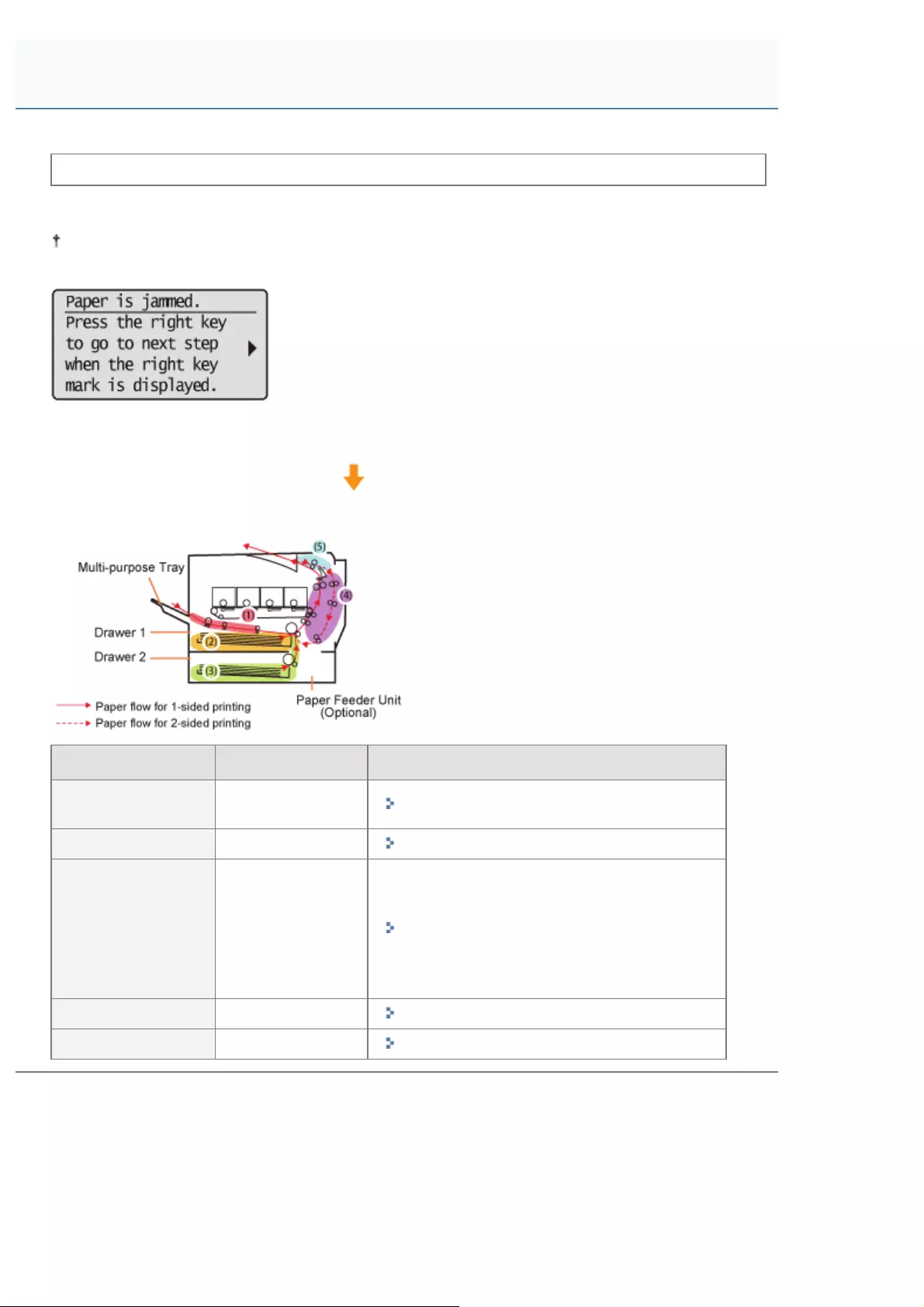
0258-0C2
Before removing jammed paper, see "Attention (Paper Jams)."
When a paper jam occurs, the printer beeps, displaying the message <Paper is jammed.> in the display.
This section describes the procedure for when [Animated Instruction] is set to [On] (default setting).
If [Animated Instruction] is set to [Off], the above screen is not displayed.
Messages appear one at a time. Confirm all of them.
As the messages disappear when the cover is open, take a note of them if required.
Remove the jammed paper according to the displayed message.
Paper Jam Area Message Clearance Procedure
(1) Multi-purpose
tray <MP Tray area> "Clearing Paper Jams (Multi-purpose Tray)"
(2) Drawer 1 <Drawer 1 area> "Clearing Paper Jams (Paper Drawer)"
(3) Drawer 2*
*Only when
the paper
feeder is
installed
<Drawer 2 area> "Clearing Paper Jams (Paper Drawer)"
(4) Back cover area <back cover area> "Clearing Paper Jams (Back Cover)"
(5) Output area <Output area> "Clearing Paper Jams (Output Area)"
Paper Jams
㻤㻥㻝㻌㻛㻌㻥㻥㻤
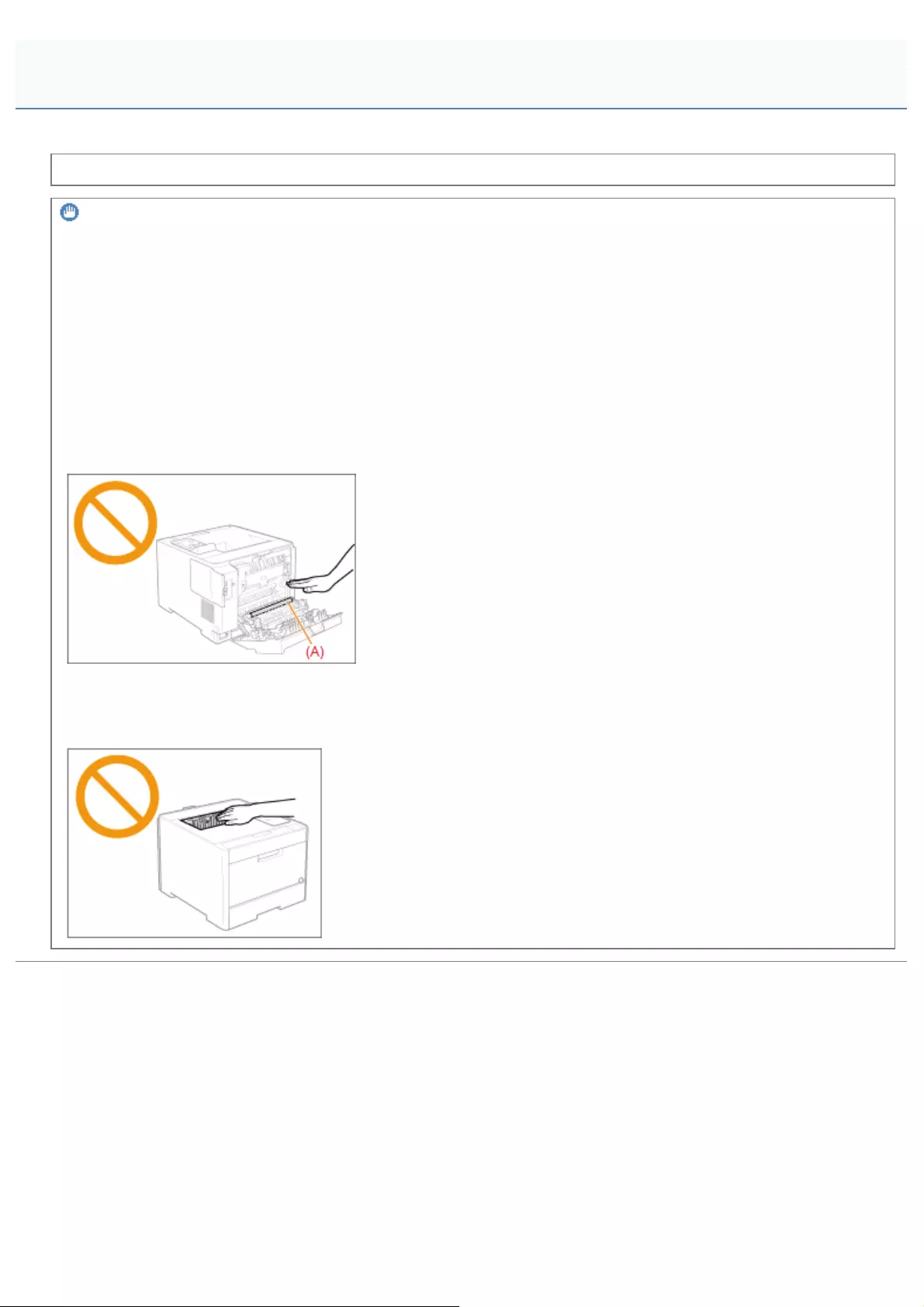
0258-0C3
See "Important Safety Instructions" also.
IMPORTANT
Leave the printer ON when removing the jammed paper.
If the power is turned OFF, the data being printed will be deleted.
Do not remove the jammed paper forcefully.
Removing jammed paper with excess force may cause the paper to tear or damage the inside of the printer. Remove the
paper by pulling it gently.
If the paper is torn
Remove all remaining pieces of paper.
Do not touch the transfer roller (A).
Print quality may deteriorate.
Do not touch the output tray and its surroundings.
The area surrounding the output tray is hot during and immediately after printing. Do not touch the area surrounding the
output tray when removing paper or clearing a paper jam.
Attention (Paper Jams)
㻤㻥㻞㻌㻛㻌㻥㻥㻤
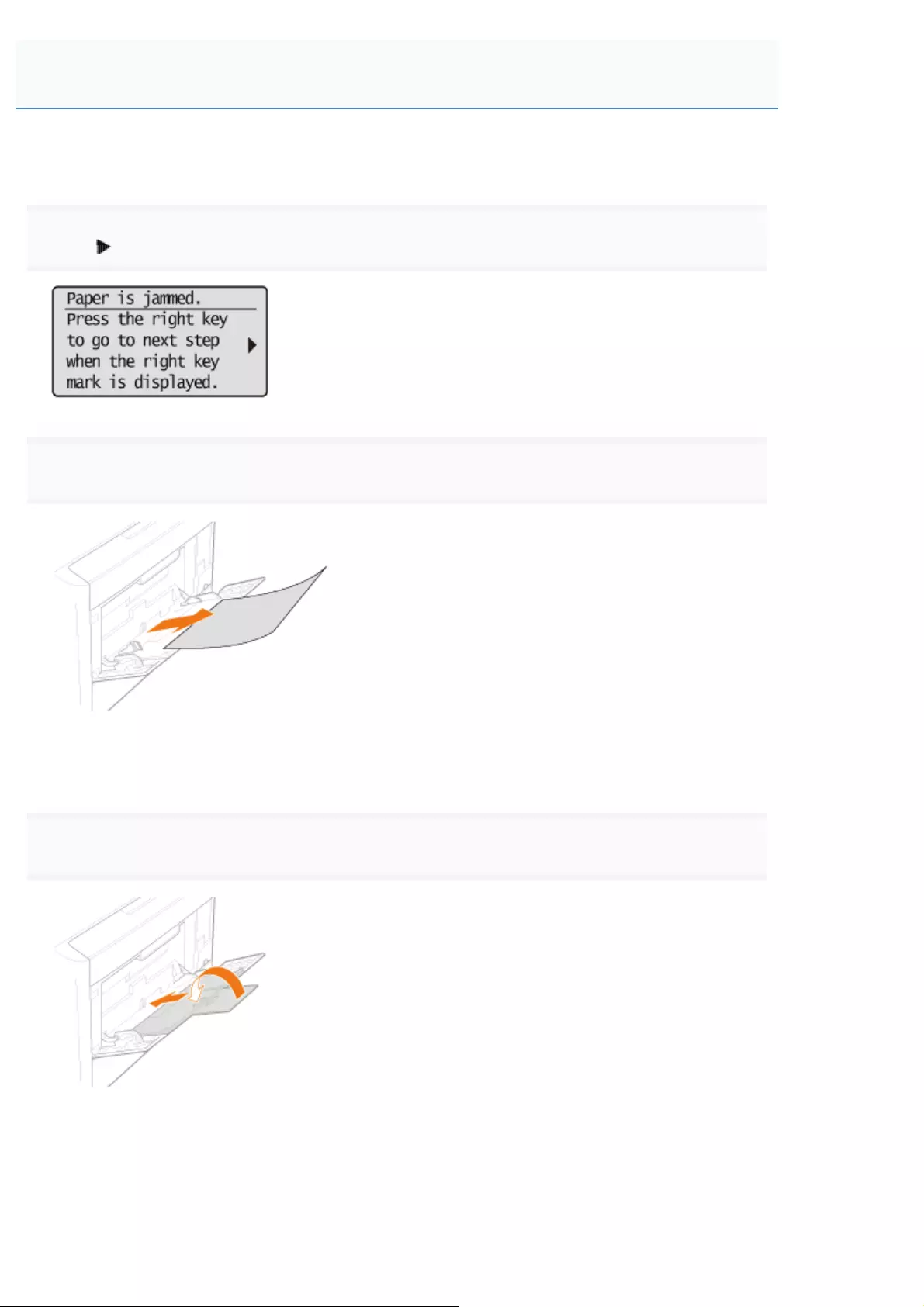
0258-0C4
Referring to the procedure on the display, follow the steps below to remove jammed documents.
1
Press [ ].
2
Remove the paper by pulling it gently.
If the jammed paper cannot be removed easily
Do not try to remove it forcefully but proceed to Step 3.
3
Close the multi-purpose tray.
Clearing Paper Jams (Multi-purpose Tray)
㻤㻥㻟㻌㻛㻌㻥㻥㻤
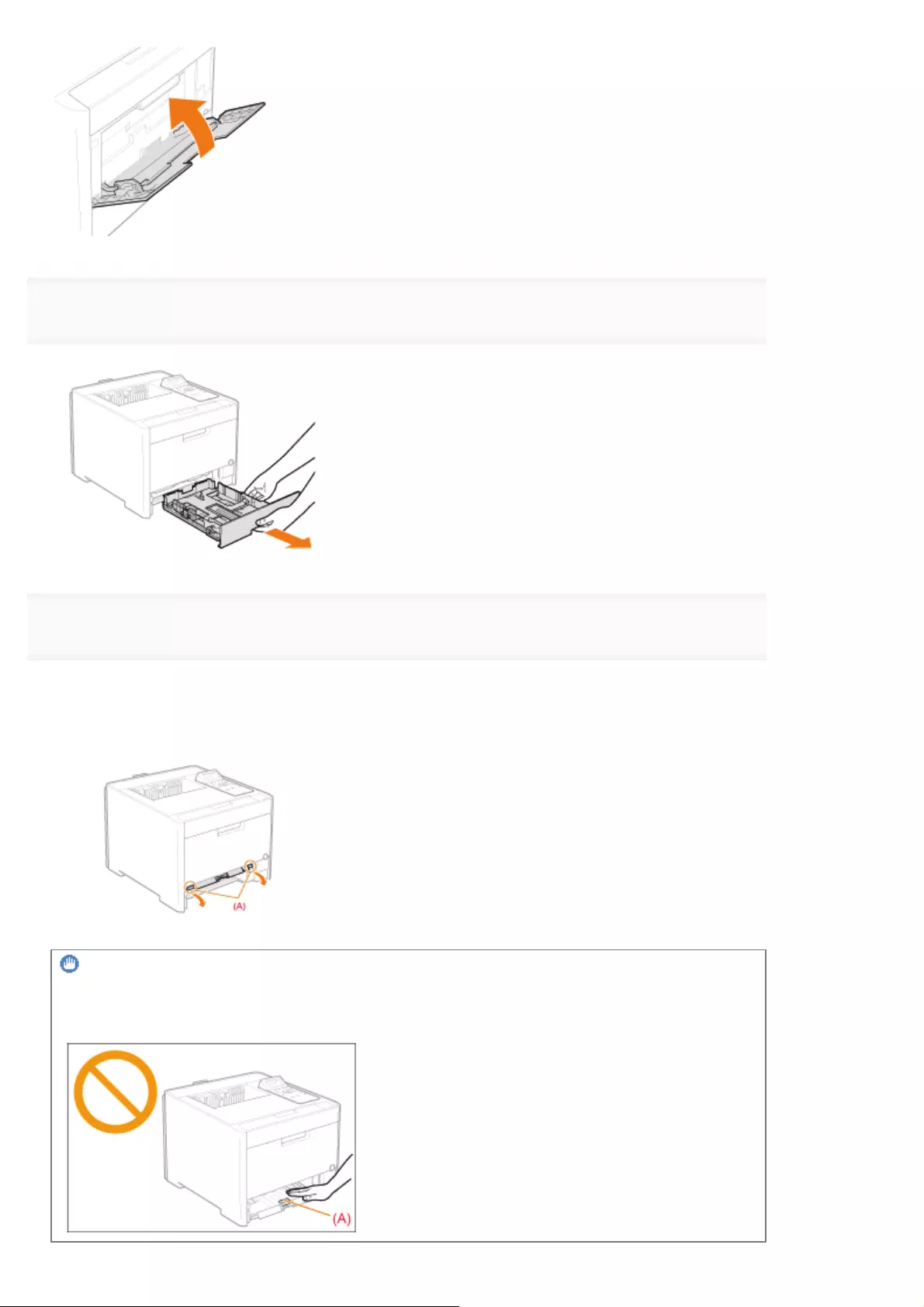
4
Pull out the drawer.
5
Lower the manual feed transport guide.
(1) Hold the tabs (A) on both sides.
(2) Push them down.
IMPORTANT
Do not touch the rubber pad (A).
Touching it may result in deterioration in print quality.
㻤㻥㻠㻌㻛㻌㻥㻥㻤
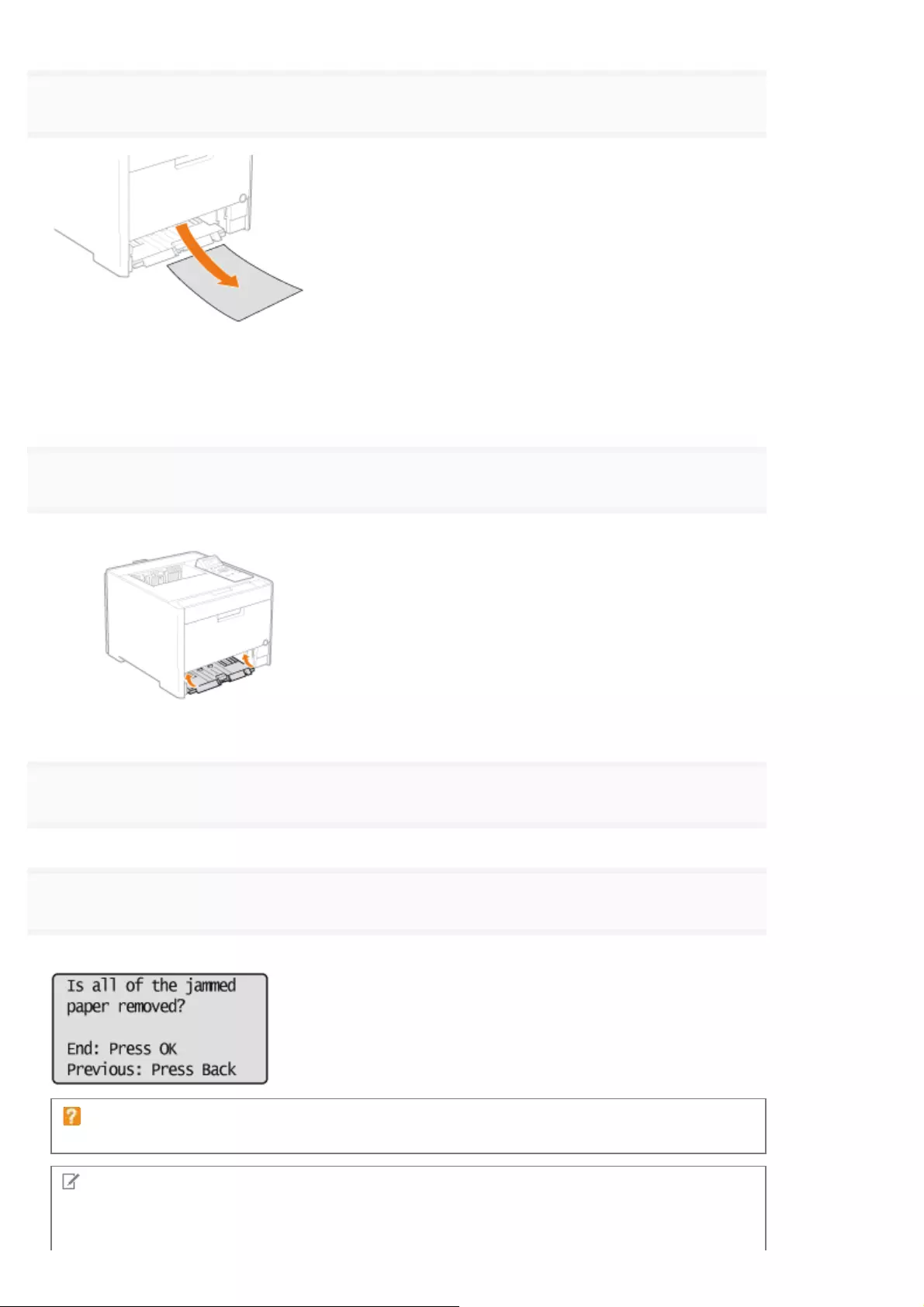
6
Remove the paper by pulling it gently.
If the jammed paper cannot be removed easily
Do not try to remove it forcefully but proceed to Step 7.
7
Return the manual feed transport guide to its original position.
8
Insert the drawer in the printer.
9
When the following screen appears, press [OK].
The machine is ready to print.
If the screen does not appear
Open or close the front cover.
NOTE
If the jammed paper cannot be removed in Step 6
See "Clearing Paper Jams (Back Cover)" and remove the jammed paper.
㻤㻥㻡㻌㻛㻌㻥㻥㻤
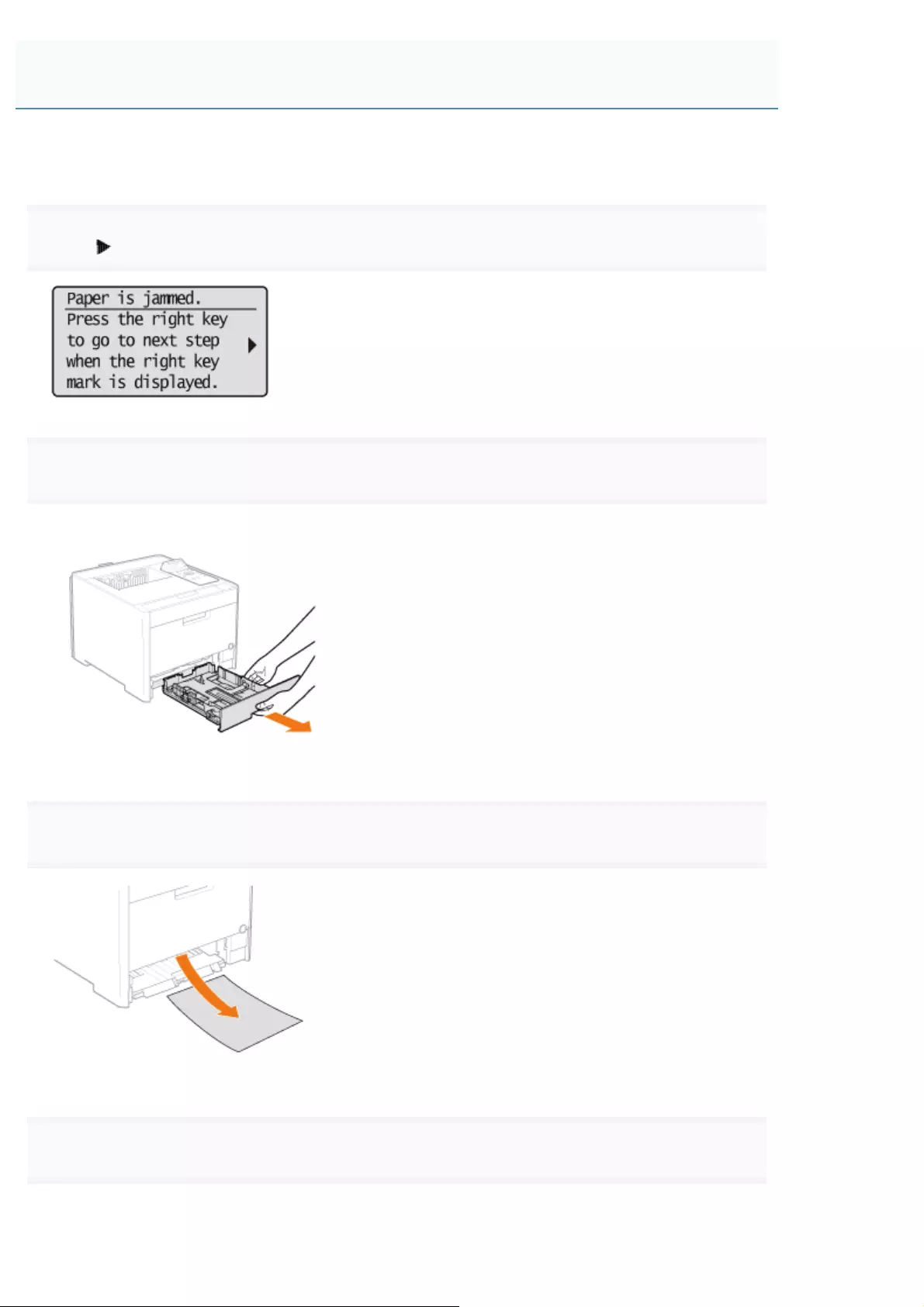
0258-0C5
Referring to the procedure on the display, follow the steps below to remove jammed documents.
1
Press [ ].
2
Pull out the paper drawer.
Hold the paper drawer with both hands.
If the paper feeder is installed, pull out the drawer of the paper feeder also.
3
Remove the paper by pulling it gently.
4
Insert the drawer in the printer.
If the paper feeder is installed, insert the drawer of the paper feeder also.
Clearing Paper Jams (Paper Drawer)
㻤㻥㻣㻌㻛㻌㻥㻥㻤
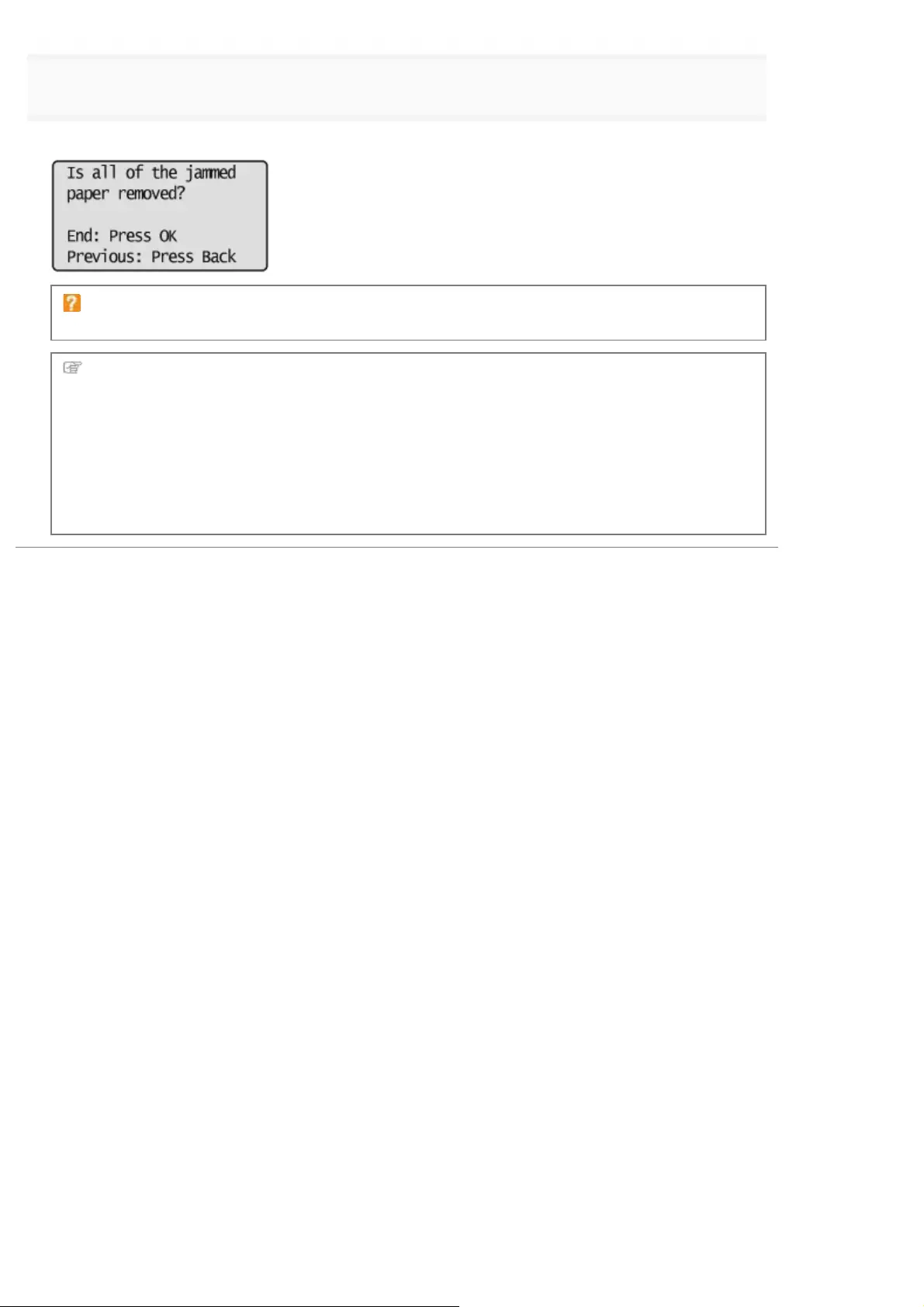
5
When the following screen appears, press [OK].
The machine is ready to print.
If the screen does not appear
Open or close the front cover.
Next, proceed to the clearing procedure for another area which is displayed in the message.
(1) "Clearing Paper Jams (Multi-purpose Tray)"
(2) "Clearing Paper Jams (Paper Drawer)"
(3) "Clearing Paper Jams (Back Cover)"
(4) "Clearing Paper Jams (Output Area)"
㻤㻥㻤㻌㻛㻌㻥㻥㻤
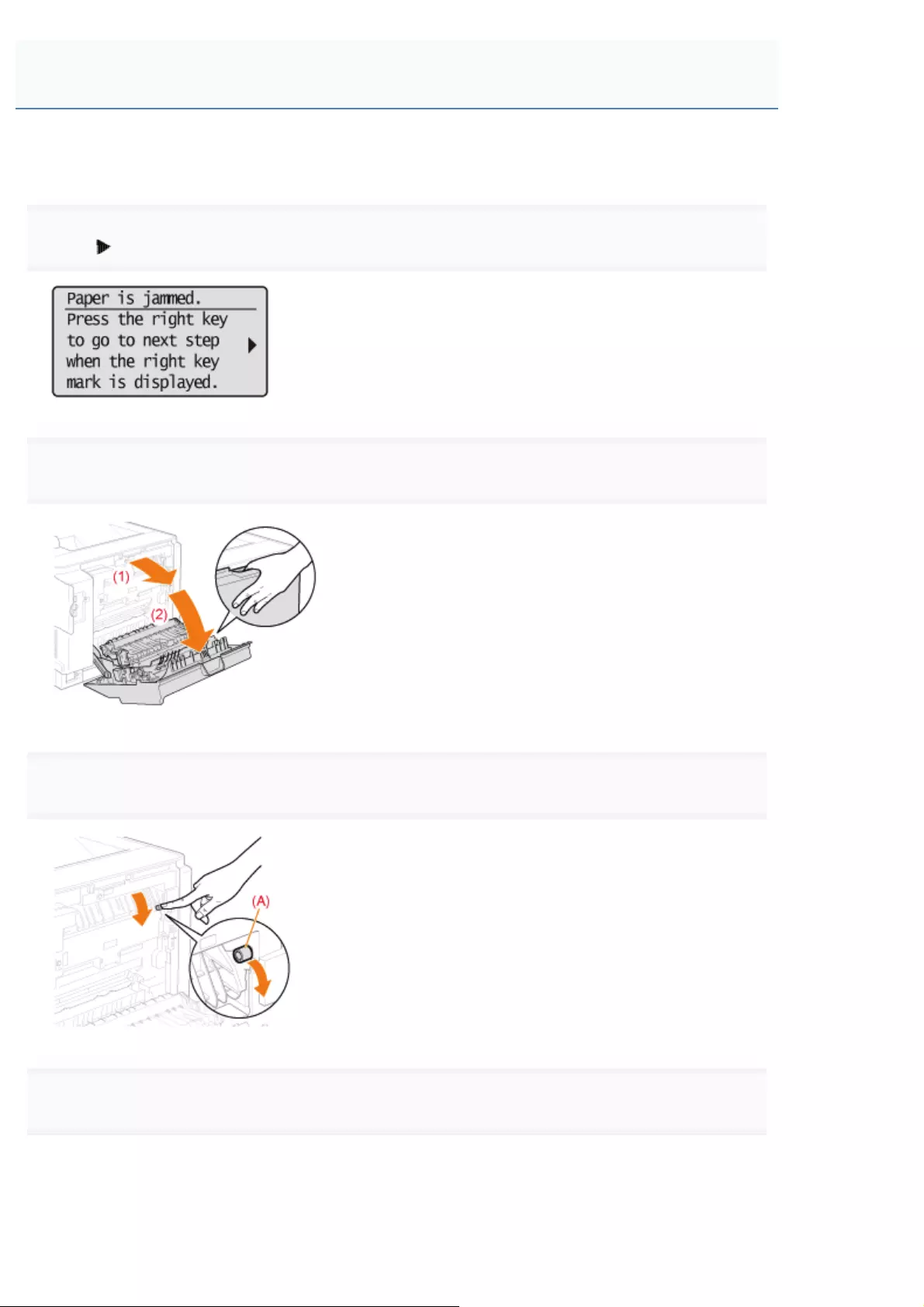
0258-0C6
Referring to the procedure on the display, follow the steps below to remove jammed documents.
1
Press [ ].
2
Open the back cover.
3
Open the paper output guide by holding the green tab (A).
4
Remove the paper by pulling it gently.
Clearing Paper Jams (Back Cover)
㻤㻥㻥㻌㻛㻌㻥㻥㻤
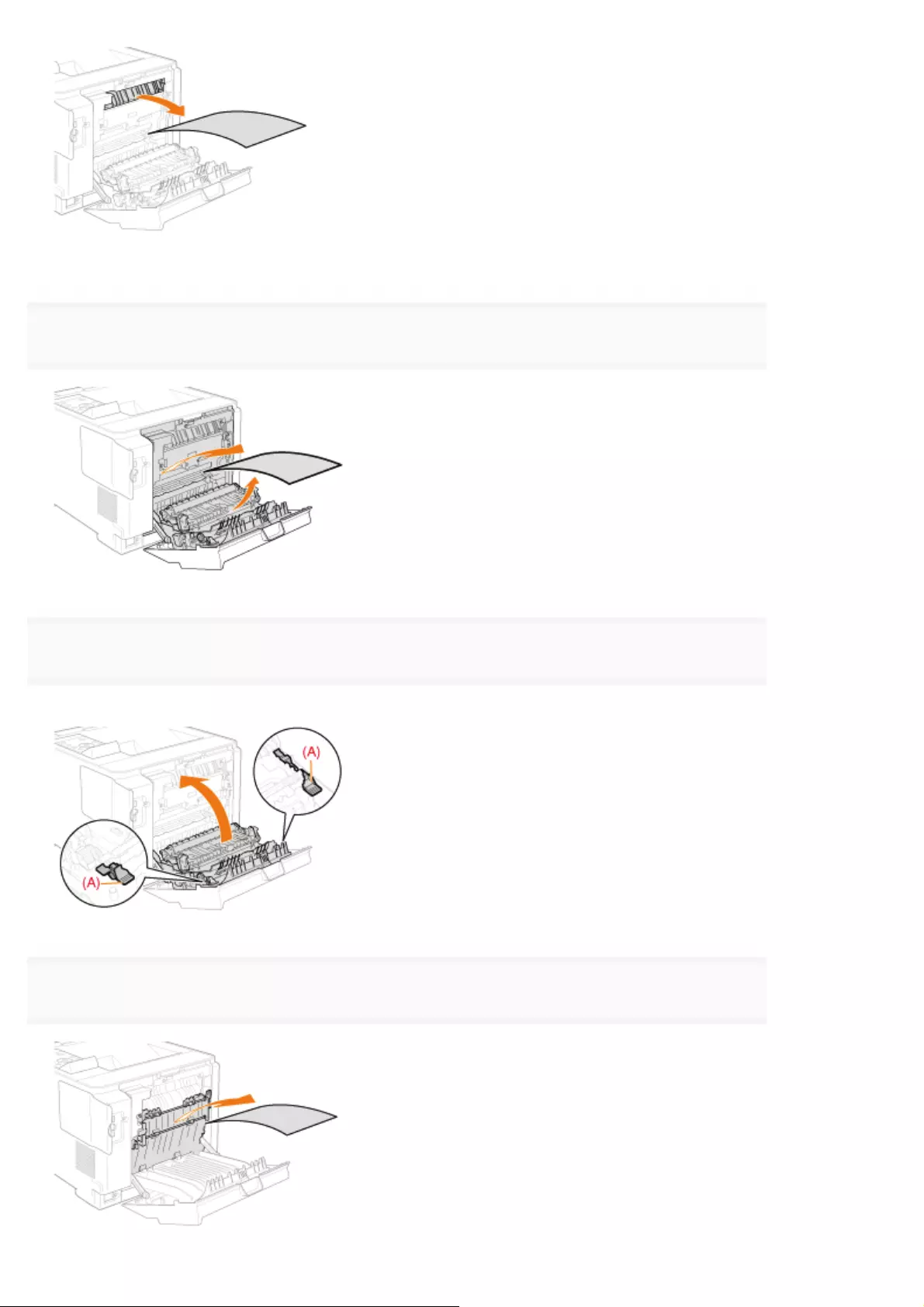
Make sure that no paper is jammed inside the paper output guide, and then close it.
5
Remove the paper by pulling it gently.
6
Holding the tabs (A) on both sides, close the 2-sided unit.
Close the guide firmly until it clicks.
7
Remove the paper by pulling it gently.
㻥㻜㻜㻌㻛㻌㻥㻥㻤
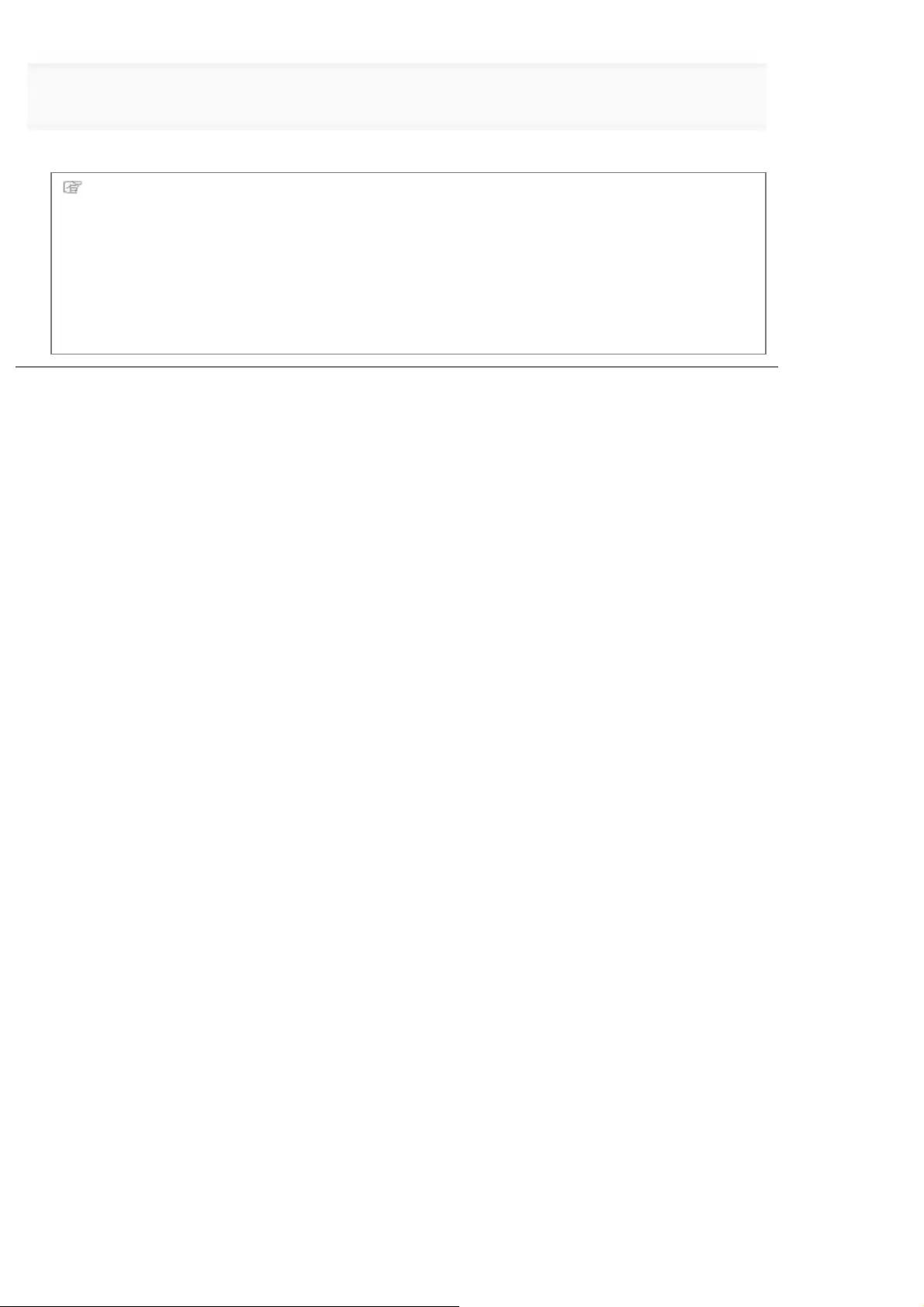
8
Close the rear cover.
The machine is ready to print.
Next, proceed to the clearing procedure for another area which is displayed in the message.
(1) "Clearing Paper Jams (Multi-purpose Tray)"
(2) "Clearing Paper Jams (Paper Drawer)"
(3) "Clearing Paper Jams (Back Cover)"
(4) "Clearing Paper Jams (Output Area)"
㻥㻜㻝㻌㻛㻌㻥㻥㻤
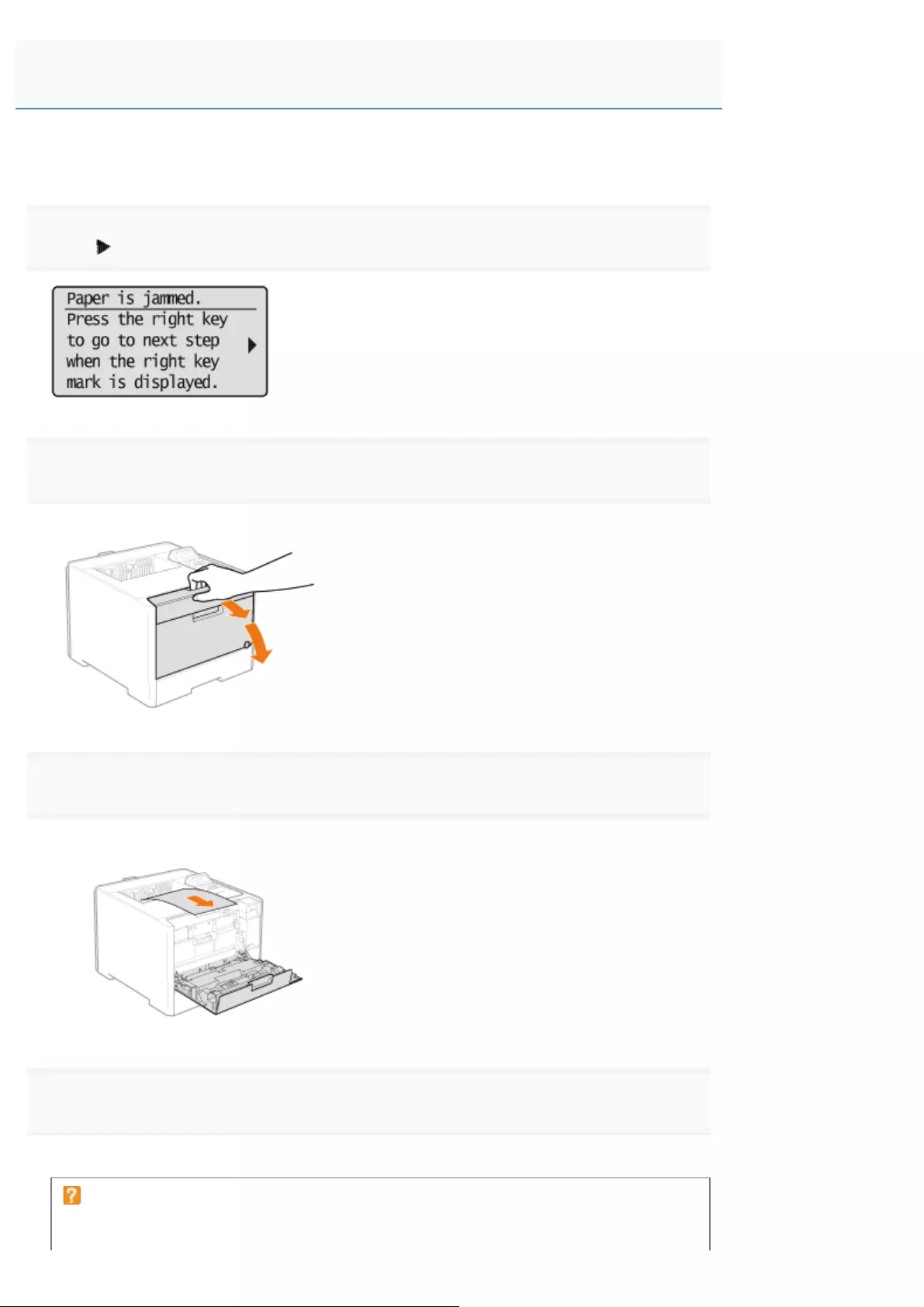
0258-0C7
Referring to the procedure on the display, follow the steps below to remove jammed documents.
1
Press [ ].
2
Open the front cover.
3
Remove the paper by pulling it gently.
4
Close the front cover.
The machine is ready to print.
If a message does not disappear
Paper may be jammed in another area. Check another area also and remove the paper.
Clearing Paper Jams (Output Area)
㻥㻜㻞㻌㻛㻌㻥㻥㻤
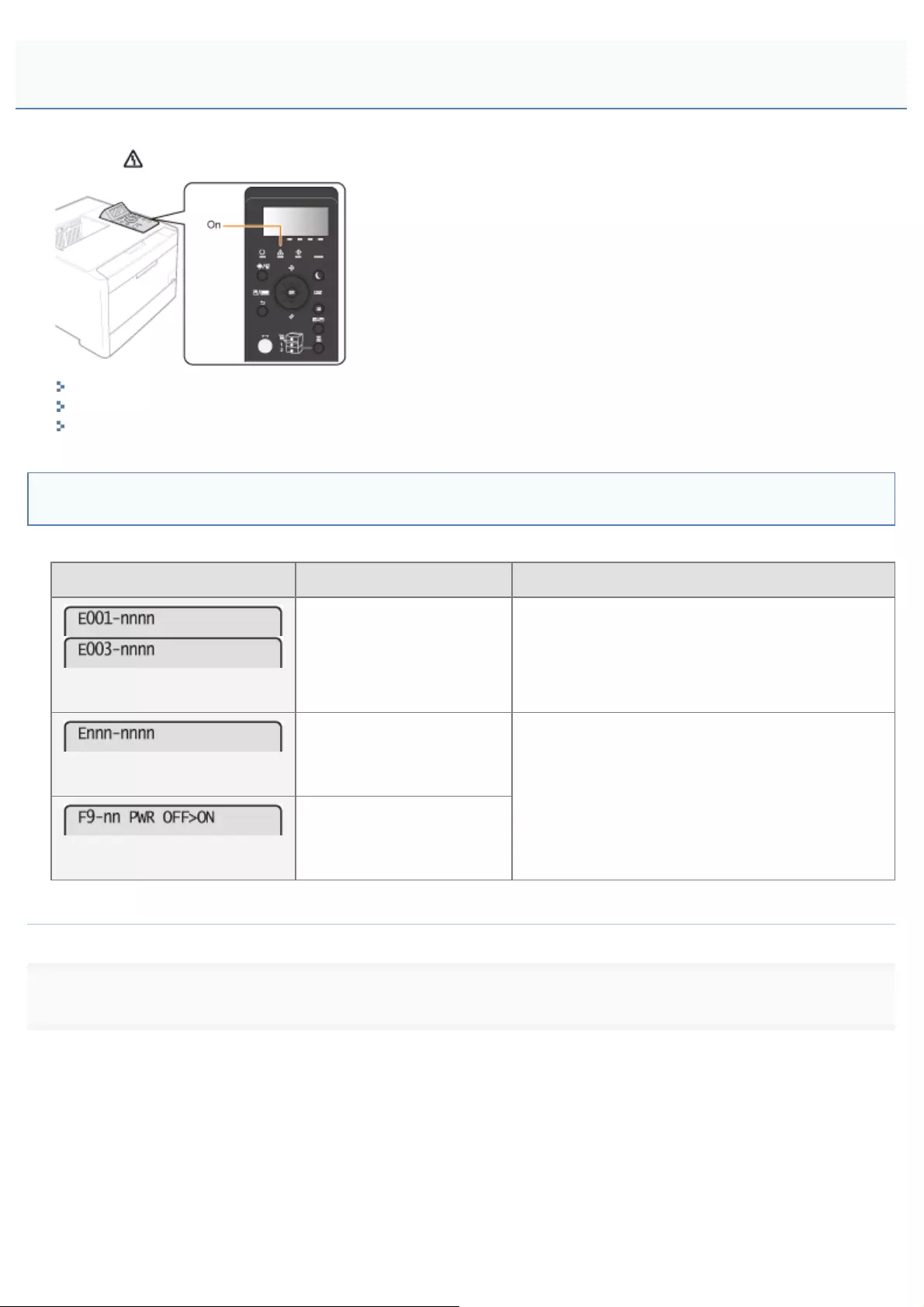
0258-0CA
When the Message indicator is on, implement the following solutions.
The Service Call <Ennn-nnnn> Appears in the Display ("n" Represents an Alphanumeric Character)
A Message Appears in the Display
The Display Is Turned Off
The Service Call <Ennn-nnnn> Appears in the Display ("n" Represents an Alphanumeric
Character)
Implement the following solutions according to the displayed message.
Message Cause Solution
("n" represents an alphanumeric
character.)
A problem occurred in the
fixing unit.
Follow the procedure in "If a Fixing Unit Error Is
Displayed", and then contact your local authorized
Canon dealer.
("n" represents an alphanumeric
character.)
A problem occurred inside
the printer. Following the procedure in "If a Service Error or a
Message Is Displayed", cycle the power of the
printer.
("n" represents an alphanumeric
character.)
A problem occurred while
the printer was processing
print data.
If a Fixing Unit Error Is Displayed
1
Turn the printer OFF, then disconnect the cables or cords from the printer.
The Message Indicator Is On
㻥㻜㻠㻌㻛㻌㻥㻥㻤

<How to disconnect the cable or cord>
USB cable*(2) Turn the computer off.
(3) Disconnect the cable from the printer.
LAN cable*(4) Disconnect the cable from the printer.
Power cord (5) Disconnect the power plug from the AC power outlet.
(6) Disconnect the cord from the printer.
*Whether the cable is connected or not varies depending on your environment.
IMPORTANT
Do not turn ON the printer again.
A fixing unit error is displayed. Do not turn ON the printer after turning it OFF.
2
Contact your local authorized Canon dealer.
If you are not sure what the problem is, contact your local authorized Canon dealer.
If a Service Error or a Message Is Displayed
1
Turn the printer OFF, wait for 10 seconds or longer, and then turn it ON again.
If the message does not reappear, the printer is ready.
If the message reappears, you need to request service.
Follow the procedure below, and then contact your local authorized Canon dealer to request service.
㻥㻜㻡㻌㻛㻌㻥㻥㻤
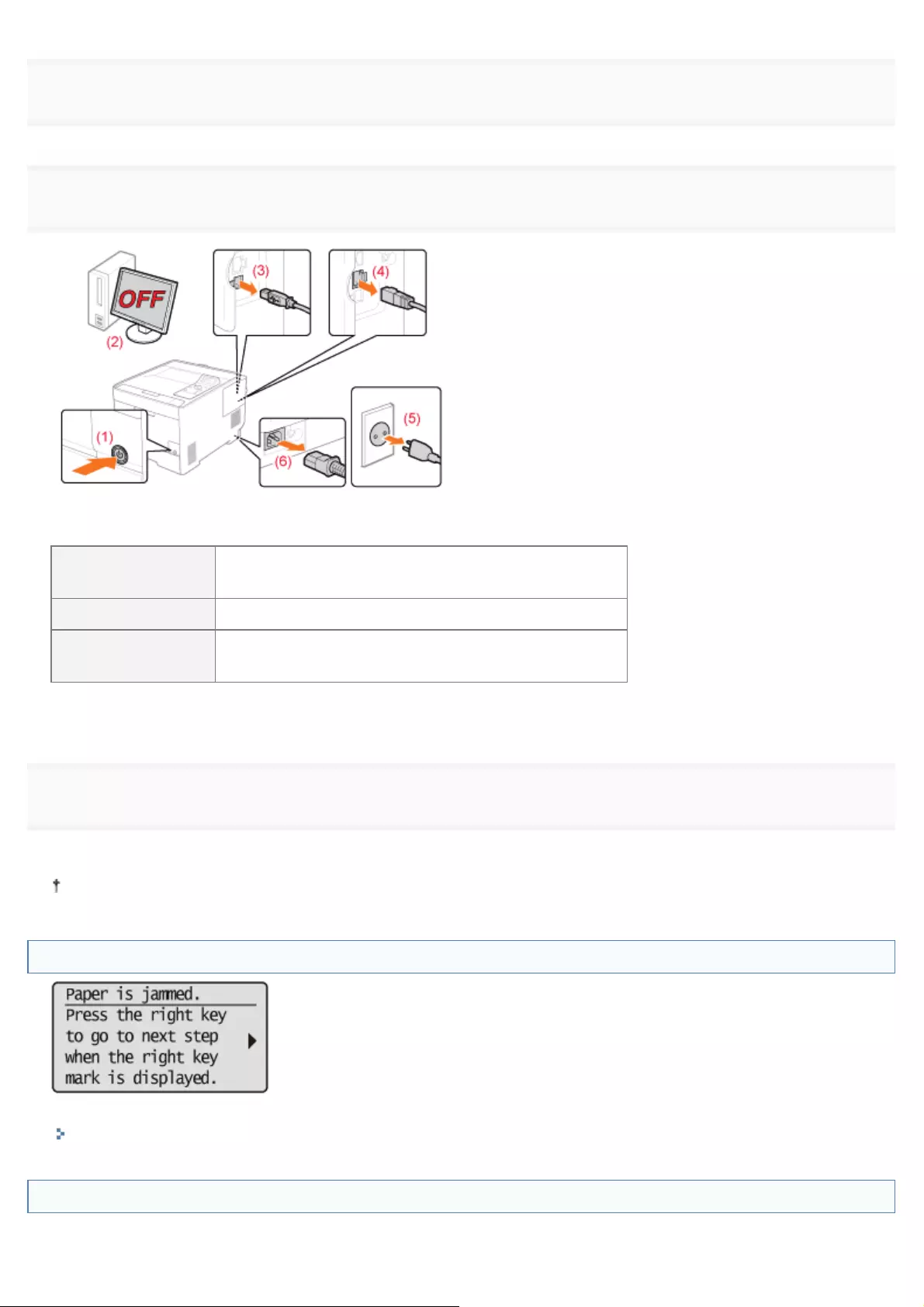
2
Note down the error code displayed in the display.
3
Turn the printer OFF, then disconnect the cables or cords from the printer.
<How to disconnect the cable or cord>
USB cable*(2) Turn the computer off.
(3) Disconnect the cable from the printer.
LAN cable*(4) Disconnect the cable from the printer.
Power cord (5) Disconnect the power plug from the AC power outlet.
(6) Disconnect the cord from the printer.
*Whether the cable is connected or not varies depending on your environment.
4
Contact your local authorized Canon dealer to request service.
When contacting your Canon dealer, please report also the error code which you noted down in Step 2.
If you are not sure what the problem is, contact your local authorized Canon dealer.
A Message Appears in the Display
See the following and solve the problem according to the message.
"A Message Appears in the Control Panel"
The Display Is Turned Off
㻥㻜㻢㻌㻛㻌㻥㻥㻤
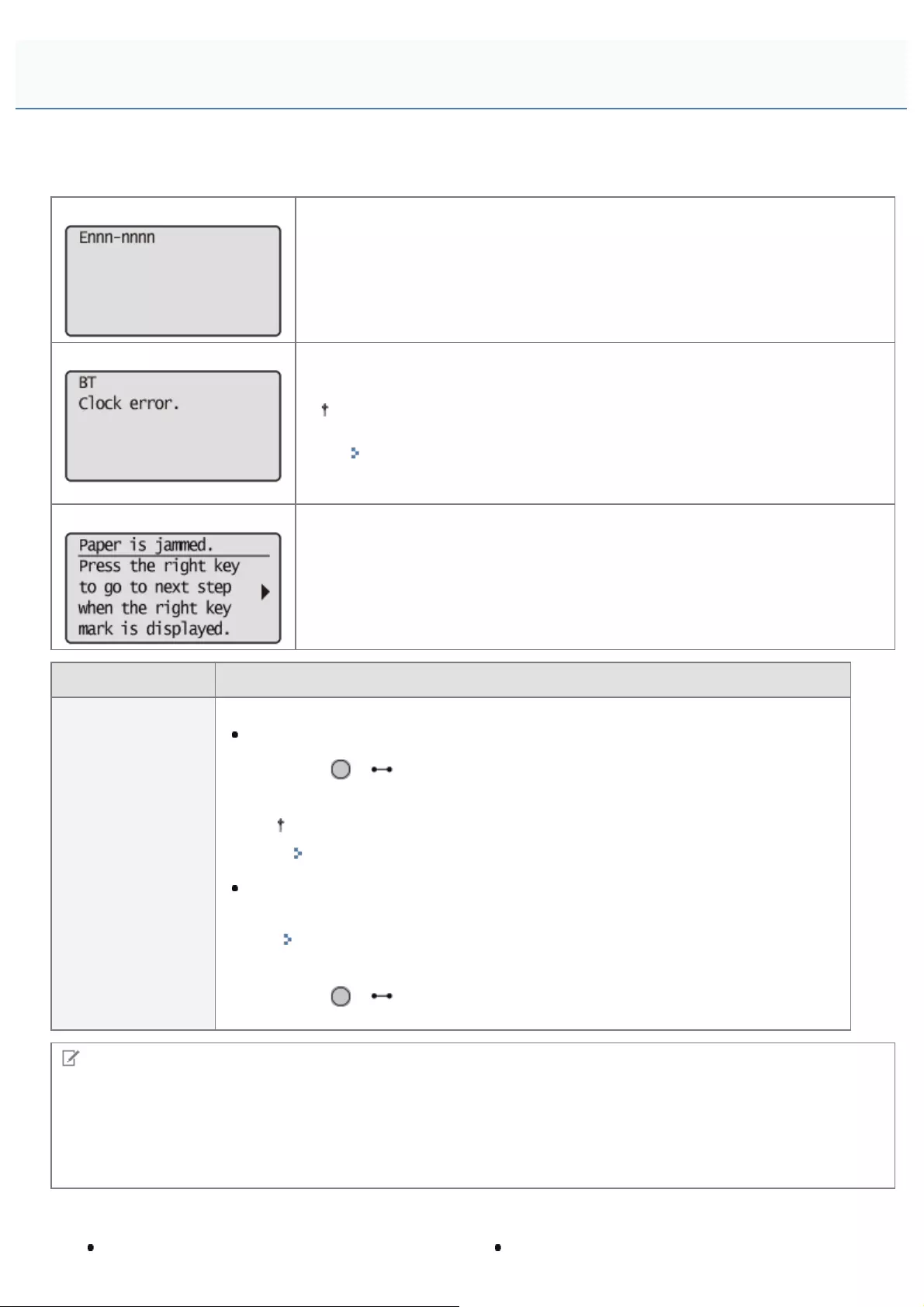
0258-0CC
If an error is occurring for some reason during printing, a message appears in the display of the control panel. Perform
solutions according to the displayed message.
Service call message
It is an error state in which the printer cannot print.
Warning message It is a warning state in which the printer can print, but some solution is required.
Depending on the message type, the message does not appear if [Show
Warnings] is set to [Off].
"[Setup] Menu ([Control Menu] Options)"
Error message
It is an error state in which the printer cannot print.
Mark Description
<Auto Error Skip>
For a message with this mark, perform the following procedure according to the situation.
When you want to skip an error (error skip) and continue to print
1. Press [ ] ( : Online) to skip the error. (Printing is continued.)
2. If print data is missing or is not printed properly, print again.
If [Auto Continue] is set to [On], you can skip the error automatically.
"[Setup] Menu ([Control Menu] Options)"
If you want to cancel a job
1. Perform a soft reset.
"Canceling the Process Currently Being Performed (Soft Reset)"
2. Solve the problem according to the displayed message (this item).
3. Press [ ] ( : Online) and print again.
NOTE
If multiple warning states are occurring at the same time
Warning messages are displayed alternately.
If an error state and warning state are occurring at the same time
A warning message is not displayed.
Service Call Message
A Message Appears in the Control Panel
㻥㻜㻤㻌㻛㻌㻥㻥㻤
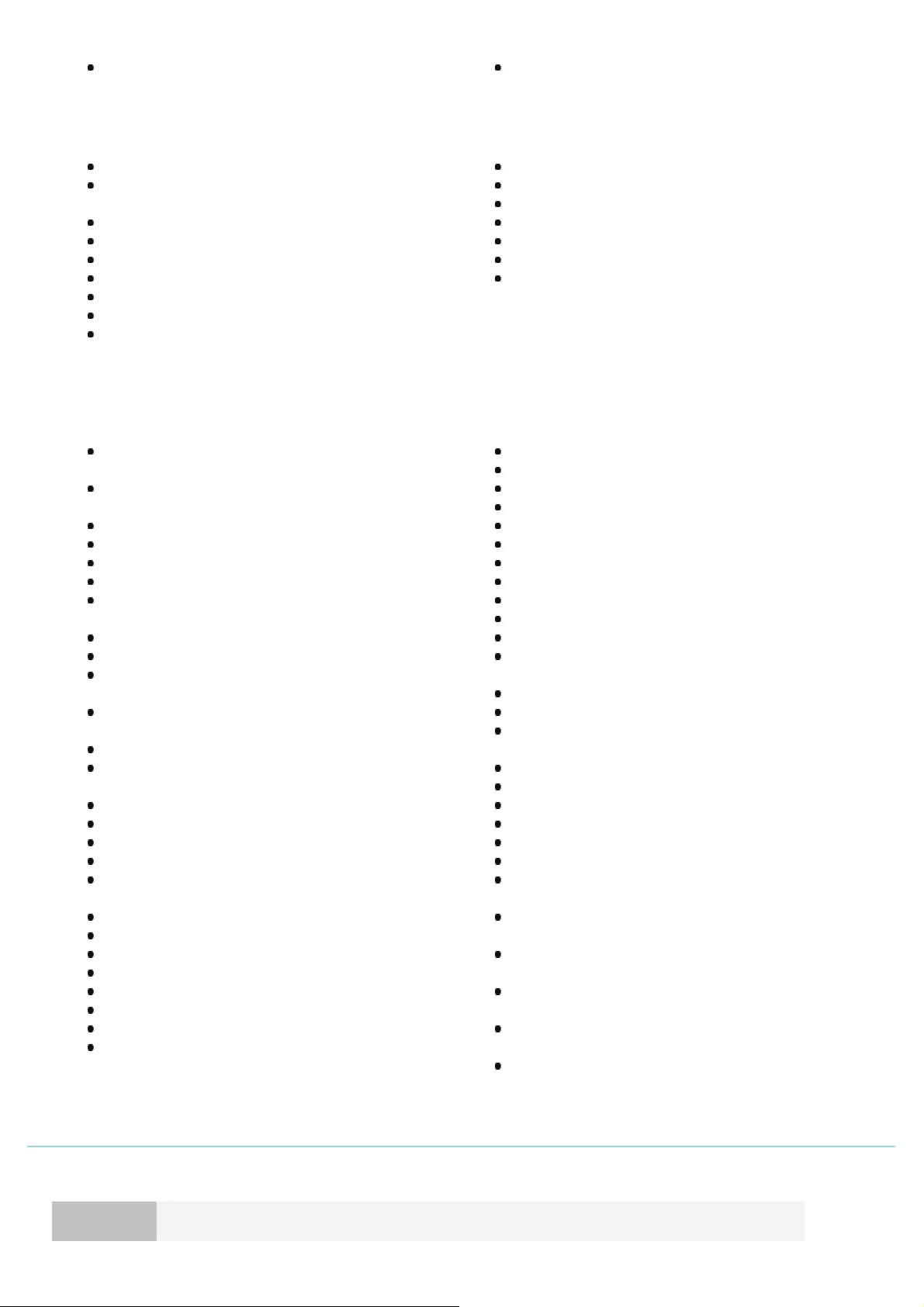
"Ennn-nnnn ("n" represents a number.) "
"E001-nnnn ("n" represents a number.) "
"E003-nnnn ("n" represents a number.) "
"E004-nnnn ("n" represents a number.)"
Warning Message
"1F Output tray is full."
"80 Do not turn the main power OFF. (LBP7680Cx
only)"
"BT Clock error. "
"EM E-Mail access error."
"EM POP3 server error."
"FD Check firmware."
"IE An unknown error has occurred."
"IE Cannot analyze the certificate."
"IE Change the password."
"IE Check auth. settings"
"IE No reply from the destination."
"IE Set necessary authentication info."
"IE Set the correct authentication info."
"IE The certificate has expired."
"IE The certificate is incorrect."
"NW Competing IP add. found on the network."
Error Message
"An error occurred while receiving. <Auto Error Skip>
"
"Cannot communicate with AMS auth. server.<Auto
Error Skip>"
"Cannot decode data. <Auto Error Skip> "
"Cannot decode PDF data."
"Cannot feed paper. "
"Cannot perform 2-Sided Printing. <Auto Error Skip>"
"Cannot print with the specified resolution. <Auto
Error Skip> "
"Cannot print. Reg. Table is full. <Auto Error Skip> "
"Cannot read PDF data."
"Cannot receive PDF data. Set the receivable size.
<Auto Error Skip>"
"Cannot start printing because job is restricted.
<Auto Error Skip>"
"Cannot store. <Auto Error Skip>"
"Change to Black, or change paper type settings.
<Auto Error Skip> "
"Check ITB unit. Remove packing material (sheet)."
"Check paper size. "
"Check toner cart. Remove packing materials."
"Close XXXX cover. (XXXX shows the cover name)"
"IEEE802.1X error. Set the necessary auth.
information."
"Image browse data error."
"Image data error. "
"Key management file is corrupt or deleted."
"Load paper. "
"Not enough display list memory. <Auto Error Skip> "
"Not enough download memory. <Auto Error Skip> "
"Not enough memory for PDF processing."
"Not enough memory for XPS processing. <Auto
Error Skip>"
"Not enough spool memory. <Auto Error Skip>"
"Not enough system memory. <Auto Error Skip> "
"Not enough work memory. <Auto Error Skip> "
"Output tray is full. Remove paper. "
"Paper is jammed. "
"PDF error."
"PDF print range error."
"Print data version error."
"55 SD Card error. <Auto Error Skip>"
"56 SD Card error."
"Set below paper."
"Set cleaning paper and press the Online key. <Auto
Error Skip> "
"Syntax error. "
"Turn OFF main power. Check options."
"XPS document data error. <Auto Error Skip>
(LBP7680Cx Only)"
"XPS font data error. <Auto Error Skip>"
"XPS image data error. <Auto Error Skip>"
"XPS page data error. <Auto Error Skip>"
"XPS print range error. <Auto Error Skip>"
"XPS rendering error."
"XPS unsupported image error. <Auto Error Skip>"
"A4 nn Error ("nn" represents two-digit alphanumeric
characters.) "
"A5 nn Error ("nn" represents two-digit alphanumeric
characters.) "
"A7 nn ERROR ("nn" represents two-digit
alphanumeric characters.) "
"D7 nn Error ("nn" represents two-digit alphanumeric
characters.) "
"D8 nn Error ("nn" represents two-digit alphanumeric
characters.) "
"D9 nn Error ("nn" represents two-digit alphanumeric
characters.) "
Ennn-nnnn ("n" represents a number.)
<Cause> A problem is occurring inside the printer.
Solution Solve the problem following the instructions in "If a Service Error or a Message Is Displayed."
㻥㻜㻥㻌㻛㻌㻥㻥㻤
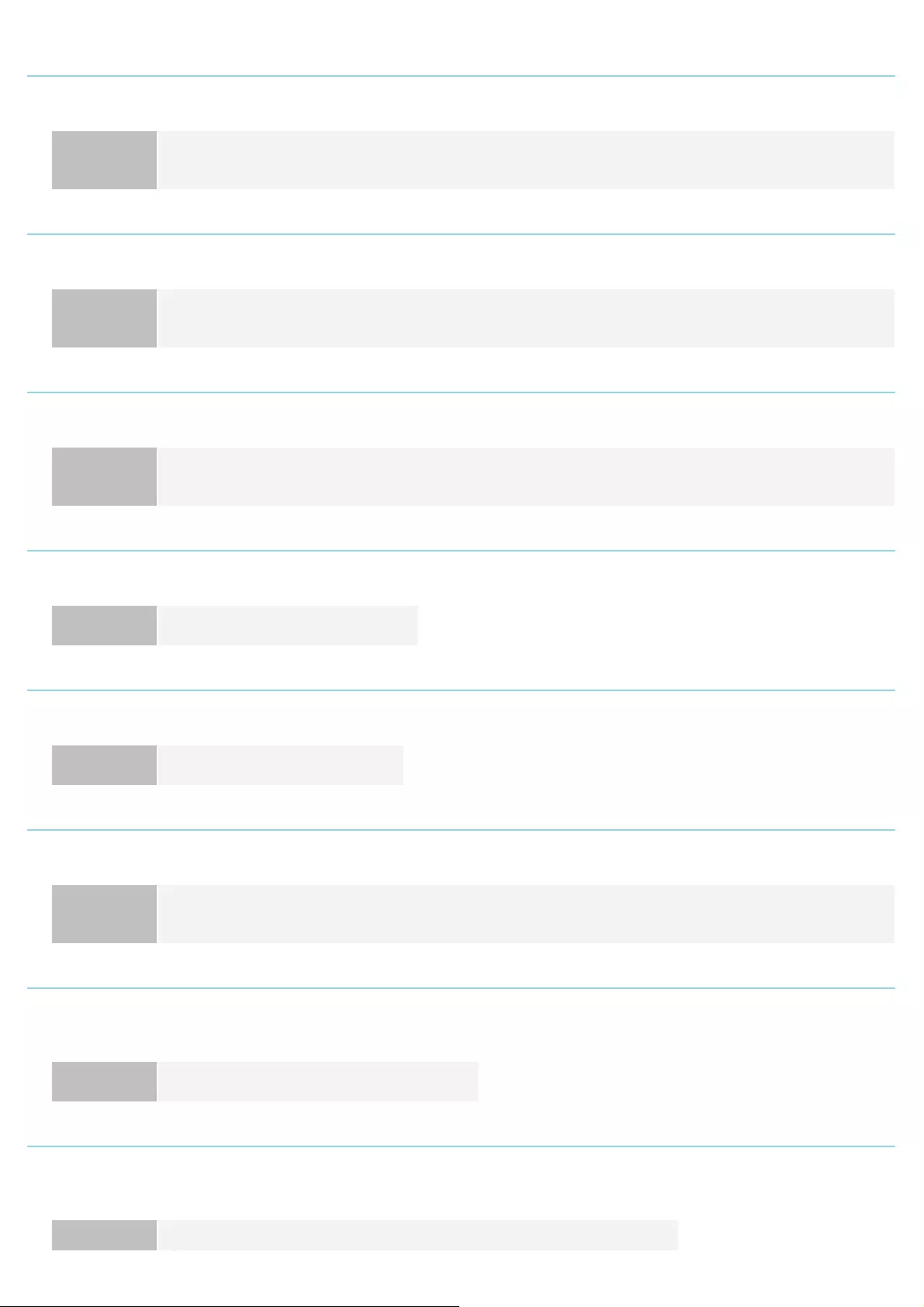
E001-nnnn ("n" represents a number.)
<Cause> A problem is occurring with the fixing unit of the printer.
Solution Follow the procedure in "If a Fixing Unit Error Is Displayed" in "The Message Indicator Is On", and then
contact your local authorized Canon dealer.
E003-nnnn ("n" represents a number.)
<Cause> A problem is occurring with the fixing unit of the printer.
Solution Follow the procedure in "If a Fixing Unit Error Is Displayed" in "The Message Indicator Is On", and then
contact your local authorized Canon dealer.
E004-nnnn ("n" represents a number.)
<Cause> A problem is occurring with the fixing unit of the printer.
Solution Follow the procedure in "If a Fixing Unit Error Is Displayed" in "The Message Indicator Is On", and then
contact your local authorized Canon dealer.
1F Output tray is full.
<Cause> The output tray is filled to the limit.
Solution Remove the paper in the output tray.
80 Do not turn the main power OFF. (LBP7680Cx only)
<Cause> A MEAP application is running.
Solution Wait until the message disappears.
BT Clock error.
<Cause> The clock in this printer has a problem.
Solution Though printing is possible as is, logs such as the job histories cannot be recorded correctly. Contact your
local authorized Canon dealer.
EM E-Mail access error.
<Cause> The printer could not connect to the POP3 server because an error had occurred in its hard
disk.
Solution Clear the hard disk error on the POP3 server.
EM POP3 server error.
<Cause> The printer could not connect to the POP3/SMTP server when printing e-mails, or the settings
for the POP3/SMTP server are not correct.
Check the error in detail using the Remote UI or Network Status Print.
㻥㻝㻜㻌㻛㻌㻥㻥㻤
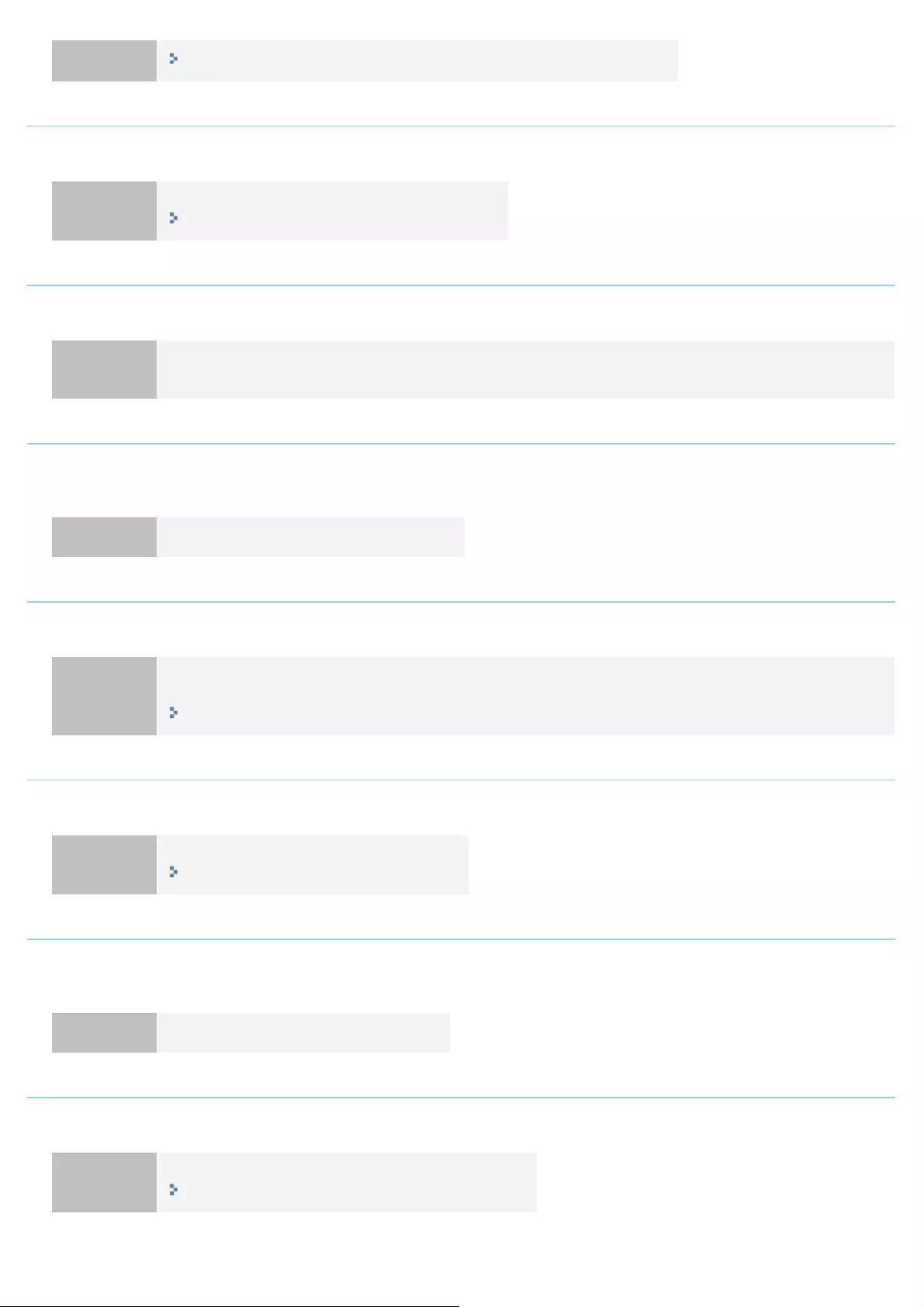
Solution "Receiving E-mail Data on the Mail Server and Printing (E-mail Print)"
FD Check firmware.
<Cause> There is an old version of the file inside the firmware.
Solution Update the firmware.
"[Setup] Menu ([User Maintenance] Options)"
IE An unknown error has occurred.
<Cause> An unknown IEEE802.1X authentication error has occurred.
Solution Restart the printer. If the error message still appears after restarting this printer, contact your local
authorized dealer.
IE Cannot analyze the certificate.
<Cause> During IEEE802.1X authentication, analysis of the certificate received from the authentication
server failed.
Solution Check the authentication server's certificate.
IE Change the password.
<Cause> The password used for IEEE802.1X authentication has expired.
Solution
Change the password registered in the authentication server, and reset the IEEE802.1X authentication
password.
"Setting IEEE802.1X Authentication "
IE Check auth. settings
The printer and the authentication server use different IEEE802.1X authentication systems.
Solution Change IEEE802.1X authentication systems.
"Setting IEEE802.1X Authentication "
IE No reply from the destination.
<Cause> During IEEE802.1X authentication, and error occurred while communicating with the
authentication server.
Solution Check to see if the cable is disconnected.
IE Set necessary authentication info.
<Cause> There is information missing from the IEEE802.1X authentication settings.
Solution Check the IEEE802.1X settings, and reconfigure them.
"Setting IEEE802.1X Authentication "
㻥㻝㻝㻌㻛㻌㻥㻥㻤

IE Set the correct authentication info.
<Cause> An error was returned from the authentication server because the certificate used for
IEEE802.1X authentication is not correct.
Solution The certificate used for TLS authentication is not correct. Check the certificate, and reconfigure it.
"Setting IEEE802.1X Authentication "
Solution If the printer's certificate is correct, check the authentication server's CA certificate.
IE The certificate has expired.
<Cause> During IEEE802.1X authentication, the certificate received from the authentication server
was an expired certificate.
Solution Check the authentication server's certificate.
Solution Check the printer's and the authentication server's time settings.
"Turning the Power On and Specifying a Language and Time"
IE The certificate is incorrect.
<Cause> During IEEE802.1X authentication, an error occurred as a result of the verification by the CA
certificate of the certificate received from the authentication server .
Solution Check the authentication server's certificate.
Solution Install the CA certificate in the printer.
"Security Settings"
NW Competing IP add. found on the network.
<Cause> The IPv4 address set for the printer overlaps with another host on the network.
Solution Change the printer's IPv4 address and restart.
"Setting the IP Address (IP v. 4)"
An error occurred while receiving. <Auto Error Skip>
<Cause> The printer received any unanalyzable data while it is receiving a job, or it timed out.
Solution 1 Press [ ] ( : Online) to cancel printing, then print again.
Solution 2 A problem may be occurring in the network you are using. Check the status of the network that you are
using.
Cannot communicate with AMS auth. server.<Auto Error Skip>
<Cause> It cannot communicate with the imageWARE Access Management System authentication
server.
Solution 1 Press [ ] ( : Online), and continue printing. However, the data that generated the error cannot be
printed.
Solution 2 Check the network settings, check the connection with the server, and then start the imageWARE Access
㻥㻝㻞㻌㻛㻌㻥㻥㻤
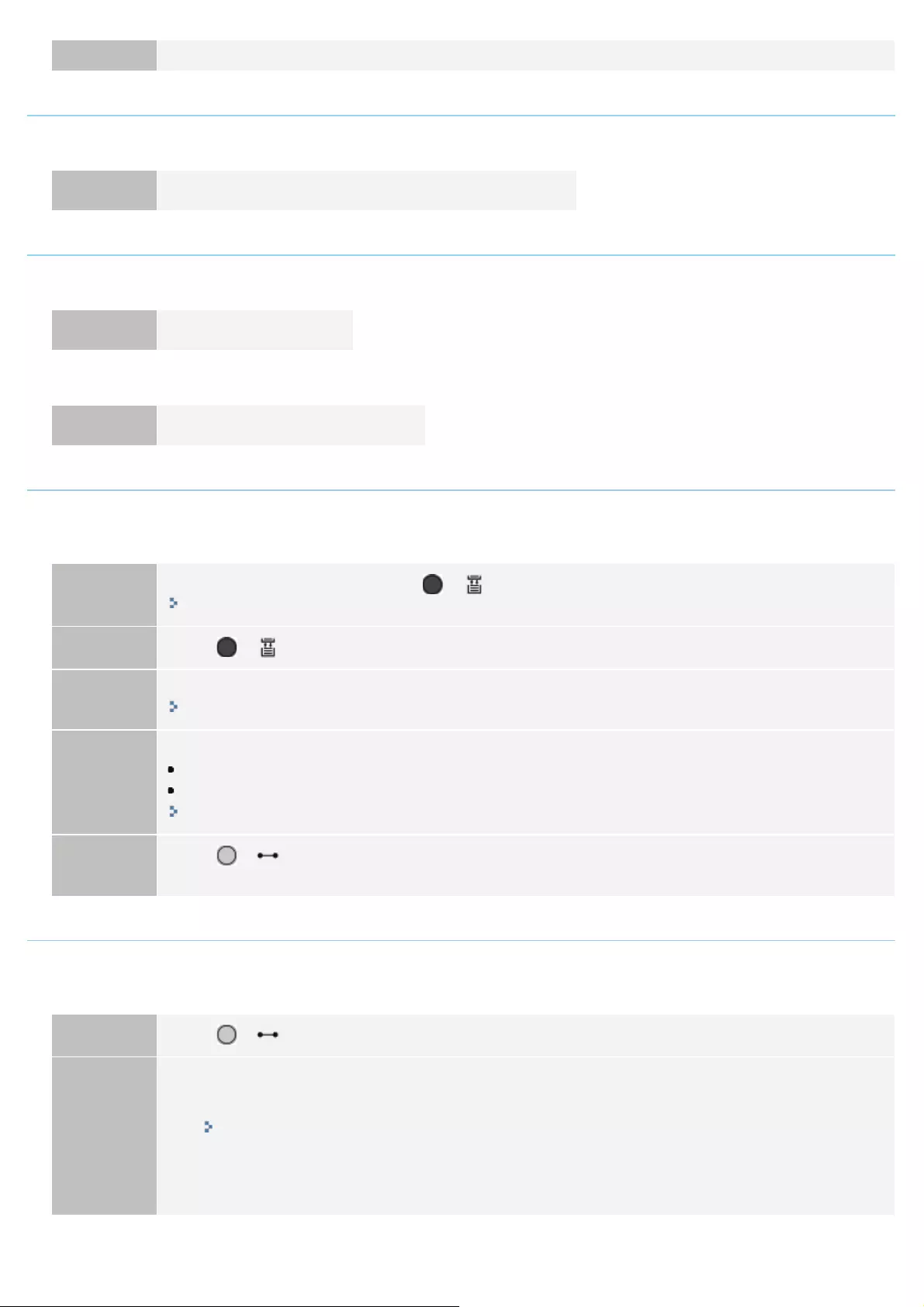
Management System.
Cannot decode data. <Auto Error Skip>
<Cause> The printer could not analyze encrypted secured print data.
Solution Perform a soft reset using the Reset menu, then print again.
Cannot decode PDF data.
<Cause 1> An incorrect password was entered to print the PDF data.
Solution Enter the correct password.
<Cause 2> The PDF data security settings do not permit printing.
Solution Change the settings to permit printing.
Cannot feed paper.
<Cause> Paper of the size or type that cannot be fed from the multi-purpose tray or paper drawer is
specified.
Solution 1 If a paper source is specified, press [ ] ( : Feeder Selection), and then set [Paper Source] to [Auto].
"[Select Feeder] Menu"
Solution 2 Press [ ] ( : Feeder Selection) to select another paper source.
Solution 3 Load paper appropriate for the paper source.
"Usable Paper"
Solution 4
Specify the following items.
[Standard Paper Size]
[Default Paper Type]
"[Setup] Menu ([Paper Source] Options)"
Solution 5 Press [ ] ( : Online), then print from the currently selected paper source. However, this may result in
deterioration in print quality.
Cannot perform 2-Sided Printing. <Auto Error Skip>
<Cause> The printer received 2-sided printing data of paper sizes (including the orientation) or paper
types unavailable for automatic 2-sided printing.
Solution 1 Press [ ] ( : Online) to continue printing. However, the data on each side is printed on two pages.
Solution 2
Perform the following procedure.
1. Perform a soft reset.
"Canceling the Process Currently Being Performed (Soft Reset)"
2. Change the setting to a paper size or type available for automatic 2-sided printing, and then print
again.
㻥㻝㻟㻌㻛㻌㻥㻥㻤
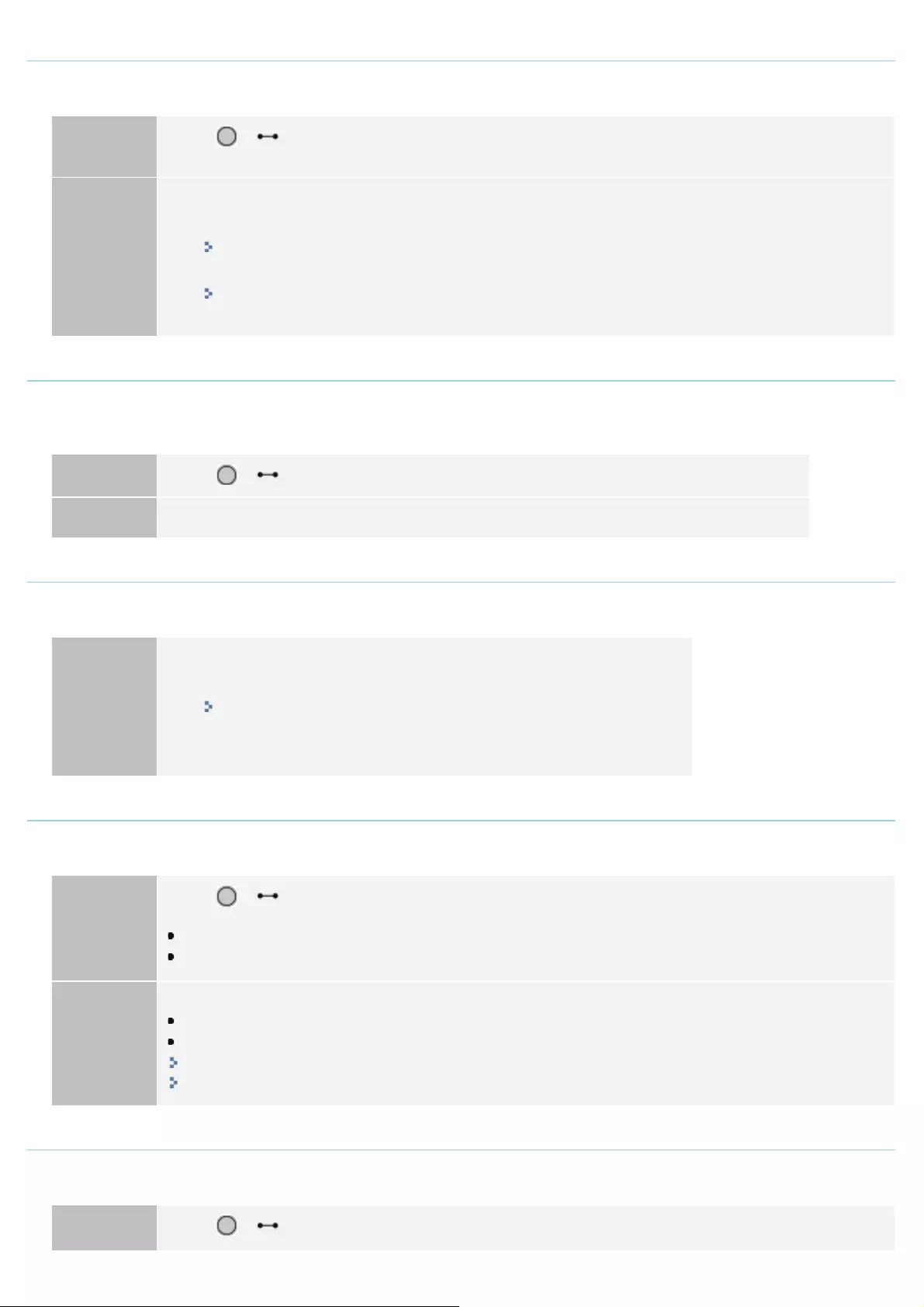
Cannot print with the specified resolution. <Auto Error Skip>
<Cause> The printer cannot process the data because it is too complicated.
Solution 1 Press [ ] ( : Online) to continue printing. In this case, the printer prints with the image quality level
being lowered.
Solution 2
Perform the following procedure.
1. Perform a soft reset.
"Canceling the Process Currently Being Performed (Soft Reset)"
2. Set [Gradation Level] to [High 1], and then print again.
"[Setup] Menu ([Quality] Options)"
Cannot print. Reg. Table is full. <Auto Error Skip>
<Cause> The total number of binders inside a single job exceeds 16, or the number of documents inside
a single binder exceeds 16.
Solution 1 Press [ ] ( : Online) to continue printing. However, the data may not be printed properly.
Solution 2 Confirm the data to be printed, then print again.
Cannot read PDF data.
<Cause> An error has occurred when the PDF data was read.
Solution
Perform the following procedure.
1. Perform a soft reset.
"Canceling the Process Currently Being Performed (Soft Reset)"
2. Print the PDF data in a format which this printer supports again.
Cannot receive PDF data. Set the receivable size. <Auto Error Skip>
<Cause> There is not sufficient free space to print the PDF file using the direct print function.
Solution 1
Press [ ] ( : Online) to cancel the job. Afterward, perform the following processes (decreasing the
size of the PDF file), and then print again.
Optimizing the PDF file
Dividing the PDF file into multiple files
Solution 2
Send the file again using one of the following methods. (LBP7680Cx only)
Insert the SD card into the slot and send the file again.
Send the file directly from the USB memory device.
"Installing SD Card (LBP7680Cx Only)"
"Printing Files Directly from USB Memory Devices (USB Direct Print) (LBP7680Cx Only)"
Cannot start printing because job is restricted. <Auto Error Skip>
<Cause> Print job restrictions are set.
Press [ ] ( : Online) to cancel the job. If print job restrictions are set, only the data stored in a box
㻥㻝㻠㻌㻛㻌㻥㻥㻤
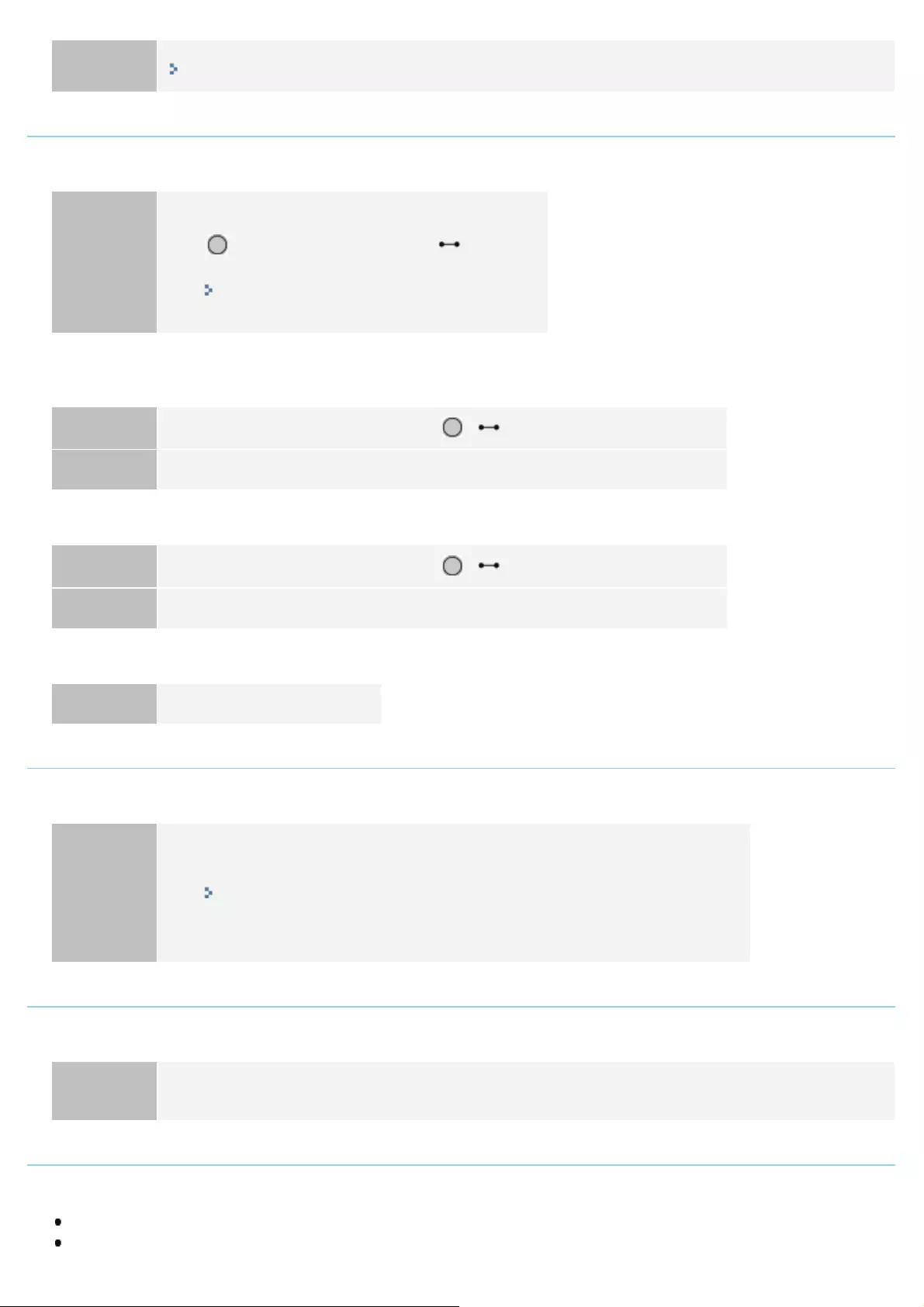
Solution can be printed. Store the data you want to print in a box.
"Setting Restrictions for Print Jobs (LBP7680Cx Only)"
Cannot store. <Auto Error Skip>
<Cause 1> [SD Card] in the Control Menu options in the Setup menu is set to [Off].
Solution
Perform the following procedure.
1. [ ] Cancel printing by pressing ( : Online).
2. Set [SD Card] to [On] and print again.
"[Setup] Menu ([Control Menu] Options)"
<Cause 2> The number of the jobs exceeded the amount of jobs the printer can save (You can save up
to 100 jobs in the SD card.)
Solution 1 The printer is ready to print by pressing [ ] ( : Online), ignoring the print data.
Solution 2 Delete unnecessary stored jobs.
<Cause 3> The number of the jobs exceeded the number of jobs you can save in the SD card.
Solution 1 The printer is ready to print by pressing [ ] ( : Online), ignoring the print data.
Solution 2 Delete unnecessary stored jobs.
<Cause 4> The specified box number is not correct.
Solution Specify the correct box number.
Change to Black, or change paper type settings. <Auto Error Skip>
<Cause> You have attempted to print color transparencies.
Solution
Perform the following procedure.
1. Perform a soft reset.
"Canceling the Process Currently Being Performed (Soft Reset)"
2. Either prints them in black and white or uses paper other than transparencies.
Check ITB unit. Remove packing material (sheet).
<Cause> There is packing material (sheet) remaining in the output area.
Solution Turn OFF the printer, remove the packing material (sheet) from inside the back cover, and then turn the
printer back ON.
Check paper size.
<Cause 1> The size of the paper loaded in a paper source is different from the following settings.
Setting for [Output Size] in the [Page Setup] sheet in the printer driver
㻥㻝㻡㻌㻛㻌㻥㻥㻤
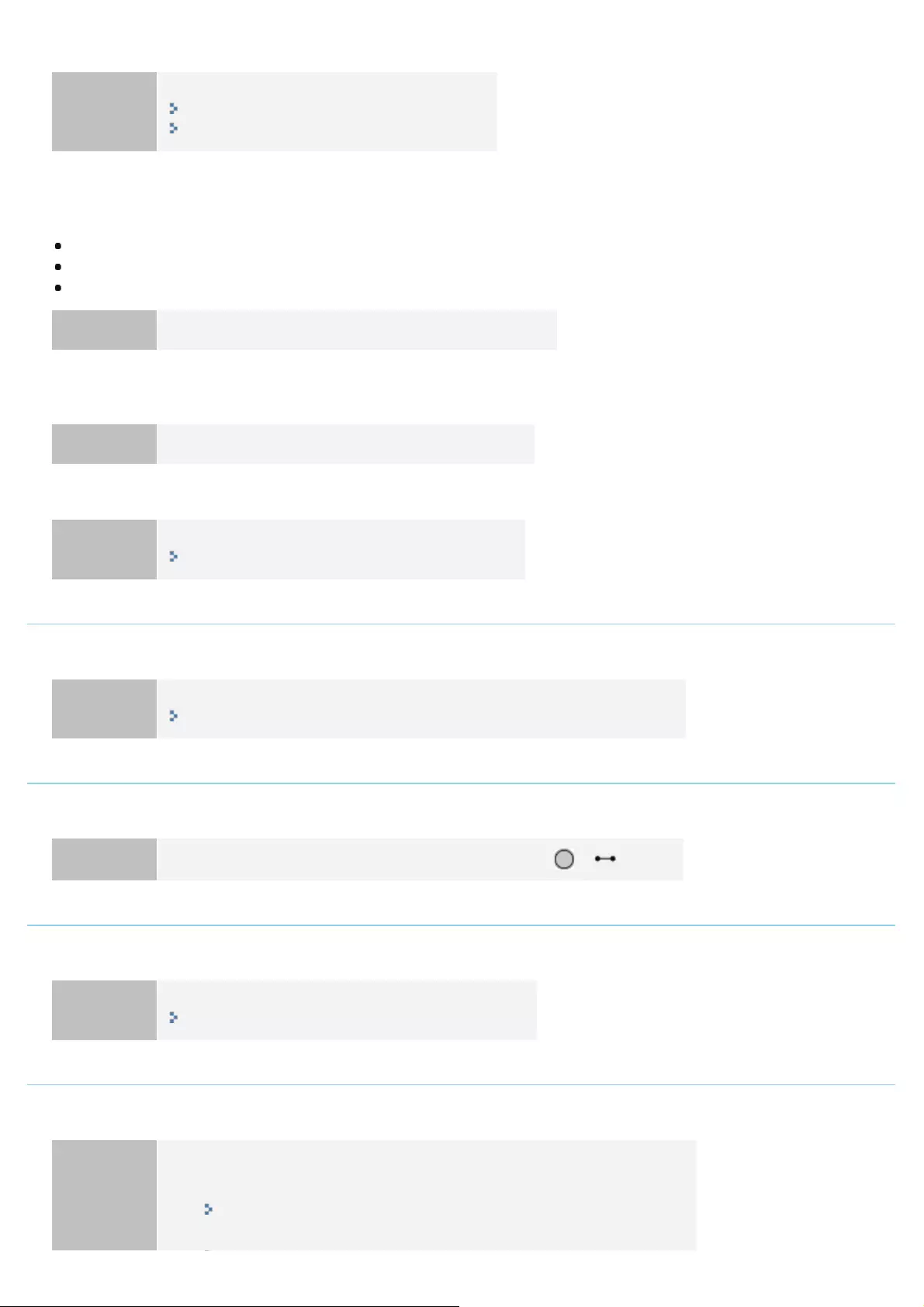
[MP Tray Paper Size], [Drawer 1 Size] or [Drawer 2 Size] in the [Select Feeder] menu
Solution
Specify the setting properly.
"Registering the Paper Size and Type"
"Configuring the Printer Driver and Printing"
<Cause 2> When the following settings in the [Select Feeder] menu are set to [Mixed Sizes], custom
size paper whose long edges are 215.9 mm or less is loaded in portrait orientation and printed (only
when the UFR II printer driver is used).
[MP Tray Paper Size]
[Drawer 1 Size]
[Drawer 2 Size]
Solution Load the paper in landscape orientation, then print again.
<Cause 3> When the UFR II printer driver was not used, custom size paper was loaded in landscape
orientation to be printed.
Solution Load the paper in portrait orientation, then print again.
<Cause 4> [Check Paper Size] in the common [Setup] menu ([User Maintenance] options) is set to [On].
Solution Set [Check Paper Size] to [Off], and then print again.
"[Setup] Menu ([User Maintenance] Options)"
Check toner cart. Remove packing materials.
<Cause> The toner cartridge was installed with the sealing tapes still attached.
Solution Remove the sealing tapes and set the toner cartridge in the correct position.
"Toner Cartridge Replacement"
Close XXXX cover. (XXXX shows the cover name)
<Cause> A cover is open.
Solution Close the cover firmly. If the printer is not online, press [ ] ( : Online).
IEEE802.1X error. Set the necessary auth. information.
<Cause> There is information missing from the IEEE802.1X authentication settings.
Solution Check the IEEE802.1X settings, and reconfigure them.
"Setting IEEE802.1X Authentication "
Image browse data error.
<Cause> Data which this printer cannot process is included in TIFF data.
Solution 1
(LBP7680Cx
Perform the following procedure.
1. Install the SD card.
Installing SD Card
2. 2QWKHFRQWUROSDQHOVHOHFW>,PDJLQJ@ĺ>3ULQW*XDUDQWHH@ĺ>2Q@
㻥㻝㻢㻌㻛㻌㻥㻥㻤
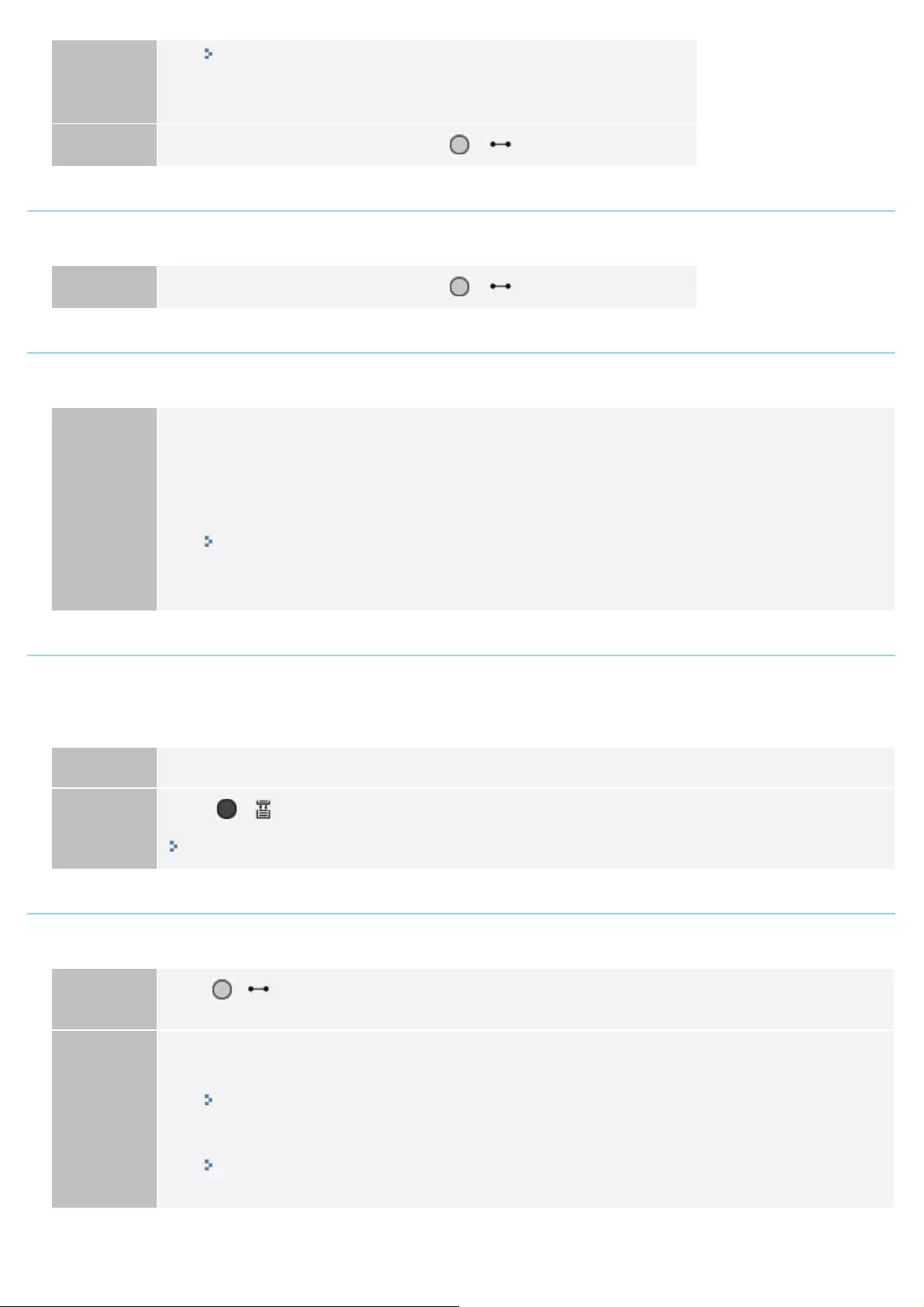
Only) [Setup] Menu ([Imaging] Options)
3. Restart the printer.
Solution 2 This printer cannot print the data. Press [ ] ( : Online) to cancel the job.
Image data error.
<Cause> Data which this printer cannot process is included in TIFF data or JPEG data.
Solution This printer cannot print the data. Press [ ] ( : Online) to cancel the job.
Key management file is corrupt or deleted.
<Cause> The file related to key management is broken.
Solution
Perform the following procedure.
1. 6HOHFW>1HWZRUN@ĺ>5HPRWH8,6HWWLQJV@ĺ>66/@XVLQJWKHFRQWUROSDQHODQGWKHQPDNHVXUH
that [SSL] is set to [Off].
2. Restart the printer, and then regenerate the key and certificate and specify the settings for SSL
from the Remote UI.
"Security Settings"
3. Restart the printer.
Load paper.
<Cause> Paper of the size specified in the application is not loaded in the paper source (in all the
paper sources when [Paper Source] is set to [Auto] and in the specified paper source when the setting
is fixed).
Solution 1 Refill or load paper.
Solution 2
Press [ ] ( : Feeder Selection), then select other paper source for the same paper size or larger
paper size.
"[Select Feeder] Menu"
Not enough display list memory. <Auto Error Skip>
<Cause> The memory required for processing has run out and overflowed.
Solution 1 Press [ ] ( : Online) to continue printing. However, the job with which an error has occurred is not
printed.
Solution 2
Perform the following procedure.
1. Perform a soft reset.
"Canceling the Process Currently Being Performed (Soft Reset)"
2. After the soft reset, either performs a hard reset or turns the printer back ON, increase memory
capacity and prints again. (All data in the memory will be erased.)
"Canceling All the Jobs (Hard Reset)"
Not enough download memory. <Auto Error Skip>
㻥㻝㻣㻌㻛㻌㻥㻥㻤
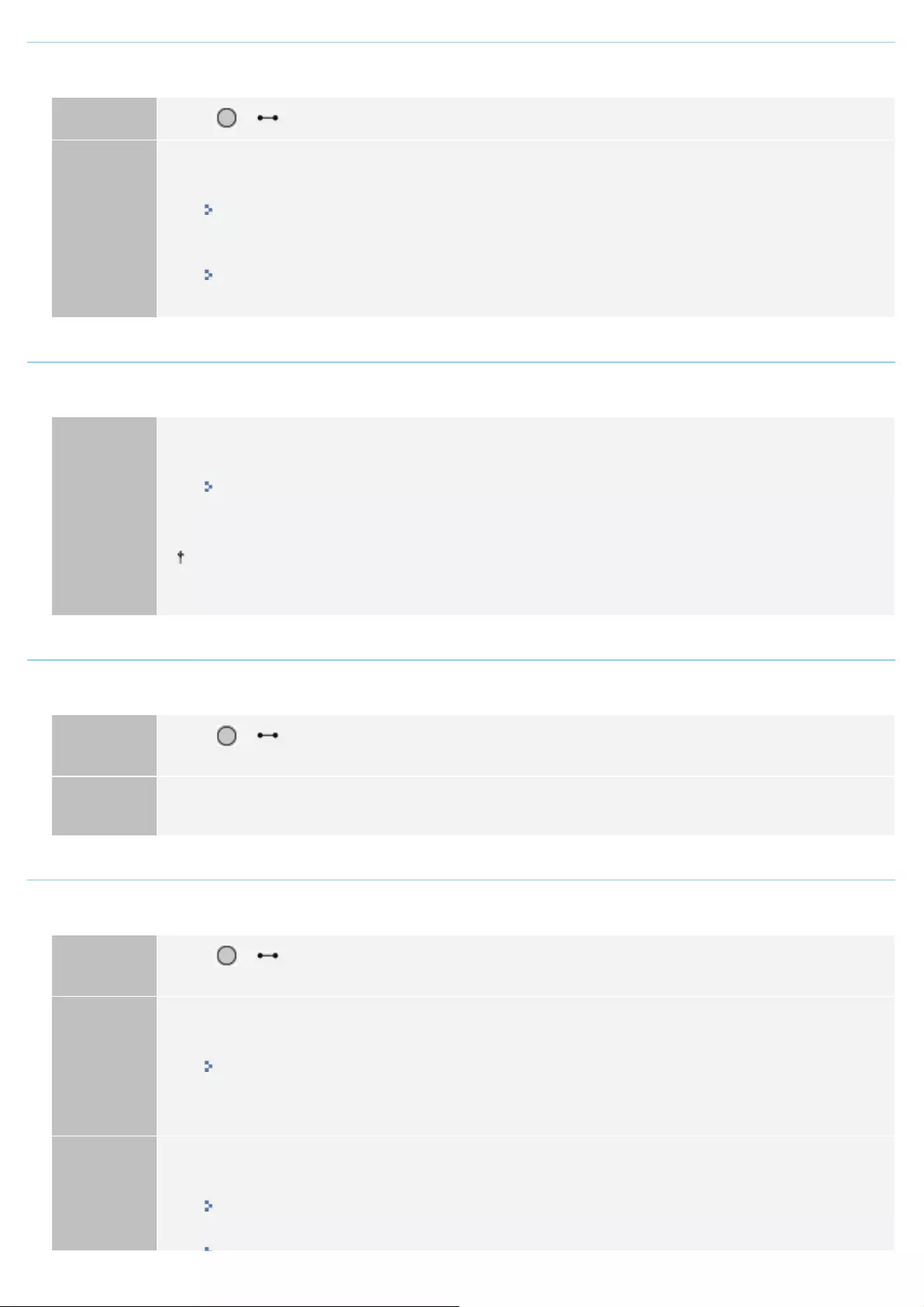
<Cause> The memory for registering overlay forms and custom characters ran out and overflowed.
Solution 1 Press [ ] ( : Online) to continue printing. However, the overflowed data cannot be registered.
Solution 2
Perform the following procedure.
1. Perform a soft reset.
"Canceling the Process Currently Being Performed (Soft Reset)"
2. After the soft reset, either perform a hard reset or turn the printer back ON, increase memory
capacity and print again. (All data in the memory will be erased.)
"Canceling All the Jobs (Hard Reset)"
Not enough memory for PDF processing.
<Cause> There is not enough memory to process a PDF file.
Solution
Perform the following procedure.
1. Perform a soft reset.
"Canceling the Process Currently Being Performed (Soft Reset)"
2. Decrease the size of the PDF file or divide it into multiple files, and then print again.
The PDF data may be printed properly by opening it from an application and using the printer
driver.
Not enough memory for XPS processing. <Auto Error Skip>
<Cause> There is not enough memory for XPS processing.
Solution 1 Press [ ] ( : Online), and continue printing. However, the data that generated the error will not be
printed correctly.
Solution 2 If images such as Progressive JPEG are handled inside the XPS, convert them to TIFF or Baseline JPEG
and then print.
Not enough spool memory. <Auto Error Skip>
<Cause> Because spool memory ran out, the printer cannot print.
Solution 1 Press [ ] ( : Online) to continue printing. However, the page with which an error is occurring is not
printed.
Solution 2
Perform the following procedure.
1. Perform a soft reset.
"Canceling the Process Currently Being Performed (Soft Reset)"
2. Specify the paper size smaller, and then print again.
Solution 3
Perform the following procedure.
1. Perform a soft reset.
"Canceling the Process Currently Being Performed (Soft Reset)"
2. Set [Gradation Level] to [Standard], and then print again.
㻥㻝㻤㻌㻛㻌㻥㻥㻤
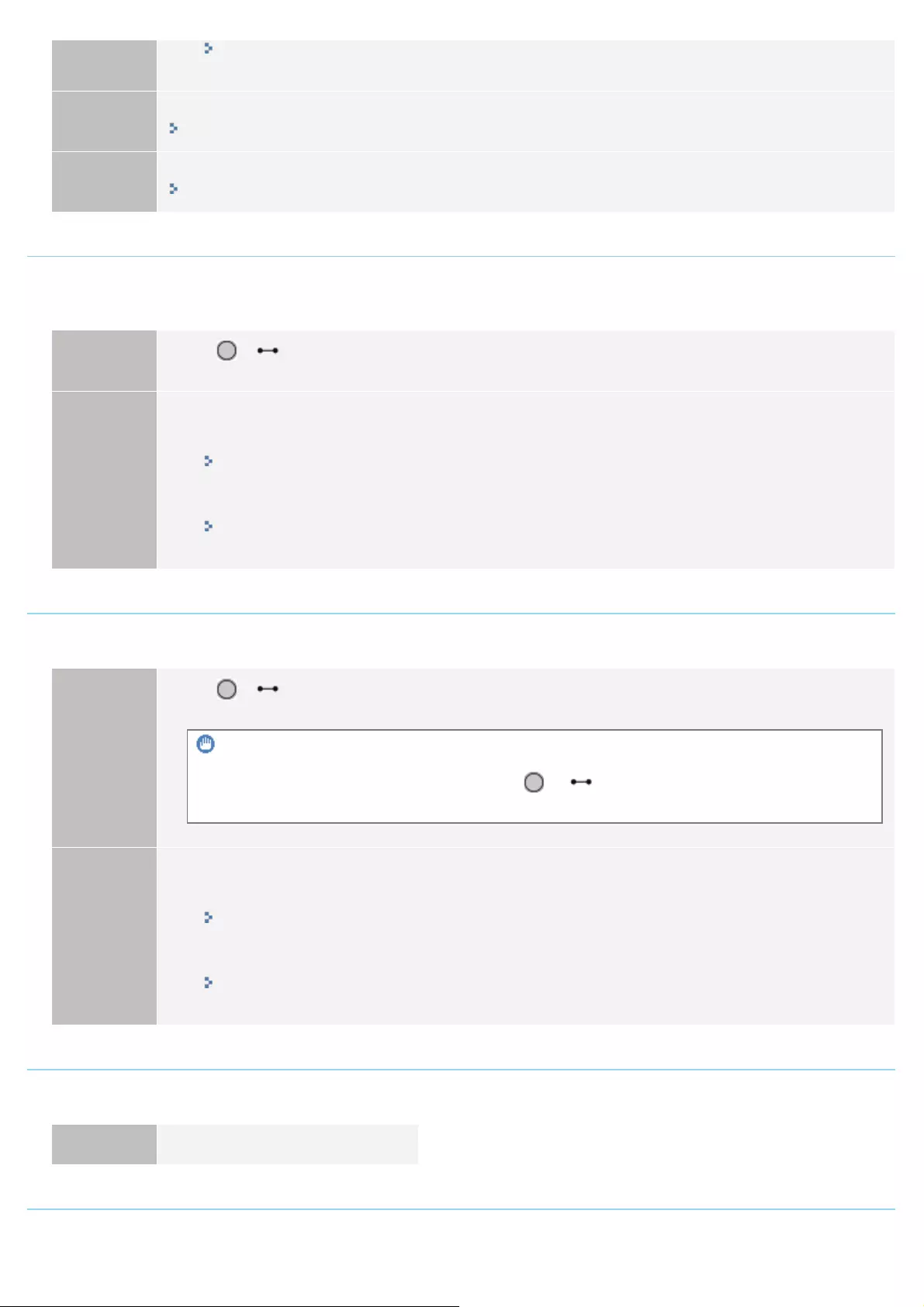
"[Setup] Menu ([Quality] Options)"
Solution 4 If [2-Sided Printing] is set to [On], specify [Off], and then print again.
"[Setup] Menu ([Paper Source] Options)"
Solution 5 Change the setting for [Halftones], and then print again.
"[Setup] Menu ([Quality] Options)"
Not enough system memory. <Auto Error Skip>
<Cause> The work memory required for the printer process ran out while the system was processing
the data (mainly the graphics data and text data).
Solution 1 Press [ ] ( : Online) to continue printing. However, the data with which an error is occurring is not
printed properly.
Solution 2
Perform the following procedure.
1. Perform a soft reset.
"Canceling the Process Currently Being Performed (Soft Reset)"
2. After the soft reset, either perform a hard reset or turn the printer back ON, increase memory
capacity and print again. (All data in the memory will be erased.)
"Canceling All the Jobs (Hard Reset)"
Not enough work memory. <Auto Error Skip>
<Cause> The work memory for each print mode cannot be secured.
Solution 1
Press [ ] ( : Online) to continue printing. However, the data with which an error is occurring is not
printed properly.
IMPORTANT
When continuing printing by pressing [ ] ( : Online)
Be aware that the data of overlay or macro that is already registered may be deleted.
Solution 2
Perform the following procedure.
1. Perform a soft reset.
"Canceling the Process Currently Being Performed (Soft Reset)"
2. After the soft reset, either perform a hard reset or turn the printer back ON, increase memory
capacity and print again. (All data in the memory will be erased.)
"Canceling All the Jobs (Hard Reset)"
Output tray is full. Remove paper.
<Cause> The output tray is filled to the limit.
Solution Remove the paper in the output tray.
Paper is jammed.
<Cause> Paper is jammed inside the printer.
㻥㻝㻥㻌㻛㻌㻥㻥㻤
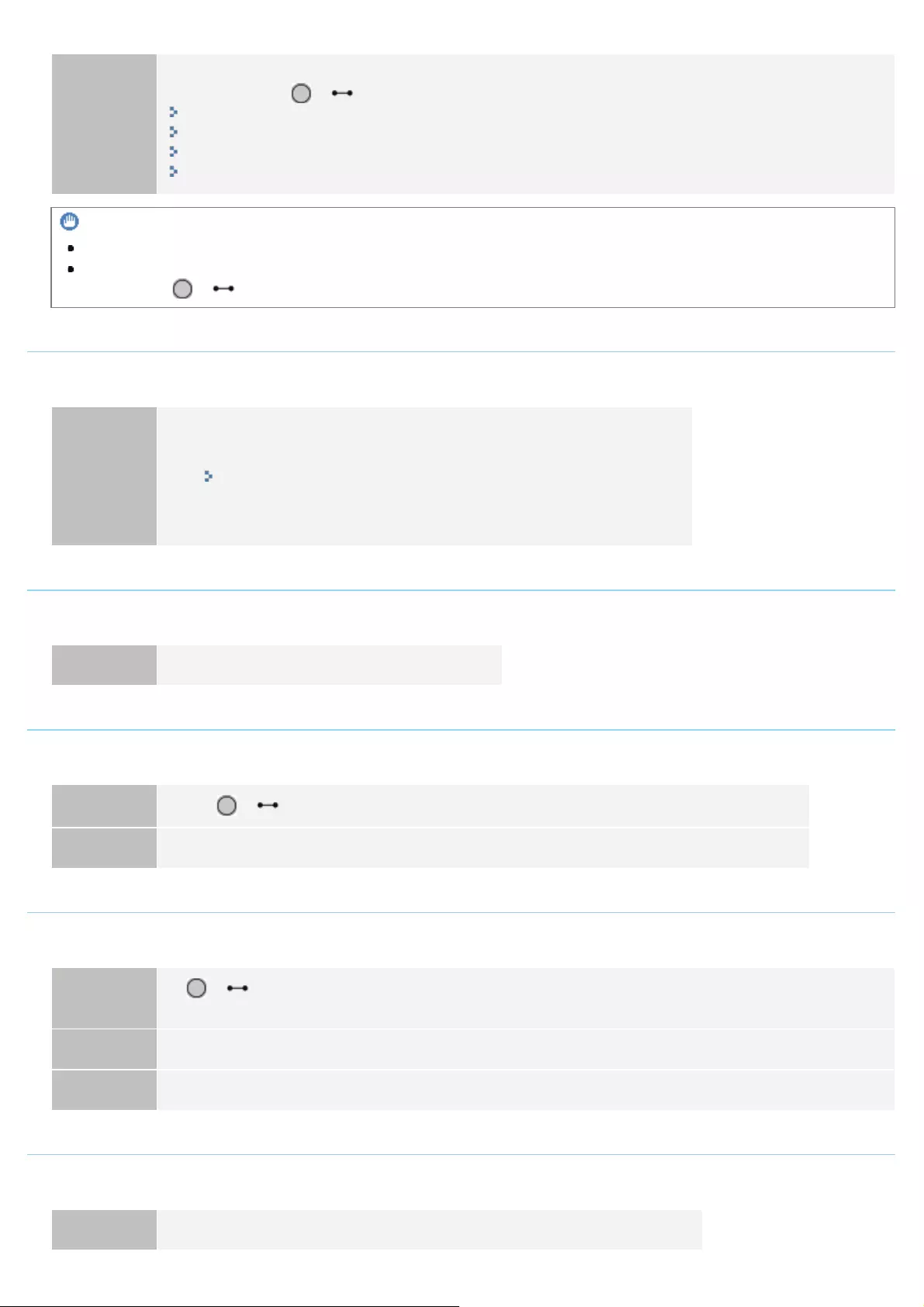
Solution
Remove the jammed paper and set the paper drawer and covers to the original position. If the printer is
not online, press [ ] ( : Online).
"Clearing Paper Jams (Multi-purpose Tray)"
"Clearing Paper Jams (Paper Drawer)"
"Clearing Paper Jams (Back Cover)"
"Clearing Paper Jams (Output Area)"
IMPORTANT
If paper jams occur at multiple areas at the same time, the areas appear in the display by rotation.
If you removed the jammed paper without opening any cover, be sure to open and close the front cover once, and
then press [ ] ( : Online).
PDF error.
<Cause> PDF data which this printer cannot process was sent.
Solution
Perform the following procedure.
1. Perform a soft reset.
"Canceling the Process Currently Being Performed (Soft Reset)"
2. Print the PDF data in a format which this printer supports again.
PDF print range error.
<Cause> The specified print range is incorrect.
Solution Specify the print range correctly, then print again.
Print data version error.
<Cause> A problem is occurring with the fixing unit of the printer.
Solution 1 Press [ ] ( : Online) to continue printing. However, the data may not be printed properly.
Solution 2 Print the data again from the printer driver for the printer.
55 SD Card error. <Auto Error Skip>
<Cause> An SD error has occurred.
Solution 1 If [ ] ( : Online) is pressed, settings that do not use the SD card are activated. However, you cannot
print with functions that use the SD card.
Solution 2 Turn OFF the printer, and make sure that the SD card is inserted correctly.
Solution 3 Contact your local dealer for repairs.
56 SD Card error.
<Cause> An SD error has occurred.
Solution 1 Turn the printer OFF, wait for 10 seconds or longer, and then turn it ON again.
㻥㻞㻜㻌㻛㻌㻥㻥㻤

Solution 2 Run SD card quick format or standard format.
Solution 3 Contact your local dealer for repairs.
Set below paper.
<Cause 1> The paper of the size specified in the application is not loaded in the paper drawer or multi-
purpose tray, or the paper source for the different paper size is selected.
Solution 1 Load the paper of the size selected in the application (or the one specified by scaling factors).
"Paper Loading and Output"
Solution 2
Press [ ] ( : Online), and then print to the currently loaded paper forcibly. If you are using the multi-
purpose tray, the setting for [MP Tray Paper Size] in the [Select Feeder] menu automatically changes to
the paper size specified in the application.
<Cause 2> The paper size specified in the application software is different from the following setting.
[MP Tray Paper Size], [Drawer 1 Size] or [Drawer 2 Size] in the [Select Feeder] menu
Solution Specify the setting properly.
"Registering the Paper Size and Type"
<Cause 3> Improper paper source is selected.
Solution
Specify the setting for [Paper Source] in the [Select Feeder] menu properly.
"[Select Feeder] Menu"
IMPORTANT
When the message <Set below paper.> appears
If the front cover is opened, the message may disappear. However, be sure to follow the directions
in the displayed message to change the paper.
Set cleaning paper and press the Online key. <Auto Error Skip>
<Cause> The printer is waiting to print cleaning paper.
Solution Load Letter size or A4 paper in the multi-purpose tray, and then press [ ] ( : Online).
Syntax error.
<Cause> Invalid data is sent when printing using the UFR II printer driver.
Solution 1 Press [ ] ( : Online) to continue printing from the next data. However, the page with which an error
is occurring and its subsequent pages are not printed.
Solution 2 Confirm the data to be printed, then print again.
Turn OFF main power. Check options.
<Cause 1> The optional paper feeder is not installed properly.
Solution Turn the power OFF, install the paper feeder properly, and then turn it ON again.
㻥㻞㻝㻌㻛㻌㻥㻥㻤
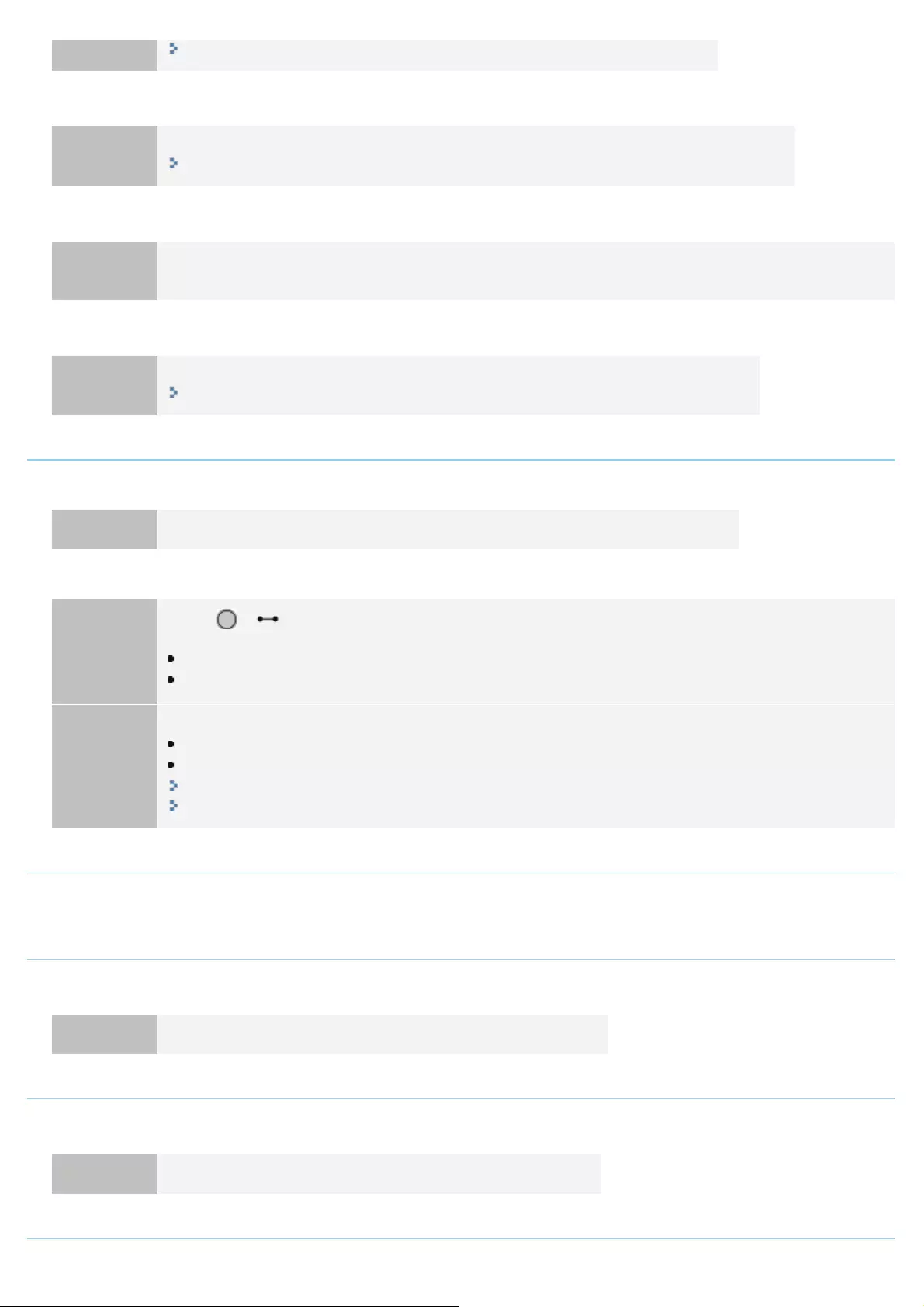
"Printer Installation"
<Cause 2> Any optional paper feeder is installed or removed when the printer is ON.
Solution Turn the power OFF, install or remove the paper feeder, and then turn the printer ON again.
"Printer Installation"
<Cause 3> The connector of the optional paper feeder is disconnected.
Solution Turn the printer OFF, unplug the power plug from the AC power outlet and contact your local authorized
Canon dealer for servicing.
<Cause 4> A paper feeder that is not for this printer is installed.
Solution Turn the power OFF, install the paper feeder for this printer, and then turn it ON again.
"Printer Installation"
XPS document data error. <Auto Error Skip> (LBP7680Cx Only)
<Cause 1> The XPS data or the data extracted from the XPS data are invalid.
Solution Check to make sure that the data that was input is normal, restart it and print again.
<Cause 2> A high volume file was sent directly.
Solution 1
Press [ ] ( : Online) to cancel the job. Afterward, perform the following processes (decreasing the
size of the XPS file), and then print again.
Optimizing the XPS file
Dividing the XPS file into multiple files
Solution 2
Send the file again using one of the following methods.
Insert the SD card into the slot and send the file again.
Send the file directly from the USB memory device.
"Installing SD Card (LBP7680Cx Only)"
"Printing Files Directly from USB Memory Devices (USB Direct Print) (LBP7680Cx Only)"
XPS font data error. <Auto Error Skip>
<Cause> Incorrect font data was received.
XPS image data error. <Auto Error Skip>
<Cause> Incorrect image data was received.
Solution Check the output result for missing images, and correct the data.
XPS page data error. <Auto Error Skip>
<Cause> Pages cannot be generated because the description is invalid.
Solution Check the output result for missing pages, and correct the data.
XPS print range error. <Auto Error Skip>
㻥㻞㻞㻌㻛㻌㻥㻥㻤
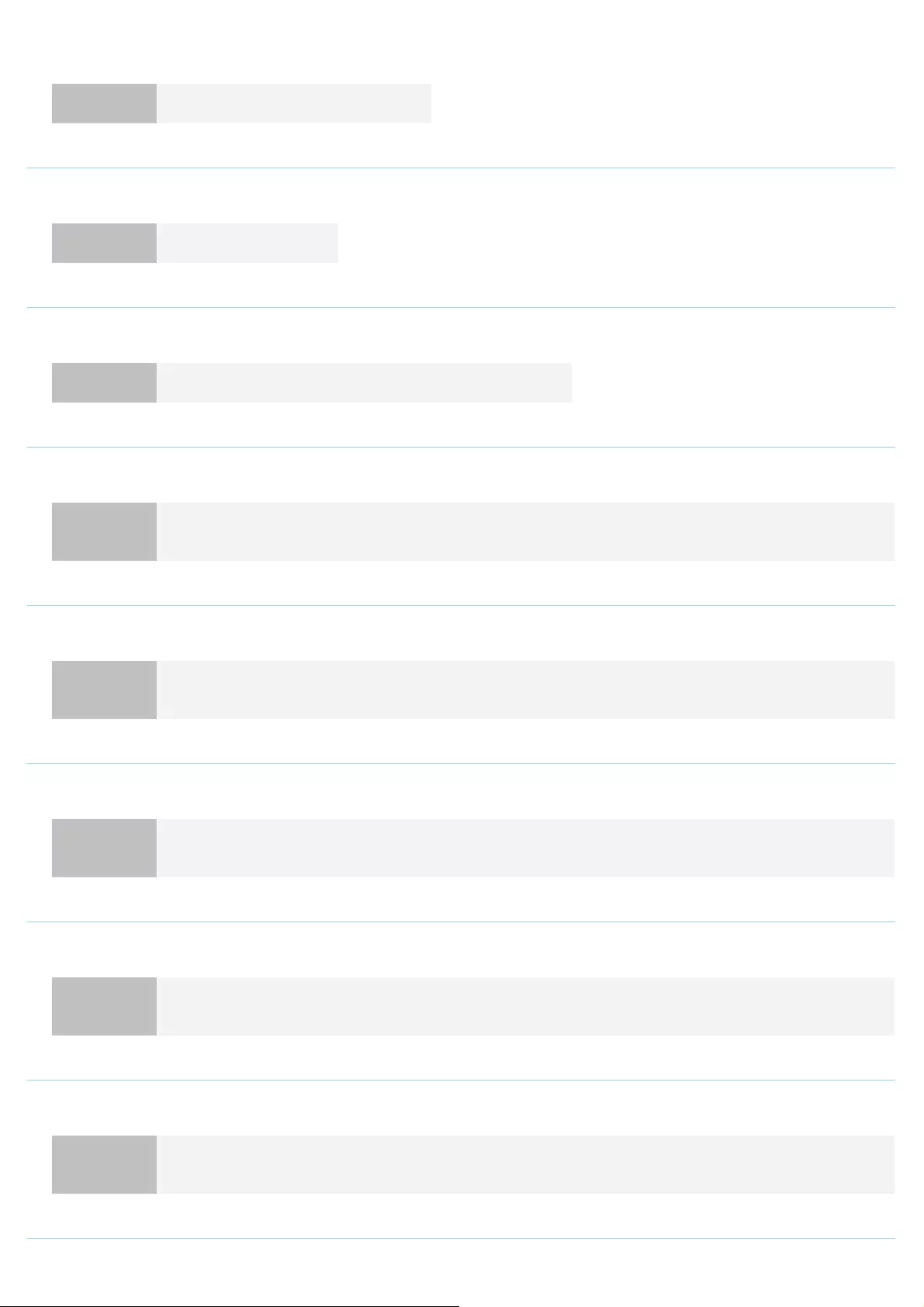
<Cause> The specified print page range is invalid.
Solution Check the page range, and print again.
XPS rendering error.
<Cause> An error has occurred in the XPS data rendering system.
Solution Contact your local dealer.
XPS unsupported image error. <Auto Error Skip>
<Cause> Unsupported images such as HD Photo images are included in the XPS data.
Solution Change the images in the XPS file to TIFF or JPEG format.
A4 nn Error ("nn" represents two-digit alphanumeric characters.)
<Cause> A problem is occurring and the printer does not operate properly.
Solution Cycle the power of the printer. If the message appears even after cycling the power of the printer, note
down the message in the display, and contact your local authorized Canon dealer.
A5 nn Error ("nn" represents two-digit alphanumeric characters.)
<Cause> A problem is occurring and the printer does not operate properly.
Solution Cycle the power of the printer. If the message appears even after cycling the power of the printer, note
down the message in the display, and contact your local authorized Canon dealer.
A7 nn ERROR ("nn" represents two-digit alphanumeric characters.)
<Cause> A problem is occurring and the printer does not operate properly.
Solution Cycle the power of the printer. If the message appears even after cycling the power of the printer, note
down the message in the display, and contact your local authorized Canon dealer.
D7 nn Error ("nn" represents two-digit alphanumeric characters.)
<Cause> A problem is occurring and the printer does not operate properly.
Solution Cycle the power of the printer. If the message appears even after cycling the power of the printer, note
down the message in the display, and contact your local authorized Canon dealer.
D8 nn Error ("nn" represents two-digit alphanumeric characters.)
<Cause> A problem is occurring and the printer does not operate properly.
Solution Cycle the power of the printer. If the message appears even after cycling the power of the printer, note
down the message in the display, and contact your local authorized Canon dealer.
D9 nn Error ("nn" represents two-digit alphanumeric characters.)
㻥㻞㻟㻌㻛㻌㻥㻥㻤

<Cause> A problem is occurring and the printer does not operate properly.
Solution Cycle the power of the printer. If the message appears even after cycling the power of the printer, note
down the message in the display, and contact your local authorized Canon dealer.
㻥㻞㻠㻌㻛㻌㻥㻥㻤
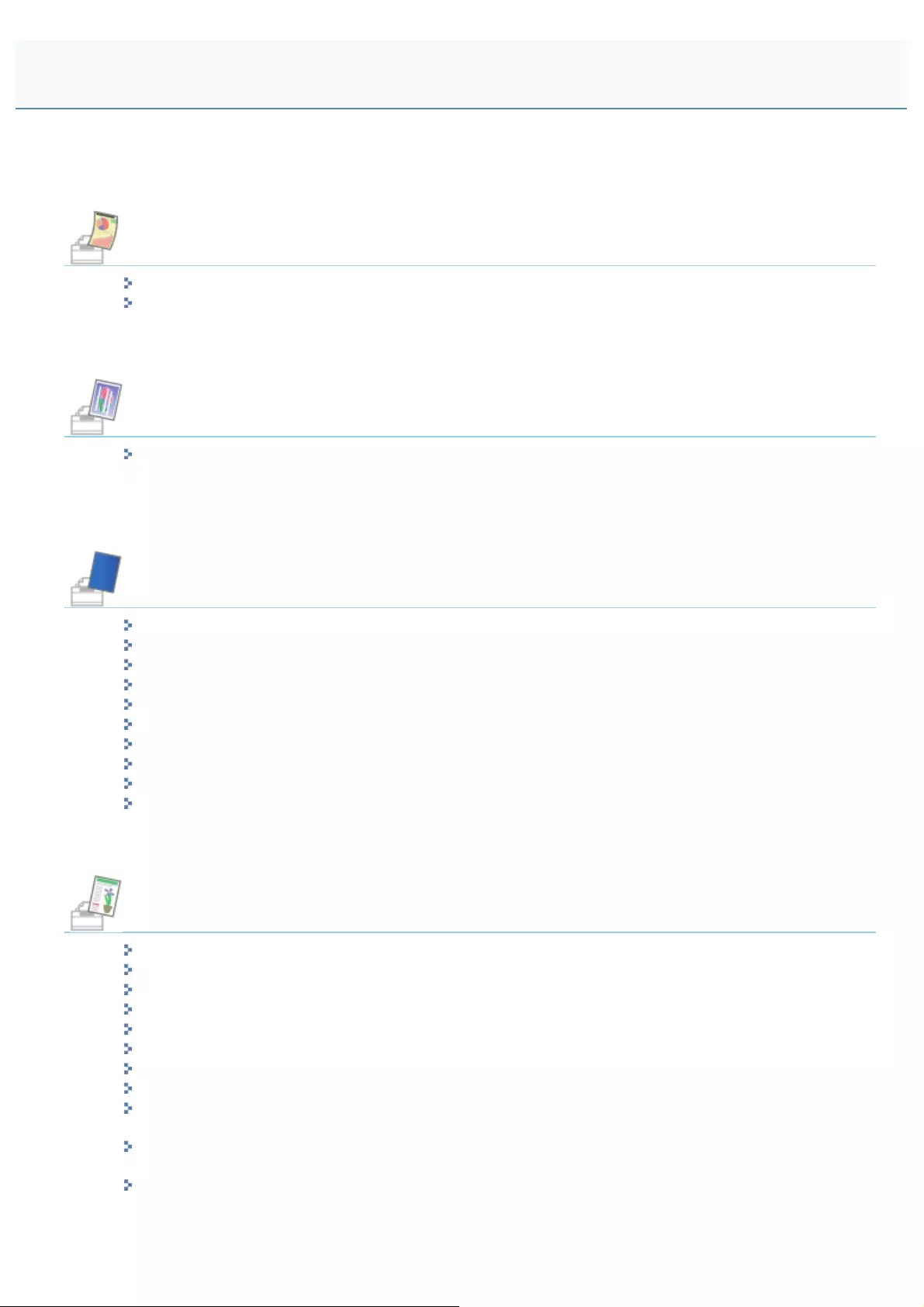
0258-0CE
Paper curls or creases.
Paper Curls
Paper Creases
Streaks (lines) appear.
White Streaks (Lines) Appear
Unevenness or smudge marks appear.
Printing Is Uneven
Printed Pages Have White Specks
Colors Are Uneven or Not Printed Smoothly
The Toner Does Not Fix onto the Paper Well
The Printed Paper Has Smudge Marks
Smudge Marks of Spattering Toner Appear around the Text or Patterns
The Back of the Printed Paper Has Smudge Marks
The Overall Print Result Is Dark
Residual Images Appear on Non-printed Areas
White Dust Is Attached to the Printed Transparencies
Printing is faint, is faded, has a problem with color, and so on.
The Overall Print Result Is Faint
Thin Lines Are Faded or Halftone Images Are Faint
Colored Lines and Text Appear Faded
Colored Text Appears Blurred
Data Is Not Printed in the Correct Color (Specified Color) Due to Color Mismatch
Thin Lines or Fill Patterns Are Not Printed with the Specified Colors or Do Not Appear At All
Shaded Patterns Are Not Printed in the Correct Color (Specified Color)
Photographs and so on Are Printed in Different Colors from Those Displayed on the Monitor
Fill Patterns and Borders Are Not Printed in the Correct Color (Specified Color) Even When the Same
Color Is Specified for Them
Square Areas That Cannot Be Seen on the Display Appear around Lines or Text and Are Printed in a
Different Color from the Other Areas
Superimposed Diagrams Are Not Printed in the Correct Color
Poor Printout Results
㻥㻞㻡㻌㻛㻌㻥㻥㻤
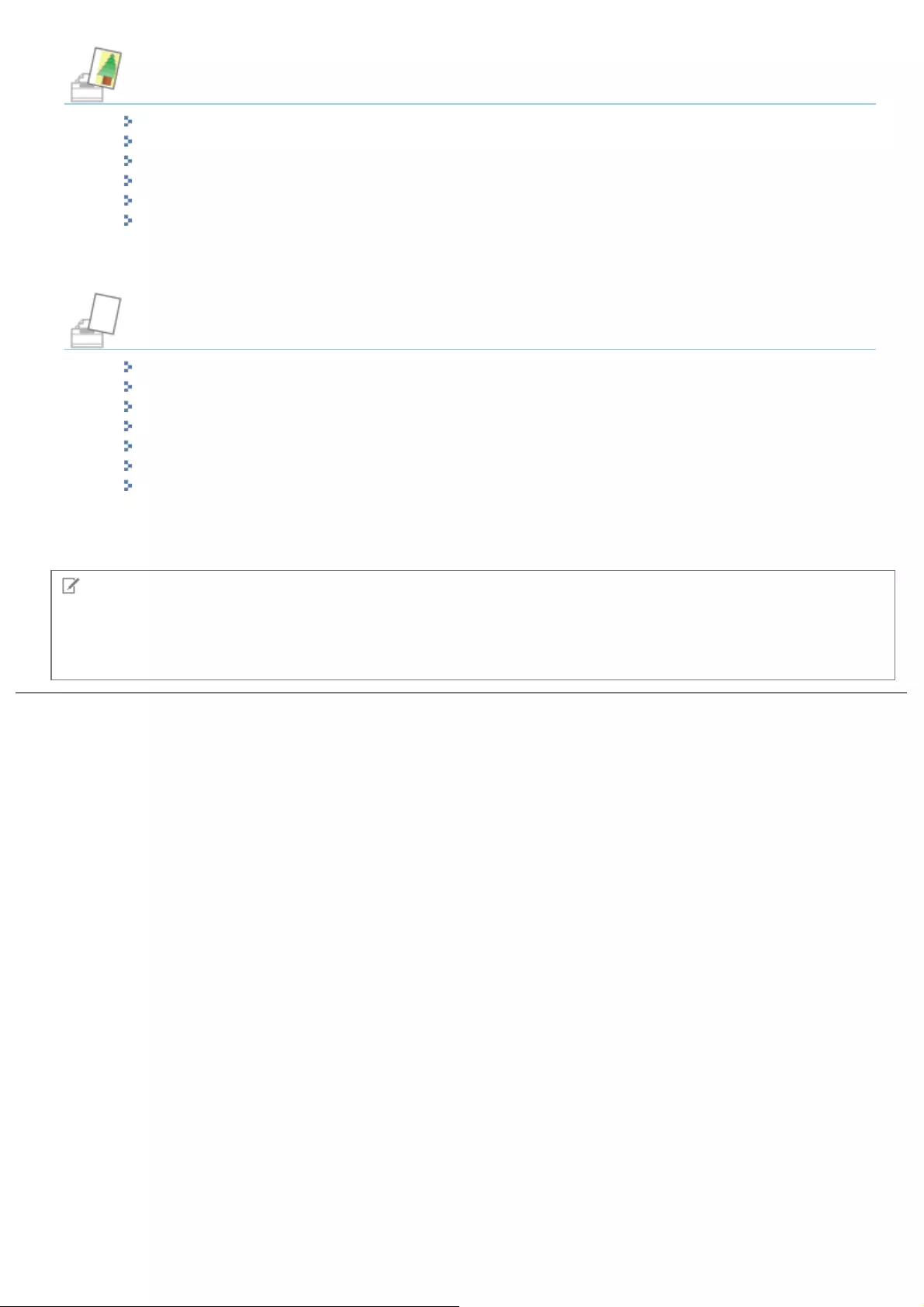
Printout Is Skewed, Askew, Missing, or Has Margins
The Printing Position Is Skewed
Data Is Printed Diagonally
A Portion of the Page Is Not Printed
Data Is Reduced and Printed
The Next Page Is Printed from Halfway across the Previous Page
Printed Data Lies outside Paper
Others
Blank Paper Is Output (Nothing Is Printed on the Paper)
The Overall Surface of the Paper Is Printed in a Particular Color
The Last Page Cannot Be Printed
Unreadable Characters Are Printed
The Printout Is Different from What Is Displayed on Screen (Windows 2000, XP, and Server 2003)
The Flap of the Printed Envelope Sticks
Multiple Sheets of Paper Are Fed at a Time
NOTE
Contacting your local authorized Canon dealer
If a problem that is not indicated in the e-Manual occurs, if none of the suggested measures solve the problem, or if you
cannot determine the problem, contact your local authorized Canon dealer.
㻥㻞㻢㻌㻛㻌㻥㻥㻤

0258-0CF
Perform one of the following solutions according to the cause.
<Cause 1> Damp paper is used.
Solution Replace the paper with new paper in an unopened package.
"Precautions for Paper"
<Cause 2> Appropriate paper is not being used.
Solution Replace the paper with that which can be used with this printer.
"Usable Paper"
<Cause 3> Depending on the paper type or the operating environment, the paper may curl as
either of the following.
Solution 1
Perform the following procedure in the printer driver.
1. Display the [Paper Source] sheet.
2. Set [Paper Type] to one of the following settings.
Currently Selected
Setting Setting to be Selected
[Plain L] [Plain L2]
[Plain] [Plain L]
[Plain H] [Plain]
[Heavy 1] [Plain H]
[Heavy 2] [Heavy 1]
[Heavy 3] [Heavy 2]
[Envelope H] [Envelope]
[Coated 2] [Coated 1]
Paper Curls
㻥㻞㻣㻌㻛㻌㻥㻥㻤

[Coated 3] [Coated 2]
[Coated 4] [Coated 3]
If you change the settings, the toner may not fix onto paper well, and the printing may come out
faint.
Solution 2
Select [Curl Correction] under [Special Print Mode] set it to [On] and print again.
"[Setup] Menu ([User Maintenance] Options)"
If you change the settings, the toner may not fix onto paper well, and the printing may come out
faint.
If you specify this setting, printing speed drops.
<Cause 4> Depending on the paper type or the operating environment, the paper may curl as
either of the following.
Solution
Perform the following procedure in the printer driver.
1. Display the [Paper Source] sheet.
2. Set [Paper Type] to one of the following settings.
Currently Selected
Setting Setting to be Selected
[Plain L2] [Plain L]
[Plain L] [Plain]
[Plain] [Plain H]
[Plain H] [Heavy 1]
[Heavy 1] [Heavy 2]
[Heavy 2] [Heavy 3]
[Envelope] [Envelope H]
[Coated 1] [Coated 2]
[Coated 2] [Coated 3]
[Coated 3] [Coated 4]
When the settings are changed, sometimes residual images appear on non-printed areas.
㻥㻞㻤㻌㻛㻌㻥㻥㻤
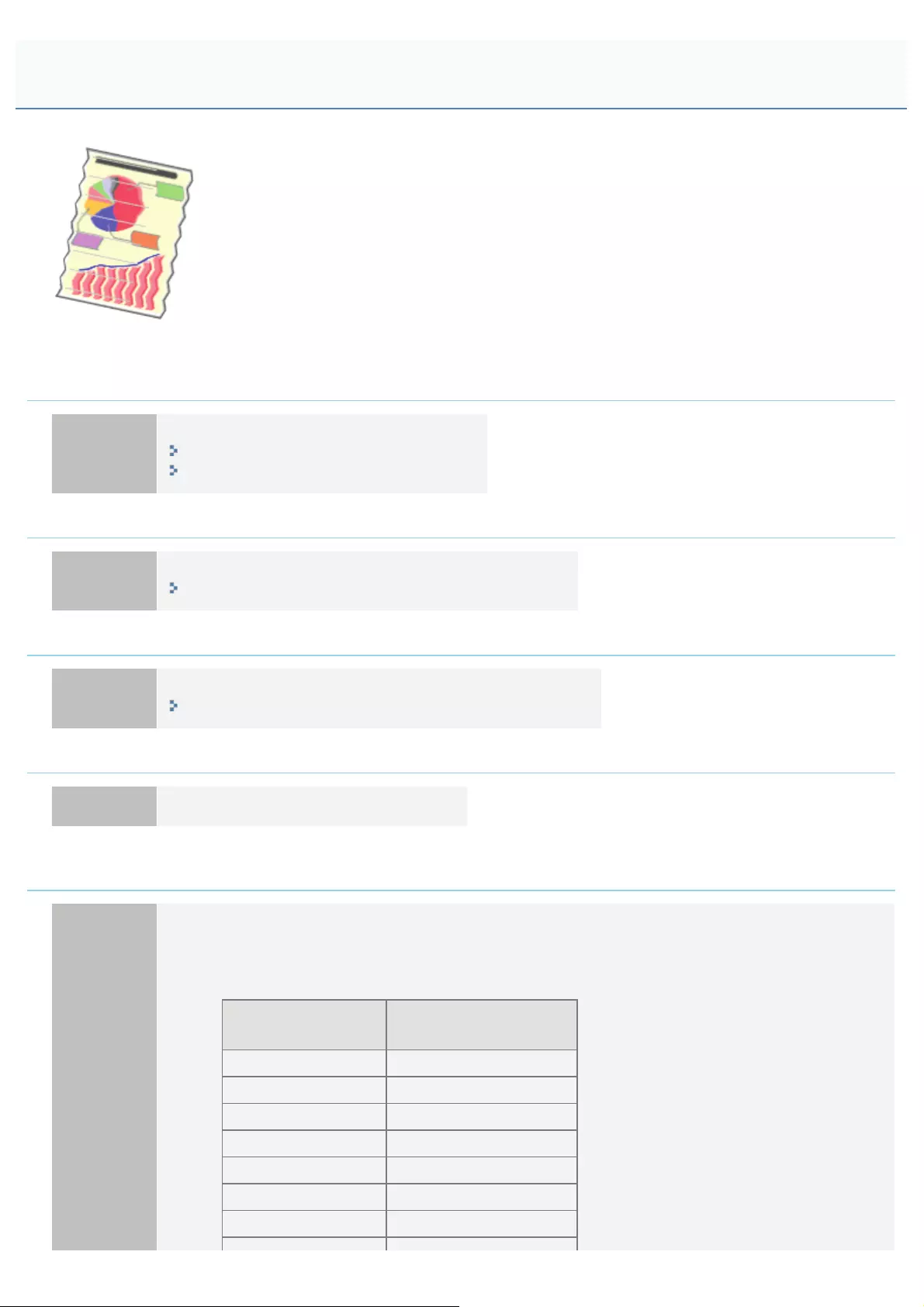
0258-0CH
Perform one of the following solutions according to the cause.
<Cause 1>Paper is not loaded properly in the paper drawer or multi-purpose tray.
Solution
Load the paper properly.
"Loading Paper in the Drawer"
"Loading Paper in the Multi-purpose Tray"
<Cause 2> Damp paper is used.
Solution Replace the paper with new paper in an unopened package.
"Precautions for Paper"
<Cause 3> Appropriate paper is not being used.
Solution Replace the paper with that which can be used with this printer.
"Usable Paper"
<Cause 4> There is a foreign object inside the printer.
Solution Remove the foreign object inside the printer.
<Cause 5> Depending on the paper type or the operating environment, the paper may be
creased.
Solution 1
Perform the following procedure in the printer driver.
1. Display the [Paper Source] sheet.
2. Set [Paper Type] to one of the following settings.
Currently Selected
Setting Setting to be Selected
[Plain L] [Plain L2]
[Plain] [Plain L]
[Plain H] [Plain]
[Heavy 1] [Plain H]
[Heavy 2] [Heavy 1]
[Heavy 3] [Heavy 2]
[Envelope H] [Envelope]
Paper Creases
㻥㻞㻥㻌㻛㻌㻥㻥㻤
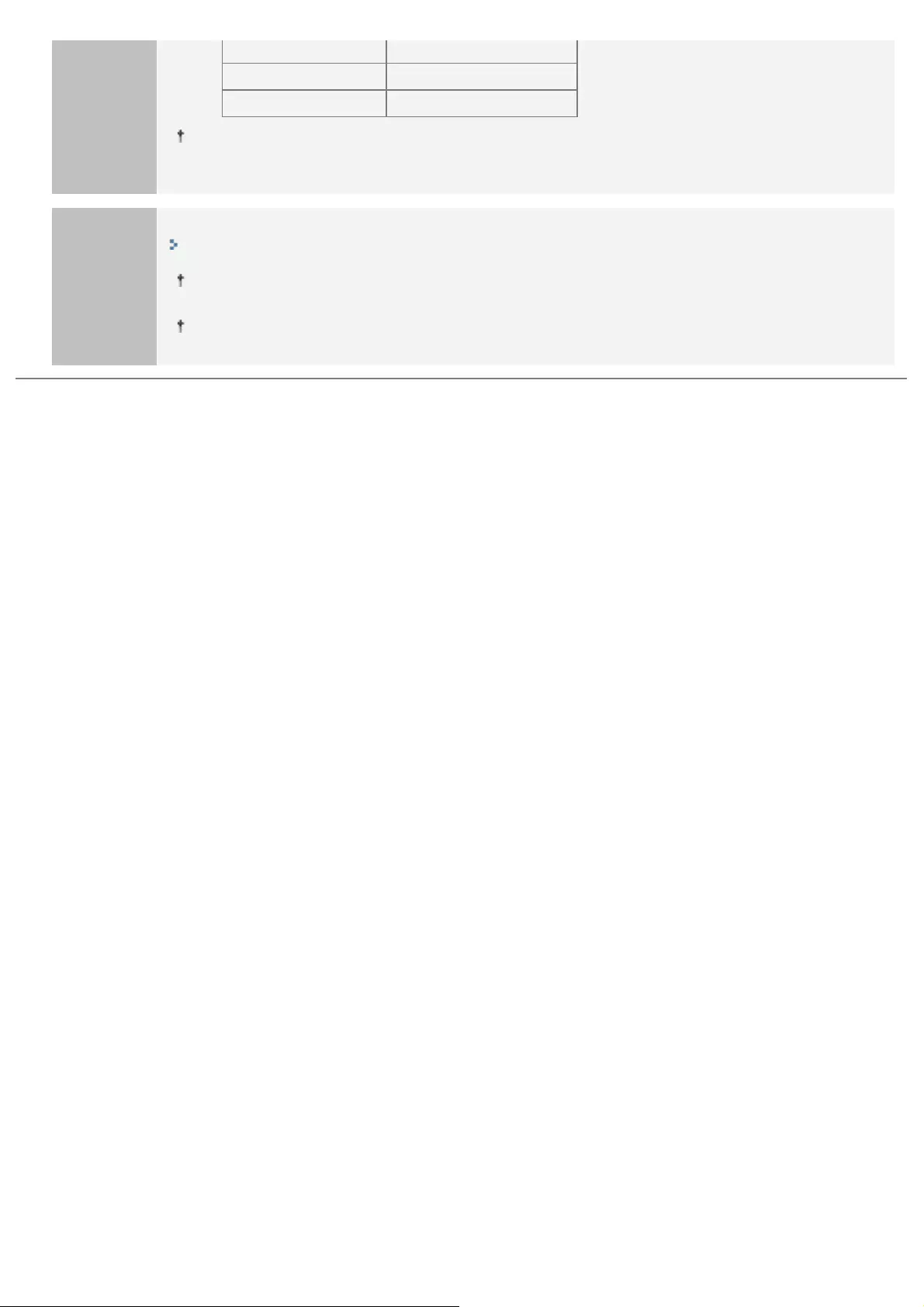
[Coated 2] [Coated 1]
[Coated 3] [Coated 2]
[Coated 4] [Coated 3]
If you change the settings, the toner may not fix onto paper well, and the printing may come out
faint.
Solution 2
Select [Curl Correction] under [Special Print Mode] set it to [On] and print again.
"[Setup] Menu ([User Maintenance] Options)"
If you change the settings, the toner may not fix onto paper well, and the printing may come out
faint.
If you specify this setting, printing speed drops.
㻥㻟㻜㻌㻛㻌㻥㻥㻤
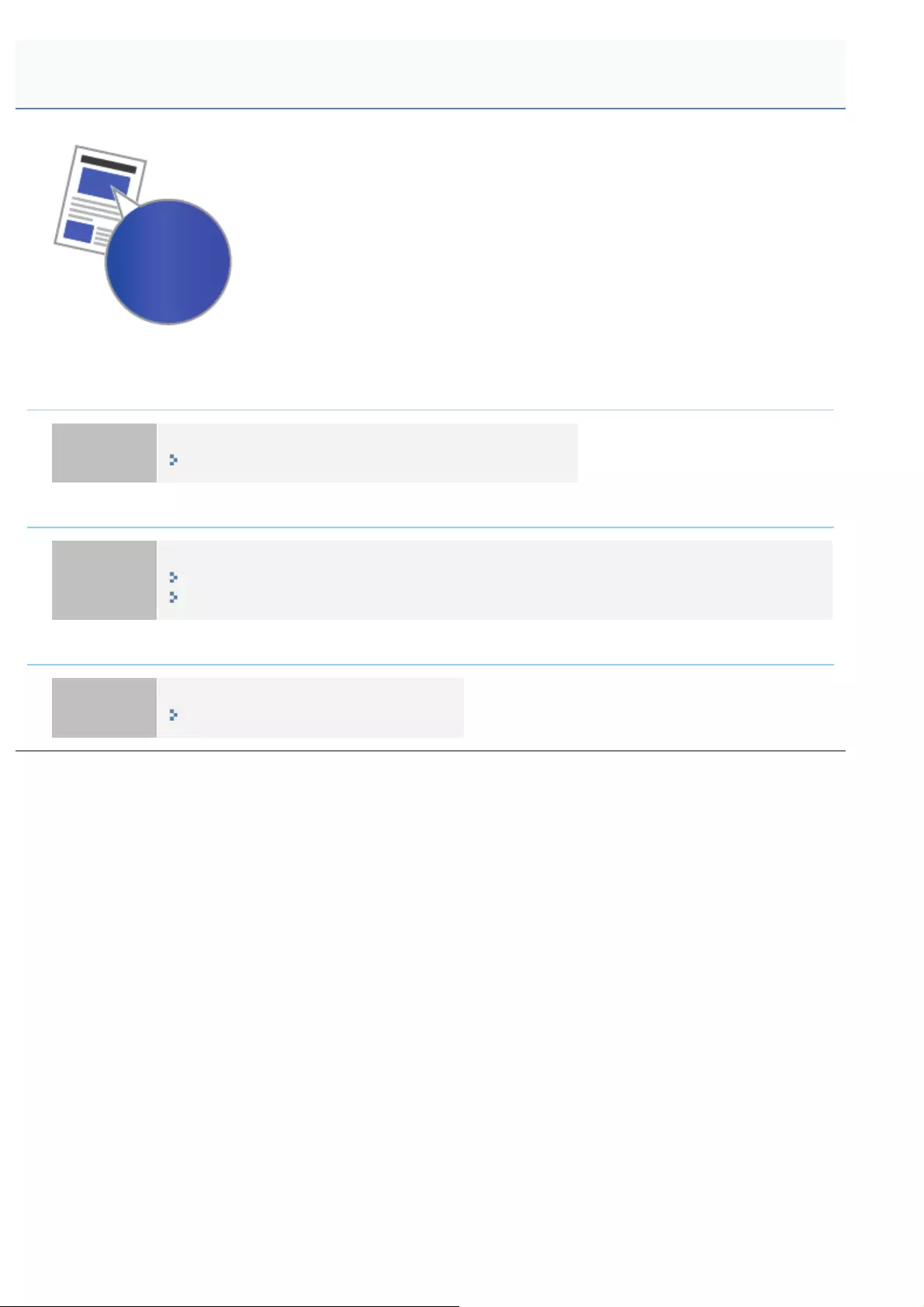
0258-0CK
Perform one of the following solutions according to the cause.
<Cause 1> Paper is too moist or too dry.
Solution Replace the paper with new paper in an unopened package.
"Precautions for Paper"
<Cause 2> The toner cartridge has run out of toner, has deteriorated, or is damaged.
Solution
Check the status of the toner cartridge, and replace the color toner cartridge that is almost empty.
"Remote UI"
"Toner Cartridge Replacement"
<Cause 3> The drum in the toner cartridge is deteriorated.
Solution Replace the toner cartridge with a new one.
"Toner Cartridge Replacement"
Printing Is Uneven
㻥㻟㻞㻌㻛㻌㻥㻥㻤

0258-0CL
Perform one of the following solutions according to the cause.
<Cause 1> Appropriate paper is not being used.
Solution Replace the paper with that which can be used with this printer.
"Usable Paper"
<Cause 2> Damp paper is used.
Solution Replace the paper with new paper in an unopened package.
"Precautions for Paper"
<Cause 3> The drum in the toner cartridge is deteriorated.
Solution Replace the toner cartridge with a new one.
"Toner Cartridge Replacement"
Printed Pages Have White Specks
㻥㻟㻟㻌㻛㻌㻥㻥㻤
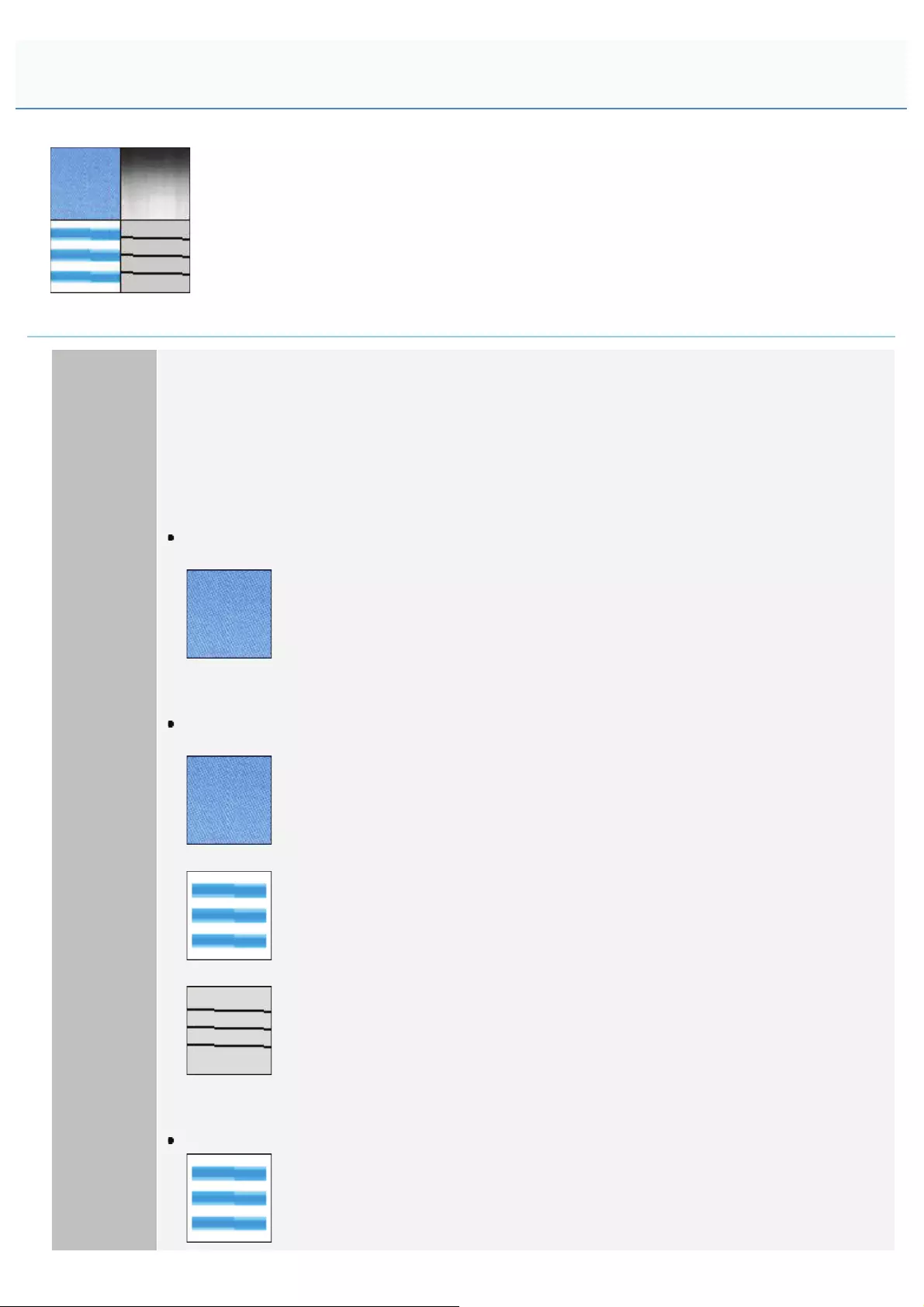
0258-0S0
<Cause> Large characters, thick lines, or diagrams with high color density were printed.
Solution
Perform the following procedure using the printer driver.
1. Display the [Finishing] sheet.
2. Click [Advanced Settings].
3. Select the appropriate mode for [Special Smoothing Mode].
Normally, select [Mode 1] for [Special Smoothing Mode].
If the following conditions occur when [Mode 1] is selected, select any setting between [Mode 2] and
[Mode 6].
If diagrams with high color density, large characters, or thick lines are not printed
smoothly
ĺSet [Special Smoothing Mode] to [Mode 2].
If the following problems occur at the same time
Diagrams with high color density, large characters, or thick lines are not printed smoothly.
Diagrams with low color density, characters, or lines are not printed smoothly.
Characters and lines that are filled on the background are not printed smoothly.
ĺSet [Special Smoothing Mode] to [Mode 3].
If diagrams with low color density, characters, or lines are not printed smoothly
Colors Are Uneven or Not Printed Smoothly
㻥㻟㻠㻌㻛㻌㻥㻥㻤
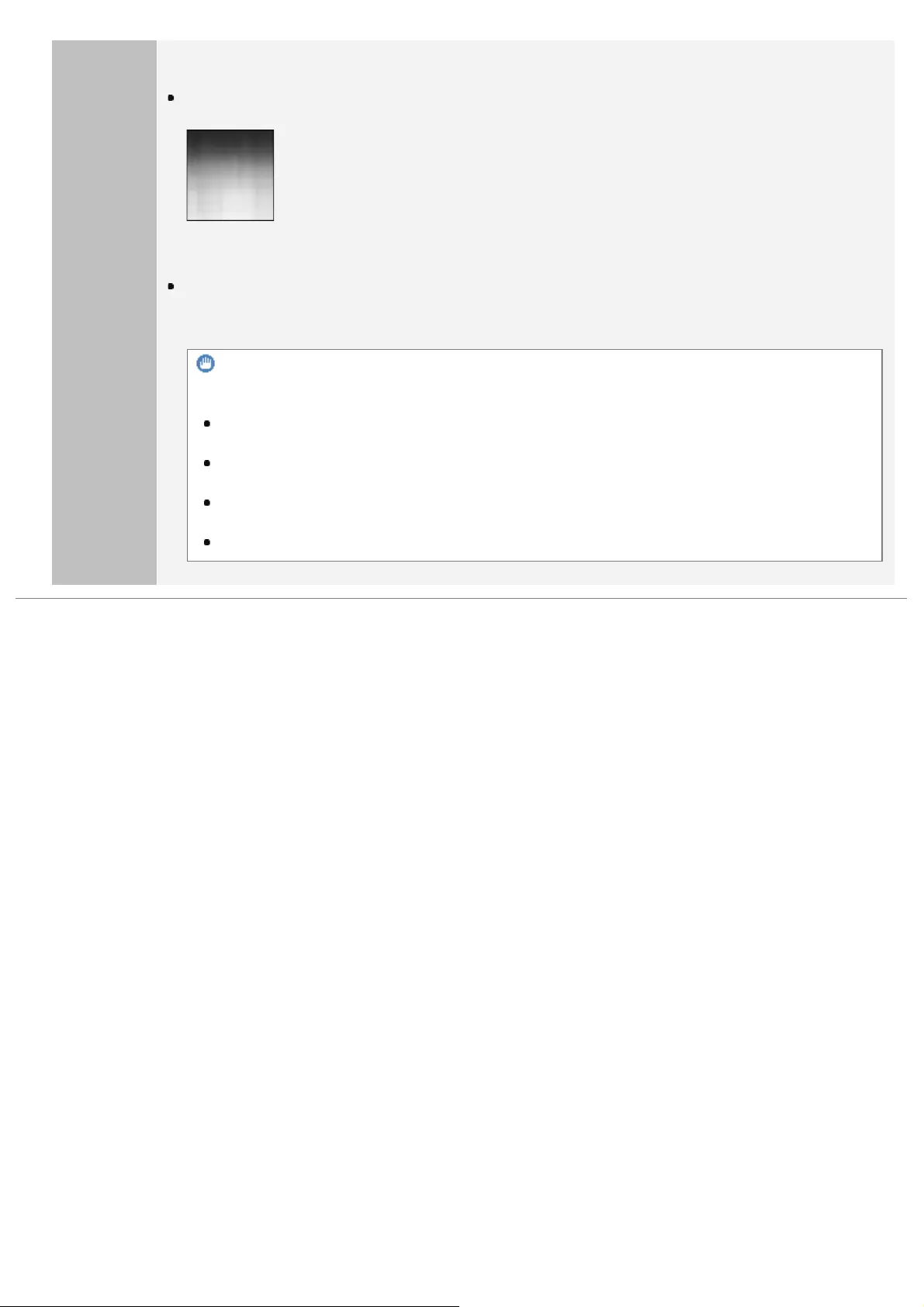
ĺSet [Special Smoothing Mode] to [Mode 4].
If strip-shaped unevenness appears on images (photographs), diagrams,
gradations, or shaded patterns
ĺSet [Special Smoothing Mode] to [Mode 5].
If the overall print result is not printed smoothly
ĺSet [Special Smoothing Mode] to [Mode 6].
IMPORTANT
Precautions when setting [Special Smoothing Mode]
When [Mode 2] or [Mode 4] is selected, color unevenness may appear on a low color density
area.
When [Mode 3] is selected, color unevenness may appear on a low color density area and
shaded patterns.
When [Mode 5] is selected, characters, lines, and areas around diagrams may not be printed
smoothly.
When [Mode 6] is selected, color unevenness may appear.
㻥㻟㻡㻌㻛㻌㻥㻥㻤
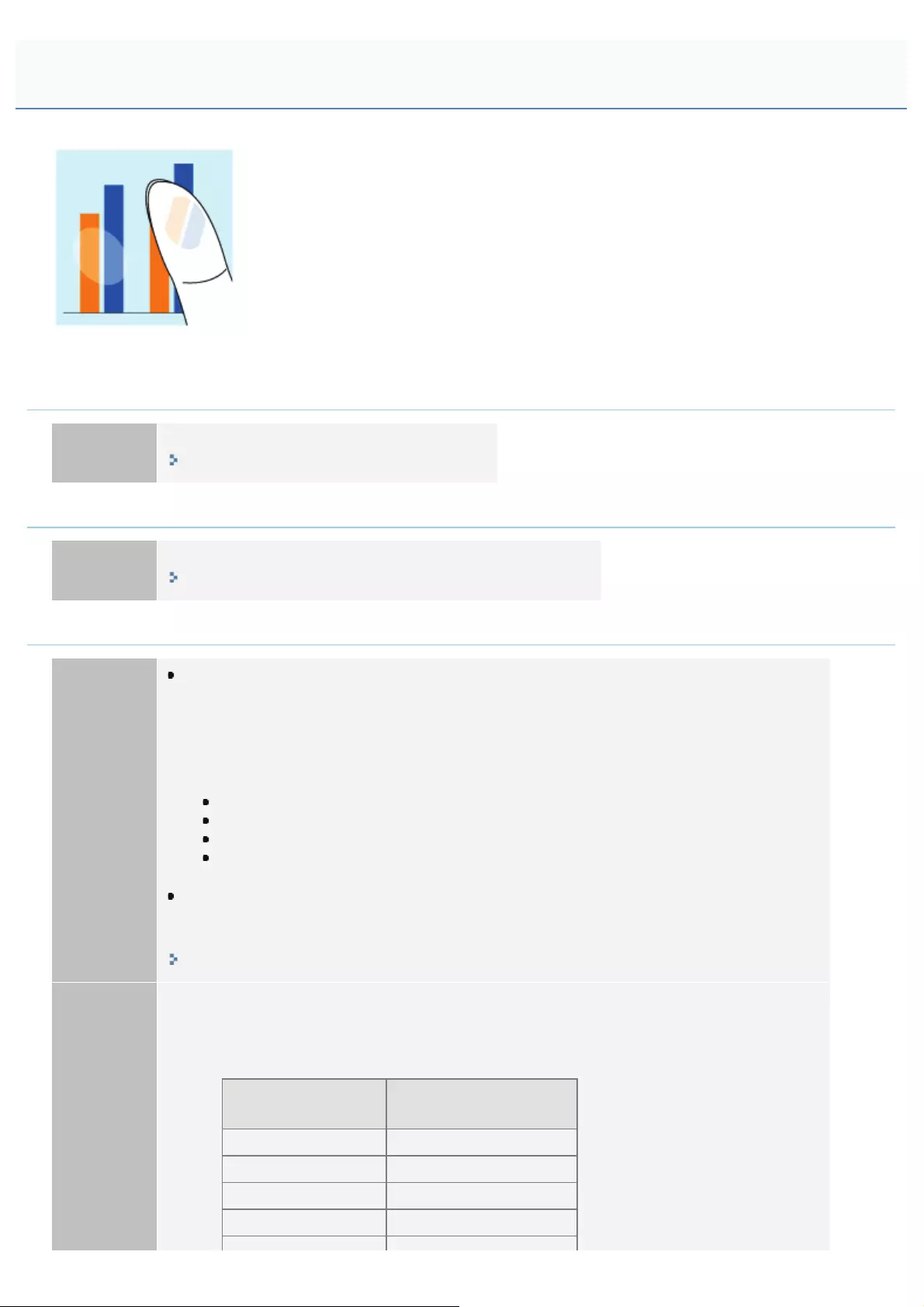
0258-0CR
Perform one of the following solutions according to the cause.
<Cause 1> The setting for [Paper Type] is not specified properly.
Solution Specify [Paper Type] properly.
"Configuring the Printer Driver and Printing"
<Cause 2> Appropriate paper is not being used.
Solution Replace the paper with that which can be used with this printer.
"Usable Paper"
<Cause 3>Depending on the paper type, toner fixation may deteriorate.
Solution 1
UFR II Printer Driver
Perform the following procedure in the printer driver.
1. Display the [Quality] sheet.
2. Click [Advanced Settings].
3. Set [Gray Compensation] to one of the following
Images Only
Text and Images
Graphics and Images
All
PCL/PS Printer Driver
See Help of the PCL/PS printer driver.
You can specify the same setting from the printer's control panel.
"[Setup] Menu ([Quality] Options)"
Solution 2
Perform the following procedure in the printer driver.
1. Display the [Paper Source] sheet.
2. Set [Paper Type] to one of the following settings.
Currently Selected
Setting Setting to be Selected
[Plain L2] [Plain L]
[Plain L] [Plain]
[Plain] [Plain H]
[Plain H] [Heavy 1]
The Toner Does Not Fix onto the Paper Well
㻥㻟㻢㻌㻛㻌㻥㻥㻤
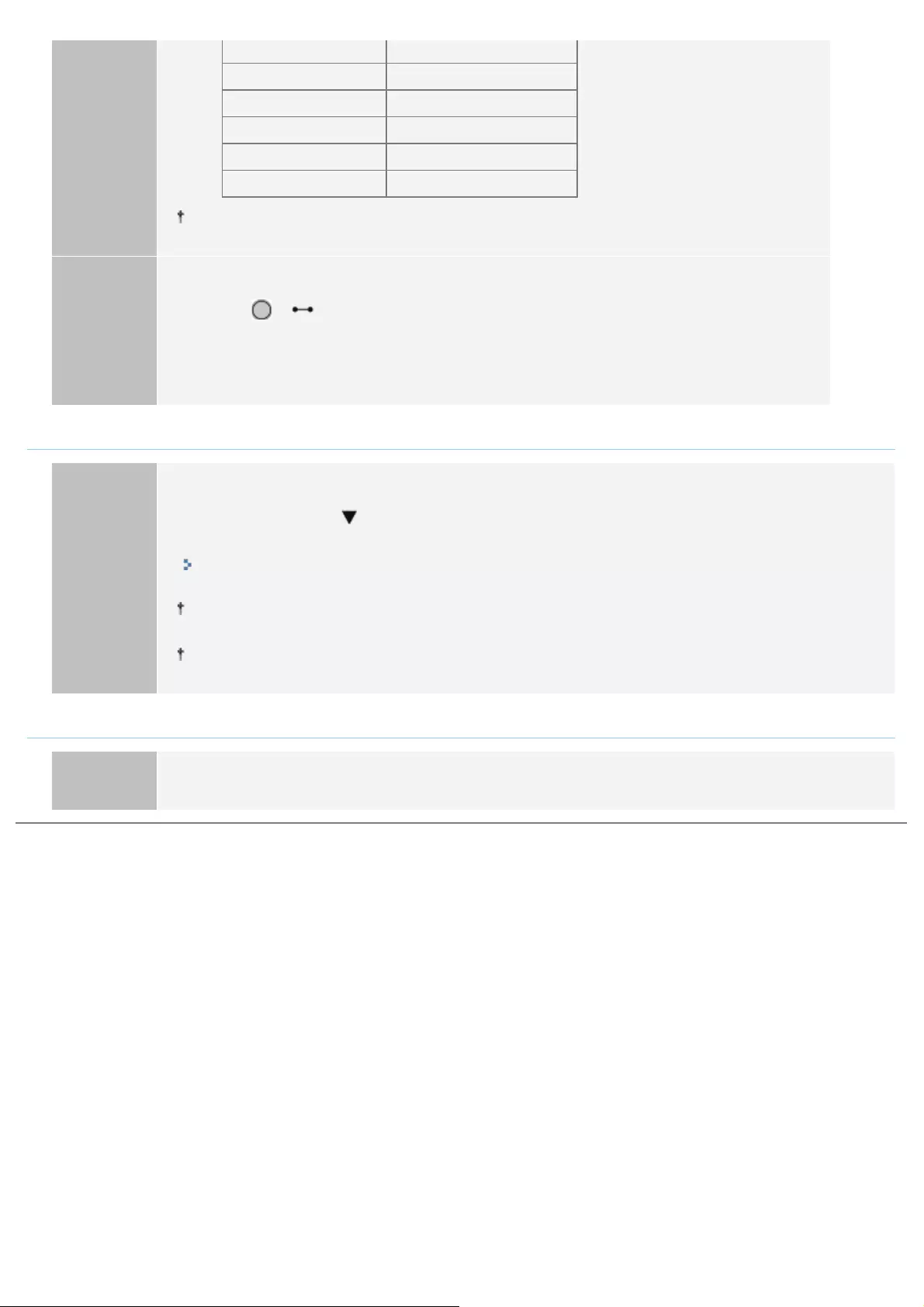
[Heavy 1] [Heavy 2]
[Heavy 2] [Heavy 3]
[Envelope] [Envelope H]
[Coated 1] [Coated 2]
[Coated 2] [Coated 3]
[Coated 3] [Coated 4]
When the settings are changed, sometimes residual images appear on non-printed areas.
Solution 3
Perform the following procedure.
1. Press [ ] ( : Online).
2. Select [Special Print Mode] in [User Maintenance].
3. Set [Rough Paper Adj.] to [On].
<Cause 4> Toner does not fix to the paper in places with high density.
Solution
Set [Special Image Mode] to [Level 1].
If the problem still persists, set it to [Level 2].
"[Setup] Menu ([User Maintenance] Options)"
Normally, set [Special Image Mode] to [Off]. Do not set [Level 1] or [Level 2] unless the problems
described above occur.
If it is set to [Level 1] or [Level 2], the print density may be lower than if it was set to [Off].
<Cause 5> A problem is occurring inside the printer.
Solution If <Ennn-nnnn> appears in the display, follow the procedure in "The Message Indicator Is On" to solve the
problem.
㻥㻟㻣㻌㻛㻌㻥㻥㻤
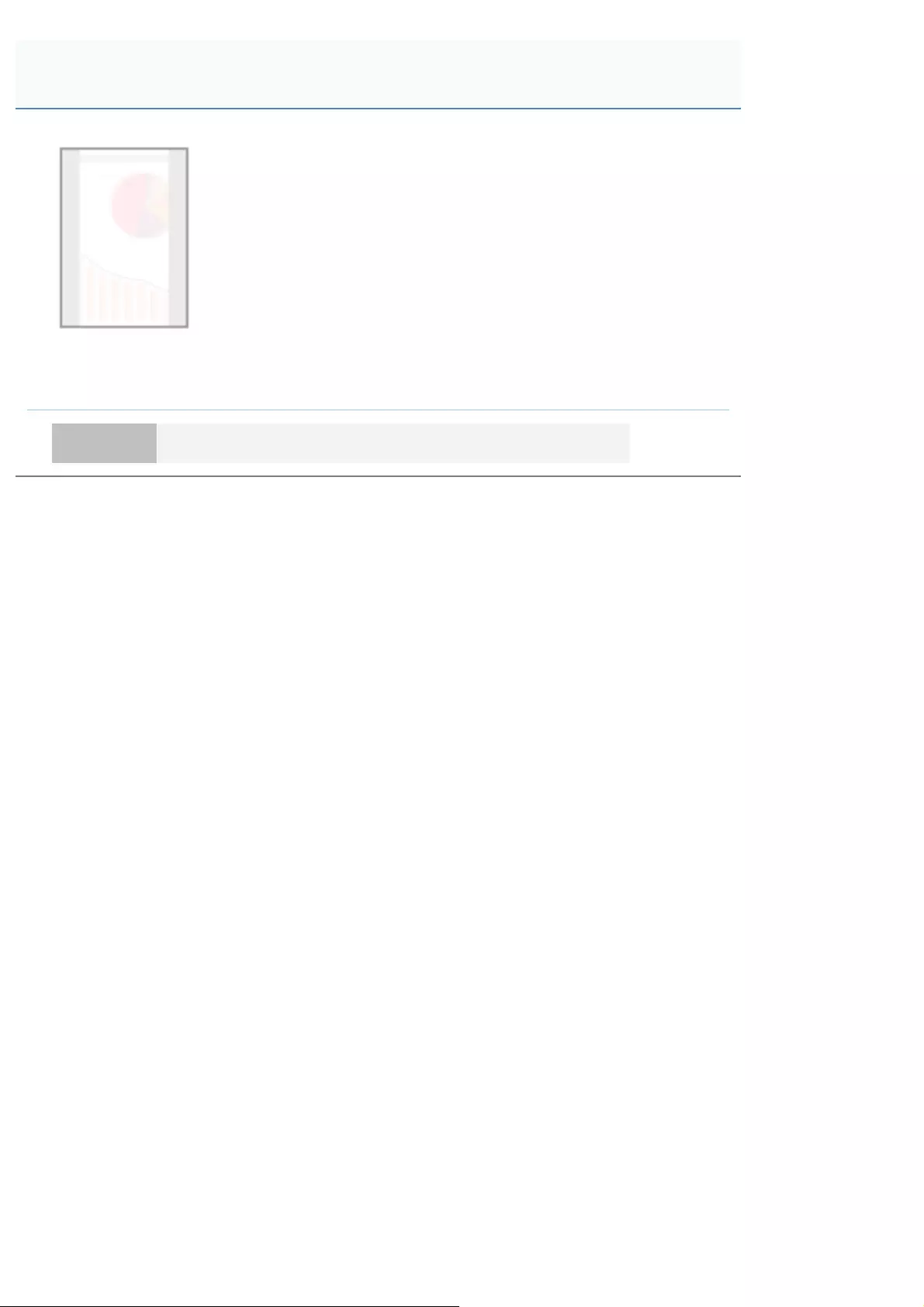
0258-0CX
Perform the following procedure.
<Cause> The size of the print data was larger than that of the loaded paper.
Solution Check if the size of the print data matches that of the loaded paper.
The Back of the Printed Paper Has Smudge Marks
㻥㻠㻜㻌㻛㻌㻥㻥㻤
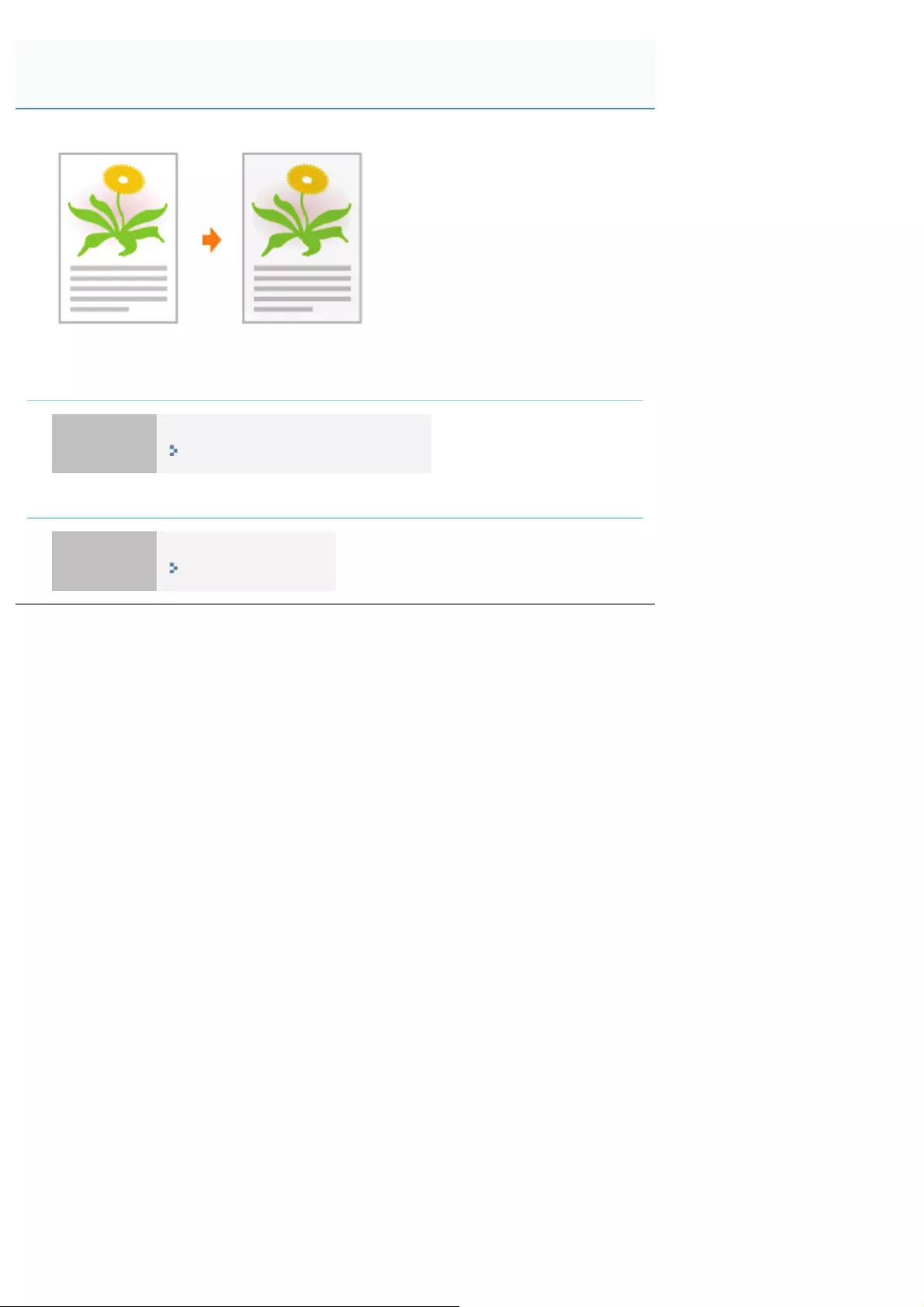
0258-0CY
Perform one of the following solutions according to the cause.
<Cause 1> The setting for [Density] is not appropriate.
Solution Adjust [Density] for each color.
"[Setup] Menu ([Quality] Options)"
<Cause 2> The printer is exposed to direct sunlight or strong light.
Solution Move the printer.
"Moving the Printer"
The Overall Print Result Is Dark
㻥㻠㻝㻌㻛㻌㻥㻥㻤
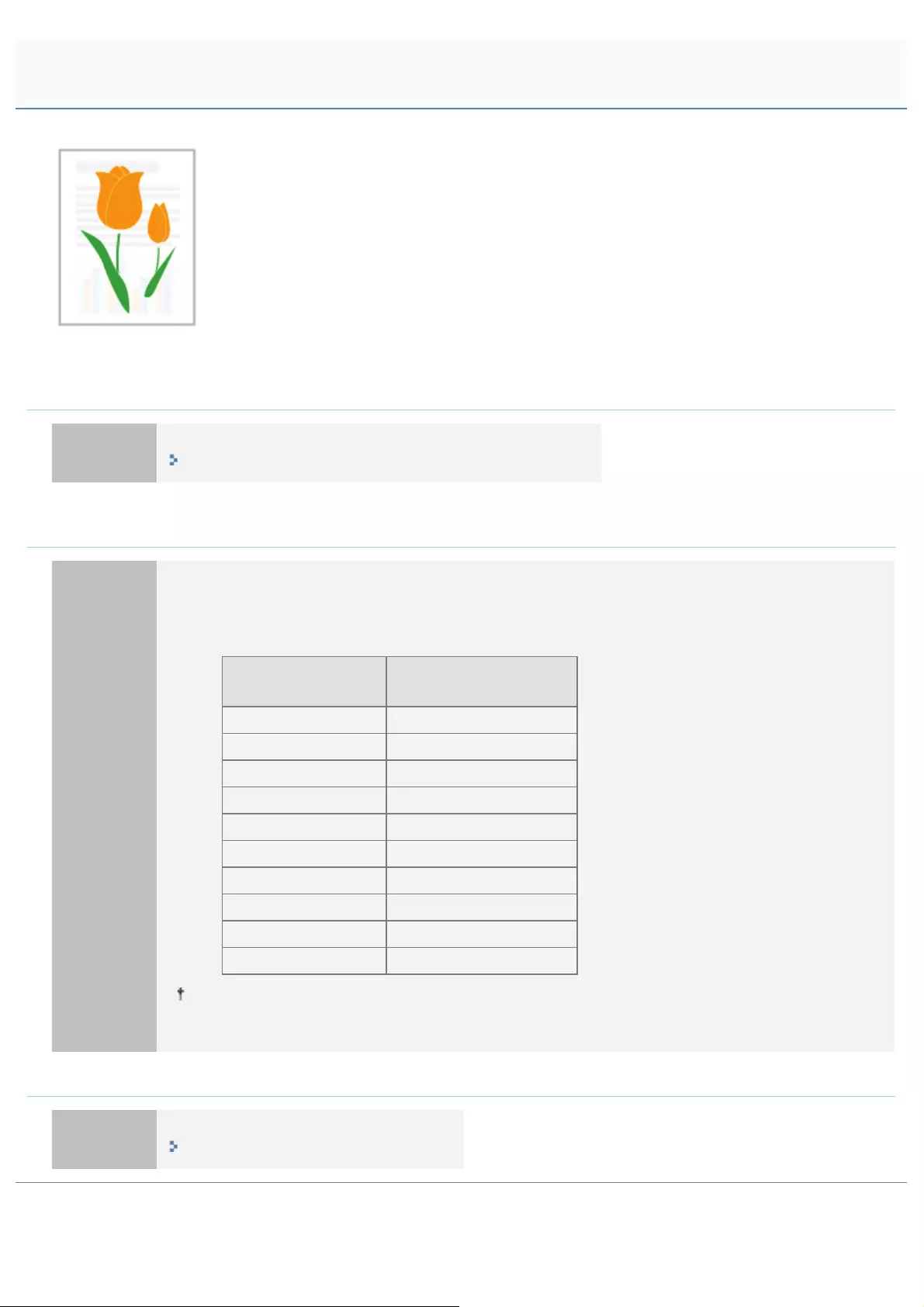
0258-0E0
Perform one of the following solutions according to the cause.
<Cause 1> Appropriate paper is not being used.
Solution Replace the paper with that which can be used with this printer.
"Usable Paper"
<Cause 2> Depending on the paper type or the operating environment (high humidity or high
temperature environment), residual images may appear on non-printed areas.
Solution
Perform the following procedure in the printer driver.
1. Display the [Paper Source] sheet.
2. Set [Paper Type] to one of the following settings.
Currently Selected
Setting Setting to be Selected
[Plain L] [Plain L2]
[Plain] [Plain L]
[Plain H] [Plain]
[Heavy 1] [Plain H]
[Heavy 2] [Heavy 1]
[Heavy 3] [Heavy 2]
[Envelope H] [Envelope]
[Coated 2] [Coated 1]
[Coated 3] [Coated 2]
[Coated 4] [Coated 3]
If you change the settings, the toner may not fix onto paper well, and the printing may come out
faint.
<Cause 3> The drum in the toner cartridge is deteriorated.
Solution Replace the toner cartridge with a new one.
"Toner Cartridge Replacement"
Residual Images Appear on Non-printed Areas
㻥㻠㻞㻌㻛㻌㻥㻥㻤
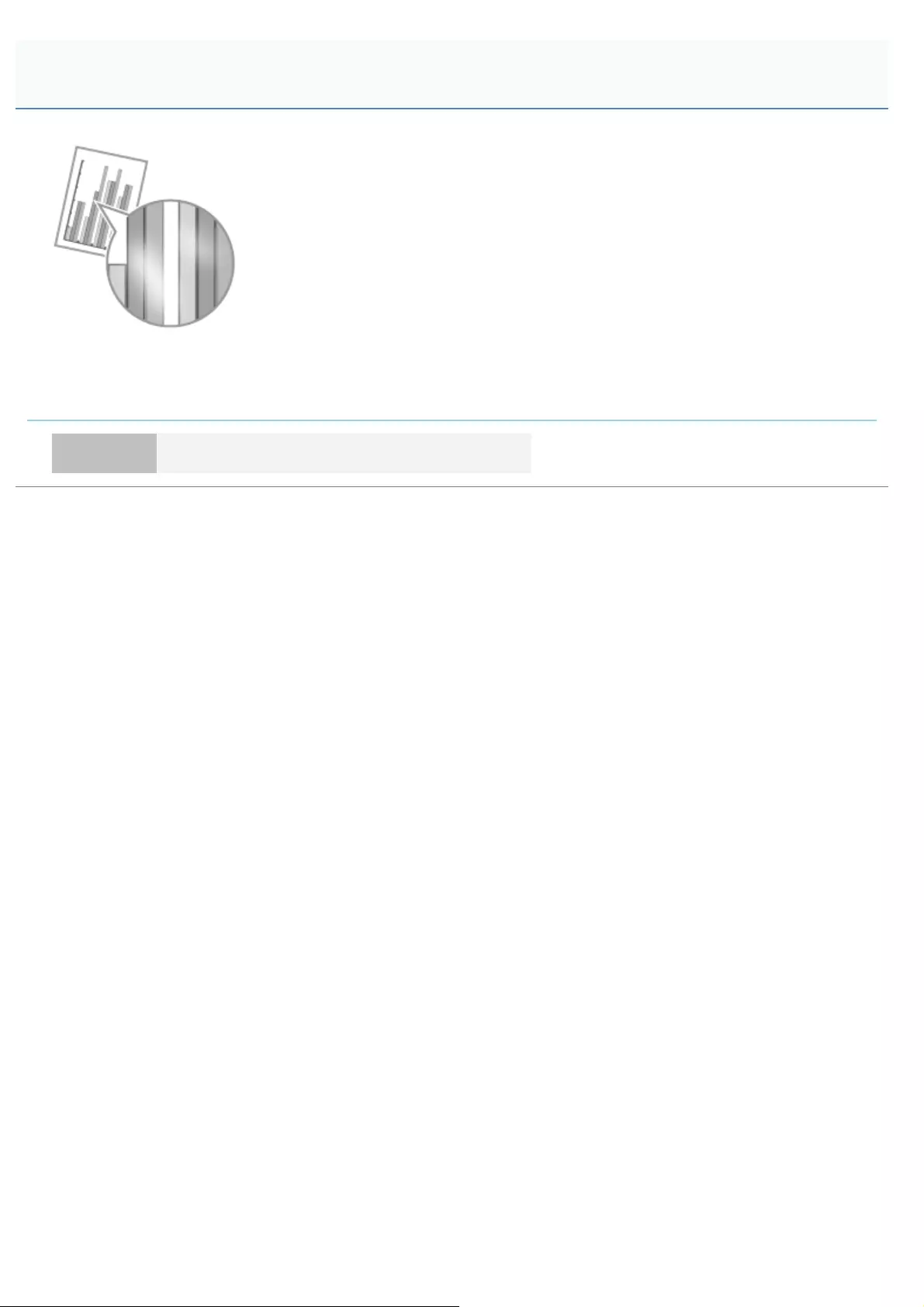
0258-0E1
Perform the following procedure.
<Cause> You print transparencies after printing paper other than transparency continuously.
Solution Wipe and remove the chipped paper with a soft cloth.
White Dust Is Attached to the Printed Transparencies
㻥㻠㻟㻌㻛㻌㻥㻥㻤

0258-0E2
Perform one of the following solutions according to the cause.
<Cause 1> The setting for the toner density is not appropriate.
Solution Adjust the toner density for printing to a darker setting.
"[Setup] Menu ([Quality] Options)"
<Cause 2> [Toner Save] is enabled.
Solution
UFR II Printer Driver
Perform the following procedure in the printer driver.
1. Display the [Quality] sheet.
2. Click [Advanced Settings].
3. Set [Toner Save] to [Off].
PCL/PS Printer Driver
See Help of the PCL/PS printer driver.
You can specify the same setting from the printer's control panel.
"[Setup] Menu ([Quality] Options)"
The Overall Print Result Is Faint
㻥㻠㻠㻌㻛㻌㻥㻥㻤
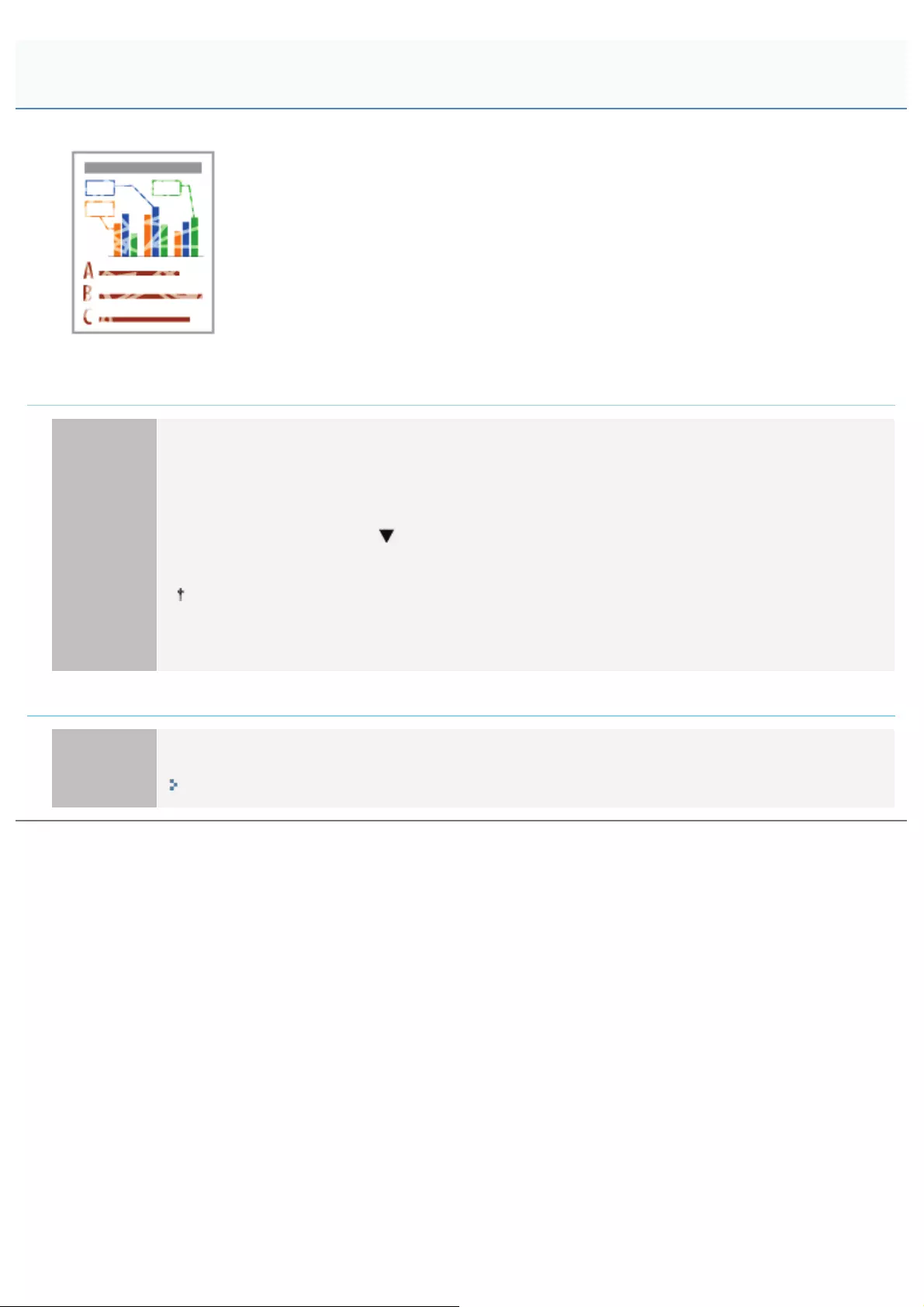
0258-0LX
Perform the following procedure.
<Cause 1>Thin lines or text was printed.
Solution
Perform the following procedure in the printer driver.
1. Display the [Finishing] sheet.
2. Click [Advanced Settings].
3. Set [Special Fine Line Processing] to [Mode 1].
If the problem still persists, set it to [Mode 2].
When [Special Fine Line Process] is set to [Mode 2], text may be collapsed when printing multiple
pages on one sheet (N in 1 printing). Also, the printed result may differ from the display in
gradation.
<Cause 2> The toner cartridges have reached the end of their life.
Solution
Check the toner cartridges status and replace the toner cartridges of the colors have reached the end of
their life.
"Toner Cartridge Replacement"
Colored Lines and Text Appear Faded
㻥㻠㻢㻌㻛㻌㻥㻥㻤

0258-0LY
Perform one of the following solutions according to the cause.
<Cause 1>A bold font is being used for the colored text.
Solution
Perform the following procedure in the printer driver.
1. Display the [Quality] sheet.
2. Select the [Manual Color Settings] check box.
3. Click [Color Settings].
4. Display the [Matching] sheet.
5. Set [Matching Method] to [Perceptual [Monitor Color Matched]].
You can specify the same setting from the printer's control panel.
"[Setup] Menu ([Quality] Options)"
<Cause 2>Colored text appears blurred due to a color mismatch.
Solution Perform the described solutions in "Data Is Not Printed in the Correct Color (Specified Color) Due to Color
Mismatch."
Colored Text Appears Blurred
㻥㻠㻣㻌㻛㻌㻥㻥㻤
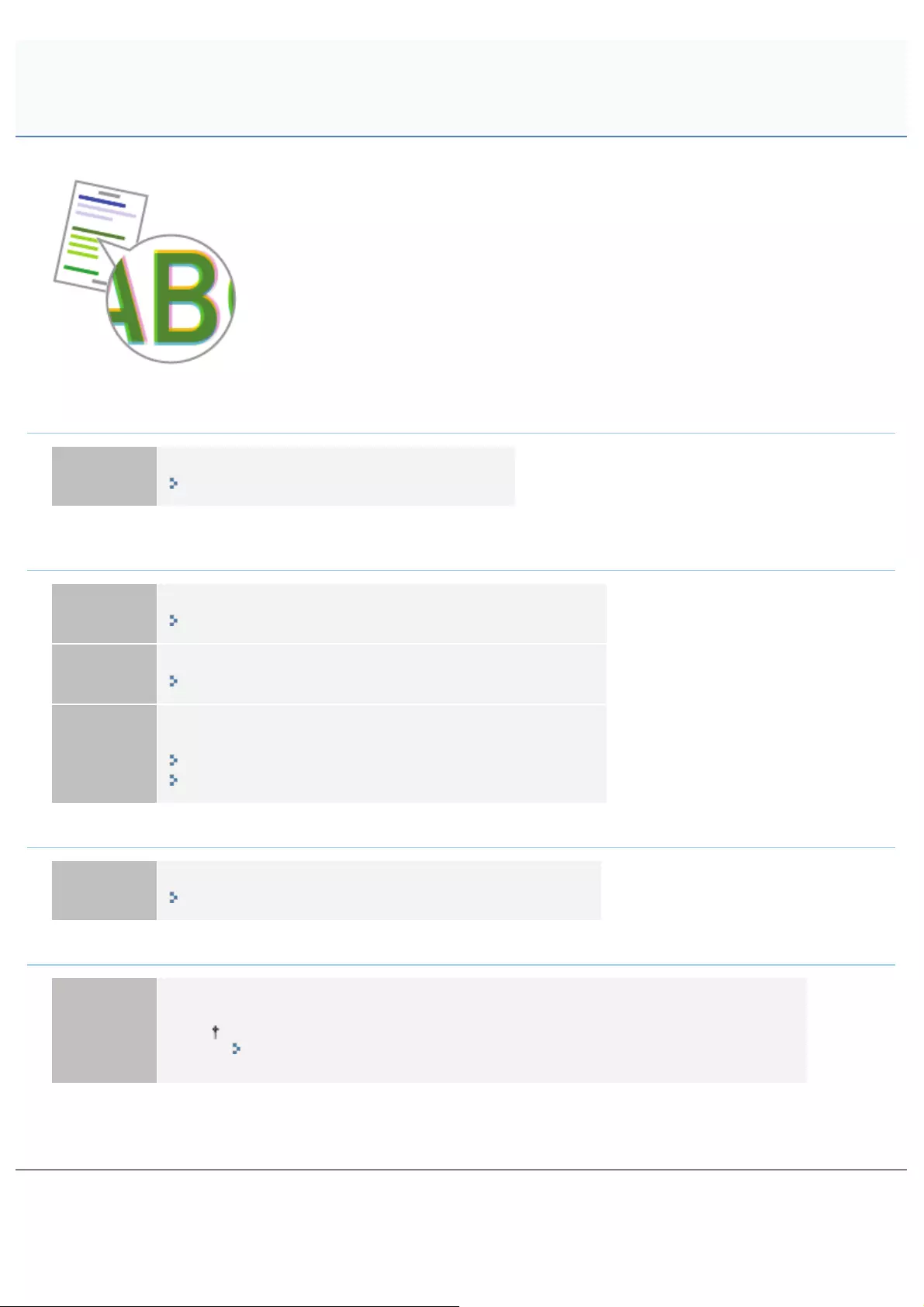
0258-0R0
Perform one of the following solutions according to the cause.
<Cause 1> The toner cartridges are not installed properly.
Solution Check the installation status of the toner cartridges.
"Replacing Toner Cartridges"
<Cause 2> Any of the four color toner cartridges is almost out of toner, or the drum in any of
the toner cartridges has deteriorated.
Solution 1 Check the installation status of the toner cartridges.
"Replacing Toner Cartridges"
Solution 2 Correct the color mismatch.
"Adjusting the Color or Color Mismatch (Calibration)"
Solution 3
Check the status of the toner cartridges.
Replace the toner cartridge that is almost empty with a new one.
"Remote UI"
"Toner Cartridge Replacement"
<Cause 3> Appropriate paper is not being used.
Solution Replace the paper with that which can be used with this printer.
"Usable Paper"
<Cause 4> Data was sent before completing calibration or when the printer was turned ON.
Solution
Make sure that calibration is completed before sending data to the printer.
You can specify whether or not to perform calibration when turning the printer ON.
"Adjusting the Color or Color Mismatch (Calibration)"
<About Color Mismatch>
Laser printers are manufactured with technology of high precision. A color mismatch may be slightly conspicuous
depending on the print image. Please note that this is due to the structure of laser printers and is not a printer malfunction.
Data Is Not Printed in the Correct Color (Specified Color) Due to Color
Mismatch
㻥㻠㻤㻌㻛㻌㻥㻥㻤

0258-0R1
Perform one of the following solutions according to the cause.
<Cause 1> Some of the colors cannot be reproduced because of the combination of colors or
patterns.
Solution 1 Adjust the colors in the application and print again.
See the instruction manual supplied with the application.
Solution 2 Change the patterns in the application and print again. See the instruction manual supplied with the
application.
<Cause 2> The colors may appear different depending on the halftone pattern.
Solution 1 Readjust to a darker color and print again.
See the instruction manual supplied with the application.
Solution 2 Reload paper to change the feeding direction, then print again.
Thin Lines or Fill Patterns Are Not Printed with the Specified Colors or
Do Not Appear At All
㻥㻠㻥㻌㻛㻌㻥㻥㻤
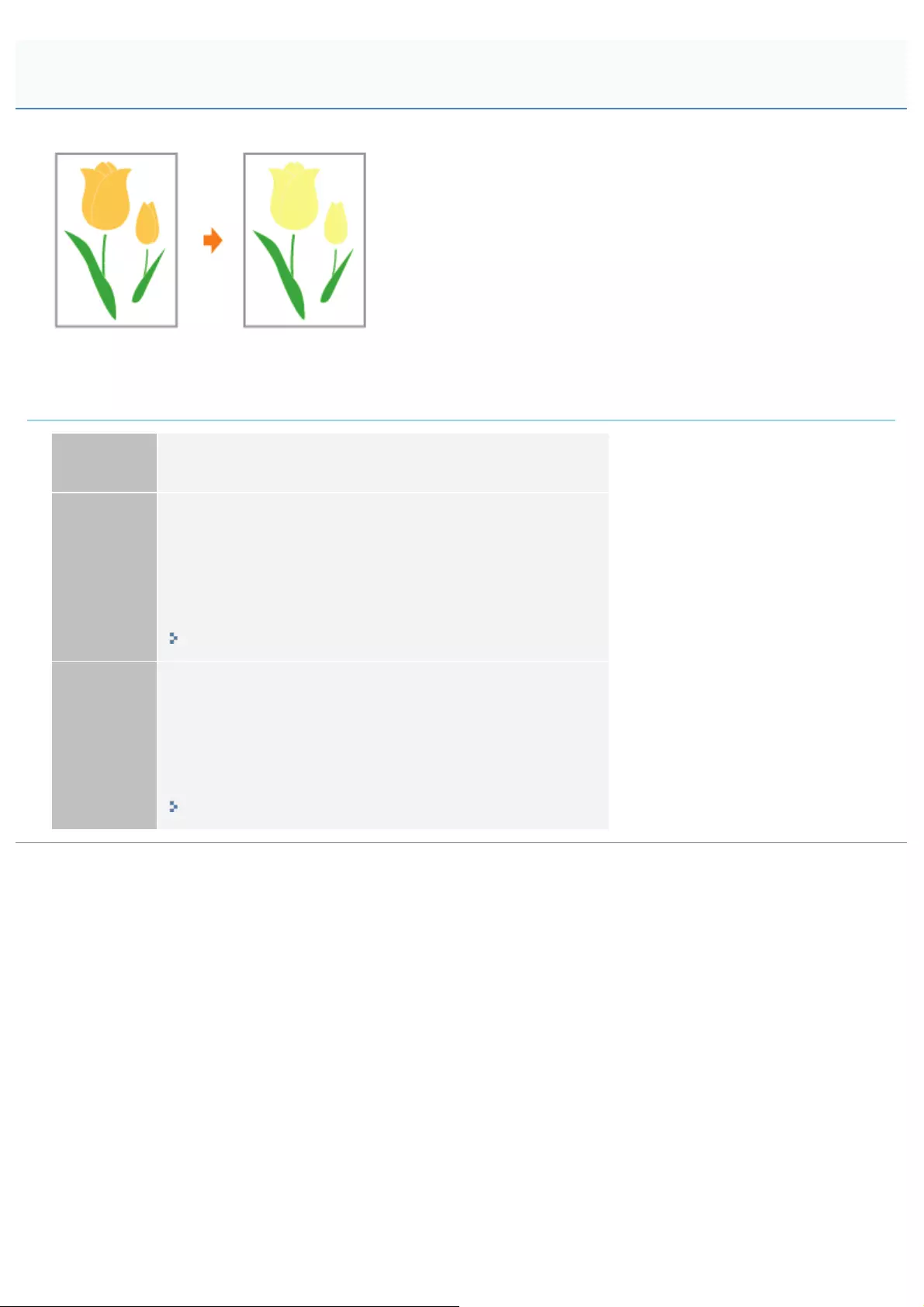
0258-0R2
Perform the following procedure.
<Cause> The shaded pattern of the print data and the dither pattern of the printer are
interfering with one another.
Solution 1 Print again without specifying a shaded pattern in the application.
See the instruction manual supplied with the application.
Solution 2
Perform the following procedure in the printer driver.
1. Display the [Quality] sheet.
2. Click [Advanced Settings].
3. Set [Halftones] to [Gradation].
You can specify the same setting from the printer's control panel.
"[Setup] Menu ([Quality] Options)"
Solution 3
Perform the following procedure in the printer driver.
1. Display the [Quality] sheet.
2. Click [Advanced Settings].
3. Set [Halftones] to [Error Diffusion].
You can specify the same setting from the printer's control panel.
"[Setup] Menu ([Quality] Options)"
Shaded Patterns Are Not Printed in the Correct Color (Specified Color)
㻥㻡㻜㻌㻛㻌㻥㻥㻤

0258-0R3
Perform the following procedure.
<Cause> The methods for adjusting the color on the screen (RGB) and in the printer (YMC) are
different. Therefore, the color on the screen may not be printed out exactly as it appears.
Solution 1
Perform the following procedure in the printer driver.
1. Display the [Quality] sheet.
2. Select the [Manual Color Settings] check box.
3. Click [Color Settings].
4. Display the [Matching] sheet.
5. Set [Matching Method] to [Perceptual [Monitor Color Matched]].
You can specify the same setting from the printer's control panel.
"[Setup] Menu ([Quality] Options)"
Solution 2
Perform the following procedure in the printer driver.
1. Display the [Quality] sheet.
2. Select the [Manual Color Settings] check box.
3. Click [Color Settings].
4. Display the [Matching] sheet.
5. Select [Gamma Adjustment] in [Matching Mode].
6. Change the gamma value for [Gamma].
The larger the value is, the darker in color the data is printed.
You can specify the same setting from the printer's control panel.
"[Setup] Menu ([Quality] Options)"
Photographs and so on Are Printed in Different Colors from Those
Displayed on the Monitor
㻥㻡㻝㻌㻛㻌㻥㻥㻤
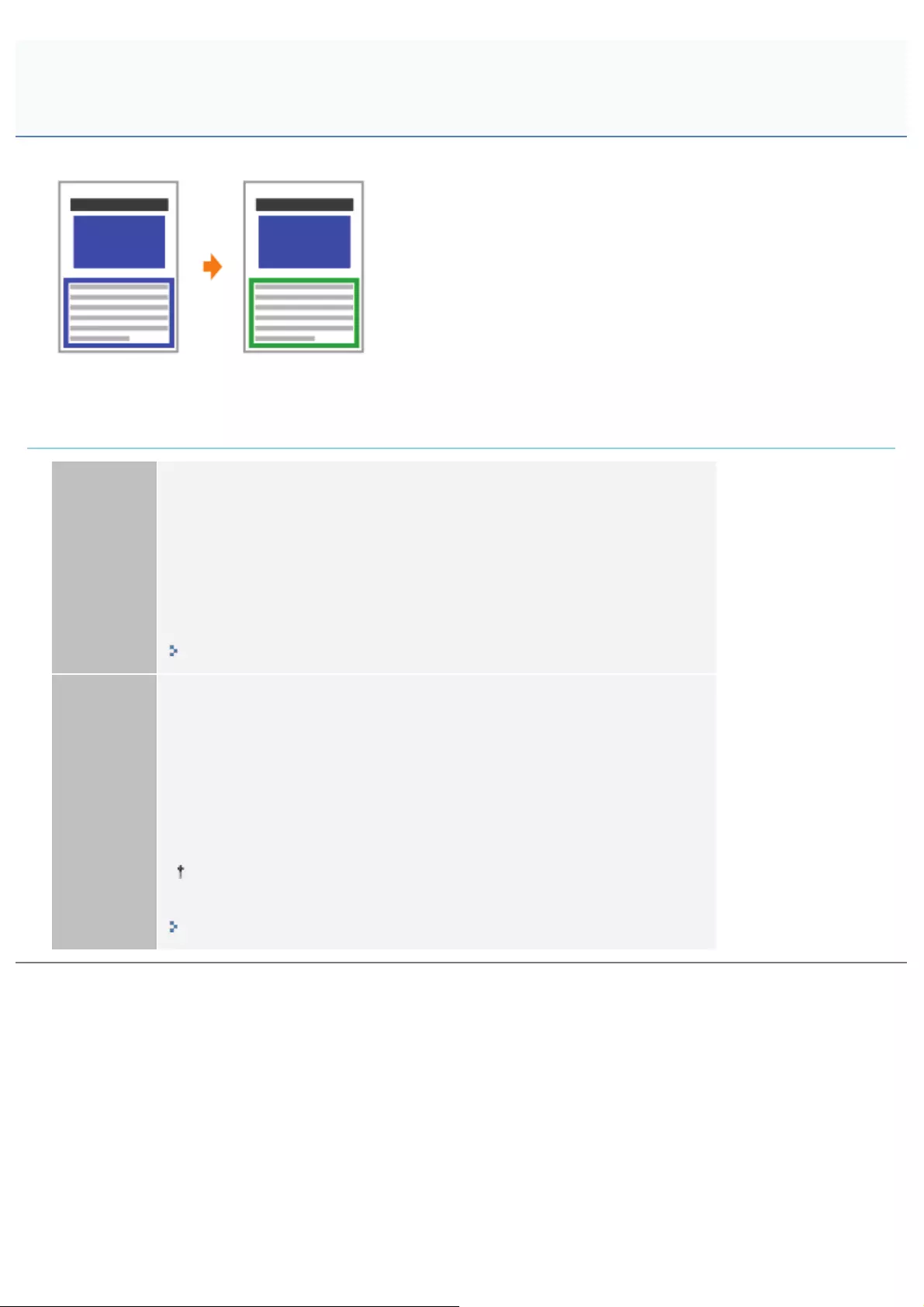
0258-0R4
Perform the following procedure.
<Cause> A special process may be applied depending on the line width of the border so that
thin lines are printed clearly.
Solution 1
Perform the following procedure in the printer driver.
1. Display the [Quality] sheet.
2. Select the [Manual Color Settings] check box.
3. Click [Color Settings].
4. Display the [Matching] sheet.
5. Set [Matching Method] for [Text] and [Graphics] to the same settings.
You can specify the same setting from the printer's control panel.
"[Setup] Menu ([Quality] Options)"
Solution 2
Perform the following procedure in the printer driver.
1. Display the [Quality] sheet.
2. Select the [Manual Color Settings] check box.
3. Click [Color Settings].
4. Display the [Matching] sheet.
5. Select [Gamma Adjustment] in [Matching Mode].
6. Change the gamma value for [Gamma].
The larger the value is, the darker in color the data is printed.
You can specify the same setting from the printer's control panel.
"[Setup] Menu ([Quality] Options)"
Fill Patterns and Borders Are Not Printed in the Correct Color (Specified
Color) Even When the Same Color Is Specified for Them
㻥㻡㻞㻌㻛㻌㻥㻥㻤
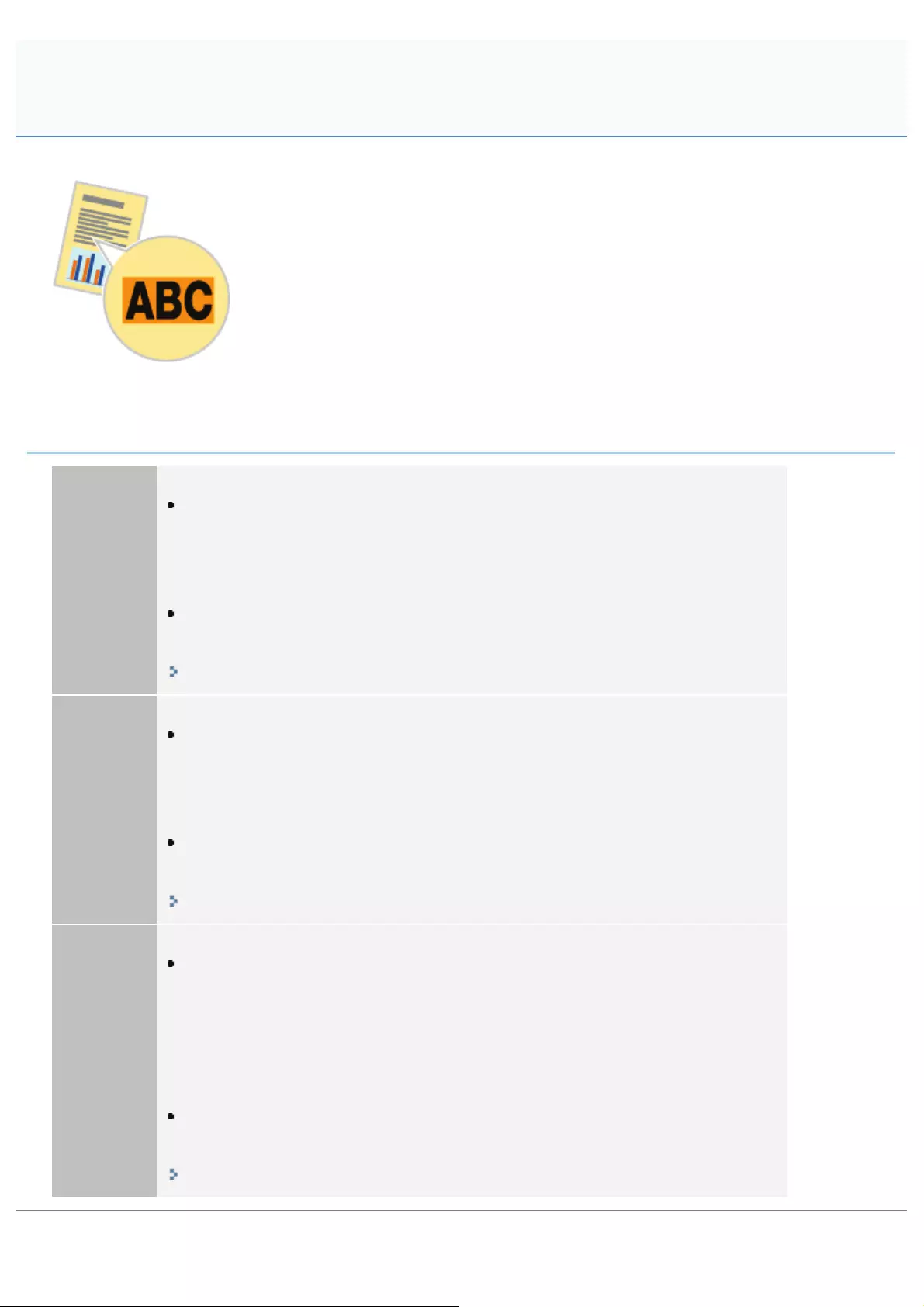
0258-0R5
Perform the following procedure.
<Cause> A process that is different from the specified halftone process or color process may
be applied depending on the operating system or application.
Solution 1
Perform the following procedure in the printer driver.
UFR II Printer Driver
1. Display the [Quality] sheet.
2. Click [Advanced Settings].
3. Set [Gray Compensation] to [All] or [Disabled].
PCL Printer Driver
See Help of the PCL printer driver.
You can specify the same setting from the printer's control panel.
"[Setup] Menu ([Quality] Options)"
Solution 2
Perform the following procedure in the printer driver.
UFR II Printer Driver
1. Display the [Quality] sheet.
2. Click [Advanced Settings].
3. Set [Halftones] to [Resolution] or [Gradation].
PCL Printer Driver
See Help of the PCL printer driver.
You can specify the same setting from the printer's control panel.
"[Setup] Menu ([Quality] Options)"
Solution 3
Perform the following procedure in the printer driver.
UFR II Printer Driver
1. Display the [Quality] sheet.
2. Select the [Manual Color Settings] check box.
3. Click [Color Settings].
4. Display the [Matching] sheet.
5. Set [Matching Method] for [Text], [Graphics], and [Images] to the same settings.
PCL Printer Driver
See Help of the PCL printer driver.
You can specify the same setting from the printer's control panel.
"[Setup] Menu ([Quality] Options)"
Square Areas That Cannot Be Seen on the Display Appear around Lines
or Text and Are Printed in a Different Color from the Other Areas
㻥㻡㻟㻌㻛㻌㻥㻥㻤

0258-0R6
Perform the following procedure.
<Cause> Because the superimposed areas are misaligned due to enlarged or reduced printing,
or any complicated superimpose process is specified in the application, the following
problems occur.
Streaks appear.
Diagrams are printed with their colors partially different from the data.
Diagrams that are not filled in with any color do not appear through another data and cannot be printed in the correct
color.
Solution
UFR II Printer Driver
Perform the following procedure in the printer driver.
1. Display the [Quality] sheet.
2. Click [Advanced Settings].
3. Set [Mode Details] to [High Quality].
PCL 6 Printer Driver
See Help of the PCL 6 printer driver.
Superimposed Diagrams Are Not Printed in the Correct Color
㻥㻡㻠㻌㻛㻌㻥㻥㻤
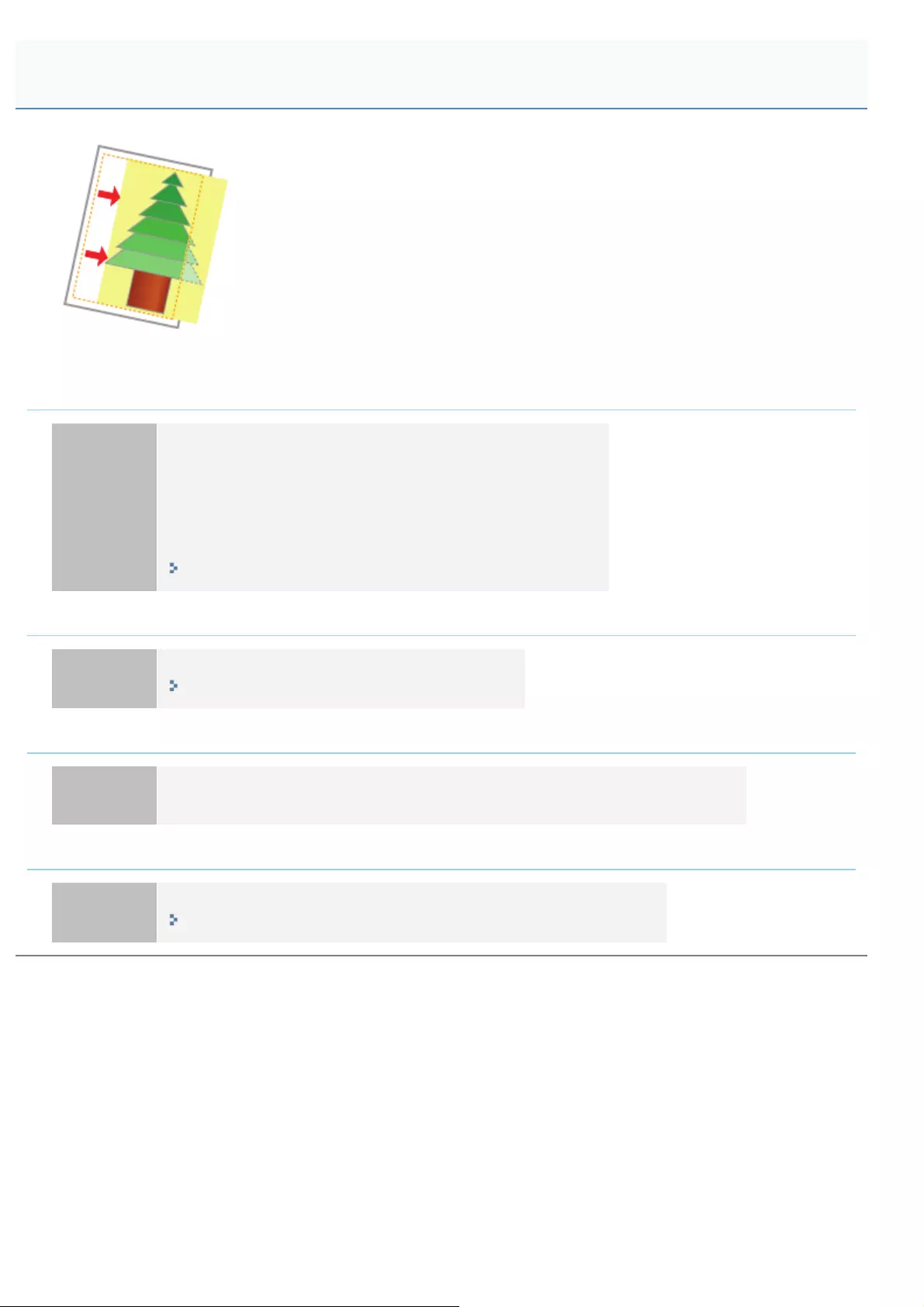
0258-0E3
Perform one of the following solutions according to the cause.
<Cause 1> [Gutter] is specified.
Solution
Perform the following procedure in the printer driver.
1. Display the [Finishing] sheet.
2. Click [Gutter].
3. Set [Gutter] to "0."
You can specify the same setting from the printer's control panel.
"[Setup] Menu ([Layout] Options)"
<Cause 2> [Offset Y] and [Offset X] are specified.
Solution Set [Offset Y] and [Offset X] to "0."
"Adjusting the Printing Position for All the Jobs"
<Cause 3> "Top Margin" and "Paper Position" in the application are not specified properly.
Solution Specify the settings for "Top Margin" and "Paper Position" in the application properly.
See the instruction manual supplied with the application.
<Cause 4> The printing position is adjusted in [Adj. Start Position].
Solution Adjust the printing position to an appropriate value in [Adj. Start Position].
"Adjusting the Printing Position for Each Paper Source"
The Printing Position Is Skewed
㻥㻡㻡㻌㻛㻌㻥㻥㻤
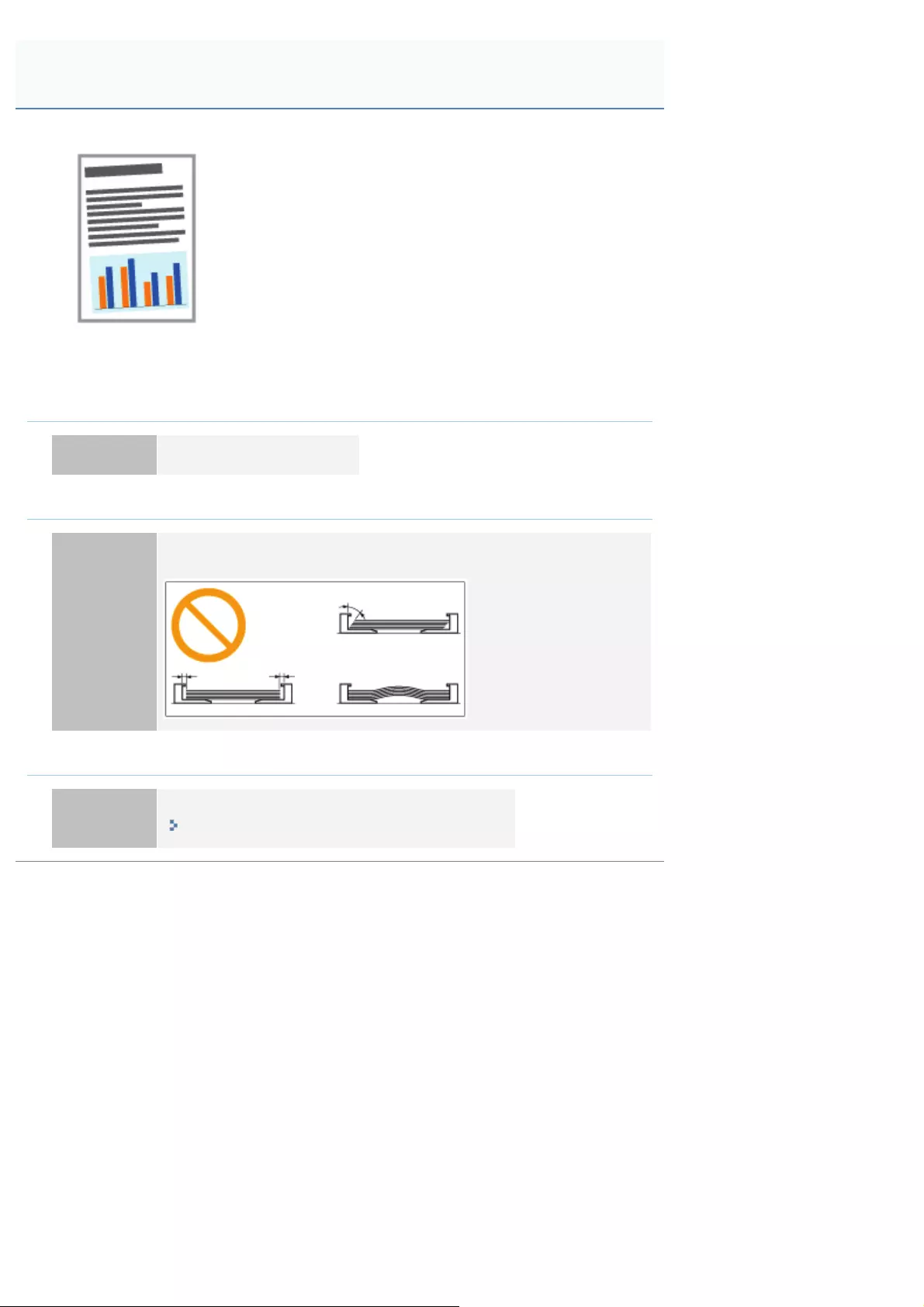
0258-0S5
Implement the following solutions according to the causes.
<Cause 1> Printed on curled paper.
Solution Flatten curls and print again.
<Cause 2> The positions of the paper guides does not fit to paper.
Solution
Align the paper guides with paper.
If the paper guides are too loose or too tight, paper is not fed properly.
<Cause 3> Printing from the multi-purpose tray
Solution Solution Load paper in the paper drawer.
"Loading Envelopes and Custom Paper Sizes"
Data Is Printed Diagonally
㻥㻡㻢㻌㻛㻌㻥㻥㻤

0258-0E4
Perform one of the following solutions according to the cause.
<Cause 1> The setting for the scaling factor is not appropriate.
Solution 1
Perform the following procedure in the printer driver.
1. Display the [Page Setup] sheet.
2. Clear the [Manual Scaling] check box.
If the [Manual Scaling] check box is cleared, the scale factor will be set according to [Page Size]
and [Output Size] automatically.
Solution 2
Perform the following procedure in the printer driver.
1. Display the [Page Setup] sheet.
2. Select the [Manual Scaling] check box, then specify an appropriate scale factor according to
the paper size to be used.
<Cause 2> Paper is not loaded properly in the paper drawer or multi-purpose tray.
Solution
Load the paper properly.
"Loading Paper in the Drawer"
"Loading Paper in the Multi-purpose Tray"
<Cause 3> A document with no margins was printed.
Solution 1 Data is printed with a margin of 5 mm (10 mm for envelopes). Provide a margin around the data.
"Printable Area"
Solution 2
Perform the following procedure in the printer driver.
1. Display the [Finishing] sheet.
2. Click [Advanced Settings].
3. Set [Expand Print Region and Print] to [On].
Depending on the print data to be printed, the edge of paper may be missing partly during printing
or may blot during color printing.
A Portion of the Page Is Not Printed
㻥㻡㻣㻌㻛㻌㻥㻥㻤
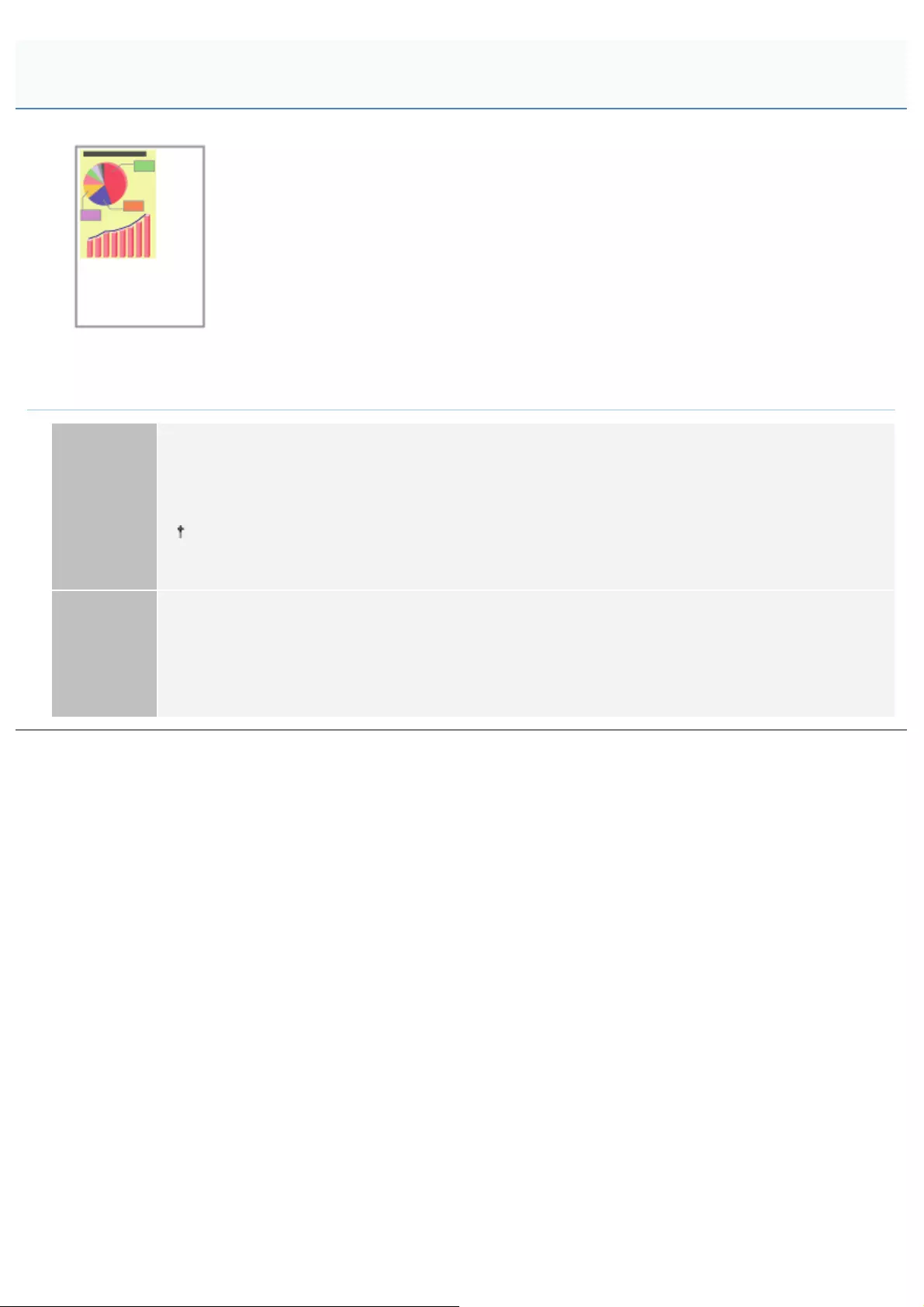
0258-0E5
Perform the following procedure.
<Cause> The setting for the scaling factor is not appropriate.
Solution 1
Perform the following procedure in the printer driver.
1. Display the [Page Setup] sheet.
2. Clear the [Manual Scaling] check box.
If the [Manual Scaling] check box is cleared, the scale factor will be set according to [Page Size]
and [Output Size] automatically.
Solution 2
Perform the following procedure in the printer driver.
1. Display the [Page Setup] sheet.
2. Select the [Manual Scaling] check box, then specify an appropriate scale factor according to
the paper size to be used.
Data Is Reduced and Printed
㻥㻡㻤㻌㻛㻌㻥㻥㻤
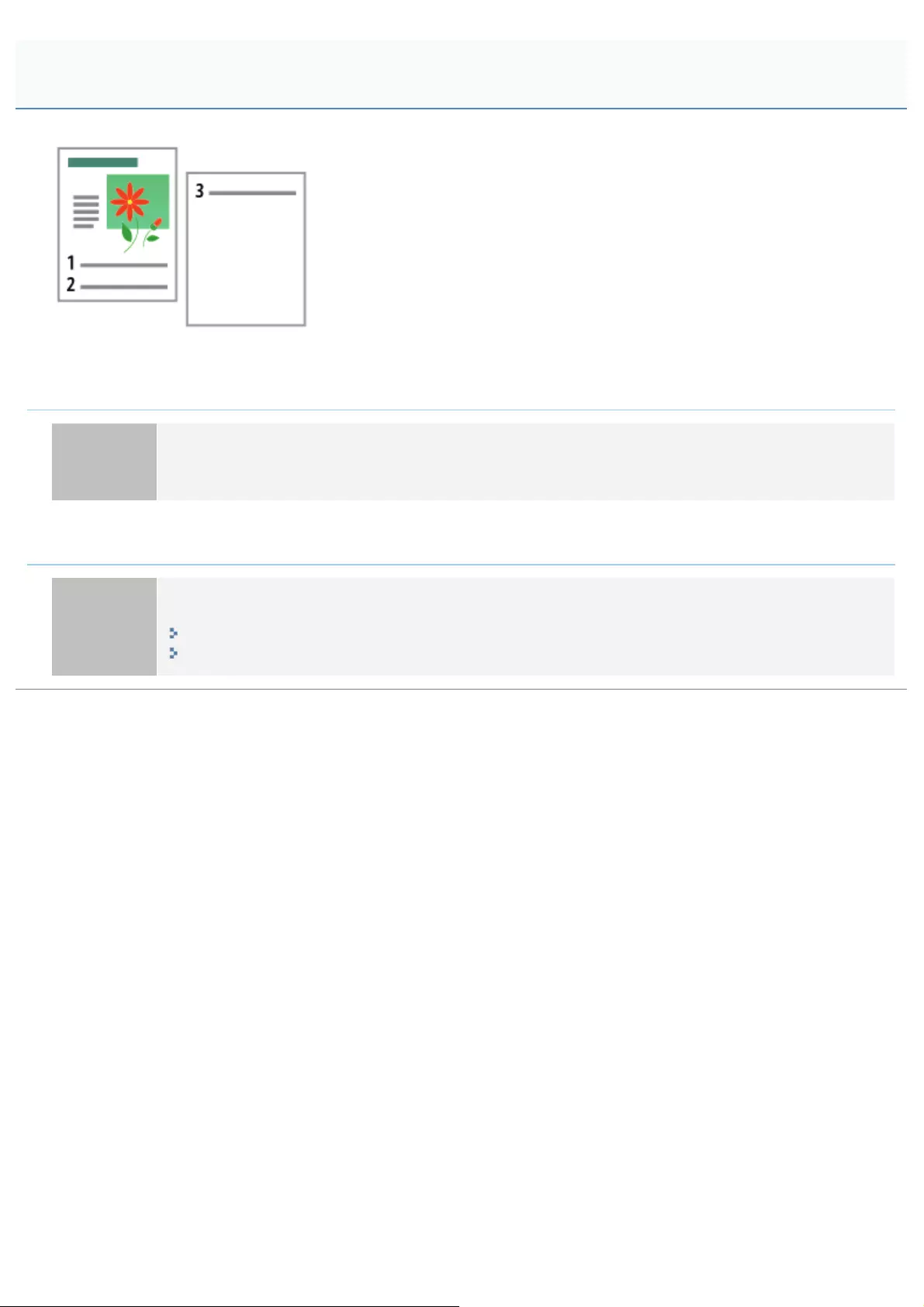
0258-0E6
Perform one of the following solutions according to the cause.
<Cause 1> "Line Spacing" or "Lines/Page" in the application is not specified properly.
Solution
Specify the settings for "Line Spacing" or "Lines/Page" in the application so that the data fits in one page,
and then print again.
See the instruction manual supplied with the application.
<Cause 2> When [Auto Mode Selection] is set to [Auto Selection], the number of seconds
specified in [Timeout Time] is too short.
Solution
Set [Auto Mode Selection] to a setting other than [Auto Selection], or increase the number of seconds
specified in [Timeout Time] sufficiently.
"[Setup] Menu ([Print Mode] Options)"
"[Setup] Menu ([Interface] Options)"
The Next Page Is Printed from Halfway across the Previous Page
㻥㻡㻥㻌㻛㻌㻥㻥㻤
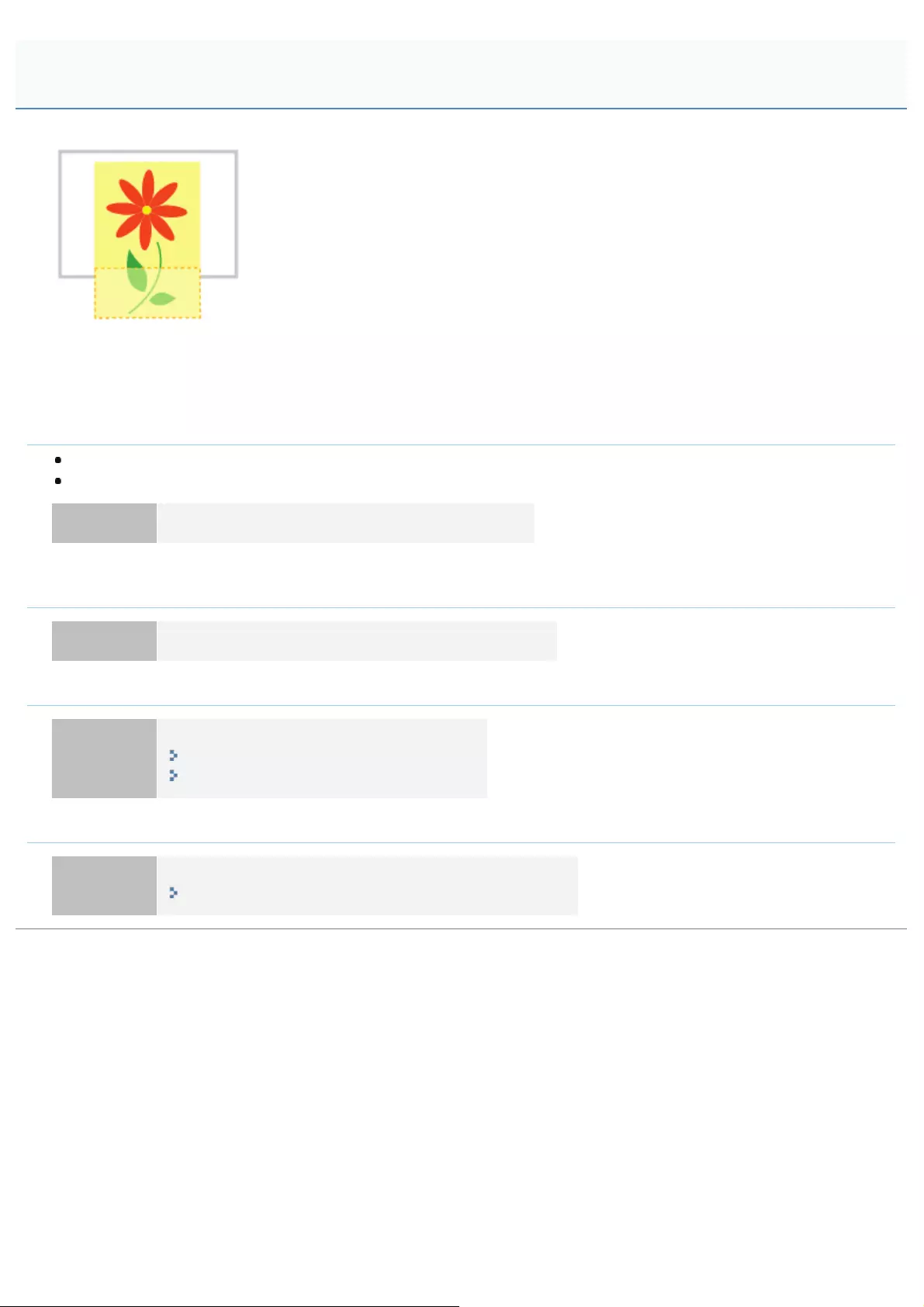
0258-0R9
Perform one of the following solutions according to the cause.
<Cause 1> When the following settings in the [Select Feeder] menu are set to [Mixed Sizes],
custom size paper whose long edges are 215.9 mm or less is loaded in landscape orientation
and printed (only when the UFR II printer driver is used).
Size of the paper in the multi-purpose tray
Drawer N (N = 1, 2) size
Solution Load the paper in portrait orientation, then print again.
<Cause 2> When the UFR II printer driver was not used, custom size paper was loaded in
portrait orientation to be printed.
Solution Load the paper in landscape orientation, then print again.
<Cause 3> Paper is not loaded properly in the paper drawer or multi-purpose tray.
Solution
Load the paper properly.
"Loading Paper in the Drawer"
"Loading Paper in the Multi-purpose Tray"
<Cause 4> The printing position is adjusted in [Adj. Start Position].
Solution The printing position is adjusted in [Adj. Start Position].
"Adjusting the Printing Position for Each Paper Source"
Printed Data Lies outside Paper
㻥㻢㻜㻌㻛㻌㻥㻥㻤
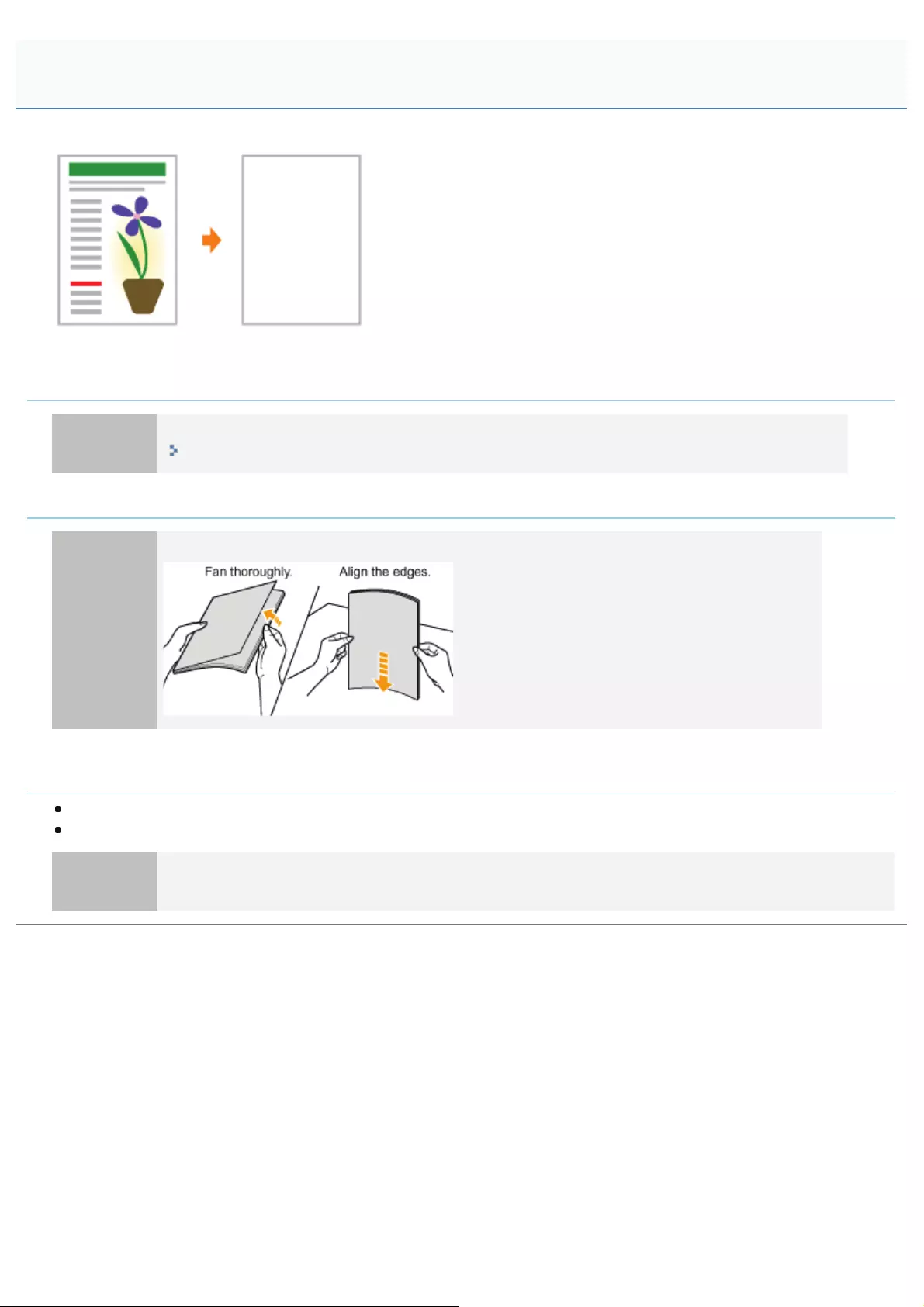
0258-0E7
Perform one of the following solutions according to the cause.
<Cause 1> The toner cartridge was installed with the sealing tape still attached.
Solution Take the toner cartridge out of the printer, pull out the sealing tape, and reinstall the toner cartridge.
"Toner Cartridge Replacement"
<Cause 2> Multiple sheets of paper are fed at a time.
Solution
Fan the paper thoroughly, and then align the edges of the stack properly on a hard, flat surface.
<Cause 3> The size of the paper loaded in a paper source is different from the following
settings.
Setting for [Output Size] in the [Page Setup] sheet in the printer driver
[MP Tray Paper Size], [Drawer 1 Size], or [Drawer 2 Size] in the [Select Feeder] menu
Solution When the message <Check Paper Size> appears in the display, perform the described solutions in "A
Message Appears in the Control Panel."
Blank Paper Is Output (Nothing Is Printed on the Paper)
㻥㻢㻝㻌㻛㻌㻥㻥㻤

0258-0E8
Perform one of the following solutions according to the cause.
<Cause 1> The drum in any of the toner cartridges has deteriorated or is damaged.
Solution Replace the toner cartridge with a new one.
"Toner Cartridge Replacement"
<Cause 2> A problem is occurring inside the printer.
Solution
If <Ennn-nnnn> appears in the display, follow the procedure in "The Service Call <Ennn-nnnn> Appears in
the Display ("n" Represents an Alphanumeric Character)" in "The Message Indicator Is On" to solve the
problem.
The Overall Surface of the Paper Is Printed in a Particular Color
㻥㻢㻞㻌㻛㻌㻥㻥㻤

0258-0E9
Perform the following procedure.
<Cause> The command that notifies of the end of the data is not sent from the computer. (The
Job indicator is on.)
Solution
Press [ ] ( : Online) to place the printer offline, and then select [Form Feed] in the Reset menu.
"Outputting Data (Forced Output)"
If you print using an application that does not have a printing function, [Form Feed] is performed
because the last page in which data is less than one page remains in the memory.
The Last Page Cannot Be Printed
㻥㻢㻟㻌㻛㻌㻥㻥㻤
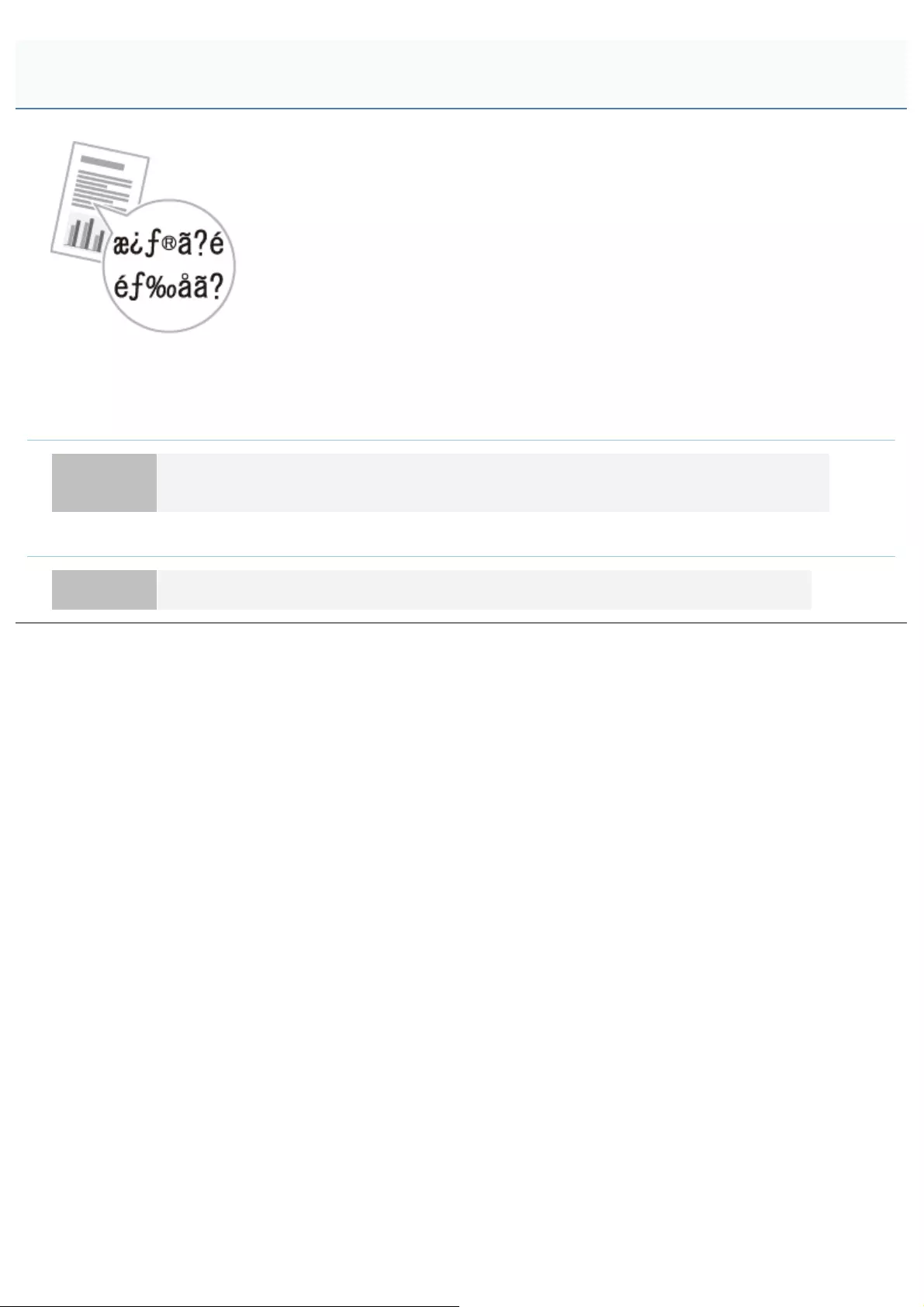
0258-0EA
Perform one of the following solutions according to the cause.
<Cause 1> The data is printed from Windows without the supplied printer driver installed for
Windows.
Solution Install the supplied printer driver for Windows, then print again.
For details on the procedure for installing the printer driver, see "Printer Driver Installation Guide."
<Cause 2> The printer setting in the DOS application is not appropriate.
Solution Specify the printer setting in the DOS application to the one that is compatible with this printer.
Unreadable Characters Are Printed
㻥㻢㻠㻌㻛㻌㻥㻥㻤
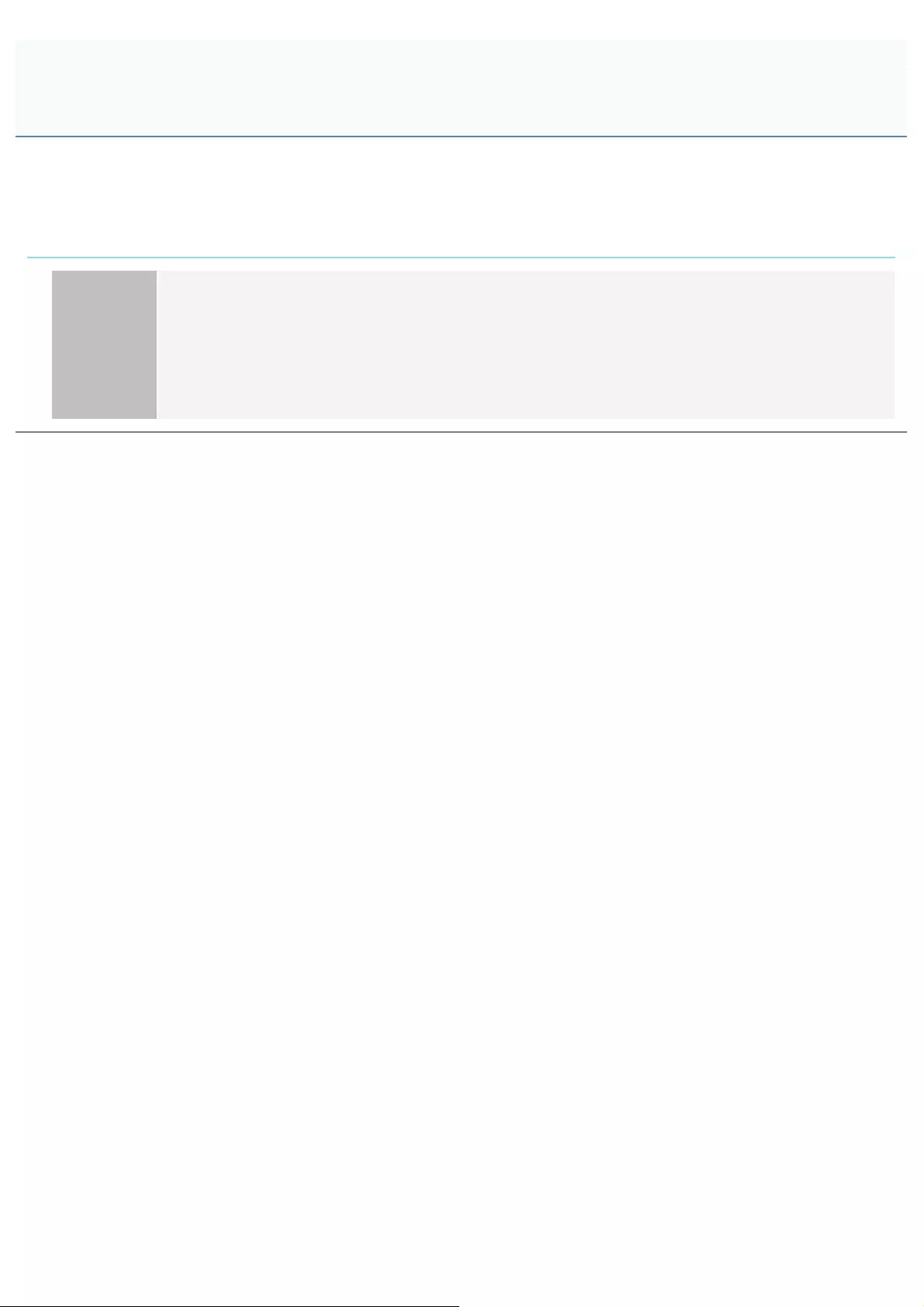
0258-0EC
Perform the following procedure.
<Cause> This problem may occur in some applications depending on the processing type of
the print data.
Solution
If you are using the PCL/UFR II printer driver, performing the following procedure may be able to solve the
problem.
1. Display the [Finishing] sheet.
2. Click [Advanced Settings].
3. Change the [EMF Spooling] setting.
The Printout Is Different from What Is Displayed on Screen (Windows
2000, XP, and Server 2003)
㻥㻢㻡㻌㻛㻌㻥㻥㻤

0258-0EE
Perform the following procedure.
<Cause> The envelope is inappropriate.
Solution 1 Replace the envelope with that which can be used with this printer.
"Usable Paper"
Solution 2
Set [Special Env. Mode] to [On].
"[Setup] Menu ([User Maintenance] Options)"
Normally, use the printer with [Special Env. Mode] set to [Off]. Change the settings only if the
described problems occur.
The Flap of the Printed Envelope Sticks
㻥㻢㻢㻌㻛㻌㻥㻥㻤

0258-0EF
Perform the following procedure.
<Cause> You are using paper which tends to be fed at a time.
Solution
Fan the paper thoroughly, and then align the edges of the stack properly on a hard, flat surface.
Multiple Sheets of Paper Are Fed at a Time
㻥㻢㻣㻌㻛㻌㻥㻥㻤

0258-0EJ
The Printer Pauses during Printing, and then Printing Repeatedly Starts and Stops
The Keys on the Control Panel Do Not Function
The SD Card Cannot Be Used
Jobs Cannot Be Saved
SSL Cannot Be Enabled
When SSL Is Enabled, the Remote UI Does Not Start, or the IPP Printing Cannot Be
Performed
The Printer Cannot Be Accessed from the Remote UI or Network Related Utility
Software
Restricting the Users Is Not Possible
Other Problems
㻥㻢㻤㻌㻛㻌㻥㻥㻤
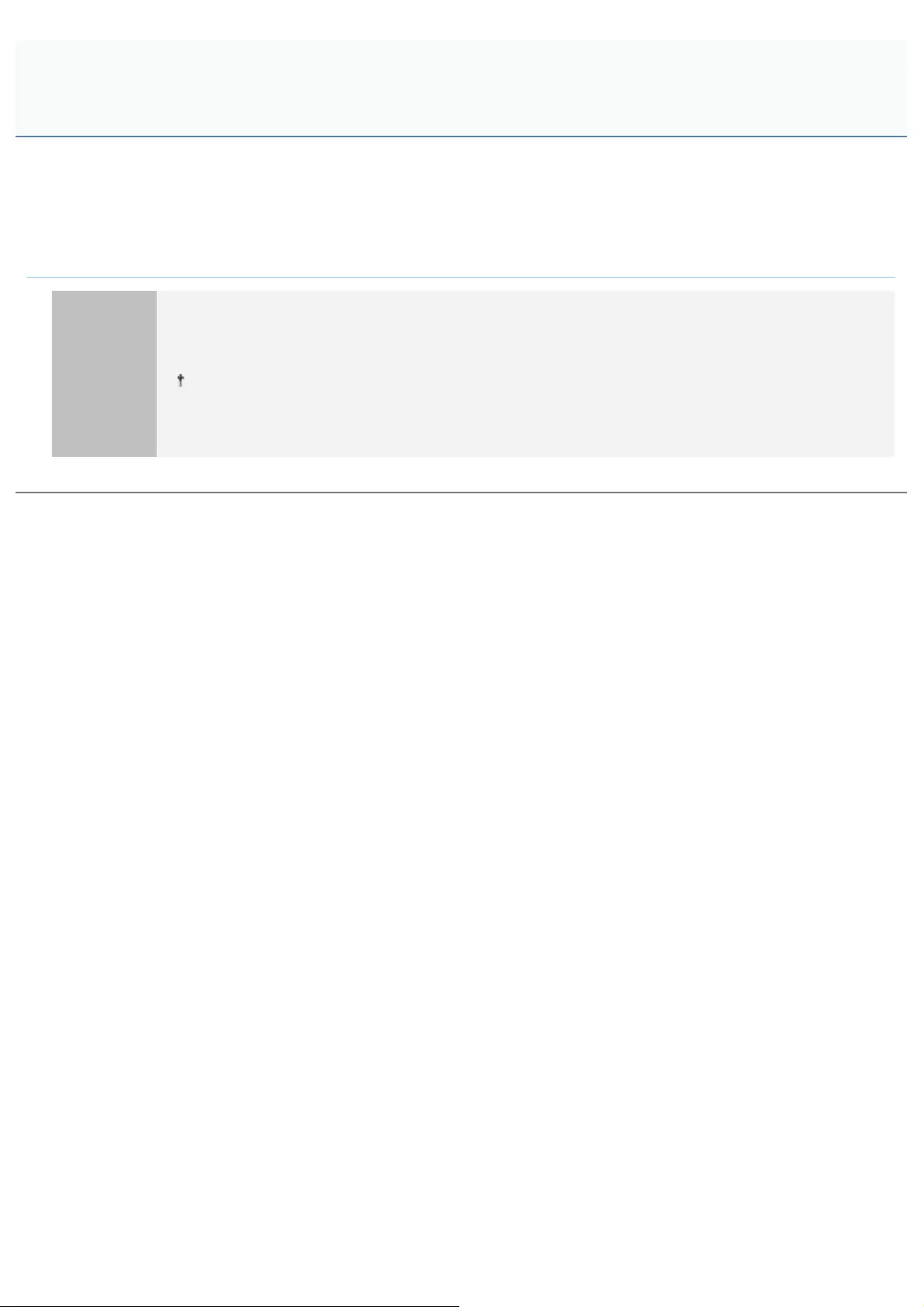
0258-0RH
Perform the following procedure.
<Cause> If the printer is used continuously for an extended period of time, the internal
temperature of the printer increases, activating a safety mechanism and pausing printing
temporarily.
Solution
Please wait a moment. When the inside of the printer cools down, printing resumes. If the internal
temperature of the printer has not decreased sufficiently, the safety mechanism is reactivated and printing
is paused temporarily.
When the inside temperature cools down sufficiently, the printer resumes the normal printing
speed. The time until the safety mechanism activates or until the printer resumes the normal
printing speed varies depending on the printer usage conditions.
The Printer Pauses during Printing, and then Printing Repeatedly Starts
and Stops
㻥㻢㻥㻌㻛㻌㻥㻥㻤
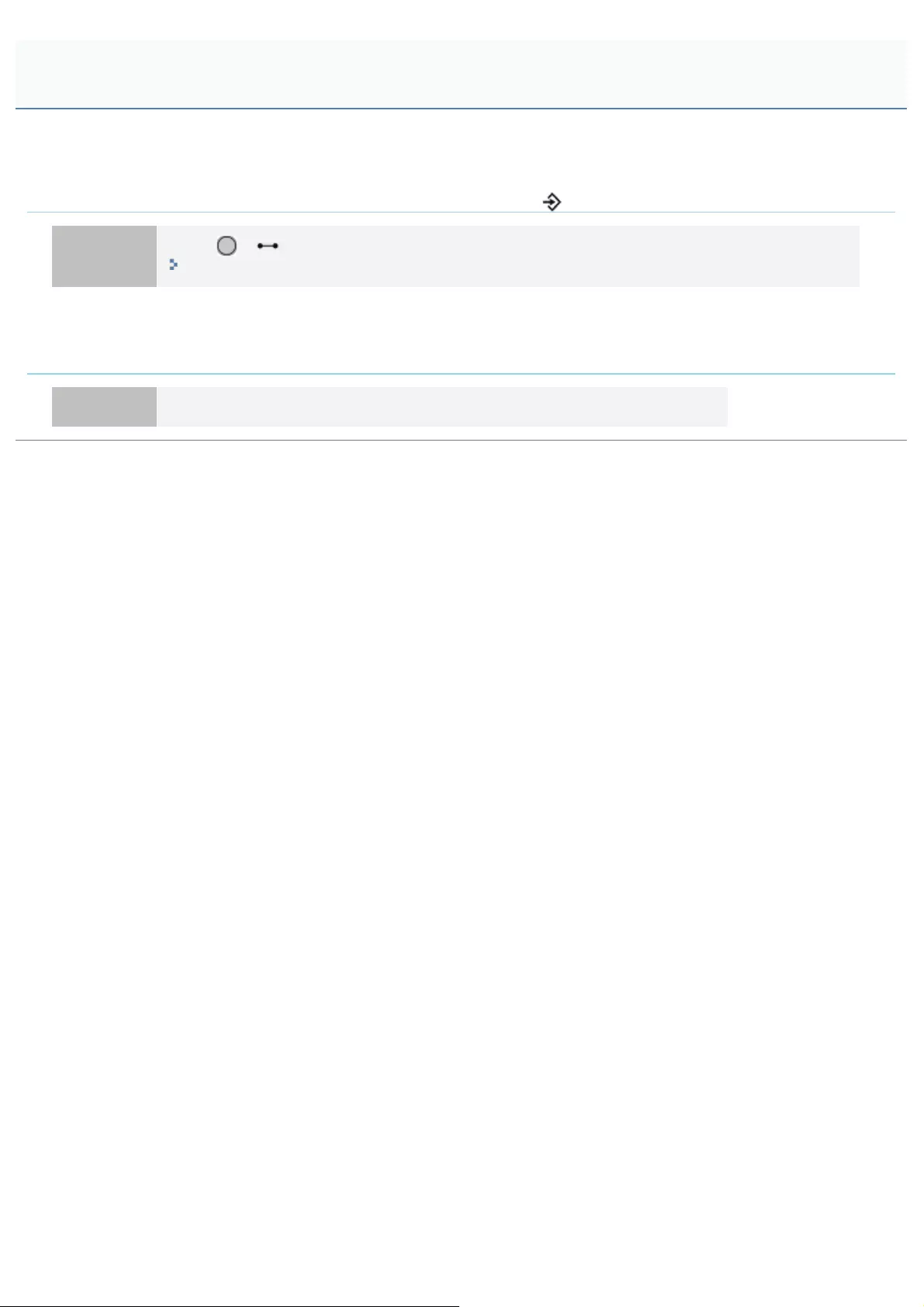
0258-0RJ
Perform one of the following solutions according to the cause.
<Cause 1 > Here is data remaining in the memory. (The Job indicator is on.)
Solution Press [ ] ( : Online) to place the printer offline, and then select [Form Feed] in the Reset menu.
"Outputting Data (Forced Output)"
<Cause 2> The keylock function is enabled. (The "Pi" alarm sounds when the key is pressed
and <Key locked.> appears in the display.)
Solution Disable the keylock function from the Remote UI. Contact the printer administrator.
The Keys on the Control Panel Do Not Function
㻥㻣㻜㻌㻛㻌㻥㻥㻤
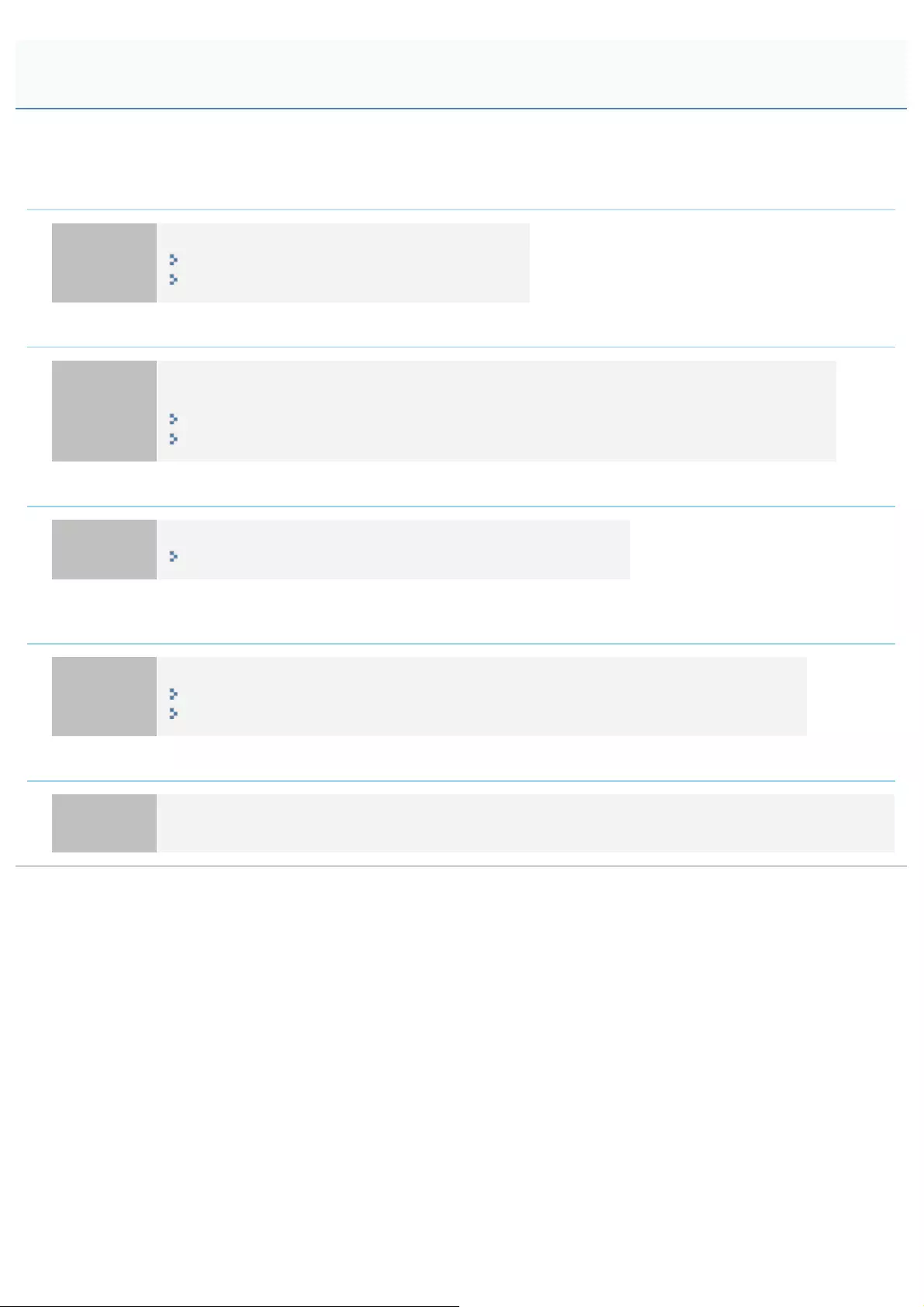
0258-0RK
Perform one of the following solutions according to the cause.
<Cause 1> [SD Card] in the Control Menu options in the Setup menu is set to [Off].
Solution
Set [SD Card] to [On], and then perform a hard reset.
"[Setup] Menu ([Control Menu] Options)"
"Canceling All the Jobs (Hard Reset)"
<Cause 2> An error has occurred in the SD card.
Solution
Perform formatting in [SD Card Maintenance] in the User Maintenance options in the Setup menu.
If the same error still occurs, replace the SD card.
"[Setup] Menu ([User Maintenance] Options)"
"Installing SD Card (LBP7680Cx Only)"
<Cause 3> The SD card is not installed properly.
Solution Turn the printer OFF, then check if the SD card is installed properly.
"Installing SD Card (LBP7680Cx Only)"
<Cause 4> The data cannot be saved on the SD card because there is not sufficient free
space in the SD card.
Solution
Delete any unnecessary jobs from among the jobs saved on the SD card.
"Saving a Document in the SD Card in the Printer (Stored Job Print) (LBP7680Cx Only)"
"Remote UI"
<Cause 5> The SD card is write-protected.
Solution Check that the SD card is not write-protected. If the card is write-protected, release the protection, and
then insert the card.
The SD Card Cannot Be Used
㻥㻣㻝㻌㻛㻌㻥㻥㻤
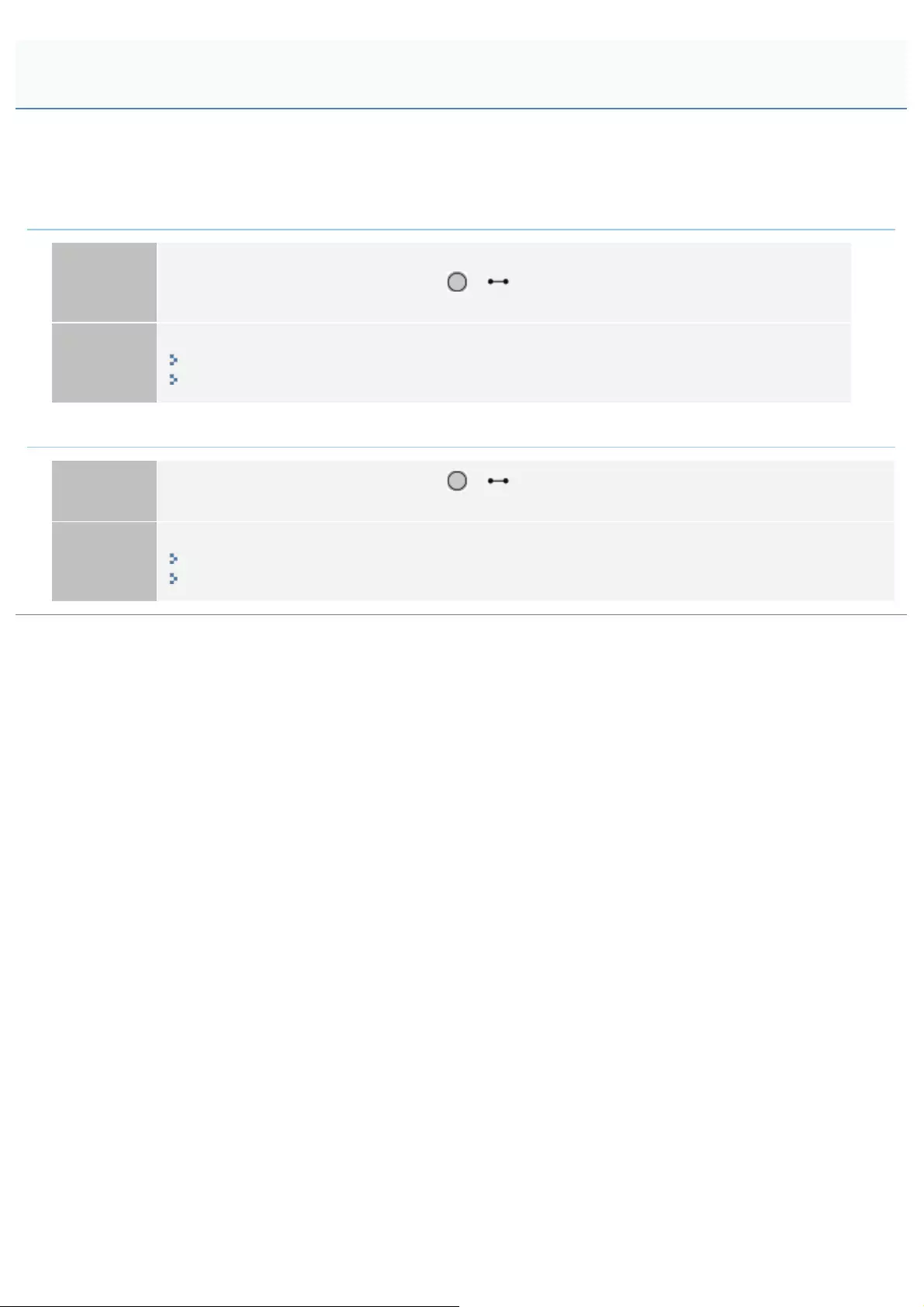
0258-0RL
Perform one of the following solutions according to the cause.
<Cause 1> The data cannot be saved on the SD card because there is not sufficient free
space in the SD card.
Solution 1
The data cannot be saved on the SD card because there is not sufficient free space in the SD card.
The printer is ready to print by pressing [ ] ( : Online), ignoring the print data.
The data of 3 GB or larger in total cannot be saved.
Solution 2
Delete any unnecessary jobs from among the jobs saved on the SD card.
"Saving a Document in the SD Card in the Printer (Stored Job Print) (LBP7680Cx Only)"
"Remote UI"
<Cause 2> The number of the jobs exceeded the number of jobs you can save in the SD card.
Solution 1 The printer is ready to print by pressing [ ] ( : Online), ignoring the print data. Up to 100 jobs can be
saved all together.
Solution 2
Delete any unnecessary jobs from among the jobs saved on the SD card.
"Saving a Document in the SD Card in the Printer (Stored Job Print) (LBP7680Cx Only)"
"Remote UI"
Jobs Cannot Be Saved
㻥㻣㻞㻌㻛㻌㻥㻥㻤
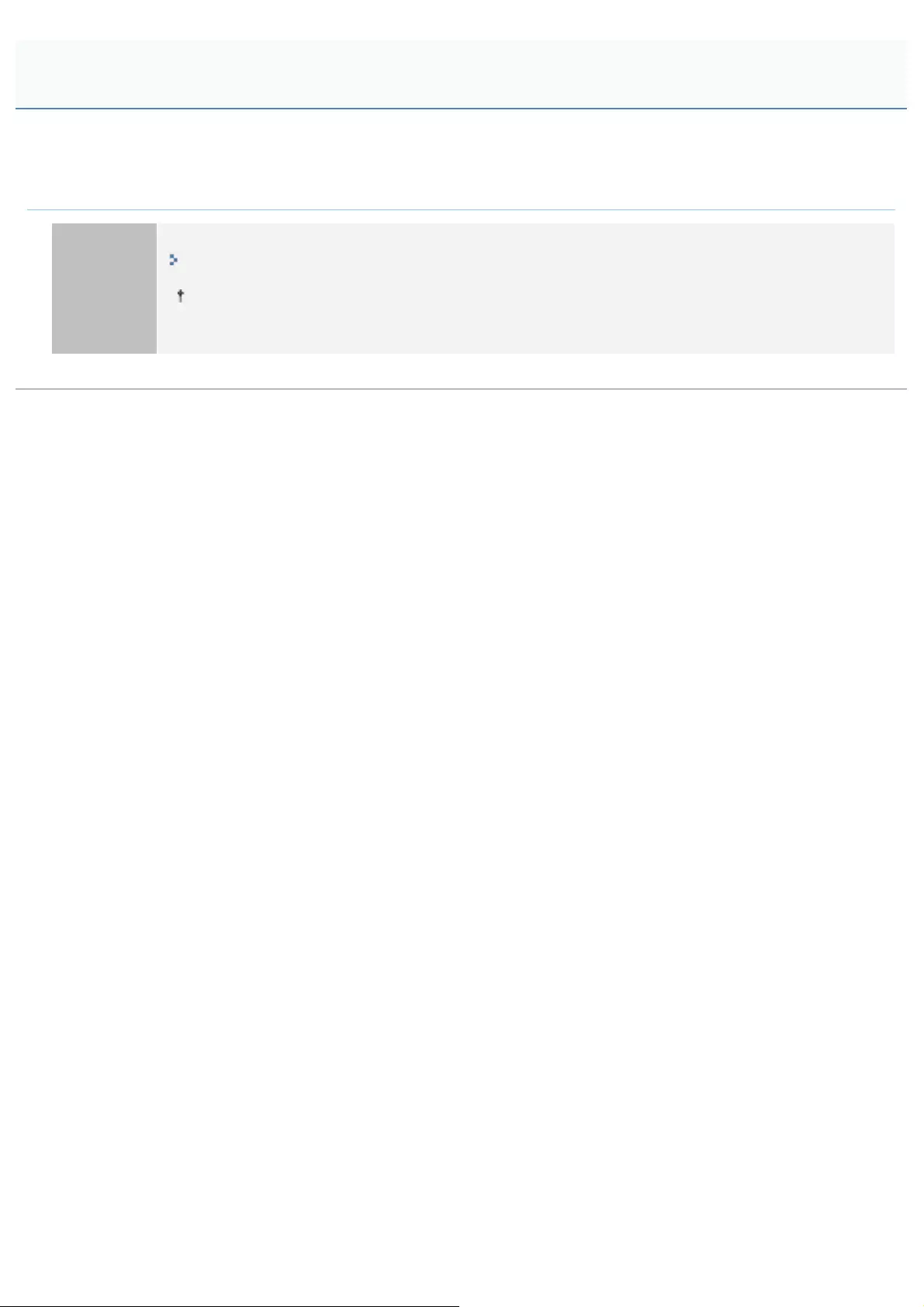
0258-0EK
Perform the following procedure.
<Cause> The key pair and its certificate to be used are not registered.
Solution
Register the key pair and server certificate that are used.
"Setting Keys and Certificates"
In order to use the SSL encryption communication function, it is necessary to create keys and
certificates and to register the key pair and server certificate that are used.
SSL Cannot Be Enabled
㻥㻣㻟㻌㻛㻌㻥㻥㻤
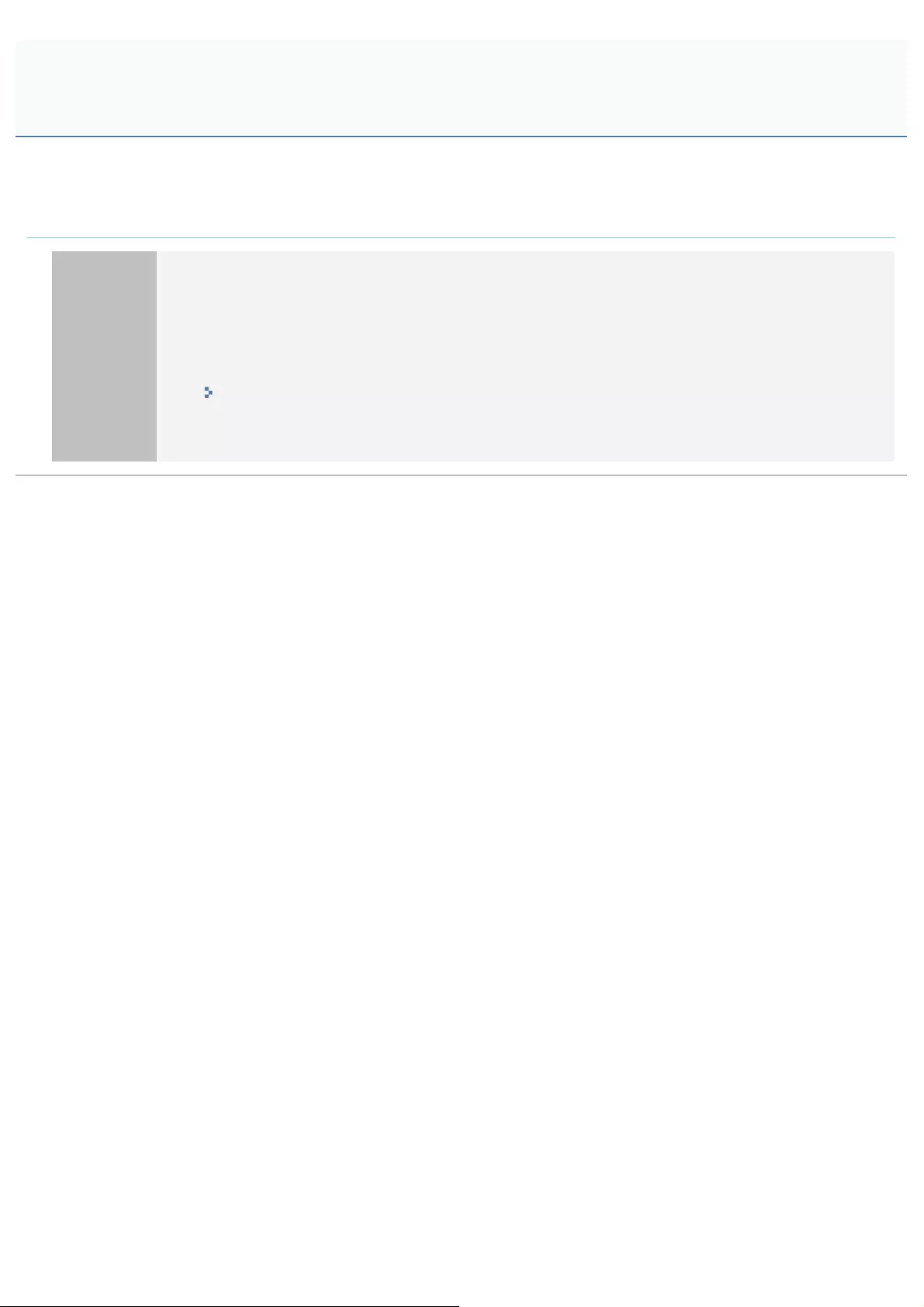
0258-0EL
Perform the following procedure.
<Cause> The file related to key management is broken.
Solution
Perform the following procedure.
1. 6HOHFW>1HWZRUN@ĺ>5HPRWH8,6HWWLQJV@ĺ>66/@XVLQJWKHFRQWUROSDQHODQGWKHQPDNHVXUH
that [SSL] is set to [Off].
2. Restart the printer.
3. Regenerate the key and certificate and specify the settings for SSL from the Remote UI.
"Setting Keys and Certificates"
4. Restart the printer.
When SSL Is Enabled, the Remote UI Does Not Start, or the IPP Printing
Cannot Be Performed
㻥㻣㻠㻌㻛㻌㻥㻥㻤
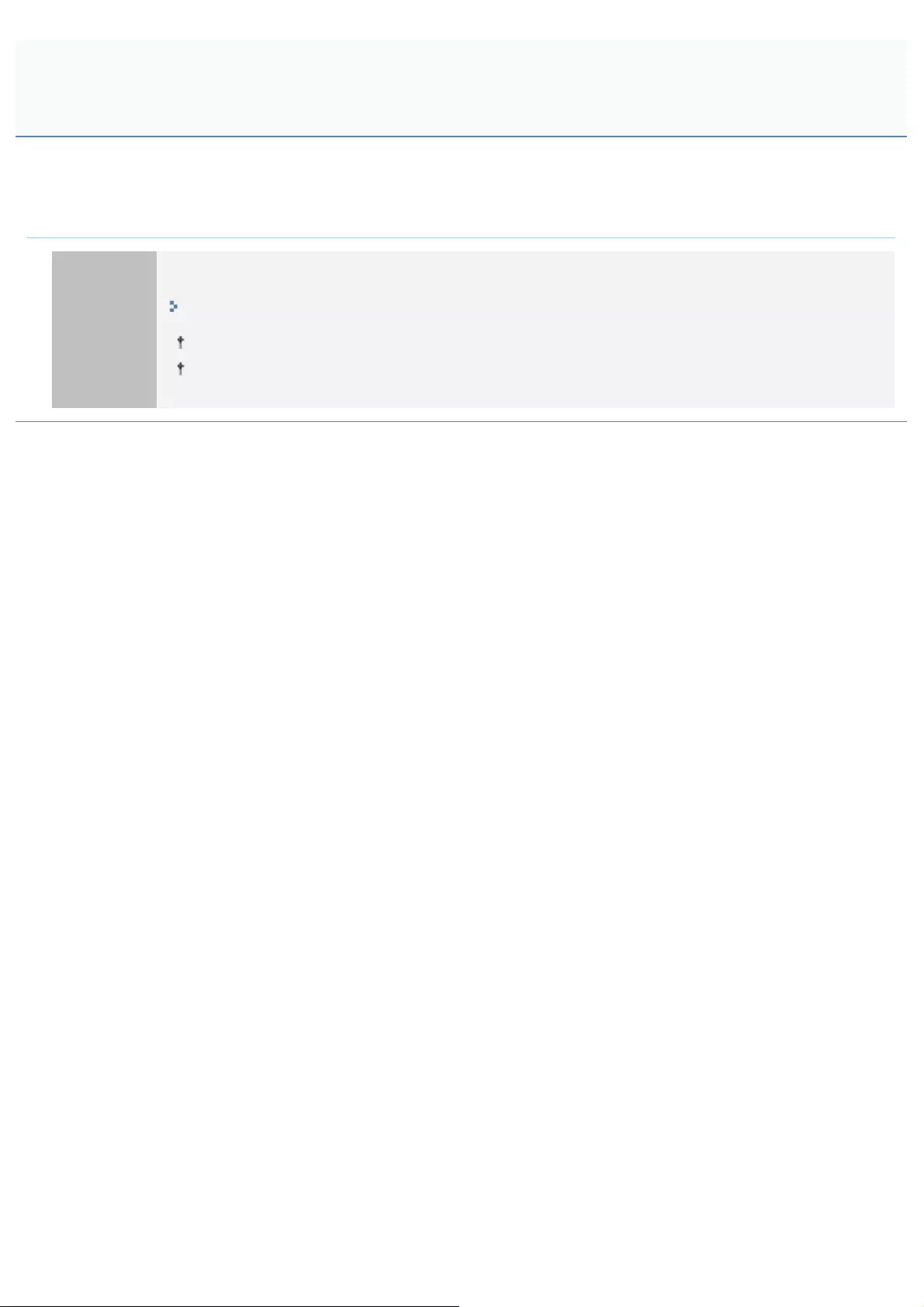
0258-0SX
Perform the following procedure.
<Cause> The IP Address Filter or MAC Address Filter Is Set to On.
Solution
6HOHFW>1HWZRUN@ĺ>$GGUHVV)LOWHU@XVLQJWKHFRQWUROSDQHODQGWKHQPDNHVXUHWKDW>$GGUHVV)LOWHU@LVVHW
to [Off].
"[Setup] Menu ([Network] Options)"
If you have once set it to [Off], set it back to [On] after confirmation of the setting.
Use the control panel to make a setting for the address filter function.
The Printer Cannot Be Accessed from the Remote UI or Network
Related Utility Software
㻥㻣㻡㻌㻛㻌㻥㻥㻤
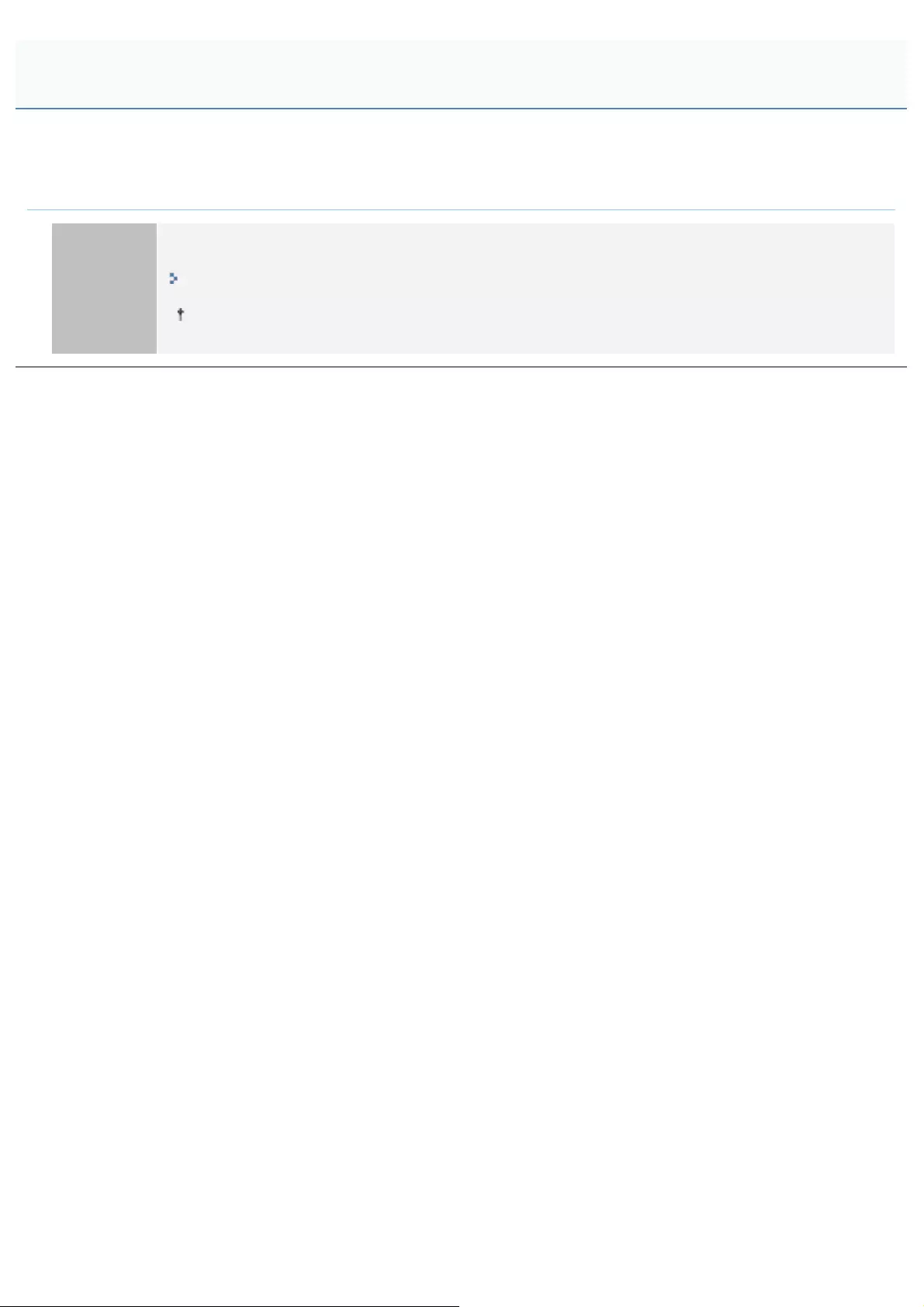
0258-0SY
Perform the following procedure.
<Cause>The IP Address Filter or MAC Address Filter Is Not Set to On.
Solution
6HOHFW>1HWZRUN@ĺ>$GGUHVV)LOWHU@XVLQJWKHFRQWUROSDQHODQGWKHQPDNHVXUHWKDW>$GGUHVV)LOWHU@LVVHW
to [On].
"[Setup] Menu ([Network] Options)"
Use the control panel to make a setting for the address filter function.
Restricting the Users Is Not Possible
㻥㻣㻢㻌㻛㻌㻥㻥㻤
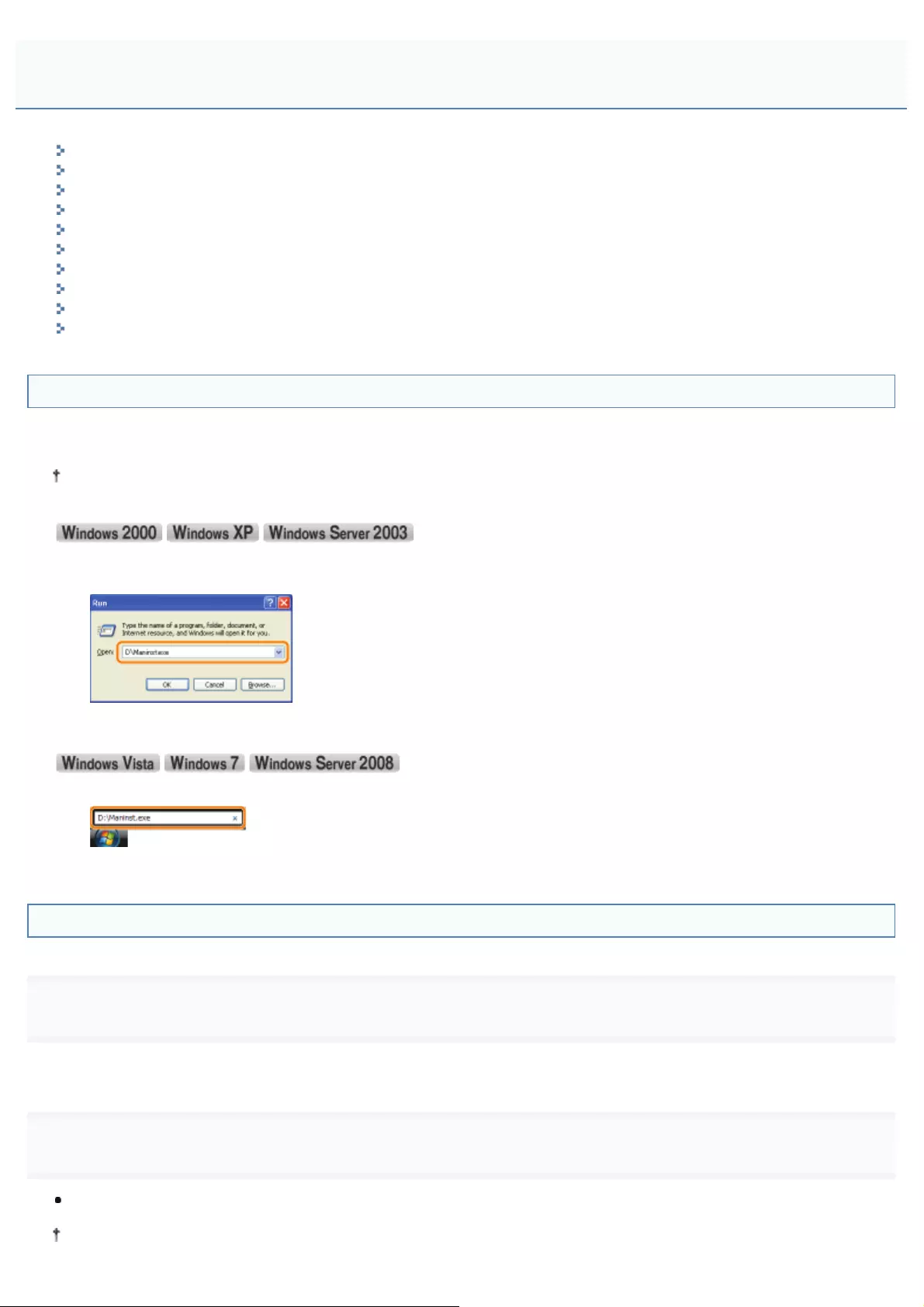
0258-0EU
Displaying the Top Page of the User Manual CD-ROM
Checking the IP Address Using the PING Command
Checking the Processor Version of Windows Vista, 7, or Server 2008
Printing a Test Page in Windows
Checking the Bi-directional Communication
Displaying the Printer Folder
Checking Printers in the Print Server
Checking the Port
Changing the Printing Protocol
Setting for [Device Type] when Setting a Port
Displaying the Top Page of the User Manual CD-ROM
If the top page of the User Manual CD-ROM does not appear even after inserting the CD-ROM, perform the following
procedure.
The CD-ROM drive name is indicated as "D:" in this manual. The CD-ROM drive name may differ depending on the
computer you are using.
1. From the [Start] menu, select [Run].
2. Enter "D:\Maninst.exe."
3. Click [OK].
1. Enter "D:\Maninst.exe" in [Search programs and files] or [Start Search] under the [Start] menu.
2. Press the [ENTER] key on the keyboard.
Checking the IP Address Using the PING Command
1
Run Command Prompt.
)URPWKH>6WDUW@PHQXVHOHFW>$OO3URJUDPV@RU>3URJUDPV@ĺ>$FFHVVRULHV@ĺ>&RPPDQG3URPSW@
2
Enter "ping <the IP address of the printer>", then press the [ENTER] key on your keyboard.
Input example: "ping 192.168.0.215"
Correctly enter the IP address which is set for the printer. If the wrong IP address is entered, you cannot obtain an
Basic Operations/Various Information for Windows
㻥㻣㻤㻌㻛㻌㻥㻥㻤
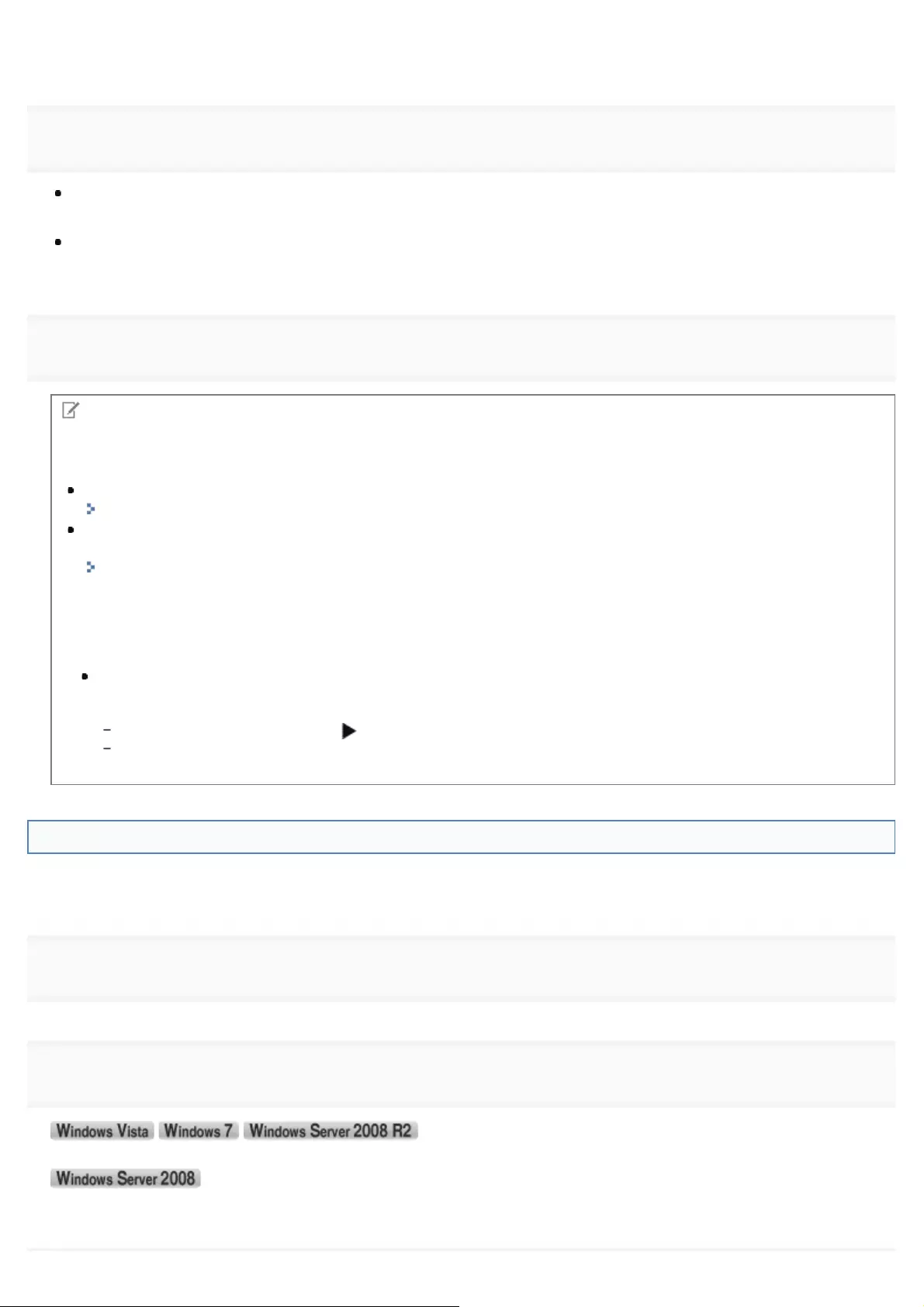
appropriate check result.
3
Check the displayed result.
When "Packets: Sent = 4, Received = 4, Lost = 0 (0% loss)," is displayed
The IP address is set properly.
When "Packets: Sent = 4, Received = 0, Lost = 4 (100% loss)," is displayed
Ask your network administrator about the problem.
4
Enter "exit", and then press [ENTER] on the keyboard to exit Command Prompt.
NOTE
When using DHCP, BOOTP, or RARP
Consult your network administrator and perform either of the following settings.
Set the DNS Dynamic Update function.
"Configuring the Protocol Settings"
Configure DHCP or other settings so that the same IP address is always assigned to the printer when the printer is
started.
"Configuring the Protocol Settings"
Checking and configuring the subnet
Enter "ipconfig" as a command in Command Prompt.
The network setting information of the computer appears. Confirm that the computer and printer are on the same subnet.
Example:
Setting in a computer
Subnet mask: "255.255.255.0"
IP Address: "192.168.0.10"
The IP address of the printer needs to be "192.168.0.xxx". (xxx indicates
an arbitrary number.)
Checking the Processor Version of Windows Vista, 7, or Server 2008
If you are not sure whether you are using 32-bit Windows Vista/7/Server 2008 or 64-bit Windows Vista/7/Server 2008, you
can check that using the following procedure.
1
From the [Start] menu, select [Control Panel].
2
Display [System].
&OLFN>6\VWHPDQG6HFXULW\@RU>6\VWHPDQG0DLQWHQDQFH@ĺ>6\VWHP@
Double-click [System].
㻥㻣㻥㻌㻛㻌㻥㻥㻤
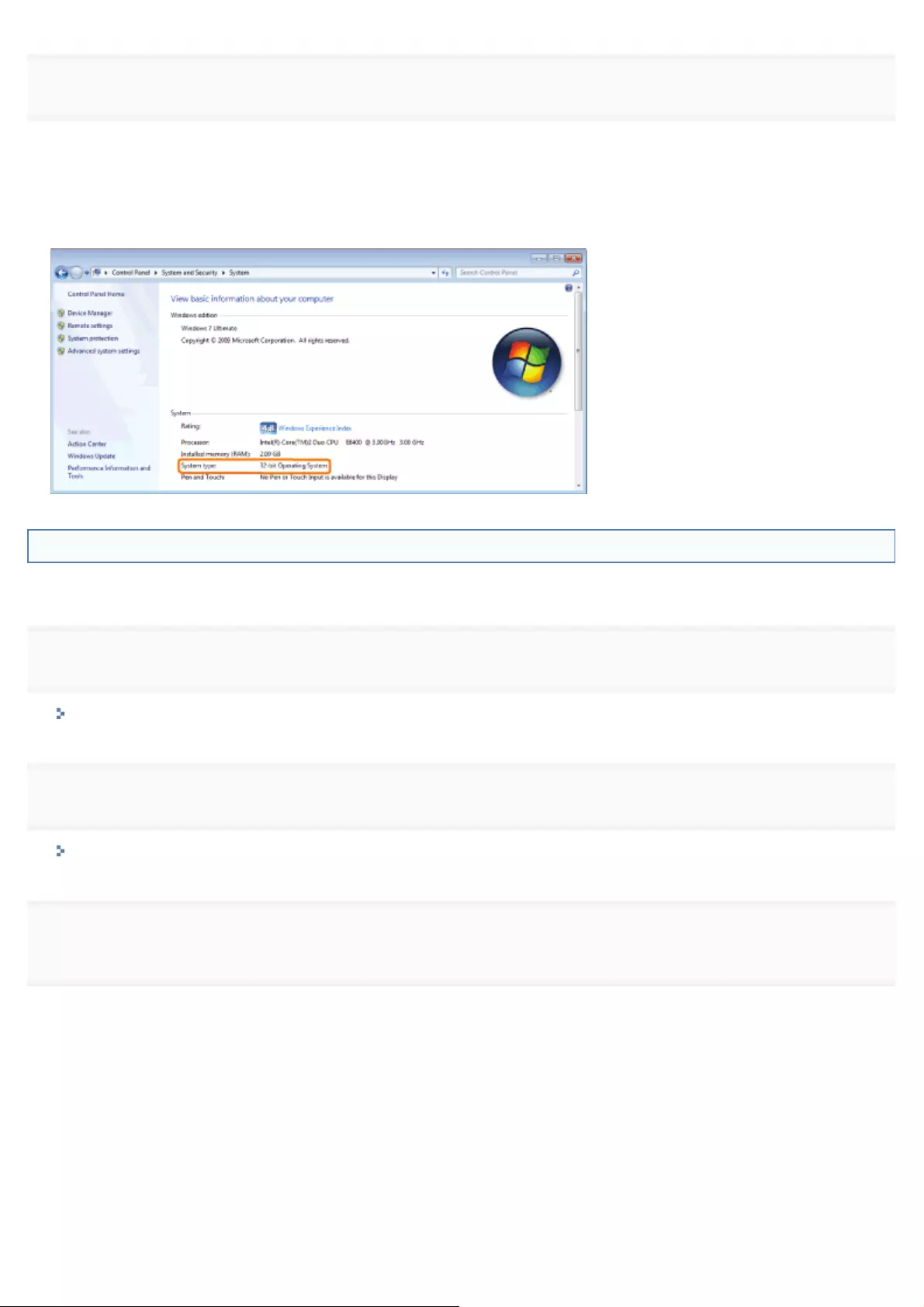
3
Check the processor version.
For a 32-bit operating system
[32-bit Operating System] is displayed.
For a 64-bit operating system
[64-bit Operating System] is displayed.
Printing a Test Page in Windows
You can check the operations of the printer driver by printing a test page in Windows.
1
Load A4 paper in the multi-purpose tray or paper drawer.
"Paper Loading and Output"
2
Open the printer folder.
"Displaying the Printer Folder"
3
Right-click the icon for this printer, and then select [Printer properties] or [Properties] from the pop-
up menu.
㻥㻤㻜㻌㻛㻌㻥㻥㻤

4
Print a test page.
(1) Display the [General] sheet.
(2) Click [Print Test Page] to print a test page.
Checking the Bi-directional Communication
1
Open the printer folder.
"Displaying the Printer Folder"
2
Right-click the icon for this printer, and then select [Printer properties] or [Properties] from the pop-
up menu.
㻥㻤㻝㻌㻛㻌㻥㻥㻤
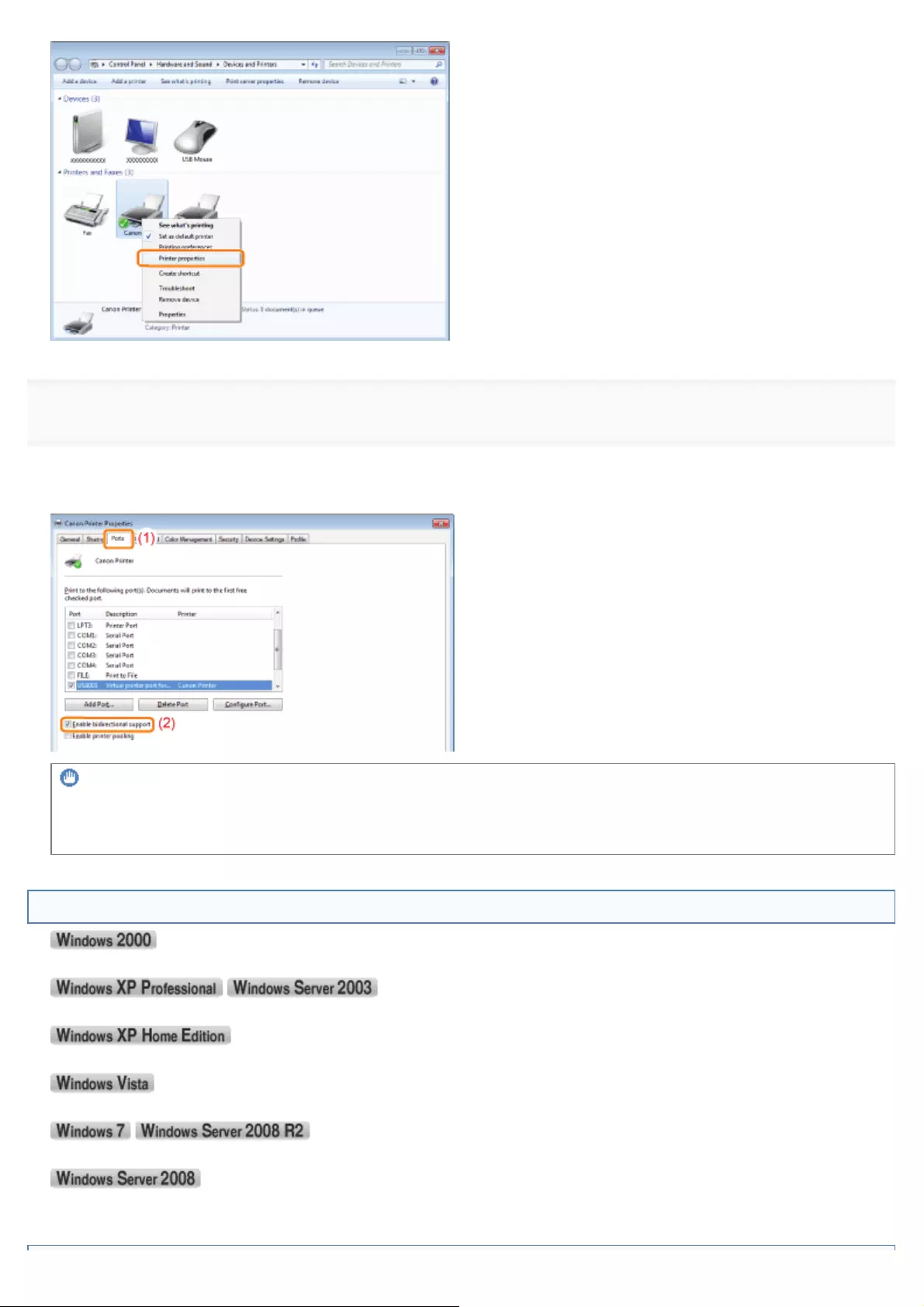
3
Check the bi-directional communication.
(1) Display the [Ports] sheet.
(2) Check the [Enable bidirectional support] check box is selected.
IMPORTANT
Do not clear the [Enable bidirectional support] check box.
If the check box is cleared, you cannot perform printing.
Displaying the Printer Folder
)URPWKH>6WDUW@PHQXVHOHFW>6HWWLQJV@ĺ>3ULQWHUV@
From the [Start] menu, select [Printers and Faxes].
)URPWKH>6WDUW@PHQXVHOHFW>&RQWURO3DQHO@DQGWKHQFOLFN>3ULQWHUVDQG2WKHU+DUGZDUH@ĺ>3ULQWHUVDQG)D[HV@
From the [Start] menu, select [Control Panel], and then click [Printer].
From the [Start] menu, select [Devices and Printers].
From the [Start] menu, select [Control Panel], and then double-click [Printers].
㻥㻤㻞㻌㻛㻌㻥㻥㻤
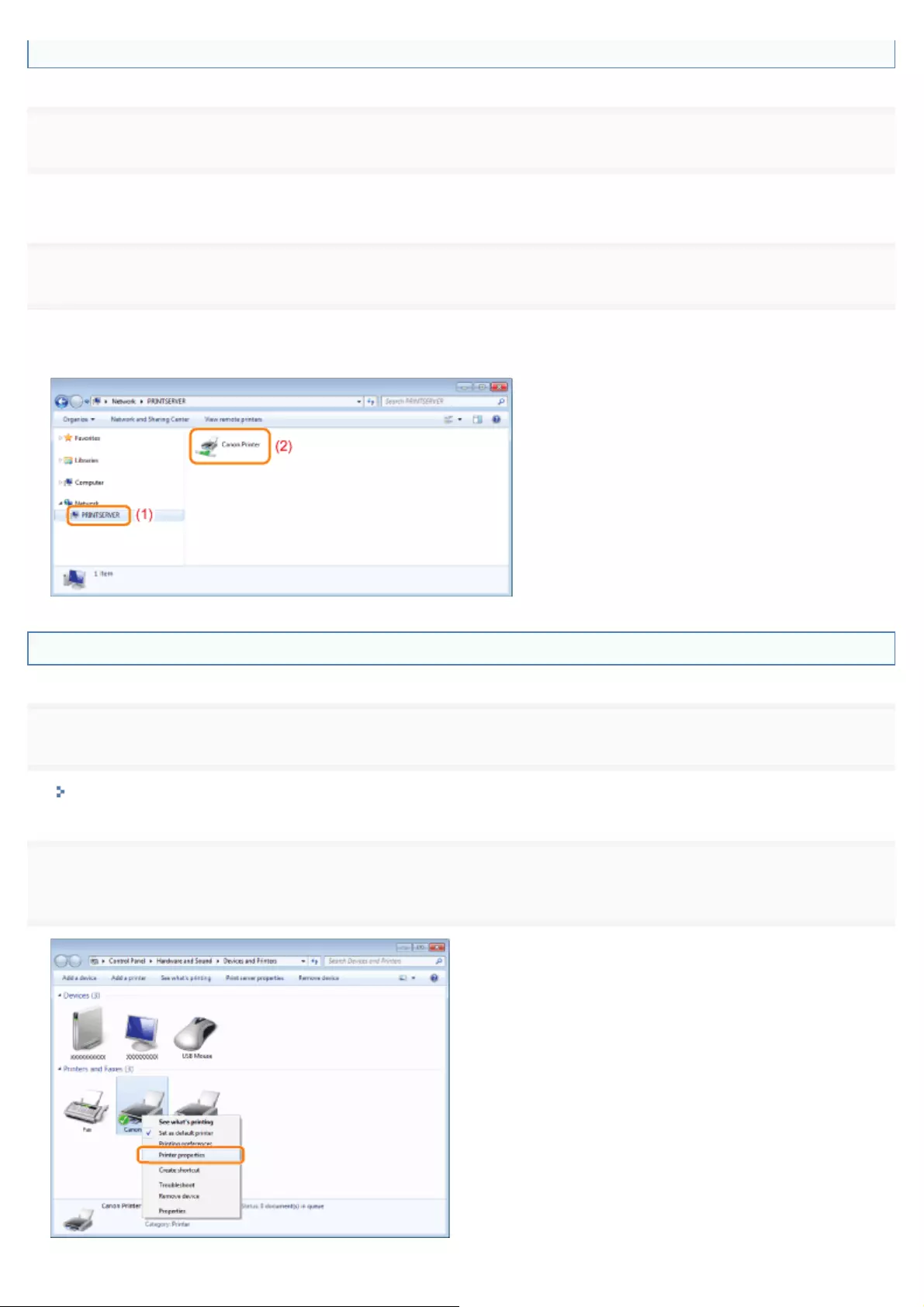
Checking Printers in the Print Server
1
Display [Windows Explorer].
)URPWKH>6WDUW@PHQXVHOHFW>$OO3URJUDPV@RU>3URJUDPV@ĺ>$FFHVVRULHV@ĺ>:LQGRZV([SORUHU@
2
Check printers in the print server.
(1) Select the print server from [Network] or [My Network Places].
(2) Check the icon for this printer is displayed.
Checking the Port
1
Open the printer folder.
"Displaying the Printer Folder"
2
Right-click the icon for this printer, and then select [Printer properties] or [Properties] from the pop-
up menu.
㻥㻤㻟㻌㻛㻌㻥㻥㻤
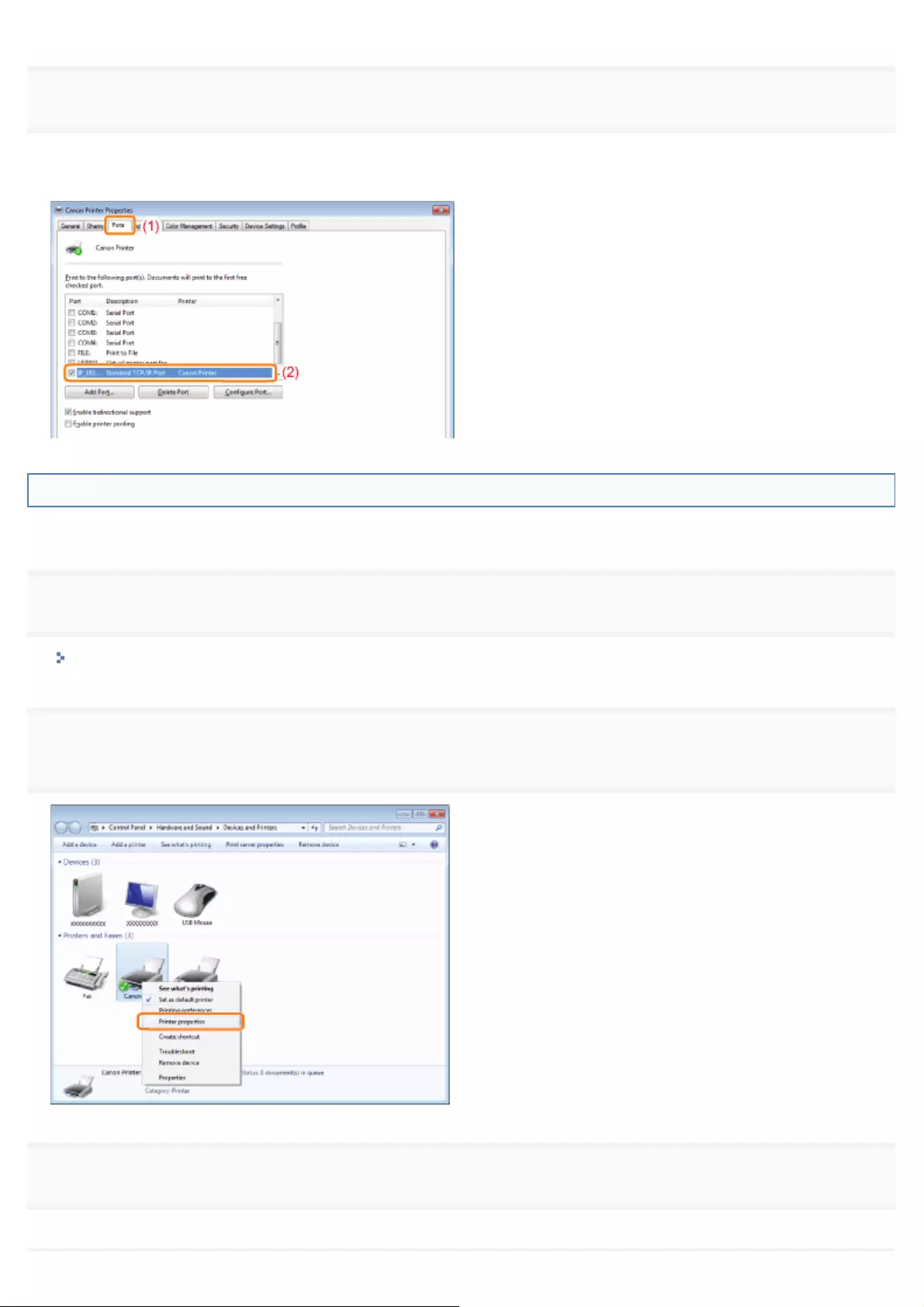
3
Check a port.
(1) Display the [Ports] sheet.
(2) Confirm the port is selected properly.
Changing the Printing Protocol
Change the printing protocol to LPR and specify the setting for the LPR byte count using the following procedure.
1
Open the printer folder.
"Displaying the Printer Folder"
2
Right-click the icon for this printer, and then select [Printer properties] or [Properties] from the pop-
up menu.
3
Display the [Ports] sheet.
㻥㻤㻠㻌㻛㻌㻥㻥㻤

4
Click [Configure Port].
5
Perform the following procedure.
(1) To change the printing protocol to LPR, select [LPR] for [Protocol].
(2) To enable the LPR byte count, select the [LPR Byte Counting Enabled] check box.
6
Click [OK].
Setting for [Device Type] when Setting a Port
If the printer cannot be detected when setting a port, set [Device Type] as follows.
(1) Select [Standard], and then select [Canon Network Printing Device with P9100].
(2) Click [Next].
㻥㻤㻡㻌㻛㻌㻥㻥㻤
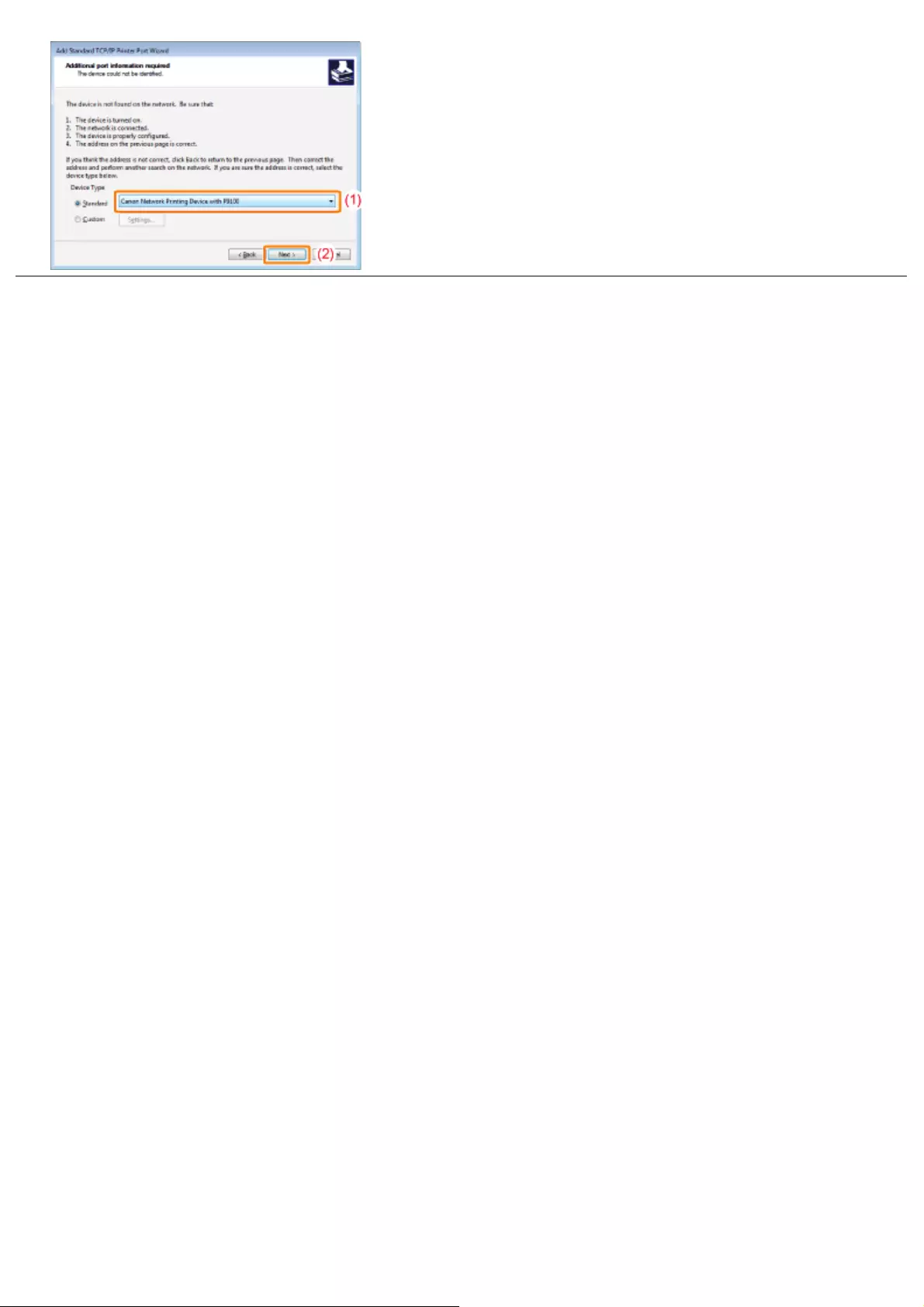
㻥㻤㻢㻌㻛㻌㻥㻥㻤
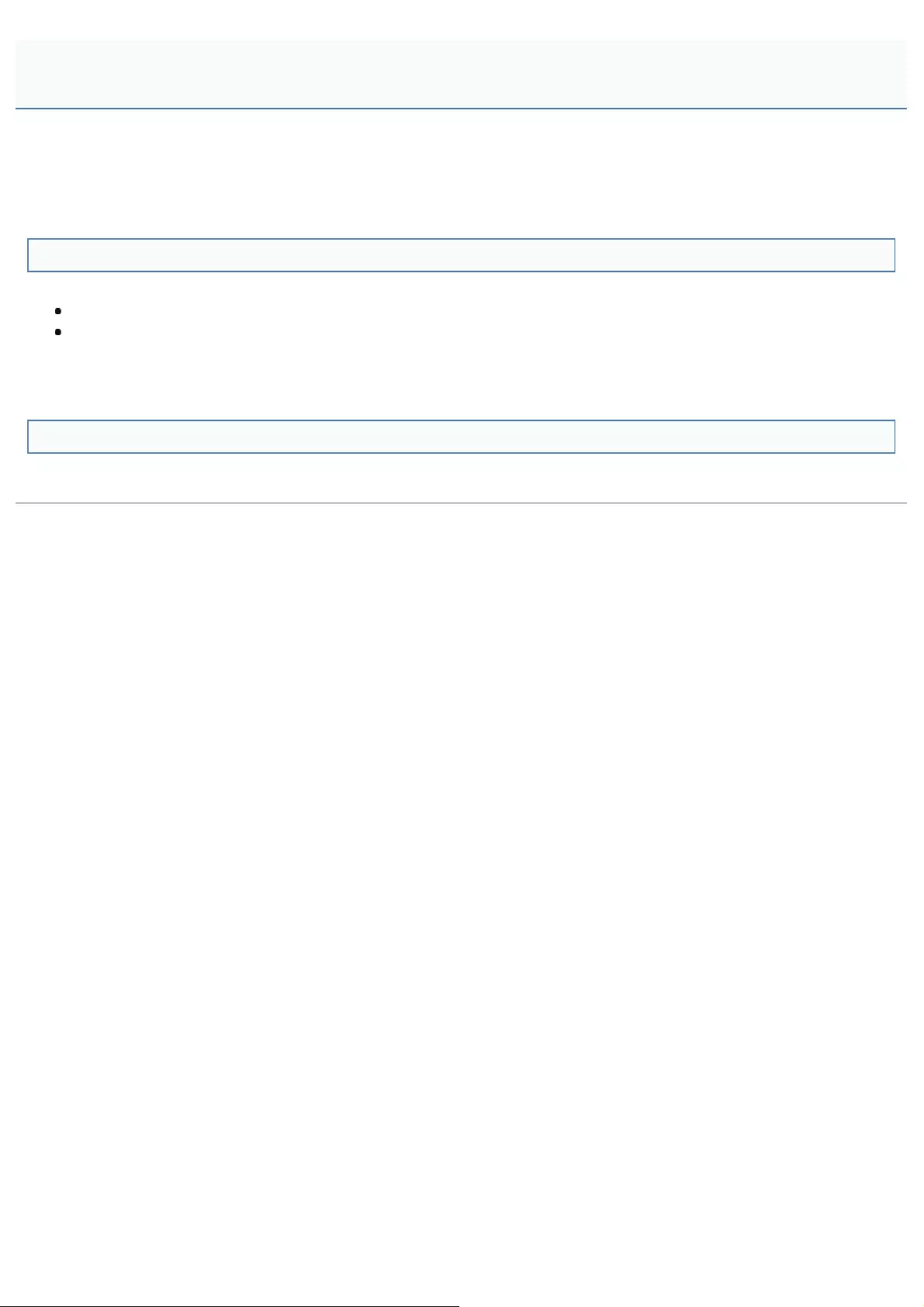
0258-0U3
This printer supports Windows 8/Server 2012 operating system. For operation and description on Windows 8/Server 2012,
refer to Windows Vista/7 sections. This section describes notes on using this printer with Windows 8/Server 2012. Read
this section carefully before using the printer.
Precautions
Use the desktop mode when performing the followings.
Installing/Uninstalling the printer driver
Setting the printer driver *
*Please note that the setting specified on the desktop may not be reflected to all Windows Store applications.
For Windows 2000 Users
This printer does not support Windows 2000. For details on the latest status of the supported operating systems and
service packs, see the Canon web site (http://www.canon.com/).
For Windows 8/Server 2012 Users
㻥㻤㻣㻌㻛㻌㻥㻥㻤

0258-0EW
Configuration Page
Network Status Print
Printing Position Adjustment Print
IMPORTANT
The following lists are samples. The contents may partially differ from the lists printed by your printer.
Configuration Page
The printer information and the settings for printing environment are printed.
1. Make sure that the printer is online.
2. Press [ ] ( : Utility) to display the [Utility Menu] menu.
3. Select [Configuration Page] using [ ] and [ ], and then press [OK].
4. Select [Yes] using [ ] in the [Execute?] display, and then press [OK] to output the page.
Network Status Print
Prints the version number and the settings of the print server equipped with this printer.
1. Make sure that the printer is online.
2. Press [ ] ( : Utility) to display the [Utility Menu] menu.
3. Select [Network Status Print] using [ ] and [ ], and then press [OK].
4. Select [Yes] using [ ] in the [Execute?] display, and then press [OK] to output the page.
The Lists Common to All the Settings in the Print Mode
㻥㻤㻤㻌㻛㻌㻥㻥㻤

Printing Position Adjustment Print
Displays the current printing positions of each paper source. Adjust the printing positions referring to this print. For more
details, see "Adjusting the Printing Position for Each Paper Source."
1. Press [ ] ( : Feeder Selection).
2. Select [Paper Source] using [ ] and [ ], and then press [OK].
3. Select the paper source that you want to check the printing position using [ ] and [ ], and then press [OK].
4. Press [ ] ( : Online).
5. Make sure that the printer is online. If the printer is not online, press [ ] ( : Online).
6. Press [ ] ( : Utility) to display [Utility Menu] menu.
7. Select [Printing Pos. Print] using [ ] and [ ], and then press [OK].
8. Select [Yes] using [ ] in the [Execute?] display, and then press [OK] to output the page.
㻥㻤㻥㻌㻛㻌㻥㻥㻤
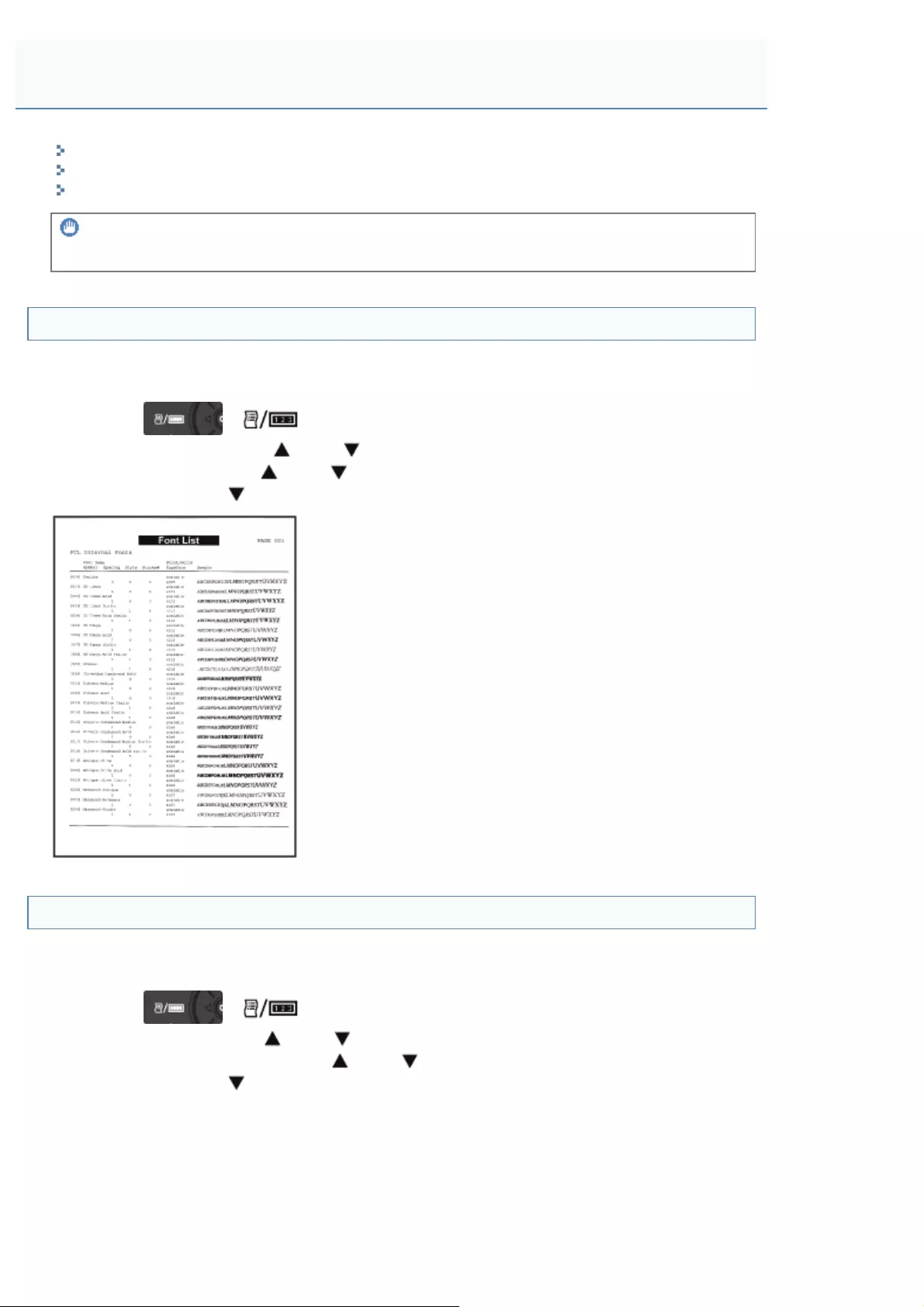
0258-0EX
PCL Font List
PS Configuration Page
PS Font List
IMPORTANT
The following lists are samples. The contents may partially differ from the lists printed by your printer.
PCL Font List
A list of the fonts that can be used in the PCL mode is printed.
1. Make sure that the printer is online.
2. Press [ ] ( : Utility) to display the [Utility Menu] menu.
3. Select [PCL Utility] using [ ] and [ ], and then press [OK].
4. Select [Font List] using [ ] and [ ], and then press [OK].
5. Select [Yes] using [ ] in the [Execute?] display, and then press [OK] to output the page.
PS Configuration Page
The settings of the [PS] options are printed.
1. Make sure that the printer is online.
2. Press [ ] ( : Utility) to display the [Utility Menu] menu.
3. Select [PS Utility] using [ ] and [ ], and then press [OK].
4. Select [Configuration Page] using [ ] and [ ], and then press [OK].
5. Select [Yes] using [ ] in the [Execute?] display, and then press [OK] to output the page.
The Lists Common to Certain Settings in the Print Mode
㻥㻥㻜㻌㻛㻌㻥㻥㻤

PS Font List
A list of the fonts that can be used in the PS mode is printed.
1. Make sure that the printer is online.
2. Press [ ] ( : Utility) to display the [Utility Menu] menu.
3. Select [PS Utility] using [ ] and [ ], and then press [OK].
4. Select [Font List] using [ ] and [ ], and then press [OK].
5. Select [Yes] using [ ] in the [Execute?] display, and then press [OK] to output the page.
㻥㻥㻝㻌㻛㻌㻥㻥㻤
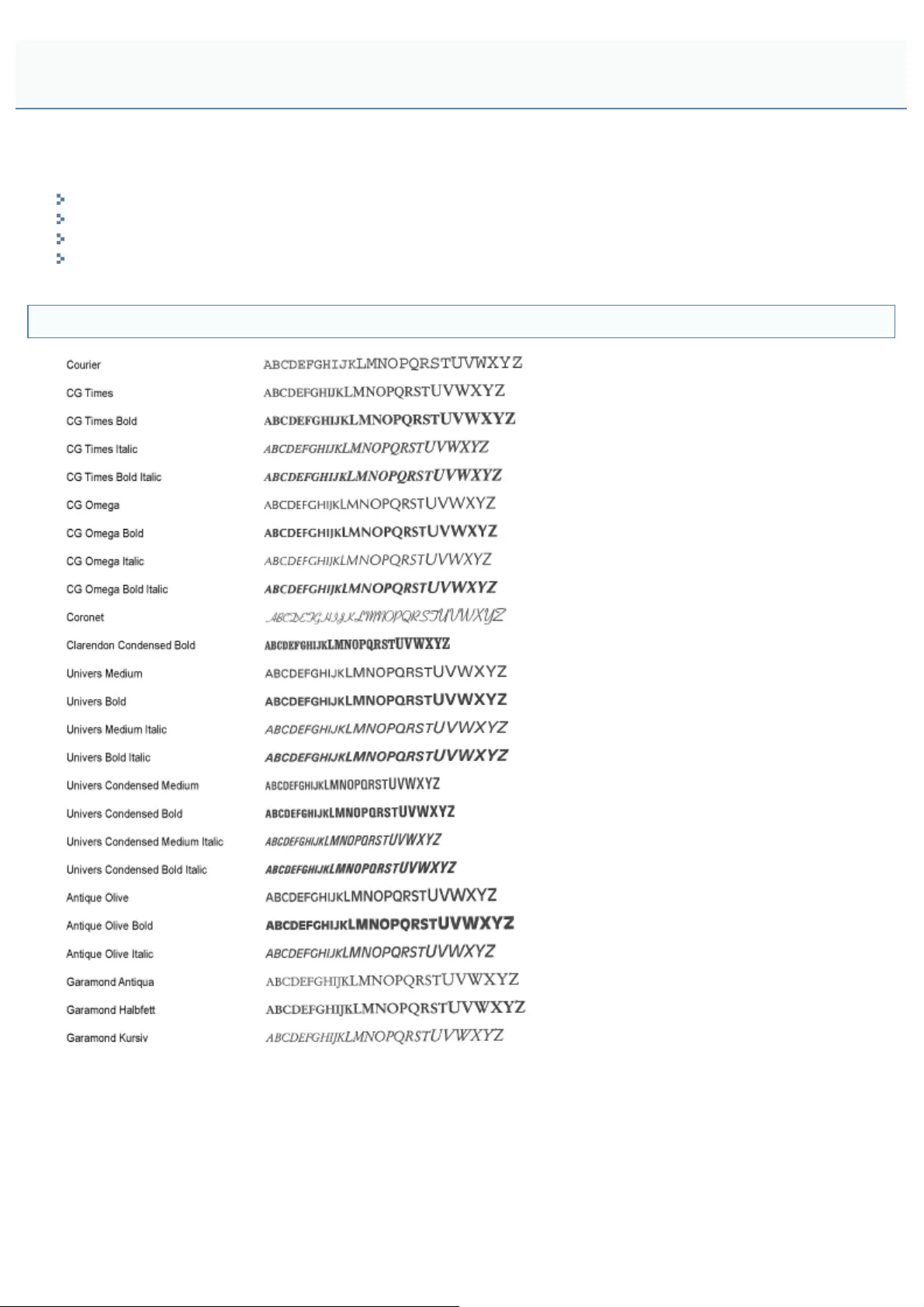
0258-0EY
The fonts lists printed from the [Utility Menu] menu are a comprehensive listing of all fonts currently available. The listing
contains the names and print samples of the fonts stored on the printer.
Scalable Fonts (PCL)
OCR Code Scalable Fonts (PCL)
Bitmapped Fonts (PCL)
PCL Fonts for Windows
Scalable Fonts (PCL)
Font Samples
㻥㻥㻞㻌㻛㻌㻥㻥㻤
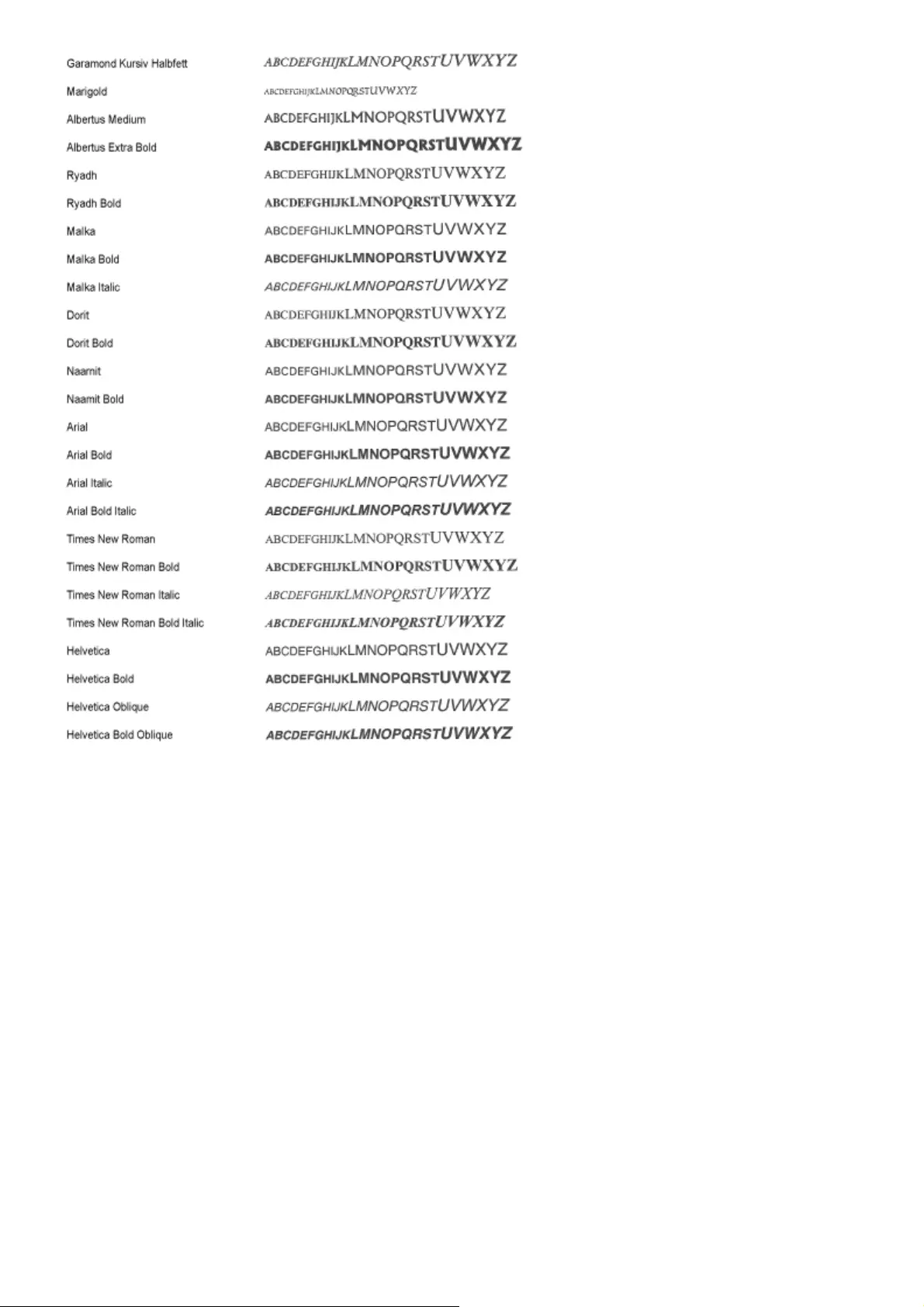
㻥㻥㻟㻌㻛㻌㻥㻥㻤
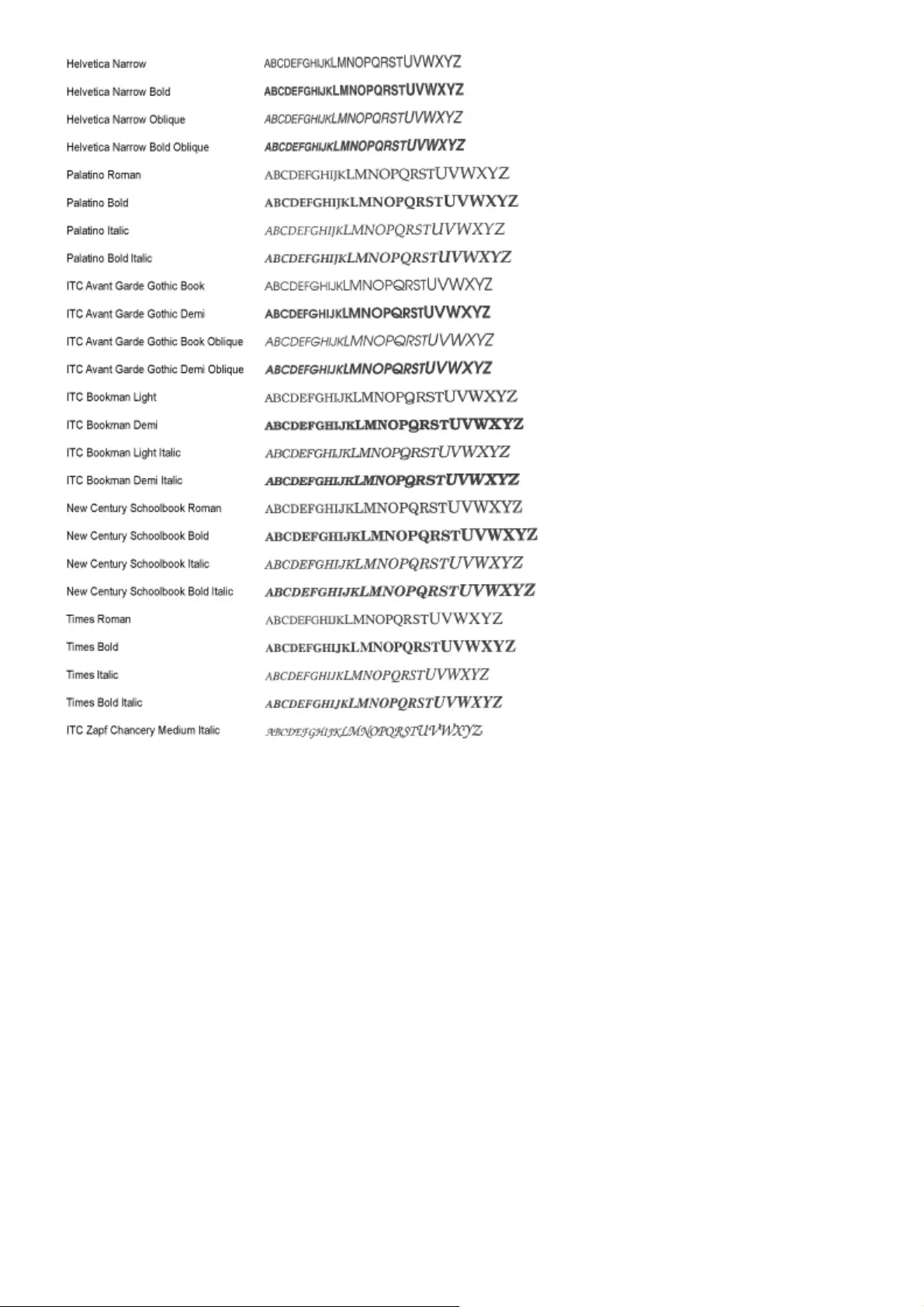
㻥㻥㻠㻌㻛㻌㻥㻥㻤
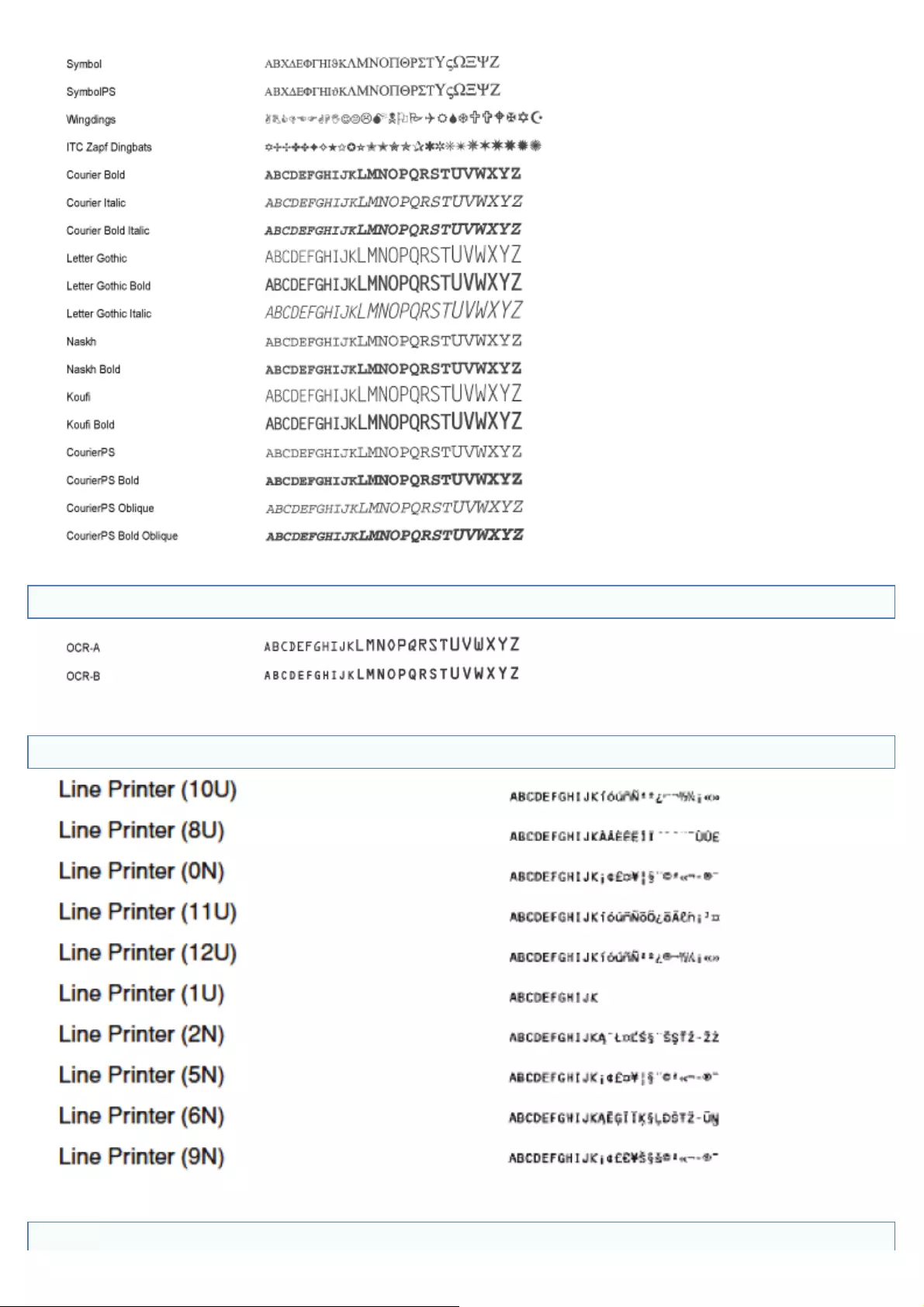
OCR Code Scalable Fonts (PCL)
Bitmapped Fonts (PCL)
PCL Fonts for Windows
㻥㻥㻡㻌㻛㻌㻥㻥㻤
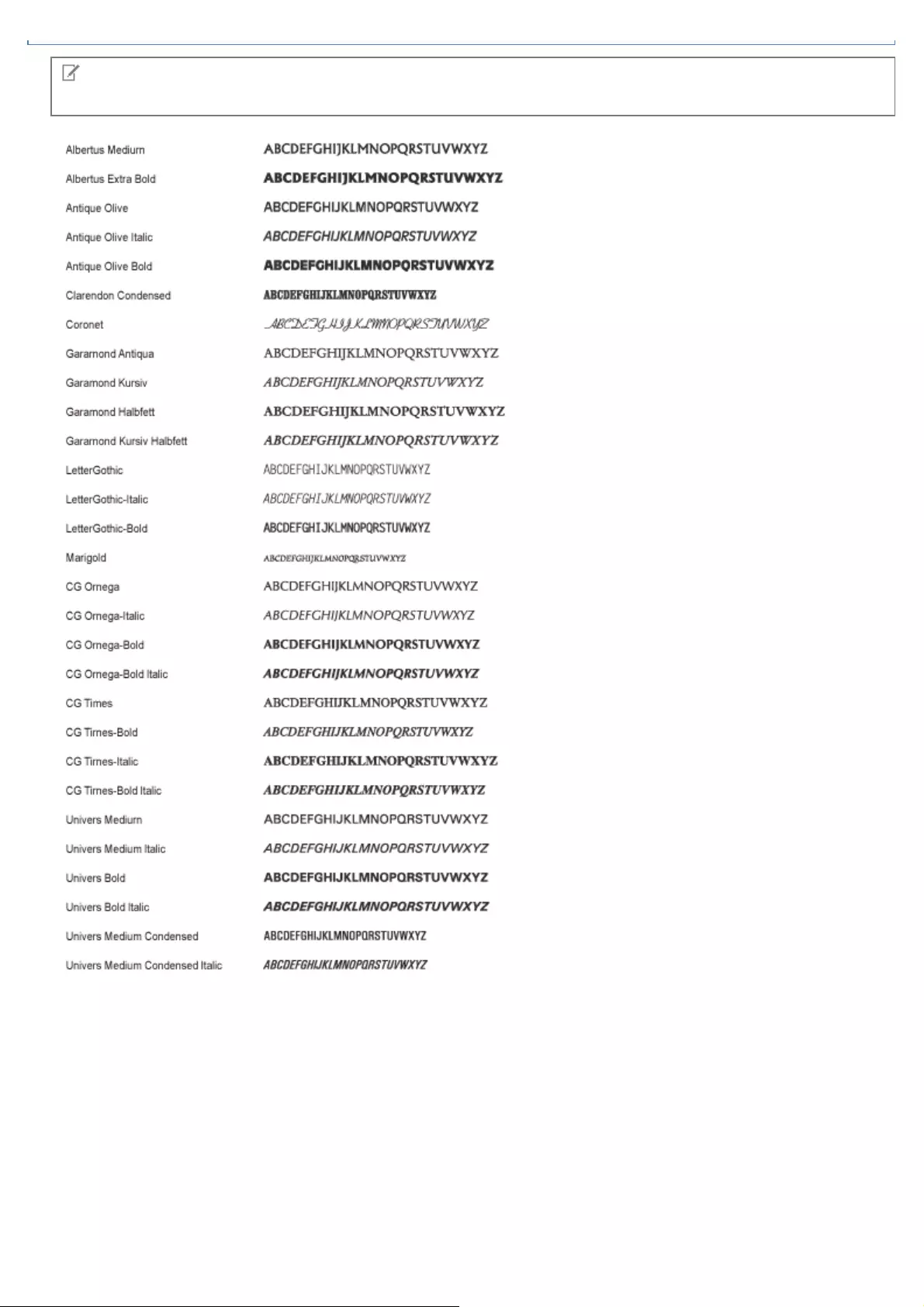
NOTE
66 PCL fonts for Windows are included in the User Manual CD-ROM supplied with this printer.
㻥㻥㻢㻌㻛㻌㻥㻥㻤
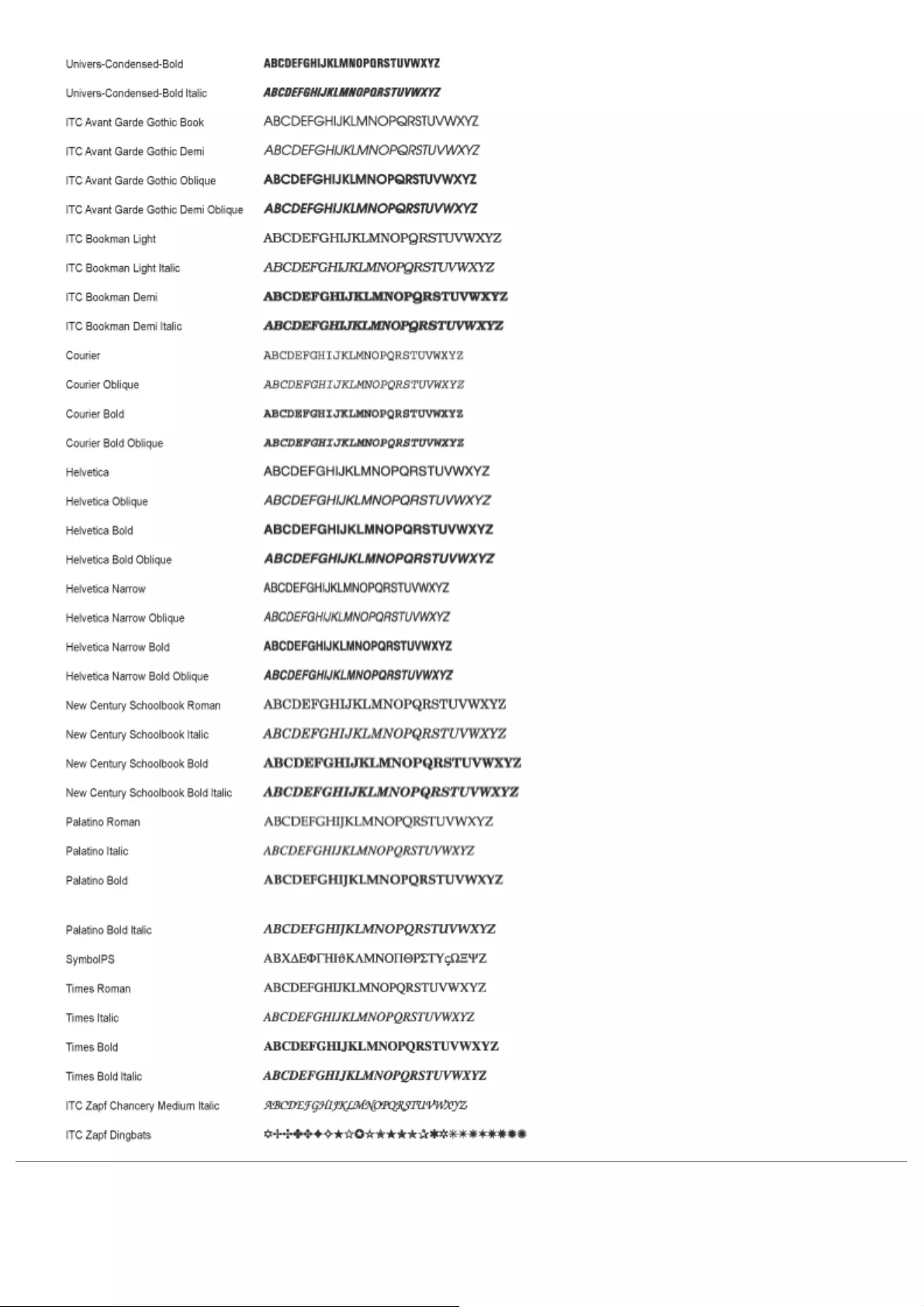
㻥㻥㻣㻌㻛㻌㻥㻥㻤

0258-0F0
CANON INC.
30-2, Shimomaruko 3-chome, Ohta-ku, Tokyo 146-8501, Japan
CANON MARKETING JAPAN INC.
16-6, Konan 2-chome, Minato-ku, Tokyo 108-8011, Japan
CANON U.S.A., INC.
One Canon Park, Melville, NY 11747, U.S.A.
CANON EUROPA N.V.
Bovenkerkerweg 59, 1185 XB Amstelveen, The Netherlands
CANON CHINA CO. LTD.
15F Jinbao Building No.89, Jinbao Street, Dongcheng District, Beijing 100005, PRC
CANON SINGAPORE PTE LTD
1 HarbourFront Avenue, #04-01 Keppel Bay Tower, Singapore 098632
CANON AUSTRALIA PTY LTD
1 Thomas Holt Drive, North Ryde, Sydney NSW 2113, Australia
CANON GLOBAL WORLDWIDE SITES
http://www.canon.com/
Office Locations
㻥㻥㻤㻌㻛㻌㻥㻥㻤





























